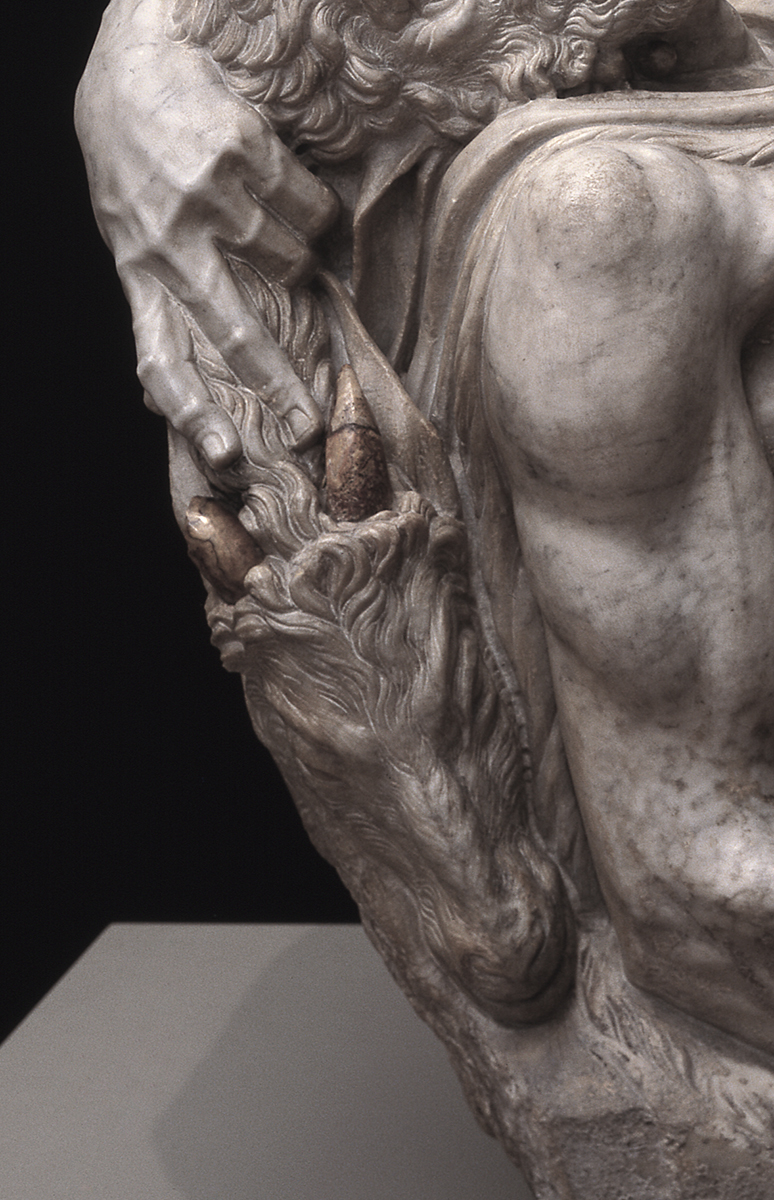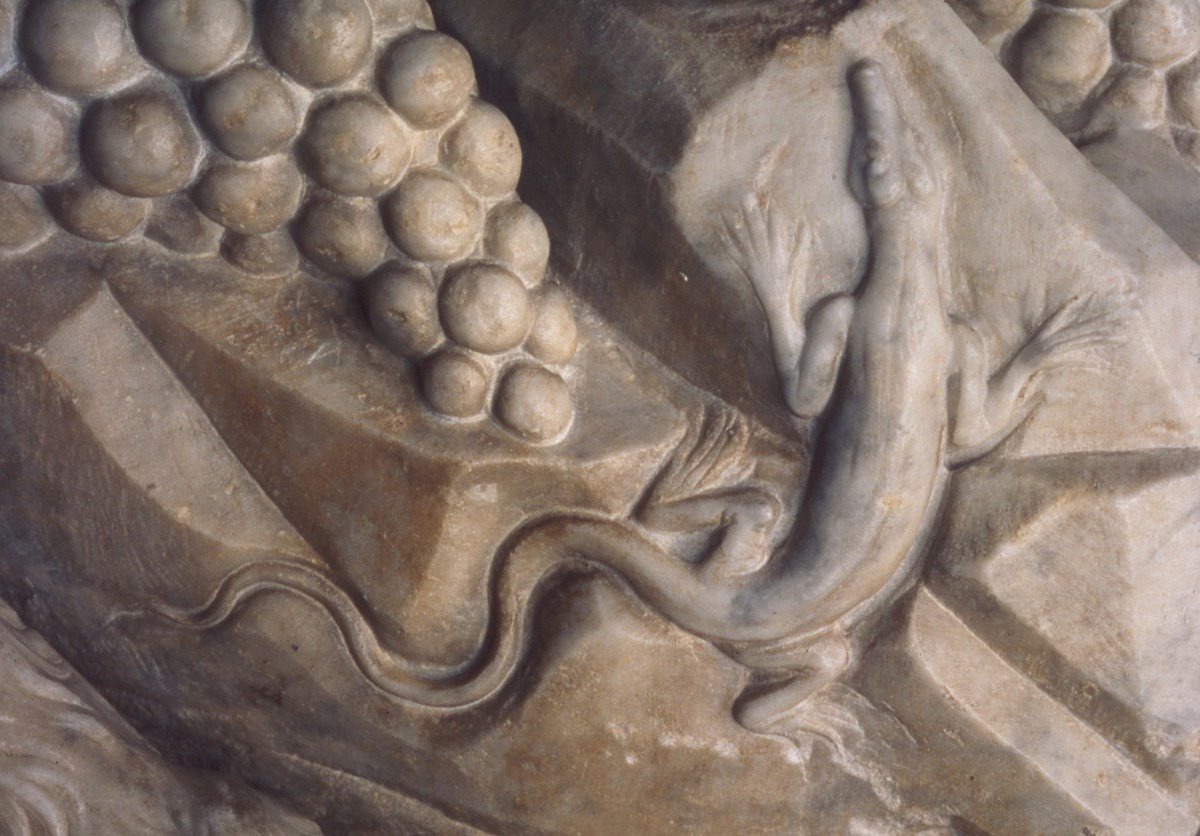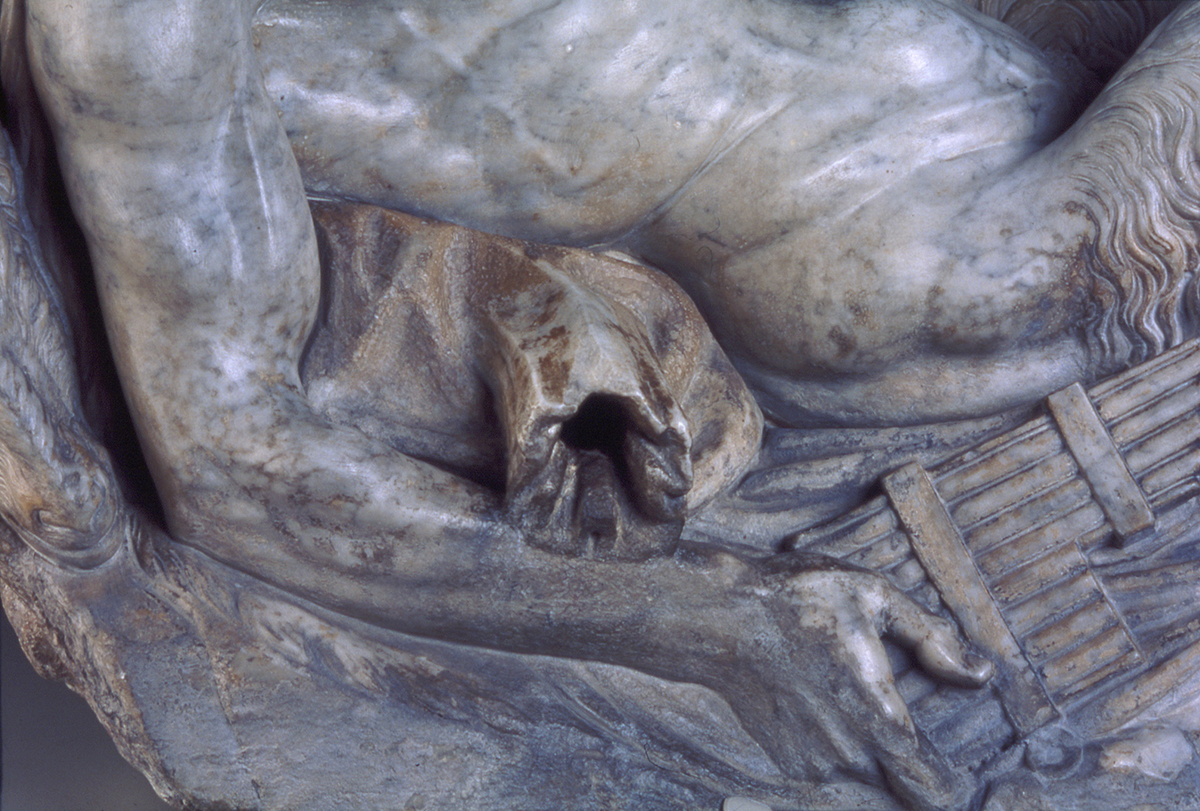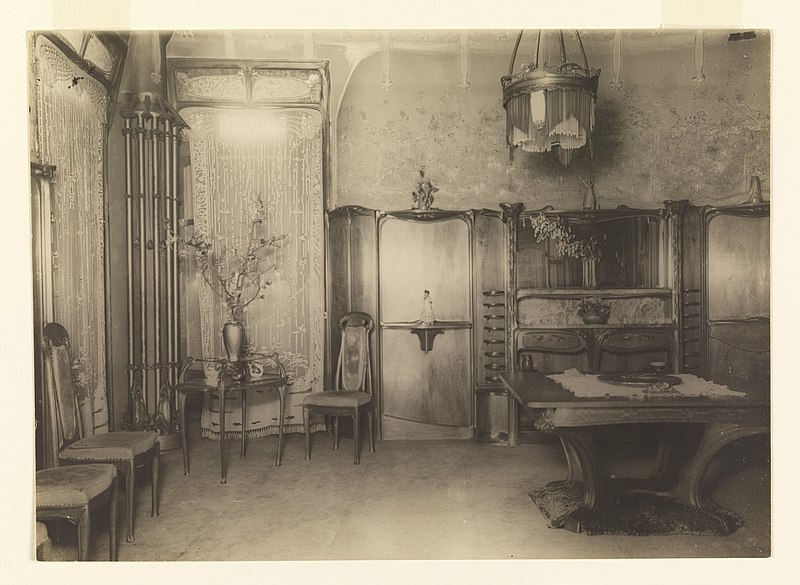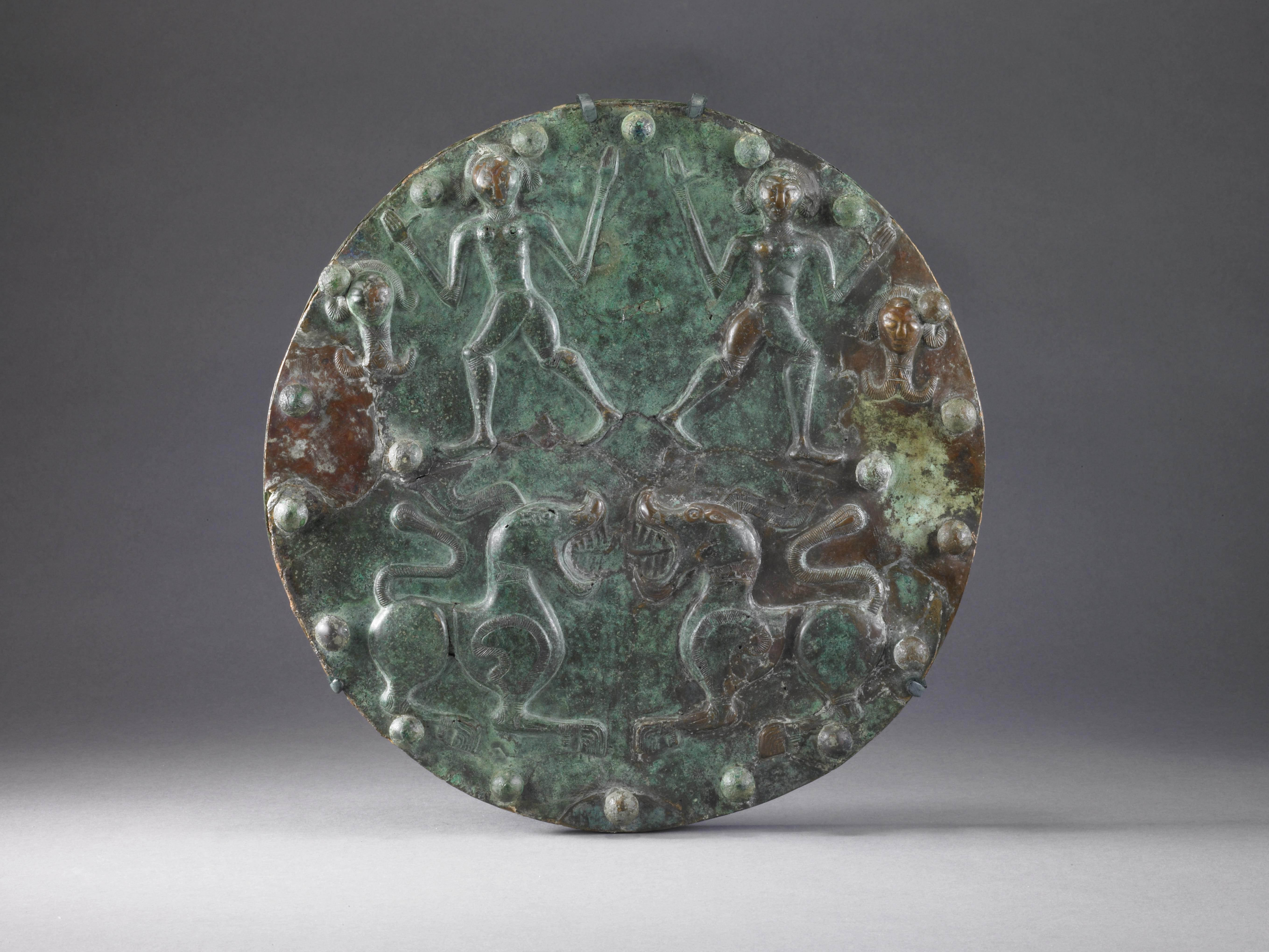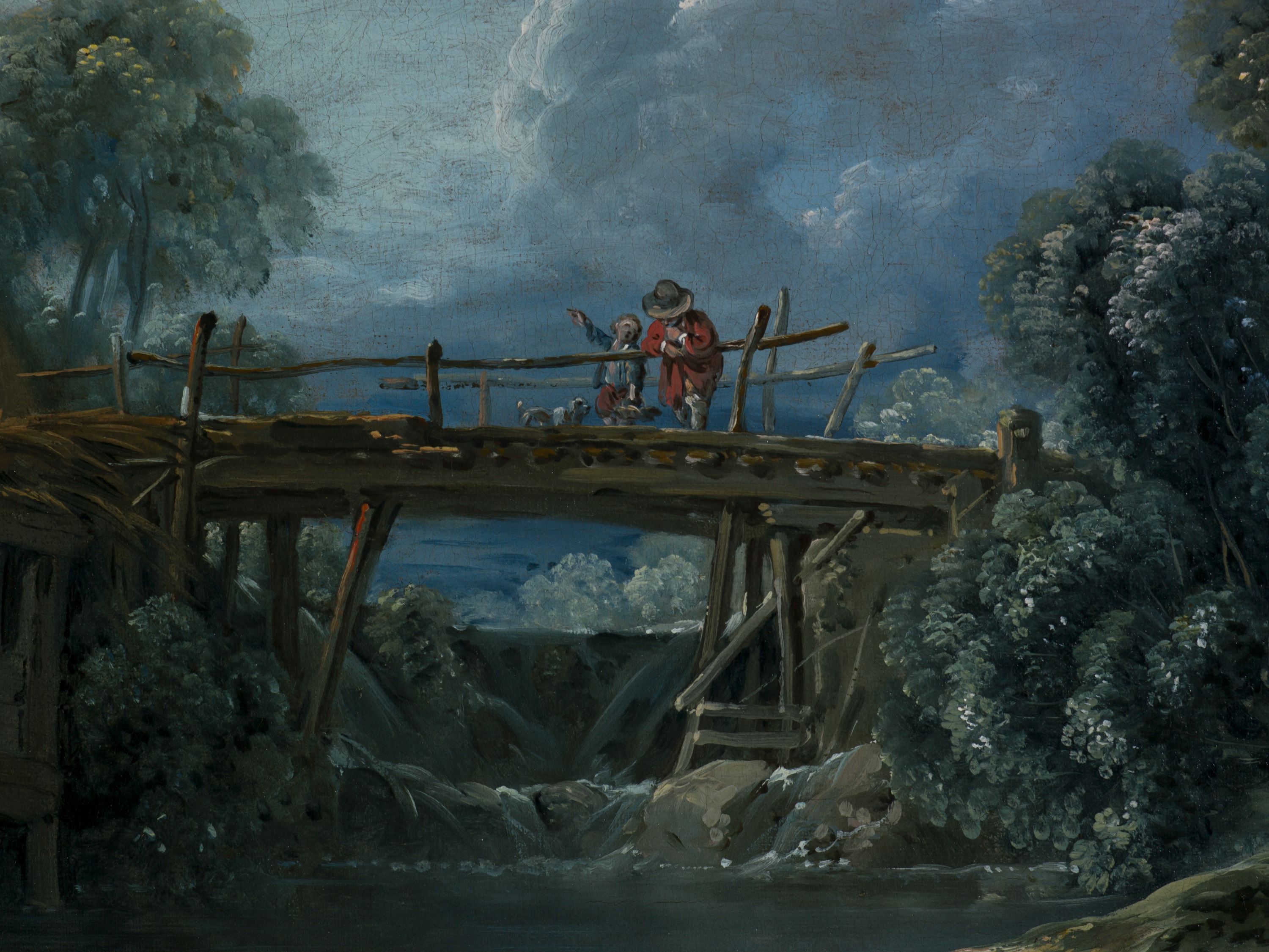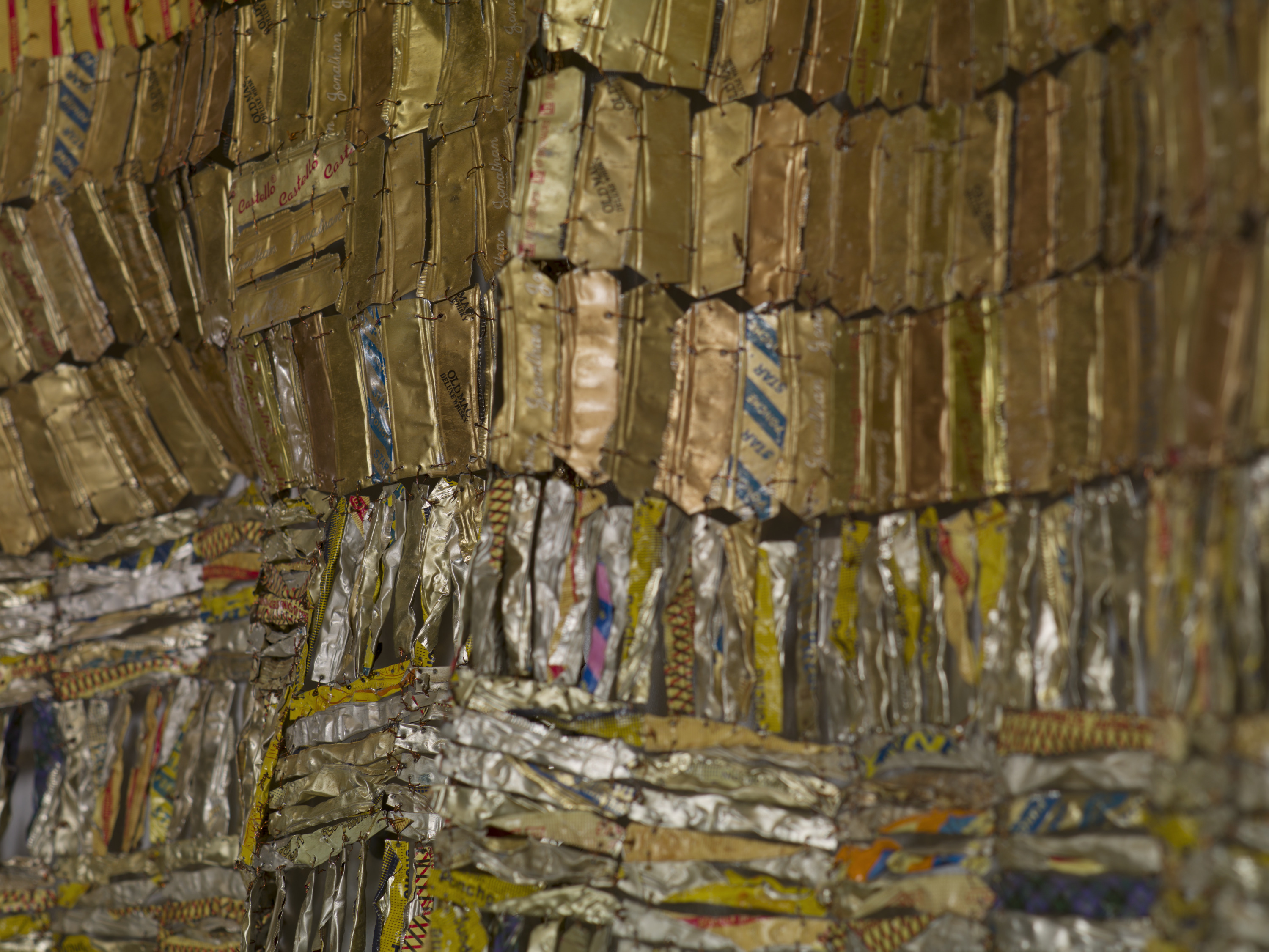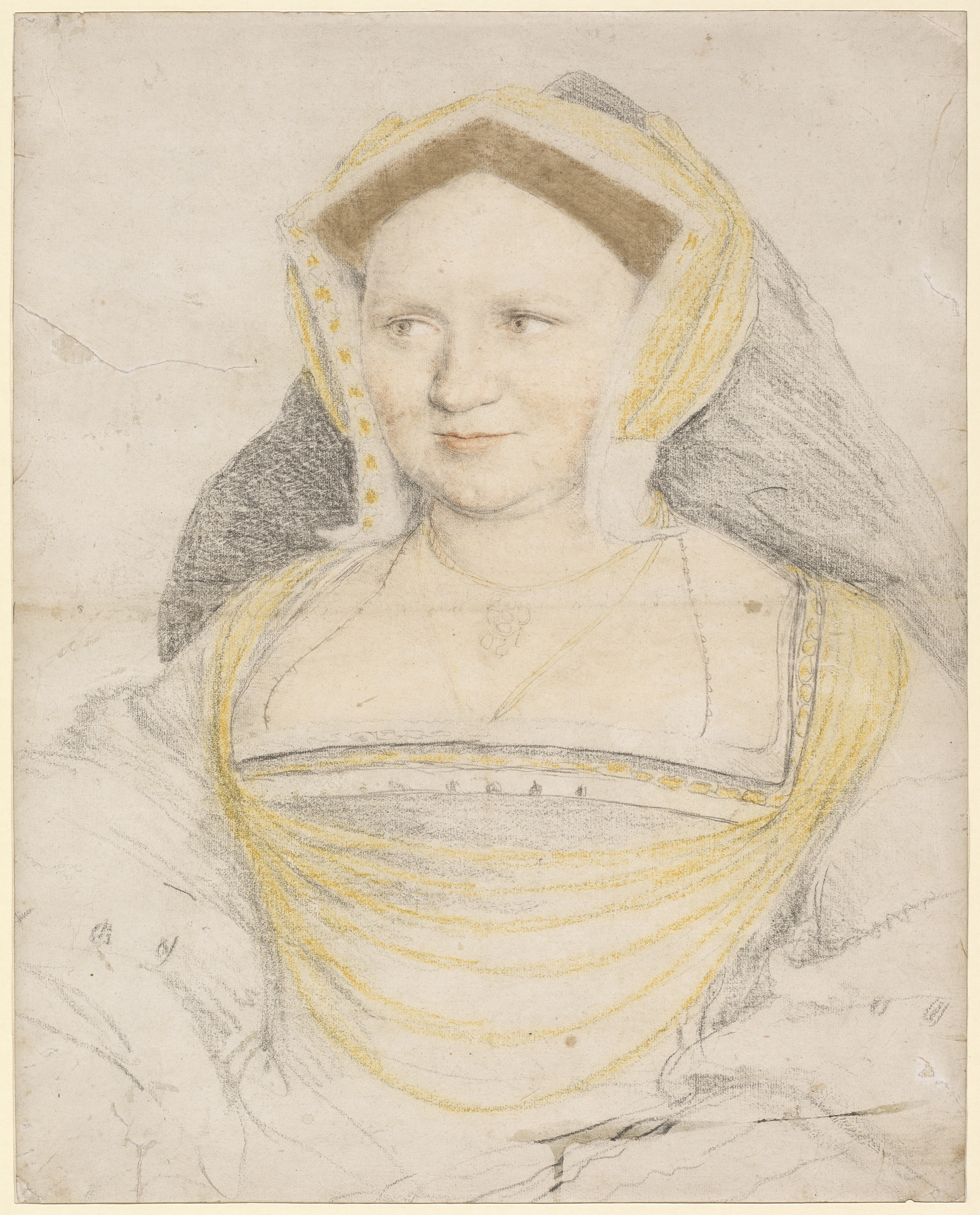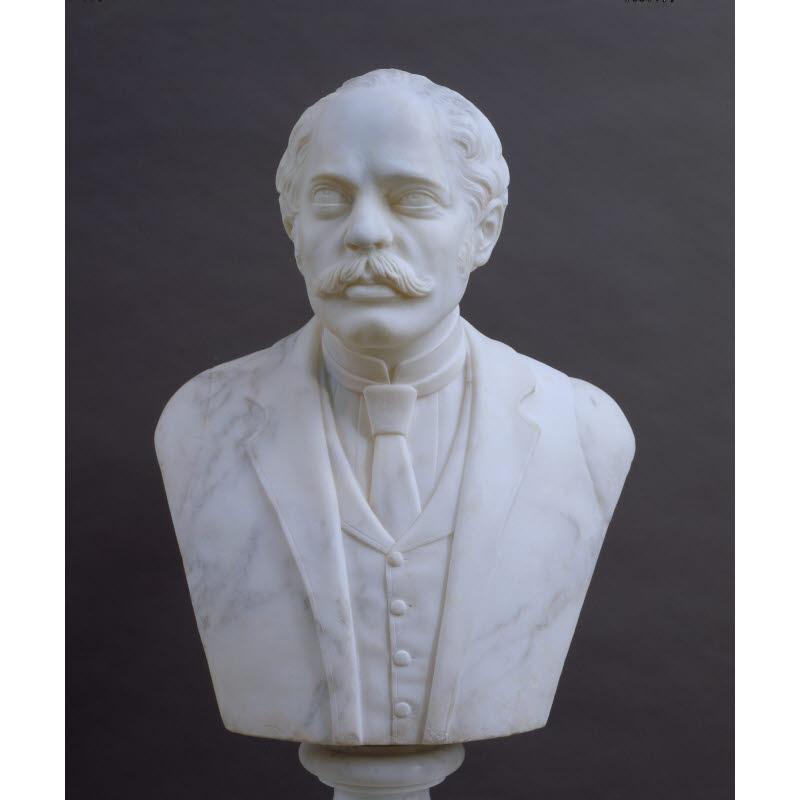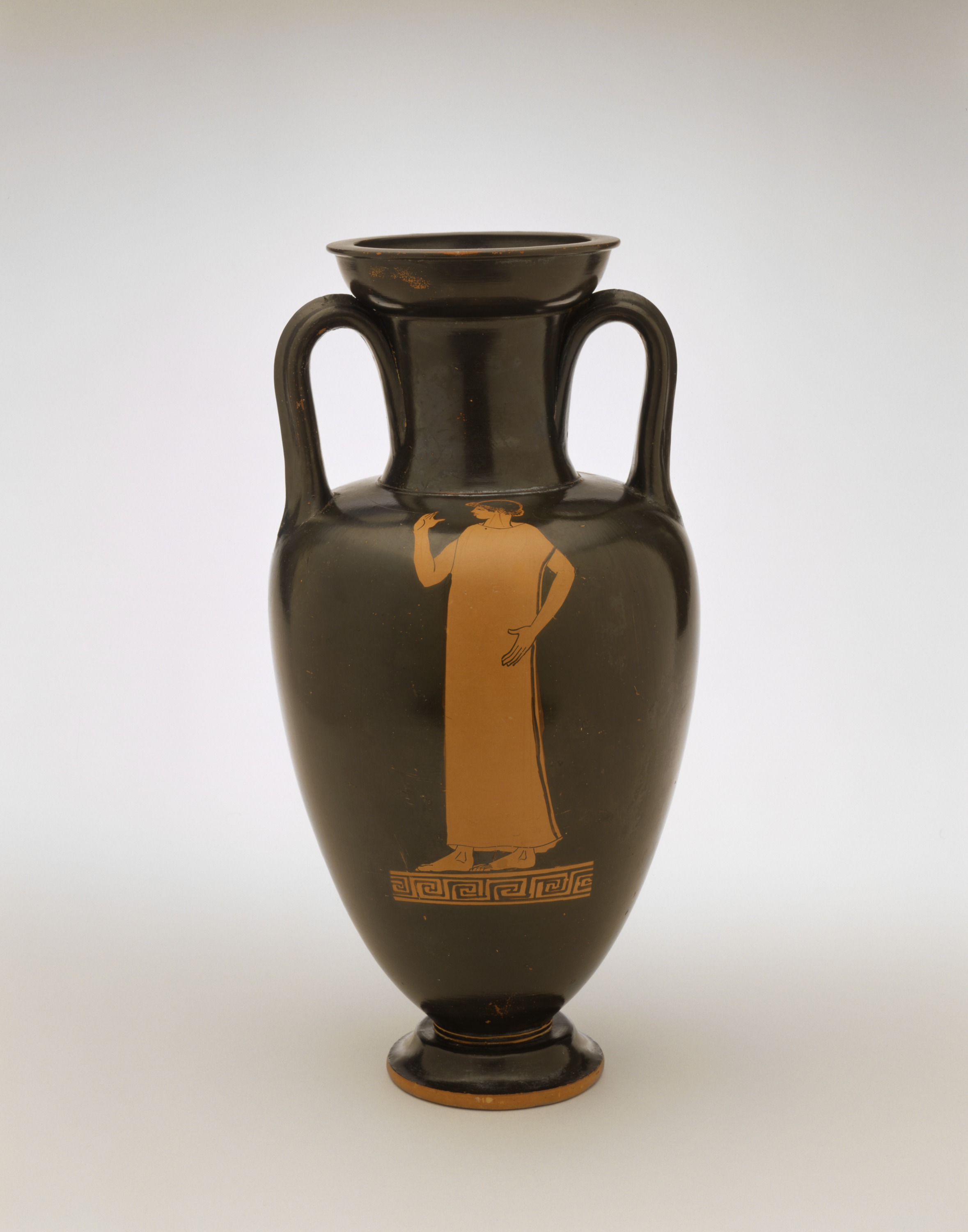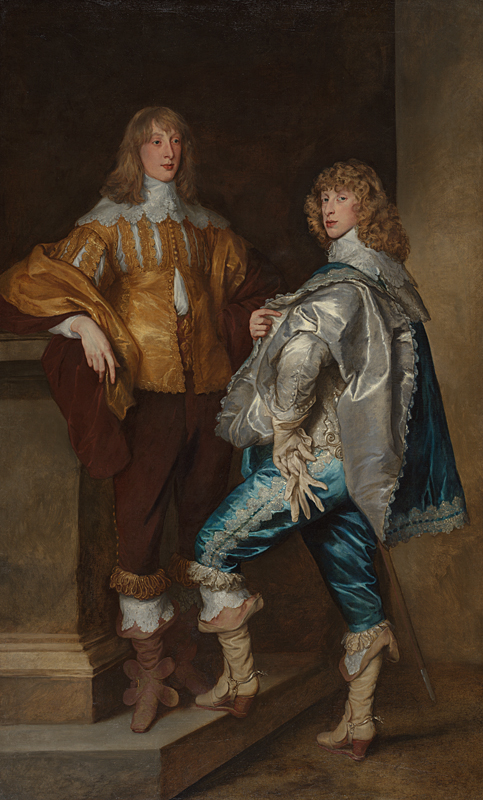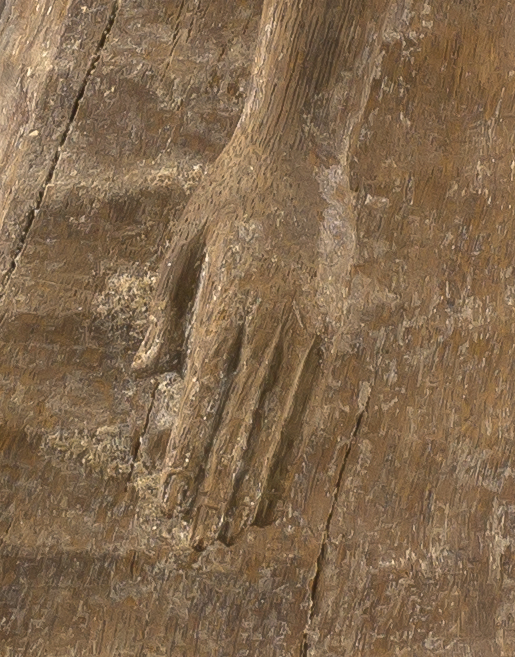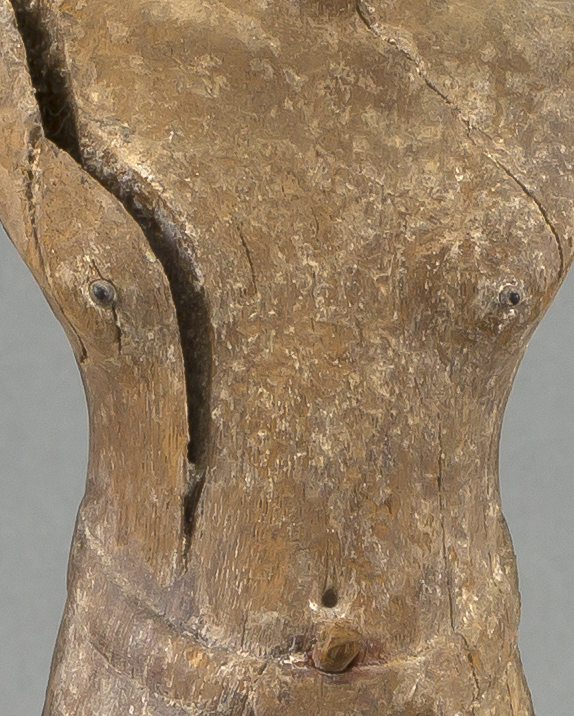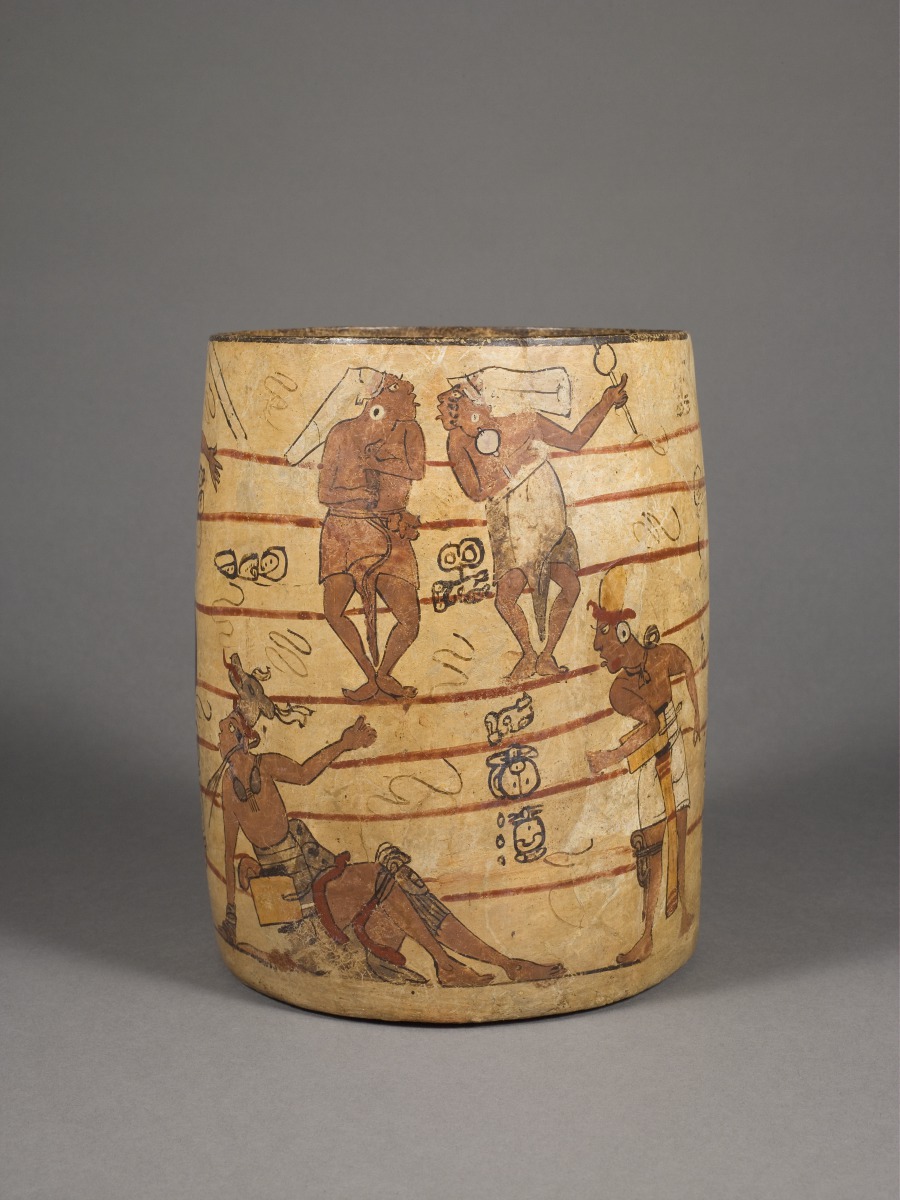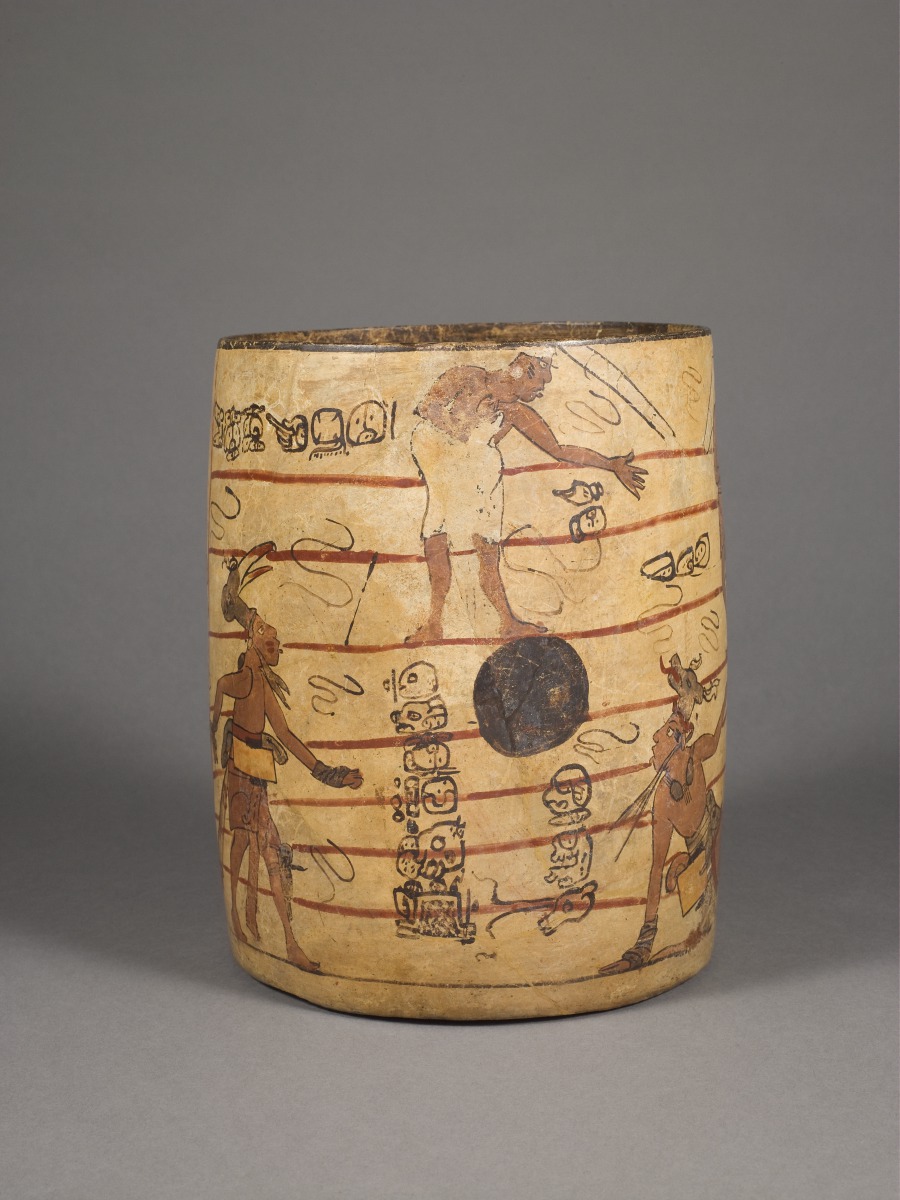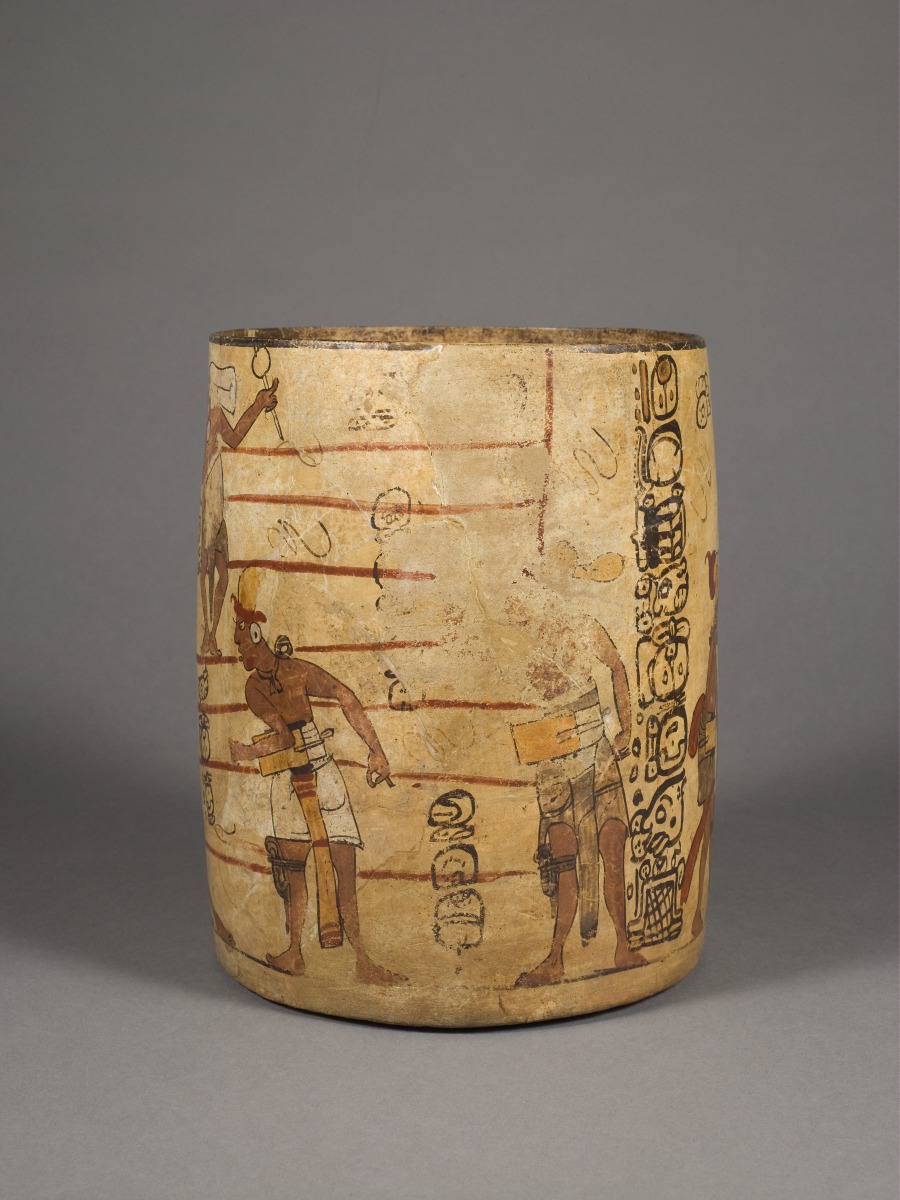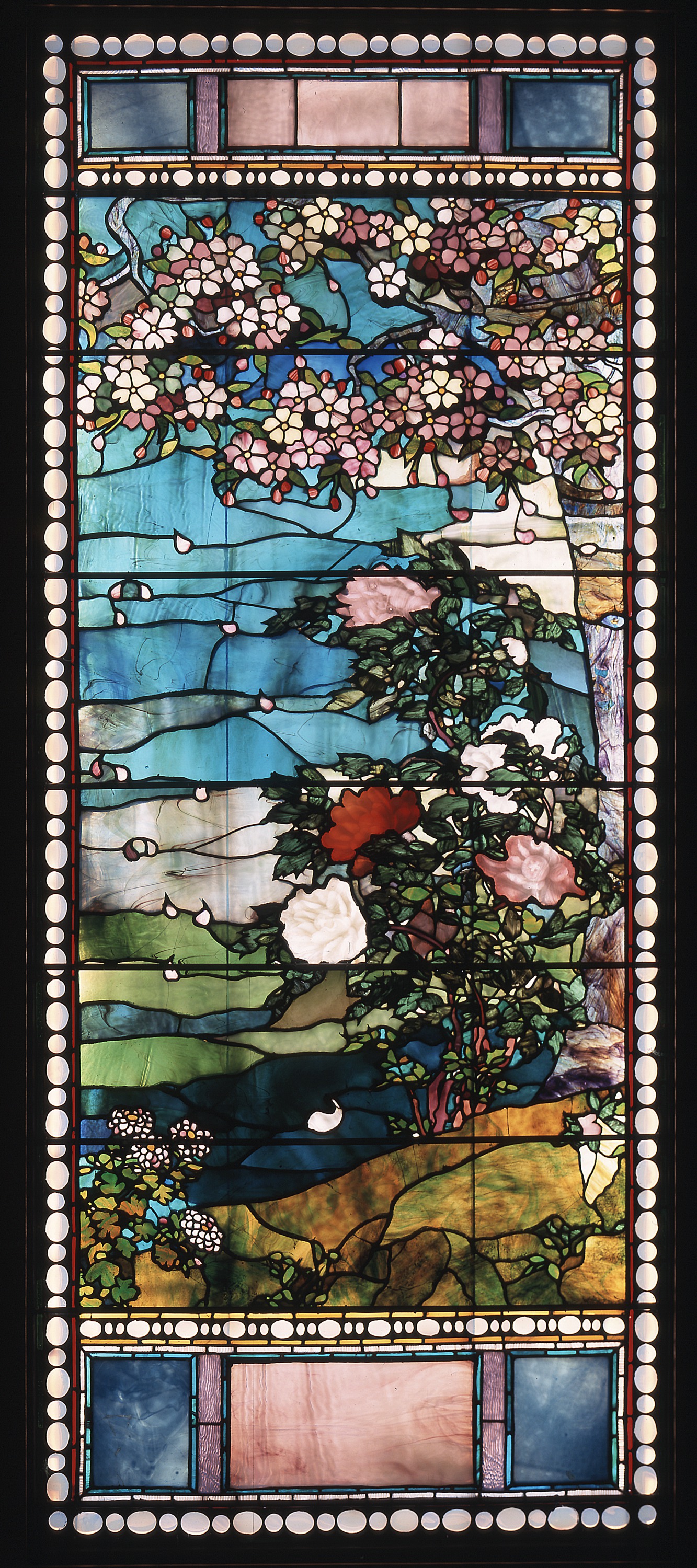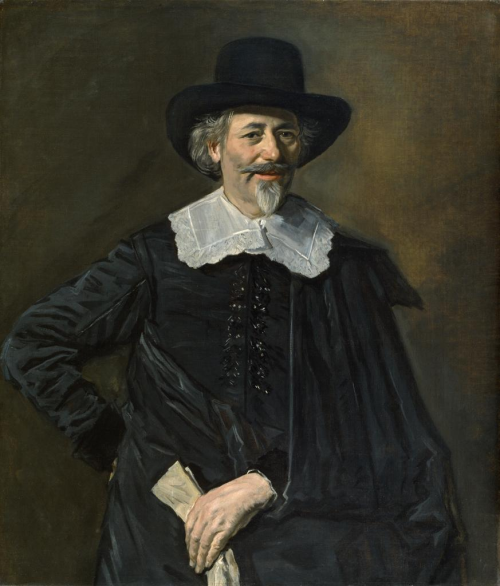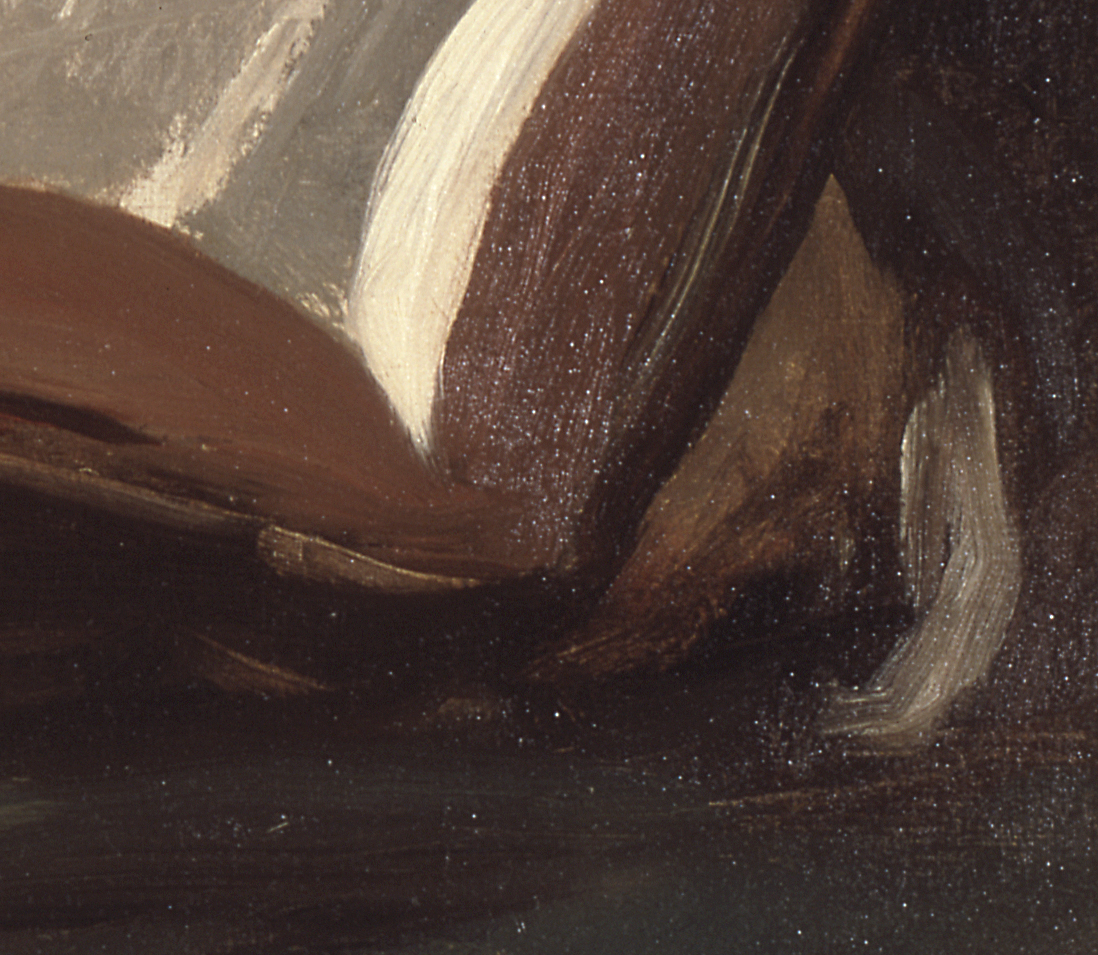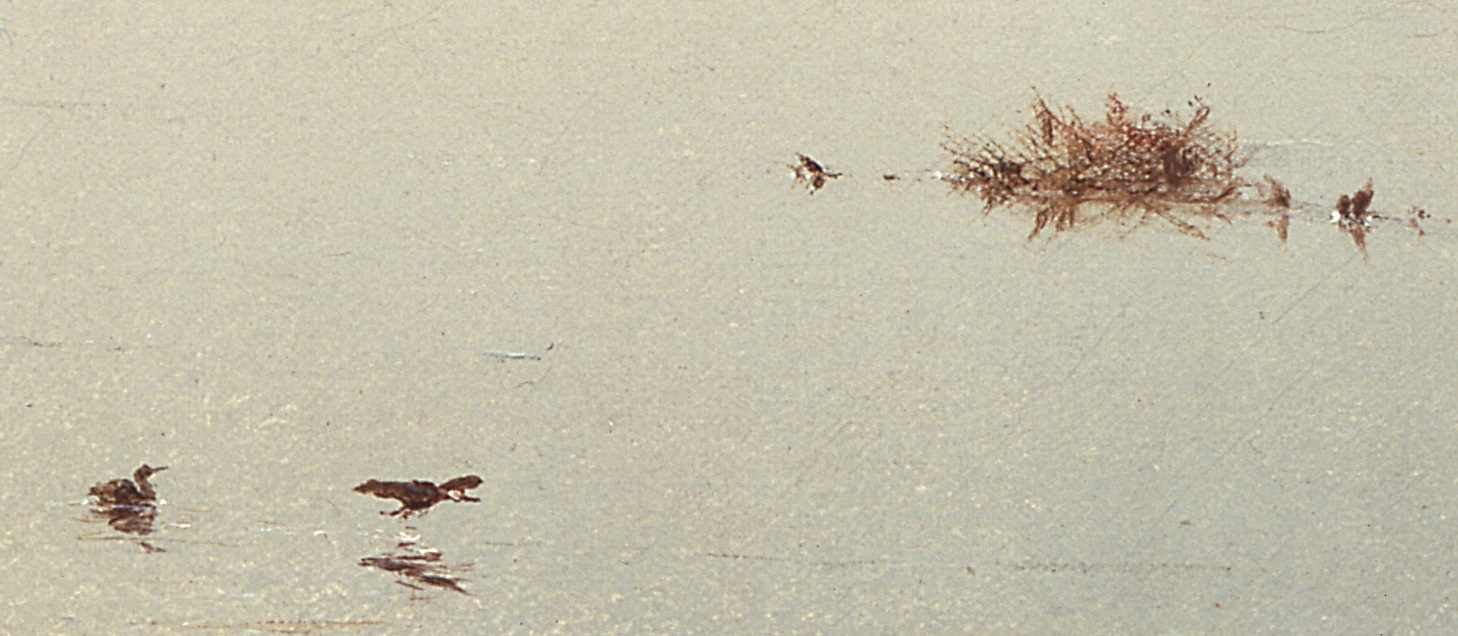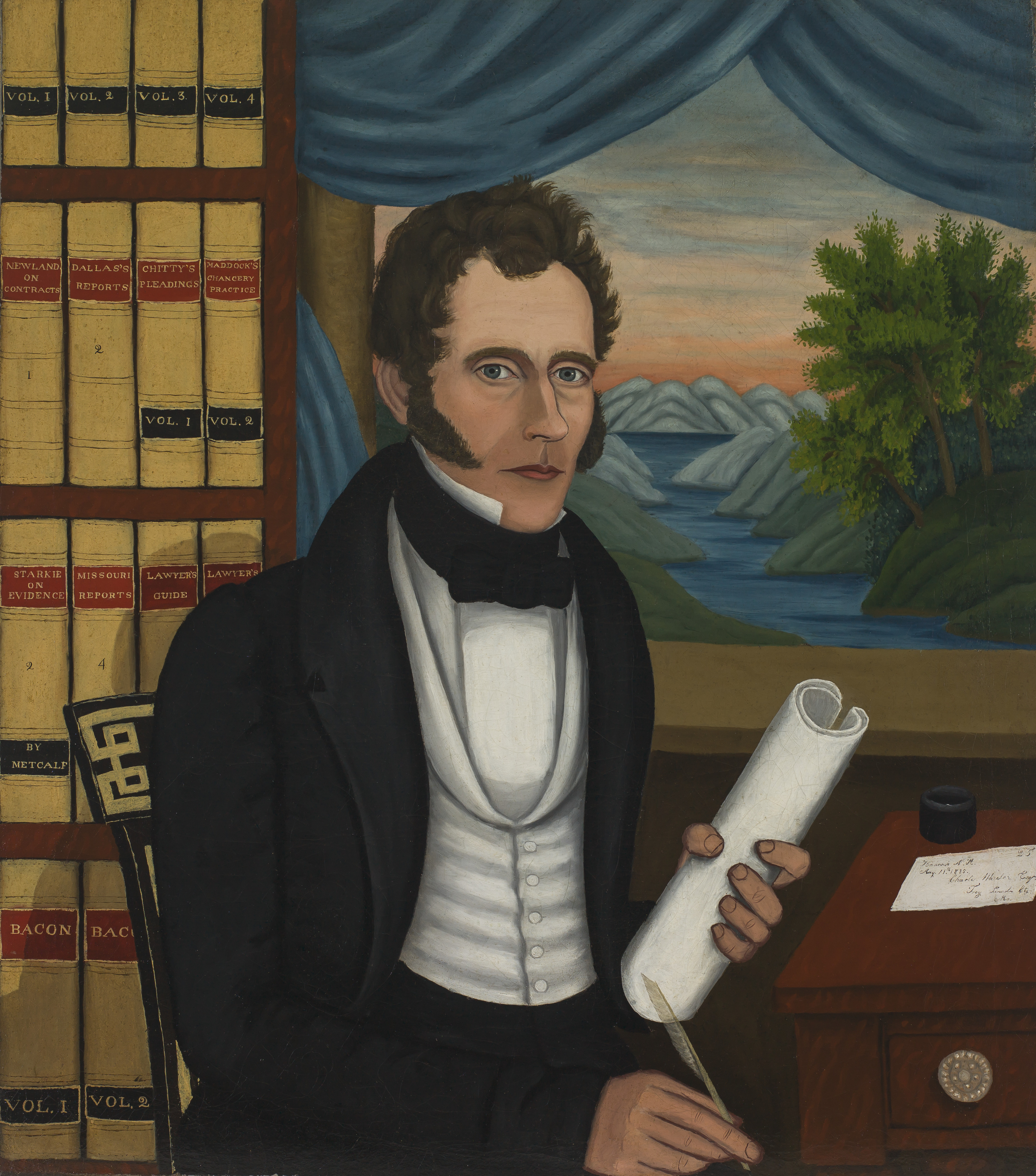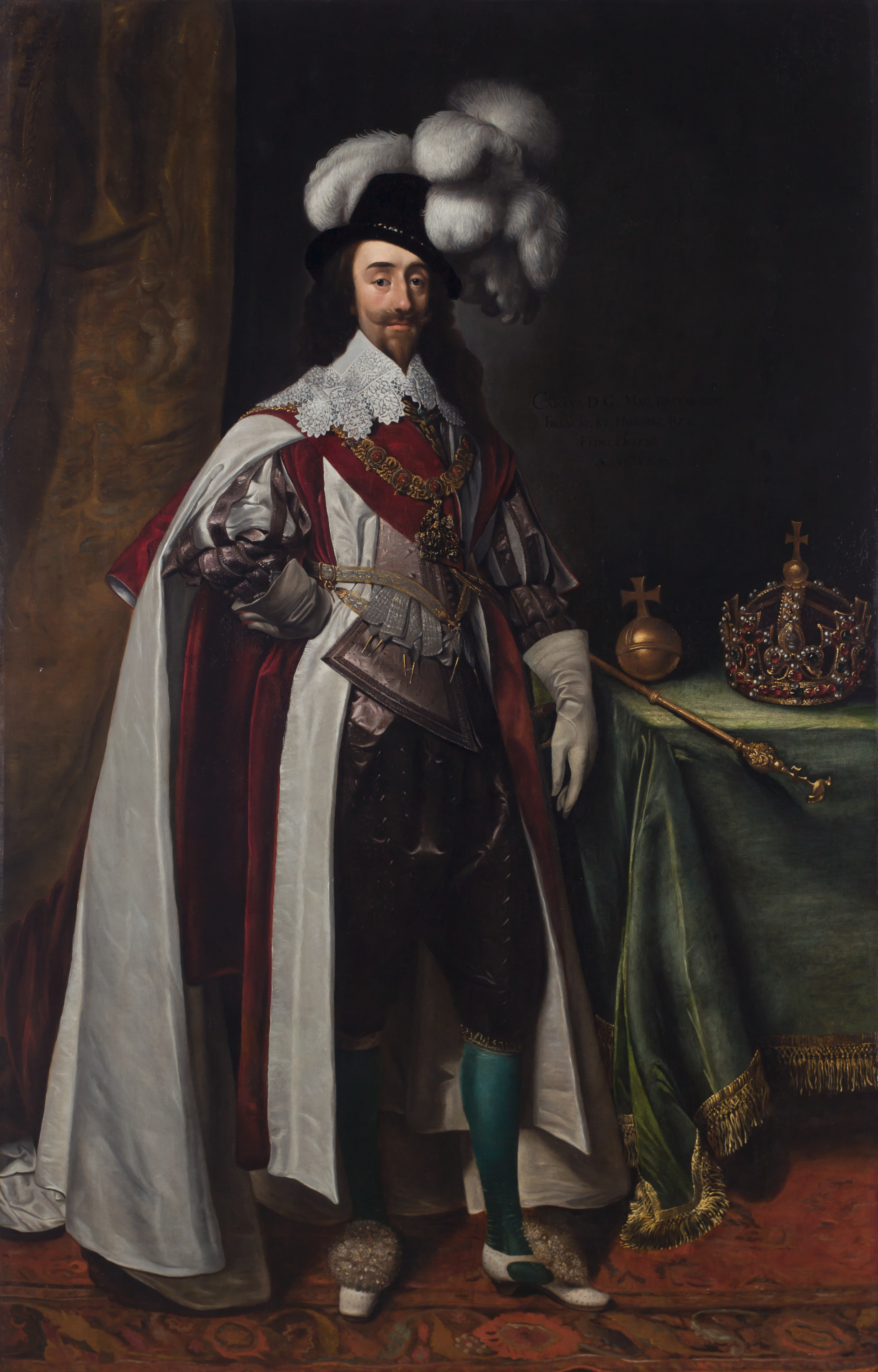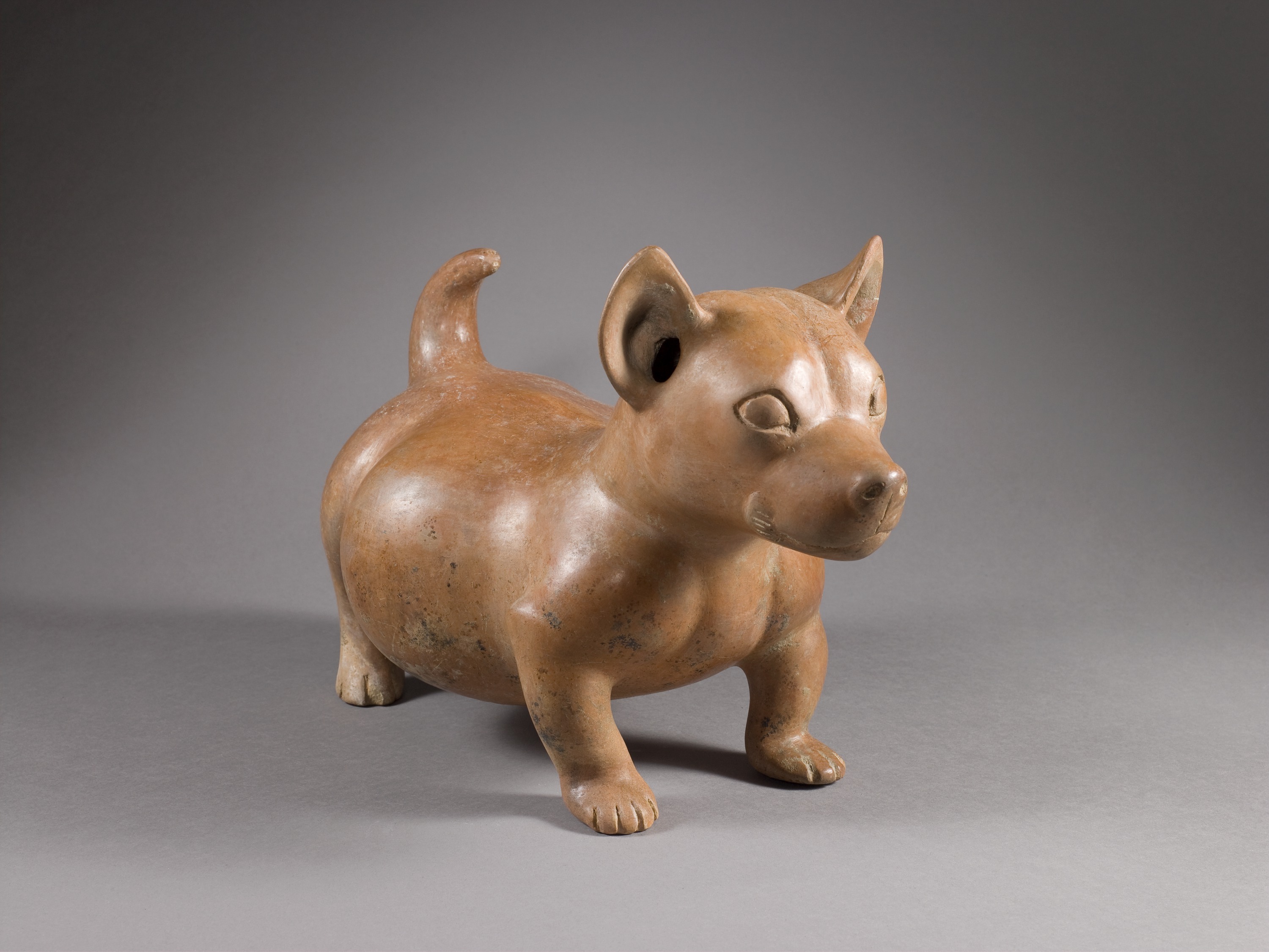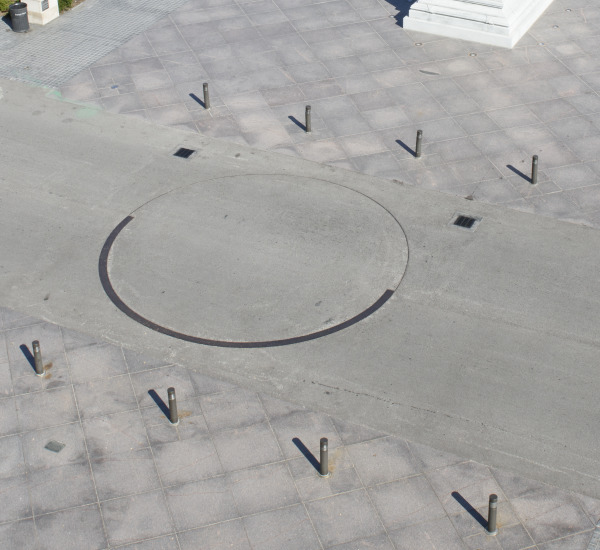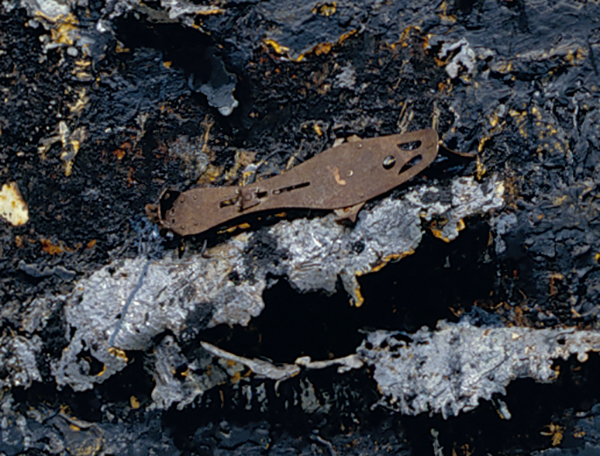October 14, 2025
Bedcover with Design of Golden Pheasants
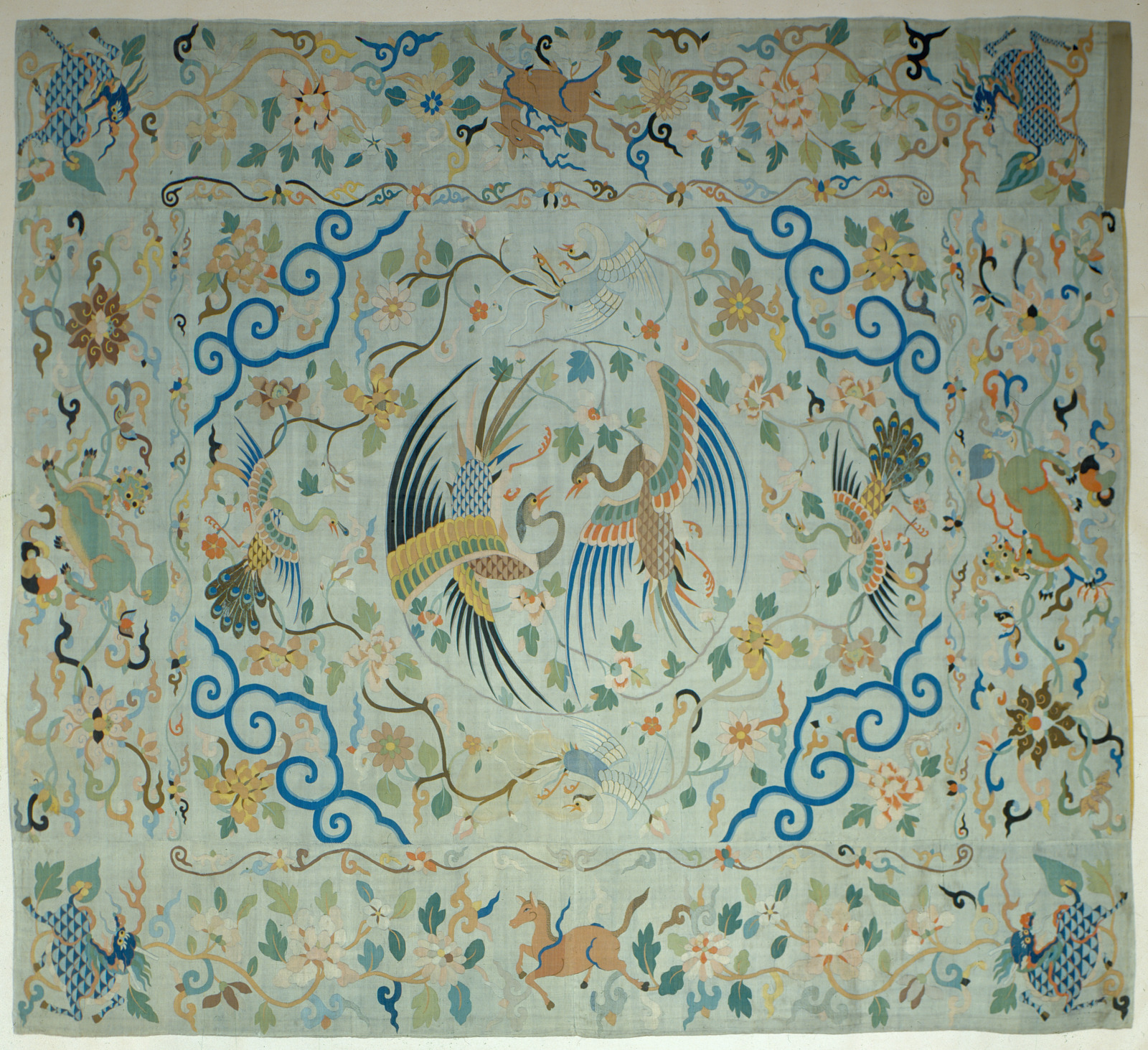
Bedcover with Design of Golden Pheasants, early 17th century; Chinese, Ming dynasty, Wanli period through Chongzhen period; silk in tapestry weave (kesi); 108 x 118 inches; Saint Louis Art Museum, William K. Bixby Trust for Asian Art 74:1956
The center of this large bedcover is dominated by a large roundel formed by two golden pheasants, which symbolize literary refinement. The surrounding field has peacocks, silver pheasants, flower heads, and scrolling tendrils. The wide borders are decorated with real and mythical auspicious animals. This is an excellent example of luxury Chinese textiles exported to Europe. Most likely ordered by Spanish traders and destined for Spain or Portugal, the textile was shipped from a southern Chinese port to the Philippines, across the Pacific Ocean to Acapulco, Mexico then overland to Veracruz where it was transferred to galleons traveling across the Atlantic to Cadiz, Spain.
October 13, 2025
Two-handled Cup (skyphos)

Two-handled Cup (skyphos), 1st century BCE–1st century CE; Roman, Early Imperial period; lead-glazed ceramic; handle to handle: 5 3/4 inches; Saint Louis Art Museum, Museum Purchase 245:1923
The distinct colors—deep green and mustard yellow—of this mold-made ceramic cup are obtained from a lead glaze developed in the 1st century BCE in the eastern Mediterranean. More fluid and less prone to cracking, this glaze was a distinct improvement over other contemporary glazing technologies. It has been suggested that these colors were specifically selected to emulate the patina of weathered bronze and gilded silver. This vessel shape is common in ceramic, glass, and metal.
October 12, 2025
Billboard Along U.S. 99 Behind Which Three Destitute Families of Migrants are Camped. Kern County, California

Dorothea Lange, American, 1895–1965; Billboard Along U.S. 99 Behind Which Three Destitute Families of Migrants are Camped. Kern County, California, 1938; gelatin silver print; image: 7 9/16 x 9 5/8 inches, sheet: 8 1/8 x 10 inches; Saint Louis Art Museum, Museum Shop Fund 148:1987
In this image, a billboard advertises luxurious train travel above a group of families camping outside near their cars. Dorothea Lange took this photograph on a road trip in her home state of California, where she documented the struggle of migrant workers. The visual dominance of the sign hovering over the figures suggests the growing wealth inequalities of the Great Depression. While some in this period had the financial means to seek adventure in their travel, others were forced to leave their homes because of economic struggles.
Currently on view in the exhibition, In Search of America: Photography and the Road Trip through Sunday, October 19.
October 11, 2025
Beyond Redemption
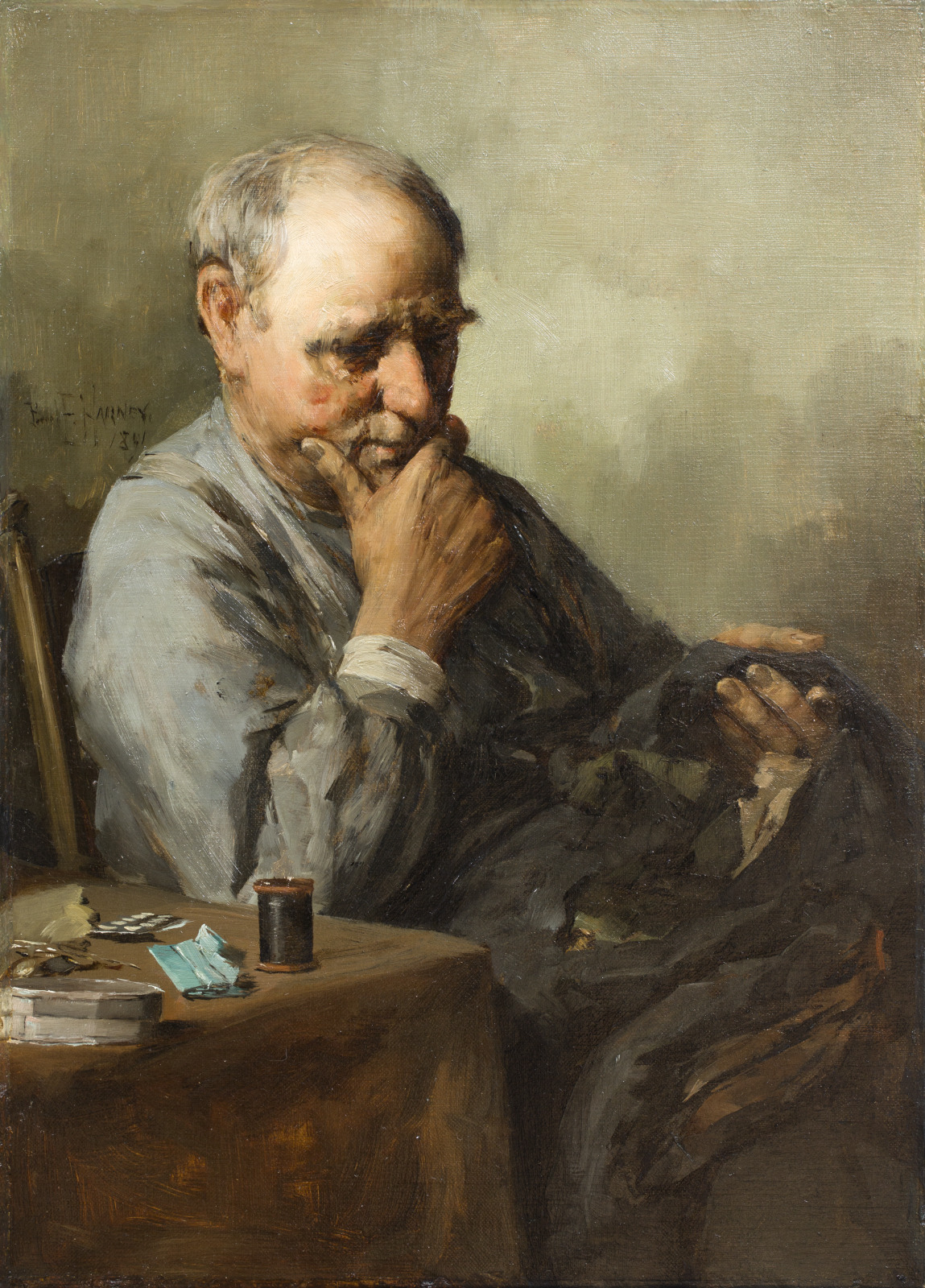
Paul E. Harney, American, 1850–1915; Beyond Redemption, 1891; oil on canvas; 18 x 13 inches; Saint Louis Art Museum, Gift of John J. Oleski 710:2018
A man sits deep in thought, with garment in hand and sewing supplies on a table nearby. The title, Beyond Redemption, may allude to the mending task or to the man himself. Artist Paul Harney taught at the St. Louis School and Museum of Fine Arts and Shurtleff College in Alton, Illinois. This painting was included in the St. Louis Exposition and Music Hall Association’s 18th Annual Art Exhibition in 1901.
October 10, 2025
Close Helmet
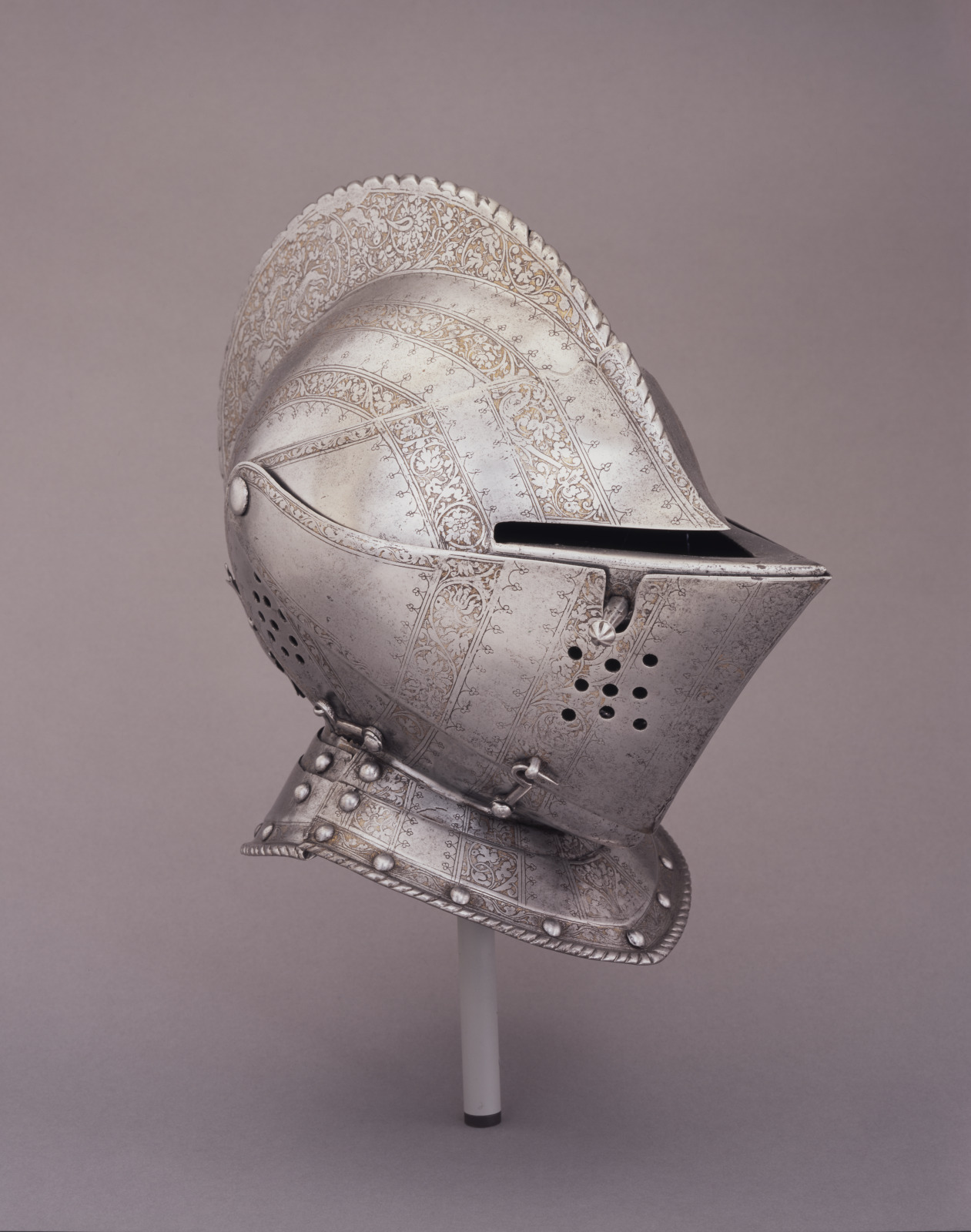
Close Helmet, 1550–55; probably French; etched and gilded steel with brass and pewter repairs, and leather fragments; 12 3/4 x 8 x 14 1/2 inches; Saint Louis Art Museum, Museum Purchase 79:1939
This is the type of helmet most often associated with the popular image of the armored knight. It evolved from earlier types to produce a closely fitting, highly protective, yet relatively light helmet. The small size of this helmet suggests that it was for a youth, probably a member of a noble family who was in training for knighthood. Its surface is decorated with bands of gilded and etched foliation, in the style found in Renaissance art.
October 9, 2025
Chrysanthemums and Autumnal Plants
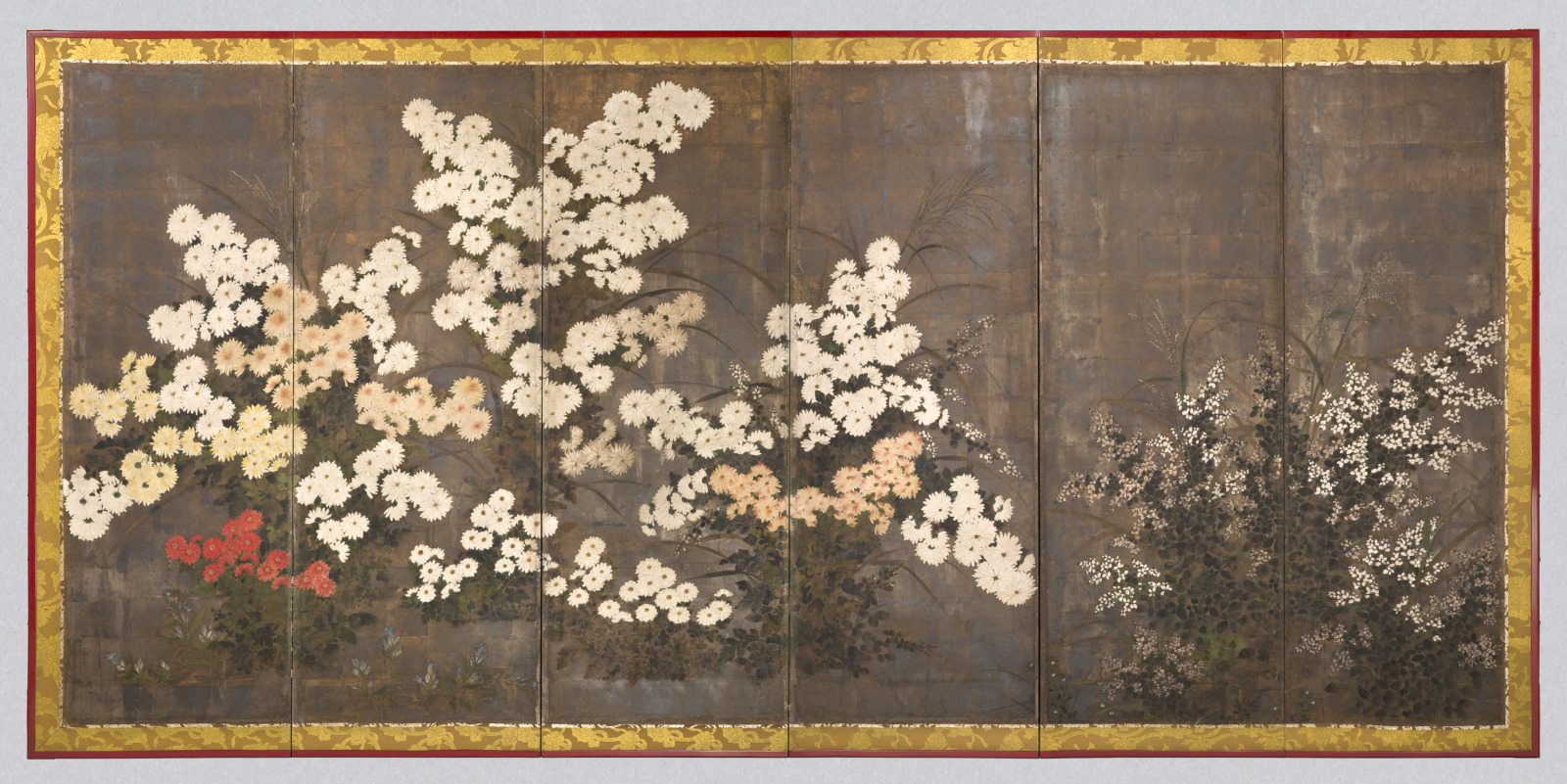
Chrysanthemums and Autumnal Plants, late 17th–early 18th century; Japanese, Edo period; six-panel folding screen; ink, color, and silver leaf on paper; overall: 67 1/8 x 140 inches; Saint Louis Art Museum, Gift of William K. Bixby 963:1920
The principal subjects of this screen are several varieties of chrysanthemum (kiku), a flower closely associated with the imperial family of Japan. The white chrysanthemums are rendered in a raised technique (moriage) using pigment ground from oyster shells. Several autumnal plants (akikusa, literally “autumnal grasses”) are also depicted in a grouping at the far right and elsewhere around the chrysanthemums. One of them is a white-flowering variety of the bush clover (shirohagi; Lespedeza japonica). Another is Japanese silver grass (susuki; Miscanthus sinensis), with its gracefully arching leaves and seed heads. At the lower portions of the two far left panels are Chinese bellflowers (kikyō; Platycodon grandiflorus).
The silver-leaf background indicates that the flowers and plants are being viewed under moonlight. Tawaraya Sōtatsu (c.1570–c.1640), one of the founders of the Rinpa school of Japanese painting, introduced a technique of overlapping wet pigments that blur at the edges (tarashikomi). The artist of this folding screen applied the effect for the chrysanthemums’ leaves. At the lower left corner is a round seal impressed in red reading I’nen. This seal continued to be employed by Sōtatsu’s workshop for some time after his death.
October 8, 2025
Elvira Resting at a Table
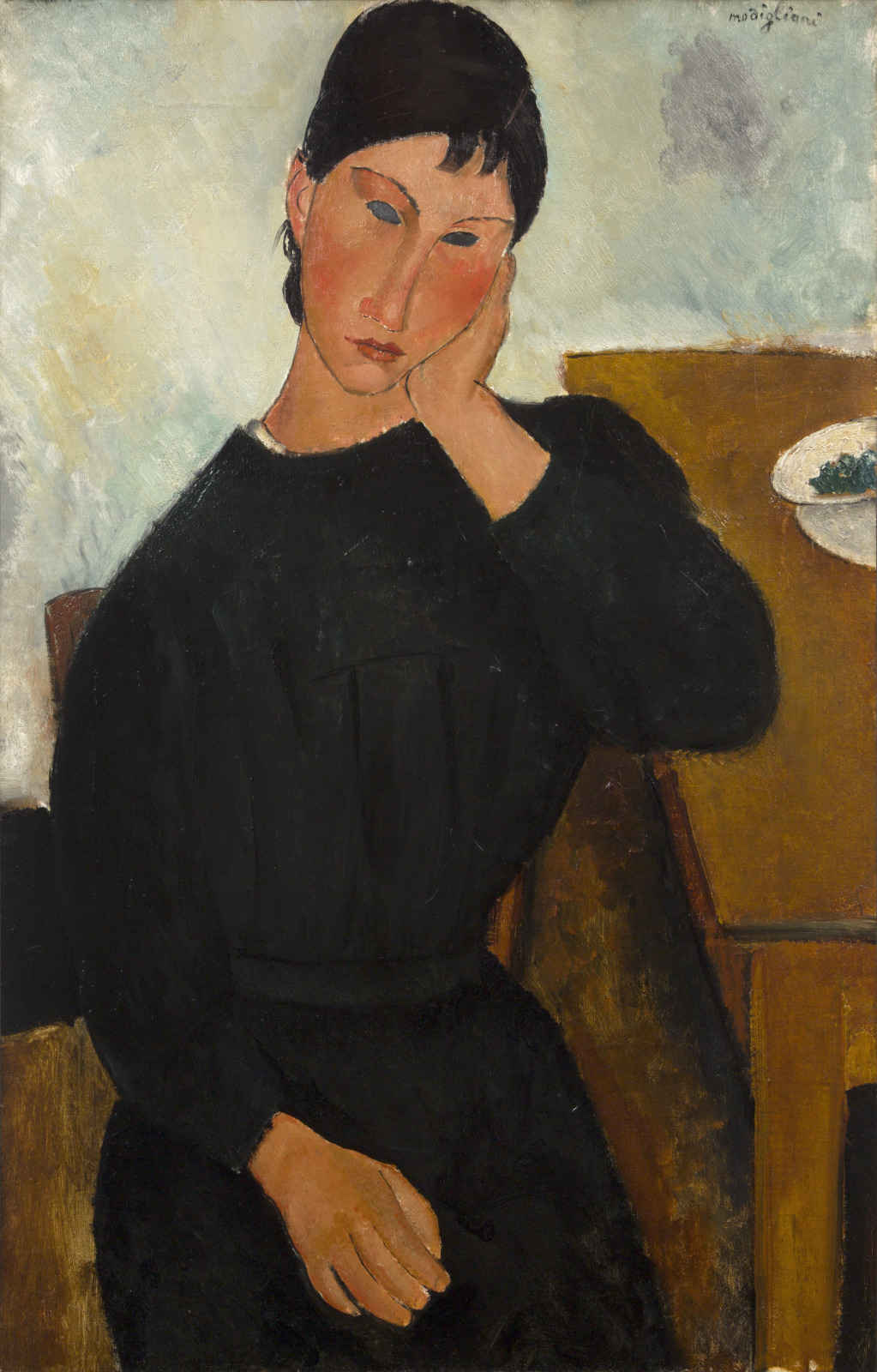
Amedeo Modigliani, Italian (active France), 1884–1920; Elvira Resting at a Table, c.1918–19; oil on canvas; 36 1/2 x 23 13/16 inches; Saint Louis Art Museum, Gift of Joseph Pulitzer Jr. in memory of his wife, Louise Vauclain Pulitzer 77:1968
This woman was one of Amedeo Modigliani’s favorite models, a young worker known only by her first name, Elvira. Her bright blue, almond-shaped eyes reflect the artist’s trademark interest in stylized forms. Modigliani, an Italian by birth, moved to Paris early in his career and became a central figure in the avant-garde “School of Paris,” an artist group based in Montparnasse. He painted this portrait the year before his death from tuberculosis at the age of 35.
October 7, 2025
View Along the Amstel
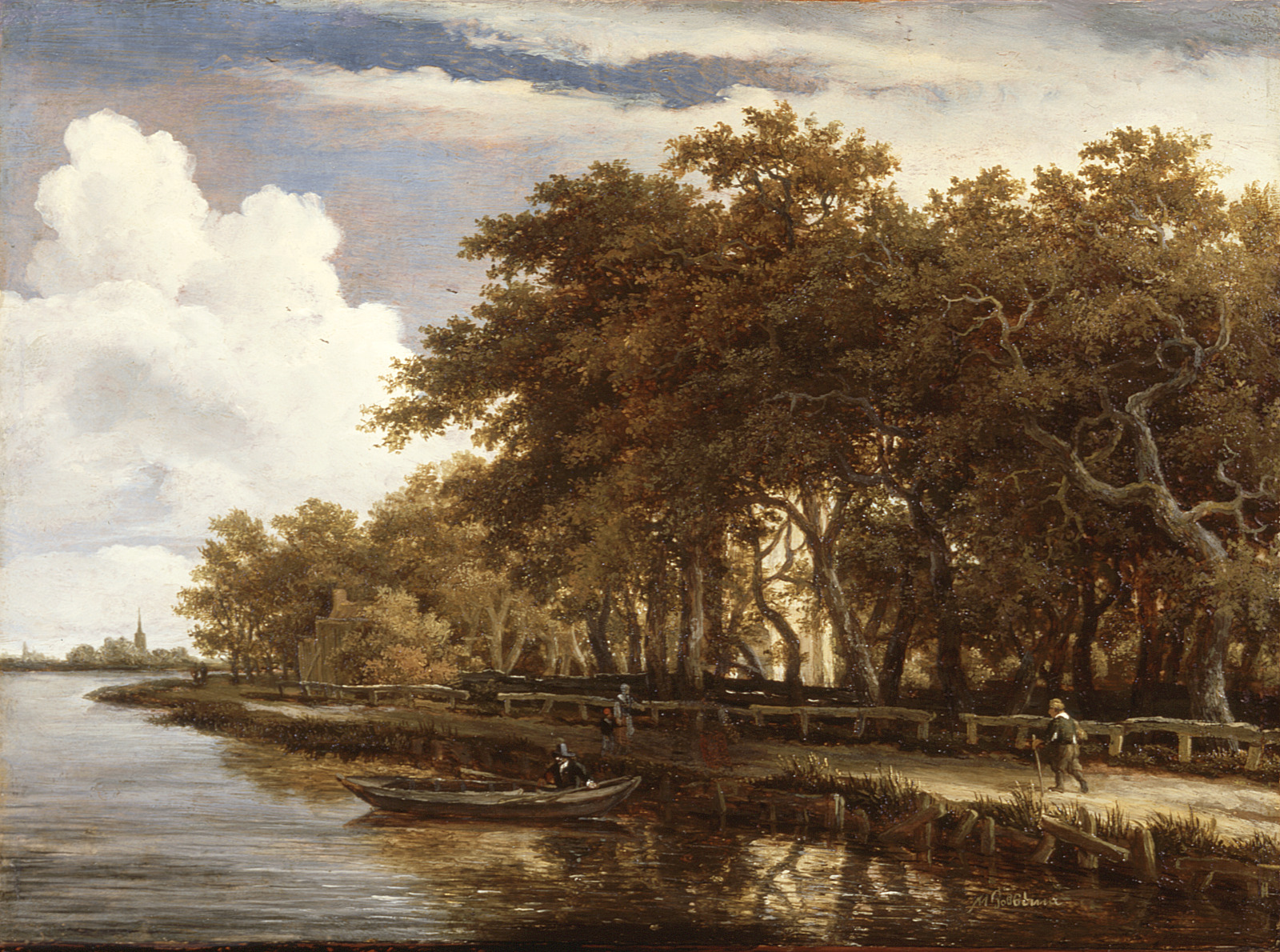
Meindert Hobbema, Dutch, 1638–1709; View Along the Amstel, c.1660; oil on panel; 13 3/4 x 18 3/4 inches; Saint Louis Art Museum, Friends Endowment Fund and funds given in memory of Milton H. Tucker 1:1982
Here, a thicket of trees with entangled limbs contrasts with the shimmering surface of the Amstel River, which flows through the low-lying city of Amsterdam. A boat glides on the water while travelers walk along the riverside path. Along the horizon line, a church spire emerges from the distant city. In response to expanded markets, 17th-century Dutch painters developed specializations. Meindert Hobbema focused on wooded landscapes such as this one.
October 6, 2025
Fly Whisk (chauri) with Design of Floral and Vegetal Motifs on the Handle
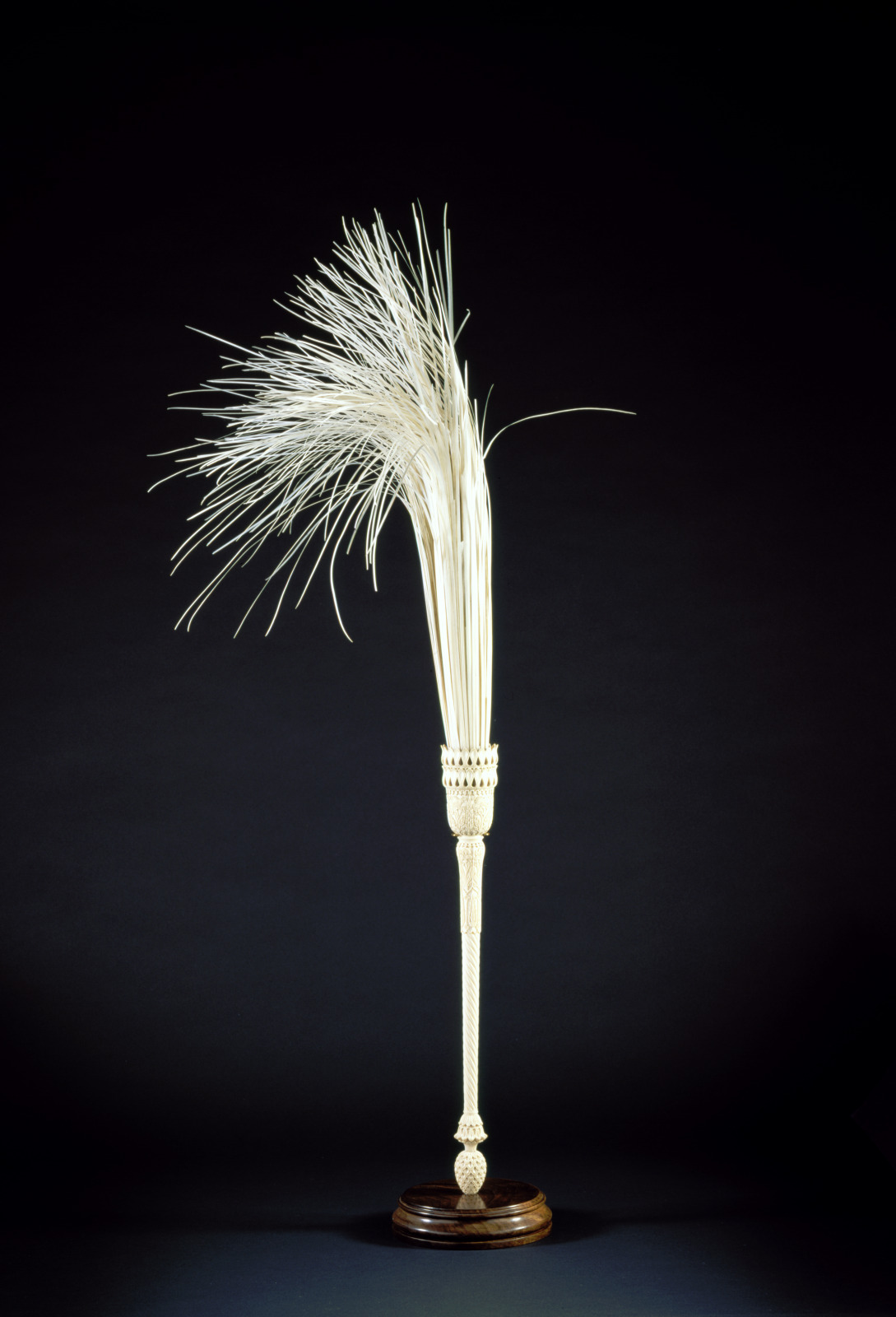
Fly Whisk (chauri) with Design of Floral and Vegetal Motifs on the Handle, late 18th century; Indian, Mughal dynasty; ivory and whale baleen; length: 33 3/4 inches; Saint Louis Art Museum, Young Friends Art Purchase Fund 69:2004
The ivory handle of this object has three separate parts: a tip shaped like a lotus bud, a tapering ropework shaft, and a cup-shaped mouthpiece. The upper portion of the shaft and the sides of the mouthpiece are carved with flowering irises and poppies, flanked by cypress trees. The mouthpiece is surmounted by a pierced double gallery of everted petals. The parts screw together to hold the individual whisk slivers, which are made of whale baleen (keratin-based filters from the mouths of baleen whales). Fly whisks were symbols of royal authority in both Hindu and Muslim courts in India; this one was made for the sophisticated Mughal court. It was probably crafted in Murshidabad, which served as the Mughal capital of Bengal and had specialized workshops for ivory and woodworking.
October 5, 2025
Ker-Xavier Roussel Sketching
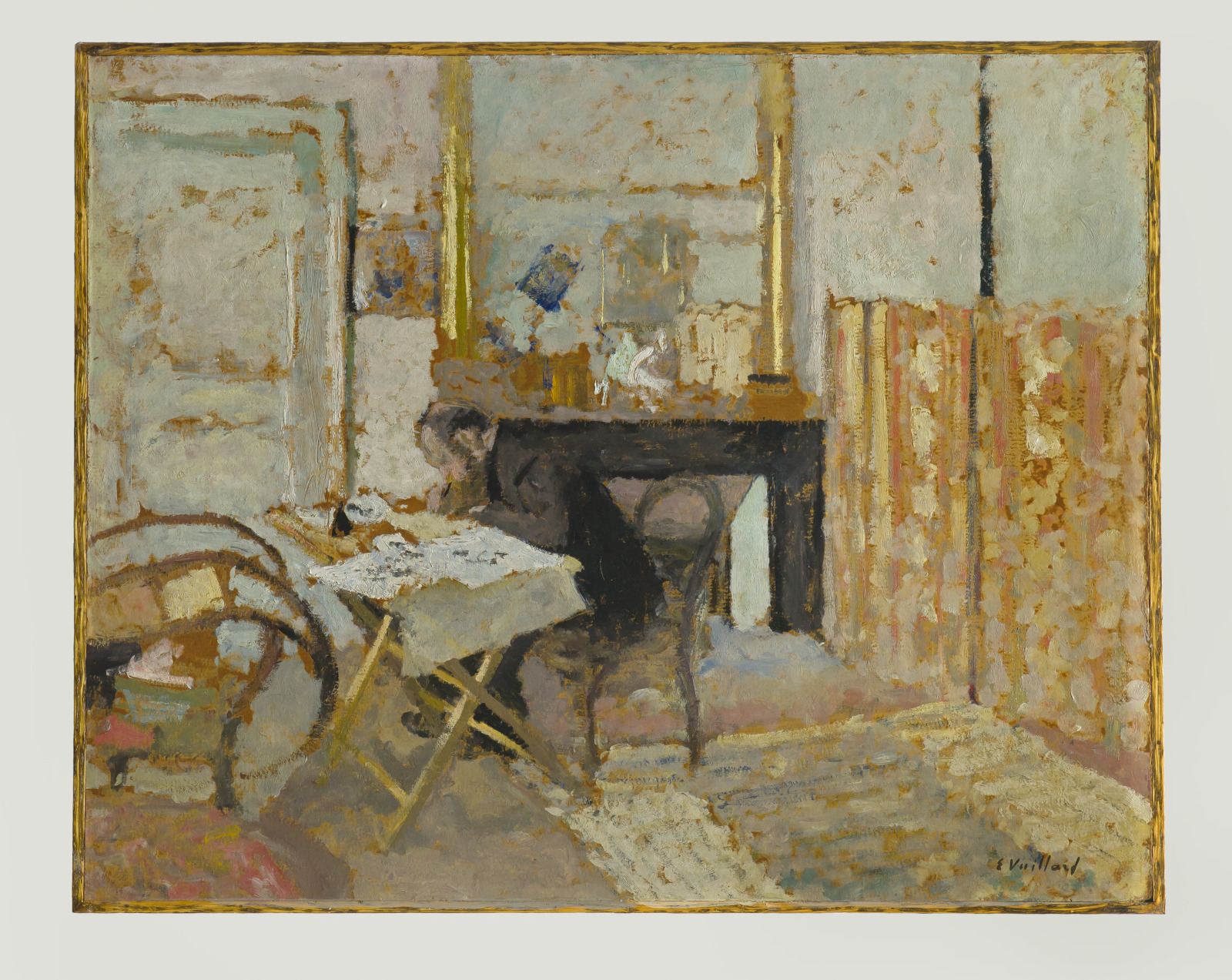
Édouard Vuillard, French, 1868–1940; Ker-Xavier Roussel Sketching, 1902-03; oil on cardboard; 17 1/4 x 21 1/2 inches; Saint Louis Art Museum, Gift of Richard K. Weil 713:1961
In a quiet room, the painter Ker-Xavier Roussel, brother-in-law of fellow artist Édouard Vuillard, sketches at a table. With his dark jacket and unassuming appearance, Roussel is nearly indistinguishable from the background. Vuillard frequently painted family and friends in intimate interior settings in such a way that they disappear into their surroundings. Portrayed here in brushstrokes and tones identical to the fireplace mantel behind him, Roussel becomes part of the tapestry of patterns, colors, and objects that make up this living space. Vuillard emphasized this interrelationship between figures and their environments in his works, stating “I don’t paint portraits. I paint people at home.”
October 4, 2025
“RKO” Rug
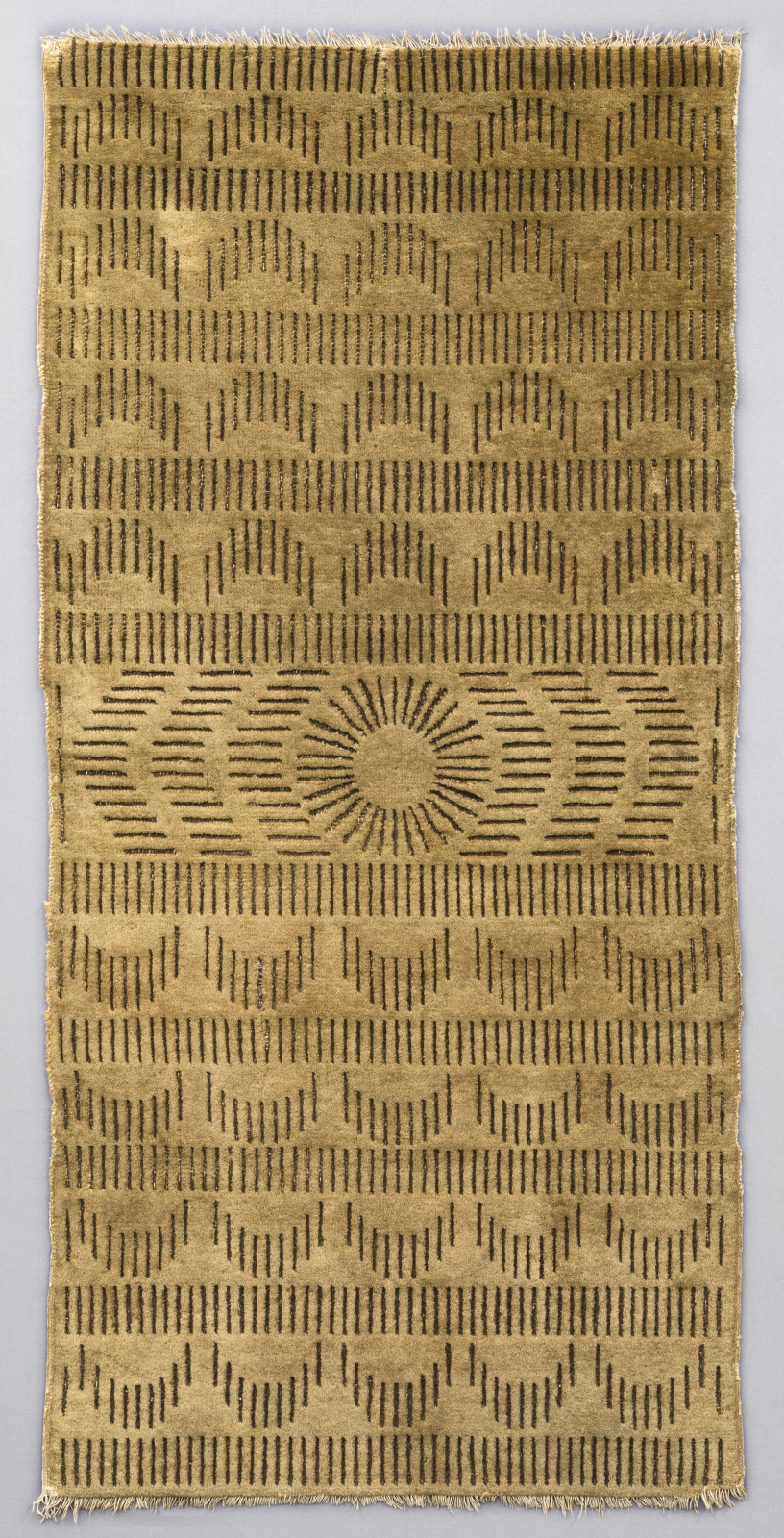
"RKO" Rug, 19th century; Chinese, Qing dynasty; cotton and wool; including fringes at either end: 67 1/2 x 31 3/4 inches; Saint Louis Art Museum, Gift of Nellie Ballard White 321:1972
Muslim weavers in the Ningxia Hui autonomous region of northwestern China created this rare and unusual rug. Rugs of this type share a number of visual characteristics: the “stroke and dash” pattern, a central medallion, and a distinctive lack of conventional borders.
The term “RKO” was first invented in 1967 by the scholar Charles Grant Ellis (1908–1996) in reference to a 19th-century Chinese rug loaned for exhibition to the Textile Museum, Washington, DC. Ellis described the dynamic field designs, as seen here, as similar to the “sonic sound waves” of a popular 19th-century logo. This particular logo belonged to the motion picture company RKO (Radio Keith Orpheum) Pictures, Inc., New York, and was used between 1936 and 1959. The RKO term was so appropriate that it has been used ever since to describe rugs with this design feature.
October 3, 2025
Corner Cabinet
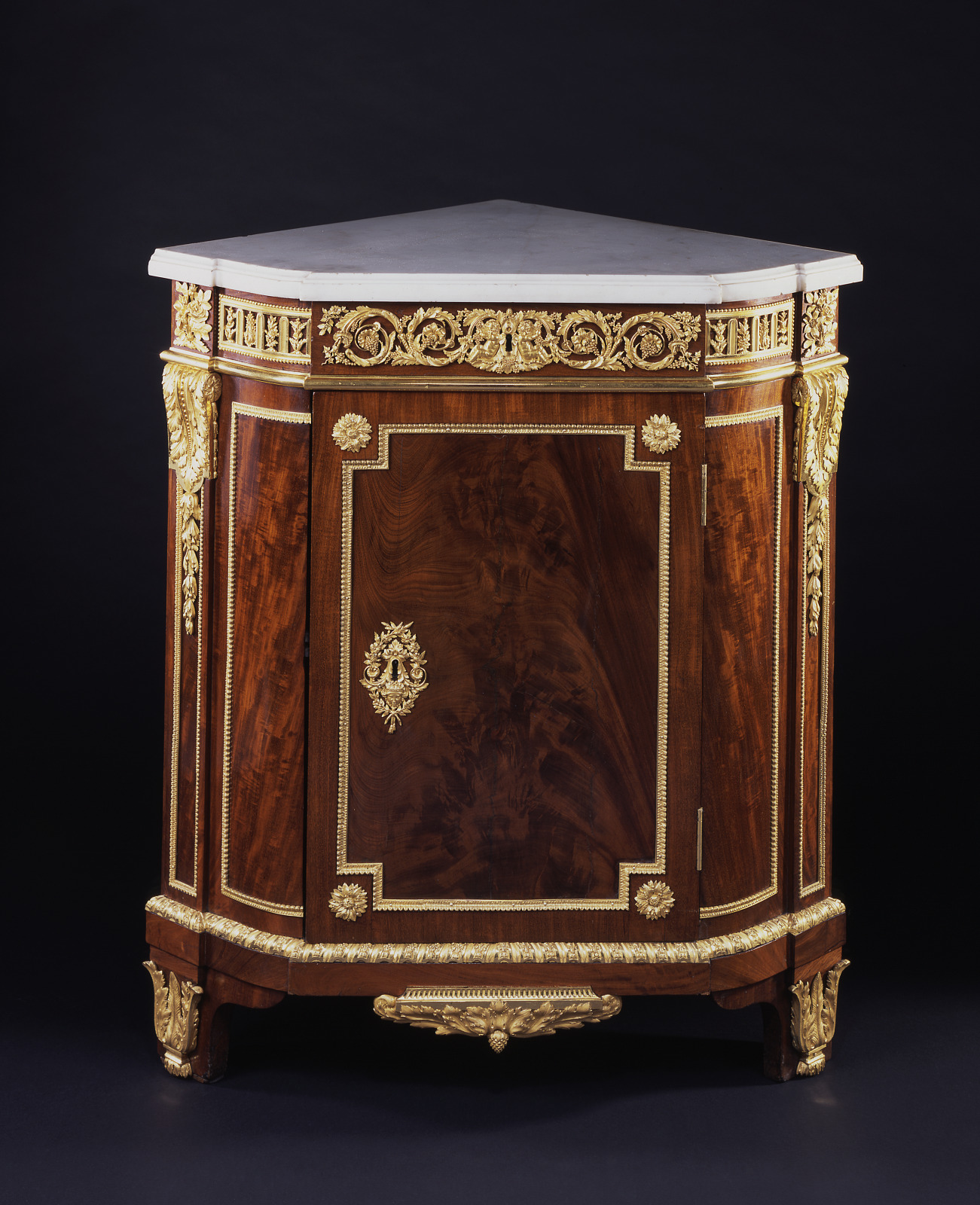
made by Jean-Henri Riesener, French (born Germany), 1734–1806; Corner Cabinet, 1785; mahogany, oak, and marble with gilded brass; 36 13/16 x 35 1/4 x 22 1/16 inches; Saint Louis Art Museum, Museum Purchase 117:1945
Constructed of oak with beautiful mahogany veneers, this cabinet’s principal ornaments are the richly modeled gilded brass mounts that trim its front. These include both naturalistic flowers and foliage and conventionalized moldings that articulate the cabinet’s elements. Jean-Henri Riesener preferred to design his own ornaments rather than rely on those supplied by other craftsmen. German by birth, Riesener is considered the best cabinetmaker working in late-eighteenth-century France. His superb design and unsurpassed workmanship helped to secure the patronage of King Louis XVI and Queen Marie Antoinette. This is one of four identical corner cabinets made for the salon of the Maison de la Reine of the Hameau, the Queen’s farm at Versailles.
October 2, 2025
Portrait of a Gentleman
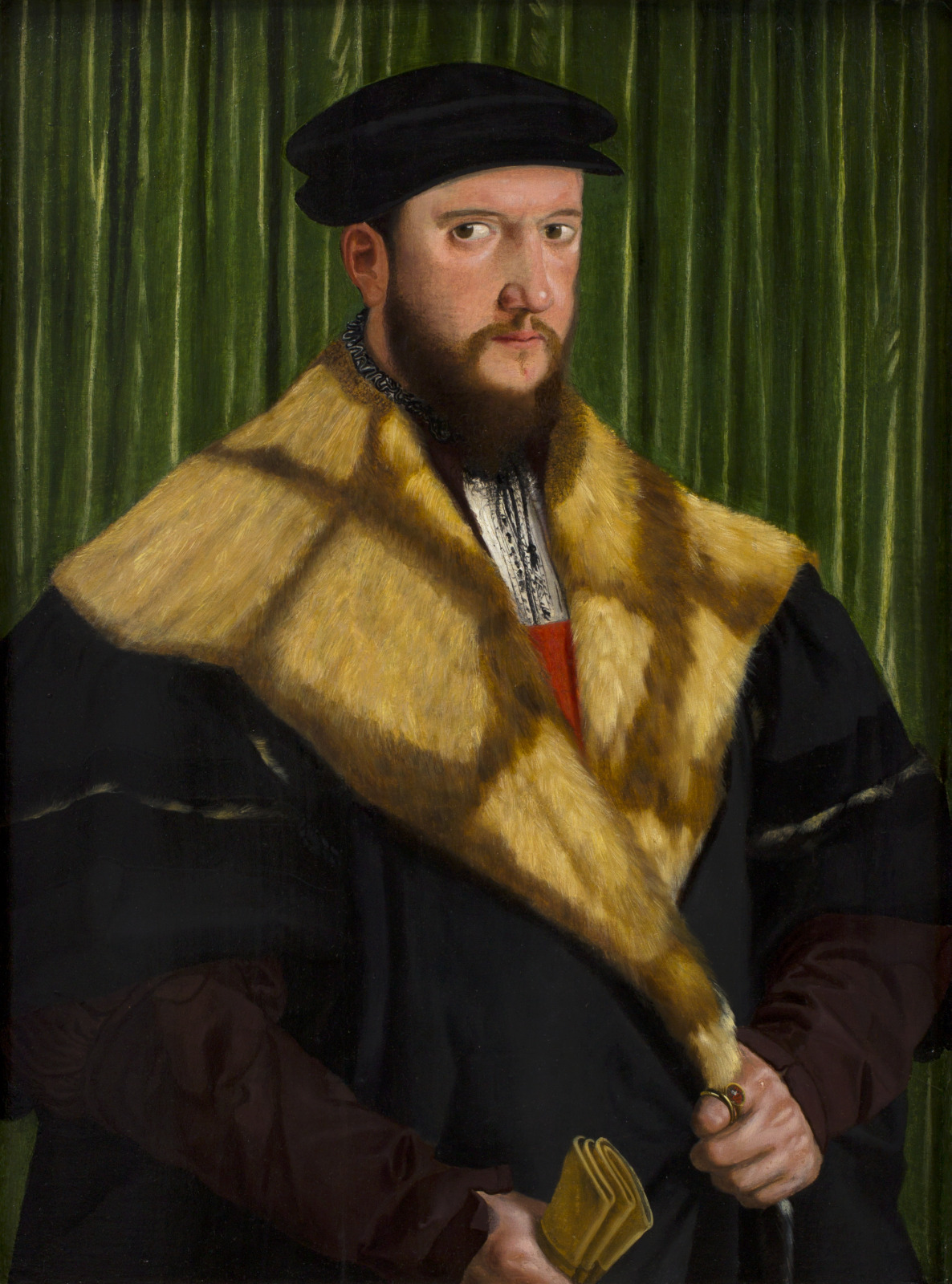
Hans Mielich, German, 1516–1573; Portrait of a Gentleman, 1540–41; oil on panel; panel: 26 1/2 x 19 9/16 inches; Saint Louis Art Museum, Gift of Maria and Larry Roberts in memory of Anny and Albin Salton 38:2006
The identity of this subject is unknown. Although the man’s ring bears a monogram, no name has been associated with the initials. His fur garment and the gloves he holds attest to his prosperity. Hans Mielich, a leading Munich painter of the early 16th century, rarely infused a sense of individual personality into his portraits. Here, however, viewers can sense the man’s apprehension as he faces his chronicler. This uneasiness is illustrated by his firm grip on the edge of his coat and his cautious glance out toward the viewer.
October 1, 2025
Helmet Mask (ngoin)
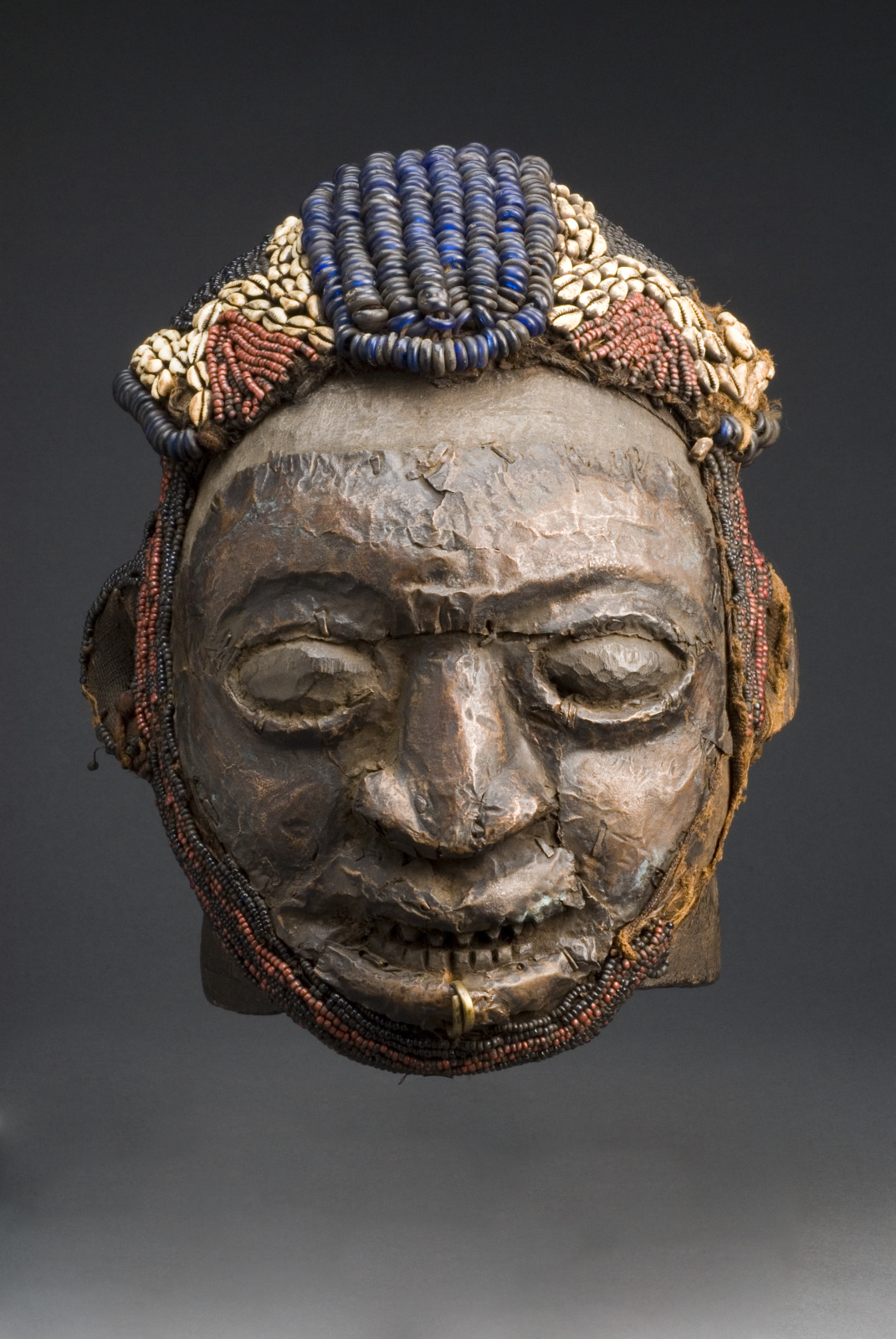
Kom artist, Cameroon; Helmet Mask (ngoin), early 19th century; wood, copper, glass, beads, cowrie shells, metal, fiber, cloth; 16 x 10 1/2 x 12 inches; Saint Louis Art Museum, Museum Shop Fund 14:2006
Precious materials—beads, cowrie shells, and copper sheeting—enhance the royal status of this mask. The central beaded crest suggests the hairstyle of a royal titled wife. “Kekum njang” masks appear exclusively upon the first public appearance of a new “fon” (king), and typically precede the fon and royal wives in procession. “Kekum njang” masks do not dance but instead stride gracefully, accompanied by xylophone music and shouts from the public eagerly anticipating the appearance of their new leader. On January 10, 1976, this mask appeared during the inaugural public appearance of “fon” Jinabo II at the Kom Kingdom palace at Laikom, northwestern Cameroon.
September 30, 2025
Abstraction #208
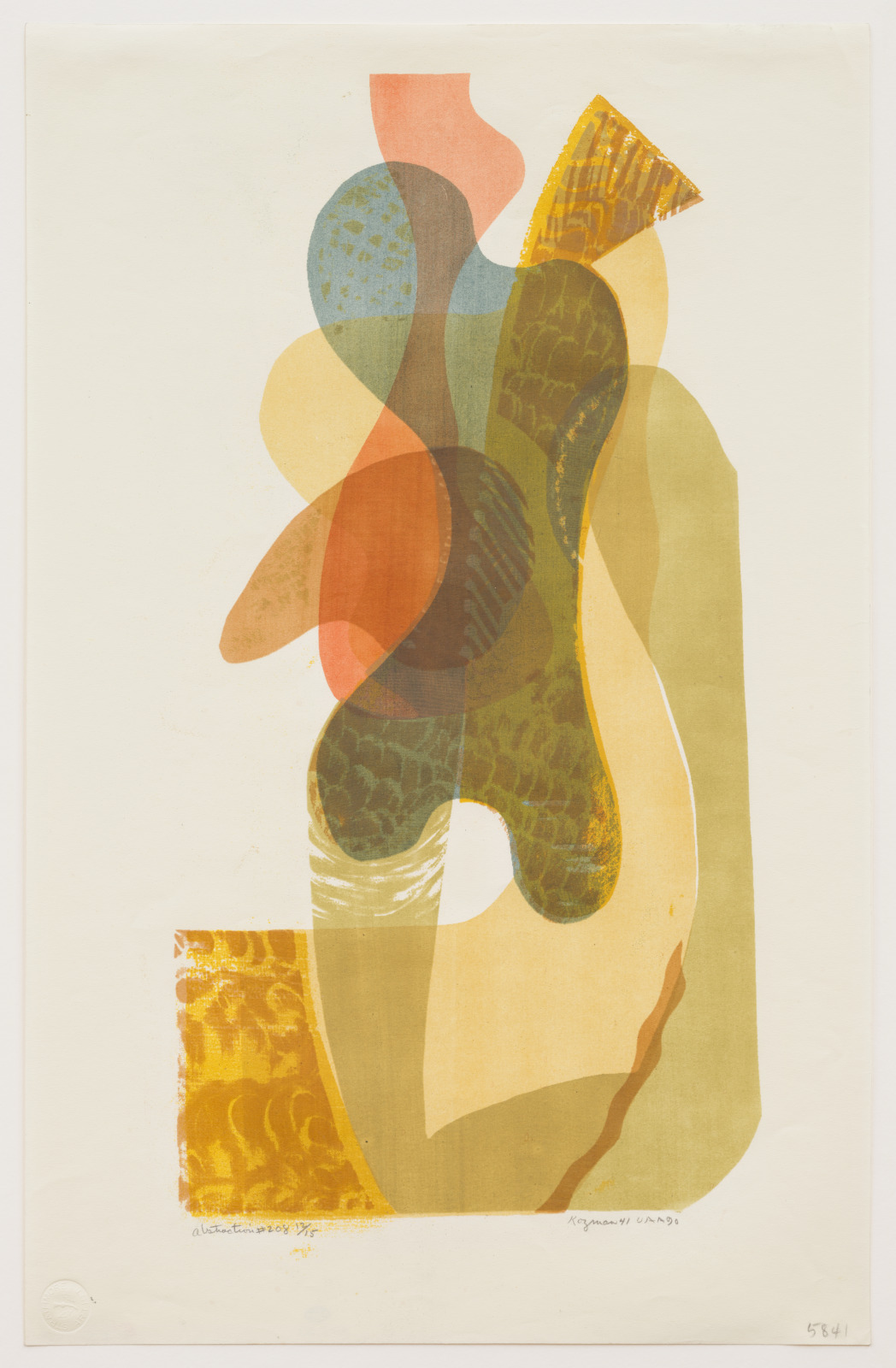
Myron Kozman, American, 1916–2002; Abstraction #208, 1941; color screenprint (direct resist stencil); image: 20 x 10 inches, sheet: 23 1/8 x 14 5/16 inches; Saint Louis Art Museum, Gift of the Federal Works Agency, Work Projects Administration 201:1943
A riot of colors, shapes, and textures fills this sheet. Myron Kozman added “UAA 90” after his signature to indicate his membership in the United American Artists Union. Its national network helped Kozman connect with artists in New York City who had adopted screenprinting as a fine art medium, inspired by poster designs. A child of Russian Jewish immigrants, Kozman experimented with this new technique while studying at Chicago’s Institute of Design. The school’s founder, László Moholy-Nagy, encouraged students to strive for “vision in motion” by designing complex interrelationships of shapes and layering blocks of color to achieve a transparent effect. Kozman later taught in St. Louis at Webster and Lindenwood Universities.
September 29, 2025
Jar
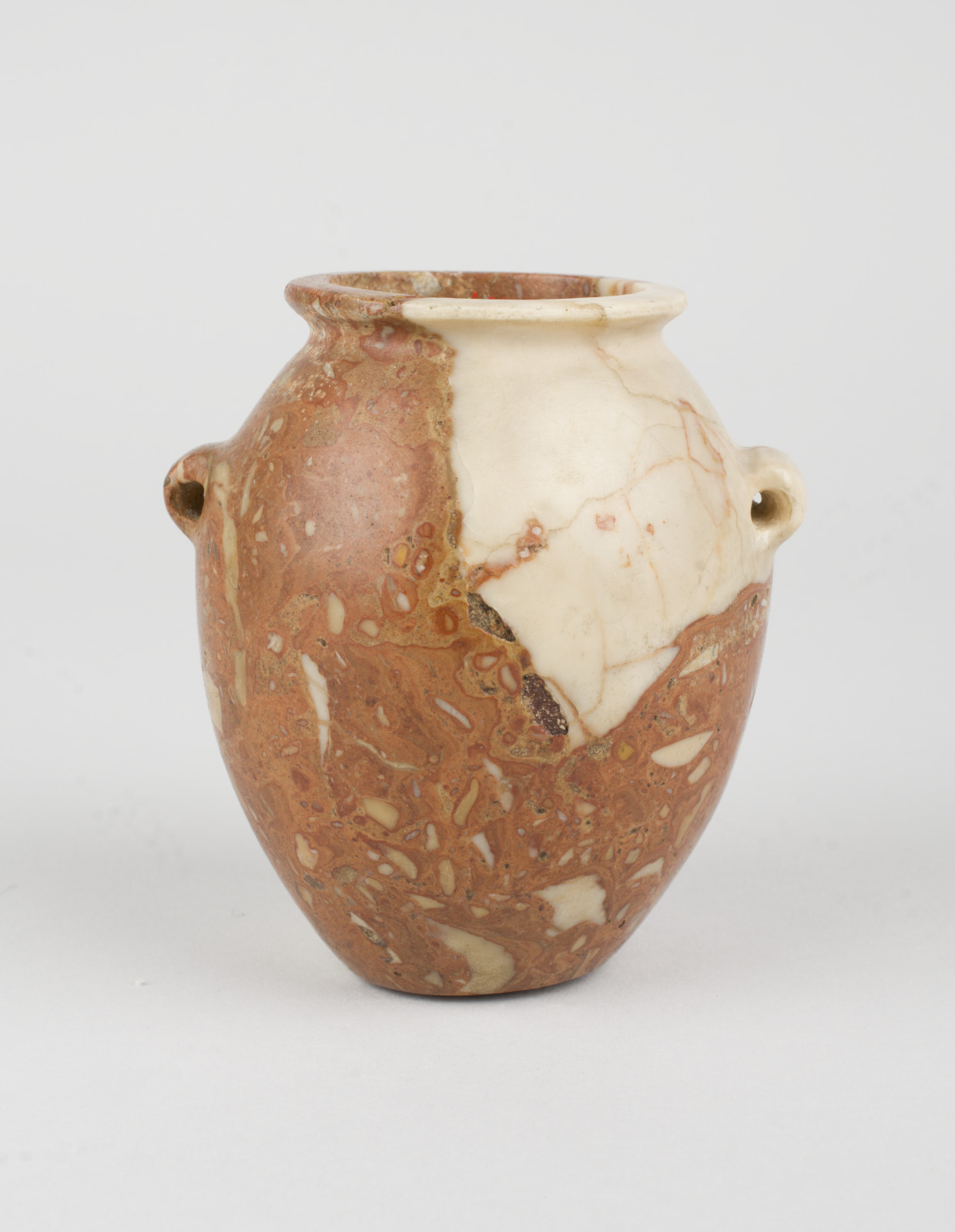
Jar, 3500–2890 BCE; Ancient Egyptian, possibly Gerzean period (Naqada II), or Early Dynastic period, Dynasty 1; limestone breccia; 3 3/4 x 3 1/4 inches; Saint Louis Art Museum, Museum Purchase 208:1924
The design of this container is no accident—the color and shape are meant to imitate an actual heart. Considered to be the location of a person’s soul, or ba, the heart was the most important organ in the body for the ancient Egyptians. It would have taken over 20 hours to hollow out this vessel using stone tools and abrasive sand. Both the amount of labor and the source of this stone from a remote quarry indicate that the owner of this jar was wealthy enough to afford this luxurious object.
September 27, 2025
The Coronation of the Virgin
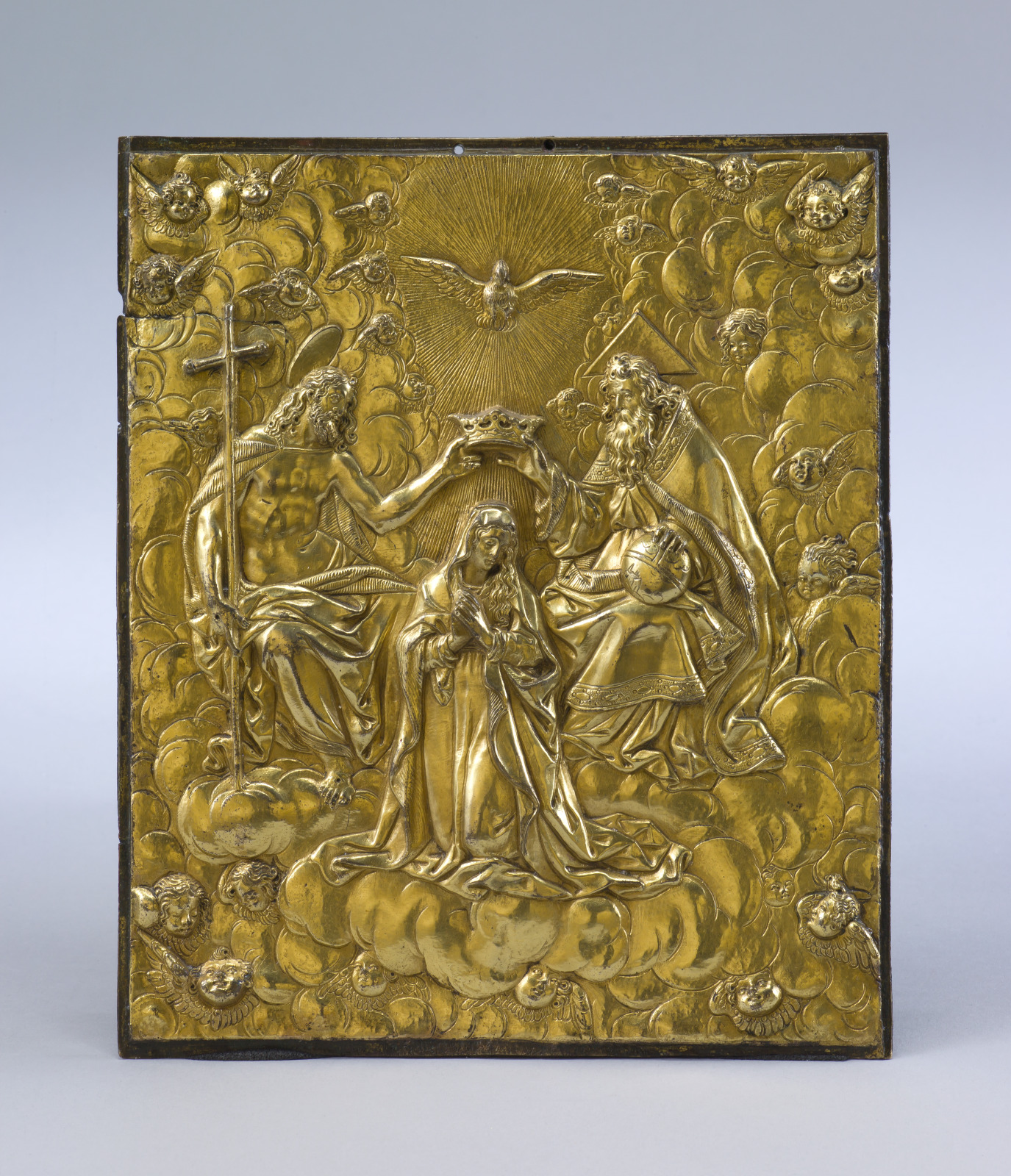
The Coronation of the Virgin, late 16th century; German , probably Augsburg; bronze with gilding; 8 3/8 x 7 x 9/16 inches; Saint Louis Art Museum, Gift of Mark Steinberg Weil and Phoebe Dent Weil 253:2021
Jesus (left) and God (right) prepare to crown the kneeling Mary while the dove of the Holy Spirit hovers above. For Christian believers in the 16th century, the coronation of the Virgin had become the ideal image for representing Mary’s role as heavenly queen.
This relief was intended for personal prayer and reflection. It was created by pouring molten bronze into a mold and then sharpening details and adding texture with a pointed stylus once the metal had cooled.
September 26, 2025
Ballet Dancers in the Wings
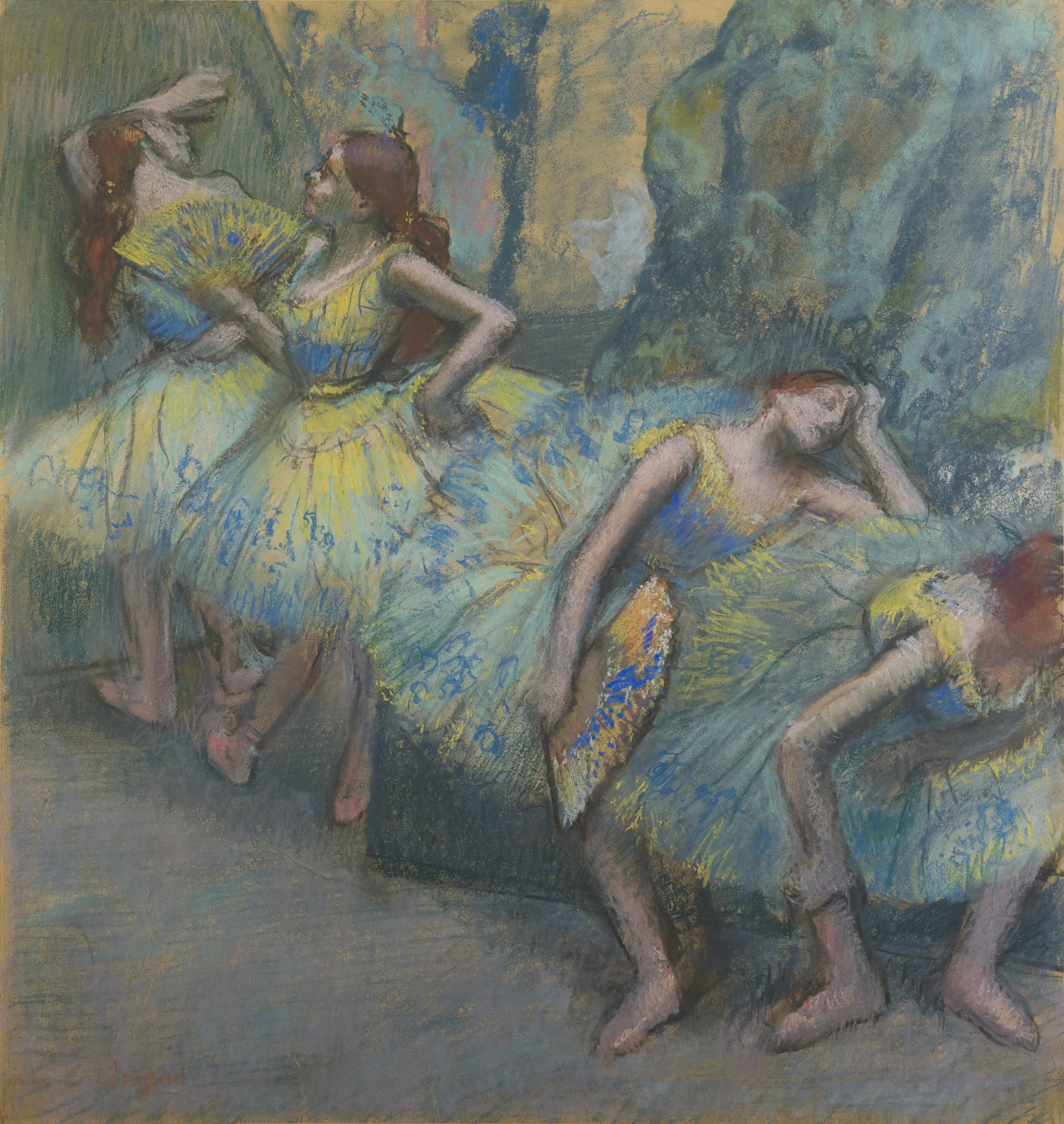
Edgar Degas, French, 1834–1917; Ballet Dancers in the Wings, c.1890–1900; pastel; 28 x 26 inches; Saint Louis Art Museum, Museum Purchase 24:1935
Four dancers stretch and adjust their slippers as they wait in the wings just offstage, forming a diagonal cascade across the picture. Edgar Degas was fascinated with dancers and the ballet, creating thousands of works focusing on the theme over the course of his career. He was especially interested in the movement of the human body in his images. Here, he may have actually represented a single red-haired dancer in various stages of motion as she exited the stage following a performance. She performs a series of sequential movements, leaning on the wall, turning, and eventually squatting down.
Degas was a masterful pastellist, using the chalky pigment to build up color in his drawings. The translucent layers allow the various tones to show through, creating a shimmering effect. The artist layered shades of blues, yellows, and greens to suggest the gauzy material of the dancer’s tulle skirts.
September 25, 2025
Breastplate (civavonovono)

Fijian artist, Fiji; Breastplate (civavonovono), c.1840–50; whale ivory, pearl shell, plant fiber; diameter: 9 1/16 inches; Saint Louis Art Museum, Bequest of Morton D. May 1557:1983
To create this breastplate, an artist skillfully worked two precious and rare marine materials—ivory and pearl shell—into a striking composition. The pearl shell at center was polished repeatedly to reveal and enhance its sheen. Pieces of carefully carved and polished ivory from the sperm whale frame the pearl shell. The construction is so refined that the threads of coconut fiber joining these parts are barely noticeable.
This technique of assemblage was practiced by Tongan artisans installed in Fiji. These individuals were experts in the fabrication of grand double-hull canoes as well as ivory prestige objects. The earliest documentation of this type of civavonovono dates to the first decades of the 19th century. Worn by Fijian chiefs of high rank, they were passed down from generation to generation.
September 24, 2025
Burning City
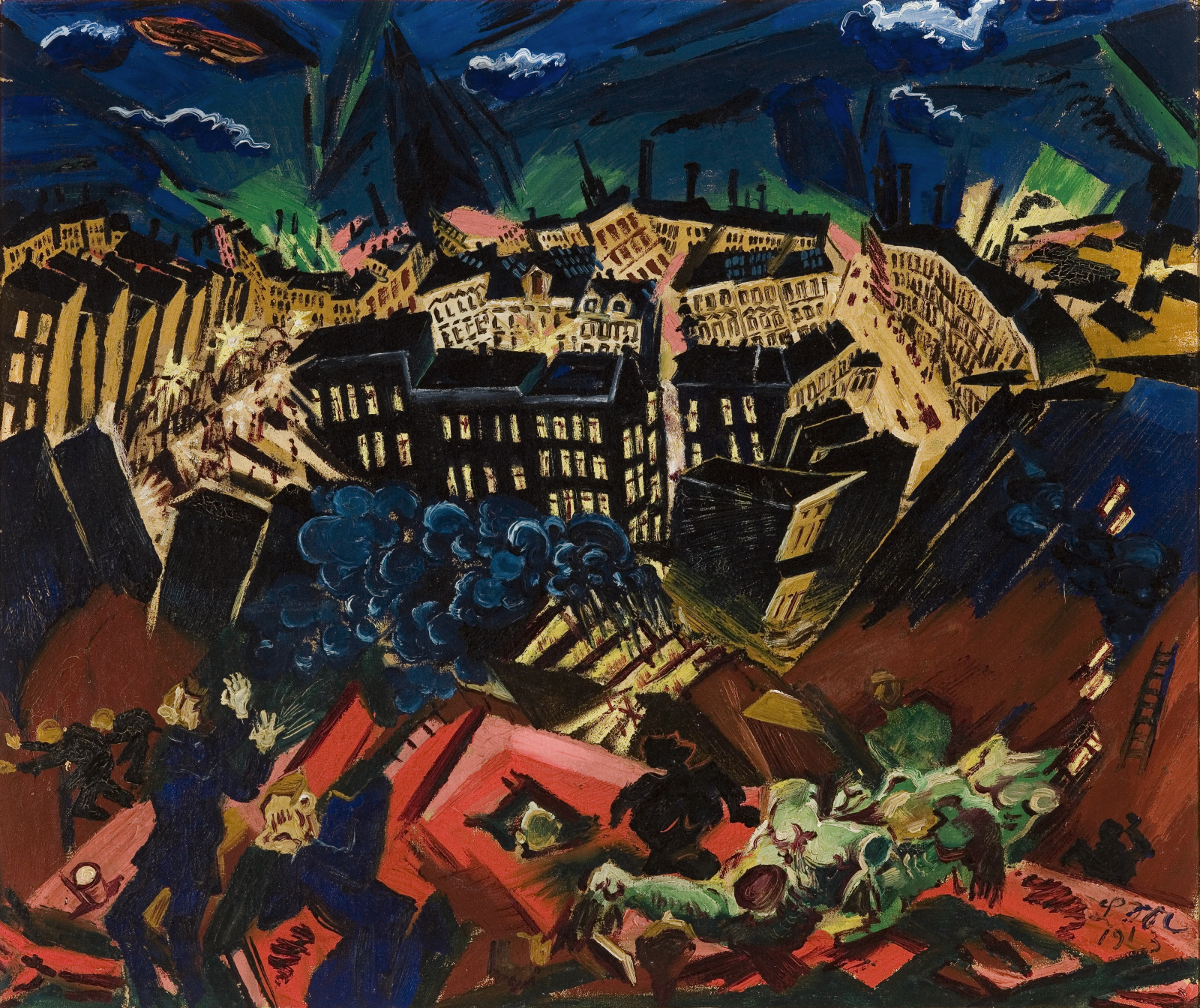
Ludwig Meidner, German, 1884–1966; Burning City, 1913; double-sided oil on canvas; 26 15/16 x 31 11/16 inches; Saint Louis Art Museum, Bequest of Morton D. May 913:1983
On each side of this canvas, Ludwig Meidner depicts Berlin as an apocalyptic urban landscape. Eerily foretelling the destruction of World War I, Meidner envisioned the city burning and collapsing, set among angular mountains. In the recto image, the artist uses a lurid palette of vibrant reds, blues, greens, and yellows. The multiple perspectives of the falling buildings add energy and chaos to the devastation.
Ludwig Meidner painted around 15 apocalyptic landscapes between 1912 and 1913, and these are generally considered to be the highpoint of his career. The two images here were probably painted on both sides of the canvas to save money. The verso image is darker and more somber than the recto and shows a crouching, terrified figure, which is probably Meidner’s self-portrait. The artist wrote of these paintings: “My brain bled dreadful visions . . . many graves and burned cities writhed across the plains.”
September 23, 2025
Charger
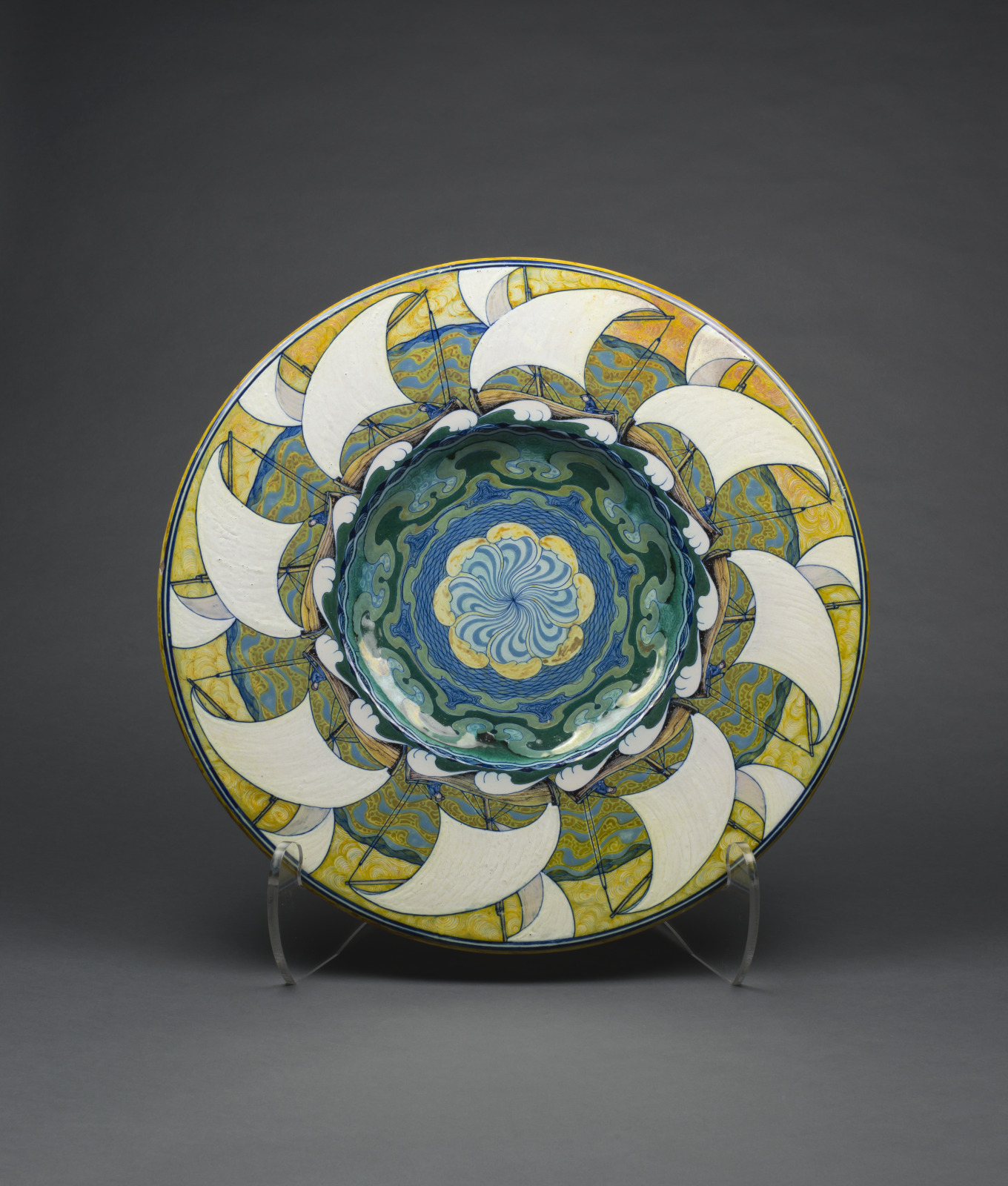
designed by Galileo Chini, Italian, 1873–1956; made by Arte della Ceramica, Florence, Italy, active 1896–1910; Charger, c.1900; tin-glazed earthenware with lustre glazes; 23 1/8 x 1 1/2 inches; Saint Louis Art Museum, The Mary Elizabeth Rosborough Decorative Arts Fund and the Lopata Endowment Fund 71:2016
On this vibrant lustre-glazed dish, eight boats circle the rim with bright white, wind-filled sails, creating a dynamic rhythm. In the center is a whirlpool of undulating forms and linear patterning in shades of saturated blues and greens. Artist and designer Galileo Chini reimagined the historical ceramic traditions of his native Italy and the Mediterranean region with modern flair on this charger, or platter. Chini’s workshop in Florence, Arte della Ceramica, exhibited their ceramics to great acclaim at international expositions, winning a gold medal at the 1900 Paris World’s Fair and a silver medal in St. Louis in 1904.
September 22, 2025
Cloud Trails

John Rogers Cox, American, 1915–1990; Cloud Trails, 1944; oil on canvas; 20 1/4 x 27 1/8 inches; Saint Louis Art Museum, Friends Endowment Fund and funds given by Jeanne and Rex Sinquefield and Eleanor J. Moore 3:2006; © John Rogers Cox
Rows of precisely painted wheat stubble, sheaves of grain, and an abandoned barn covered in brightly colored advertisements share a seemingly endless field. Overhead, a moon and carefully depicted cirrus and cumulus clouds hang low in a brilliant blue sky. Such views were commonplace along the rural roadways of the 1930s and 1940s. However, the intensity of detail and color, with no appearance of humanity, casts this everyday scene as something more than a passing view, inspired perhaps by a dream or memory.
September 21, 2025
Textile Pieced with Two Panels with Design of Columns of Flowers
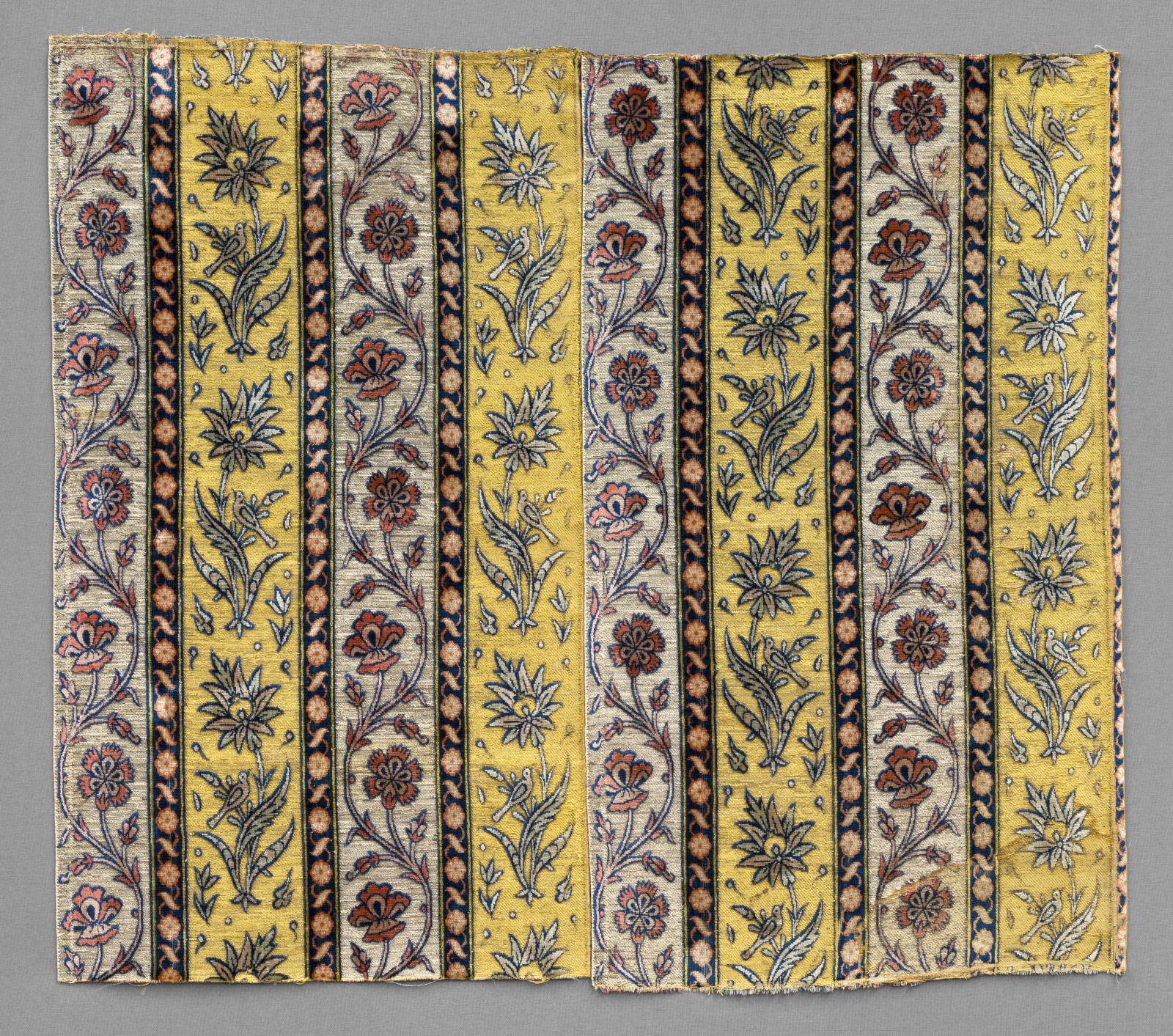
Textile Pieced with Two Panels with Design of Columns of Flowers, 17th century; Persian, Iran, Safavid dynasty; silk, cut and voided velvet weave with satin weave foundation and silver- and gilt-thread brocading wefts; 23 x 26 3/16 inches; Saint Louis Art Museum, Museum Purchase 56:1919
This textile comprises two panels pieced together with a central vertical seam. Three floral patterns repeated four times make up its design. One band has a running pattern of flower and vine in red, blue, and apricot velvet on a silver-thread background. Next follows a narrow band of flower and vine in rosy pink with the black velvet ground uncut. Finally, there is a broad band of flowers, leaves, and birds in soft colors on a gold-thread back.
Featured in the current exhibition, Patterns of Luxury: Islamic Textiles, 11th–17th Centuries.
September 20, 2025
Standing Umā (Pārvatī)

Standing Umā (Pārvatī), 11th century; Indian, Chola dynasty; bronze; 26 5/8 x 8 3/4 inches; Saint Louis Art Museum, Funds given by The Merrill Trust Foundation 146:1966
This sculpture represents Uma (Parvati), consort of the Hindu god Siva, standing in a relaxed, triple-bend (tribhanga) pose. Since she is commonly depicted in this manner alongside Siva, this sculpture was likely part of an ensemble. As befitting her exalted position, Uma wears elaborate anklets, bracelets, armbands, a multi-layered necklace, and a tall crown. The small holes in the base would have been used for carrying the sculpture in religious processions. Sculptures such as this were intended especially for festival use, where the deity would be transported on a carriage or palanquin through town like a royal guest, having first been bathed, perfumed, and dressed. This opportunity for the public to see and be seen by the deity embodied in the image was considered one of the most auspicious aspects of worship.
September 19, 2025
Road Down the Palisades

Ernest Lawson, American (born Canada), 1873–1939; Road Down the Palisades, c.1911; oil on canvas; 40 3/4 x 50 1/4 inches; Saint Louis Art Museum, Museum Purchase 57:1916
The curve of a road directs our attention deep into the landscape, past a screen of wiry trees to the Hudson River beyond. The bright spots of blue and red invigorate the rather dreary cloud-filled sky and dirty patches of snow. The thickly applied paint, strong outlines, and areas of bold but harmonious unmixed color, are all characteristics of Ernest Lawson’s best landscapes.
September 18, 2025
The Artist Drawing from a Model

Rembrandt van Rijn, Dutch, 1606–1669; The Artist Drawing from a Model, c.1639; etching, drypoint, and engraving; plate: 9 3/16 x 7 1/4 inches, sheet (irregular): 9 1/4 x 7 3/8 inches; Saint Louis Art Museum, Museum Purchase 360:1915
This print shows a nude model posing on a platform as the artist draws. She holds a palm branch, a symbol of virtue. In the center of the background there is an easel; other artistic props, such as armor and a bust, are on the right. Printmakers often completed the background area first, leaving the central figures in the foreground for last. This minimized the chance that a tool or acid would accidentally disfigure key elements of the composition after they had been carefully incised. Rembrandt van Rijn began making this print sometime around 1639 but never finished it. Nevertheless he continued to issue prints from it as late as 1652. The watermark of this impression conveys that it was printed in 1652.
September 17, 2025
Vase
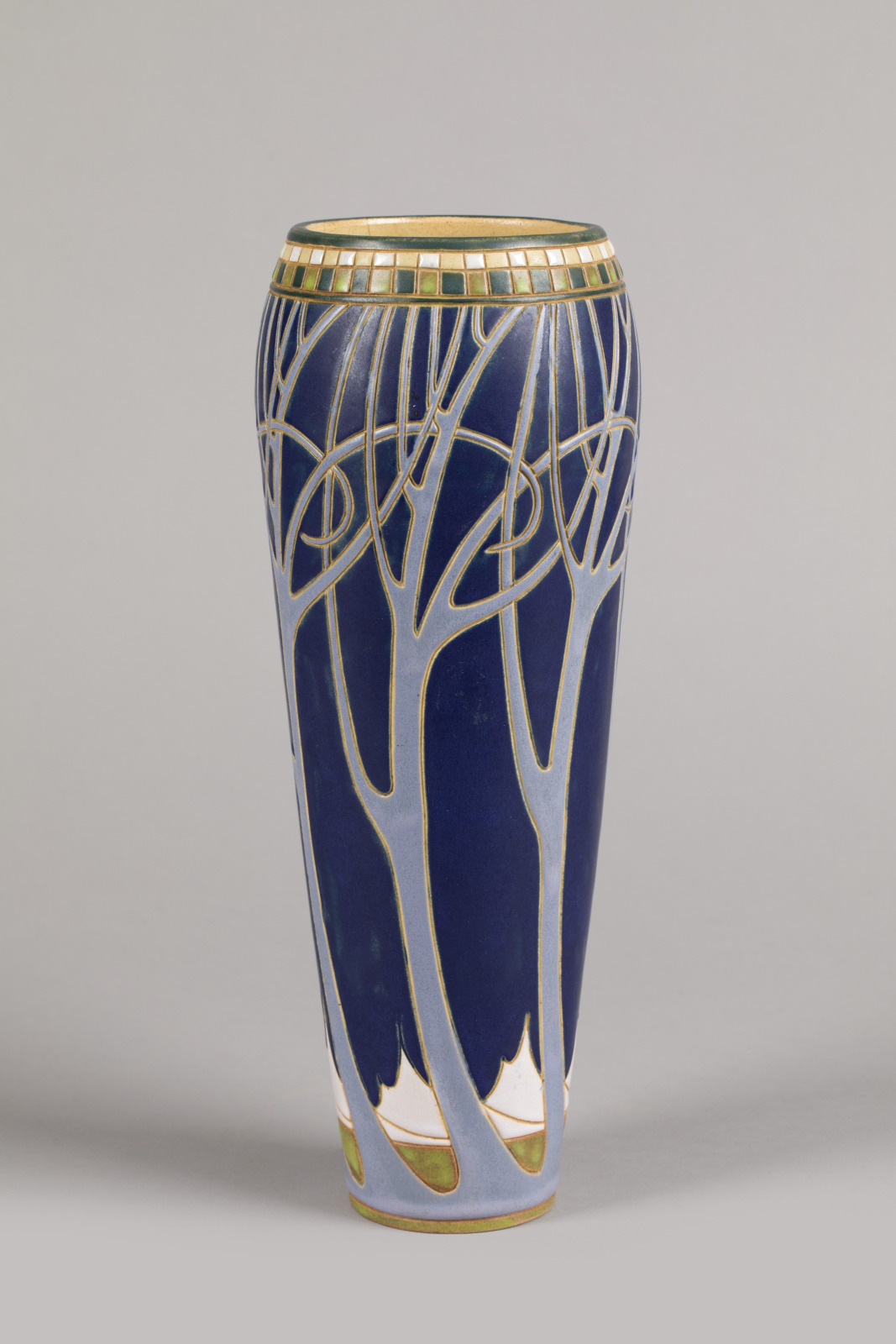
attributed to Frederick Hurten Rhead, American (born England), 1880–1942; associated with Art Academy of the American Woman's League, University City, Missouri, active 1909–1911; Vase, c.1911; glazed earthenware; 12 3/8 x 5 x 5 inches; Saint Louis Art Museum, Gift of the Norman Family in loving memory of Isaac and Elva Norman 64:2001
The conception and execution of this vase demonstrate Frederick Hurten Rhead’s mastery of design. The spiraling lines of tree trunks rise toward the top, where interlocking limbs flow in sinuous rhythms around the swelling shoulder of the vase. Rhead used incised line and matte glazes to render a swirling composition of tree trunks and limbs.
September 16, 2025
Portrait of Cardinal Jean-François Joseph de Rochechouart
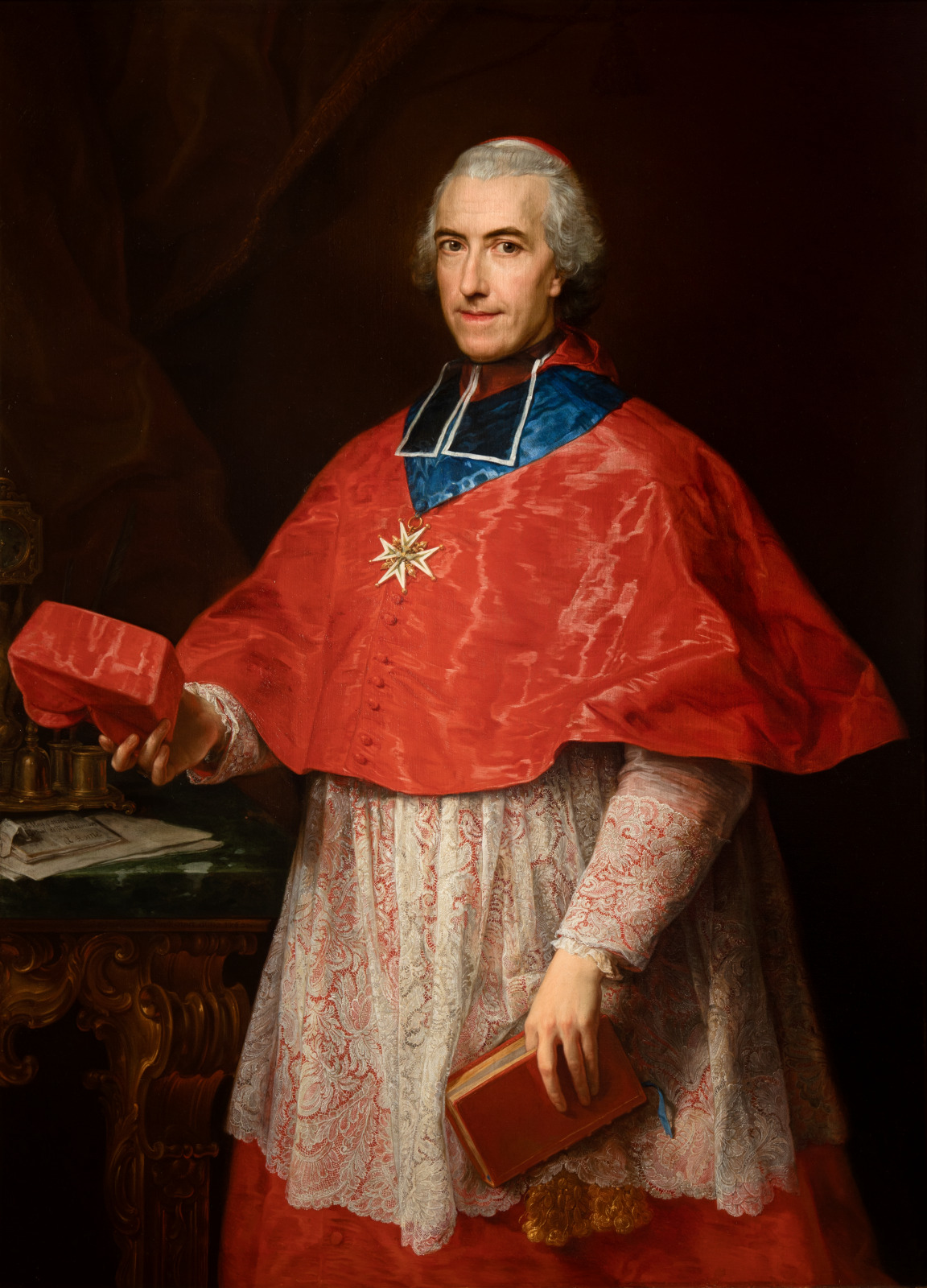
Pompeo Girolamo Batoni, Italian, 1708–1787; Portrait of Cardinal Jean-François Joseph de Rochechouart, 1762; oil on canvas; 53 1/2 x 39 inches; Saint Louis Art Museum, Friends Endowment Fund 135:1972
About to don his biretta, Cardinal Rochechouart appears to welcome a visitor. The sumptuous fabric of his cape and impressive lace of his longer tunic are focal points of this powerful portrait. The rich red is offset by a blue ribbon that holds a medal of the Order of Saint-Esprit. The clock (suggesting the daily schedule) and inkstand (written work) refer to the Cardinal’s official duties; the book is intended to indicate the intellectual basis of his position. Artist Pompeo Batoni’s work was popular among English lords who traveled to Italy, but his paintings were also sought by Roman clerics.
September 15, 2025
Tile

Tile, late 16th to early 17th century; Persian, Iran, Safavid dynasty; glazed fritware with underglaze painted decoration; 8 1/4 x 8 7/8 x 1 inches; Saint Louis Art Museum, Gift of J. Lionberger Davis 271:1955
Each of the bright colors on this tile was isolated during the firing process by using the cuerda seca technique, which means “dry cord” in Spanish. Dry cord refers to an oily substance containing manganese that initially separates the colors and then melts away in the kiln, after the colors are set. The tile was part of a frieze which served as a section of a larger decorative composition adorning a wall with vivid color.
September 14, 2025
Hercules and the Hydra

Mathias Gasteiger, German, 1871–1934; Hercules and the Hydra, 1921–30; bronze; 95 1/2 x 77 x 56 inches; Saint Louis Art Museum, Funds given by an anonymous donor 1:1930
In this over life-sized sculpture, the Greek mythological hero Hercules battles a many-headed snake that has terrorized the countryside. Dramatically balanced on one leg, he wields a large club, his traditional attribute. The German sculptor Mathias Gasteiger renders the physique of the hero—famed for his strength—with exaggerated and stylized musculature. Gasteiger developed the sculpture over several years, ultimately creating a polychrome work with the addition of golden hair to recall the style of classical Greek antiquity.
September 13, 2025
Swan Settee
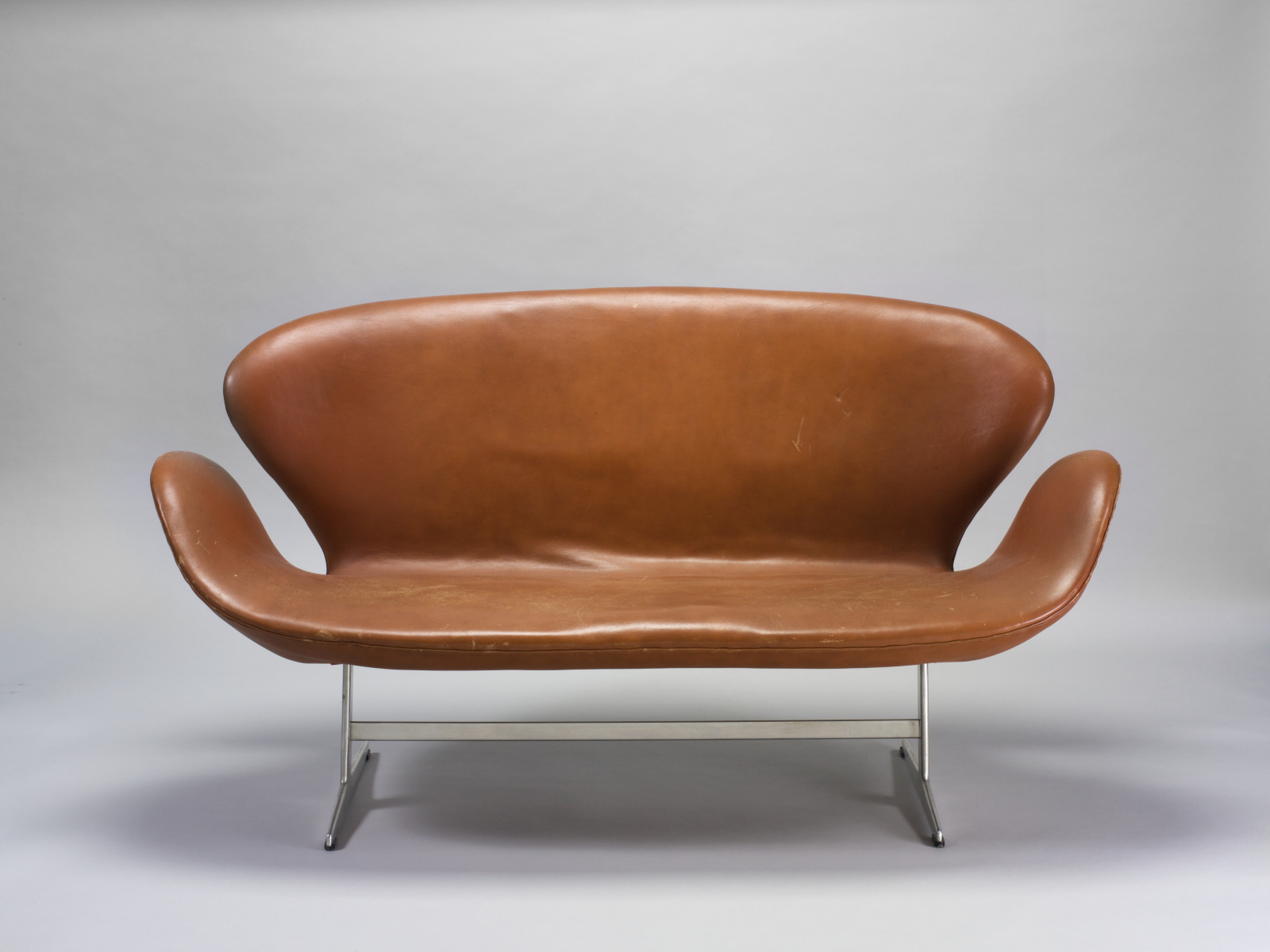
designed by Arne Jacobsen, Danish, 1902–1971; made by Fritz Hansen Efr. A/S, Allerod, Denmark, founded 1872; Swan Settee, 1958; leather, fiberglass shell, foam rubber, aluminum, painted steel, and chrome steel; 40 x 60 x 36 inches; Saint Louis Art Museum, Marjorie Wyman Endowment Fund 6:2001
Arne Jacobsen was one of the leading modern architects in Denmark, and graduated in 1927 from the Kongelige Danske Kunstakademi (Royal Danish Academy of Fine Art). Like many architects working in the International Style, he often designed lighting, furniture, cutlery, clocks, and hardware to compliment a specific architectural setting. All of his designs exhibit a strong commitment to functionalism. Jacobsen achieved particular success with his seating designs for the Danish furniture manufacturer Fritz Hansen, with whom he had a life-long collaboration. His “Swan” Settee, which evolved from his Swan chair, was part of a suite of furniture he designed in 1958 for his Royal Hotel building in Copenhagen. At the time, the settee was a technological innovation: the use of synthetic materials and aluminum in a new manufacturing process made it possible to mold the inside of the chair as one continuous shell. This was a period when furniture designers were experimenting with new synthetic materials such as foams that could be molded with controlled densities, giving designers the ability to create furniture as sculptural forms. The long, uninterrupted surface of the Swan settee accentuates this technological development particularly well. Its impeccably crafted leather upholstery stretched tautly over the padded frame resembles skin. The simple elegance of this piece epitomizes mid-twentieth century Danish design. The organic-shaped molded seat was a popular furniture form from the period and recalls seating designed by Charles and Ray Eames and Eero Saarinen. Much Scandinavian design was revered by Americans who found its soft round edges, organic forms, and impeccable level of craftsmanship especially appealing. (C. McCarty, from the Collections Committee minutes, March 1, 2001)
September 12, 2025
Medway, Massachusetts

George Inness, American, 1825–1894; Medway, Massachusetts, 1869; oil on canvas; 20 1/4 x 30 1/4 inches; Saint Louis Art Museum, Gift of Winifred Roehm Hirsch 62:1997
Floating clouds and warm light on the elm trees set the expressive tone in this sweeping landscape. Its regular horizontal bands of meadows, trees, hills, and sky further evoke a sense of calm serenity. Though George Inness was self-taught, he made several trips to Italy and France in the 1850s, where he encountered European styles of painting. He adopted a poetic approach in order to convey the relationship of his religious and metaphysical beliefs and nature.
September 11, 2025
Ornament in the Form of a Coiled Snake

Ornament in the Form of a Coiled Snake, late 11th–10th century BCE; Chinese, Western Zhou dynasty; bronze; 1 1/8 x 9 3/4 x 9 1/8 inches; Saint Louis Art Museum, Gift of J. Lionberger Davis Art Trust 124:1951
The coils of this rare, cast bronze ornament are rendered as a volute swirling about the head of a snake. The body of the creature is slender, its width gradually narrowing to the point of the tail. The whole of its length is hemispherical in cross-section, its edges molded in a single step. The expression of the snake is alert, its eyes and nose both emphasized by their projection. A pair of spiraled horns provides the snake with a penetrating look, and a diamond-shaped design ornaments its head.
Only two other Western Zhou bronze ornaments of this kind are known—one in the Museum of Fine Arts, Boston, and another in the Musée national des Arts asiatiques—Guimet, Paris.
September 10, 2025
Papyrus Fragment
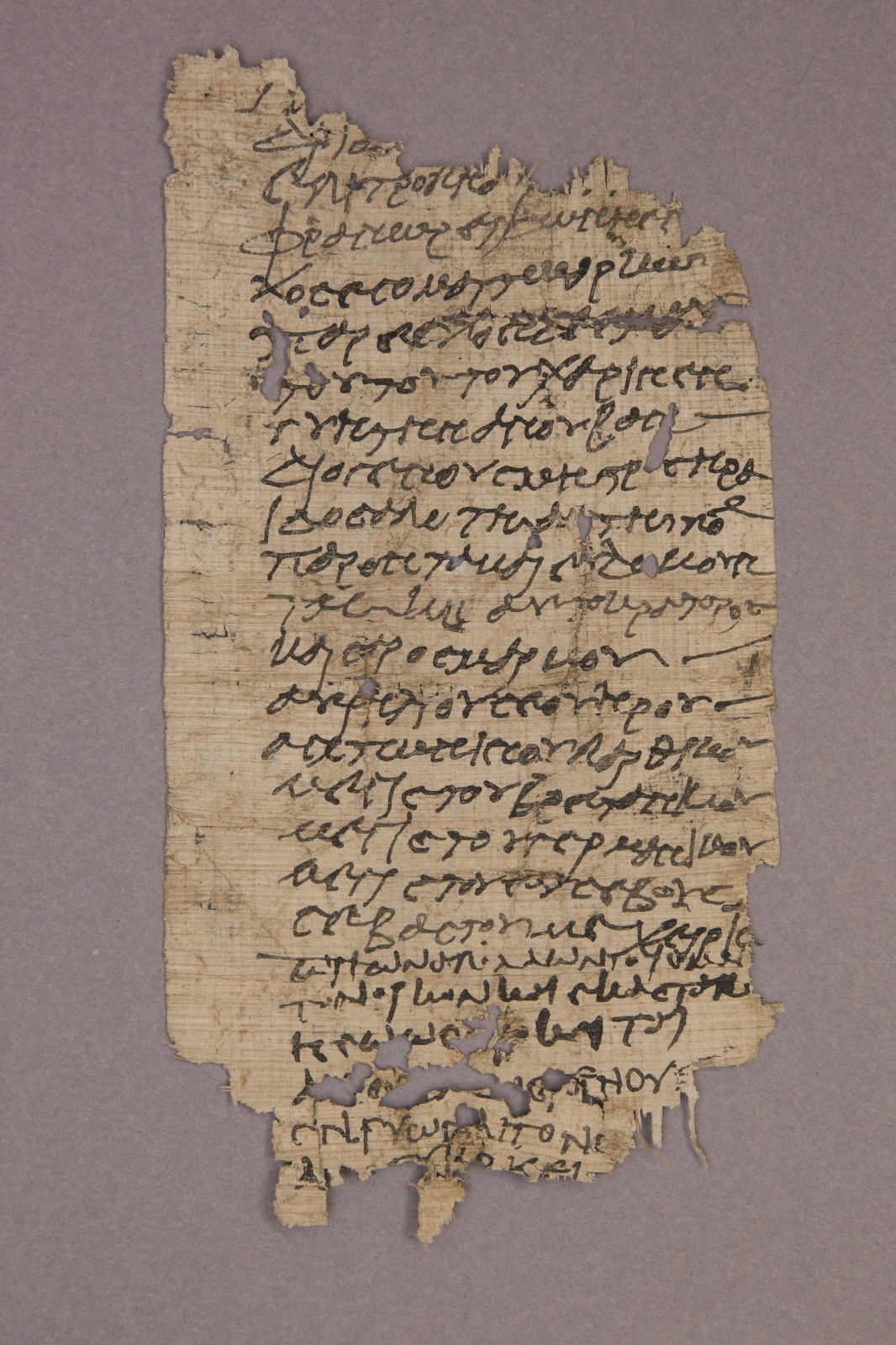
Papyrus Fragment, 213–214 CE; Ancient Egyptian or Roman, Egypt, Imperial or Roman period; ink on papyrus; 5 3/8 x 2 13/16 inches; Saint Louis Art Museum, Museum Purchase 369:1923
This papyrus fragment comes from the site of Oxyrhynchus in central Egypt, where, during the late 19th and early 20th century, thousands of documents dating from the 1st–6th centuries CE were discovered. This fragment records the conclusion of a declaration concerning a voyage to the ancient port city of Alexandria and a pledge in connection to some kind of official position. It is difficult to fully decipher the text since only a portion of the 26 lines of text is preserved.
Papyrus (Cyperus papyrus) is an aquatic reed native to Africa that once grew in abundance along the banks of the Nile River. As early as the 4th millennium BCE, the Egyptians learned how to process the reedy stems of the papyrus plant into a type of proto-paper. Papyrus was also used to make other things like mats, rope, baskets, and even sandals.
September 9, 2025
Hercules and Antæus
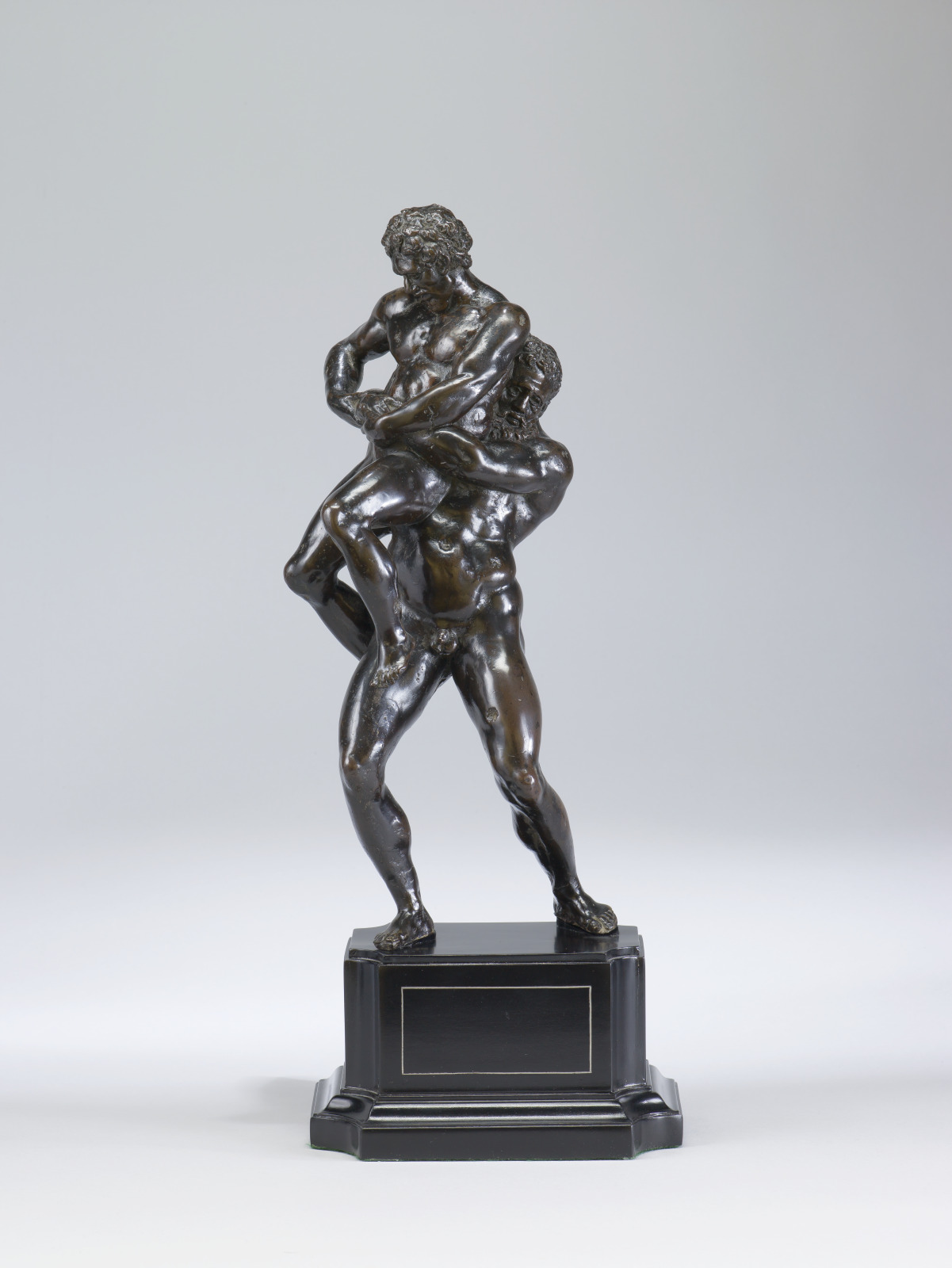
workshop of Guglielmo della Porta, Italian, 1500/10–1577; Hercules and Antæus, c.1550–59; bronze; 15 1/4 x 6 3/4 x 7 inches; Saint Louis Art Museum, Gift of Mark Steinberg Weil and Phoebe Dent Weil 265:2021
The ancient Roman hero Hercules, known for his legendary strength, wrestles the giant Antæus, son of the earth goddess Gaia. Hercules struggles to lift his adversary off the ground, since that is the source of his opponent’s strength.
This sculpture invites the viewer to walk around and see it from different perspectives, typical of the way in which 16th-century artists conceived their sculptural work. This bronze version represents an artist’s attempt to recreate a famous older example that was in fragments until 1564. This bronze may have been made as a guide to help reassemble the pieces of the earlier ancient marble version during restoration. For the private collector who first owned the bronze, this sculpture served as a copy of a famous antique.
September 8, 2025
Fruit in the Rain
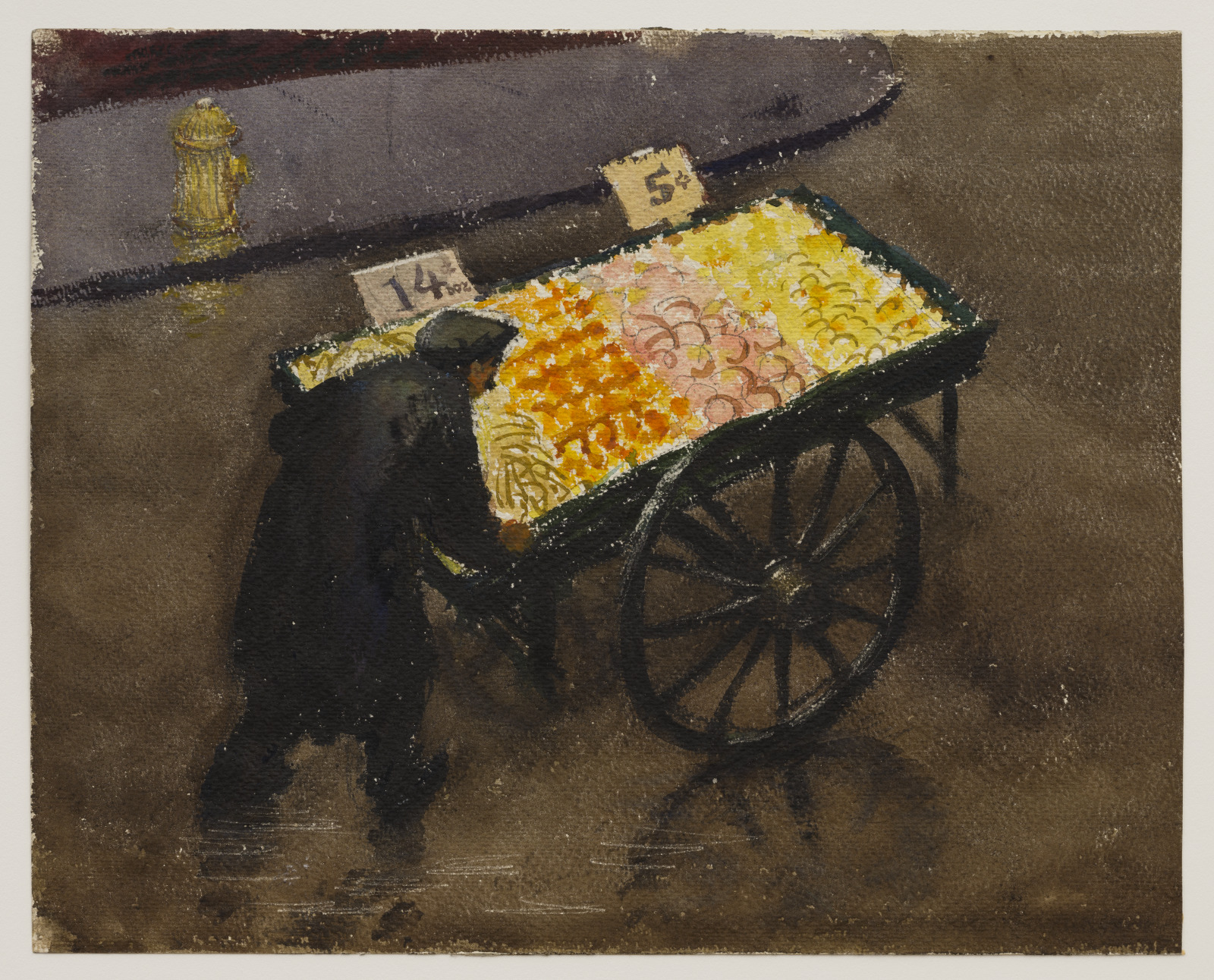
Joseph Hirsch, American, 1910–1981; Fruit in the Rain, about 1938; watercolor over graphite, with scraped highlights; 14 1/4 x 17 7/8 inches; Saint Louis Art Museum, Gift of the Federal Works Agency, Work Projects Administration 290:1943
A fire hydrant’s pop of yellow echoes the bright fruit arrayed for sale in the cart. Joseph Hirsch worked in the easel and mural divisions of the Federal Art Project in Philadelphia, producing imagery that spoke to the immediate social concerns of the day. With a perspective slightly above and behind the figure, he emphasizes the effort and labor involved. Hirsch’s handling of watercolor, a portable medium that demanded a surprising level of control from the artist, is visible in the subtle reflections in the water.
September 7, 2025
Pair of Dolls
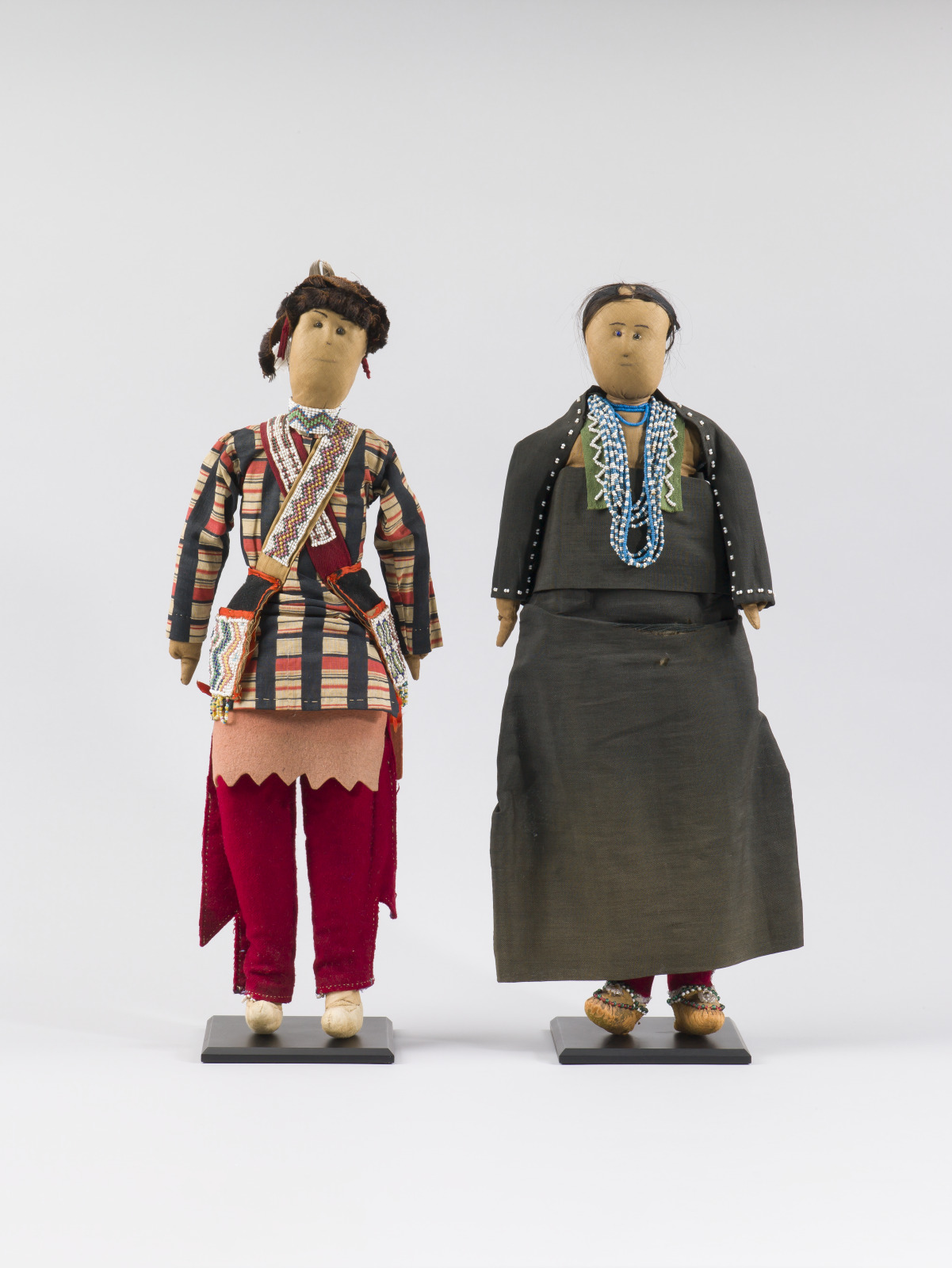
Anishinaabe (Ojibwe) artist; Pair of Dolls, c.1900; cotton and wool cloth, glass beads, silk ribbon, human hair, feather, and pigment; each (measured with arms outstretched): 19 x 8 x 2 inches; Saint Louis Art Museum, Gift of Donald Ayers Herbst and Danielle Foster-Herbst in loving memory of Donald Frederick Herbst and Barbara Ayers Herbst 202:2017a,b
When outfitting these dolls, the artist miniaturized earlier garment styles. The cut of leggings, calico shirt, and breechclout, or loincloth, on the male doll were popular in the early- and mid-19th century. The female doll features a strap dress, which Anishinaabe women wore with increasing rarity by 1900. The abundance of fabric used here and on similar full-size dresses signaled the wearer’s great wealth, a message heightened by the multiple necklace strands.
Anishinaabe finery changed through the 19th century along with the character of diplomatic meetings and religious ceremonies, two principal occasions for wearing exquisite apparel. By recreating regalia from a more ideal past this artist subtly resisted external pressures for cultural reform.
September 6, 2025
Harlequin and Columbine
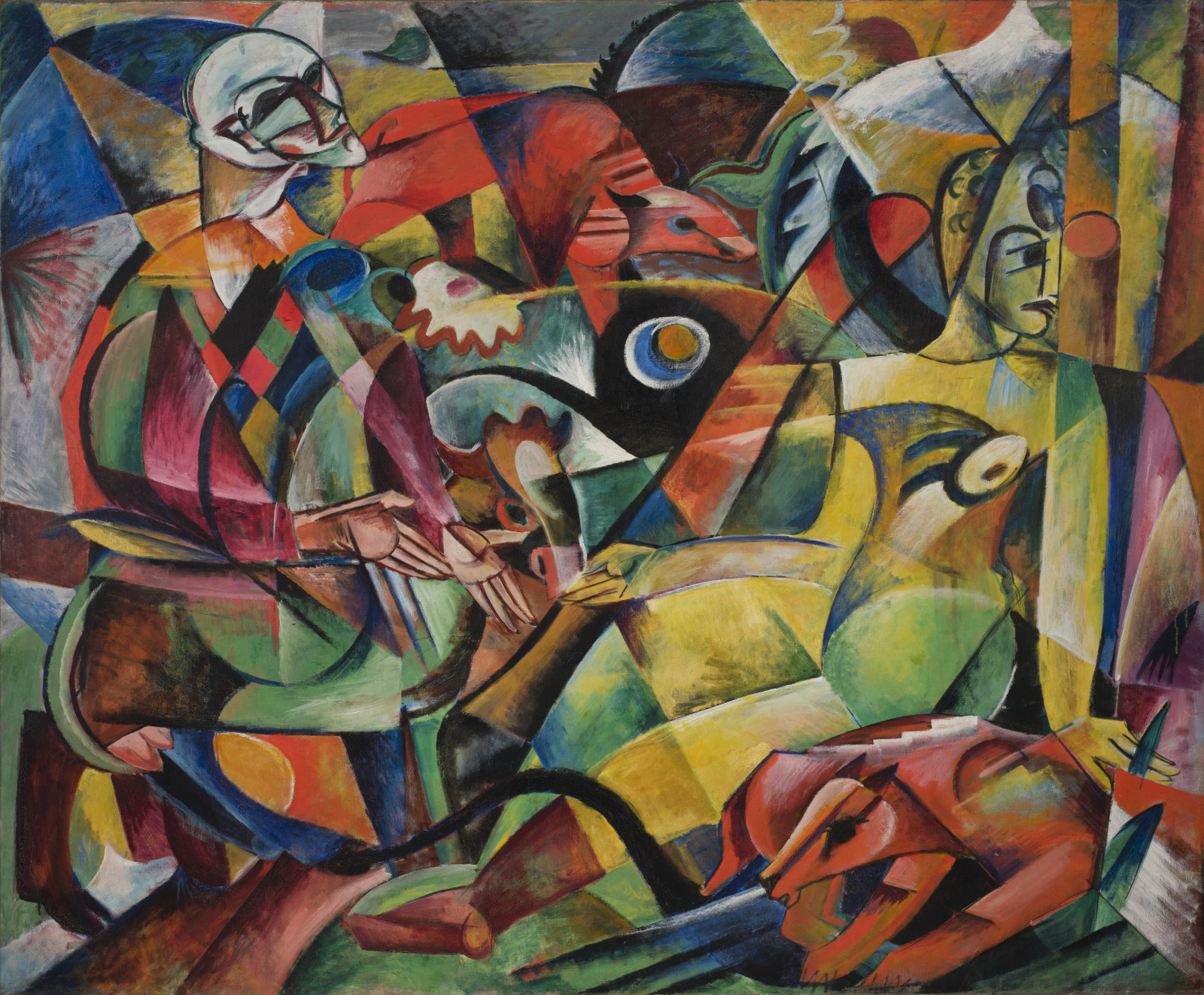
Heinrich Campendonk, German (active Netherlands), 1889–1957; Harlequin and Columbine, c.1913; oil on canvas; 65 x 78 3/8 inches; Saint Louis Art Museum, Bequest of Morton D. May 874:1983
Two figures, shown in facets of gemlike tones and contrasting patterns, appear within this colorful fragmented landscape. The title identifies them as Harlequin and Columbine, characters from the commedia dell’arte. This type of theatrical performance started in Europe in the 1400s and became popular again in the late 19th and early 20th centuries. Harlequin and Columbine were traditionally dancers in a ballet, but here Heinrich Campendonk depicted them as a seated couple rather than performers. It is possible they are portraits of Campendonk himself and his wife, Adda Deichmann. They married around the time this work was painted.
September 5, 2025
Reliquary Guardian Figure
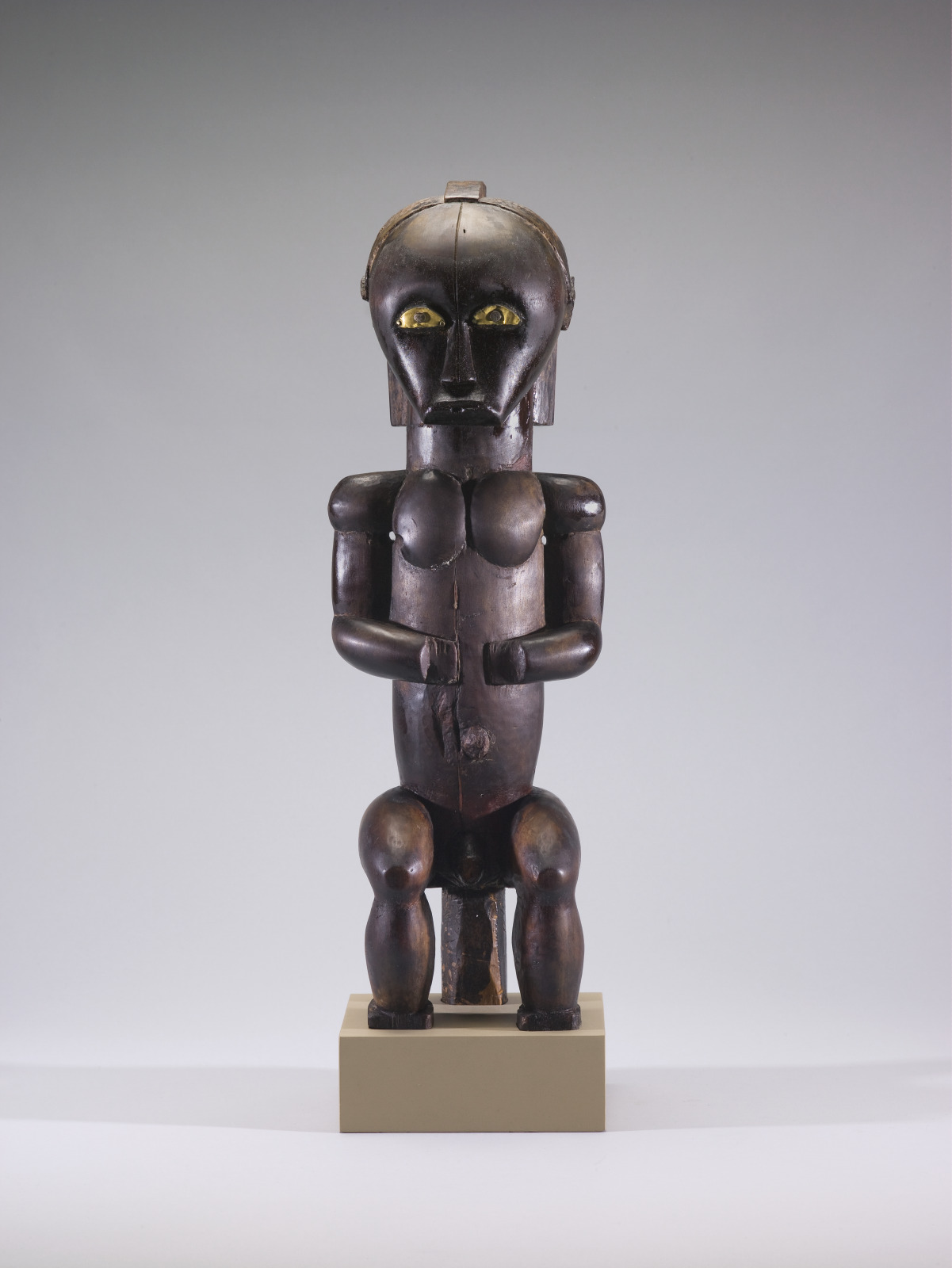
Unidentified Fang artist (Betsi subgroup), Gabon or Equatorial Guinea, Central Africa; Reliquary Guardian Figure, before 1910; wood, brass, iron, and palm oil; figure: 19 1/2 x 6 1/4 x 6 inches; Saint Louis Art Museum, Museum Purchase 23:1942
The bright, inset eyes of this figure suggest the ability to see past the earthly realm. The Fang attached figures such as this, with the feet dangling down, to the lids of cylindrical containers that preserved the skulls and bones of important ancestors. These figures symbolically evoke the ancestor and guard the relics within. These sculptures may reflect Fang ideas about death and rebirth in the use of infantile forms—such as a high, bulging forehead and shortened limbs—combined with more mature characteristics.
Spiritually empowered by the bones and relics, these reliquary figures could also be placed in and around the houses of the extended family for protection. Such mobile reliquaries were an innovation developed to meet the needs of a migrant community, as villages periodically relocated due to the vagaries of the difficult forest environment.
September 4, 2025
Household Altar
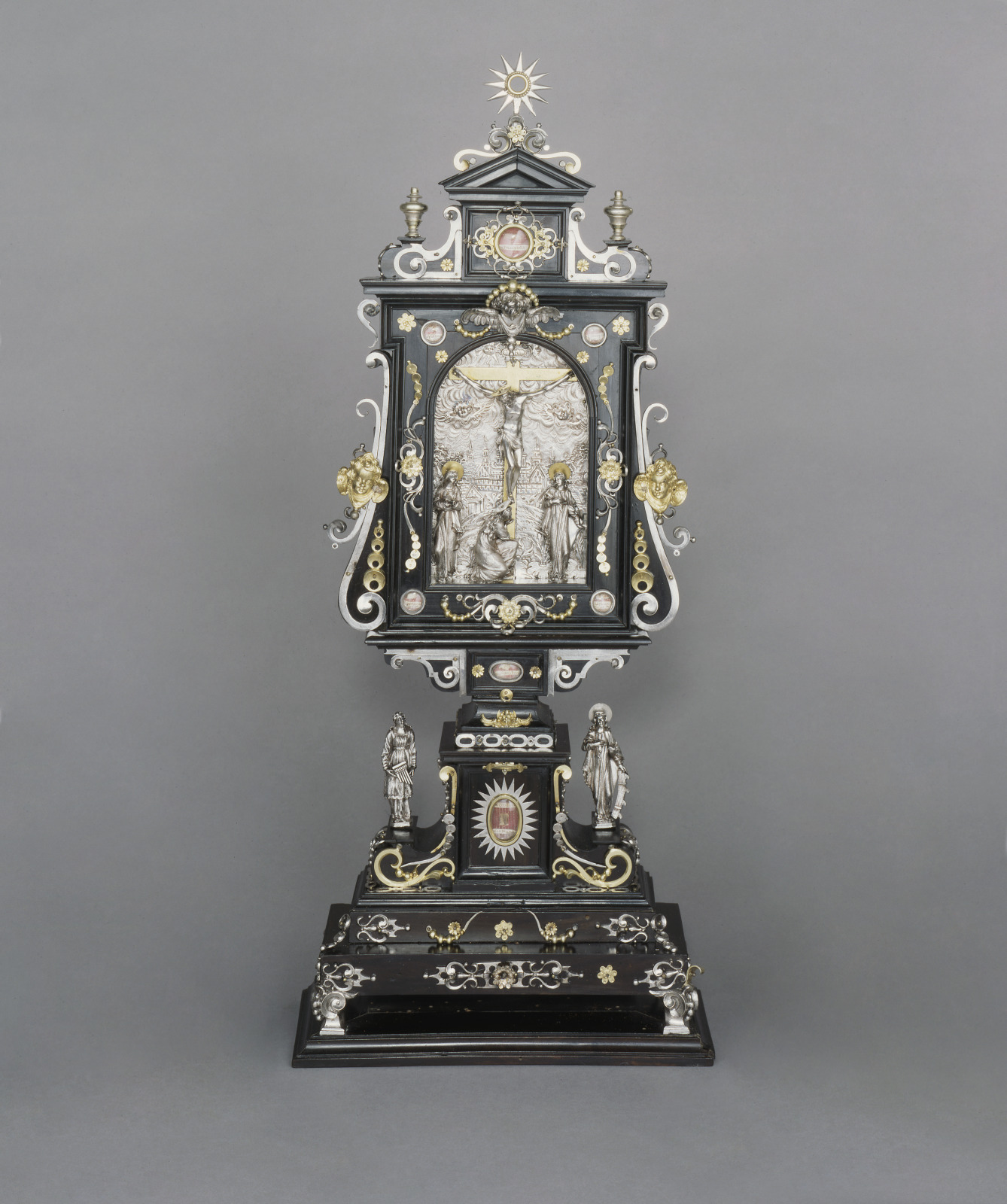
Hans IV Pfleger, German, c.1563–c.1615; Household Altar, c.1600; ebony, silver with gilding, rock crystal, tempera, and parchment; 21 5/8 x 9 x 4 inches; Saint Louis Art Museum, Funds given by Sidney S. and Sadie Cohen 115:1969.3
This altar and two candlesticks consist of an ebony facade over a pear-wood core. They are all adorned with decorations in silver and silver gilt (silver with a thin coating of gold). A Crucifixion scene dominates the altar with cast silver figures of Christ, Mary, Mary Magdalene, and a fourth figure. Standing on the base are Saint Cecilia with her portable organ (on the left) and Saint Catherine with a broken wheel, her usual attribute. Seven chambers hold relics; some contain an identifying notation on parchment. The candlesticks are positioned so that Faith faces forward on the left and Charity on the right. Each candlestick is adorned with images of the three theological virtues—Faith, Hope, and Charity, all painted on parchment.
September 3, 2025
Seashore

Maurice Brazil Prendergast, American (born Canada), 1858–1924; Seashore, c.1913; oil on canvas; 24 1/8 x 32 1/8 inches; Saint Louis Art Museum, The Eliza McMillan Trust 33:1948
Brightly dressed figures (and one donkey) parade across a beach near Boston, Massachusetts. Maurice Prendergast arranged their flattened forms in a rhythmic pattern against horizontal bands of sky, sea, and sand. Coarse brushstrokes and strong outlines weave the composition together, as deliberately placed as the threads of a tapestry or pieces of mosaic. Prendergast developed this style while studying in Paris, where he drew inspiration from French artists Paul Cézanne and Henri Matisse. He became a trailblazer of American modernism and a founding member of The Eight, a group that sought to change the conservative American art scene of the early 20th century.
September 2, 2025
Flask with Flattened Sides and Design of Fish and Flowers

Flask with Flattened Sides and Design of Fish and Flowers, 15th–early 16th century; Korean, Joseon dynasty; buncheong ware; stoneware with incised and sgraffito decoration under transparent glaze; 8 7/8 x 7 3/8 x 6 inches; Saint Louis Art Museum, Museum Purchase 253:1919
The flattened sides of this flask are boldly decorated with fish in the sgraffito (scratched) technique. The outlines were incised through the white surface to reveal the darker body below. The narrower sides have stylized floral motifs produced in reverse through removal of the white surface over the body, along with some incised details. The term buncheong is a contraction of bunjang hoecheong sagi. First used in the 1930s by Korea’s earliest art historian Go Yuseop, it means “gray-blue (or gray-green) stoneware with powder.” The “powder” refers to the layer of thin white clay brushed onto the formed vessels before they are decorated with painted, incised, or stamped designs. The pale shade of blue or green comes from iron in the glaze applied prior to firing.
September 1, 2025
A Seamstress

Édouard Vuillard, French, 1868–1940; A Seamstress, 1892; oil on canvas; 25 3/8 x 21 1/8 inches; Saint Louis Art Museum, Gift of Sydney M. Shoenberg Sr. 78:1975
The subject of a woman sewing comes directly from Edouard Vuillard’s own experience in his mother’s dressmaking shop where, as a youth, he watched his sister work. In this painting, a seamstress is hunched over her handiwork in quiet concentration, and is surrounded by a profusion of colorful and decorative materials. Placing great emphasis on the composition of the portrayed items, Vuillard flattened out the forms so that they interlock and produce strong patterns.
August 31, 2025
Storybook Hour – Saint Louis
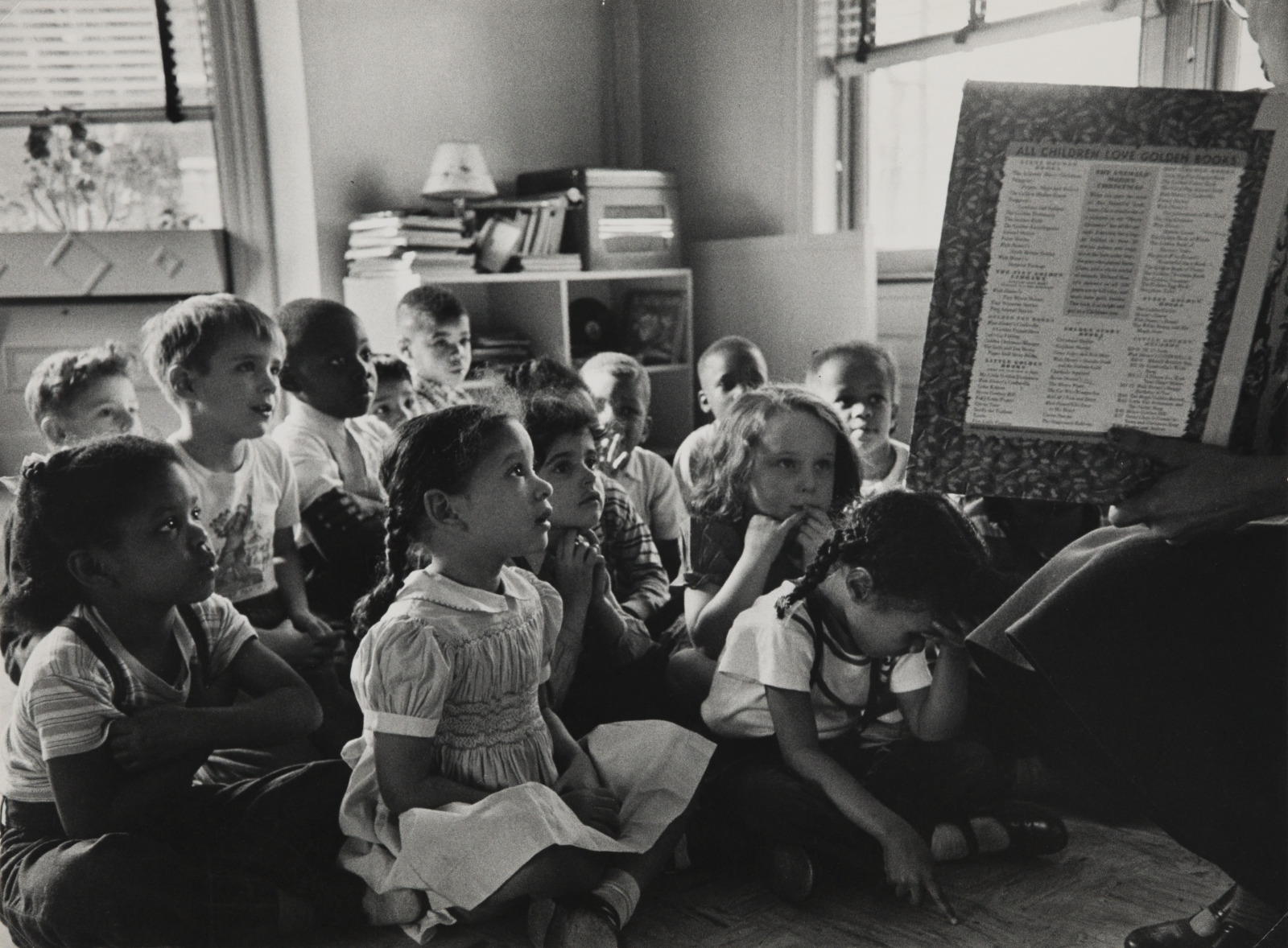
Moneta Sleet Jr., American, 1926–1996; Storybook Hour - Saint Louis, 1954, printed c.1970; gelatin silver print; 14 5/8 x 19 3/4 inches; Saint Louis Art Museum, Gift of Moneta Sleet Jr. 452:1991; © Estate of Moneta Sleet Jr.
In 1954, St. Louis schoolchildren, both black and white, sit side by side while eagerly listening to story time. That year the United States Supreme Court ruled school segregation unconstitutional, making photojournalist Moneta Sleet Jr.’s choice of subject matter particularly relevant. This everyday classroom scene was part of Sleet’s assignment for the African American magazine Our World. His work was featured in an article titled “St. Louis’ Small Fry,” which highlighted the city’s children.
August 30, 2025
Lotus, Pagoda Lamp
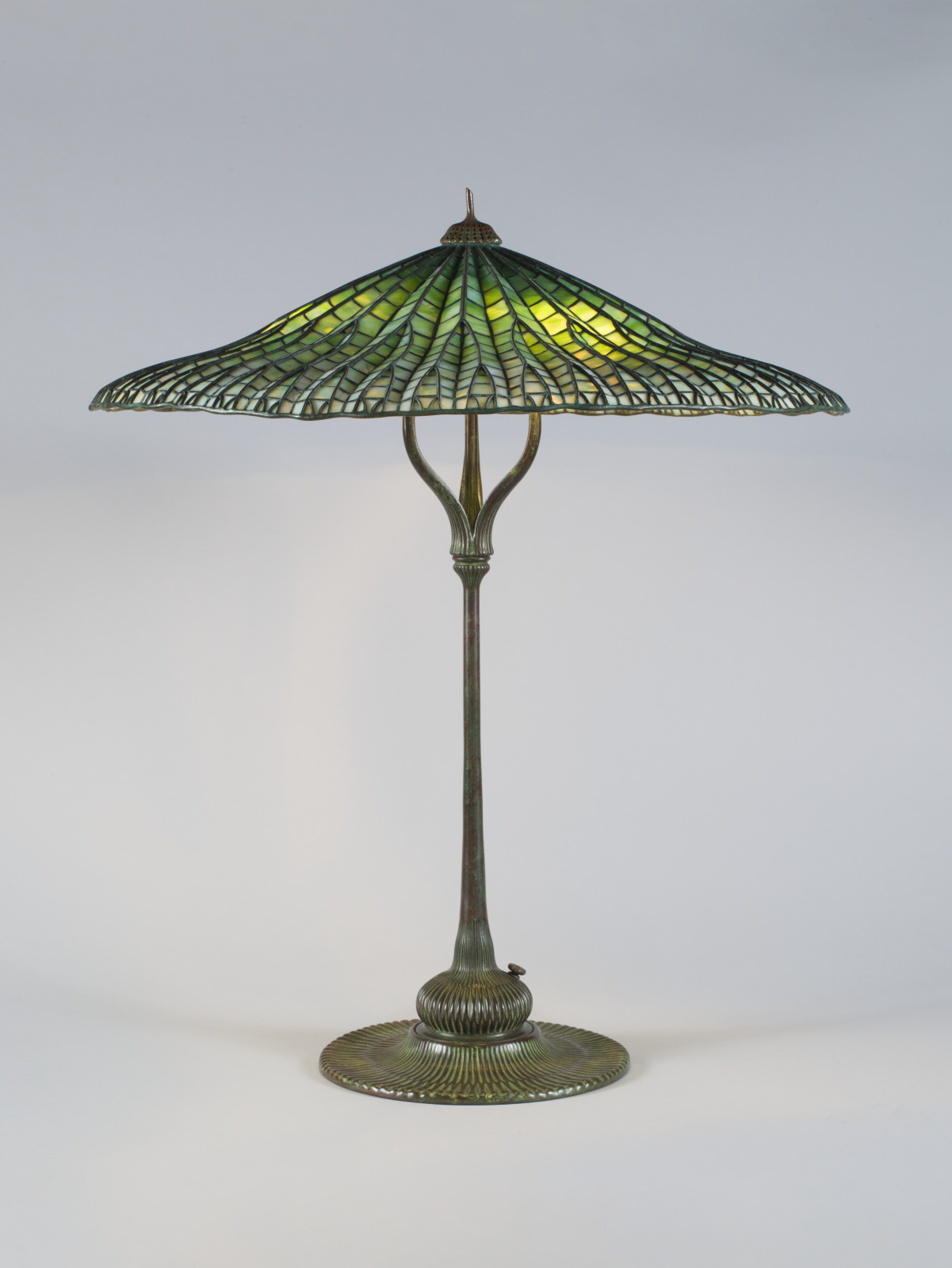
Louis Comfort Tiffany, American, 1848–1933; made by Tiffany Studios, Corona, New York, 1900–1938; Lotus, Pagoda Lamp, c.1900–1905; bronze and leaded Favrile glass; 31 1/2 x 26 1/8 inches; Saint Louis Art Museum, Marjorie Wyman Endowment Fund, the Richard Brumbaugh Trust in memory of Richard Irving Brumbaugh and in honor of Grace Lischer Brumbaugh, the E. Reuben and Gladys Flora Grant Charitable Trust, and funds given by Mrs. Charles W. Lorenz, Mr. and Mrs. Kenneth F. Teasdale, Mrs. Ruth Goldstein and Sidney Goldstein in memory of Chip Goldstein, Dr. and Mrs. F. Thomas Ott, Dr. and Mrs. George R. Schoedinger III, Jane and Warren Shapleigh, the Fox Family Foundation, the Paul and Elissa Cahn Foundation, Mr. and Mrs. Martin E. Galt III, Mr. and Mrs. Richard Graham, Betty Greenfield Grossman, Mr. and Mrs. Robert R. Hermann Jr., Katharine W. Hoblitzelle, Mrs. James Lee Johnson Jr., Mr. and Mrs. Alan C. Kohn, Mrs. Clinton W. Lane Jr., Mary and Oliver Langenberg, Mr. and Mrs. L. Max Lippman Jr., Mr. and Mrs. Edward J. Nusrala, Mrs. William R. Orthwein, Dr. Alan Pestronk, Mrs. Mason Scudder, Barbara Shortridge, Mr. and Mrs. E. R. Thomas Jr., and the Decorative Arts Society 68:1997
Working in bronze and stained glass, Louis Comfort Tiffany designed lamps that often imitated nature at its most elaborate. This elegant lotus-inspired lamp is a remarkable achievement of complex form and workmanship. Measuring twenty-six inches in diameter, the lamp’s expansive shade demonstrates the spectral qualities of Tiffany glass. Unlike many Tiffany lamps in which bases and shades were interchangeable, this piece was conceived as a single, unified floral form. The faceted structure of the parasol-like shade depicts the lotus’s foliage, and the base suggests the plant’s stem and roots. As in many of Tiffany’s works, the selection of the lotus and its integration into his design evoke a Japanese aesthetic.
August 29, 2025
Room 112
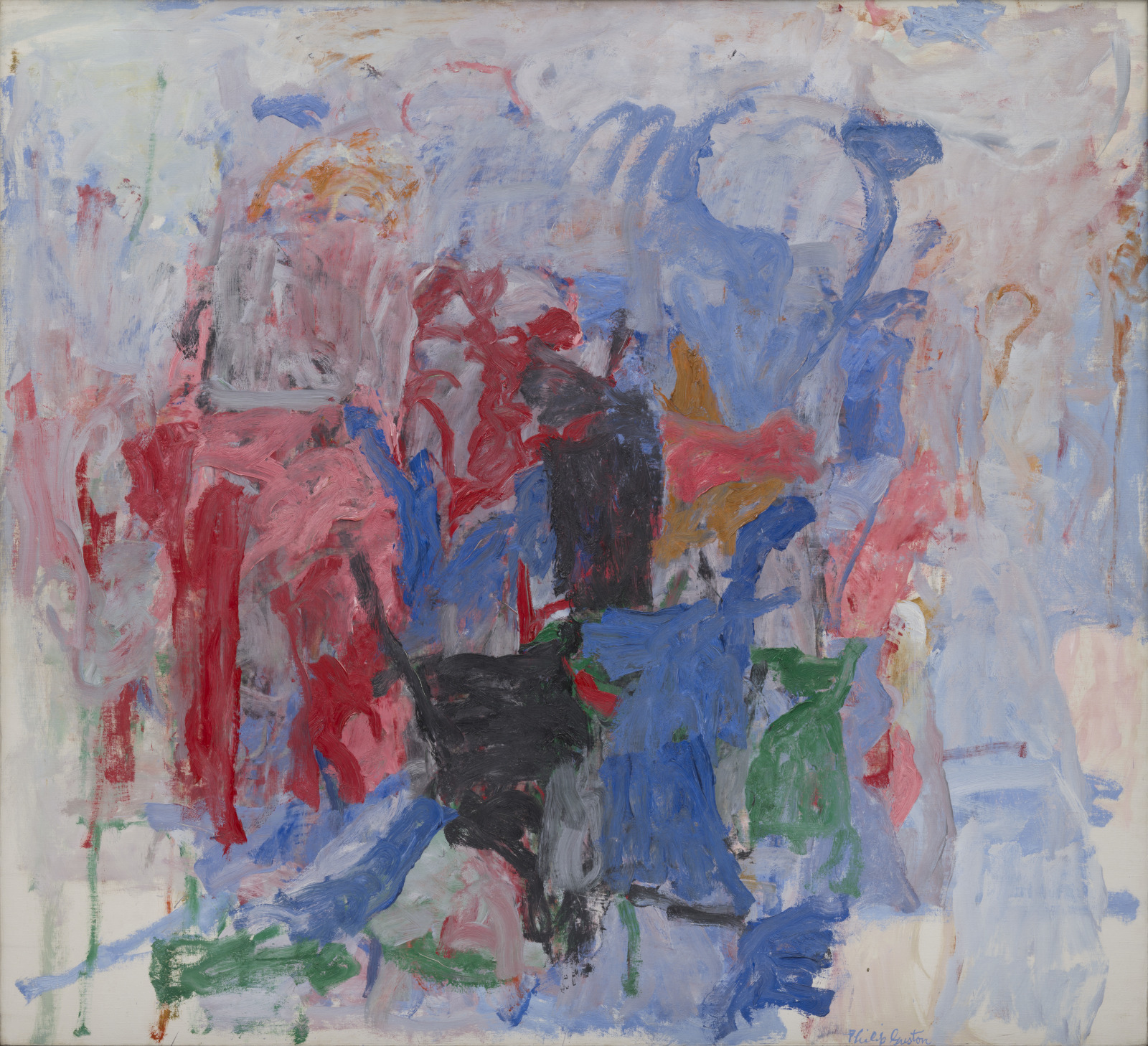
Philip Guston, American (born Canada), 1913–1980; Room 112, 1957; oil on canvas; 62 x 68 1/2 inches Saint Louis Art Museum, Gift of Mr. and Mrs. Joseph Pulitzer Jr. 249:1966; © 2020 Estate of Philip Guston
Clustered networks of blue, green, red, black, and ochre converge in this canvas as if drawn together by a gravitational force. Room 112 represents Philip Guston’s distinctive approach to Abstract Expressionism. After leaving his teaching post at Washington University in St. Louis in 1947, Guston set aside figural painting to pursue gestural abstraction, as seen here. Guston would later grow disenchanted with abstraction, eventually returning to representational imagery.
August 28, 2025
Reliquary Arm
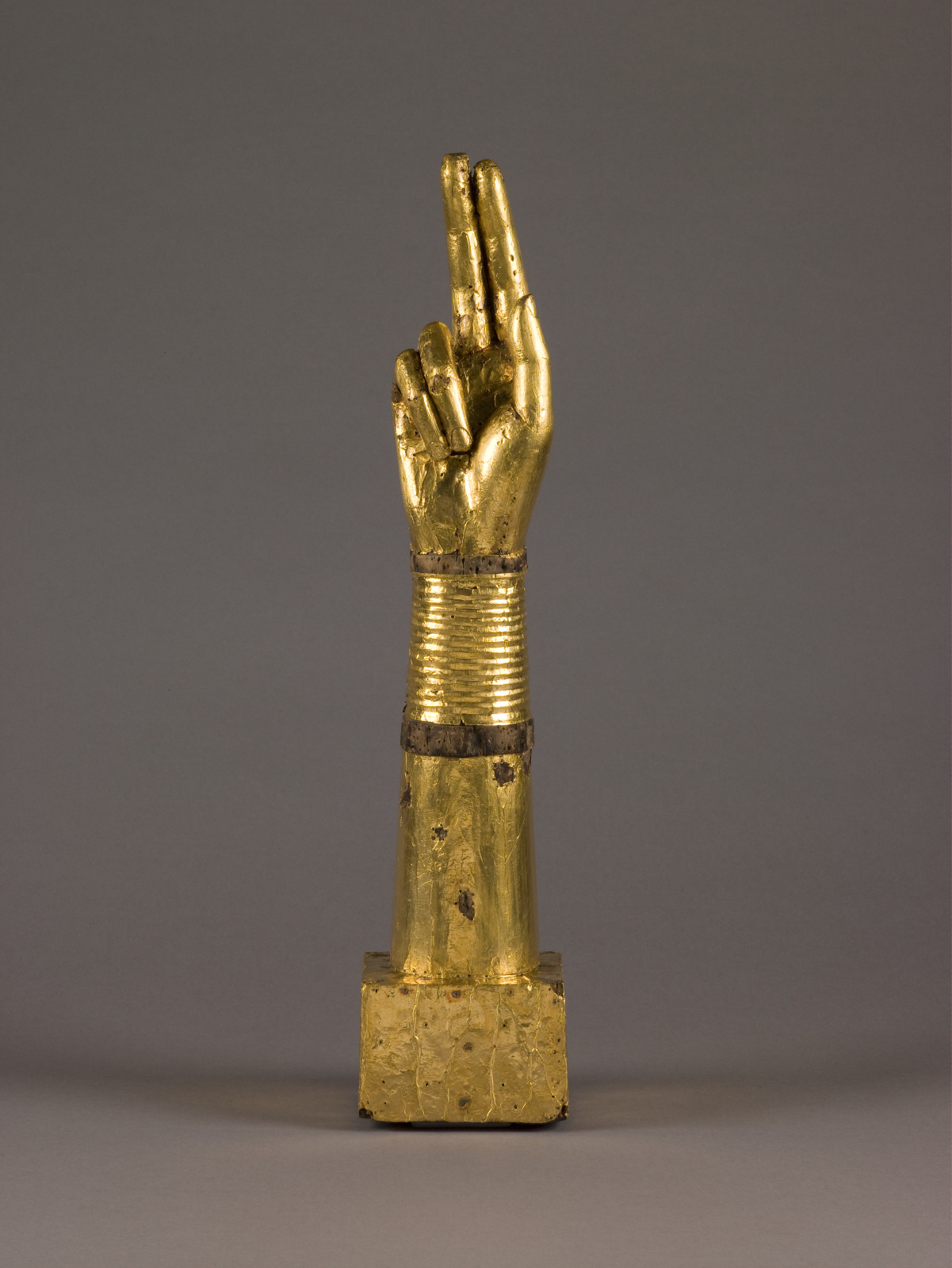
Reliquary Arm, 1100–1150; French; wood and sheet gold; 21 1/2 x 4 1/2 x 4 1/2 inches; Saint Louis Art Museum, Museum Purchase 75:1949
The thick gold sheeting covering this reliquary demonstrates the significant role imported luxury goods played in European Christian devotion. Made in the shape of a hand in the gesture of blessing, this object once held a relic—the material remains of a saint—inside a chamber at the center of its wooden core. The relic itself was considered more important than its container, but precious resources signaled the invisible value within. Until the 16th century, gold was predominantly traded into Western Europe from West Africa.
August 27, 2025
Irises and Eight-fold Bridge

Sakai Hōitsu, Japanese, 1761–1828; Irises and Eight-Fold Bridge, c.1820; two-panel folding screen: ink, color, and gold-leaf on silk; 68 3/4 x 72 13/16 inches; Saint Louis Art Museum, The Langenberg Endowment Fund and funds given by Mary and Oliver Langenberg 20:2007
This painting on silk depicts luxuriant irises, in various stages of bloom, along a zigzag bridge. The flat surfaces of the bridge are depicted in a technique known as tarashikomi, where ink and colors are applied one over another to create pooled hues and blurred edges. Sakai Hôitsu’s focused view highlights the brilliant blues and white accents of the blossoms, the bright greens of the leaves, and the mottled browns of the bridge. Gold leaf represents the water under the bridge. The painted silk panels were mounted separately with boldly designed paper that has gold and silver sprinkled in patterns to suggest flowing water.
August 26, 2025
Black-Tailed Hare

John James Audubon, American (born Haiti), 1785–1851; Black-Tailed Hare, 1841; ink, ink wash, and chalk; 15 3/4 x 22 13/16 inches; Saint Louis Art Museum, Museum Purchase 72:1948
Its hind legs tensed like a coiled spring and its long ears pulled back ready for flight, this black tailed hare encapsulates the dynamism so prized in the work of John James Audubon. The drawing reveals critical aspects of Audubon’s working methods at the time. Known for his exhaustive travels, he was famed for his exacting attention to detail and his practice of depicting animals in their native habitats.
In this case, however, the aging Audubon did not see the animal in the field but relied instead on memory, second-hand accounts, and preliminary sketches made by his son. The colors and textures were drawn from pelts. This may account for the slightly unnatural appearance of the animal, particularly in the awkward separation of its toes.
August 25, 2025
Woman Standing near a Pond
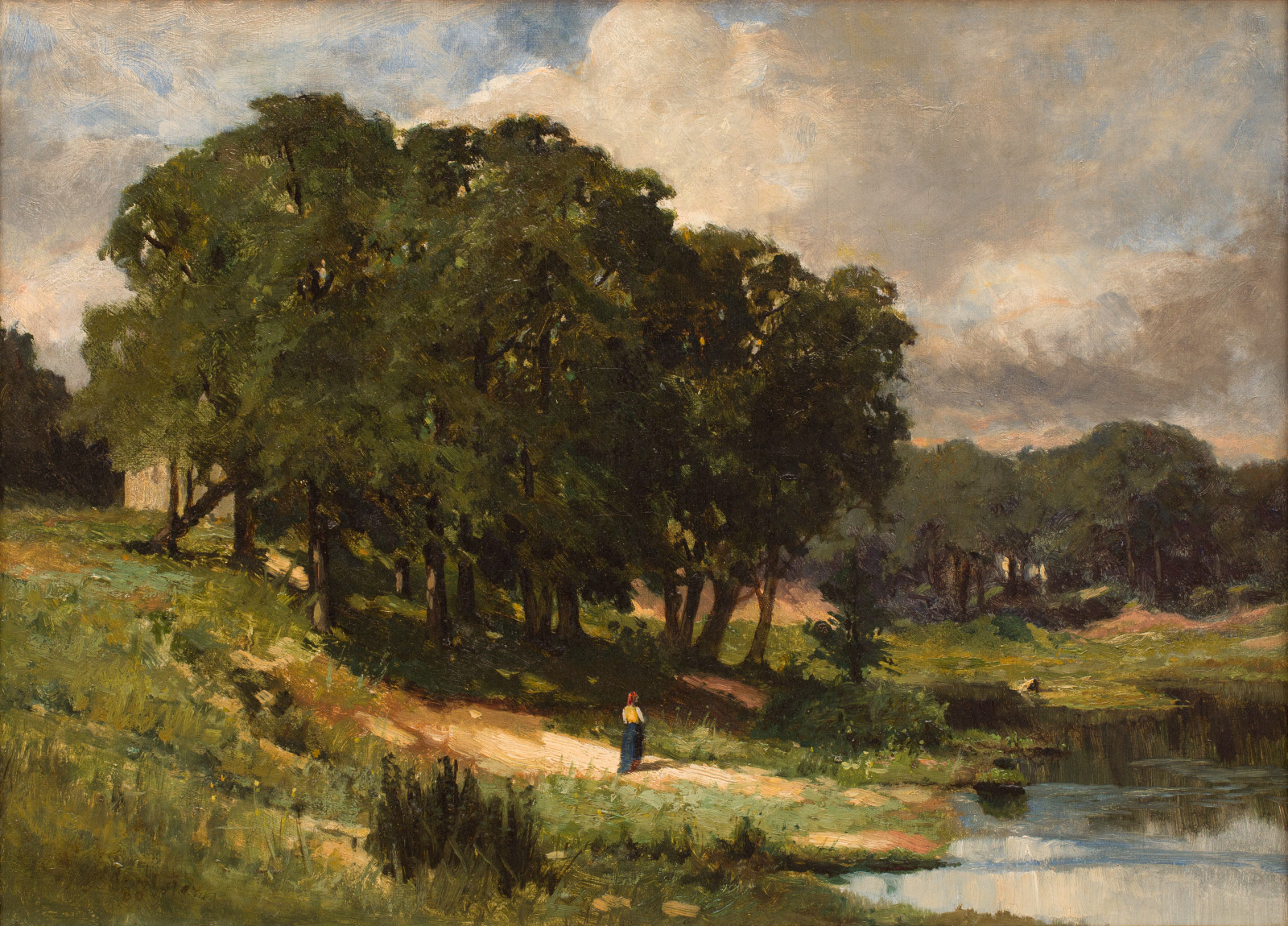
Edward Mitchell Bannister, American (born Canada), 1828–1901; Woman Standing near a Pond, 1880; oil on canvas; 16 1/4 x 22 1/4 inches; Saint Louis Art Museum, Museum Minority Artists Purchase Fund 21:2007
A simply dressed woman passes through a country landscape. Luminous, still waters reflect an atmospheric sky, suggesting the serene spirituality the artist perceived in nature. Edward Mitchell Bannister, an African American, stated that the discrimination he experienced because of his heritage multiplied his artistic struggles tenfold. Despite such obstacles, Bannister became one of the premier landscape artists of his day, earning a bronze medal for another oil painting at the Philadelphia Centennial Exposition in 1876.
August 24, 2025
Bust of an Unknown Man
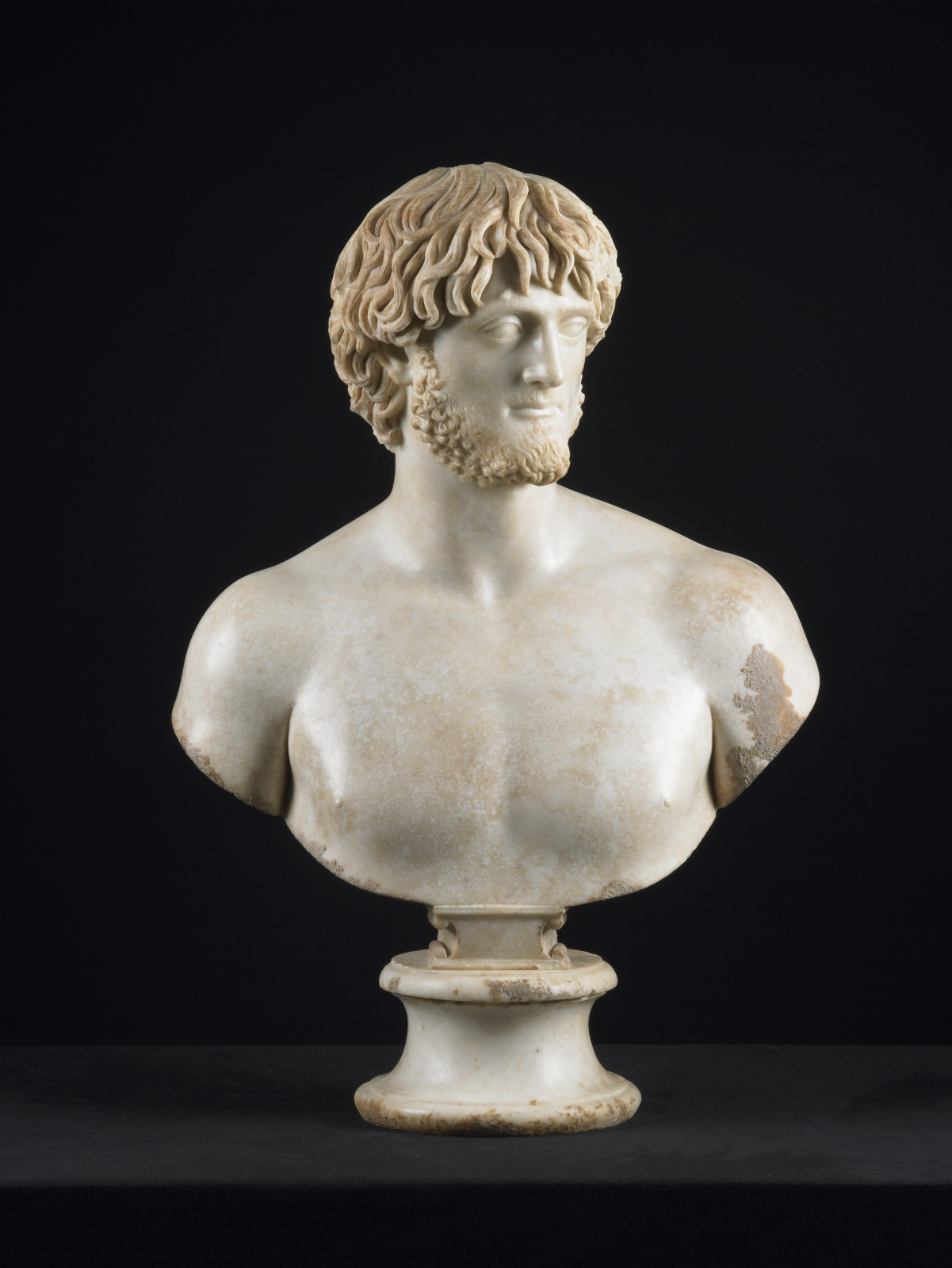
Bust of an Unknown Man, 2nd century; Roman, Italy, Imperial period, Antonine period; marble; 32 x 22 1/8 inches; Saint Louis Art Museum, Museum Purchase 299:1923
This bust of an unidentified man exemplifies a very high standard of carving and finish—the marble skin practically glows. The sculptor has taken advantage of the natural properties of marble in contrasting the smooth polish of the skin with the textured matte hair. The technical skill of the artist and high quality of the marble suggest that this work was created for a wealthy patron.
August 23, 2025
Houston Street

George Luks, American, 1867–1933; Houston Street, 1917; oil on canvas mounted on Masonite; 23 7/8 x 41 5/8 inches; Saint Louis Art Museum, Bequest of Marie Setz Hertslet 121:1972
In the early 20th century, Houston Street traversed the heart of a densely congested immigrant neighborhood in New York’s Lower East Side. George Luks captured the chaotic but dynamic experience as tenement residents, open-air merchants, pushcarts, and sidewalk stands all compete for space. Though such gritty scenes were thought rather shocking subject matter for fine art, Luks celebrated them. He believed such working-class and immigrant neighborhoods represented the vitality of the modern world. Luks and others like him were often called the Ashcan School, because their works included the grays and browns of soot that spread over the streets at the time.
August 22, 2025
Gladys and a Blow-out!
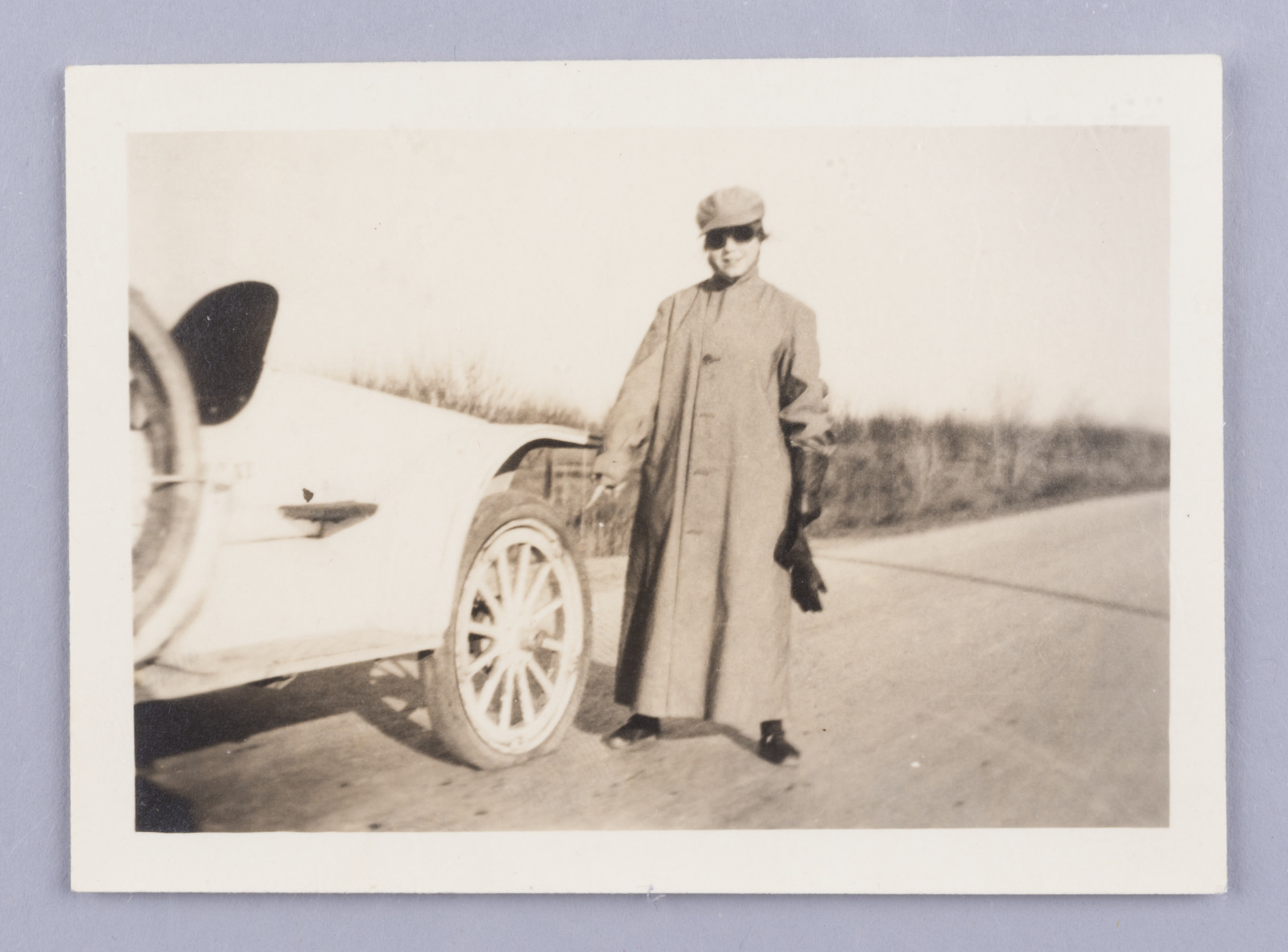
Unknown; Gladys and a Blow-out!, c.1915; gelatin silver print; sheet: 2 3/8 x 3 3/8 inches; Saint Louis Art Museum, Gift of Peter J. Cohen in honor of Laura T. Cohen 63:2018
Henry Ford’s mass-produced Model T, introduced in 1908, made cars affordable for the middle class. They became extensions of owners’ personalities and were the subjects of pictures just as often as the outside scenery. With many roads unpaved through the 1920s, flat tires were a common affair. This print of a woman in a racing outfit has the lively inscription “Gladys and a blow-out!” on the back.
August 21, 2025
Female Figure
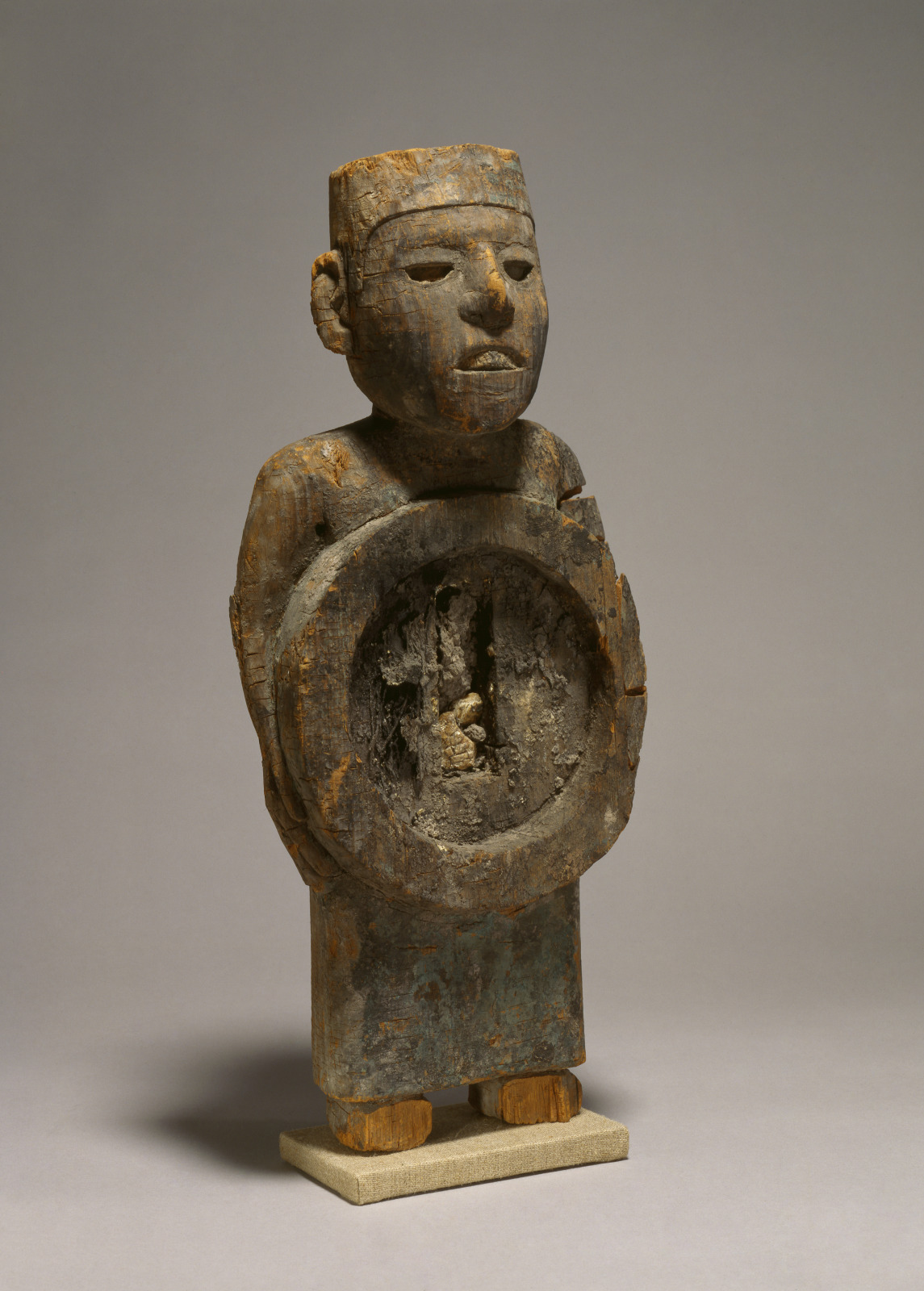
Female Figure, c.1350–1450; Aztec, Mexico, Late Postclassic period; wood, plant remains, and pigment; 20 11/16 x 8 7/8 x 4 5/8 inches; Saint Louis Art Museum, Gift of Morton D. May 381:1978
The traces of black and blue pigment seen on the headdress and skirt of this extremely rare wood sculpture are indicative of the Aztec goddess of water known as Chalchihuitlicue. The name means “she of the precious jade skirt.” For the Aztec and other Mesoamerican civilizations, jade and other greenstones symbolized the life-giving power of water. Chalchihuitlicue presided over aquatic rituals, particularly in late spring; the plant remains found in the round disc over her chest may be evidence of these rites.
Although the stiff pose is typical of Aztec art, the figure’s face is finely modeled. This suggests a dynamic tradition of wood carving that is now almost completely unknown, as many fragile wooden sculptures were either destroyed during the 16th-century Spanish invasion or have decayed through the centuries.
August 20, 2025
Emperor’s Semiformal Court Robe with Design of Nine Five-Clawed Dragons, Clouds, Bats, and Auspicious Motifs
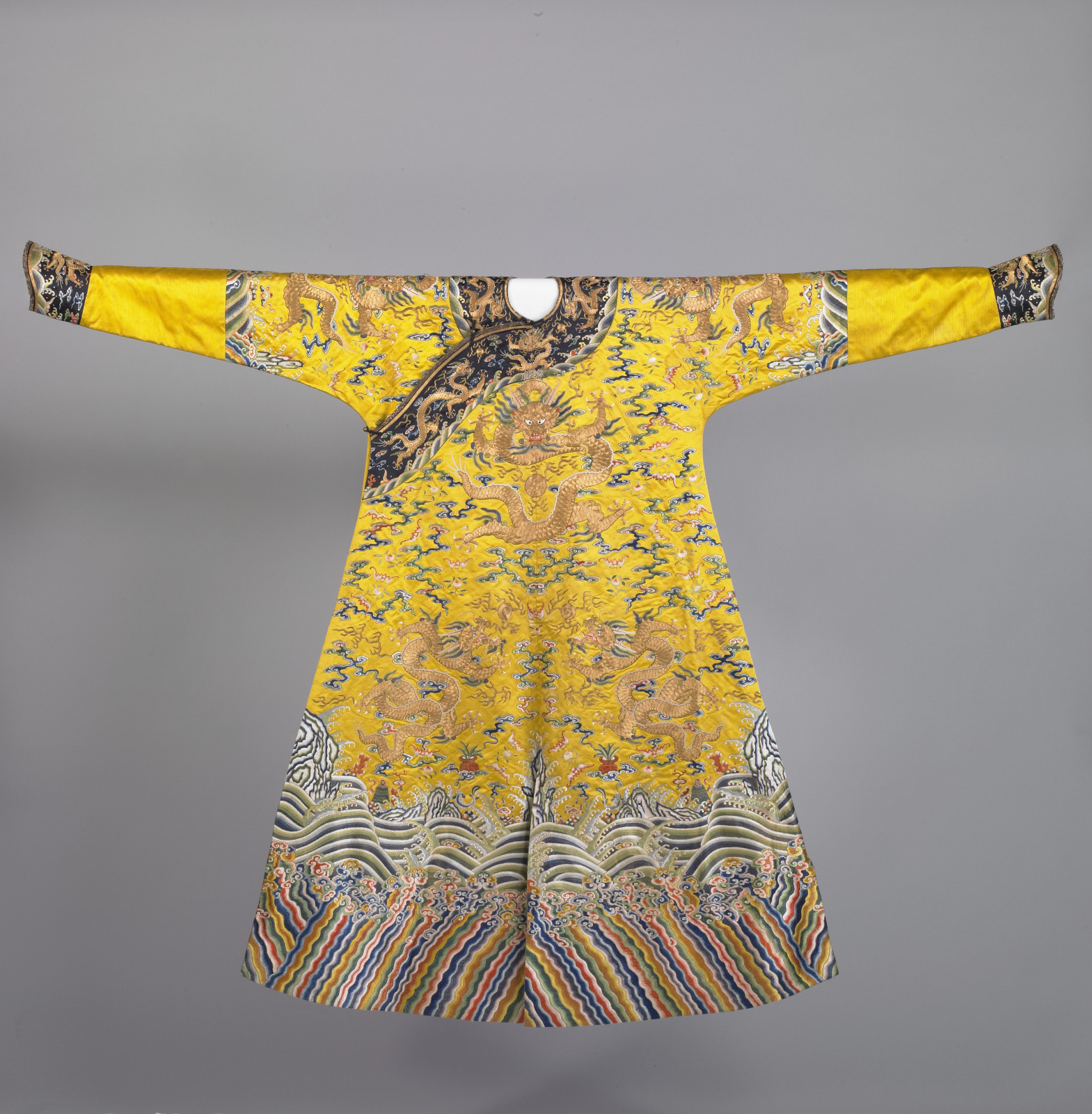
Emperor's Semiformal Court Robe with Design of Nine Five-Clawed Dragons, Clouds, Bats, and Auspicious Motifs, early 18th century; Chinese, Qing dynasty, Yongzheng period; embroidered and brocaded silk with silk and metallic threads; 54 15/16 x 75 1/16 inches; Saint Louis Art Museum, Gift of Mrs. Ralph F. Bixby 97:1978
This bright yellow satin robe is meticulously worked on the front and back with eight five-clawed dragons (long) pursuing flaming pearls, with a ninth dragon hidden on the front underflap. Auspicious bats fly over rolling waves and mountains. The stylized stripes of deep water at the hem are finely embroidered in shades of green, blue, and white, with intervening gold threads. The undulating waves above them are satin-stitched with two or three colors mixed in any given band, producing a spectacular effect of shading. The slightly flared deep blue satin “horse-hoof” cuffs are decorated with dragons and multicolored clouds above waves, as is the neck band. The garment’s slits on front, back, and sides indicate an imperial rank of the highest order.
August 19, 2025
Betty
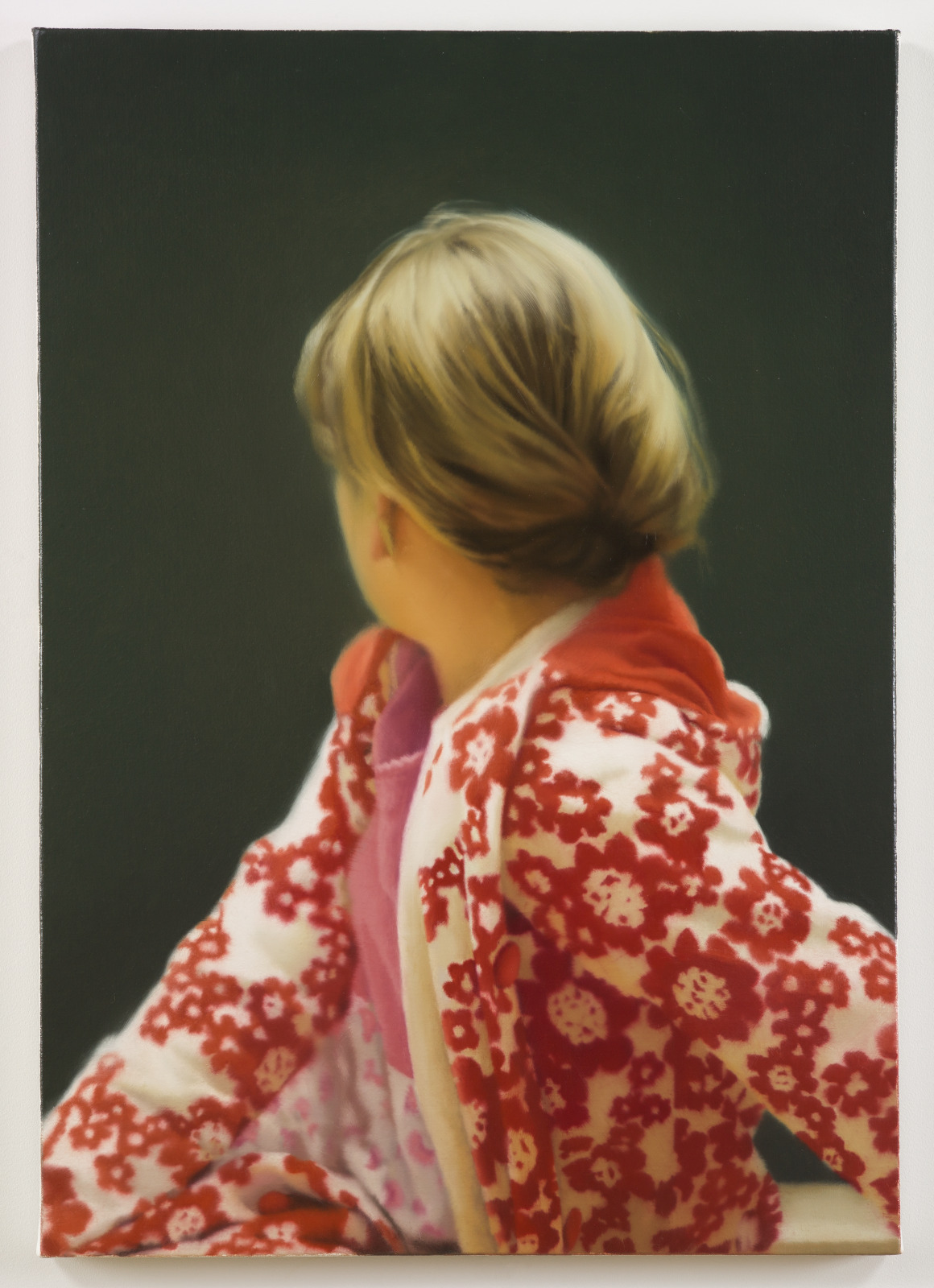
Gerhard Richter, German, born 1932; Betty, 1988; oil on canvas; 40 1/4 x 28 1/2 inches; Saint Louis Art Museum, Funds given by Mr. and Mrs. R. Crosby Kemper Jr. through the Crosby Kemper Foundations, The Arthur and Helen Baer Charitable Foundation, Mr. and Mrs. Van-Lear Black III, Anabeth Calkins and John Weil, Mr. and Mrs. Gary Wolff, the Honorable and Mrs. Thomas F. Eagleton; Museum Purchase, Dr. and Mrs. Harold J. Joseph, and Mrs. Edward Mallinckrodt, by exchange 23:1992; © Gerhard Richter 2019
Gerhard Richter based this painting on a 1978 photograph of his 11-year-old daughter. Betty turns away from the viewer, possibly toward one of Richter’s own monochrome paintings. Richter fled East Germany in 1961 at age 29 and moved to Düsseldorf just before the Berlin Wall was erected. At the time, West Germany was struggling to define its postwar identity. Richter painted this work 27 years later in 1988, only a year before the fall of the Berlin Wall.
August 18, 2025
Charlotte Cram
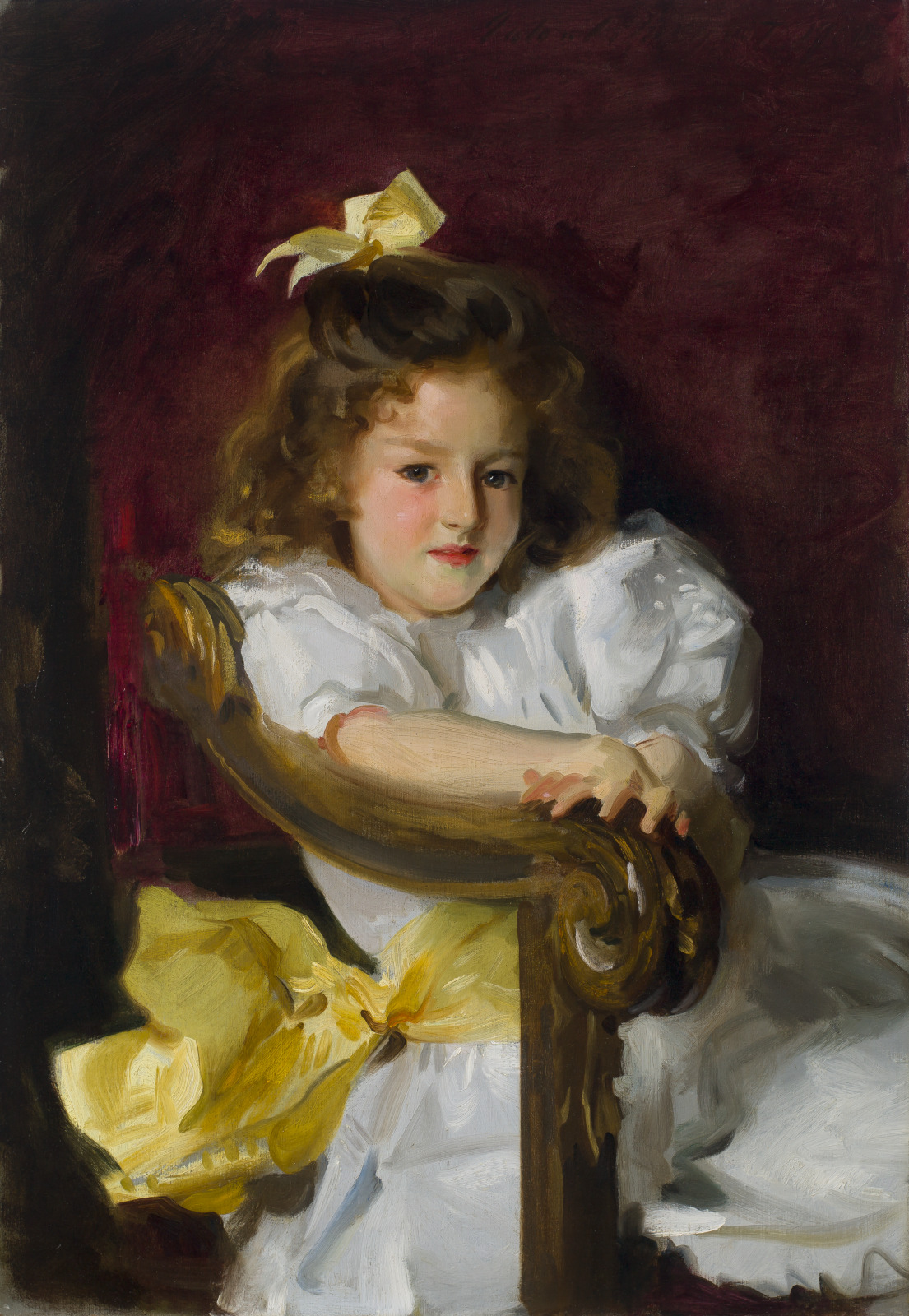
John Singer Sargent, American (born Italy), 1856–1925; Charlotte Cram, 1900; oil on canvas; 34 3/4 x 24 inches; Saint Louis Art Museum, Friends Fund Endowment, Museum Purchase, and funds given by Mr. and Mrs. John Peters MacCarthy; Eliza McMillan Trust, Bequest of Elsie A. Kuhn, Gift of Frederick Oakes Sylvester, Gift of Edward J. Costigan in memory of his wife, Sara Guth Costigan, Gift of Mr. and Mrs. John Alden Sears, Gift of August A. Busch Jr., Gift of J. Harold Pettus, Gift of Mr. and Mrs. Robert E. Fleming, Gift of Charles F. Galt, Gift of Mr. and Mrs. Sydney Shoenberg Jr., Anonymous Gift, Gift of Mr. Daniel Catlin, Gift of Miss Louisa Leete and Miss Clara Leete, Gift of William Henry Gruen, Bequest of Daniel Fitzpatrick, Gift of the Estate of Moses Soyer, Gift of Mrs. Daniel K. Catlin, Gift of Peggy Ives Cole, and the J. Herndon and Lida Wallace Smith Fund, by exchange 210:2017
John Singer Sargent painted seven-year-old Charlotte Cram in his London studio. She sits in an oversized chair with the unaffected charm of youth. The sparkle in her brown eyes, barely restrained smile, tilt of her head, and frank gaze are endearing without excessive sentimentality. Sargent perfectly captured her twisted pose and interlaced fingers, as she presses them into the wooden arm of the chair trying her very best not to squirm.
Charlotte’s white taffeta dress and oversized yellow sash and bow reveal the artist’s confident ability. Sargent, one of the foremost portraitists in American art, knew exactly where to place his dramatic brushstrokes to translate the essence of a bow or ribbon or hand into paint. His exceptional technique and aesthetic sensibility were equally matched by his innate grasp of his subject’s genuine emotions.
August 17, 2025
Vase
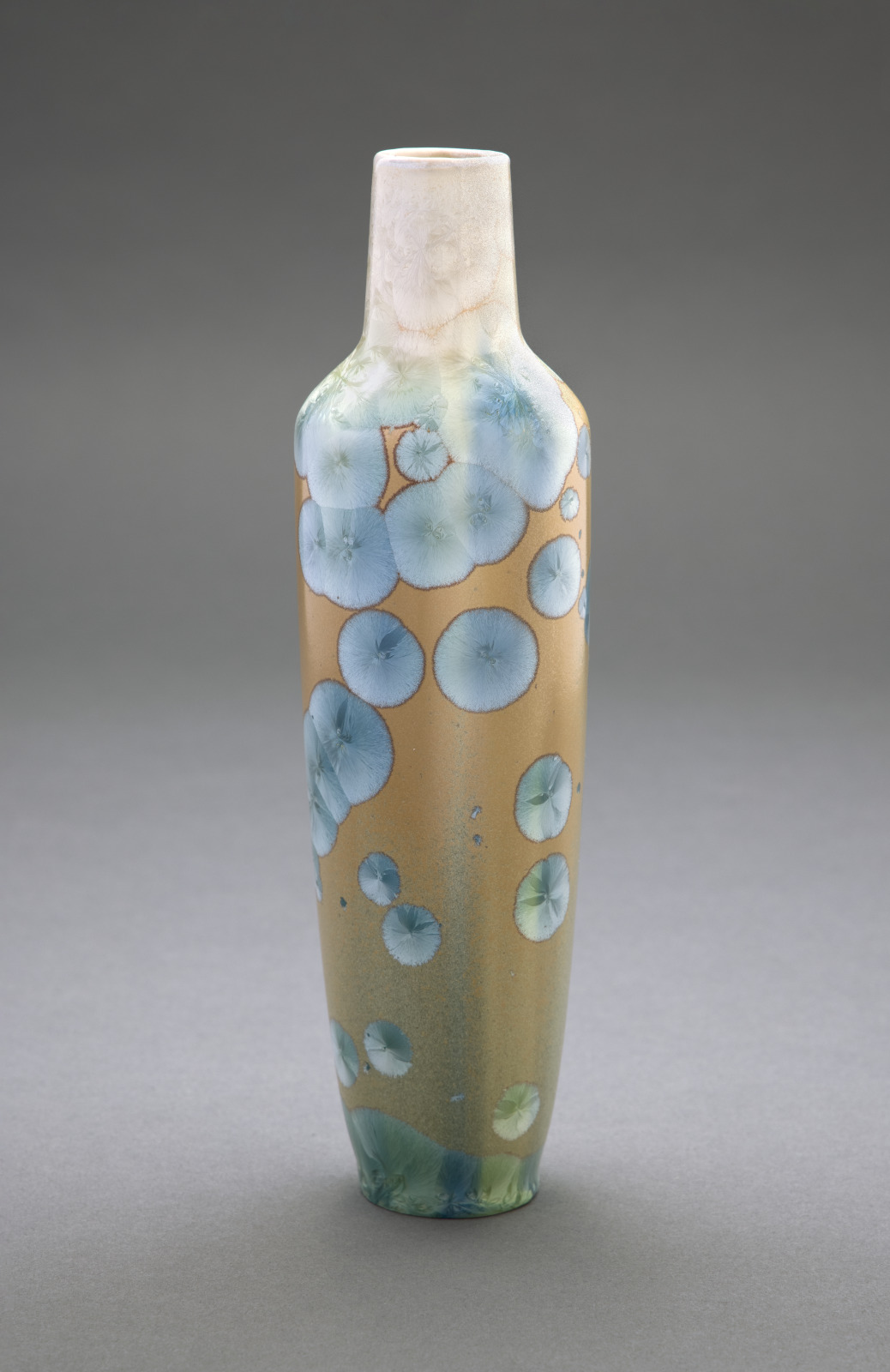
Taxile Doat, French, 1851–1938; associated with University City Porcelain Works, University City, Missouri, active 1912–1914; Vase, 1913; glazed porcelain; 9 3/4 x 2 11/16 inches; Saint Louis Art Museum, Gift of Leeds Art Foundation in honor of Brent R. Benjamin 331:2020
Luminous blue and white crystals form dense clusters at the neck and shoulder and trail evocatively around the body of this vase. French ceramic artist Taxile Doat was a specialist in glaze effects on porcelain and stoneware, especially crystalline glazes. He formulated the glazes to produce crystals varying in size, color, pattern, and surface texture. Doat made this spectacular vase in University City, Missouri, where he led an international ceramic faculty in an innovative art academy and porcelain works.
August 16, 2025
Late Evening Looking Out of the Woods
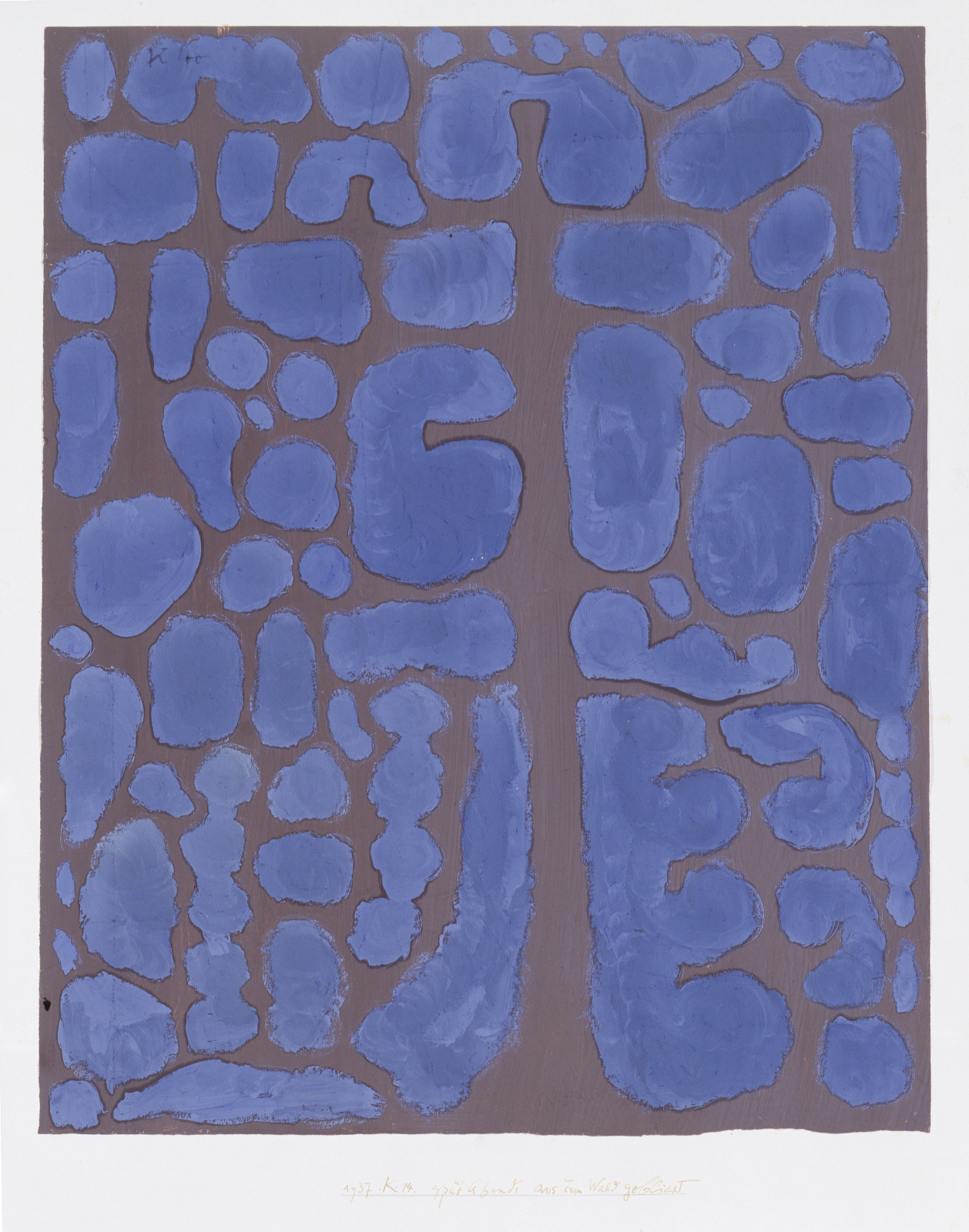
Paul Klee, German (active Switzerland), 1879–1940; Late Evening Looking Out of the Woods, 1937; oil on paper with brown sizing; 19 1/2 x 15 1/2 inches; Saint Louis Art Museum, Museum Purchase 119:1947; © 2025 Artists Rights Society (ARS), New York
As the title indicates, this image alludes to the close of day when the broad palette of daylight no longer exists. Paul Klee was intrigued with the effects of evening light on perception and imagination and composed this image from only two colors, close in tonality. He skillfully balances positive and negative space, with the brown of the trees and the blue of the sky hovering next to each other in the twilight.
August 15, 2025
Footed Cup

Footed Cup, 1st century BC–1st century AD; Roman, Early Imperial period; lead-glazed ceramic; 5 1/4 x 5 1/4 inches, base diameter: 2 7/8 inches; Saint Louis Art Museum, Museum Purchase 387:1923
The distinct colors—deep green and mustard yellow—of this mold-made ceramic cup are obtained from a lead glaze developed in the 1st century BC in the eastern Mediterranean. More fluid and less prone to cracking, this glaze was a distinct improvement over other contemporary glazing technologies. It has been suggested that these colors were specifically selected to emulate the patina of weathered bronze and gilded silver. This vessel shape is common in ceramic, glass, and metal.
August 14, 2025
Marquis Ambrogio Spinola
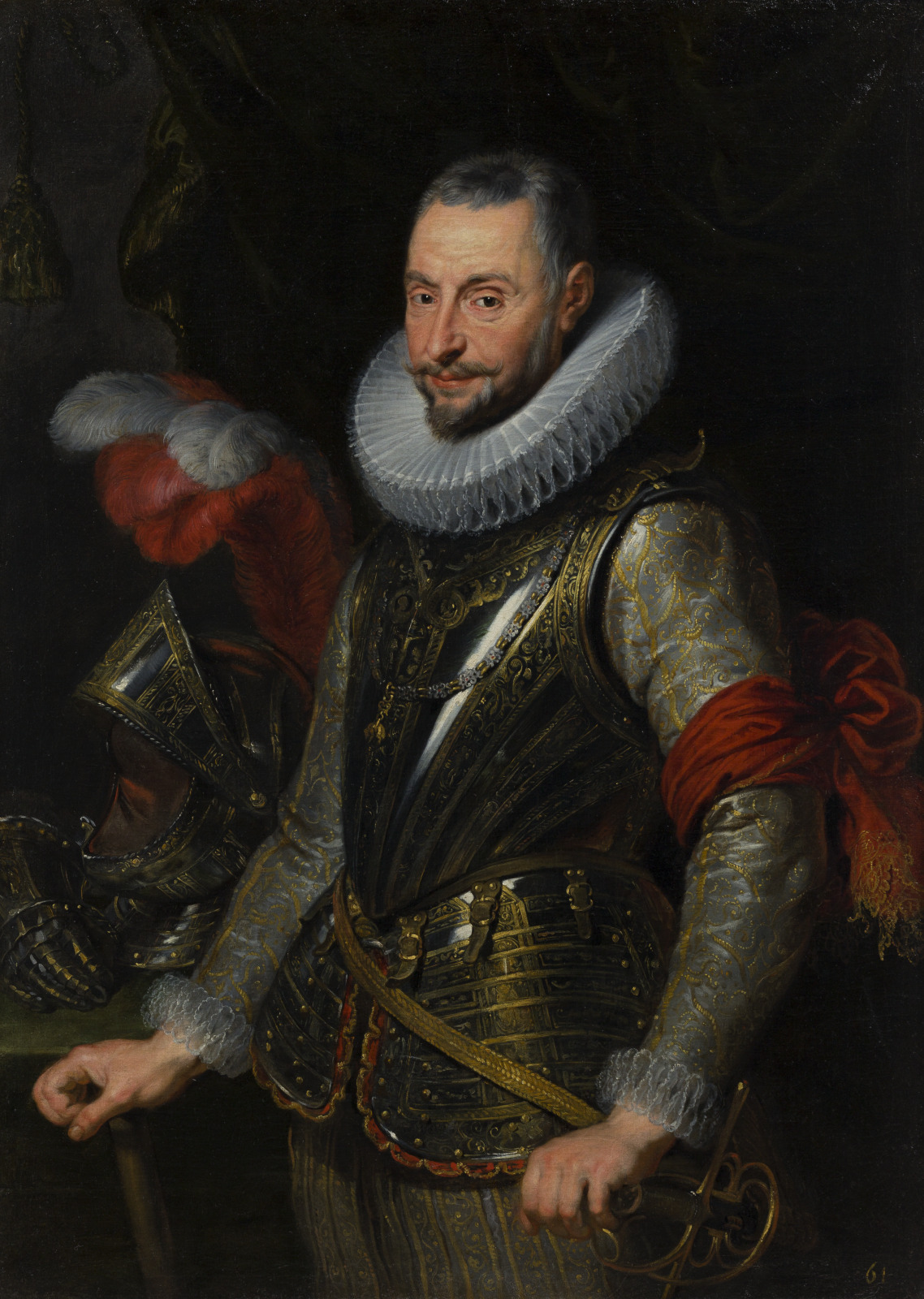
Studio of Peter Paul Rubens, Flemish, 1577–1640; Marquis Ambrogio Spinola, c.1630; oil on canvas; 46 3/8 x 33 1/2 inches; Saint Louis Art Museum, Museum Purchase 33:1934
Armor and clothing styles developed in parallel, and they were often worn together. This portrait captures the subject’s magnificent lace ruff and cuffs, gold-embroidered jacket and hose, and etched, gilded, and blackened armor. Ambrogio Spinola was a Genoese military officer who commanded the Spanish army in the Netherlands. The overall form and decoration of Spinola’s breastplate is similar to that of the peasecod breastplate.
August 13, 2025
Torso of a Female Figure
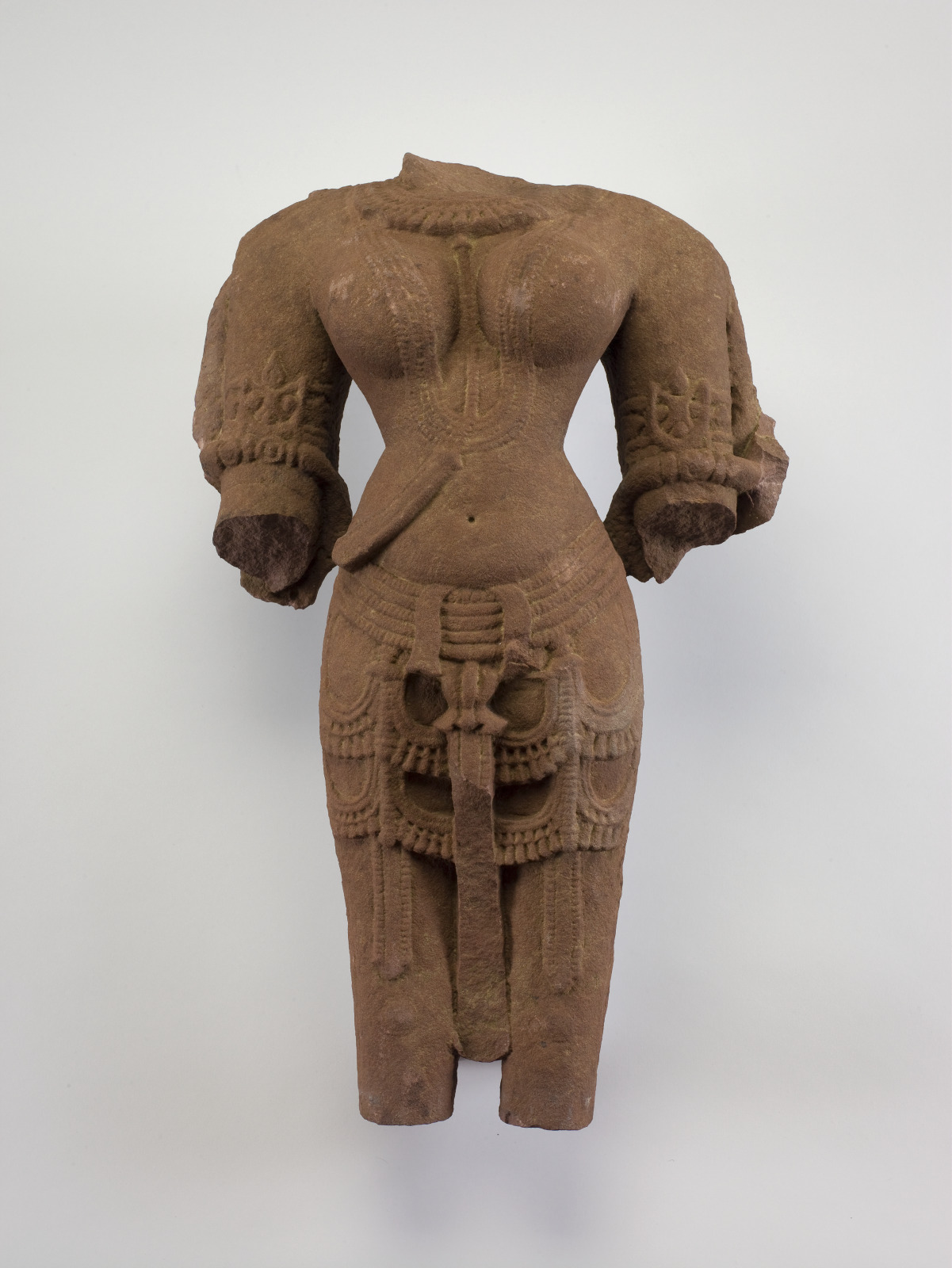
Torso of a Female Figure, 12th century; Indian, Candella dynasty; sandstone; height: 21 1/4 inches; Saint Louis Art Museum, Museum Purchase 25:1971
Without head, hands, feet, or any other attributes or context, it is quite difficult to determine the identity of this figure. Based on the posture and ornaments, it might or might not be the goddess Parvati, wife of Siva. What this sculpture does convey, however, is the consummate importance of the female in Indian art. From nature spirits depicted on architectural decorations to all-powerful goddesses at the center of religious practice, females are considered to represent fecundity, creativity, and power. This figure would probably have appeared on the exterior of a temple, in a sculptural niche alongside other, similar sculptures. The use of sandstone places its origin in northern or central India, and the beautifully detailed jewelry is consistent with 12th century design.
August 12, 2025
Tulip Chair
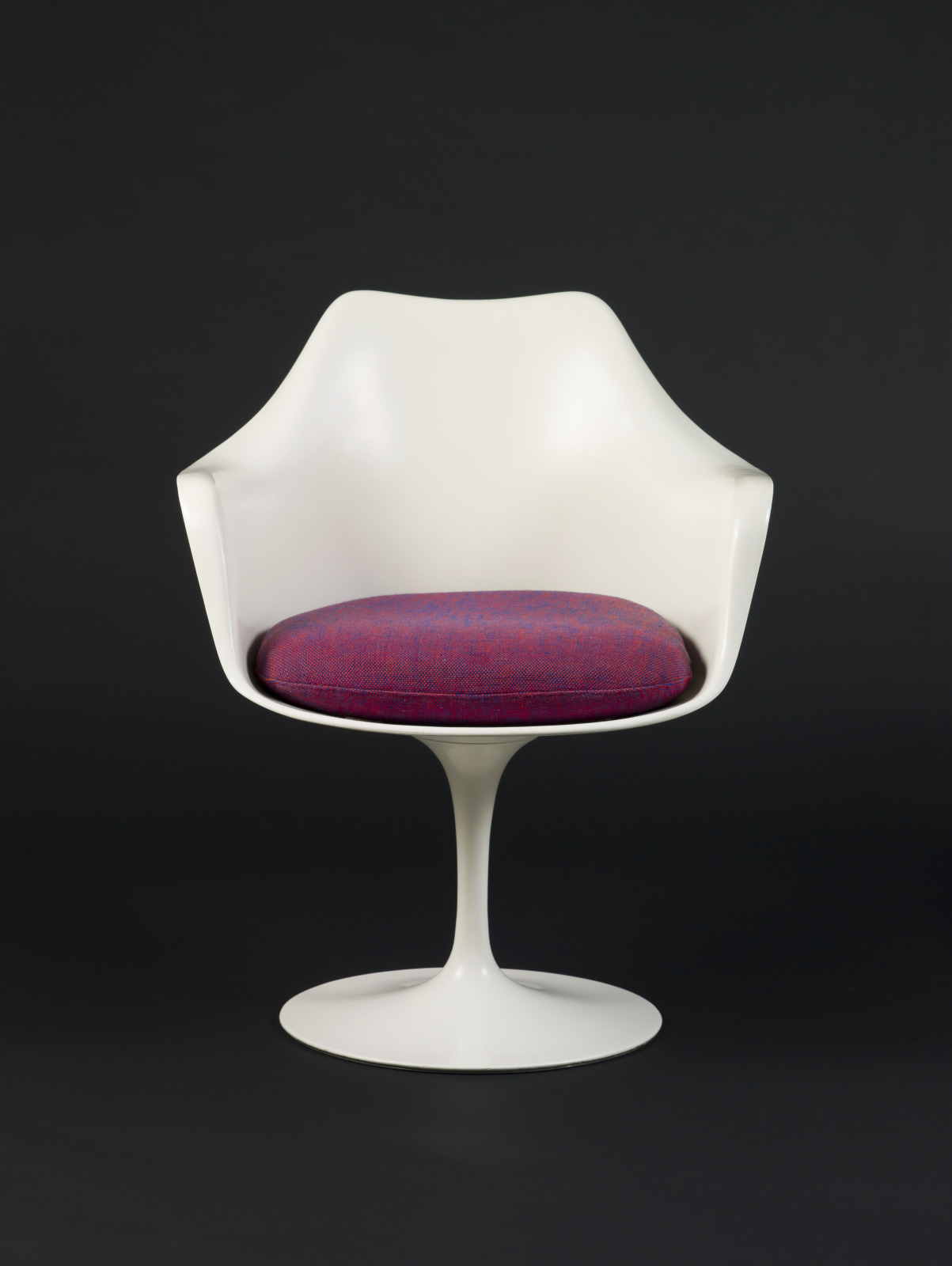
designed by Eero Saarinen, American (born Finland), 1910–1961; made by Knoll Associates, New York, New York, founded 1938; Tulip Chair, designed 1956, manufactured c.1960; plastic, fiberglass, foam, aluminum, and original nylon upholstery; 32 x 25 1/2 x 27 1/4 inches; Saint Louis Art Museum, Gift of Michael Ashworth 8:2000
Architect Eero Saarinen’s sleek, sculptural design is an icon of 20th-century furniture. Prior to World War II, he collaborated with Charles Eames on designs for organic furniture using bentwood. Following the war, Saarinen’s furniture designs employed new materials like plastics to achieve a modern form. This chair’s one-piece base was designed to replace the visual clutter of traditional furniture. In Saarinen’s words, “The undercarriage of chairs and tables in a typical interior makes an ugly, confusing, unrestful world. I wanted to clear up the slum of legs. I wanted to make the chair all one thing again.”
August 11, 2025
Cloth

Fon artist, Benin; Cloth, 1980s; cotton; 55 x 48 1/4 inches; Saint Louis Art Museum, Museum Shop Fund 232:1992
The colorful, appliqued depictions of animals, human figures, and weapons on this cloth are linked with well-known Dahomey kings. Some of the kings represented are Agaja (reigned 1708–32) by the ship, Glèlè (reigned 1858–89) by the lion, and Béhanzin (reigned 1890–94) by the shark. The imagery illustrates oral traditions and conveys stories of power, conquest, and authority.
Such cloths are inspired by precolonial royal, appliqued textiles that delivered messages asserting political might. Twentieth-century examples of wall hangings, like this one, have become popular items readily available in Abomey, Republic of Benin. While modern cloths contain less graphic imagery than earlier versions, the applique wall hangings remain an impressive display of wealth and power from the precolonial Dahomey courts.
August 10, 2025
View of Den Hoorn
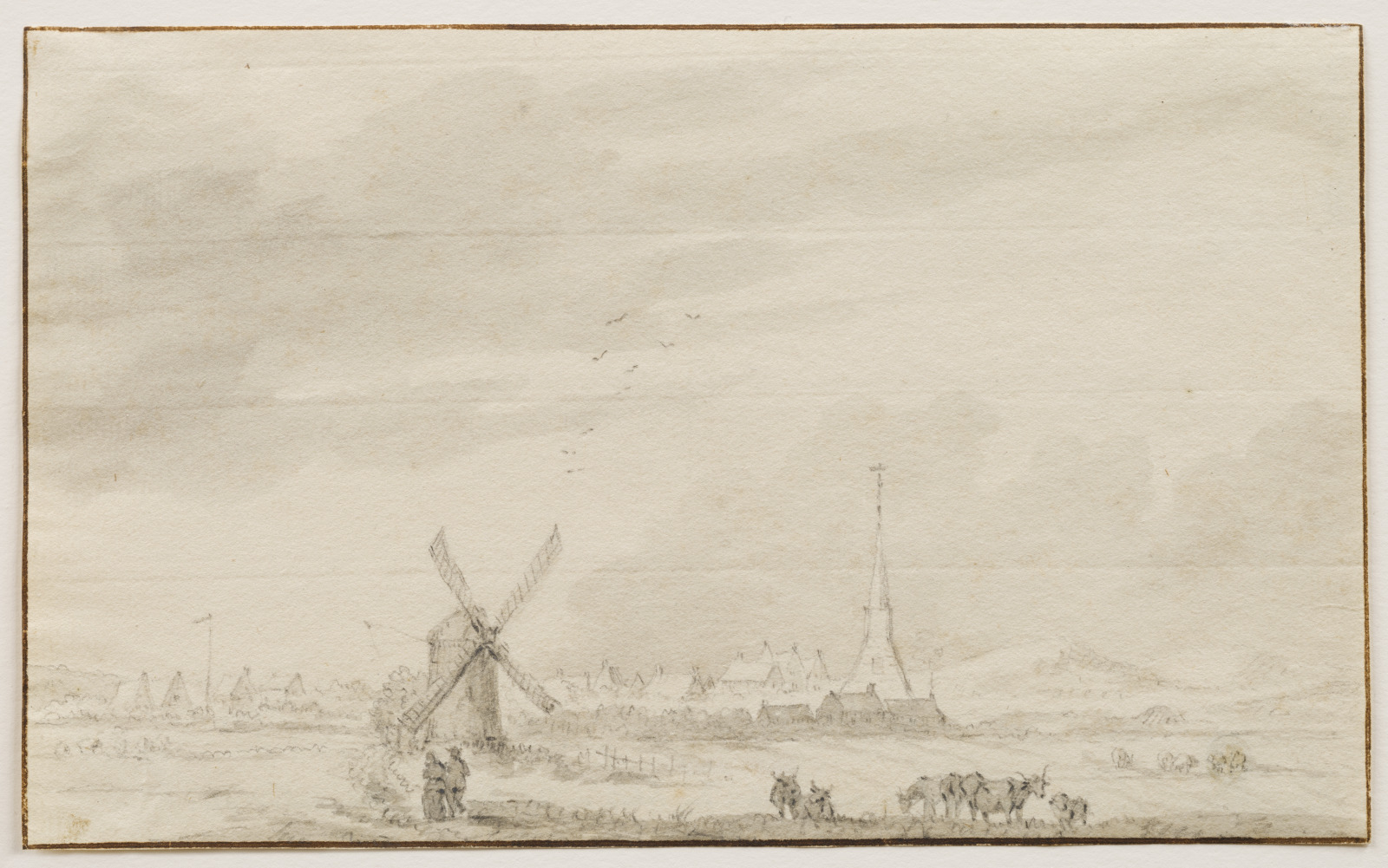
John Greenwood, English (born colonial North America), 1727–1792; View of Den Hoorn, 1761; graphite and grey wash; 5 1/4 x 8 1/2 inches; Saint Louis Art Museum, Funds given by Lucian Guy Blackmer 59:1952
Sand dunes rise in the background of this landscape sketch, protecting the small village from the waves that buffet its shores on the North Sea. John Greenwood visited Den Hoorn, or The Horn, located about two hours north of Amsterdam, while touring scenic areas in the Netherlands.
Was Greenwood an American artist? In 1753 at age 25, he left his burgeoning career as a portraitist in Boston, never to return to North America. Over the next four decades, he worked as a painter, engraver, art dealer, and auctioneer, first in Suriname in South America and then in the cosmopolitan centers of Amsterdam and London. Operating at the intersection of the British and Dutch empires, Greenwood’s personal history demonstrates the interconnected networks around the Atlantic Ocean in the 18th century.
August 9, 2025
Irawo II
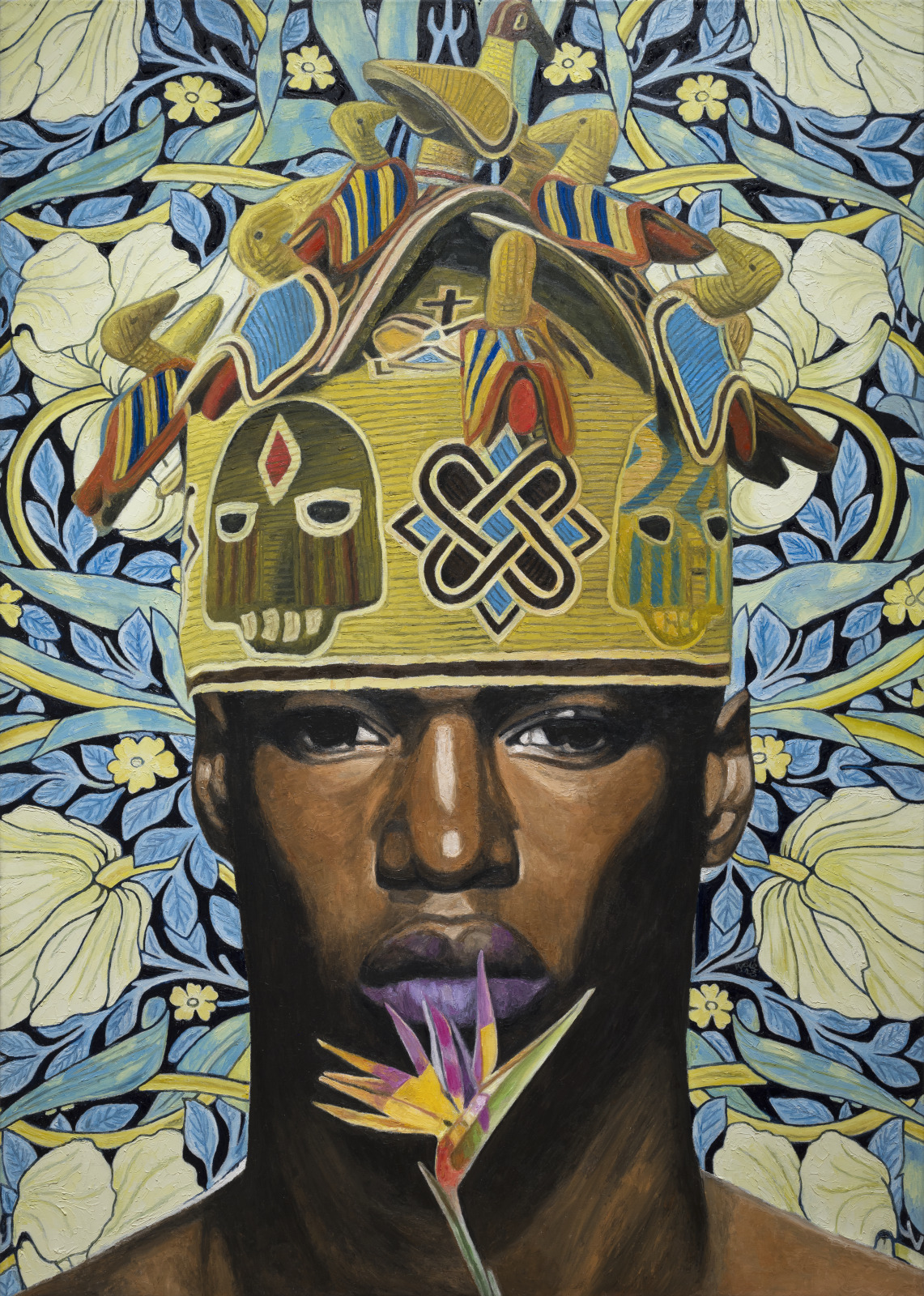
Wole Lagunju, Nigerian, born 1966; Irawo II, 2023; oil on canvas; 86 x 61 inches; Saint Louis Art Museum, Funds given by Northern Trust; and gift of Mr. and Mrs. Adam Aronson, Charles F. and Dorothy Quest in memory of Anna and Charles F. Quest Sr., and Mr. and Mrs. Robert H. Shoenberg, all by exchange 45:2023; © Wole Lagunju, Courtesy of Montague Contemporary
Irawo II is a powerful image of Irawo, a Yoruba ruler from southwestern Nigeria. Details in this painting highlight connections between royalty, nature, and the divine world. Irawo wears a beaded crown featuring a group of birds on top. These birds, echoed by the bird-of-paradise flower, are symbolic as mediators between the earthly and divine realms in Yoruba belief. Chiefs such as Irawo are considered semi-divine. Currently based in North Carolina, Wole Lagunju produces portraits which are deeply informed by his Yoruba heritage.
August 8, 2025
Nooning on the Platte
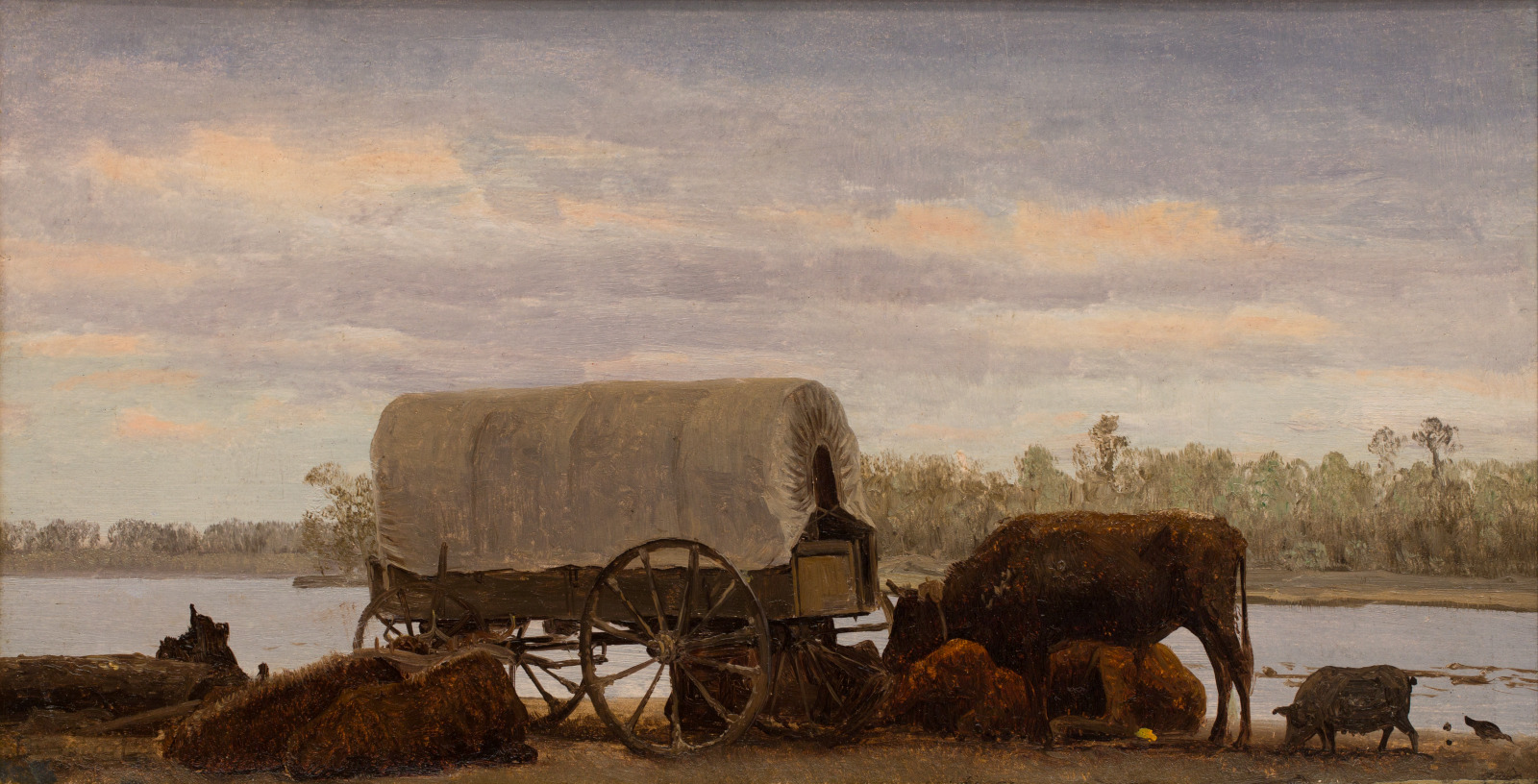
Albert Bierstadt, American (born Germany), 1830–1902; Nooning on the Platte, c.1859; oil on paper mounted on canvas; 7 x 13 inches; Saint Louis Art Museum, Gift of J. Lionberger Davis 157:1953
The vast, open expanse of prairie, which dwarfs the lone figure in its midst, is bounded only by the rise of distant mountains. Though small in scale, this study effectively evokes a sense of overwhelming isolation. Best known for his dramatic paintings of the American West, Albert Bierstadt also made more intimate sketches that capture with equal power the expansive grandeur of the Rocky Mountains.
Bierstadt painted Nooning on the Platte in 1859 while part of a government survey party bound for the Rocky Mountains. Artists like Bierstadt wanted their predominantly Eastern clientele to know they had actually seen the landscape they painted. Travel through the area by white Americans was nearly impossible, however, without the provisions and expertise provided by military or government expeditions.
August 7, 2025
St. Ives Cornwall, Composition

Ben Nicholson, English, 1894–1982; St. Ives Cornwall, Composition, 1934; oil on canvas mounted on board in artist frame; 21 1/2 x 25 5/8 inches; Saint Louis Art Museum, Gift of Joseph Pulitzer Jr. 118:1969; © 2025 Artists Rights Society (ARS), New York / DACS, London
Overlaid planes of bright color evoke the sea, sand, and brilliant light of the coast in Cornwall, England. This landscape was an important retreat for Ben Nicholson throughout his life. The same year in which Nicholson painted St. Ives Cornwall, Composition, he visited the studio of Piet Mondrian, where he was deeply affected by the older artist’s careful arrangement of strict, geometric forms. This work highlights the nature-inspired and lyrical elements which were distinctive to Nicholson’s abstract compositions.
August 6, 2025
Wrapping Cloth (fukusa) with Design of Sake Cups
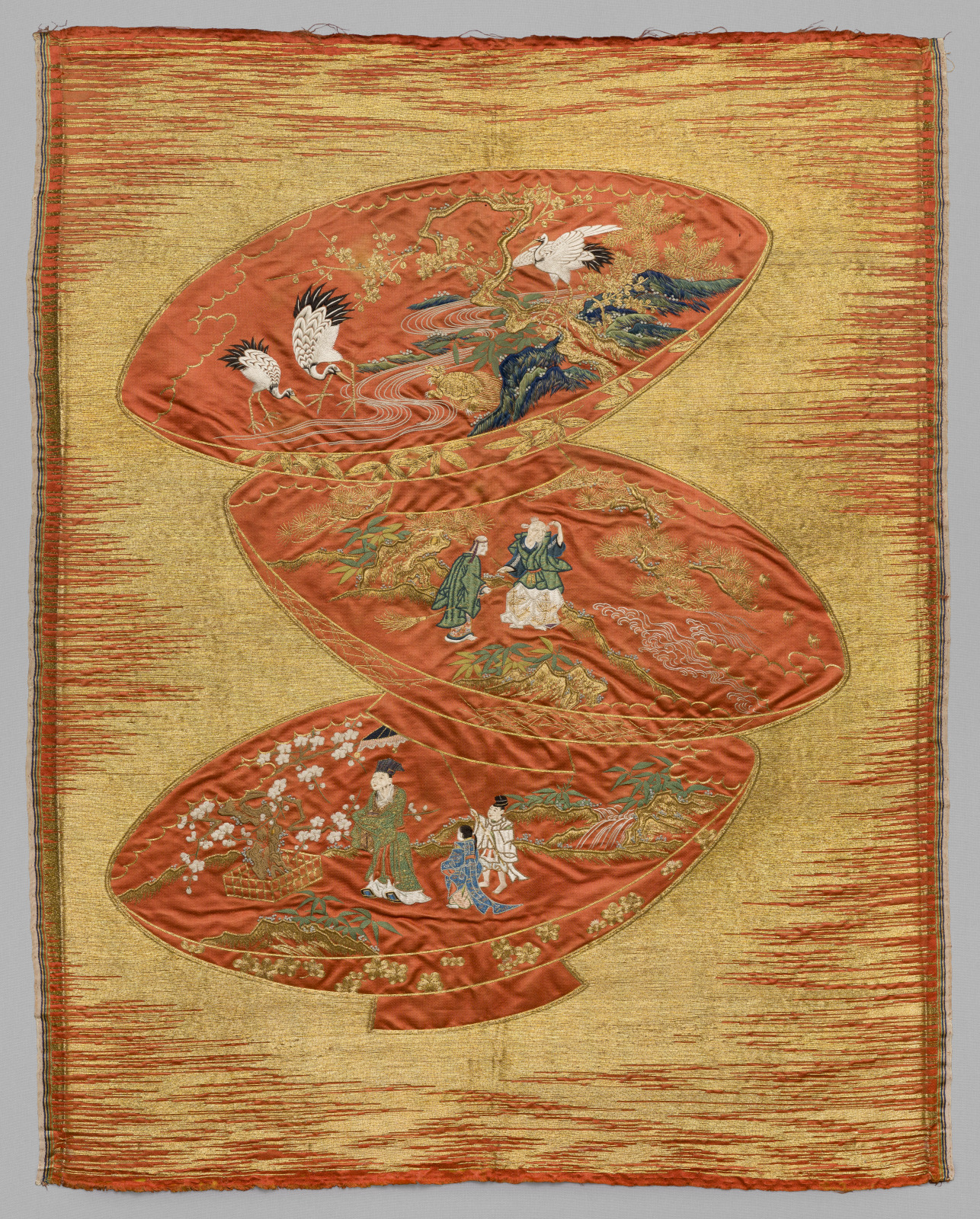
Wrapping Cloth (fukusa) with Design of Sake Cups, early to mid-19th century; Japanese, Edo period; silk satin embroidered with multicolored silk floss and couched with gold-wrapped threads; 34 3/8 x 27 3/8 inches; Saint Louis Art Museum, Museum Purchase 111:1919
This wrapping cloth (fukusa) features three shallow cups embroidered on crimson silk satin. Each is outlined in gold, and its interior decorated with symbols of longevity: three cranes, a tortoise, two elderly figures in a landscape with pine and bamboo, and a scholar-official admiring blossoming prunus with two young attendants. These motifs are embroidered with colored silk threads, while the background is decorated with couched gold thread.
During the Edo period, it was customary to present gifts on special occasions. They were covered or wrapped with a rectangular fukusa, which was later returned to the giver. The cups on this cloth, known as sakazuki, are for drinking Japanese rice wine, or sake. Sakazuki coated with red lacquer and those decorated with sprinkled gold and silver powder (maki-e), were made for feudal lords (daimyō) and the samurai classes.
August 5, 2025
Faux Pas
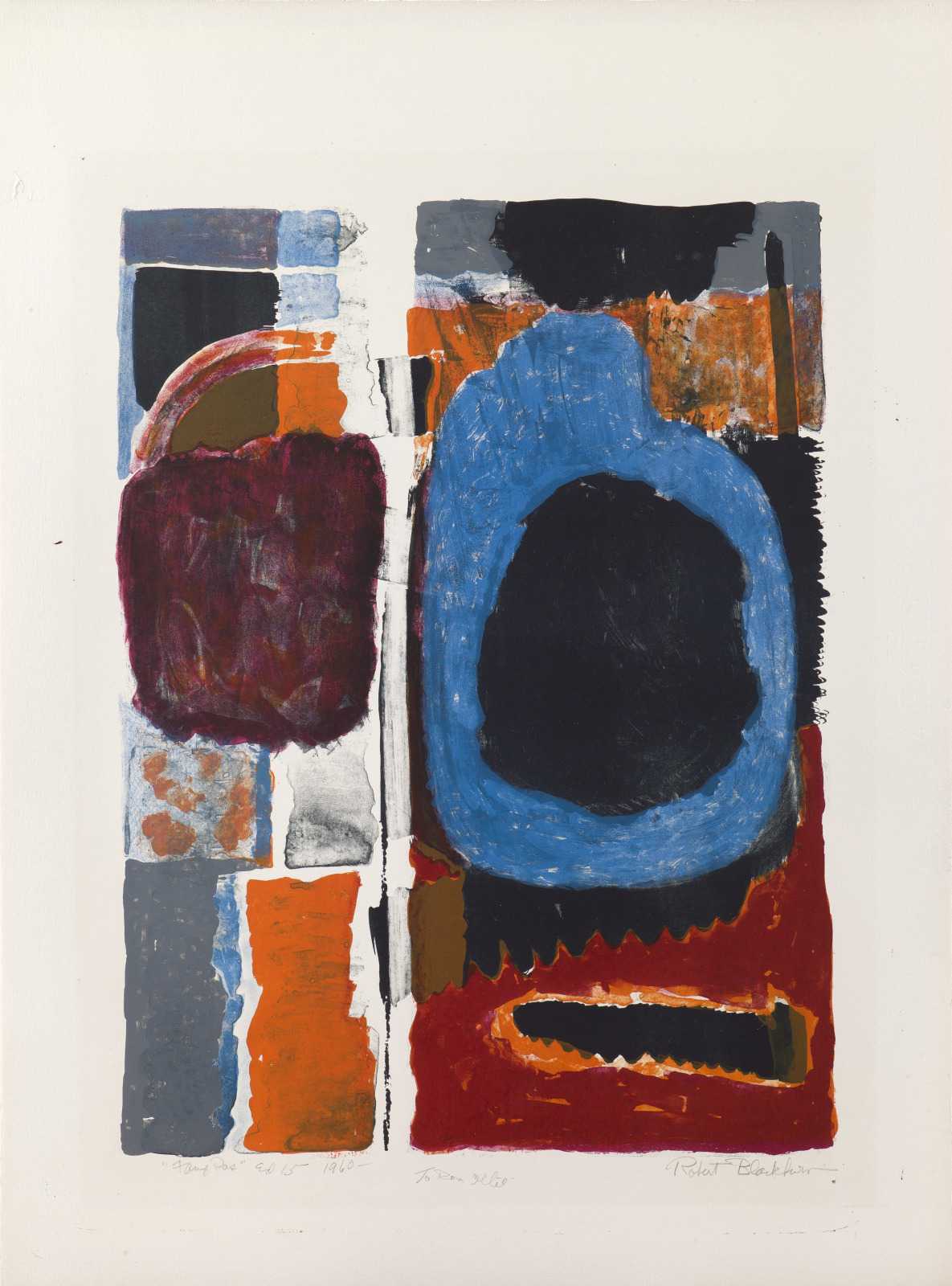
Robert Blackburn, American, 1920–2003; Faux Pas, 1960; lithograph; image: 22 x 16 5/16 inches, sheet: 30 x 22 1/8 inches; Saint Louis Art Museum, The Thelma and Bert Ollie Memorial Collection, Gift of Ronald and Monique Ollie 121:2017; © The Estate of Robert Blackburn
A visual symphony of layered colors and shapes, Faux Pas represents Robert Blackburn’s gestural mode of abstract art. Blackburn developed this approach, which he also applied to his printmaking, following a year of study in Europe on a John Hay Whitney Traveling Fellowship in 1953. A devoted advocate of the medium, he opened the Robert Blackburn Printmaking Workshop in New York in 1948.
August 4, 2025
Ewer and Basin

made by Jean Fauche, French, c.1706–1762; Ewer and Basin, c.1740; silver; ewer: 9 1/4 x 6 5/8 x 4 5/8 inches, basin: 2 11/16 x 13 x 8 7/16 inches; Saint Louis Art Museum, Museum Purchase 96:1939a,b
The beauty of this pitcher and its matching basin is in the skillful balance of curvilinear shapes and rich ornament. The taut scrolls that form the mouth and handle of the pitcher contrast with the flowing lines of the basin’s rim. Bands of parallel grooves, called flutes, encircle the basin and the pitcher, where they also enclose curvaceous panels filled with engraved flowers. Cast foliage envelops the pierced handle, and shells and shell-like motifs ornament the lid. The ornament of shells, reeds, and cattails all evoke a water motif appropriate to the pitcher and basin’s role on the dressing table, where they were used for hand washing.
August 3, 2025
Inkstand or Base of a Centerpiece
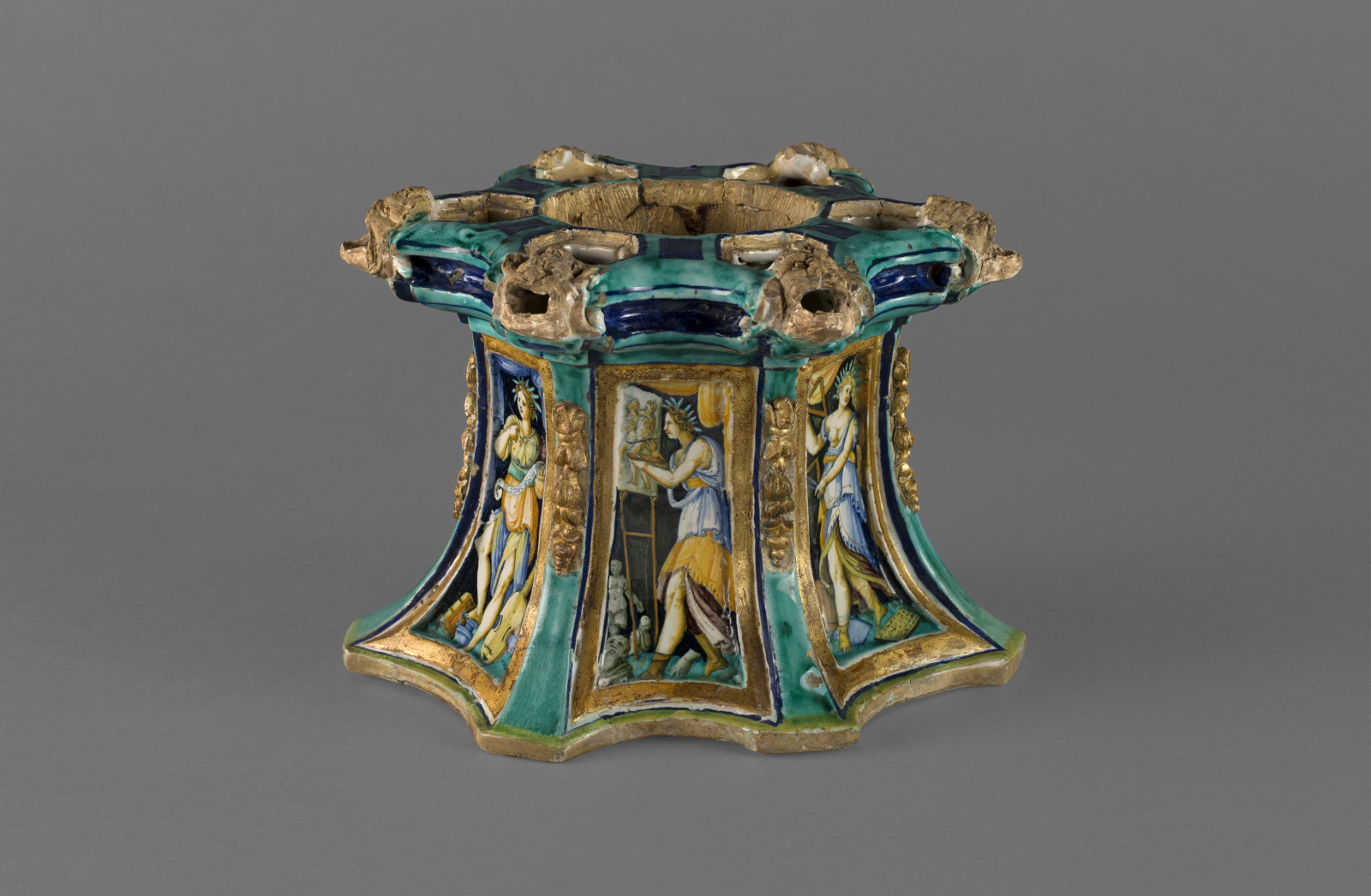
Guido Durantino, Italian, 1490–1576; Inkstand or Base of a Centerpiece, c.1546; tin-glazed earthenware and gilding; widest point: 6 1/2 x 9 inches; Saint Louis Art Museum, Museum Purchase 21:1925
Featuring six spouts along the top edge, this rare, hexagonal-shaped object portrays six females. The women represent either the Muses (goddesses that inspire the creative arts and sciences) or figures symbolizing geometry, astronomy, music, literature, painting, and sculpture—perfect for a scholar’s study. The elongated shapes and tapering limbs are characteristic of the 16th-century style of Mannerism in which artists sought to achieve beautiful forms, sometimes sacrificing naturalism.
August 2, 2025
Panel from a Set of Hangings

Panel from a Set of Hangings, 1720–40; Indian, for the English market; cotton, painted mordants, and resist; 112 1/2 x 61 inches; Saint Louis Art Museum, Marjorie Wyman Endowment Fund 7:2020
Scrolling and scalloped ribbons of feathers and foliage snake down this chintz textile. The intricate, meandering design is a response to the so-called “lace pattern” woven silk fabrics made in Europe in the early 18th century. One of four panels, an English East India Company trade stamp on the hanging from the same set at the Minneapolis Institute of Art suggests the entire lot was destined for the English market where fabrics with light-colored backgrounds were especially fashionable.
August 1, 2025
Revere Beach
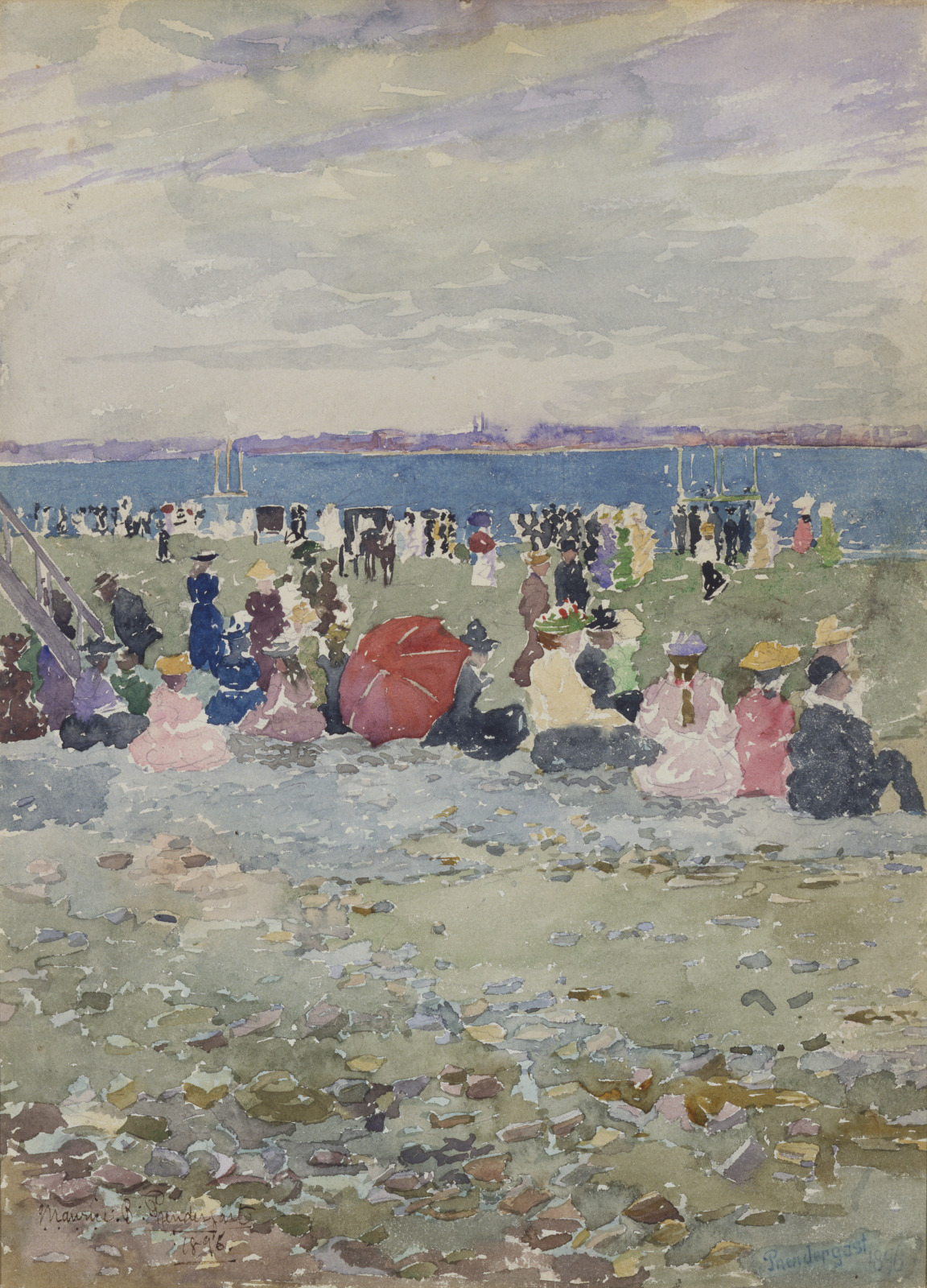
Maurice Brazil Prendergast, American (born Canada), 1858–1924; Revere Beach, 1896; watercolor over graphite; 13 9/16 x 9 13/16 inches; Saint Louis Art Museum, Museum Purchase 109:1947
Maurice Prendergast’s painting uses commingled greens, purples, grays and blues to depict the landscape surrounding people dressed in bright colors. Prendergast painted this popular beach north of Boston soon after his return from Europe. He was among the first Americans to champion the work of Paul Cézanne, a French Post-Impressionist. In this drawing, Prendergast reduced figures to nearly flat shapes, eliminated facial expressions, and flattened space with a patterned and tiered composition.
July 31, 2025
Brazier in the Form of the Old God
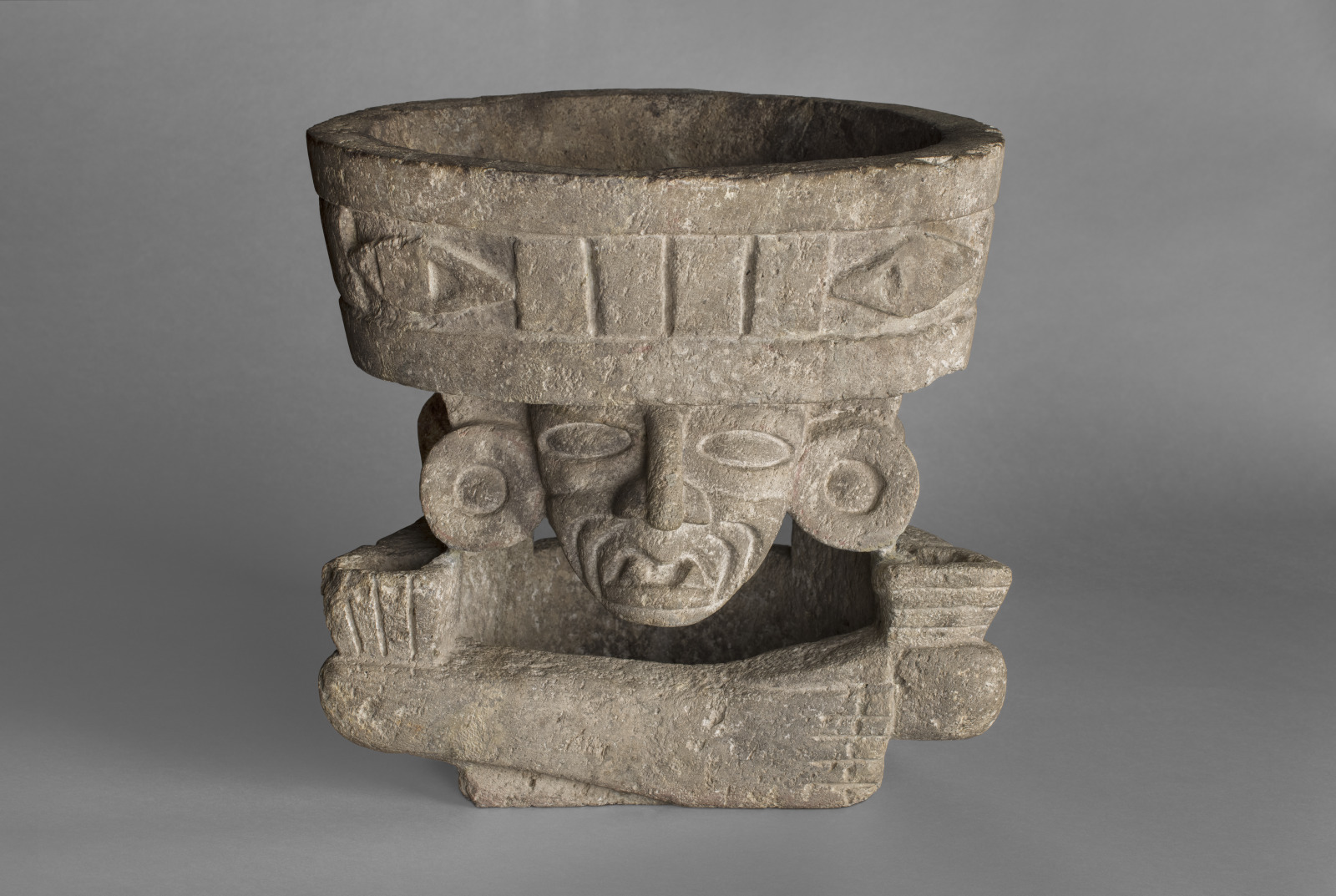
Brazier in the Form of the Old God, c.400–500; Teotihuacan, Mexico, Early Classic period; basalt; height: 17 1/8 x 18 1/8 inches; Saint Louis Art Museum, Gift of Morton D. May 206:1979
With sunken, wrinkled cheeks and snaggled teeth, this object depicts a character known as Huehueteotl or the Old God, one of the oldest deities of central Mexico. The basin on top of the head may have been used for keeping coals or incense hot. Roughly carved from local igneous rock, the figure and basin symbolically and materially compressed the fearsome power of the volcanoes that ring the Valley of Mexico into the thin, hunched body of an old man. Objects such as this one are found in large numbers at the site, indicating that the Old God was very important to all members of Teotihuacan society, from the rulers to the ruled. Often found on patios, braziers may also have been used in rituals when residents renovated their living quarters.
July 30, 2025
The Fan

Emil Carlsen, American (born Denmark), 1848–1932; The Fan, c.1919; oil on canvas; 15 1/4 x 18 1/4 inches; Saint Louis Art Museum, Museum Purchase 14:1919
This still life painting of a fan, bowl, and seed pods seems washed in cool light. The surface on which the objects rest and the background beyond them are mottled and indistinct, offering little sense of setting or place. By selecting such a simple subject for his composition, Emil Carlsen draws attention to the dry texture of the pods and bowl, the blue floral design adorning the fan, and its delicately shaped sticks.
July 29, 2025
Long Chair
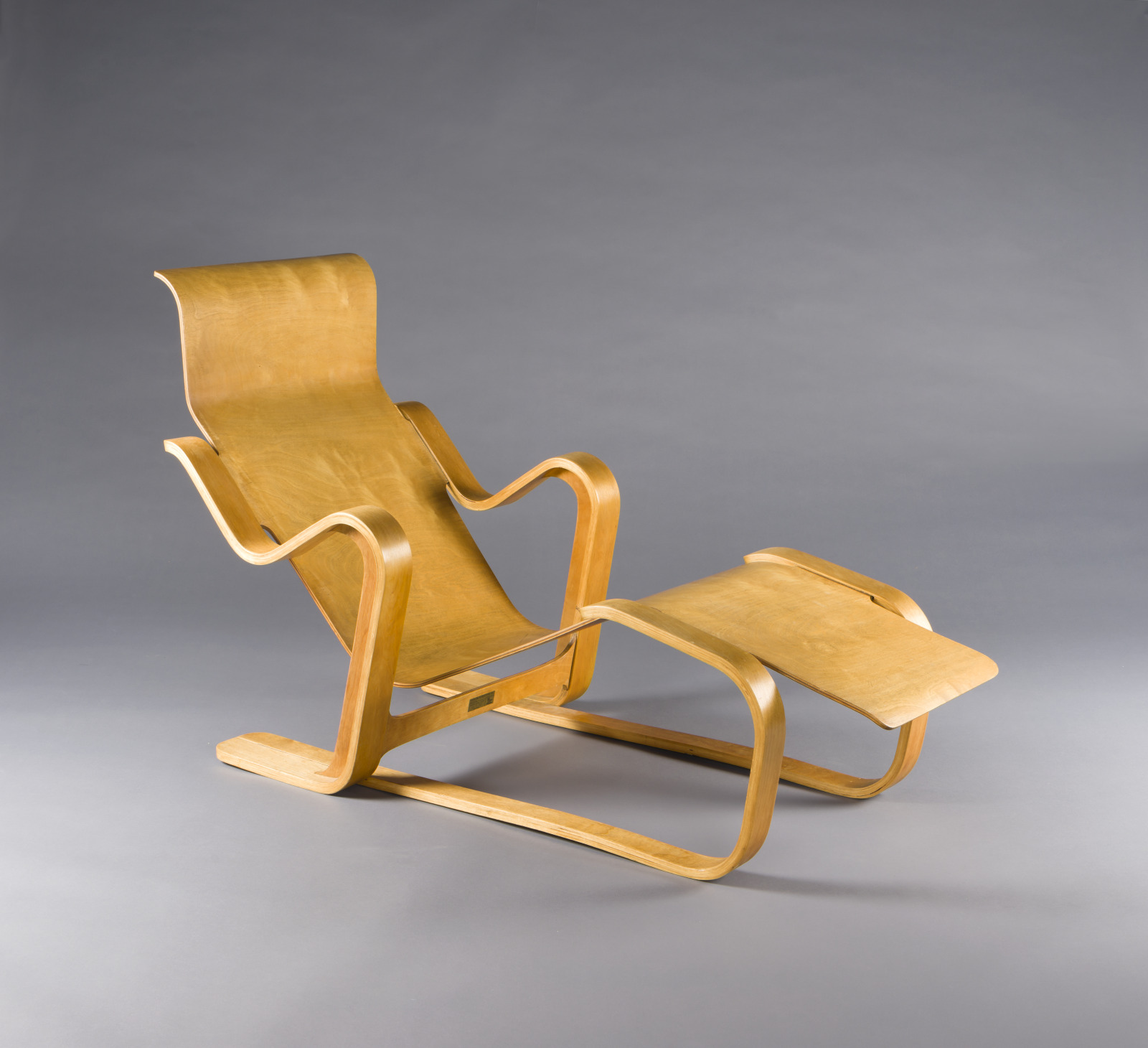
designed by Marcel Breuer, American (born Hungary), 1902–1981; made by Isokon Furniture Company, British, founded 1929; Long Chair, c.1936; molded laminated birch and birch plywood; 30 1/4 x 24 x 52 1/2 inches; Saint Louis Art Museum, Richard Brumbaugh Trust in memory of Richard Irving Brumbaugh and Grace Lischer Brumbaugh 31:2016
With its undulating seat and supports made of molded plywood, this lounge chair is innovative for its construction and ergonomic design. The chair offered the “scientific relaxation of every part of the body.” Architect Marcel Breuer is best known for developing chromium-plated steel tubing as a support for chairs and tables while he was an instructor at the Bauhaus school of architecture and design in Germany during the 1920s.
July 28, 2025
Birch Trees at Dawn on Lake George

Georgia O'Keeffe, American, 1887–1986; Birch Trees at Dawn on Lake George, 1925; oil on canvas; 36 x 30 inches; Saint Louis Art Museum, Gift of Mrs. Ernest W. Stix 14:1964
In this painting, curving, tubular shapes and light colors evoke not only breeze-struck birch trees in early morning light but the sensuous lines of the human torso as well. Georgia O’Keeffe developed a personal language of semi-abstract forms to suggest the moods of nature. Her in-laws kept a summer home at Lake George in upstate New York, which was the site for the imagery seen in this work.
July 27, 2025
Tiger

Takeuchi Seihō, Japanese, 1864–1942; Tiger, 1901; hanging scroll: ink and color on silk; scroll: 74 1/2 x 26 3/8 inches, image: 50 1/2 x 19 13/16 inches; Saint Louis Art Museum, The Langenberg Endowment Fund 140:2011.2
Takeuchi Seihō was a descendant of the Maruyama-Shijō school tradition of bird-and-flower painting. He became a highly influential and key figure of the Kyoto school of painting of the late 19th to early 20th centuries. He later became a founder of the modern Kyoto school of Nihonga. As a teacher, Seihō was without rival. His superb technique and aesthetic sophistication made him the leading artist of Kyoto for decades.
While traveling in Europe in 1900, Seihō developed a keen appreciation for the works of French painter Jean-Baptiste-Camille Corot and British artist Joseph William Mallord Turner. He utilized some of their Western aesthetic for his highly original early work upon his return in autumn of 1901. However, by the 1910s, Seihō fully returned to his Japanese roots, incorporating the focus on sketching from life (shasei) into his landscapes and celebrated animals studies.
July 26, 2025
Tomb Relief
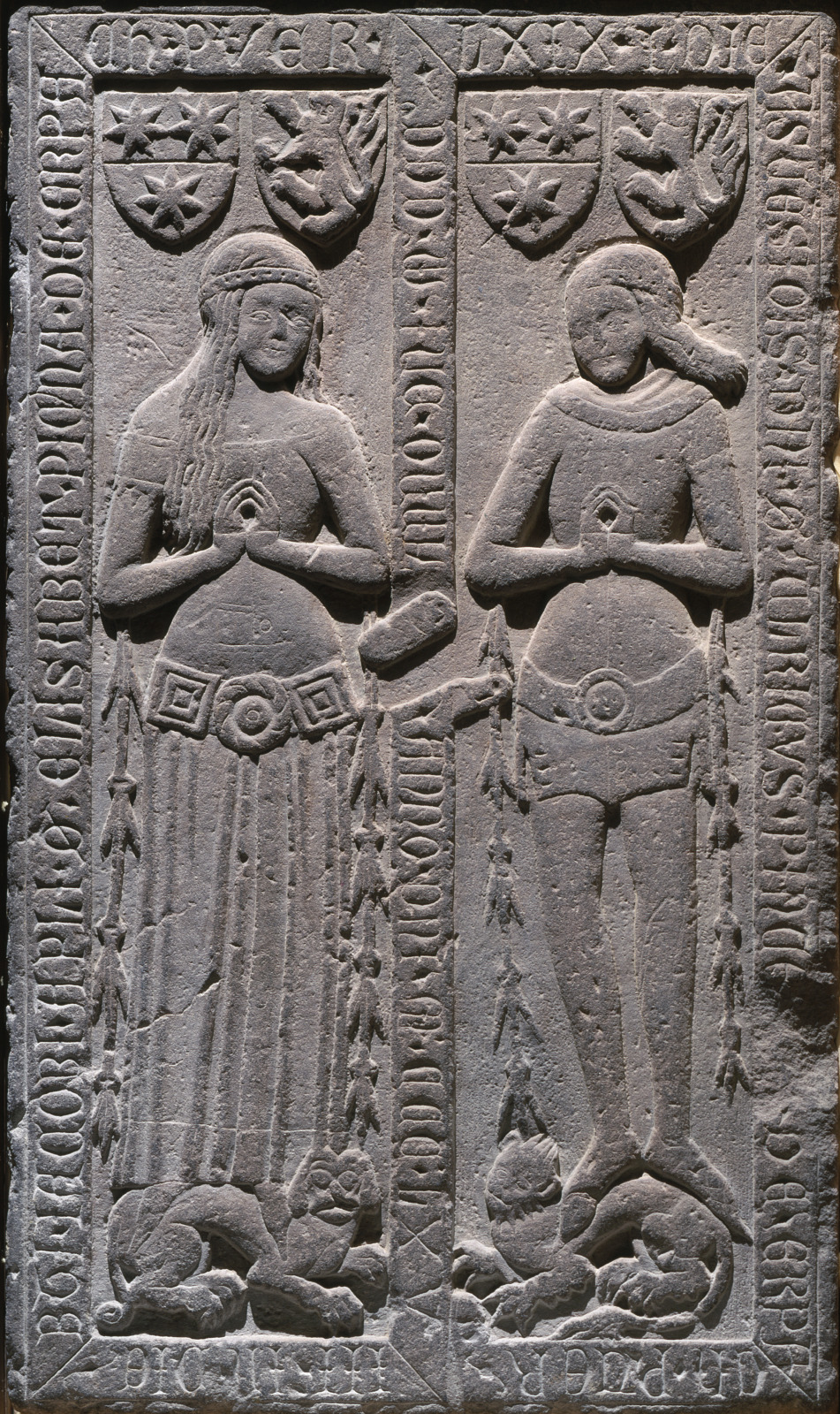
Tomb Relief, second half 14th century; German; red sandstone; 68 3/4 x 40 x 6 inches; Saint Louis Art Museum, Museum Purchase 95:1932
This tomb plaque commemorates Ulrich and Elisabeth von Erbach, the children of Count Eberhardt Schenck von Erbach and his wife Elisabeth. The plaque marked the tomb of both brother and sister, and is inscribed with their names and dates of death on a scroll that unfurls around them to form the border of the relief. Ulrich appears to be a youth, not old enough to be a knight, but perhaps in training, and thus his feet rest on a lion, an allusion to the heraldic symbol above his head and an artistic device representing strength and courage, virtues expected in a warrior. The young siblings are depicted in the height of civilian finery and 14th-century fashion.
July 25, 2025
An Island in the Lagoon with a Gateway and a Church
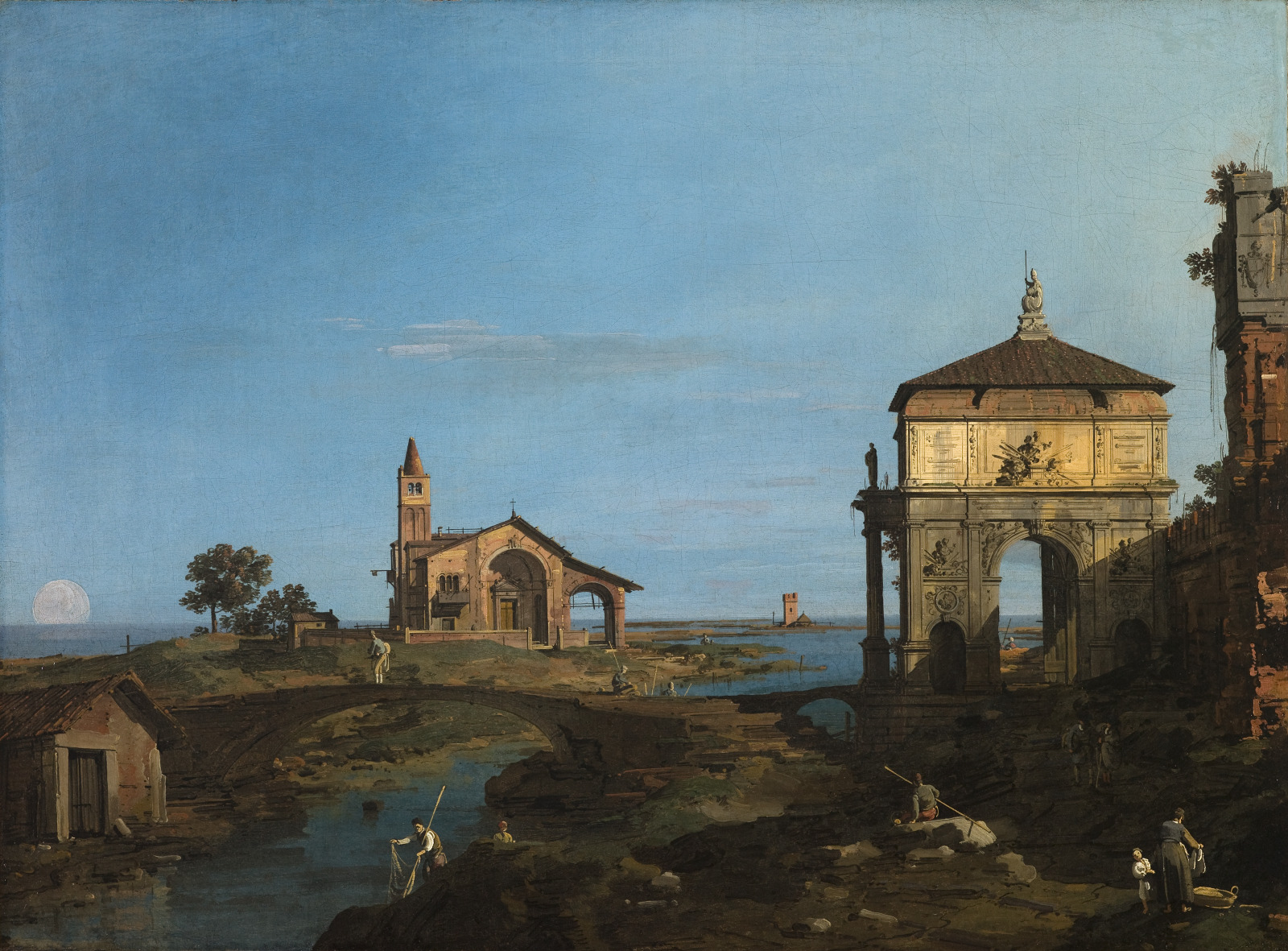
Canaletto, Italian, 1697–1768; An Island in the Lagoon with a Gateway and a Church, 1743–44; oil on canvas; 20 1/8 x 27 inches; Saint Louis Art Museum, Friends Fund 12:1967
Seemingly a painting of a specific spot on the Venetian lagoon, this picture is actually a fanciful confection composed of elements that Canaletto sketched during several walking tours near Venice. The painter has combined the lagoon with buildings from nearby Padua and a bell tower from yet a third location to create this subtly balanced poetic grouping of simple structures. A specialist in views of Venice, Canaletto sold his paintings to English travelers eager for mementoes of their Italian trips.
July 24, 2025
Cushion Cover for an Imperial Dais (kang) with Design of Floral Scrolls and the Eight Auspicious Symbols of Buddhism

Cushion Cover for an Imperial Dais (kang) with Design of Floral Scrolls and the Eight Auspicious Symbols of Buddhism, late 18th century; Chinese, Qing dynasty, Qianlong period; silk in tapestry weave (kesi) and couched gold thread; 39 5/8 x 53 3/4 inches; Saint Louis Art Museum, Museum Purchase 158:1916
This textile once covered a cushion for a dais or a raised platform in the residential quarters of the Qianlong emperor or members of his immediate family. The silk ground is tapestry woven in yellow, red, pink, white, greens, and blues. The design comprises a central medallion surrounded by a rectangular panel, which is outlined with rows of couched gold thread and separates the central field from the broad border.
The principal motifs are the Eight Auspicious Emblems, namely the umbrella, double fish, vase, flower, conch shell, endless knot, canopy, and Dharma wheel. These were initially introduced to China from India with Buddhism and became traditional symbols in the decorative arts. Each emblem has decorative ribbons fluttering to either side and is accompanied by a multitude of lotuses, peonies, and bats.
July 23, 2025
Praise for Elohim Adonai

Mark di Suvero, American, born 1933; Praise for Elohim Adonai, 1966; painted steel and timber; 22 x 30 feet; Saint Louis Art Museum, Funds given by Mr. and Mrs. Norman B. Champ Jr. 31:1967a-m; Courtesy of the Artist and Spacetime C.C.
A tetrahedron, or triangular pyramid, of four steel bars and two wooden timbers balances on a fixed vertical axis. This top component rotates when blown by the wind, providing the sculpture with a kinetic element. A pioneering figure, Mark di Suvero produces monumental outdoor sculptures that translate the slashing lines and vibrant colors of gestural abstraction into three-dimensional form. The artist, often seen as an Abstract Expressionist sculptor, has compared his works to “drawings in space.”
July 21, 2025
Reliquary
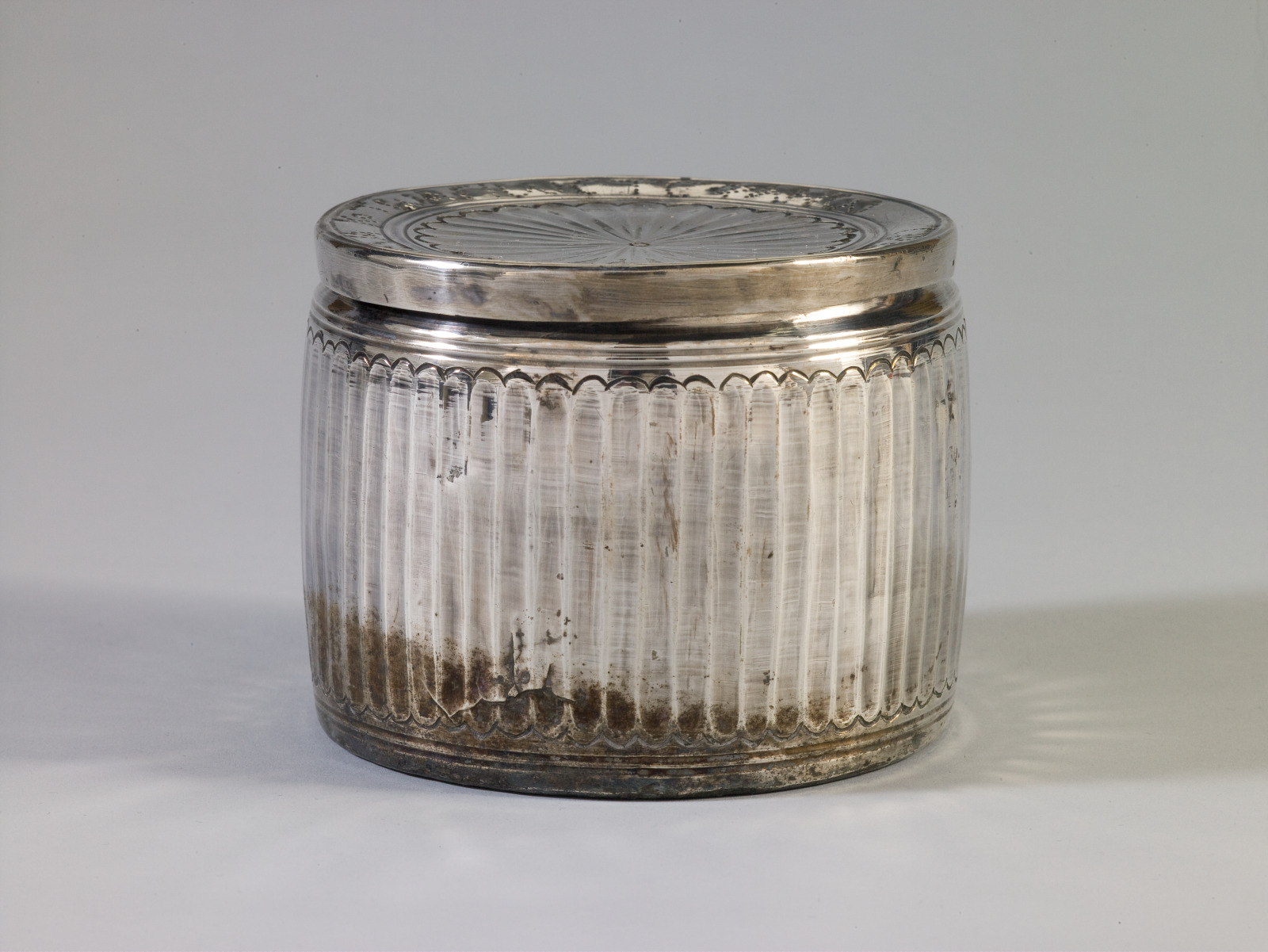
Reliquary, 6th–7th century; Byzantine, Syria; silver; 3 7/16 x 4 5/16 inches; Saint Louis Art Museum, Museum Purchase 44:1924
A rare example of Byzantine church silver, this reliquary, or container for holy objects, has a fluted body and a large rosette decorating the lid. Lathe-cut grooves define the flutes, or parallel channels, on the body and concentric grooves frame the rosette on top, creating a wide rim band. Within the band is a punched Greek inscription that could be translated, “Offering of TIBERINE, the deaconess, to St. Stephen.” The bottom has a graffito, or an inscription scratched into the silver, that repeats the first word of the lid inscription: “Offering: two pounds, two ounces, four grams.”
That the box actually weighs less than indicated by the inscription poses some interesting questions about whether that was the weight for a reliquary set, of which this is just one piece, or whether that was the weight before some of the box’s contents were removed. A more intriguing translation of the inscription might be “Offering of the Tiberine Dioconate to St. Stephen,” suggesting that the monastery of St. Symeon Stylites the Younger in Syria offered relics of that saint to a church or monastery bearing St. Stephen’s name.
July 20, 2025
Untitled (Bahia Series)
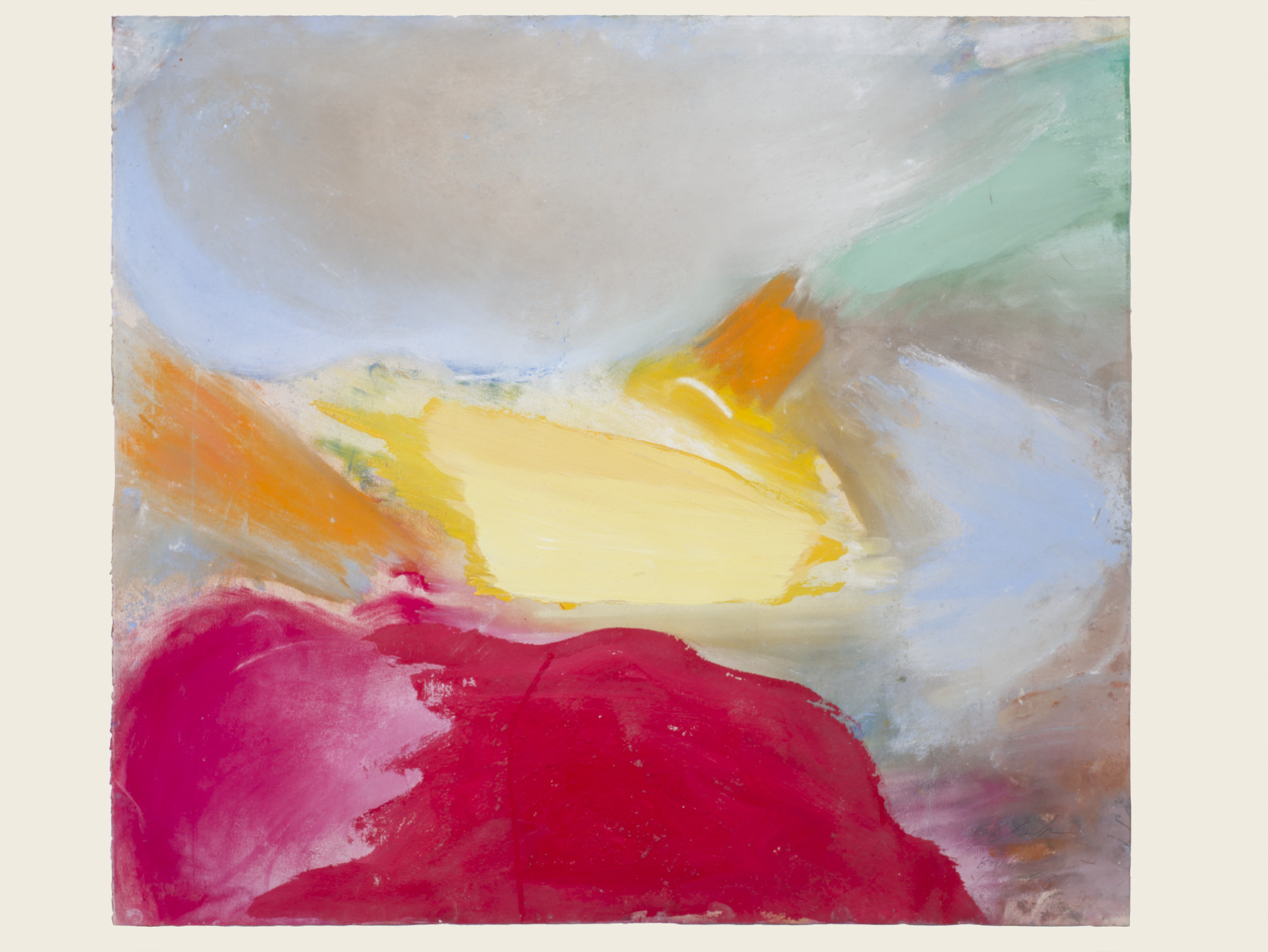
Ed Clark, American, 1926–2019; Untitled (Bahia Series), 1988; dry pigment and acrylic; 29 3/8 x 32 3/4 inches; Saint Louis Art Museum, The Thelma and Bert Ollie Memorial Collection, Gift of Ronald and Monique Ollie 130:2017; © Ed Clark / Michael Rosenfeld Gallery
Throughout Ed Clark’s work, the interplay of color is paramount. In Untitled (Bahia Series), layered and adjacent atmospheric fields of magenta, orange, yellow, and aquamarine create complex visual relationships. Clark often credits his environment as being the catalyst for new, unexpected chromatic explorations. Since 1971, he has completed multiple working trips abroad to Greece, Nigeria, Mexico, Martinique, Brazil, and China, among other locations, to inform his art. While in the Bahia region of Brazil, the area’s coastal light inspired a series of works including this one.
July 19, 2025
Steltman Chair

designed by Gerrit Thomas Rietveld, Dutch, 1888–1964; made by Gerard van de Groenekan, Dutch, 1904–1994; for Het Goede Meubel, Utrecht, Netherlands, active after 1964–c.1990; Steltman Chair, 1963; limed oak; 27 1/2 x 19 x 17 5/8 inches; Saint Louis Art Museum, Marjorie Wyman Endowment Fund 85:2000; © 2025 Artists Rights Society (ARS), New York / Beeldrecht, Amsterdam
Gerrit Rietveld’s Steltman Chair is furniture as sculpture. It features an asymmetrical configuration of identical wooden planks juxtaposed vertically and horizontally into a well-balanced composition. The chair’s dynamic sculptural form does not depend on new technologies or materials but on the artistic ideals of the De Stijl movement. This influential group of artists joined forces in Holland during World War I (1914–1918) around the monthly journal De Stijl. Whether in painting, sculpture, typography, design, or architecture, the work of De Stijl artists adhered to three prevailing principles: independent planar and linear elements; primary colors; and asymmetrical compositions. Rietveld was an early member of De Stijl, and toward the end of his life, he returned to the movement’s basic tenets when he designed this chair for the Steltman Jewelry Store.
To honor the retirement of Brent R. Benjamin, The Barbara B. Taylor Director, from March 23 through June 30, Object of the Day will feature a selection of 100 transformative works of art acquired during his 22-year tenure at the Museum.
July 18, 2025
Factories at Clichy

Vincent van Gogh, Dutch, 1853–1890; Factories at Clichy, summer 1887; oil on canvas; 21 1/8 x 28 5/8 inches; Saint Louis Art Museum, Funds given by Mrs. Mark C. Steinberg by exchange 579:1958
In this painting Vincent van Gogh focused on an expanse of factories billowing smoke into the air in the gritty, industrial suburb of Clichy, northwest of Paris. The scene is divided into three horizontal bands of fields, factories, and sky, while in the middle distance, two tiny figures—perhaps lovers—are visible in the field. Van Gogh’s ordered system of brushwork reflects his awareness of the recent pointillist experiments of French painters Georges Seurat and Paul Signac.
July 17, 2025
Standing Dog

Standing Dog, c.300 BC–AD 300; Colima, Mexico, Late Formative period; ceramic; 11 1/4 x 16 15/16 inches; Saint Louis Art Museum, Gift of Famous-Barr Company 39:1970
This portly dog is probably a techichi, a breed of hairless canine. Physical details, from the alert posture of the ears and tail to the wrinkles at the corners of the mouth, are evidence of the artist’s close observation. Numerous legends from ancient Mesoamerica suggest that dogs were companions of the dead on their journeys to the afterlife, making the inclusion of such sculptures in tombs understandable.
July 16, 2025
Coca-Cola Girl 25

Alex Katz, American, born 1927; Coca-Cola Girl 25, 2018; oil on linen; 72 inches x 12 feet; Saint Louis Art Museum, Gift of Robert Lococo 81:2024; © 2025 Alex Katz / Licensed by VAGA at Artists Rights Society (ARS), New York
Alex Katz painted this double portrait of a woman with blond hair gazing out toward the left of the picture. The pale tan and yellow tones of her skin and hair contrast with the solid-red background. Each view of her face is slightly different, suggesting the passage of time.
The image highlights Katz’s interest in pop culture and consumerism. It is part of a larger series of similar works that reference Coca-Cola: the color red evokes the soft drink’s iconic can, while the portrait alludes to the company’s advertising campaigns throughout the 20th century that featured a range of young women.
July 15, 2025
Daniel Interpreting to Belshazzar the Writing on the Wall
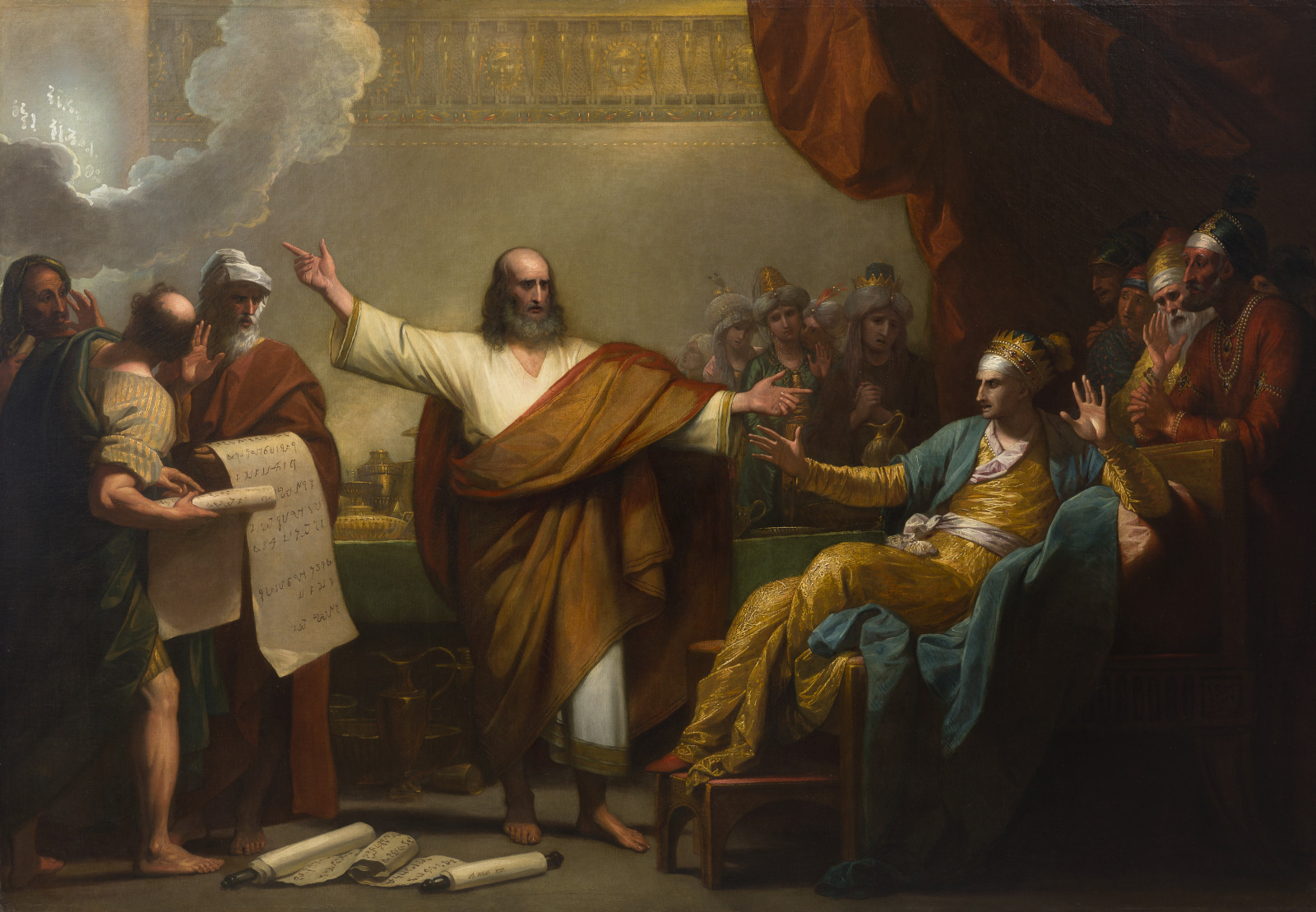
Benjamin West, English (born colonial North America), 1738–1820; Daniel Interpreting to Belshazzar the Writing on the Wall, 1775; oil on canvas; 50 3/4 x 73 1/2 inches; Saint Louis Art Museum, Funds given by Mr. and Mrs. John Peters MacCarthy and the Edwin and Betty Greenfield Grossman Endowment; Gift of Mr. and Mrs. John Alden Sears, by exchange 485:2018
The Jewish prophet Daniel commands this scene from the Old Testament. He gestures to a glowing inscription, at top left, that appeared on the wall during a feast hosted by 6th-century Babylonian king Belshazzar, reclining in blue and gold at right. In an act of sacrilege, Belshazzar had served food from sacred vessels stolen from the Temple of Jerusalem. Divine retribution was swift. Daniel explains that the inscription foretold the fall of Belshazzar’s empire, as he points at the approximation of Hebrew characters painted on the wall. Within hours, Belshazzar was dead. Benjamin West was the first American artist to achieve international fame in the 18th century. Born in Pennsylvania, he became the foremost history painter in England. West exhibited this painting in London just months before the American colonies declared their independence in 1776. As an American at the pinnacle of the British art world, West found himself in a precarious position. He hoped that Daniel’s message—a warning to a prideful king—would encourage viewers to act diplomatically rather than punitively towards their fellow citizens living in America.
Take a look at the painting’s transformation: Behind the Scenes in the Conservation Labs: Reviving a Benjamin West 18th-century painting.
July 14, 2025
Bactrian Camel
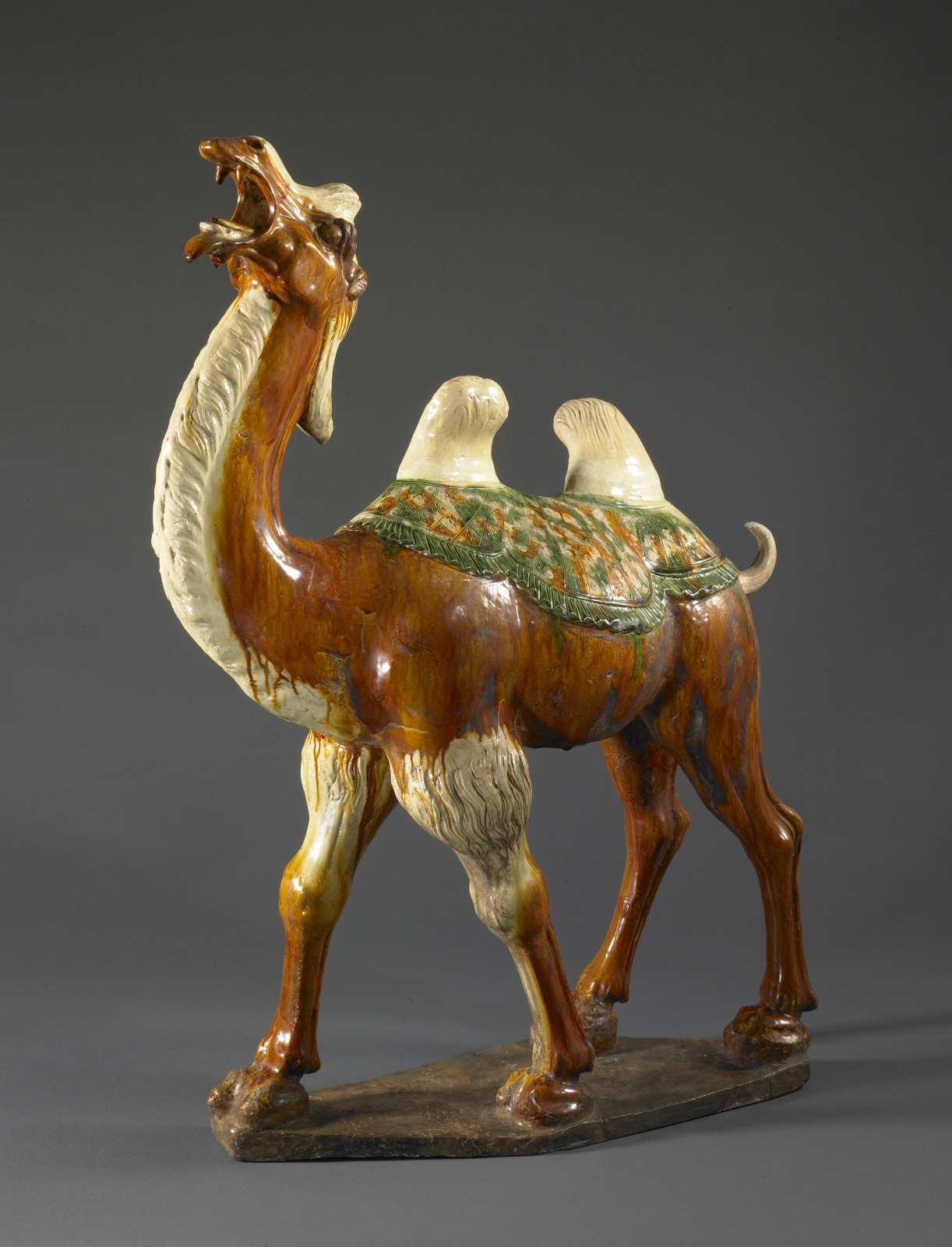
Bactrian Camel, 8th century; Chinese, Tang dynasty; earthenware with three-color (sancai) and transparent lead-fluxed glazes over white slip; 34 x 26 1/2 x 9 inches; Saint Louis Art Museum, William K. Bixby Trust for Asian Art 181:1942
This ceramic two-humped Bactrian camel was likely part of a set of objects placed in the tomb of an important person to signify wealth and position in society. The hollow sculpture was made by pressing thin sheets of earthenware clay into reusable, fired ceramic molds. Before the clay had completely dried, the sections were removed from the molds and details were incised and stamped onto them. Once the clay pieces were dry enough to support their own weight, they were joined together and attached to a flat base. The seams were trimmed, smoothed, and covered over with clay in preparation for glazing.
Glazes are a mixture of tiny crystals and ground minerals, which are added to create different colors. Tang dynasty tomb objects often have multicolored lead-fluxed glazes known as “three-color” (sancai) glaze, as in the vivid amber, straw, and green colors covering this camel. To apply the glaze, the object was first covered with a white slip (clay thinned with water). The glazes were then brushed, poured, or splashed over the piece and allowed to drip down before firing. When fired, the glazes melted into a hard, glasslike finish. Tang artists used lead glazes to create rich, smooth surfaces and added coloring oxides to create pure, bright colors.
Today’s object is featured in the Animals in Art Collection Guide, a self-guided audio experience for all ages.
July 13, 2025
Charity
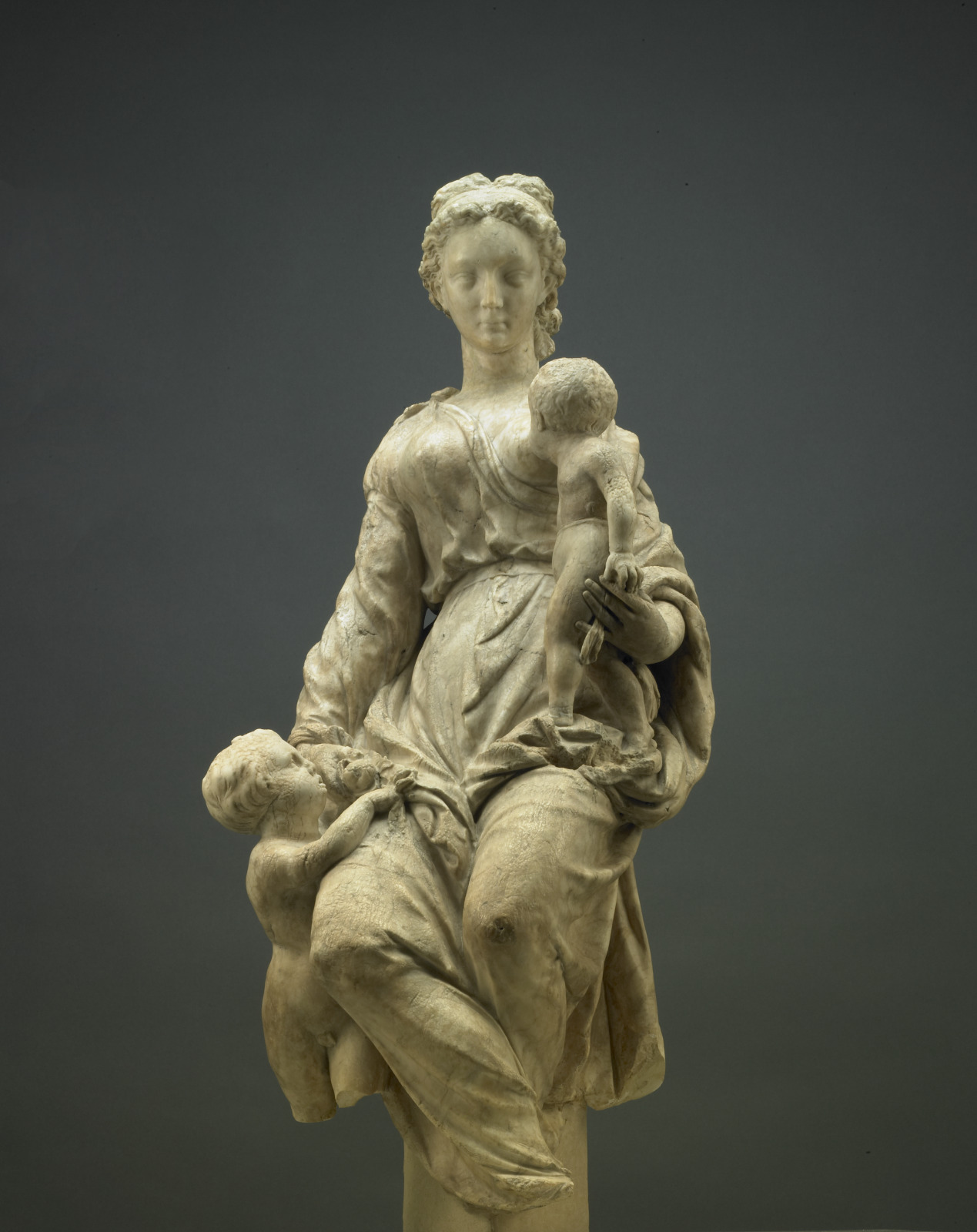
circle of Jacques Du Broeucq, Netherlandish, c.1505–1584; Charity, 16th century; alabaster; 24 x 11 13/16 x 7 1/16 inches; Saint Louis Art Museum, Museum Purchase 64:1928
Following the Renaissance convention for representing the virtue of Charity, this artist has presented a beautiful young woman who feeds one child and guides the other. Intricately carved with fine details such as curly hair, delicate facial features, and elegantly folded drapery, this figure is a wonderful example of sculpture produced in the southern Netherlands.
Models of Charity such as this served as an example for moral Christian behavior, selflessly giving to others in need. Charity was one of three theological virtues, along with Faith and Hope, endorsed by the Church.
July 12, 2025
Coverlet
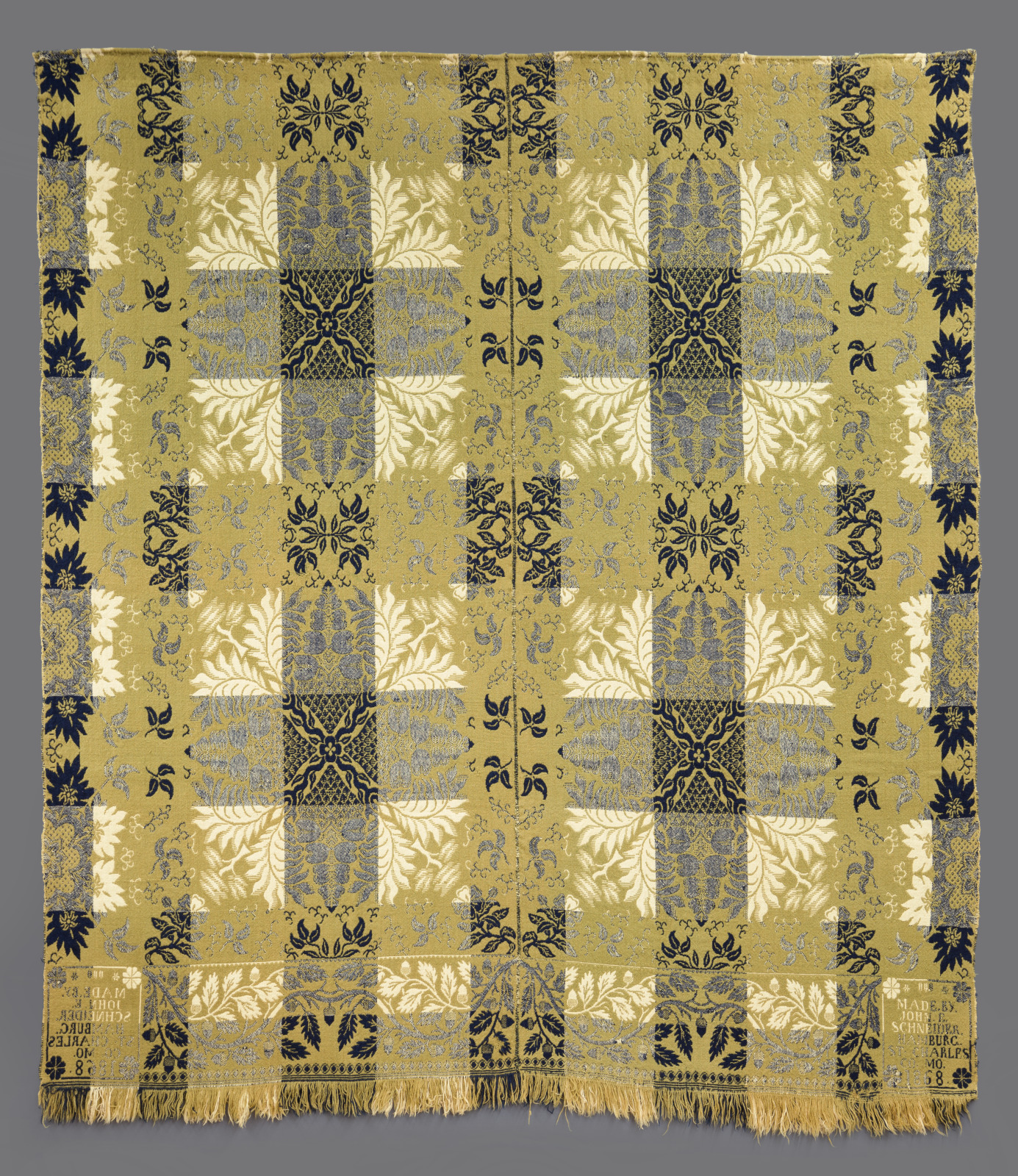
John Eusebius Schneider, American (born Germany), 1823–1903; Coverlet, 1868; wool and cotton; with fringe: 93 x 81 inches; Saint Louis Art Museum, Funds given by the Decorative Arts Society 61:1979
Filled with floral motifs, such as tumbling oak leaves and twisting vines, this coverlet represents the height of innovation and style in mid-19th-century textiles. The Jacquard loom attachment, a mechanical punch-card device that was cutting-edge technology at the time, made possible such intricate, large-scale patterns. John Eusebius Schneider was the first Missouri weaver known to have used one.
This coverlet’s combination of chrome green and dark blue is unusual. The choice of colors likely came from the clients who commissioned it. Or, possibly it was chosen by Schneider’s wife, Catherine, who spun and dyed the wool at their farm in St. Charles County, Missouri.
July 11, 2025
Apollo and Marsyas

Bartolomeo Manfredi, Italian, 1582–1622; Apollo and Marsyas, 1616–20; oil on canvas; 37 5/8 x 53 9/16 inches; Saint Louis Art Museum, Friends Fund Endowment and funds given by Mr. and Mrs. John Peters MacCarthy, Phoebe and Mark Weil, and Christian B. Peper 62:2004
The half-man, half-goat satyr Marsyas at left, paid dearly for his arrogance in thinking he could rival a god. He found a flute and learned to play it so well that he challenged Apollo, the ancient Greek god of music, on the right, to a contest. The victorious god cut off the satyr’s skin in punishment for his pride. The surprised look on Marsyas’ face, in shadow, contrasts vividly with the calm and illuminated demeanor of the god who coolly slices the creature’s flesh.
It is no accident that the earthbound satyr stands before a tree, symbolic of the woodland, while the god is silhouetted against the sky. Bartolomeo Manfredi may have been a student of the Italian artist Caravaggio, from whom he adapted the close-up format of the picture and the keen attention to tactile surface qualities evident in Marsyas’ fur loincloth.
July 10, 2025
Covered Vessel with Relief Design of Arabic Inscription in Kufic Script
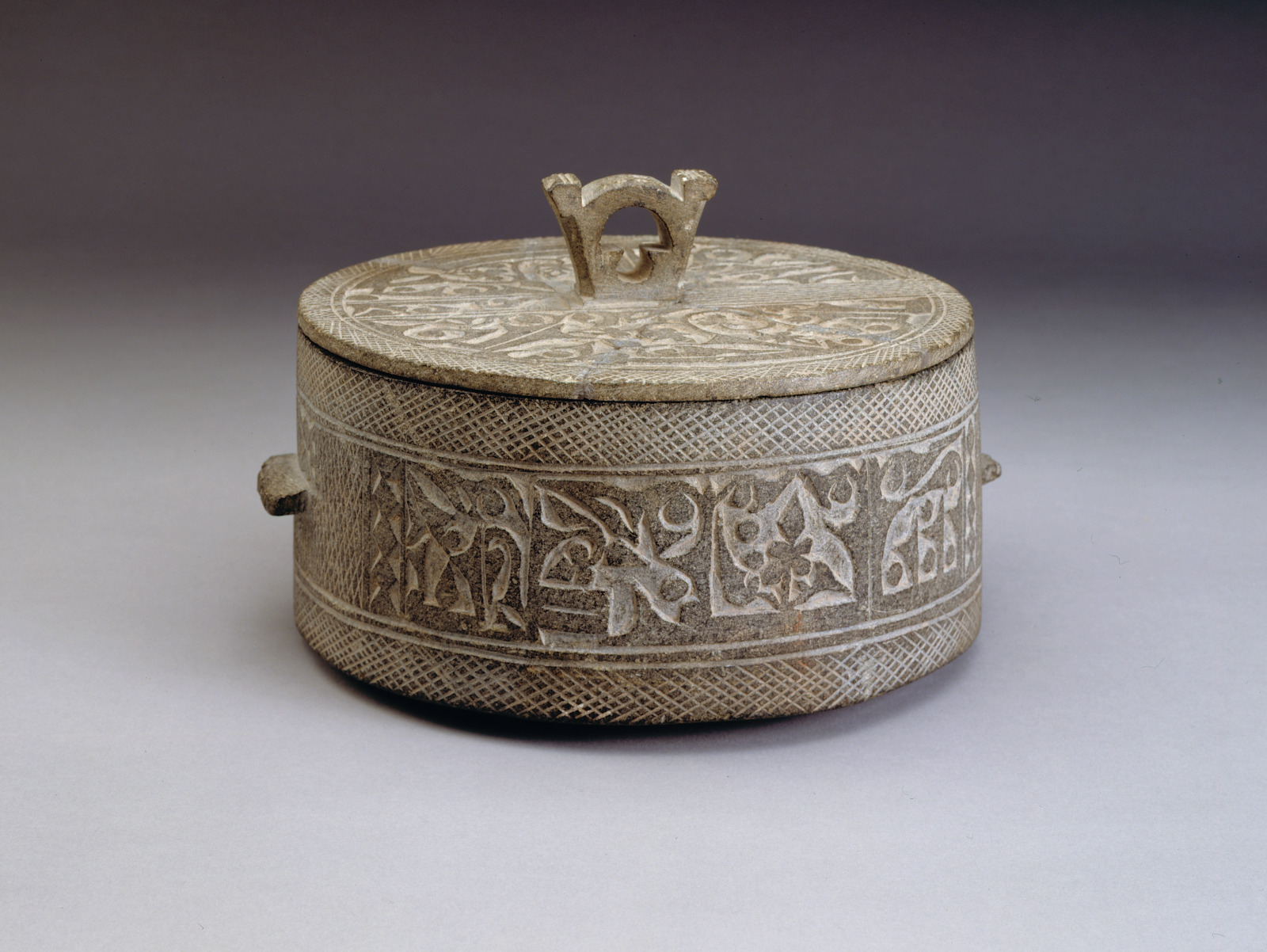
Covered Vessel with Relief Design of Arabic Inscription in Kufic Script, 10th century; Persian, Iran, Samanid dynasty; steatite; height with cover: 5 7/8 inches, diameter of cover: 8 5/8 inches, width across handles: 9 3/4 inches; Saint Louis Art Museum, Museum Purchase 71:1949a,b
Steatite vessels such as this one were used for cooking in the 9th–10th centuries in the northeastern Iranian city of Nishapur. Many small steatite objects have been excavated, but this is the largest complete vessel known. The stone is carved to form an Arabic inscription in relief, in an angular style known as Kufic. The tops of the taller letters end in leaves and flowers, a popular calligraphic device in the 10th century.
July 9, 2025
Interior and Exterior
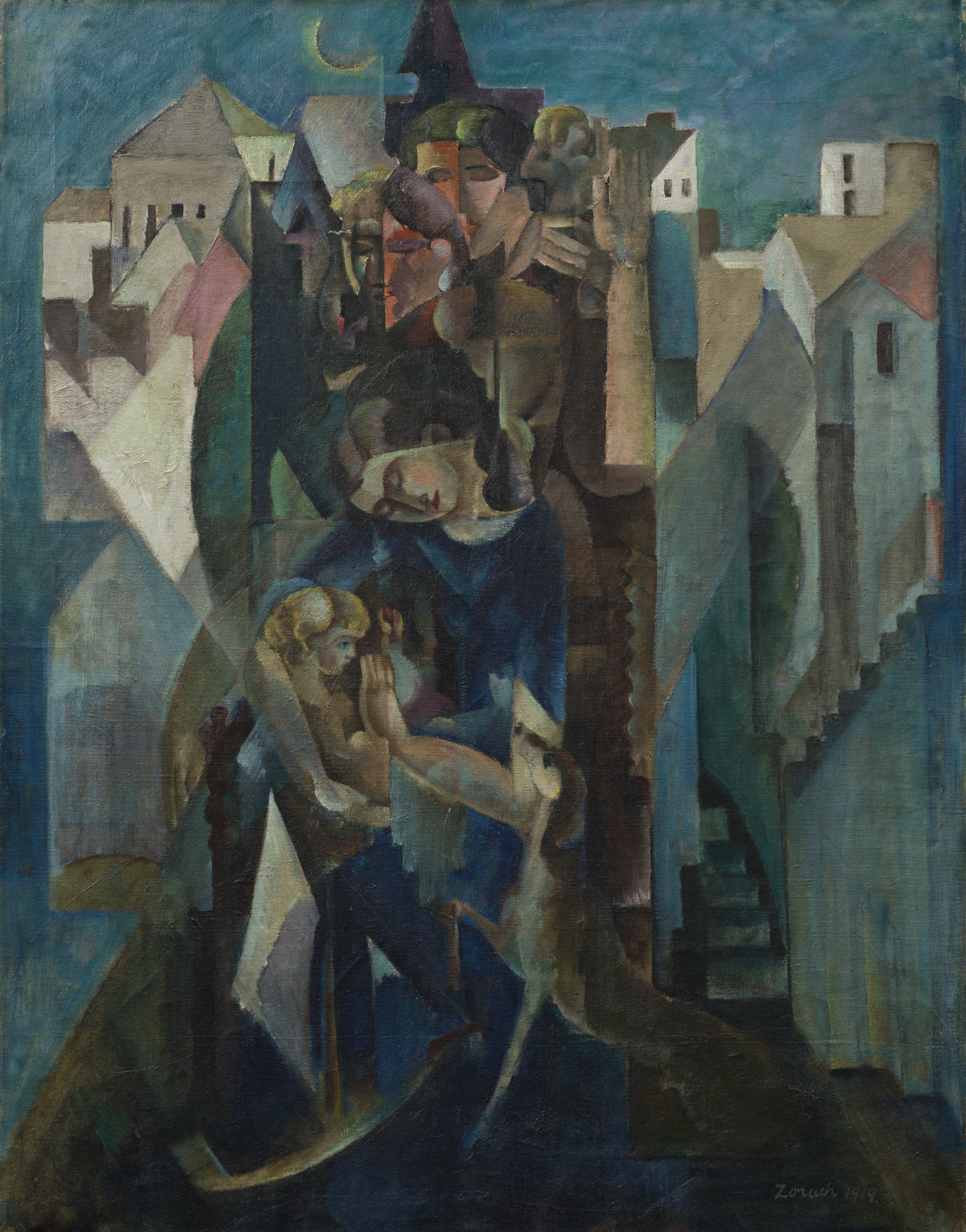
William Zorach, American (born Lithuania), 1887–1966; Interior and Exterior, 1919; oil on canvas; 35 1/2 x 27 1/2 inches; Saint Louis Art Museum, Gift of John and Susan Horseman in honor of Melissa Wolfe, Curator of American Art 301:2021
William Zorach wrote of Interior and Exterior, “this picture is of a mother and child in the interior of a house. It is a cubist conception where the mother’s activities with her child are portrayed simultaneously. You are looking at life in various forms combined with the exterior and interior of a city close at hand. It is a mystical interpretation of the life.” The compression of the mother’s various roles is created by reducing her body and activities into fragmented planes. This compositional process was originated by Cubist artists, whose works Zorach encountered during his study in Europe.
July 8, 2025
Flower Basket (hanakago) in the Form of a Double Gourd with Rootwood Stand
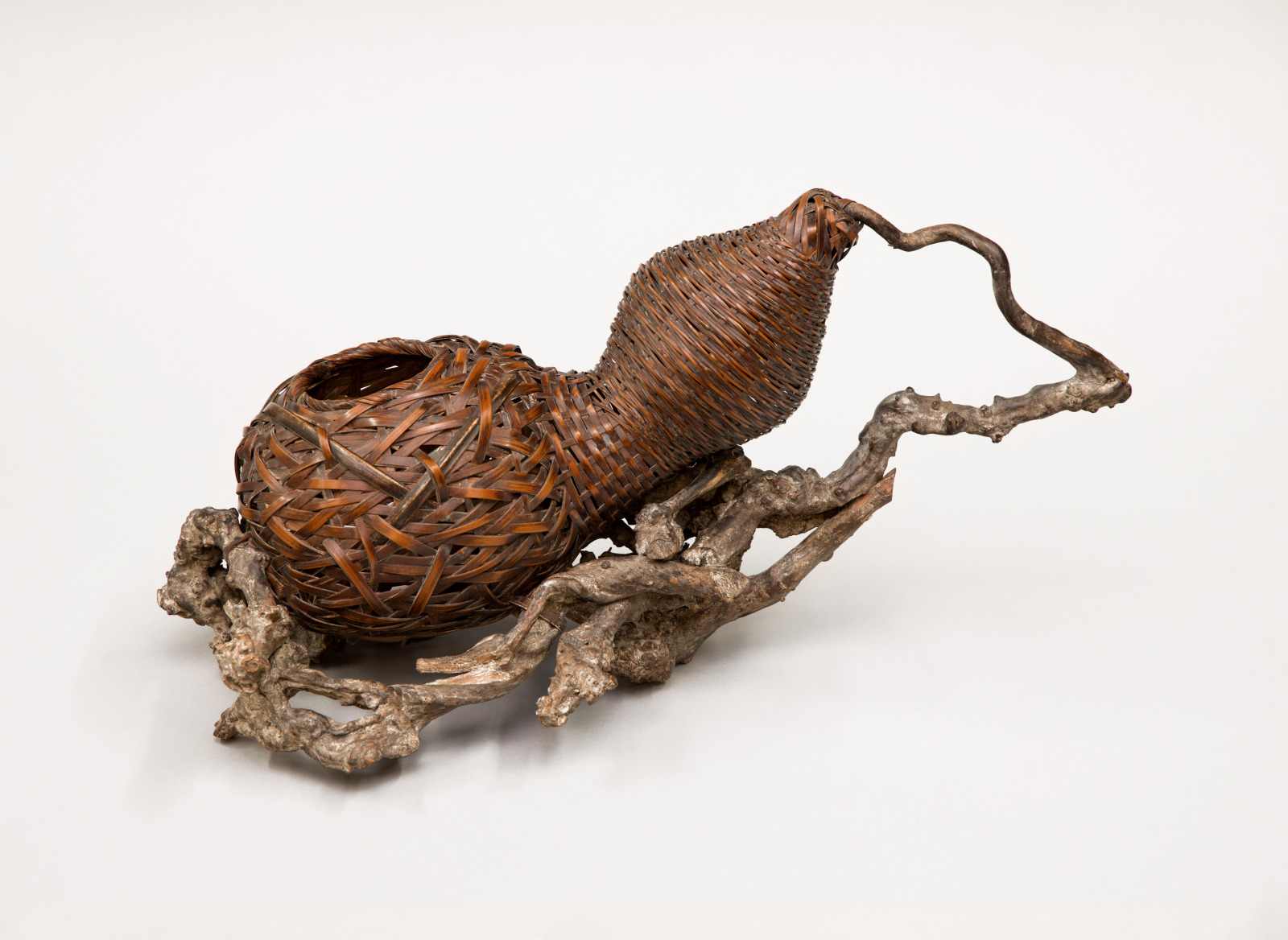
Flower Basket (hanakago) in the Form of a Double Gourd with Wood-root Stand, late 19th–early 20th century; Japanese, Meiji period, or Taishō period; bamboo, rattan, rootwood; 11 x 20 3/4 x 10 1/2 inches; Saint Louis Art Museum, The Nancy Jane Davidson Shestack Collection, bequest of Alan Shestack 232:2020
This bamboo basket is shaped like a natural double gourd. An opening in the larger section allows for the placement of a cylindrical insert to hold water and flowers. Several sections of gnarled wisteria root wood, secured to the basket with bamboo ties, form a stand while branching up and around the rear of the double gourd. Three main types of plaiting methods were used to produce this hand-split bamboo object: irregular plaiting (midare ami) in the larger section containing the opening; mat plaiting (gozame ami) in the constricted neck of the double gourd form; and pine-needle plaiting (matsuba ami) in the smaller section.
Bamboo baskets of this kind were used to display seasonal floral arrangements, often in connection with Japanese tea ceremonies. They would have been placed within an alcove space beneath a painting or calligraphy scroll that was appropriate for the season.
July 7, 2025
Armband

possibly Aitape artist, Papua New Guinea; Armband, 19th or 20th century; tortoise shell, pigment, plant fiber; 7 13/16 x 4 3/4 inches; Saint Louis Art Museum, Gift of Morton D. May 193:1975
The armband here is made of tortoise shell, a rare and precious material. This highly valued adornment circulated throughout the Sepik River valley. On the Papua New Guinea coast, men wore the bands on their arms, while in the Middle Sepik River region masqueraders attached the armbands to the backs of large ancestor masks for dancing. Armbands could be exchanged or given as a sign of friendship.
July 6, 2025
Untitled (El Morro)
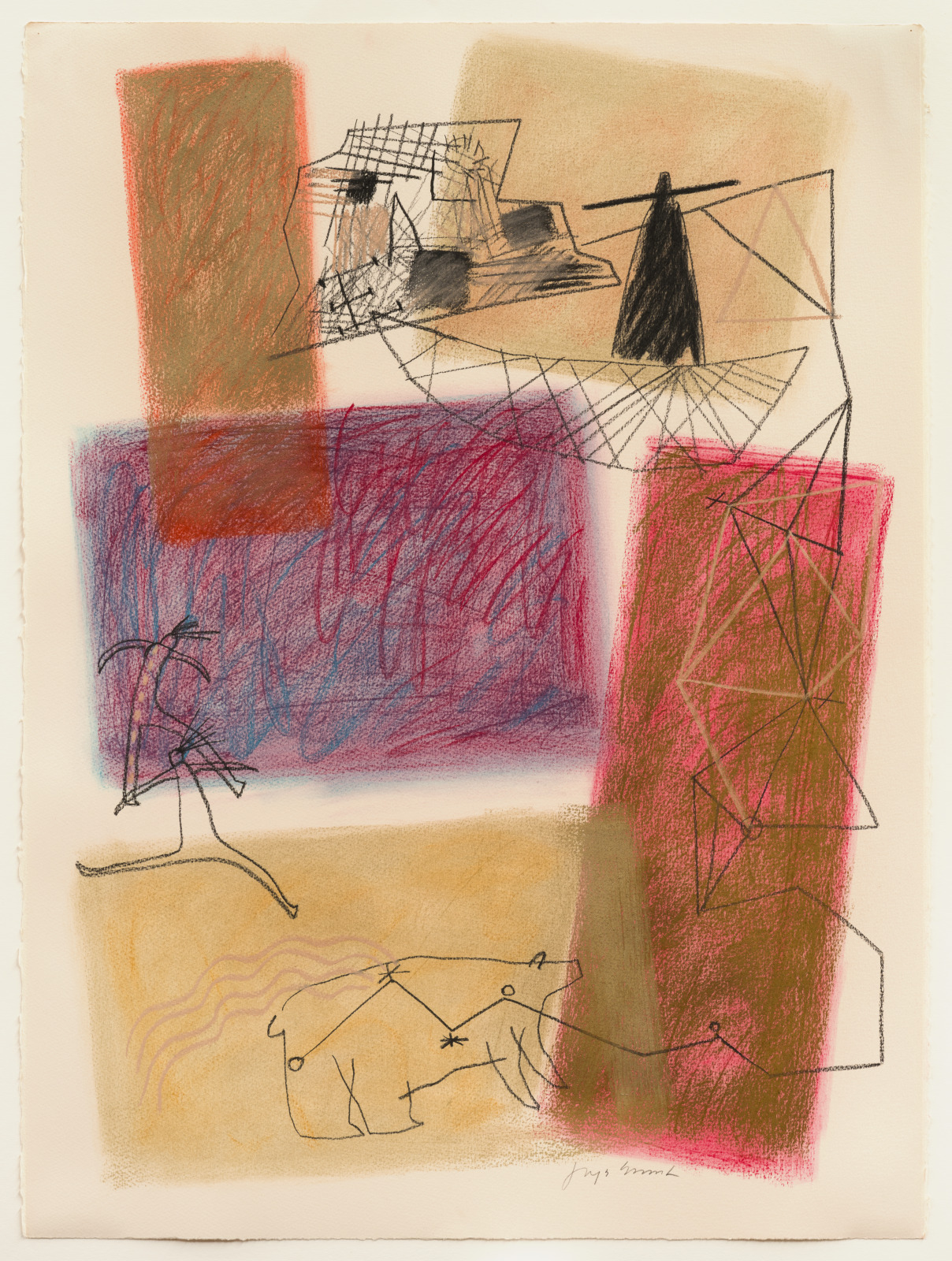
Jaune Quick-to-See Smith, enrolled Salish, Confederated Salish and Kootenai Nation, MT, 1940–2025; Untitled (El Morro), 1981; pastel; sheet: 30 x 22 inches; Saint Louis Art Museum, Gift of Garth Greenan 243:2023; © Jaune Quick-To-See Smith, Courtesy of the artist and Garth Greenan Gallery, New York
In this drawing from the early 1980s, lively pictographic scenes interlace fields of color. Scribbled tones form rectangular fields and divide the sheet in a series of zones. The gestural marks allude to the then-recent practice of abstract studio painting, while the pictographic images evoke ancient rock art from across the continent.
These works convey Jaune Quick-to-See Smith’s early interest in the entanglements of land, political history, and systems of visual representation. The title calls up western landscapes of the massive rock formations and petroglyphs of El Morro in western New Mexico.
July 5, 2025
Out the Window
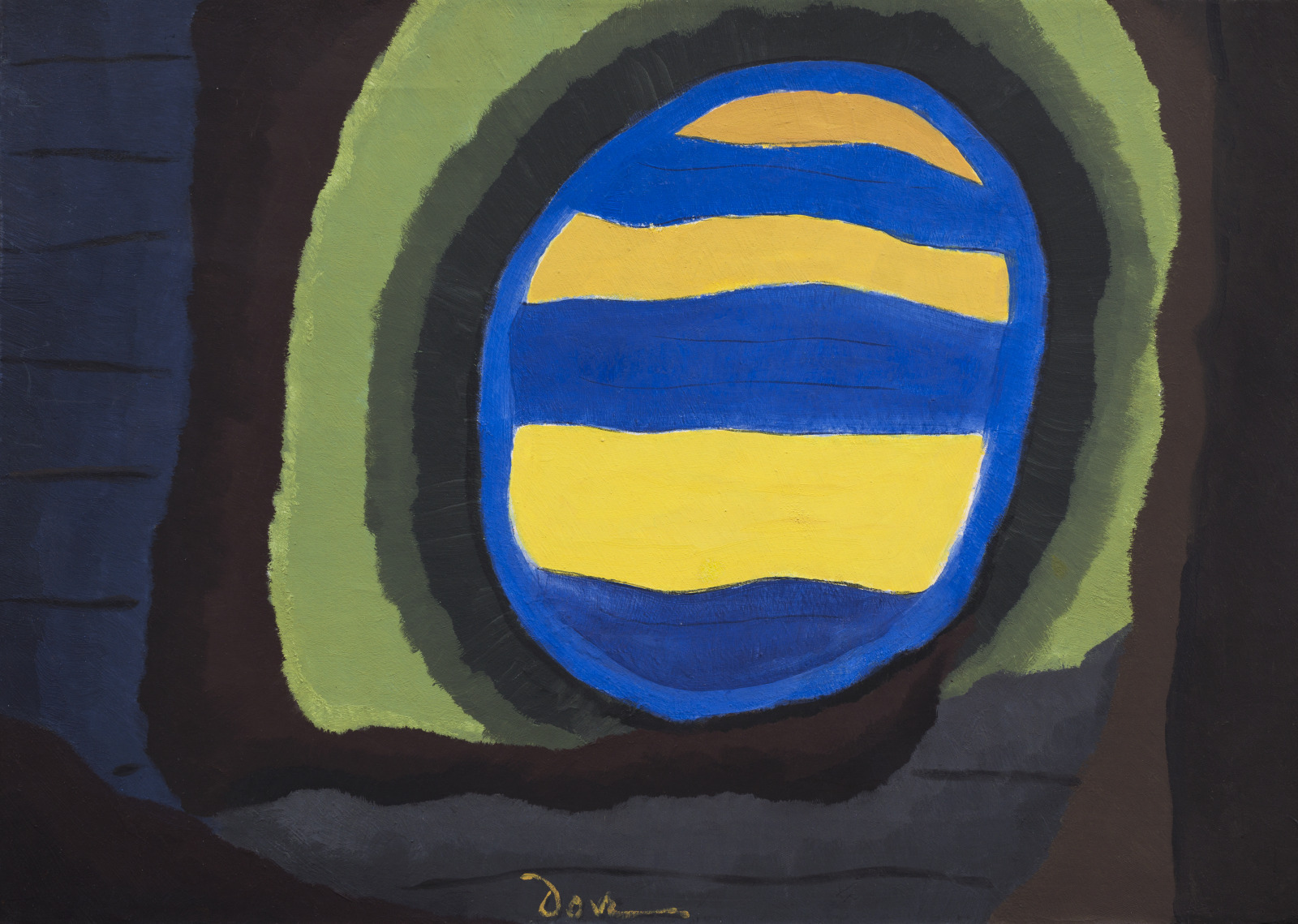
Arthur Garfield Dove, American, 1880–1946; Out the Window, 1939; oil on canvas; 15 1/4 x 21 1/4 inches; Saint Louis Art Museum, Museum Purchase 139:1965
Lines of blue and yellow contained by dark concentric circles mimic the view from a porthole and recall Arthur Dove’s experience living on a houseboat. Painted when he was in poor health, the image suggests the feeling of confinement. Dove was one of the first American artists to paint entirely abstract, non-representational works.
July 4, 2025
Pieced Quilt
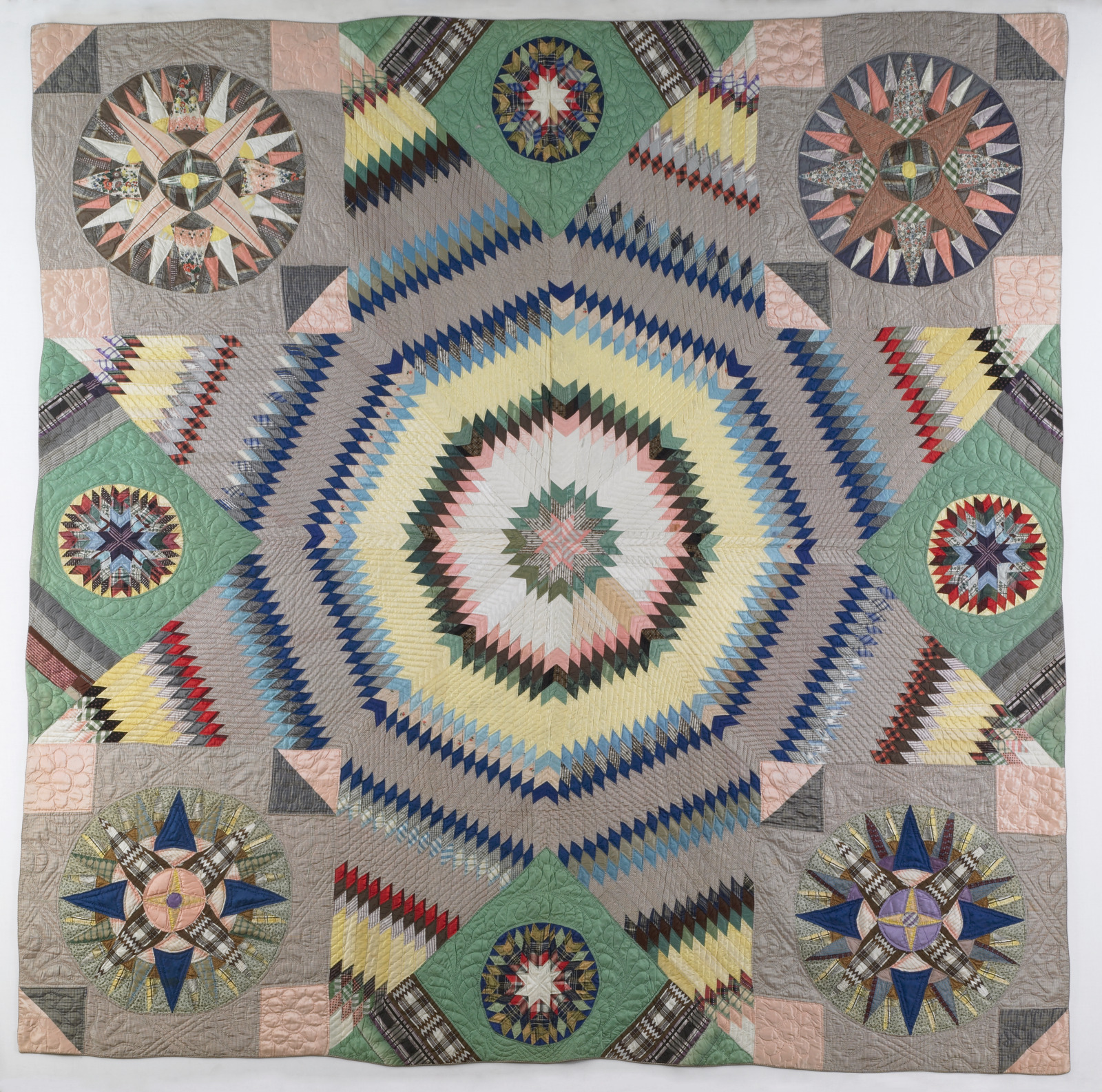
Susan F. Wyman, American; Pieced Quilt, 1850–60; silk; 85 x 87 inches; Saint Louis Art Museum, Gift of Mrs. Harry Langenberg 266:1948
This quilt features two motifs popular in the mid-19th century: the eight-pointed star in the center is the “Star of Bethlehem” pattern, and the “Mariner’s Compass” is seen in each corner. The quilt is in excellent condition because it was a silk “show quilt,” made to display the skills of its maker rather than for everyday use. The Star of Bethlehem requires advanced needlework skills to accurately sew the silk pieces together to complete the pattern. The Mariner’s Compass is also difficult due to its combination of sharp points and curved piecing set within a square.
A note on the back of the quilt states that it is made of 3,632 pieces of silk. It was cut, arranged, and quilted in seven weeks by Susan F. Wyman, when she was 71, as a present for her daughter, Rebecca H. W. Morton. At the time, Wyman lived in Hillsboro, Illinois, about 60 miles northeast of St. Louis.
July 3, 2025
The Three Princesses
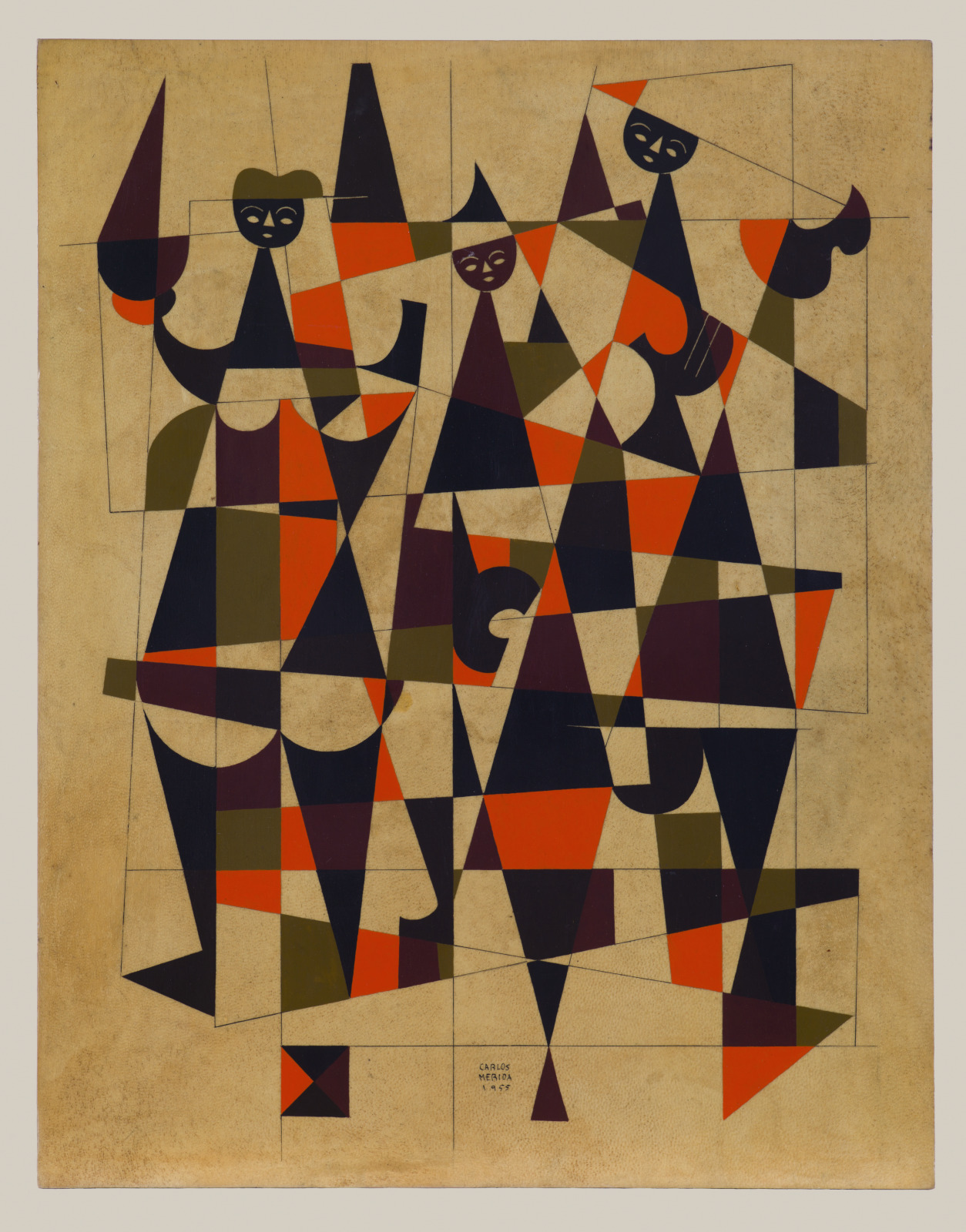
Carlos Merida, Guatemalan (active Mexico), 1891–1985; The Three Princesses, 1955; lacquer and casein on parchment mounted on laminated wood; 16 1/8 x 12 5/8 inches; Saint Louis Art Museum, Gift of Mr. and Mrs. Joseph Pulitzer Jr. 167:1959; © 2023 Artists Rights Society (ARS), New York / SOMAAP, Mexico City
In this composition, intersecting lines create an irregular grid of triangles, curves, and unique shapes. These colorful components form the bodies and clothing of three female figures. Artist Carlos Mérida advocated a type of abstraction based on the bold, geometric patterns and vibrant colors of Maya textiles and other Indigenous Latin American arts. Mérida, a Guatemalan artist who lived much of his life in Mexico, sought to establish a uniquely American form of abstract art in conversation with contemporary European artistic developments.
July 2, 2025
Ostend Fisherman

Constantin Meunier, Belgian, 1831–1905; Ostend Fisherman, 1890; bronze; 31 3/4 x 11 3/8 x 8 5/8 inches; Saint Louis Art Museum, Museum Purchase 54:1914
A fisherman in rubber boots, oilskin jacket, and hat opens his mouth as though shouting to a distant comrade. A marine ray at his feet suggests the nature of his profession. Constantin Meunier may have modeled this figure after laborers he observed at the wharf at Ostend, a Belgian coastal city. Meunier became well-known late in his career for sculptures of workers at docks, mines, and forges and in agriculture and domestic occupations. Despite this fisherman’s grueling employment, his upright posture and muscular physique lend dignity, even heroism, to his labor.
July 1, 2025
Lake at the Edge of a Forest

Paul Cezanne, French, 1839–1906; Lake at the Edge of a Forest, 1900–04; watercolor; 18 1/8 x 23 3/8 inches; Saint Louis Art Museum, Museum Purchase 52:1948
Paul Cézanne used his drawing materials sparely in his late watercolors as seen in this view of trees bordering a lake. He depicted the lake entirely with the negative space of the blank paper; he drew only the shorelines, allowing the body of water to be defined by its perimeter. Each individual brushstroke, even when layered with multiple transparent colors, remains clearly defined on the paper. The colors oscillate in the viewer’s eye between individual paintstrokes and constructed landscape.
This watercolor addresses many of these and other pressing questions about representation that the artist posed with his art throughout his long career. Although he exhibited early on with the Impressionists, like them, he was excluded from the art establishment of his own time until his final years. However, the abstract qualities of his art endeared him to generations who came after him, from the Cubists in the 1910s to Color Field painters in the 1960s.
June 30, 2025
Evolution in Flight
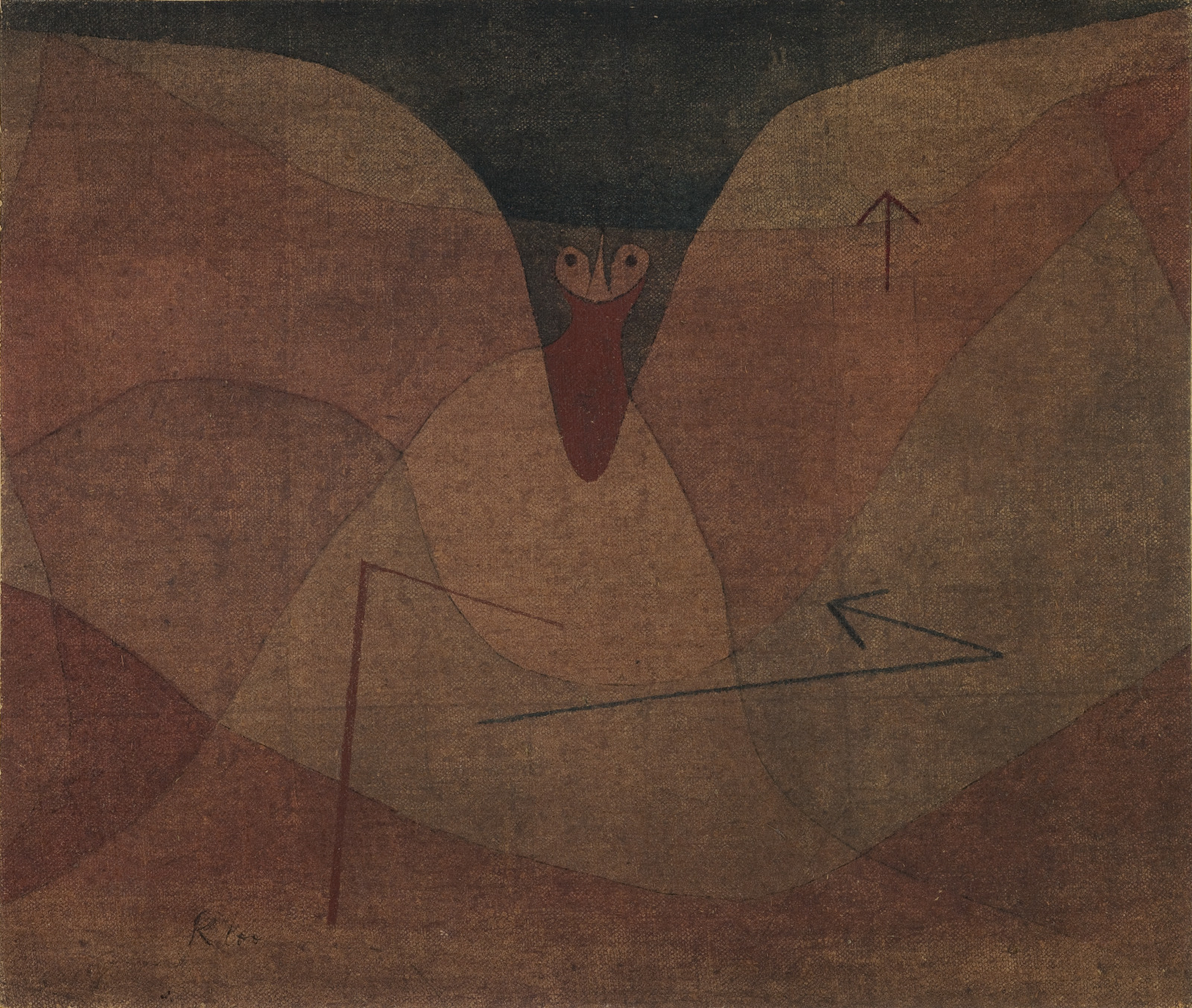
Paul Klee, German (active Switzerland), 1879–1940; Evolution in Flight, 1934; watercolor on canvas; 16 3/8 x 19 1/2 inches; Saint Louis Art Museum, Gift of Morton D. May 233:1954; © 2023 Artists Rights Society (ARS), New York
Paul Klee shows a bird in flight with a tiny head, deep red neck, and wide outstretched wings rendered in sweeping veils of color. The artist associated birds and their free movement with detachment from earthly concerns; he even compared them to angels. Klee used the coarser, reverse side of a commercially prepared canvas, contrasting its rough surface with thin, translucent paint glazes. Inspired by the drawings of children, Klee explored the unconscious as a means to access primal artistic impulses.
June 29, 2025
St. Helena and the Emperor Constantine Presented to the Holy Trinity by the Virgin Mary
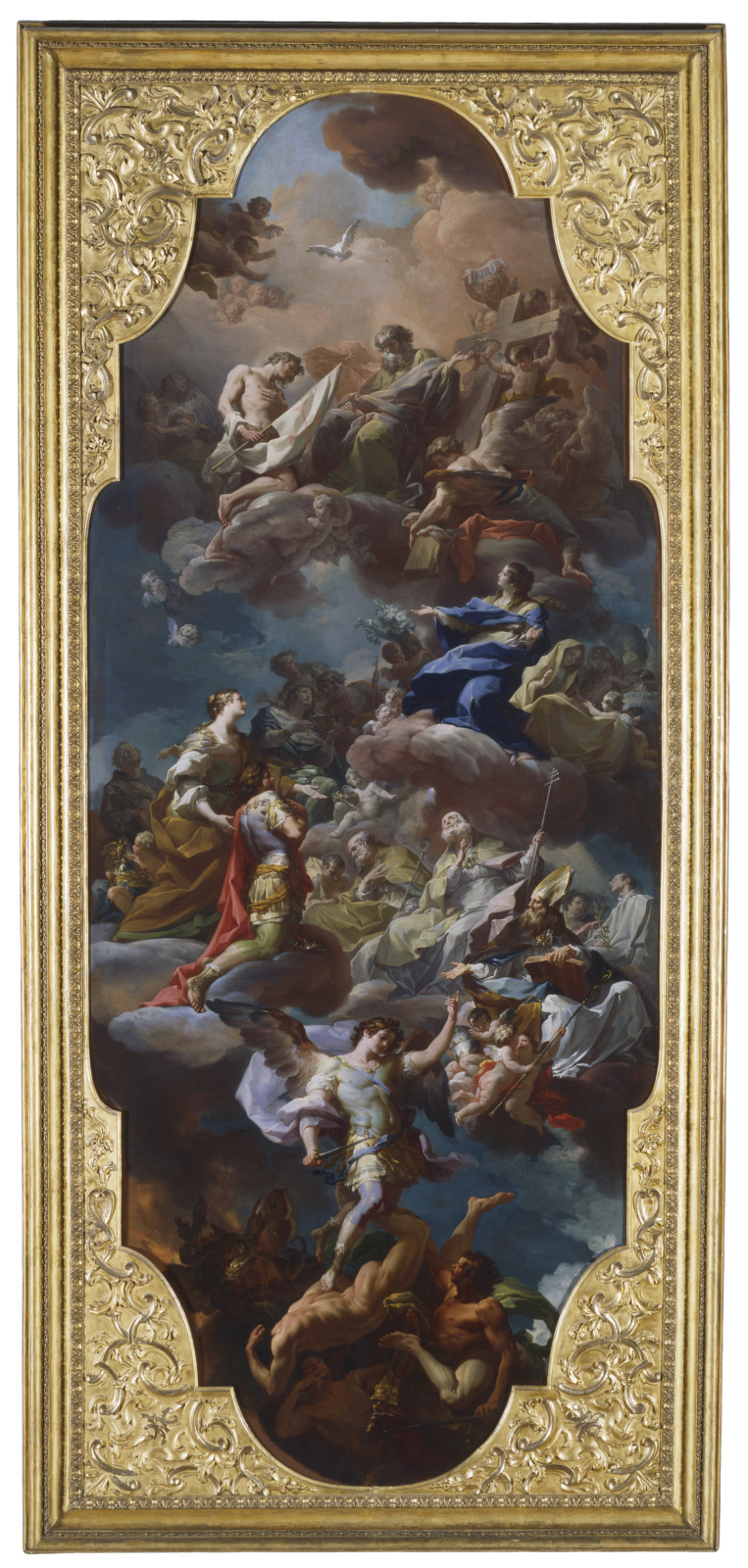
Corrado Giaquinto, Italian, 1703–1766; St. Helena and the Emperor Constantine Presented to the Holy Trinity by the Virgin Mary, 1741–42; oil on canvas; 137 1/8 x 56 3/4 inches; Saint Louis Art Museum, Museum Purchase 31:1963
This large sketch for a church ceiling is organized into three main groups of figures to make it comprehensible to viewers standing on the floor below. At the top, Jesus, the central figure of Christianity, holds a flag and kneels in front of a cross, a symbol of his death. Wearing bright blue in the middle, Mary looks up at her son, Jesus, as she beckons to St. Helena, kneeling at the left. The saint presents her own son, the emperor Constantine. In the lowest grouping, the archangel St. Michael vanquishes a group of heretics and topples Satan from his throne.
The artist presented this finished sketch to Pope Benedict XIV (1675–1758) for approval before painting the ceiling of the Church of the Holy Cross in Jerusalem, where his work can still be seen today. The painting was a part of the pope’s effort to refurbish the Roman basilica he served before ascending to the papacy.
June 28, 2025
Tureen

Thomas Fletcher, American, 1787–1866; Sidney Gardiner, American, 1785–1827; Tureen, 1817; silver; overall: 15 5/8 x 15 1/4 x 10 1/2 inches; Saint Louis Art Museum, Funds given by the Decorative Arts Society and the Eliza McMillan Trust 15:1974a,b
Thomas Fletcher and Sidney Gardiner designed this tureen for a dinner service that was presented to Commodore John Rodgers by the citizens of Baltimore to commemorate his defeat of the British at Fort McHenry in 1814. The design combines highly polished forms divided by bands of classical ornament. The tureen’s voluminous round body and the square plinth on which it rests are polished to mirror-like perfection. Atop the lid, a fruit finial erupts from a rosette of foliage. An appliqué of scrolls punctuated by winged masks and mythological beasts encircles the rim, while pairs of eagles’ heads support the handles. Bands of textured foliage enrich the flared moldings of the stem, and winged lions’ paws elevate the base. The combination of restrained geometric forms with rich ornament embodies a French style of silver design popular in the early nineteenth century.
June 27, 2025
Camaret, Moonlight and Fishing Boats
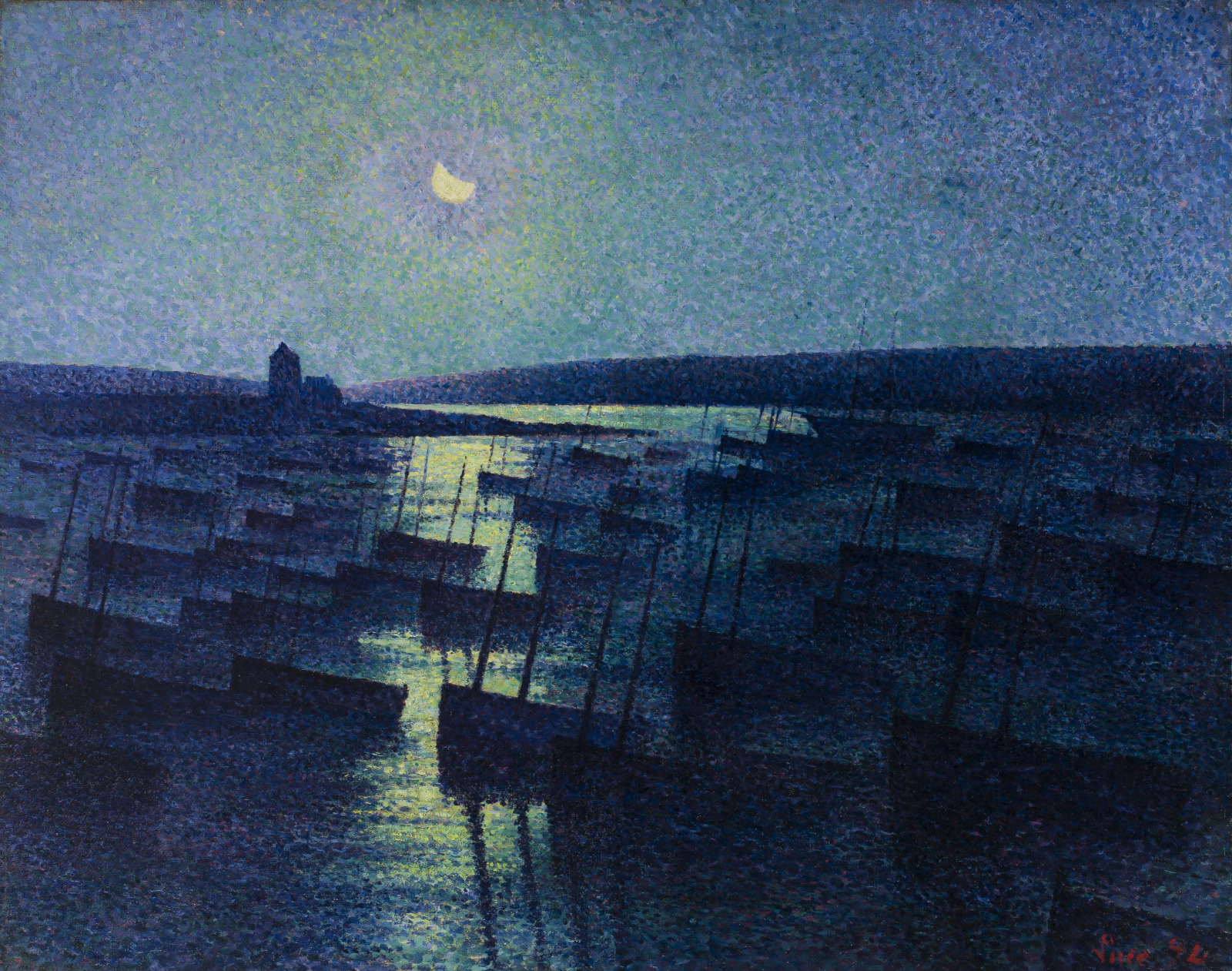
Maximilien Luce, French, 1858–1941; Camaret, Moonlight and Fishing Boats, 1894; oil on canvas; 28 1/2 x 36 1/4 inches; Saint Louis Art Museum, Museum Purchase, Museum Shop Fund, and funds given by Gary Wolff, the Stephen F. Brauer and Camilla T. Brauer Charitable Trust, the Pershing Charitable Trust, the Kate Stamper Wilhite Charitable Foundation, the William Schmidt Charitable Foundation, the John R. Goodall Charitable Trust, Nooter Corporation, Eleanor C. Johnson, Mrs. Winifred Garber, Hunter Engineering, the Joseph H. & Elizabeth E. Bascom Charitable Foundation, the Stephen M. Boyd Fund, Robert Brookings Smith, Irma Haeseler Bequest, BSI Constructors Inc., Mr. and Mrs. Thomas Latzer, Samuel C. Davis Jr., Dr. and Mrs. William H. Danforth, Mr. and Mrs. George Conant, Mr. and Mrs. Michael Cramer, Dr. and Mrs. David M. Kipnis, Mr. and Mrs. John O'Connell, Edith B. Schiele, and donors to the Art Enrichment Fund 29:1998
In this atmospheric nocturnal scene, Maximilien Luce painted the fishing port of Camaret in Brittany in the far west of France. The artist emphasizes a sense of geometric structure by repeating the diagonal lines of the boats while using a palette of blues and violets to offset the intense yellow of the moon. Luce turned to Pointillism as a technique in 1887 and became a prominent figure in this group of neo-Impressionists who meticulously built up their canvases with thousands of dots and flecks of paint.
June 26, 2025
Catskill Scenery
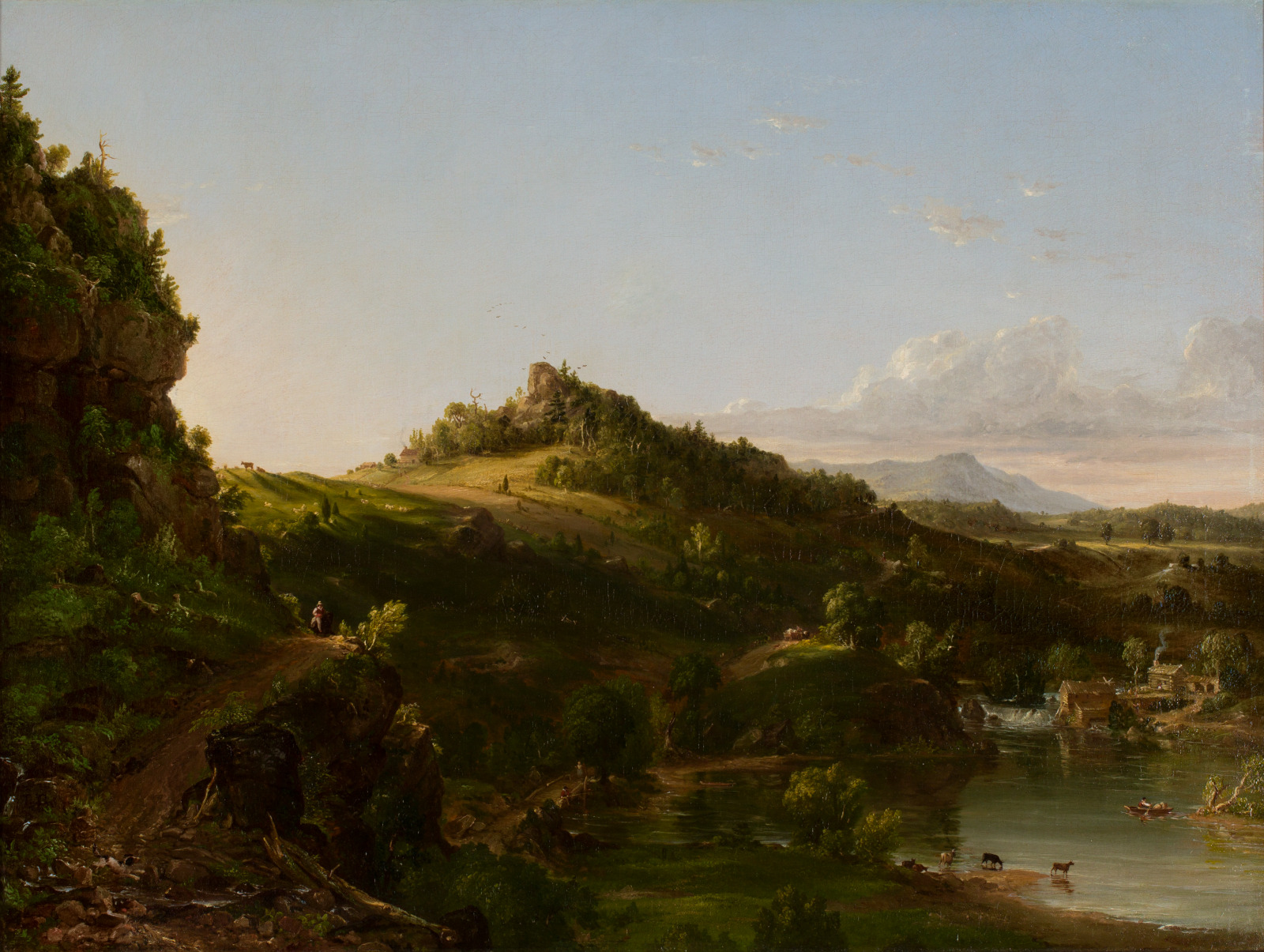
Thomas Cole, American (born England), 1801–1848; Catskill Scenery, c.1833; oil on canvas; 24 1/2 x 32 3/8 inches; Saint Louis Art Museum, Eliza McMillan Trust, Friends Fund, and funds given by Mr. and Mrs. John S. Ames and Miss Elizabeth Green, by exchange 105:1970
Thomas Cole made a career painting scenes of the most popular natural locations of the American northeast. Catskill Scenery combines the rugged wilderness terrain on the left with sure signs of encroaching civilization. The farmhouse in the distance and the wooden footbridge were commonly understood by viewers as emblems of the nation’s progress and America’s economic potential.
June 25, 2025
New York Harbor
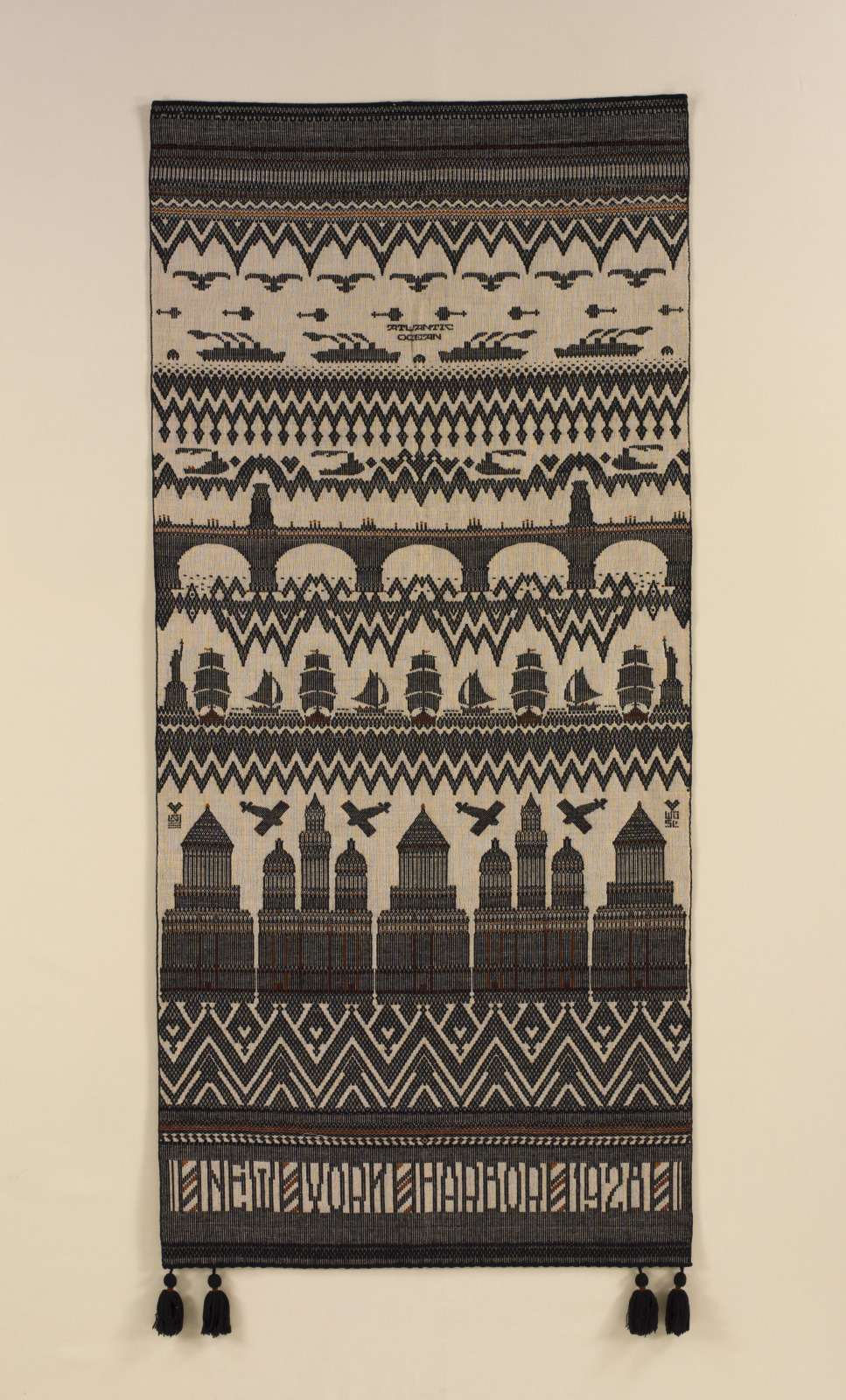
Lillian Glaser, American, 1888–1931; New York Harbor, 1928; wool and linen; 60 1/4 x 27 5/8 inches; Saint Louis Art Museum, Gift of the Weavers' Guild of St. Louis 141:1952
Symbols of modernity—ocean liners, airplanes, and skyscrapers—intermingle with old-fashioned sailboats and bridges in this stylized view of New York Harbor from 1928. Lillian Glaser, a native of Belleville, Illinois, wove this pictorial textile on a handloom, a slow and technically complex process. Glaser taught weaving at Washington University in St. Louis and was a founding member of the city’s Weavers’ Guild. She likely envisioned the design for this wall hanging on a 1925–26 leave of absence to pursue her artistic education in New York.
June 24, 2025
Ebco Na
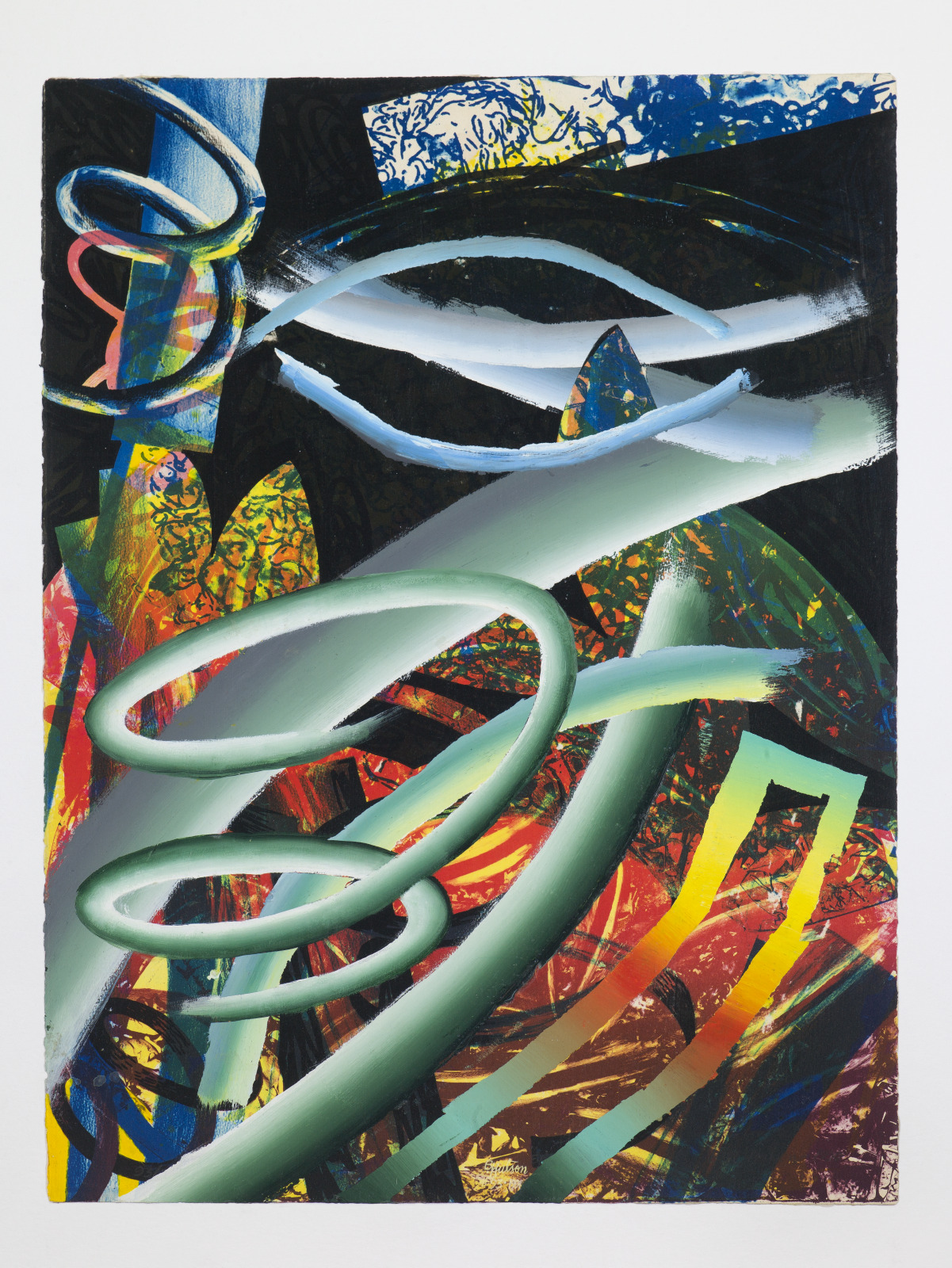
Bill Hutson, American, 1936–2022; printed by Brandywine Workshop, Philadelphia, Pennsylvania, founded 1972; Ebco Na, 1990–91; offset lithograph with acrylic; sheet: 29 7/8 x 21 7/16 inches; Saint Louis Art Museum, The Thelma and Bert Ollie Memorial Collection, Gift of Ronald and Monique Ollie 160:2017; © Bill Hutson
This work’s floating spirals, arcs, and leaf-like shapes are both printed and painted. Bill Hutson is inclined to revise his own compositions and paint on unconventional supports. After returning from Brandywine Workshop with a stack of impressions of the offset lithograph Ebco Na and responding to cues from the underlying image, he applied acrylic to create several variations, of which this is one. A staining method is coupled with hand-brushed marks—thick, linear accretions of finely blended color—evoking depth.
June 23, 2025
Candelabra

designed by Bruno Paul, German, 1874–1968; associated with Vereinigte Werkstatten fur Kunst im Handwerk, Munich, Germany, 1897–1991; made by K. M. Seifert & Co., Dresden-Löbtau, Germany; Candelabra, 1901; brass; 17 1/8 x 27 1/8 x 9 inches; Saint Louis Art Museum, Museum Shop Fund 169:1995
This candelabra for 13 candles is often compared to the fanned tail of a peacock when the arms are aligned in this position or to a branching tree when they are rotated. Despite these subtle references to nature, the conical candle sockets and base are ornamented only with lines. They mark a departure from other Jugendstil, or Youth Style, designs that more directly imitate organic forms. Designer Bruno Paul was among the architects, craftsmen, and manufacturers who formed the Vereinigte Werkstätten für Kunst im Handwerk, or the United Workshops for Art in Craft. The United Workshops sought to produce affordable modern design and advance the stature of German art industries.
June 22, 2025
Moonlight Coastal Scene

Robert Salmon, American (born England), c.1775–c.1851; Moonlight Coastal Scene, 1836; oil on panel; 16 5/8 x 24 1/4 inches; Saint Louis Art Museum, Museum Purchase and funds given by Mr. and Mrs. Duncan C. Dobson, the Eliza McMillan Trust, and anonymous donors in memory of Henry B. Pflager 95:1973
Moonlight permeates moist sea air, infusing this port scene with a quiet solitude and sense of mystery. Fishermen tend to practical tasks, while, in the background, a lighthouse rises from the sea to guide the large merchant ships safely around the rocky coastline.
Robert Salmon had a studio overlooking Boston harbor during its peak as a trade center. Born in a port city in northwest England, Salmon became Boston’s leading maritime painter while living in the city from 1828 to 1842. Nearly all of his recorded patrons had connections to Boston’s shipping industry. Some were makers of boats or sails, while others were wealthy merchants, engaged in trading commodities that moved through the port from all parts of the globe.
June 21, 2025
Vase

designed by Vlastislav Hofman, Czech, 1884–1964; made by Rydl & Thon, Bohemia, 1907–1932; workshop of Artel Cooperative, Prague, Czechoslovakia, active 1908–1935; Vase, 1914; glazed earthenware; 12 1/2 x 7 9/16 x 6 13/16 inches; Saint Louis Art Museum, Funds given by Emily Rauh Pulitzer 40:2001
The shape and decoration of this vase are based entirely on the triangle. Its hand-painted, black zigzag patterns struck against a light background animate the angled planes and accentuate the vase’s diagonal thrust. Created as sculpture, the vase’s dynamic form took precedence over function or refinement of execution.
In the early 20th century, an avant-garde group in Prague founded the Artel Cooperative, an association of experimental craft workshops. Vlastislav Hofman, an architect, designer, painter, and occasional costume and set designer, created several ceramic works for Artel, including this imposing vase.
June 20, 2025
Reclining Pan
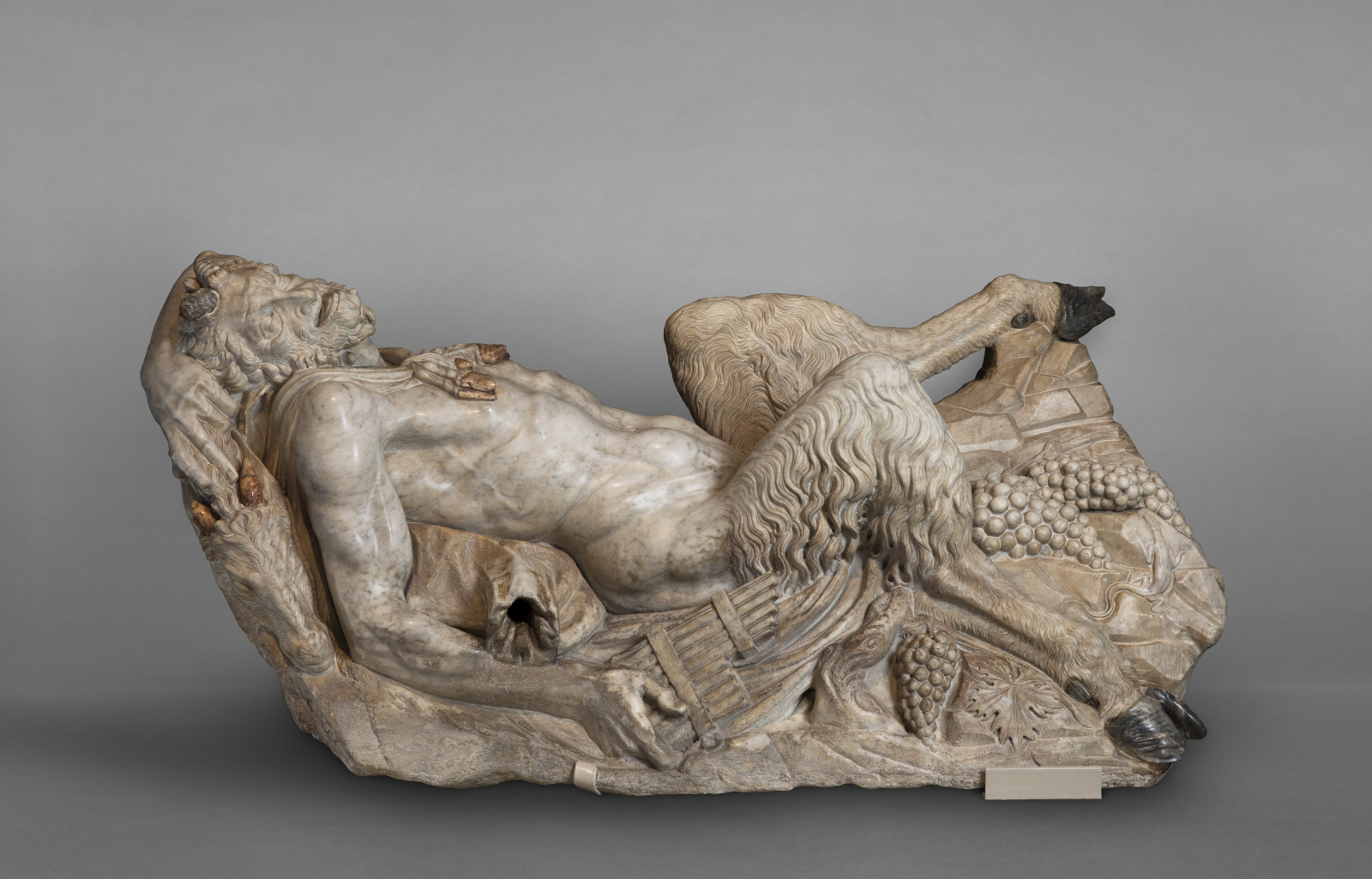
circle of Francesco da Sangallo, Italian, 1494–1576; Reclining Pan, 1560-70; marble; 25 x 52 3/4 x 23 1/4 inches; Saint Louis Art Museum, Museum Purchase 138:1947
-
View Details
![1381947_2_nebris]()
Detail, nebris; attributed to Francesco da Sangallo, Italian, 1494–1576; Reclining Pan, c.1535; marble; 25 x 52 3/4 x 23 1/4 inches; Saint Louis Art Museum, Museum Purchase 138:1947
![1381947s_det6_3]()
Detail, salamander; attributed to Francesco da Sangallo, Italian, 1494–1576; Reclining Pan, c.1535; marble; 25 x 52 3/4 x 23 1/4 inches; Saint Louis Art Museum, Museum Purchase 138:1947
![1381947s_det12_2]()
Detail, water spout; attributed to Francesco da Sangallo, Italian, 1494–1576; Reclining Pan, c.1535; marble; 25 x 52 3/4 x 23 1/4 inches; Saint Louis Art Museum, Museum Purchase 138:1947
Amid grape clusters and vines, Pan reclines on a rocky base. His left hand clutches the goatskin once filled with libations. Such details, together with the small salamander carved amid the rocks, evoke a rustic scene befitting Pan, the half-goat, half-human god of the woods, fields, and flocks. Known for lustful pursuits, the grimacing Pan holds a reed pipe, or syrinx, an allusion to the maiden Syrinx, who turned into a patch of reeds to escape Pan’s advances.
Looking at the sculpture from the back, remnants of an ancient carving are still visible. Portions of the folds and fringed edge of a draped garment from a 2nd- or 3rd-century Roman relief can be detected behind the head and upper torso.
June 19, 2025
Woman Seated on Sofa in Interior
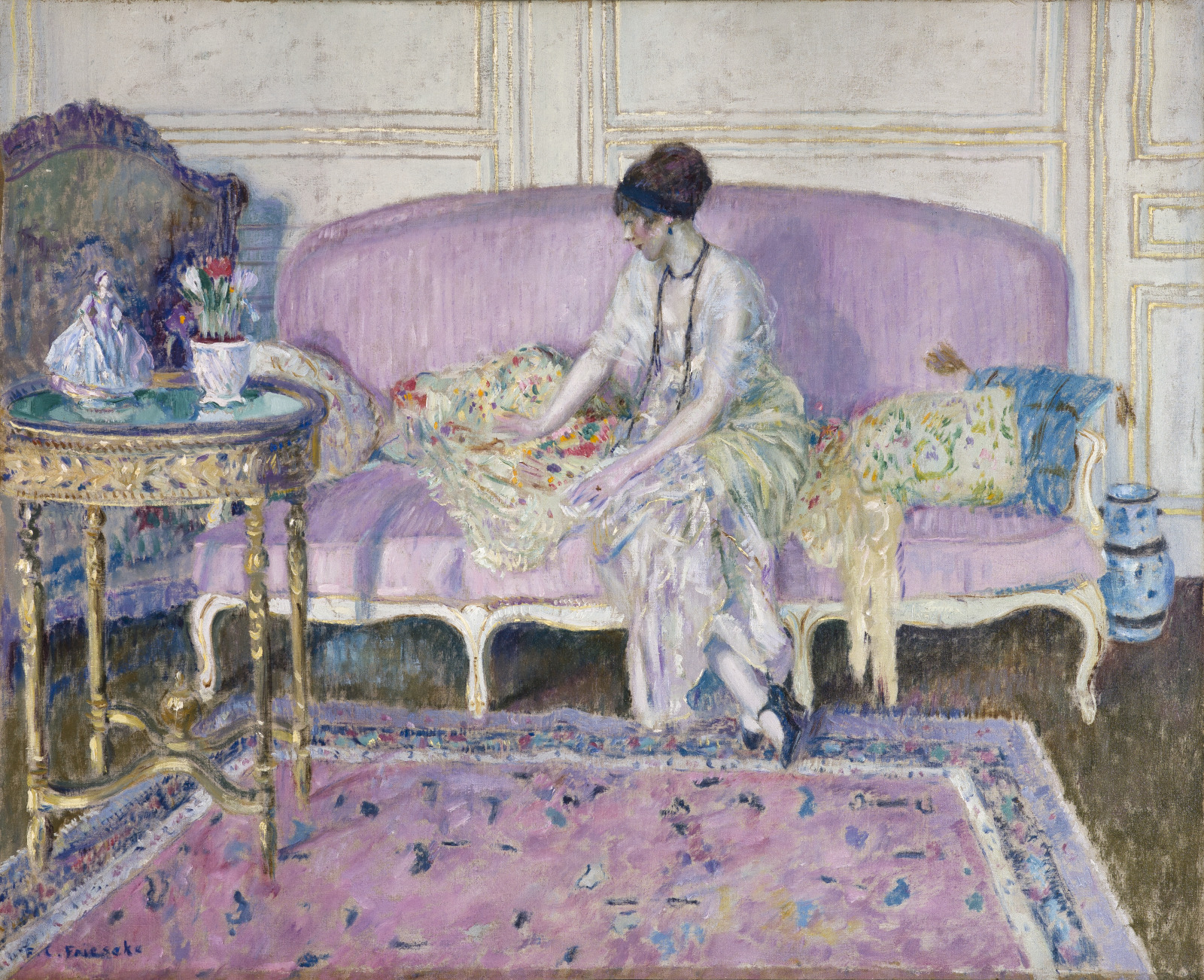
Frederick Carl Frieseke, American (active France), 1874–1939; Woman Seated on Sofa in Interior, 1912–14; oil on canvas; 25 7/8 x 32 inches; Saint Louis Art Museum, Gift of Laura Rand Orthwein in memory of her father, Frank C. Rand, and her brother, Frank C. Rand Jr., and her sister-in-law, Adele Levis Rand 36:1995
Frederick Frieseke favored quiet, interior scenes of women, using the setting to explore the interplay of light, color, and pattern. In this work, loose brushstrokes in the Impressionist style depict the striking mauve tones of the couch and rug, as well as the room’s smaller details—the accent pillows, a screen in the corner, and a table topped with flowers and a figurine. Frieseke lived in France and spent his summers in Giverny, the home of French Impressionist Claude Monet.
June 18, 2025
Pitcher (oinochoe) with Geometric Decoration
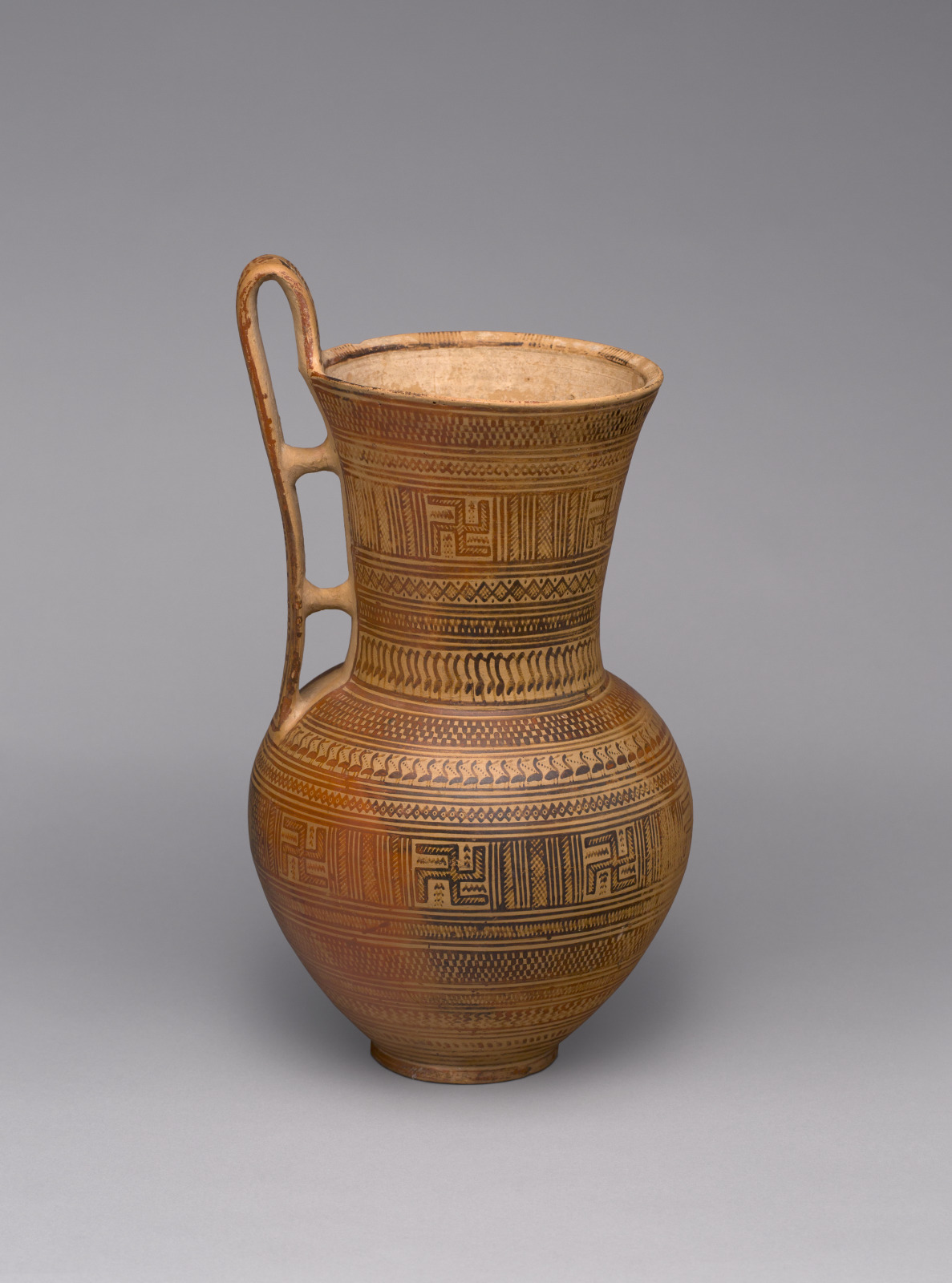
Pitcher (oinochoe) with Geometric Decoration, mid-late 8th century BC; Greek, Late Geometric period; ceramic; 17 15/16 x 10 1/2 x 11 inches; Saint Louis Art Museum, Museum Purchase, by exchange; Gift of Mr. and Mrs. Alvin S. Novack, by exchange 172:1987
The repetitive pattern that covers this pitcher seems endless. Row upon row of tightly arrayed angular motifs create a deceptively simple decorative scheme, but all of this work was done by hand and was very time consuming. Originally intended to be one color, something went worn when this pitcher was misfired in the kiln resulting in variegated coloring. Although its form makes it easy to imagine using this at a table, much of the pottery from this period comes to us from funerary contexts. Entire sets of ceramics were often placed in the grave.
June 17, 2025
Pods

Nora Naranjo Morse, Kha'p'o Owingeh (Santa Clara Pueblo), born 1953; Pods, 2016; clays (micaceous and Santa Clara) and pigment (bisque stains); left: 30 x 10 x 10 inches, center: 36 x 13 x 13 inches, right: 26 x 11 x 11 inches; Saint Louis Art Museum, Helen Kornblum Fund for Contemporary Native Women Artists; and Gift of Mr. and Mrs. Adam Aronson, by exchange 255:2022a-l; © Nora Naranjo Morse
Organic forms repeat with subtle variations in size, proportion, and color. The bases resemble the beginnings of many hand-built ceramic vessels. Yet Nora Naranjo Morse kept going, creating seemingly self-contained ceramic forms. She extended the sculptures with elegant, tapering necks and adorned them with jewel-toned rings.
In Pods, the artist responded to Pueblo aesthetic concepts that trace parallels between vessels, buildings, and the natural world. Seedpods and dwellings each “contain, nurture, and protect another entity,” in the artist’s words.
June 16, 2025
Folding Fan with Painting and Calligraphy
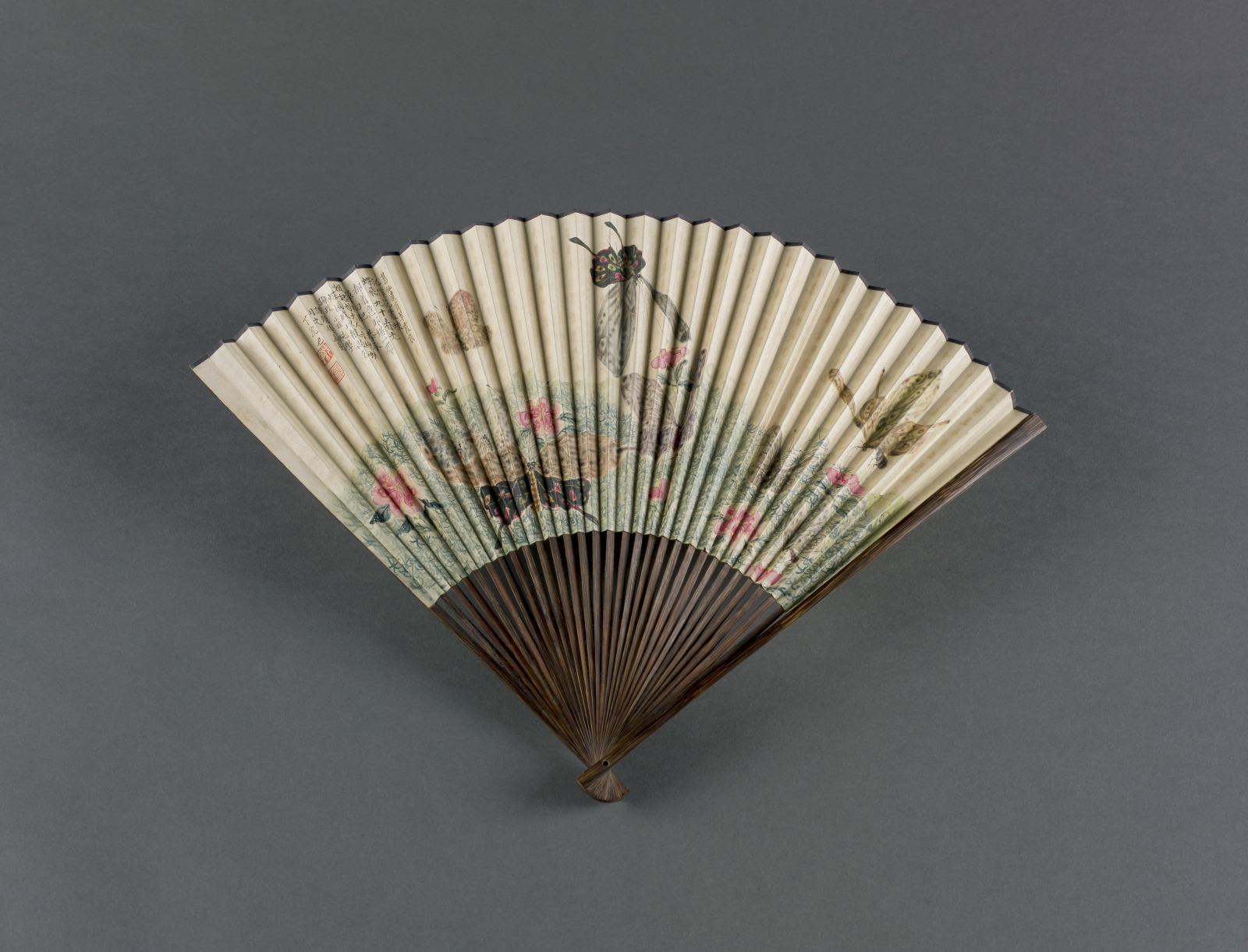
Folding Fan with Painting and Calligraphy, 1869; Chinese, Qing dynasty, Tongzhi period; ink and color on paper with bamboo; open: 12 1/8 x 18 1/2 x 7/8 inches; Saint Louis Art Museum, Gift of Elizabeth McDaniel Peterson 138:2011.1
This folding fan features a painting of butterflies and flowers accompanied by an inscription on one side. On the reverse, the calligraphy transcribes 14 five-character regulated verses (each with a total of 40 characters) by the poet Cen Shen (715–770) of the Tang dynasty, and also includes a dedicatory inscription.
The fan has two thick bamboo outer guards as well as 28 thin bamboo inner ribs. Two fan-shaped sheets of paper—one for the painting and the other for the calligraphy—are pasted on either side of the ribs. The outer and inner ribs are fastened together near the base of the fan and the ends are capped by round bamboo rivets.
June 15, 2025
Tea and Coffee Service

designed by René Nauny, French, active early 20th century; and by M. Desnet, French, died 1933; made by La Maison Desny, Paris, France, active 1927–1933; Tea and Coffee Service, c.1927; silver-plated brass and ebony; overall: 5 1/4 x 15 x 8 3/4 inches; Saint Louis Art Museum, Museum Purchase 58:1997a-e
The precise angles and forward incline of this tea and coffee service evoke the momentum of modern transportation—steamships, trains, and automobiles. Although best known today for their metalwork, René Nauny and M. Desnet designed entire interiors for well-heeled Parisians. Working with artists like Alberto and Diego Giacometti and with talented craftspeople, La Maison Desny executed “everything: from the living room to the bathroom, from the painting of the walls to the flooring and the electrical wiring.”
June 14, 2025
Bowl

Bowl, 1600–1650; Italian; glass with engraving; 4 7/8 x 10 3/8 inches; Saint Louis Art Museum, Cronheim-Bettman Endowed Acquisition Fund and the Mary Elizabeth Rosborough Decorative Arts Fund 103:2017
The flower blossoms and twisting foliage engraved on this bowl were first outlined with a diamond-tipped stylus and then shaded to suggest the effect of light. This naturalistic treatment of the flowers and leaves reflects a new interest in realism and botanical accuracy that emerged in the early 1600s. Botanical prints and illustrated books provided models for ornamental artists working in a range of media including glass, silver, furniture, and woven and embroidered textiles. The technique of diamond-point engraving was revived in the 1500s in Venice, Italy, a center of European glassmaking and the Indian diamond trade.
June 13, 2025
Haircutting in Front of General Store, Mileston Plantation, Mileston, Mississippi Delta

Marion Post Wolcott, American, 1910–1990; Haircutting in Front of General Store, Mileston Plantation, Mileston, Mississippi Delta, 1939; gelatin silver print; image: 6 3/4 x 9 inches, sheet: 6 3/4 x 9 inches; Saint Louis Art Museum, Museum Shop Fund 68:1985
A man in overalls cuts the hair of a man seated on a Coca-Cola case. Six others sit on a porch, each waiting for their turn with the barber. Farm Security Administration (FSA) photographer Marion Post Wolcott documented rural poverty and racial discrimination, such as the work and living conditions of tenant farmers, in the wake of the Great Depression. The FSA purchased 10,000 acres of a former plantation in Mileston, Mississippi, the year after Wolcott took this photograph, forming Mississippi’s only Black resettlement community on the land.
June 12, 2025
Archaistic Tripod Censer with Cover

Hu Wenming, Chinese, active c.1572–1620; Archaistic Tripod Censer with Cover, early 17th century; bronze with gold and silver inlay, wood, and agate; 7 3/8 x 5 inches, height with cover and finial: 8 1/4 inches Saint Louis Art Museum, Gift of Robert E. Kresko 7:2005a,b
The features of the large monster mask on the body of this incense burner are enhanced with fine inlays of gold and silver. These elements are related to the erroneous Ming dynasty belief that ancient bronzes were set with precious metals. Although the shape of this vessel resembles ancient tripods, the decorative inlays, fine wood cover, and semiprecious agate knob reveal the highly ornamental style of the late Ming dynasty.
June 11, 2025
Evening. Melancholy I
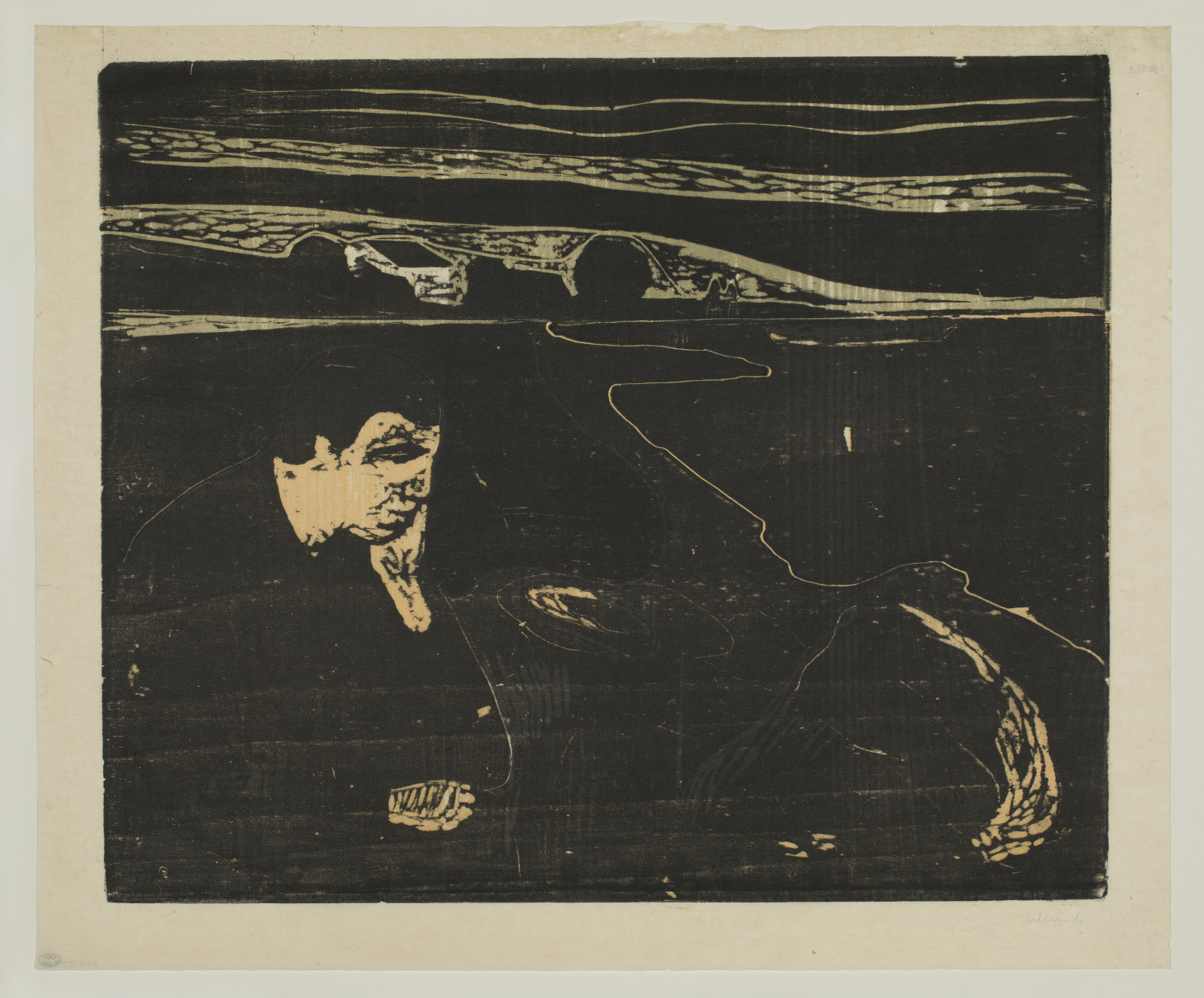
Edvard Munch, Norwegian, 1863–1944; Evening. Melancholy I, 1896–1901; color woodcut with gouges, chisel and fretsaw; image: 15 x 18 inches, sheet: 16 7/8 x 20 1/4 inches; Saint Louis Art Museum, Gift of Mrs. Richard K. Weil by exchange 100:1957
A brooding man’s face and hands float in the inky black of night. Made from a hand-carved block of wood, this print shows rough gouges and wood grain, techniques Norwegian artist Edvard Munch used to strengthen his art’s psychological intensity. Members of the German artist group Die Brücke (The Bridge) imitated Munch’s techniques in their early woodcuts, prompting a critic in 1908 to describe the young artists as “spirits who band together around Munch.”
June 10, 2025
Kettle and Stand
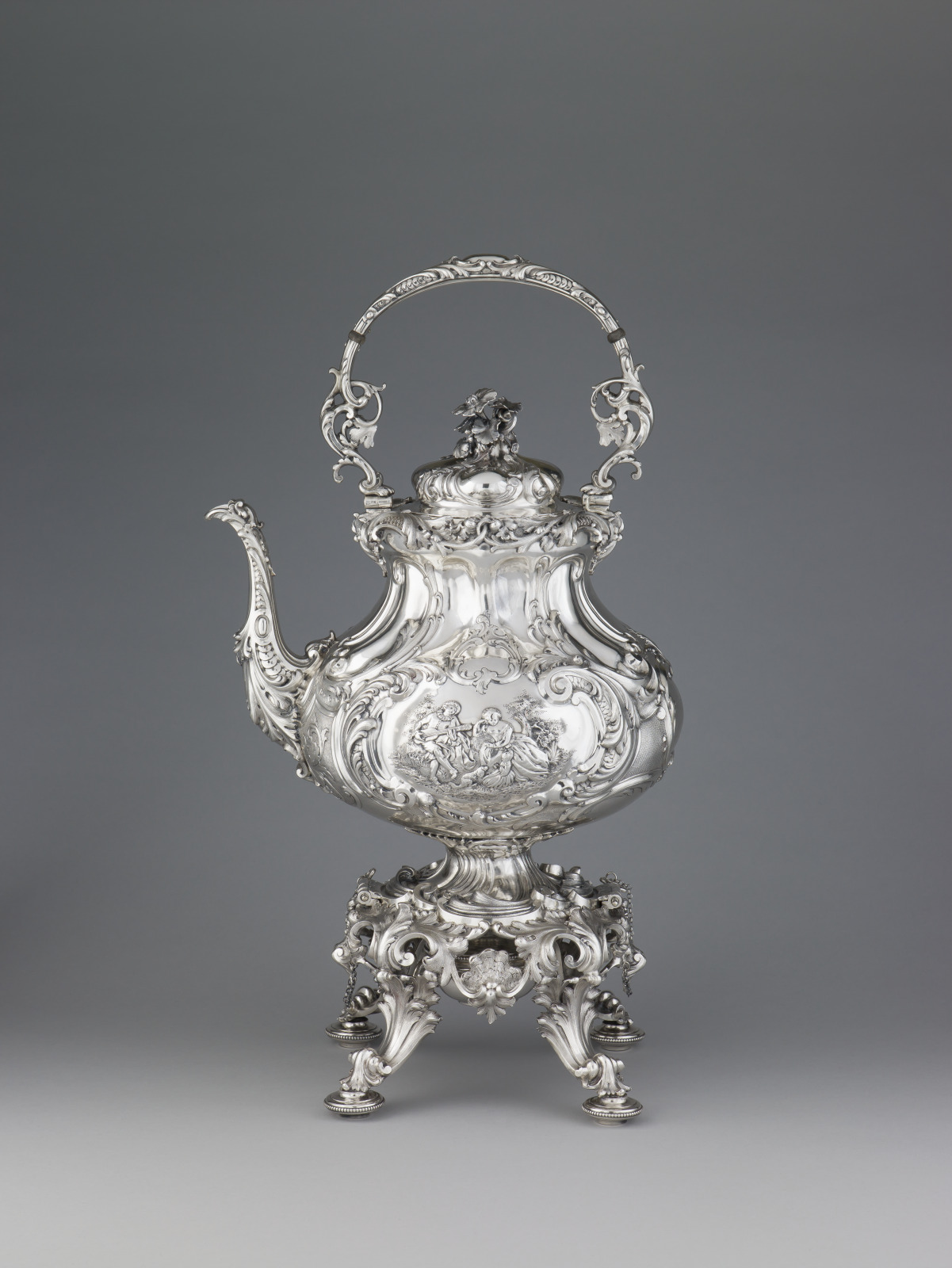
made by Vincent Laforme, American (born Germany), 1823–1893; retailed by Lincoln & Foss, Boston, Massachusetts, active 1847–1858; Kettle and Stand, c.1855; silver; 21 x 11 1/2 x 10 inches; Saint Louis Art Museum, Funds given by the Richard Brumbaugh Trust in memory of Richard Irving Brumbaugh and Grace Lischer Brumbaugh, the Friends of American Art and Design, and the Lea-Thi-Ta Study Group 1:2015a,b
Although a tea kettle and stand is a rather typical object for a 19th-century home, this example is exceptional in its lavish decoration. Weighing more than 10 pounds, it is ornamented from top to bottom with designs of foliage, scrolls, and scalloped shells. It has elements that are individually cast, then applied to the surface, and areas with chased designs, which are drawn into the surface with a pointed tool and a mallet. Other sections have repoussé design made by hammering out the surface from the back side.
The kettle and stand perfectly merge American craftsmanship with a European image. The central scene, depicting a man playing a lute for a woman and child, is inspired by 18th-century French prints. The object’s impressive size and decoration, however, highlight the quality and ambition of American silversmiths in this era.
June 9, 2025
Mask

Yaka artist, Congo; Mask, early 20th century; wood, fiber, pigment; 22 inches; Saint Louis Art Museum, Gift of Morton D. May 411:1955
This mask displays a spectrum of colors, including white, black, red, blue, and orange, typically seen in Yaka arts. Kaolin, or white clay, enhanced the visibility of the mask. Blue and orange lines descending from the eyes might suggest the sufferings of a boy’s initiation into adulthood, such as circumcision or hazing.
Masks such as this appeared in pairs at celebrations marking the end of boys’ n-khanda initiation. Rather than wearing it over the head or face, the masquerader covered his face during performance by holding the wood handle protruding from the bottom. A ruff of raffia fibers descending from the wooden mask and its structured cloth crest would have concealed the dancer’s hand and forearm.
June 8, 2025
Untitled
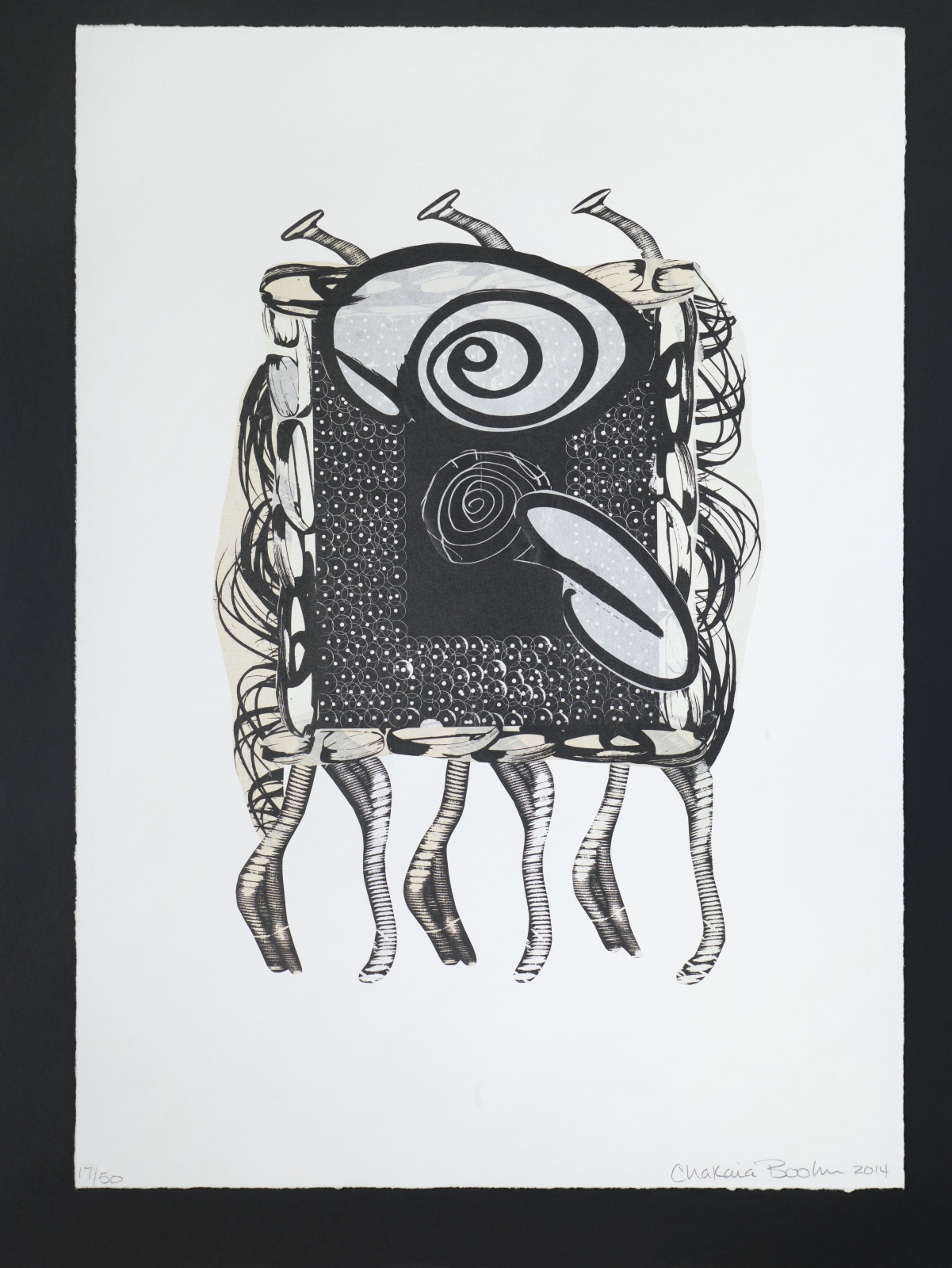
Chakaia Booker, American, born 1953; printed by Robert Blackburn Printmaking Workshop, New York, New York, founded 1947; published by James E. Lewis Museum of Art Foundation, Inc., Baltimore, Maryland; Untitled, 2014; woodcut and lithograph with chine colle; image: 19 3/4 x 13 7/16 inches, sheet: 28 9/16 x 20 5/16 inches; Saint Louis Art Museum, The Thelma and Bert Ollie Memorial Collection, Gift of Ronald and Monique Ollie 122:2017; © Chakaia Booker
Chakaia Booker combined overlapping shapes produced with relief printmaking and lithography techniques to create this enigmatic image. The arranged and collaged printed papers relate to Booker’s sculpting process, in which she assembles large-scale works from cut recycled tires. Some of the elements in this work, especially the repetitive patterns in an inky palette, resemble tire treads or perhaps their imprint.
June 7, 2025
Charing Cross Bridge
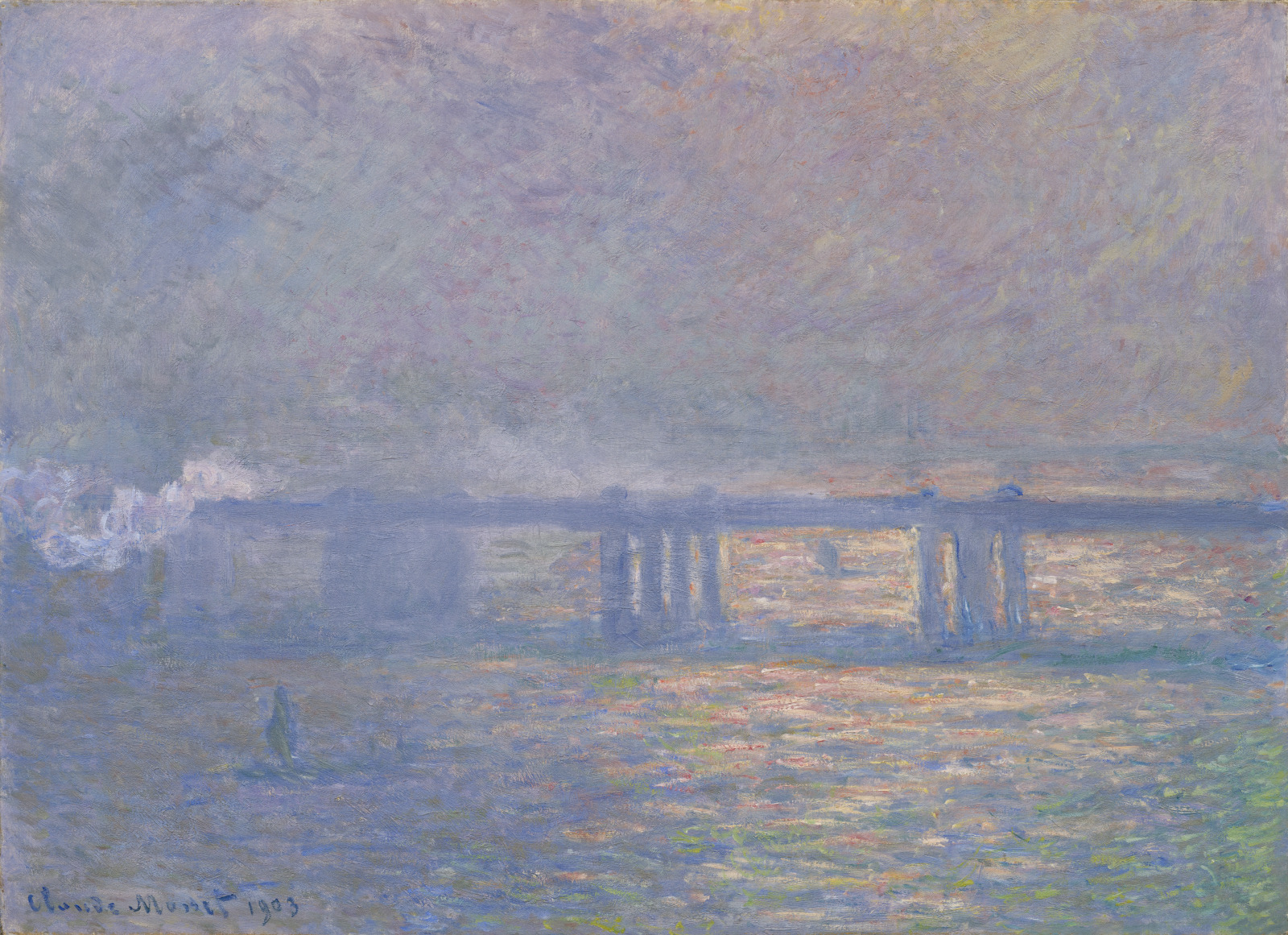
Claude Monet, French, 1840–1926; Charing Cross Bridge, 1903; oil on canvas; 28 3/4 x 41 inches; Saint Louis Art Museum, Museum Purchase 22:1915
In this scene, a train puffs across the bridge as sunlight falls through the mist and creates shimmering patterns on the river surface. Claude Monet painted a series of about 30 paintings of the Charing Cross railroad bridge spanning the River Thames, each highlighting different light and weather effects. Monet was a noted Anglophile and painted this view on one of three visits to London between 1899 and 1901. He noted, “I love London…what I love, above all, is the fog.”
June 6, 2025
Tea Table, from the Dining Room of the Hôtel Guimard, Paris, France
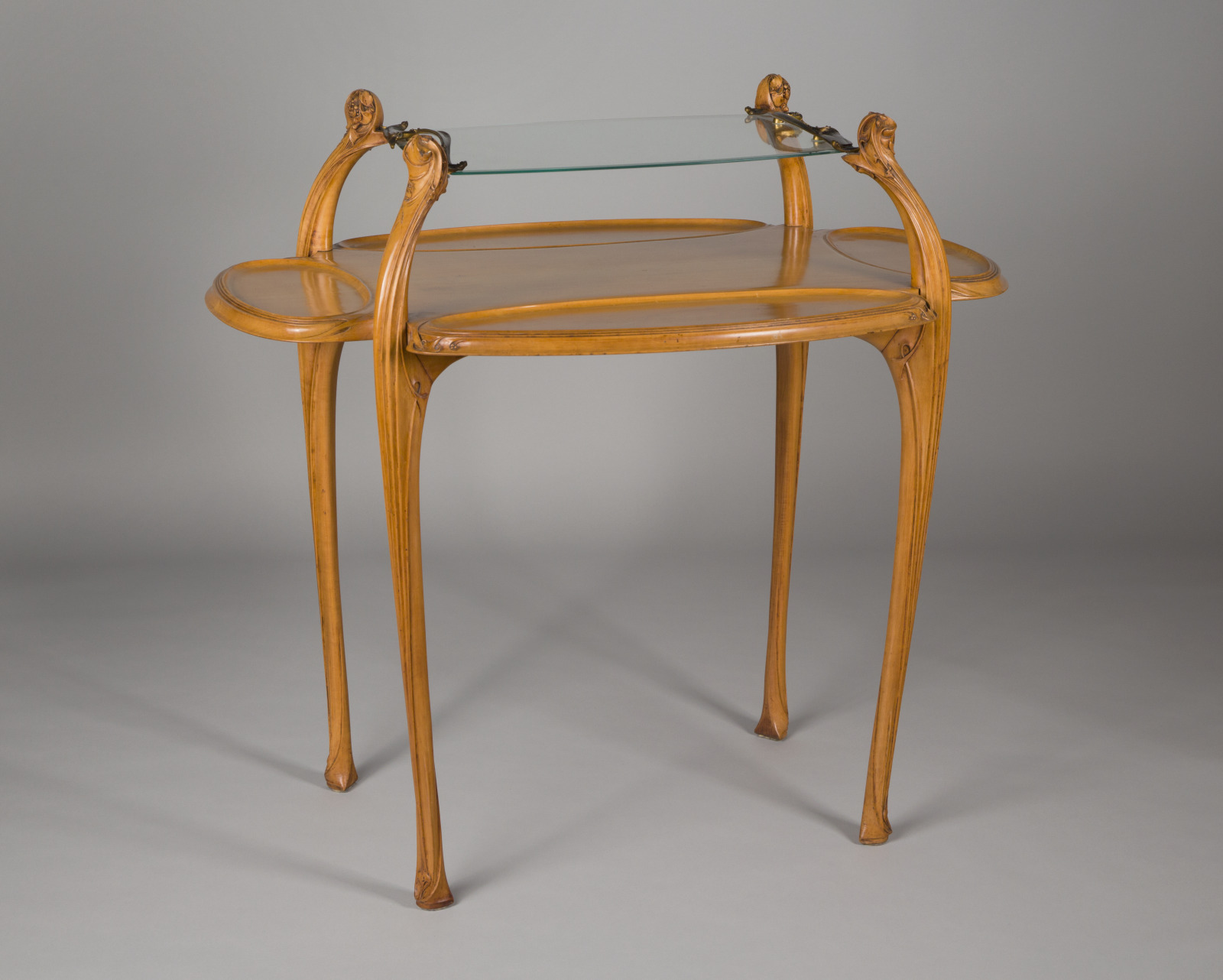
designed by Hector Guimard, French, 1867–1942; made by Ateliers d'Art et de Fabrication, Paris, France, c.1897–1914; Tea Table, from the Dining Room of the Hotel Guimard, Paris, France, 1907; pearwood, gilded bronze, and glass; 33 x 35 x 26 1/4 inches; Saint Louis Art Museum, Director's Discretionary Fund, Museum Purchase by exchange, and funds given by Susan and David Mesker and Zoe and Max Lippman 173:2003a,b
-
Historical Image
![800px-Photograph,_Dining_Room,_Hôtel_Guimard,_rue_Mozart,_Paris,_France,_ca._1910_(CH_18411063-2)]()
Photograph, Dining Room, Hôtel Guimard, Rue Mozart, Paris, ca. 1910; Architect: Hector Guimard (French, 1867–1942); France; gelatin-silver print, toned; 21.6 x 28.1 cm (8 1/2 x 11 1/16 in.); Gift of Madame Hector Guimard; Cooper Hewitt, Smithsonian Design Museum 1956-78-11
Hector Guimard animated his designs with abstract clusters of buds, unfurling plant forms, and writhing tendrils as seen on the legs of this tea table. Nature was the primary source of inspiration for Guimard, a French architect and designer, who embraced a new mode of expression that broke from historical styles. Rather than applying ornament as separate decorative elements, he worked like a sculptor, fusing structure and ornament, often creating bold, curving lines that convey movement and energy. In the early 20th century, architects such as Guimard worked in a variety of materials, designing not only entire buildings and architectural ornaments but their interiors and furnishings as well.
June 5, 2025
Vessel with Painted Motifs (olla)
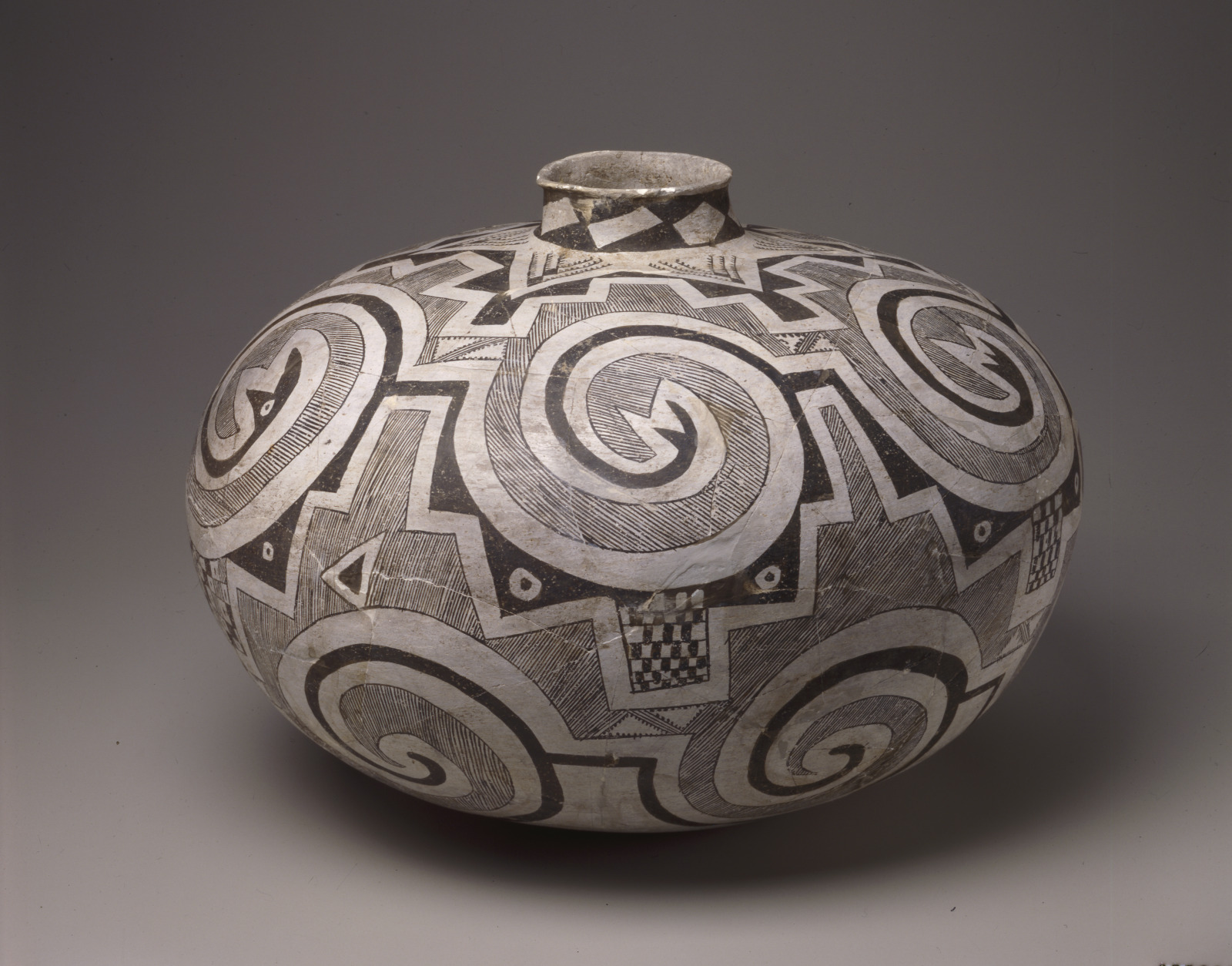
Vessel with Painted Motifs (olla), c.1100–1250; Ancestral Puebloan, Arizona; ceramic with pigment; 10 1/2 x 14 inches; Saint Louis Art Museum, Funds given by the Children's Art Festival 172:1981
The repeating spiral and stepped motifs seen here relate to a particular ceramic style produced in northern Arizona and New Mexico called Tularosa black-on-white. The complex composition of the black designs complements the large size of the vessel form. With its rounded body and narrow neck, this vessel is referred to as an olla.
Typically used for storing water and other liquids, ollas have a small opening that prevents evaporation in the desert heat. Ollas were also used for cooking; the thin walls of the vessel allowed for changes in heating temperatures while the shape helped retain moisture in food. When used in irrigation, ollas were buried between plants with only the neck exposed; the roots would receive water that would slowly seep from the vessel.
June 4, 2025
Ancient Painter
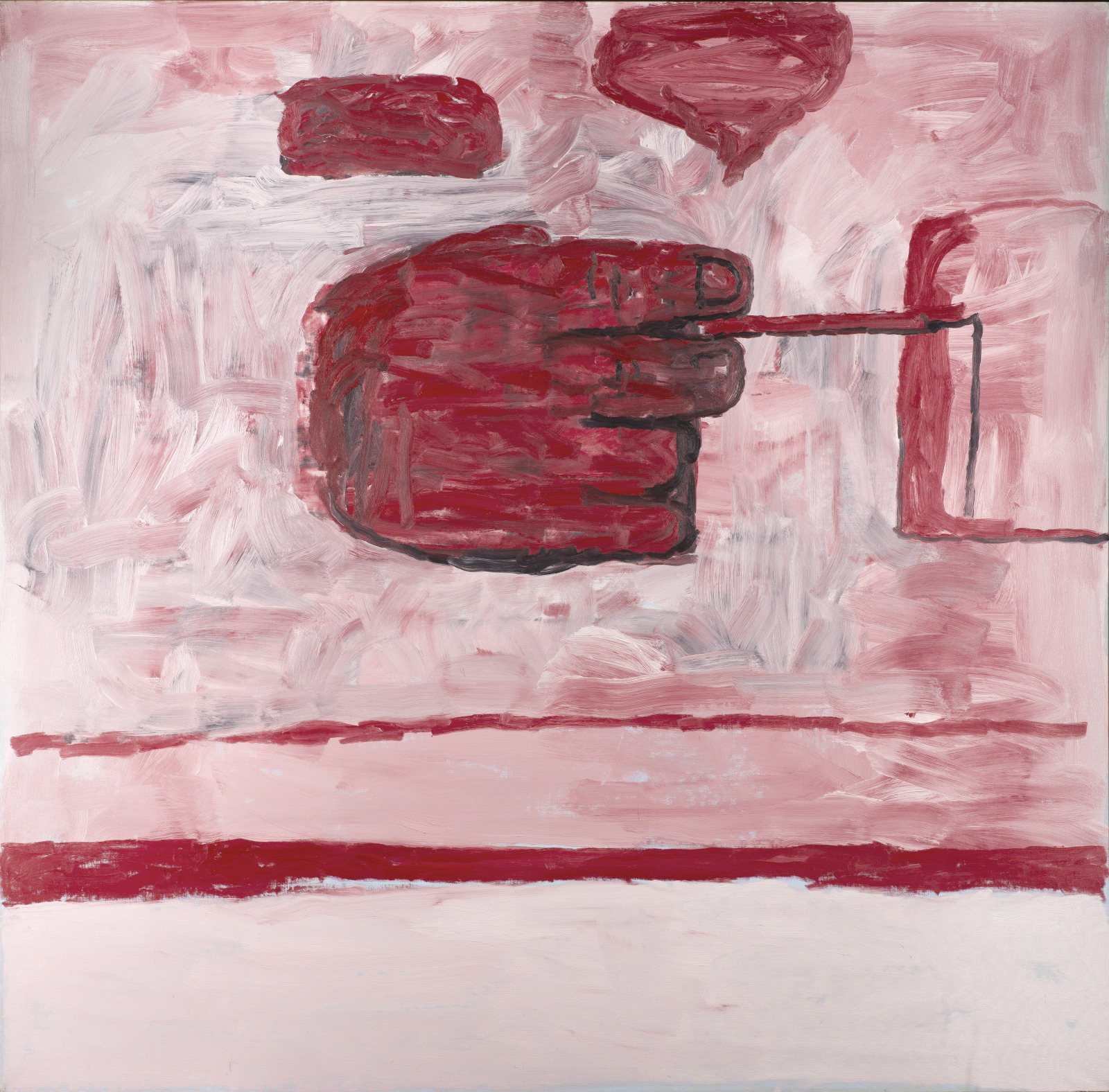
Philip Guston, American (born Canada), 1913–1980; Ancient Painter, 1973; oil on canvas ; 66 1/4 x 67 3/4 inches; Saint Louis Art Museum, Bequest of Musa Guston 217:1992; © 2025 Estate of Philip Guston
Captured in the process of creation, an extended hand clasps a brush between its fingers and paints the emerging form at the far right of the canvas. However, the wordless red quotation blocks, reminiscent of comic strips, tell us little about the act of painting. In the 1970s, the artist Philip Guston immersed himself in a fully developed, cartoonlike style. Ancient Painter allowed Guston to return to his recurring theme of the artist’s hand, a monumental symbol of his craft.
June 3, 2025
Seated Figure of the Official of Earth (Di guan)
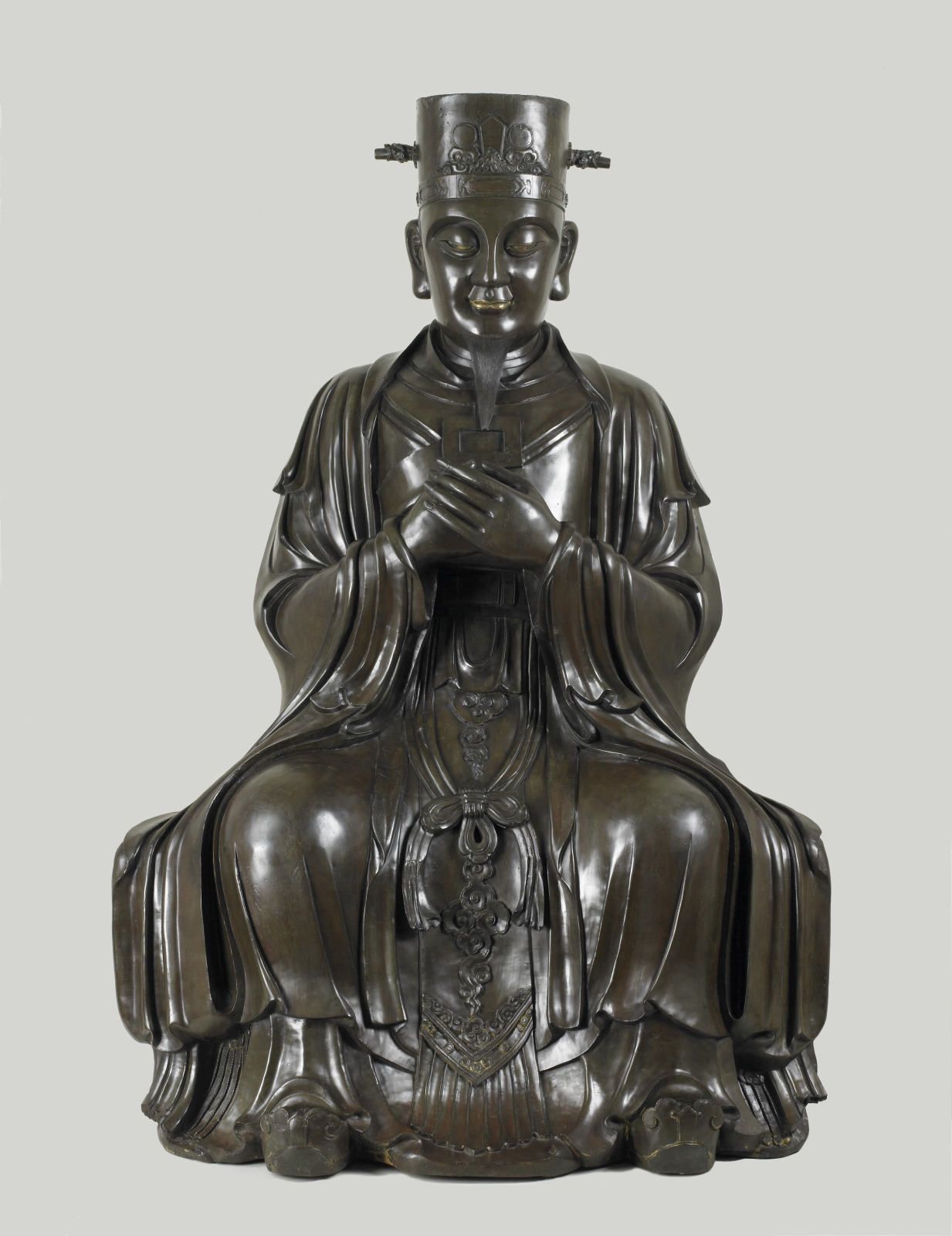
Seated Figure of the Official of Earth (Di guan), 16th century; Chinese, Ming dynasty; bronze with gilding; 71 x 48 x 38 inches; Saint Louis Art Museum, Museum Purchase 169:1919
Poised to hold a now missing sacred tablet, this larger-than-life bronze sculpture is from a set of identical deities that sat in a temple. The large size and fine quality of this work required that it be constructed from intersecting pieces like a big puzzle. But despite its great weight of over 2,000 pounds and its overwrought scale, this sculpture is finely proportioned and beautifully composed. Although seated in a formal manner, the figure is animated by the flow of its voluminous robes from shoulders to feet. The deity’s eyes, lips, and clothing retain touches of gold.
June 2, 2025
Odalisque with a Bowl of Fruit
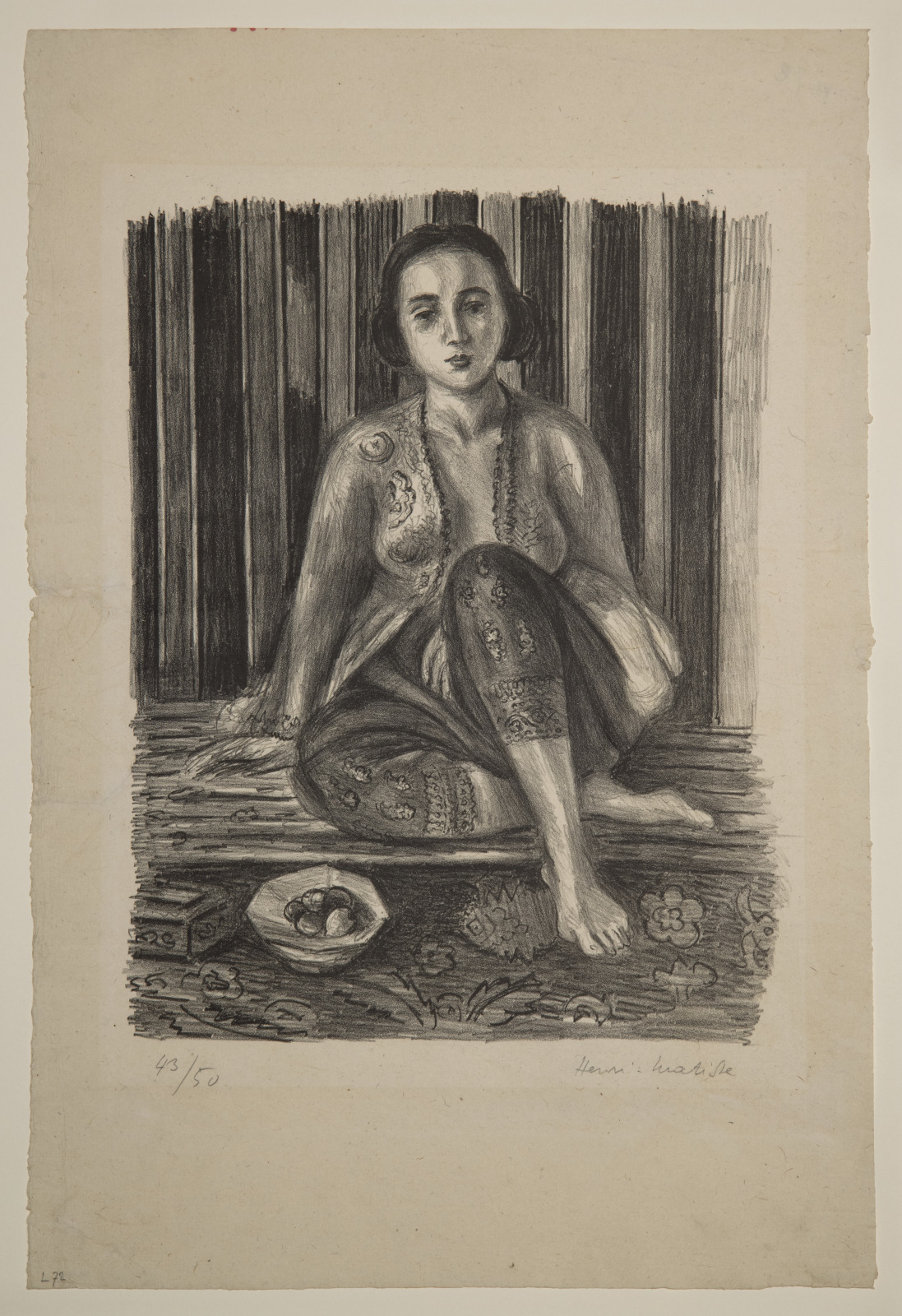
Henri Matisse, French, 1869–1954; Odalisque with a Bowl of Fruit, 1925; lithograph; sheet: 18 3/4 x 12 11/16 inches; Saint Louis Art Museum, Museum Purchase 80:1932
Henri Matisse depicted a white European woman wearing embroidered pants and an open top. She sits in a space with a richly patterned rug and striped wallpaper, giving the room an opulent look. Though made in Matisse’s studio in France, the print and its details are meant to suggest “exotic” regions of North Africa.
Matisse had traveled to the French colony of Algeria in 1906 and the protectorate of Morocco in 1912 and 1913, where he claimed to have seen odalisques—concubines or enslaved women who lived in a harem. Harems were traditionally women’s quarters in Muslim households that men could not access. However, many male European artists in the 19th and 20th centuries created fantasy images of harem women with underlying tones of male dominance and female sexual availability. The imagery was titillating and also reinforced stereotypes of Muslim North Africans held by European colonizers. Thus, while Matisse primarily explored the decorative surface details of the materials, this print also expressed issues of French colonialism and European perceptions of North Africa.
June 1, 2025
Candy Darling on Her Deathbed

Peter Hujar, American, 1934–1987; Candy Darling on her Deathbed, 1973; gelatin silver print; image: 14 5/8 x 14 5/8 inches, sheet: 19 7/8 x 16 inches; Saint Louis Art Museum, Gift of Ted L. and Maryanne Ellison Simmons; and funds given by the Marian Cronheim Trust for Prints and Drawings, Museum Purchase, Friends Fund, The Sidney S. and Sadie Cohen Print Purchase Fund, and the Eliza McMillan Purchase Fund 731:2020; © Estate of Peter Hujar
Peter Hujar captured the people and streets of what made New York distinctive to him in the 1970s. Candy’s portrait, made at her invitation, shows the transgender icon at the end of her life, dying of lymphoma in a hospital. The majesty of the flowers, the lighting, and her own carefully-applied makeup speak to the intention around the creation of this work. Hujar unflinchingly confronts her pain and the inevitability of mortality with his own characteristic precision and humanity.
May 31, 2025
Old Homestead Connecticut

Willard Leroy Metcalf, American, 1858–1925; Old Homestead Connecticut, c.1914; oil on canvas; 26 x 29 inches; Saint Louis Art Museum, Museum Purchase 253:1915
Cool, bright moonlight bathes the Selden homestead, built before the Revolutionary War (1775–1783). The large tree—as old as the house—casts its long shadow over the buildings, as the stars in the clear sky twinkle through its wide, protective branches. The homestead is located in Hadlyme, Connecticut, only 10 miles from where Willard Metcalf spent his summers painting as a member of the well‑known art colony in Old Lyme.
May 30, 2025
Hippopotamus

Hippopotamus, 1783–1640 BC; Egyptian, Middle Kingdom, Dynasty 13; faience; 3 3/4 x 7 1/4 x 2 7/8 inches; Saint Louis Art Museum, Funds given by Martha I. Love 242:1952
This figure of a hippo was molded in faience, a crushed quartz glazed and fired at a relatively low temperature. Copper salts in the glaze impart the bright blue or blue-green color so characteristic of faience objects. Over the animal’s naturalistic shape, the craftsman painted lily plants that appear as a giant tattoo. Small sculptures of hippos such as this one were placed in tombs in ancient Egypt as reminders of the Egyptians’ love of hunting. Each of the sculpted hippo’s legs was ritually broken in order to render it harmless in the afterlife. In ancient Egypt herds of hippos were a constant threat to farmers’ fields. The first pharaohs hunted hippos in the marshes and eventually drove them far south into Upper Egypt. Hippos became associated with chaos, and the hunt for hippos became a metaphor for how the pharaohs of ancient Egypt could conquer evil.
May 29, 2025
Bust of a Man
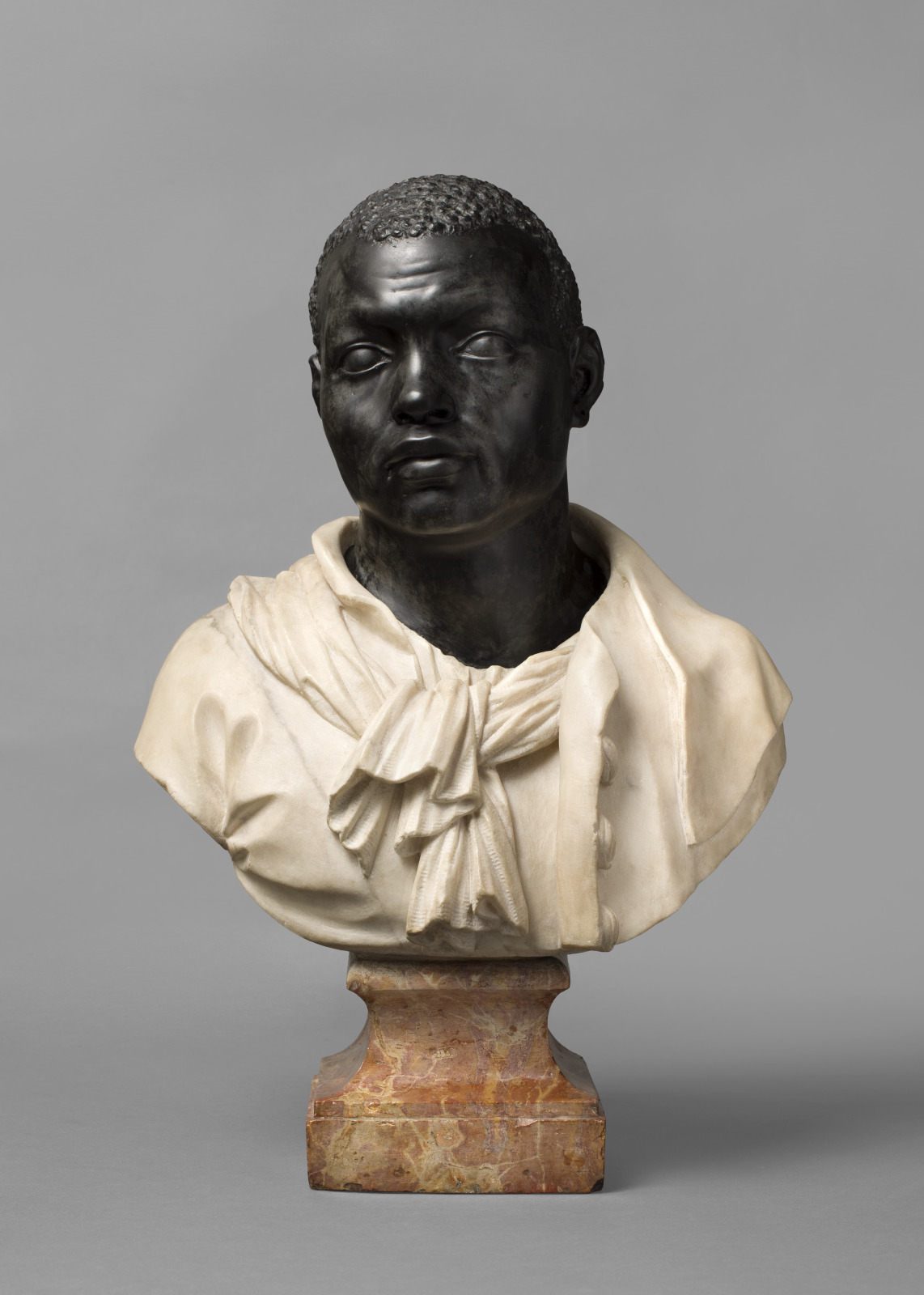
Melchior Barthel, German, 1625–1672; Bust of a Man, 1660s; marble; 24 1/2 x 17 x 8 5/8 inches; Saint Louis Art Museum, Funds given by Mr. and Mrs. R. Crosby Kemper Jr. through the Crosby Kemper Foundations 54:1990
his sensitive portrait of an unknown man stands as one of the most dignified 17th-century European representations of an African person. It is the only secular work known to have been sculpted by Melchior Barthel. The bust exemplifies the artist’s mastery of flamboyant carving and bold color contrast. The sculpture was made in Venice when Barthel created a series of four colossal African figures for the tomb of Doge Giovanni Pesaro (1589–1659). Bending beneath the enormous weight of the ensemble, the tomb figures are dehumanized as they perform the load-bearing role of inanimate architecture.
It has long been assumed that Bust of a Man records the likeness of a model who posed for Pesaro’s tomb. Or it might be a head study for which the artist used dark-hued marble to depict a generalized — yet idealized — African man. Whatever the intent, the bust is different in character from the figures on the tomb.
May 28, 2025
Helmet
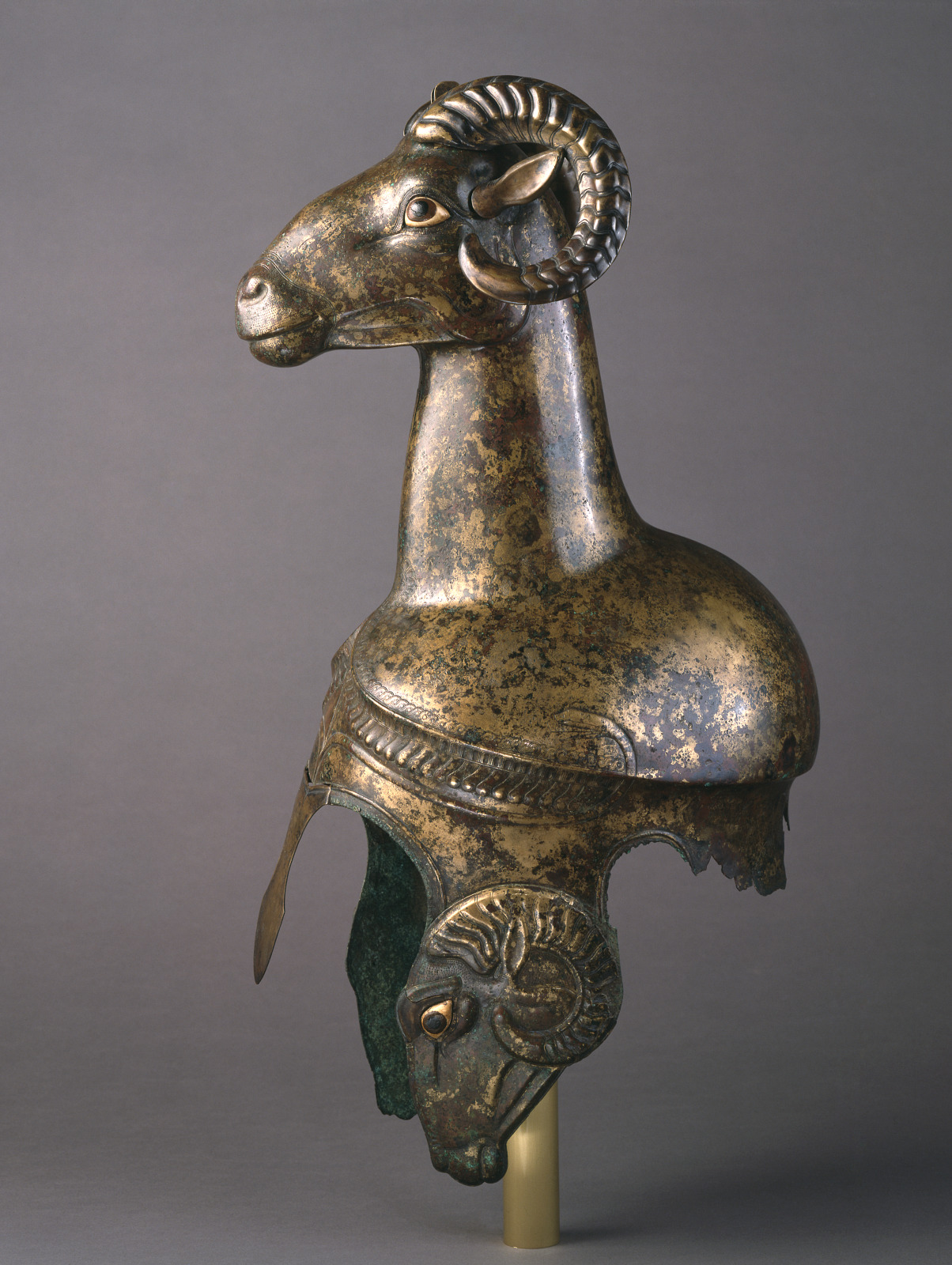
Helmet, 525–500 BC; Greek, South Italian, Archaic period; bronze with ivory and bronze restoration; 19 3/8 x 12 3/4 x 6 3/4 inches; Saint Louis Art Museum, Museum Purchase 282:1949.1
The size of this ram’s head helmet indicates that it was meant to be worn for ceremonial purposes rather than in actual battle. It was made by hammering a single sheet of bronze, which makes it extremely light and unsuitable as actual armor. Additional decoration was added using a series of common metalworking techniques such as repoussée, punching, tracing, and engraving. The ram’s head on top, whose horns, ears, and eyes have been restored, is mirrored by the attached ram’s head cheek pieces. The selection of the ram to adorn a military-style helmet is fitting since the animals have a double-layered skull which helps protect them from injury. Elaborate helmets such as this are quite rare.
May 27, 2025
Covered Box with Figural, Animal, Floral, and Geometric Decoration
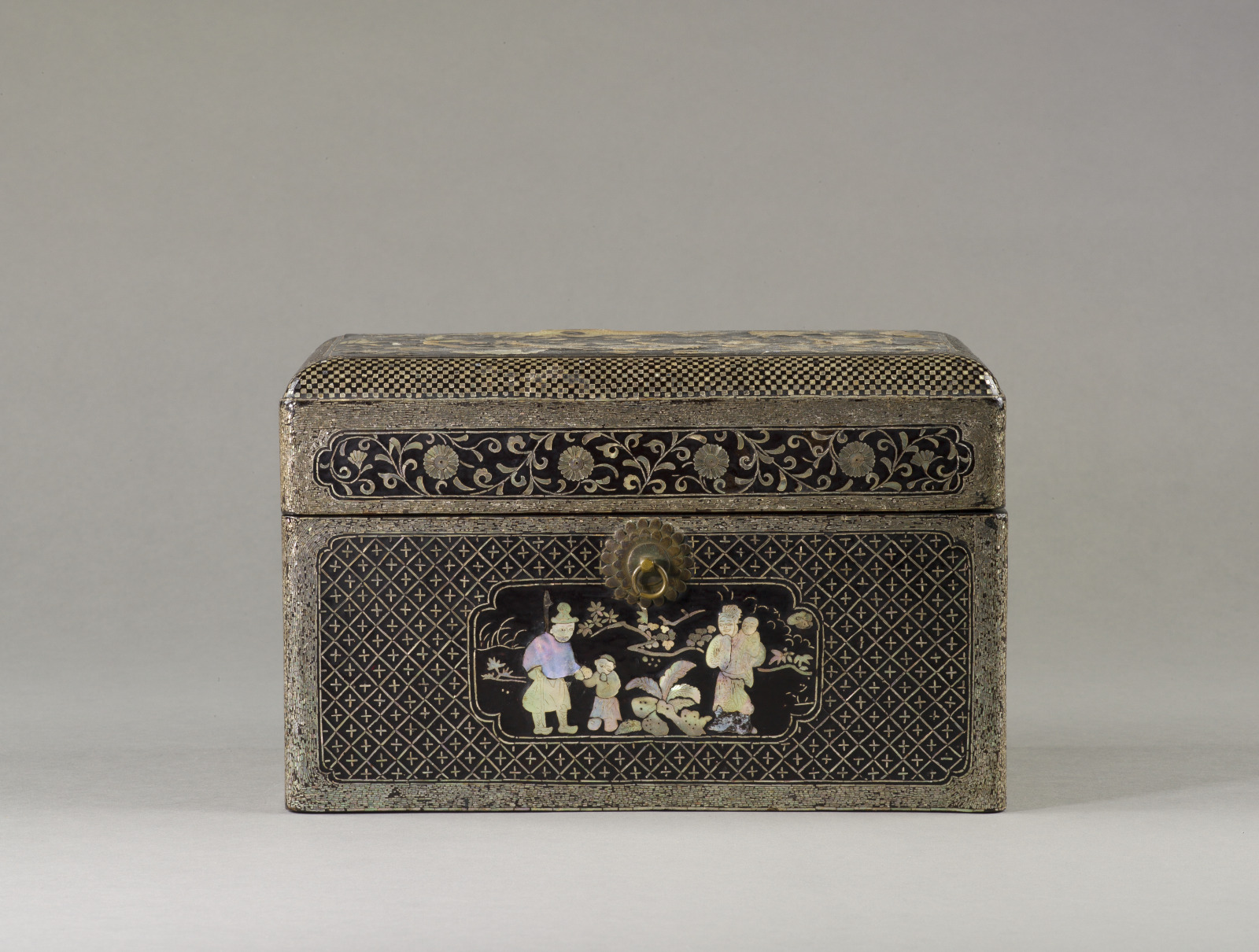
Covered Box with Figural, Animal, Floral, and Geometric Decoration, 18th century; Ryūkyūan, Japan, Second Shō dynasty; black lacquer inlaid with mother-of-pearl; 6 1/2 x 9 1/2 x 5 3/4 inches; Saint Louis Art Museum, Museum Purchase 12:2013
This object was made in the Ryūkyū Islands, once an independent kingdom but now part of Okinawa Prefecture, Japan. The cover is inlaid on its top surface with a pair of three-clawed, spiny dragons cavorting through swirling clouds. The dragons each extend one front claw, the talons stuck in large flaming pearls.
On one long side of the box, a bearded gentleman in a long robe and cap lounges against a tree in a garden as he watches his attendant setting a bird free from its cage. On the opposite side, the scene features a family in a garden, the father wearing a high hat as he holds a young boy’s hand while the mother holds up her infant. On either short side, shaped medallions enclosing floral sprays are set against a cross motif, all using very small mother-of-pearl segments.
May 26, 2025
Siempre (Always)
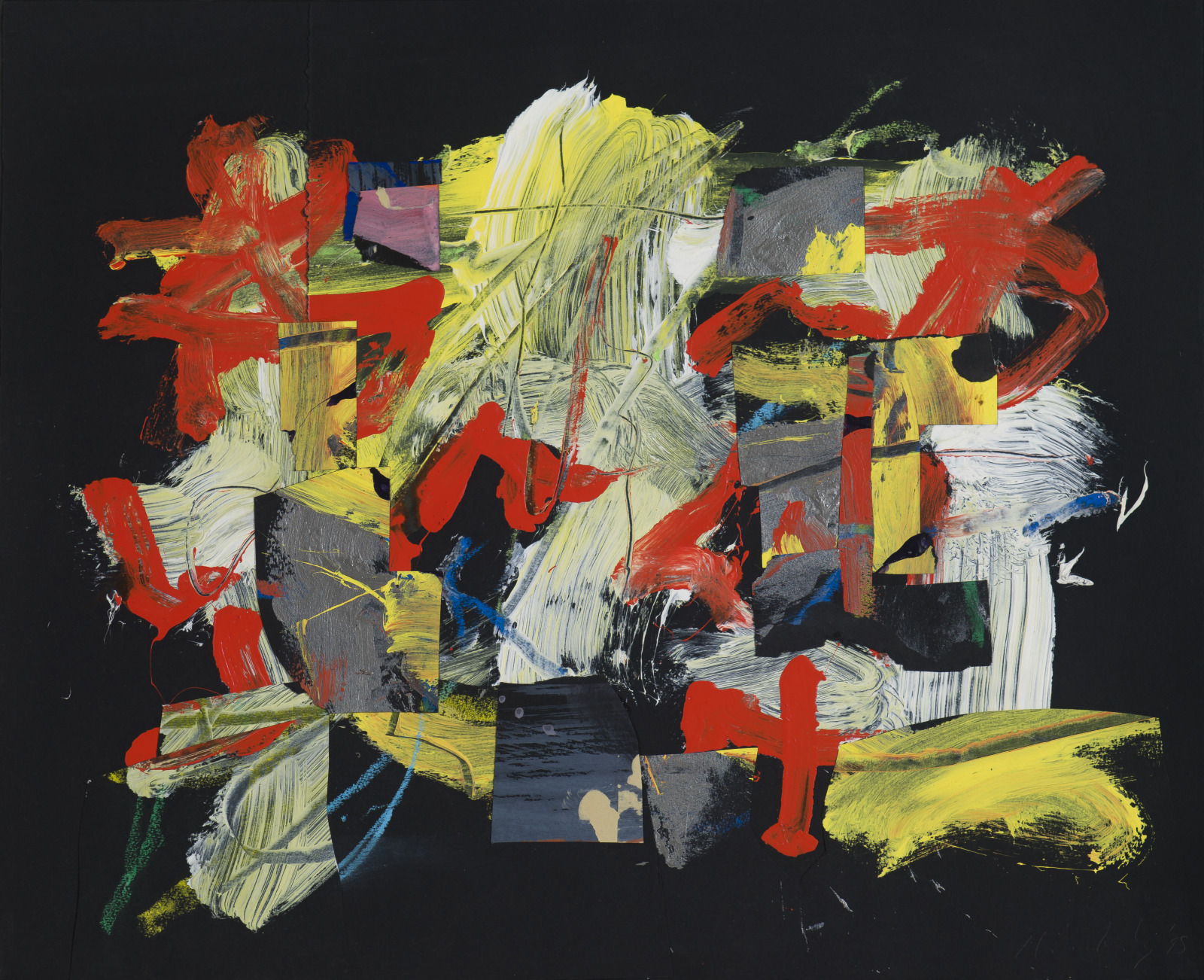
Frank Wimberley, American, born 1926; Siempre (Always), 1998; collage of cut painted paper with pastel; 22 1/4 x 27 1/8 inches; Saint Louis Art Museum, The Thelma and Bert Ollie Memorial Collection, Gift of Ronald and Monique Ollie 184:2017; © Frank Wimberley
Energetic gestures of vivid red, yellow, white, and silver seem to fight in a messy brawl against a black background. To achieve this effect, Frank Wimberley incorporated cut pieces from other examples of his work. This technique was utilized by some of the earliest collage artists in the 20th century. Deckled edges, splattered paint, and scratches into existing brush marks add further dimension to the varied surface.
May 25, 2025
The Louvre, Morning, Sunlight

Camille Pissarro, French, 1830–1903; The Louvre, Morning, Sunlight, 1901; oil on canvas; 29 x 36 1/2 inches; Saint Louis Art Museum, Museum Purchase 225:1916
As a young man, Camille Pissarro advised that the best way to advance French art would be to burn down the Louvre Museum, thus eradicating the influence of the art of the past. By the end of his career, his views had mellowed and he produced a series of several views of the Louvre in different light and weather conditions, as seen here. This painting captures the soft light of early morning and is animated by color accents of a tugboat and barges on the River Seine.
May 24, 2025
The Return of the Artists
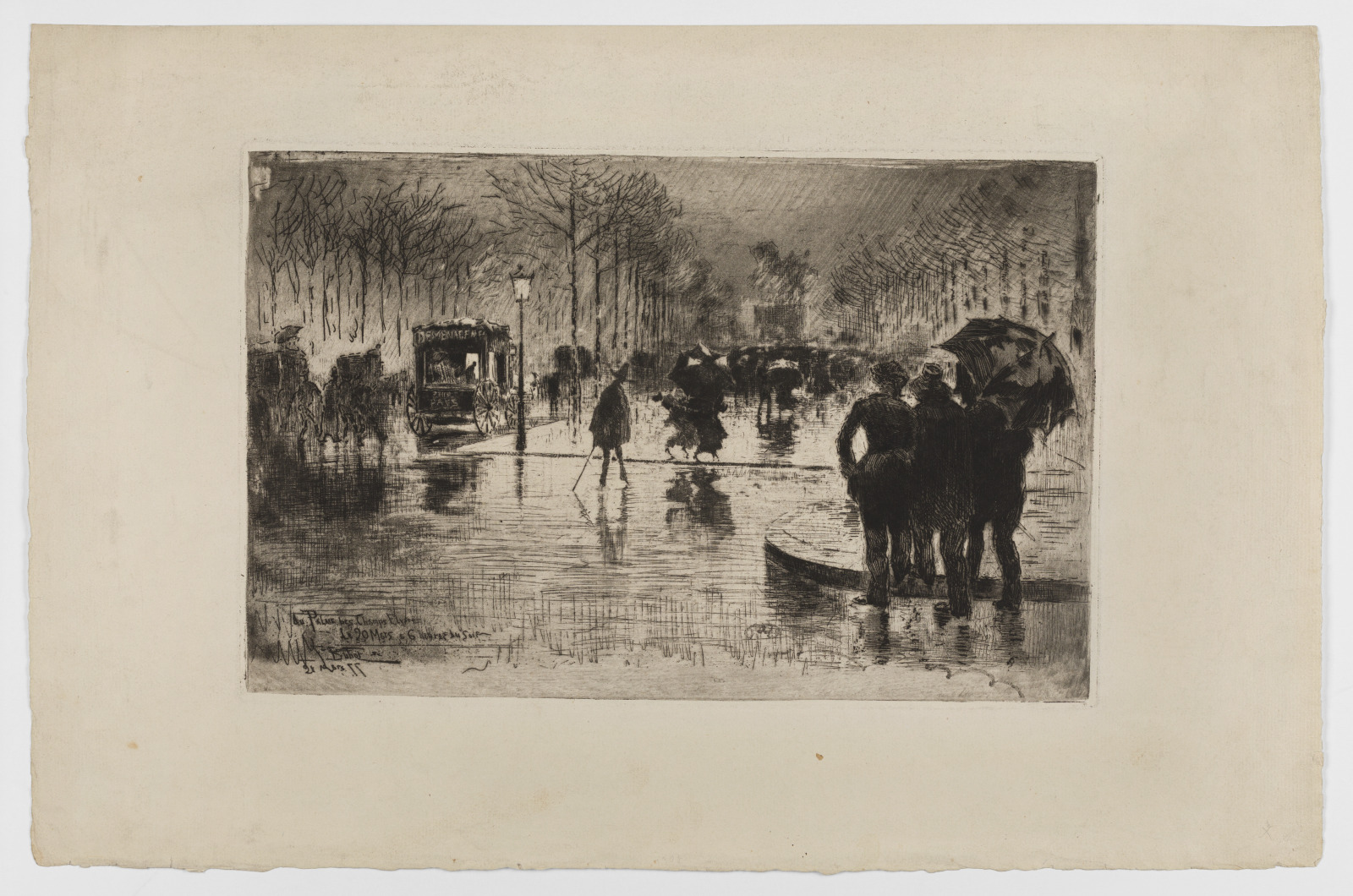
Felix Hilaire Buhot, French, 1847–1898; The Return of the Artists, 1877; etching, drypoint, and aquatint; image: 7 7/8 x 12 3/16 inches, plate: 8 3/16 x 12 1/2 inches, sheet: 12 5/16 x 18 7/8 inches; Saint Louis Art Museum, Gift of Marisa Longrais Human 380:2021
A crowd of artists walks down the rain-soaked Avenue des Champs-Élysées after submitting their artworks to the 1877 Paris Salon, a prominent government-sanctioned annual exhibition. Félix Hilaire Buhot himself showed 13 etchings in the Salon that year. This print demonstrates Buhot’s experimental approach to printmaking, combining etching, drypoint, and aquatint; the latter was used to create the atmospheric effect of cloudy, overcast skies. Buhot was revered as an etching master in the late 19th century due to his technical skill and his intriguing depictions of everyday street scenes around Paris.
May 23, 2025
Untitled (Men in Truck)

Russell Lee, American, 1903–1986; Untitled (Men in Truck), c.1936; gelatin silver print; 6 5/8 x 9 1/2 inches; Saint Louis Art Museum, Museum Shop Fund 160:1987
In this informal composition of three workers framed by an open window in a truck, Russell Lee evokes the difficult life of many during the Great Depression of the 1930s. For some, cars and trucks became a necessary means for migration west to areas with opportunities for work. Under the government sponsorship of an ambitious photography program—the Information Division of the Farm Security Administration (FSA)—a number of photographers took to the road to document these social and economic conditions. Lee was one of the most prolific photographers in this project.
May 22, 2025
Towel (peşkir) with Design of Floral Motifs
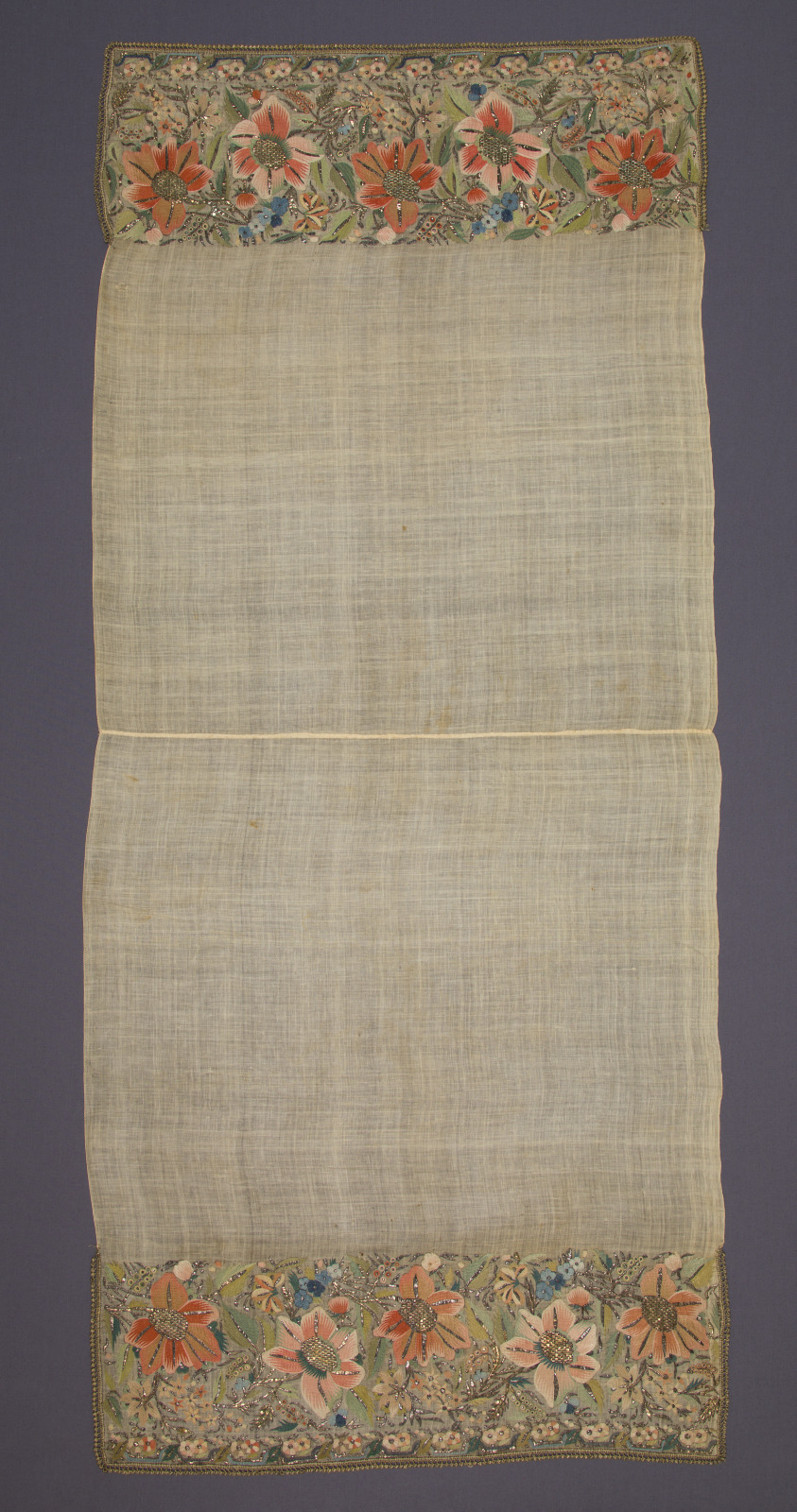
Scarf with Design of Floral Motifs, late 18th–early 19th century; Turkish, Turkey, Ottoman period; silk and metallic yarn embroidery on cotton; 58 x 25 inches; Saint Louis Art Museum, Museum Purchase 197:1909
Small flowers and leaves sparkling with metal threads grace this delicate cotton textile. Ottoman embroiderers adopted aspects of botanical naturalism introduced through European art objects, books, and drawings imported in the early 18th century. The cultural exchange was mutual. Just prior, in the late 17th century, “little Muslin-Napkins, edg’d with Gold, Silver, and Silk Border[s]” were imported into Europe, along with coffee, according to the French merchant Pierre de La Roque.
May 21, 2025
Basket
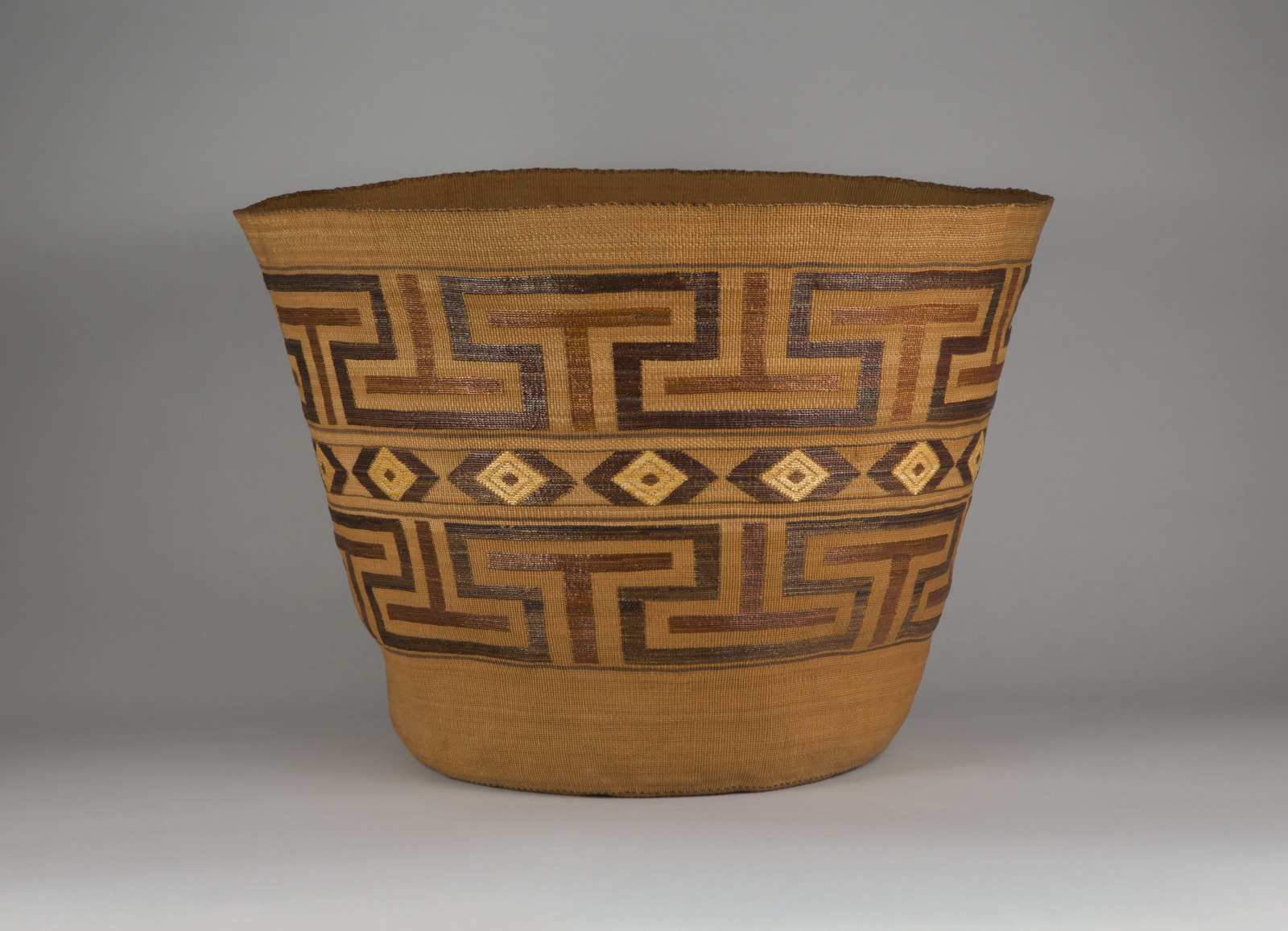
Tlingit artist; Basket, c.1900; spruce roots, grasses, and maidenhair ferns; height: 17 1/2 inches, diameter (top): 24 5/8 inches, diameter (base): 14 inches; Saint Louis Art Museum, Funds given in memory of Donald N. Brandin 60:1995
The massive size of this basket belies its extremely fine materials and structure. Using thin, supple spruce roots, the artist meticulously twined pairs of horizontal weft strands over and under vertical warps splints. While building up the form, she wrapped grasses and ferns around the outward-facing horizontal wefts to create the abstract surface pattern. Tlingit women have always woven fine, flexible baskets for collecting food, cooking, and storing items. Following settler-colonial disruptions along coastal Southeast Alaska in the late 19th century, Indigenous artists capitalized on the tastes of a new tourist market to weave technically and visually exquisite works such as this.
May 20, 2025
Fans and Stream

Sakai Hōitsu, Japanese, 1761–1828; Fans and Stream, c.1820–1828; sliding door panels (fusuma) mounted as a pair of two-panel screens; ink, color, gold, and silver on silk; right screen (a): 65 11/16 x 68 3/4 inches, left screen (b): 65 5/8 x 68 3/4 inches; Saint Louis Art Museum, Friends Fund 140:1987a,b
Pictures in the shapes of fans strewn across empty space and swirling eddies of gold define this pair of stunning decorative screens. The opened fans, brightly painted with traditional themes of landscapes, birds, and flowers, subtly reveal the four seasons, from the plum blossoms of early spring on the right to the snow-covered cypress of winter on the left. Scattering fans is associated with the art and culture of the ancient capital Kyoto and a particular outing of aristocrats and ladies along the scenic mountains of Arashiyama. As the procession crossed the Sugagawa River near Tenryuji Temple, the fan of a young courtier was caught by a sudden gust of wind and drifted down into the waters below. Delighted and inspired by the beautiful and poignant image, others threw their fans over the bridge to watch them float on the breeze into the flowing stream.
May 19, 2025
Landscape with Cows, Sailboat, and Painted-in Figures

August Macke, German, 1887–1914; Landscape with Cows, Sailboat, and Painted-in Figures, 1914; oil on canvas; 20 1/4 x 20 1/4 inches; Saint Louis Art Museum, Bequest of Morton D. May 911:1983
A jumble of upside-down and sideways figures disrupts an otherwise pastoral scene of cows grazing in front of a distant lake. This is the only work by August Macke with rotated figures, which makes them a mystery. An X-ray of the painting shows the shadowy traces of an earlier composition. The work began as a conventional lake scene, but only two sailboats survive from this earlier state. Macke never had a chance to continue his experiment because he died two months later in World War I (1914–1918).
May 18, 2025
Bacchus and Ariadne

Johann Georg Platzer, Austrian, 1704–1761; Bacchus and Ariadne, c.1735; oil on copper; 22 1/8 x 31 13/16 inches; Saint Louis Art Museum, Funds given by Dr. E. Robert and Carol Sue Schultz 26:2020
Beneath the central stand of trees, Bacchus and Ariadne are surrounded by nymphs and satyrs who revel in wine and sensuous display. Their story comes from the popular poem “Metamorphoses” by the ancient Roman poet Ovid. One part describes how the Cretan princess Ariadne enabled the hero Theseus to navigate a labyrinth holding the fabled bull monster, the Minotaur. Having promised to take Ariadne with him, Theseus instead abandoned her on the Greek island of Naxos, where she was comforted by the Roman god of wine, Bacchus, as seen in this painting. Johann Georg Platzer’s exuberant depiction perfectly embodies the lively compositions of the 18th century. Arching limbs and curving torsos provide undulating rhythms that energize the painting. An array of gilt silver vessels adorns the central foreground, enhancing the sense of luxury and opulence.
May 17, 2025
Our Web
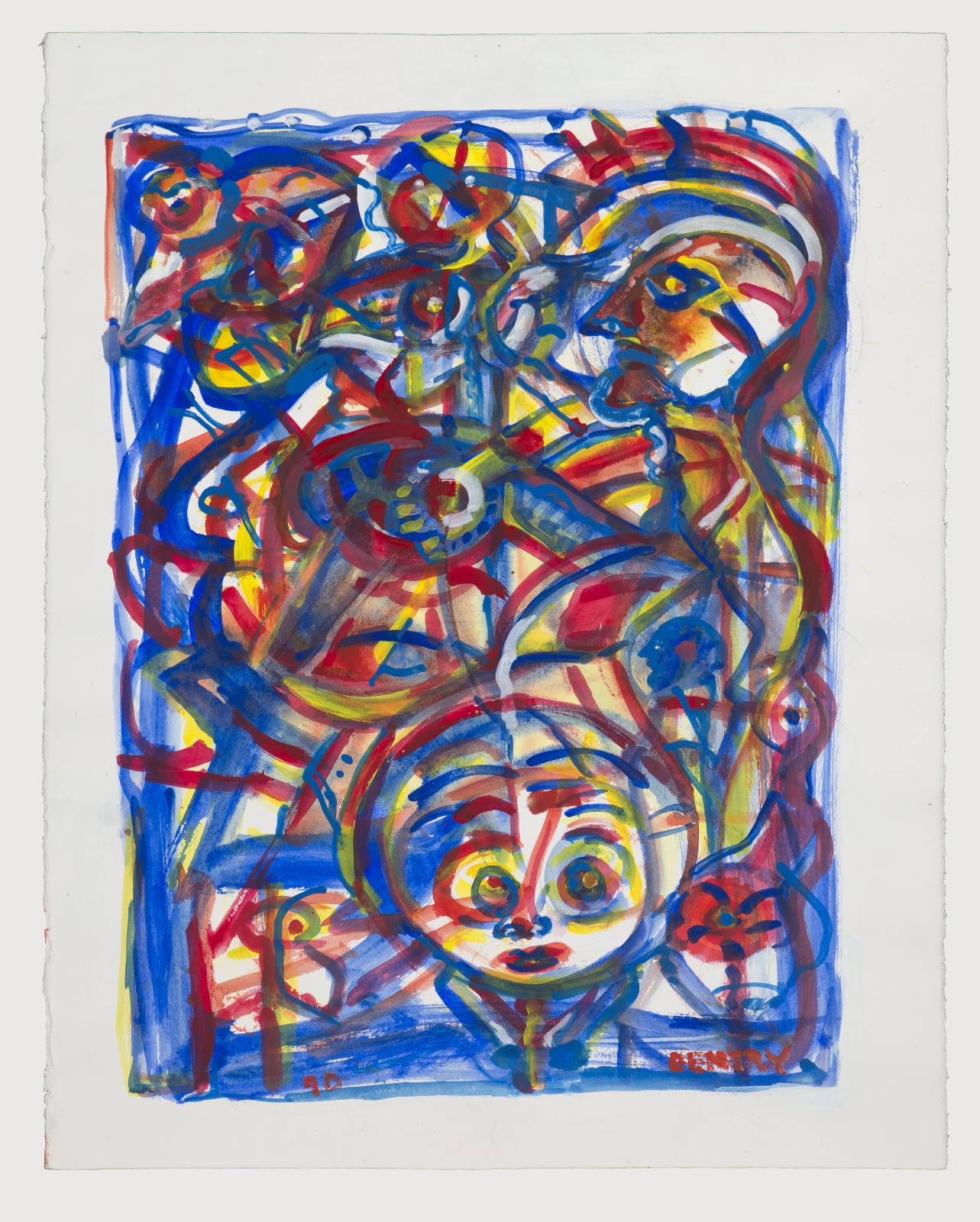
Herbert Gentry, American, 1919–2003; Our Web, 1990; watercolor and gouache; image: 25 5/8 x 22 1/4 inches, sheet: 29 1/2 x 22 1/4 inches; Saint Louis Art Museum, The Thelma and Bert Ollie Memorial Collection, Gift of Ronald and Monique Ollie 151:2017; © Mary Anne Rose and the Estate of Herbert Gentry
Herbert Gentry created dream-like fantasy worlds, populated by totems and mask-like faces emerging from a tangle of color contours. A devoted abstractionist, Gentry studied with the French cubist painter Georges Braque and American abstract expressionist artist Beauford Delaney. Gentry retained the figure as a means “to see form.” Above all, Gentry insisted his images be allowed to unfold freely without plan, relying on “a certain spontaneity” where his “subconscious plays a great role.”
May 16, 2025
The Wounded Seagull
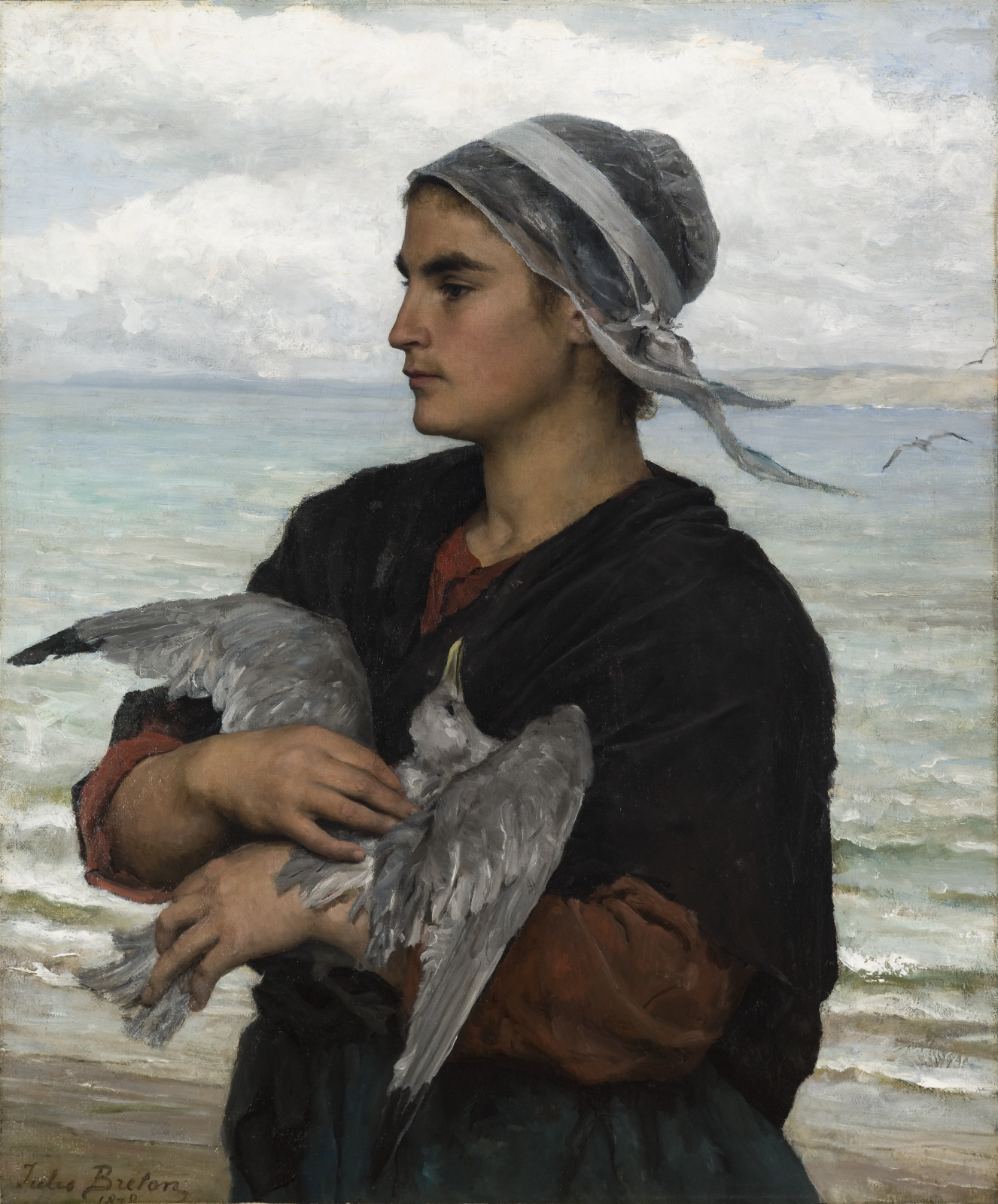
Jules Breton, French, 1827–1906; The Wounded Seagull, 1878; oil on canvas; 36 1/2 x 30 3/8 inches; Saint Louis Art Museum, Gift of Justina G. Catlin in memory of her husband, Daniel Catlin 27:1917
Jules Breton regularly visited the coastal region of Brittany in the west of France and here represented an idealized Breton peasant in profile against the wind. The artist was fascinated by the “mystic wildness” of Breton women and focused on this peasant’s compassion for a wounded bird while other healthy birds glide in the distance. This work was shown in 1881 at the first special exhibition at the newly founded St. Louis School and Museum of Fine Arts, the predecessor of the Saint Louis Art Museum.
May 15, 2025
Arrow Vase with Design of Dragons amidst Clouds

Arrow Vase with Design of Dragons amidst Clouds, 16th century; Chinese, Ming dynasty, Zhengde period through Wanji period; bronze; 23 7/8 x 11 1/2 inches; Saint Louis Art Museum, Gift of Robert E. Kresko 15:2005
The especially long neck of this unusual vase is decorated with two sinuous dragons chasing a flaming jewel above mountains and waves. The elongated neck and the triple openings identify this vessel as an arrow vase, a vessel that served as the target in an ancient Chinese drinking game. The goal was to get a short, feathered arrow into one of the three openings at the top of the vase. The loser was required to drink a cup of wine.
May 14, 2025
Two Open Triangles Up Gyratory II

George Rickey, American, 1907–2002; Two Open Triangles Up Gyratory II, 1982; stainless steel; 15 feet x 96 inches x 96 inches; Saint Louis Art Museum, Bequest of Morton D. May, by exchange 131:1984; © 2025 George Rickey Foundation, Inc. / Licensed by Artists Rights Society (ARS), New York
Two triangular forms shift atop this stainless-steel construction. Relying on gravity, equilibrium, and other principles of physics, George Rickey created kinetic sculptures that respond to wind currents, whether slight or more forceful. His spare geometric forms explore the fluctuating spatial relationships between the moving parts of this sculpture. The artist burnished the surface of his stainless-steel medium to create varying areas of reflective polish.
May 13, 2025
Saint Jerome Penitent in the Wilderness
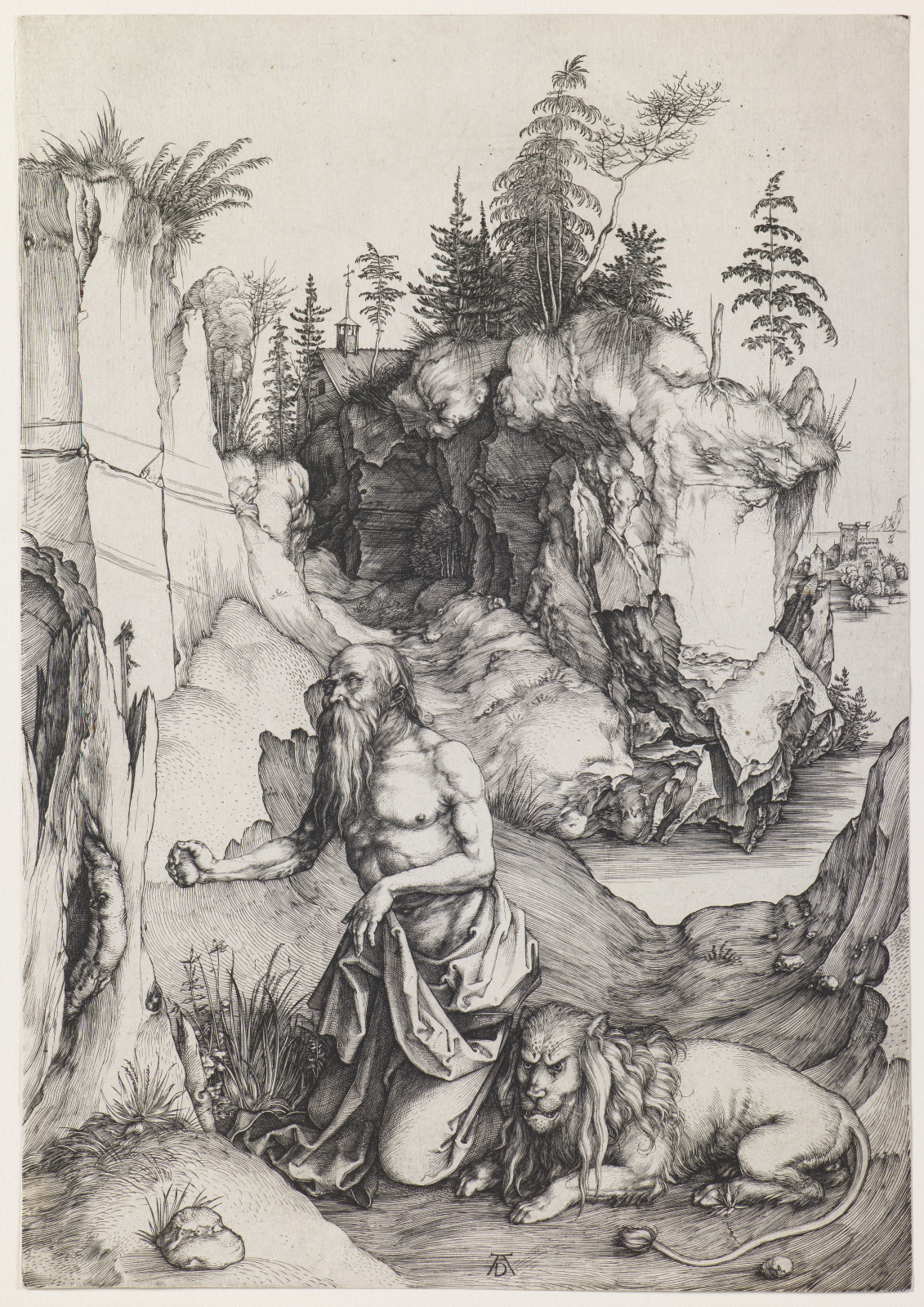
Albrecht Dürer, German, 1471–1528; Saint Jerome Penitent in the Wilderness, c.1496; engraving; plate: 12 3/4 x 8 7/8 inches, sheet (trimmed to plate mark): 12 3/4 x 8 7/8 inches; Saint Louis Art Museum, Gift of Mark S. Weil and Joan M. Hall 280:2021
The portrayal of the penitential St. Jerome, seen here, was an unusual subject for northern European artists. It was Albrecht Dürer’s most ambitious engraving yet, made as his career was just starting out. The saint is depicted kneeling in a sandy depression and contemplating a small crucifix that juts from the top of a withered tree stump. In his right hand he holds a stone meant for beating the breast during ritual acts of self-mortification.
For the first time, Dürer created an engraving defined by the bold interplay between lustrous black lines—the result of deep grooves cut into the plate—and the brilliant white sheen of the paper. Indeed, the paper itself is a significant element in this composition, conveying the relentless light and heat of a desert sun, the cliff sides, and Jerome’s weather-beaten skin.
May 12, 2025
Table Lamp
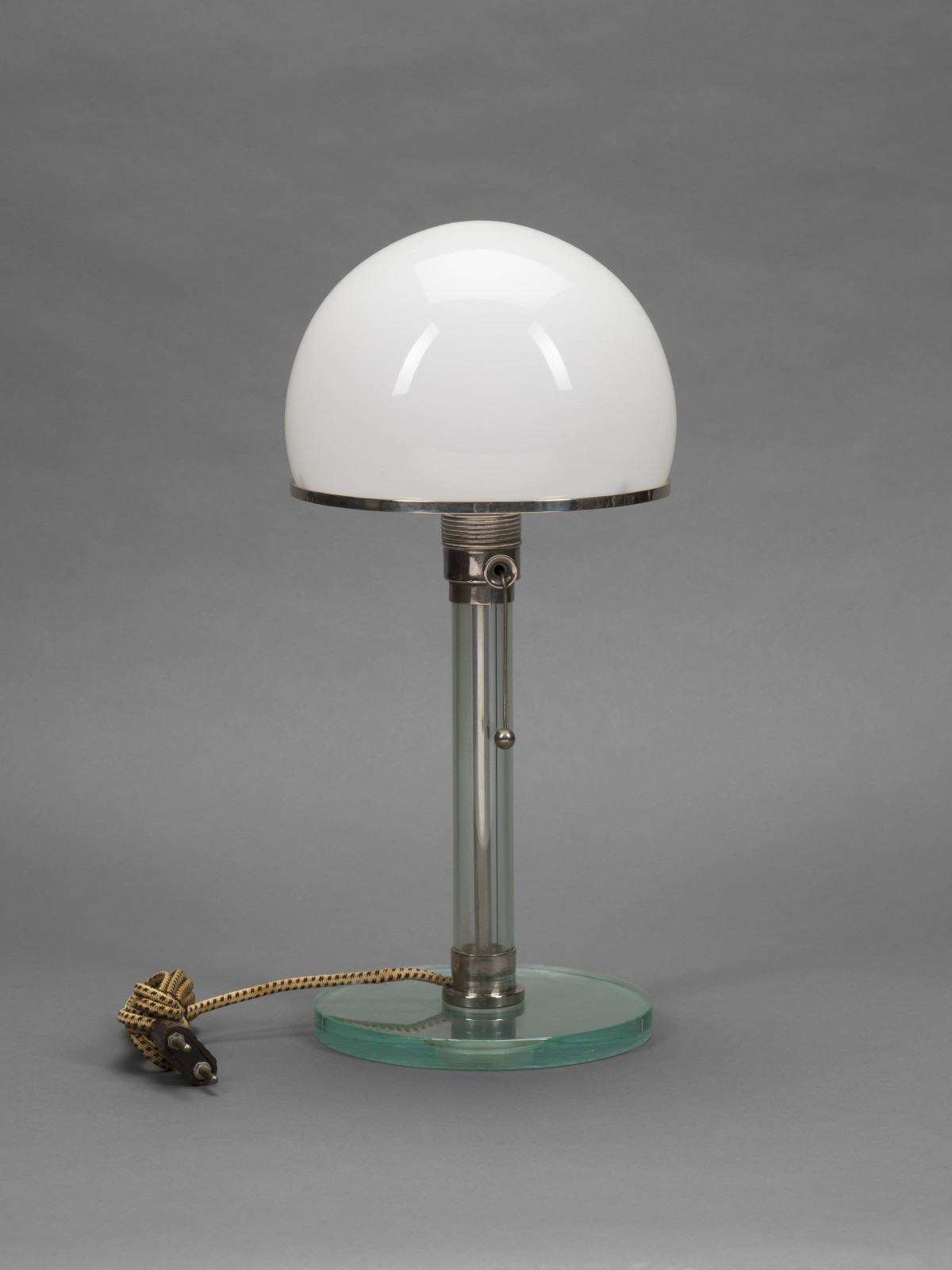
designed by Wilhelm Wagenfeld, German, 1900–1990; and Carl Jakob Jucker, Swiss, 1902–1997; made by Bauhaus Metal Workshop, Germany, active 1919–1933; Table Lamp, 1923–24; glass and nickel-plated brass; overall: 15 x 7 inches; Saint Louis Art Museum, Richard Brumbaugh Trust in memory of Richard Irving Brumbaugh and in honor of Grace Lischer Brumbaugh 165:1993a,b
Faced with the challenge of designing an electric table lamp, two Bauhaus students adopted the glass sphere as inspiration. Their design, one of the few Bauhaus lamps that went into production, repeats the geometric shapes of the circle, cylinder, and hemisphere in clear and milk glass. Bauhaus designers believed that simple forms lent themselves to mass production. In fact, this lamp’s components had to be custom made, and the lightbulb’s heat cracked early versions of the shade, which proves that simple designs are not inherently functional.
May 11, 2025
A Young Mother
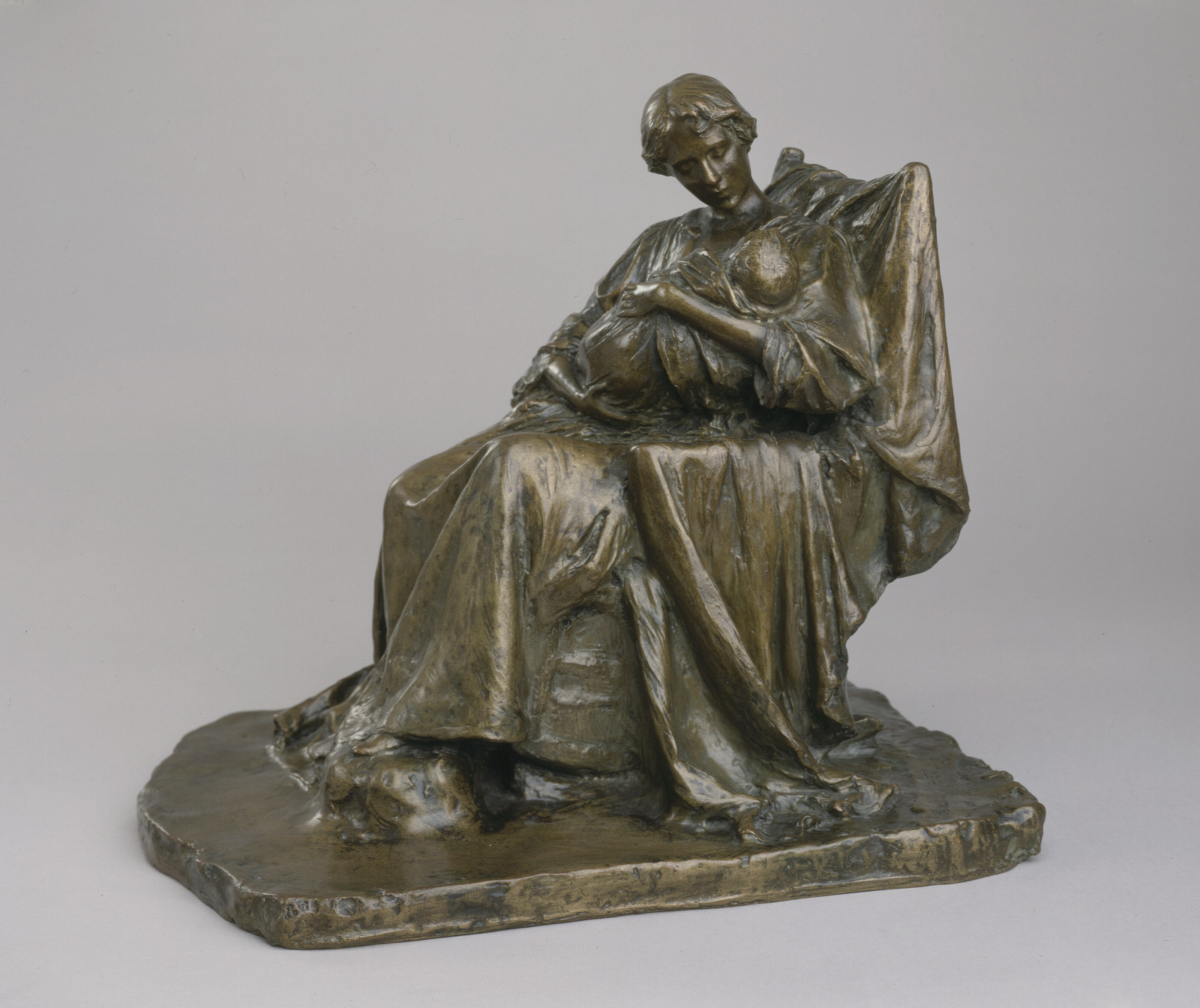
Bessie Potter Vonnoh, American, 1872–1955; fabricated by Roman Bronze Works, American, 1897–1980s; A Young Mother, 1896; bronze; 14 1/4 x 12 1/4 x 15 1/2 inches; Saint Louis Art Museum, Given in memory of Henry B. Pflager from his friends and wife, Katherine King Pflager, by exchange 134:1985
Although there is a convincing sense of the female body in this sculpture, the abundant fabric serves to soften the form emotionally. The mother’s facial features are simplified, but her tender gaze upon her child conveys the intimacy of their relationship. Bessie Potter Vonnoh was well known for her small bronze sculptures of everyday subjects. A Young Mother is considered one of the most sensitive studies of the mother and child theme in American sculpture.
May 10, 2025
Zayamaca #4

Al Loving, American, 1935–2005; Zayamaca #4, 1993; collage of cut painted paper mounted on Plexiglas; irregular: 50 1/2 x 20 1/2 x 1/4 inches; Saint Louis Art Museum, The Thelma and Bert Ollie Memorial Collection, Gift of Ronald and Monique Ollie 172:2017; Courtesy the Estate of Al Loving and Garth Greenan Gallery, New York © Al Loving
Layered spirals—a signature motif for Al Loving—create a dynamic vertical composition, which seems to sprout new forms as it ascends the wall. Since his early career, the artist created sprawling configurations of repeated shapes large enough to take over walls. Loving, along with contemporaries such as Sam Gilliam, was interested in producing art that rejected traditional supports such as wooden stretchers or frames (learn more). For this work, he constructed a Plexiglas backing, which gives the collage a free-floating sculptural presence.
May 9, 2025
Under the Awning, Zarautz
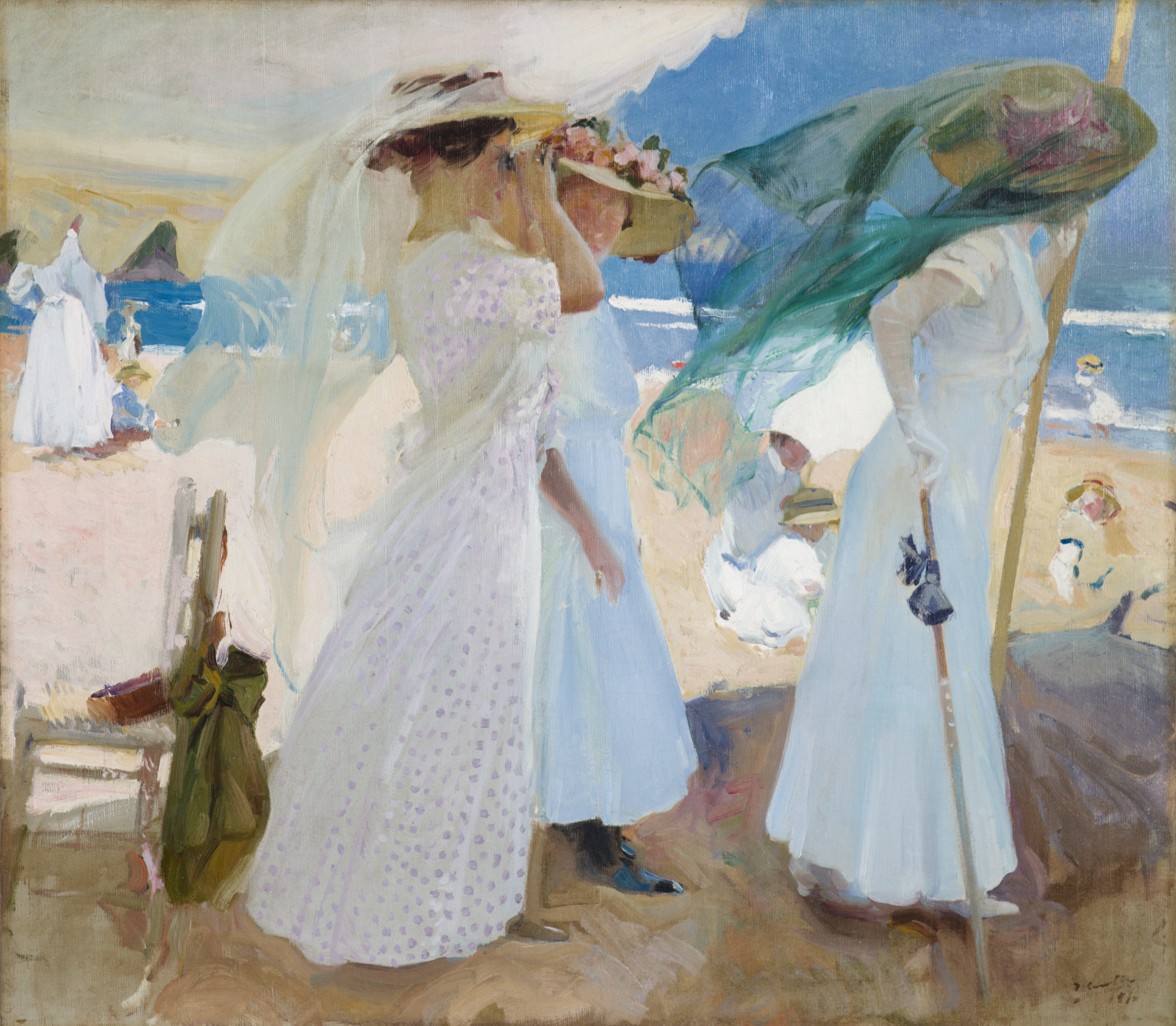
Joaquín Sorolla y Bastida, Spanish, 1863–1923; Under the Awning, Zarautz, 1910; oil on canvas; 39 x 45 inches; Saint Louis Art Museum, Museum Purchase 20:1911
A scalloped canopy shades the artist’s wife and daughters on the beach at Zarautz in northern Spain. The strong sea breeze blows back their veils in diaphanous clouds. Joaquín Sorolla painted this work outdoors on the same beach, which allowed him to capture the fleeting effects of the sun, sea, and wind. Paintings like this one earned Sorolla international fame. The Museum presented a major exhibition of Sorolla’s art in 1911, from which Under the Awning was purchased only a year after it was made.
May 8, 2025
St. Francis Contemplating a Skull
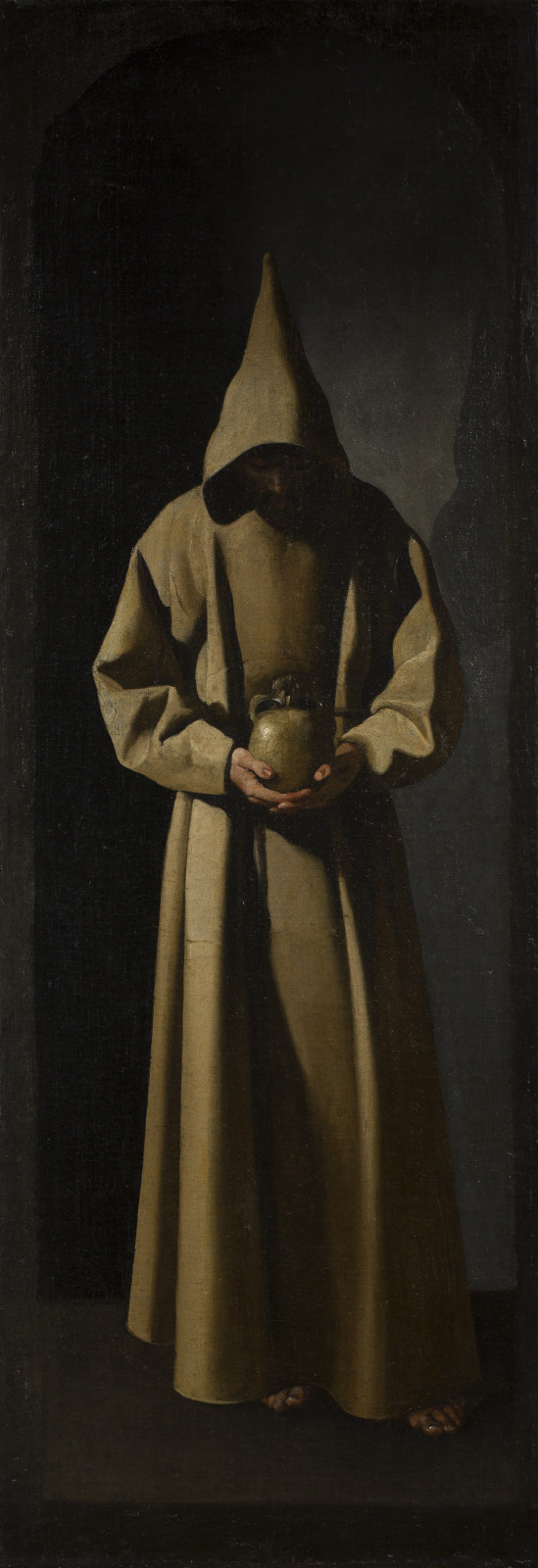
Francisco de Zurbarán, Spanish, 1598–1664; St. Francis Contemplating a Skull, c.1635; oil on canvas; 36 x 12 inches; Saint Louis Art Museum, Museum Purchase 47:1941
St. Francis of Assisi was a 13th-century Christian friar and preacher famous for having had a vision during which he received the wounds of Jesus. The artist reduced this figure to simple geometric solids, their three-dimensionality enhanced by stark lighting. The saint’s downcast gaze and shadowed face remove him from the viewer’s realm, making his contemplation of the skull a compelling model of religious devotion. Francisco de Zurbarán was a master of the single monumental figure, often based on models that he studied from life.
May 7, 2025
Landscape

Hine Taizan, Japanese, 1813–1869; Landscape, 1864; hanging scroll: ink on silk; image: 22 1/4 x 34 1/4 inches, scroll: 63 x 40 5/8 inches; Saint Louis Art Museum, William K. Bixby Trust for Asian Art 132:1984
This wide-format hanging scroll depicts a foreground spit of land in monochrome with trees and rocks projecting diagonally from middle right to lower left. A barely discernible far shore in pale gray washes appears from the middle left to middle right. Hine Taizan, a masterful painter with an eccentric personality, was among the most important Japanese literati artists of the 19th century. Taizan’s inscription is written in columns from right to left, as is typical in East Asian writing, across the top of the composition. It includes a poem composed by the 14th-century Chinese scholar and painter Chen Ruyan (c.1331–before 1371), who had originally inscribed this poem on a landscape painting depicting spring mountains.
May 6, 2025
Bentwood Spiral
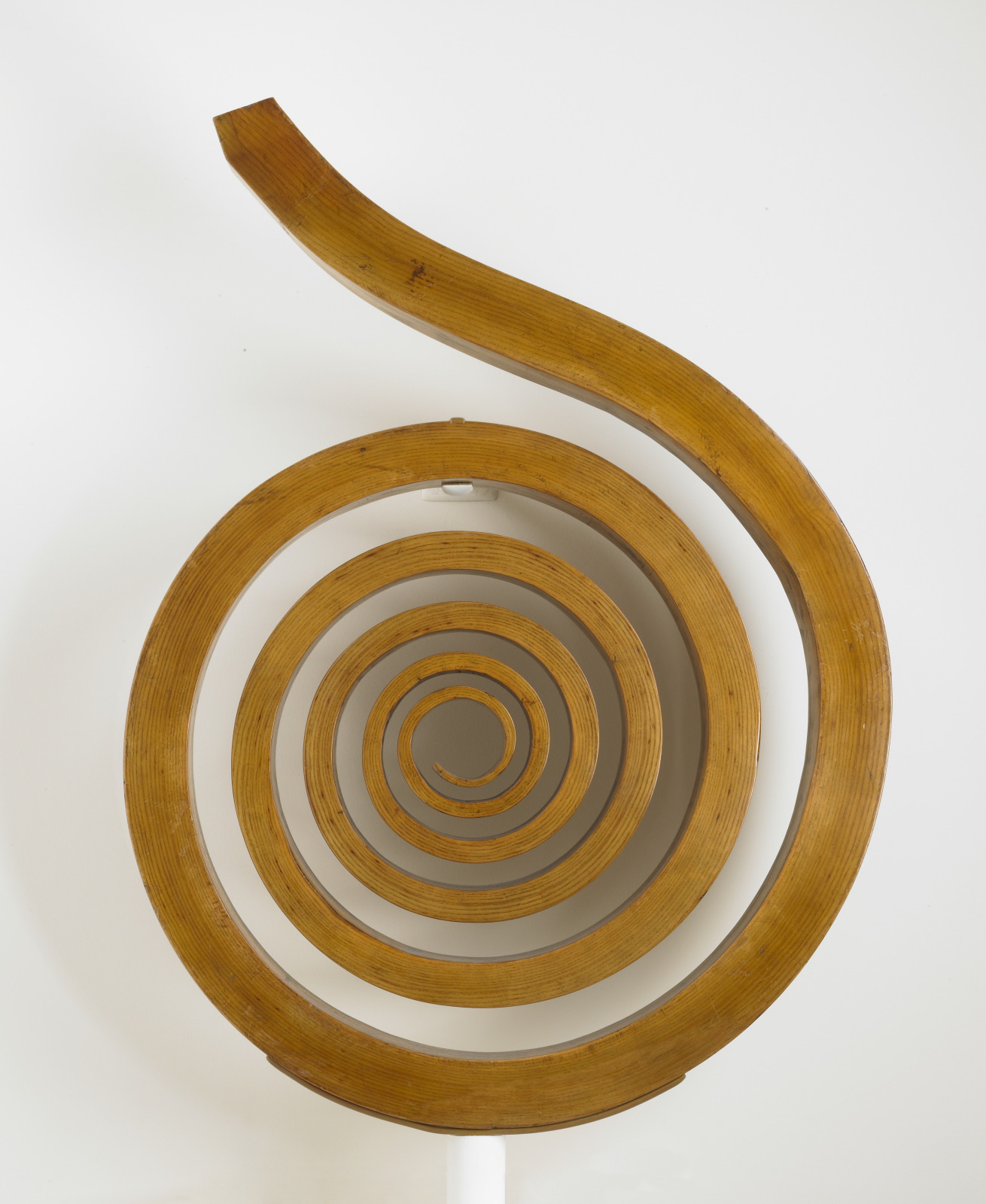
Gebrüder Thonet, Vienna, Austria, founded 1853; Bentwood Spiral, c.1885; ash; 51 7/8 x 38 1/8 x 4 7/8 inches; Saint Louis Art Museum, Gift of Frank Jacobs and Marylen Mann Jacobs 273:2001
The Austrian furniture manufacturer Gebrüder Thonet made this extraordinary spiral from a single board 28 feet long. The Spiral is a tour de force of Thonet’s wood bending capabilities, and the purity of its lines exemplifies the aesthetic appeal of bentwood furniture. During the 1850s, the firm’s founder, Michael Thonet, perfected a process of bending lengths of steamed beechwood rods in iron molds. Before then, the construction of most furniture relied on connecting separate pieces of wood by the use of interlocking joints. Thonet’s technological innovations led to the first mass-production of standardized furniture.
May 5, 2025
Watts 1963

Kerry James Marshall, American, born 1955; Watts 1963, 1995; acrylic and collage on canvas; 115 3/8 x 135 7/8 inches; Saint Louis Art Museum, Museum Minority Artists Purchase Fund 190:1995; © Kerry James Marshall, Courtesy of the artist and Jack Shainman Gallery, New York
This colorful, mural-sized canvas depicts Nickerson Gardens in the Watts neighborhood of Los Angeles. Artist Kerry James Marshall’s family lived there for two years after moving from Birmingham, Alabama. Marshall created Watts 1963 as part of his Garden Project, a series of five paintings that considers the irony of garden-named housing projects in Los Angeles and Chicago. The only autobiographical work of the series, Watts 1963 illustrates the artist at age eight, with his brother and sister. The children are placed under a festive banner carried by bluebirds of happiness bearing Alabama’s first state motto: “Here We Rest.” This painting reflects both the early optimism of the housing projects and the conditions of poverty, despair, and violence that eventually arose.
May 4, 2025
Cathedral
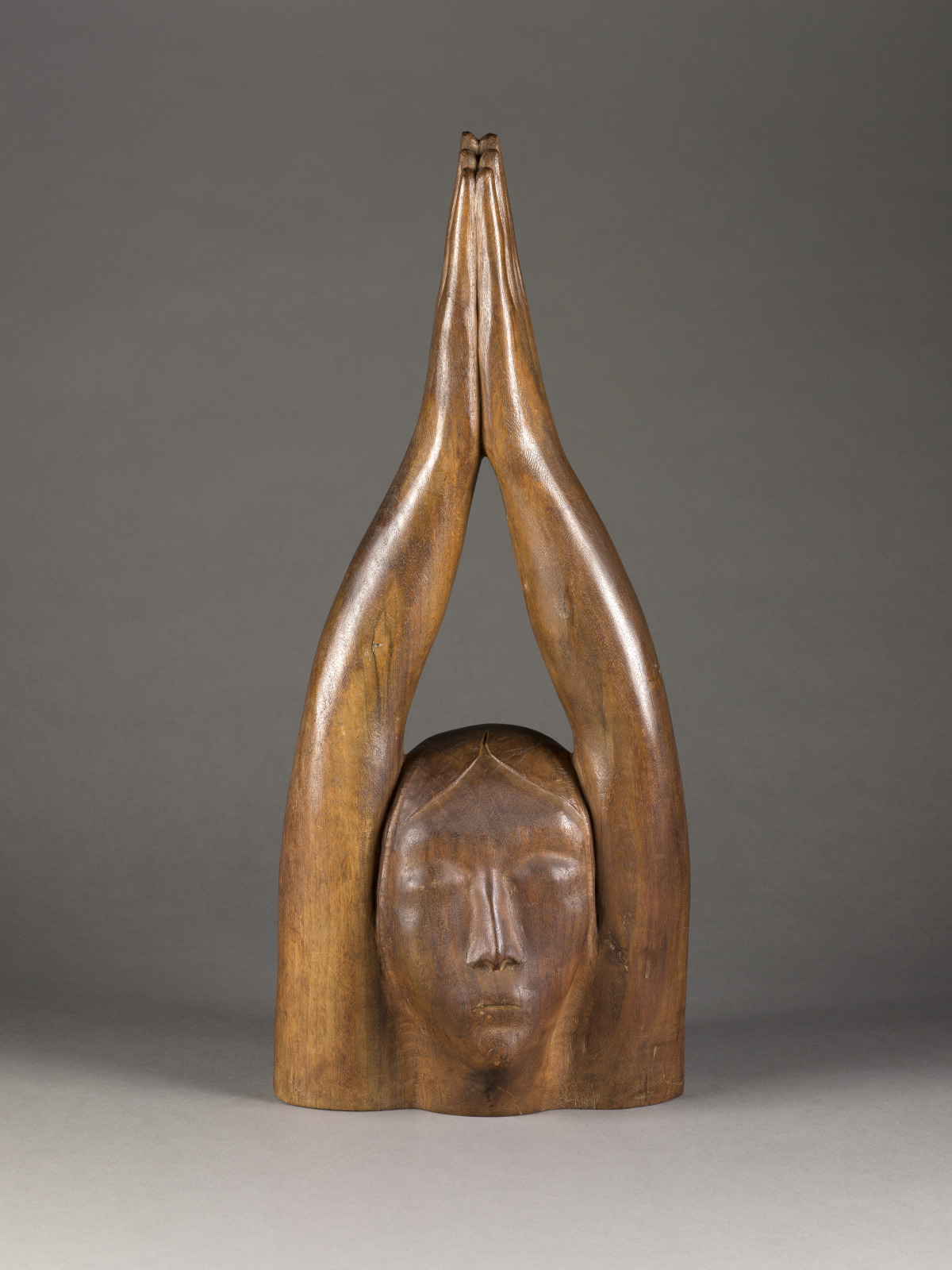
John Bernard Flannagan, American, 1895–1942; Cathedral, 1926; walnut; 20 5/8 x 9 1/2 x 6 inches; Saint Louis Art Museum, Gift of Morton D. May 231:1954
The raised arms and pressed palms of this figure echo the soaring architecture of a cathedral tower or spire and evoke prayer or supplication. The pose of the sculpture and the unusual abbreviation of the figure at the base of the neck and arms emphasize the vertical and draw the eye upward. The work is simply carved with a smooth unadorned surface while the title suggests a relationship between an individual and a place of reverence and worship.
May 2, 2025
Relief Fragment

Relief Fragment, mid-13th century; French or English; ivory; 1 3/4 x 6 3/4 inches; Saint Louis Art Museum, Museum Purchase 34:1927
On the left of this ivory sculpture, a lion sinks his teeth into the hindquarters of a stag whose head appears at the upper left-hand corner. Farther to the right, a hound bites the back of a reclining goat, which, seemingly unperturbed, munches calmly on a spikey leaf. The medieval carver adapted these animal forms to the rhythms of the undulating vine, inventively adjusting the popular animal interlace pattern to the narrow width of the relief’s border. Ivory, valued for its creamy color and exotic nature, was a favorite material for creating opulent objects in the 13th century. While it is not known what this fine carving originally adorned, it may have embellished a piece of furniture or a musical instrument.
May 1, 2025
Grouping of Dancers and Musicians

Grouping of Dancers and Musicians, c.300 BC–AD 300; Colima, Mexico, Late Formative period; ceramic; 5 3/4 x 11 5/8 inches; Saint Louis Art Museum, Gift of Morton D. May 306:1978
The elongated arms of 18 alternating men and women lock together to form a dance circle around four musicians holding drums and rattles. The female figures wear wrap skirts and simple banded headdresses, while the males’ attire consists of waistbands, ear ornaments, and elaborate headdresses. Detailed models such as this one provide unique insight into the costume and ritual performances of ancient West Mexico. Music and dance were central to the region’s festivals held to honor and praise ancestors, appease natural forces, and celebrate victories, marriages, and other significant events.
April 30, 2025
Judith and Holofernes

Giorgio Vasari, Italian, 1511–1574; Judith and Holofernes, c.1554; oil on panel; 42 1/2 x 31 3/8 inches; Saint Louis Art Museum, Friends Fund and funds given in honor of Betty Greenfield Grossman 2:1982
This biblical heroine’s strong arms and angled shoulders create lively diagonal lines that enhance her exaggerated musculature. Judith came to the rescue when General Holofernes and the Assyrian army laid siege to her city of Bethulia. Boldly infiltrating the Assyrian camp, Judith dined with Holofernes and, once he was drunk, she beheaded him with the help of her maid Abra. Using a pose copied from Michelangelo’s Sistine Chapel ceiling, Giorgio Vasari portrayed Judith as a physically powerful woman, a visible indication of her inner courage.
April 29, 2025
Sofa

Sofa, c.1815–20; American, New York; mahogany, ash, yellow poplar, brass, and reproduction wool moreen upholstery; 38 x 100 x 29 inches; Saint Louis Art Museum, Funds given by Edwin and Betty Greenfield Grossman, donors to the 2000 Art Enrichment Fund, Museum Purchase, Mr. and Mrs. William R. Orthwein, the Eliza McMillan Trust, the Decorative Arts Society, the Paul and Elissa Cahn Foundation, Mr. and Mrs. Sanford N. McDonnell, Jane and Warren Shapleigh, the Mary Elizabeth Rosborough Fund for the Decorative Arts, Mr. and Mrs. L. Max Lippman Jr., Mrs. Wilfred Konneker, Dr. and Mrs. F. Thomas Ott, John Roslevich, Dr. and Mrs. George R. Schoedinger III, and Mrs. Dorothy Wilson 38:2001
This sofa with scrolled arms and legs in the form of sea creatures, precisely carved from head to tail fin, represents an extraordinary vision skillfully executed. The stylized fish, commonly called a dolphin, became a popular motif in the decorative arts during an era of classical revival fueled by the discovery of artifacts from ancient Egypt, Greece, and especially Rome. The sofa’s double-scrolled crest rail, or top rail, echoes the curvilinear shape of the dolphins. A masterpiece of American furniture, this sofa achieves a supremely dynamic and ornamental effect through a combination of exuberant design and superb carving.
April 28, 2025
Landscape of the Four Seasons

Matsubayashi Keigetsu, Japanese, 1876–1963; Landscape of the Four Seasons, 1932; one of a pair of six-panel folding screens: ink and color on paper; overall: 67 3/16 inches x 12 feet 3/4 inches; Saint Louis Art Museum, Museum Shop Fund 214:1986a
These screens present a Chinese-style landscape, filled with characteristic mountain peaks, undulating hills, agricultural fields, and rustic dwellings, drawn with soft colors and ink. The scenes offer a tour through the four seasons of a year with pale pink cherry blossoms of spring and verdant landscapes of summer featured on the right-hand screen. The reds and browns of autumn and the snow-covered hills of winter grace the left-hand screen. The painting style is inspired by the “plain and bland” manner (in Chinese, pingdan; in Japanese, heitan), which relies on a few, spare strokes.
The artist Matsubayashi Keigetsu has written nine Chinese poems and two inscriptions across the upper portion of both screens. In the last inscription, he mentioned “Old Man Nakata,” namely Nakata Kitarō, who published printed volumes of Keigetsu’s works. It would have been appropriate for Keigetsu to thank Nakata for his support by presenting him with this pair of folding screens.
April 27, 2025
The Little Mountain Goats
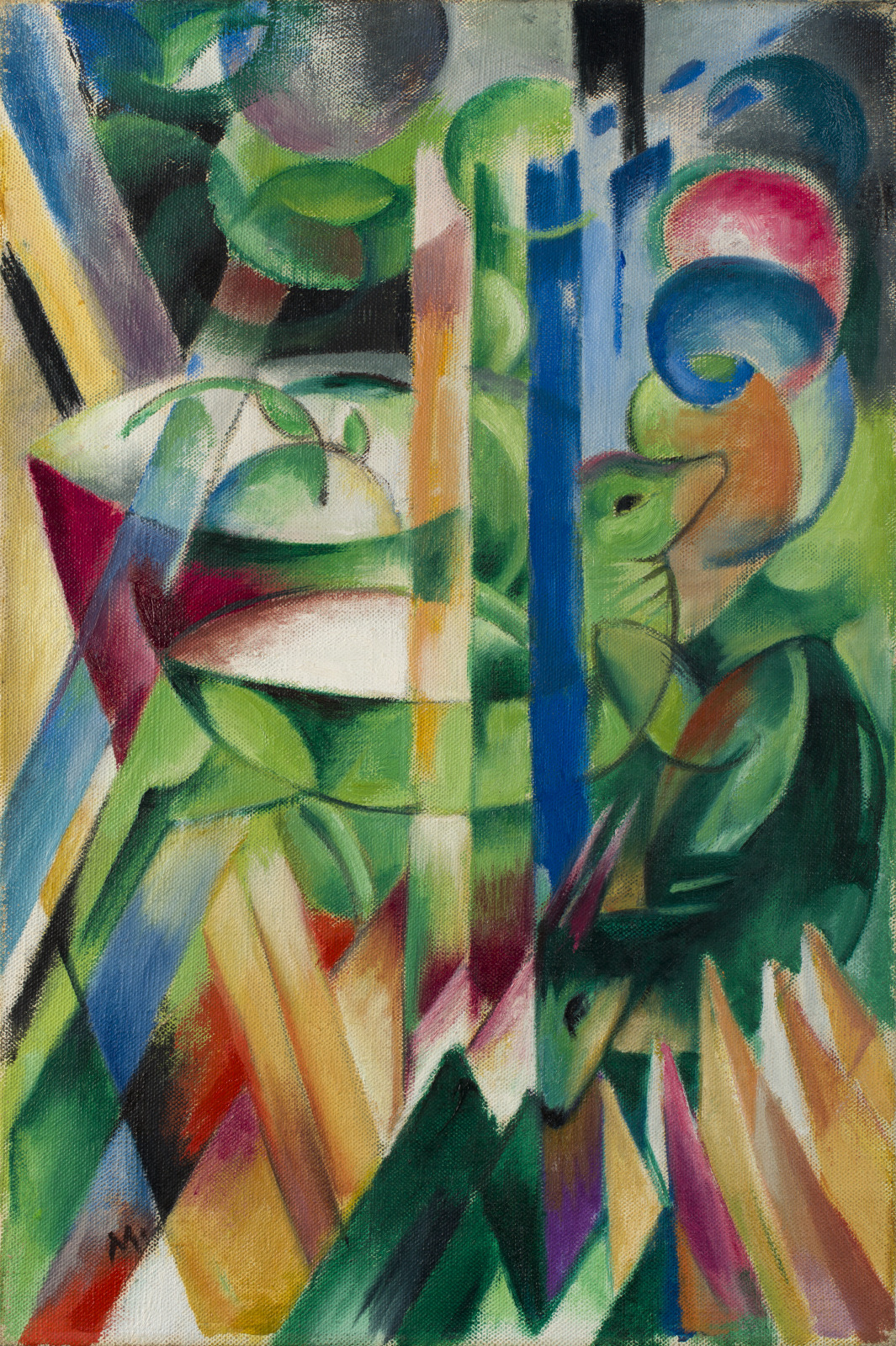
Franz Marc, German, 1880–1916; The Little Mountain Goats, 1914; oil on canvas; 23 7/8 x 16 inches; Saint Louis Art Museum, Bequest of Morton D. May 912:1983
In this charming work by Franz Marc, two green goats float above a landscape of spiky mountains. Marc was a member of the Der Blaue Reiter (Blue Rider) expressionist artist group and was renowned for his paintings of animals. He found animals to be lovely and pure and represented that purity with prismatic forms painted in transparent layers of glowing colors. Marc’s death in World War I (1914–1918) shocked his fellow expressionists and effectively disbanded the Blue Rider group.
April 26, 2025
Victoria Windsor-Clive

Lady Lucy Caroline Bridgeman, English, 1826–1858; Victoria Windsor-Clive, c.1856–1857; albumen print from glass negative; 6 1/16 x 4 1/8 inches; Saint Louis Art Museum, Gift of David R. Hanlon 168:2019
Victoria Windsor-Clive, a close relative of the artist, appears here in fashionable attire. The structural quality of her dress and her austere pose enhance the strength and presence of this small image.
Lady Lucy Caroline Bridgeman belonged to a family of English nobility. An aristocratic upbringing often enabled amateurs, especially noblewomen, to practice the expensive and time-consuming art of photography in the mid-19th century. This image is significant since it is the earliest work by a woman photographer to enter the Museum’s collection.
April 25, 2025
Self-Portrait

Sir William Orpen, Irish, 1878–1931; Self-Portrait, 1913; oil on canvas; 48 3/8 x 35 3/8 inches; Saint Louis Art Museum, Museum Purchase 135:1915
William Orpen produced a number of witty self-portraits, most of which depicted him in his role as artist. Here, he stands with brushes in hand, posing with furrowed brow before a large allegorical canvas he produced the same year, Sowing New Seed (Mildura Arts Centre, Mildura, Australia), which is a political observation on the state of the arts in Ireland. William Orpen worked as both an official World War I artist and a fashionable portrait painter in England and Ireland, portraying wealthy and prestigious sitters in a highly polished, traditional manner.
April 24, 2025
View of Cambridge from the Inner Basin
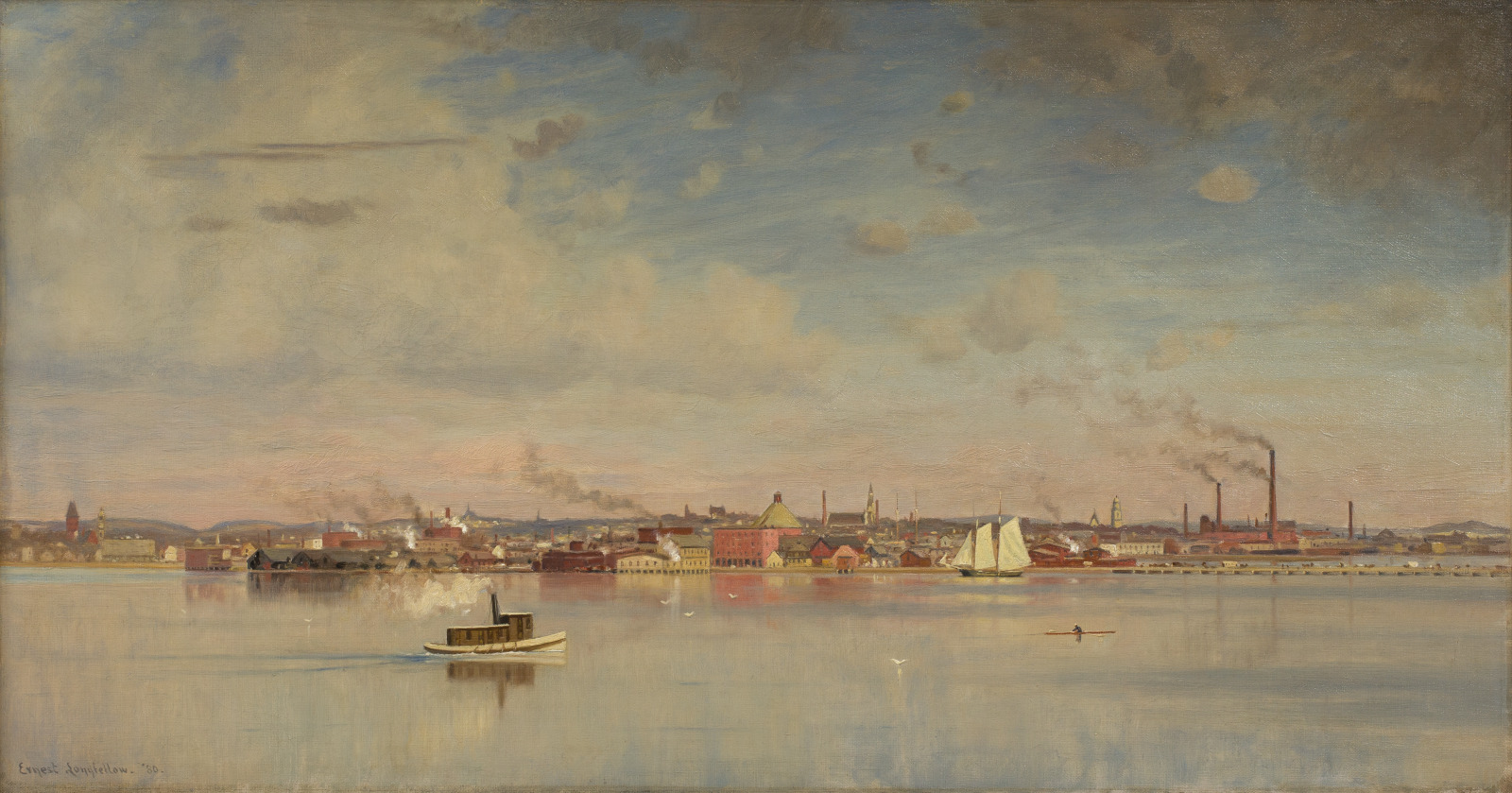
Ernest Wadsworth Longfellow, American, 1845–1921; View of Cambridge from the Inner Basin, 1880; oil on canvas; 15 7/16 x 29 7/16 inches; Saint Louis Art Museum, Given anonymously 468:1979
The shoreline of the Charles River in East Cambridge, Massachusetts, horizontally bisects this small canvas. Factories and industrial buildings stand alongside churches and courthouses, conveying the city’s importance as the center of manufacturing for the greater Boston region. Cambridge Gas Company used the conical building at the painting’s center to store gas for lighting the city. The billowing smokestacks at the far right belonged to the New England Glass Company (1818–1888), among the most significant early American glass manufacturers.
The West Boston Bridge, depicted at the far right, was personally relevant to the artist, Ernest Wadsworth Longfellow. His father, the poet Henry Wadsworth Longfellow, had published a poem titled The Bridge (1845), a meditation on love that established this bridge’s fame.
April 23, 2025
Incense Stand in the Form of Lotus Leaf with Holder in the Form of a Prunus Blossom
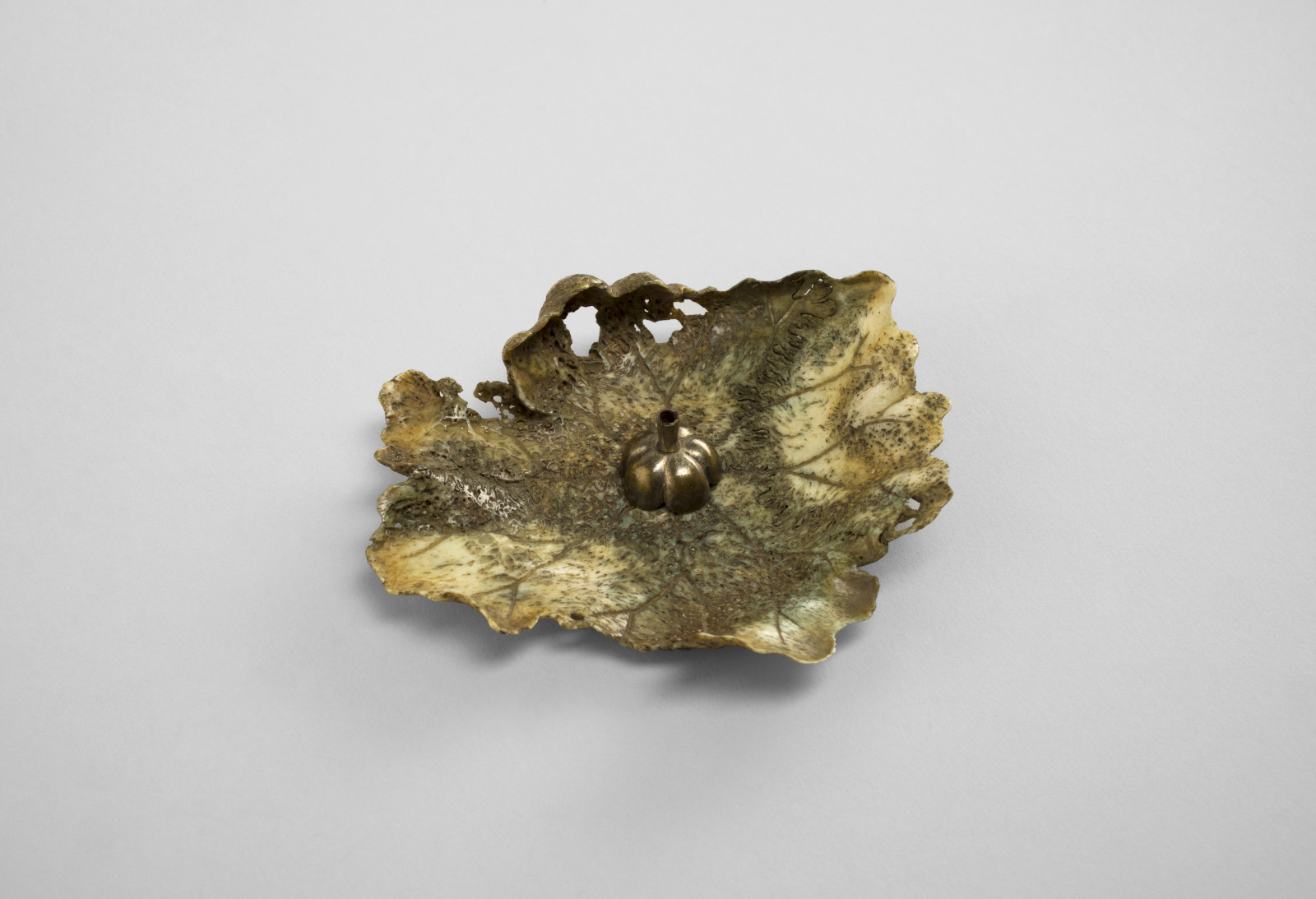
Imai Ōshin, Japanese, 1874–1951; Incense Stand in the Form of Lotus Leaf with Holder in the Form of a Prunus Blossom, late 19th–early 20th century; deer skull and silver; incense stand: 1 1/16 x 4 1/2 inches, incense stick holder: 5/8 x 3/4 inches; Saint Louis Art Museum, Museum Shop Fund 97:1992a,b
The artist Imai Ōshin carved a piece of deer skull into a small tray for burning incense. The form of the object is that of a decaying lotus leaf. At its center is a silver incense-stick holder mimicking a five-lobed prunus blossom. Working with the textures and coloration of the skull, Ōshin embellished its surface with lines, holes, and irregularities to simulate the broad and curled features of the natural leaf.
Mortality is the pervasive and disquieting theme in this work, made more forceful by the prunus flower, a symbol of ephemerality. The sensitive crafting of once-living tissue into an image of degeneration is a profound accomplishment. This elegant twist increases the expressive force of this object far beyond its modest size.
April 22, 2025
Levitator Abstraction
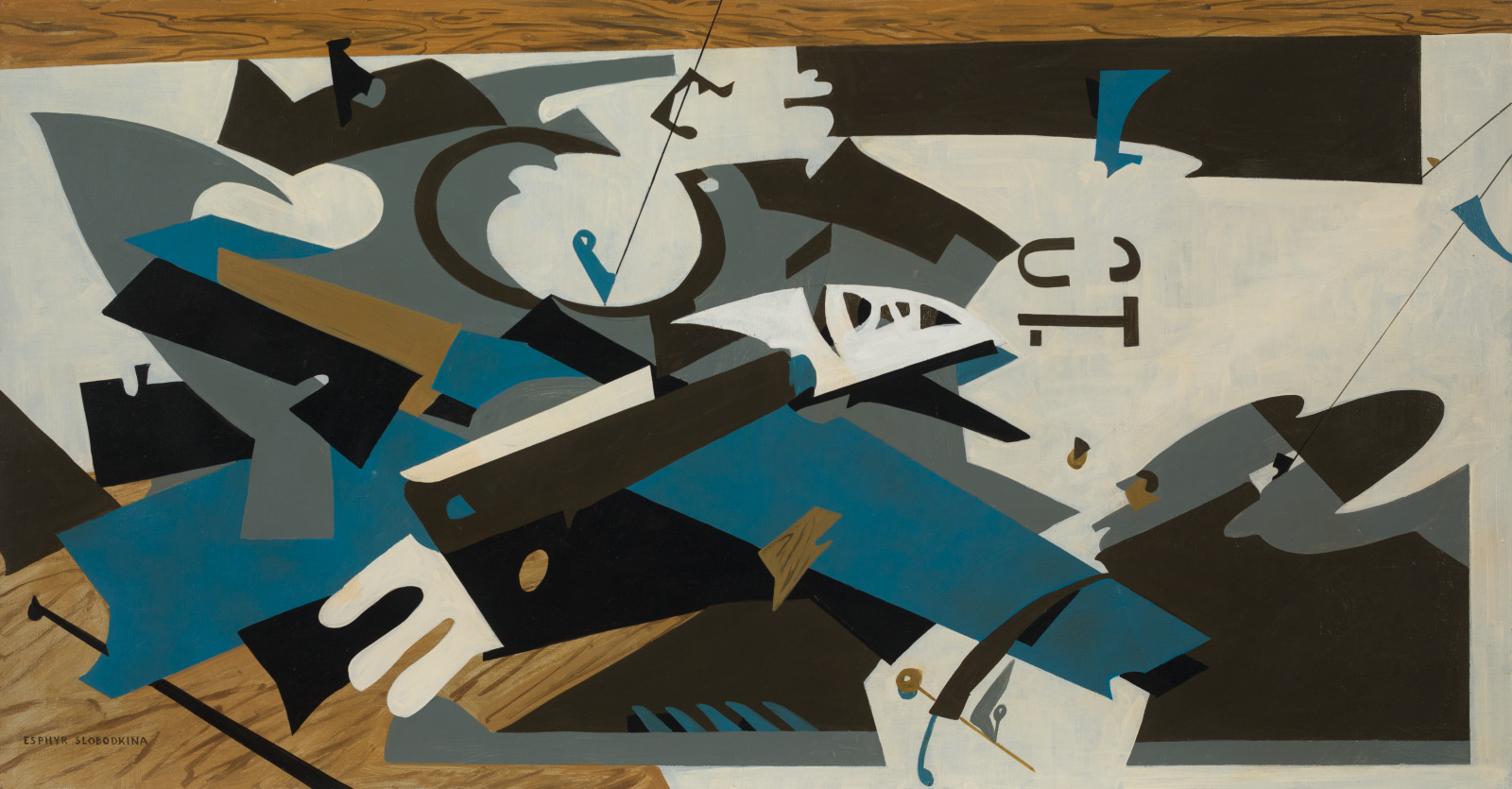
Esphyr Slobodkina, American (born Russia), 1908–2002; Levitator Abstraction, c.1950; oil on Masonite; 24 x 45 1/2 inches; Saint Louis Art Museum, The Linda and Harvey Saligman Endowed Acquisition Fund; Gift of J. Harold Pettus, Gift of Edward J. Costigan in memory of his wife, Sara Guth Costigan, Gift of August A. Busch Jr., Gift of the Estate of Moses Soyer, Gift of Mrs. Richard Meade in memory of her husband, Richard Worsam Meade IV, and Gift of Stuart M. Chambers, all by exchange 28:2019; Courtesy of the Slobodkina Foundation
A cockpit and wings slowly emerge from the array of angular, abstract shapes in Levitator Abstraction. This painting was inspired by the Turboprop Skyshark, a short-lived Navy aircraft carrier bomber designed in the early 1950s. The complex interlocking forms in this work reflect a debt to the artist’s early training in engineering and architecture. However, at times they appear more like a busy scattering of paper cutouts than the volumetric parts of an airplane. This is not surprising given Esphyr Slobodkina was also an experienced dressmaker. Despite the machinelike quality, the painting playfully mimics the proportions and wood-grain surface of the actual drafting board on which she worked. Slobodkina’s creative talents extended beyond painting, dressmaking, and architecture. She was also a well-respected textile designer and children’s book author and illustrator. Her most-loved book is the classic Caps for Sale.
April 21, 2025
Rug
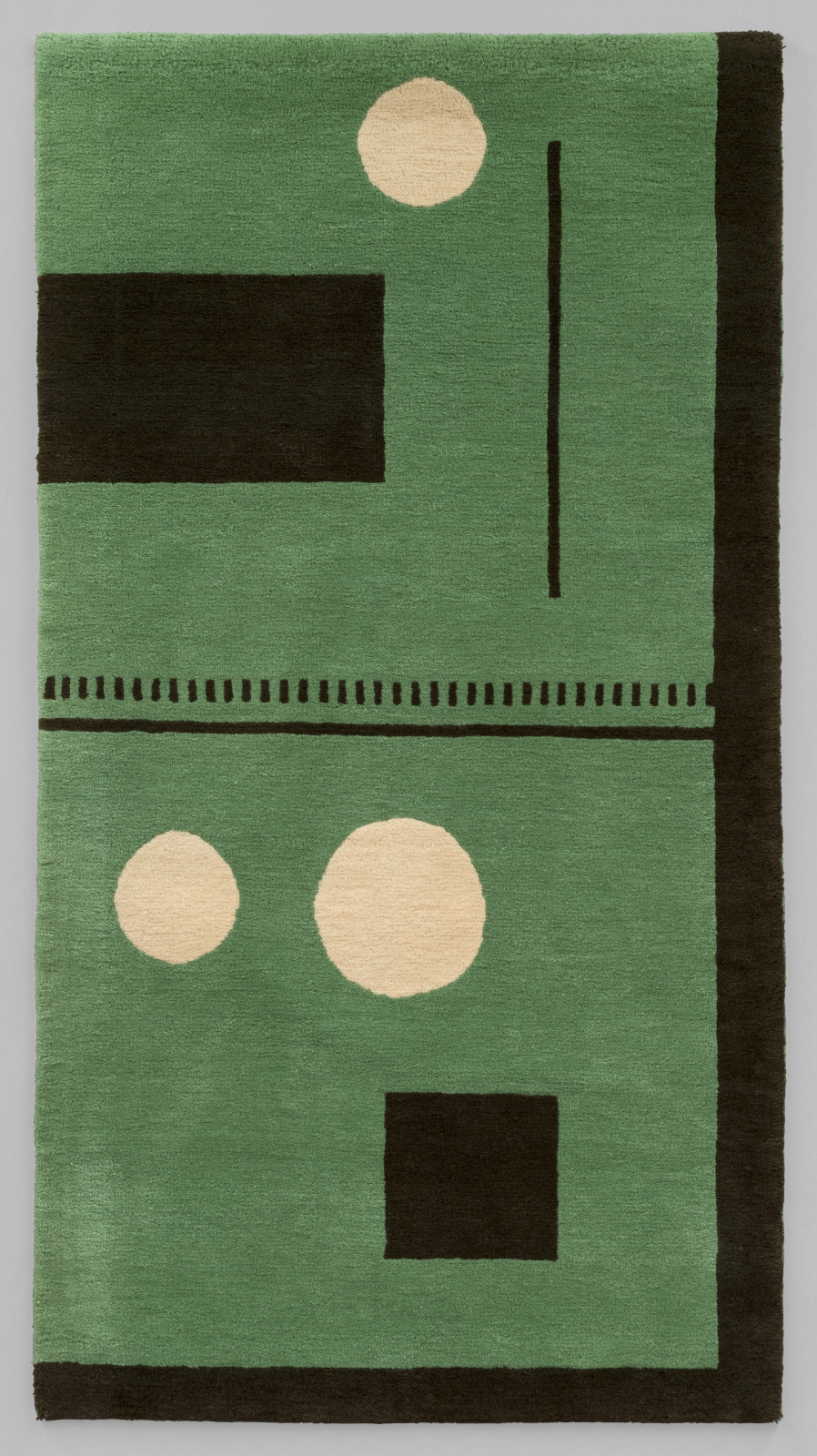
designed by Eileen Gray, Irish, 1878–1976; made by Tapis et Tissus de Cogolin, Cogolin, France, active 1879–1976; Rug, 1975; cotton and wool; 42 1/2 x 78 3/8 inches; Saint Louis Art Museum, Funds given by the Decorative Arts Society 49:1980
This “Irish green” rug, a variation on a woven design from 1926, represents the end of designer Eileen Gray’s prolific career in carpets. Permanently relocating to Paris from Ireland in 1906, Gray was initially popular for her Modernist rugs, whose simple, geometric designs were influenced by Cubism and De Stijl. Despite building her long career in France, a 1973 letter to the art critic Dorothy Walker reveals Gray’s enduring desire to return to her roots: “I should so like to have a carpet made in Ireland.”
April 20, 2025
Diptych with Scenes of the Passion and Afterlife of Christ
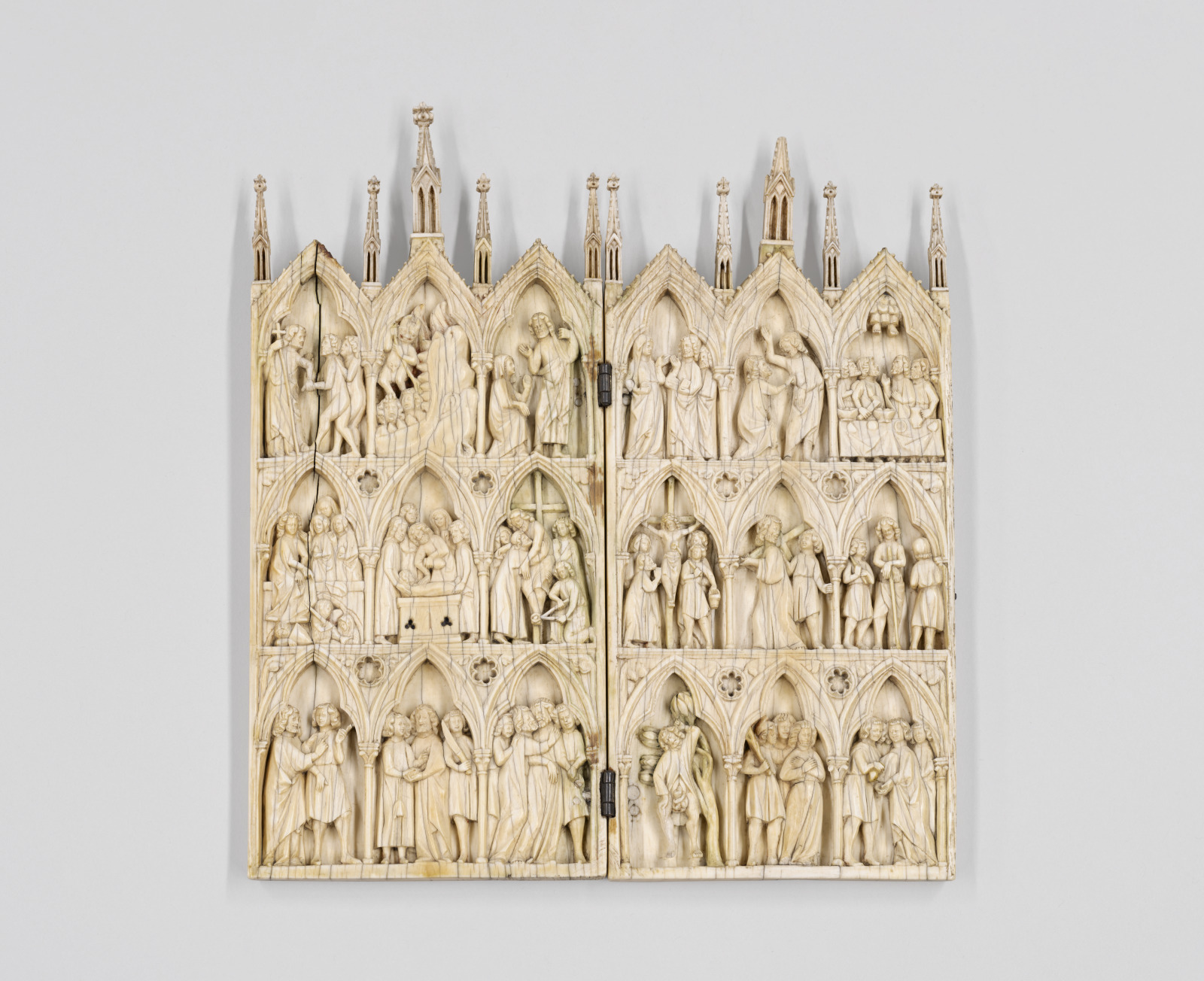
Diptych with Scenes of the Passion and Afterlife of Christ, 1250–70; French; elephant ivory with traces of paint; 3/8 x 8 3/16 x 7 1/16 inches; Saint Louis Art Museum, Museum Purchase 183:1928
This diptych, or two-panel work, exemplifies the outstanding quality and elegant forms found in ivory carving during the reign of Louis IX (1226–1270). This carving is distinctive for its narrow towers, or pinnacles, atop the architectural frame and the sophisticated treatment and clarity of its narrative. The artist reduced most of the depicted scenes to two or three figures, and often placed Jesus, as both infant and adult, in the center to make the scenes easier to interpret. The location of the figures further enhances the narrative flow. For example, in the first scene on the lower left, Judas, the apostle who helped the Roman authorities arrest Jesus, faces right and directs the viewer’s gaze in the direction of the continuing storyline. This sculpture was originally painted; visible traces of pigment include red on the Mouth of Hell (top row), blue on the tomb (middle), and green on the foliage of the architectural frame.
April 19, 2025
Incense Burner with Attached Figure

Incense Burner with Attached Figure, c.1200–1500; Maya, Guatemala, Late Postclassic period; ceramic with pigment; 15 1/4 x 13 3/8 x 14 3/4 inches; Saint Louis Art Museum, Gift of Morton D. May 173:1979
The slightly wrinkled face and sunken cheeks suggest this figure represents Itzamnaaj, one of the oldest and most important deities of the Classic and Postclassic Maya. He wears a feline headdress and a costume of heavy braided rope. The bottom of his tunic and pants are fringed with small bells typical of the copper ornaments worn during this period. Such censers became much more common in the Maya region during the Postclassic period. Their intimate size and scale suggests to some scholars a more individualized approach to religion at this time.
April 18, 2025
Ewer
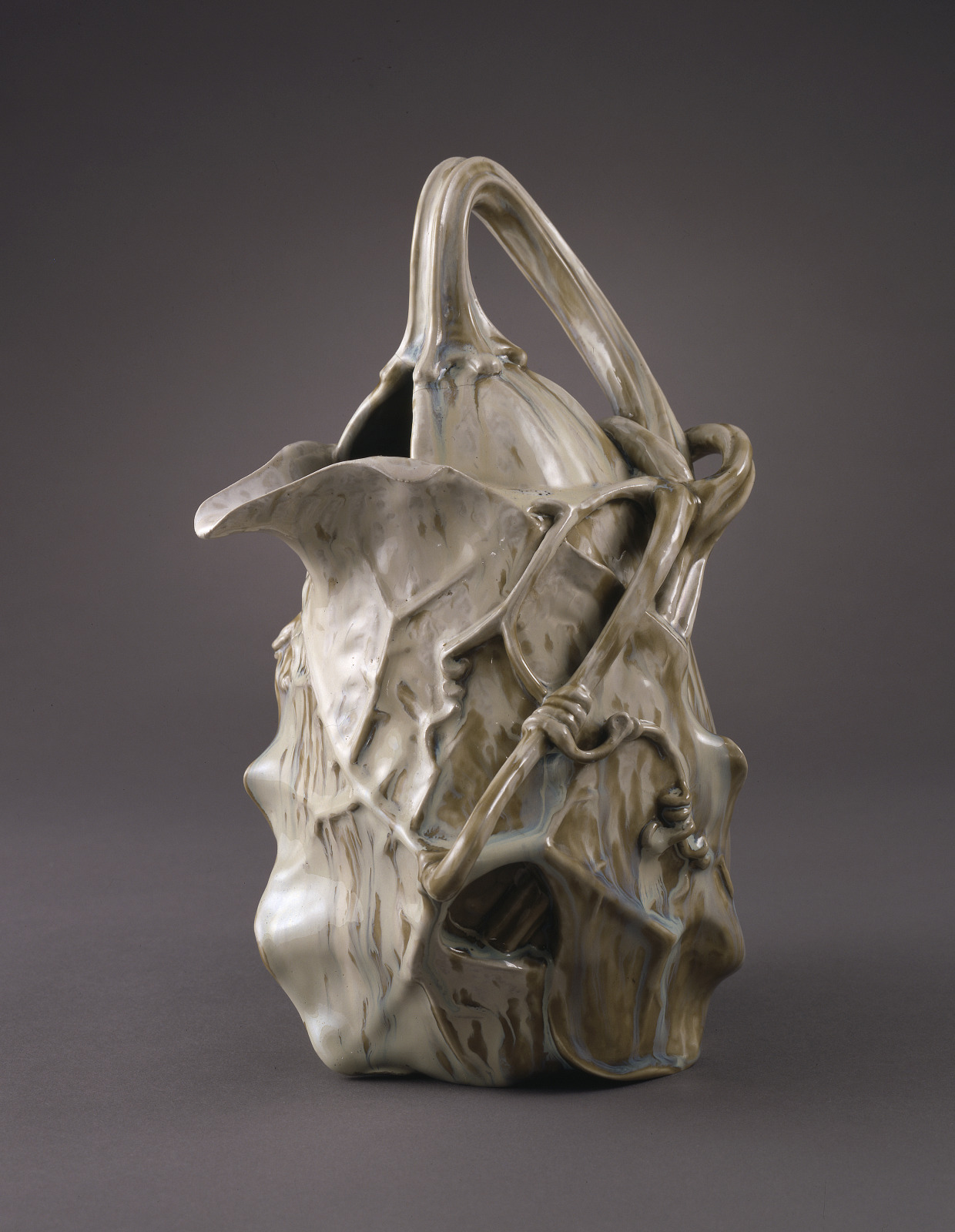
designed by Louis Majorelle, French, 1859–1926; modeled by Ernest Bussiere, French, 1863–1937; made by Keller & Guerin, Luneville, France, founded 1723; Ewer, c.1900; glazed earthenware; 11 7/16 x 7 5/16 x 7 7/8 inches; Saint Louis Art Museum, Funds given by Emily Rauh Pulitzer 2:2001
Asymmetrical in form, this gourd-shaped ewer is wrapped in its own leaf, secured with twisting vines that encircle the pitcher from top to bottom. Its lush surface is decorated with a thick, putty-colored glaze that enhances its organic form. This ewer is one of the few ceramic works that Louis Majorelle, the son of a cabinetmaker and ceramist, designed. Most likely, Majorelle collaborated with his friend, the sculptor Ernest Bussière, who translated Majorelle’s drawing into a three-dimensional model, which Keller & Guérin then fabricated. Majorelle even discretely formed his initials at the end of one of the twisting corkscrew vines. Only a small number of such ewers were made, each with a different glaze.
To honor the retirement of Brent R. Benjamin, The Barbara B. Taylor Director, from March 23 through June 30, Object of the Day will feature a selection of 100 transformative works of art acquired during his 22-year tenure at the Museum.
April 17, 2025
Sleeping Woman with Child

Käthe Kollwitz, German, 1867–1945; Sleeping Woman with Child, 1929; woodcut; image: 11 3/4 x 14 1/8 inches, sheet: 16 1/8 x 20 inches; Saint Louis Art Museum, The Julian and Hope Edison Print Fund and Museum Shop Fund 221:1992
With incredible economy of line, Käthe Kollwitz depicted an intimate scene of a mother resting with her baby. It is a rare moment of peace among her subjects, most of which center on the war’s devastating impact on women and children. The artist’s youngest son was killed in World War I at age 18. This knowledge adds a layer of intensity to the image as a personal memory of loss.
April 16, 2025
Lower Body Wrapper (kain panjang) with Design of the “Broken Dagger on Dark Background” (parang curigo latar cemeng) Motif
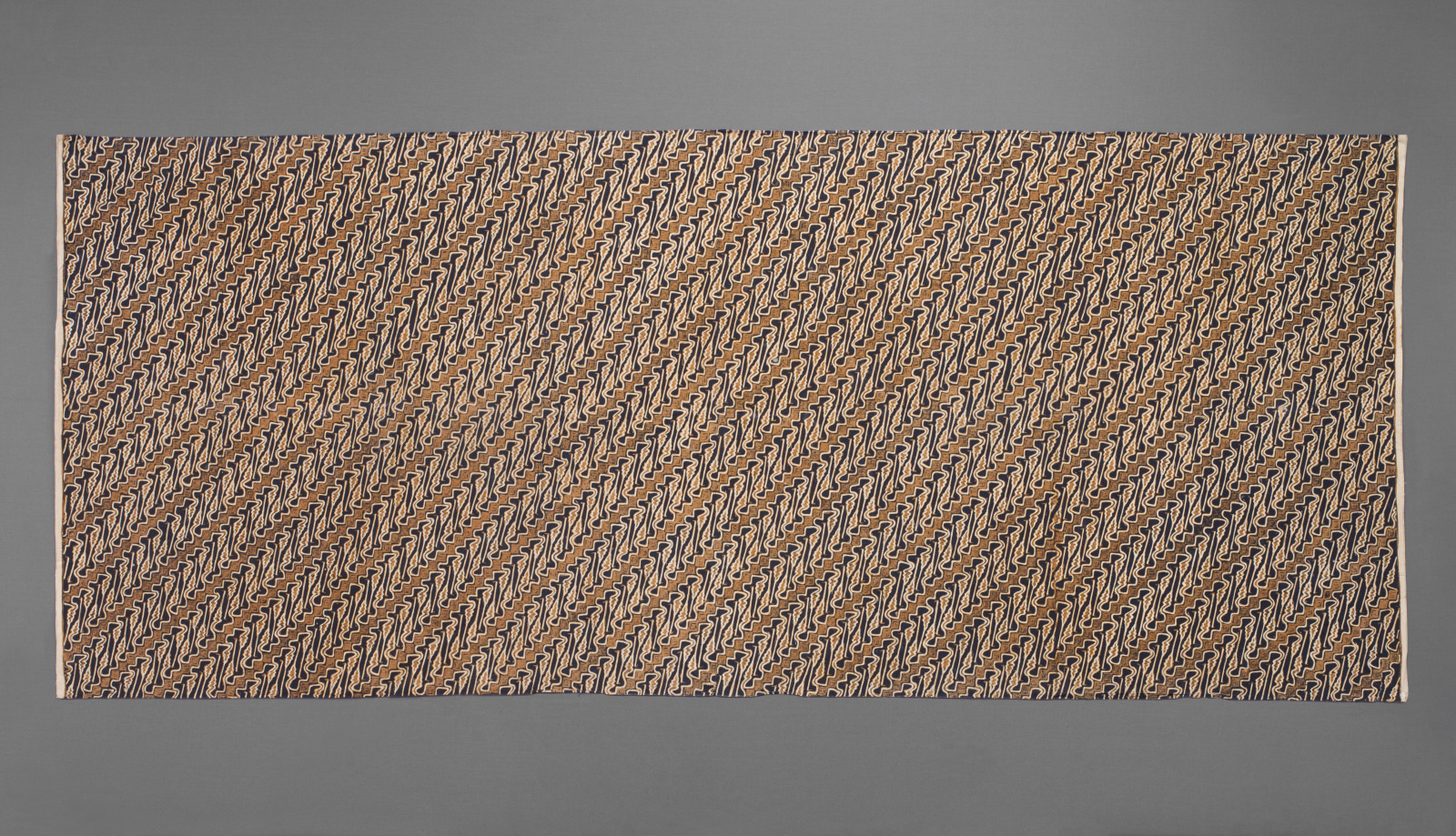
Lower Body Wrapper (kain panjang) with Design of the "Broken Dagger on Dark Background" (parang curigo latar cemeng) Motif, 1950–1975; Javanese, Indonesia; plain-weave cotton with hand-drawn wax-resist decoration (batik tulis) with synthetic dyes; 41 x 97 1/2 inches; Saint Louis Art Museum, Gift of William C. Siegmann 1189:2010
One variation of the parang rusak (broken dagger) pattern decorates this plain-weave cotton wrapper. Such parang or dagger motifs were once exclusively reserved for royal families and members of the aristocracy in Surakarta and Yogyakarta. Today they can be worn by anyone outside the courts. The parang pattern can be traced back to the legend of Sultan Agung, the 17th-century ruler of the court of Mataram in central Java. It is said the Sultan had an epiphany about the curved wavelike design while meditating. The design is emblematic of royal power and cosmic energy.
April 15, 2025
The Account Keeper
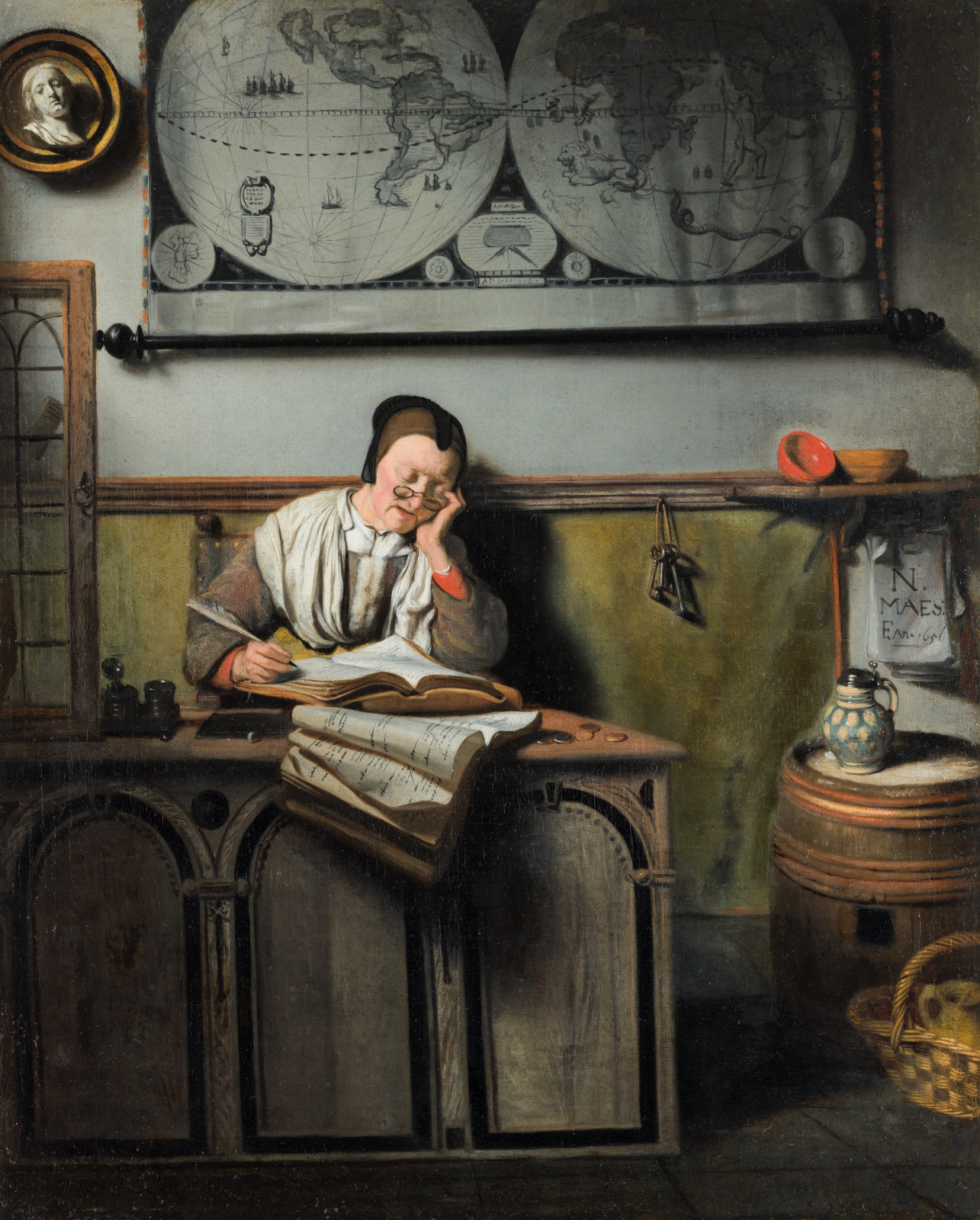
Nicolaes Maes, Dutch, 1634–1693; The Account Keeper, 1656; oil on canvas; 26 x 21 1/8 inches; Saint Louis Art Museum, Museum Purchase 72:1950
A woman dozes off as she updates her account books. Carefully defined horizontals (the desktop and wainscoting) contrast with verticals (the cabinet door, the pillars adorning the desk front), to create a carefully structured composition. The paired inkwells on the table echo the spheres on the map, and the bowls on the shelf are seen in both profile and full-interior views, all suggesting deliberate planning rather than casual observation. Such conscious order is in risk of collapse since the ledgers seem on the verge of toppling to the floor. The painting was undoubtedly intended to invite reflection, although we don’t know whether this woman represents a widow struggling to make ends meet, an elderly woman evaluating her life, or the sin of sloth.
April 14, 2025
Mural Fragment
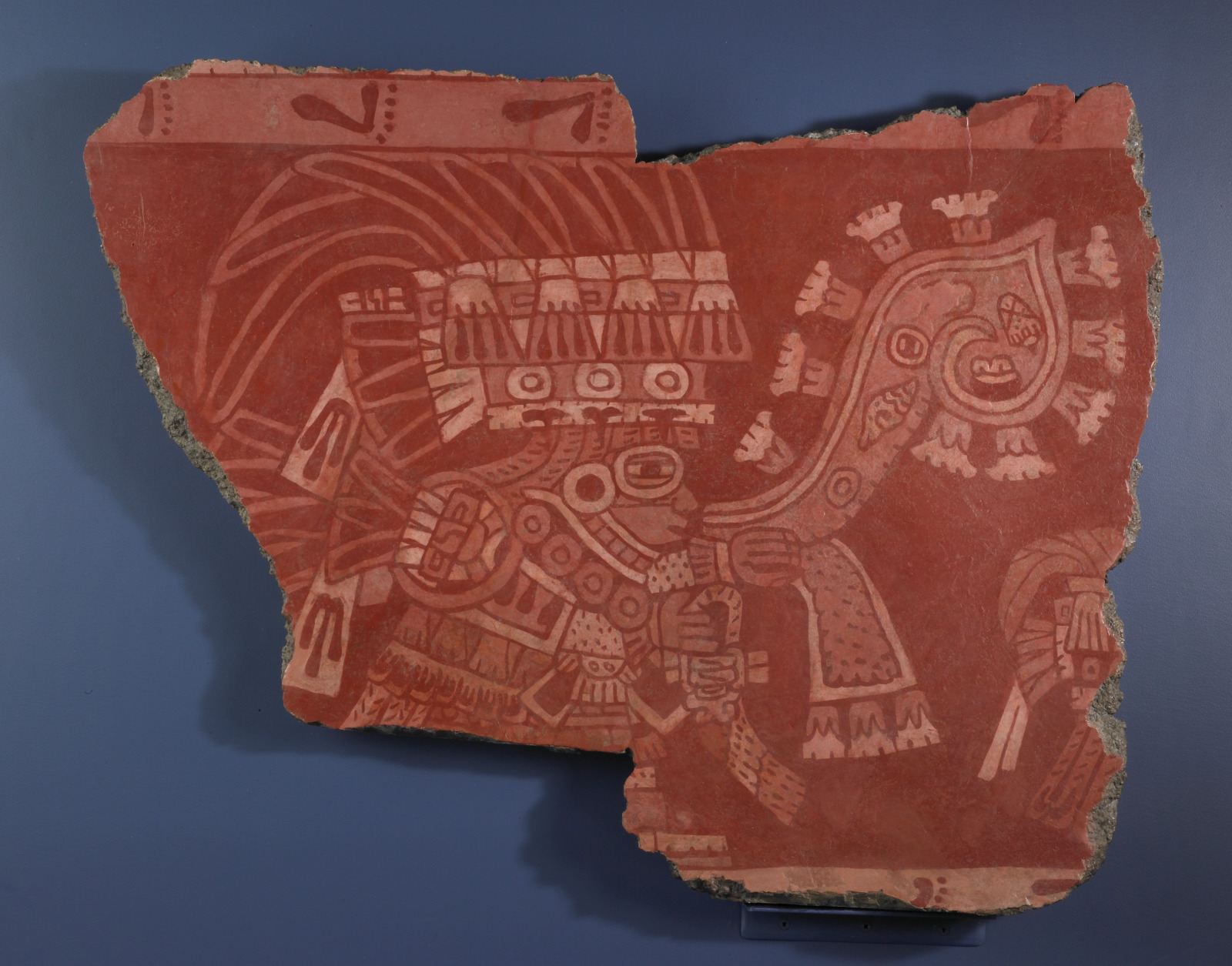
Mural Fragment, c.500–550; Teotihuacan, Mexico, Early Classic period; earthen aggregate, plaster, and pigment; 28 1/2 x 38 inches; Saint Louis Art Museum, Gift of Morton D. May 237:1978
This mural fragment shows a richly dressed Teotihuacan nobleman speaking as he carries an incense bag in his right hand. The large scroll coming from his mouth does not contain words, but instead is filled with shell and floral motifs. Directly in front of the nobleman is the small remnant of a glyph, perhaps his title or name. The palette, limited to a range of reds and pinks, suggests that the mural was made during the last years of Teotihuacan’s power. Murals decorated the walls of the city’s large apartment compounds; this one was once part of a larger room with many very similarly dressed figures, yet all with distinct name glyphs. Their processional arrangement on the compound’s lower walls may have guided visitors and residents to a small shrine.
April 13, 2025
Woman with Butterfly Tie

Woman with Butterfly Tie, c.1830–35; American, New York; oil on linen; 16 3/16 x 12 inches; Saint Louis Art Museum, Bequest of Edgar William and Bernice Chrysler Garbisch 13:1981
This young woman’s fashionable dress has diagonal pleats to emphasize shoulder width, ballooning “leg of mutton” sleeves, and a full skirt, all designed to accentuate her diminutive waistline. The perspective of her nose and brow line and overly small hands lack realistic proportion, but they create a rhythm of curving lines when paired with the locket chain, belt, and lace. The cost of a portrait painted by a pre-eminent artist was beyond the reach of many middle-class families. Consequently, they turned to the plentiful, less expensive self-taught artists who traveled from town to town to record their likenesses. These transient artists stayed in one spot only long enough to complete whatever work they could find before moving on to the next town. The output of these artists ranges from crude portrayals to the charm seen in this portrait.
April 12, 2025
Eiffel Tower

Robert Delaunay, French, 1885–1941; Eiffel Tower, 1924; oil on canvas; 63 5/8 x 38 1/8 inches; Saint Louis Art Museum, Gift of Mr. and Mrs. Morton D. May 536:1956
Robert Delaunay transformed the dark steel struts of the Eiffel Tower, Paris’s monument to technological progress, using bright saturated colors—orange, yellow, lavender, peach, and green. The tower’s truncated top and the maplike streetscape accentuate the aerial viewpoint. Robert and his wife, Sonia, developed their own approach to Cubism, emphasizing both the structural and expressive qualities of vivid color. Infatuated with modern machines, Delaunay’s early interest in aviation possibly informed this painting’s unique vantage point.
April 11, 2025
Chalice Veil

Chalice Veil, 1620–40; Italian; linen, needle lace; 24 x 24 7/16 inches; Saint Louis Art Museum, Museum Purchase 82:1927
These precious squares of lace and woven silk reflect the profound influence of pattern books on all forms of textiles in the early 17th century. Designs seen in Bartolomeo Danieli’s Vari disegni di merlette, published in 1639, served as models for lace makers developing the free-flowing patterns visible in this Chalice Veil. Composed of scrolling, narrow, tape-like strips of linen linked with tiny stitches, the veil shows how lace expanded beyond cuff and sleeve embellishment to become a fabric.
April 10, 2025
Man with a Waterskin

George Minne, Belgian, 1866–1941; Man with a Waterskin, 1897, cast 1897–1903; bronze; 26 1/8 x 10 3/8 x 16 3/4 inches; Saint Louis Art Museum, Gift of Justina G. Catlin in memory of her husband, Daniel Catlin, and Gift of Mrs. Eugene C. Tittmann, St. Louis, both by exchange 28:2017
In this delicately balanced sculpture, a slender youth stands, legs rooted to the earth, emptying a leather waterskin. Although secular in theme, this figure was originally derived from a depiction of the biblical figure John the Baptist. The water sack retains spiritual associations of purification, while simultaneously reflecting 19th-century ideas of human’s integration with nature, represented here by the water. Artist George Minne was known for his sculptures of the human figure in a distinctive elongated style, which won him international recognition.
April 9, 2025
Woman’s Long-sleeved Robe (furisode) with Design of Autumnal Flowers, Leaves, Fans, and Waves
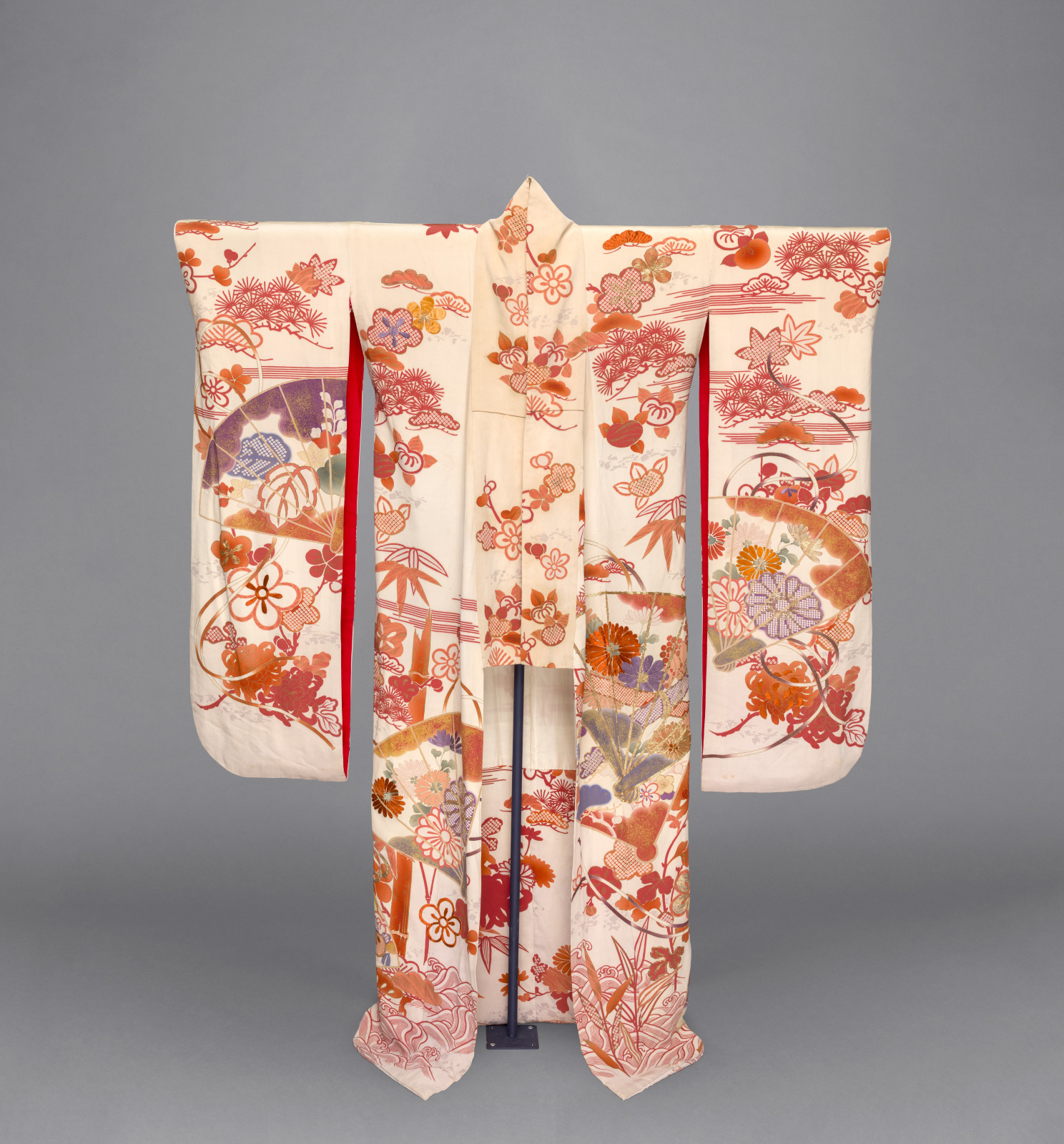
Woman's Long-sleeved Robe (furisode) with Design of Autumnal Flowers, Leaves, Fans, and Waves, early to mid-19th century; Japanese, Edo period; silk plain-weave crepe (chirimen) with stencil-resist (katazome), hand-drawn paste resist dyeing (yūzen), and embroidery (shishū); 68 1/2 x 51 inches; Saint Louis Art Museum, Gift of George R. Boyle 348:1958
The Japanese term for this garment, furisode (“swinging sleeves”), refers to the long sleeves traditionally worn by younger and unmarried women. The sleeves are attached to the body of the robe only at the shoulder, with the inner edge left open past the shoulder. This allows the underrobe (juban) to show when worn and also permits the sash (obi) to be tied above the hips.
This furisode is made from a white silk plain-weave crêpe. The fabric is generously decorated with autumnal flowers, fruits, and leaves. These motifs were created using stencil-resist, hand-drawn paste resist dyeing, and embroidery. The bright colors reflect the wearer’s youth.
April 8, 2025
Dish with Handle in the Form of a Bird
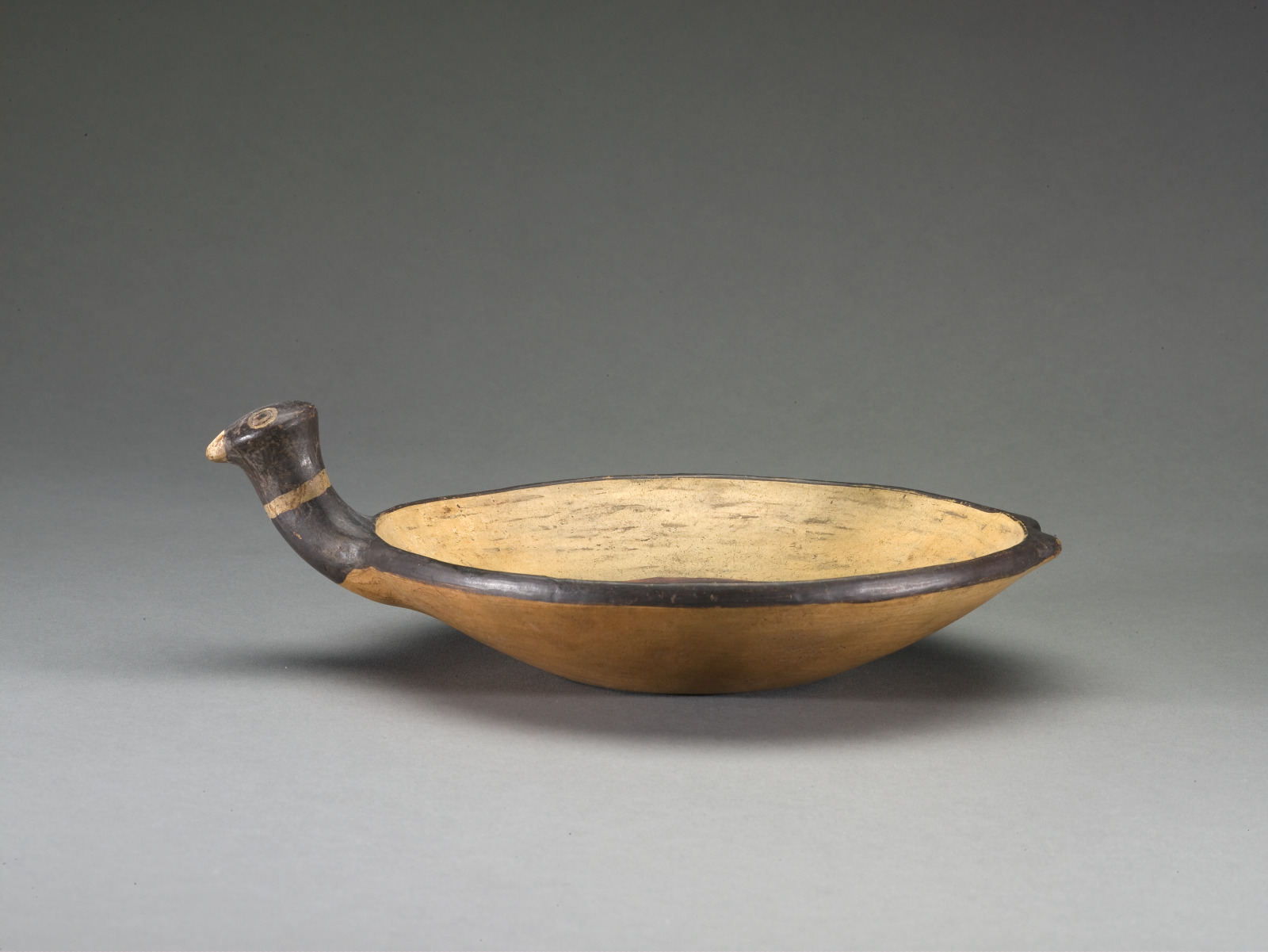
Dish with Handle in the Form of a Bird, 1476–1534; Inka, Peru, Late Horizon period; ceramic with pigment; 2 3/4 x 9 5/16 inches;Saint Louis Art Museum, Gift of Mrs. John R. Green 64:1959
The neck and head of a bird forms the handle of this dish, with two nodes on the opposite side representing the tail feathers. Inka dishes often have handles that are anthropomorphic or zoomorphic in design. The gently curving interior is painted with a wide muted yellow band and a dark red center. A fish with a curving body and multiple fins adorns the central portion of the dish; the spots and prominent whiskers suggest it may represent a catfish. Inhabiting the muddy bottoms of lakes and rivers, catfish were an important food source to the Inka. Animal remains recovered during archaeological investigations attest to the maritime riches of the Peruvian coast.
April 7, 2025
The Greyhounds of the Comte de Choiseul
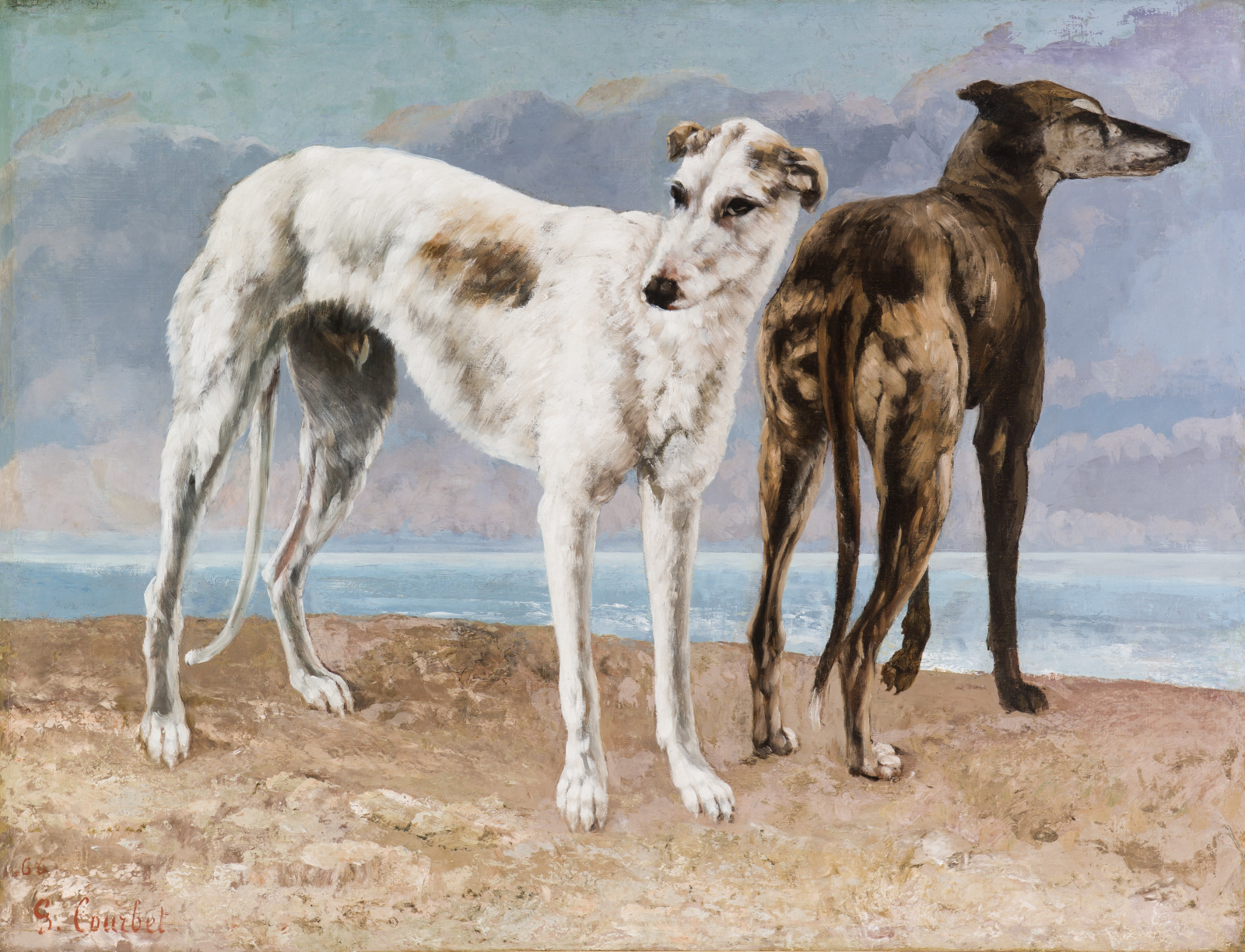
Gustave Courbet, French, 1819–1877; The Greyhounds of the Comte de Choiseul, 1866; oil on canvas; 35 1/4 x 45 7/8 inches; Saint Louis Art Museum, Funds given by Mrs. Mark C. Steinberg 168:1953
Here, Gustave Courbet shows two greyhounds with an aristocratic bearing. Perhaps they reflect characteristics of their owner, the young Count de Choiseul, who had proudly commissioned their portrait. The artist was a noted animal painter and often represented animals with human-like emotions. The elegant greyhounds are viewed from below to emphasize their height. They are silhouetted against the expansive shore of Deauville on the Normandy coast in France, where Courbet spent the summer of 1866 as a guest of the Count.
April 6, 2025
Standing Male Cupbearer
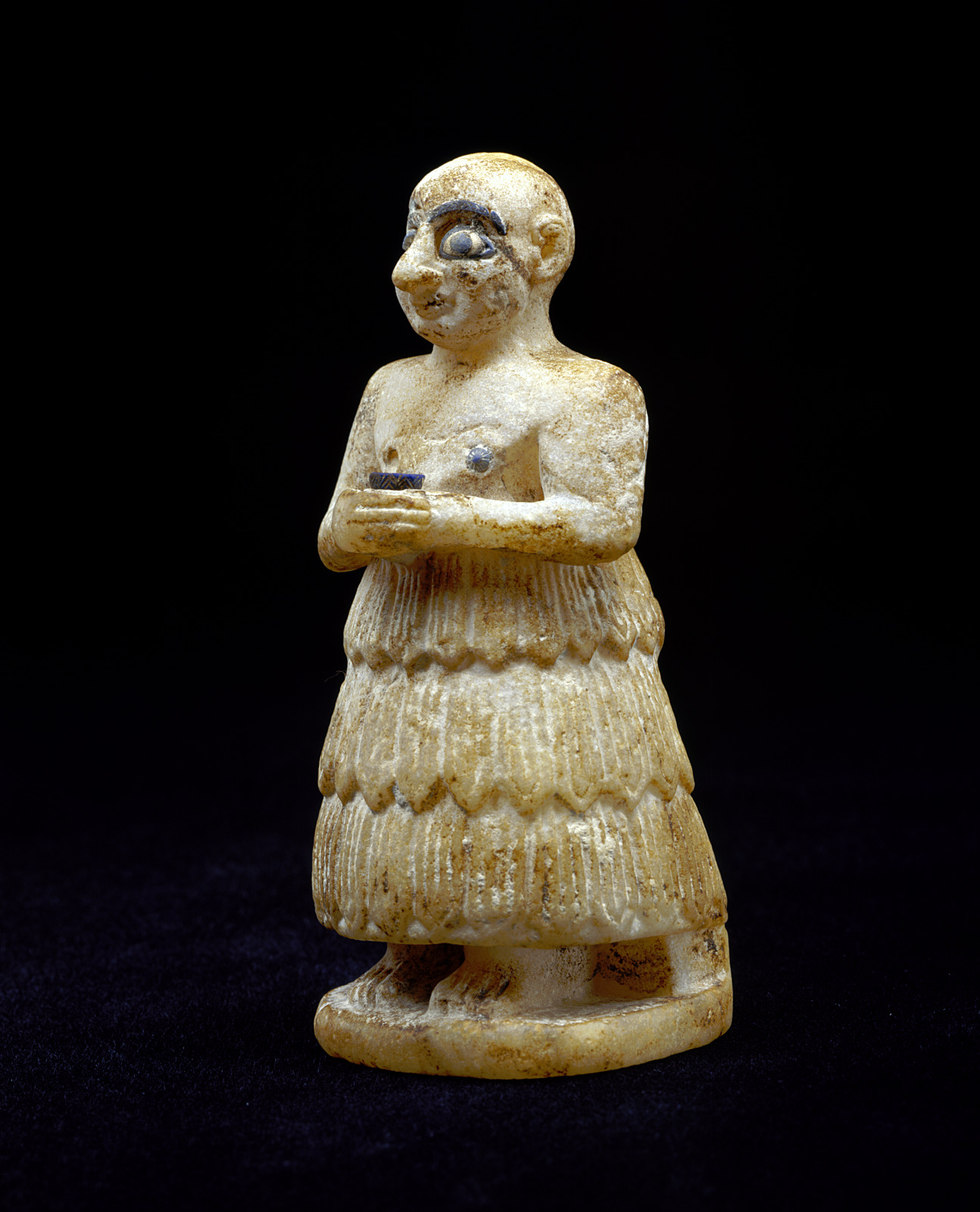
Standing Male Cupbearer; Sumerian, Early Dynastic period (Mesopotamian); calcite with lapis lazuli and shell inlay; 4 1/4 x 1 3/4 x 1 5/8 inches; Saint Louis Art Museum, Friends Fund Endowment and funds given by Mr. and Mrs. Christian B. Peper, Mr. and Mrs. Lester A. Crancer Jr., and an anonymous donor 60:2000
The large inlaid eyes of this diminutive votive statue are meant to capture the attention of the gods. Statues such as this have been found in temples and were believed to have their own life force. They functioned as an active substitute for the dedicator, whose name was often inscribed along the shoulder. Many other examples of this type of statue clasp their hands together in a gesture of prayer, but this example stands out because it holds a small bowl of lapis lazuli, a valuable blue stone. The bowl likely represents the act of dedicating a liquid offering, called a libation. Similar statues have been excavated from temples throughout the ancient Near East.
To honor the retirement of Brent R. Benjamin, The Barbara B. Taylor Director, from March 23 through June 30, Object of the Day will feature a selection of 100 transformative works of art acquired during his 22-year tenure at the Museum.
April 5, 2025
Afternoon Tea Party
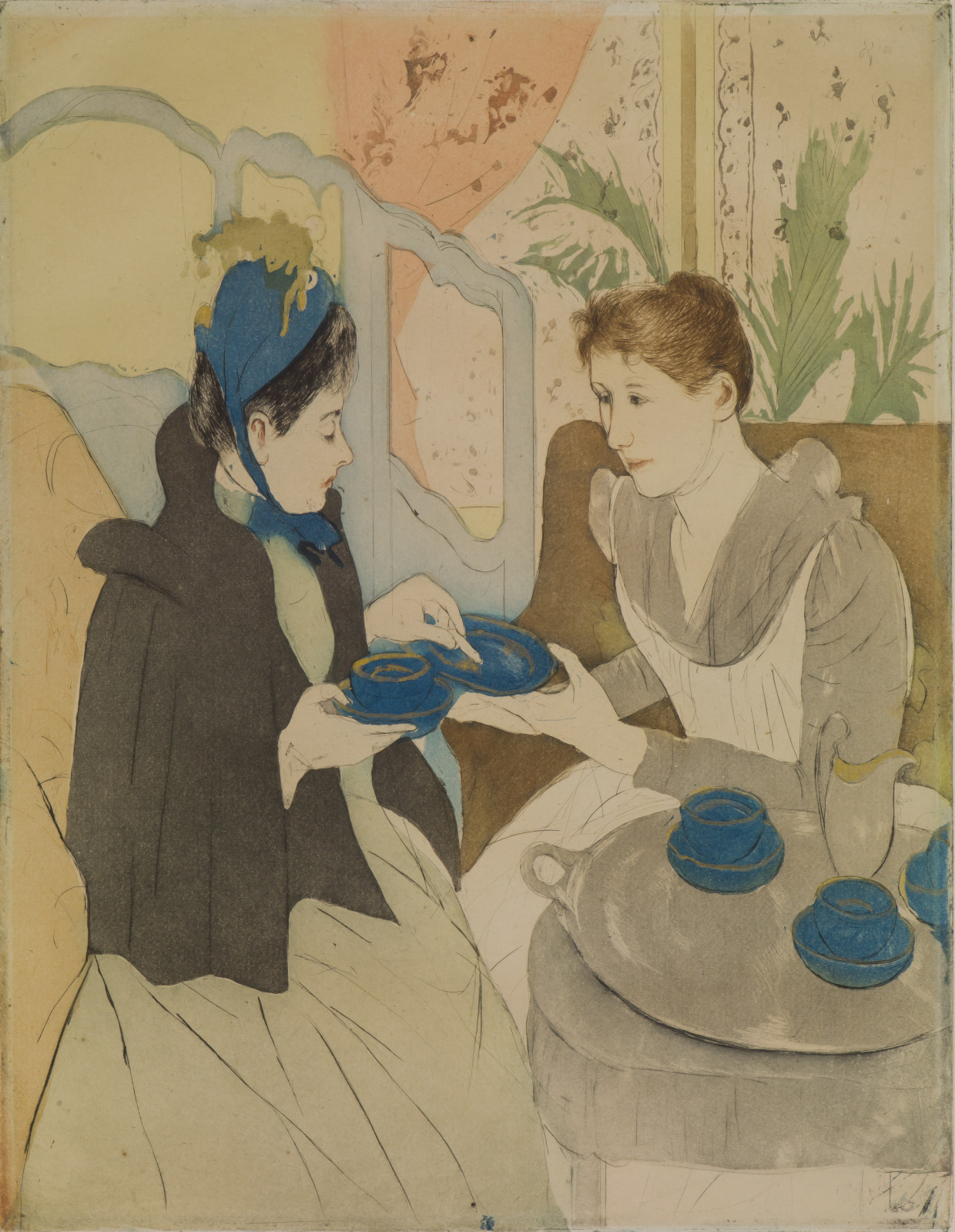
Mary Cassatt, American (active France), 1844–1926; Afternoon Tea Party, 1891; drypoint, color aquatint, and gold paint; plate: 13 5/8 x 10 5/8 inches, sheet: 17 x 12 inches; Saint Louis Art Museum, Museum Purchase and funds given by Jane and Warren Shapleigh, Mr. and Mrs. G. Gordon Hertslet, and Mrs. Richard I. Brumbaugh 4:1976
This print invites viewers into a charming domestic interior, with a woman offering her visitor tea. Mary Cassatt was inspired by Japanese woodblock prints for their delicate washes of color and compressed space. After seeing an exhibition of Japanese prints in 1890, she wrote to Berthe Morisot, “Seriously, you must not miss that… I dream of it and don’t think of anything else but color on copper.” Soon after, she made a series of color prints, seeking to emulate the Japanese style on an etching plate.
Japan reopened trade with western Europe in 1853. Japanese artworks suddenly became available in Paris and other global markets, feeding a European obsession with objects from distant cultures. Many artists and collectors typically had little understanding of these objects’ original meaning. Yet some, including Cassatt, appreciated the unique style of Japanese art and drew from it in the development of their own modern artistic language.
In celebration of Virtual Art in Bloom, we are bringing you a floral-inspired work from the collection each Friday this month.
View all Virtual Art in Bloom programs here.
April 4, 2025
Christ Shown to the People (Ecce Homo)

Titian (Tiziano Vecellio), Italian, c.1488–1576; Christ Shown to the People (Ecce Homo), c.1570–76; oil on canvas; 43 x 37 5/16 inches; Saint Louis Art Museum, Museum Purchase 10:1936
By the glow of a blazing torchlight, Pontius Pilate, the Roman ruler of ancient Judea, presents Jesus to an unseen crowd who will decide his fate. Pilate’s extravagant fur-lined cloak and the young page’s opulent jewelry contrast with the nearly naked Jesus. This distinction between earthly splendor and spiritual simplicity underscores the poignancy of the humiliation Jesus endured.
Based on the sketchy application of paint in the upper left, scholars have determined that this work was left unfinished at Titian’s death. During his long life, Titian had become one of the most celebrated artists of his day, recognized and sought after by popes and secular rulers. Qualities such as the assured brushwork, sensitive modeling, subdued palette, and emotional depth characterize Titian’s late style, as seen here.
April 3, 2025
Seated Amitāyus

Seated Amitāyus, 18th century or later; Tibeto-Chinese, Tibet, Qianlong period; brass with gold and silver foil inlay; 5 1/16 x 3 1/2 x 2 1/8 inches; Saint Louis Art Museum, Gift of J. Lionberger Davis 107:1965
The figure of Amitayus (Measureless Life) holds a vase of amrta, an elixir of immortality that symbolizes the transcendence of birth and death through enlightenment. In this sculpture, Amitayus is depicted with crown and jewels as a sambhogakaya Buddha, revealing the full splendor of enlightenment. This finely crafted example shows the wide-ranging influence of the Pala dynasty of eastern India (8th–12th centuries). Although this bronze was not produced by the Palas, its creators imitated their style of ornamentation and the use of inlaid metals to decorate the form. Ever since the height of the Pala dynasty, Pala-influenced images have been produced in regions ranging from India, Bangladesh, and Nepal to Tibet, China, and Indonesia.
April 2, 2025
Village on the Sea
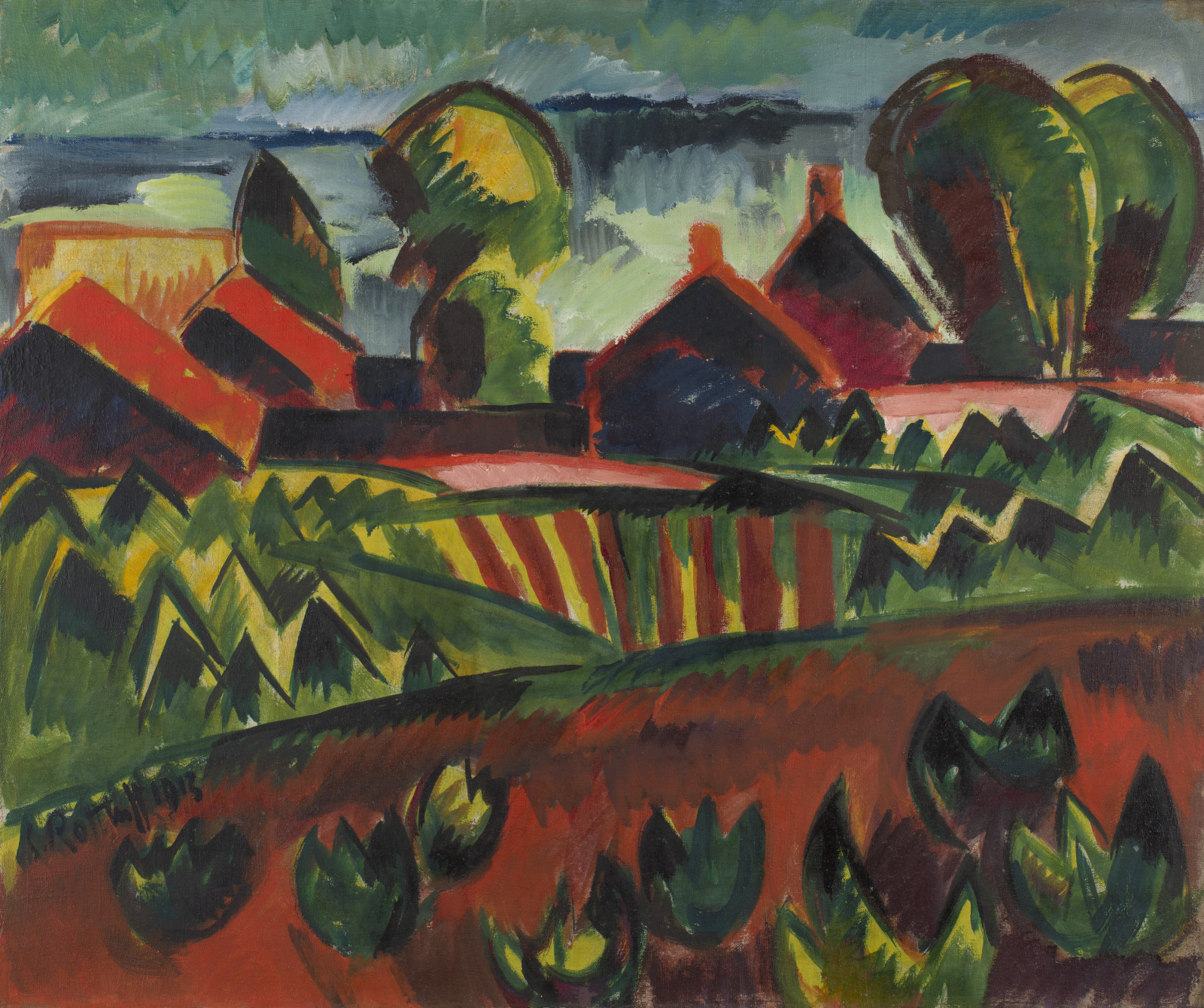
Karl Schmidt-Rottluff, German, 1884–1976; Village on the Sea, 1913; oil on canvas; 30 1/4 x 35 3/4 inches; Saint Louis Art Museum, Bequest of Morton D. May 939:1983
Zigzags and stripes resolve into the triangular rooftops of houses, balloon-like poplar trees, and rolling pine forests. The Baltic Sea appears as a backdrop to the fishing village and artist colony of Nidden (present-day Nida, Lithuania), where Karl Schmidt-Rottluff stayed with Max Pechstein for four months in 1913. The paintings Schmidt-Rottluff made at Nidden transformed his art. Inspired by the landscape, he began to outline his motifs in black and repeat them as generic types for natural objects, giving his art a more patterned look.
April 1, 2025
Bowl (umeke la’au)
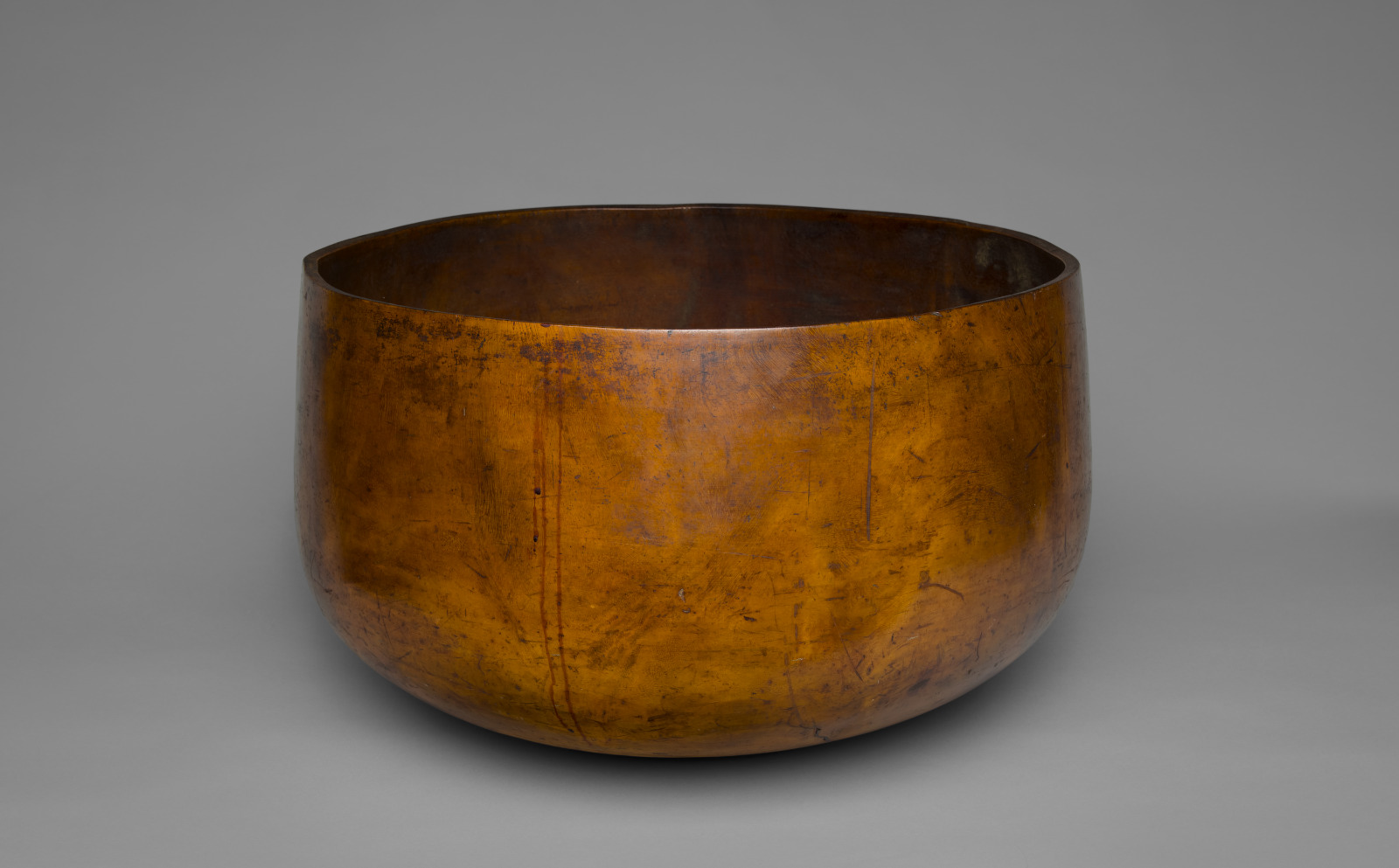
Hawaiian artist; Bowl (umeke la'au), 20th century; wood; 16 9/16 x 26 9/16 inches; Saint Louis Art Museum, Bequest of Morton D. May 1556:1983
Gifts of food to allies or extended family punctuate the life of Polynesian communities. This vessel was used to prepare and present such offerings. Apart from the cooked meat of pigs, game, or fish, the most important food staple is coconut milk mixed with a puree of either breadfruit or taro, depending on the region. This large Hawaiian bowl demonstrates a simple but elegant form. Careful polishing reveals the veins of the wood, which are occasionally interrupted by dovetails the artist inlaid to repair naturally occurring splits.
March 31, 2025
Disc for Armor, Chest or Back Plate

Disc for Armor, Chest or Back Plate, 7th–early 6th century BC; Italic, Italy, Orientalizing period; bronze; diameter: 9 3/4 inches; Saint Louis Art Museum, Museum Purchase 53:1922
-
See Related Objects
![521922dig_o2]()
Disc for Armor, Chest or Back Plate, 7th–early 6th century BC; Italic, Orientalizing period; bronze; diameter: 9 inches; Saint Louis Art Museum, Museum Purchase 52:1922
![511922dig_o2]()
Disc, possibly a Shield Boss, 7th–early 6th century BC; Italic, Orientalizing period; bronze; diameter: 12/7/8 inches; Saint Louis Art Museum, Museum Purchase 51:1922
The design on this armor features a fierce wolf-like beast that fills the space, bares its huge teeth and darts its tongue out like fire. Its tail terminates in a serpent’s head that has large ears; its legs end in huge, three-talon claws. Bold armorial decorations, probably originally painted in bright, simple colors, would have struck fear in enemy soldiers. The disc is one of three bronze discs in the Museum’s collection that were hammered with remarkable repoussé decoration and may have been the central elements of a set of body armor or shield bosses, the strong outward-projecting covers mounted in the center of shields. Each disc was affixed to a leather or wooden substructure with a series of large decorative rivets that embellished the circumference.
March 30, 2025
The Edge of the Pond
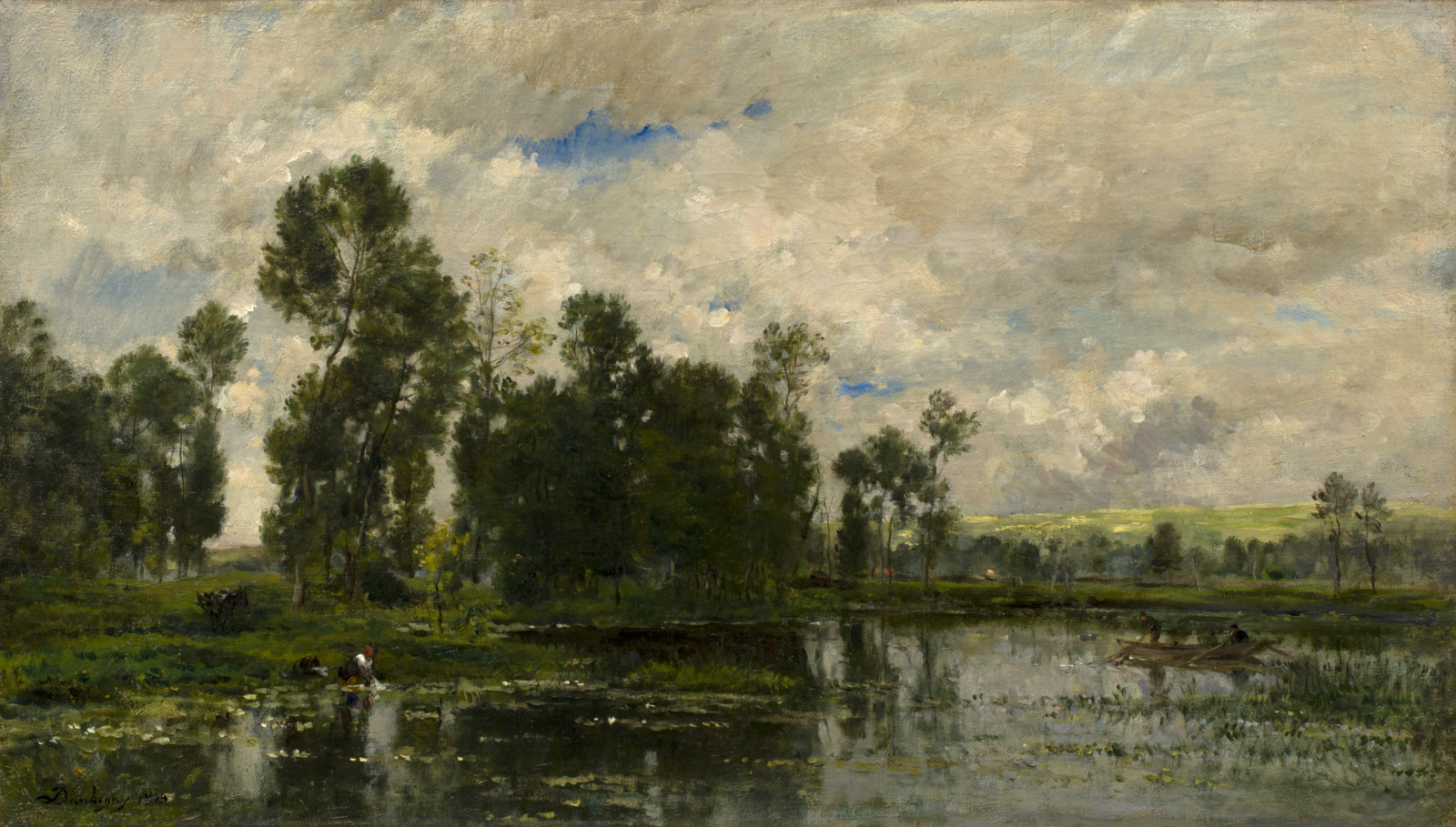
Charles-Francois Daubigny, French, 1817–1878; The Edge of the Pond, 1873; oil on canvas; 19 3/4 x 33 1/2 inches; Saint Louis Art Museum, Bequest of Edward Mallinckrodt Sr. 33:1974
This painting is notable for its gestural brushwork and touches of color, as in the bright green hills in the distance. Like many of Charles-François Daubigny’s pictures, the scene is animated by the figure of a washerwoman. The artist’s paintings were often criticized for being “impressions” rather than fully realized works. Daubigny was an important early supporter of the Impressionists, and his own work suggests the influence of the younger artists.
March 29, 2025
Music Stand
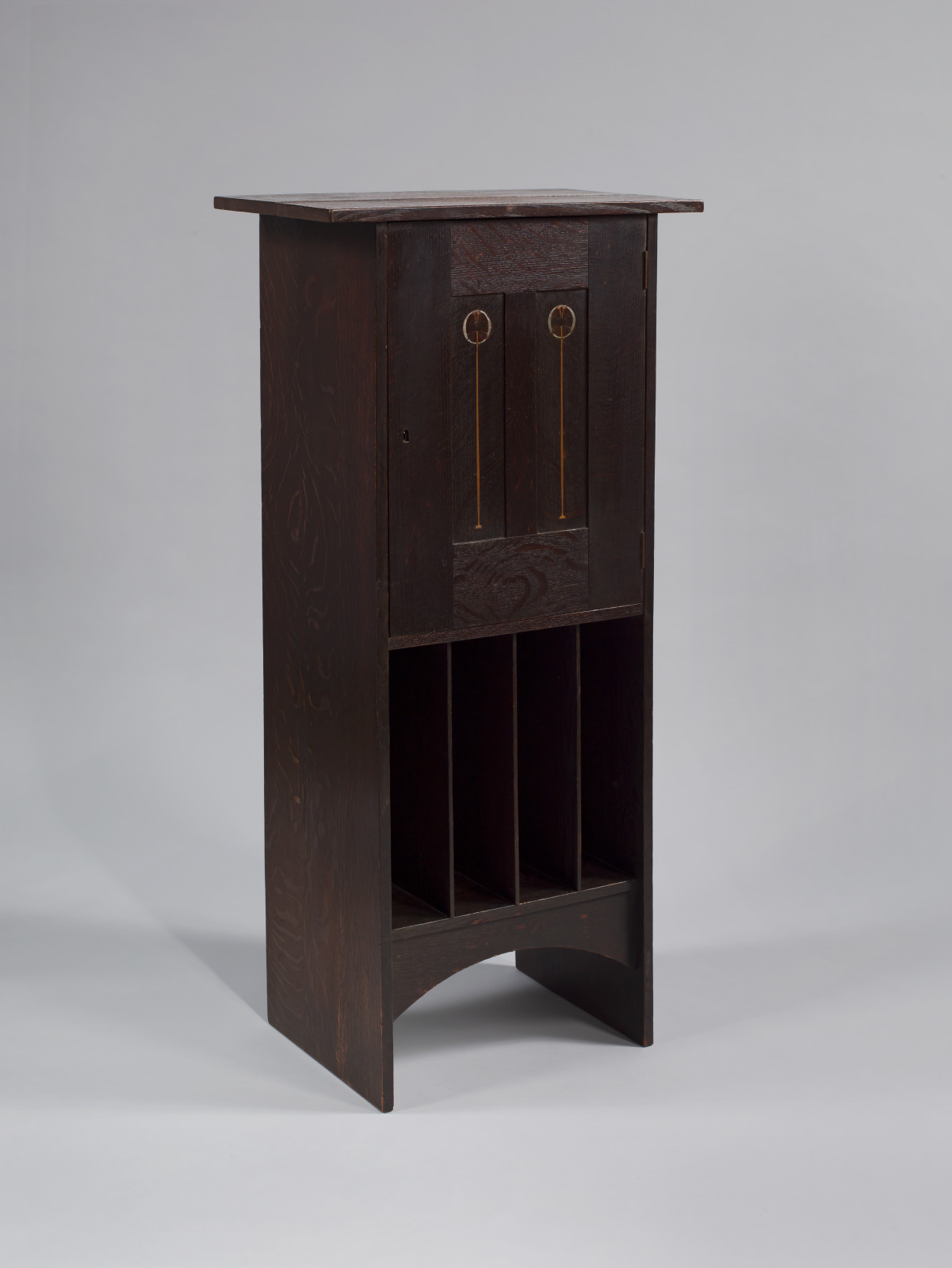
made by Gustav Stickley, American, 1858–1942; and by Gustav Stickley's Craftsman Workshops, Eastwood, New York, active 1900–1916; Music Stand, 1903–04; oak, poplar, copper, pewter, and wood inlay; 50 x 24 x 15 inches; Saint Louis Art Museum, Friends Fund Endowment, Marjorie Wyman Endowment Fund; Museum Purchase, by exchange; the Richard Brumbaugh Trust in memory of Richard Irving Brumbaugh and Grace Lischer Brumbaugh, Funds given by Victor Porter Smith, the Mary Elizabeth Rosborough Decorative Arts Fund; and Funds given by the Decorative Arts Society, Gift of Mrs. Milton Greenfield in memory of Miss Blanche Sterne and Mrs. Louis Bauman (Maude Sterne), Gift of David A. Hanks in honor of Charles F. Buckley, Gift of Mrs. Elsie Sansbury, Gift of Berthoud Clifford Boulton, Gift of Silas Bent McKinley, Gift of Mrs. Robert Andrew Frevert in memory of Branson Frevert, Gift of the Estate of the Honorable Frank Landwehr, Gift of Jay Landesman, Gift of Mr. and Mrs. David Baron, all by exchange 460:2018
This cabinet for storing sheet music presents a taut arrangement of vertical and horizontal lines with clear solids and voids. The near-black finish accentuates its minimal form. Stylized flowers of colored woods, pewter, and copper inlaid in the door offer a subtle enrichment.
From 1900 until World War I (1914–1918), furniture maker Gustav Stickley was a leading contributor to the American Arts and Crafts movement. During the 1880s and 90s, Stickley was a successful manufacturer of middle-class Victorian furniture. He first explored consciously artistic furniture in 1900, gradually developing radically spare forms that evoked the sentiments of English designer William Morris, for whom simplicity was the essential requirement of modern furnishings. Stickley renamed his business the United Crafts and, in October 1901, began to publish The Craftsman magazine. In 1903 and 1904, the Stickley style was further refined in favor of attenuated forms embellished with inlaid ornament, as seen in this music stand.
March 28, 2025
Bottle
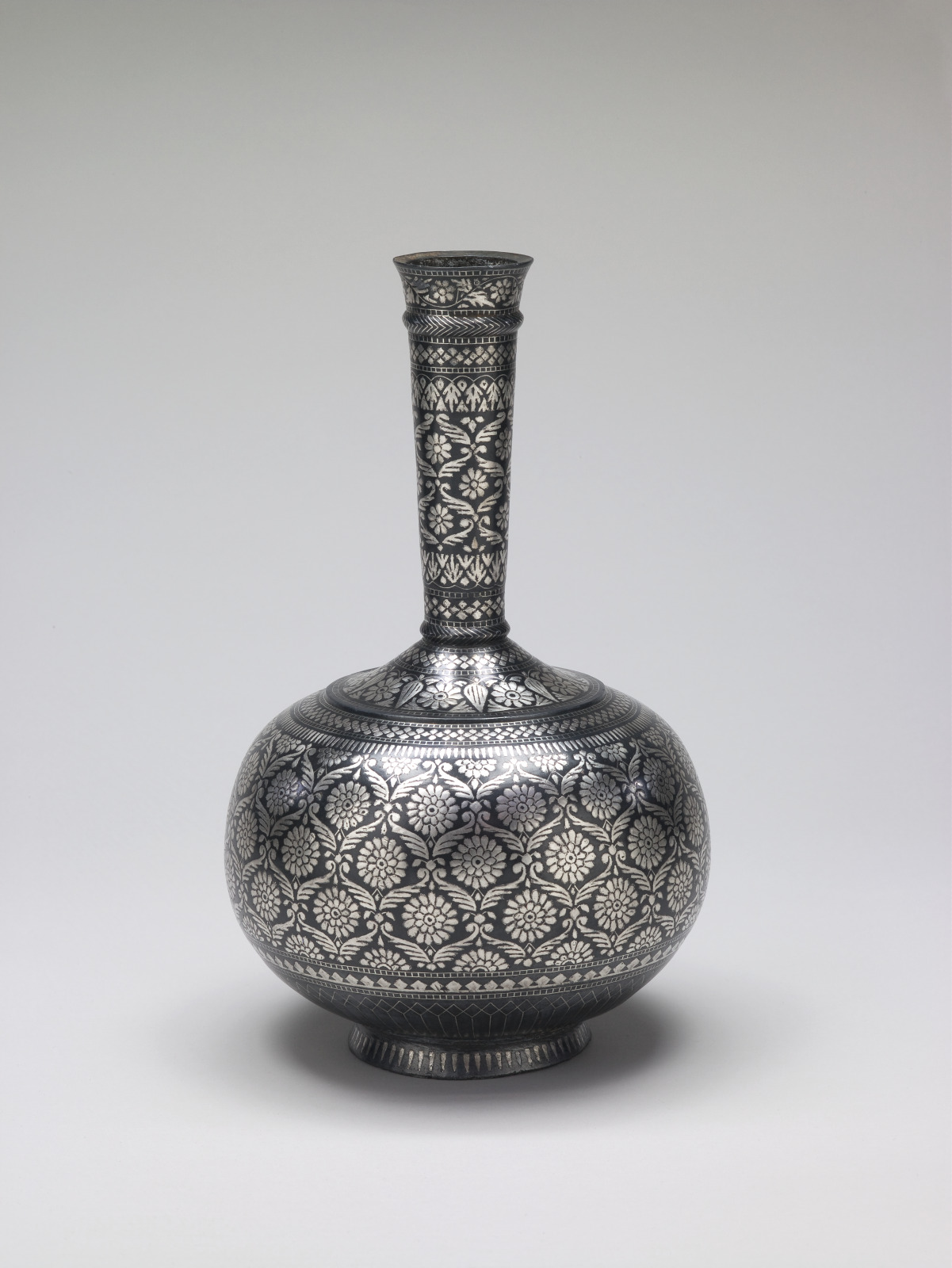
Bottle, 18th century; Indian, Mughal dynasty; zinc alloy with silver inlay; height: 10 7/8 inches, diameter of mouth: 1 7/8 inches, diameter of body: 6 1/2 inches, diameter of foot: 3 3/8 inches; Saint Louis Art Museum, Museum Purchase 80:1923
The silver inlay on this bottle is brilliantly highlighted against the black background. The bottle is composed of a zinc alloy that turns black when bathed in an acidic solution. Originating in the city of Bidar in India, this type of vessel is known as Bidri ware. It bears the type of floral decoration that is a major theme in the arts of the Islamic courts of India.
March 27, 2025
Frontlet
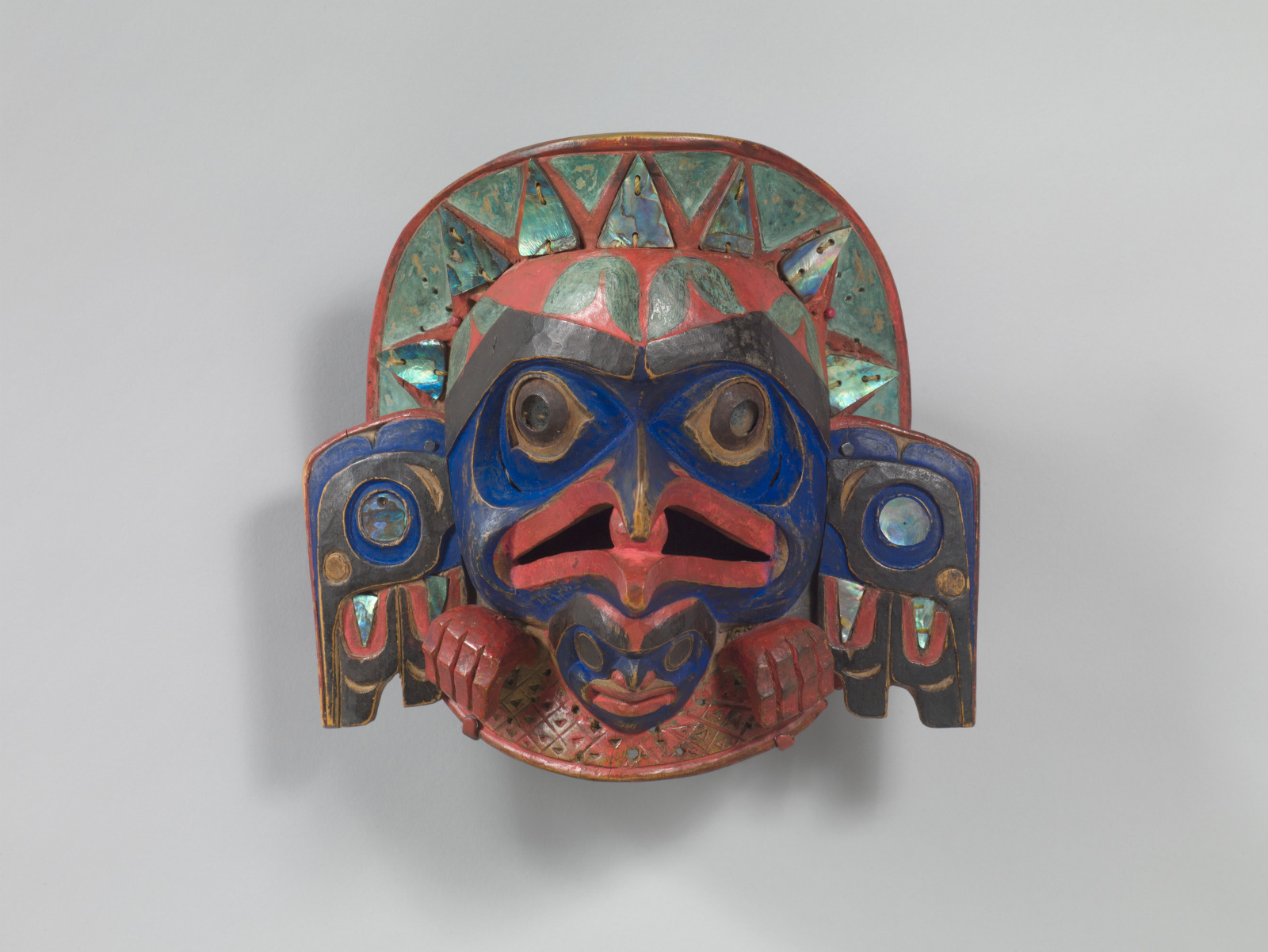
Nuxalk (Bella Coola) artist; Frontlet, c.1870; wood, pigment, copper, abalone shell, and mirrored glass; 8 1/2 x 6 1/2 x 8 inches; Saint Louis Art Museum, Gift of Morton D. May 272:1982
Worn on a dancer’s forehead, this carving featured additional components that moved. Sea lion whiskers extended from the crown and waved with the dancer’s motion. Additionally, a veil-like panel of swan skin or canvas streamed from back. This panel covered the dancer’s head and shoulders, as well as a mechanical apparatus that distributed eagle down. The carving represents a raven. With outstretched wings, the raven grasps a ball—which represents light—in its mouth. This frontlet illustrates the key moment in a Native Northwest Coast story when the trickster bird steals the sun, moon, and stars to illuminate the world. When a dancer wore the frontlet, abalone-shell inlays and mirrored eyes reflected firelight. This effect lent the carving a sense of animism and demonstrated the narrative of raven bringing light.
March 26, 2025
Head of Simone in a Green Bonnet with Wavy Brim (No. 2)

Mary Cassatt, American (active France), 1844–1926; Head of Simone in a Green Bonnet with Wavy Brim (No. 2), c.1904; pastel on paper; 16 x 17 7/8 inches; Saint Louis Art Museum, Funds given by Mr. and Mrs. John E. Simon 23:1957
-
See Related Image
![Cassatt-Simone-Perspective CI1]()
Mary Cassatt, American (active France), 1844–1926; Head of Simone in a Green Bonnet with Wavy Brim (No. 3), c.1904; pastel; 23 1/2 in. x 17 1/4 inches; Davis Museum at Wellesley College, Gift of Mrs. Harold M. Scott, Jr. (Constance K. Anderson, Class of 1954) 1994.88
This little girl’s portrait shows her wisps of blonde hair peeking out from under a large, dark blue hat. The soft features of her face look away from the viewer and are surrounded by the artist’s quick pastel strokes. Mary Cassatt was an American Painter and Printmaker who studied in Paris and became a member of the Impressionist circle. Often considered unsuitable for serious work, the use of pastel grew in popularity under the influence of Impressionism. Mary Cassatt used pastel to emphasize color over line, giving this portrait an atmospheric quality popular among the Impressionists.
March 25, 2025
Man’s Underrobe (nagajuban) with Design of Assorted Military Crafts and Equipment and Flags of the Empire of Japan and the Empire of Manchukuo

Man's Underrobe (nagajuban) with Design of Assorted Military Crafts and Equipment and Flags of the Empire of Japan and the Empire of Manchukuo, 1932–45; Japanese, Shōwa period; textile-printed (nassen) silk; 50 x 50 3/4 inches; Saint Louis Art Museum, Gift of Mr. and Mrs. Charles A. Lowenhaupt 251:2014
This man’s underrobe (nagajuban) has a design of various military crafts and equipment, including infantry helmets, rifles, tanks, artillery guns, and fighter jets. These motifs are interspersed with flags of the Empire of Japan and the Empire of Manchukuo. Home to founders of the Chinese Qing dynasty, Manchuria became a short-lived puppet state of Japan, first known as Manchukuo or the Manchu State (1932–1934). Subsequently the region was known as the Great Empire of Manchukuo, or the Empire of Manchuria (1934–1945). The Manchukuo flag, used between 1932 and 1945, has a yellow field with red, blue, white, and black stripes. The flag’s canton, or top hoist corner, recalls the first flag of the Republic of China, which controlled Manchuria prior to the Japanese.
March 24, 2025
A Vase of Corn Lilies and Heliotrope
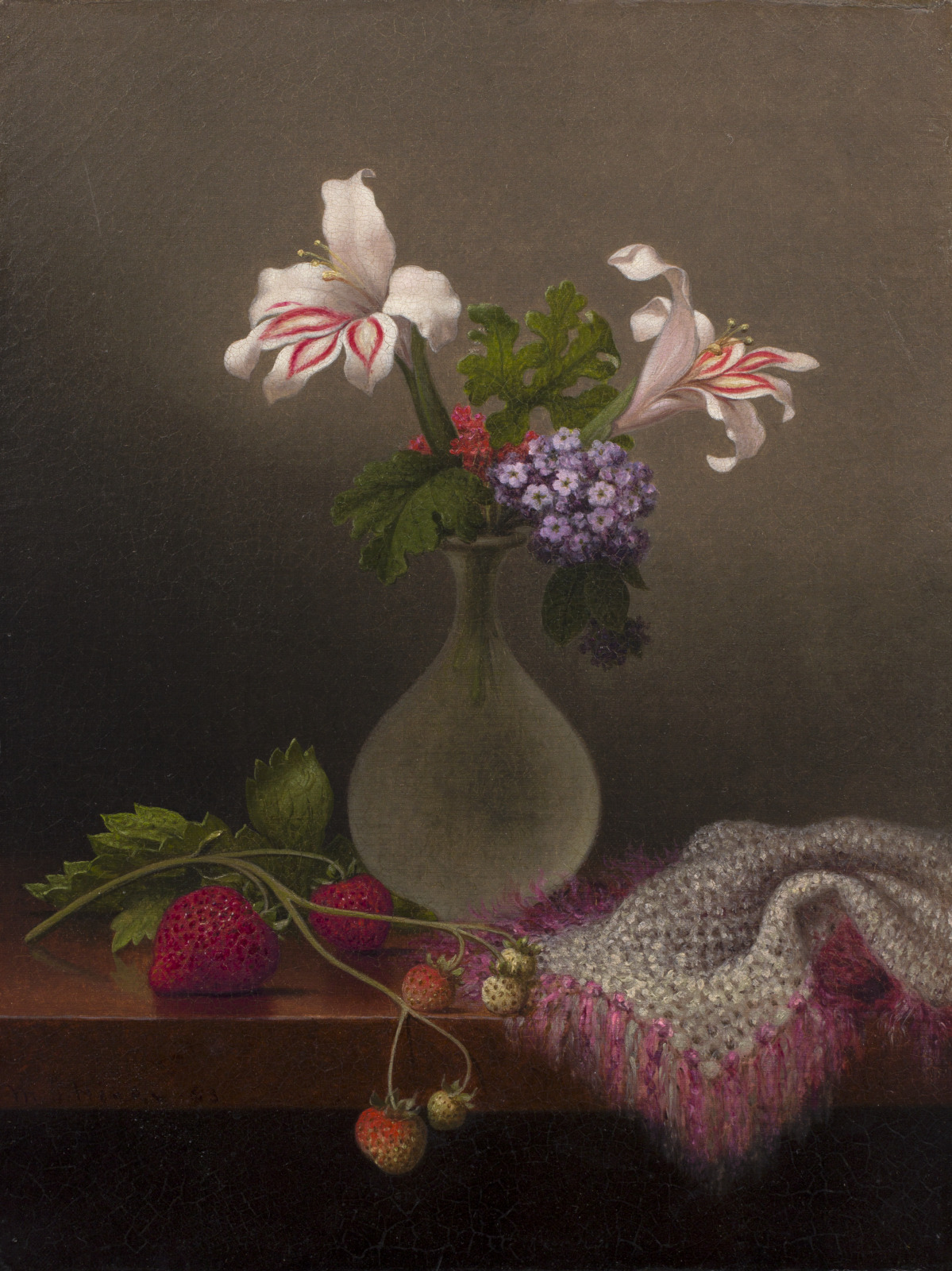
Martin Johnson Heade, American, 1819–1904; A Vase of Corn Lilies and Heliotrope, 1863; oil on canvas; 16 3/8 x 12 3/8 inches; Saint Louis Art Museum, Eliza McMillan Trust 68:1965
Martin Johnson Heade celebrated early summer with hues of red, white, and blue in this painting. The artist loved flowers and described gathering each day “a beautiful bouquet for the breakfast table.” One might imagine him clipping the white corn lilies, red and bluish-purple heliotropes, and strawberries as they all ripened and bloomed in early June. Delicate heliotrope blossoms were especially popular with 19th-century gardeners, who compared their sweet fragrance to the aroma of cherry pie.
Heade painted this small still life early in his career, during an enormously productive six-month period in which he sought to raise funds for an extensive trip to South America. Over the next forty years, he painted nearly 150 still lifes, including a wide range of native and tropical flowers.
March 23, 2025
Study for the Surrogate

James Little, American, born 1952; Study for the Surrogate, 2002; watercolor with graphite; sheet: 16 3/16 x 19 7/8 inches; Saint Louis Art Museum, The Thelma and Bert Ollie Memorial Collection, Gift of Ronald and Monique Ollie 168:2017; © June Kelly Gallery / James Little
Atmospheric areas of color shift from a deep shade of black to bright orange, divided by sharp diagonal lines. When working with watercolor, which provides a brilliant luminosity, James Little will often score the surface with a sharp tool to trap color. As a result, there is a satisfying play between precise geometry of straight lines and the free-form washes achieved with watercolor. Little describes his method as “painting ideas” about color and matter, and his drawings, like this one, are a critical step in this process.
March 22, 2025
Virgin and Child
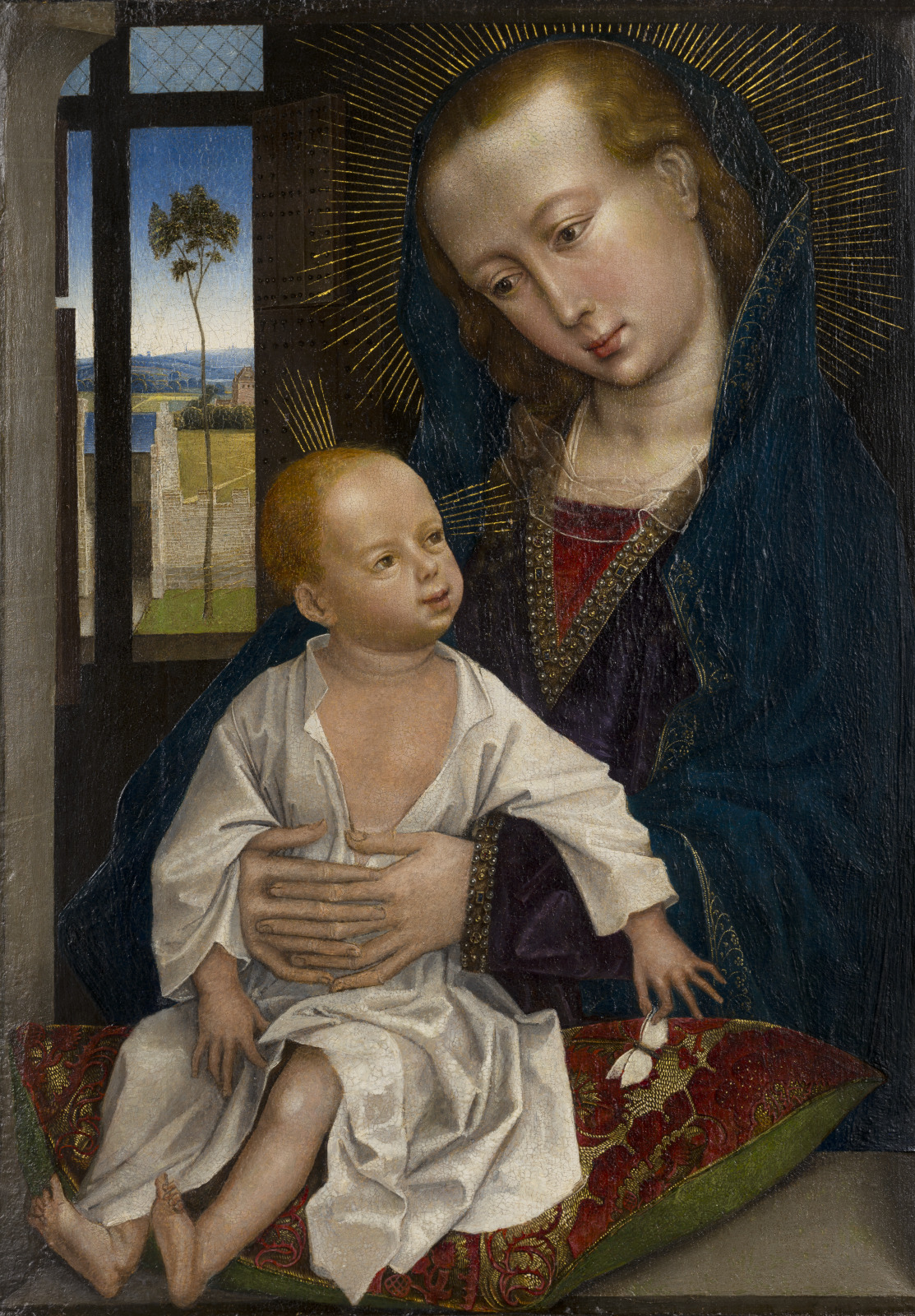
Rogier van der Weyden, Netherlandish, c.1399–1464; Virgin and Child, 1470–75; oil on panel; 23 5/8 x 16 3/8 inches; Saint Louis Art Museum, Gift of Mr. and Mrs. Leicester B. Faust 155:1971
An unknown artist used one of Rogier van der Weyden’s drawings to capture this tender moment between a mother and her baby. Rogier was renowned for his expressive, naturalistic figures, especially his iconic images of the Virgin and Child. Following a prevalent compositional type, the Virgin seems to present her son as he sits atop a gold brocade pillow resting on a stone parapet. The child holds a butterfly between his two fingers, a reference to death and rebirth, and thus a reminder of Christ’s coming sacrifice.
March 21, 2025
Table Lamp

made by Pattyn Products Company, Detroit, Michigan; Table Lamp, c.1935; aluminum, plastic, brass, and fiberglass; 19 3/4 x 8 inches; Saint Louis Art Museum, Funds given by Victor Porter Smith 30:2017
This table lamp’s piston-like aluminum base and ribbed fiberglass shade look like spare machine parts. Spurred by a fascination with modern factories, designers and home furnishing manufacturers between World War I and II embraced the pure geometry and honest materiality of industrial forms. Stacked and repeated cylinders and spheres, which supplanted the earlier trend for triangular forms, epitomized American “Machine Age” design.
March 20, 2025
Flowers and Plants of the Four Seasons
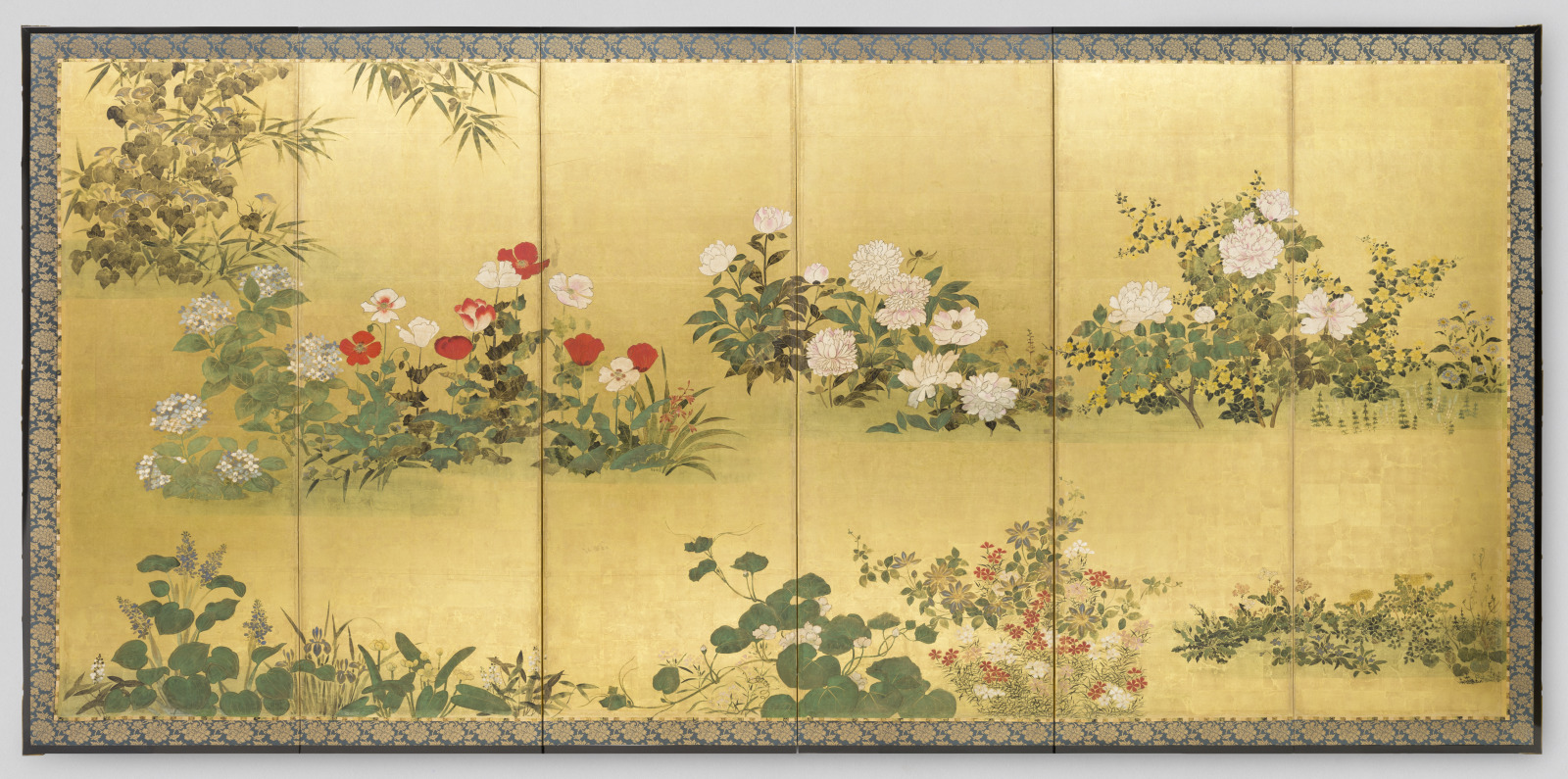
Flowers and Plants of the Four Seasons, 18th century; Japanese, Edo period; pair of six-panel folding screens: ink, color, and gold leaf on paper; each screen, open flat: 69 1/16 inches x 12 feet 2 1/2 inches x 3/4 inches; Saint Louis Art Museum, Edwin and Betty Greenfield Grossman Endowment 3:2010.1,.2
This pair of screens features a variety of plant and flower species from spring and summer to fall and winter. One screen includes yellow rose, Japanese dandelion, tree peony, dianthus, cymbidium, Oriental poppy, cow lily, rabbit-ear iris, hydrangea, morning glory, and arrow bamboo. The other screen consists of amaranthus, begonia, chrysanthemum, the “seven grasses of autumn” (bush clover, eulalia, Japanese arrowroot, dianthus, patrinia, thoroughwort, and mistflower), Chinese bellflower, rose mallow, Japanese aster, arrow bamboo, Japanese narcissus, and grape.
These screens illustrate a significant painting style first developed by Tawaraya Sōtatsu (active c.1600–1642), a co-founder of the Rinpa school in the early 17th century. The seasonal flowers and plants are beautifully depicted in soft brushwork, retaining enough clarity and detail so that the species may be readily identified with botanical precision. However, they are also executed with subtle washes of ink and color so that the overall effect still appears painterly.
March 19, 2025
Still Life with Strawberries

Hannah Brown Skeele, American, 1829–1901; Still Life with Strawberries, 1863; oil on panel; 17 x 21 inches; Saint Louis Art Museum, Purchased in memory of Rose Allen Valier by her friends and Mr. and Mrs. Biron A. Valier 83:1974
This careful presentation of ripe strawberries, prickly skinned pineapple, and the shiny reflections of elaborate silver and glass speak to the owner’s taste for luxury. The pineapple, an exotic fruit imported into New Orleans and shipped along the Mississippi River, was available only in limited quantities. Wealthy families proudly served it on special occasions. This painting would have adorned the walls of an upper-class dining room and affirmed social and economic status.
Still life was considered an appropriate subject for female artists, who generally were excluded from more lucrative painting subjects and formal training in the United States in the 19th century. Hannah Brown Skeele worked in St. Louis in the 1860s. She was considered an amateur artist, though her works won considerable acclaim.
March 18, 2025
Female Figure
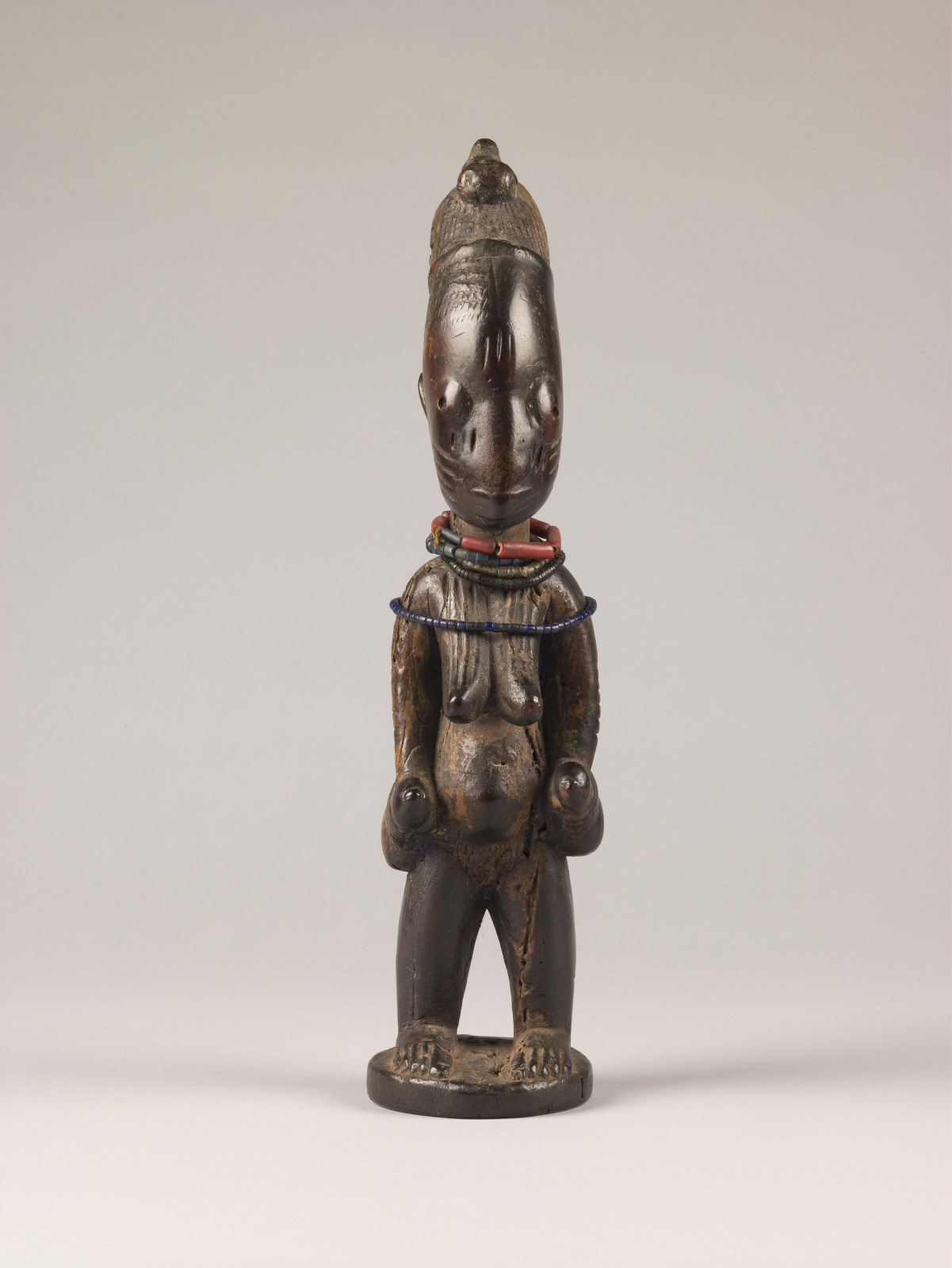
Bogunjoko of Ila-Orangun, Yoruba, died 1870; Female Figure, 19th century; wood, fiber, beads; 11 3/4 x 3 1/4 x 2 3/4 inches; Saint Louis Art Museum, Gift of Jeffrey and Jackie Hammer 54:2009
A crested, long-tailed hairstyle identifies this figure as a follower of Eshu, the Yoruba trickster god who mediates between gods and men. Vessels made from dried gourds and calabashes appear in each of the figure’s hands and along her ponytail in reference to containers of medicine symbolizing Eshu’s powers. The worn, smooth features of the figure’s face suggest constant care and handling over time by an attentive Eshu devotee who sought to calm the god’s unpredictable whims for better outcomes. Bogunjoko of Ila-Orangun was the first artist documented in a distinguished lineage of Yoruba carvers who continue making sculpture in Nigeria today.
March 17, 2025
Water Lilies

Claude Monet, French, 1840–1926; Water Lilies, c.1915–26; oil on canvas; 78 3/4 inches x 13 feet 11 3/4 inches; Saint Louis Art Museum, The Steinberg Charitable Fund 134:1956
Clusters of lilies float on a watery surface composed of violets, blues, and greens in this mural–sized painting by Claude Monet. For over 25 years, Monet obsessively illustrated this aquatic flower at various times of day while living at his Giverny home in northern France.
This canvas originally formed the centerpiece of a triptych or three–panel work. When installed alongside its counterparts from the Nelson–Atkins Museum of Art and The Cleveland Museum of Art, the large paintings envelop the viewer in a seemingly infinite field of subtle hues and intangible beauty.
March 16, 2025
Untitled (Quiet Strength VI)

Dyani White Hawk, Sičánǧu Lakota (Sioux) and American, born 1976; Untitled (Quiet Strength VI), 2019; acrylic and oil on canvas; 72 x 52 inches; Saint Louis Art Museum, Funds given by Gary C. Werths and Richard Frimel 25:2020; © Dyani White Hawk
To make this work of art, Dyani White Hawk painted thousands of short vertical lines in subtle whites, blues, and pinks that recall historical quillwork by Native artists. Quillwork involves softening and dying stiff porcupine quills and affixing them onto birchbark or hide in decorative patterns. On the Plains, the art of quillwork was primarily done by women and carries sacred significance. White Hawk brought this cultural understanding to her meticulously worked painting, giving each line the attention that quill artists gave to their quilling. The vertical lines overlay a barely-visible background of silver and gold in a subtle diamond pattern that references various histories of geometric abstraction.
March 15, 2025
Running Artemis

Running Artemis, late 2nd century BC–early 1st century AD; Greek, Hellenistic; or Roman, Imperial period; marble; height: 28 3/4 inches; Saint Louis Art Museum, Museum Purchase 41:1924
Artemis, goddess of the hunt, is identifiable here by the quiver strap across her chest. The way the dress clings to the body (often called “wet drapery”) while simultaneously billowing around the figure creates an exaggerated sense of movement that is a signature element of Hellenistic sculpture. Known for her chastity and modesty, Artemis cannot escape the dictates of the style and its body-conscious modeling.
March 14, 2025
Occasional Table
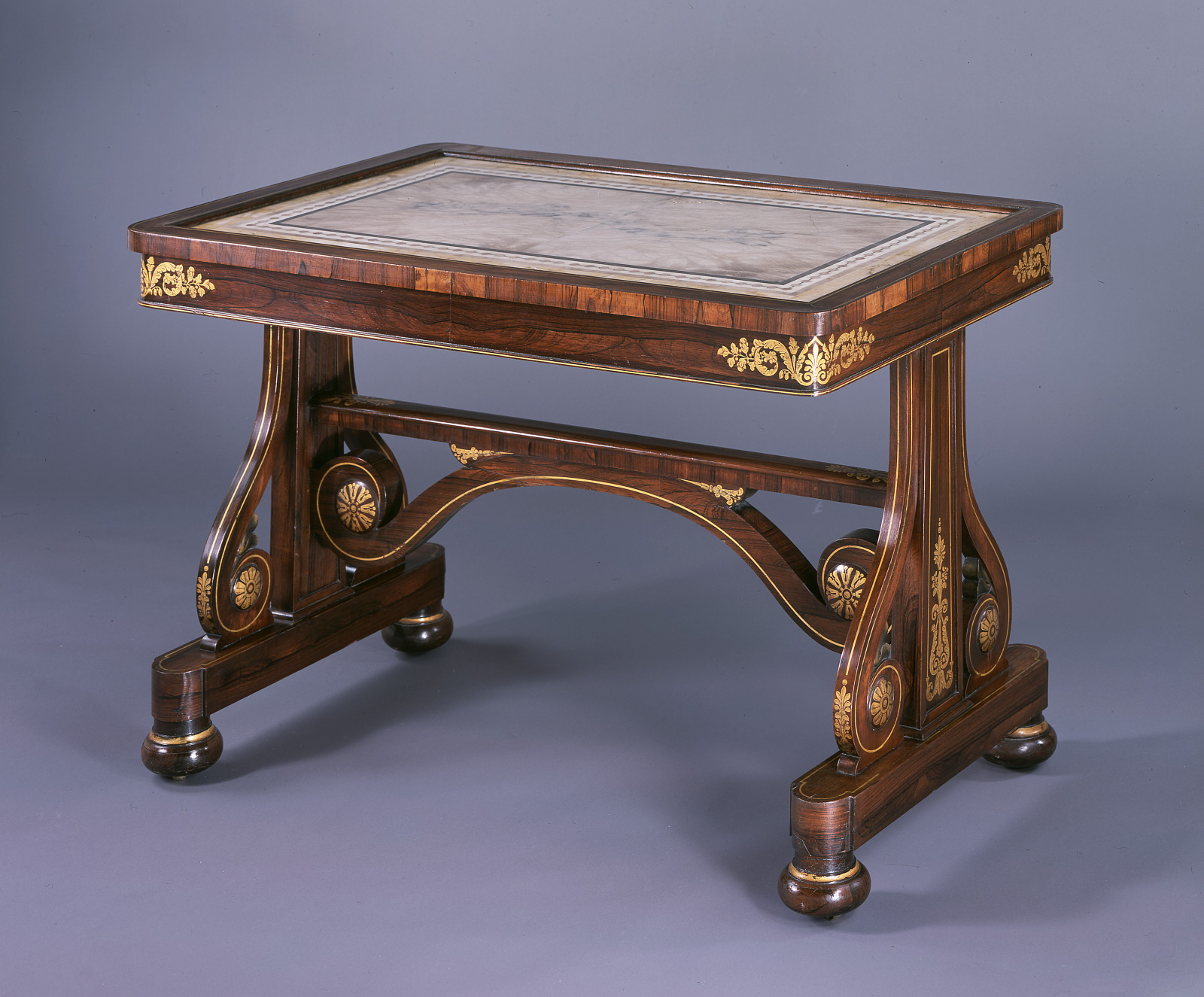
Anthony G. Quervelle, American (born France), 1789–1856; Occasional Table, c.1835; rosewood, white pine, yellow-poplar, marble, and gilding; 28 3/4 x 42 1/4 x 26 7/16 inches; Saint Louis Art Museum, Funds given in loving tribute to William A. and Carolyn C. McDonnell by their devoted son and daughter-in-law Sanford N. and Priscilla R. McDonnell 1:1971
This table is a composition of elegant contours based on scrolls and circular lines. Paired scrolls suggesting the shape of a lyre make up the table’s base, while an elongated scroll spans its width. These contours are echoed in the semicircular ends of the plinths and the compressed ball feet. The choice of rosewood veneer, a wood admired for its striped figure, and the use of flat, gilded foliate ornament and linear striping also complement the smooth forms and rich surface decoration. Anthony Quervelle received his training in Paris before immigrating to Philadelphia in 1817.
March 13, 2025
Courtyard on Canal; Grey and Red

James A. McNeill Whistler, American, 1834–1903; Courtyard on Canal; Grey and Red, 1879–80; pastel and charcoal; 11 7/8 x 8 inches; Saint Louis Art Museum, Gift of J. Lionberger Davis 545:1957
Bright spots of color pop out against this dark sheet of paper. A lattice-like network of charcoal lines supports the vivid areas of pastel that enliven a scene of urban daily life in a corner of a city. Looking out over the various features that make up this setting, James McNeill Whistler captured a delicate moment that vibrates with the scenes unfolding beyond doorways and through windows. The artist himself seems to remain at a distance, unobserved by the figures who capture his attention. Whistler spent more than a year fascinated by Venice. It was in this distinctive northern Italian city that he made use of pastel for landscapes and street scenes such as this for the first time.
March 12, 2025
Still Life with Guitar
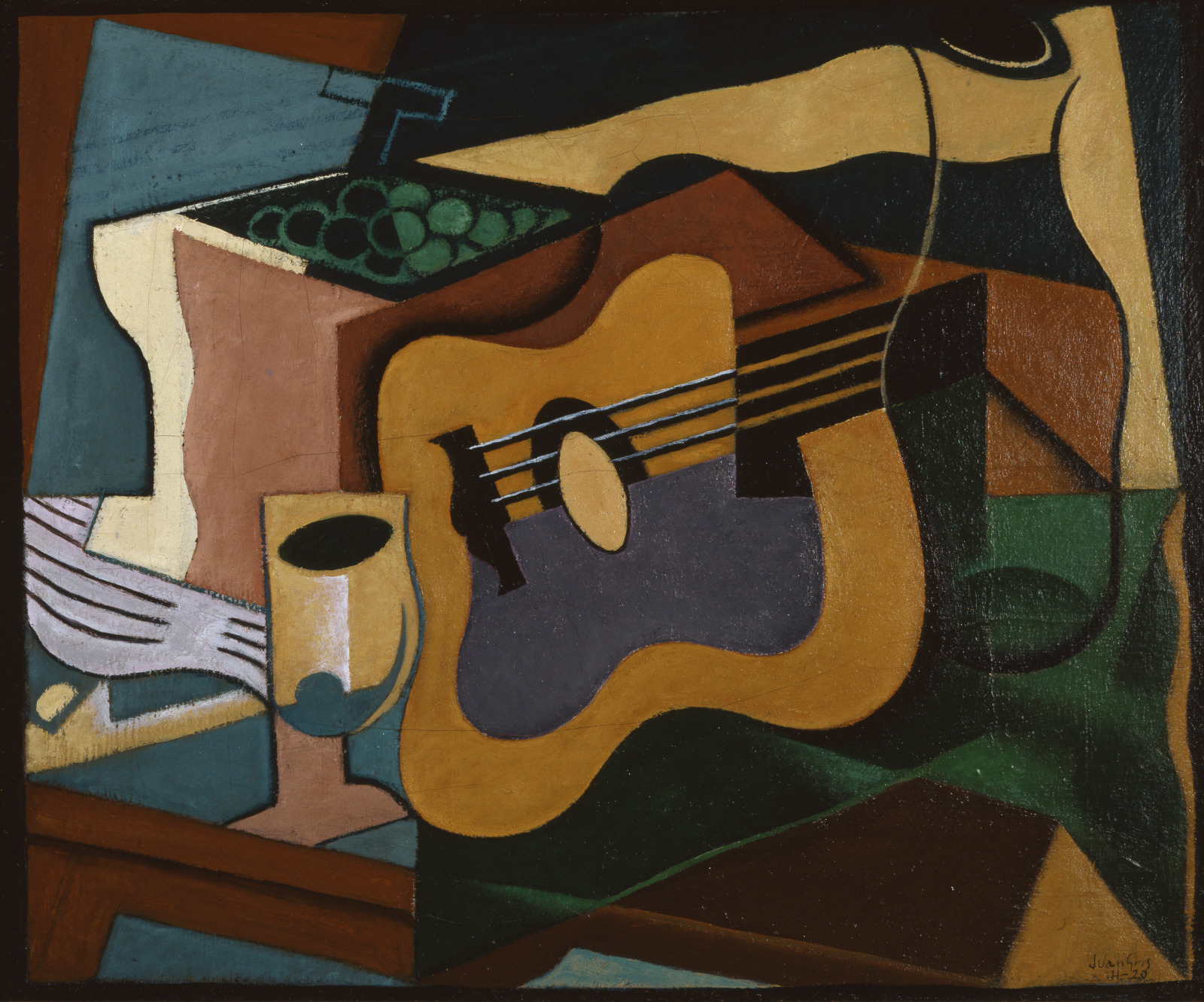
Juan Gris, Spanish, 1887–1927; Still Life with Guitar, October–November 1920; oil on canvas; 19 13/16 x 24 inches; Saint Louis Art Museum, Museum Purchase 9:1940
Interlocked in a harmonious geometric pattern, patches of subdued shades of brown, green, and blue give form to a guitar, a sheet of music, a bowl of grapes, a goblet, a carafe, and a table. Juan Gris developed a distinctive Cubist style, in which abstracted forms retain their volume through the integration of light and shadow. Here the areas that depict the grapes, table, and carafe suggest three-dimensionality, offering a dynamic balance between representation and abstraction.
March 11, 2025
Fragment of Floor Mosaic from the upper level of the House of the Bird Rinceau, room 1, Antioch (Daphne), Syria

Fragment of Floor Mosaic from the upper level of the House of the Bird Rinceau, room 1, Antioch (Daphne), Syria, c.526–540; Byzantine, Turkey, Early Byzantine period; marble and limestone; 45 x 84 inches; Saint Louis Art Museum, Museum Purchase 742:1940
The undulating rinceau (vine) that forms the central part of this mosaic fragment was a popular border motif as far back as the Hellenistic period (331–31 BC) when animals, grapes, and vines alluded to the god of wine, Dionysus (Greek) or Bacchus (Roman). In the Christian context of 6th-century Syria, the vine scroll acquired a new meaning, calling to mind the words of the evangelist John 15: 1-5: “I am the true vine…You are the branches. He who abides in me bears much fruit.”
March 10, 2025
Box with Design of Auspicious Animals, Plants, and Flowers
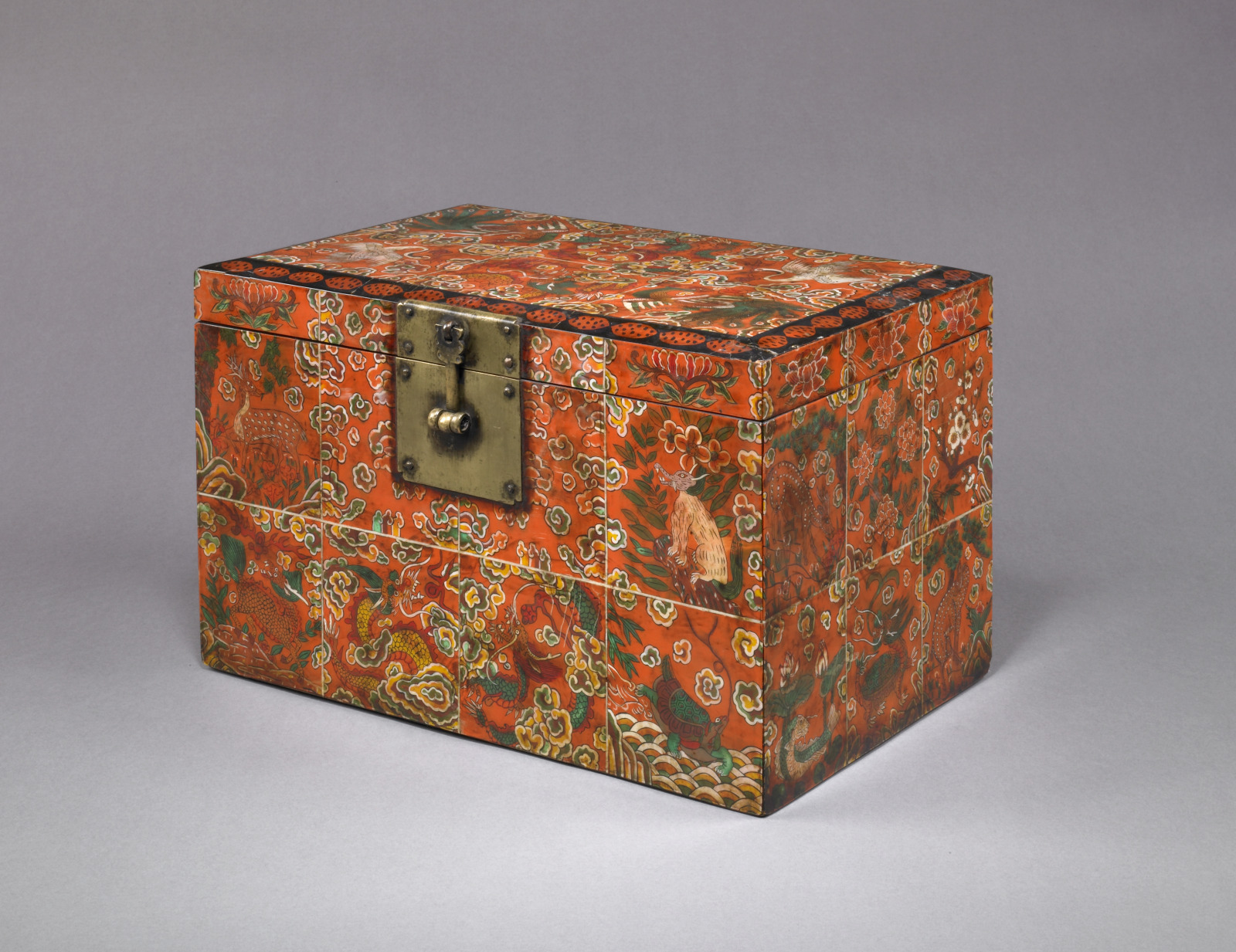
Box with Design of Auspicious Animals, Plants, and Flowers, late 18th–early 19th century; Korean, Joseon dynasty; painted ox horn (hwagak) and lacquer on wood, with brass fittings; 7 1/16 x 11 13/16 x 7 7/8 inches; Saint Louis Art Museum, Asian Art Purchase Fund and funds given by Mr. and Mrs. Richard A. Liddy and Mr. and Mrs. John Peters MacCarthy 12:2008
This box is decorated in the typical Korean technique known as hwagak (flowery horn). Ox-horn pieces are flattened through soaking and heating and then glued onto a wooden core. Colorful designs, including most of the sipjangsaeng (Ten Symbols of Longevity), were painted on the underside of the transparent ox-horn. The most important motifs are on the lid: two dragons, two phoenixes, and two cranes carrying the fungus of immortality, all shown amidst multicolored clouds. The box was likely made as a wedding gift for a high-ranking lady of the Korean aristocracy, who would have used it to store her jewelry, hair ornaments, and finger rings in jade or amber.
March 9, 2025
Interior with Young Woman Tracing a Flower
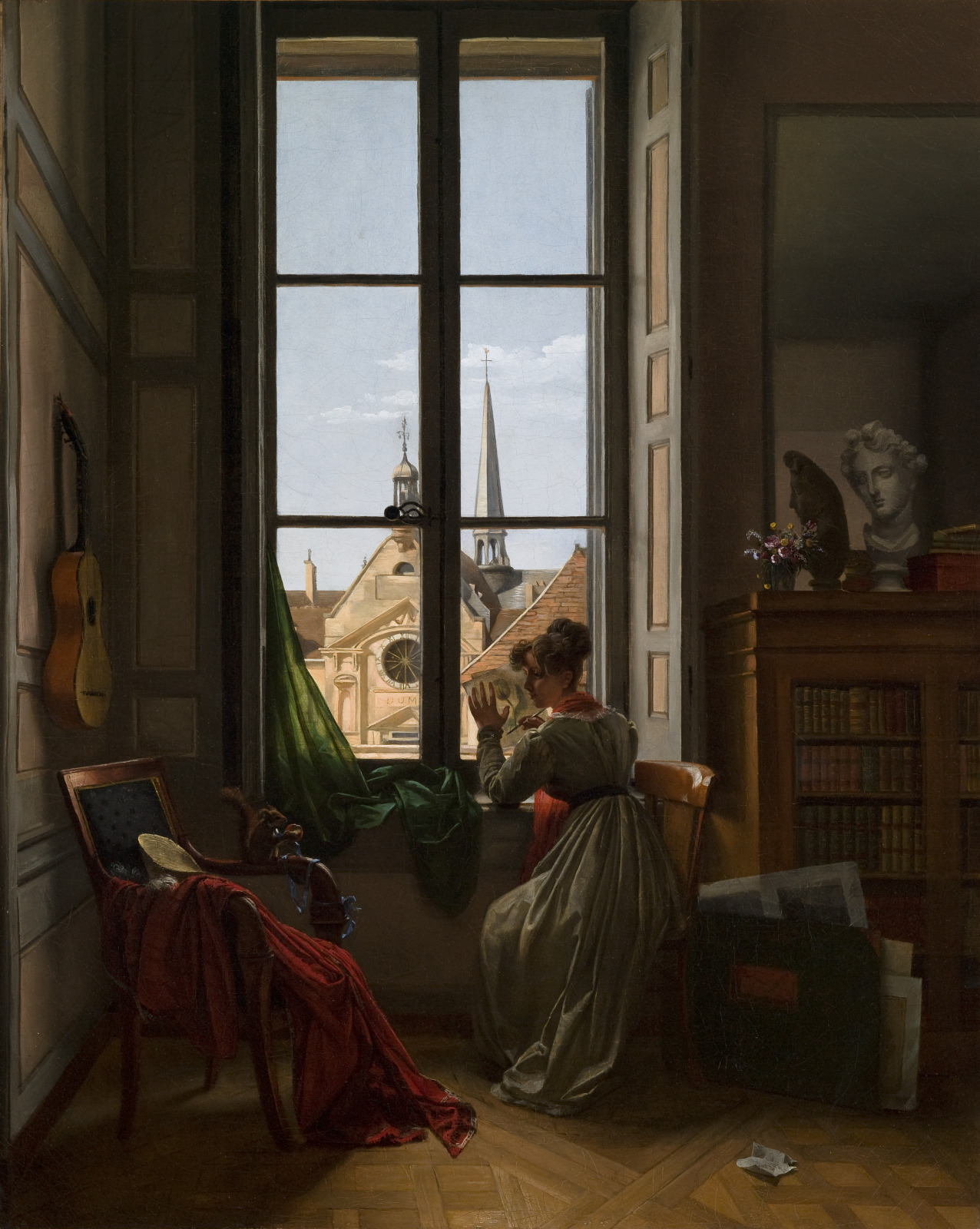
Louise Adéone Drölling, French, 1797–1831; Interior with Young Woman Tracing a Flower, c.1820–22; oil on canvas; 22 1/4 x 17 7/8 inches; Saint Louis Art Museum, Miss Lillie B. Randell by exchange 160:1946
A young woman traces a drawing of a tulip against a windowpane; her study lies discarded on the floor, and she has been distracted by her pet squirrel perched on an armchair nearby. This painting may be a self-portrait of the artist at work in her studio. The painting was awarded a gold medal at the 1824 Salon and was then acquired for the prestigious collection of the French aristocrat, the Duchesse de Berry.
March 8, 2025
Untitled (Girl with Pigtails)
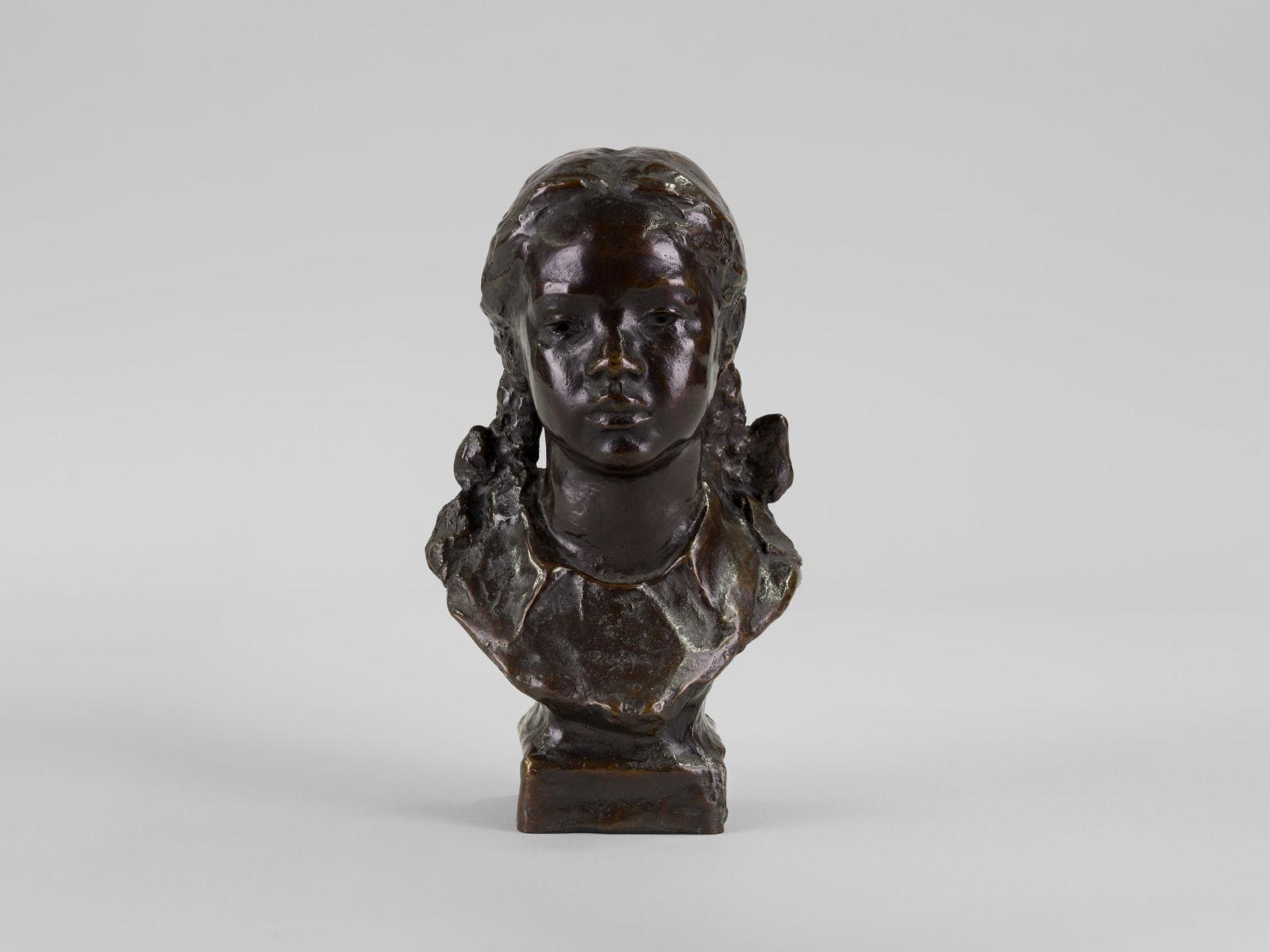
Augusta Savage, American, 1892–1962; cast by Roman Bronze Works, New York, New York, active 1897–1980s; Untitled (Girl with Pigtails), c.1931–40; bronze; 8 1/4 x 5 x 3 1/2 inches; Saint Louis Art Museum, Museum Purchase, Bequest of Edgar William and Bernice Chrysler Garbisch, and Gift of Mrs. Ophelia Hollowell, all by exchange 44:2023
Though quite small, this portrait of a young, African American girl conveys a sweetness without sentimentality. The textured treatment of the surface creates a sophisticated play of light and shadow. This treatment enlivens the girl’s expression, creating a complex psychology that shifts, as children do, from tender innocence to a cautious reserve.
The artist, Augusta Savage, was a leader in the Harlem Renaissance, an early 20th-century African American cultural movement responsible for some of the nation’s most important creative and intellectual productions. Because Savage focused most of her artistic energy on teaching, her own work is typically small and only rarely cast in bronze due to her limited budget and time.
March 7, 2025
Beaded Crown (adenla)

Yoruba artist; Nigeria; Beaded Crown (adenla), early 20th century; glass beads, cloth; height: 30 inches; Gift of Thomas Alexander and Laura Rogers 19:2020
A bead-embroidered crown is the ultimate symbol of Yoruba kingship. All crowns are surmounted by a royal bird and, on a front panel, the face of the creator-god Oduduwa. Oduduwa became the first oba (king) of Ife, the ancient Yoruba capital. The crown’s beaded veil covers the face of the wearer and depersonalizes the oba, turning the ruler into an abstract vision of divine power. Thus, the office of the king is emphasized, and onlookers are protected from the danger of viewing the awesome radiance of a powerful king directly. Each oba may have multiple crowns.
March 6, 2025
Armchair
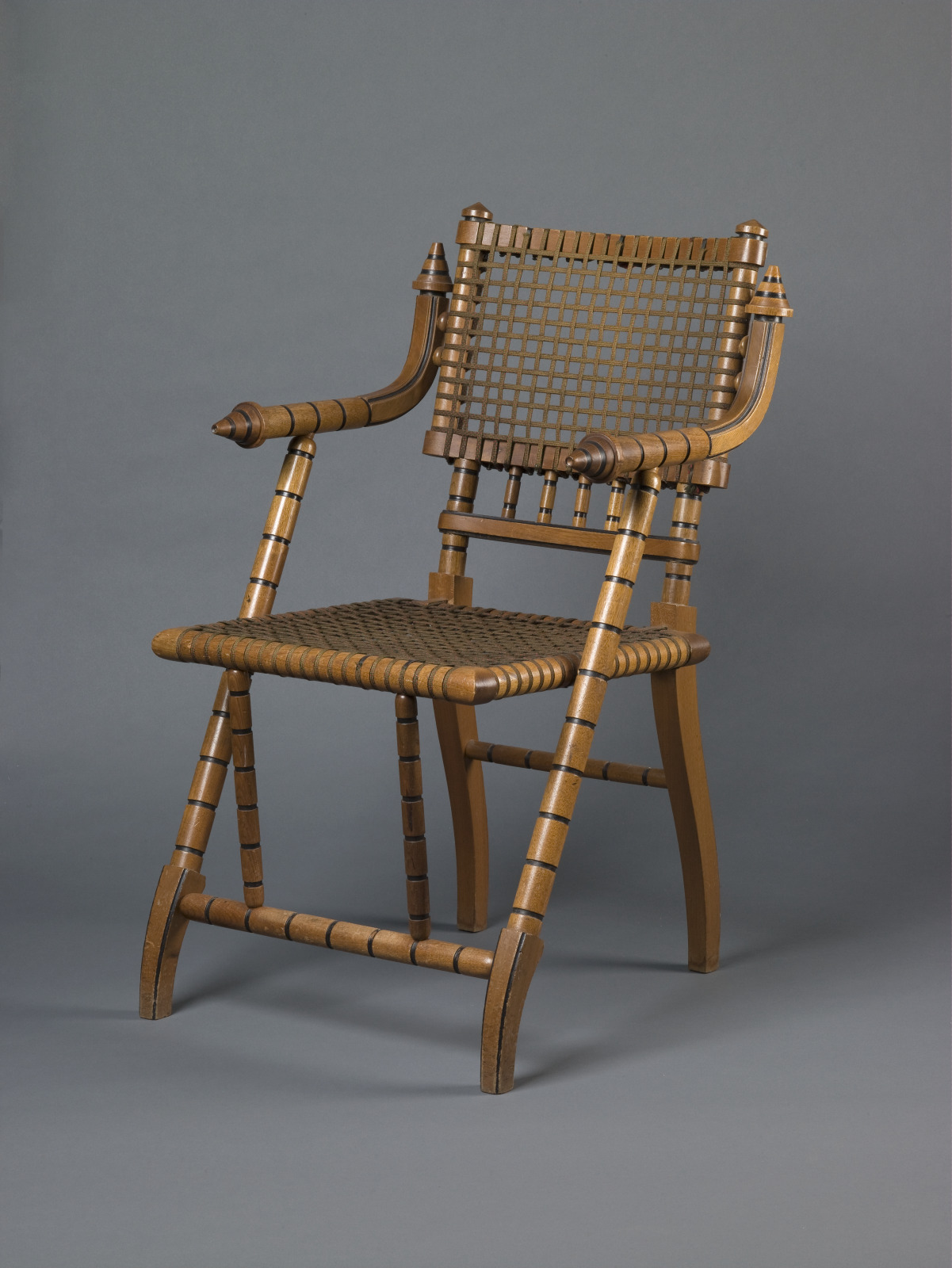
made by George J. Hunzinger, American (born Germany), 1835–1898; Armchair, c.1876; walnut, steel, and wool; 34 x 20 x 24 inches; Saint Louis Art Museum, Funds given by David A. Hanks in memory of Elizabeth Dixon Hanks 135:2011
Lacking carved decoration and lush textiles and trims, this chair’s only ornaments are black-painted rings and machine-like conical finials at the tops and ends of the arms. This patented armchair features diagonal front legs that support a cantilevered seat and fabric-wrapped steel webbing. The chair’s modern mechanical style equals its innovative manufacturing techniques. The maker George Hunzinger received more than twenty patents for mechanical and convertible furniture and improvements to their design and manufacture.
March 5, 2025
Raftsmen Playing Cards
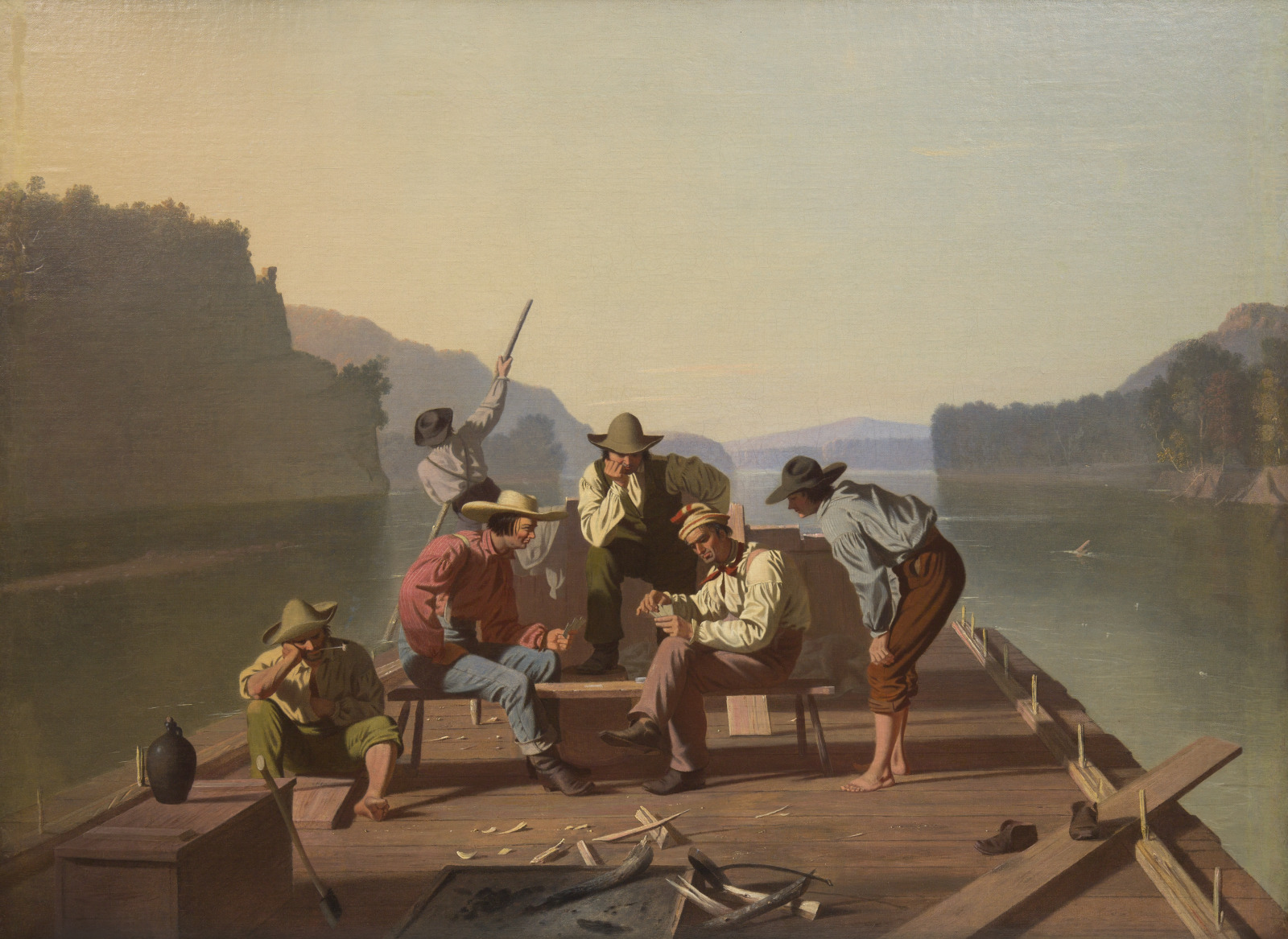
George Caleb Bingham, American, 1811–1879; Raftsmen Playing Cards, 1847; oil on canvas; 28 1/16 x 38 1/16 inches; Saint Louis Art Museum, Bequest of Ezra H. Linley by exchange 50:1934
Flatboatmen enjoy a leisurely game of cards in the moist haze of early morning. As viewers, we are positioned on the front end of the boat and join this rather friendly cast of characters. George Caleb Bingham’s western boatmen contrast sharply with the typical image of river laborers at the time, who were portrayed as violent, often drunken, characters. Both an artist and a politician, Bingham was interested in securing commerce and investment in Missouri. His river workers assert a view of the West as civilized and its inhabitants as competent, congenial folk who could be trusted to uphold the ideals and pursuits of the nation.
March 4, 2025
Chinese-style Flower Basket (karamono-utsushi hanakago) with Loop Handle

Chinese-style Flower Basket (karamono-utsushi hanakago) with Loop Handle, early to mid-20th century; Japanese, Taishō or Shōwa period; bamboo and rattan, with lacquered bamboo insert; basket: 17 1/4 x 8 x 7 inches, lacquered bamboo insert: 10 1/2 x 4 1/8 x 3 7/8 inches; Saint Louis Art Museum, The Nancy Jane Davidson Shestack Collection, bequest of Alan Shestack 256:2020a,b
This is a Chinese-style flower basket with symmetrical proportions. It has four bamboo lengths on the sides that extend beyond the square base as short legs. The sides with tight twill plaiting (ajiro-ami) rise upward and outward to a straight cylindrical neck that terminates with a circular rim. The loop handle is made up of two narrow bamboo stalks tied together with rattan at the top center. It is attached with additional rattan to the basket at the rim and the widest point of the body. The lacquered bamboo insert is supported by a base with square plaiting (yotsume-ami) reinforced with diagonal cross-bracing.
March 3, 2025
Column with Hieroglyphs
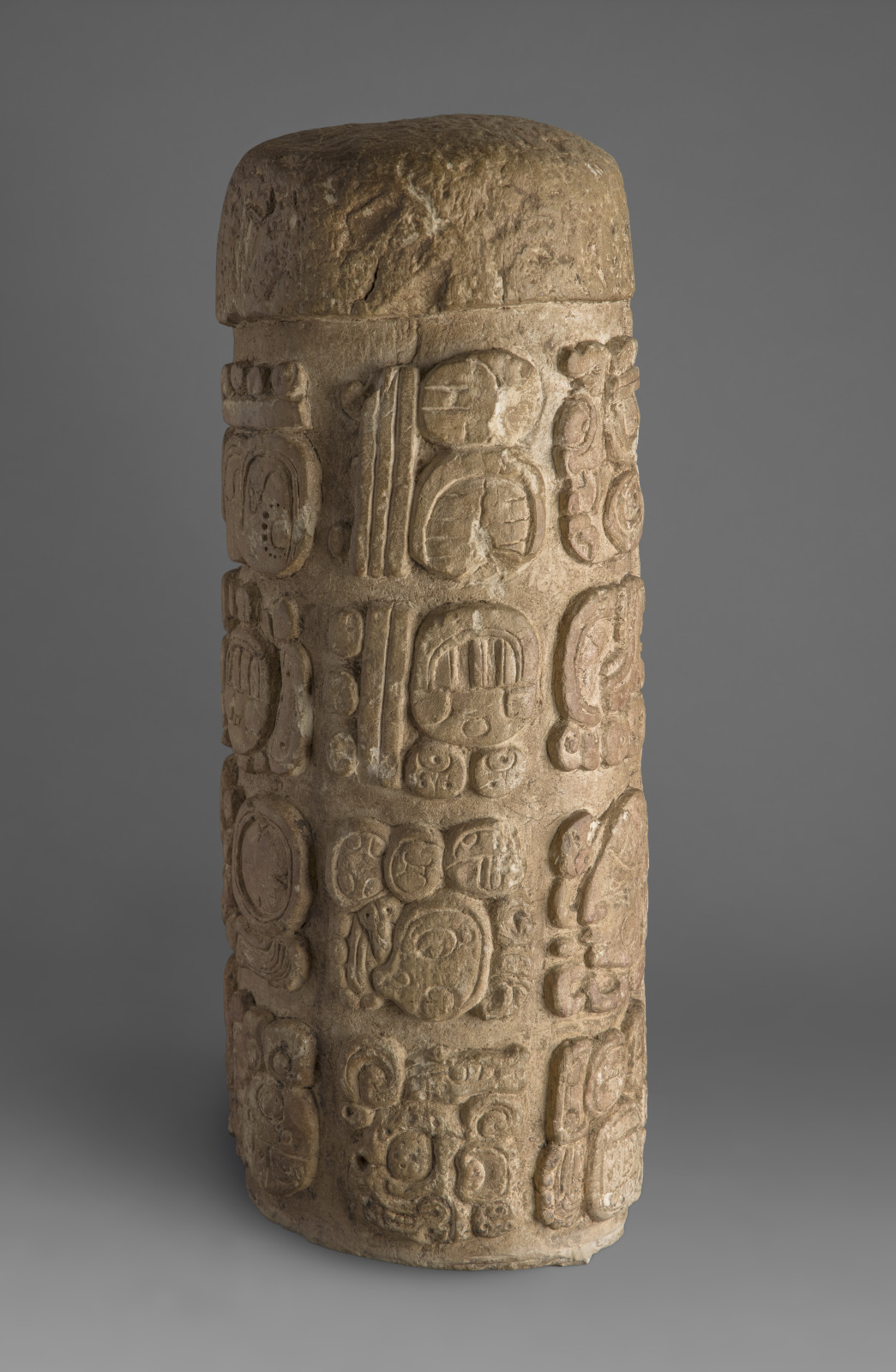
Column with Hieroglyphs, 715; Maya, Mexico, Late Classic period; limestone with pigment; 22 7/16 x 9 1/16 inches; Saint Louis Art Museum, Gift of Morton D. May 384:1978
The elaborately carved figures and symbols seen on this column are Maya hieroglyphs, a writing system that mixes pictorial representations with phonetic signs. Most Maya monuments focus extraordinary emphasis on chronological precision as they describe detailed political histories of competing city-states. In Maya writing, dots record single units and bars record five. Texts typically begin in the upper left, moving to the right and top to bottom in double columns. Here, the first nine glyphs record the date in an array of different Maya calendars that correspond to a day in April, 715. On that day, the ruler of Bonampak commemorated the 13th anniversary of his reign. The text goes on to document his status as the vassal of a Tonina ruler known as K’inich B’aaknal Chaak, ‘Great-Sun Bone-Place Rain God’.
March 2, 2025
Dalmatic
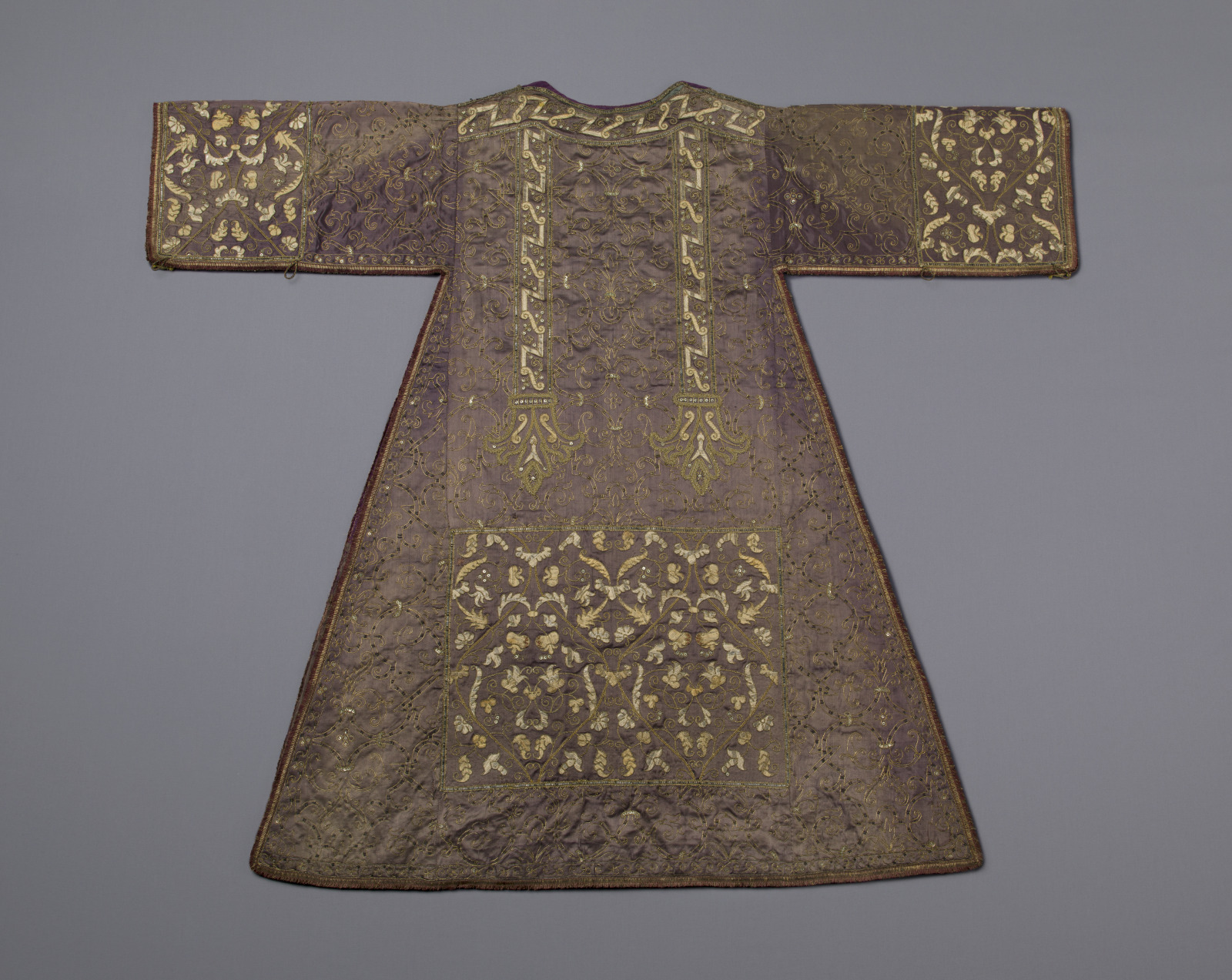
Dalmatic, early 17th century; Spanish or Italian; silk, metallic thread, metal paillettes, metal wire, and metallic fringe; 48 1/2 x 57 inches; Saint Louis Art Museum, Museum Purchase 318:1915
Faded from a much deeper purple and covered in gold thread and sequins, this dalmatic, a type of Christian liturgical vestment, represents the height of 17th-century opulence. The fine interlacing bands on the tunic’s ground are called strapwork. Its cuffs and square central panel are decorated with arabesques, dense patterns of intertwining plants adopted from the Muslim world by earlier European artists.
March 1, 2025
The Blessed Alessandro Sauli as St. Augustine
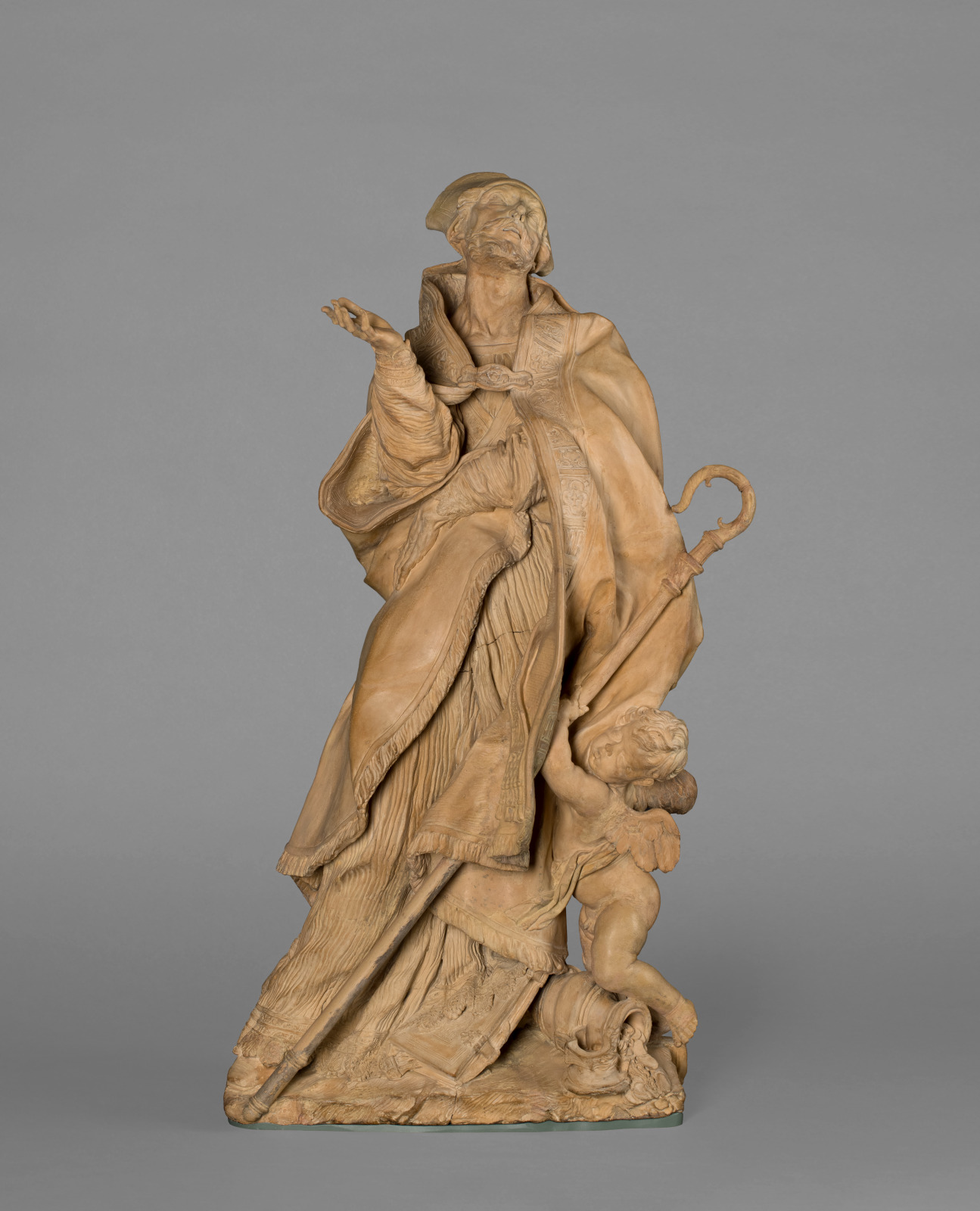
Pierre Puget, French, 1620–1694; The Blessed Alessandro Sauli as St. Augustine, c.1665–67; terracotta; 27 3/4 x 16 x 12 inches; Saint Louis Art Museum, Museum Purchase 50:1968
This expressive figure invades the surrounding space, making it an excellent example of the exuberant emotional power associated with 17th-century Baroque sculpture. The artist used a sharp tool to detail the sleeve, the lace along the hem, the fringed edges of the cape, and the figure’s beard. Though typical of French taste, this highly finished terracotta is related to a large-scale marble sculpture commissioned in 1664 for a church in the Italian city of Genoa. Alessandro Sauli became bishop of Pavia (50 miles north of Genoa) in 1591 after having worked to energize the waning church on the nearby island of Corsica.
February 28, 2025
Tambour Desk
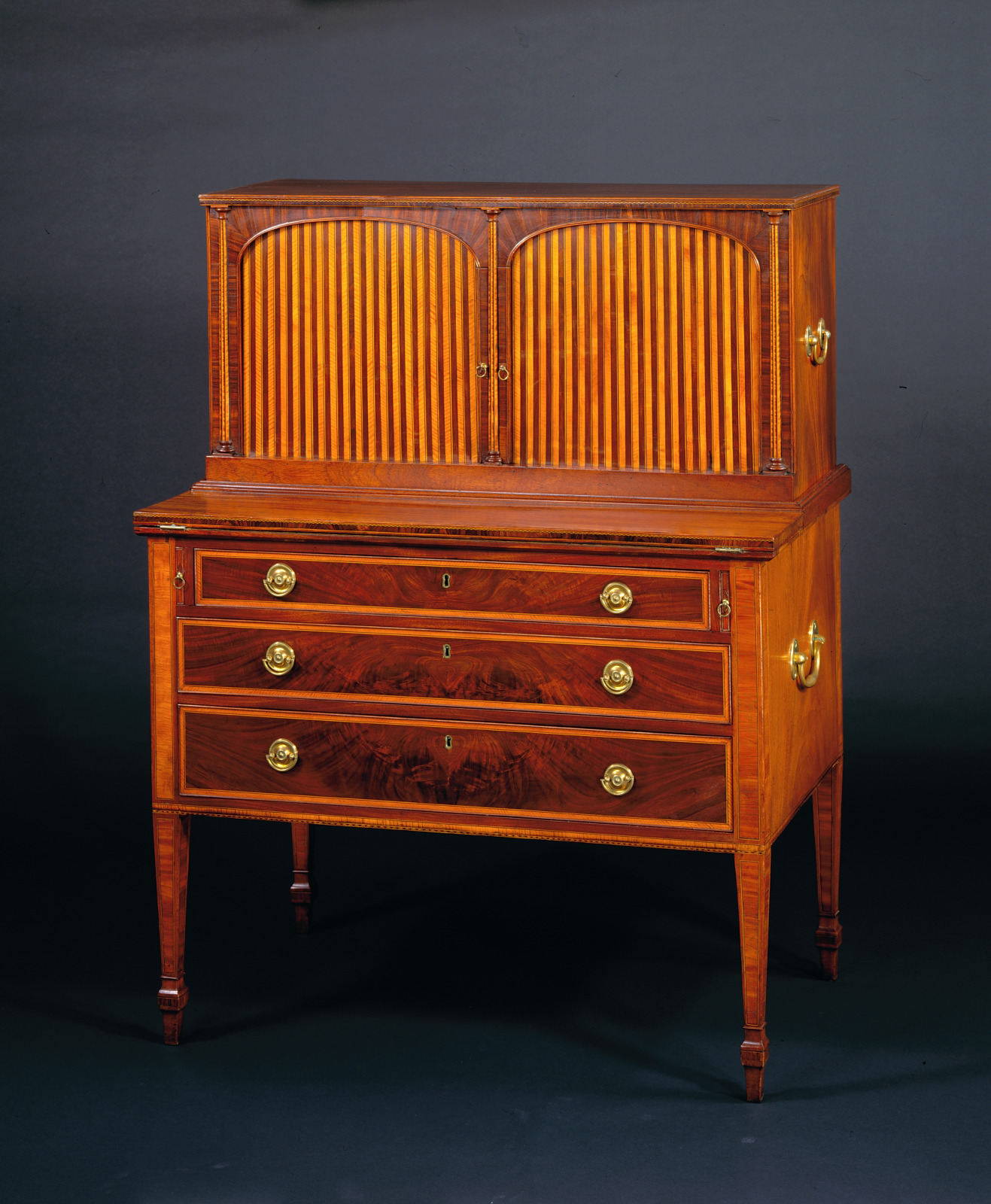
John Seymour, American (born England), 1738–1816; Thomas Seymour, American (born England), 1771–1848; Tambour Desk, 1804–10; mahogany, satinwood, rosewood, pine, possibly cedar, and other woods, with brass hardware and replaced velvet; 48 1/4 x 37 5/8 x 21 1/2 inches; Saint Louis Art Museum, Funds given by Florence K. Imse in memory of Robert R. Imse, and Museum Shop Fund 48:2005a,b
Named for its flexible doors that open horizontally across the top, this tambour desk was intended for letter writing and other light work. The sliding doors were made from strips of wood backed with canvas. The desk’s simple function allowed a design of slender proportions, achieved by elevating it on long tapered legs. Contrasting patterns of light-colored satinwood and darker-toned woods like mahogany, rosewood, and purpleheart enliven the surface and lighten the mass of the desk’s geometric volumes.
The desk’s design, construction methods, and numerous inscriptions identify its makers as the father and son cabinetmakers John and Thomas Seymour. John Seymour was born and trained as a furniture maker in the provincial city of Axminster, in southwestern England, before he immigrated to the United States with his family in 1784. When the Seymours opened their cabinetmaking shop in Boston in 1795, they established a new standard for stylish furniture made with exquisite craftsmanship.
February 27, 2025
Half Circle Red
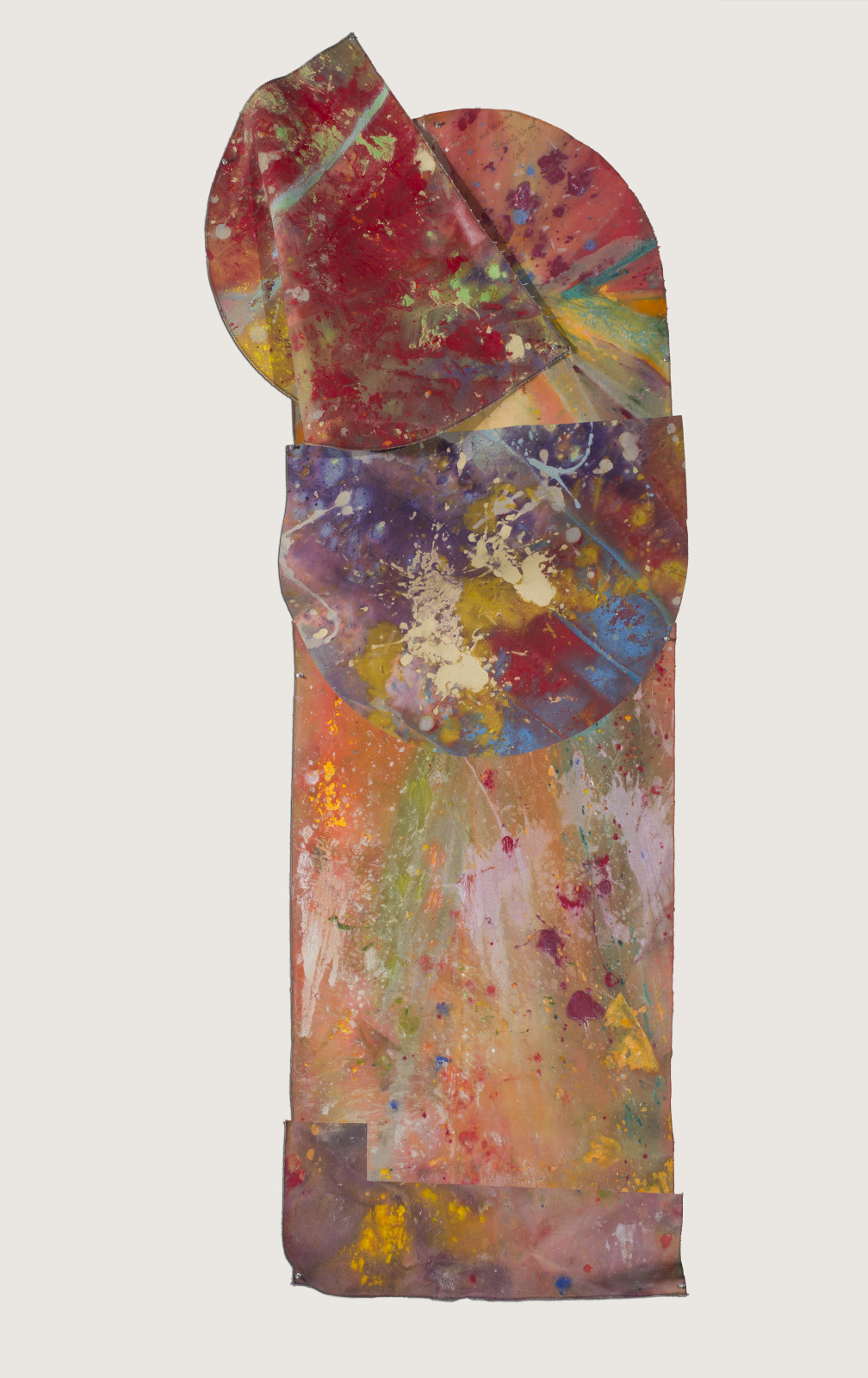
Sam Gilliam, American, 1933–2022; Half Circle Red, 1975; acrylic on canvas; 78 x 33 x 6 inches; Saint Louis Art Museum, The Thelma and Bert Ollie Memorial Collection, Gift of Ronald and Monique Ollie 189:2017a,b; © Sam Gilliam / David Kordansky Gallery
Sam Gilliam soaked and poured paint onto this canvas, which he crumpled and tied up until it dried, creating a bold and vibrant surface. Later he unfurled the canvas and cut it into shapes that he combined to hang directly on the wall without a frame or support structure. Consequently, this painting drapes, gaps, bulges, and doubles over, emphasizing the intrinsic properties of his materials—how acrylic pools and canvas sags, for example.
February 26, 2025
Ewer
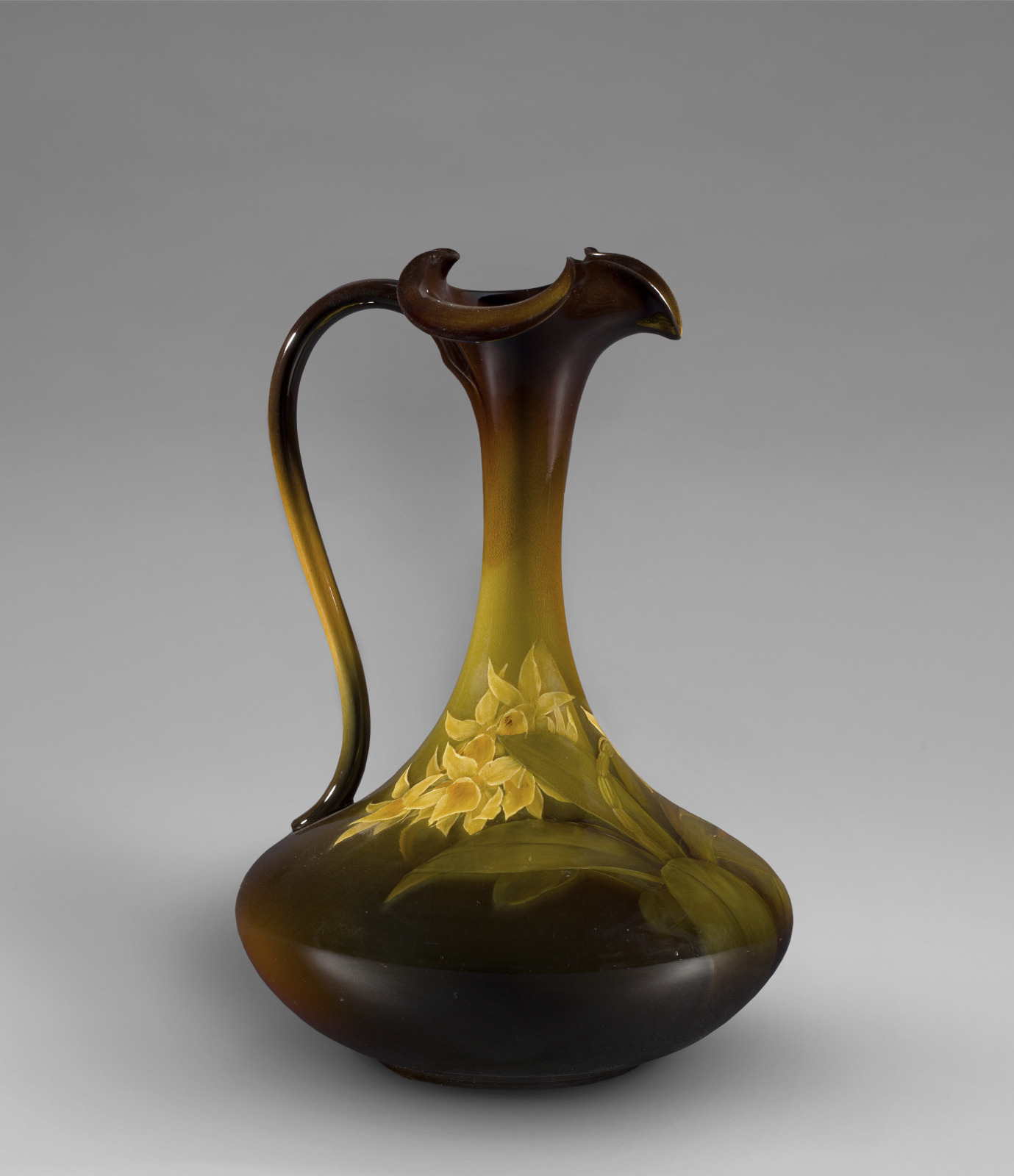
decorated by Albert R. Valentien, American, 1862–1925; made by Rookwood Pottery Company, Cincinnati, Ohio, 1880–1967; Ewer, 1896; glazed earthenware; 12 1/2 x 7 1/2 inches; Saint Louis Art Museum, Gift of Mrs. Thomas T. Hoopes 57:1987
Sprays of delicate orchids ornament the swelling base of this long-necked pitcher, or ewer. The floral painting, executed in colored slip (clay thinned with water), echoes the impasto or textured application of oil paint. Introduced in 1883, the Rookwood Pottery’s Standard Glaze line featured dark backgrounds and naturalistic, painterly decoration under a glossy, gold-tinted glaze, as seen here. Artist Albert Valentien was the first full-time decorator hired at Rookwood.
February 25, 2025
Smelt Brook Falls

Marsden Hartley, American, 1877–1943; Smelt Brook Falls, 1937; oil on board; 28 x 22 7/8 inches; Saint Louis Art Museum, Eliza McMillan Trust 9:1939
A jagged, rushing waterfall fills this canvas. Its stark white forms, heavy black outlines, and bold rust surroundings evoke the severity and ruggedness of the Maine landscape. Marsden Hartley lived with the Mason family in Nova Scotia when, in 1936, two of the grown sons and their cousin drowned in a boating accident. Hartley channeled his grief into a series of brooding landscapes and seascapes, one of which is this painting. The work symbolizes characteristics he associated with the family: “Every one of ‘em like rocks from which fresh springs flow without hindrance.”
February 24, 2025
Bottle Vase
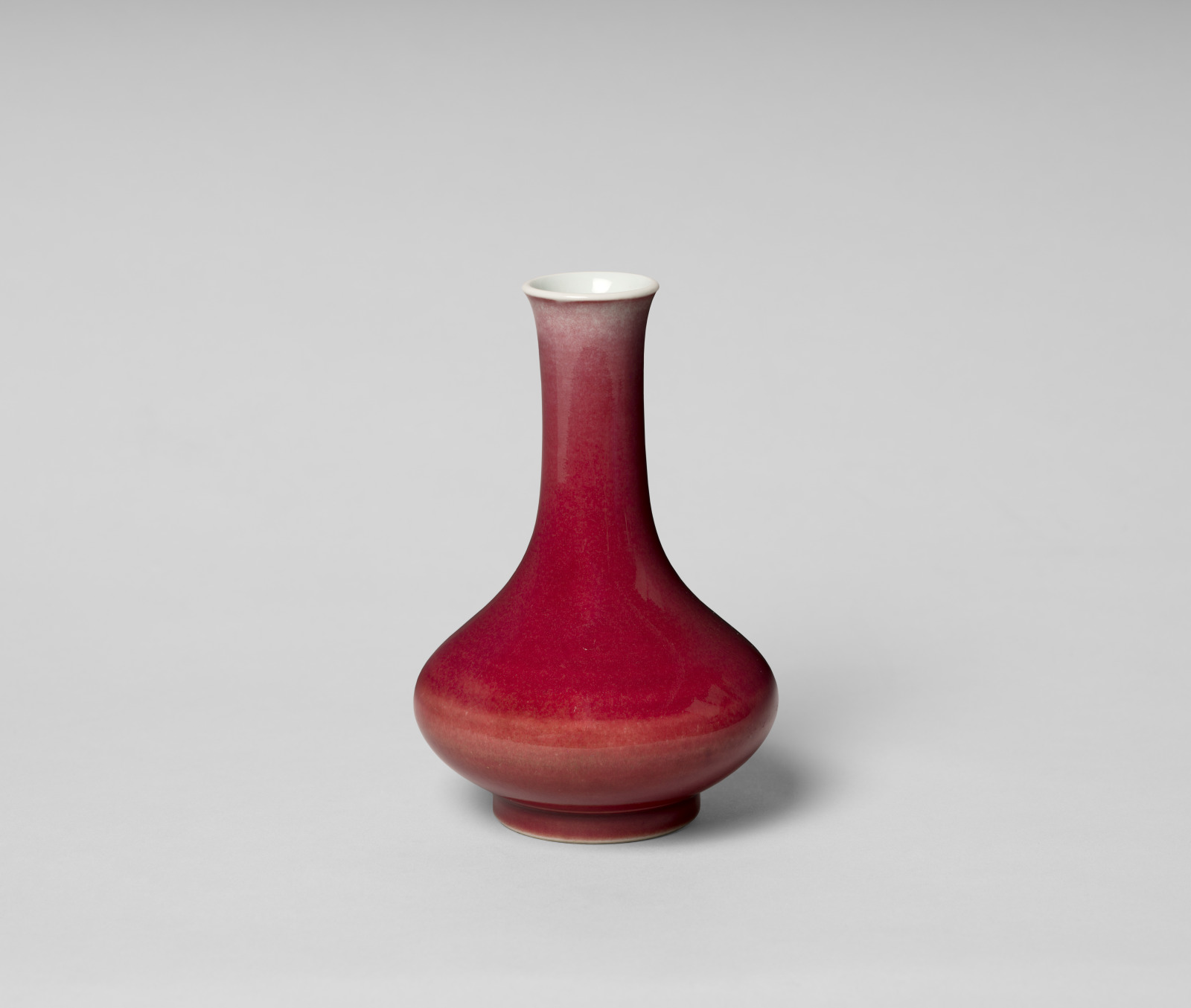
Bottle Vase, late 18th–early 19th century; Chinese, Qing dynasty; Jingdezhen ware; porcelain with copper-red (sang-de-boeuf) glaze; height: 6 3/8 inches, diameter of body: 4 3/8 inches,; Saint Louis Art Museum, Gift of Kenneth and Phyllis Langsdorf 182:2022
This elegantly formed vase is striking for its copper-red color, a particularly difficult glaze color to achieve due to the imprecise nature of firing in the kilns. This vase successfully exhibits the fine color gradations that are lighter at the top and progressively darker toward the bottom. This deep-red glaze is commonly known in Western literature by the French term sang-de-boeuf (ox blood). The vase was likely made during the Jiaqing period in the late 18th or early 19th century, even though it does not bear an imperial reign mark.
February 23, 2025
The Dovecote

Francois Boucher, French, 1703–1770; The Dovecote, 1758; oil on canvas; 18 5/8 x 28 inches; Saint Louis Art Museum, Museum Purchase 75:1937
-
See Details
![751937dig_det1_2]()
François Boucher, French, 1703–1770; The Dovecote (detail), 1758; oil on canvas; 18 5/8 x 28 inches; Saint Louis Art Museum, Museum Purchase 75:1937
![751937dig_det2_2]()
François Boucher, French, 1703–1770; The Dovecote (detail), 1758; oil on canvas; 18 5/8 x 28 inches; Saint Louis Art Museum, Museum Purchase 75:1937
Although evocative of the natural world, this painting represents a fantasy of the picturesque. Doves fly in and out of the dovecote while a man and child watch from a rickety bridge. The blue-green color and benign decay of the various structures present a romantic notion of the outdoors, reflecting contemporary ideas about nature. François Boucher was the favorite painter of Louis XV’s mistress Madame de Pompadour who, with her friends, enjoyed playing at being shepherdesses and milkmaids in charmingly idealized country settings similar to the one portrayed here.
February 22, 2025
Othello

Pietro Calvi, Italian, 1833–1884; Othello, c.1870; marble and bronze; height: 35 1/2 inches; Saint Louis Art Museum, Bequest of Morton D. May, Bequest of Edith J. and C.C. Johnson Spink, Gift of Margaret Donk Waters, and Gift of Professor and Mrs. Theo Haimann, all by exchange 13:2020a,b
This sculpture represents the main character of William Shakespeare’s play Othello, written around 1603. The portrait captures the moment when Othello tragically realizes the innocence of his wife, Desdemona, whom he has killed out of jealousy. The handkerchief he holds was planted by an enemy as false evidence of Desdemona’s betrayal. Pietro Calvi’s dignified depiction of the distraught Othello with a tear rolling down his cheek may be based upon the famous performances of Ira Aldridge (1807–1867), the first Black actor to play Othello in England beginning in 1825.
February 21, 2025
Nautilus Cup
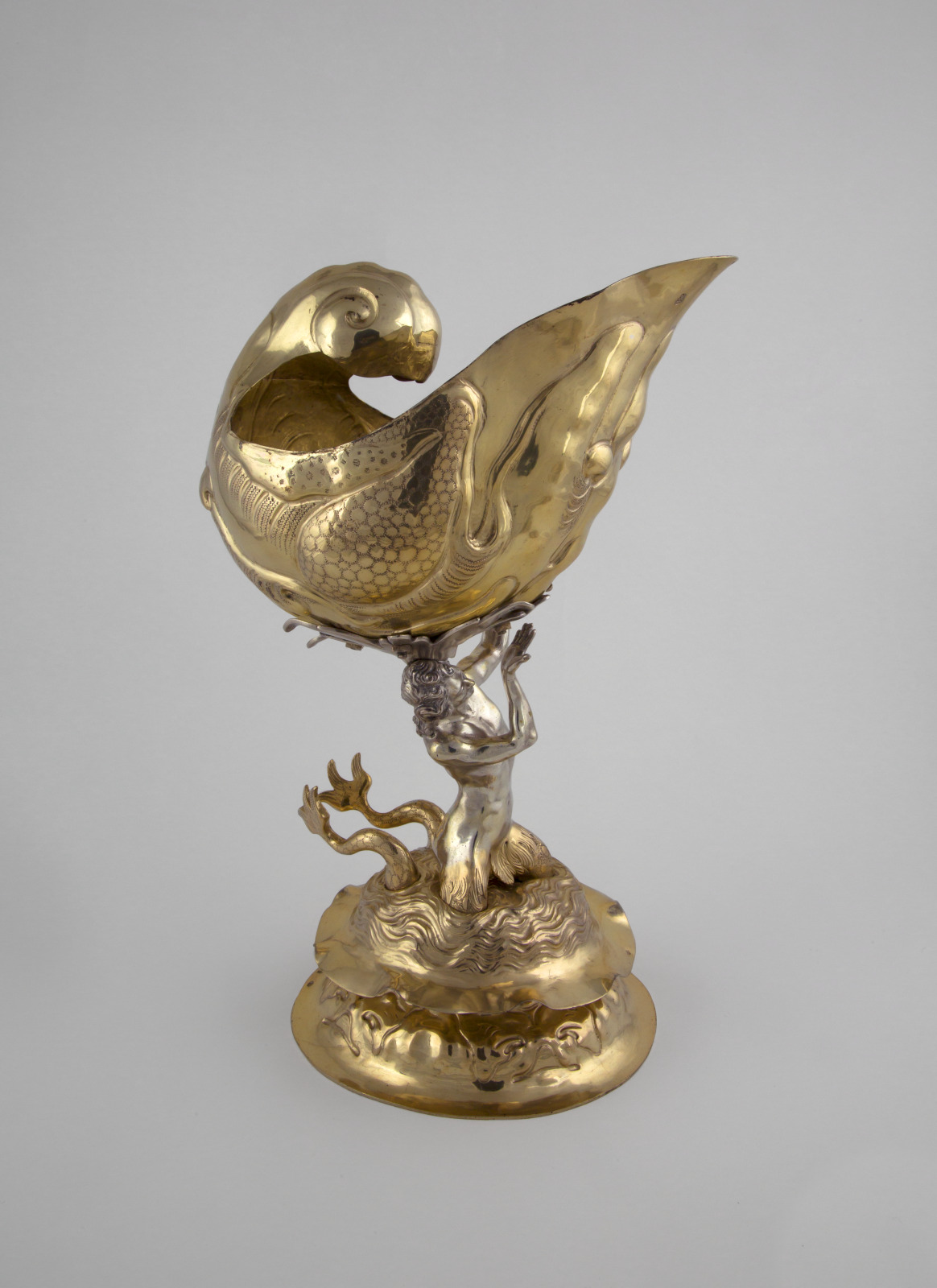
David Bessmann, German, active 1640–1677; Nautilus Cup, 1645–50; silver with gilding; 14 x 9 x 6 3/4 inches; Saint Louis Art Museum, Funds given by Effie C. Kuhn and Stella Kuhn 79:1954
Rising out of the water, a triton (a merman-like sea creature) supports an irregularly shaped receptacle on his head and steadies it with his left hand. This silver cup captures the elegance and exotic appearance of the nautilus shell which had become increasingly available to Europeans through trade in the 16th century. Partial gilding, called parcel gilding, further enhances its sumptuous beauty and luxurious appearance. While collectors owned examples of actual shells, this was an age that also appreciated the artificial reproduction of natural forms. The cup bears the mark of the silversmith David Bessmann as well as the pinecone mark, visible on the shell rim, for the city of Augsburg.
February 20, 2025
Drinking Water

Chūzō Tamotzu, American (born Japan), 1891–1975; Drinking Water, about 1937; crayon lithograph, with scraped highlights; image: 13 1/2 x 10 inches, sheet: 16 x 11 3/8 inches; Saint Louis Art Museum, Gift of the Federal Works Agency, Work Projects Administration 264:1943
Two curious mules seek out a water trough within a landscape of energetic, gestural marks. Chuzo Tamotzu used a lithographic crayon and a scraping tool to mimic ink washes, recalling his study of ink paintings, or sumi-e, in his native Japan. He immigrated to the United States in 1920 and joined New York City’s Federal Art Project in 1935 as one of its first artists. His employment ended in 1937, when American citizenship became a requirement. As Tamotzu later lamented, he was “given the pink slip,” since Japanese immigrants were prohibited from becoming naturalized citizens until 1952.
February 19, 2025
View from the Window

Ernst Ludwig Kirchner, German (active Switzerland), 1880–1938; View from the Window, c.1914; oil on canvas; 47 1/2 x 35 3/4 inches; Saint Louis Art Museum, Bequest of Morton D. May 902:1983
In this view from his Berlin studio window, Ernst Ludwig Kirchner deftly manipulated color and scale to create a nightmarish effect. The acid-yellow buildings loom precipitously over the pink rail yard, blocking out an eerie green sky. Sheds in the foreground are artificially small and sit at a precarious angle. Kirchner aptly described his astringent palette in this period as “iridescent colors, as if seen through a nacreous mist.”
February 18, 2025
Pigment Container (tiao se qi) with Elongated Neck and Water Buffalo Head
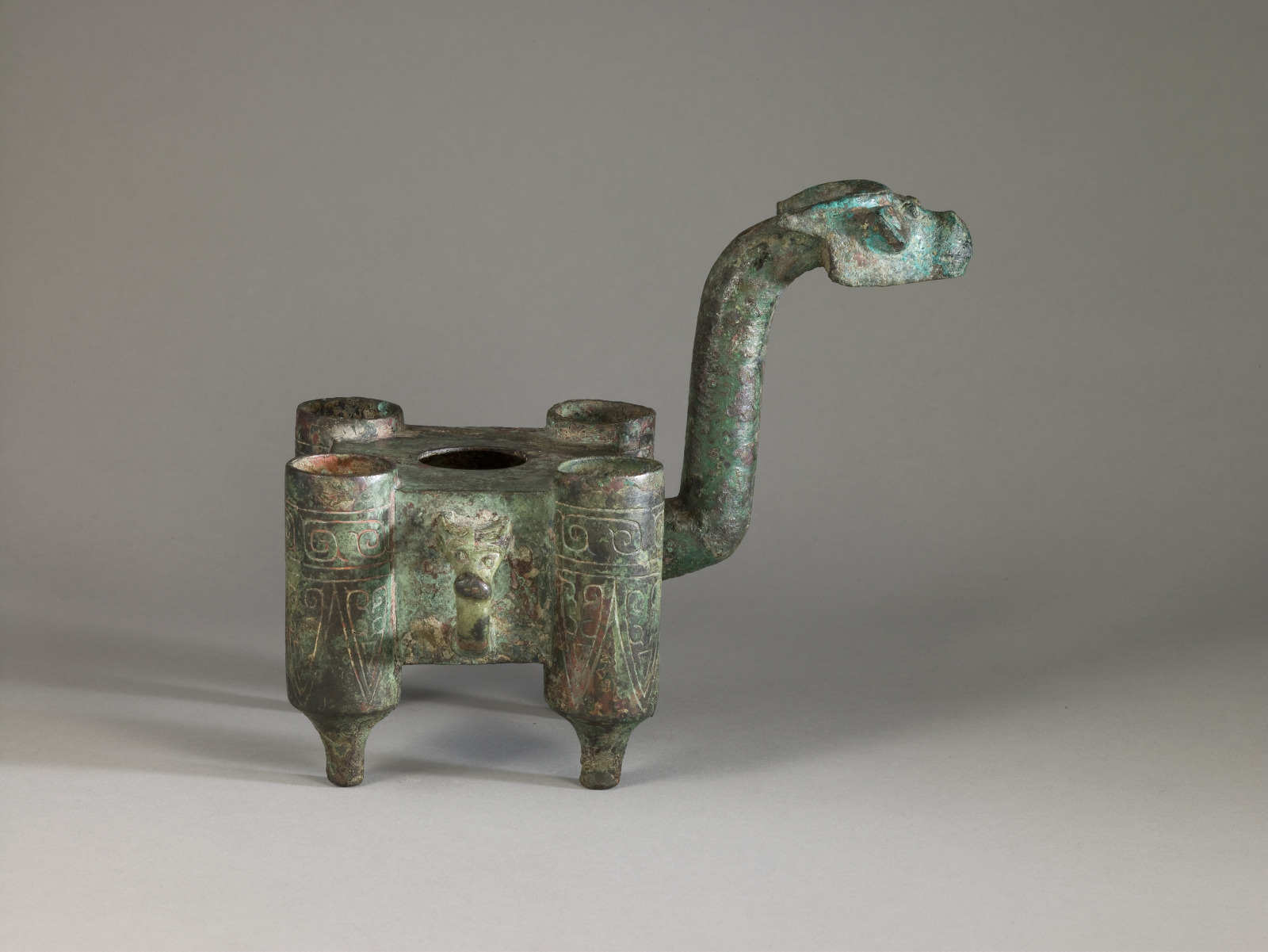
Pigment Container (tiao se qi) with Elongated Neck and Water Buffalo Head, 11th century BCE; Chinese, possibly Shang dynasty; bronze; height: 6 3/4 inches, width across side handles: 5 3/4 inches; Saint Louis Art Museum, Gift of J. Lionberger Davis 33:1951
This object is among the rarest of ancient Chinese bronze vessels as only a few other examples exist. The elongated neck serves as the principal handle while the vessel may also be carried by two smaller, animal-headed loop handles on the sides. Its function as a pigment container has been confirmed by traces of various colors (red, green, white, and black) found within the receptacles of a similar object recovered from the tomb of a high official in the court of King Wen of Zhou (1152–1056 BCE). That vessel is now in the Shaanxi History Museum, Xi’an, Shaanxi province, China. Only three other museums in the world possess similar vessel types—the Ashmolean Museum at the University of Oxford; the Royal Ontario Museum in Toronto; and the Museum of Far Eastern Antiquities, Stockholm.
February 17, 2025
The Tenth Street Studio
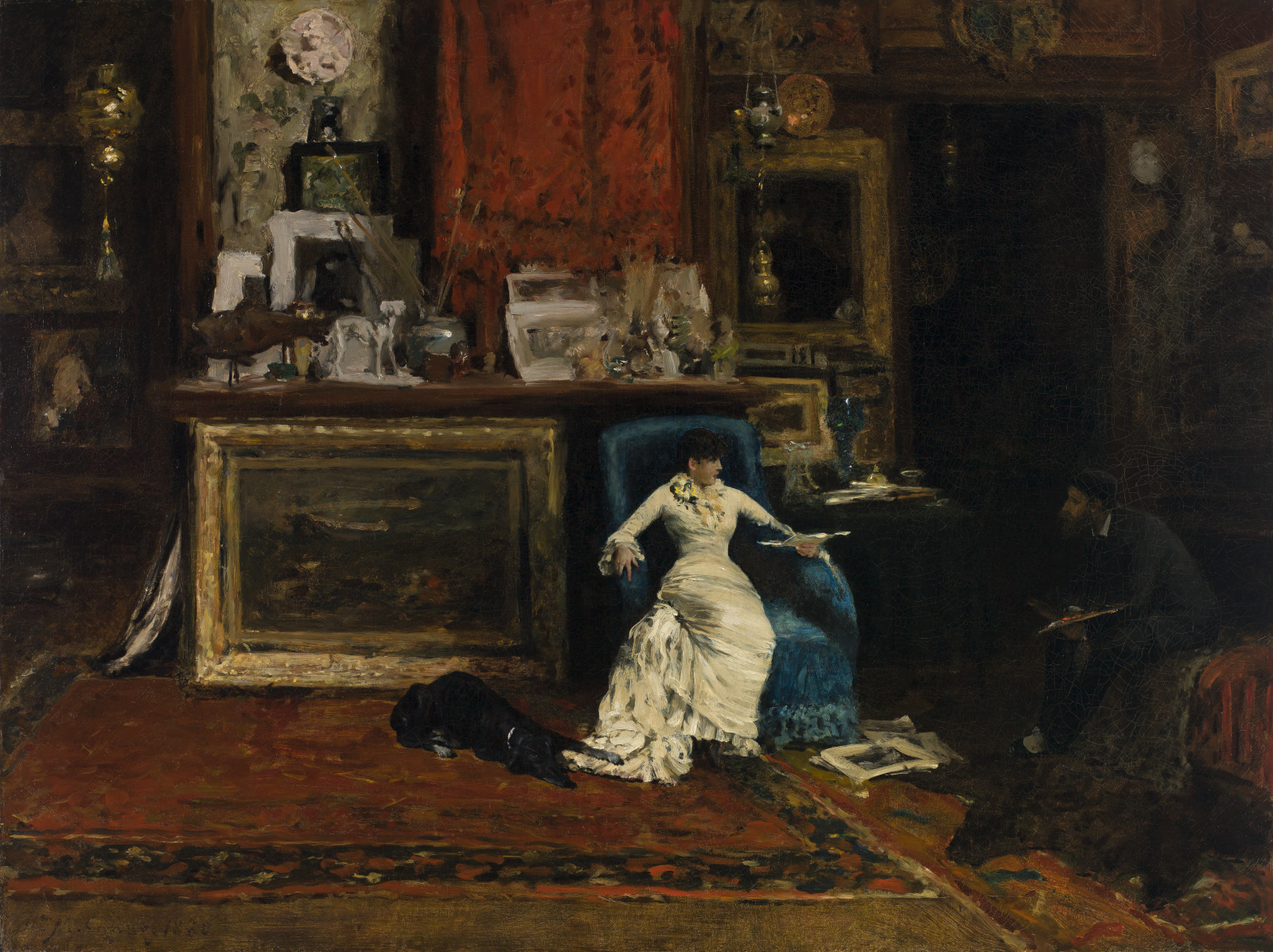
William Merritt Chase, American, 1849–1916; The Tenth Street Studio, 1880; oil on canvas; 36 1/4 x 48 1/4 inches; Saint Louis Art Museum, Bequest of Albert Blair 48:1933
Sumptuous tapestries, exotic metalwork, imported porcelains, fine art, and elegantly adorned patrons were sure to be found in the studios of artists at the end of the 19th century. This painting depicts the studio of its artist, William Merritt Chase, one of the most successful painters of the era. Appreciating—and being seen appreciating—such exquisite finery was an important cultural and social marker for both patron and artist. An invitation to a reception at Chase’s studio (sure to be in the society news) was the most sought after in New York City.
February 16, 2025
Vessel in the Form of a Circular Pyramid
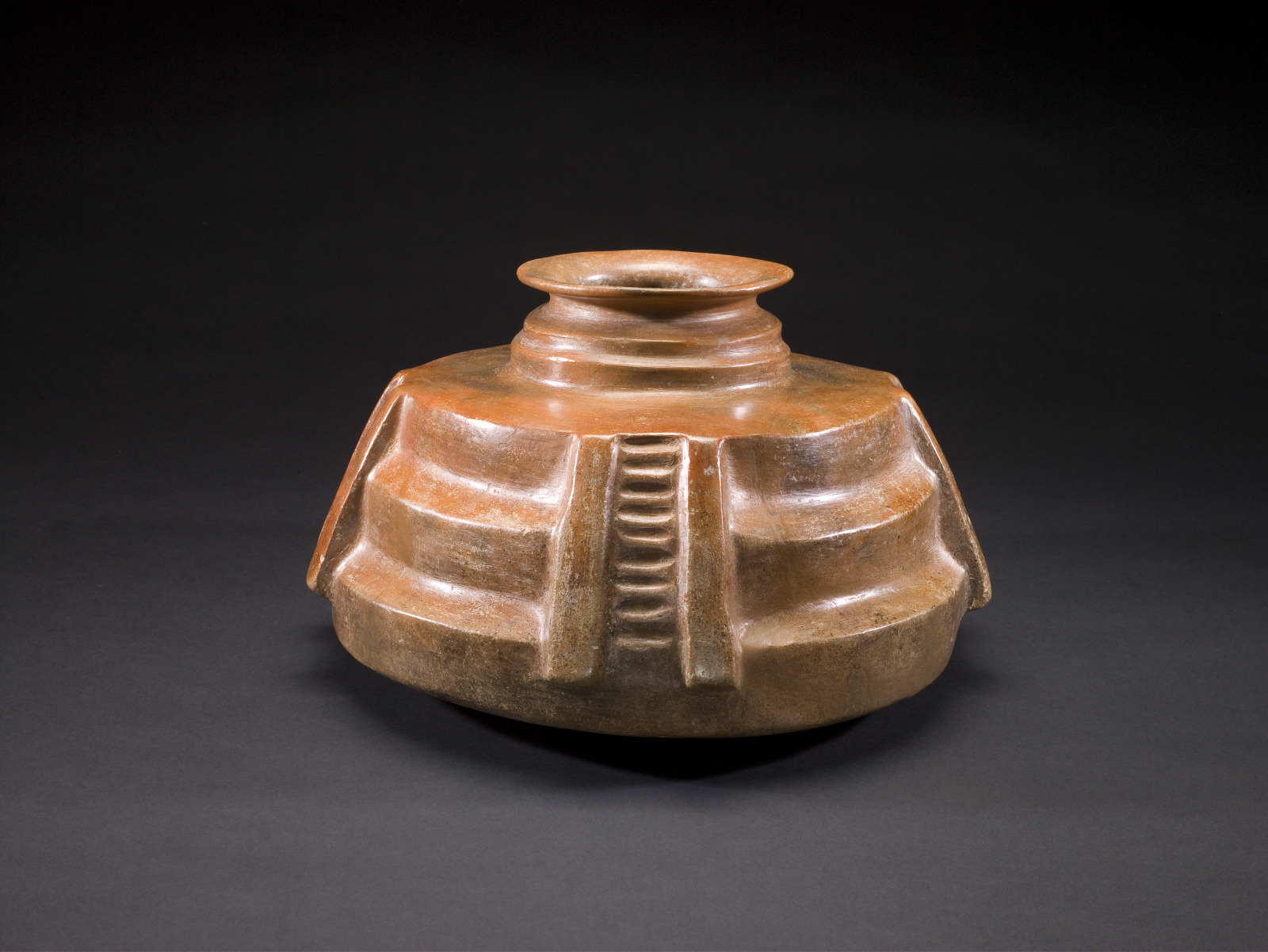
Vessel in the Form of a Circular Pyramid, c.300 BCE–300 CE; Colima, Mexico, Late Formative period; ceramic; 6 5/8 x 11 1/2 inches; Saint Louis Art Museum, Gift of Morton D. May 154:1980
Four sets of stairs ascend from the base to the summit of this pyramid model. Placed at equal intervals, the staircases designate the cardinal directions of north, south, east, and west and represent the earthly domain. The opening of the vessel mimics a temple platform and references the axis mundi, a concept expressing the point of connection between sky and earth where the four directions meet.
Throughout Mesoamerica, communities invested heavily in the construction of public structures, most notably wide plazas and pyramids. Models such as this one convey ideas about the symbolic significance of architecture, rather than serve as scale replicas of specific structures. Round structures are strongly connected with the cultures of West Mexico and were probably the focus of community rituals.
February 15, 2025
“Polonaise” Carpet with Split-Leaf Arabesque and Palmette Design on Silver Ground
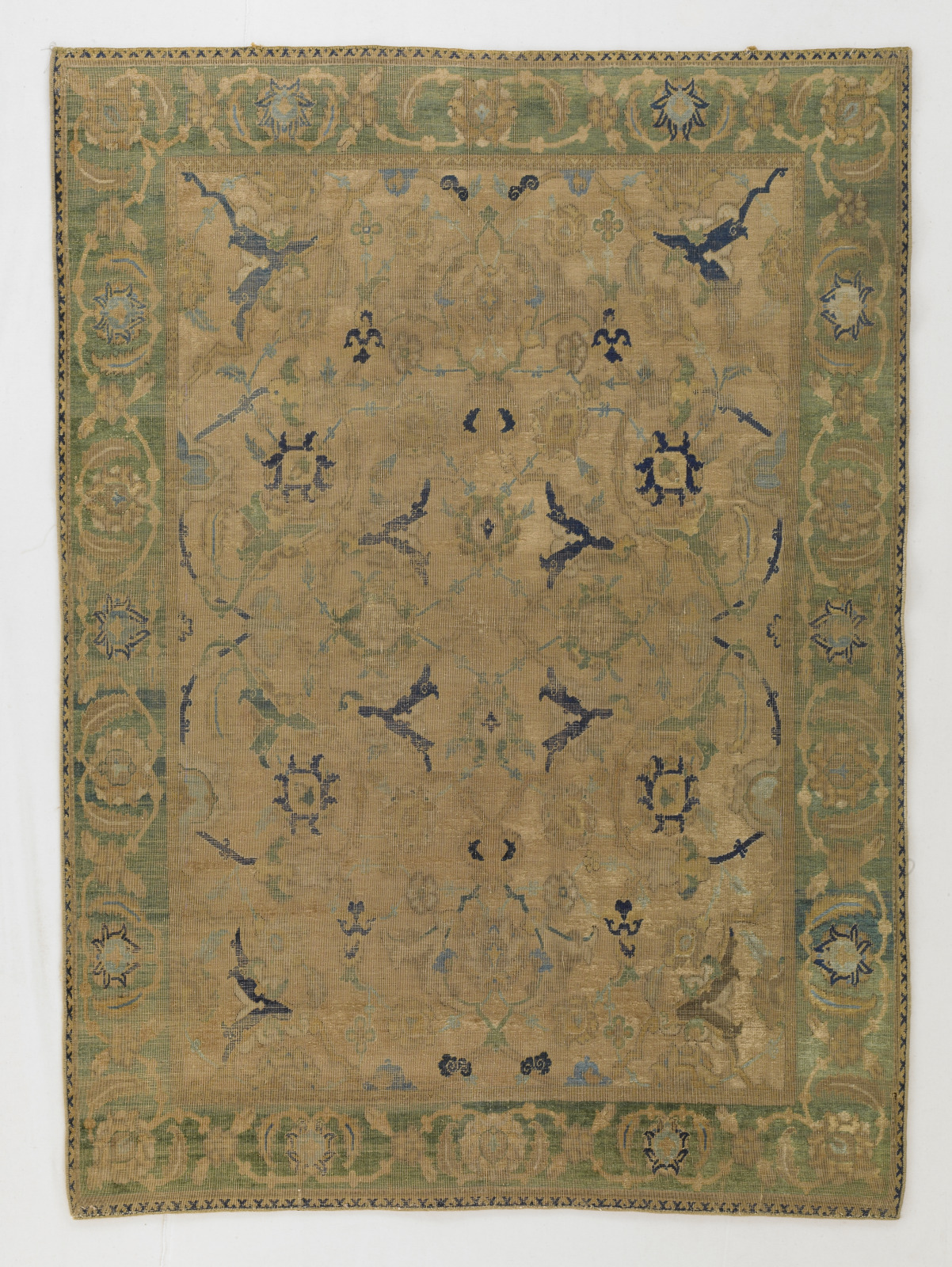
“Polonaise” Carpet with Split-Leaf Arabesque and Palmette Design on Silver Ground, 17th century; Persian, Iran, Safavid dynasty; silk pile and metallic thread brocading; 58 1/4 x 42 1/4 inches; Saint Louis Art Museum, Gift of James F. Ballard 120:1929
This carpet has a pale pink central field and a pattern of curved, crisscrossed lines and shapes known as arabesques. Interlaced scrolls bear rosettes and floral palmettes in white, yellow, green, and light and dark blues. The wide green border framing the field is muted green, with Indian lotus flowers and leaf scrolls woven in soft tones of blue, golden brown, and ivory.
Carpets like this were made in the workshops of Shah ʿAbbās I (ʿAbbās the Great, 1571–1629; reigned 1588–1629) and his successors in Isfahan, Persia’s capital city in present-day Iran. Such sumptuous silk-and-metal rugs were used at court or sent to European royalty. Similar examples with Polish heraldic designs woven into them were displayed at the 1878 Paris Exposition and confused writers into misattributing them to Poland. The French term “Polonaise” has remained in use by tradition.
February 7, 2025
Tile Panel
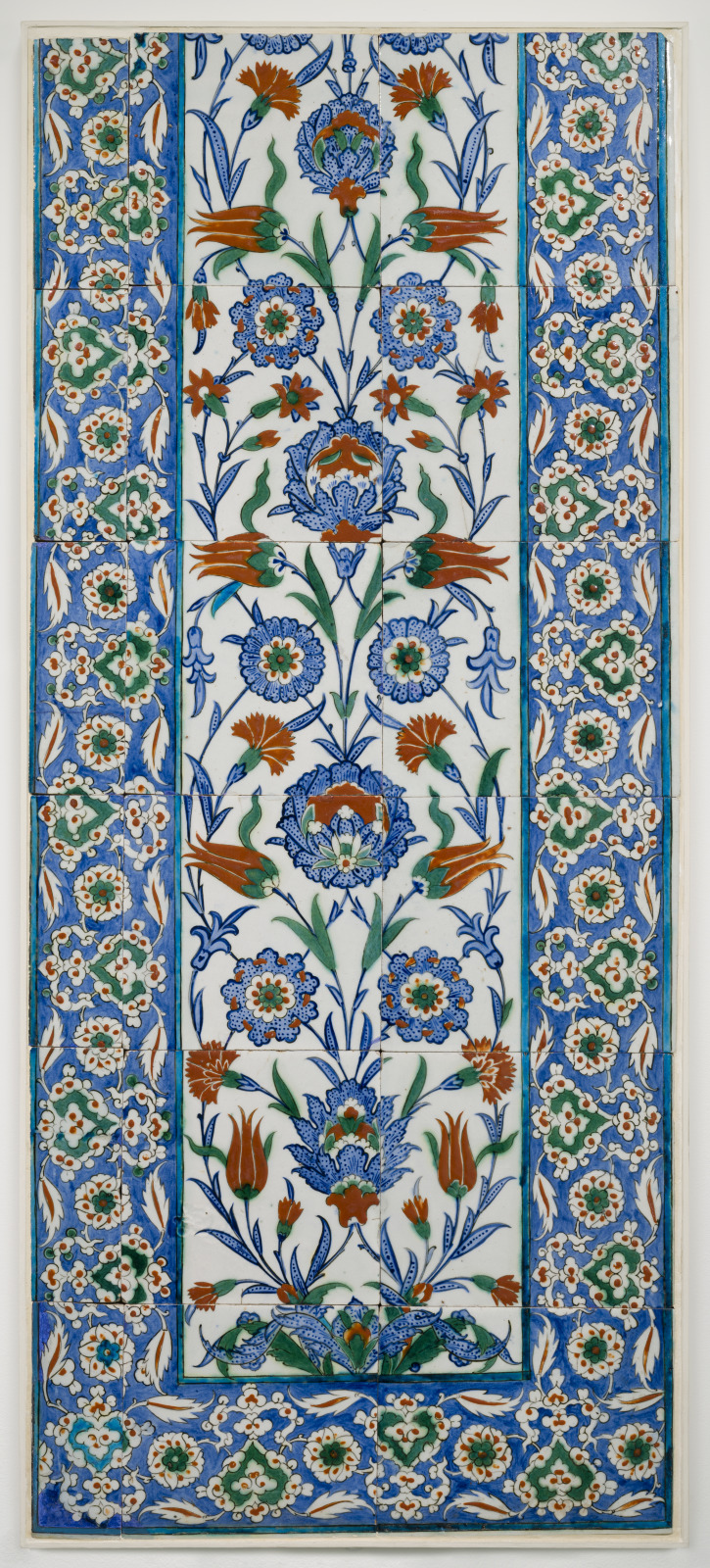
Tile Panel, c.1560–80; Ottoman, Turkey; glazed fritware with underglaze slip and painted decoration; 50 3/8 x 22 5/8 inches; Saint Louis Art Museum, William K. Bixby Trust for Asian Art 47:1956
Bright red, like the color seen in these tiles, is the most difficult color for potters to control as an underglaze pigment. In the mid-16th century, potters at Iznik discovered that a local clay, applied thickly and fired under precise conditions, would yield a tomato-red hue. By standing at an angle to these tiles, one can see that the red was applied so thickly that it stands out from the surface. A member of the Ottoman court in Istanbul would have commissioned a panel like this, probably to decorate a religious building constructed under his or her patronage. It would have formed part of a larger tile composition covering a wall with brilliant color. Demand for such tiles was so enormous in the second half of the 16th century that edicts were periodically issued forbidding the potters at Iznik from making ceramics for “strangers,” meaning anyone not a member of the court.
February 6, 2025
The Palais Royal Gallery’s Walk
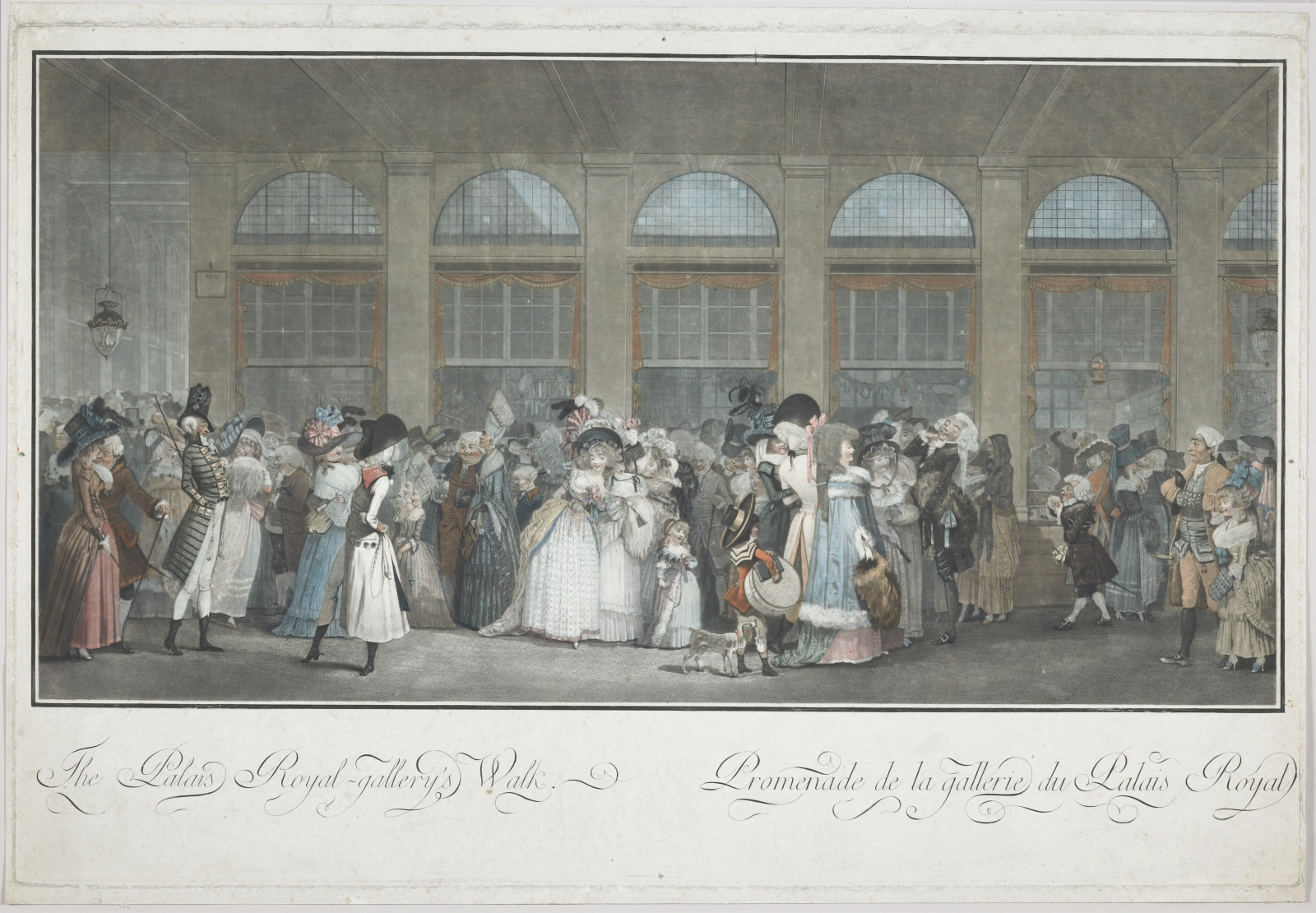
Philibert-Louis Debucourt, French, 1755–1832; The Palais Royal Gallery's Walk, 1787; aquatint and etching, printed in blue, carmine, yellow, and black ink; plate: 15 1/16 x 22 5/8 inches, sheet: 15 13/16 x 22 13/16 inches; Saint Louis Art Museum, Gift of Mark S. Weil 35:2007
In this caricature of French society, men strut like pigeons, pick-pockets eye the jewelry of distracted ladies, and hairstyles are a yard high. The Palais Royal in the center of Paris was owned by Duke Philippe d’Orléans, the King’s cousin, who supported his lavish lifestyle by building a large gallery with shops in his palace’s garden. Considered the prototype for enclosed commercial passages, it was the most notorious and well-attended spot for fashionable crowds to parade.
Philibert-Louis Debucourt was a French painter and printmaker especially known for his innovations in color printing which simulate the look of watercolor. His nuanced and delicate colors are exceptionally well-preserved in this impression. The Palais Royal Gallery’s Walk became one of Debucourt’s most successful printing ventures, leading to the creation of a companion piece five years later, The Public Promenade, also in the Museum’s collection.
February 5, 2025
Winter Moon over Toyama Plain
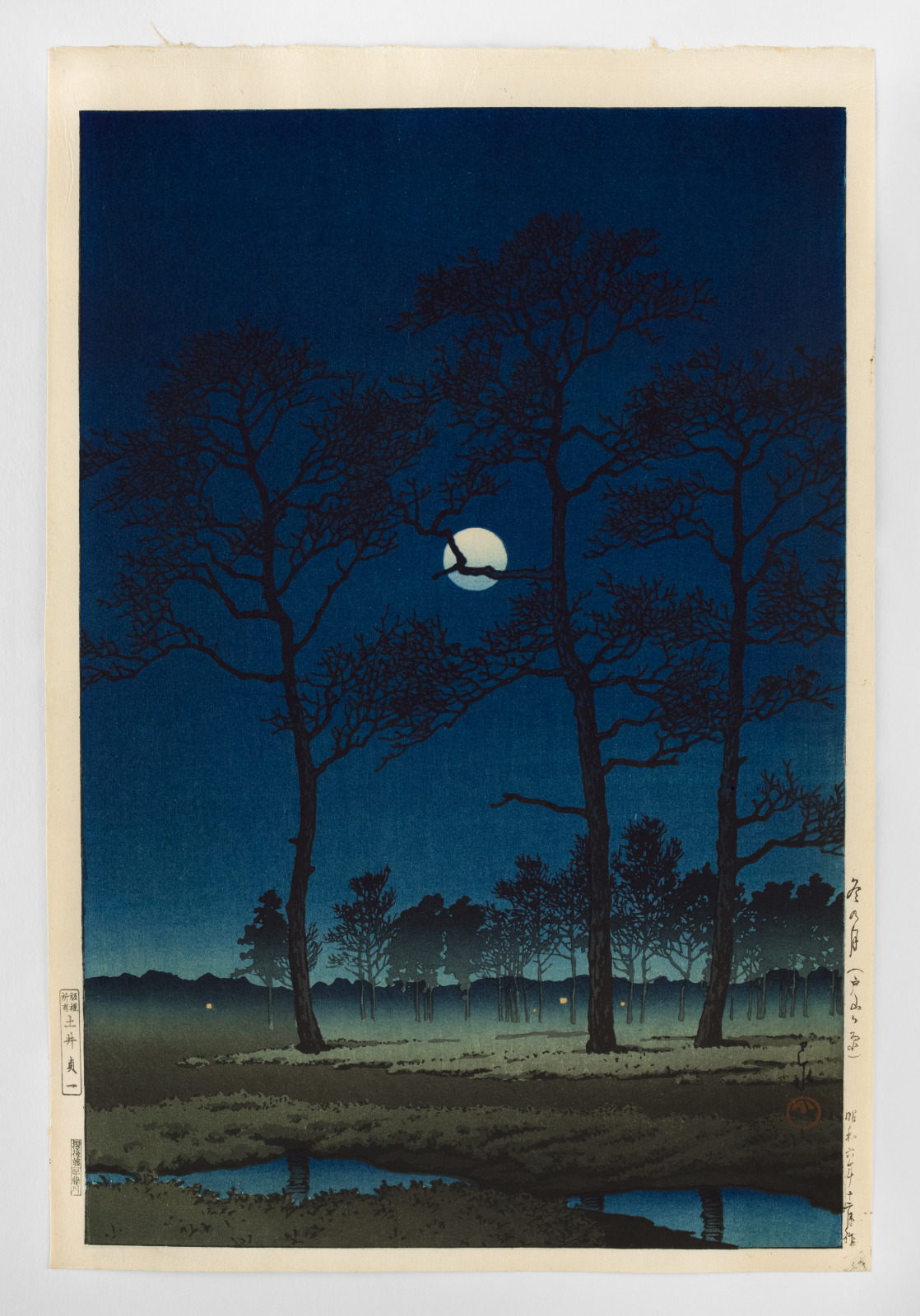
Kawase Hasui, Japanese, 1883–1957; engraved by Fujikawa Tsurujirō, Japanese, died 1949; printed by Gotō Manjirō, Japanese, active early 20th century; published by Doi Sadaichi, Japanese, 1876–1945; Winter Moon over Toyama Plain, 1931; color woodblock print; image: 14 1/4 x 9 1/2 inches, sheet: 15 5/16 x 10 5/16 inches; Saint Louis Art Museum, Museum Shop Fund 100:1990
A bright moon shines on a winter night over a moor in the district of Toyama, now part of Shinjuku ward in the metropolitan area of Tōkyō. The full moon appears suspended among three silhouetted pine trees as the landscape shimmers. The puddles in the foreground and the mist in the background contain and reflect the light.
This print is the first edition of the design, bearing the Doi Sadaichi (Teiichi) seal along with the Fujikawa and Gotō carver and printer seal. The careful and subtle printing throughout testifies to its early production. Exceptionally fine in condition, the print’s colors are in a pristine state of preservation and appear as fresh and vibrant as the day the work was executed.
February 4, 2025
Bird Snare or Perch (mutu kaka)
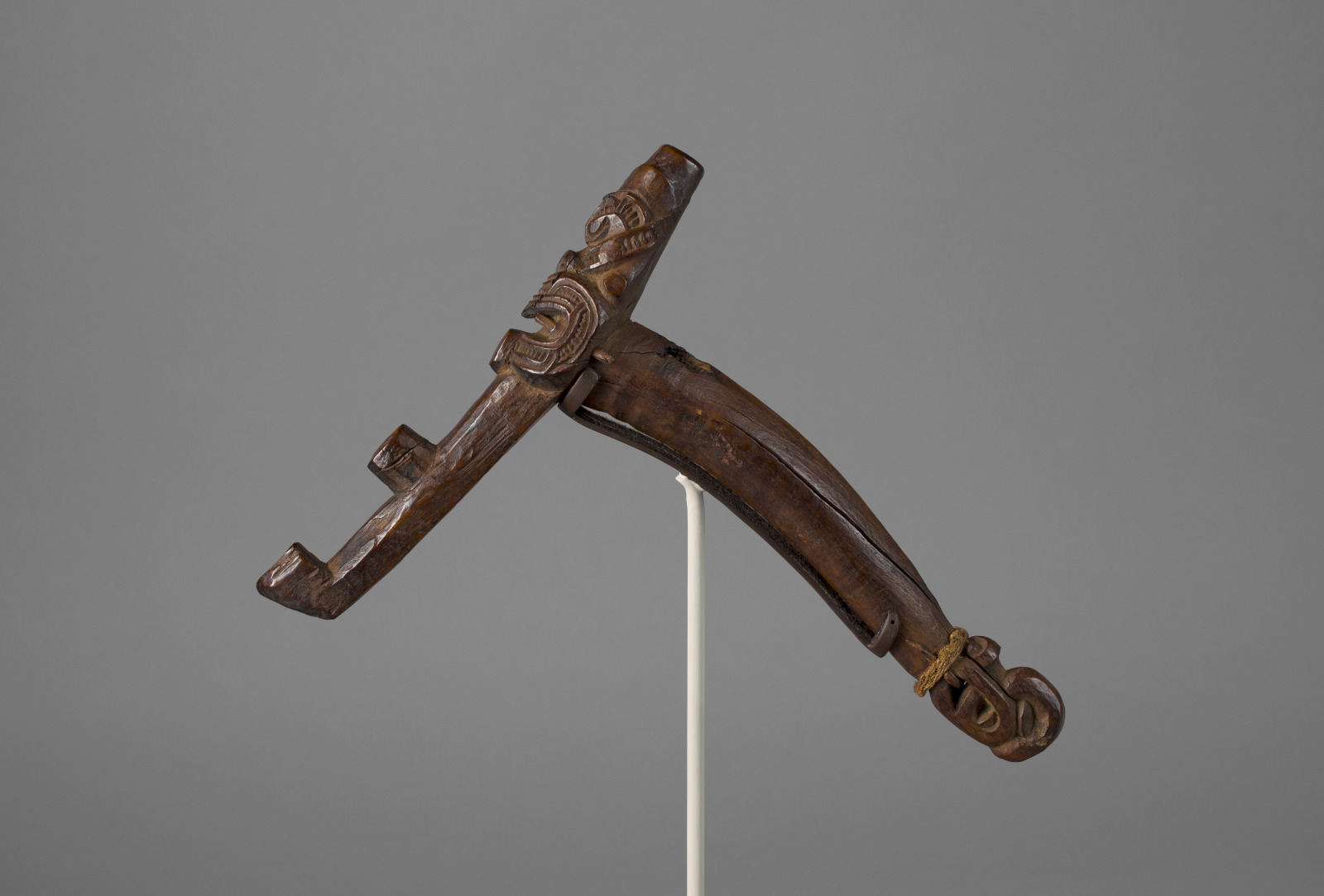
Maori artist, New Zealand; Bird Snare or Perch (mutu kaka), 18th to 19th century; wood, plant fiber; 10 1/4 inches; Saint Louis Art Museum, Bequest of Morton D. May 1560:1983
Delicate sculptural form and details contrast with this object’s functional purpose as a bird trap. Maori hunters install traps such as this near certain trees during the season when flocks of birds descend to feed on mature tree seeds in the forest. Created from a shrub branch and a section of the trunk to which it was attached, the branch portion serves as the horizontal perch while the trunk segment is decoratively carved. Hunters connected a cord to the trap that could be activated from a distance. By pulling the cord when a bird landed on the perch, the hunter could capture the prey by its feet without damaging or blood-staining the feathers. The feathers of certain species were precious, highly valued items.
February 3, 2025
Hannah Cliff Cresswell (Mrs. George Cresswell) and Son Joseph
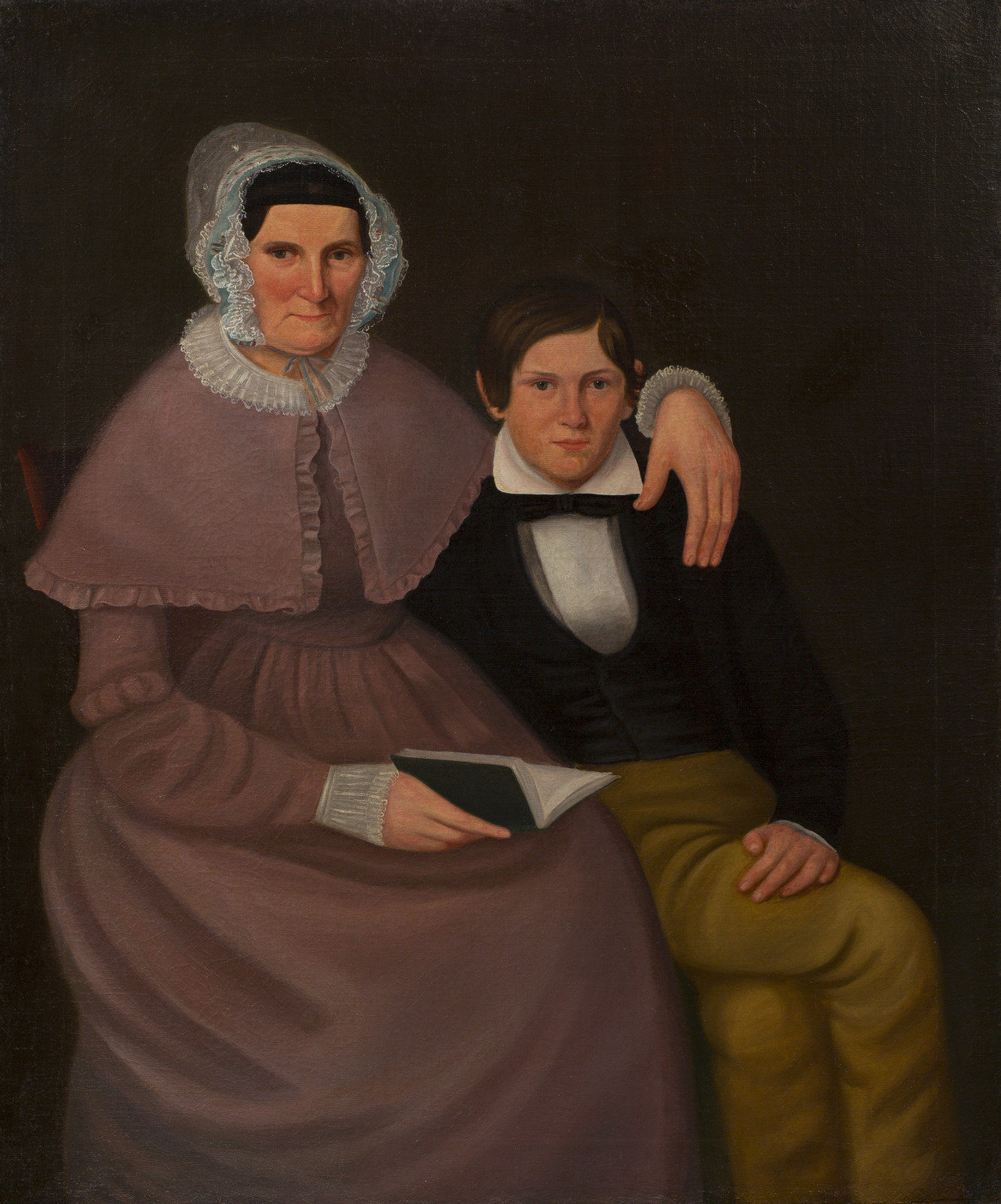
Hannah Cliff Cresswell (Mrs. George Cresswell) and Son Joseph, early 1840s; American; oil on canvas; 48 x 36 inches; Saint Louis Art Museum, Gift of Cresswell Farm, LLC 197:2017
Hannah Cresswell and her youngest son, Joseph, sat patiently while a traveling artist, whose identity is currently unknown, recorded details of their clothing and facial features. The limited ability to convey form or anatomy suggests that this painter was self-taught. However, the artist endowed the Cresswells with no less individuality than portraits by academically trained artists.
The Cresswell family commissioned portraits for their new home near Potosi, Missouri. These works celebrate their rising wealth from the mill and furnace they owned, which were powered by both free and enslaved laborers.
February 2, 2025
Arria and Paetus
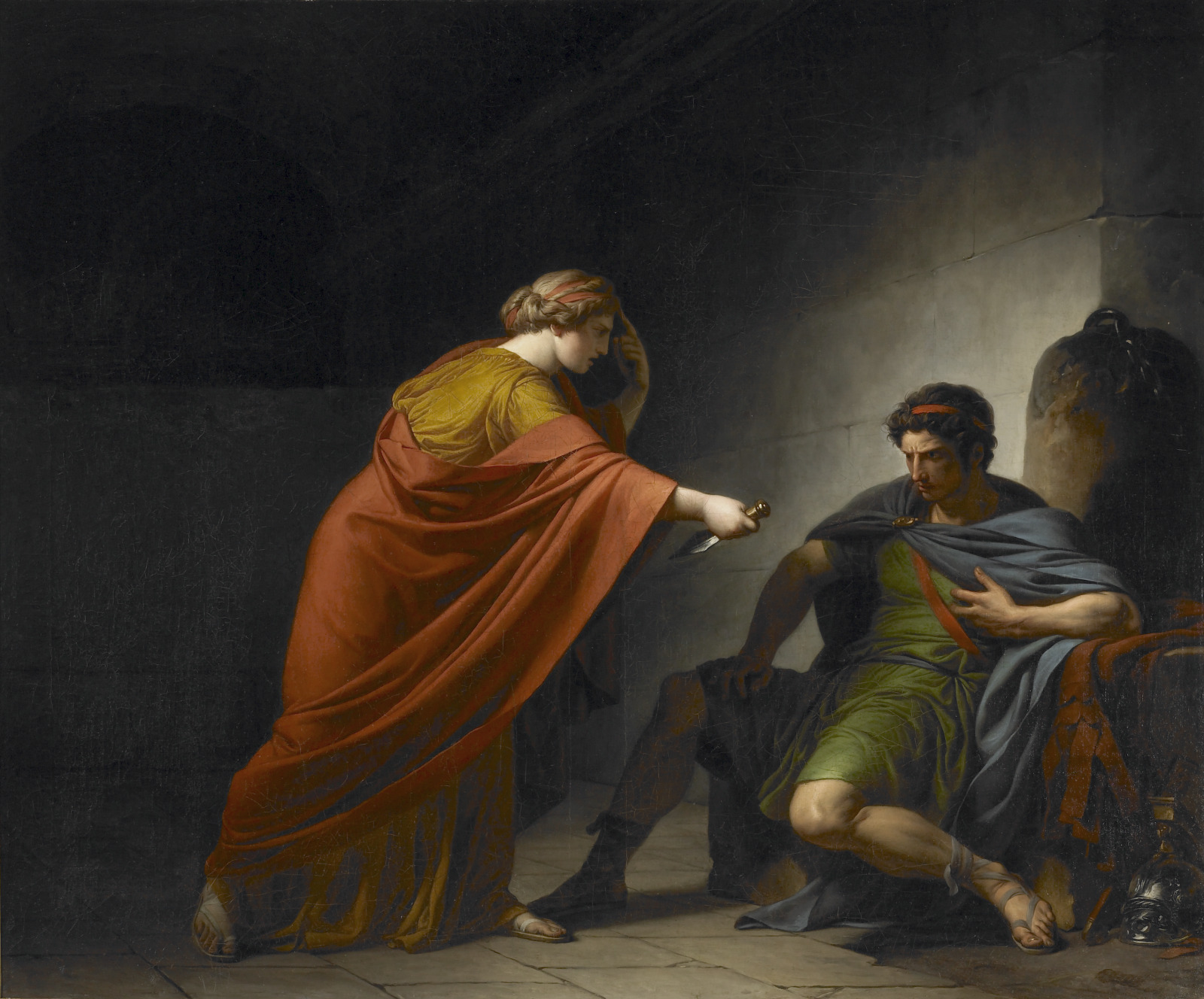
Francois-André Vincent, French, 1746–1816; Arria and Paetus, 1784; oil on canvas; 39 3/4 x 48 inches; Saint Louis Art Museum, Funds given by Mr. and Mrs. John Peters MacCarthy, Director's Discretionary Fund, funds given by Christian B. Peper, and gift of Mr. Horace Morison by exchange 27:2008
Arria (left) is shown visiting her imprisoned husband, Paetus, who had joined an uprising against the ancient Roman emperor Claudius. In ancient Rome, soliders were encouraged to die by suicide if they were captured by an enemy. Arria reminds Paetus that suicide is the honorable option for a Roman prisoner. She will eventually demonstrate what he should do by plunging the knife into her own breast. The painting has focused on the moment just before Arria inflicts her wound.
This story was the sort of subject used by artists like François-André Vincent to demonstrate their mastery of the European 18th-century art movement called classicism. Elements of classicism are evident in the artist’s use of profile poses, a stage-like setting, and carefully defined forms.
February 1, 2025
Untitled #45
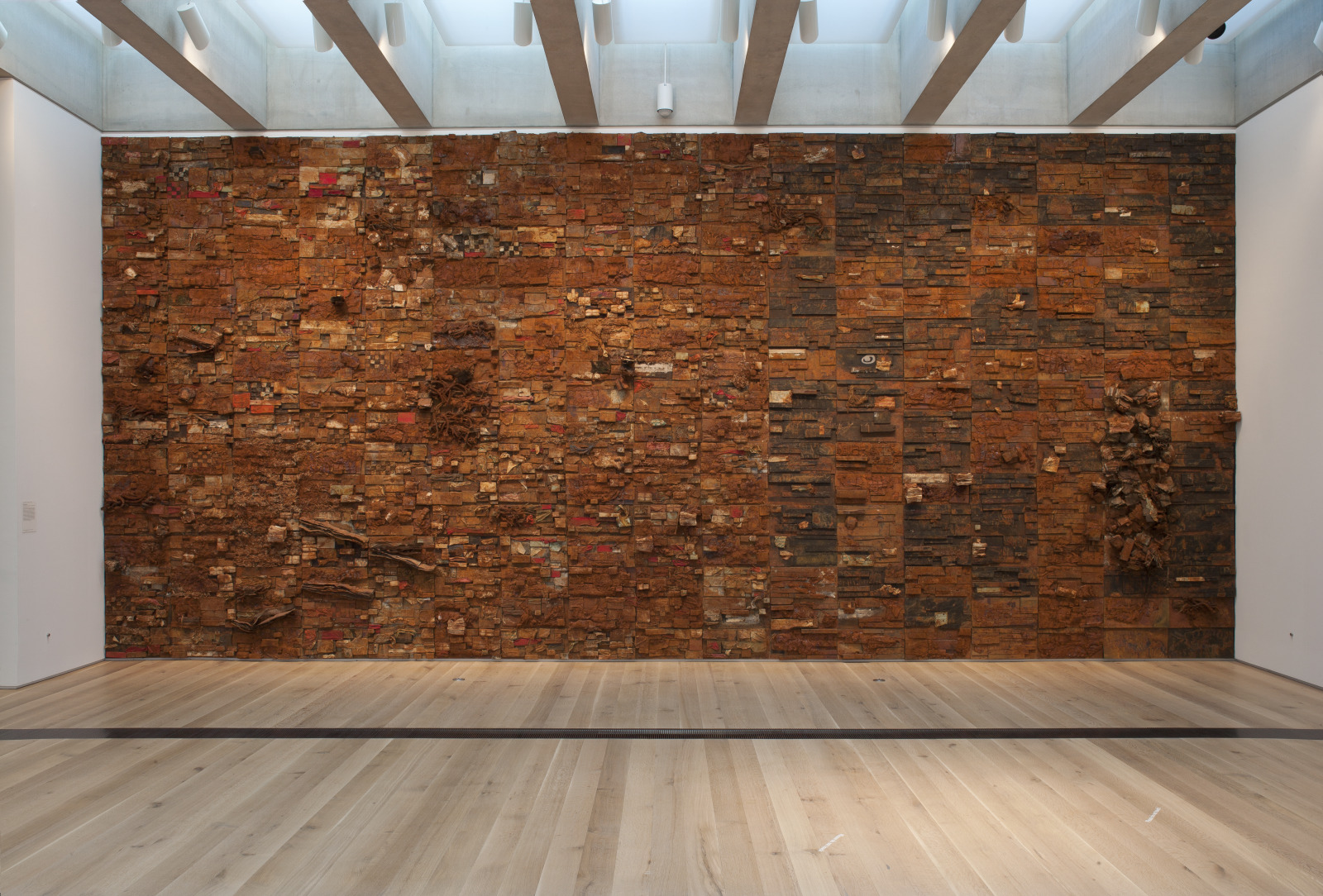
Leonardo Drew, American, born 1961; Untitled #45, 1995; wood, rust, fabric, string, feathers, and mixed media; installed: 15 feet 8 inches x 37 feet x 5 inches; Saint Louis Art Museum, Gift of Mr. and Mrs. Donald L. Bryant Jr. 63:1997; © Leonardo Drew, Courtesy Galerie Lelong & Co.
In this wall-mounted sculpture, Leonardo Drew arranged over 300 wooden panels covered with fabric, string, feathers, and other discarded objects, which he then burned, rusted, and stained. According to Drew, his art is rooted in his experiences of living and growing up in New York City, where daily life involves navigating the city’s gridded streets and organic decay. He also cites other inspirations such as the history of African Americans in the United States and a trip to Senegal where he visited a former slave trading post. Despite such specific sources, Drew likes to keep his work open to interpretation: “I think that these pieces should become mirrors. They should be a collection of ideas and never a one-sided issue.”
January 31, 2025
Olevano
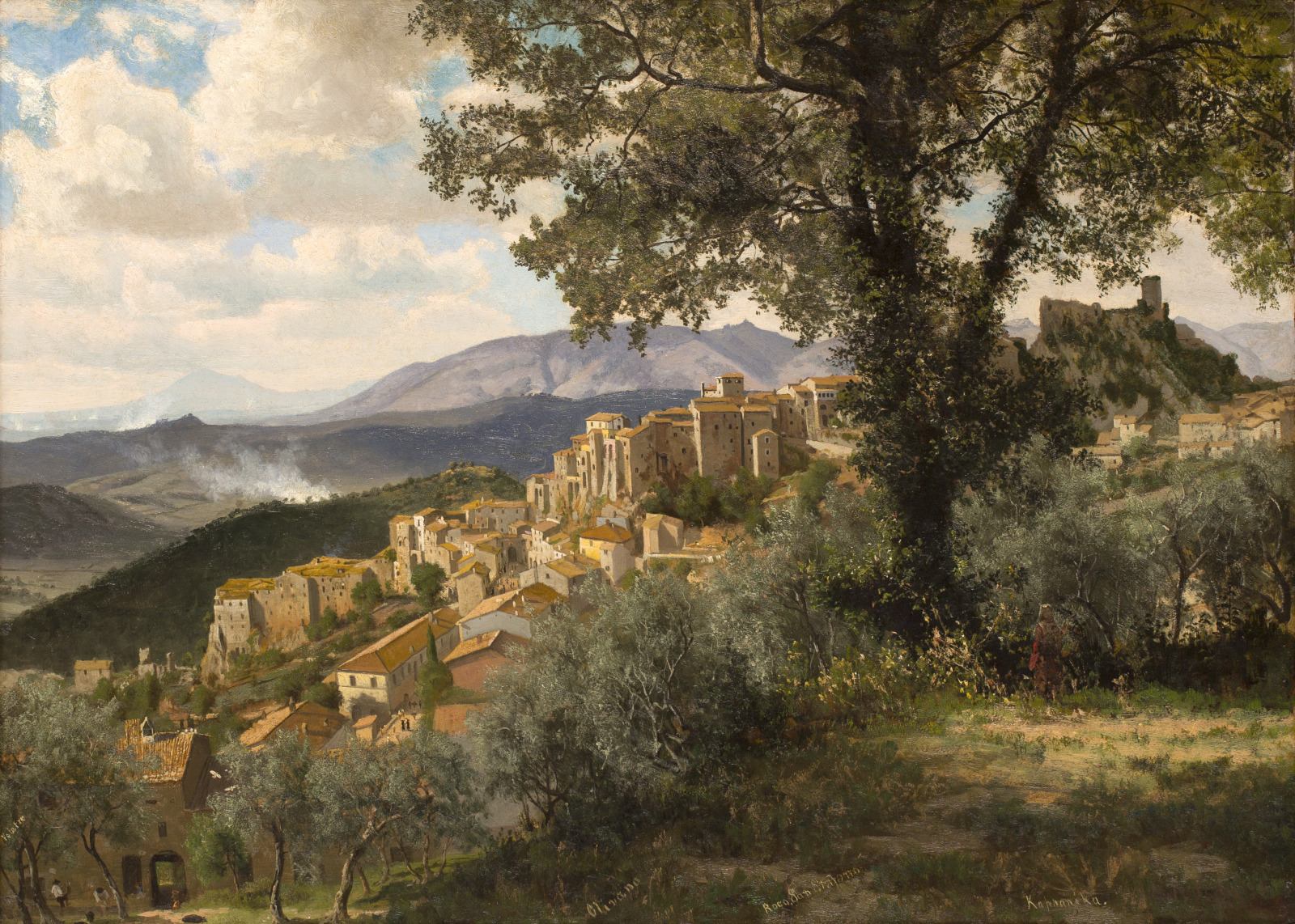
Albert Bierstadt, American (born Germany), 1830–1902; Olevano, 1856–57; oil on paper mounted on canvas; 19 3/4 x 27 1/8 inches; Saint Louis Art Museum, Eliza McMillan Trust 150:1953
Painted from a hill overlooking the Italian town of Olevano Romano, this oil sketch presents a panoramic view of stucco buildings, the rustic countryside, and the distant ruins of a castle at the right. Along the bottom of the painting, Albert Bierstadt recorded the names of nearby locations and later used them as reference points for a larger painting based on this sketch. Olevano Romano’s great cliffs and distinctive architecture attracted many tourists and artists in the mid-19th century.
January 30, 2025
Man’s Wrapper (adanuvor)

Ewe artist, Ghana; Man's Wrapper (adanuvor), 1920–39; cotton, silk; 129 x 76 inches; Saint Louis Art Museum, Funds given by the Third Wednesday Group 19:2017
This cloth features five repeated motifs: hat, snake, leaf, chicken, and hand. The hat (dzegba) refers to that worn by a ritual specialist. The snake references a deity (Da). The leaf (ama) may indicate that the cloth’s original owner was an herbalist expert in the healing and protective powers of plants.
Like several neighbors of the Akan of southern Ghana, Ewe peoples also possess a rich tradition of visual language involving not only proverbs but metaphors, riddles, poetry, and song. Most Ewe consider woven cloth as “vocal” through imagery as cloth-woven design speaks to social, spiritual, and moral issues.
January 29, 2025
Spouted Bowl (kataguchi)

Spouted Bowl (kataguchi), 1632; Japanese, Edo period; Negoro ware; red and black lacquer on wood; 8 1/8 x 10 1/4 x 14 1/4 inches; Saint Louis Art Museum, William K. Bixby Trust for Asian Art 1690:1983
This unusual vessel is known as a “one-spouted sake bowl.” Deep and wide, it held ample servings of rice wine that funneled directly along the U-shaped groove of the pouring spout. The upper layer of vermilion lacquer has been worn down to reveal hints of an undercoat of black. This subtle decorative effect of red and black is one of the distinguishing qualities of the lacquer style produced by Negoro-ji, a Buddhist temple known for making utilitarian vessels for monastic and daily use.
January 28, 2025
The Three Trees

Rembrandt van Rijn, Dutch, 1606–1669; The Three Trees, 1643; etching, drypoint, and engraving; image: 8 5/16 x 10 15/16 inches, sheet (irregular): 8 7/16 x 11 1/8 inches; Saint Louis Art Museum, Museum Purchase 161:2011
Three trees at the center of this composition draw the viewer’s eye as a wealth of activity unfolds around them. A bird in flight bursts out of the tree at left, and wagons, farmers, and livestock dot the low-lying fields in the middle ground. Closer at hand, a man and woman fish quietly on one side of a pond. Deeply buried in the foliage along the opposite bank a pair of lovers, almost invisible to the naked eye, flirt in the darkness. Rembrandt van Rijn explored and celebrated the countryside of his native Netherlands. “The Three Trees” is the most elaborate of his landscape prints, rivaling the status of a painting with its ambitious composition and exceptional execution.
January 27, 2025
Mail Cape (so-called Bishop’s Mantle)
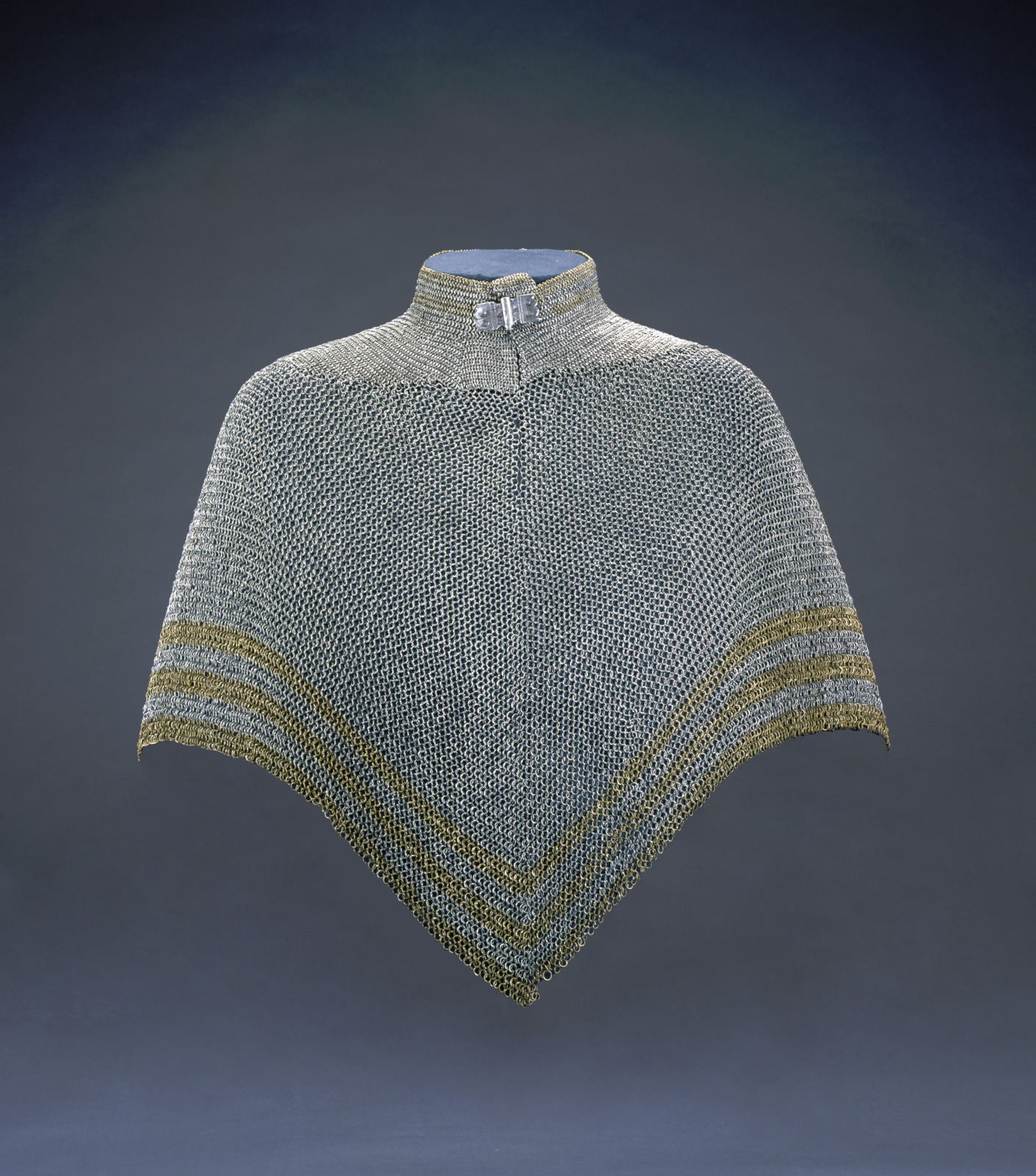
Mail Cape (so-called Bishop's Mantle), first half 16th century; probably German; steel, iron, and brass; 26 3/4 x 46 1/2 x 3/4 inches; Saint Louis Art Museum, Museum Purchase 87:1939
Mail is one of the oldest forms of metal body armor, dating well before the birth of Christ. It was the primary metal armor in Europe until the appearance of plate armor. With the adoption of plate, the use of mail among the knightly class diminished, but it continued among lesser-ranking soldiers. Because of its similarity to the outer garment worn by certain Catholic clergy, this design has been nicknamed a “bishop’s mantle.”
January 26, 2025
Untitled (Frijoles Canyon)
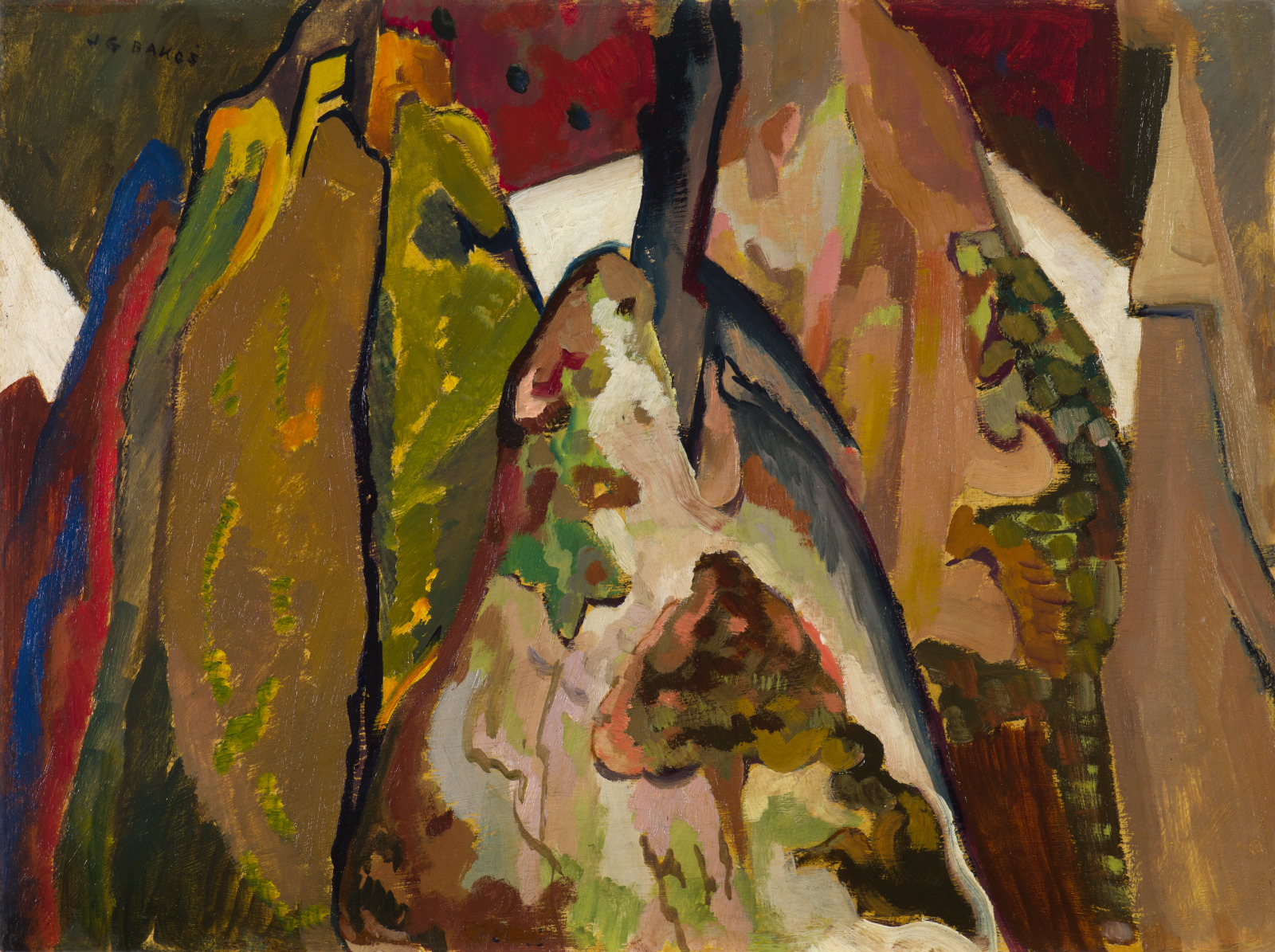
Józef Bakós, American, 1891–1977; Untitled (Frijoles Canyon), c.1920–25; oil on board; 18 x 23 7/8 inches; Saint Louis Art Museum, Gift of John and Susan Horseman, in honor of Melissa Wolfe, Curator of American Art 95:2019
A small tree stands amid a riot of strong colors and boldly outlined forms. This painting depicts Frijoles Canyon, now part of Bandelier National Monument in New Mexico. Józef Bakós lived in the canyon for one year when he worked for the United States Forest Service. While most artists were inspired by the dwellings carved into the canyon’s cliffs by Ancestral Pueblos over 850 years ago, Bakós instead was drawn to the site’s otherworldly rock formations.
January 25, 2025
Hanging Lantern, from the Hallway of the Robert R. Blacker House, Pasadena, California
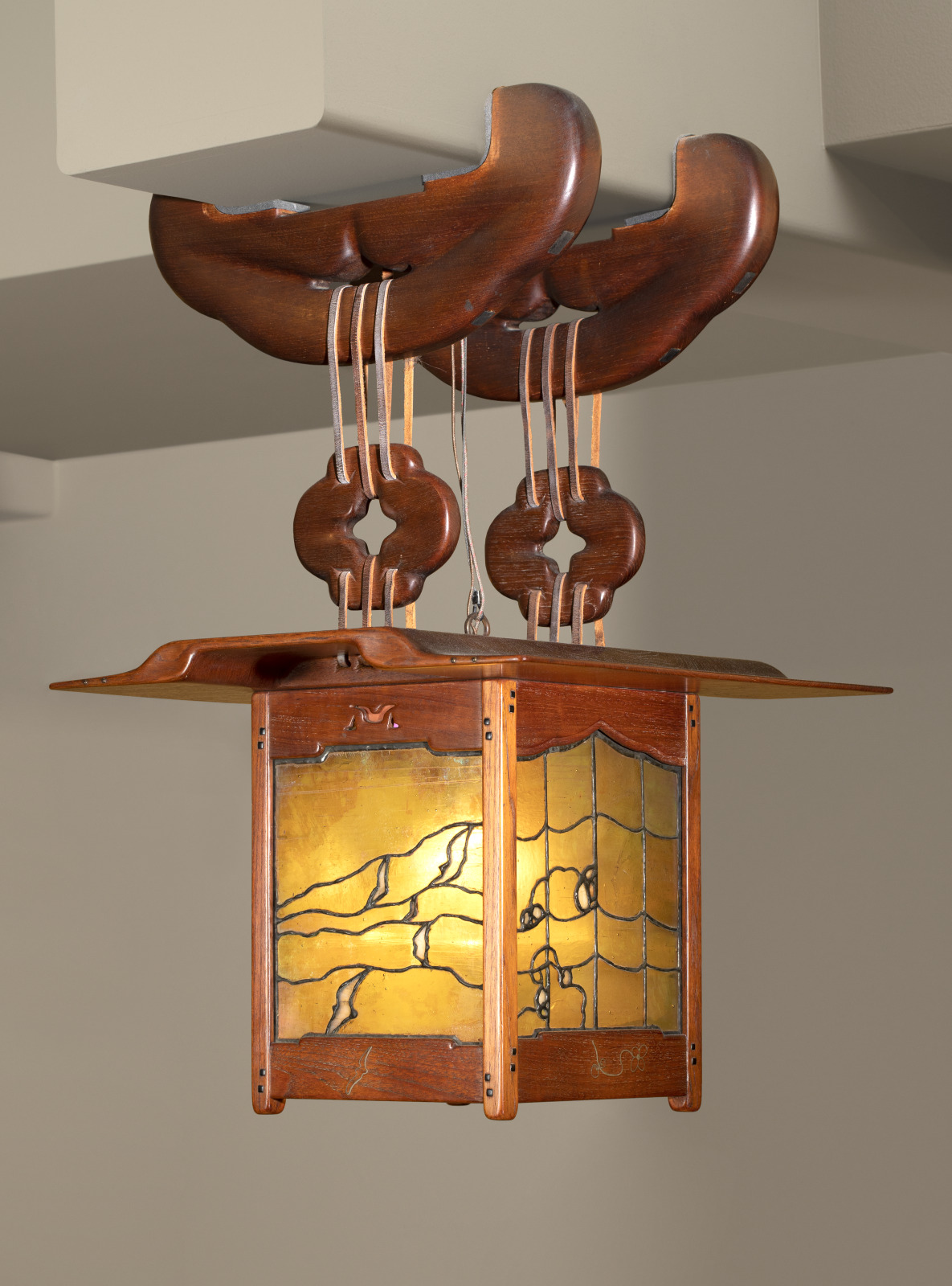
designed by Charles Sumner Greene, American, 1868–1957, and Henry Mather Greene, American, 1870–1954; made by Peter Hall Manufacturing Company, Pasadena, California, 1906–1918; glass made by Emil Lange, American, 1867–1934; Hanging Lantern, from the Hallway of the Robert R. Blacker House, Pasadena, California, c.1908–9; mahogany, leaded glass, and ebony, with copper and silver inlay, and replacement leather straps; 29 x 18 x 18 inches; Saint Louis Art Museum, Friends Fund Endowment and funds given by the Marjorie Wyman Endowment Fund, the Joseph H. and Elizabeth E. Bascom Trust, the Richard Brumbaugh Trust in memory of Richard Irving Brumbaugh and Grace Lischer Brumbaugh, an anonymous donor, and the Allen P. and Josephine B. Green Foundation 62:2001
This lantern features panels of iridescent leaded glass depicting birds in flight, gently stepped contours, smooth edges, ebony pins, and a dramatic overhanging roof. These details reflect inspiration drawn from traditional Chinese furniture and Japanese prints and architecture. This lantern (and another in the Museum’s collection) were made originally for the Robert B. Blacker House, in Pasadena, California, the first of the architectural firm Greene and Greene’s “ultimate bungalows.”
For this expansive home, the Greene brothers designed interior woodwork, furniture, stained glass, and lighting to create an integrated artistic environment. They worked closely with skilled craftsmen like glass artisan Emil Lange and cabinetmaker Peter Hall. Their expert handcraftsmanship distinguishes the Greenes’ furnishings from any other produced during the American Arts and Crafts movement of the early 20th century.
January 23, 2025
Untitled

Sam Middleton, American, 1927–2015; Untitled, 1990; collage of cut and torn printed and painted papers with paint and graphite; 19 3/8 x 25 1/8 inches; Saint Louis Art Museum, The Thelma and Bert Ollie Memorial Collection, Gift of Ronald and Monique Ollie 174:2017; © Sam Middleton estate, Courtesy of Spanierman Modern
This work is populated with layered references to the artist’s life in the Netherlands, where he relocated in 1961. Cut and torn ephemera form a textured collage: stamps, receipts, and musical scores with Dutch text, along with a small black-and-white image of windmills and a map of the Netherlands. The primary colors—blue, red, and yellow refer to important Dutch artists active in the early 20th century. The underlying blue and image of a seagull suggest traditional Dutch seascapes.
January 22, 2025
Bay of Monterosso (Triptych)

Max Pechstein, German, 1881–1955; Bay of Monterosso (Triptych), 1917; oil on canvas; left panel: 28 3/8 x 31 1/2 inches, center panel: 28 3/8 x 31 3/4 inches, right panel: 28 3/8 x 31 1/2 inches; Saint Louis Art Museum, Bequest of Morton D. May 928:1983a-c
In this scene of fishermen launching boats and hauling nets, Max Pechstein found peace after experiencing the horrors of World War I (1914–18). He had visited the charming Italian fishing village of Monterosso four years earlier, back in 1913. But the war intervened before he could realize his sketches as paintings. Released after three years fighting on the Western Front, he finally returned to his studio and his Monterosso sketches. The war seems far away from this sunny Mediterranean beach.
January 21, 2025
Seasonal Plants: Cherry Blossoms and Spring Grasses, Autumn Grasses under the Moon, and Nandina in the Snow

Sakai Yuiitsu, Japanese, 1878–1956; Seasonal Plants: Cherry Blossoms and Spring Grasses, Autumn Grasses under the Moon, and Nandina in the Snow, early 20th century; triptych of hanging scrolls; ink and color on silk; each scroll: 81 1/4 x 22 1/4 inches, each image: 47 3/4 x 16 1/4 inches; Saint Louis Art Museum, The Langenberg Endowment Fund 9:2015a-c
The flowering plants seen throughout this triptych, or three- paneled work, represent the four seasons of the year. The right-hand scroll features a blossoming cherry tree with some early summer blooms along a winding stream. The center scroll shows several late summer flowers, various grasses of autumn, as well as branches of maple with a silvery harvest moon. The left-hand scroll depicts the transition from late autumn to winter with yellow chrysanthemums and a grouping of heavenly bamboo (Nandina domestica) covered with snow. Each scroll is signed and impressed with a seal of the artist.
January 20, 2025
Dr. and Mrs. Martin Luther King Singing in the Rain during the March from Selma to Montgomery

Moneta Sleet Jr., American, 1926–1996; Dr. and Mrs. Martin Luther King Singing in the Rain during the March from Selma to Montgomery, 1965, printed c.1970; gelatin silver print; 19 3/4 x 13 3/8 inches; Saint Louis Art Museum, Gift of the Johnson Publishing Company 395:1991; © Johnson Publishing Company Archive, Courtesy Ford Foundation, J. Paul Getty Trust, John D. and Catherine T. MacArthur Foundation, Andrew W. Mellon Foundation and Smithsonian National Museum of African American History and Culture
At the center of this photograph, Dr. Martin Luther King Jr. looks out with an expression of unflinching determination. He sings with the rest of the participants in the 1965 civil rights protest in Alabama, known as the Selma march. Photographer Moneta Sleet Jr. purposely portrayed King among the people and highlights him as a leader who walked with the masses. The rain drenches the marchers who continue on, many without any covering. By his side, his wife Coretta Scott King joins in with the singing.
January 19, 2025
St. George Standing with Two Angels
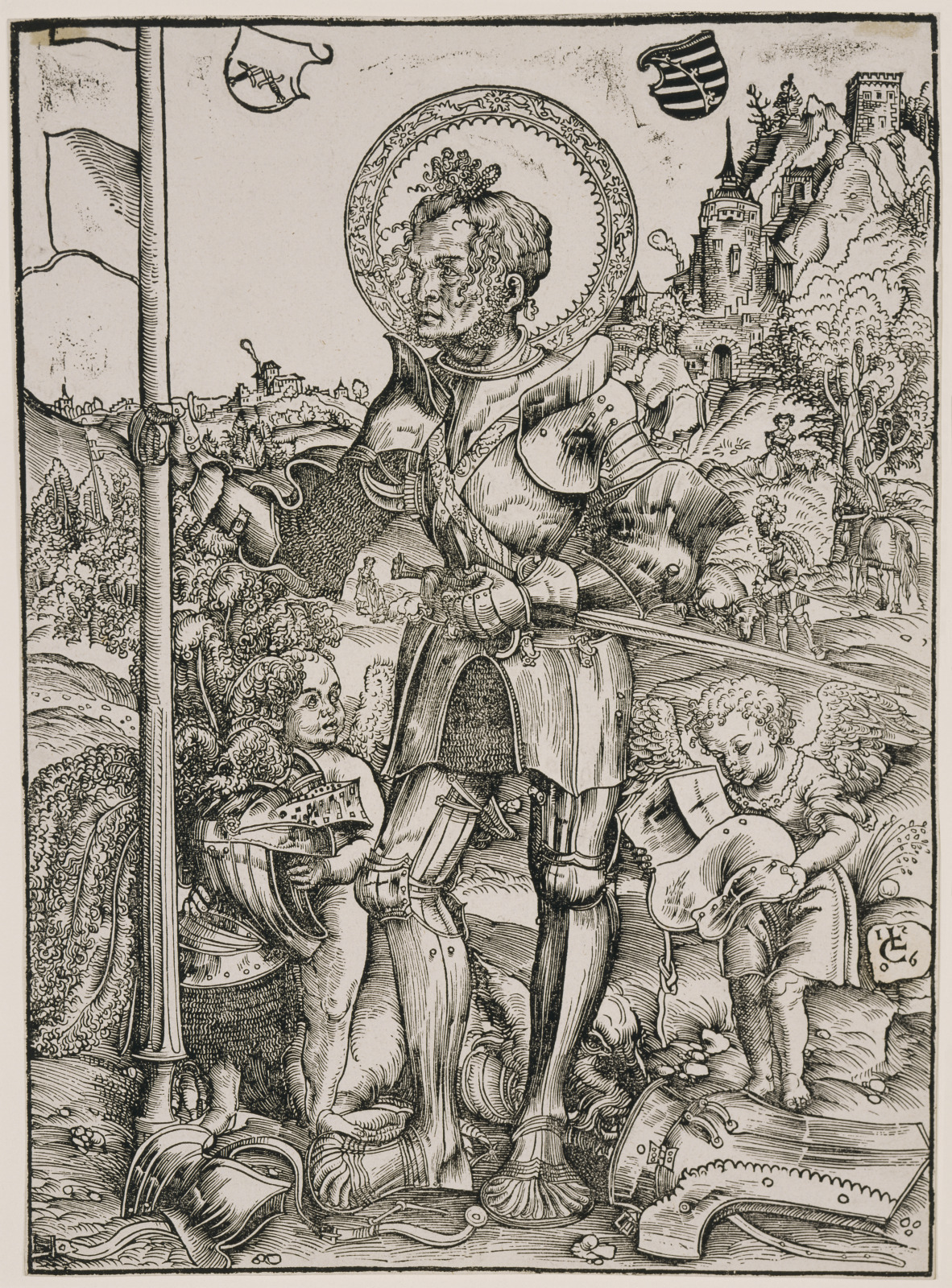
Lucas Cranach the Elder, German, 1472–1553; St. George Standing with Two Angels, 1506; woodcut; block (irregular): 15 3/16 x 11 1/8 inches, sheet (irregular): 15 5/16 x 11 1/8 inches; Saint Louis Art Museum, Gift of Henry V. Putzel 54:1954
Clad as a knight with a lance, sword, and dagger, St. George stands triumphantly before the dragon he has slain. This highly detailed print captures the contrasting textures of his mail coat and mittens with his mirror-polished plate armor. Visible straps and buckles secure the articulated tassets protecting the upper thighs and the right cuisse, or thigh armor, to the leg. An attending angel at left carries the saint’s visored helmet ornamented with ostrich-feather plumage called a panache. Although known as a Roman soldier martyred in 303 for refusing to give up Christianity, St. George appears in the armor of Wittenberg, Germany, where this print was made in 1506.
January 17, 2025
Canoe Prow

Iatmul artist, Papua New Guinea; Canoe Prow, mid-20th century; wood, shell, pigment; 42 15/16 x 6 7/8 x 15 3/8 inches; Saint Louis Art Museum, Gift of Morton D. May 159:1975
A stylized head in crocodile form, as seen here, is one of the most frequent sculptural representations on Melanesian canoe prows. This dramatic element served to aid the canoe’s journey, protect the vessel from malevolent forces of the sea and skies, and assure the expedition’s success. An ideal canoe must seem to fly like a bird or glide like a crocodile along the water. Canoe expeditions were critical for obtaining coveted goods that were indispensable to survival or symbols of wealth and prestige.
January 17, 2025
Glen Plaid Textile Sample

designed by A. Joel Robinson, American, 1915–2012; made by L. Anton Maix Fabrics, New York, New York, founded 1948; Glen Plaid Textile Sample, 1952; screen-printed linen; 24 x 34 1/2 inches; Saint Louis Art Museum, Marjorie Wyman Endowment Fund 105:2022
Designer A. Joel Robinson used sharp, ultrathin lines to form the ingenious cellular patterns of Glen Plaid. Crisply printed on maker L. Anton Maix Fabric’s signature heavy linen, this rare showroom sample includes its original tags. In 1948, Lawrence Anton Maix launched his textile firm devoted to high quality manufacturing, advertising “bold, imaginative prints” by designers in fields ranging from architecture to engineering. Maix’s nimble production process allowed him to take creative risks and turn around custom orders in just a few weeks.
January 16, 2025
Self-Portrait

Käthe Kollwitz, German, 1867–1945; Self-Portrait, 1926–36; bronze; including base: 18 1/8 x 9 3/16 x 11 7/8 inches; Saint Louis Art Museum, Museum Purchase 8:1942
In this remarkable self-portrait, Käthe Kollwitz captured signs of aging with uncompromising realism. She is primarily known for her prints, but she also made a number of sculptures. Kollwitz struggled with this work for years. In a diary entry from 1928, she wrote, “I’m working on my sculptural self-portrait, cursing and ranting . . . but I can’t let go. Every day ends with a new illusion and the next day begins with angry depression.”
January 15, 2025
Drum (ntan)
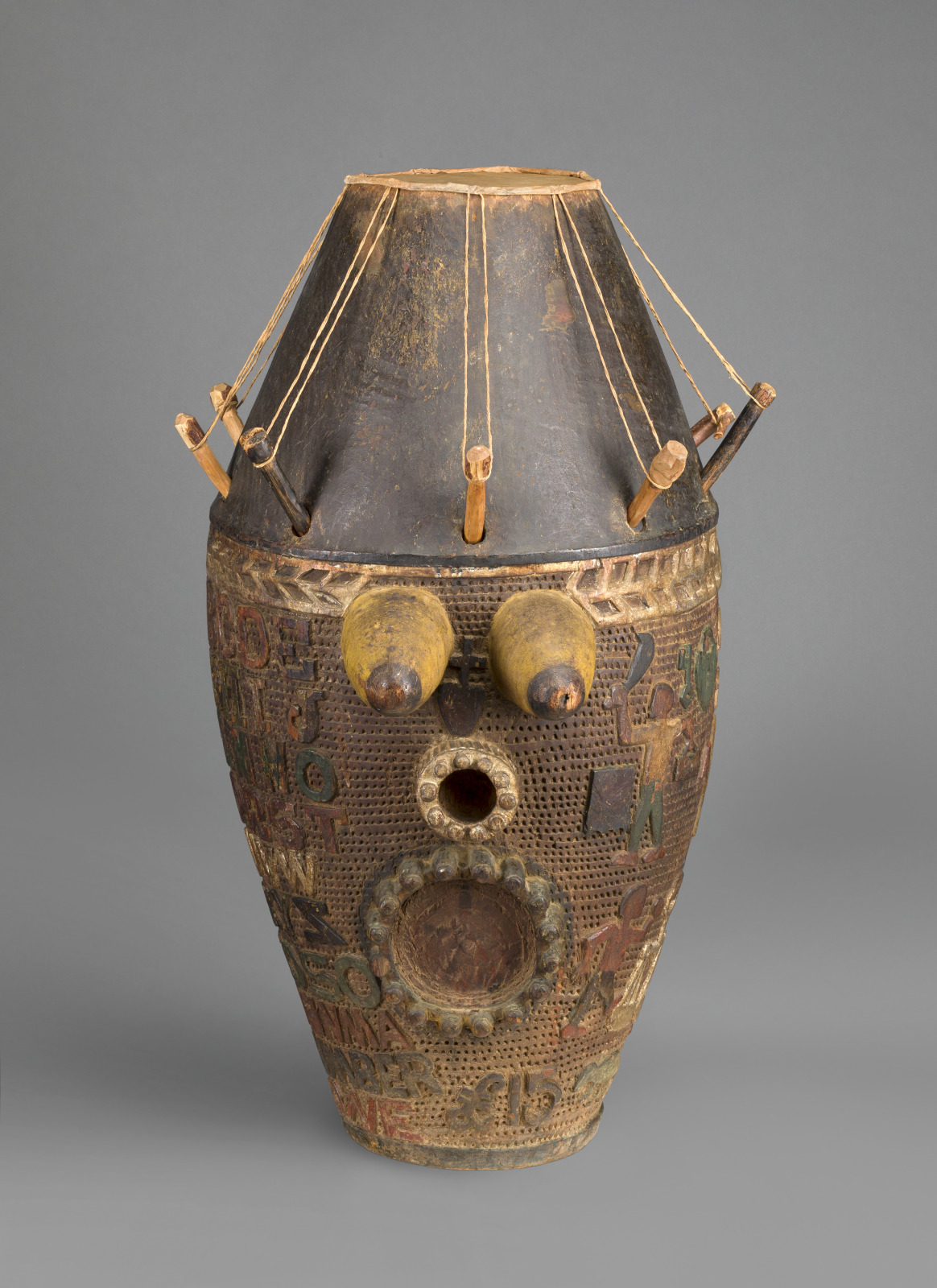
Fante artist, Ghana; Drum (ntan), early 20th century; wood, hide, pigment, metal, wire; height: 42 inches, circumference at widest point: 20 inches, diameter at top and bottom: 11 inches; Saint Louis Art Museum, Gift of Leah Ward Sears and Haskell Sears Ward 60:2021a-k
A pair of prominent female breasts above two circles bordered by bullet casings form the focal point of this drum. Considered the “face” of the entertainment group who performed with it, the drum appeared and was played at social functions. The representation of ammunition suggests the military origins of Asafo companies and the competitive spirit that bolsters each group’s collective visual and verbal expressions.
On the instrument’s other side, the inscription, “FOSO NTSINMA NUMBER ONE,” hints at the Asafo company’s ownership and origin in Assin Fosu, located in the Cape Coast region of Ghana. The drum may have served as an Asafo company’s official emblem, as suggested by the depiction of armed soldiers marching behind their leader carrying a whip. The relief-carved alphabet, scales of justice, and British pound sterling suggest the group’s alignment with British-colonial education, systems of law and governance, and sources of wealth.
January 14, 2025
Via Northwestern

Ida Abelman, American, 1908–2002; Via Northwestern, 1939; crayon and tusche lithograph, with scraped highlights; image: 10 1/2 x 14 1/2 inches, sheet: 12 5/8 x 16 inches; Saint Louis Art Museum, Gift of the Federal Works Agency, Work Projects Administration 149:1943
Fragments of a midwestern landscape fly by, as if viewed from a train window. Ida Abelman presented her recollections of traveling via the North Western Railroad from her home in New York City to Sioux City, Iowa. The Federal Art Project sent her there to teach at its newly opened community art center, where she gave talks and demonstrations on lithography. Most of her work took the form of political lithographs depicting the experiences of the urban poor, among whom she counted herself as the child of Russian Jewish immigrants.
January 13, 2025
Dish with Design of Two Dragons Chasing a Flaming Pearl amidst Clouds
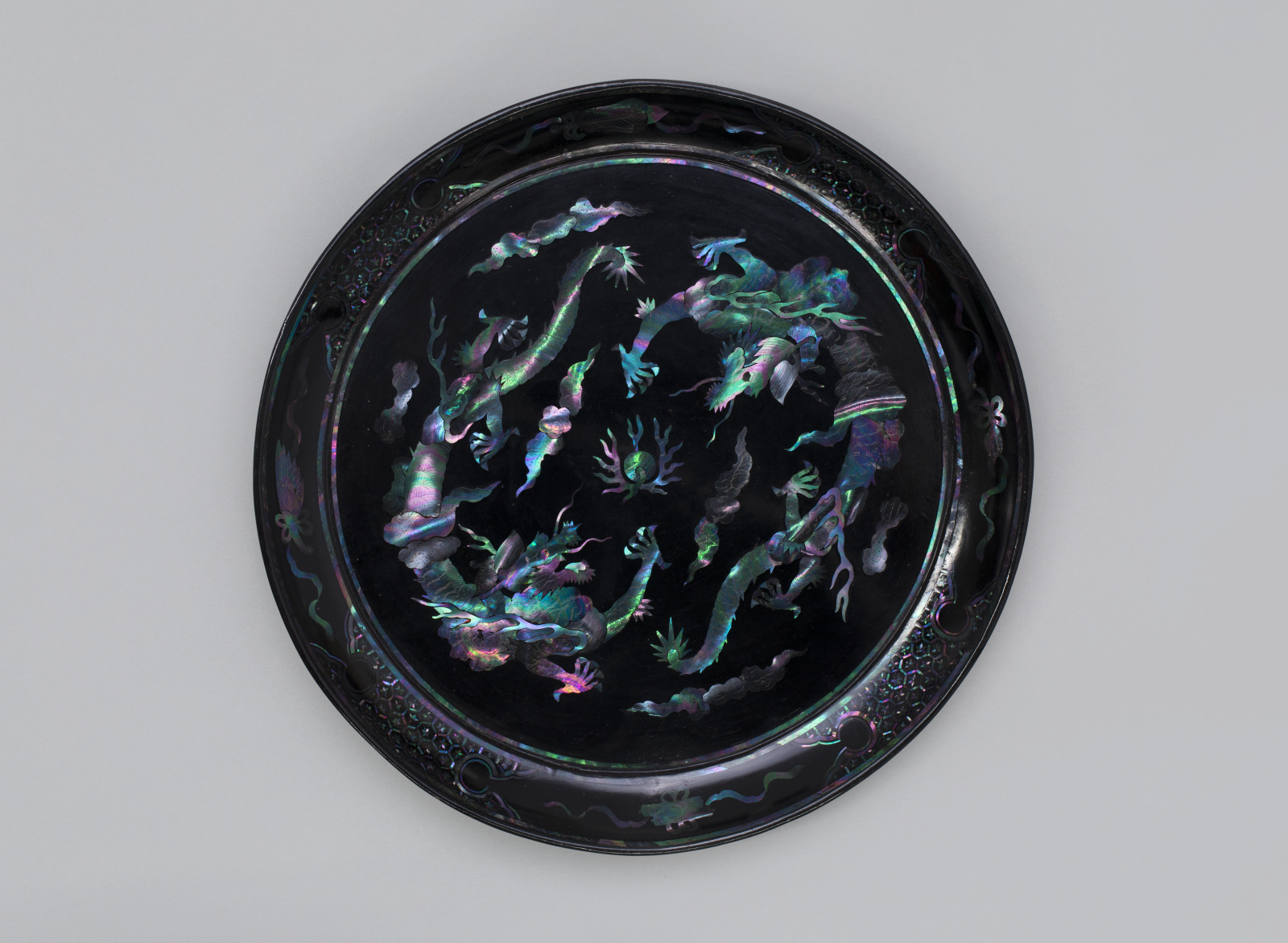
Dish with Design of Two Dragons Chasing a Flaming Pearl amidst Clouds, 18th century; Ryūkyūan, Japan, Second Shō dynasty; lacquer on wood core with mother-of-pearl inlay; 1 1/2 x 13 5/8 inches; Saint Louis Art Museum, The Langenberg Endowment Fund 5:2020
The interior of this large circular lacquered dish is inlaid with exquisite mother-of-pearl. The bold decoration features two five-clawed dragons amidst clouds encircling a flaming pearl in the center. The rounded sides are divided into eight sections, alternately adorned with four different Buddhist emblems and with hexagonal patterns. The decorative motifs are represented with thin iridescent mother-of-pearl from the shells of abalone, which are found in the waters of the Ryūkyūs, a chain of small islands in the Pacific Ocean between Taiwan and Japan.
The distinctive tradition of lacquerware, seen in this dish, developed in the Ryūkyū Kingdom (1429–1879) through its trade with neighboring countries and became an important export. A government facility in the Ryūkyū royal capital, Shuri, was responsible for managing the production of exquisite objects used as tribute gifts for the emperor of China as well as the shōgun (military dictator) and daimyō (feudal lords) in Japan.
January 12, 2025
Bracelet

Bracelet, 4th century; Roman, Syria, Late Antique period, or Byzantine, Syria, Early Byzantine period; gold; 1 5/16 x 4 1/8 inches; Saint Louis Art Museum, Museum Purchase 54:1924
Originally part of a set (with a matching bracelet and bell, now in Berlin), this bracelet likely functioned as a betrothal or bridal gift to a woman of high social standing. The central section contains a Greek inscription that reads: “Pretty one, wear [it] in good health.” This intricate bracelet serves as a splendid example of the extraordinary craftsmanship of Byzantine artisans and their use of an open metalwork technique known as opus interrasile.
January 11, 2025
Still Life with Mice

Lodewik Susi, Flemish, active 1616–1620; Still Life with Mice, 1619; oil on panel; 13 3/4 x 18 5/16 inches; Saint Louis Art Museum, Museum Purchase 50:1949
The artist has assembled sweets and fruits, including apples, sugared almonds, gingersticks, a lemon, and an orange, in a way that seems casual but was actually the result of careful planning. Diagonals echo other diagonals while the apple and reflective plate are offset by the citrus fruits. The picture may refer to the vanity of the physical world since the ripened apple exhibits decay and mice sometimes symbolize death or sin. It could also be a celebration of costly confections.
January 10, 2025
Shell and Old Shingle VI

Georgia O'Keeffe, American, 1887–1986; Shell and Old Shingle VI, 1926; oil on canvas; 30 1/4 x 18 1/4 inches; Saint Louis Art Museum, Gift of Charles E. Claggett in memory of Blanche Fischel Claggett 345:1980
A study in tone and form, this painting’s abstract shapes barely suggest the white shell in front of a gray shingle that the artist propped on a table. The work is the sixth in a series of seven paintings of the same subject, each more abstract than the one before. Georgia O’Keeffe wrote: “Finally I went back to the shingle and shell…the shingle just a dark space that floated off the top of the painting, the shell just a simple white shape under it. They fascinated me so that I forgot what they were except that they were shapes together — singing shapes.”
January 9, 2025
Elevated Station
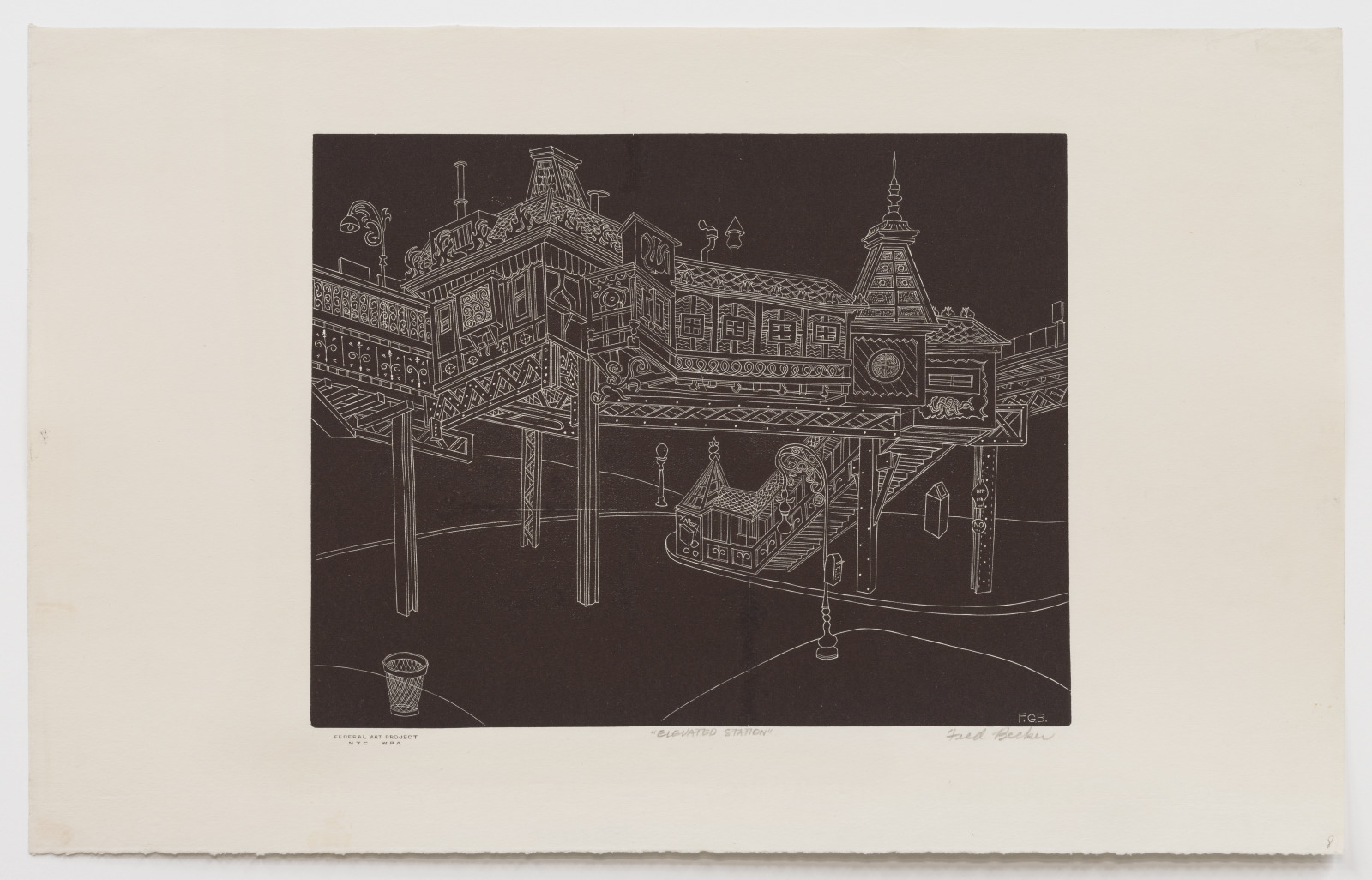
Fred Becker, American, 1913–2004; Elevated Station, 1936; wood engraving; image: 8 1/8 x 10 inches, sheet: 11 1/4 x 17 1/2 inches; Saint Louis Art Museum, Gift of the Federal Works Agency, Work Projects Administration 281:1943
Delicate lines transform an elevated train station into intricate patterns. Fred Becker carved this wood engraving while sitting in a diner in New York’s Greenwich Village. He recalled that during the bitterly cold winter of 1936, he made prints in “cafeterias, libraries, and any place that was warm,” since his apartment lacked reliable heat. Becker later reflected that the Federal Art Project’s Graphic Arts Division “provided me not only with sustenance but an education.” This experience informed his establishment of the print department at Washington University in St. Louis, where he taught from 1948 to 1968.
January 8, 2025
Tripod Censer with Design of Assorted Birds and Animal-Mask Handles
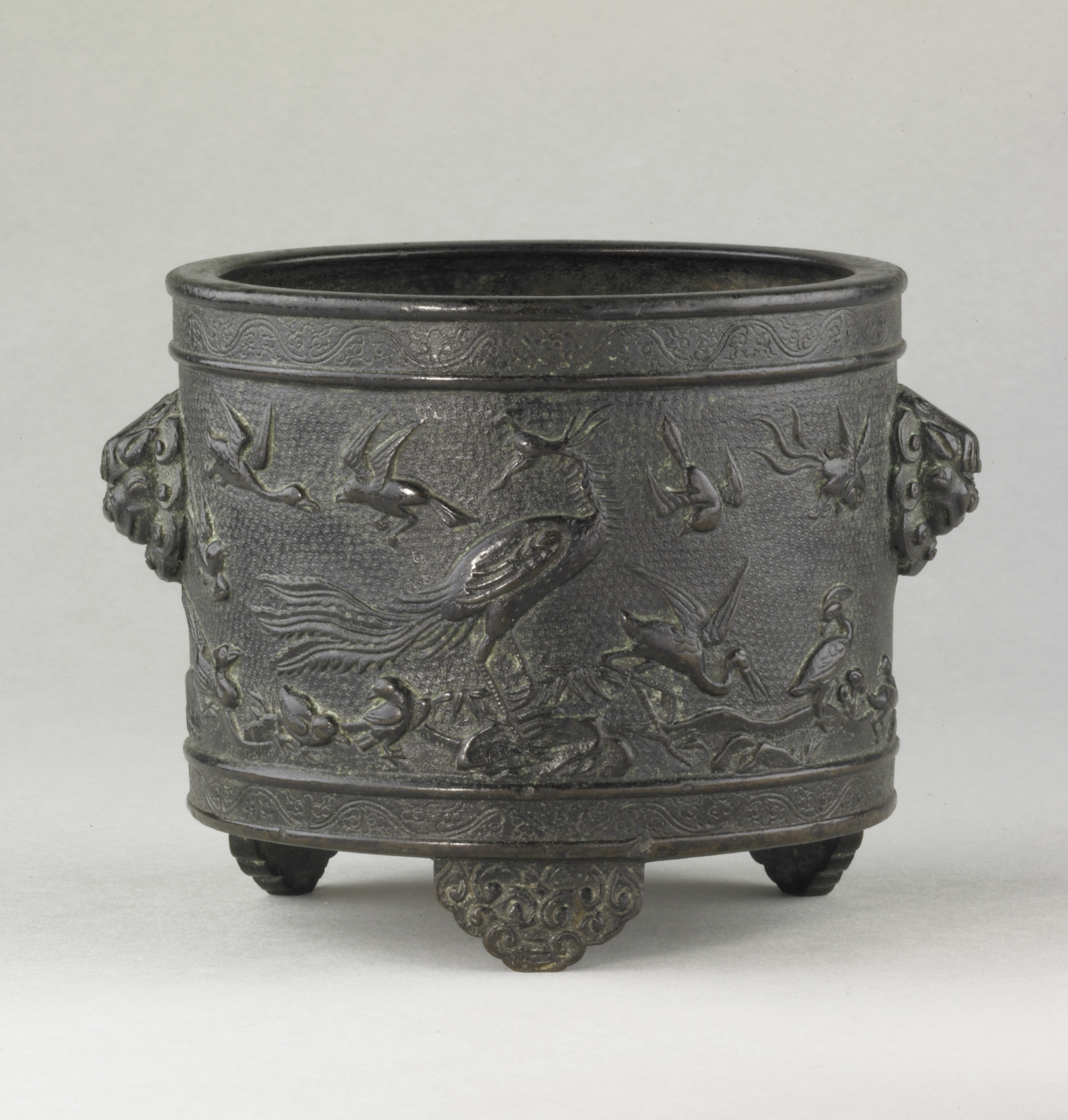
Hu Wenming, Chinese, active c.1572–1620; Tripod Censer with Design of Assorted Birds and Animal-Mask Handles, late 16th–early 17th century; bronze; 5 9/16 x 6 1/8 x 5 1/8 inches; Saint Louis Art Museum, Spink Asian Art Collection, Bequest of Edith J. and C. C. Johnson Spink 74:2014
The front of this cylindrical bronze censer is decorated with a scene of twelve birds, some standing and several in flight, all on a ring-punched background. The identical design is repeated on the other side of the vessel. The handles are animal masks resembling lion heads while the three feet are shaped like stylized clouds. There are narrow bands of leafy patterns, one at the top rim and another at the bottom.
Hu Wenming, a native of Songjiang near present-day Shanghai, is considered by scholars as one of the most renowned metalworkers in Chinese history. He is among the very few whose name and style are discussed in Chinese art-historical writing, especially in connection with metalwork of the late Ming period.
January 7, 2025
Goats (Capre) Textile
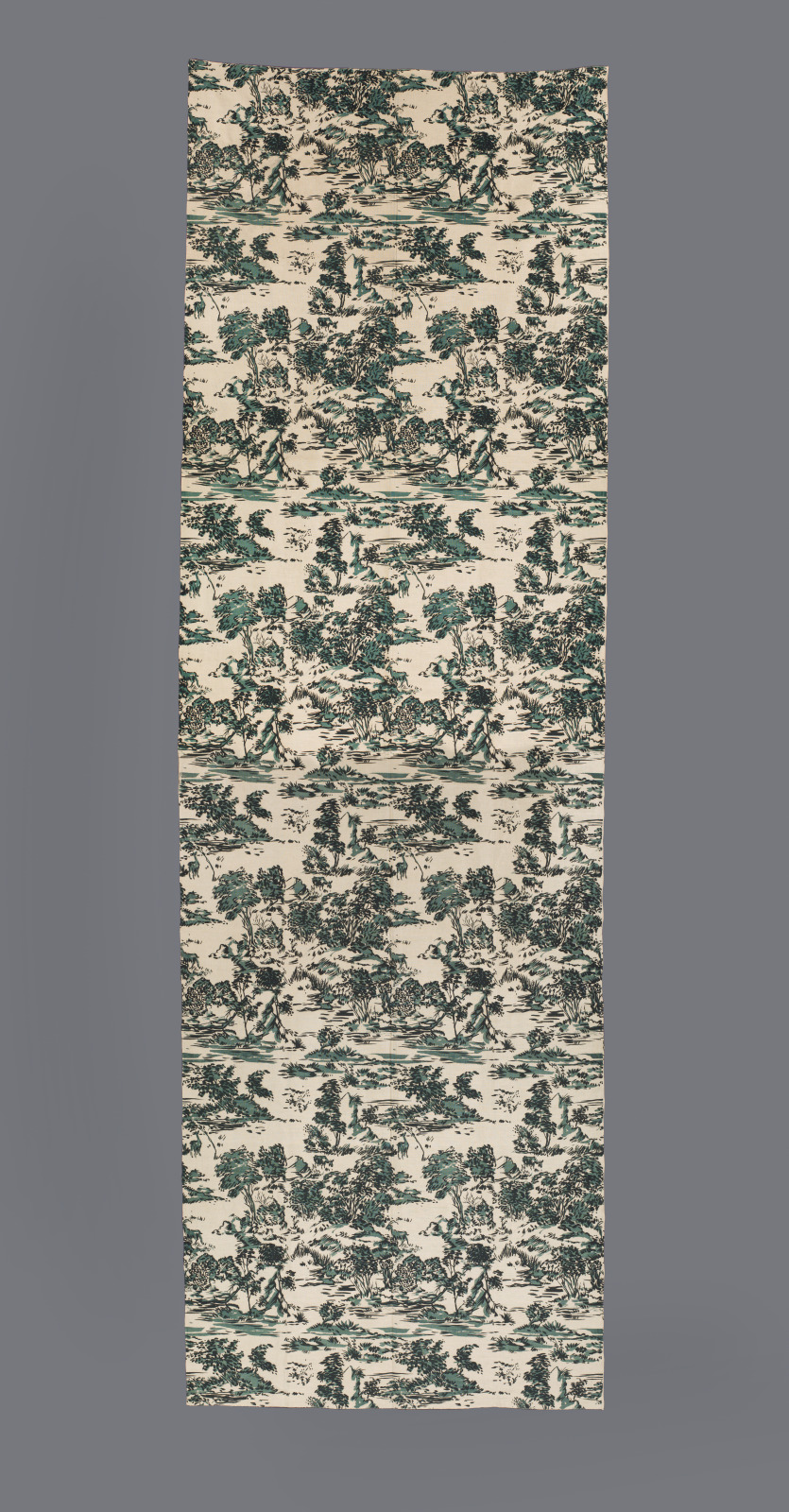
designed by Oscar Saccorotti, Italian, 1898–1986; made by Manifattura Italiana Tappeti Artistici, Genoa, Italy, active 1926–1976; Goats (Capre) Textile, c.1948; printed cotton; 54 x 72 inches; Saint Louis Art Museum, Gift of the Italian Government 31:2019
A landscape specialist, painter Oscar Saccorotti used loose brushstrokes and subtle shading to describe the rocky, tree-freckled landscape repeated down this textile. Following World War II, Manifattura Italiana Tappeti Artistici, or MITA, sought collaborations with Italy’s most important modern artists and designers, including Gio Ponti, Arturo Martini, and Saccorotti. MITA textiles were first introduced to Americans in the exhibition Italy at Work: Her Renaissance in Design Today, which traveled to St. Louis in 1952. The Italian government gave Goats (Capre) to the Museum after the close of the exhibition.
January 6, 2025
Virgin and Child
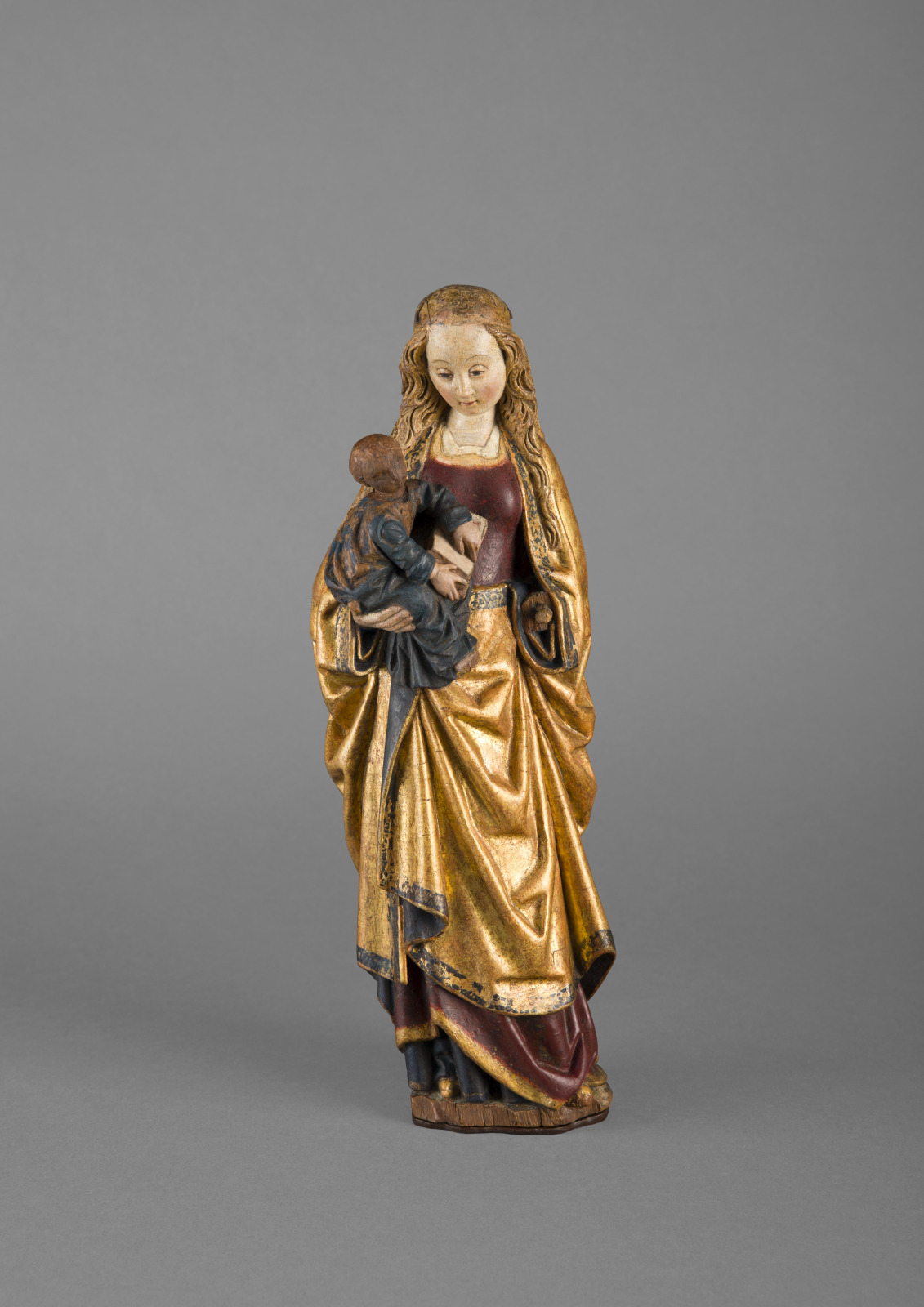
Virgin and Child, early 16th century; South Netherlandish, Belgium; gilded and painted wood with walnut base; with base: 16 3/4 x 4 1/2 x 3 inches; Saint Louis Art Museum, Gift of Audrey Faust Wallace and Leicester Busch Faust as a memorial to Anna Busch Faust and Edward A. Faust 58:1937
Renaissance Flanders, roughly equivalent to present-day Belgium, abounded in workshops where sculptures were embellished with beautifully applied gilding and attractive painted decoration. Through the years, worshippers have rubbed away the paint on the head of the Christ Child in this sculpture. The sheen visible on the bare wood was created by the oily residue left from fingers as they rubbed the surface. Originally, the Child’s head would have looked quite different. The artist would have given his hair more detail by first applying a chalk and glue layer and then carving it into crisp, distinct strands before applying the final paint. The virgin originally wore a metal crown around her head.
January 5, 2025
Evening

Max Pechstein, German, 1881–1955; Evening, 1921; oil on canvas; 32 1/8 x 40 inches; Saint Louis Art Museum, Bequest of Morton D. May 930:1983
Max Pechstein represented his second wife, Marta, standing with her sister against the setting sun. They appear on an expansive plain around Leba, a fishing village in the Baltic region of Germany. The intense, abstract colors are notable, as in the green contours around the eyes of the women. Sharp, chiseled facial features indicate an interplay with Pechstein’s sculptures, such as Quarter Moon. Pechstein’s output here suggests the influence of the Oceanic sculptures he collected.
January 4, 2025
Figure Group Portraying Lion and Birds
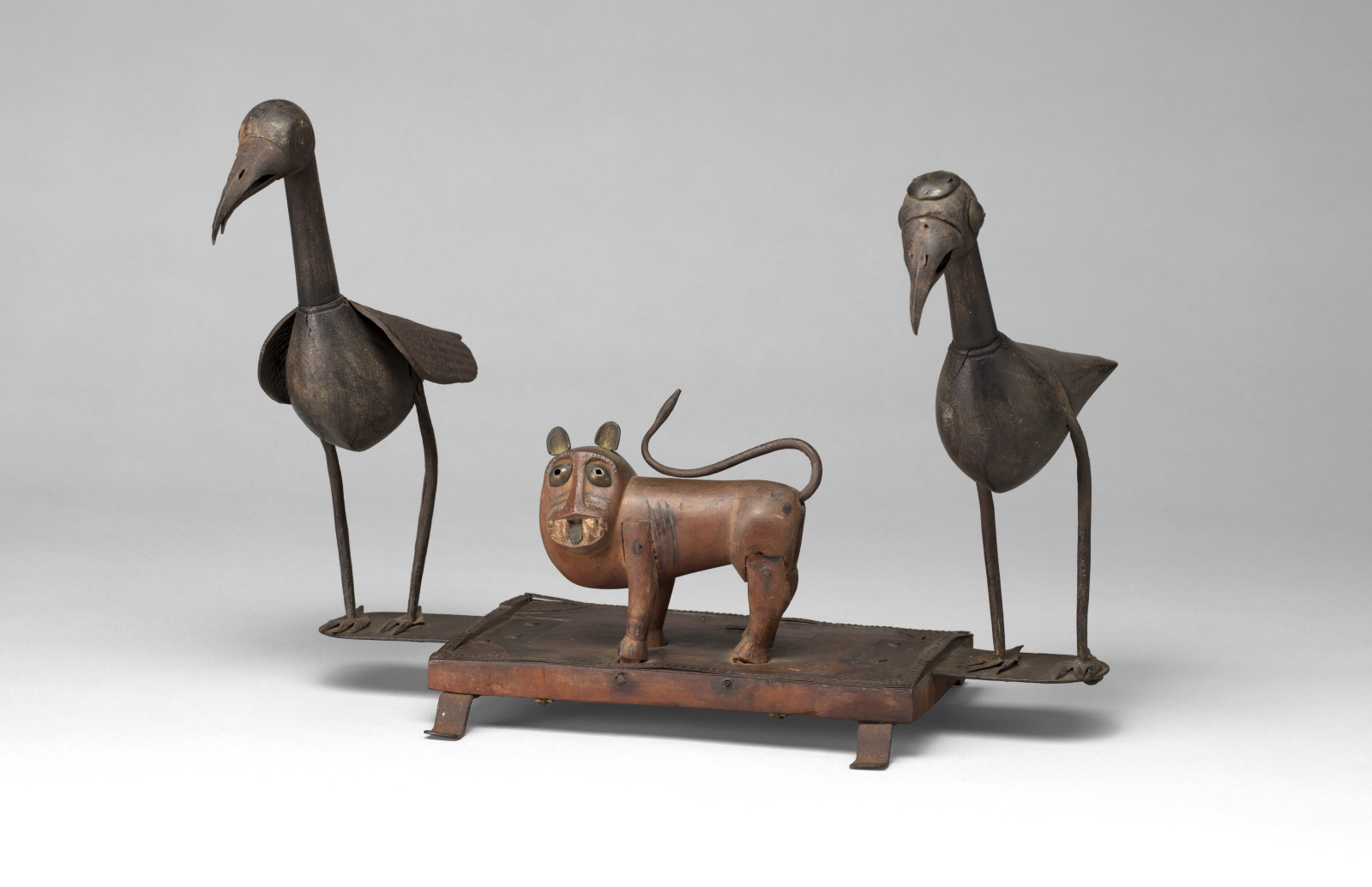
Fon artist, Benin; Figure Group Portraying Lion and Birds, late 19th–early 20th century; iron, copper, wood; 9 1/2 x 12 1/2 x 6 1/2 inches; Saint Louis Art Museum, Gift of Morton D. May 404:1955
The burden of life is not carried by just anyone; it is to you [Glèlè] that fate has attributed it.
—Excerpt from a Fon poem
Two birds flank a central lion, the large cat linking this scene to King Glèlè (reigned 1858–1889). One bird bears an elongated neck and wings. The other appears to lack wings and its head is pierced with an upholstery nail. This vignette refers to a song and allegory dedicated to Glèlè. The nail head represents a burden, and the wingless bird alludes to the verse at left, translated from the Fongbe language. The taller bird evokes the Fon allegory: “The bird of prey that catches other birds and carries them off into the air just like the king of Dahomey catches enemies and carries them off into the air.” Together, the visual and verbal resonances suggest the formidable power and responsibility assumed as the duty of any Dahomey king.
January 3, 2025
Head of a Gaul
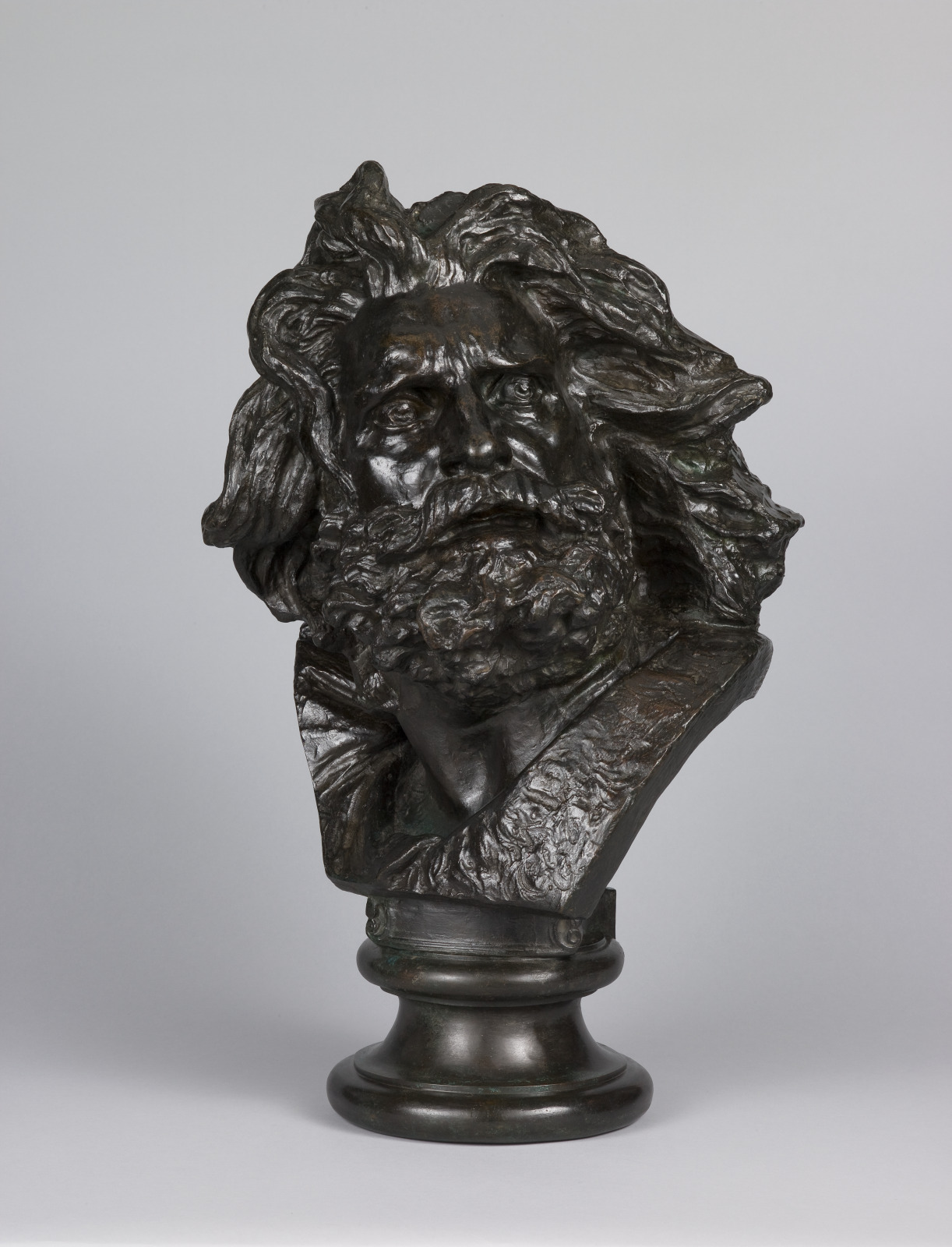
Francois Rude, French, 1784–1855; Head of a Gaul, c.1833–35; bronze; 24 1/2 x 12 3/4 x 12 1/4 inches; Saint Louis Art Museum, Gift of J. Lionberger Davis by exchange 124:1987
In this dramatic sculpture, the wide-open eyes and animated expression suggest the patriotic fervor of an aged warrior as he sets off for battle. This head is based on the central figure from François Rude’s greatest work, “The Departure of the Volunteers of 1792,” created for the façade of the Arc de Triomphe in Paris. Rude’s dynamic approach to the modeling of form is particularly evident in the warrior’s swirling, serpentine hair.
January 2, 2025
Pair of Torah Finials
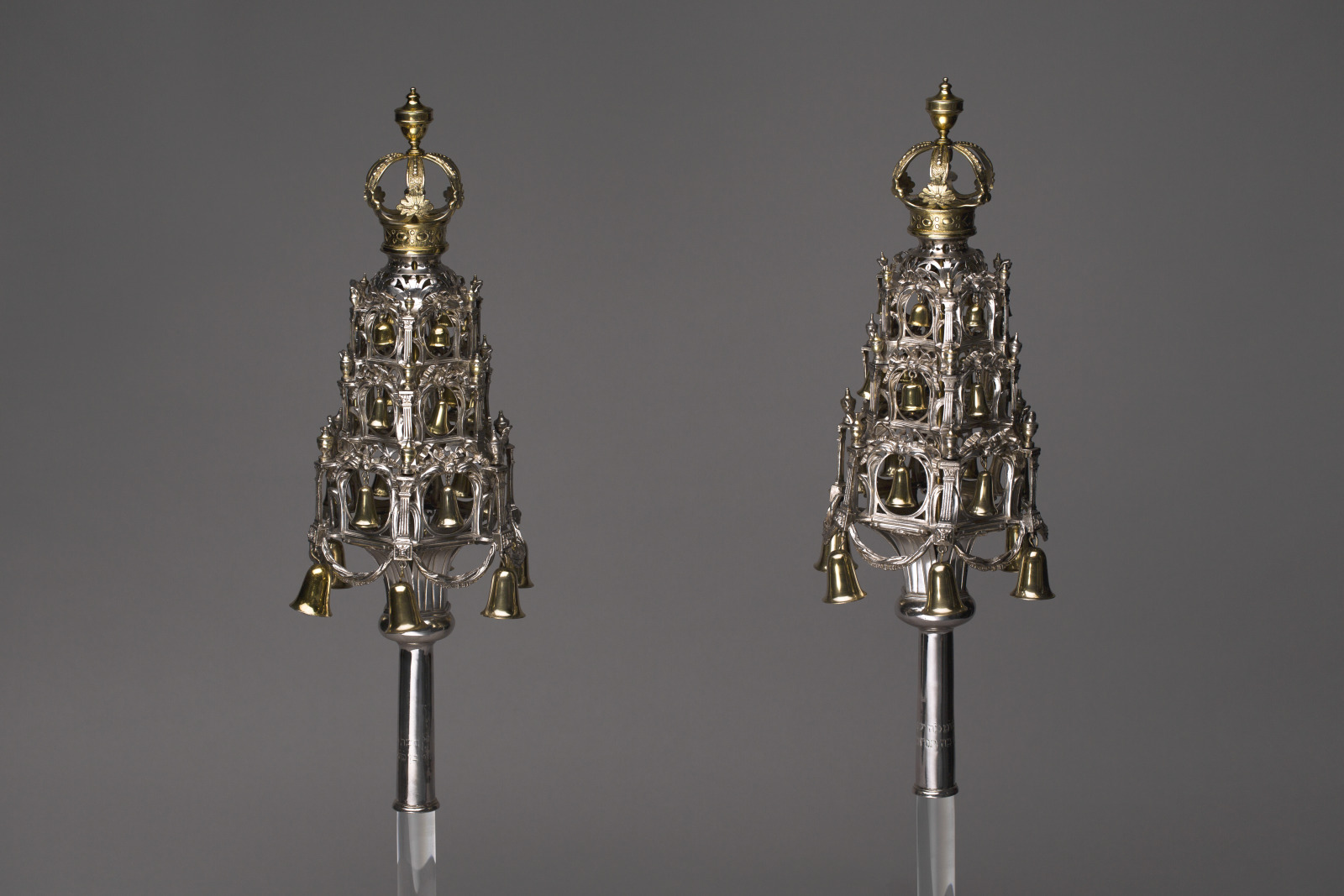
Wilhelmus Angenendt, Dutch (born Germany), 1737–1817; Pair of Torah Finials, 1778; silver with gilding; height: 18 3/8 inches; Saint Louis Art Museum, The Deane and Paul Shatz Endowment Fund for Judaica 108:2000.1,.2
These finials (rimmonim) capped the rods of a rolled Torah, the first five books of the Hebrew Bible and the most sacred object in the Jewish faith. Miniature breastplates, crowns, and precious textiles also adorned the scrolls when they were not in use. The finials’ bells drew attention to the Torah, draped in a trimmed mantle, or cloth cover, as the procession moved through the synagogue before and after readings.
January 1, 2025
Basel with the Rhine

Ernst Ludwig Kirchner, German (active Switzerland), 1880–1938; Basel with the Rhine, 1927–28; oil on canvas; 47 3/16 x 79 1/8 inches; Saint Louis Art Museum, Museum Purchase 258:1948
Vibrant lilac, teal, and salmon pink compete for attention with the medieval buildings of Basel, Switzerland. Ernst Ludwig Kirchner wrote about his art from this period, “Color is the main appeal of my pictures.” Here, key colors repeat to create a visual rhythm. One example is the purple that appears in the sidewalk, woman’s clothes, shadows on the riverbank, and rooftops. This repetition gives the scene an unexpected harmony.
December 31, 2024
Swingtime
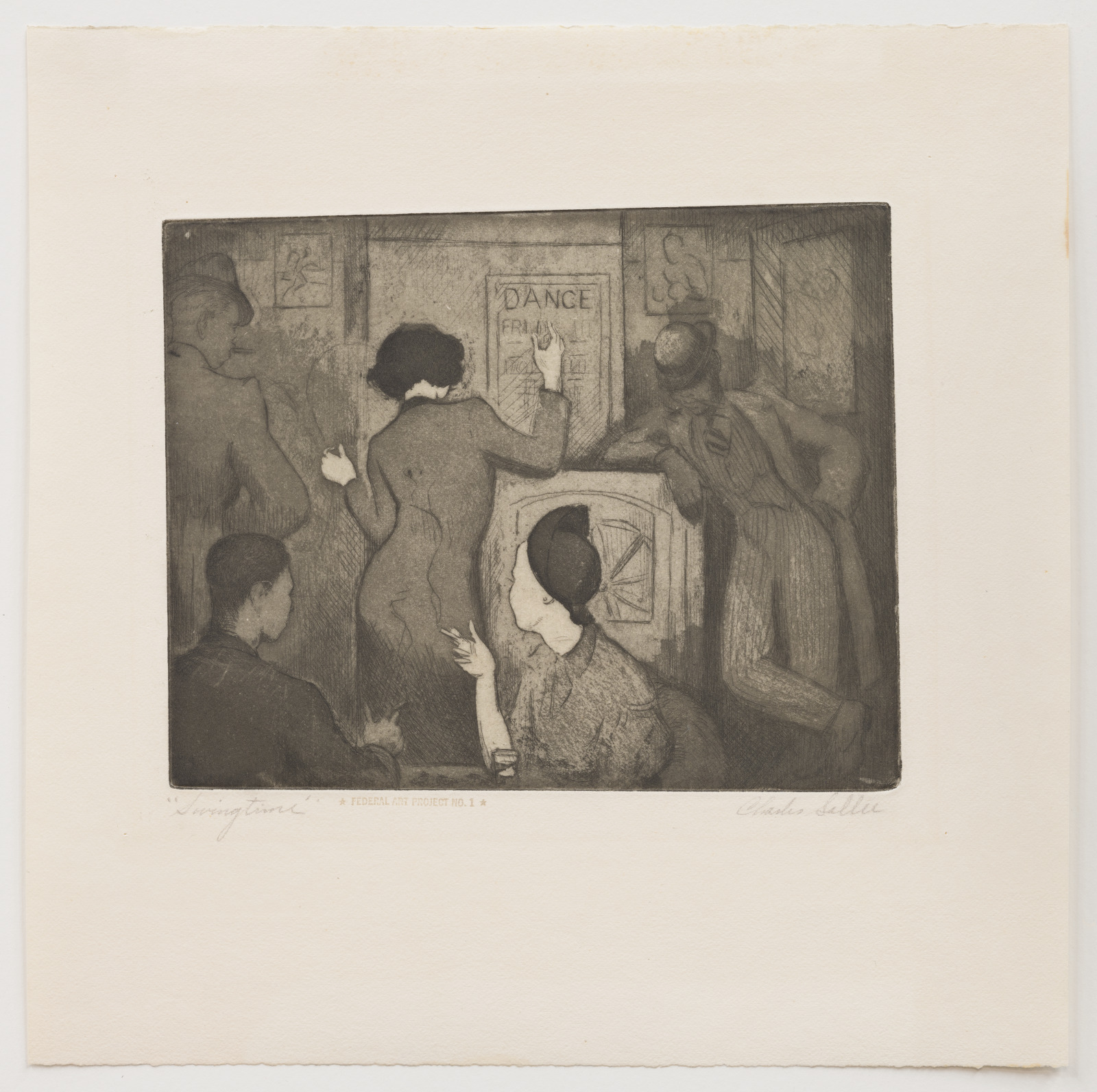
Charles L. Sallée Jr., American, 1911–2006; Swingtime, 1937; soft- and hard-ground etching and aquatint; plate: 5 9/16 x 6 7/8 inches, sheet: 9 15/16 x 9 13/16 inches; Saint Louis Art Museum, Gift of the Federal Works Agency, Work Projects Administration 318:1943
Dance, music, theater, writing, and visual arts all fed off each other at Karamu House, the foundational center of Black cultural life in Cleveland where Charles L. Sallée Jr. taught and worked. In making this print, he captured the energy of many of those art forms. In 1943, the pioneering Black art historian James A. Porter may as well have been describing this very composition when he called Sallée “a master of rhythm, so expert that the work is joyously animate. It is as though the artist found nothing but transporting gladness in life.”
December 30, 2024
Writing Box (suzuribako) with Design of Azalea and Kerria Blossoms
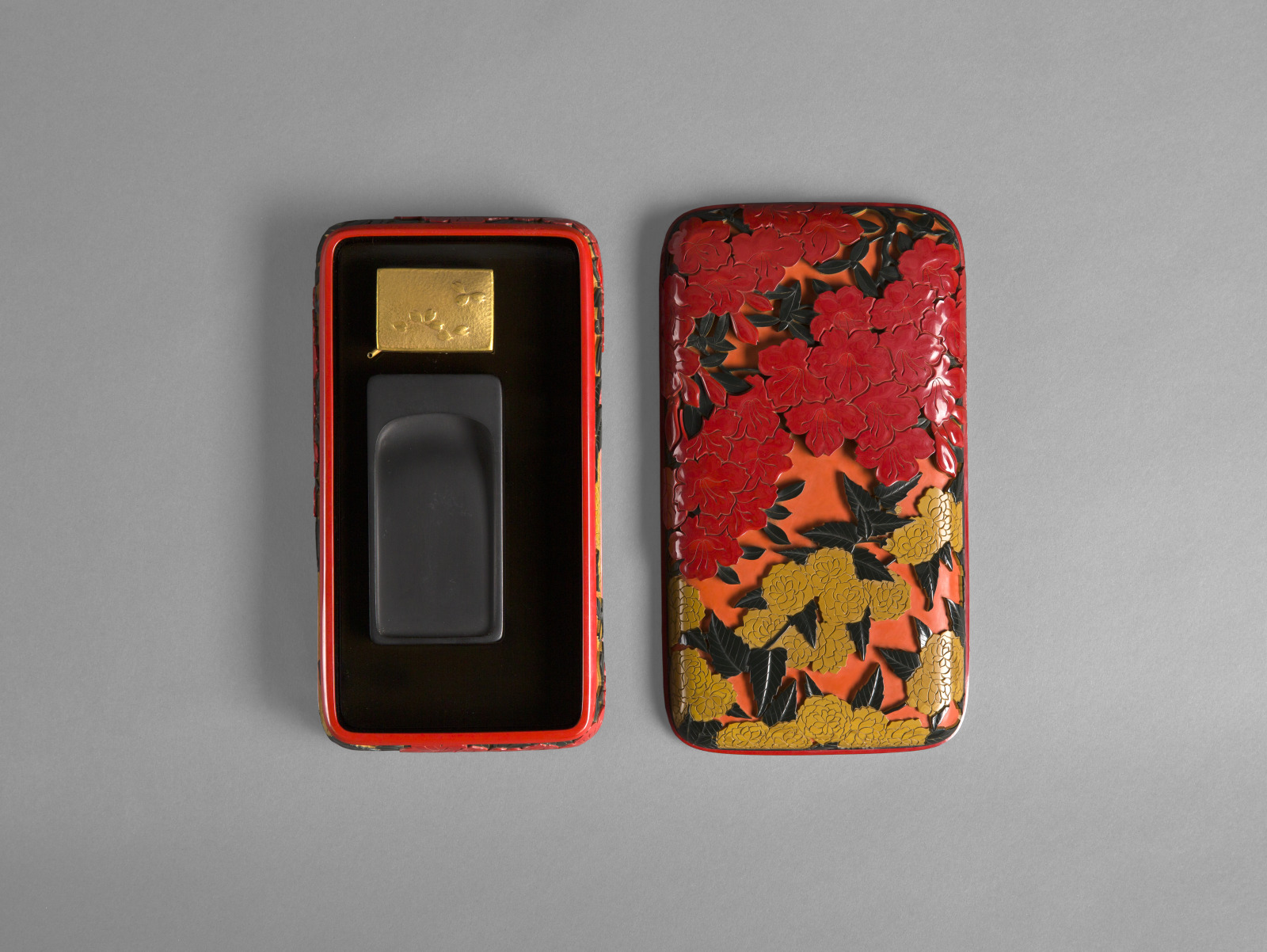
Tsuishu Yōzei XX, Japanese, 1880–1952; Writing Box (suzuribako) with Design of Azalea and Kerria Blossoms, 1922; carved colored lacquers (chōshitsu) on wood core; 1 3/8 x 8 1/4 x 4 3/4 inches; Saint Louis Art Museum, The Langenberg Endowment Fund 72:2019a-d
This box features a balanced design of red azalea and yellow double-flowered kerria. Set against an orange ground, simply carved yellow-lacquered flower heads are balanced by strong black-lacquered serrated leaves. These elements complement the luscious red-lacquered azalea, subtly carved in undulating form with small black leaves. The crispness and depth of carving is staggering. The overall 6 millimeters of depth would have required a build-up of over 200 layers of black, yellow, and red lacquer before the work of carving could begin.
Inside the box, a plain black lacquer finish provides a setting for the simple inkstone and golden water-dropper decorated with cherry blossom petals carried in a flowing stream. The lacquer artist Tsuishu Yōzei XX is credited with revitalizing and modernizing the carved lacquer art form in the early 20th century. Born in Kyōto, he exhibited his work widely within Japan as well as at the 1900 Paris Exposition and the 1925 Paris International Exhibition of Modern Decorative and Industrial Arts, where he won an important prize.
December 29, 2024
Statuette of Lady Itef
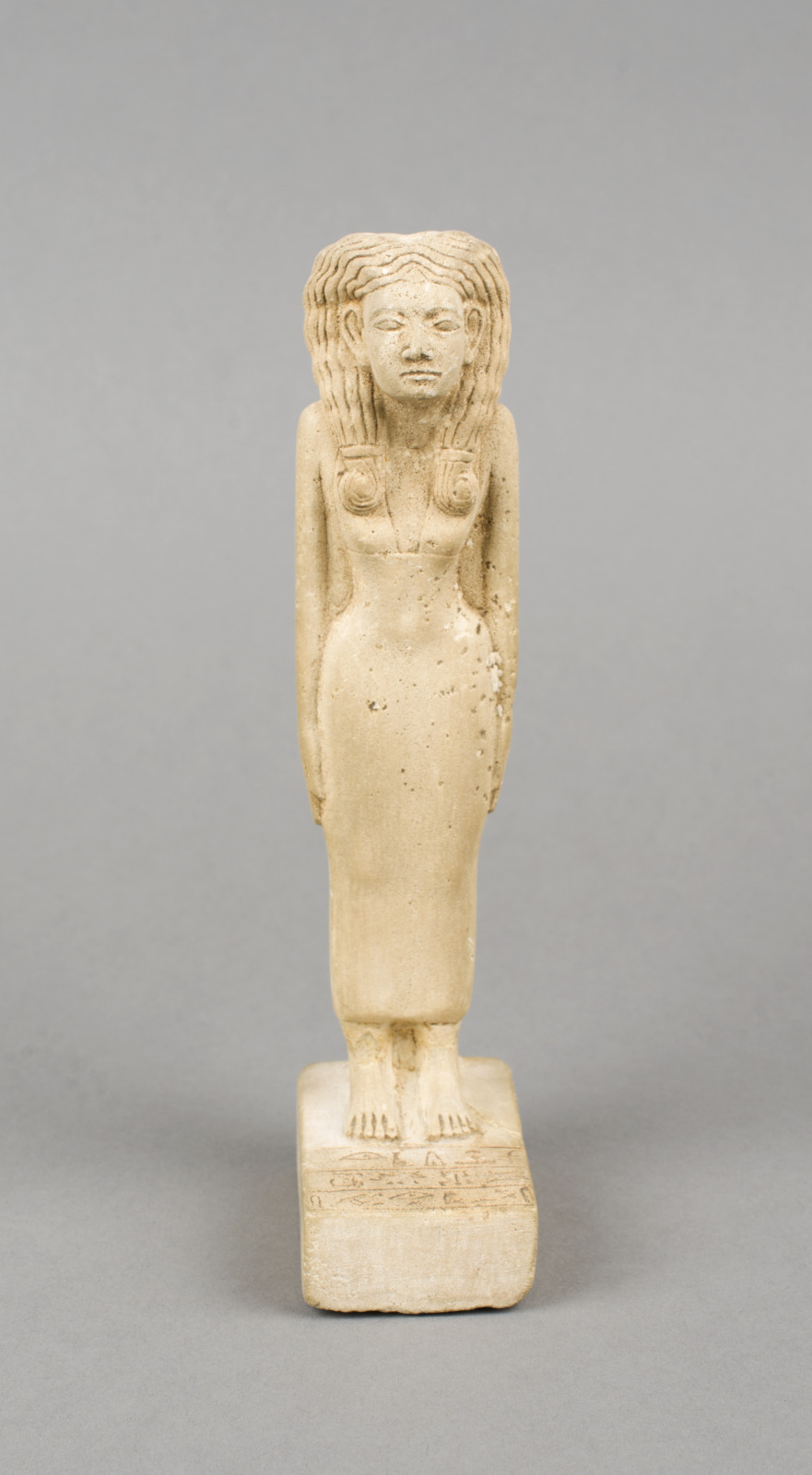
Statuette of Lady Itef, 1911–1783 BC; Ancient Egyptian, Middle Kingdom, Dynasty 12; limestone; height: 6 1/2 inches; Saint Louis Art Museum, Museum Purchase 30:1924
Rather than an accurate portrait, this statuette of a woman named Itef emphasizes her feminine qualities. She has high breasts, an unnaturally narrow waist, and broad hips. The sensuous curves of her body can be seen beneath her dress with its two broad shoulder straps. Her voluminous wavy wig that falls in front of her shoulders in spiral curls imitates the hairstyle of Hathor, a goddess associated with women, children, and regeneration.
December 28, 2024
Hall Chair
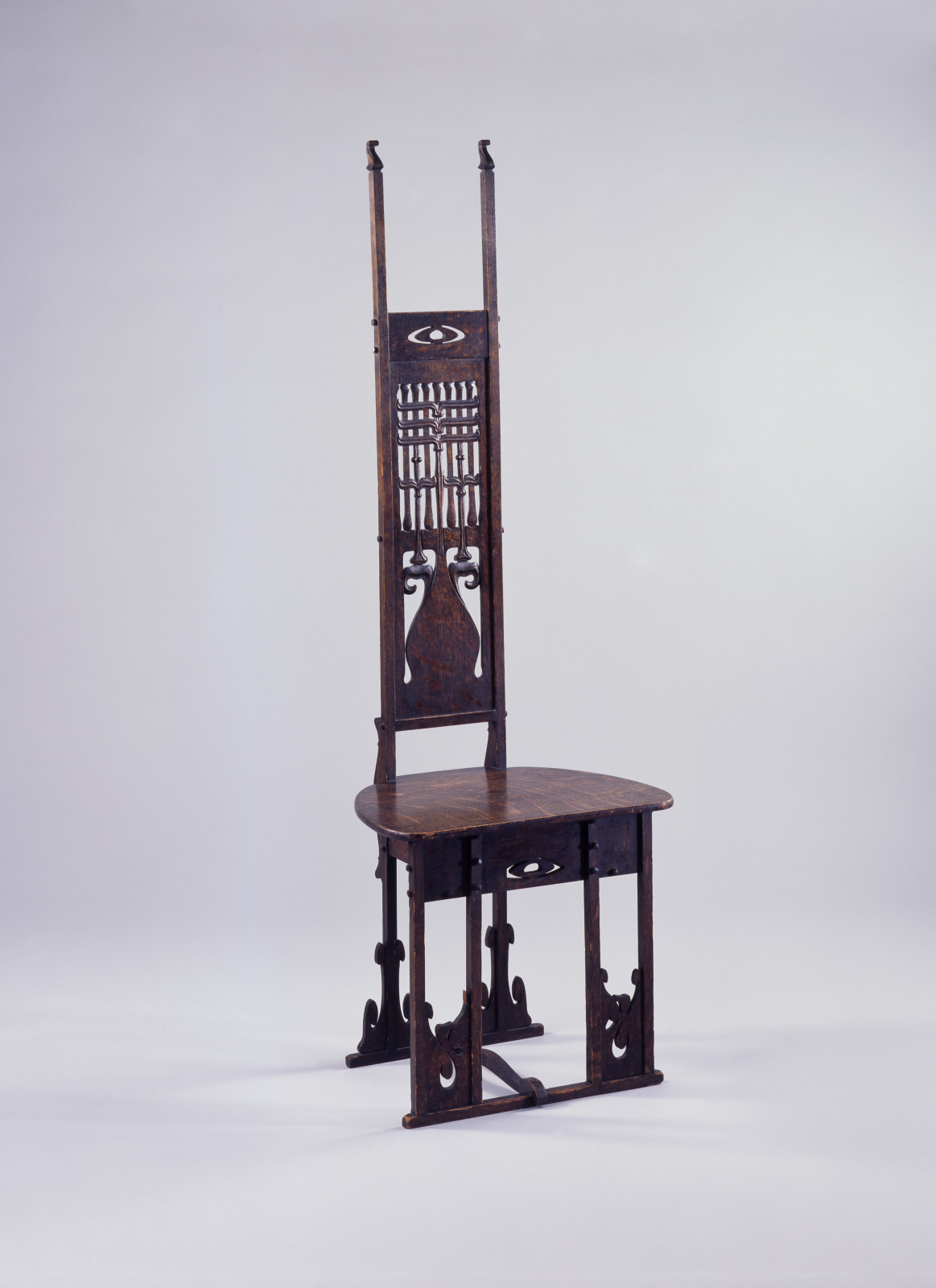
designed by Charles Rohlfs, American, 1853–1936; made by Charles Rohlfs Workshop, Buffalo, New York; Hall Chair, c.1899; stained oak; 56 7/8 x 19 x 14 3/4 inches; Saint Louis Art Museum, Friends Fund, The Marjorie Wyman Endowment Fund, Museum Purchase by exchange, and gift of Dr. and Mrs. Ernest T. Rouse by exchange 35:2004
This chair with its pierced and carved back panel, thin seat, and improbably slender legs and posts is as individualistic as its maker, Charles Rohlfs. In the late 1880s this actor, artist, and cast-iron stove designer began to make furniture for his Buffalo residence, and later for friends and other clients. Rohlfs produced multiple versions of this tall-back hall chair, each with variations in the cutout shapes ornamenting the legs, seat and crest rail, and the carved decoration.
He was inspired by many design sources, including plants and other natural forms. At the base of the carved back panel, a vegetal bulb sprouts stems with unfurling leaves and fruits against a screen of bone-like spindles. Rohlfs’s furniture was recognized for its distinctive forms and fanciful carving, and was shown in several important exhibitions, including the 1902 Turin Exposition of Decorative Arts and the 1904 St. Louis World’s Fair.
December 27, 2024
Golden Neck

Sam Gilliam, American, 1933–2022; printed and published by Brandywine Workshop, Philadelphia, Pennsylvania, founded 1972; Golden Neck, 1993–94; screenprint, offset lithograph, and hand-applied acrylic with stitching; sheet (irregular): 43 5/16 x 30 inches; Saint Louis Art Museum, The Thelma and Bert Ollie Memorial Collection, Gift of Ronald and Monique Ollie 154:2017; © 2025 Sam Gilliam / Artists Rights Society (ARS), New York
Complex color and texture are evident in Golden Neck, which is assembled from fragments of printed paper thickly coated with acrylic and stitched. As with his shaped paintings, Sam Gilliam’s prints, like this one, often deviate from the traditional rectangular format and have sculptural qualities. Working experimentally at Brandywine Workshop, a studio founded in 1972 to expand printmaking opportunities for artists of color, Gilliam cut up, reassembled, sewed, and raked paint across the prints he pulled from the presses.
December 26, 2024
Fading Cloth

El Anatsui, Ghanaian, born 1944; Fading Cloth, 2005; metal bottle tops and copper wire; dimensions variable according to installation: 126 inches x 21 feet; Saint Louis Art Museum, Museum Minority Artists Purchase Fund, funds given by the Third Wednesday Group, Director's Discretionary Fund, and funds given by the Saint Louis Art Museum Docent Class of 2006 in honor of Stephanie Sigala 10:2007; © El Anatsui, Courtesy of the artist and Jack Shainman Gallery, New York
-
See Detail
![102007dig_det1_o2]()
El Anatsui, Ghanaian, born 1944; Fading Cloth (detail), 2005; metal bottle tops and copper wire; dimensions variable according to installation: 126 inches x 21 feet; Saint Louis Art Museum, Museum Minority Artists Purchase Fund, funds given by the Third Wednesday Group, Director's Discretionary Fund, and funds given by the Saint Louis Art Museum Docent Class of 2006 in honor of Stephanie Sigala 10:2007; © El Anatsui, Courtesy of the artist and Jack Shainman Gallery, New York
Hues of gold, red, yellow, and silver shimmer across the undulating surface of Fading Cloth. Although it looks like a textile, the work is actually made from discarded liquor bottle tops, flattened and stitched together with copper wire. By repurposing metal caps, El Anatsui transformed the mundane into something visually mesmerizing. Anatsui’s materials allude to a devastating legacy: For centuries, European traders exchanged textiles and liquor in West Africa for gold and enslaved people. Fading Cloth weaves together a range of political, historical, and visual references to this region significant to the artist, who was born in Ghana and lives in Nigeria.
On Fridays in April, Object of the Day will feature artwork from the collection to celebrate Earth Month.
Today’s Object of the Day is featured in the Power of Place collection guide and the updated African and African American Art Guide.
December 25, 2024
Murnau with Locomotive

Vasily Kandinsky, Russian (active Germany and France), 1866–1944; Murnau with Locomotive, 1911; oil on canvas; 37 3/4 x 41 1/8 inches; Saint Louis Art Museum, Bequest of Morton D. May by exchange 142:1986
The village of Murnau, Germany, sleeps under a blanket of snow. This scene was familiar to the artist, who saw it every day from his front door. The icy tree, snow-white field, and sooty plumes of smoke recall the crisp stillness of winter.
This painting marks a turning point in Vasily Kandinsky’s career. His influential text On the Spiritual in Art appeared in the same year, and he made his first works comprised entirely of abstract shapes.
December 24, 2024
Night View

Berenice Abbott, American, 1898–1991; published by Parasol Press, New York, New York, founded 1970; Night View, c.1932, printed 1979; gelatin silver print; sheet: 13 3/8 x 10 5/8 inches; Saint Louis Art Museum, Gift of Mr. and Mrs. Fielding Lewis Holmes in honor of Mr. and Mrs. James N. Wood 320:1980.1; © Berenice Abbott Estate / Courtesy of Commerce Graphics Ltd, Inc., New York
Light emanates from the countless windows of 20 or more high-rise buildings in this nighttime scene of New York City. Train tracks cut across the lower third of the image, breaking up the insistent verticality of the skyscrapers.
In 1929, Berenice Abbott returned to New York City from studying in Paris, where she was first introduced to photography. Her artistic focus became the dramatically changing landscape of the city, as skyscrapers replaced low-rise buildings and dominated the skylines of metropolitan areas. In this photograph, the bird’s-eye view offered by the skyscrapers themselves provided Abbott with a new and striking perspective of the evolving cityscape.
December 23, 2024
Śiva Natārāja (Śiva, King of Dancers)

Siva Natārāja (Siva, King of Dancers), 12th century; Indian, Chola dynasty; bronze and iron; height: 34 5/8 x 28 5/8 x 11 1/2 inches; Saint Louis Art Museum, William K. Bixby Trust for Asian Art 4:1938
Natārāja (King of Dancers) is one of many manifestations of the Hindu god Śiva. He is shown balancing on one leg as he lifts the other in his cosmic dance of creation and destruction of the universe. In his upper right hand, he carries a drum representing creation; his upper left hand holds a flame symbolizing destruction. His two other hands are positioned in gestures of comfort. Surrounded by a flaming aureole, or circle of light, Śiva tramples on the demon Apasmāra, who personifies ignorance. This sculpture is technically unusual because Śiva’s aureole was cast around a circular iron core. Such bronze images were carried around temples during festivals dedicated to Śiva.
December 22, 2024
The Star of the Kings

Rembrandt van Rijn, Dutch, 1606–1669; The Star of the Kings, c.1651; etching with touches of drypoint; plate: 3 3/4 x 5 5/8 inches, sheet (nearly trimmed to platemark): 3 3/4 x 5 11/16 inches; Saint Louis Art Museum, Friends Fund 144:1986
The Dutch artist Rembrandt van Rijn was a master of the nocturne, or night scene, as this intimate and nuanced print demonstrates. A small crowd gathers around a glowing paper lantern representing the Star of Bethlehem. Another lantern in the distance illuminates a scene below the dim lights of the upper-story windows of townhouses. It was Dutch custom on the eve of the Epiphany-the Christian feast that celebrates the appearance of Jesus to the Magi-to reenact the travels of the Three Kings by going door to door, caroling and asking for refreshments and little gifts.
December 21, 2024
Prunus Vase (meiping) with Design of Peony and Lotus Scrolls

Prunus Vase (meiping) with Design of Peony and Lotus Scrolls, early 14th century; Chinese, Yuan dynasty; Jingdezhen ware; porcelain with underglaze cobalt blue decoration; 16 3/4 x 9 5/8 inches, diameter of mouth: 2 1/16 inches, diameter of body: 9 5/8 inches, diameter of foot: 5 5/8 inches; Saint Louis Art Museum, Funds given by Edith Spink in memory of her husband, C. C. Johnson Spink 2:2000
Broad-shouldered and narrow waisted, this vase was used to display a single spray of blossoms, traditionally from a plum tree. Bold and intricate designs of lotus and peony, painted with imported mineral cobalt blue, stand out in horizontal sections against the pure white body of kaolin clay. All design elements were fused under a hard, clear glaze. The imperial blue-and-white porcelains of the Yuan dynasty (1279–1368) were artistic and technical marvels.
December 20, 2024
Club (‘u’u)
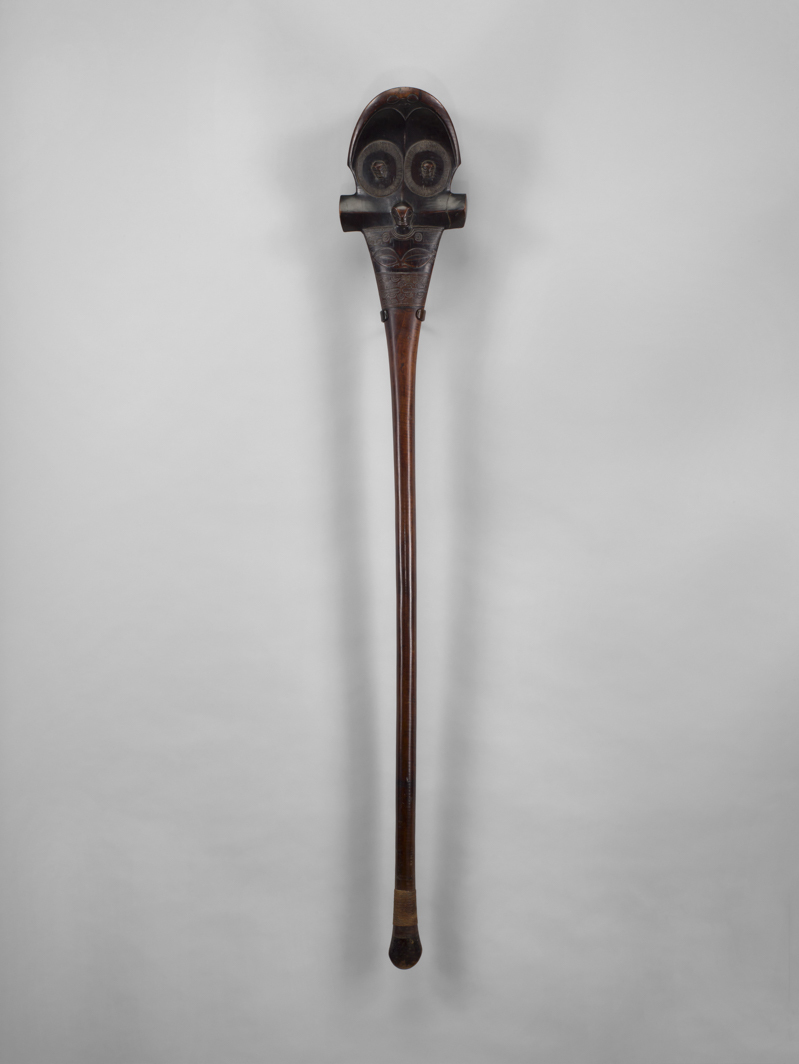
Marquesan (Te 'Enana) artist, Polynesia; Club ('u'u), early to mid-19th century; wood, plant fiber; 7 7/16 x 4 x 51 9/16 inches; Saint Louis Art Museum, Museum Purchase 128:1952
Reading the sculpted motifs on both sides of this club creates a complex visual game. At first glance, the head of the club takes the form of a face. However, closer looking reveals a multitude of additional faces. There is a face on the upper crest of the finial; two others form the pupils and irises of the eyes with radiating striations; a fourth face appears in place of the primary face’s nose; another is evident on the lower band. There is no specific Marquesan explanation for this interlocking imagery. The Marquesan word atua, meaning both “eyes” and “ancestors,” nevertheless suggests a striking interpretation for this proliferation of eyes and faces: the ancestors are watching.
December 19, 2024
Forest with Deer
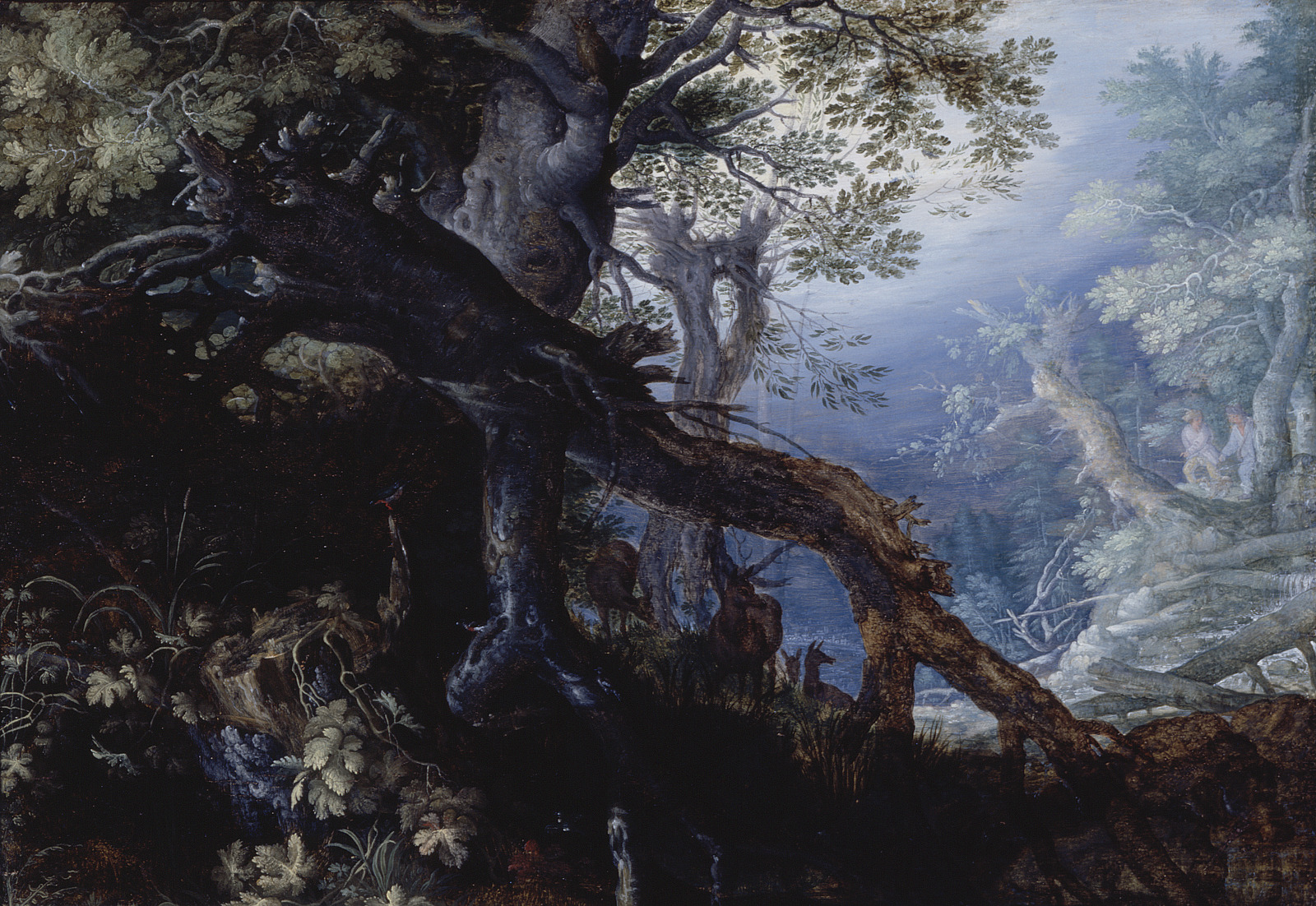
Roelandt Savery, Flemish, 1576–1639; Forest with Deer, c.1608–10; oil on panel; 11 3/4 x 17 3/8 inches; Saint Louis Art Museum, Museum Purchase 170:1953
A group of deer are framed by the fallen tree bough that forms the major diagonal of this composition. In the middleground at the far right, two hunters seek their prey accompanied by a hunting dog. The close-up view of the darkened forest against the pale greens and blues of the distant woods creates an engaging, if not quite realistic, scene. Roelandt Savery worked in Prague for the Holy Roman Emperor Rudolf II (reigned 1576–1612) whose famous hunting grounds provided ample material for the artist’s animal paintings.
December 18, 2024
Chintz Medallion Quilt
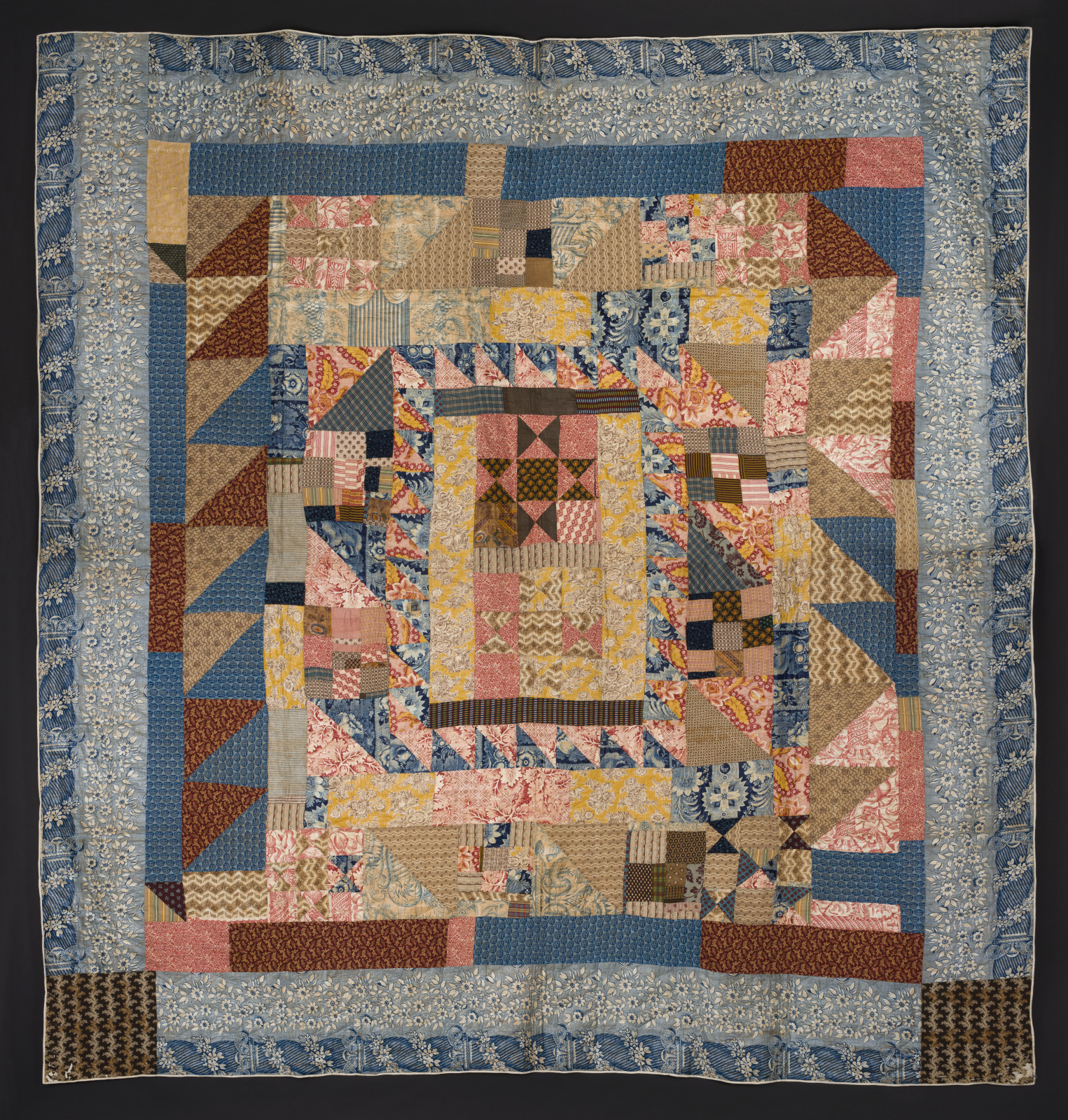
Chintz Medallion Quilt, c.1830; American; cotton; 107 x 101 inches; Saint Louis Art Museum, Gift of Richard and Suellen Meyer 34:2016
The rich variety of colorful, ornately patterned fabrics gives this quilt an eye-catching energy. The center medallion—two blocks of the eight-pointed “Ohio Star” pattern—is surrounded by pieced borders of triangles, rectangles, and squares cut from printed chintz fabrics. Four long pieces with blue-and-white, garland-wrapped pillars form the quilt’s outer borders, with the strong vertical emphasis of the pillar designs ideally suited for the border edges. The random placement of the patterns and colors of the geometric-shaped pieces creates a visually interesting composition with a fresh, improvisational feel.
We don’t know the name of this quilt’s maker, but she likely lived in the eastern United States where imported chintz fabrics were readily available in the early decades of the 19th century, when this quilt was created.
December 17, 2024
The Thames

James A. McNeill Whistler, American, 1834–1903; The Thames, 1896, printed c.1904; lithotint; image: 10 1/2 x 7 9/16 inches, sheet: 14 x 10 3/16 inches; Saint Louis Art Museum, Museum Purchase 4:1919
Making use of the diluted greasy ink wash that was used to cover the surface of a lithographic stone, James McNeill Whistler conveyed the dense atmosphere of a foggy river scene. Highlights that punctuate the London skyline contrast with the rippling texture of the rest of the print. They interrupt the haziness with puffs of smoke that marked the economic life of the city’s transportation and manufacturing. Privileging an atmospheric feel over careful description of details characterized Whistler’s artistic experimentation. In his prints as well as his paintings of such night scenes, Whistler sought to convey a harmonious arrangement, such as that found in music, without narrative specificity.
December 16, 2024
Mary, Lady Guildford

Hans Holbein the Younger, German, 1497/98–1543; Mary, Lady Guildford, 1527; oil on panel; 34 1/4 x 27 13/16 inches; Saint Louis Art Museum, Museum Purchase 1:1943
-
Preparatory Drawing
![Hans Holbein d. J.; Bildnis der Lady Mary Guildford; 1527]()
Hans Holbein the Younger, German, 1497/98-1543; Portrait study of Mary, Lady Guildford, née Wotton, 1527; chalk; 21 5/16 x 15 1/8 inches; Kunstmuseum Basel
Holding her prayer book and turning to face the viewer, this 27-year-old is the very image of matronly respectability. Hans Holbein added a Renaissance column topped with forms he knew from Italy. The artist also incorporated green grape vines and leaves (symbols of wealth) and his favorite blue to create a background of considerable beauty. The preparatory drawing for this painting shows a captivating young woman who glances off to the side (see image). In the finished painting, Holbein changed Mary’s gaze to suggest a more serious wife. This alteration was probably the request of Mary’s husband, Henry Guildford, who held the important post of comptroller to King Henry VIII.
December 15, 2024
Votive Stela of Śākyamuni Buddha and Attendant Bodhisattvas

Votive Stela of Sākyamuni Buddha and Attendant Bodhisattvas, 505; Chinese, Northern Wei dynasty; limestone with gesso and traces of pigment; 74 x 28 1/2 x 10 1/8 inches; Saint Louis Art Museum, Museum Purchase 38:1936
The central figure of Sâkyamuni (Shijiamouni), the historical Buddha whose halo depicts lotus petals, dominates this stela. This main figure is flanked by the Bodhisattva Avalokitesvara (Guanyin), whose left hand holds a flask, and the Bodhisattva Mahasthamaprapta (Dashizhi), whose hands are held together. Each bodhisattva is supported by an open lotus blossom. The gray limestone was originally painted in vibrant colors.
Eighty devotees from Chongli village, Ji county, Henan province, commissioned the sculpture as an act of piety. It is dated to 505, the second year of the Zhengshi reign period (504–508) of Emperor Xuanwu (r. 499–515). This ruler was a devout Buddhist, and during his reign, Buddhism effectively became the state religion.
This work of art inspired an award-winning floral interpretation by Barb Wehking of Bloomin’ Buckets in 2018. See the arrangement and enjoy this year’s virtual Art in Bloom.
December 14, 2024
Rocking Chaise

designed by Gebruder Thonet, Vienna, Austria, founded 1853; made by Gebruder Thonet, Vienna, Austria, founded 1853; Rocking Chaise, c.1880; beech and cane; 31 7/8 x 26 1/16 x 66 3/16 inches; Saint Louis Art Museum, Richard Brumbaugh Trust in memory of Richard Irving Brumbaugh and in honor of Grace Lischer Brumbaugh 249:1992
This adjustable rocking chaise is made from bent beech wood rods and has a woven cane seat and back rest. The sides are formed by two spliced rods bent in a generous elongated figure eight, terminating in a spiral beneath the back rest and a whiplash under the foot of the chaise. During the 1850s Michael Thonet perfected his process of bending lengths of steamed beech rods around iron molds. This technological achievement, which eliminated laborious hand-carving and simplified production, led to the first mass-produced, inexpensive, standardized furniture. Bentwood furniture, which ranged from simple cafe chairs to flamboyant rocking chaises like this one, could be made entirely from prefabricated components. The only ornament consisted of decorative spirals accenting the ends of the rods.
December 13, 2024
Basilica of Maxentius

Louis-Auguste Bisson, French, 1814–1876; Basilica of Maxentius, c.1860; albumen print; image: 14 1/16 x 17 3/8 inches, mount: 20 1/2 x 27 3/16 inches; Saint Louis Art Museum, Friends Fund 234:1979
Louis-Auguste Bisson’s image focuses on the forceful geometries of three massive barrel vaults—marvels of engineering. The Basilica of Maxentius was the largest building in the Roman Forum and the last basilica built by the Romans, dedicated around AD 330. The northern aisle is all that remains of this once sprawling complex of bathing facilities and civic meeting halls, with statues of Roman gods throughout. The central nave, or main section, itself was destroyed by a series of earthquakes. The basilica was one of the structures whose form and function inspired American architect Cass Gilbert in his 1903 design for Sculpture Hall of the Saint Louis Art Museum.
December 12, 2024
Bowl with Animal Frieze
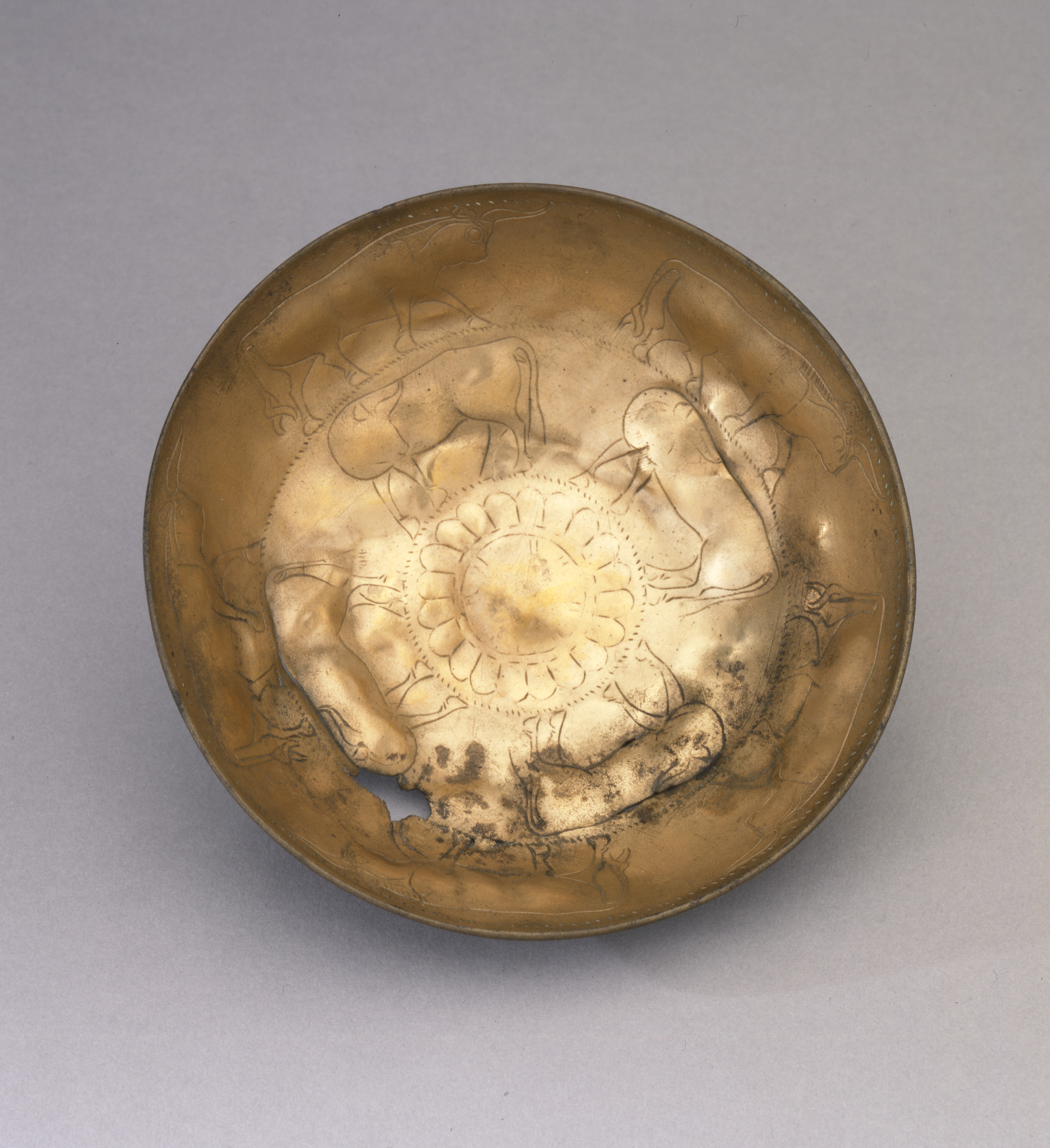
Bowl with Animal Frieze, mid- to late 8th century BC; Near Eastern, Phoenician, Syria, Late Geometric period; bronze; 2 1/2 x 2 1/2 inches; Saint Louis Art Museum, Museum Purchase 115:1924
Near Eastern Art Nomadic people in Western Iran (Luristan) produced wonderful and lively decorated metalwork. Tools, horse trappings, and ceremonial standards were functional yet embellished with fantastic beasts and intertwining designs. These designs are strangely reminiscent of the style developed by other nomadic people in Europe during the “Dark Ages” some 2000 years later.
December 11, 2024
Holy Family with Coats of Arms of Charles V and Isabella of Portugal
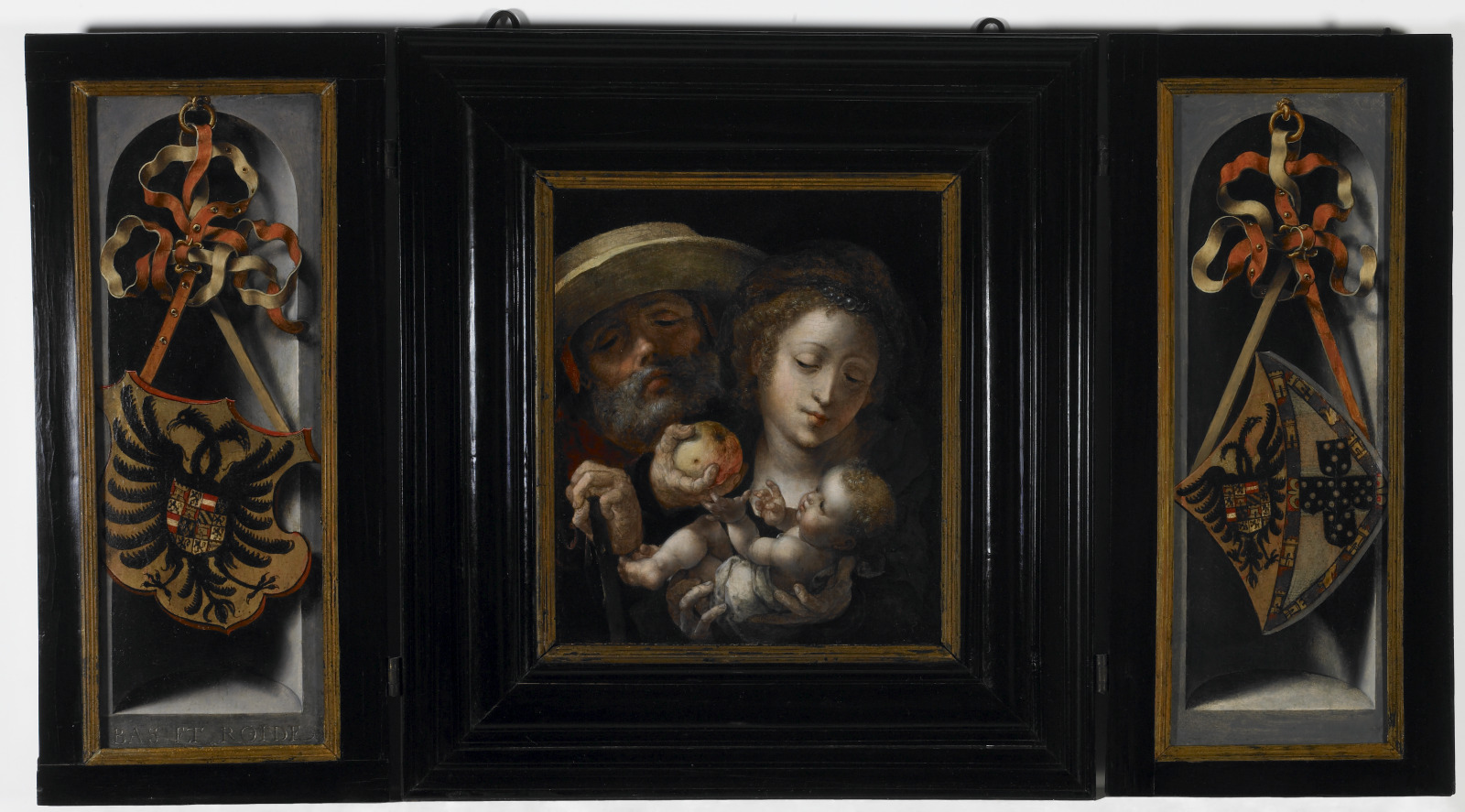
Jan Gossaert, Flemish, c.1478–1532; Holy Family with Coats of Arms of Charles V and Isabella of Portugal, 1526–30; oil on panel; overall: 16 1/8 x 39 7/8 inches; Saint Louis Art Museum, Museum Purchase 94:1947
This compressed grouping depicts St. Joseph (in straw hat and holding a cane) offering a pomegranate to the infant Christ who wriggles in his mother Mary’s grip. This small triptych was used for private devotion. St. Joseph became especially popular in the 16th century and images of him with Mary and Jesus were ideal for insuring domestic tranquility. The larger side panels (probably added later) depict the arms of Holy Roman Emperor Charles V (a Habsburg) and his bride Isabella of Portugal whom he married in 1526. Some scholars think that this triptych was a wedding gift to the couple.
December 10, 2024
Father & Mother—Tintype
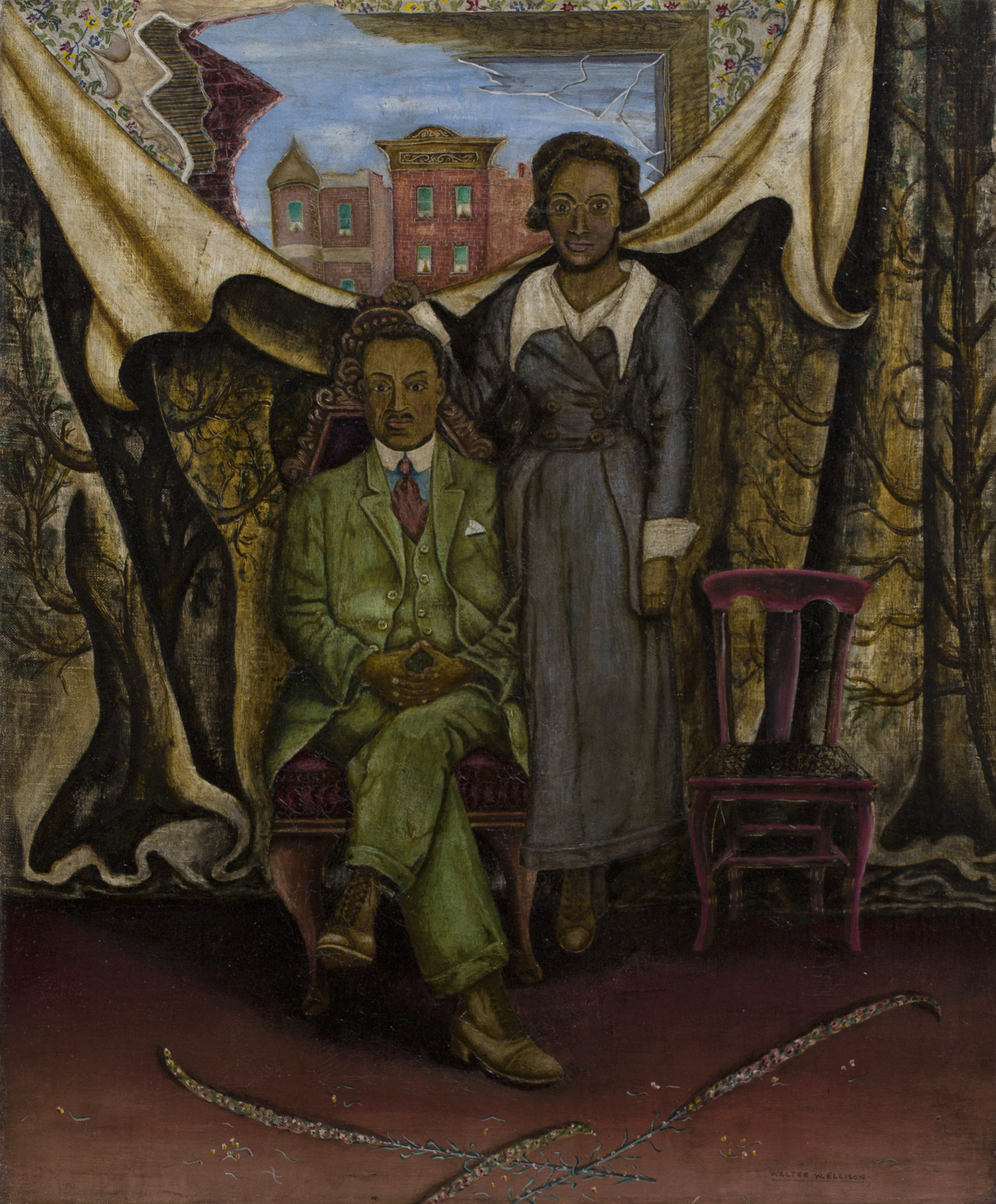
Walter Ellison, American, 1899–1977; associated with Federal Works Agency, Work Projects Administration; Father & Mother—Tintype, 1939; oil on canvas; 24 3/16 x 20 inches; Saint Louis Art Museum, Gift of the Federal Works Agency, Work Projects Administration 358:1943
In the standard full-frontal format used by portrait photographers at the time, Walter Ellison depicts his parents as dignified middle-class citizens, tastefully dressed in their Sunday best. By exposing the neighborhood scene behind the curtained backdrop and apartment wall, the artist provides a view of the community in which his family lived. As a member of Chicago’s South Side Community Art Center, Ellison helped carry out the mandate of the WPA: to represent the spectrum of African American life as an instrumental part of the national story.
December 9, 2024
House Plaque
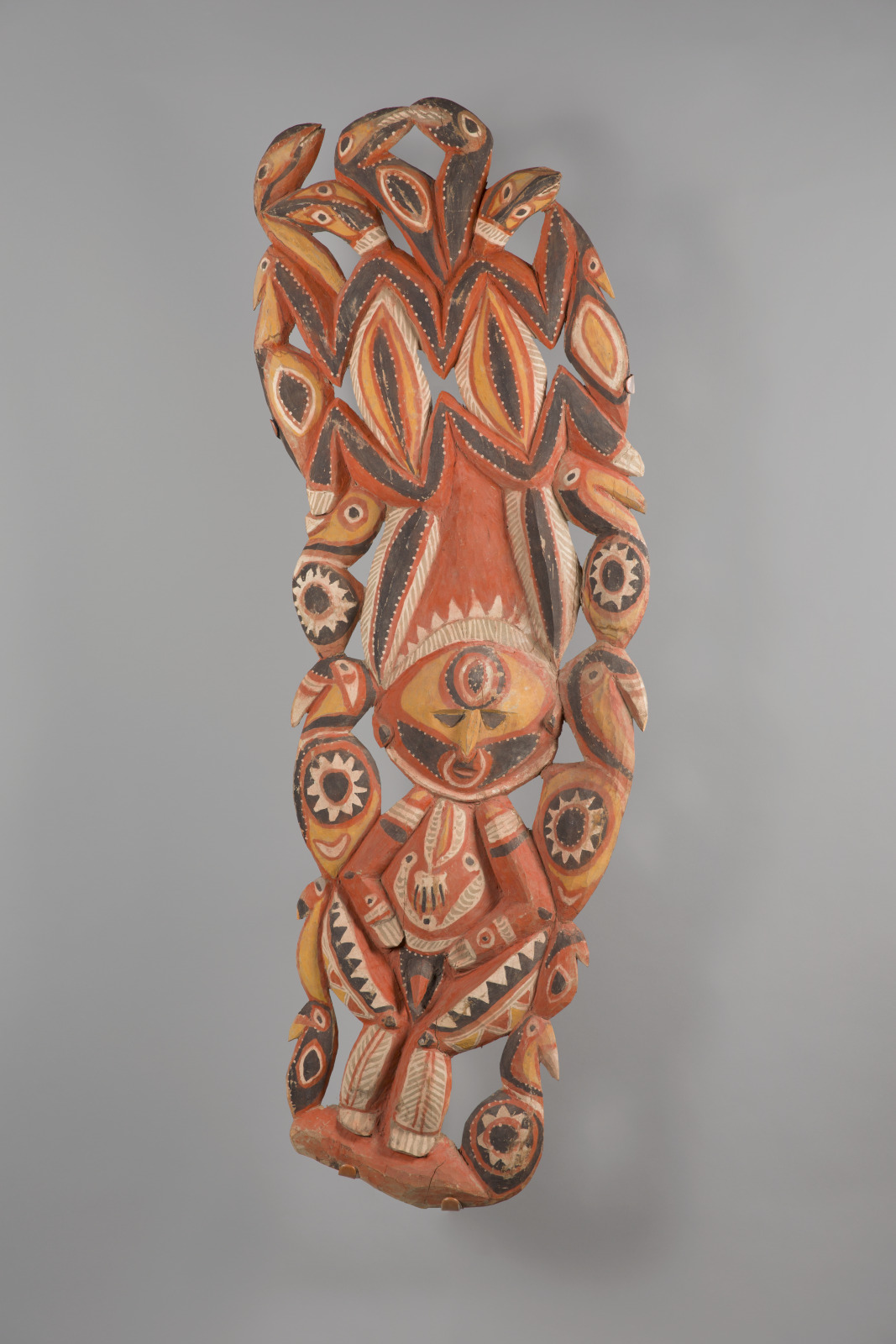
Abelam artist, Papua New Guinea; House Plaque, mid-20th century; wood, pigment; 55 7/8 x 18 7/8 inches; Saint Louis Art Museum, Bequest of Morton D. May 1404:1983
Among these intermingling shapes and forms, a tangle of hornbills surrounds a figure whose conical headdress indicates his ancestral status. The panel’s bright colors suggest the vibrancy and magnificence of the ancestors. A group of young initiates would have seen this panel, likely representing a mythological subject, toward the end of the initiation cycle when they were authorized to enter the initiation house. There, the initiates would encounter a succession of rooms holding sculptures and musical instruments. This panel appeared with others in the final room, where the initiates would connect their imagery with mythological histories.
December 8, 2024
Ankh-pa-khered with Osiris
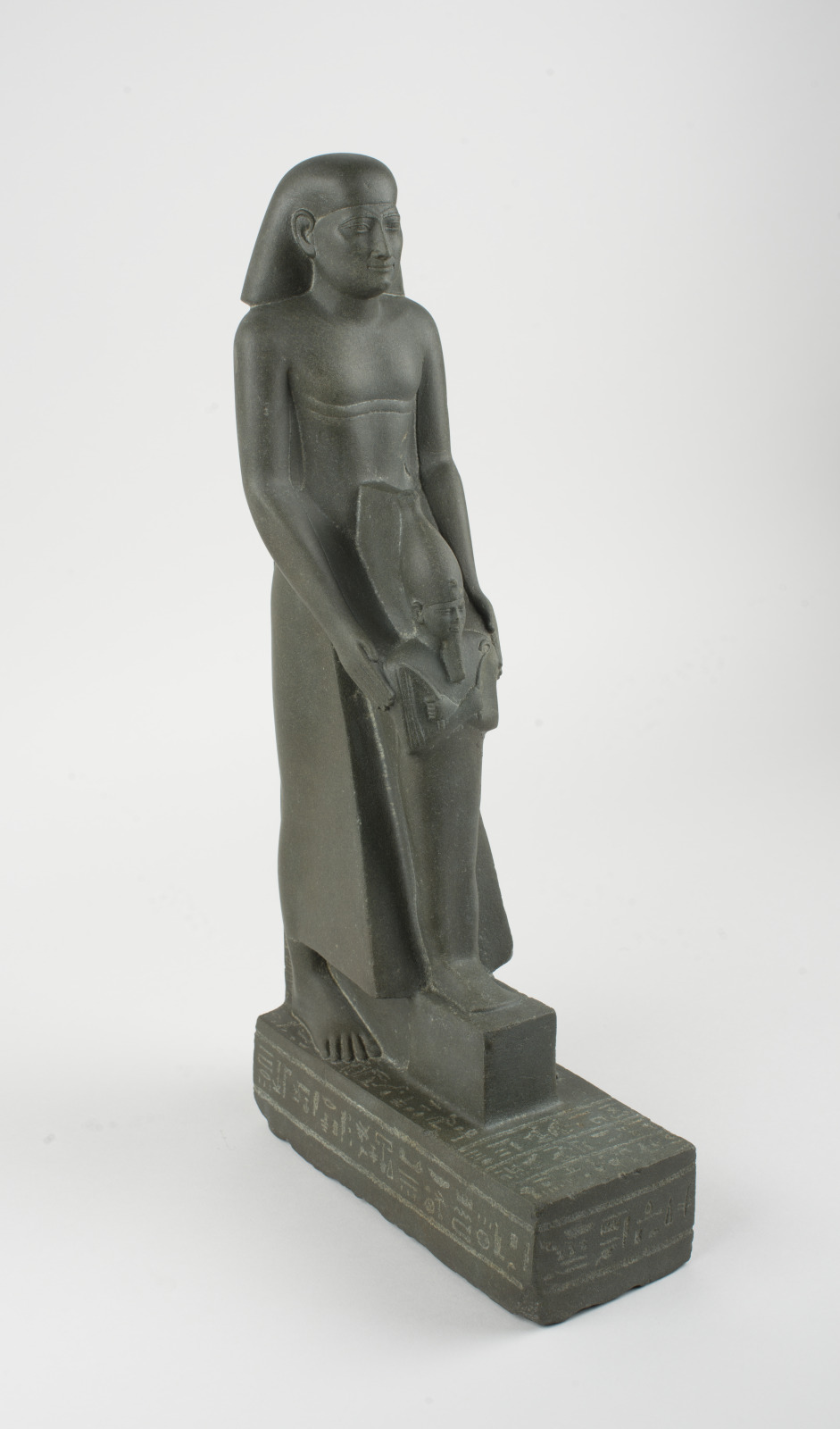
Ankh-pa-khered with Osiris, 664–610 BC; Egyptian, Late Period, or Dynasty 26 (Saite), reign of Psamtik I; greywacke; full figure height: 16 1/4 inches, base: 2 3/16 x 3 3/16 x 7 13/16 inches; Saint Louis Art Museum, Museum Purchase 222:1924
Here, Ankh-pa-khered, a priest, is shown with a statue of the god Osiris. He places his hands on the statue’s shoulders in a gesture that is intimate and protective. Ankh-pa-khered is depicted as a slim man, yet two wrinkles of fat on his chest indicate that he was prosperous enough to eat very well. And his advanced age is shown by lines that frame the corners of his mouth, yet do not detract from his dignified portrayal.
December 7, 2024
Part of a Cover with Design of Ogival Medallions

Part of a Cover with Design of Ogival Medallions, 18th century; Turkish, Turkey, Ottoman period; silk and silver thread on satin (kemha); overall: 40 1/8 x 42 5/8 inches; Saint Louis Art Museum, Bequest of Mrs. Frank H. Cook 53:1955
The design on this pieced textile imitates the pomegranate or artichoke patterns of Turkish woven silks. In the main field are twelve units in four horizontal rows, framed at top and bottom by a narrow edging of palmettes. On the left and right is a vertical row of four units set sideways and edged on the long sides with a palmette design. The numerous colors include yellow, green, pale blue, buff, cream, and deep blue-green. There are some areas where the tarnished silver threads are visible, but many of them are gone due to use.
Woven silk was an important part of the Ottoman economy and was a significant commodity yielding much income to the state coffers. It was also an indication of private wealth and ranked along with precious stones and metals as a marker of affluence.
December 6, 2024
Furness Abbey, from the south end

Roger Fenton, English, 1819–1869; Furness Abbey, from the south end, 1856; albumen print from glass negative; image: 9 3/8 x 11 3/4 inches, mount: 10 5/8 x 13 1/8 inches; Saint Louis Art Museum, Gift of David R. Hanlon in honor of Eric Lutz, PhD 29:2022
Roger Fenton’s broad panorama captures the remains of Great Britain’s largest and most architecturally elaborate monastic complex, Furness Abbey. The massive building is shown partially reclaimed by the surrounding landscape. With visiting tourists on the grounds, the photograph reflects the romantic appeal of ruins during the 19th century.
Fenton is one of the most celebrated pioneers of photography. This photograph is part of a recent donation of several hundred works by a St. Louis donor. The generous gift enriches the Museum’s holdings in the early history of the photographic medium.
December 5, 2024
Chest

Chest, c.1600; Italian; rock crystal, lacquered and gilded wood, silver with gilding, and gilded bronze; 18 7/8 x 27 7/8 x 17 1/2 inches; Saint Louis Art Museum, Friends Fund 346:1958
Like a miniature crystal palace, this Chest, or ornamental box, features hundreds of rock crystal pieces carved into twisting columns and polished into transparent lenses. The wooden frame is lacquered in black and ornamented with intricate designs of vines and flowers in gold. Birds and foliage are delicately engraved on its gilded silver floor. An object of enormous worth, this Chest was probably made to hold and partially display precious textiles. In fact, it is thought Marie de’ Medici, Queen of France (1573–1642), received a similar chest brimming with blessed baby linens from Pope Clement VIII (1536-1605) to celebrate the birth of her son.
December 4, 2024
Veranda Post
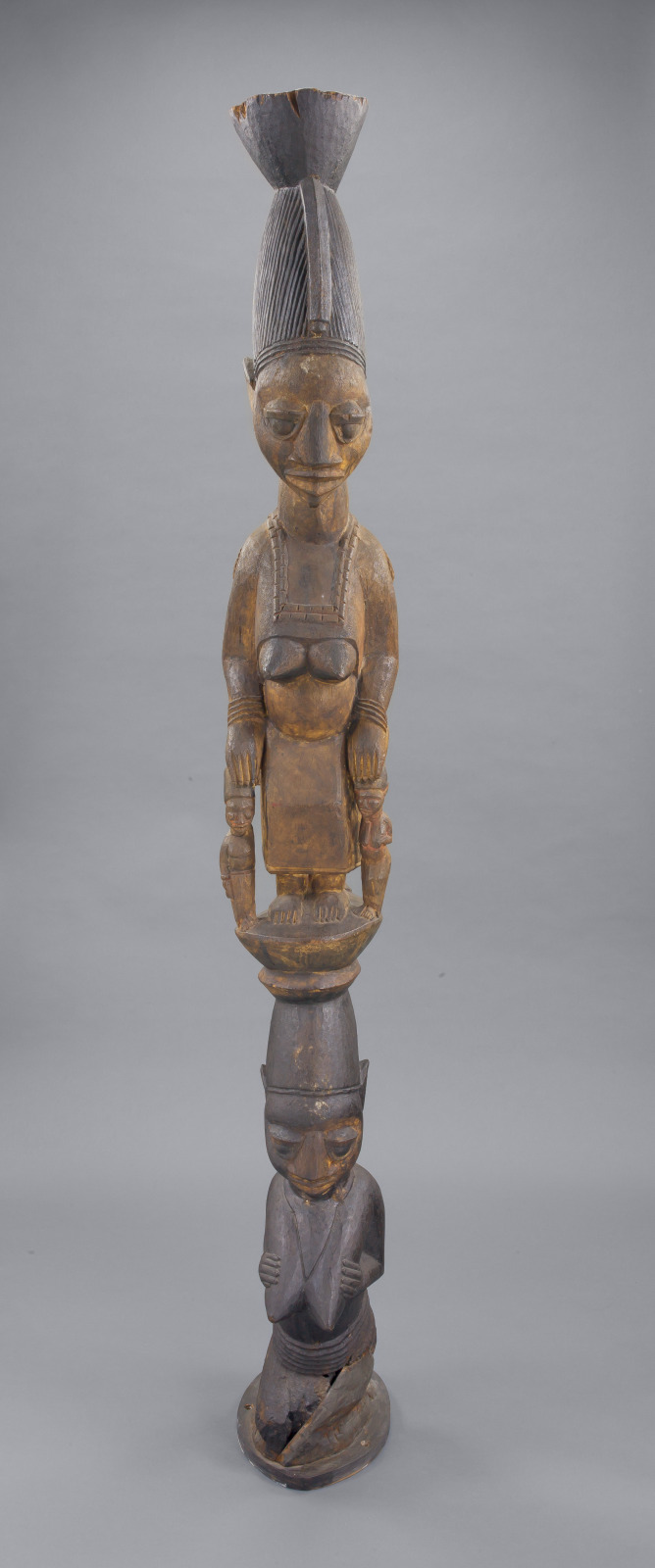
Agbonbiofe Adeshina, Yoruba, c.1880–1945; Veranda Post, c.1920s; wood, pigment; 67 1/2 x 12 5/8 x 8 1/4 inches; Saint Louis Art Museum, Gift of Milly Cohn 188:2003
The top figure’s expression and pose on this veranda post suggest tranquility and stability, essential traits of an elite Yoruba woman and mother in a chiefly household. Her elegant hairstyle and large proportion, in contrast to the other figures, further emphasize her importance. Beaded necklaces suggest she may also be a priestess. Her children, positioned below her palms and another wrapped to her back, are almost unnoticeable. A female figure below serves as a support; her kneeling pose and gesture suggest generosity and olumeye, meaning “the one knowing honor.” The sculptor Agbonbiofe was the most prominent of the Adeshina family of artists from the town of Efon-Alaaye, during the first decades of the 20th century.
December 3, 2024
Still Life with Two Large Candles

Max Beckmann, German, 1884–1950; Still Life with Two Large Candles, 1947; oil on canvas; 43 x 31 inches; Saint Louis Art Museum, Bequest of Morton D. May 858:1983
This work shows a lit, upright candle alongside a fallen and extinguished one. To the left and right are a sculpture of a female head and an arrangement of orchids. Max Beckmann used candles as traditional symbols of the fleeting nature of life; here, he places them within a modern composition of interlocking shapes, reflecting the influence of Picasso. The work is inscribed “St L” at top left, indicating that it was painted in Saint Louis, shortly after Beckmann’s arrival in our city in 1947.
Today’s object is featured in the Max Beckmann Collection Guide, a self-guided audio experience.
December 2, 2024
Victory in the Sino-Japanese War

Kubota Beisen, Japanese, 1852–1906; Victory in the Sino-Japanese War, 1894–95; triptych of hanging scrolls: ink and color on silk; image (each): 43 3/4 x 17 inches, scroll (each): 77 1/4 x 21 5/8 inches; Saint Louis Art Museum, Gift of Mr. and Mrs. Charles A. Lowenhaupt 256:2014a-c
This triptych of hanging scrolls by Kubota Beisen depicts the symbolic and actual victories of Japanese military forces during the Sino-Japanese War (1894–1895). The central scroll, with a hawk in flight over a rising sun, alludes to Japan’s military prowess while the flanking scrolls commemorate historical events. The scroll on the right presents a scene from the Battle of the Yellow Sea off the coast of China on September 17, 1894, and the left scroll shows the assault on the Hyeonmu Gate at the Battle of Pyeongyang in Korea on September 15, 1894.
Beisen and his two sons accompanied the Japanese Army in the field during the Sino-Japanese War and recorded observations in texts and images.
December 1, 2024
December

Gerhard Richter, German, born 1932; December, 1989; oil on canvas; installed: 126 inches x 13 feet 1 1/2 inches; Saint Louis Art Museum, Funds given by Mr. and Mrs. Donald L. Bryant Jr., Mrs. Francis A. Mesker, George and Aurelia Schlapp; Mr. and Mrs. John E. Simon, and the estate of Mrs. Edith Rabushka in memory of Hyman and Edith Rabushka, by exchange 29:1990a,b; © Gerhard Richter
This monumental diptych, along with its companion pieces (November and January), evokes a somber and mysterious mood. When seen together they create an enveloping environment not unlike the experience of a nocturnal landscape glimpsed through the rain-spattered window of a moving car. Gerhard Richter created the sense of movement in these works by dragging large squeegee spatulas across the canvases, simultaneously applying new paint while scraping off previous layers. Although they are entirely abstract, the paintings have a blurred quality and predominantly black and white palette that paradoxically suggest photographic images. The titles of the three diptychs provide some historical grounding and clues to their interpretation. In November of 1989, forty years of a divided Germany collapsed as the East German government succumbed to mass demonstrations and opened the Berlin Wall. Richter, who was born in East Germany and had fled to the west a few months before the wall was built in 1961, had a complex response to these events. While a celebratory mood prevailed in the streets and the media at the time, it appears as if Richter condensed the emotional and political uncertainty of these cataclysmic changes and the questions arising from them into these massive paintings in which past, present, and future are submerged in layers of paint.
November 30, 2024
Golden Harvest Textile
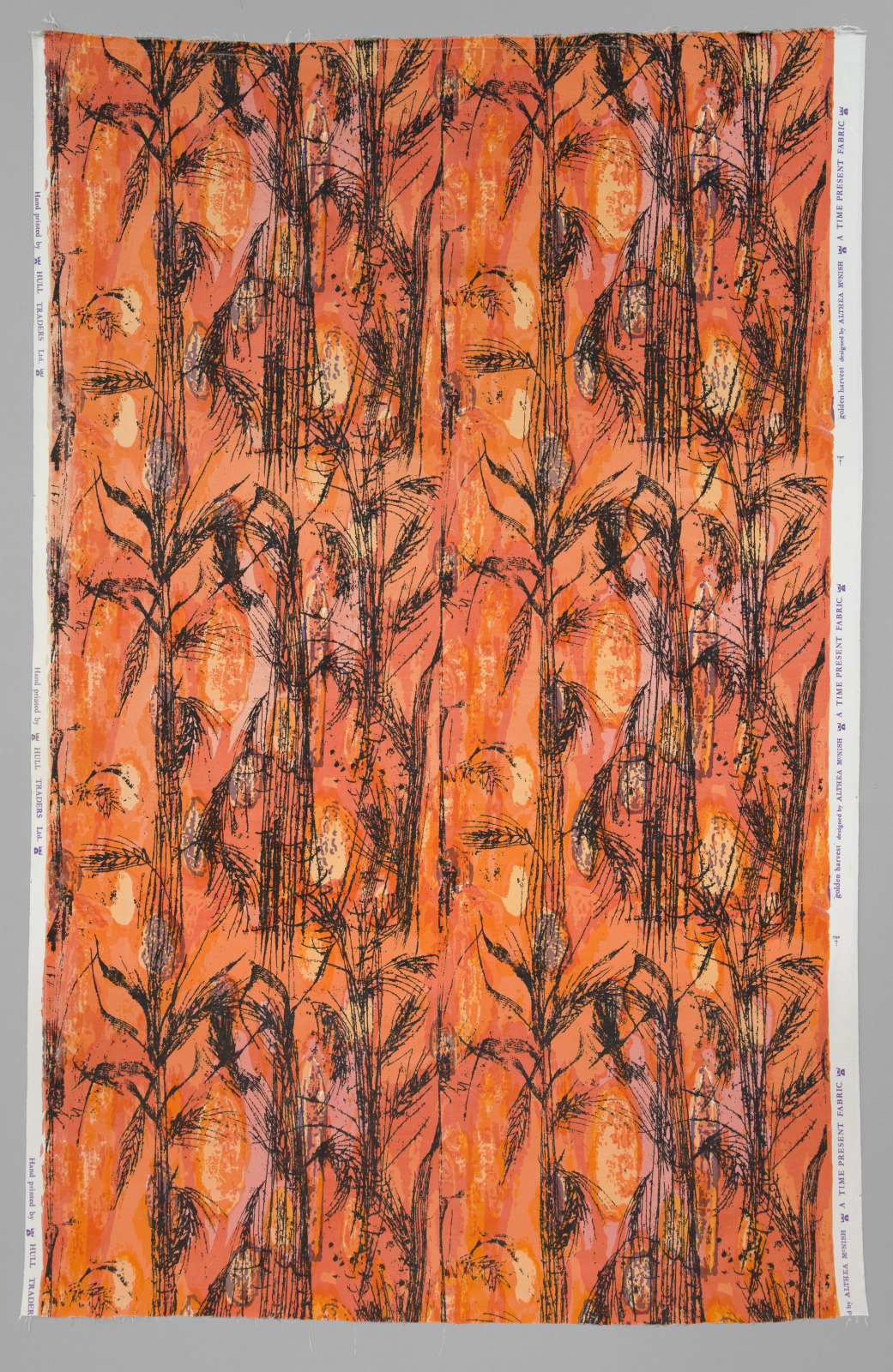
Althea McNish, English (born Trinidad), 1924–2020; fabricated by Hull Traders, London, England, founded 1958; Golden Harvest Textile, 1959; screen-printed cotton; 76 x 50 inches; Saint Louis Art Museum, Richard Brumbaugh Trust in memory of Richard Irving Brumbaugh and Grace Lischer Brumbaugh 41:2021
Stalks of wheat form a sketchy mesh across a field of fiery orange and yellow in this printed cotton fabric by Trinidad-born designer Althea McNish. McNish was a close observer of nature, relishing the rare plants cultivated in Britain’s many botanical gardens as well as her adopted home’s common flora. The painterly strokes and intense colors of Golden Harvest Textile were inspired by a walk through a Sussex wheat field: “I can feel it now, how the sun was shining down on me and how I seemed lost in the wheat. Nobody could see me!”
November 29, 2024
Transitional Weaving
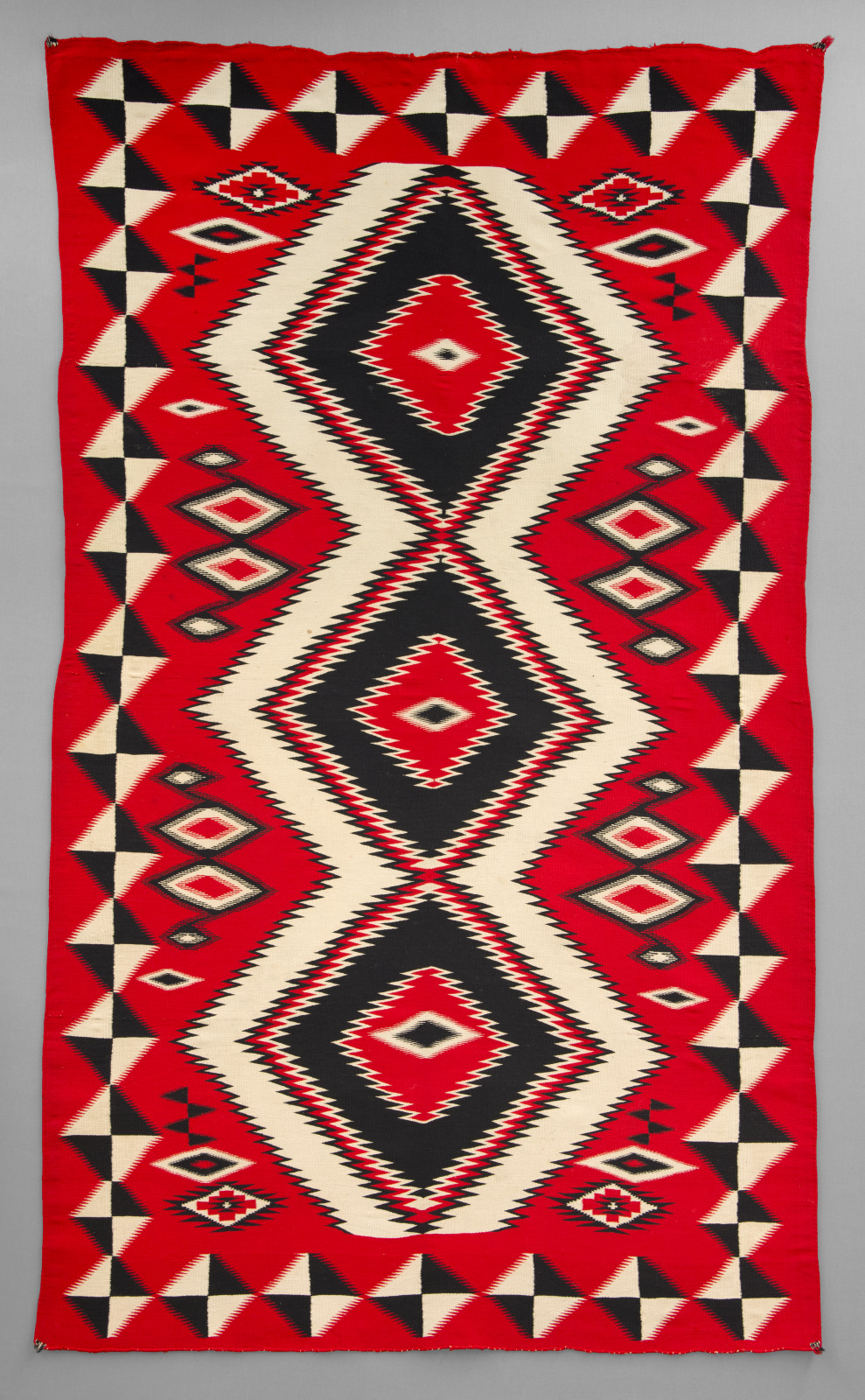
Diné (Navajo) artist; Transitional Weaving, c.1890; wool and dye; 100 x 60 inches; Saint Louis Art Museum, Gift of Elissa and Paul Cahn 243:2017
The black-and-white diamond border, vertical orientation, and large size of this work relate to a period of change in Diné textiles. Previously, designs on smaller wearing blankets and dresses ran across the entire textile, horizontally from side to side.
During the last decades of the 19th century, weavers transitioned from creating garments to producing home decor such as rugs. New domestic markets emerged in the Southwest tourist industry and across the United States through mail order catalogs and department stores. In hopes of capitalizing on American consumer tastes, some wholesalers introduced Diné weavers to the bordered designs of Ottoman textiles, at the time purchased widely for interior decoration.
November 28, 2024
Side Table
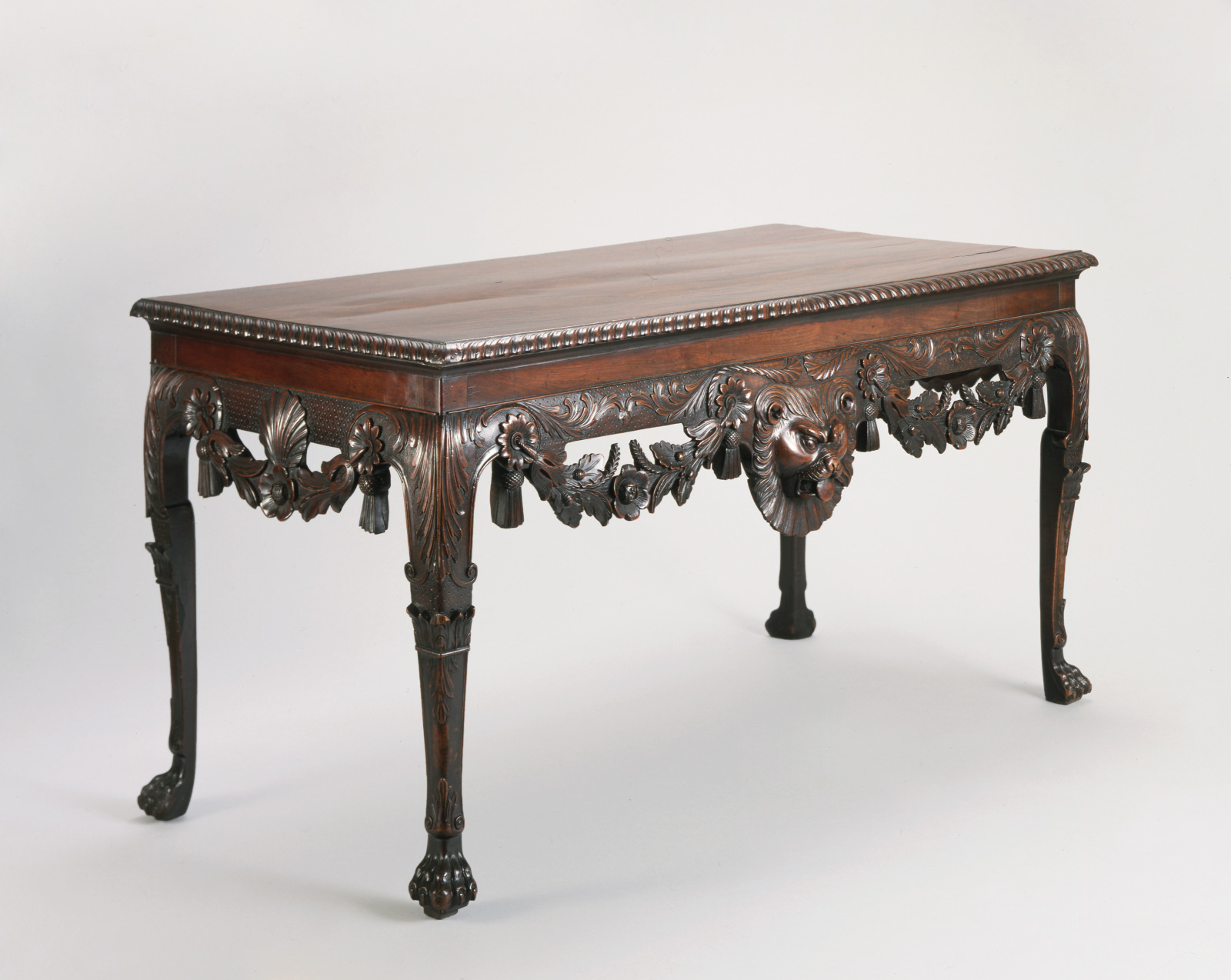
Side Table, c.1750; Irish, Dublin; mahogany, oak, and pine; 32 1/4 x 64 1/2 x 29 7/16 inches; Saint Louis Art Museum, Museum Purchase 827:1940
The lion, shells, and wheat motifs carved on this table are symbols of deities in Roman mythology. The lion stands for Bacchus, god of wine. The shells and garlands of flowers represent Venus, goddess of love, and wheat represents Ceres, goddess of the harvest. Together these symbols express the poetic idea that wine and feasting stimulate love. This festive message was appropriate for a grand dining room, where this table would have been used.
November 27, 2024
The Knitting Lesson
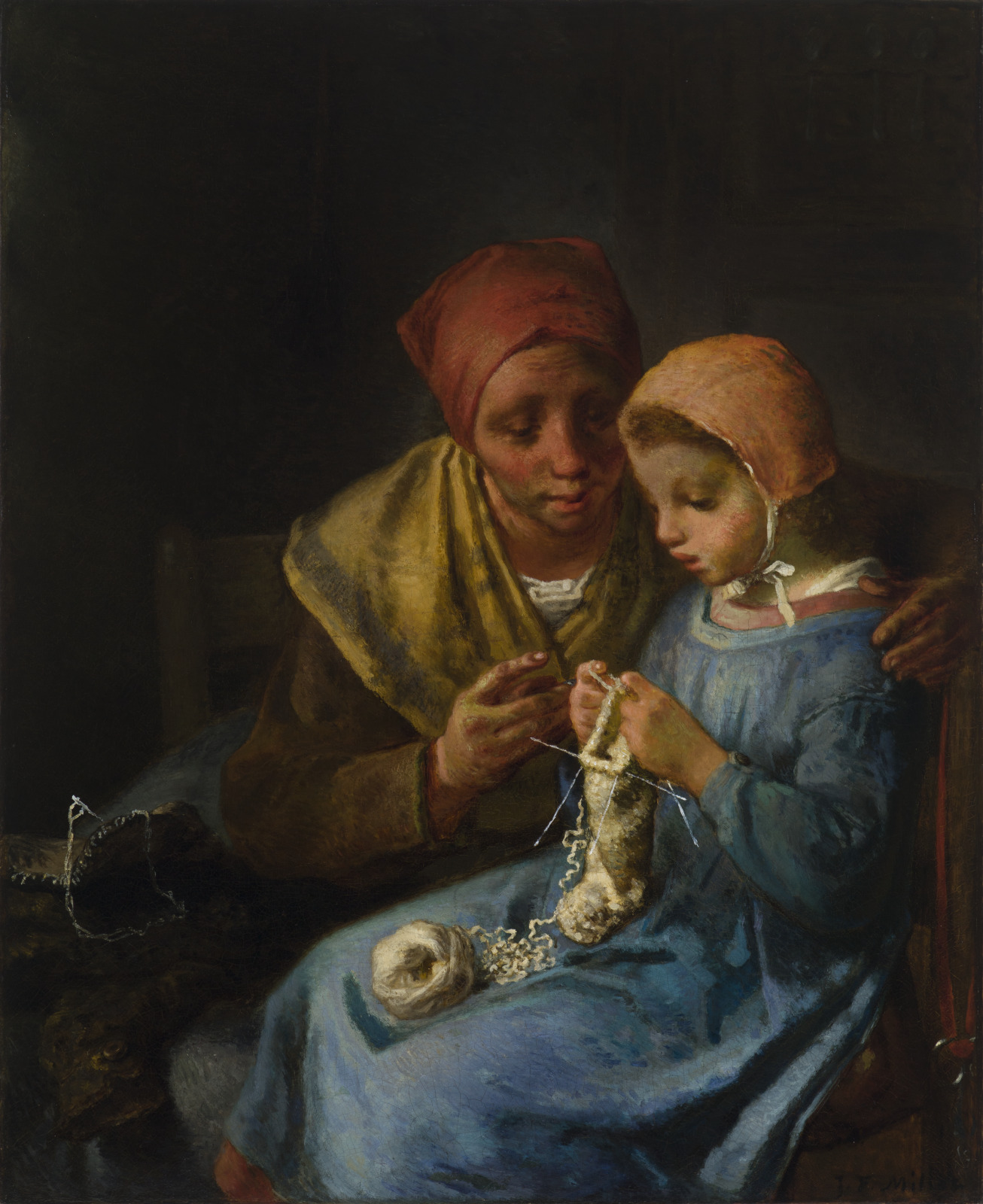
Jean-Francois Millet, French, 1814–1875; The Knitting Lesson, 1869; oil on canvas; 39 7/8 x 32 3/4 inches; Saint Louis Art Museum, Museum Purchase 106:1939
This image depicts a tender moment as a mother teaches her daughter to knit. The girl is absorbed in her work on a sock, using four needles and a ball of white yarn. The ability to make and mend clothing was an important skill for women within rural communities during Millet’s lifetime. Millet’s painting was inspired by study of his wife, Catherine Lemaire, and one of his six daughters. This painting was shown at the 1869 Salon, the annual French state-sponsored art exhibition, where it attracted praise for its sensitive portrayal.
November 26, 2024
Warming Bowl (seungban) with Design of Lotus Blossoms
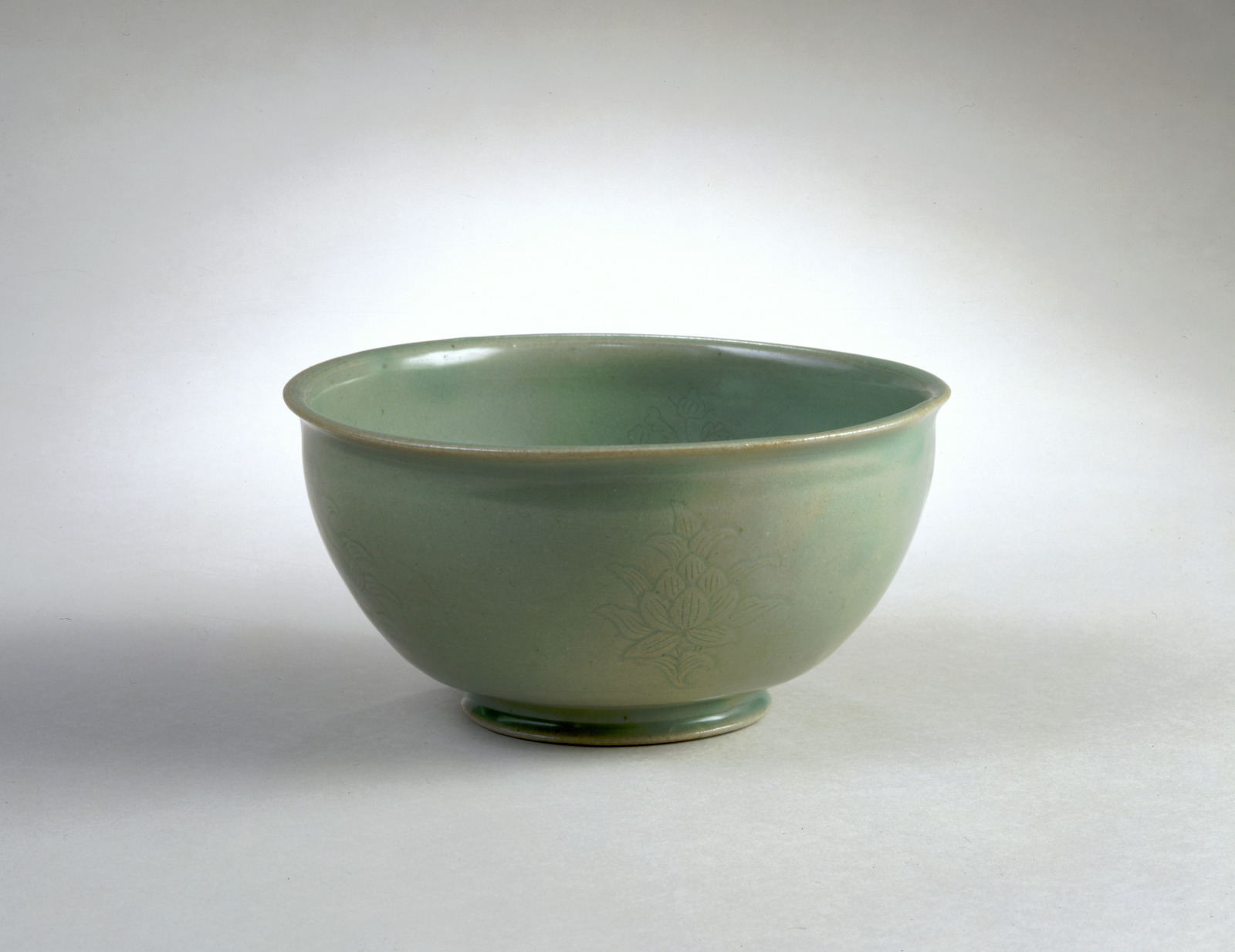
Warming Bowl (seungban) with Design of Lotus Blossoms, 12th century; Korean, Goryeo dynasty; stoneware with incised decoration under celadon glaze; diameter: 6 1/2 inches; Saint Louis Art Museum, Museum Purchase 170:1916
This celadon-glazed bowl has a delicately incised floral pattern and exceptional blue-green color. Such beauty in Korean ceramics was admired, even by the discriminating Chinese who unabashedly wrote of the remarkable “green wares of the Goryo,” during the early twelfth century, when its finest ceramics rivaled imperial Chinese wares. The form of the bowl’s lip and foot distinguish this very rare work from other Goryo ceramics because they are closely modeled on Chinese palace wares.
November 25, 2024
Pitcher and Fruit Bowl
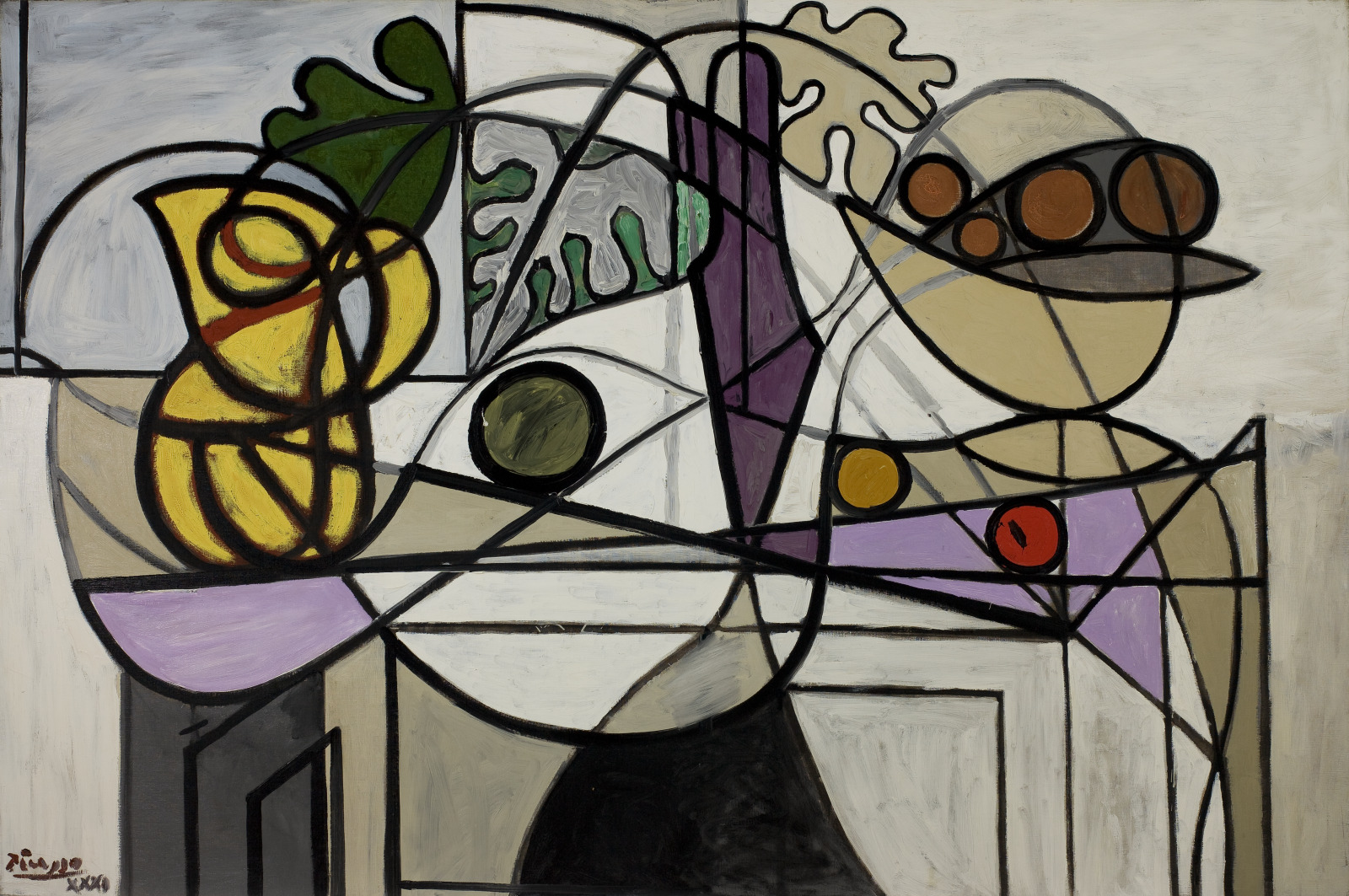
Pablo Picasso, Spanish, 1881–1973; Pitcher and Fruit Bowl, 1931; oil on canvas; 51 1/4 x 76 3/4 inches; Saint Louis Art Museum, Bequest of Morton D. May 932:1983; © 2024 Estate of Pablo Picasso / Artists Rights Society (ARS), New York
A pitcher, a philodendron plant, and a basket of fruit rest on a mantelpiece and are bound together by sweeping black lines. Pablo Picasso often invested his still lifes with secret meanings, and this work is a disguised portrait of his young and voluptuous lover, Marie-Thérèse Walter. The pitcher is painted in the brilliant yellow often used to represent Marie-Thérèse’s hair while the green apple suggests the form of her breast and the curling black lines refer to the contours of her body.
November 24, 2024
Vase
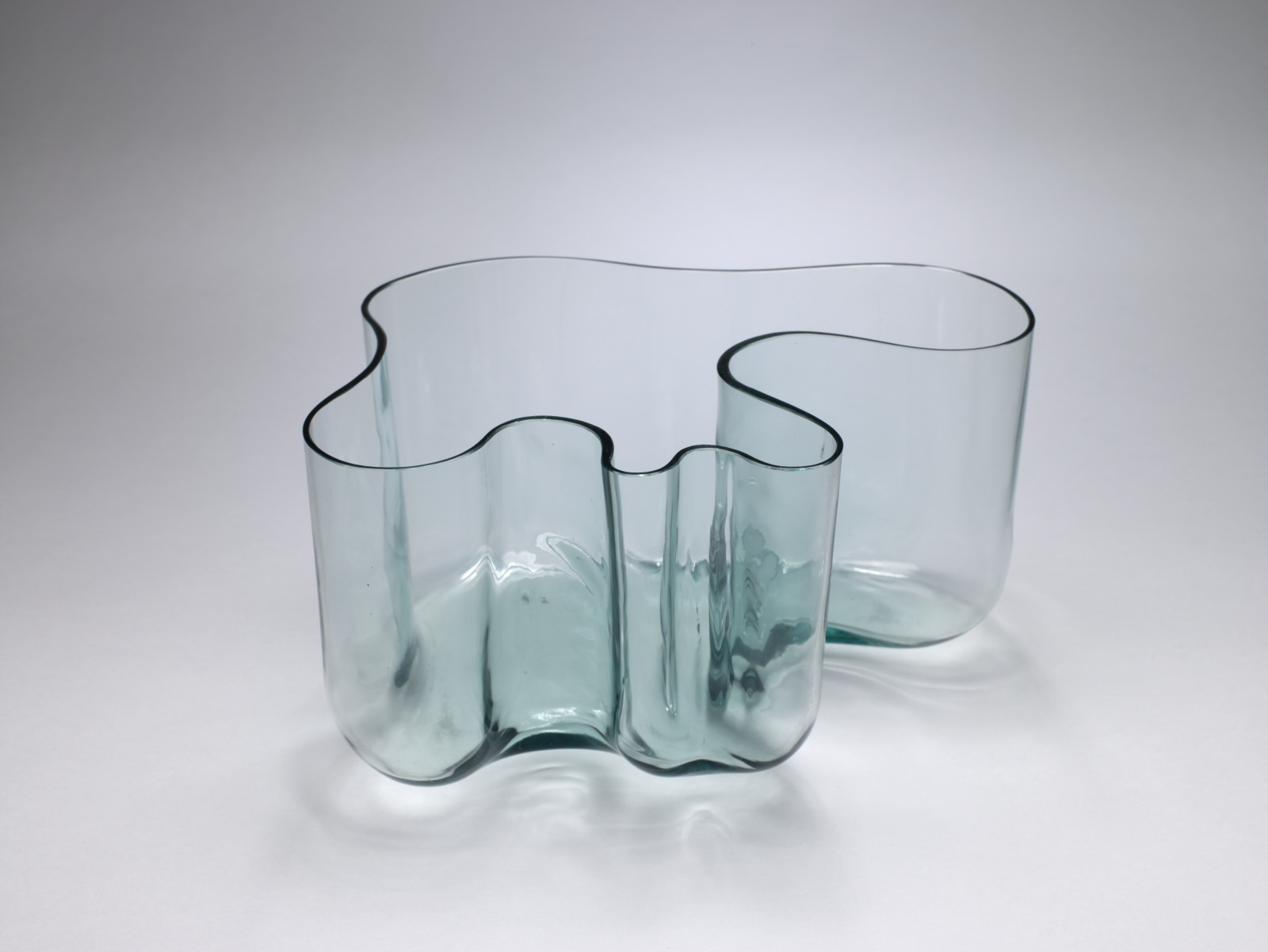
designed by Alvar Aalto, Finnish, 1898–1976; made by Karhula-Iittala Glassworks, Iittala, Finland, founded 1881; Vase, 1936–37; mold-blown glass; 5 1/2 x 9 1/2 x 7 1/2 inches; Saint Louis Art Museum, Funds given by Mrs. Charles W. Lorenz in honor of Clara Van Zanten 192:1993
For the Finnish architect Alvar Aalto, harmony with nature was fundamental. The fluidity of glass was an ideal medium in which to express the organic shapes he found so inspiring. This vase’s transparent, undulating walls and reflective surfaces could be metaphors for the Finnish landscape: the amoeba-like shape resembles an island or even the sea between islands in the Scandinavian archipelago. The rippled surfaces of its walls are impressions from the charred interior of the wooden mold into which the molten glass was blown. The vase’s form is consistent with the rhythmic contours that first appeared in Aalto’s architecture, interiors, and plywood furniture during the early 1930s. Still mass-produced today, it was among the earliest examples of a free-form, utilitarian object.
November 23, 2024
Landscape with a Horse

Edward Middleton Manigault, Canadian (active United States), 1887–1922; Landscape with a Horse, 1912; oil on canvas; 27 x 33 inches; Saint Louis Art Museum, Gift of John and Susan Horseman, in honor of Melissa Wolfe, Curator of American Art 105:2019
The golden, glowing sky sets the tone for this visionary scene. A horse, castle, and foliage emerge from the darkened, jewel-toned landscape, whose trees cast anxious silhouettes. Edward Middleton Manigault is known for his insistent experimentation. His works are remarkable for their decorative sense and imaginative, otherworldly spirit, as seen here. Manigault later served as an ambulance driver in World War I (1914–1918), where he was exposed to mustard gas. In the years following his discharge, he began fasting as an attempt to “approach the spiritual plane and see colors not perceptible to the physical eye.” This practice exacerbated his poor health, and at the age of 35 he collapsed and died.
November 22, 2024
St. Thomas Aquinas Confounding Averroës
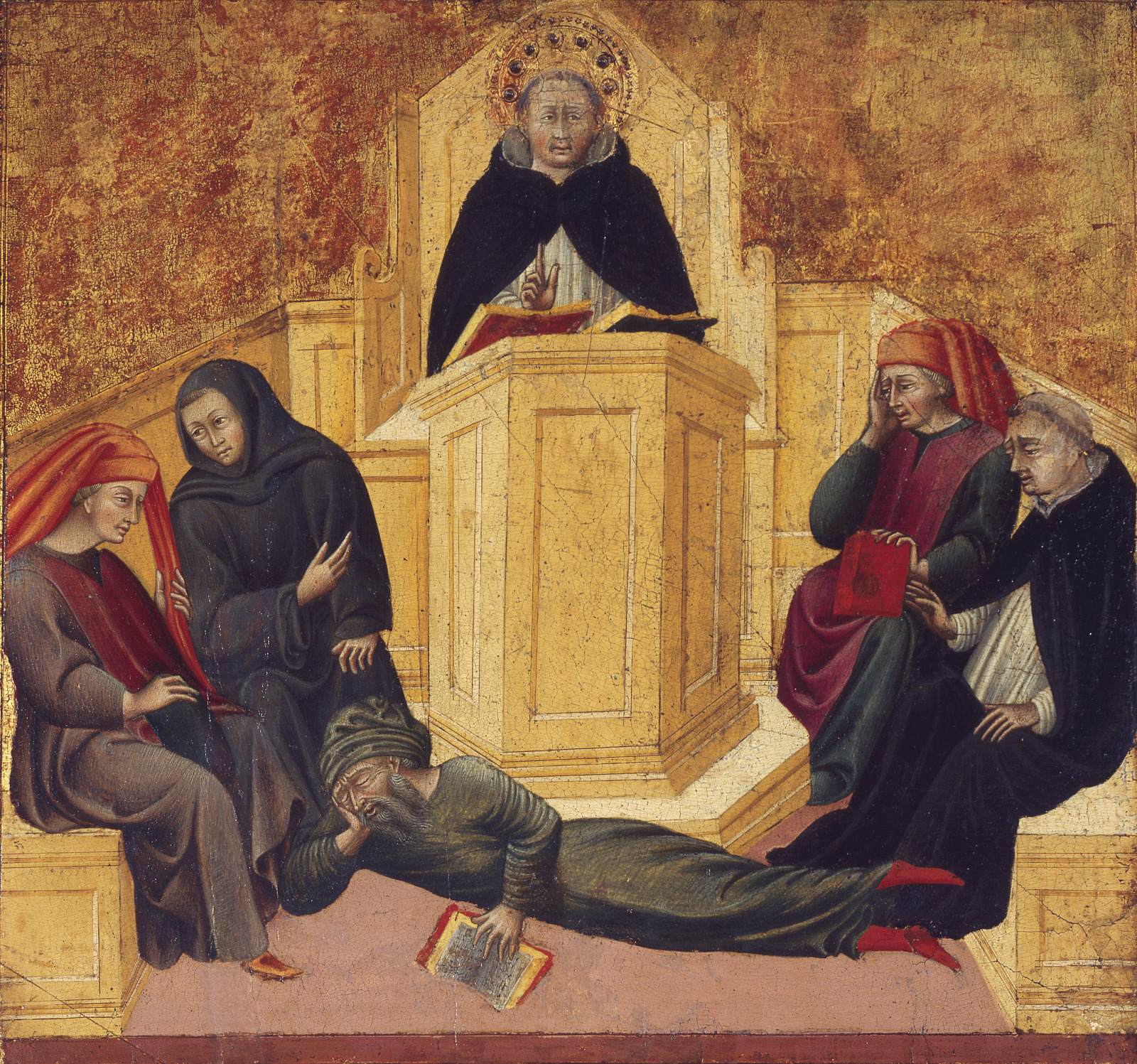
Giovanni di Paolo, Italian, c.1399–1482; St. Thomas Aquinas Confounding Averroës, 1445–50; tempera and gold leaf on panel; 9 3/4 x 10 5/16 inches; Saint Louis Art Museum, Museum Purchase 56:1941
Saint Thomas Aquinas (1225 or 1227–1274) stands at the lectern flanked by Christian thinkers discussing the sleeping Muslim philosopher Averroës (1126–98). By placing Saint Thomas directly above the prone figure, the artist symbolically elevates Aquinas’s teachings over those of Averroës. Originally a cover for the Sienese treasury’s records, this panel included a lower half with the heraldic emblems of the treasury officers’ families, similar to the example illustrated here. The tops of some insignia are just visible along the panel’s cut lower edge.
November 21, 2024
Pheasant and Pine
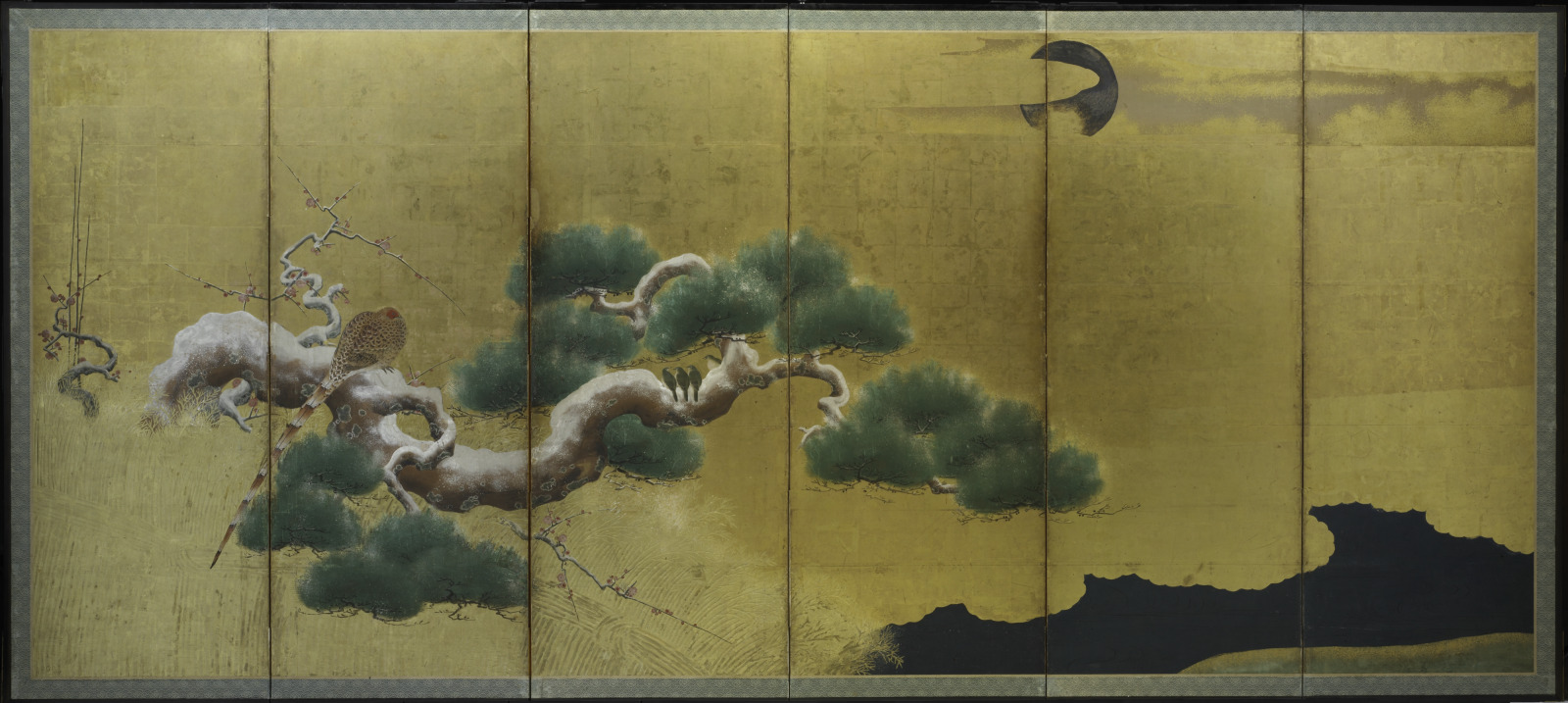
Kanō Kōi, Japanese, 1564/69–1636; Pheasant and Pine, c.1626; six-panel folding screen; ink, color, and gold on paper; 67 inches x 12 feet 5 5/8 inches; Saint Louis Art Museum, Funds given by Mary and Oliver Langenberg, Mr. and Mrs. Richard A. Liddy, and Susan and David Mesker 105:2002
The pictorial clarity and crisp, clean style of this shimmering screen contrast with its dark, nighttime theme. High among the golden clouds is a tarnished silver moon, casting its frail light on a late winter scene of pink, blossoming plum flowers and a snow-laden pine. A large, male pheasant with a long, ornamental tail roosts on the trunk while four bush warblers, known for their first song of spring, perch on a bough. Just above them are clusters of soft, gold-streaked pine needles. The splendor of the painting is enhanced by the low relief of a brushwood fence in gold leaf. This fence is balanced by the swirling eddies of an azurite blue stream and a low bank of malachite green. The screen’s spare, abstract style was a particular contribution of Kanō Kōi to Japanese painting.
November 20, 2024
Lamentation

Kathe Kollwitz, German, 1867–1945; Lamentation, 1938–41; bronze; 10 9/16 x 10 1/2 x 3 7/8 inches; Saint Louis Art Museum, Gift of Mr. and Mrs. Joseph Pulitzer Jr. 593:1958
In this sculpture, a woman with lowered eyes covers her mouth in an expression of intense but silenced grief. Her features resemble those of the artist, Käthe Kollwitz. The first female member and titled professor at the Prussian Academy of Arts, Kollwitz was known for her empathetic depictions of tragedy and hardship. This work is her response to the death of a close friend, sculptor Ernst Barlach (1879–1938), who had suffered persecution by the Nazi (National Socialist) regime. Kollwitz also faced censorship and oppression by Nazi authorities and was forced to resign her teaching position at the Academy in 1933.
November 19, 2024
Balustrade
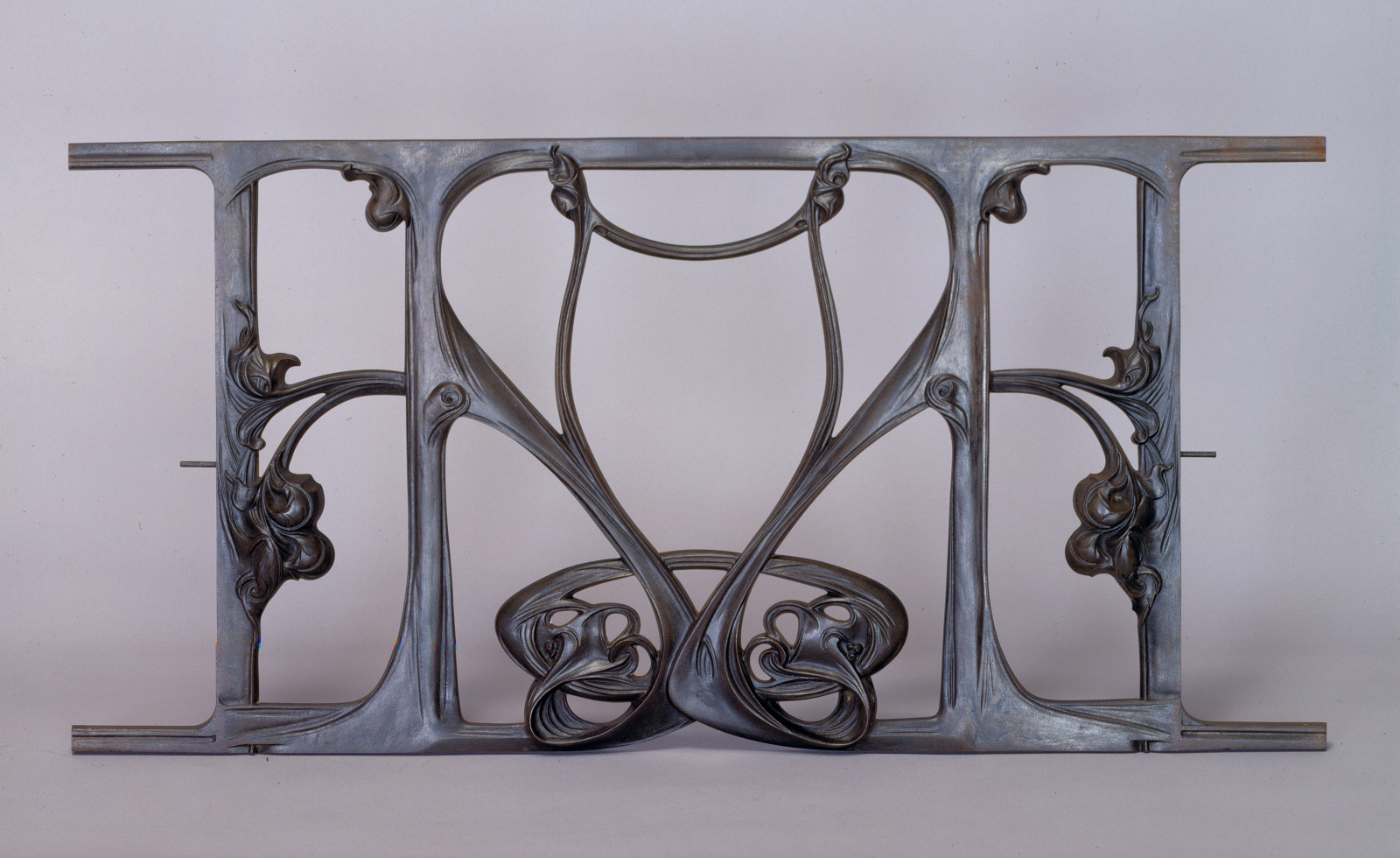
designed by Hector Guimard, French, 1867–1942; made by Fonderies de Saint-Dizier, Saint-Dizier, France; Balustrade, 1905; cast iron; 16 5/8 x 34 x 1 1/4 inches; Saint Louis Art Museum, Richard Brumbaugh Trust in memory of Richard Irving Brumbaugh and in honor of Grace Lischer Brumbaugh; additional funds given by Isabelle and Jean-Paul Montupet, Dr. and Mrs. F. Thomas Ott, and David and Molly Ott 193:1993
Nature was the primary source of inspiration for the French architect Hector Guimard, who animated his designs with abstract clusters of buds, unfurling plant forms, and writhing tendrils. Guimard sought a new mode of expression that broke from historical styles. Rather than applying the ornament as separate decorative elements, he worked like a sculptor, fusing structure and ornament, often creating linear whiplash contours that conveyed movement. During the Art Nouveau period, architects worked in a variety of materials, designing not only entire buildings and architectural ornaments, but their interiors and furnishings as well.
November 18, 2024
Aquarium
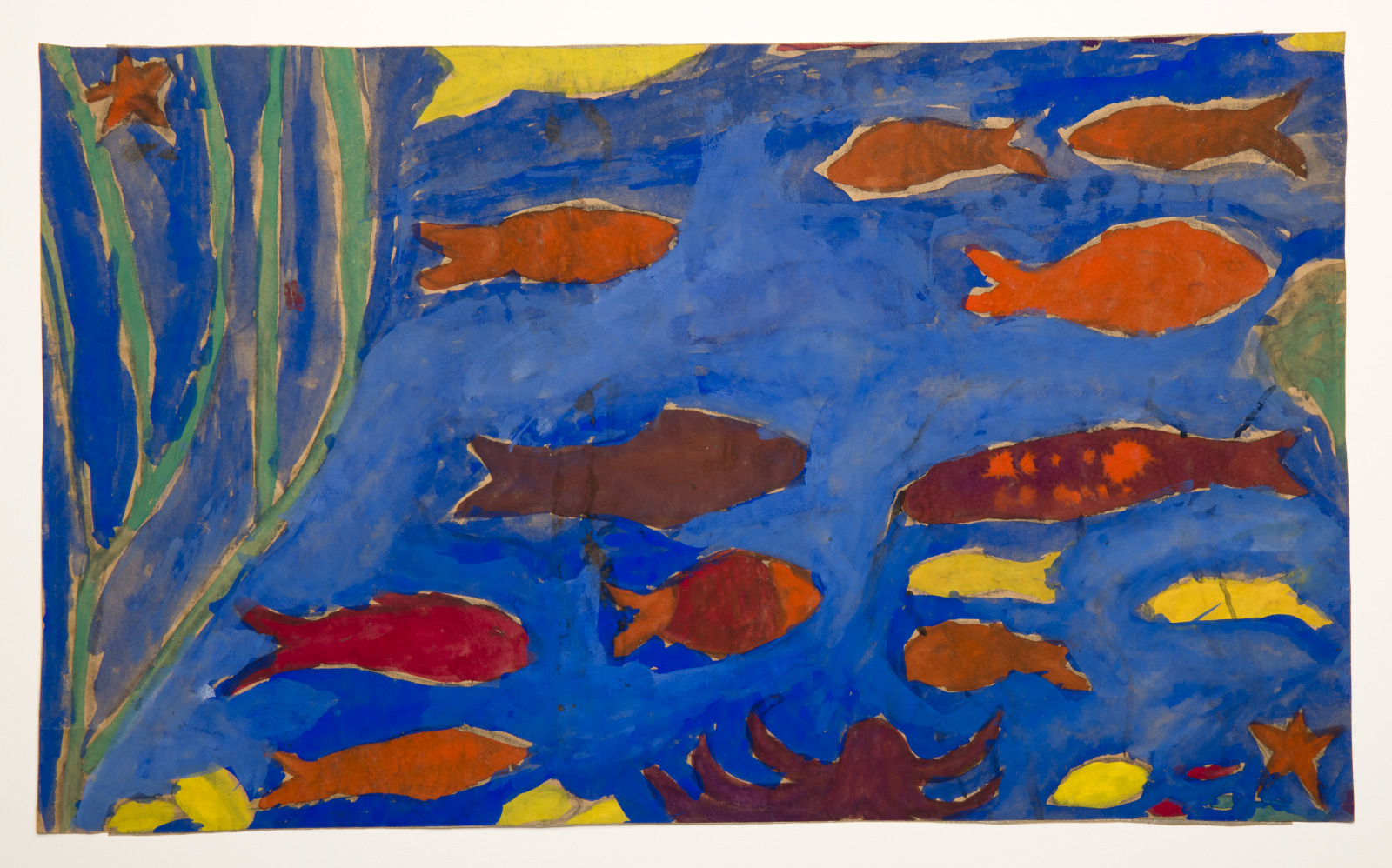
Weldon Sugarmon, American, 1924–2023; Aquarium, 1938; poster paint on brown paper; 11 3/4 x 19 1/4 inches; Saint Louis Art Museum, Gift of the Federal Works Agency, Work Projects Administration 401:1943
Vibrant contrasting colors shimmer across this exuberant and experimental color study. Weldon Sugarmon was 13 years old when she made this painting in the free art classes at the LeMoyne Federal Art Center in Memphis, Tennessee. Between 1936 and 1943, the Work Projects Administration opened 107 community arts centers across the country in order to provide the general public with direct access to the arts. The artist later settled in St. Louis, where she raised her family and fought for social equality and legal justice through civic volunteerism.
November 17, 2024
Infant

Infant, mid-1st century BC–mid-1st century AD; Greek, Egypt, Late Hellenistic; or Roman, Egypt, Imperial period; bronze with silver inlay; height: 24 3/4 inches; Saint Louis Art Museum, Museum Purchase 36:1926
This sculpture’s sturdy figure, solid stance, and mature face are at odds with the idea of a helpless, innocent child. Made at a time when accurate depictions of age, both old and young, were popular, this sculpture seems somehow supernatural and suggests a mythological figure rather than an anonymous depiction of an infant. Zeus, king of the gods, had two sons, Herakles and Dionysus who were sometimes depicted as babies. The infant, Herakles survived an assassination attempt by gleefully strangling the snakes sent to his bed. Baby Dionysus was fostered as an infant far from the prying eyes of Zeus’s jealous wife, Hera. Without the arms or any characteristic attributes, it is impossible to securely identify who this sculpture represents.
November 16, 2024
Portrait of a Woman
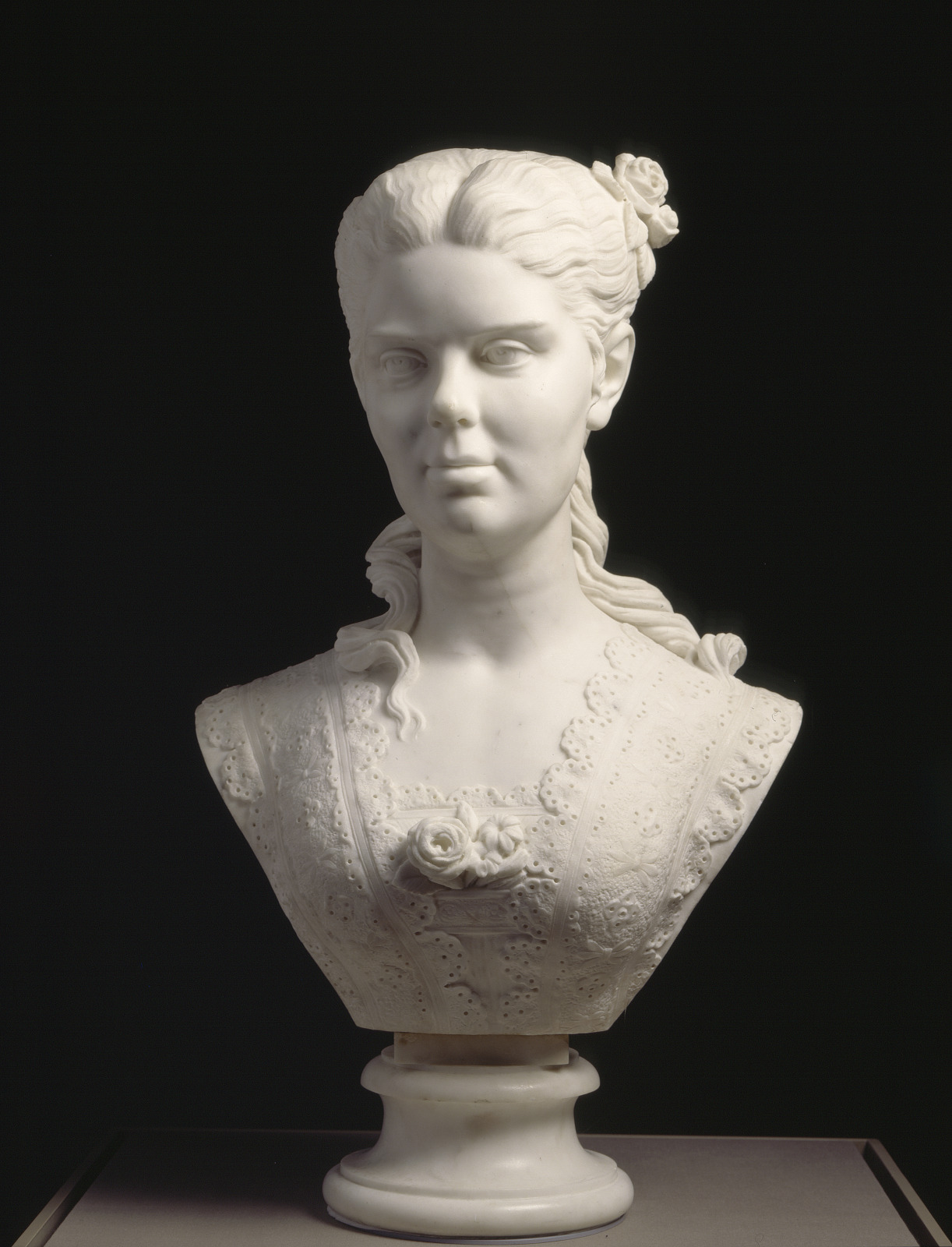
Edmonia Lewis, American, 1844–1907; Portrait of a Woman, 1873; marble; without base: 23 x 16 1/2 x 11 1/4 inches; Saint Louis Art Museum, Museum Minority Artists Purchase Fund and partial gift of Thurlow E. Tibbs Jr. 1:1997
-
Bust of James Peck Thomas
![2002.3]()
Edmonia Lewis, American, 1844–1907; Bust of James Peck Thomas, 1874; marble; 22 x 18 x 10 inches; Allen Memorial Art Museum, Oberlin College, R. T. Miller Jr. Fund, 2002.3
Soft facial features, a delicately carved lace bodice, and wavy hair adorned with a flower communicate not only the taste and beauty of the unknown sitter, but also Edmonia Lewis’s skill as a sculptor. Lewis’s successful early career helped her finance a move to Rome in 1867, where she lived among fellow American women sculptors, including Harriet Hosmer. There, Lewis was the first American of color to gain international fame as a sculptor, and she completed many portrait commissions for visiting tourists and patrons in the United States.
November 15, 2024
The Mountain
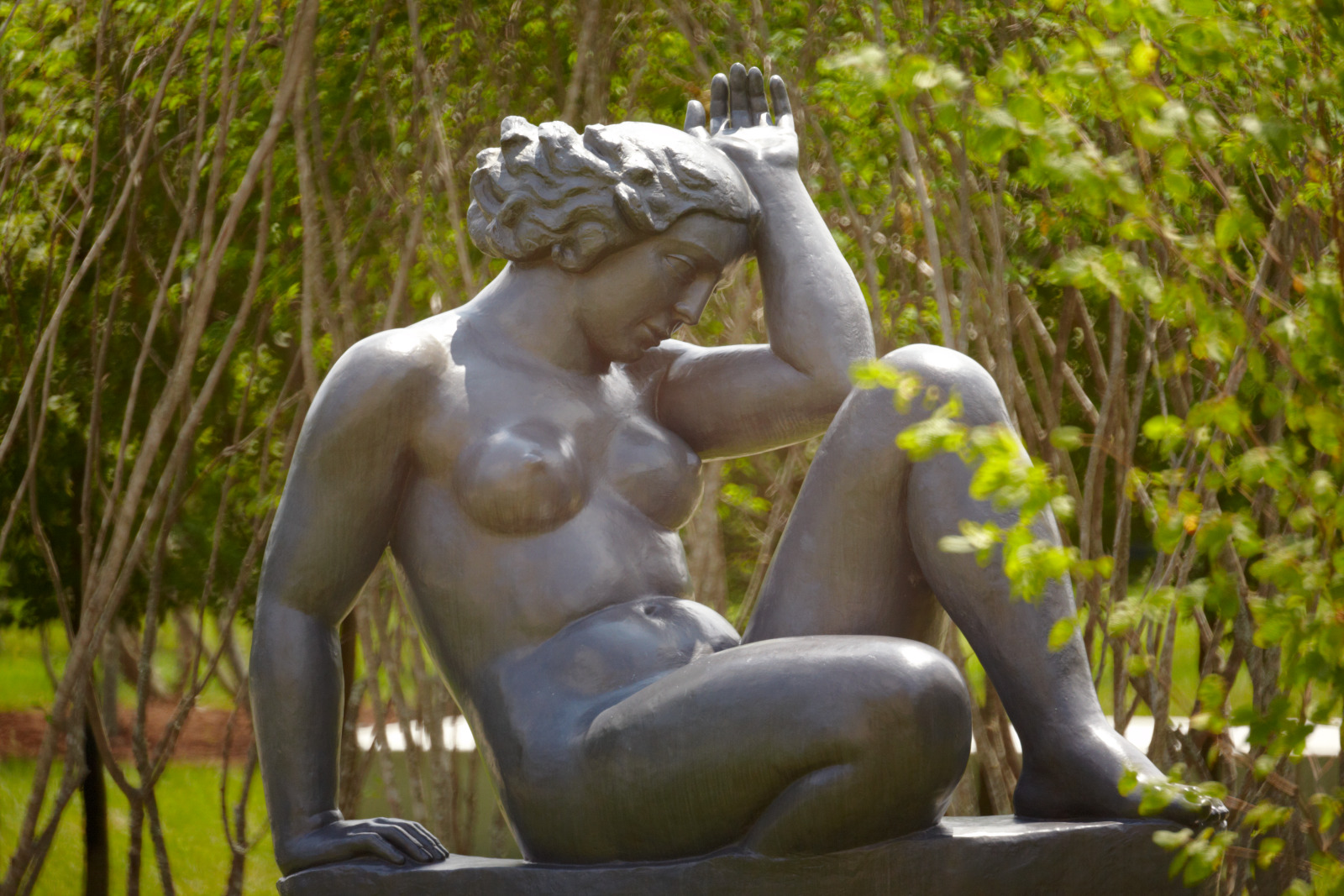
Aristide Maillol, French, 1861–1944; The Mountain, 1937; lead; 65 3/4 x 72 3/4 x 29 1/2 inches; Saint Louis Art Museum, Funds given by Mr. and Mrs. Sydney M. Shoenberg and Mr. and Mrs. Sydney M. Shoenberg Jr., by exchange 233:1980
A seated female figure bends over with one knee raised in a triangular form that suggests a mountain. Her lower right leg is embedded in the statue’s base, expressing a sense of union with the earth. Aristide Maillol concentrated on the female nude throughout his long career. This work was modeled on his teenage model and muse Dina Vierny. The monumentality of the sculpture is offset by the movement of her wind-blown hair.
November 14, 2024
Log Cabin Quilt
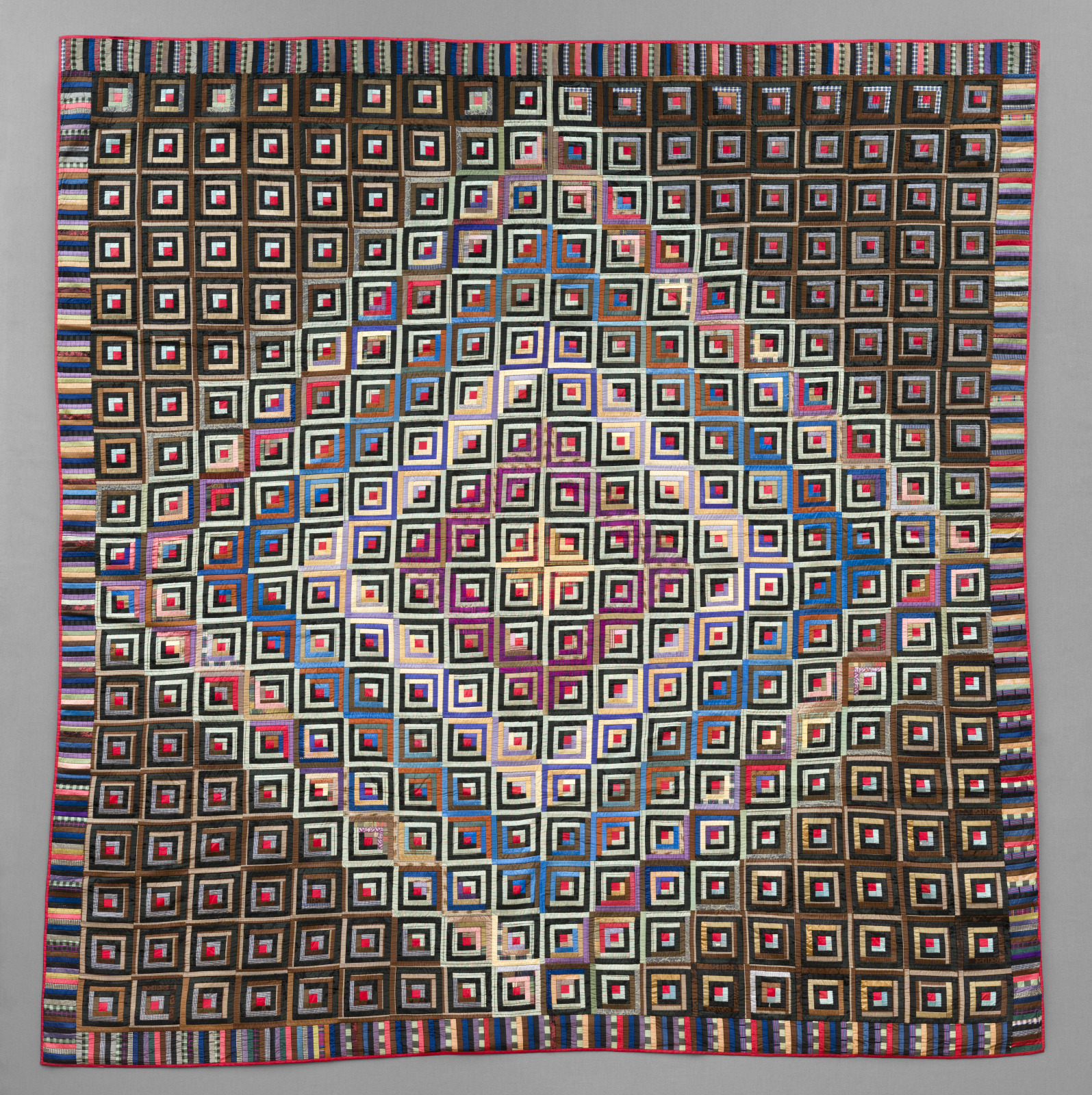
Mary Kelly, American, 1833–1912; Log Cabin Quilt, late 19th century; pieced silk, cotton backing; 81 x 77 inches; Saint Louis Art Museum, Gift of Mr. and Mrs. Harry L. Monteith 20:1984
From a distance, this quilt’s striking diamond-shaped pattern catches the eye, but closer inspection reveals that the diamonds are created from many small squares. The design is called Barn Raising, a variation of the traditional Log Cabin pattern. Each small square block is made up of 16 rectangular fabric pieces (logs) around a red center square, the hearth at the center of the cabin. The quilter joined the squares, arranging their light and dark halves to create the larger light and dark concentric diamonds.
Made in St. Louis by Mary Kelly, wife of James Kelly, an Irish-born riverboat pilot, this treasured family heirloom was passed down through several generations of Mary’s descendants, who gifted it to the Saint Louis Art Museum.
November 13, 2024
The Tribulations of St. Anthony
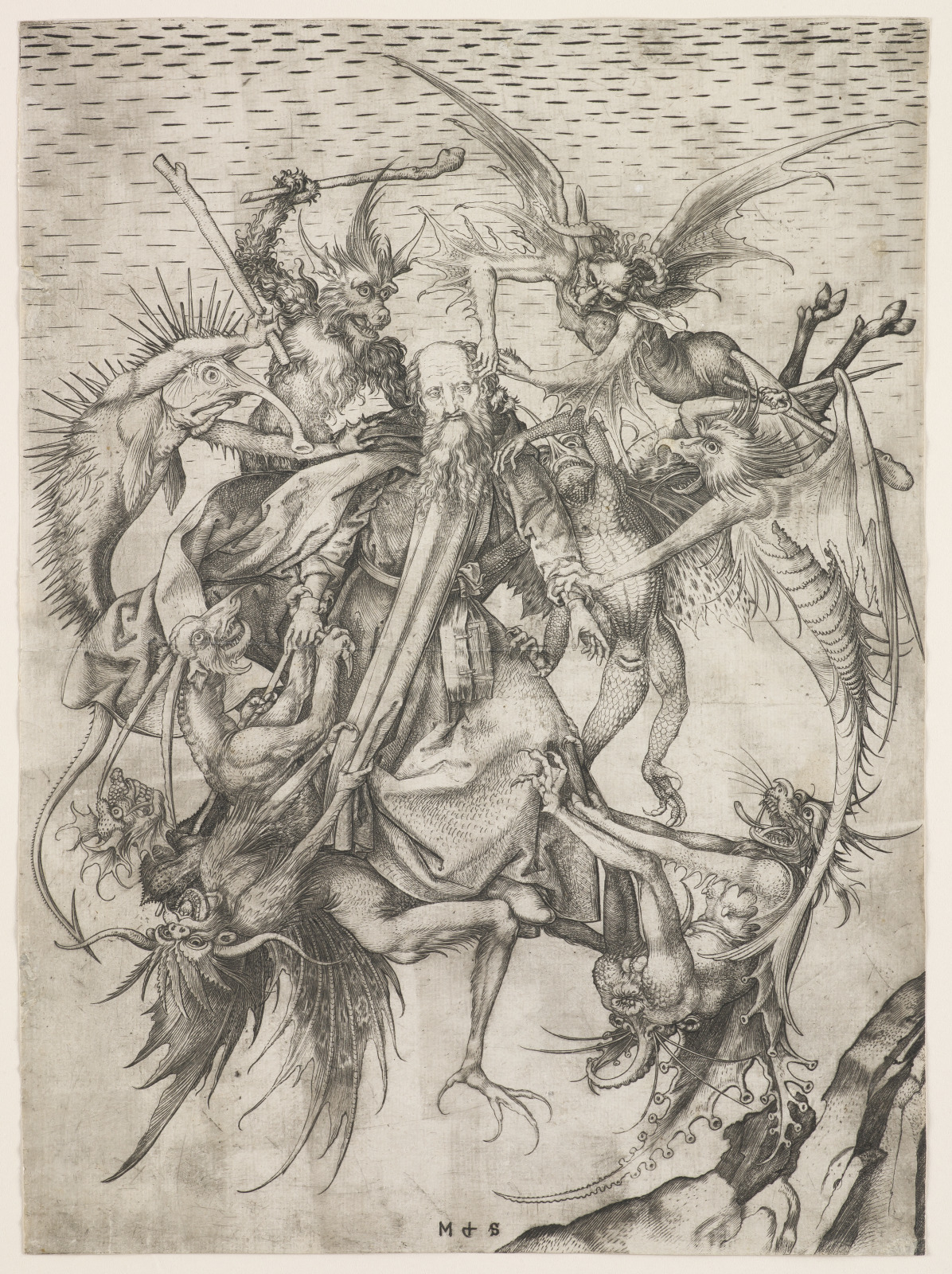
Martin Schongauer, German, c.1435–1491; The Tribulations of St. Anthony, c.1470–73; engraving; image: 12 5/16 x 9 1/16 inches, sheet (trimmed to plate): 12 5/16 x 9 1/16 inches; Saint Louis Art Museum, Gift of Julian and Hope Edison 110:2019
In this engraving Anthony, a Christian saint, appears as if suspended in the air. Martin Schongauer depicted Anthony patiently enduring the vicious attack of nine demons. The creatures’ brutal nature is evident in their brawny and muscular limbs, sinewy and feathery wings, horns, tails, spines and scales, claws and hooves, and various short, stunted, pointed, and warty snouts. The artist was the son of a goldsmith, but he trained as a painter. With his combined skills as a draftsman and an engraver in metal he conjured the unimaginable terror of this otherworldly event. Many depictions of this Egyptian hermit saint show him resisting temptation by demons, but this particular episode in his life is unusual in the visual arts. According to Anthony’s biographer, just before dining one day the saint saw himself “from outside himself,” led into the air by “certain ones” until “certain bitter and terrible beings” tried to hinder him from passing through the air. When they could find no wrongs to accuse him of, the demons disappeared, and Anthony returned to himself, as if from an out-of-body experience.
November 12, 2024
Martial Memory
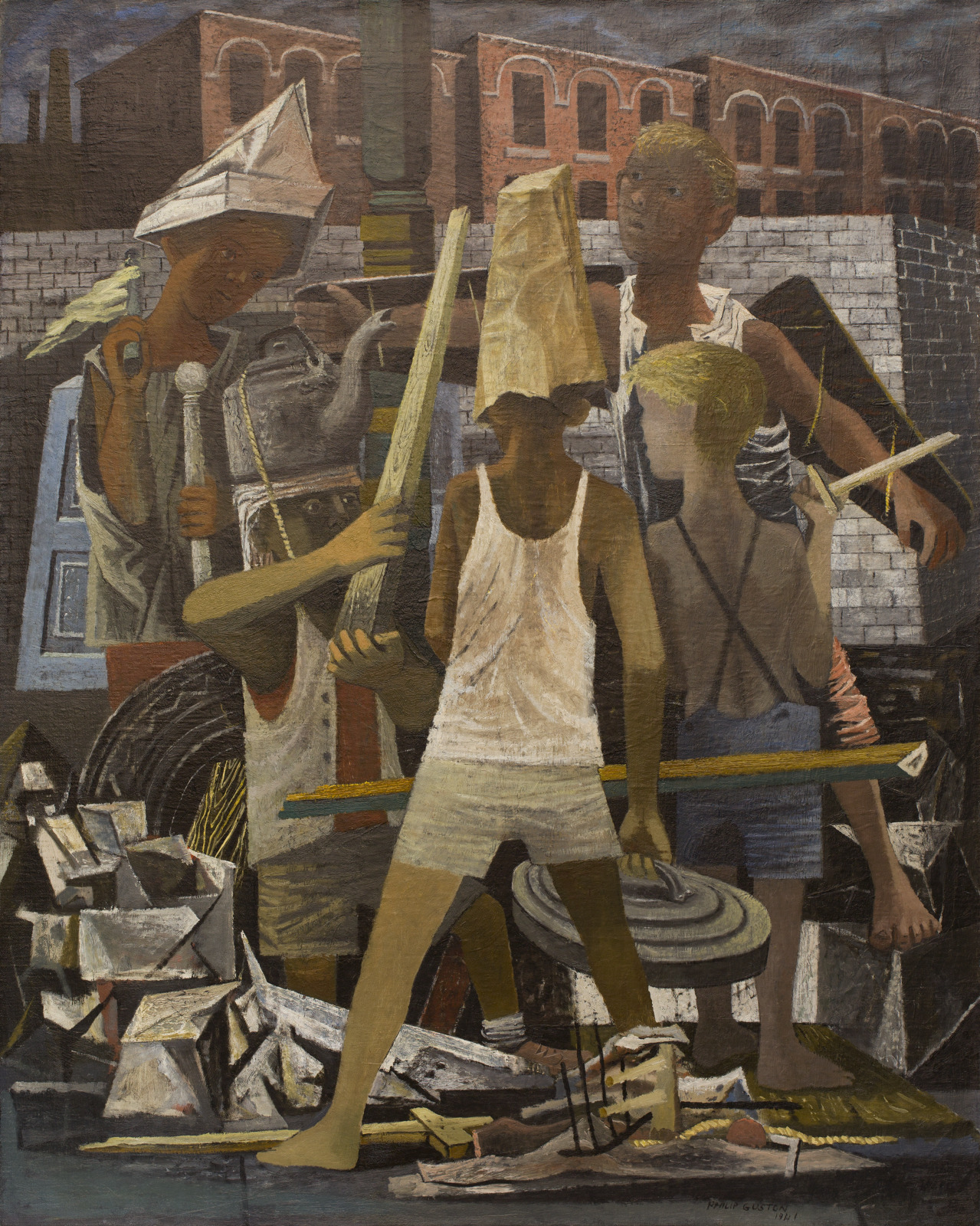
Philip Guston, American (born Canada), 1913–1980; Martial Memory, 1941; oil on canvas; 40 1/8 x 32 1/4 inches; Saint Louis Art Museum, Eliza McMillan Trust 115:1942; © 2024 Estate of Philip Guston
These resourceful children have turned the urban debris around them into the equipment of war. Their solemn faces, compressed angular forms, and implied violence of their play yield a tension that brings to mind the stress of World War II (1939–1945), then ravaging Europe. Artist Philip Guston depicted the children not in the heat of battle but rather in a moment of solemn conference. Their grave manner reflects the seriousness that underlies every human conflict and provides a view into the deep emotional crisis of their war torn world.
November 11, 2024
Two Girls in Front of Birch Trees

Paula Modersohn-Becker, German, 1876–1907; Two Girls in Front of Birch Trees, c.1905; oil on cardboard; 21 3/4 x 13 7/8 inches; Saint Louis Art Museum, Bequest of Morton D. May 914:1983
Two girls with striking green eyes stand within a wooded area. Paula Modersohn-Becker developed a deliberately straightforward style of flat color and strong outlines that reflects her awareness of avant-garde French painters. Modersohn-Becker was a prominent figure within a rural colony of artists at Worpswede in northern Germany, and produced work with a deep sympathy for the local peasantry. She died young in childbirth.
November 10, 2024
Face Mask (Pwo)

Chokwe artist, Angola; Face Mask (Pwo), late 19th century; wood, plant fiber, pigment, metal; 16 x 7 1/4 x 9 1/4 inches; Saint Louis Art Museum, Gift of Cecille Pulitzer 179:2022
This mask features an interplay between concave and convex volumes, distinctive coffee-bean shaped eyes, open mouth showing filed teeth, and incised facial markings. These elements suggest idealized feminine beauty according to Chokwe principles. Called Pwo, meaning woman, the mask represents the founding female ancestor of Chokwe society at large and of the community where it appeared during ceremonies. Remains of the knitted bodysuit formerly worn by the masquerader descend from the bottom of the mask.
Although not typically performed together in Chokwe masquerades, Pwo and Chihongo served as role models for cooperation among women and men and the gendered ideals each symbolizes in Chokwe society. Chihongo personifies chiefly power, wealth, maturity, and good leadership. He complements Pwo, the female archetype who embodies strong, beautiful, generous, and prolific women ancestors.
November 9, 2024
Inkstone Case with Design of Pampas Grass and Quail

Inkstone Case with Design of Pampas Grass and Quail, c.1630; Japanese, Edo period; wood with lacquer and gold, inkstone, and silver; 2 x 8 1/2 x 9 1/4 inches; Saint Louis Art Museum, Museum Shop Fund 52:1985a,b
This striking “lightning bolt” design is characteristic of a stunning style known as Kodai-ji lacquer, a ware famous for its sharply contrasting grounds of gold and black with floral patterns. The inkstone box is a writing case that once held brushes, paper, and ink. The use of autumnal miscanthus grass and moonflower vines by the Kodai-ji artists signaled a return to the native lyrical tradition and boldly decorative character of earlier Japanese arts.
November 8, 2024
Landscape
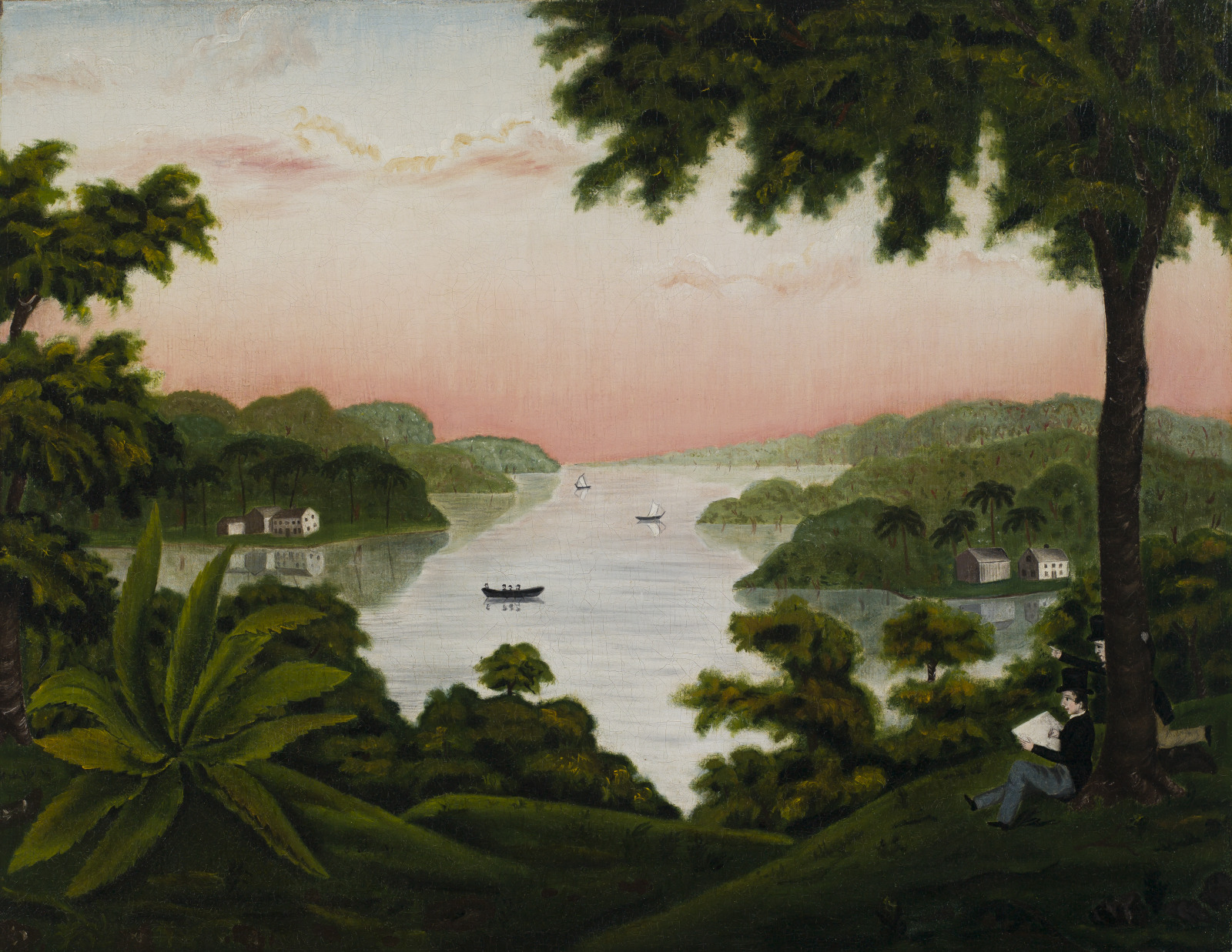
Helen Matilda Kingman, American, 1830–1912; Landscape, 1845; oil on canvas; 22 7/8 x 29 1/4 inches; Saint Louis Art Museum, Gift of Edgar William and Bernice Chrysler Garbisch 79:1968
An artist balances his sketchbook as he captures a scene filled with the red glow of dusk. This landscape presents a sense of both the exotic, with tropical plants and palm trees, and the pastoral, as canoes and sailboats dot the river.
Helen M. Kingman signed the back of the canvas with her name, the date, and her age—15. This is the only painting from her brush that is known to survive. In the same year it was painted, the itinerant portraitist Susan Catherine Moore Waters (1823–1900) had visited the Kingman family in New York. She likely inspired Helen to show off her sure hand at drawing and her fondness for rich jewel tones.
November 7, 2024
Woman in the Studio
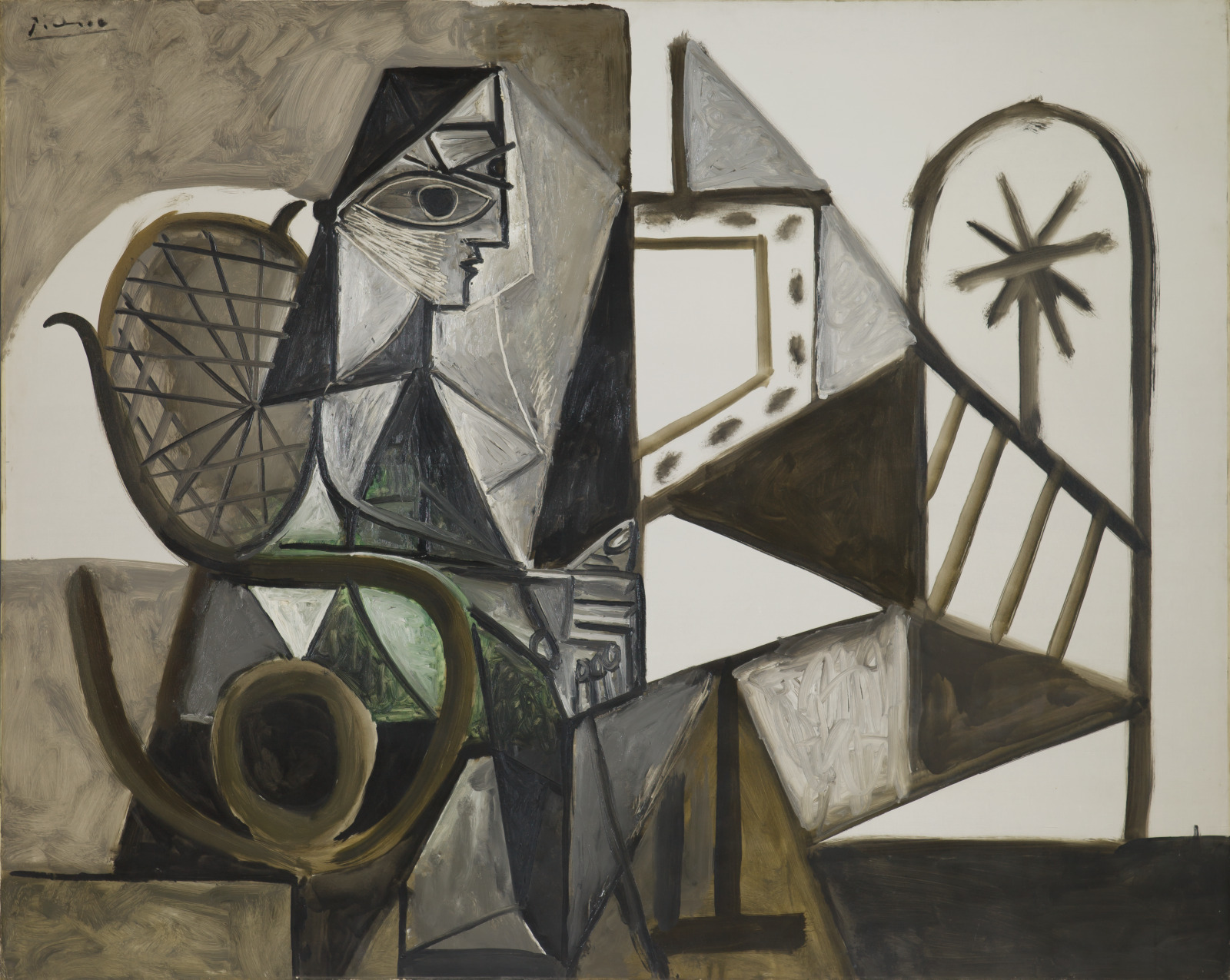
Pablo Picasso, Spanish, 1881–1973; Woman in the Studio, June 10, 1956; oil on canvas; 51 1/8 x 63 7/8 inches; Saint Louis Art Museum, Funds given by Mr. and Mrs. Richard K. Weil 196:1957; © 2024 Estate of Pablo Picasso / Artists Rights Society, New York
The woman seated here in a bentwood rocking chair is Jacqueline Roque, Pablo Picasso’s mistress and later, wife. An abstracted easel and canvas adjacent to her bisect this image. The painting depicts Picasso’s studio at La Californie, a villa in southern France where the couple lived from 1955 to 1961. The artist represented Jacqueline’s face in both frontal and profile views. A single staring oval eye lends the picture an unsettling, dream-like quality, suggesting the continuing influence of Surrealism in Picasso’s work of the 1950s.
November 6, 2024
Double Spout and Bridge Vessel with Painted Motifs
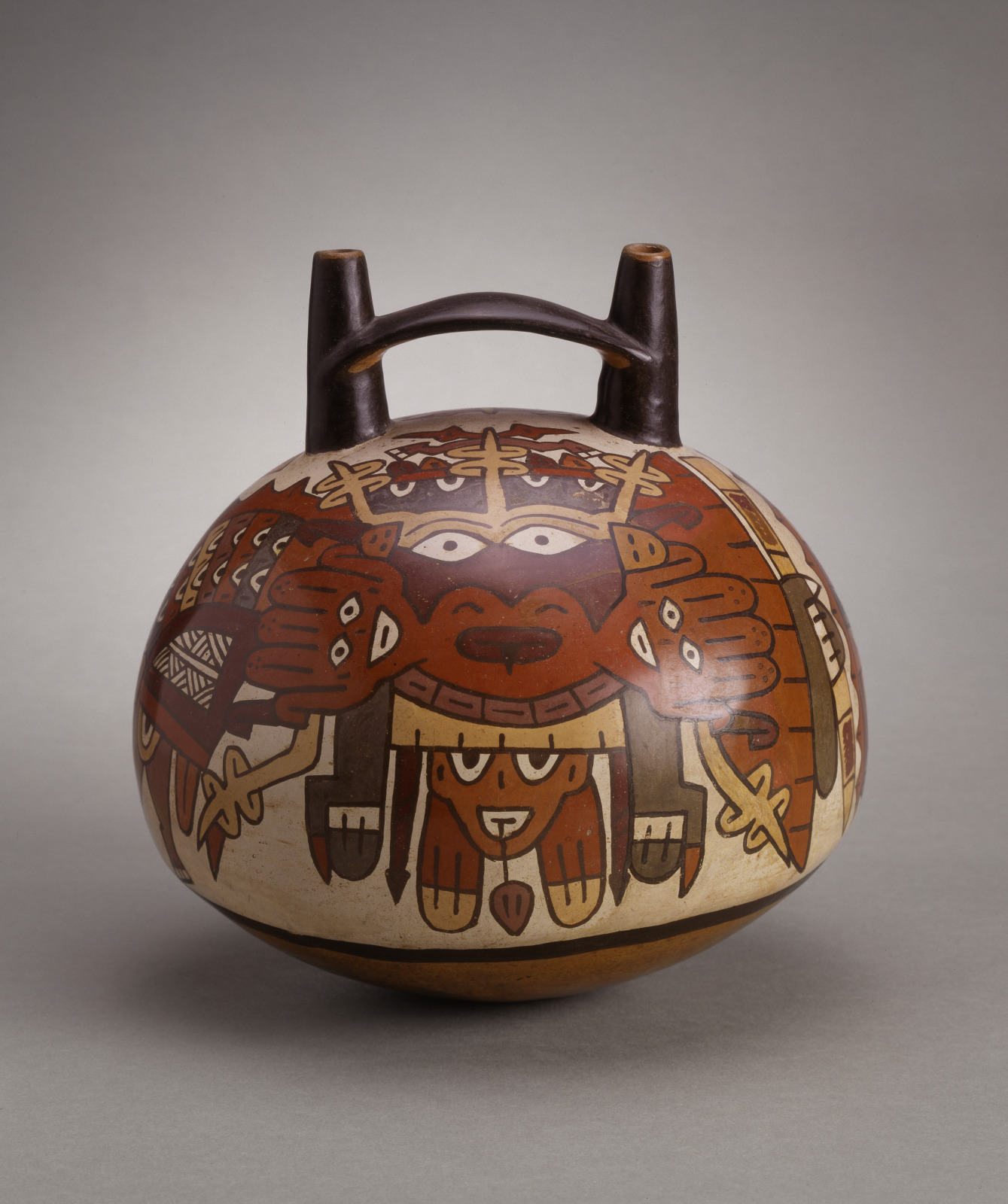
Double Spout and Bridge Vessel with Painted Motifs, c.325–440; Nasca, Peru, Early Intermediate period; ceramic with pigment; 8 1/4 x 7 7/8 inches; Saint Louis Art Museum, Gift of J. Lionberger Davis 130:1954
The painted motif on opposite sides of this vessel represents the Anthropomorphic Mythical Being, one of the most frequently depicted themes in Nasca art. Although the exact meaning of this figure remains unknown, it is interpreted as a composite creature symbolic of the powerful natural forces that controlled the Nasca world. The creature has morphed into a bird, complete with wing panels and tail feathers; a bloody club is clutched in one hand. Black and white hatching above the waist symbolizes water and reflects the creature’s association with fertility. The small figure at the bottom may represent a trophy head with a pepper plant for a tongue.
November 5, 2024
The Verdict of the People
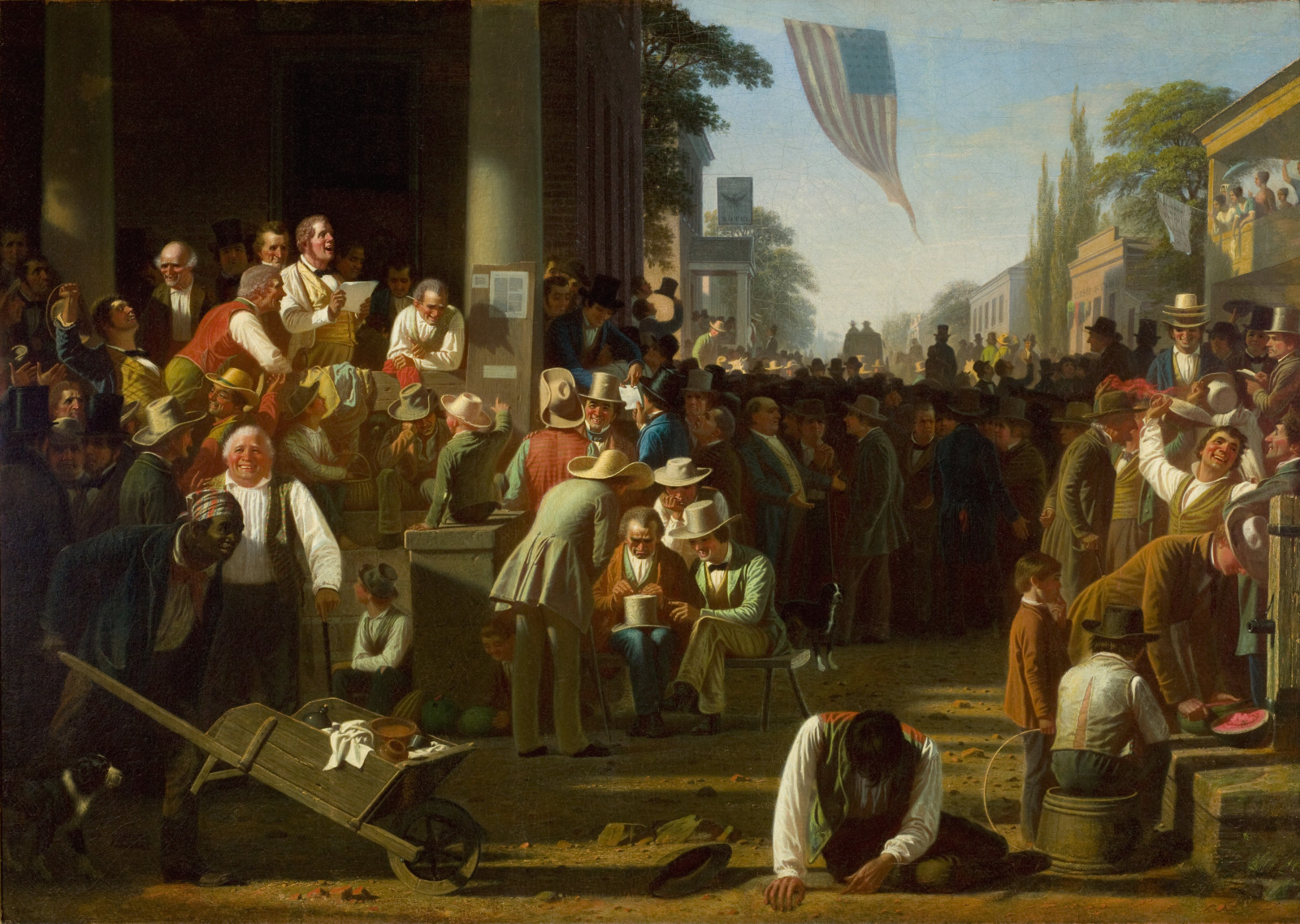
George Caleb Bingham, American, 1811–1879; The Verdict of the People, 1854–55; oil on canvas; 46 x 55 inches; Saint Louis Art Museum, Gift of Bank of America 45:2001
Crowds gather around a courthouse to hear voting results. Everyone is here—the well-to-do farmers, laborers, merchants, kids, politicians, immigrants, veterans, women, and enslaved African Americans. The overjoyed man waving his kerchief and the inebriated man sprawled on the ground border a jumble of individuals with varied responses—elated, confounded, argumentative, jovial, intensely serious, and dejected. George Caleb Bingham, an artist and a politician himself, depicted a political process that matched both his ideal of rational discussion and his actual experience of a raucous, unpredictable electorate.
The women in the balcony and the slave in the left foreground represent two populations without a voice in government at this time. These particular women are temperance, or anti-alcohol, reformers. Bingham and many Americans believed that the movements advocating for temperance and for the abolition of slavery were closely linked, as both slavery and drunkenness were viewed as destructive impositions on natural freedom.
November 4, 2024
The Laundresses
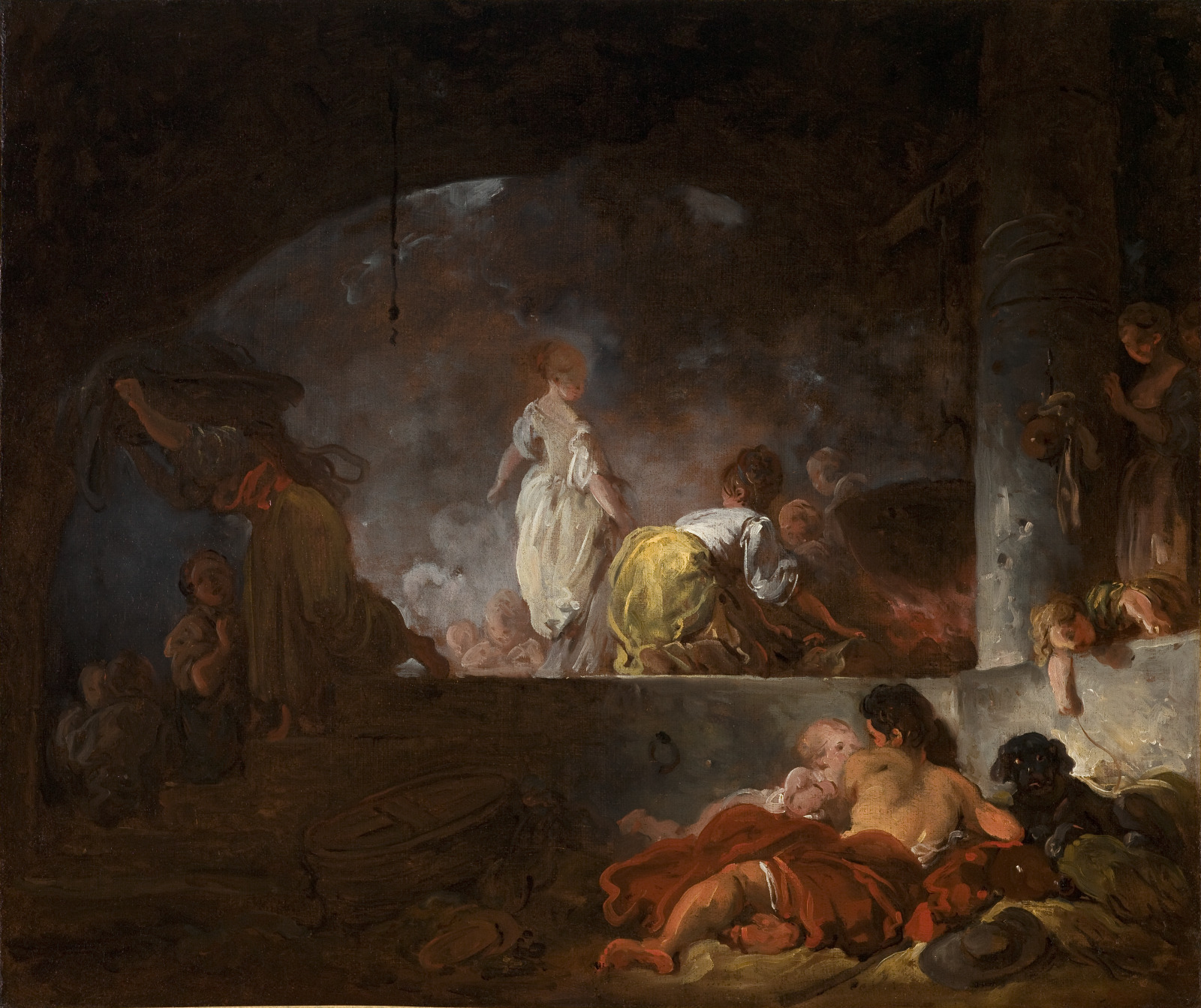
Jean-Honore Fragonard, French, 1732–1806; The Laundresses, c.1756–61; oil on canvas; 28 3/4 x 24 3/16 inches; Saint Louis Art Museum, Museum Purchase 76:1937
Two women in bright white and yellow form the focal point of this composition. They toil within a stifling atmosphere of dense steam clouds in a laundry. Jean-Honoré Fragonard, a favorite artist at court, often chose working class people as subjects. Here he captures the demanding physical labor that washing required, most notably in the figure carrying a heavy bundle. The artist makes visible the intense heat of the kettle; contemporary laundry treatises recommended a seventeen-hour process with temperatures near boiling.
November 3, 2024
Imperial Chair Cover with Design of Five-Clawed Dragons and Bats amidst Peony Scrolls and Border with the Eight Daoist Emblems and Multicolored Clouds
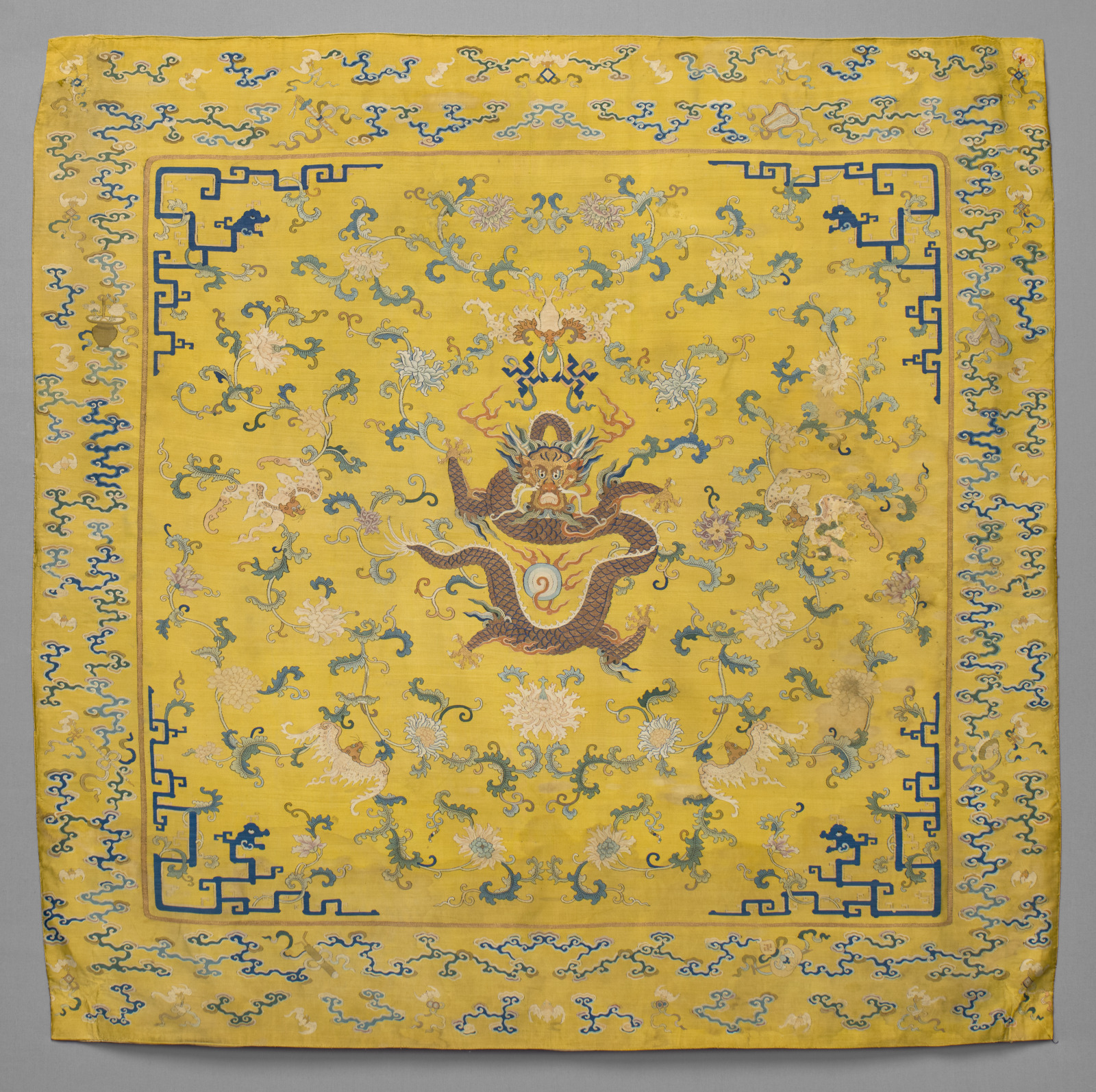
Imperial Chair Cover with Design of Five-Clawed Dragons and Bats amidst Peony Scrolls and Border with the Eight Daoist Emblems and Multicolored Clouds, mid- to late 18th century; Chinese, Qing dynasty, Qianlong period; silk in tapestry weave (kesi) and gold thread; 51 1/4 x 51 3/4 inches; Saint Louis Art Museum, Museum Purchase 33:1917
This tapestry-woven textile features a front-facing five-clawed dragon enclosing a flaming pearl symbolic of spiritual energy, wisdom, prosperity, and power. Above the dragon, a downward-facing bat carries a loop suspending two dark blue swastikas symbolizing “myriad” or “10,000.” The bright yellow silk ground indicates that it was made for the exclusive use of the emperor and his immediate family.
Pale-colored blossoms with scrolling foliage are scattered around the central field. Four other bats in flight, bringing the total of five, signify the Five Blessings (wu fu), namely longevity, wealth, health, virtue, and peaceful death in old age. Each corner of the central field is anchored by a stylized dragon in dark blue. A band of gold thread separates the field from the outer border, which contains auspicious clouds, Daoist emblems, and symbols of good fortune.
Today’s Object of the Day is one of many objects featured in Chinese Silk Textiles of the Ming and Qing Dynasties, located in the Carolyn C. and William A. McDonnell Gallery 100.
November 2, 2024
Chair

designed by Carlo Bugatti, Italian, 1856–1940; Chair, 1898–1902; wood, parchment, brass, zinc, pewter, and original silk tassels; 58 3/4 x 17 1/4 x 16 5/8 inches; Saint Louis Art Museum, Funds given in memory of Alfred Landesman and Museum Purchase 68:1979
Painted vellum (goatskin), pewter inlay, and silk tassels are some of the unusual materials used for this highly original chair by the Italian architect and furniture designer Carlo Bugatti. The design also combines Japanese elements, such as painted grasses and an asymmetrical back, with clustered Middle Eastern columns and abstract inlays. Bugatti’s eclectic design is a very personal expression of the Art Nouveau movement from the turn of the 20th century.
November 1, 2024
La-K-La-K

Enrique Chagoya, American (born Mexico), born 1953; La-K-La-K, 1986; charcoal and pastel; 80 x 79 3/4 inches; Saint Louis Art Museum, Gift of Ted L. and Maryanne Ellison Simmons; and funds given by the Marian Cronheim Trust for Prints and Drawings, Museum Purchase, Friends Endowment Fund, The Sidney S. and Sadie Cohen Print Purchase Fund, and the Eliza McMillan Purchase Fund 490:2020; © Enrique Chagoya
The looming figure of “La calavera catrina” (the elegant skeleton) or “La calaca” (the skeleton) is an image associated with Mexican commemorations of the Day of the Dead. The festival celebrates the departed and satirizes the living. The large skull has been reduced to two staring eyes under a characteristic hat of feathers and flowers. A smaller skeletal figure wearing Mickey Mouse ears accompanies her. The sense of dramatic contrast is heightened by the intensity of charcoal and pastel layered and strewn across the broad expanse of paper.
October 31, 2024
Masquerade
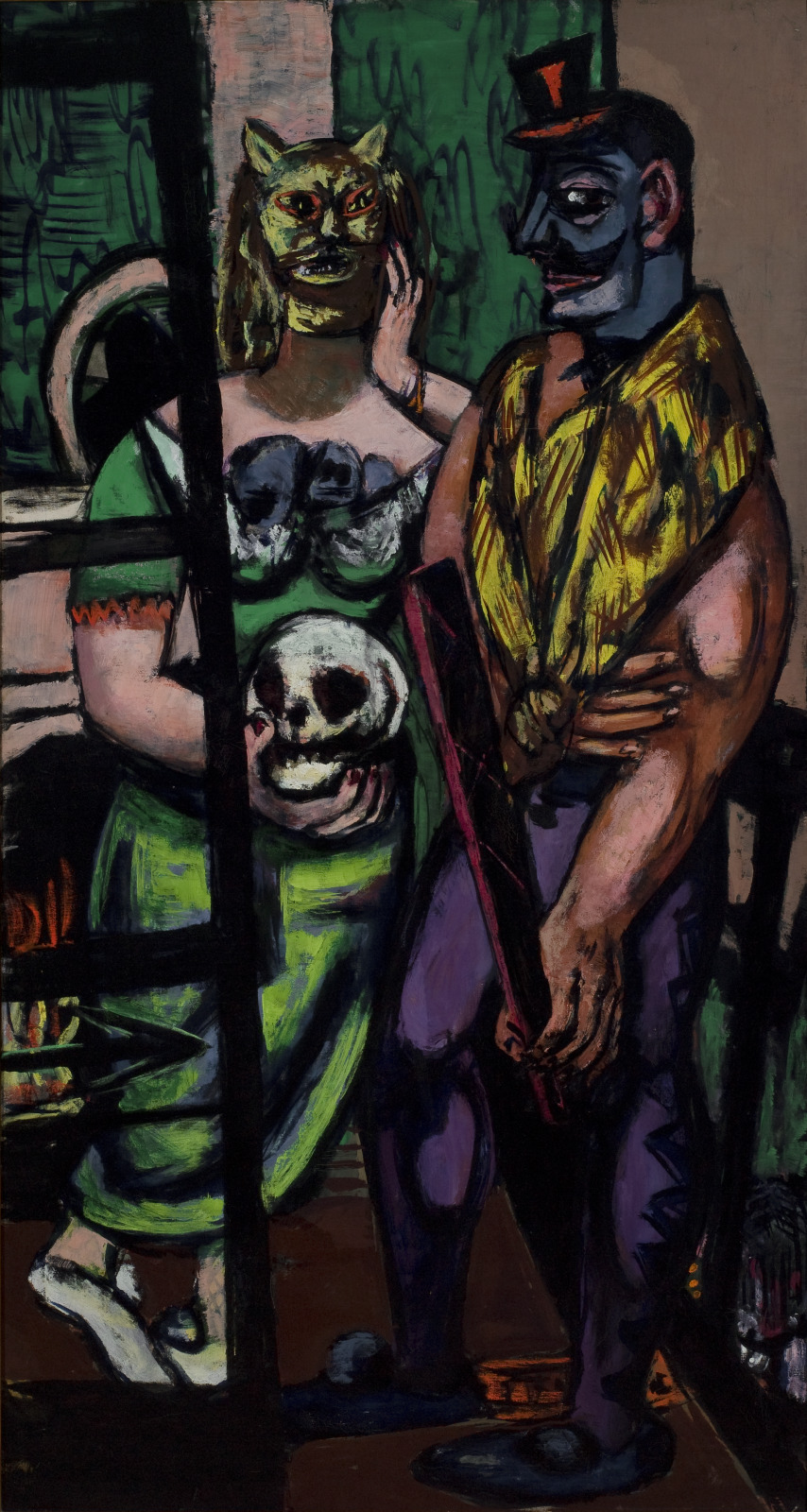
Max Beckmann, German, 1884–1950; Masquerade, 1948; oil on canvas; 64 13/16 x 34 15/16 inches; Saint Louis Art Museum, Gift of Mr. and Mrs. Joseph Pulitzer Jr. 587:1958
Beckmann was a great lover of masked balls. Here he shows two partygoers at one such revelry; they stand next to an iron balcony with a fire burning brightly behind them. The muscular man holds a fan traditionally used for playfully hitting passers-by, while the woman is a more enigmatic and sinister presence. Her yellow cat mask completely conceals her face and may allude to the association of cats with magic and sin in esoteric mythology.
October 30, 2024
Pouch
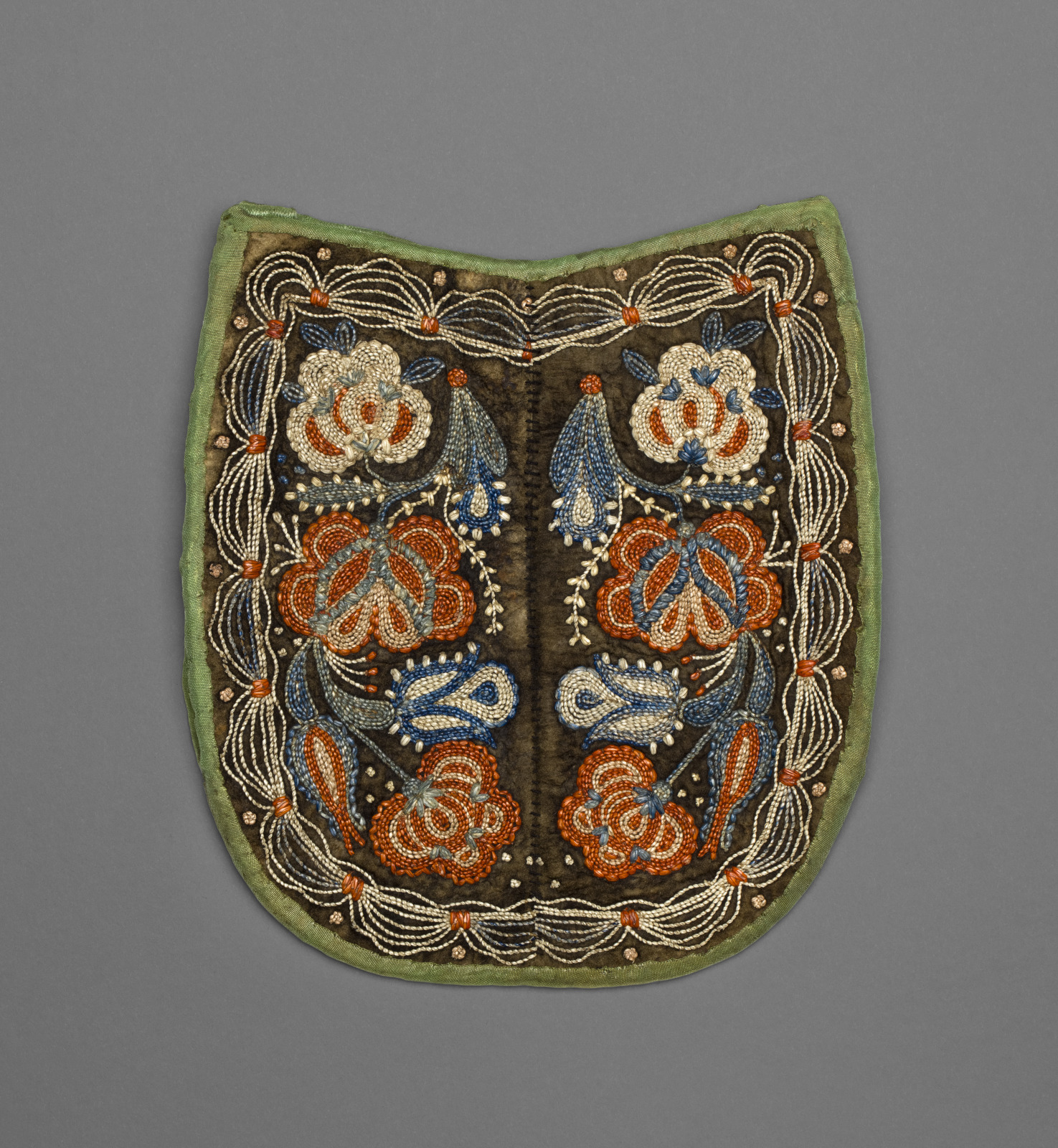
Wendat artist; Pouch, mid-19th century; dyed hide, dyed and undyed moose hair, and silk ribbon; 6 1/2 x 5 1/2 inches; Saint Louis Art Museum, Gift of Elizabeth B. and Robert Wells Streett 22:2022
A billowing frame encloses bouquets of vivid flowers, buds, and leaves. Embroidered on black-tanned hide with moose hair, this pouch epitomizes the specialist work of artists from Wendake, a First Nations reserve near Quebec City.
Hair embroidery on hide is an ancient Indigenous practice in the Northeast. In the 18th century, however, colonial Ursuline nuns adapted this technique to convent wares that included botanical imagery. Wendat artists later incorporated novel floral imagery in their own work for sale such as this pouch.
October 29, 2024
Two Scholars, Attendant, and Donkey in a Landscape
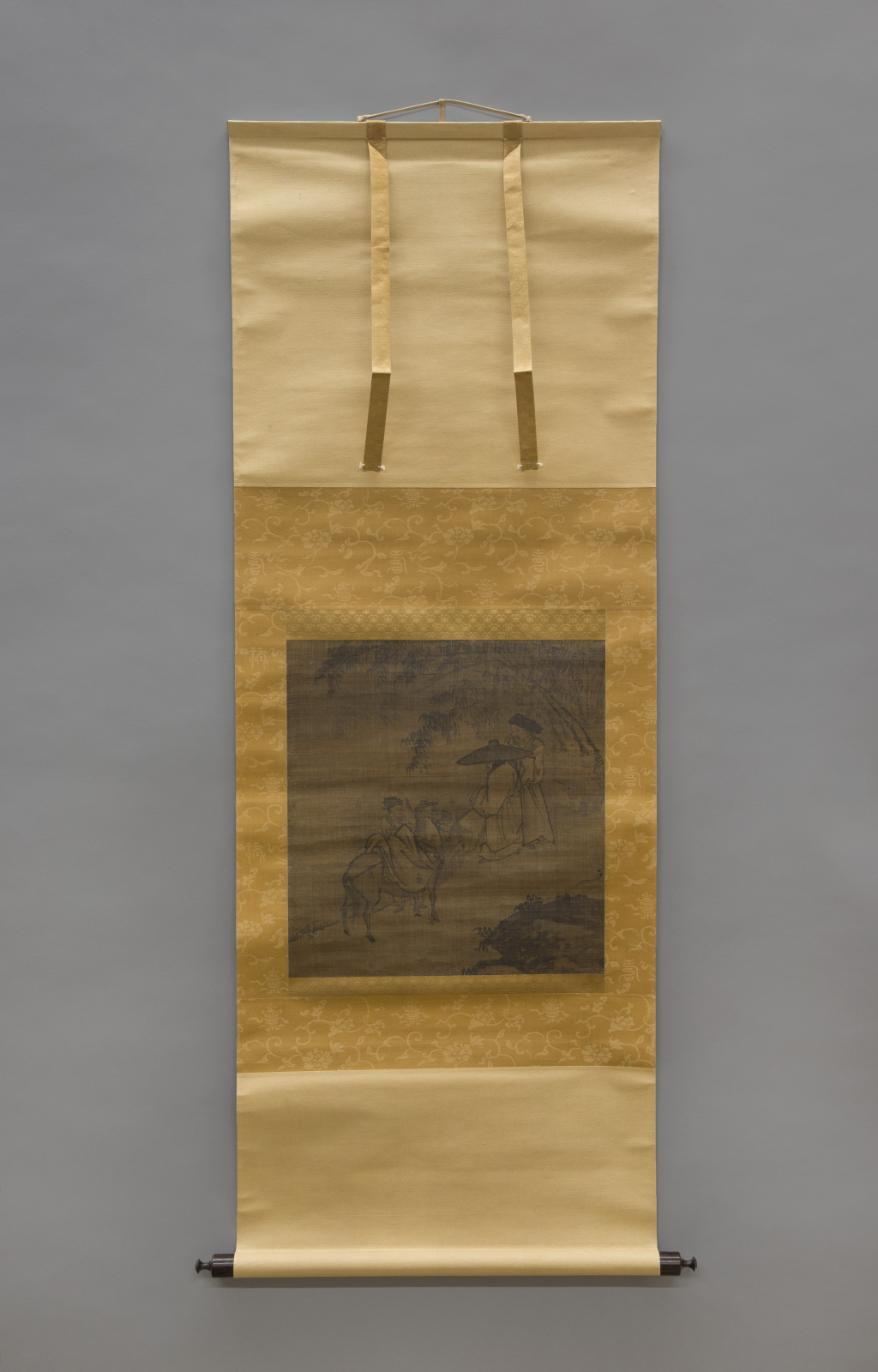
Two Scholars, Attendant, and Donkey in a Landscape, 17th–18th century; Korean, Joseon dynasty; hanging scroll: ink on silk; image: 15 3/4 x 14 7/8 inches, scroll: 52 7/8 x 19 5/8 inches; Saint Louis Art Museum, Funds given by Mr. David V. Kromm and Mrs. Young-Hie Nahm Kromm, Dr. and Mrs. Moon-Hea Nahm, and Mr. and Mrs. Tae-Hea Nahm, in memory of Dr. and Mrs. Chung C. Nahm 81:2019
This hanging scroll depicts two scholars conversing under the shade of a bamboo grove accompanied by a nearby attendant with a donkey. Executed in ink monochrome on silk, it is a typical Korean literati-style painting, evident especially in the robes on the figures and the wide-brimmed hat worn by one of them. The original source of East Asian literati painting may be traced back to Chinese paintings of the Northern Song dynasty (960–1127).
Eminent scholar-artists produced paintings as means of self-expression rather than as sources of income; they focused on conveying overall moods rather than life-likeness in details large and small.
During the later Ming dynasty (1368–1644) in China, artists increased the scale of figures in such paintings to occupy a greater proportion of the entire composition. It is this Ming configuration of the figures-in-a-landscape, as seen here, that was closely adopted by Korean painters of the Joseon dynasty (1392–1910) during the 17th and 18th centuries. This recent acquisition is the first Korean painting to enter the Museum’s collection.
October 28, 2024
The Bell Tower of Bazincourt

Camille Pissarro, French, 1830–1903; The Bell Tower of Bazincourt, 1885; oil on canvas; 25 5/8 x 21 1/8 inches; Saint Louis Art Museum, Funds given by Mr. and Mrs. John E. Simon 178:1955
A luminous sky backlights this scene, silhouetting the village church and casting a pattern of dramatic shadows in the foreground. Camille Pissarro produced forty views of the picturesque village of Bazincourt, some fifty miles to the northwest of Paris, and close by Eragny where he lived for the last two decades of his life. The artist signed his work in red at bottom left to stand out against the complementary color of the surrounding greens.
October 27, 2024
In the Adirondack Mountains

William Trost Richards, American, 1833–1905; In the Adirondack Mountains, 1857; oil on canvas; 30 1/2 x 39 3/8 inches; Saint Louis Art Museum, Bequest of Albert Blair 54:1933
This landscape offers the viewer many points for contemplation. Among them are specific kinds of trees identifiable by their foliage, twisted branches that extend beyond the tree line, and rocks whose fissures and furrows have a geological accuracy. It is no surprise that the painting’s first owner was a prominent scientist and geologist, Joseph Leidy.
The scientific accuracy of these details is balanced by poetic interpretation. The close proximity of an eagle and a rainbow—a national emblem and a Biblical symbol—would have been understood as confirmation of divine purpose in this American wilderness. It affirmed the then-prominent belief that Americans were divinely called to bring their country’s rich, natural resources to cultivation. Today it might seem contradictory to appreciate a wilderness for the economic potential that will cause its eventual destruction.
October 26, 2024
Southbound

Gerardo Belfiore, American (born Italy), 1914–2002; Southbound, about 1939; crayon and tusche lithograph, with scraped highlights; image: 12 7/8 x 10 inches, sheet: 16 x 11 1/2 inches; Saint Louis Art Museum, Gift of the Federal Works Agency, Work Projects Administration 161:1943
Standing on a platform of the Broad Street subway, a lone figure awaits the bright light of a rapidly approaching train. Work Projects Administration funds enabled the construction of a southward extension of the line to Snyder Avenue, which opened in 1938. The composition captures the daily routines of moving around the city, an experience Gerardo Belfiore chose to represent in a work produced in a Federal Art Project workshop. In both image and making, the print is a testament to the many ways that government funds supported infrastructure and culture.
October 25, 2024
Pair of Ear Pendants with Design of Lotus Petals

Pair of Ear Pendants with Design of Lotus Petals, 7th–8th century; Korean, Unified Silla dynasty; gold; 1 x 2 3/8 inches; Saint Louis Art Museum, Museum Purchase 286:1919a,b
Created from solid gold, these three-tiered ear pendants feature delicate attachments in the shape of lotus petals. Works like these were part of the elite burial practices of the Unified Silla dynasty. At their deaths, members of the royal family and other nobles were interred in elaborate mound structures, often alongside jewelry, swords, and treasures such as the crown from the Hwangnam Daechong Tomb, a Korean national treasure. Earrings were some of the most frequently found items in these tombs, and they were also likely worn by aristocratic women and men during their lifetimes.
October 24, 2024
Bowl

attributed to Lucy Pete Fisher, Choinumne Yokuts; Bowl, c.1910; grass, sedge, and bracken fern; 8 5/8 x 18 3/8 inches; Saint Louis Art Museum, Western Art Purchase Fund 40:1987
Bold, serrated lines burst from the center and twist across the surface of this bowl. Once created for daily use in cooking and storage, coiled baskets from the Sierra Nevada transformed into compelling artistic works in the late 19th century. This basket was purchased at Sequoia National Park in the years around World War I (1914–1918).
October 23, 2024
Asters in a Vase
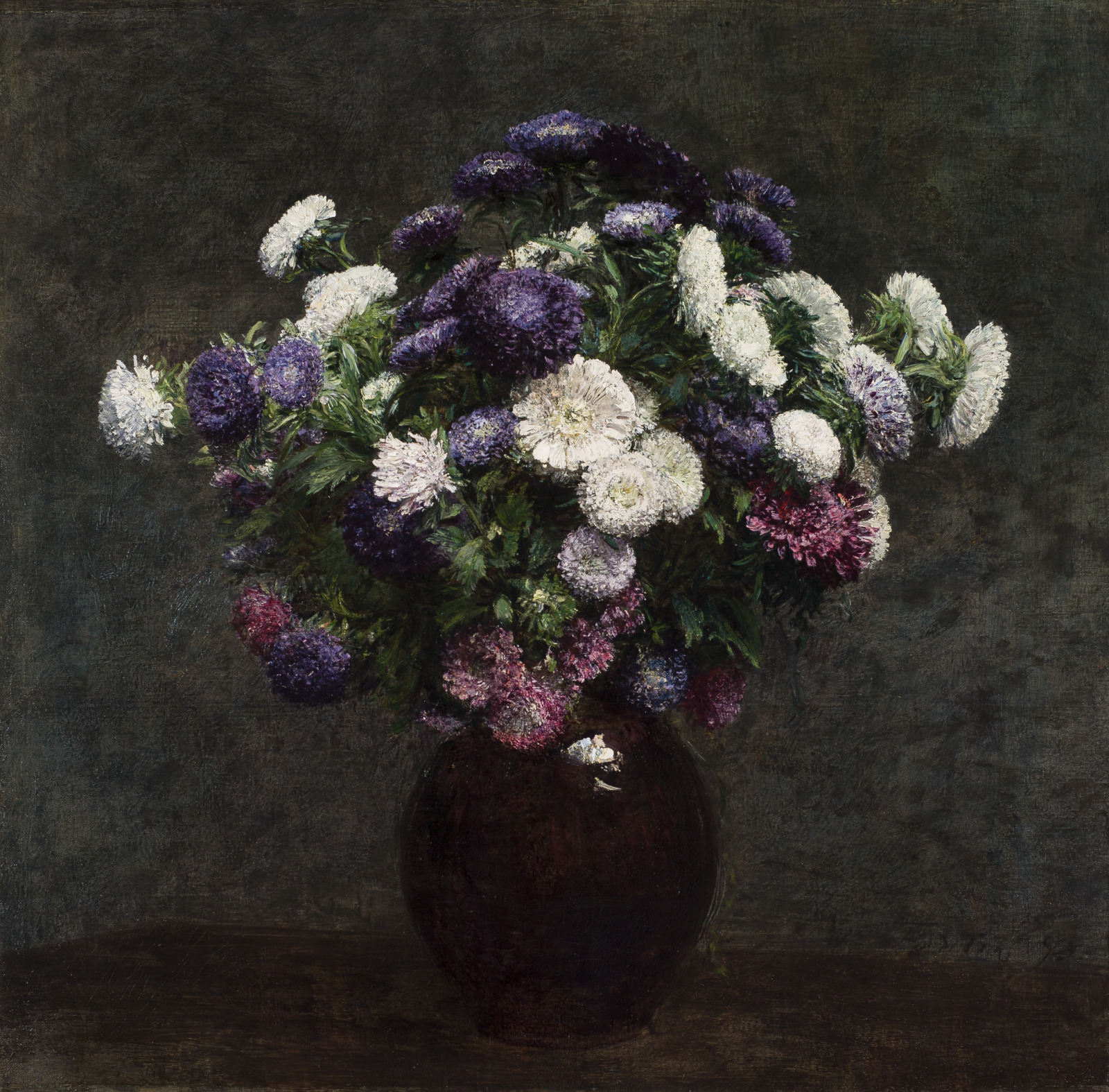
Henri Fantin-Latour, French, 1836–1904; Asters in a Vase, 1875; oil on canvas; 22 7/8 x 23 1/4 inches; Saint Louis Art Museum, Museum Purchase 4:1944
Henri Fantin-Latour focused his creative attention on the furnishings and inhabitants of interior spaces. This still-life is a superb example of his virtuosic ability to create illusionistic space and capture minute detail. The artist covered a sketch with a thicker layer of paint, then scraped it to create texture. He then applied thin washes of oil paint to produce a shimmering effect. This technique of applying touches of color was pursued more fully by his Impressionist peers who valued spontaneity rather than description.
October 22, 2024
Bibi Valentin
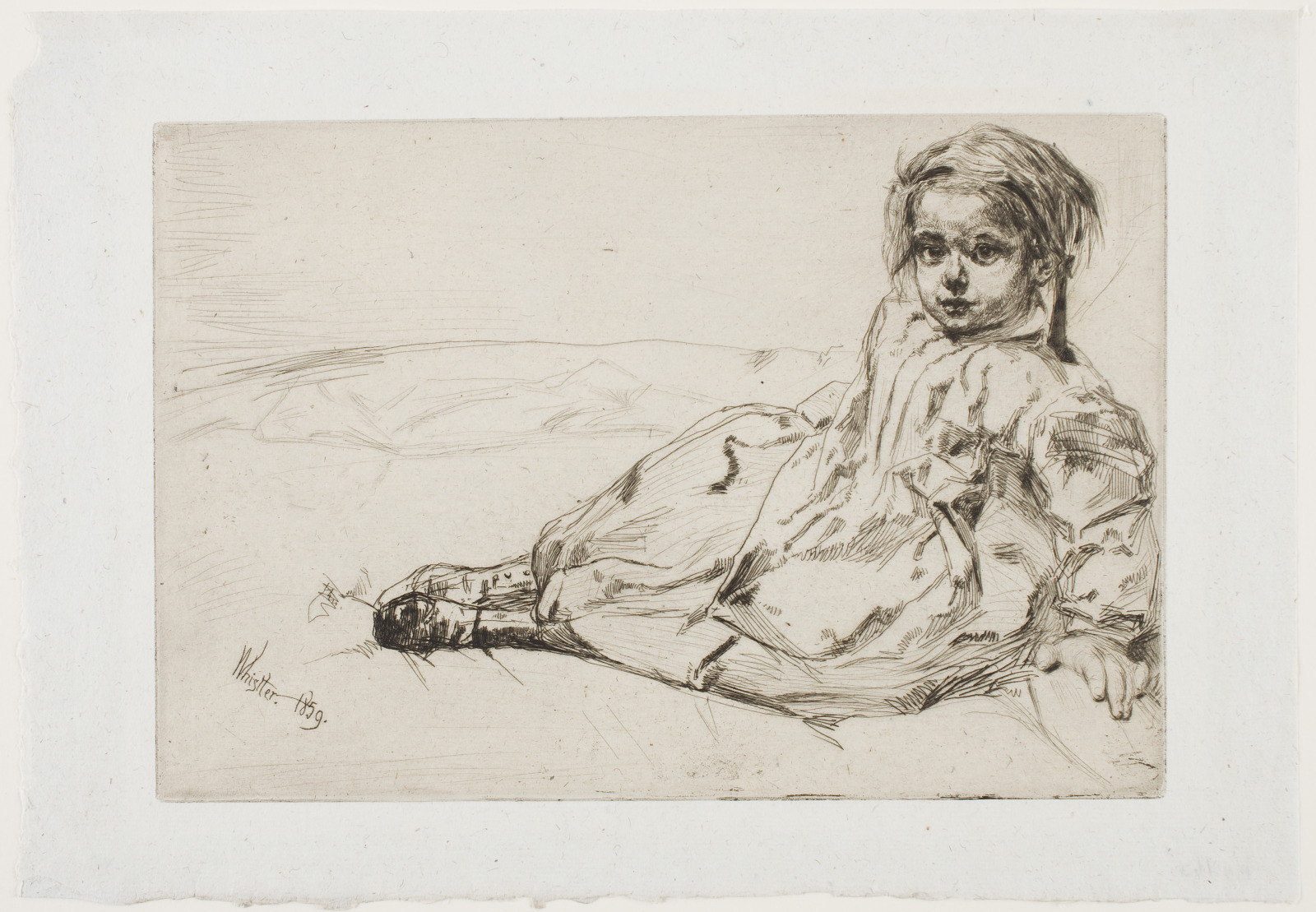
James A. McNeill Whistler, American, 1834–1903; Bibi Valentin, 1859; etching and drypoint on chine colle; image: 6 x 8 7/8 inches, plate: 6 x 8 7/8 inches, sheet: 7 3/4 x 11 1/4 inches; Saint Louis Art Museum, The Sidney S. and Sadie Cohen Print Purchase Fund 15:2013
The American expatriate artist James A. McNeill Whistler created this sensitive etching and dry-point image of young Bibi Valentin. She was the daughter of fellow artist Henry Augustin Valentin, who encouraged Whistler’s printmaking activities during his time in Paris. Whistler’s portrait is skillfully composed, from the girl’s fashionable high-necked dress and buttoned boots to her inquisitive, engaging face. Whistler was renowned as one of the greatest printmakers in the 19th century, and his early prints from the 1850s often depict children, such as this example. The Museum also owns the copper plate from which this print was made. Together these objects provide insight into the printmaking process. The image is made up of lines incised onto the plate using either a sharp tool or acid; these incisions hold the ink. When the plate is printed onto a sheet of paper, the resulting image appears in reverse. The plate has been canceled, with vertical and horizontal lines struck through the image, indicating the completion of a limited edition of prints.
October 21, 2024
Prunus Vase (meiping) with Design of Scattered Peach Blossoms
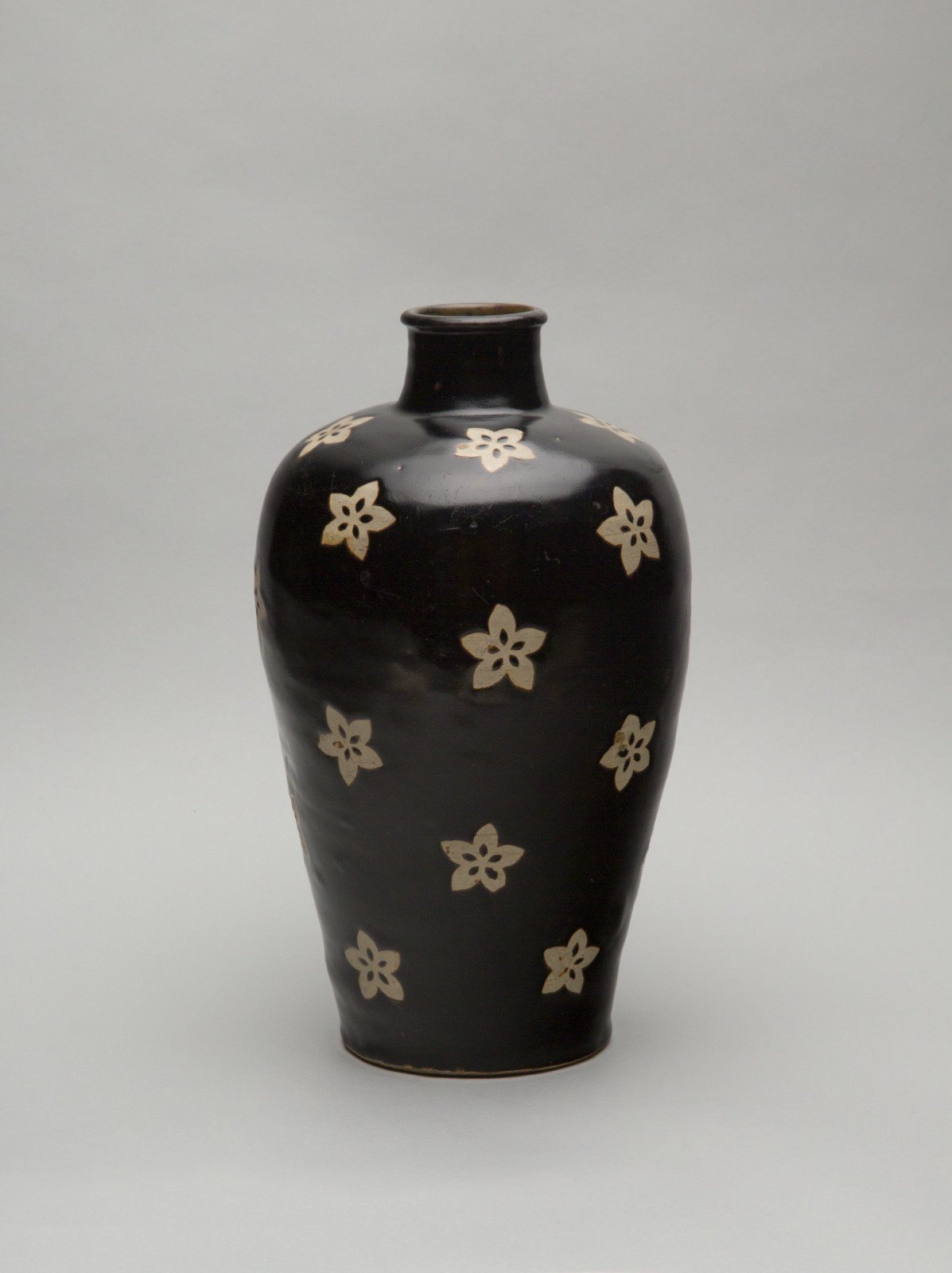
Prunus Vase (meiping) with Design of Scattered Peach Blossoms, 13th–14th century; Chinese, Southern Song dynasty, or Yuan dynasty; Jizhou ware; stoneware with biscuit-reserved decoration and dark brown glaze; 11 x 6 1/2 inches; Saint Louis Art Museum, Bequest of Samuel C. Davis 947:1940
Visible in white against the dark brown glaze, 24 stylized peach blossoms, each with five petals and five glaze dots to mark the stamens and pistils, embellish this vessel’s exterior. This vase was wheel-thrown in sections that were luted, or joined with a slurry of water and clay before they were fired. Once the vessel was assembled, the 24 discrete stencils of cut paper that produced the design were affixed to its surface, and it was immersed foot-first in the glaze slurry. The bottom of its foot-ring was then immediately wiped free of glaze. When the glaze had stabilized but was still moist, the stencils were removed, leaving the reserved decoration.
October 20, 2024
Sunday Morning Breakfast
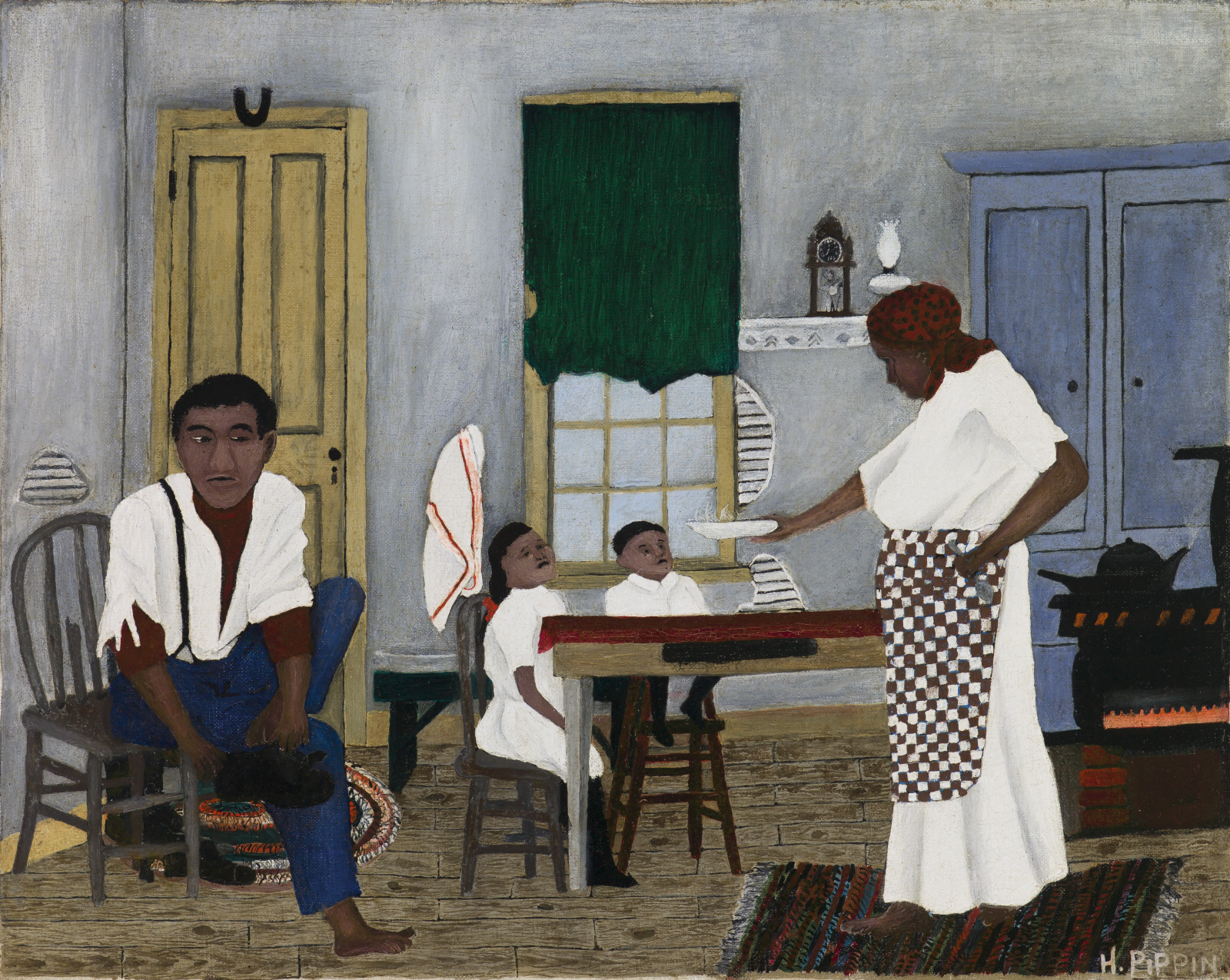
Horace Pippin, American, 1888–1946; Sunday Morning Breakfast, 1943; oil on fabric; 16 x 20 inches; Saint Louis Art Museum, Museum Funds, Friends Fund; and Bequest of Marie Setz Hertslet, Museum Purchase, Eliza McMillan Trust, and Gift of Mrs. Carll Tucker, by exchange 164:2015
A kettle whistles on a glowing stove as two children eagerly await their breakfast in this warm family scene. The lively everyday narrative is balanced by the geometric simplicity of the door, curtained window, cupboard, and flat patterns of the apron and rugs.
Horace Pippin was a self-taught African American artist who began painting after he was wounded in World War I (1914–1918). His laborious painting process involved propping up his permanently injured right arm with a poker and guiding it with his left hand. Sunday Morning Breakfast is a scene remembered from his youth in Goshen, New York.
October 19, 2024
Port-en-Bessin: The Outer Harbor (Low Tide)

Georges Pierre Seurat, French, 1859–1891; Port-en-Bessin: The Outer Harbor (Low Tide), 1888; oil on canvas; 21 3/8 x 26 1/4 inches; Saint Louis Art Museum, Museum Purchase 4:1934
Georges Seurat produced this painting while spending the summer at the Normandy resort of Port-en-Bessin. He captures the port with details such as a sail in the foreground and flagpoles in the distance. The work displays Seurat’s signature “pointillist” touch, or the practice of applying small dots of color to the canvas which blend together at a distance. A strong geometrical structure provides a sense of calm and order, reflecting the artist’s aim to make the ephemeral moment suggest the eternal.
October 18, 2024
Scissors
In the Islamic world, one of the most highly valued arts is calligraphy. This pair of calligrapher’s scissors is associated with the art of bookmaking.
Muslims believe that the Qur’an is literally the word of God, revealed to the Prophet Muhammad in Arabic, so the Arabic language has always been held in the highest esteem. Artists have also created beautiful calligraphy in other languages, such as Persian and Turkish, that have been written in the Arabic script. Thus, all types of secular and religious texts reflect a delight in playing with the artistic possibilities of the letters. Calligraphy is not restricted to paper and parchment, and can be found in every medium, including ceramics, metalwork and textiles.
October 17, 2024
Morning Choice

Anne Truitt, American, 1921–2004; Morning Choice, 1968; acrylic on marine mahogany plywood; 72 x 14 x 14 inches; Saint Louis Art Museum, Gift of Mrs. Marcella Louis Brenner 42:1969; © annetruitt.org
Anne Truitt painted horizontal bands of orange, fuchsia, blue, and lime green onto a rectangular column made of sanded plywood. Through her characteristic vertical forms, Truitt investigated the boundary between painting and sculpture. She described her freestanding painted objects as color “set free into three dimensions.” Inspired by the simple geometry of Barnett Newman’s paintings, Truitt applied elements of painting, such as composition and color, to her sculptural works. Truitt’s use of reductive, rectilinear forms associates her work with the minimalism art movement of the 1960s.
October 16, 2024
The Rainbow’s Source

John Henry Twachtman, American, 1853–1902; The Rainbow's Source, c.1890–1900; oil on canvas; 36 x 25 1/4 inches; Saint Louis Art Museum, Museum Purchase 124:1921
The rough texture of paint on this canvas conveys the movement and spray of water as it surges through trees and rocks. The vaporous atmosphere could, at any minute, reveal the rainbow referred to in the painting’s title. At close view the scene becomes nearly abstract, and merges the experience of the rough surface with refined forms, the transient moisture with permanent paint, and the ethereal with the physical.
John Twachtman purchased his home in Greenwich, Connecticut, because the property included this cascade on Horseneck Brook. He returned to the falls often, painting them from multiple angles and in many types of weather.
October 13, 2024
Mary Cassatt in the Paintings Gallery at the Louvre

Edgar Degas, French, 1834–1917; Mary Cassatt in the Paintings Gallery at the Louvre, 1879–80; etching, soft-ground etching, aquatint, and drypoint; plate: 12 x 5 1/16 inches, sheet: 13 7/16 x 7 15/16 inches; Saint Louis Art Museum, The Marian Cronheim Trust for Prints and Drawings 14:2020
Edgar Degas depicted two women visiting the Louvre Museum in Paris, France. The standing woman is the American artist Mary Cassatt while the seated figure is believed to be her sister, Lydia Cassatt. Both women are elegantly dressed, wearing dark, slim-cut walking dresses and fashionable hats. Their white ruffled cuffs and gloves, Cassatt’s umbrella, and Lydia’s pleated skirt illustrate how both the Cassatt sisters and Degas himself had the means to keep up with the latest fashion trends in Paris.
This print reflects Degas’ and Cassatt’s shared interest in art and fashion. Both artists frequently visited the Louvre to study the collection, and here Degas represented Cassatt as self-assured and poised as she examines the paintings. Cassatt understood the role clothing played in identifying her social and artistic standing. She purchased hats and gowns from top designers, contributing to her confident persona seen in this print.
October 12, 2024
Amor Caritas
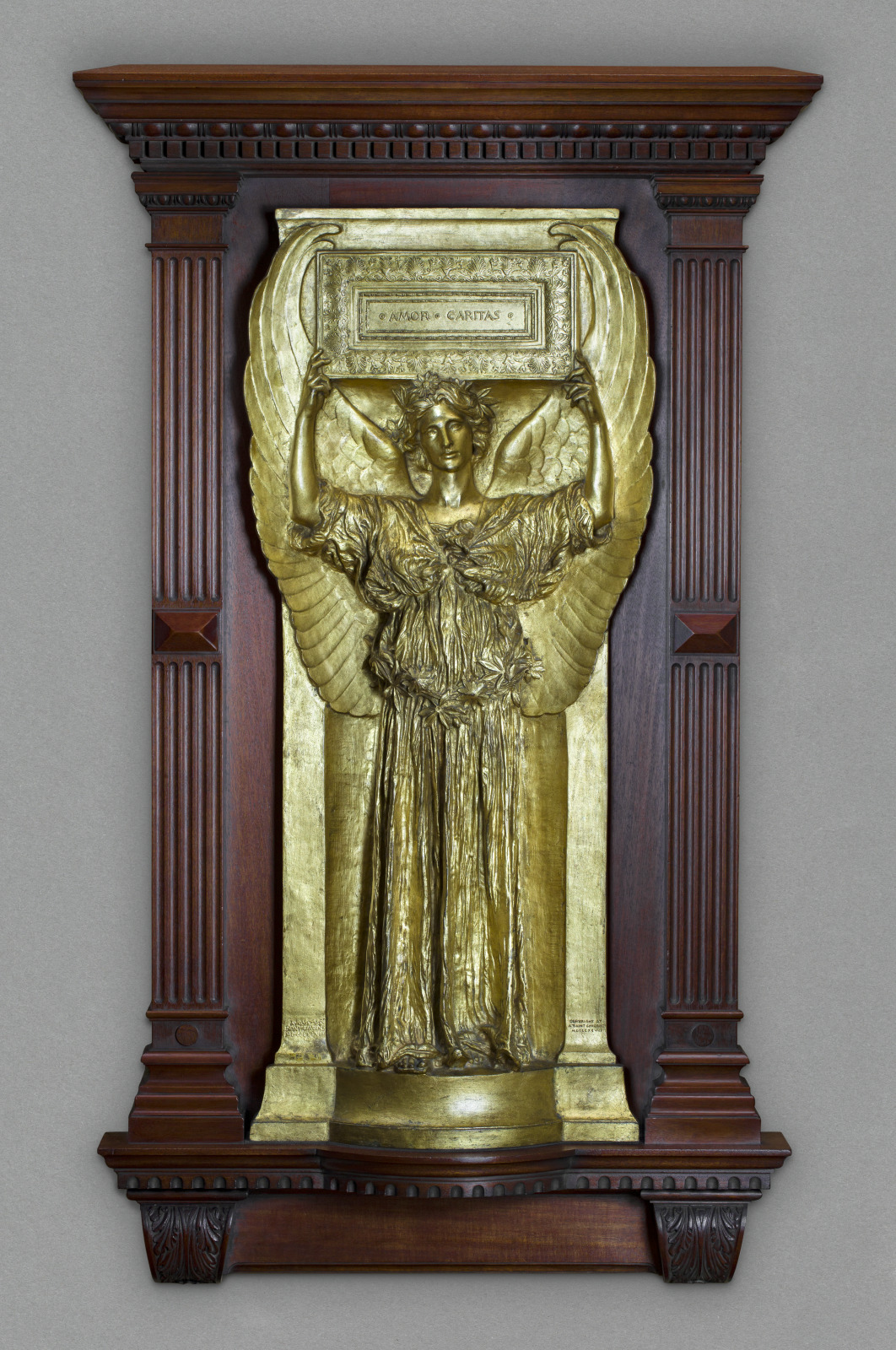
Augustus Saint-Gaudens, American (born Ireland), 1848–1907; Amor Caritas, 1898, cast later; gilded bronze; 40 1/8 x 17 3/8 x 4 5/8 inches; Saint Louis Art Museum, Museum Purchase 54:1927
Amor Caritas features a winged figure in a loose robe holding a text consisting of the Latin words for love and charity. The female figure is an example of the melancholy type Augustus Saint-Gaudens favored. In this case, the grave expression reflects the figure’s origin as part of a tomb monument Saint-Gaudens designed. The artist created multiple versions of this subject, eventually marketing it as an independent piece.
October 11, 2024
Spout and Bridge Vessel in the Form of a Falcon

Spout and Bridge Vessel in the Form of a Falcon, c.400–300 BC; Paracas, Peru, Early Horizon; ceramic with pigment; 6 1/4 x 5 7/8 x 5 1/2 inches; Saint Louis Art Museum, Gift of Morton D. May 367:1978
This vessel depicts a falcon, identified by the distinct green V-shaped eye markings. The falcon is frequently given feline attributes, as shown in the ears. This vessel features a bright shade of green not commonly found on Paracas ceramics. The back of the vessel contains a repeating motif of incised vencejos or swifts, a bird commonly associated with water and fertility. Earlier Paracas ceramics reflect a strong Chavín influence with an emphasis on fangs, pendant-shaped eyes, and the occurrence of the stirrup spout form. As the Paracas style evolved, the art reflected a gradual change in mythology and religious beliefs. The Chavín style of condors, eagles, and hawks are replaced by Paracas ceramics with foxes, swallows, and falcons.
October 10, 2024
Robert Hay Drummond, D. D. Archbishop of York and Chancellor of the Order of the Garter

Sir Joshua Reynolds, English, 1723–1792; Robert Hay Drummond, D. D. Archbishop of York and Chancellor of the Order of the Garter, 1764; oil on canvas; 50 x 40 inches; Saint Louis Art Museum, Gift of James F. Ballard 46:1930
In this monumental portrait, Robert Hay Drummond wears regalia indicating both his secular and ecclesiastical offices. His massive blue robe, tied with long silk cords, bears the insignia of the Order of the Knights of the Garter (a prestigious group founded in the 14th century in service to the king) on his right shoulder. Drummond wears the traditional linen collar favored by clergy and rests his left hand on an especially elaborate purse, symbolizing the distribution of alms to the poor, one of his duties as Royal Almoner. The frontal pose and voluminous drapery suggest a powerful individual.
October 9, 2024
Covered Wine Vessel (hu) with Design of Animals
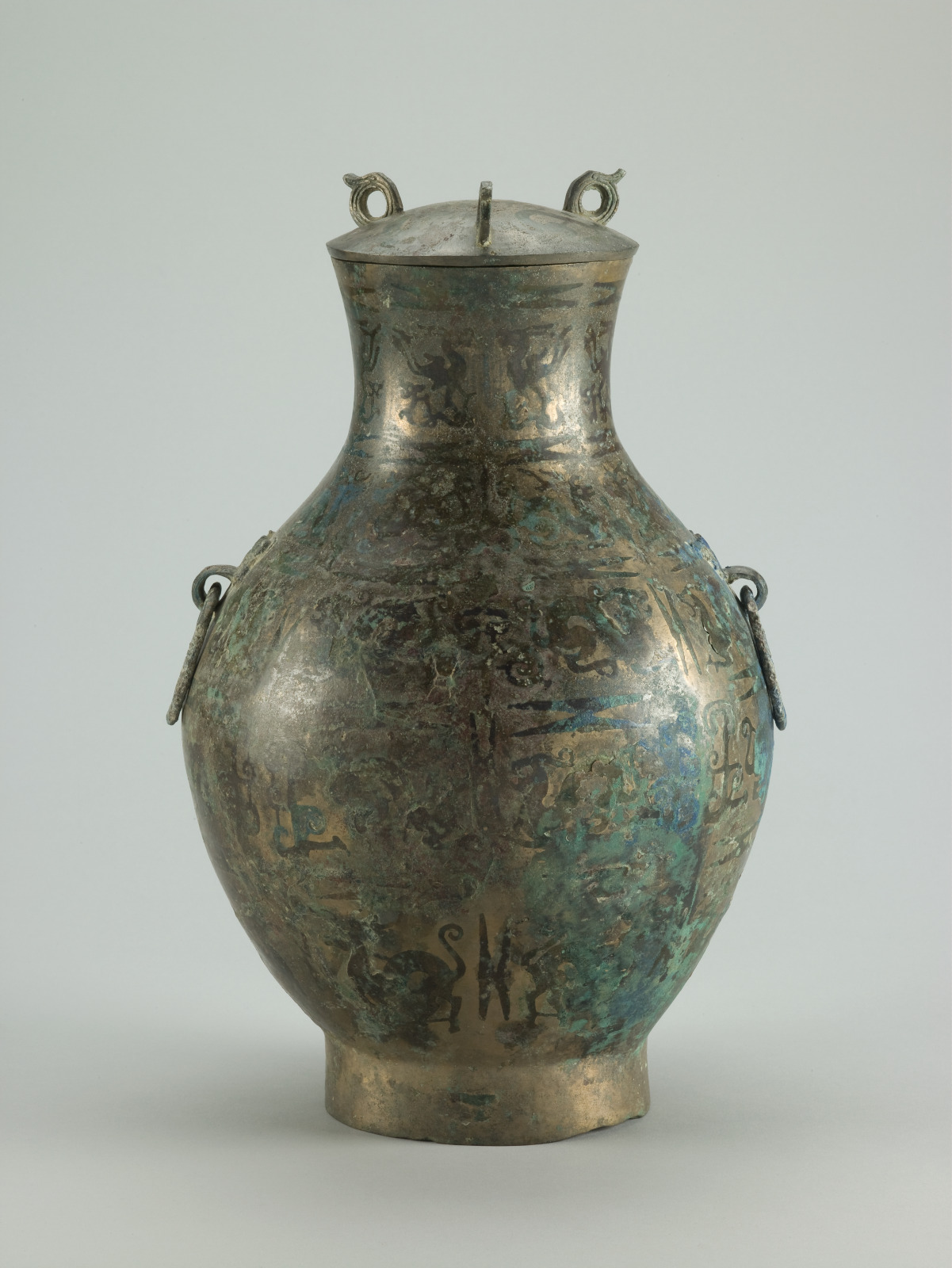
Covered Wine Vessel (hu) with Design of Animals, late 6th–early 5th century BC; Chinese, Eastern Zhou dynasty, Springs and Autumns period; bronze with copper inlay; 14 5/8 x 9 1/2 x 9 inches; Saint Louis Art Museum, Spink Asian Art Collection, Bequest of Edith J. and C. C. Johnson Spink 40:2014a,b
One of six similar bronzes known to exist, this very rare vessel has a slightly flared mouth, swollen body, and a narrow foot. The cover, a shallow dome with equidistant upright rings, is inlaid with three dragons surrounding a stag at the center. The shoulders bear two handles in the shape of animal-form masks, each securing a ring with cast decoration. The body is decorated in five registers of inlaid design separated by a figure resembling two triangles joined at their top point.
The many fantastical figures decorating this object include pairs of crested birds standing on dragon-headed snakes, reclining deer, long-horned feline beasts, and deer-headed creatures cavorting over the vessel’s surface. These elements, inlaid with copper, originate from the artistic traditions of southern China.
October 8, 2024
Marseille, Harbor II
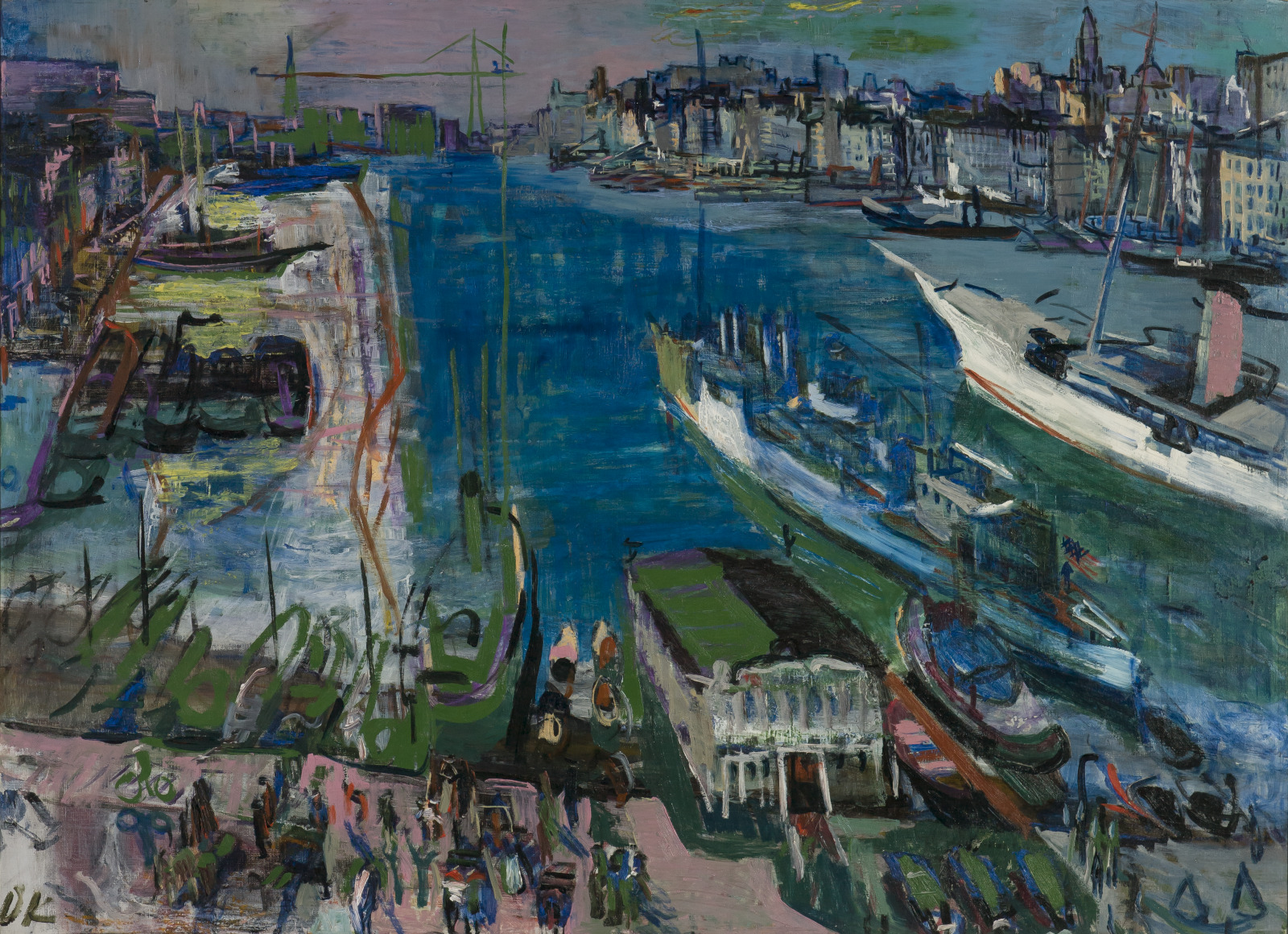
Oskar Kokoschka, Austrian, 1886–1980; Marseille, Harbor II, 1925; oil on canvas; 29 x 39 5/8 inches; Saint Louis Art Museum, Museum Purchase 7:1942
Tiny fishing boats and massive steamships dock at the bustling Old Port of Marseille in France. Oskar Kokoschka stopped here in March of 1925 on a tour of the Mediterranean region. At each city, he painted a famous landmark from a high vantage point, capturing unfamiliar sights and sounds with dynamic brushstrokes. This happy scene masks a darker reality. In the 1920s, Kokoschka traveled compulsively to escape his traumatic experience as a soldier in World War I (1914–1918).
October 7, 2024
The Bronco Buster
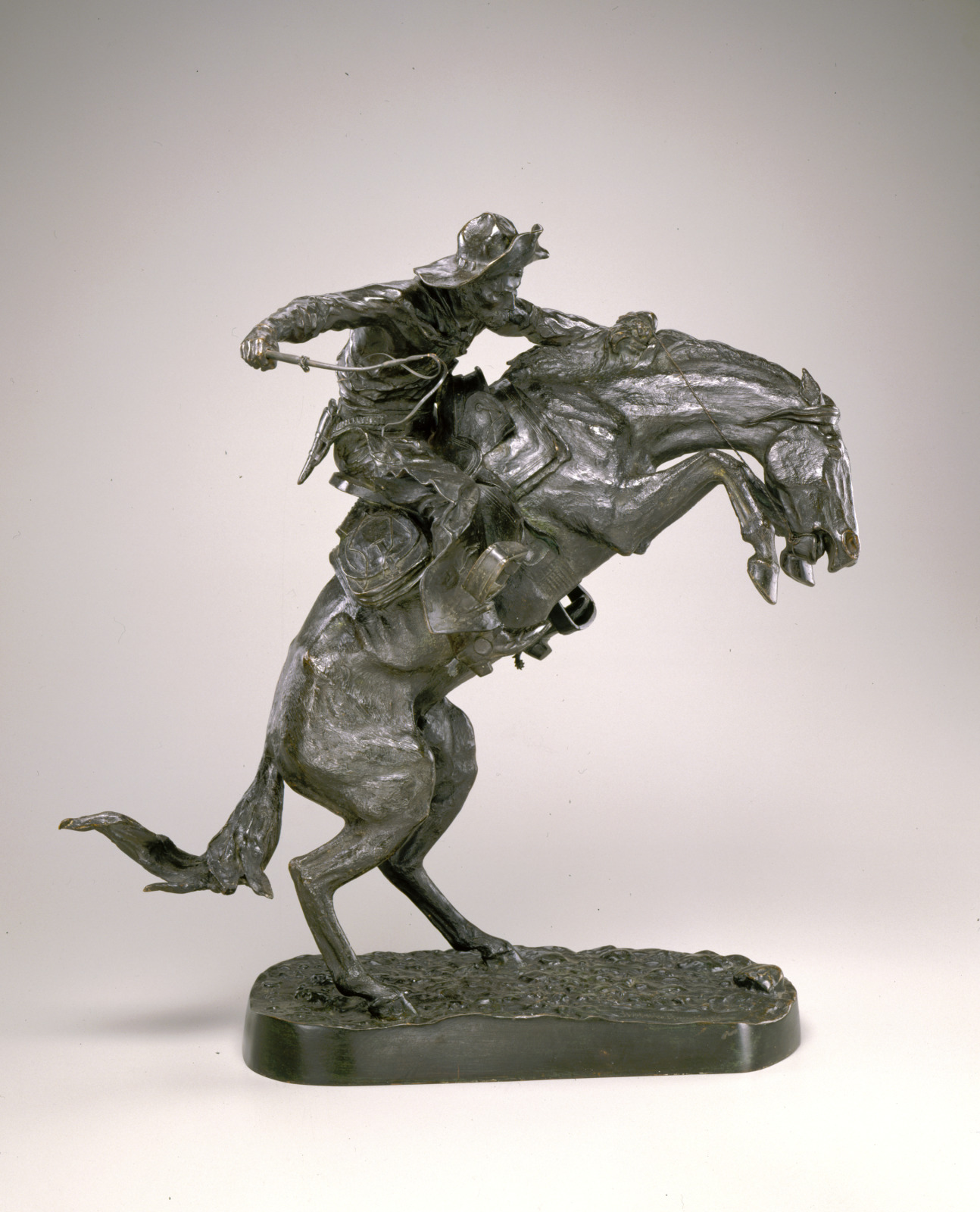
Frederic Remington, American, 1861–1909; The Bronco Buster, 1895, cast 1907; bronze; 23 x 21 1/2 x 13 inches; Saint Louis Art Museum, Gift of J. Lionberger Davis 201:1955
The Bronco Buster depicts a cowboy breaking in a rearing horse. The horse and rider are at the extreme of a violent counterbalance, with the horse’s neck twisting to one angle in opposition to the sharp pull of the cowboy’s body. Though dramatic, the composition captures in bronze a moment of graceful suspension. The burst of energy is grounded in the many realistic surface details, such as the motion of the whip, dented folds of the hat, and bunched creases in the cowboy’s shirt.
Frederic Remington’s art perpetuates notions of an “old” West characterized by conflicts between Native Americans and soldiers, and adventurous cowboys riding through unfenced land. Although this subject was common in stories romanticizing western life, by the time Remington created his works such events were long past.
October 6, 2024
A Man in a Turban, Seen from Behind

Giambattista Tiepolo, Italian, 1696–1770; A Man in a Turban, Seen from Behind, c.1745–50; red chalk, heightened with white chalk, on blue paper; 11 5/8 x 7 1/2 inches; Saint Louis Art Museum, Funds given by Opal and Arthur H. Meyer Jr. 15:2020
Seen from behind, the figure sketched in red chalk is a study for the man at the lower left of The Crucifixion. The original blue of the paper has faded considerably, but it is still possible to understand how Giambattista Tiepolo used it as a mid-tone to convey three-dimensional form.
In the context of the broader composition, it becomes possible to read this turbaned figure as a witness to the death of Jesus. His head covering and garments would have marked him as a familiar outsider to 18th-century Venetian audiences with a long history of contact with the Ottoman Empire (1299–1922). Paired this way, the drawing tells a story about Tiepolo’s focus and thinking in relationship to the painting.
October 5, 2024
Chintz Textile Panel with Design of Decorative Roundels and Rosettes

Chintz Textile Panel with Design of Decorative Roundels and Rosettes, 18th century; Indian, for the Japanese market; dyed cotton with painted resist and mordant; textile: 10 5/8 x 10 7/8 inches; Saint Louis Art Museum, Gift of Mr. and Mrs. Charles A. Lowenhaupt 17:2022
Indian chintz, or sarasa, was exported to Japan starting from the latter half of the 16th century. Although the fabric was made in India, the repeating pattern of regularly spaced rosettes and roundels seen here was based on Japanese sources. The motifs evoke Japanese Buddhist iconography—the lotus and the Dharma wheel—as well as the traditional chrysanthemum.
This type of design is present in late 18th-century Japanese sarasa manuals published in Edo, Kyōto, and Ōsaka. These manuals, with color directives encouraging Japanese textile printers to copy the Indian designs, confirm that sarasa were widely circulated even before such publications appeared.
October 4, 2024
Interior with Pink Wallpaper I, from the series “Landscapes and Interiors”

Edouard Vuillard, French, 1868–1940; printed by Auguste Clot, French, 1858–1936; published by Ambroise Vollard, French, 1867–1939; Interior with Pink Wallpaper I, from the series Landscapes and Interiors, 1899; color lithograph; 15 3/8 x 12 inches; Saint Louis Art Museum, The Sidney S. and Sadie Cohen Print Purchase Fund 167:1987
Edouard Vuillard depicts an intimate interior view of a middle-class French household. Interior with Pink Wallpaper I pulls back to give a fuller view of the room, yet the dizzying pattern of the pink floral wallpaper equally disrupts the space and overwhelms the picture. The image represents uncanny spaces so private that they are nearly inaccessible to the viewer.
These prints are from the series Landscapes and Interiors, which represents the height of Vuillard’s printmaking. The suite was commissioned by the enterprising dealer and print publisher, Ambroise Vollard, to capitalize on the popularity of the color print in the 1890s. Unfortunately, these intensely private images did not sell well and Vuillard abandoned lithography shortly after the series’ completion.
October 3, 2024
The Sentinel at the Sultan’s Tomb
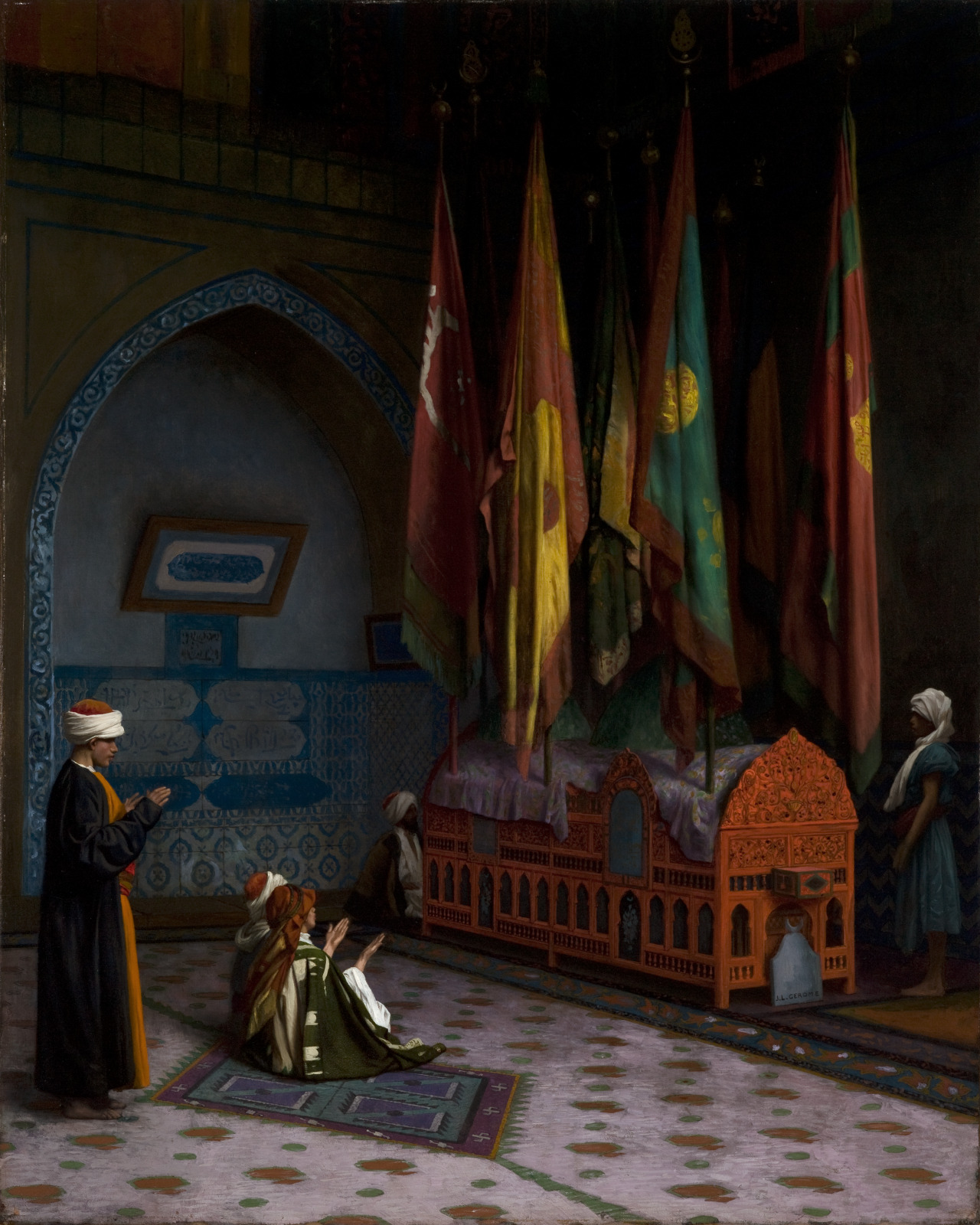
Jean-Léon Gérôme, French, 1824–1904; The Sentinel at the Sultan's Tomb, c.1880; oil on canvas; 32 1/4 x 26 1/8 inches; Saint Louis Art Museum, Museum Purchase 77:1915
Jean-Léon Gérôme carefully depicted each colorful flag atop a sultan’s tomb as well as the varied gestures of worshippers in prayer. The artist placed his signature on a tablet at the foot of the tomb. This constructed and largely invented image was based on Gérôme’s memories of mausoleums that he had visited in Bursa, a town in Turkey. Gérôme traveled often to Turkey, where he made numerous sketches of historic architecture that informed his work.
October 2, 2024
Ölberg

Gerhard Richter, German, born 1932; Ölberg, 1986; oil on canvas; 118 1/2 x 98 9/16 inches; Saint Louis Art Museum, Museum Purchase 107:1987; © 2013 Gerhard Richter
Gerhard Richter dragged and scraped a spatula slowly over thickly applied paint, allowing layers of color to show through. What appears to be a spontaneous composition was laboriously worked by the artist to achieve complexity and depth. The dynamic and luscious movement of paint across the canvas relates to the active brushwork of American Abstract Expressionism practiced in the postwar era. However, Richter’s cool, methodical approach challenges the emotional charge and spiritual overtone of the American abstract tradition, creating a wry commentary on the heroic genius and expressive tendencies in American and West German art.
October 1, 2024
Actor Nakayama Tomisaburō as Miyagino

Tōshūsai Sharaku, Japanese, active c.1794–1795; published by Tsutaya Jūzaburō, Japanese, 1750–1797; Actor Nakayama Tomisaburō as Miyagino, 1794; color woodblock print with mica; image: 14 3/4 x 9 7/8 inches, sheet: 14 3/4 x 9 7/8 inches; Saint Louis Art Museum, Museum Purchase 1045:1920
The subject for this woodblock print was Nakayama Tomisaburo, an eighteenth-century actor who specialized in female roles for the Kabuki theater. Known as “Floppy Tomi,” Tomisaburo was famous for his unusually flexible movements and the delicate, nimble gestures by which he conveyed his characters’ femininity. Sharaku featured “Floppy” in a remarkable total of eight print designs and character roles over six short months. In this print, Tomisaburo is portraying the avenging heroine Miyagino, who plots vengeance for her father’s murder in the lively fifth act of the play. Sharaku, who attended the performance, depicts the heroine as she contemplates the final fate of her father’s killer. For Tomisaburo’s fans, the image captured the dramatic moment and consummate skills of their favorite actor in a format made more arresting by its shimmering mica ground.
September 30, 2024
Bowl (tanoa or kumete ni yaqona)
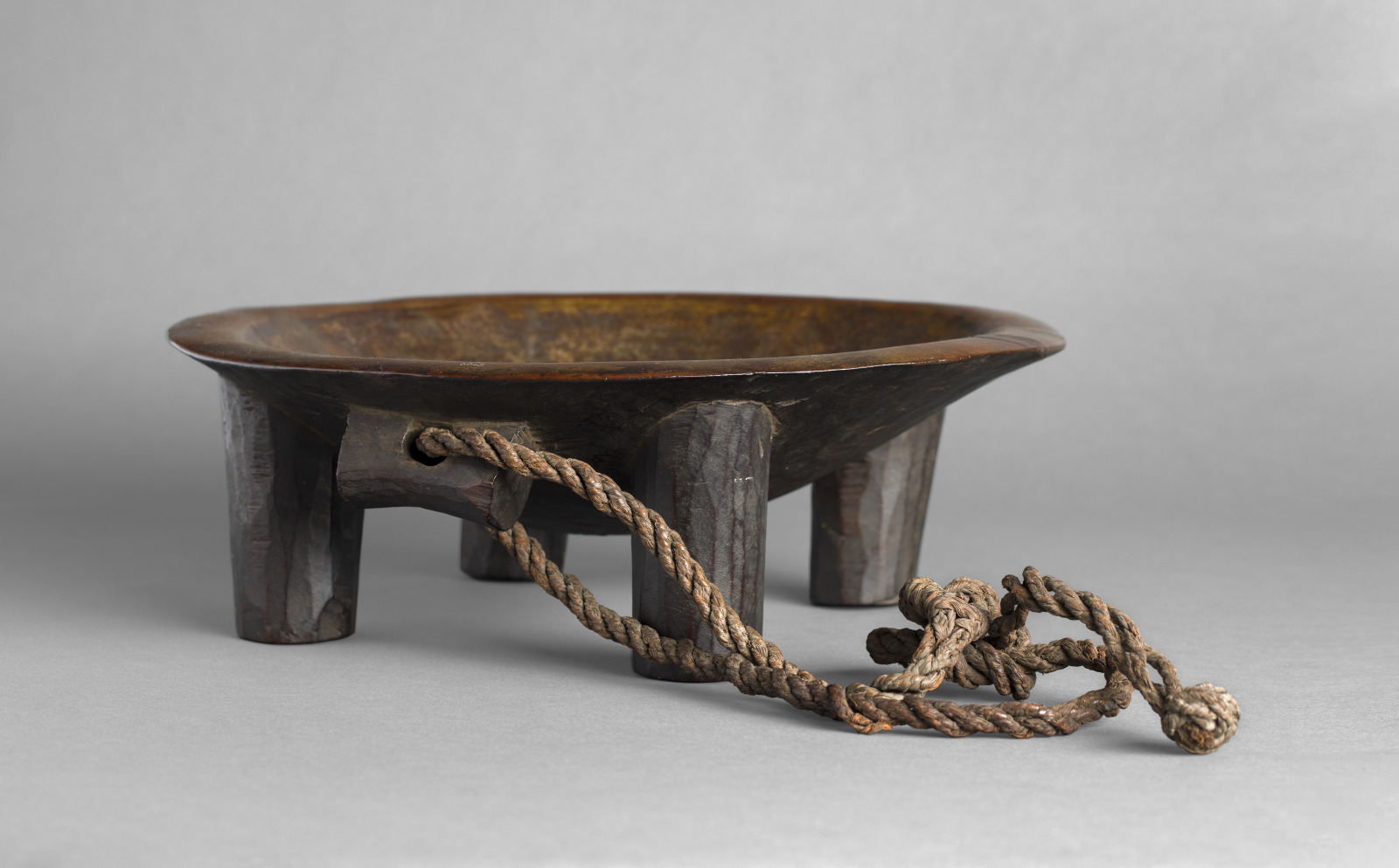
Fijian artist; Bowl (tanoa or kumete ni yaqona), 19th–20th century; wood, plant fiber; 4 15/16 x 14 1/16 inches; Saint Louis Art Museum, Gift of Morton D. May 141:1978
Yaqona, or kava, is a beverage produced by pressing and filtering the crushed roots of a pepper plant (Piper methysticum) in a wide, flat bowl such as this. In Polynesia, only men are allowed to consume this beverage, with access at times limited to a chief. From ancient eras to the present day, consuming yaqona is an essential prelude to grand gatherings of chiefs and all ceremonial or political events. The consumption of yaqona observes a precise ritual. Young men prepare the beverage and present it in a drinking cup or bowl to each person in order of rank. The calming effects of yaqona are recognized as an aid to liberate speech and open up debates and discussion.
September 29, 2024
In the Roman Campagna
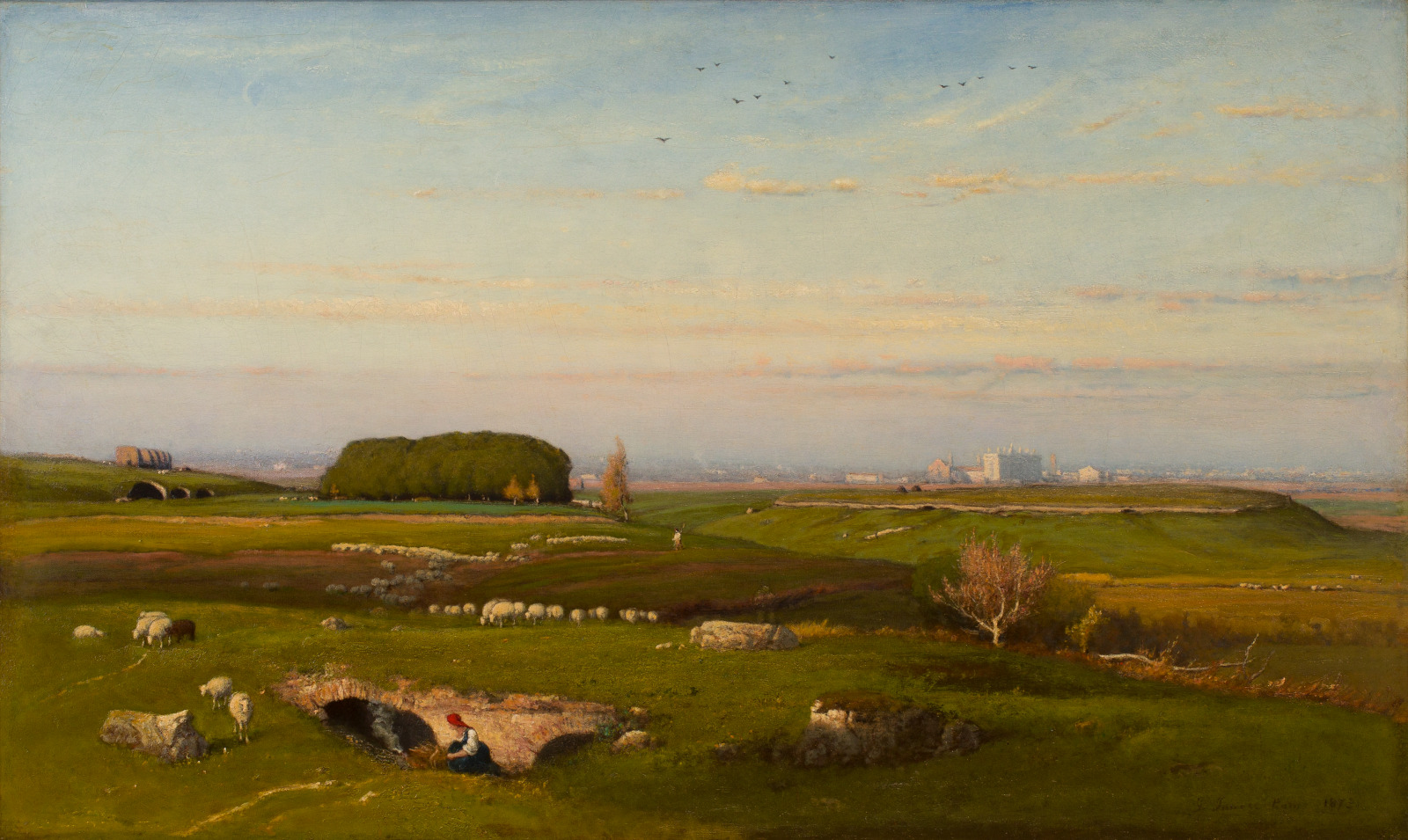
George Inness, American, 1825–1894; In the Roman Campagna, 1873; oil on canvas mounted on board; 26 x 43 inches; Saint Louis Art Museum, Museum Purchase 115:1946
A picturesque flock of sheep graze in an Italian countryside awash in light. The quiet tones of blue and green, and simple forms evoke nature’s quiet poetry. Ruins in the foreground frame the shepherdess and bring to mind Italy’s ancient past. They are contrasted with the background, where the Church of St. John Lateran is visible. This mingling of past and present, of a “golden era” gone by, reflects the way many Americans at the time interpreted the Italian landscape. They viewed such images as a contrast to the promise they believed the United States had as a new country, with no ruins or bygone eras to impede its progress.
September 28, 2024
Apollo Textile Sample

designed by Josef Hoffmann, Austrian (born Austria-Hungary) 1870–1956; made by Wiener Werkstatte, Vienna, Austria, active 1903–1932; Apollo Textile Sample, 1910–11, probably made c.1913; block-printed linen; 43 x 27 inches; Saint Louis Art Museum, Marjorie Wyman Endowment Fund 8:2020
Josef Hoffmann’s Apollo is a dense pattern of pink bell-like flowers in a sea of heart-shaped blue leaves. Printed on linen, like this example, and silk, the small-scale design was used for both interiors and clothing. Wiener Werkstätte artist Mela Köhler-Broman depicted a chic woman decked in Hoffmann’s textile walking her dachshunds in a postcard advertising the firm’s 1911 fashion collection. It speaks to fashion’s role within a Gesamtkunstwerk, or “total work of art,” where every aspect of a design is coordinated to create a cohesive whole.
September 27, 2024
Sunset

Evangeline Montgomery, American, born 1930; printed and published by Brandywine Workshop, Philadelphia, Pennsylvania, founded 1972; Sunset, 1997; offset lithograph and screenprint; sheet: 21 5/8 x 29 13/16 inches; Saint Louis Art Museum, The Thelma and Bert Ollie Memorial Collection, Gift of Ronald and Monique Ollie 176:2017; © Evangeline Montgomery
Sunset evokes flames engulfing redwood trees during a wildfire, a distinct memory from the artist’s time living in California from 1955 to 1976. Memory is a central theme of Evangeline Montgomery’s work. She uses travel diaries and photographs to transform her experiences and awe of nature into visual representations. Montgomery traveled extensively throughout her career starting in 1983, when she began work for the Arts America Program at the United States Information Agency. In her role there, she coordinated tours of American museum exhibitions at home and abroad.
September 26, 2024
A Blacksmith’s Shop

Richard Earlom, English, 1743–1822; after Joseph Wright of Derby, English, 1734–1797; published by John Boydell, English, 1719–1804; A Blacksmith's Shop, 1771; mezzotint; plate: 23 5/8 x 17 1/8 inches, sheet (trimmed): 24 5/16 x 17 5/16 inches; Saint Louis Art Museum, The Sidney S. and Sadie Cohen Print Purchase Fund 15:2007
Richard Earlom’s dramatic large-scale print depicts a group of men forging iron on an anvil in an abandoned church. This is a stunning example of the mezzotint technique, popular in England in the 18th and 19th-centuries because it yielded rich and velvety blacks. This process required the entire plate to be roughened with a tool called a rocker. The printmaker then scraped and burnished the roughened surface of the plate to the desired degree of whiteness, thus working from dark to light.
September 25, 2024
Woman’s One-piece Sash (maru-obi) with Design of Repeating Bands of Medallions Containing Dragons, Phoenixes, and Floral Motifs

Woman's One-piece Sash (maru-obi) with Design of Repeating Bands of Medallions Containing Dragons, Phoenixes, and Floral Motifs, late 19th century; Japanese, Meiji period; plain-weave silk ground and supplementary weft patterning; 13 feet 5 inches x 26 5/16 inches; Saint Louis Art Museum, Gift of Mrs. George O. Carpenter 78:1941
This maru-obi, or one-piece sash, is the most formal type worn by Japanese women. The fabric has been unfolded to reveal its double width, while the original lengthwise crease remains visible.
The gray silk background is intricately brocaded with a repeating pattern of medallions including dragons, phoenixes, and birds, as well as floral, fan and scroll shapes. Despite the variations in color, the motifs always remain within the same narrow limits. Near each end of the textile is a double stripe of plain gold threads.
September 24, 2024
Urn
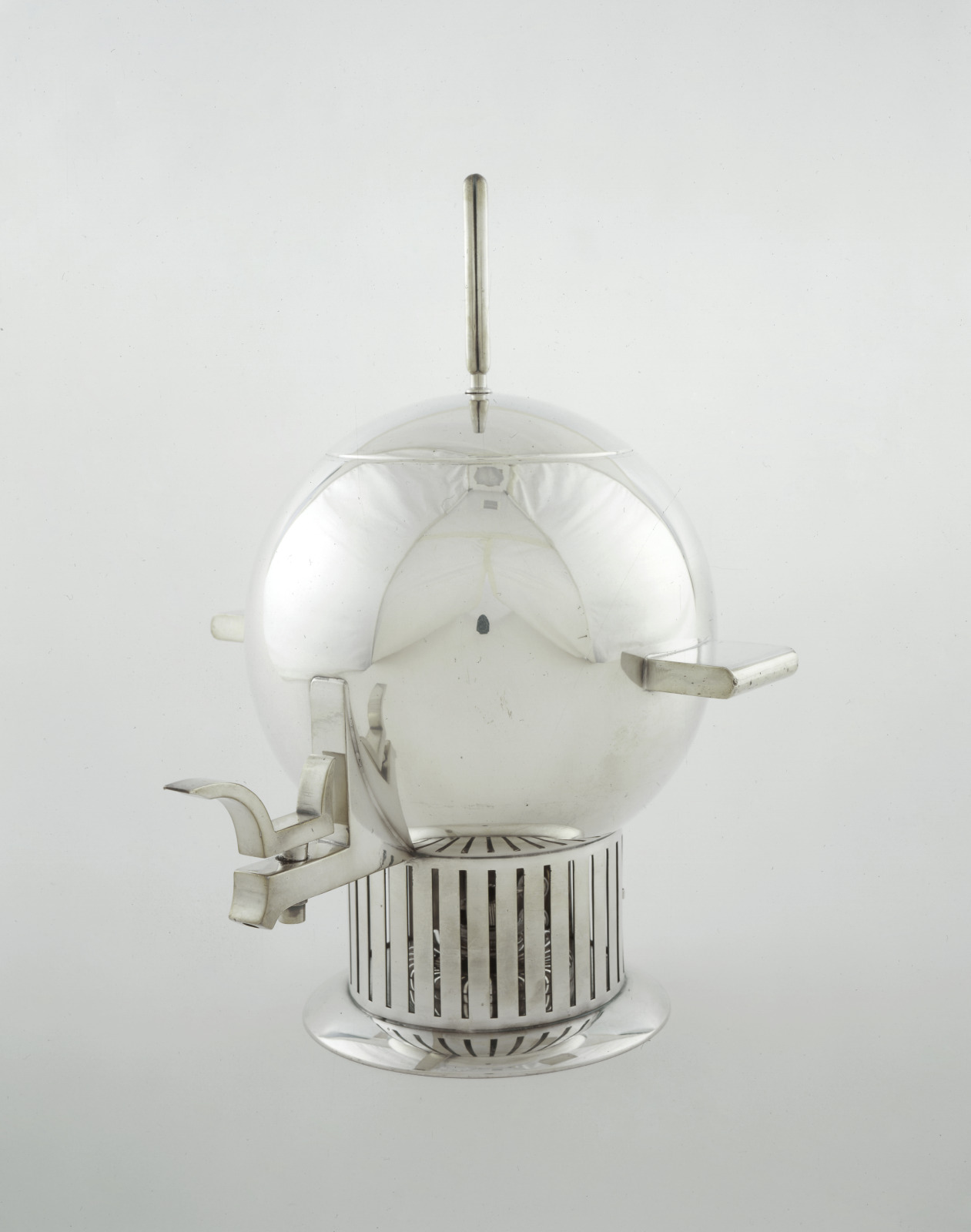
designed by Eliel Saarinen, American (born Finland), 1873–1950; made by Wilcox Silver Plate Company, Meriden, Connecticut, active 1898–1981, and International Silver Company, Meriden, Connecticut, active 1898–1981; Urn, 1934; silver plate; urn: 14 1/4 x 10 3/4 x 11 1/4 inches, heating element: 2 x 3 x 3 5/8 inches; Saint Louis Art Museum, Museum Shop Fund and funds given by the Marjorie Wyman Endowment Fund, Alice S. Gerdine, Mrs. Charles W. Lorenz, the Gary Wolff Family, Daniel Morris and Denis Gallion, Elissa and Paul Cahn, an anonymous donor, Mr. and Mrs. L. Max Lippman Jr., Dr. and Mrs. F. Thomas Ott, and the E. Reuben and Gladys Flora Grant Charitable Trust 119:2003a-c
Precise geometric forms, absence of ornament, sleek reflective surfaces, and elegant proportions characterize this urn. These elements express the new style that came to be associated with progress, optimism, and forward-looking American industrial design in the early 20th century.
Finnish-born architect Eliel Saarinen first designed this urn for a 1934 exhibition at The Metropolitan Museum of Art entitled Contemporary American Industrial Art. The goal of this celebrated exhibition was to promote a new aesthetic for mass production and to help foster the development of industrial design in the United States. Saarinen was one of several leading architects in the country invited to design a furnished room for the exhibit. His Room for a Lady included furniture, textiles, fashion, and silver designs. The most famous piece from Saarinen’s installation was a silver-plated urn identical to this one, few of which were ever produced.
September 23, 2024
Pitcher in the Form of a Female Head
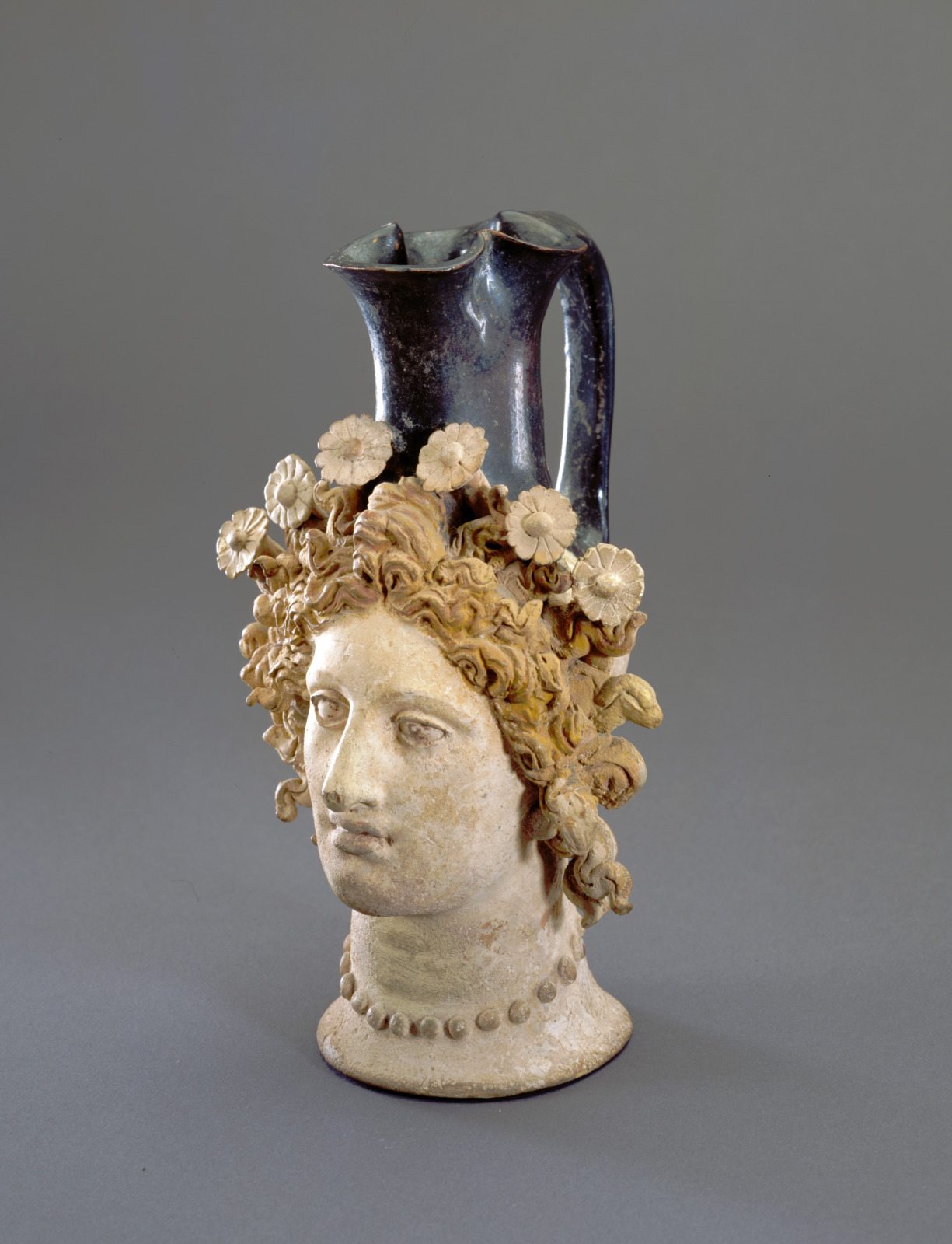
Pitcher in the Form of a Female Head, 4th century BC; Greek, or South Italian, Italy, Hellenistic period; terracotta; 6 11/16 x 5 1/8 x 4 3/8 inches; Saint Louis Art Museum, Museum Purchase 56:1953
As today, individuals in antiquity found ways to express their devotion to the gods. Whether maintaining a small altar at home for the worship of a particular deity, or presenting gifts called votives, at sanctuaries or graves, many of the objects that survive from antiquity served a ritual function. Terracotta objects, such as this pitcher, reflect the most common medium for votive and dedicatory items because of its availability and affordability.
September 22, 2024
Rising Moon

Karl Schmidt-Rottluff, German, 1884–1976; Rising Moon, 1911–12; oil on canvas; 34 7/8 x 37 7/8 inches; Saint Louis Art Museum, Bequest of Morton D. May 938:1983
A solitary cart waits on an empty path receding between gabled cottages; in the distance are a steep mountain and glowing harvest moon. Karl Schmidt-Rottluff’s mysterious work was inspired by the landscape around the Baltic coast of Germany. The artist represents his scene with vibrant, non-naturalistic colors: the mountain is rendered in intense red and magenta and the houses in ultramarine blue. Schmidt-Rottluff was the youngest member of Die Brücke (The Bridge) and focused largely on landscapes.
September 21, 2024
The Madonna and Child with Saints Louis of Toulouse and John the Evangelist with donors Ludovico Folchi and his wife Tommasa

Davide Ghirlandaio, Italian, 1452–1525; The Madonna and Child with Sts. Louis of Toulouse and Thomas with donors Ludovico Folchi and his wife Tommasa, 1486; tempera and oil on panel; 59 1/2 x 31 1/2 inches; Saint Louis Art Museum, Museum Purchase 109:1922
On a marble pavilion that opens to the sky, Christ, the Madonna, Saint Louis of Toulouse (left), Saint John the Evangelist (right), and two donors form a figural pyramid, a hallmark of Renaissance composition. To emphasize the spiritual meaning of the work, the artist uses the technique of architectural perspective with a central vanishing point to draw the eye to the pomegranate, a symbol of Christ’s resurrection. Although the individuals share a similar space, seemingly beyond time, the sacred figures’ idealistic, youthful appearance contrasts with the earthly realism of the profiled donors.
September 20, 2024
Old Raccoon Dog (tanuki) in a Dense Grove of Bamboo

Konoshima Ōkoku, Japanese, 1877–1938; Old Raccoon Dog (tanuki) in a Dense Grove of Bamboo, early 20th century; hanging scroll: ink on silk; image: 55 3/16 x 19 7/8 inches, scroll: 90 3/8 x 25 1/2 inches; Saint Louis Art Museum, The Langenberg Endowment Fund and Museum Shop Fund 241:1989
In this nocturnal scene, misty stalks of bamboo are silhouetted against an indistinct moon, while a raccoon dog (tanuki) prowls on an ink-wash ground below. This small wild dog, native to Asia, has been a character in Japanese folklore since ancient times. The animal is reputed to be mischievous and jolly, a master of disguise and shape-shifting, but quite gullible and absent-minded.
The artist Konoshima Ōkoku was born in Kyōto. As a second son of his family, he was sent to study at the local industrial school. However, his urge to paint prevailed, and in 1893 he became a pupil of both a Confucian scholar of Chinese calligraphy and a master of the Shijō school of Japanese painting.
September 19, 2024
Egungun Masquerade Costume

Yoruba or Fon artist, Benin; Egungun Masquerade Costume, late 20th century; cloth, wood, cowrie shells, assorted manufactured trimmings, sequins, beads, paint, metal; height: 78 1/2 inches; Saint Louis Art Museum, Friends Endowment Fund 250:2022
Imagine this elaborate costume dancing around in fast, swirling motions, its cloth layers pulsing in a bright whirl of color. The outer panels feature symbols of the most important Dahomey kings from the 17th through 19th centuries. These include representations of Houegbadja (reigned 1645–85) by the fish and net; Agaja (reigned 1708–32) by the ship; Guezo (reigned 1818–58) by the buffalo; Glèlè (reigned 1858–89) by the lion and knife; and Béhanzin (reigned 1889–94) by the shark and egg. The central panel features a cowrie-shell veil that concealed the dancer’s face. A variation of the name or names of the families who owned this costume is embroidered below.
For Yoruba communities, egungun masquerades represent the presence of ancestors among their living descendants. The appearance of a multicolored dog—appliquéd on the central panel and carved at the top of the ensemble—suggests the canine was a family emblem. The dog is a Yoruba signifier for powers to access both the living and spiritual realms.
September 18, 2024
Sadak in Search of the Waters of Oblivion
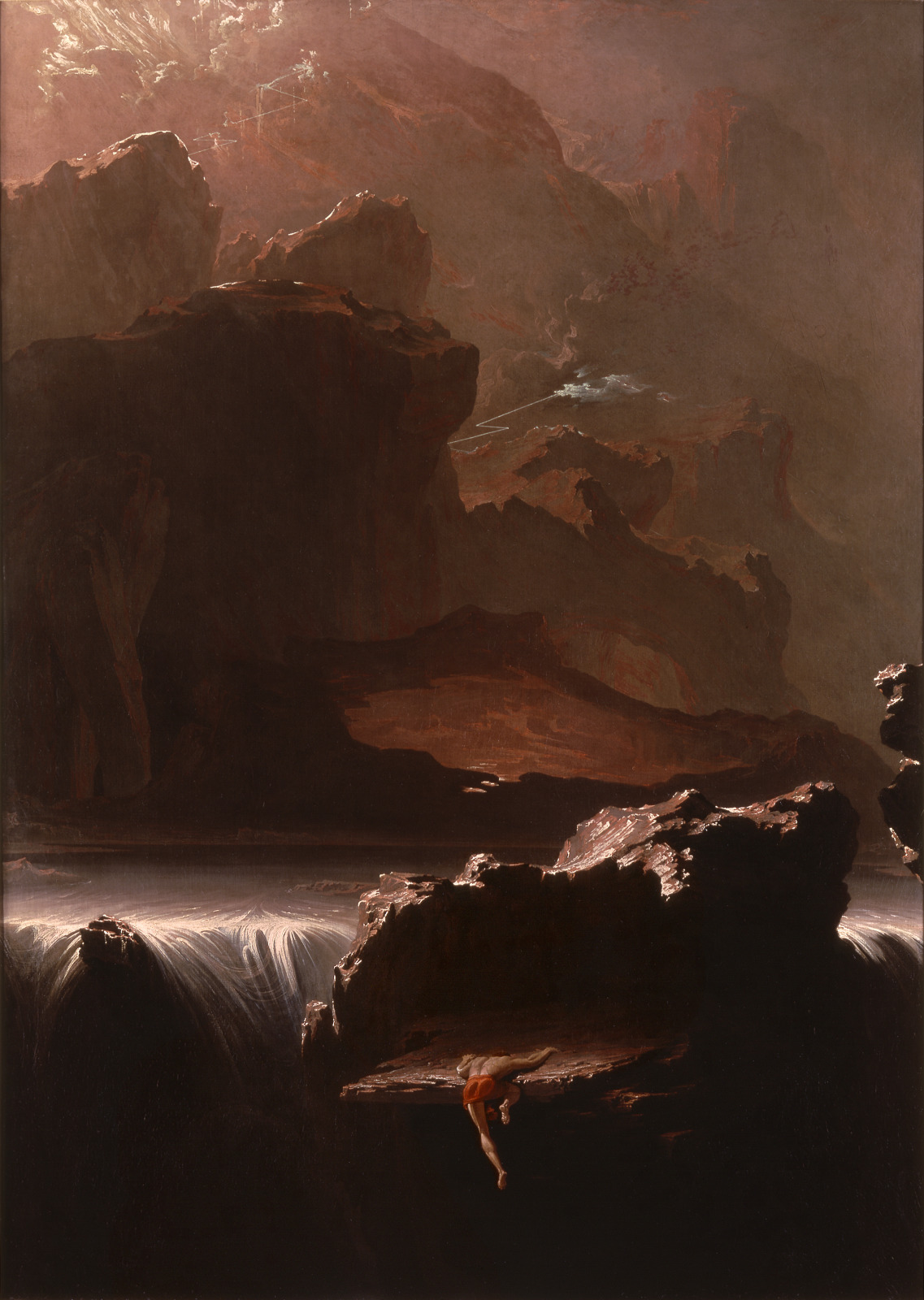
John Martin, English, 1789–1854; Sadak in Search of the Waters of Oblivion, 1812; oil on canvas; 72 1/8 x 51 5/8 inches; Saint Louis Art Museum, Friends Fund 1566:1983
The dramatic subject for this painting came from Tales of the Genii, written by James Ridley and published in 1764. Sadak is a Persian nobleman whose wife is abducted by the Sultan. In exchange for her safe return, Sadak undertakes a perilous journey to get a sample of the Waters of Oblivion.
The painting depicts the nobleman clinging to a rock at the bottom of the painting, dedicating the rest of the canvas to the rocky precipices that Sadak must surmount. Rays of light emanate from the upper left, suggesting that Sadak will ultimately obtain his goal.
September 17, 2024
The Washington Family
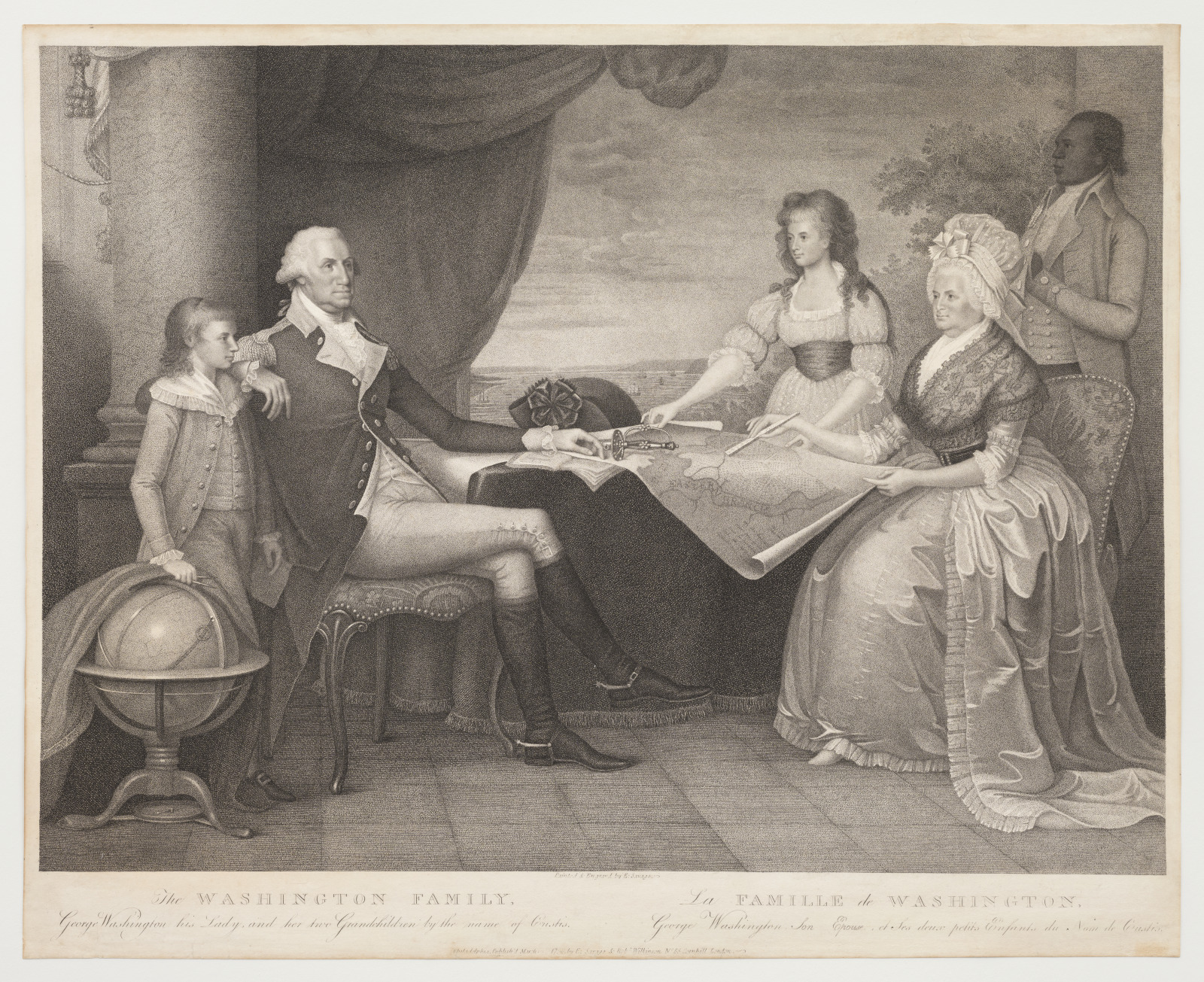
Edward Savage, American, 1761–1817; published by Robert Wilkinson, British, c.1752–1825; The Washington Family, 1798; stipple engraving; 20 13/16 x 25 3/16 inches; Saint Louis Art Museum, Museum Purchase 94:1931
Thousands of small dots coalesce in this stipple engraving to depict George Washington and his family at their Virginia plantation estate, Mount Vernon. Martha Washington, her grandchildren, and the President gather around a plan for Washington, DC, the site for the new United States capital. A Black valet stands in the background. He is most likely Christopher Sheels, an enslaved personal servant who accompanied Washington to New York in 1789, where both men met the artist, Edward Savage.
Savage was a self-taught painter and engraver from Massachusetts who established his reputation by meeting the growing demand for images of the first president. He first created this family portrait as a monumental oil painting and then turned it into a print, which he published in Philadelphia and London. He included a French translation of its title in anticipation of international sales.
September 16, 2024
Claret Jug
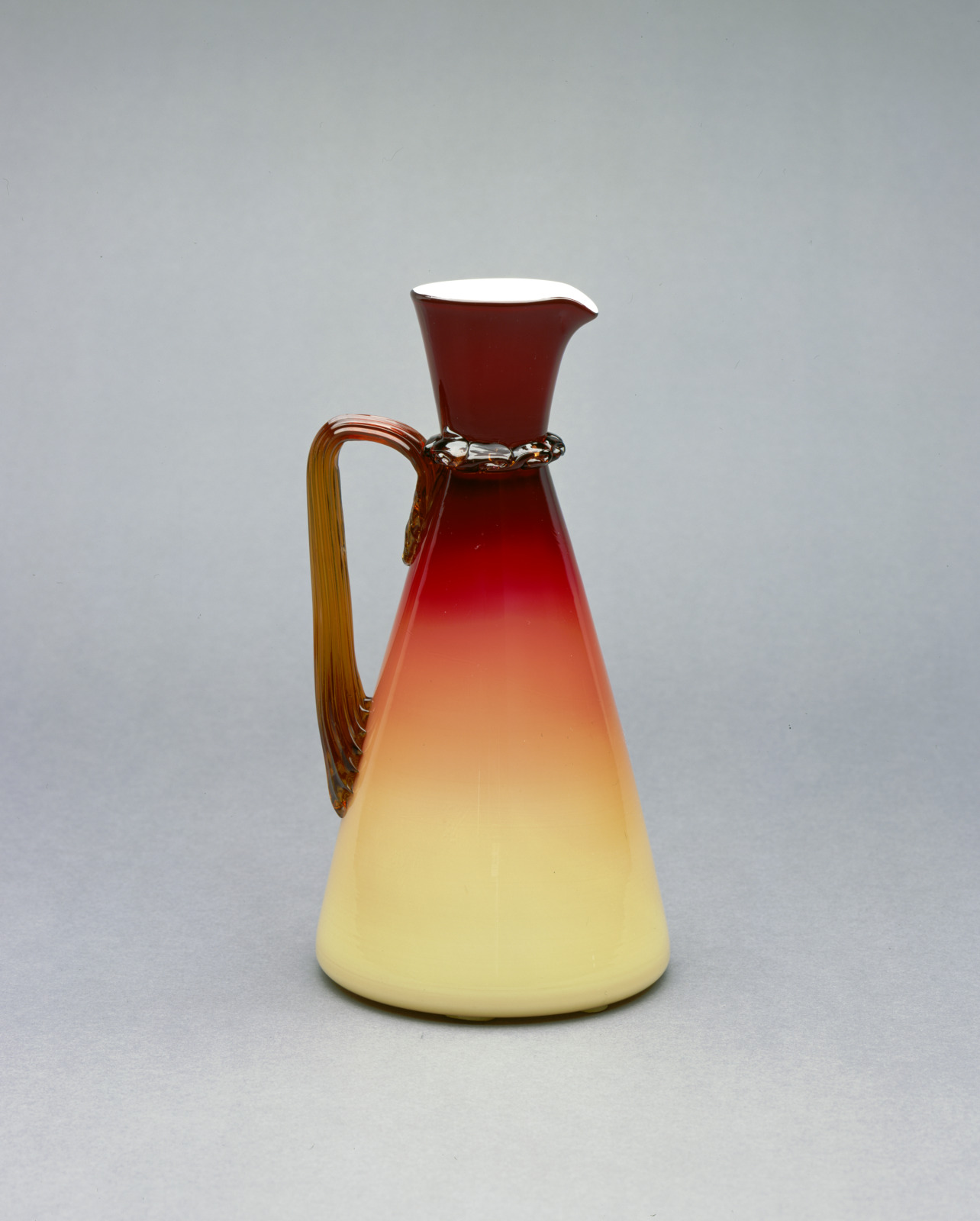
made by Hobbs, Brockunier and Company, Wheeling, West Virginia, active 1863–1891; Claret Jug, c.1886; glass; 10 x 5 x 5 inches; Saint Louis Art Museum, Cronheim-Bettman Endowed Acquisition Fund 1:2002
This object demonstrates that Asian art was an important source of inspiration for artists and designers in Europe and America in the late 19th century. The Claret Jug’s ruby glass fading to pale yellow is meant to resemble the tonal modulations of a type of Chinese porcelain called “peach bloom” for its similarity to the skin of a peach.
September 15, 2024
Sword Hilt with Design of Lion Heads, Arabesque Scrollwork, and Arabic Inscription
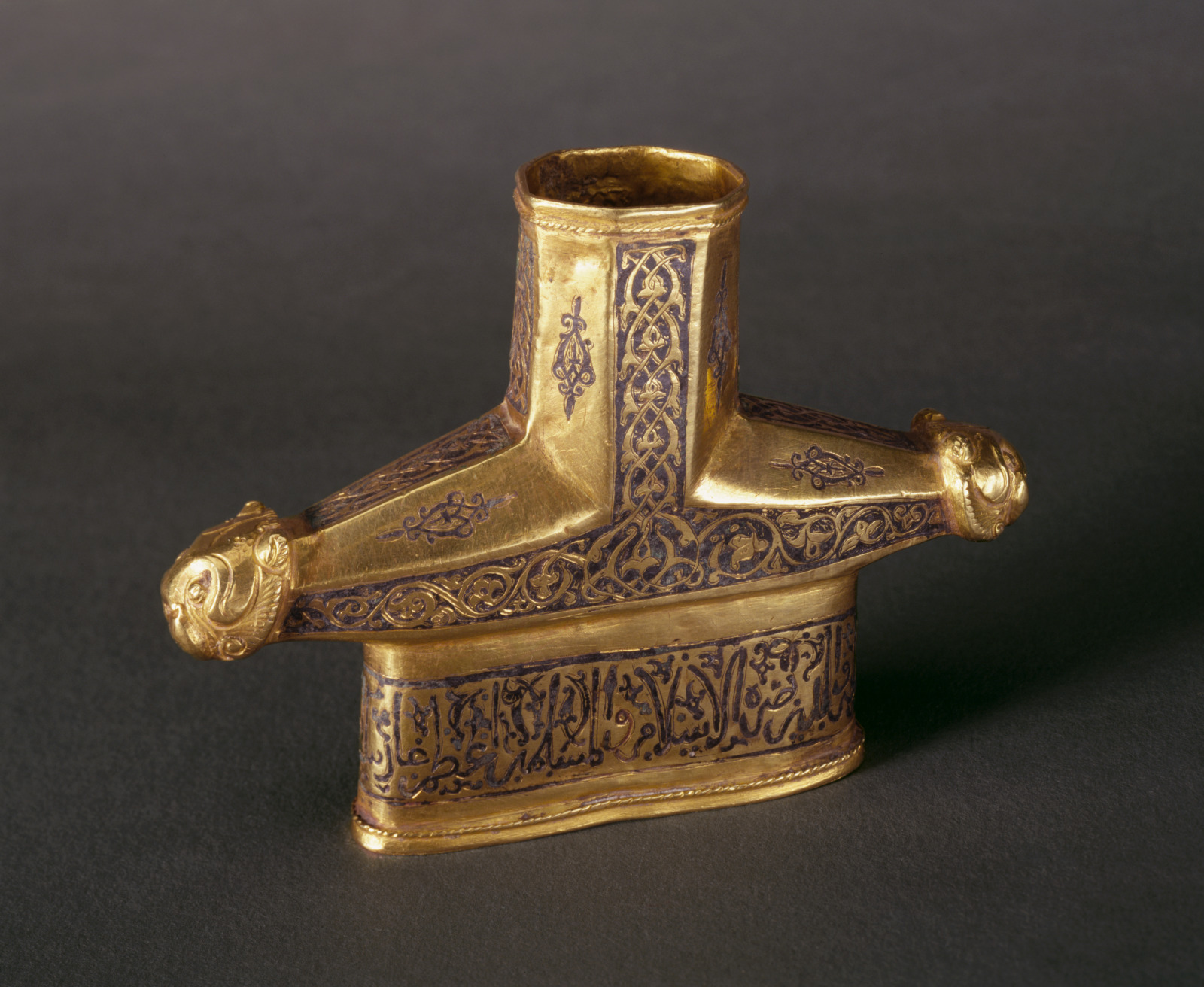
Sword Hilt with Design of Lion Heads, Arabesque Scrollwork, and Arabic Inscription, early 13th century; Persian, Iran; gold with niello; 3 1/2 x 4 7/8 x 1 1/8 inches; Saint Louis Art Museum, Museum Purchase 45:1924
This sword hilt includes an elegant Arabic inscription that encircles its base. The inscription has been translated by the scholar Will Kwiatkowski as “The glorified lord, the greatest Khaqan, prince of the horizons, Shams al-Dawla wa’l-Din, aid of Islam and Muslims, greatest Ghazi Beg Aydughmish.” These words are inlaid with niello, a black metallic mixture used on engraved metal to provide a visual contrast with the polished gold or silver. This hilt was discovered before 1912 in Hamadān in western Iran. The owner of the sword to which this hilt was affixed, Shams al-Din Aydughmish, was ruler of the Jibal region in western Iran, including Hamadān, Isfahān, and Rayy, for a period in the beginning of the 13th century. Nominally a vassal of Abu Bakr ibn Pahlawān, he acted for all intents and purposes as an independent ruler. In 1212, he was forced to flee to Baghdad, where he was apparently well received by the Abbasid caliph. On trying to regain Hamadān with caliphal support, he was seized and killed by his enemies in 1213.
September 14, 2024
Dish with Foliated Rim and Design of Floral Scrolls
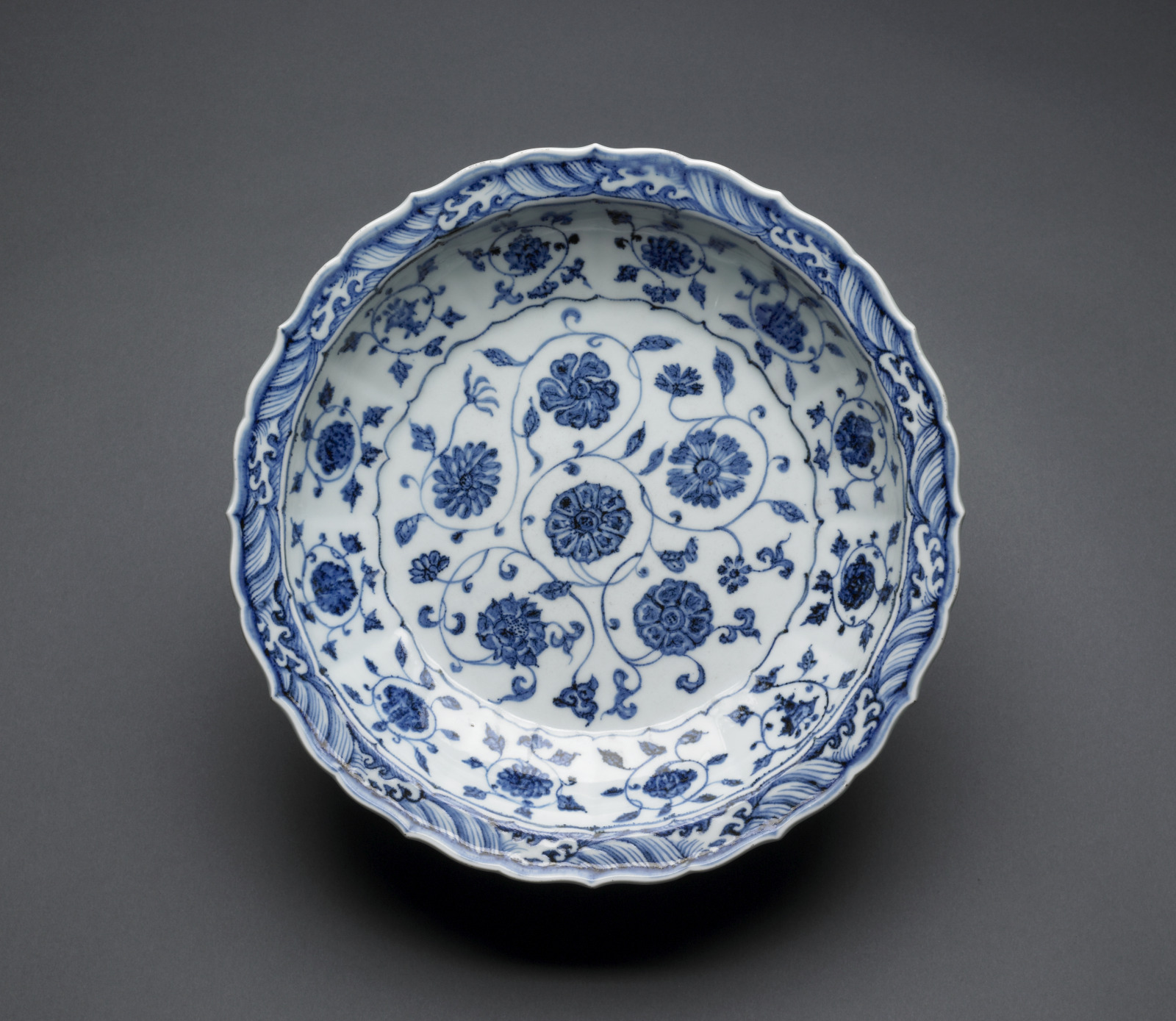
Dish with Foliated Rim and Design of Floral Scrolls, early 15th century; Chinese, Ming dynasty, Yongle period; Jingdezhen ware; porcelain with underglaze cobalt blue decoration; 2 3/8 x 13 5/16 inches, diameter of foot: 8 7/8 inches; Saint Louis Art Museum, Bequest of Samuel C. Davis, by exchange 13:2008
During the early 15th-century, blue-and-white wares such as this dish were made at the imperial kilns of Jingdezhen, located in southeastern China. These ceramics display extraordinary whiteness of the porcelain body, elegant shapes, beautifully painted and pleasingly balanced designs, and smooth transparent glazes. The center of this dish is visually anchored by a lotus flower and surrounded by five seasonal blossoms (mallow, dianthus, camellia, lotus, and chrysanthemum), all on slender interlaced stems.
Encircling the center are 12 additional sprays of flowers. The foliated rim has a frieze of breaking waves while the exterior is decorated with 12 detached floral and fruit sprays. The underglaze cobalt paint is an inky blue-black tone, with the so-called heaped and piled effect, a reference to the inkiness that results where the applied cobalt was oversaturated.
September 13, 2024
The Musician

Miné Okubo, American, 1912–2001; The Musician, 1940 or 1941; color screenprint (resist and wash-out stencil); image: 20 x 17 1/2 inches, sheet: 28 1/4 x 24 1/8 inches; Saint Louis Art Museum, Gift of the Federal Works Agency, Work Projects Administration 234:1943
Colors applied one on top of the other abstract the form of a musician. Miné Okubo used screenprint to great effect in this print, combining swathes of solid color with areas that resemble groups of individual marks. American artists increasingly experimented with models of abstraction in this period. Okubo’s particular skill with bold and graphic imagery would continue in later projects. These included managing the art design for the magazine Trek while incarcerated as a Japanese American at the Topaz Internment camp in Utah from 1942 to 1944 during World War II.
September 12, 2024
Bust of Victor Hugo

Auguste Rodin, French, 1840–1917; Bust of Victor Hugo, 1884; bronze and stone; 16 7/8 x 10 3/4 x 9 1/4 inches, bust with base, height: 22 inches; Saint Louis Art Museum, Gift of Mrs. Edward Mallinckrodt 50:1967
Auguste Rodin modelled the powerful features of the aged Victor Hugo, the great French poet and novelist, perhaps best known for the books Les Misérables and The Hunchback of Notre Dame. Rodin’s bust was based on close observation and the sculptor noted: “I would go look at him, and then with my head filled with the expression of an image that combined the properties of Pan, Hercules, and Jupiter, I would go back again and memorize each fold of skin.”
September 11, 2024
Untitled
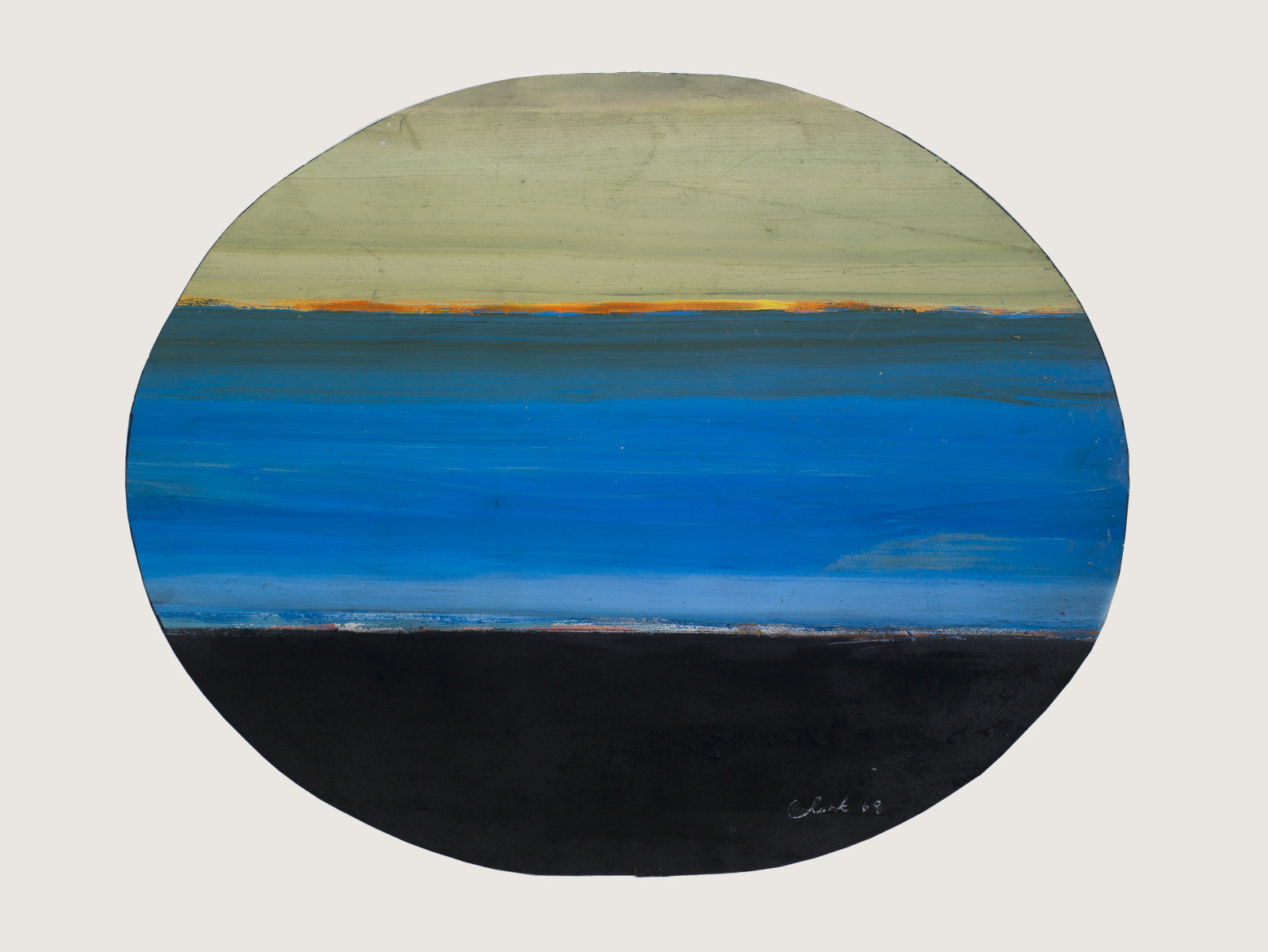
Ed Clark, American, 1926–2019; Untitled, 1969; acrylic and dry pigment; 22 1/8 x 27 1/2 inches; Saint Louis Art Museum, The Thelma and Bert Ollie Memorial Collection, Gift of Ronald and Monique Ollie 126:2017; © Ed Clark / Michael Rosenfeld Gallery
Ed Clark produced bands of interfused color, such as those evident in this work, by pushing pigments across the surface with a single, swift stroke. This maneuver, often executed horizontally on a floor, offers Clark the implied motion he desires in his images—a directional force further accentuated by a shaped support. He explained, “It seemed to me that the oval as a natural shape could best express movement extended beyond the limits of the canvas.”
September 10, 2024
Buddhist Priest’s Stole (ōhi) with Design of Coiled Dragons, Lion-dogs, Peonies, and Chrysanthemums
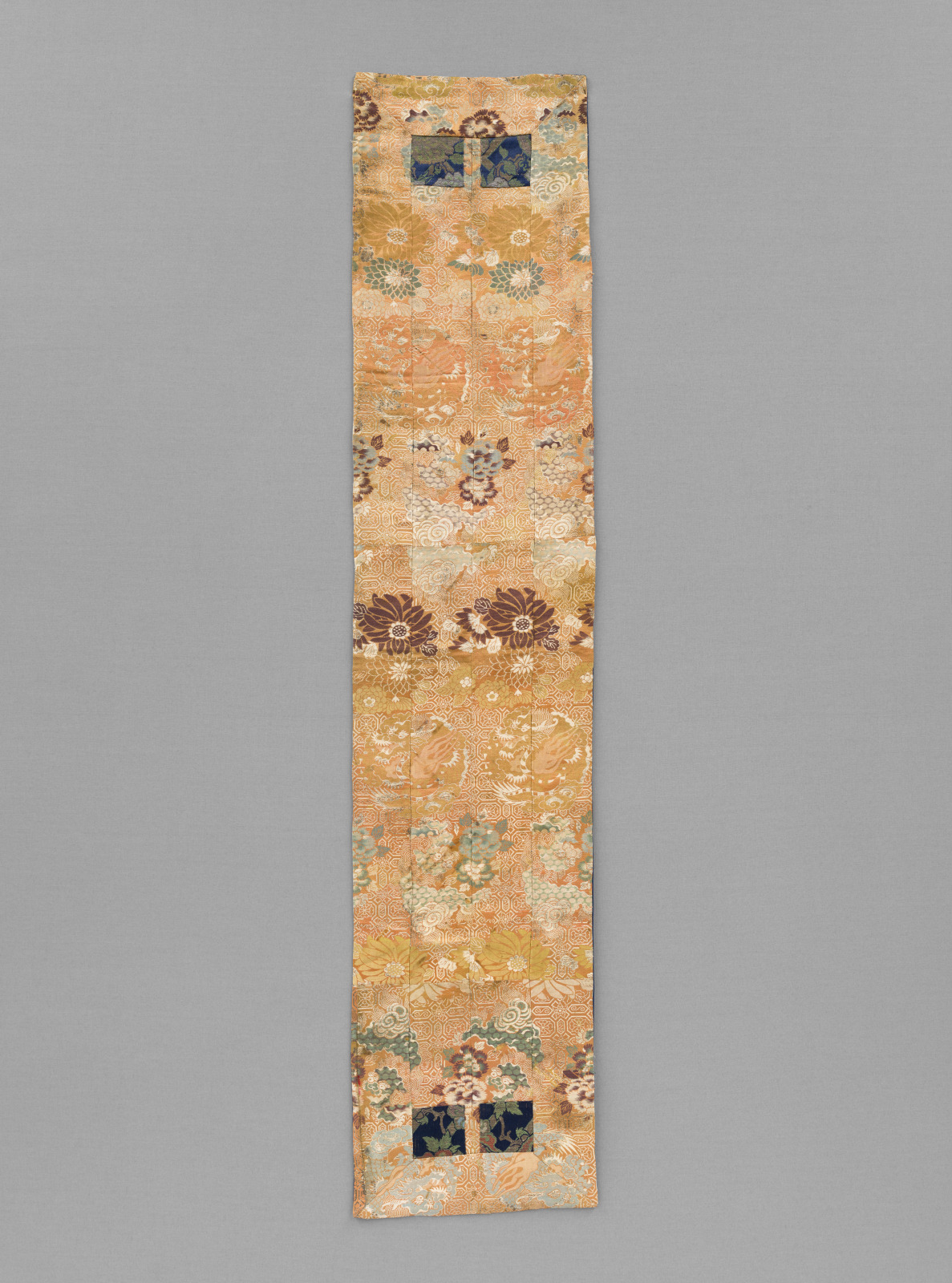
Buddhist Priest's Stole (ōhi) with Design of Coiled Dragons, Lion-dogs, Peonies, and Chrysanthemums, 18th century; Japanese, Edo period; twill-weave silk ground with supplementary weft patterning; 56 1/2 x 11 7/8 inches; Saint Louis Art Museum, Gift of Mrs. Newell Augur 11:1965
his long rectangular garment features a complex arrangement of coiled dragons, lion-dogs, peonies, and chrysanthemums. A geometric lattice filled with various floral and scroll motifs is layered underneath. This technique is known as nishiki, a term describing textiles woven with several threads to create patterns and often translated as “brocade.” Most nishiki textiles use supplementary wefts (enuki) for the surface of the designs.
Functioning as a stole (ōhi), it would have been draped over the left forearm of a Buddhist priest. It is usually worn together and matches the fabric design of a much larger rectangular robe (kesa). The small, dark blue brocaded squares in the four corners of this ōhi symbolize the Guardians of the Four Directions (shitennō) in Buddhist cosmology.
September 9, 2024
Teapot
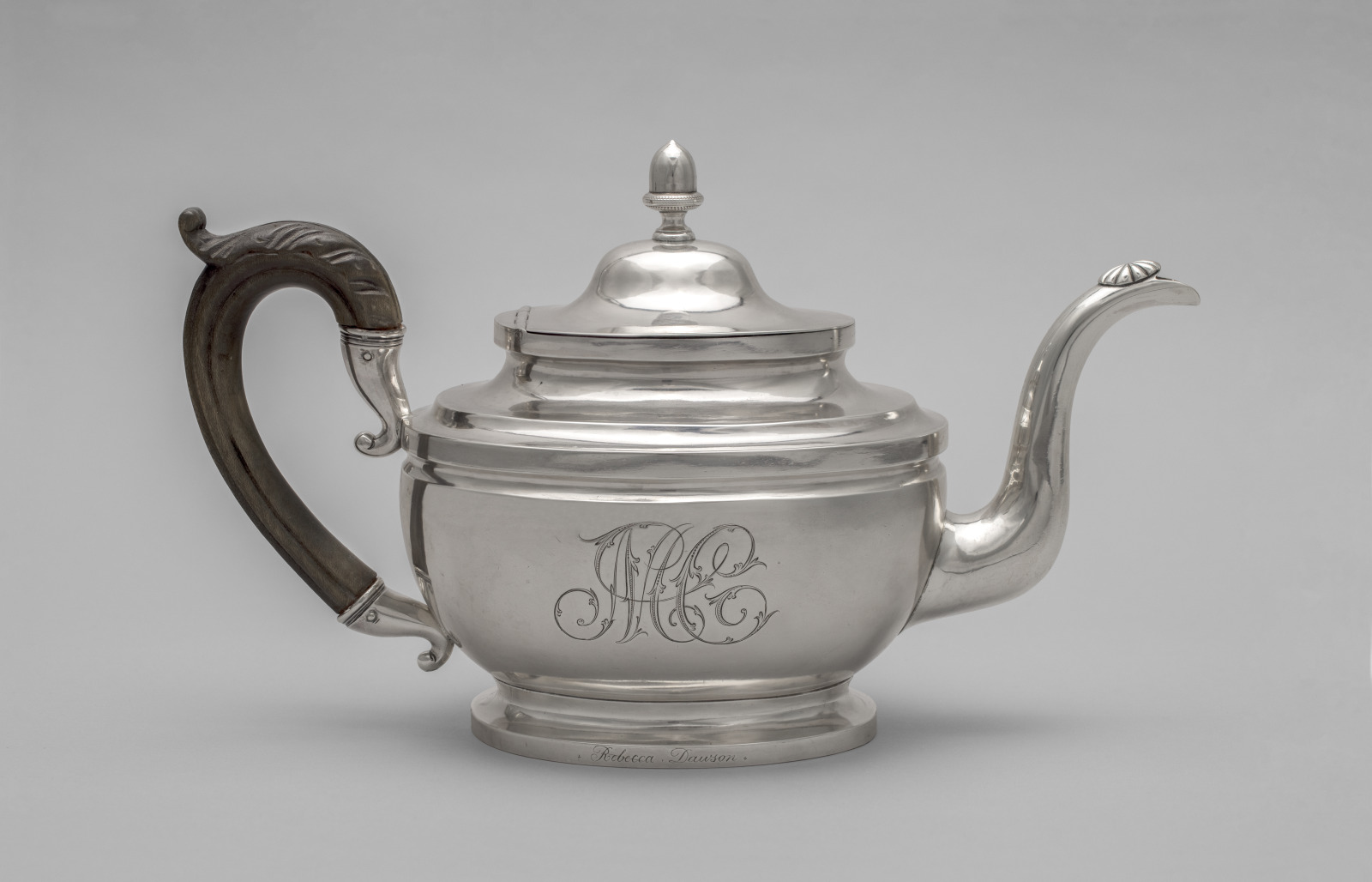
Peter Bentzon, American (born Saint Thomas), c.1783–after 1850; Teapot, c.1817; silver and wood; 7 x 12 5/8 x 6 3/4 inches; Saint Louis Art Museum, Museum Minority Artists Purchase Fund, and funds given by The Equal Sweetener Foundation and the Paul and Elissa Cahn Foundation 41:2001
Simple in shape and restrained in ornament, this beautifully crafted and well-proportioned teapot reveals the skills of its maker, Peter Bentzon. Bentzon is the only early American silversmith of African ancestry whose silver has been identified. The teapot’s oval-shaped body is balanced on either side by a C-shaped handle and an S-shaped spout. The only ornamentation is an acorn finial and fine engraving. This simplicity reflects an interest in geometric shapes like circles, ovals, and ellipses, echoing the architecture and furniture popular in America from the 1780s to the 1820s. In 1791, Bentzon arrived in Philadelphia, where he was educated and later apprenticed to learn the silversmith’s trade. He established a business in Christiansted, Saint Croix, in 1807 but traveled frequently back to the United States. He made this teapot, one of two, for members of the Coates and Dawson family, who were Quakers active in the abolitionist movement in Philadelphia.
September 8, 2024
Summertime
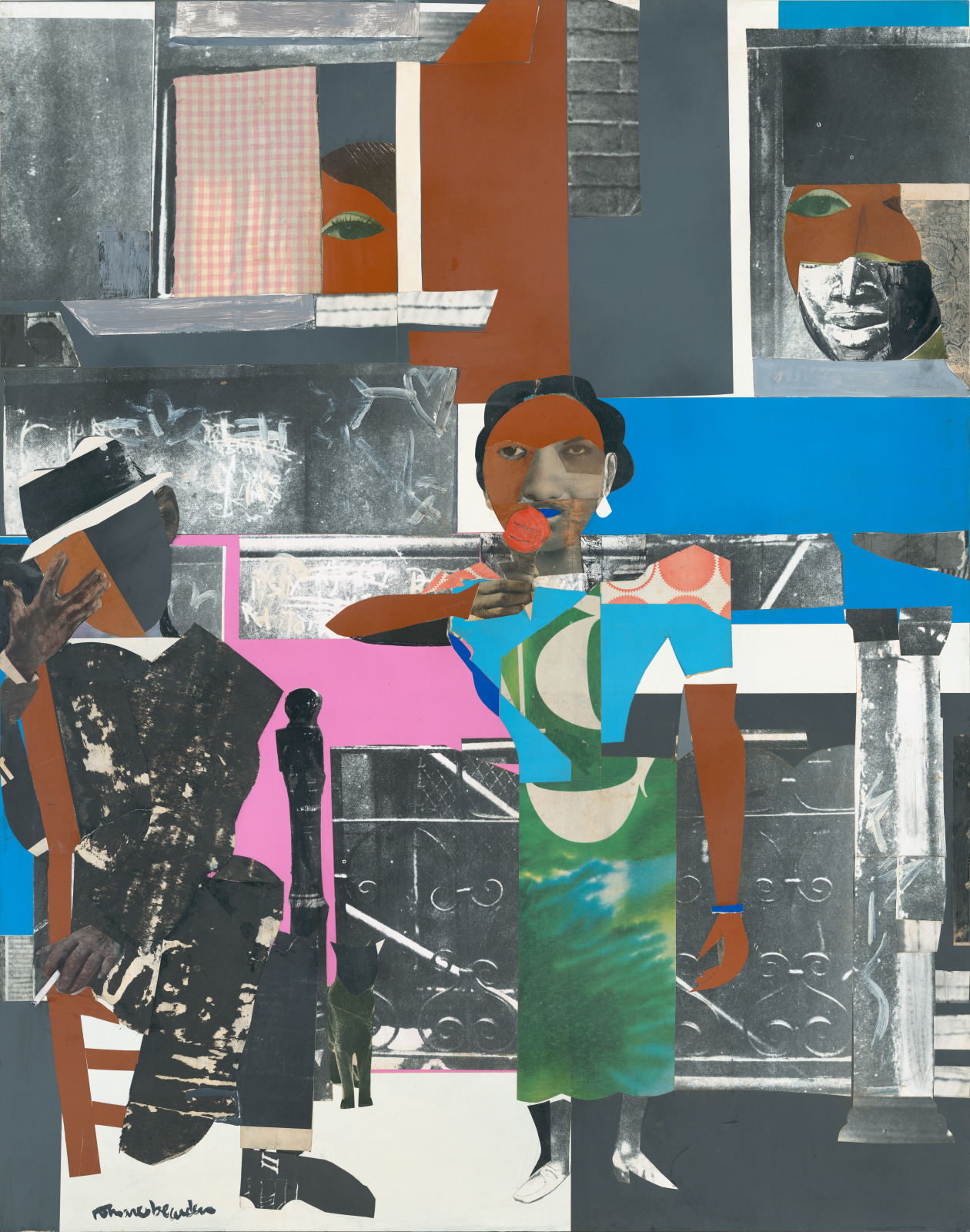
Romare Bearden, American, 1911–1988; Summertime, 1967; collage on board; 56 x 44 inches; Saint Louis Art Museum, Museum Minority Artists Purchase Fund 22:1999; © 2024 Romare Bearden Foundation / Licensed by ARS, New York
In the center of this collage, a woman holds an ice-cream cone. Or is she grasping a microphone to sing? The narrow space of the sidewalk provides an almost stage-like setting. The man beside her rests in a chair outside a brownstone, with two faces gazing out from their respective windows. Pulsating with energy, this collage evokes a warm, summer day.
The various interpretations of Summertime highlight several themes Romare Bearden explored through his work including aspects of African American life, jazz music, and the city. His collaging practice speaks to the multilayered and multifaceted dimensions of African American realities. Bearden once said, “[what] I’ve attempted to do is establish a world through art in which the validity of my Negro experience could live and make its own logic.”
September 7, 2024
Vessel in the Form of an Armadillo

Vessel in the Form of an Armadillo, c.800–1500; Chiriquí, Costa Rica or Panama; ceramic; 10 13/16 x 14 1/2 inches; Saint Louis Art Museum, Gift of Morton D. May 374:1978
With its banded, ridged body and stippled front and back, the creature on this large ceramic vessel represents an armadillo, most likely the rare northern naked-tailed armadillo. Although the choice of form seems unusual, the armadillo’s burrowing and defensive behaviors may have inspired reverence similar to that given the tough-skinned alligator.
September 6, 2024
Tintern Abbey, South Aisle
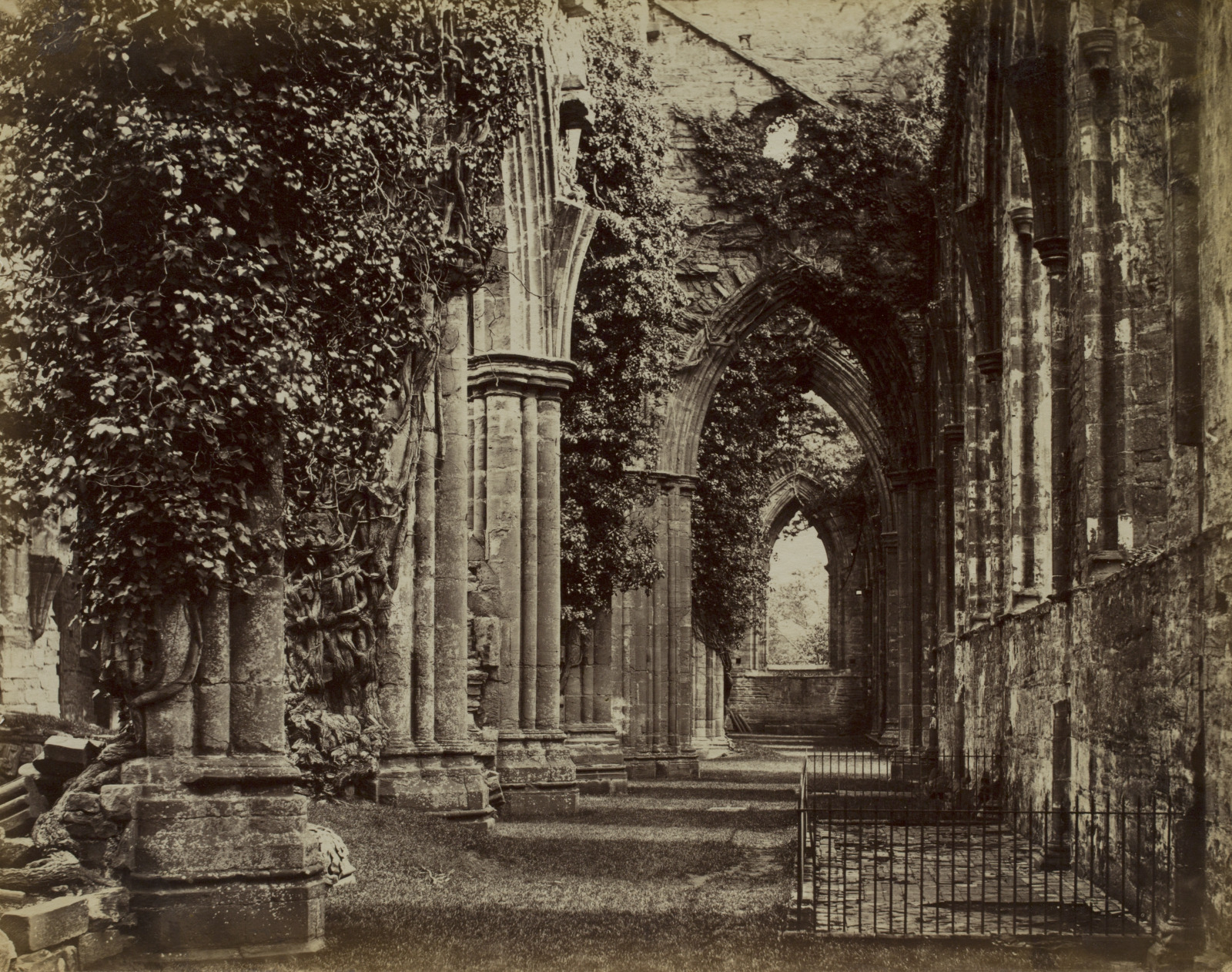
Francis Bedford, English, 1816–1894; Tintern Abbey, South Aisle, 1858; albumen print from glass negative; image: 7 1/2 x 9 1/2 inches, mount: 10 5/8 x 10 5/8 inches; Saint Louis Art Museum, Gift of David R. Hanlon 177:2019
The composition of this photograph follows the myriad columns and arches down the now roofless aisle of Tintern Abbey, one of the great monastic ruins of Wales. By the mid-1850s, technical advances in photography allowed a large amount of detail to be captured, seen here in the intricate textures of the eroding stone and dense, twisting vines. Depicted in beautiful chocolate-brown tones, this picturesque image shows the building slowly being reclaimed by nature. Tintern Abbey, celebrated by British artists and poets such as J.M.W. Turner and William Wordsworth, had been a popular tourist destination since the late 18th century. The British often felt more of a connection to the European medieval past than to the classical antiquity of Greece and Rome, so they looked to their own countryside to recoup a meaningful architectural heritage.
September 5, 2024
Eye Dazzler
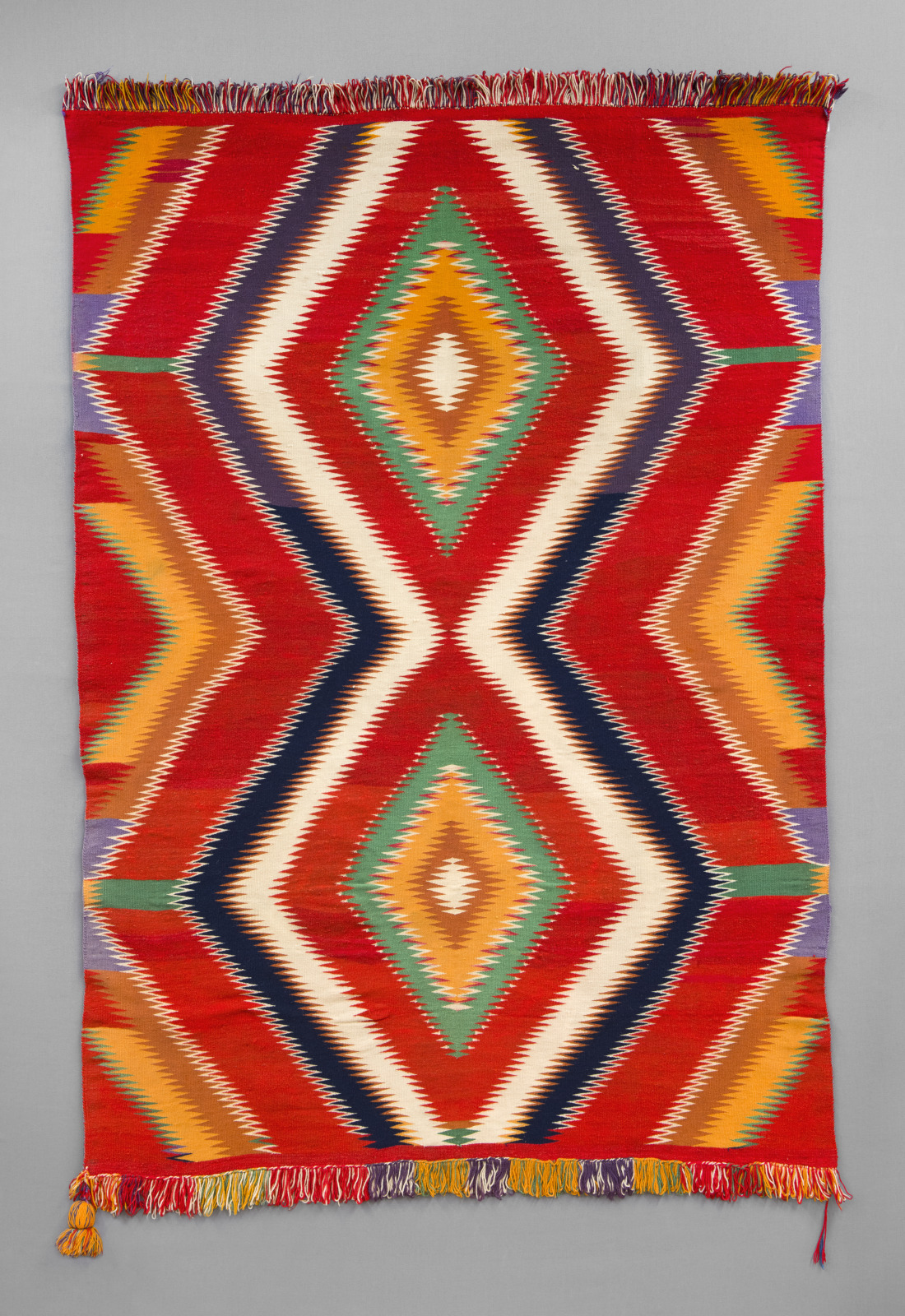
Diné (Navajo) artist; Eye Dazzler, c.1885; wool and dye; with fringe: 92 x 58 1/2 inches; Saint Louis Art Museum, Gift of Mr. and Mrs. Joseph Pulitzer Jr. 1724:1983
Fields of saturated color radiate from two small central diamonds. In the late 19th century, a Diné artist wove this complex, vibrant design using a new type of fiber. Pre-spun yarns in a range of synthetic-dyed tones shortened weavers’ processes of preparing materials for the loom. Artists responded by experimenting with an abundance of serrated linework and high-color contrast.
Industrially manufactured yarns originated at textile mills in Germantown, a neighborhood in Philadelphia, Pennsylvania. Initially created for knitters in the eastern United States, the federal government supplied these materials to the Navajo Nation as part of annuity payments following the Treaty of Bosque Redondo in 1868. Later, weavers obtained these yarns and synthetic dyestuffs from trading posts on the Navajo reservation.
September 4, 2024
Manchu Imperial Consort’s Semiformal Court Robe with Design of Nine Five-Clawed Dragons Chasing Pearls and Five Symbols of Imperial Authority
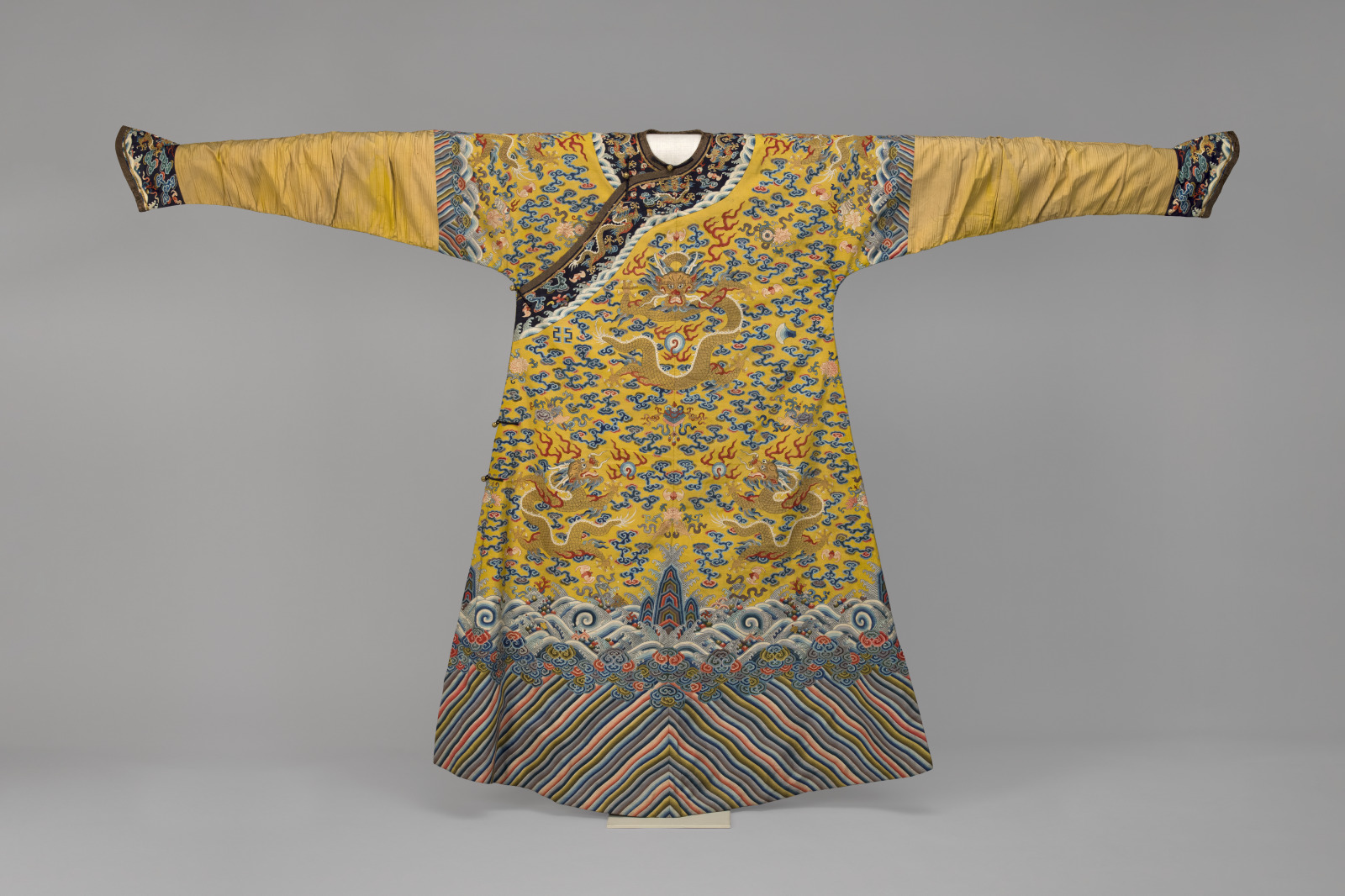
Manchu Imperial Consort's Semiformal Court Robe with Design of Nine Five-Clawed Dragons Chasing Pearls and Five Symbols of Imperial Authority, late 18th–early 19th century; Chinese, Qing dynasty, Jiaqing period; silk in tapestry weave (kesi) with metallic threads, sleeve extensions in silk faille; 56 1/2 x 93 inches; Saint Louis Art Museum, Museum Purchase 30:1918
This robe is tapestry-woven with nine five-clawed dragons chasing the flaming pearl associated with spiritual energy, knowledge, good luck, and authority. It features five of the 12 symbols of imperial authority: the sun represented by the three-legged crow (wearer’s left shoulder), the moon represented by a rabbit pounding the elixir of immortality (right shoulder), an axe-head (wearer’s left chest), a bow-shaped symbol known as fu (right chest), and the Ursa Major constellation in two groups on the back. These motifs indicate that the robe was made for an imperial consort.
The robe also includes the Eight Buddhist Emblems (conch, endless knot, pair of fish, lotus, parasol, vase, Dharma wheel, and victory banner), bats, roundels with the character for longevity (shou), and multicolored clouds. The wide hem shows a mass of foaming waves interspersed with coral and other auspicious symbols.
September 3, 2024
Amphora with Nike and Youth
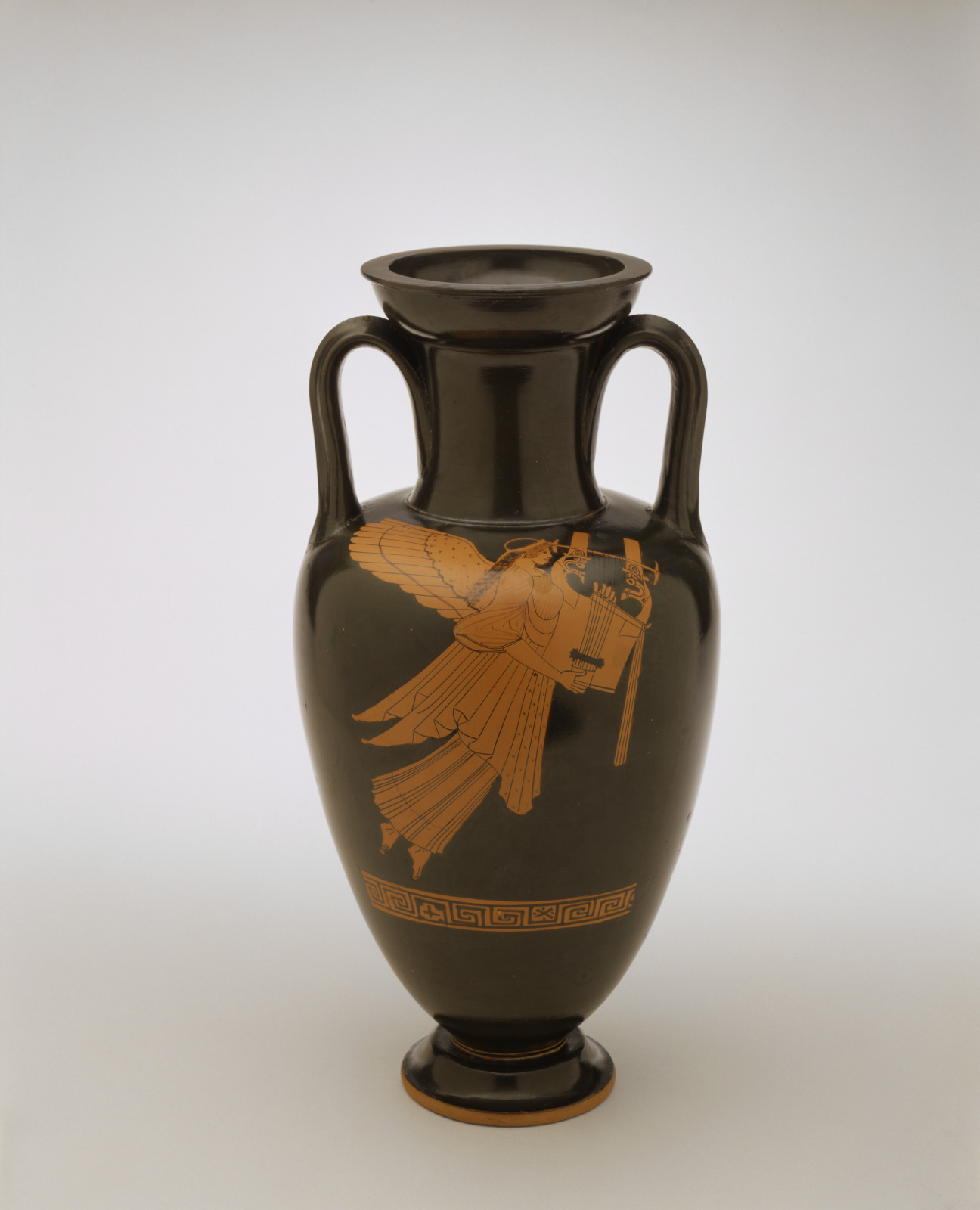
attributed to the Berlin Painter, Attic Greek, active 500–460 BC; Amphora with Nike and Youth, 490–460 BC; red-figure ceramic; 14 3/8 x 8 1/4 x 8 inches; Saint Louis Art Museum, Museum Purchase 57:1955
-
View Other Side
![571955_2_2]()
attributed to the Berlin Painter, active 500–460 BC; Greek, Attic, Classical period; Amphora with Nike and Youth (view of youth), 490–460 BC; red-figure ceramic; 14 3/8 x 8 1/4 x 8 inches; Saint Louis Art Museum, Museum Purchase 57:1955
The spotlight technique—the use of a single figure featured on either side of a vessel—takes advantage of the round form of this amphora. The viewer must look at both sides to understand the full story. Here, the goddess Nike, or Victory, flies through the air presenting a musical instrument called a cithara (a type of fancy, large concert lyre) to present to the young man standing on the other side. Taken together we can interpret this scene as a celebration of the youth’s victory at a musical competition. The spotlight technique was favored by this artist, called the Berlin Painter after the city in which his style was first identified. The Berlin Painter represents a high point of ancient painting due to the precise draftsmanship and fine attention to detail especially, in the ears and eyelashes.
September 2, 2024
Lords John and Bernard Stuart
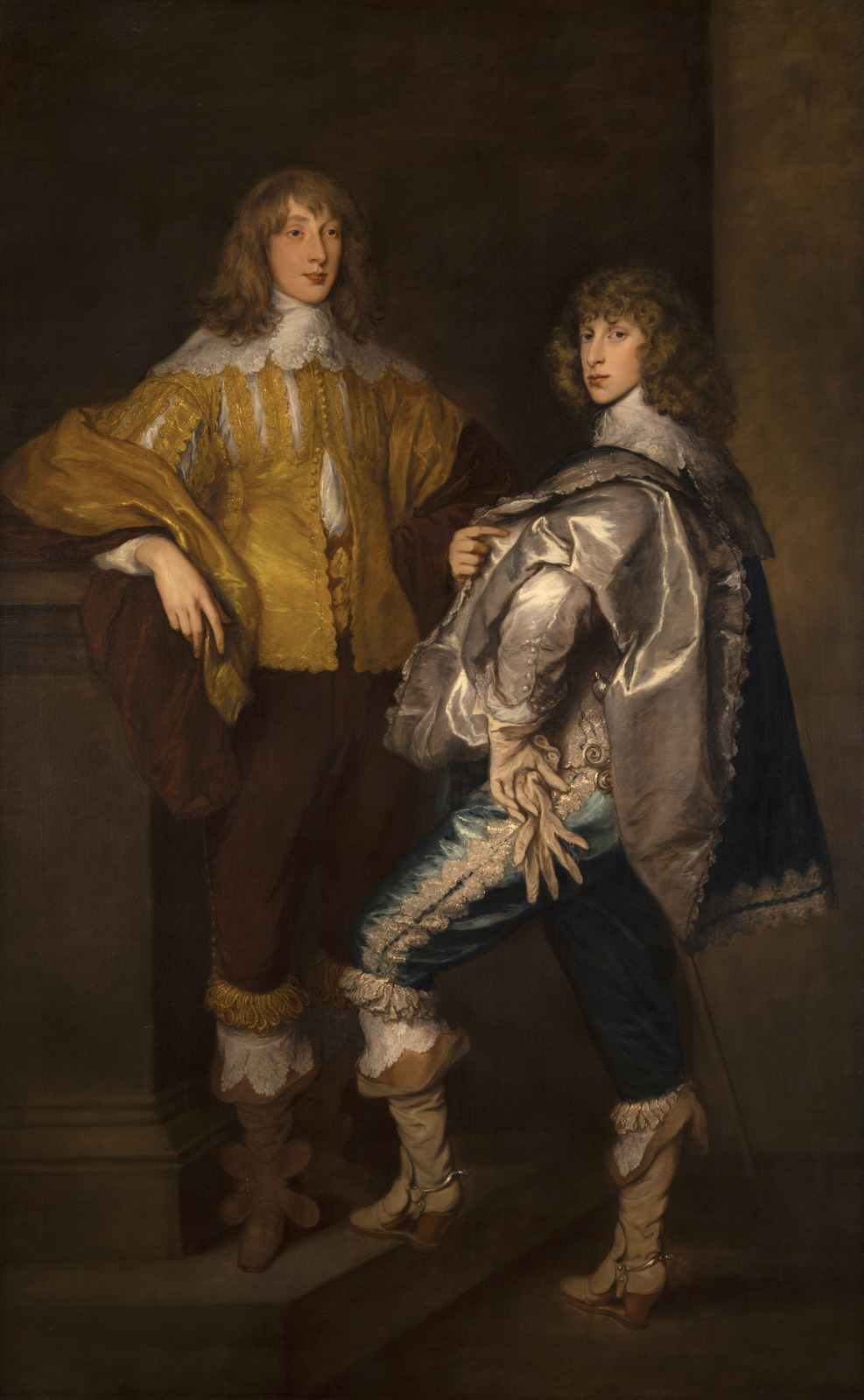
Thomas Gainsborough, English, 1727–1788; after Anthony van Dyck, Flemish, 1599–1641; Lords John and Bernard Stuart, c.1760–70; oil on canvas; 92 1/2 x 57 1/2 inches; Saint Louis Art Museum, Gift of Mrs. Jackson Johnson in memory of Mr. Jackson Johnson 15:1943
-
View van Dyck Portrait
![N-6518-00-000020-wpu]()
Anthony van Dyck, 1599-1641; Lord John Stuart and his Brother, Lord Bernard Stuart, about 1638; oil on canvas; 93 1/2 x 57 1/2 inches; The National Gallery
Lords John Stuart (1621–1644) and Bernard Stuart (1623–45), depicted here, died fighting for the Royalists against the Parliamentarians during the English Civil War, 1642–1651. They were memorialized in a famous painting by the Flemish painter Anthony van Dyck (1599–1641). Like many English painters of his day, Thomas Gainsborough was a great admirer of Van Dyck. In copying Van Dyck’s portrait of the Stuart brothers, Gainsborough undoubtedly admired the earlier artist’s brilliance in handling the two-figured composition, a far more challenging task than painting a single figure or a group of three. Van Dyck echoed the bent right elbow of Lord John with the bent knee of his brother, and varied the height and orientation of the two young men to make a pleasing and graceful composition.
September 1, 2024
The Beach at Saint-Mammès
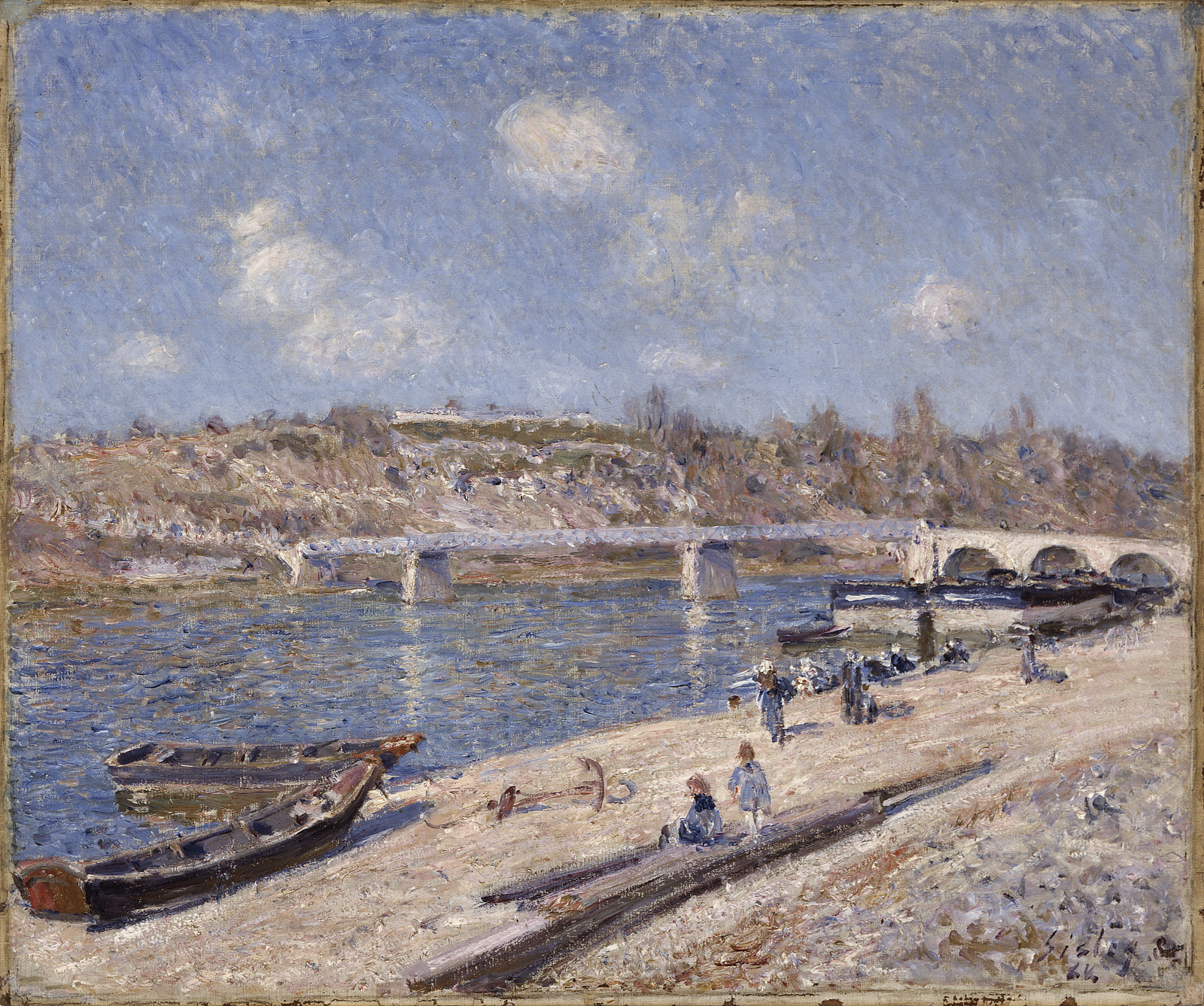
Alfred Sisley, English (born France), 1839–1899; The Beach at Saint-Mammes, 1884; oil on canvas; 20 3/8 x 24 1/2 inches; Saint Louis Art Museum, Museum Purchase 224:1916
Alfred Sisley painted a view of barges and rowboats tied up along the sandy riverbank of the Seine some 40 miles to the southeast of Paris. Sisley, whose name reflects his English parentage, often represented the industrial traffic along France’s extensive network of rivers and canals. This work features a strong diagonal from the left foreground to right middle ground defined by the river’s edge. The artist’s lively brushwork and luminous blues, particularly on the sparkling water surface, animate the scene.
August 31, 2024
Half Armor
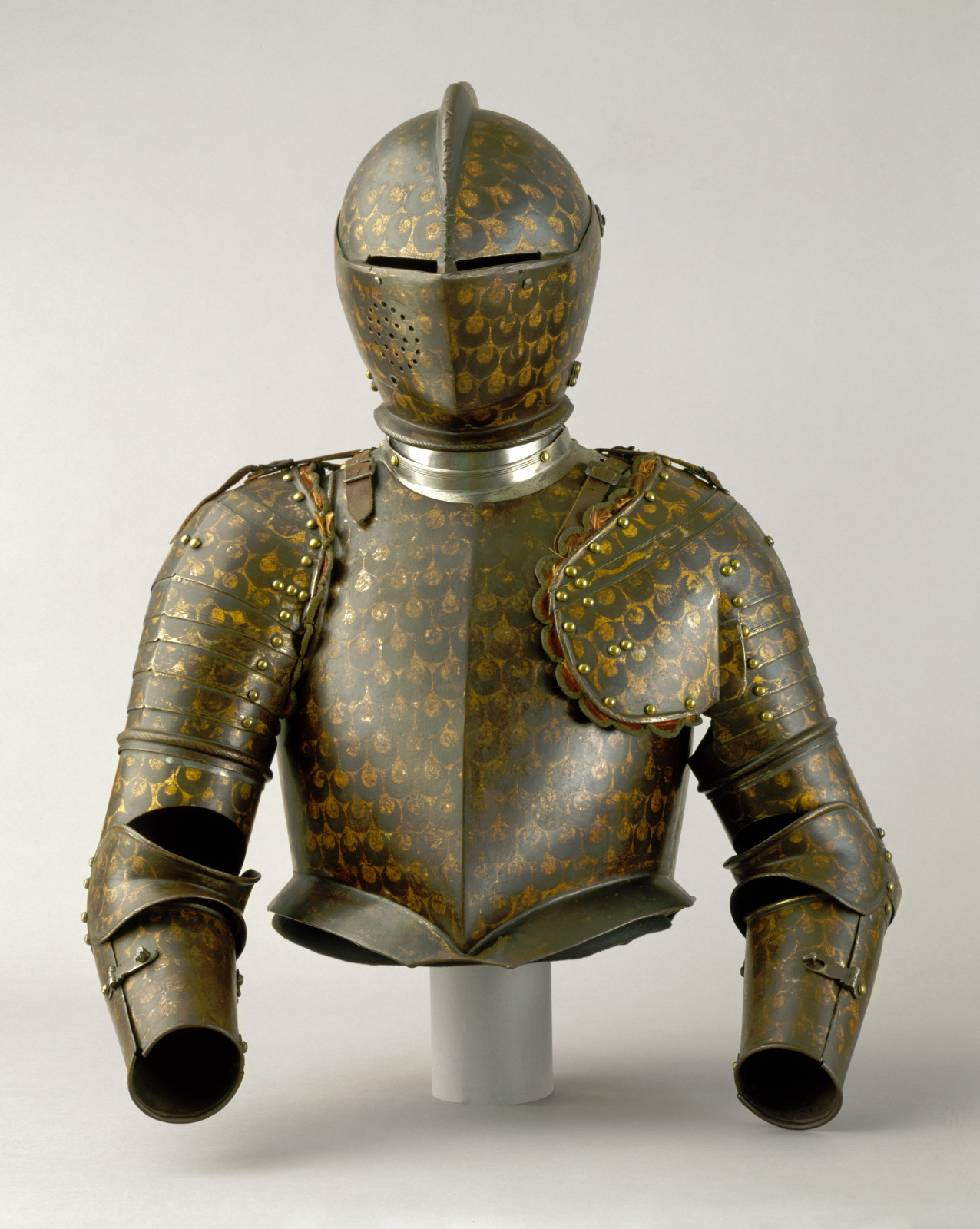
Half Armor, 1600–10; Italian; steel with gilding, modern leather, and fabric; 26 1/2 x 27 1/2 x 12 1/4 inches; Saint Louis Art Museum, Museum Purchase 230:1923a-g
This half armor was made for sporting combat on foot “at the barriers,” a friendly competition in which individuals or teams of armored contestants used swords and spear-like pikes to score points for hits delivered. The barriers was a waist-high fence that kept the fighters separated. Since the barriers protected the fighters below the waist, leg armor was unnecessary in these contests. The ceremonial and sporting aspects of the armor are accented by the overall decoration of gold crescents.
August 30, 2024
Vase
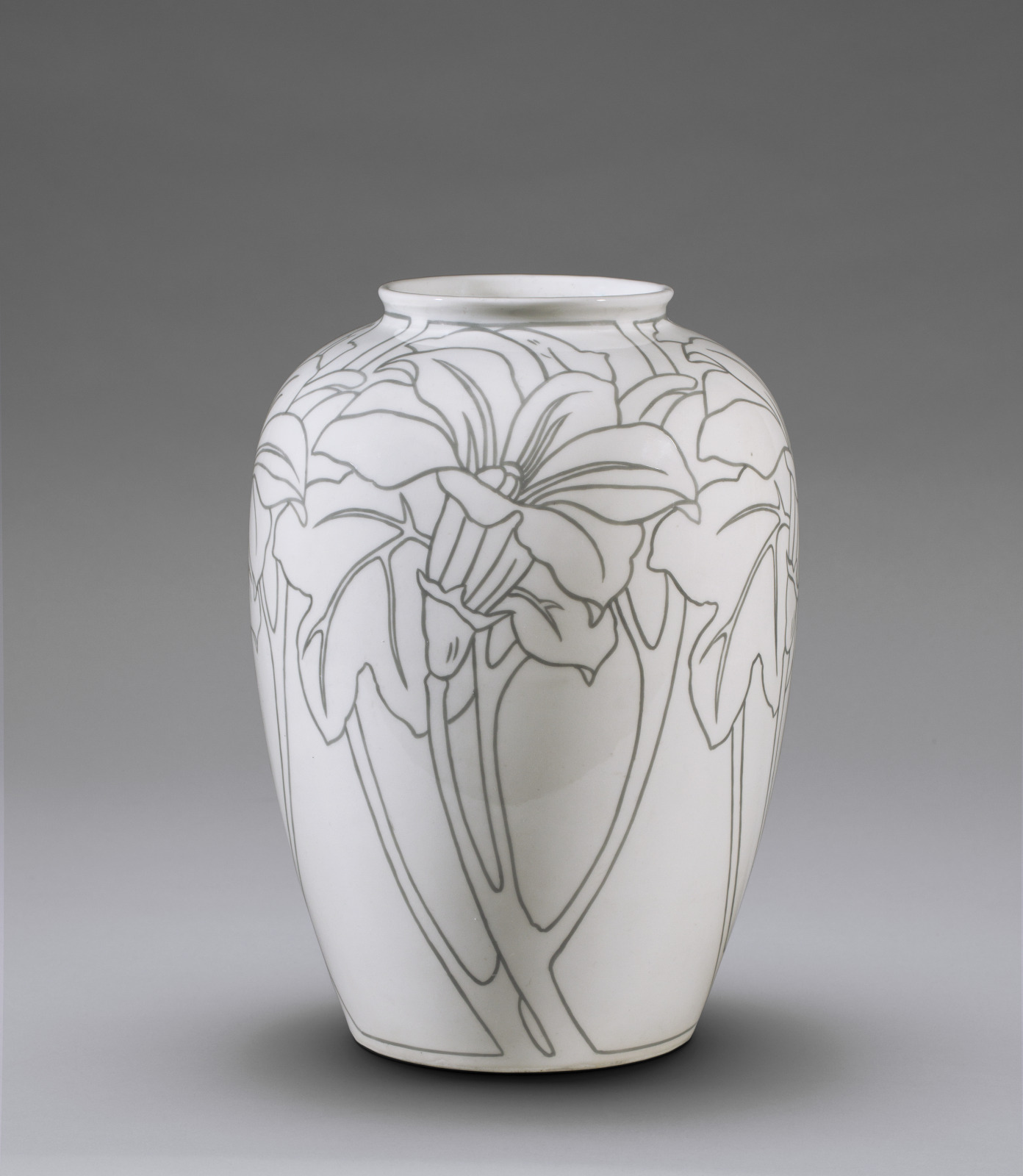
Kathryn E. Cherry, American, 1870–1931; made by Delinieres & Co., Limoges, France, founded 1863; Vase, c.1910–11; glazed porcelain with enamel decoration; 12 3/8 x 8 7/8 inches; Saint Louis Art Museum, Richard Brumbaugh Trust in memory of Richard Irving Brumbaugh and Grace Lischer Brumbaugh 97:2021
The blossoms, leaves, and branches of a flowering shrub painted in fluid lines encircle this glowing white porcelain vase. The art of decorating commercially produced ceramics with low-fired enamel paints, known as china painting, was practiced by both professional and amateur artists beginning in the 1860s. As the popularity of china painting increased, women like Quincy, Illinois native Kathryn Cherry led the movement as artists, instructors, and entrepreneurs. Cherry taught summer school courses at Alfred University in New York, published designs in the monthly journal Keramic Studio, and promoted a line of enamel colors. She decorated this vase while teaching at the Art Academy of the People’s University in nearby University City, Missouri.
August 29, 2024
Masked Party in a Courtyard
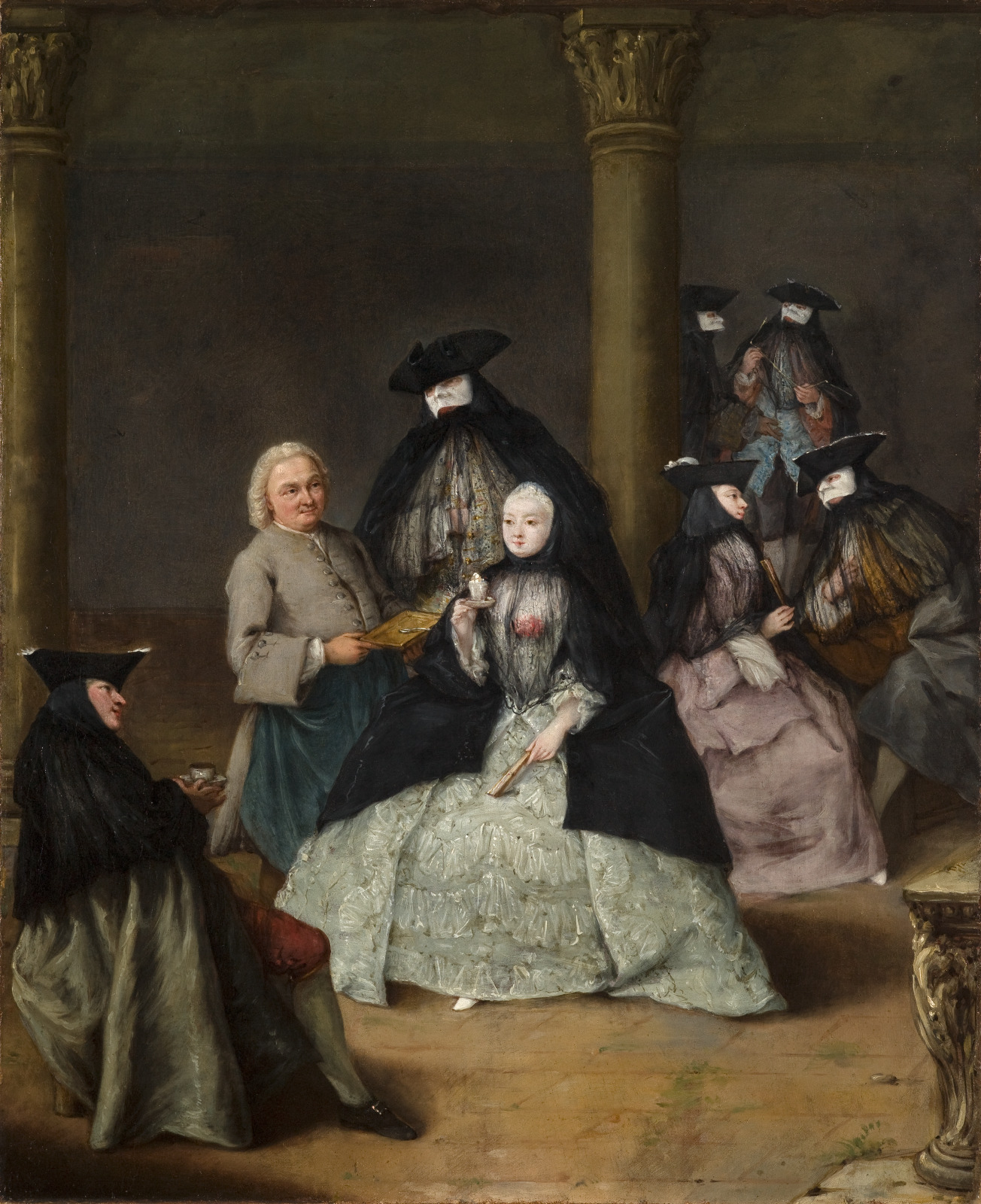
Pietro Longhi, Italian, 1701–1785; Masked Party in a Courtyard, 1755; oil on canvas; 24 1/2 x 19 7/8 inches; Saint Louis Art Museum, Museum Purchase 32:1939
Two groups of masked figures in an enclosed courtyard form the essential structure of this painting. By juxtaposing the seated woman with the masked figure behind her, the artist has interjected a feeling of unease into an otherwise casual grouping, a feature found in many of Pietro Longhi’s scenes of upper-class Venetian society. Half-masks with a veil and Tricorn hats were worn by privileged women and men during the months of Carnival. The artist has captured the delicate transparency of the seated woman’s veil that covers but does not conceal the red flower on her bodice.
August 28, 2024
Fish Cove
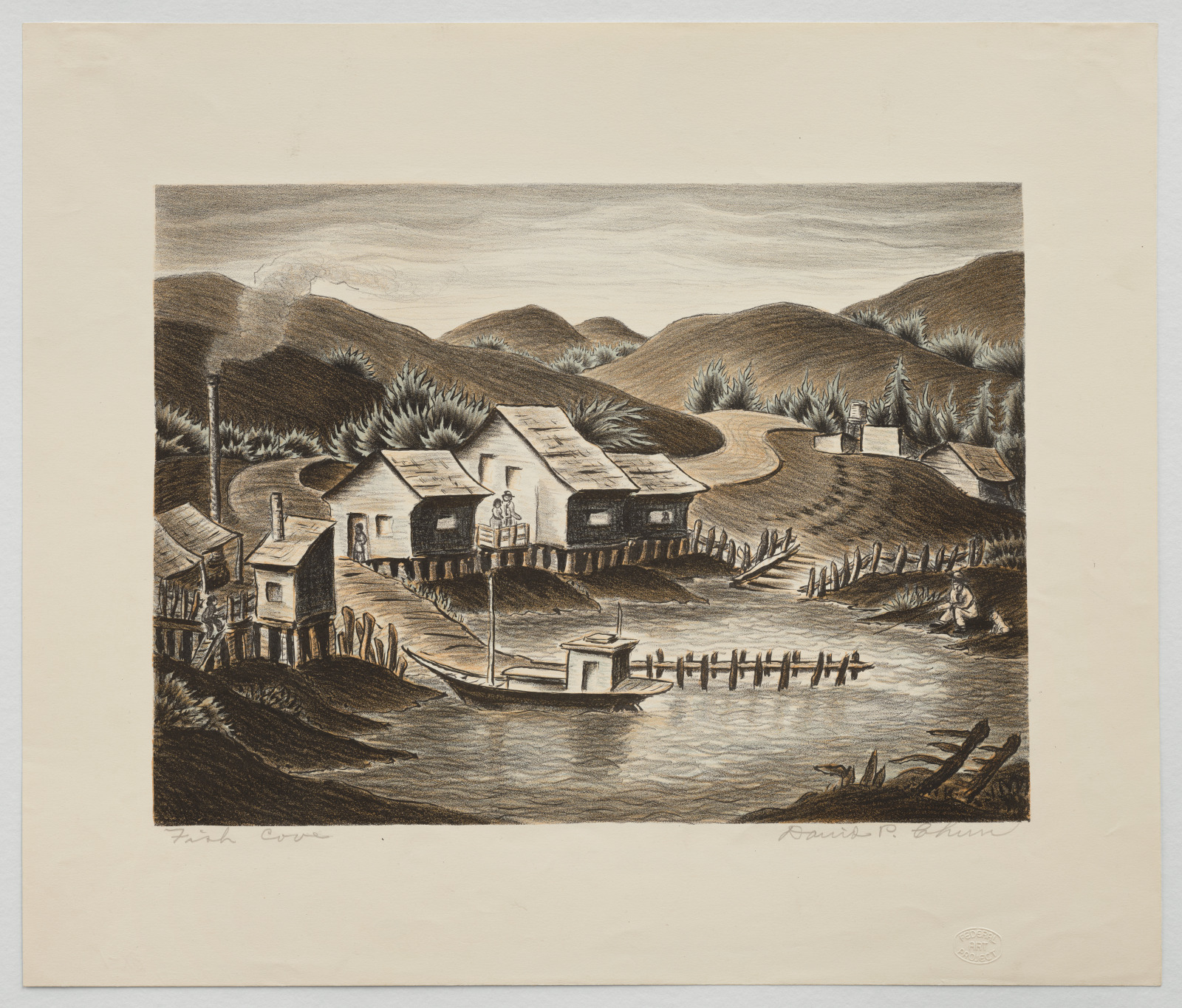
David P. Chun, American, 1898–1989; Fish Cove, 1939 or 1940; color lithograph, printed in black, orange, and blue inks from three stones, with crayon and tusche; image: 7 15/16 x 10 7/8 inches, sheet: 11 15/16 x 14 1/8 inches; Saint Louis Art Museum, Gift of the Federal Works Agency, Work Projects Administration 174:1943
Overlapping layers of printed color energize this tranquil landscape. Signs of daily life—the puffs of smoke and figures going about their various activities—invite viewers into the immediacy of the action. David P. Chun’s work often featured ordinary scenes that he portrayed with sensitivity. Born in Hawaii, Chun’s deep interest in the landscapes and labor of his San Francisco home not only translated into his prints but also shaped his involvement in debates around the improvement of Chinatown’s built environment.
August 27, 2024
Tripod Censer with Design of Shou Characters

Tripod Censer with Design of Shou Characters, late 17th century–first half 18th century; Chinese, Qing dynasty, Kangxi period, through Qianlong period; bronze; 8 7/8 x 10 1/16 x 9 13/16 inches; Saint Louis Art Museum, Gift of Robert E. Kresko 11:2005
The very fine, dark patina (surface finish) on this incense burner on this incense burner is decorated in low relief with six Chinese characters meaning “long life,” “happiness,” and “prosperity.” Written in varying calligraphic styles, each of the three words are centered over one of the three legs, complementing the vessel’s use of the ancient tripod form.
August 26, 2024
Sylvia Colle
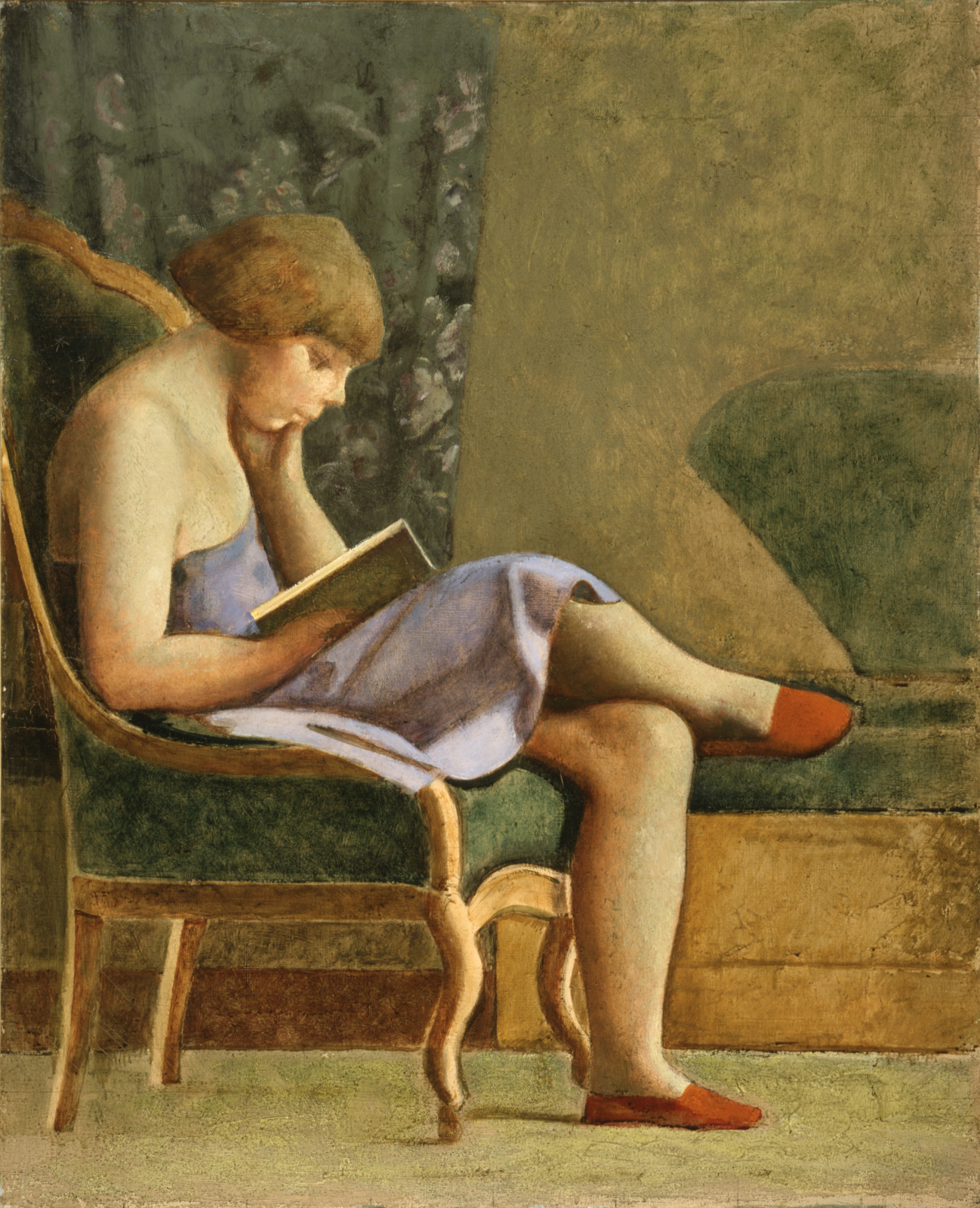
Balthus, French, 1908–2001; Sylvia Colle, 1954; oil on canvas; 39 1/8 x 31 3/4 inches; Saint Louis Art Museum, Gift of Mr. William Inge 601:1958; © 2024 Artists Rights Society (ARS), New York / ADAGP, Paris
A young girl in an armchair sits captivated by a book. Her luminous skin, blue dress, and vermilion-red slippers contrast with the mottled curtain behind her and an otherwise dusky interior. Balthus built his reputation by painting intimate scenes, often representing adolescent girls. Here he paints Sylvia Colle, the daughter of an art dealer. The themes of solitude and mystery in Balthus’ art are closely related to Surrealism.
August 25, 2024
Boss
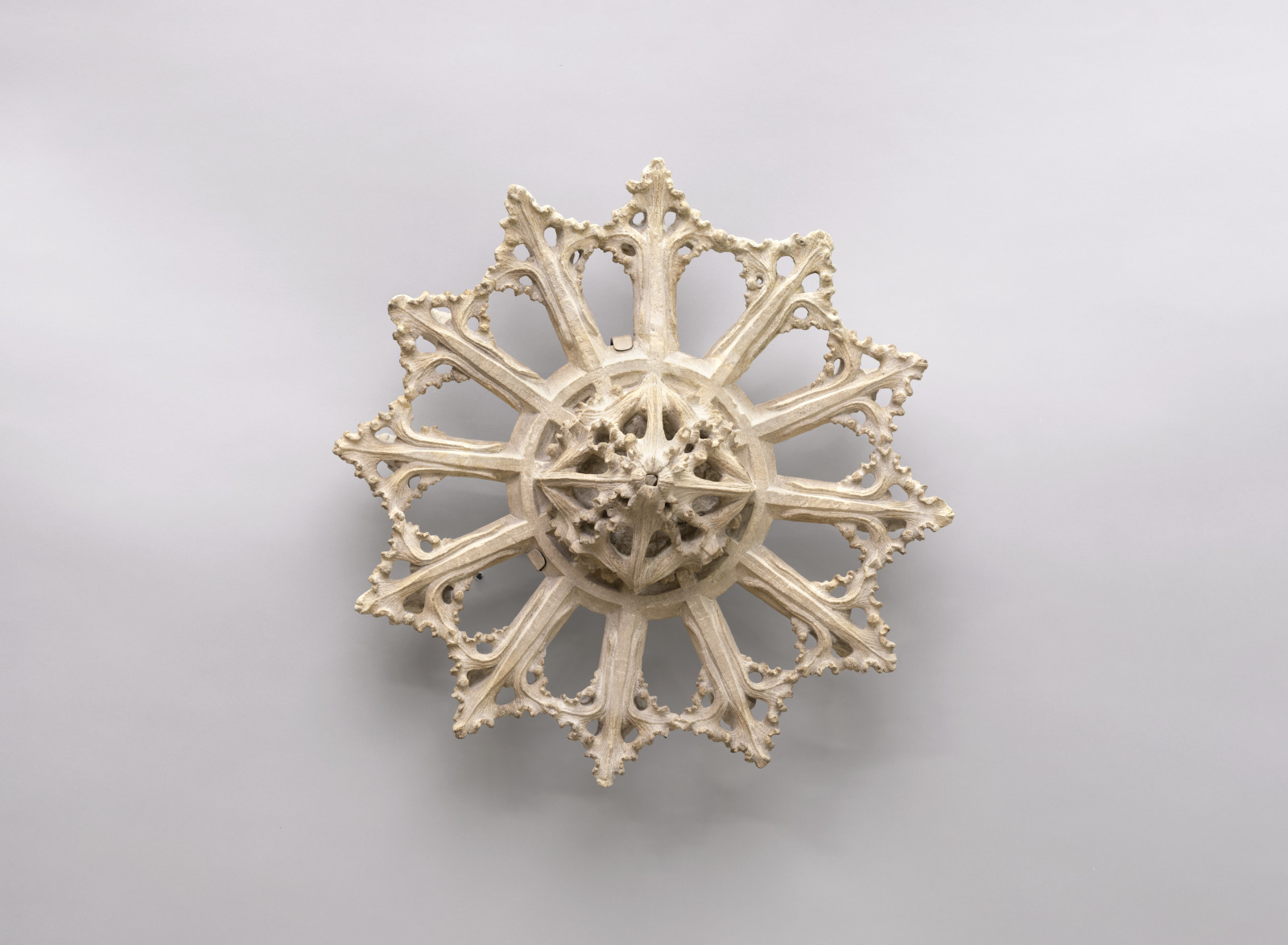
Boss, mid-15th century; French; Caen stone; 19 1/4 x 6 1/2 inches; Saint Louis Art Museum, Museum Purchase 161:1928
Twelve spokes radiate outward from the center of this stone carving and end in sprouting leaf patterns. This is a boss, a decorative element placed at the intersection of the ribs of a vaulted ceiling. These architectural sculptures were often intricately carved and display a diverse range of imagery, from foliage—as seen here—to heraldry. The delicate, open pattern of this boss would appear to grow from the ceiling of the church it adorned, seemingly transforming from stone into vegetation.
August 24, 2024
The Land of Evangeline
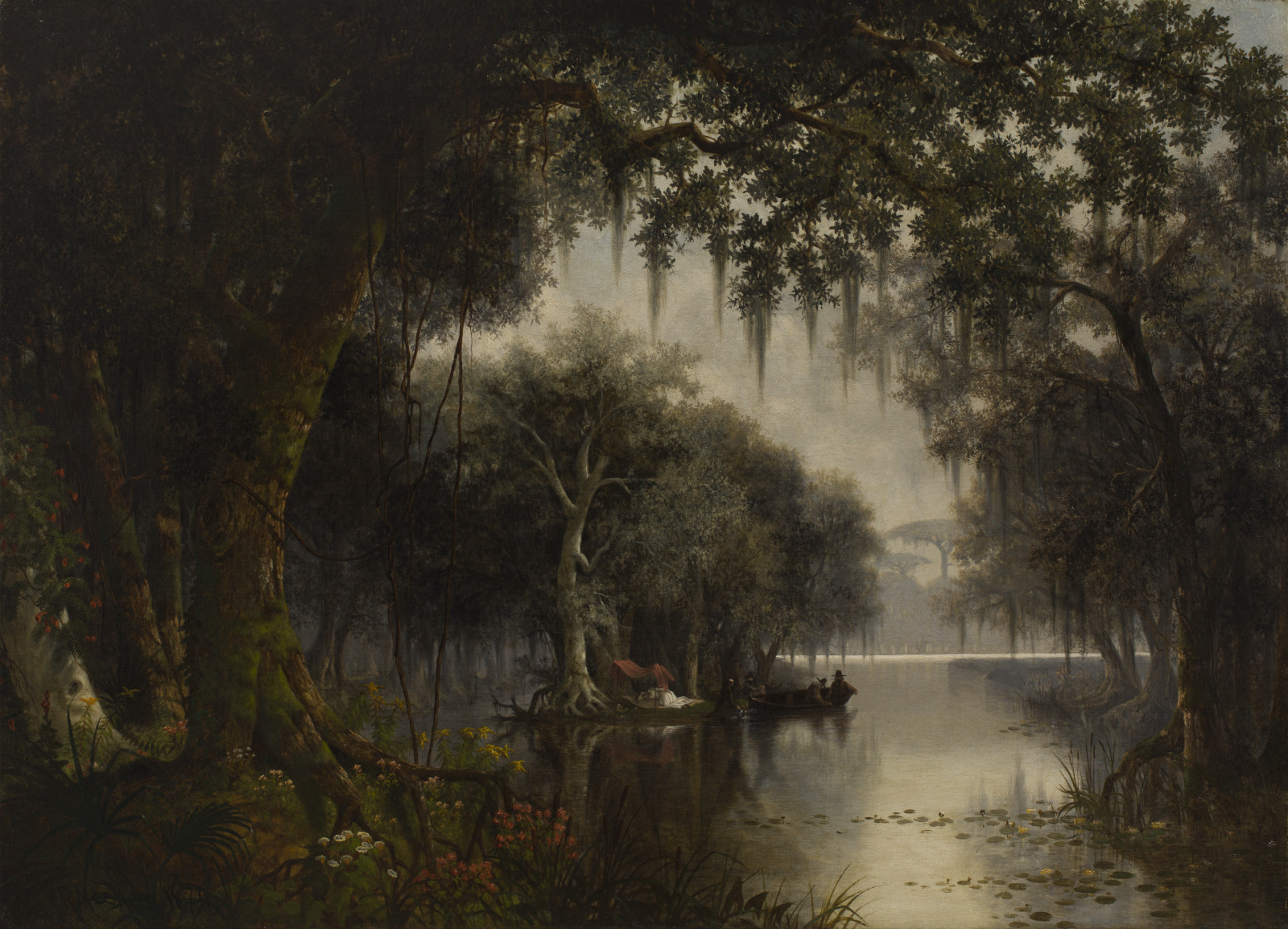
Joseph Rusling Meeker, American, 1827–1887; The Land of Evangeline, 1874; oil on canvas; 33 1/8 x 45 1/8 inches; Saint Louis Art Museum, Gift of Mrs. Wright Prescott Edgerton in memory of Dr. and Mrs. W. T. Helmuth by exchange 163:1946
-
See Detail
![1631946dig_evangeline]()
Joseph Rusling Meeker, American, 1827–1887; The Land of Evangeline (detail), 1874; oil on canvas; 33 1/8 x 45 1/8 inches; Saint Louis Art Museum, Gift of Mrs. Wright Prescott Edgerton in memory of Dr. and Mrs. W. T. Helmuth by exchange 163:1946
Identifiable details mark this landscape—cypress trees laden with Spanish moss, swamp goldenrod, palmetto, cattail rushes, yellow pond lilies, and trumpet creeper. The scene, however, is not historical but rather literary. It is taken from the then-wildly popular poem Evangeline, A Tale of Acadie (1847), written by Henry Wadsworth Longfellow. The poem follows an engaged couple who become separated during the British expulsion of the French from Acadie (Nova Scotia) to Louisiana in 1755. In the center of the landscape, Evangeline rests from her desperate search for Gabriel. Tragically, she finds him only many years later, when he is ill from an epidemic and dies in her arms.
While serving in the Navy during the Civil War, artist Joseph Meeker sketched the swamps and bayous along the lower Mississippi River. These sketches became inspiration for later paintings, like this one, created in St. Louis after the war.
August 23, 2024
Woman’s Outer Robe (uchikake) with Design of Azai Family Crests with Shell Game Boxes (kaioke) and Scattered Decorated Shells
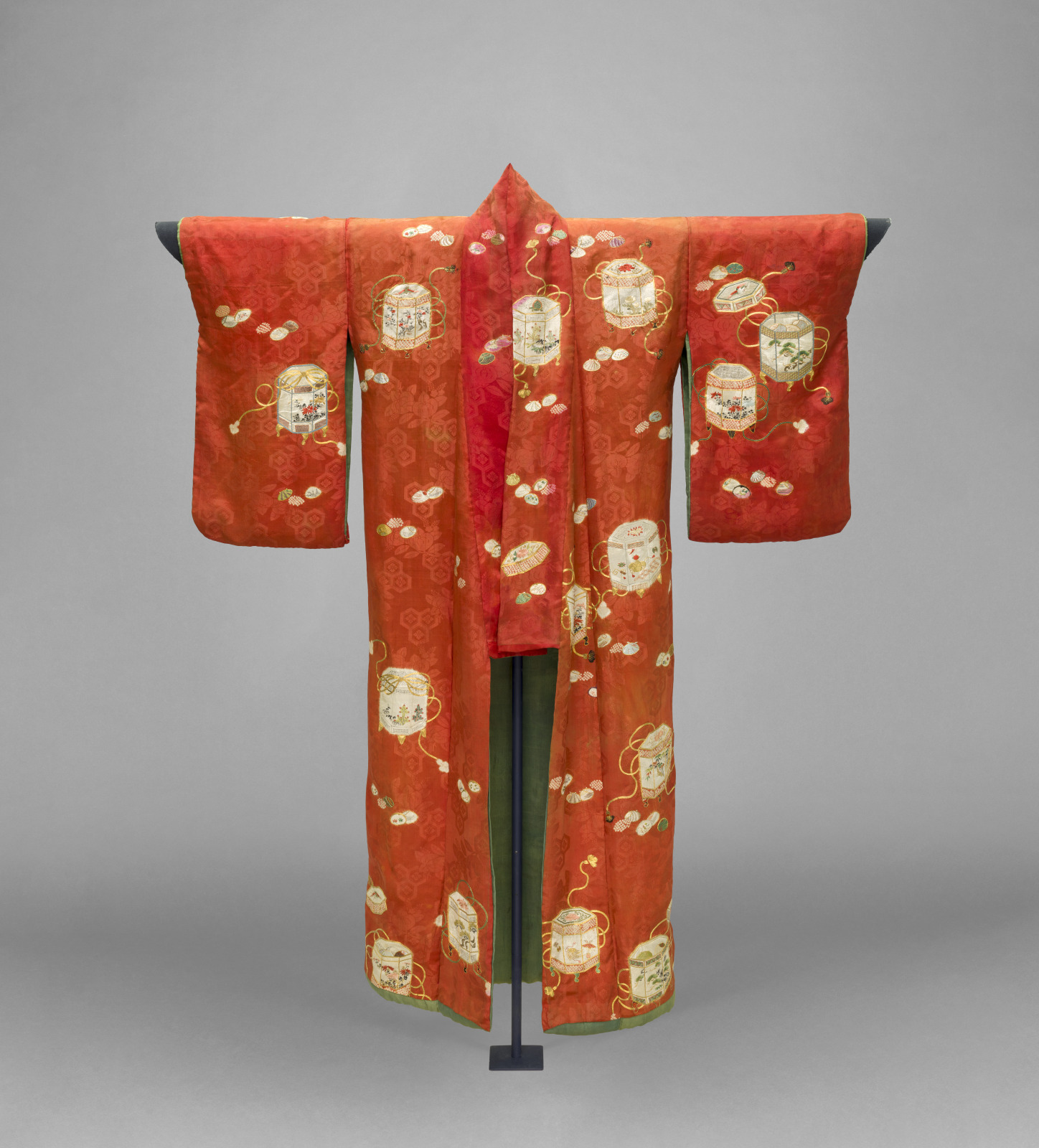
Woman's Outer Robe (uchikake) with Design of Azai Family Crests with Shell Game Boxes (kaioke) and Scattered Decorated Shells, early 19th century; Japanese, Edo period; silk satin damask (rinzu) with silk floss embroidery (shishū), tie-resist dyeing (shibori), metallic gold threads with couching, and hand-painting with black ink (sumi); 62 1/2 x 48 1/4 inches; Saint Louis Art Museum, Museum Purchase 113:1919
The Azai family crest (kamon) appears throughout this red-dyed silk satin damask robe. The symbol for this well-known Japanese clan—called mitsumorikikkō ni hanabishi—comprises three adjacent hexagonal tortoiseshells, each containing a rhomboidal, four-petaled flower. The embroidered designs feature lacquered shell game boxes (kaioke) with loosened ornamental cords and scattered decorated shells. Such boxes have been used since the Heian period (794–1124) for storing decorated shells for a popular shell-matching game (kai-awase).
An uchikake is a lined silk outer robe with a wadded hem. It is worn over another garment without a sash, usually for formal occasions, weddings, or stage performances. Such robes are usually constructed with white-, black-, or red-patterned satin and embroidered with multicolored threads and gold.
August 22, 2024
Madame du Vaucel
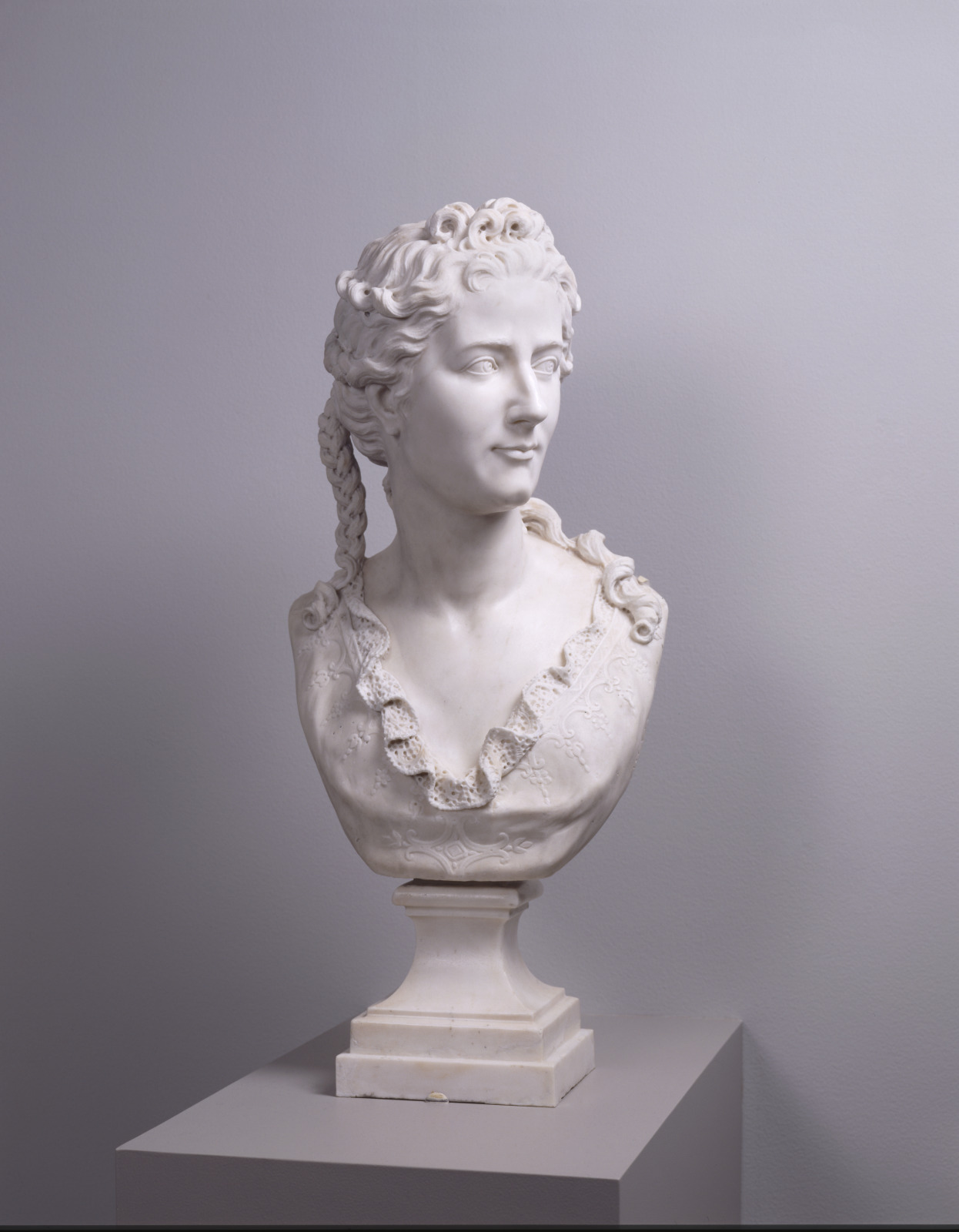
Antoine Coysevox, French, 1640–1720; Madame du Vaucel, 1712; marble; 29 3/8 x 13 1/8 x 7 inches; Saint Louis Art Museum, Gift of Paul Rosenberg 42:1954
This handsome bust of Mme Du Vaucel was originally paired with one of her husband, a counselor in the court of Louis XIV and a prosperous farmer. She is not, however, dressed in the extreme opulence so common in Louis’s court, but wears instead a dress trimmed in a single row of lace at the neckline without additional jewelry. Coysevox’s talent lay in his ability to capture lively expressions in the eyes of his sitters through the incising of the pupils, which gives focus and intensity to their gaze.
August 21, 2024
Model of a Pharaoh’s Head

Model of a Pharaoh's Head, 332–30 BC; Egyptian, Ptolemaic dynasty, Dynasty 26 (Saite); limestone; 4 1/2 x 3 3/8 x 2 inches; Saint Louis Art Museum, Museum Purchase 214:1924
-
View Back
![2141924rip_2_2]()
Model of a Pharaoh’s Head (view of back), 332-30 BC; Egyptian, Ptolemaic Period; limestone; 4 ½ x 3 3/8 x 2 inches; Saint Louis Art Museum, Museum Purchase 214:1924
Heads of a king, like this one, became popular in the Late and Ptolemaic periods, but it is unknown whether they were actual models used by sculptors or offerings, since many have been found in temples. The back of this unfinished bust contains a grid. The Egyptians divided the human body into 18 (and later 21) equal squares from the feet to the head, ensuring that the proportions of a figure would be uniform, regardless of its size.
August 20, 2024
Celebrate 40,000 Years of American Art
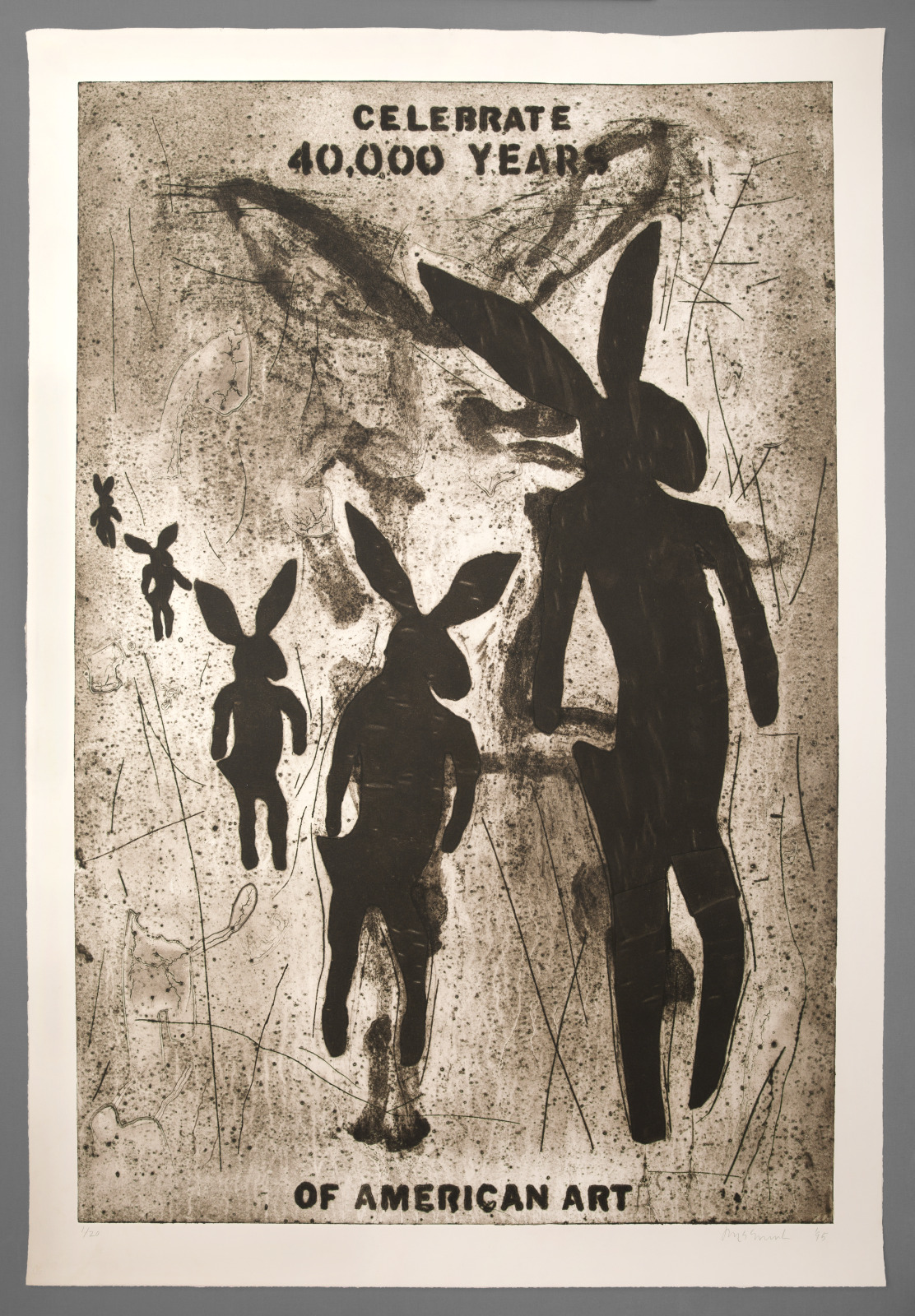
Jaune Quick-to-See Smith, enrolled Salish, Confederated Salish and Kootenai Nation, MT, born 1940; printed by Kevin Garber, American; printed and published by Washington University Collaborative Printmaking Workshop, Saint Louis, Missouri, founded 1978; Celebrate 40,000 Years of American Art, 1995; collagraph; image: 71 1/4 x 47 3/8 inches, sheet: 78 1/8 x 53 3/8 inches; Saint Louis Art Museum, Gift of Ted L. and Maryanne Ellison Simmons; and funds given by the Marian Cronheim Trust for Prints and Drawings, Museum Purchase, Friends Endowment Fund, The Sidney S. and Sadie Cohen Print Purchase Fund, and the Eliza McMillan Purchase Fund 798:2020; © Jaune Quick-To-See Smith, Courtesy of the artist and Garth Greenan Gallery, New York
Bipedal rabbits march, dance, and hop to deliver a message: artists have worked for 40 millennia on this continent. This timeline represents an important correction because the field of American art has typically focused on art made by East-Coast colonists, other European immigrants, and their descendants, while largely ignoring work by Native artists, living or ancestral.
In a series of prints from the mid-1990s, Jaune Quick-to-See Smith utilized a standing rabbit figure from the Peterborough petroglyphs in Ontario, Canada.
August 19, 2024
Abstraction #202
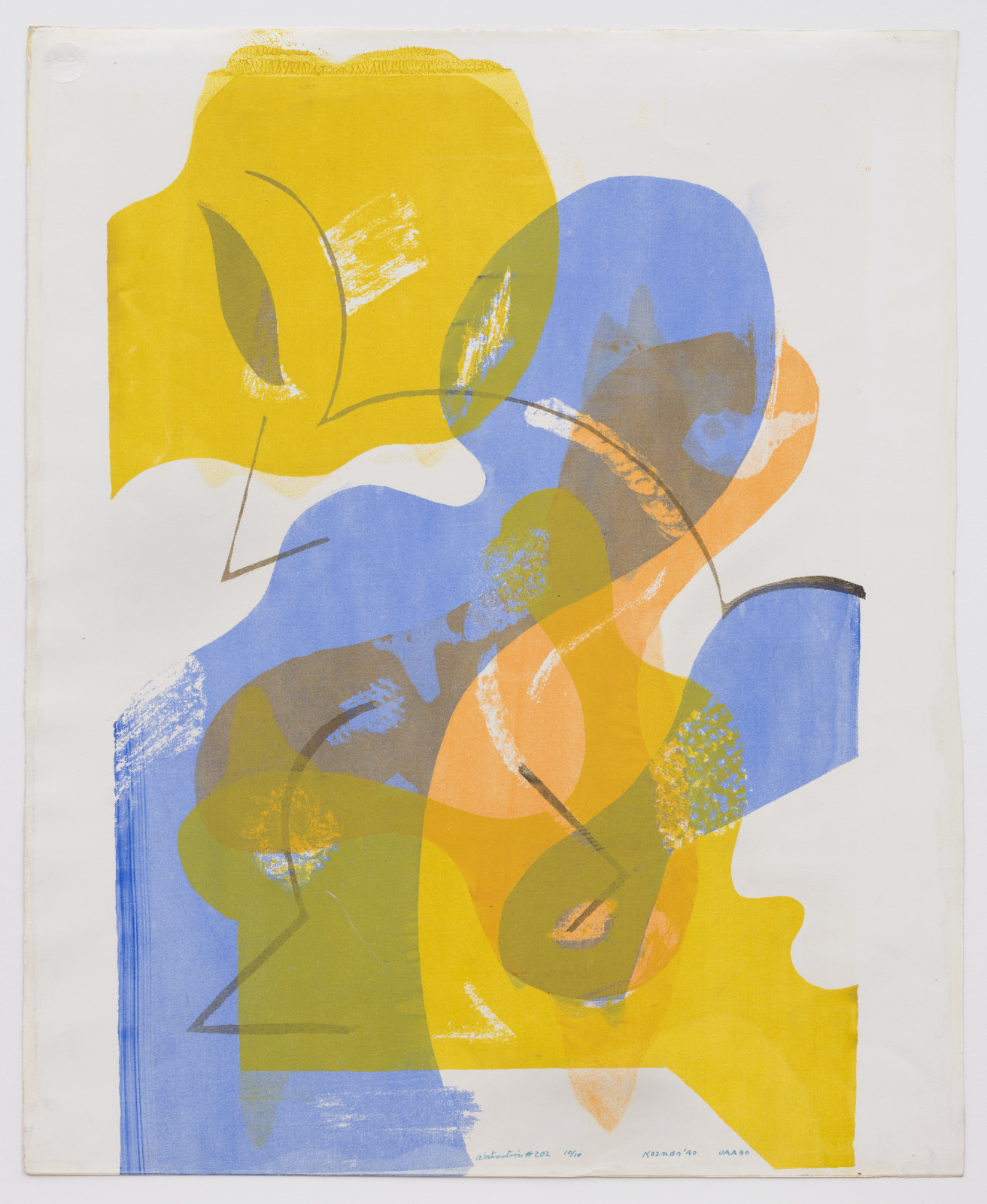
Myron Kozman, American, 1916–2002; Abstraction #202, 1940; color screenprint (direct resist stencil); image: 22 5/8 x 14 7/8 inches, sheet: 23 x 18 1/2 inches; Saint Louis Art Museum, Gift of the Federal Works Agency, Work Projects Administration 202:1943
A riot of colors, shapes, and textures fills this sheet. Myron Kozman added “UAA 90” after his signature to indicate his membership in the United American Artists Union. Its national network helped Kozman connect with artists in New York City who had adopted screenprinting as a fine art medium, inspired by poster designs. A child of Russian Jewish immigrants, Kozman experimented with this new technique while studying at Chicago’s Institute of Design. The school’s founder, László Moholy-Nagy, encouraged students to strive for “vision in motion” by designing complex interrelationships of shapes and layering blocks of color to achieve a transparent effect. Kozman later taught in St. Louis at Webster and Lindenwood Universities.
August 17, 2024
Interior of St. Peter’s, Rome

Giovanni Paolo Panini, Italian, 1691–1765; Interior of St. Peter's, Rome, 1731; oil on canvas; 57 3/8 x 89 7/8 inches; Saint Louis Art Museum, Museum Purchase 7:1946
The vastness of the nave of St. Peter’s is the true subject of this painting. Intended as a keepsake from the original owner’s visit to Rome, the picture accurately records the appearance of the great Roman basilica. The artist has, however, manipulated one detail. He has moved the papal coat of arms in the ceiling one section (or bay) farther into the fictive space of the picture, thus emphasizing the size and grandeur of the building.
August 16, 2024
The Man of Confusion

Paul Klee, German (active Switzerland), 1879–1940; The Man of Confusion, 1939; oil and watercolor on jute; 26 1/4 x 19 7/8 inches; Saint Louis Art Museum, Gift of Mr. and Mrs. Joseph Pulitzer Jr. 410:1952; © 2024 Artists Rights Society (ARS), New York
A doll breaks into pieces, its head, hands, and limbs scattered on a red background. Paul Klee cited children’s drawings as a major influence on both the style and subject of his art. He made this disorienting work at the end of his life, a period marked by illness and exile. Persecuted by the Nazis in Germany, he fled to Switzerland and developed symptoms of scleroderma, a painful disease that caused his death in 1940 at only 60.
August 14, 2024
Han Chinese Woman’s Skirt (qun) with Design of Flowers and Butterflies with Stylized Floral Scroll Borders on a Yellow Ground

Han Chinese Woman's Skirt (qun) with Design of Flowers and Butterflies with Stylized Floral Scroll Borders on a Yellow Ground, late 19th century; Chinese, Qing dynasty, Tongzhi period, or Guangxu period; silk damask with satin stitch embroidery, gold-wrapped threads, and cotton waistband; length: 37 1/2 inches; Saint Louis Art Museum, Gift of Mrs. Ralph F. Bixby 98:1978
This skirt comprises three flat and two pleated panels of bright yellow silk damask. The fabric panels are attached to a wide cotton waistband with a loop at each end for attachment. The flat panels are highlighted with a wide border of gold-wrapped threads and a narrow black trim. Butterflies and floral sprays are embroidered on two of the flat panels primarily using colored floss silk in satin stitch. These are surrounded on three sides by a border of light blue flowers on dark blue leafy scrolls. The pleated sections are less densely embroidered with floral sprays. Only the lower portion of the skirt is decorated as it is the only part which would show beneath the upper garment.
August 13, 2024
The Fairman Rogers Four-In-Hand (A May Morning in the Park)
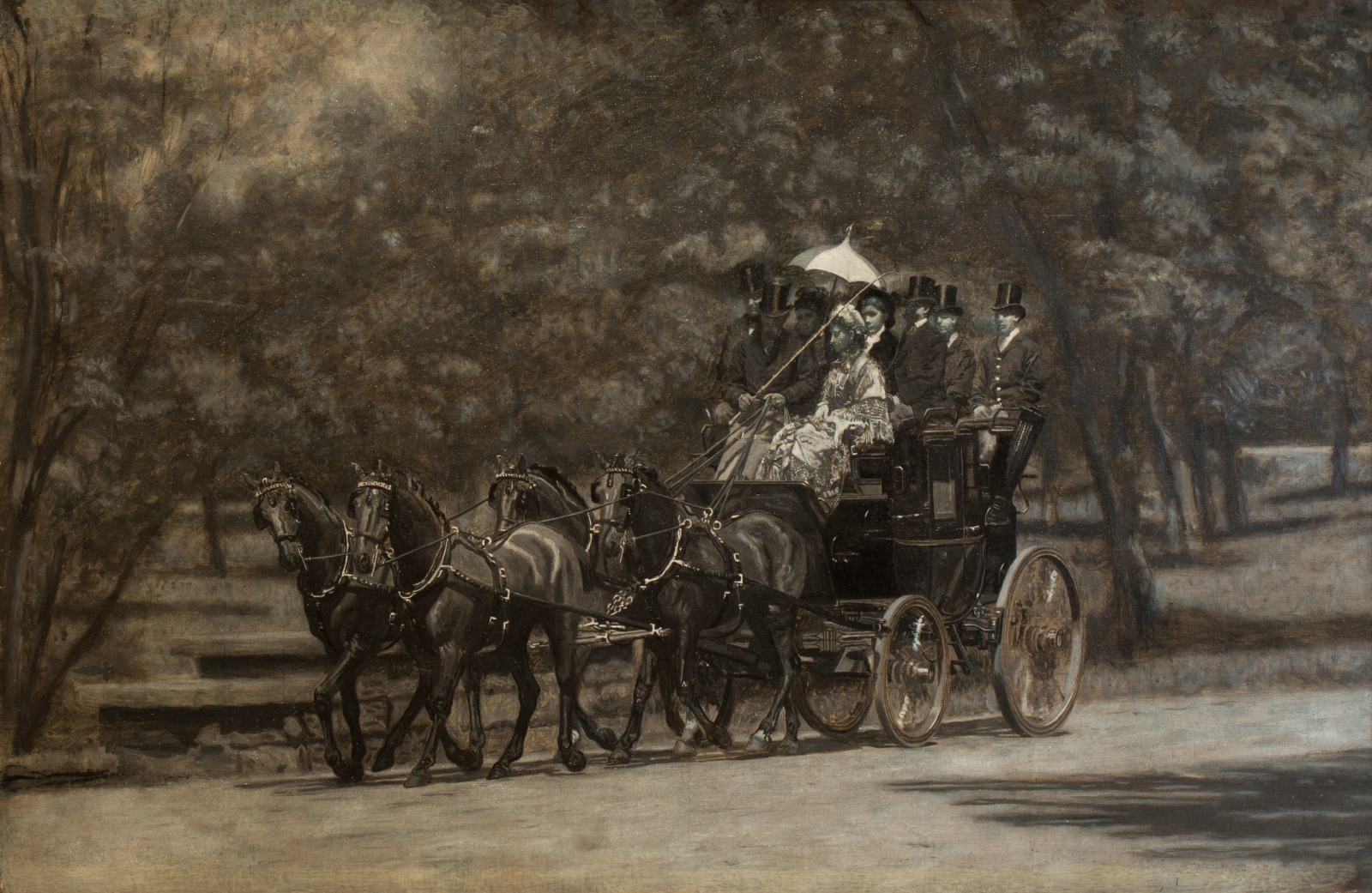
Thomas Eakins, American, 1844–1916; The Fairman Rogers Four-In-Hand (A May Morning in the Park), 1899; oil on canvas; 23 3/4 x 36 1/8 inches; Saint Louis Art Museum, Museum Purchase 92:1954
This painting was completed in grisaille—in black and white—for reproduction in a horse carriage coaching manual. The horses’ legs are depicted as stopped in their movement, but oddly the carriage wheels are not. Thomas Eakins consulted newly invented stop motion photographs to accurately depict the leg positions, something greatly debated before photography. Eakins’s concern for uncompromising, scientific realism brought him little success. As one reviewer noted, “the result may be scientifically true; but it is . . . artistically false. [One wishes] Mr. Eakins had denied himself the pleasure of a fascinating little experiment, and had painted his horses in the time worn way.”
August 12, 2024
Interior Design – Arab Art

René Binet, French, 1866–1911; Interior Design - Arab Art, 1905; watercolor; 18 3/4 x 12 1/2 inches; Saint Louis Art Museum, Gift of Peggy Ives Cole 44:2000
This luminous watercolor illustrates various examples of Islamic architecture and ornament. The structures are meticulously detailed, from the domed pulpit near the center to the delicate filigree on the staircase and the pointed arches above. Colorful tiles embellish the back wall. For all its detail, however, this drawing does not represent a realistic depiction of a mosque. Rather, it is a western European view of identifiably Islamic architectural elements by a French architect, René Binet. Binet traveled to North Africa and Muslim Spain, studying architecture there. He was a great ornamentalist, exemplified by his attention to the intricate details in the image.
Binet was a renowned architect with an international reputation in the early 20th century, but this drawing has a local connection. It is part of a group of plans Binet designed in the early 1900s for a Hall of Architecture here at the Saint Louis Art Museum. Ultimately, the project was never completed.
August 11, 2024
Nepcetaq Mask
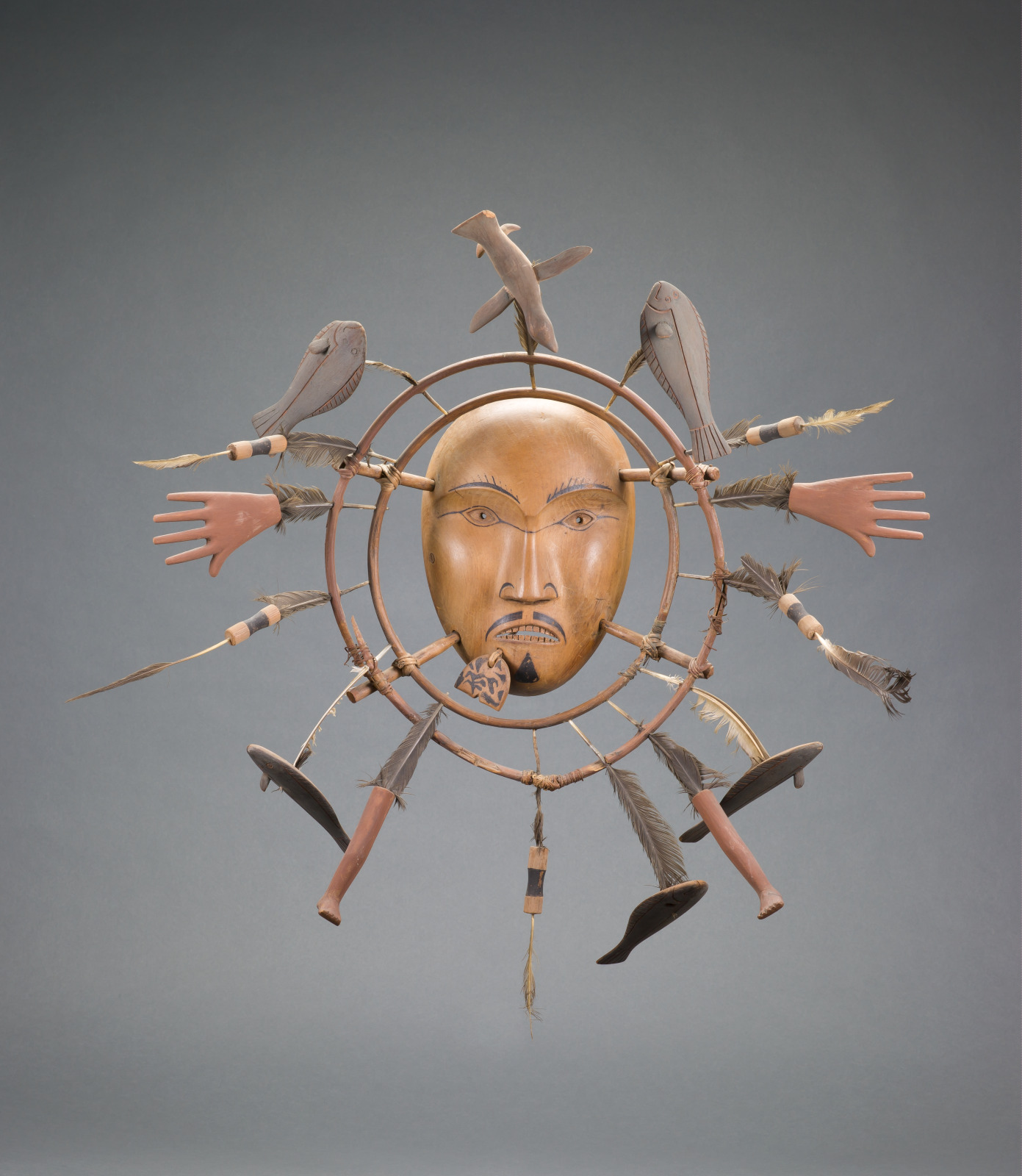
Yup’ik artist, Nepcetaq Mask, c.1900; wood, pigment, and feathers; 10 1/2 x 25 inches; Saint Louis Art Museum, Gift of Margaret Cohen Voss and Bernhard Voss 99:2013
A Yup’ik artist from Alaska has gracefully manipulated wood and paint to show a powerful vision. In the central carving, an angalkuq (shaman) stares intently through two bentwood rings, which represent layers of the universe. As mediators between worlds, shamans have the ability to travel beyond the everyday realm. Feathers and wooden carvings of hands, feet, fish, and a bird radiate beyond the second, outermost ring. With hands and legs matching the tone of his face, the angalkuq seems to reach across the boundaries of the world. He touches that which we cannot see, the inner life of things.
August 10, 2024
Firescreen
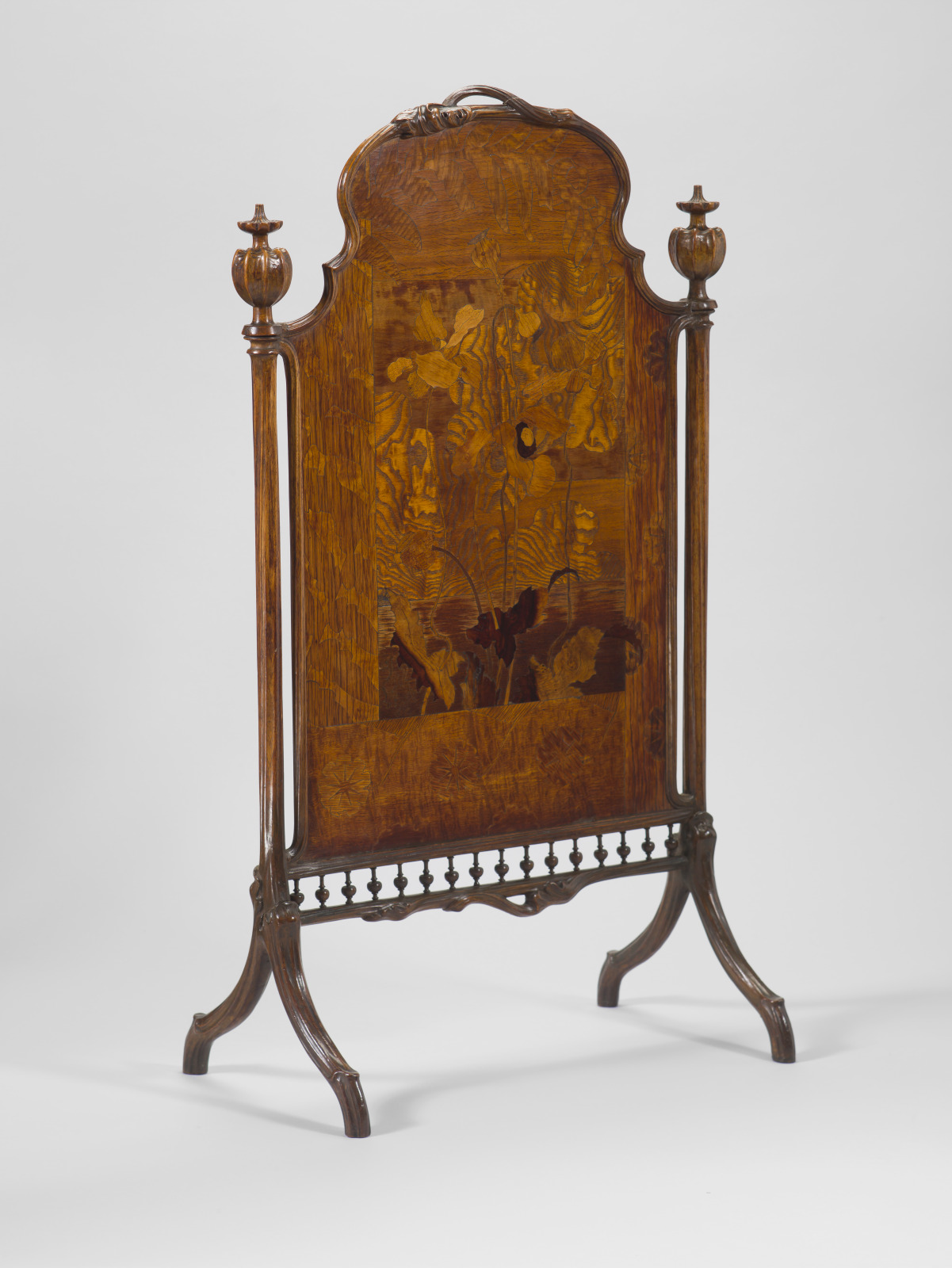
Émile Gallé, French, 1846–1904; Firescreen, designed 1895; mahogany, walnut, ash, and other woods; 41 x 23 1/2 x 13 inches; Saint Louis Art Museum, Funds given by Women for City Living 196:1977
Wild poppy flowers and foliage emerge from a jigsaw puzzle of light and dark woods on this firescreen’s central panel, framed by twisting vines. The carved legs and upright posts resemble plant stalks, and seed pods serve as ornamental finials. As a young man, designer Émile Gallé studied botany alongside art. In 1875, he assumed leadership of his family’s glass and ceramic workshops in Nancy in eastern France.
When Gallé began to design furniture about 1890 he turned to plant forms, using stems as structural elements and flowers and leaves for ornament. His motto – “my roots are in the heart of the woods” – explains his devotion to organic forms and natural motifs. Gallé exhibited his nature-inspired furniture and glass at international expositions, including the 1900 Paris World’s Fair, where an American visitor purchased this firescreen.
August 9, 2024
Rock Steady
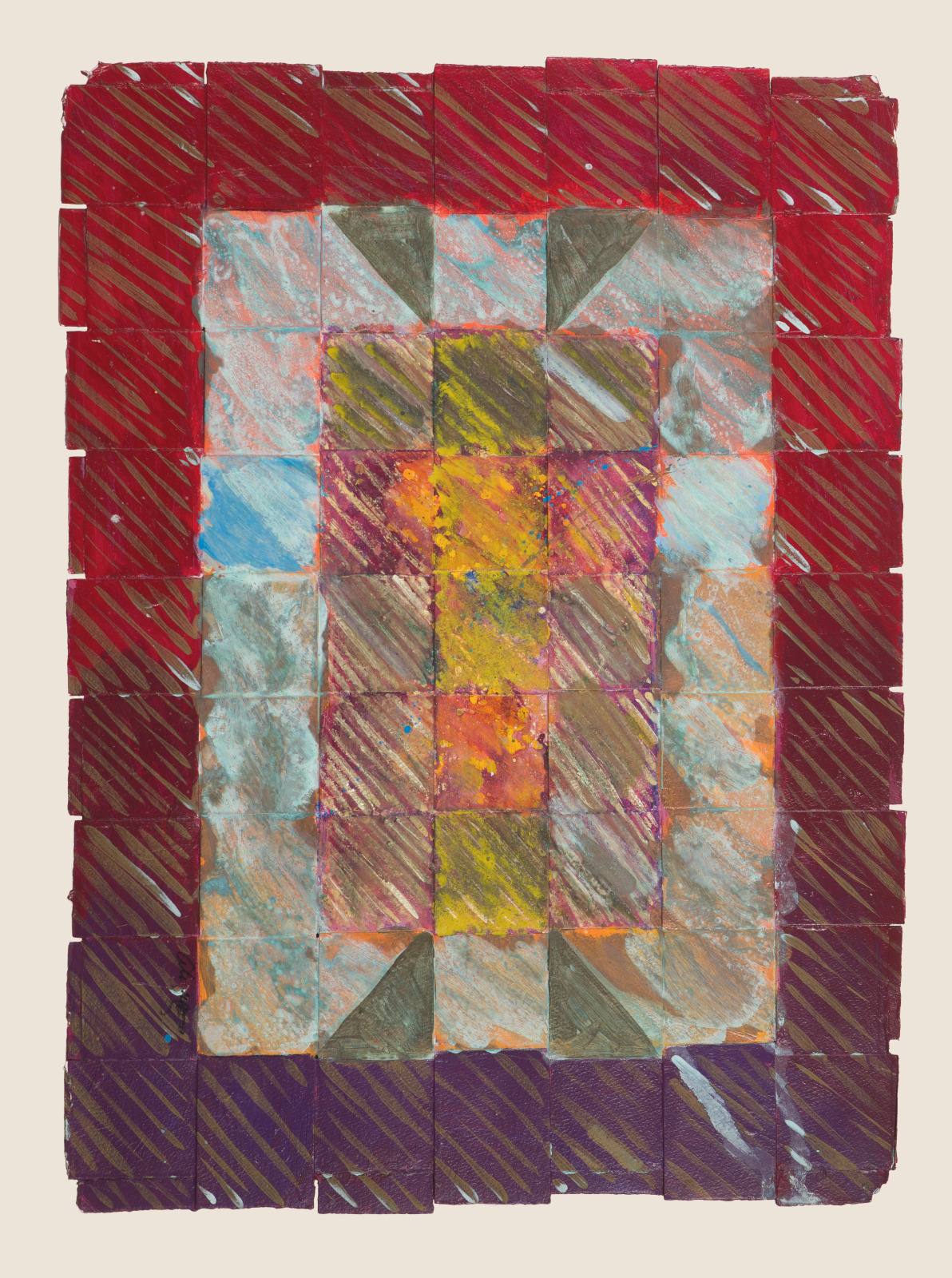
Alonzo Davis, American, born 1942; Rock Steady, 1992; collage of cut and woven paper with paint; 30 1/4 x 22 1/8 inches; Saint Louis Art Museum, The Thelma and Bert Ollie Memorial Collection, Gift of Ronald and Monique Ollie 134:2017; © Alonzo Davis
Constructed of interwoven paper strips, Rock Steady combines the bright colors and braided texture of Southwestern textiles with the splatters and drips of expressive painting. Alonzo Davis created this work while he was dean of the San Antonio Art Institute during the early 1990s. He was drawn to motifs he encountered in Southwest Native American arts, which led to his Blanket Series, a collection of woven paintings. This work is one of over a hundred in that series, which later inspired large-scale installations.
August 8, 2024
Banks of the Oise at Auvers
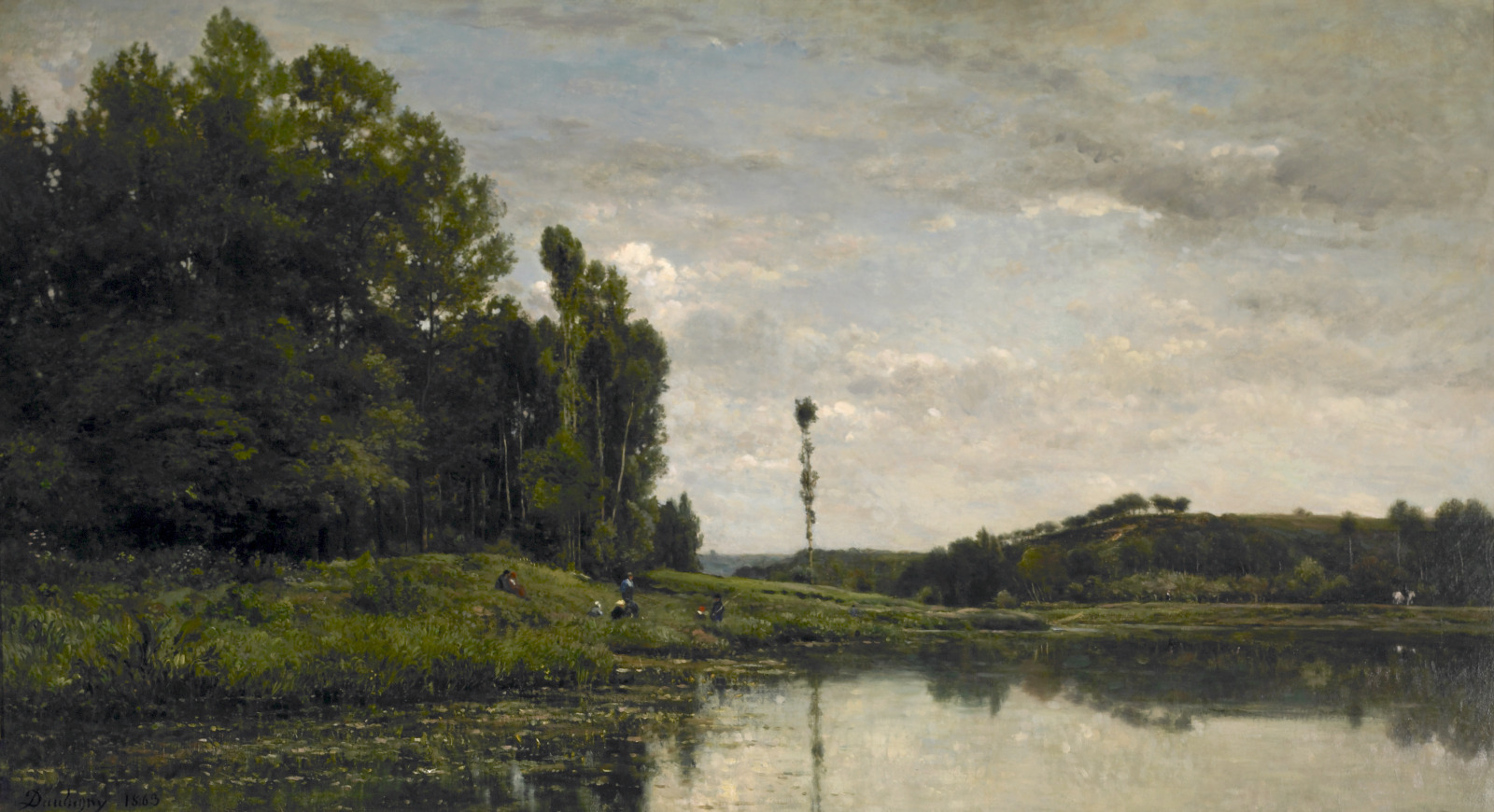
Charles-Francois Daubigny, French, 1817–1878; Banks of the Oise at Auvers, 1863; oil on canvas; 35 x 63 1/2 inches; Saint Louis Art Museum, Friends Endowment Fund, and gift of Justina G. Catlin in memory of her husband, Daniel Catlin, by exchange 84:2007
Colorfully dressed peasants, who fish on the river bank alongside rafts of water lilies, animate this landscape. While this painting was likely completed in his studio, Charles-François Daubigny’s work was informed by devoted outdoor study; he even constructed a studio boat in 1857. Daubigny was considered the greatest river painter of mid-19th century France, and this painting is characteristic of his popular scenes of pastoral calm. The work was exhibited at the 1863 Salon, the government-sponsored art exhibition.
August 7, 2024
Martingale
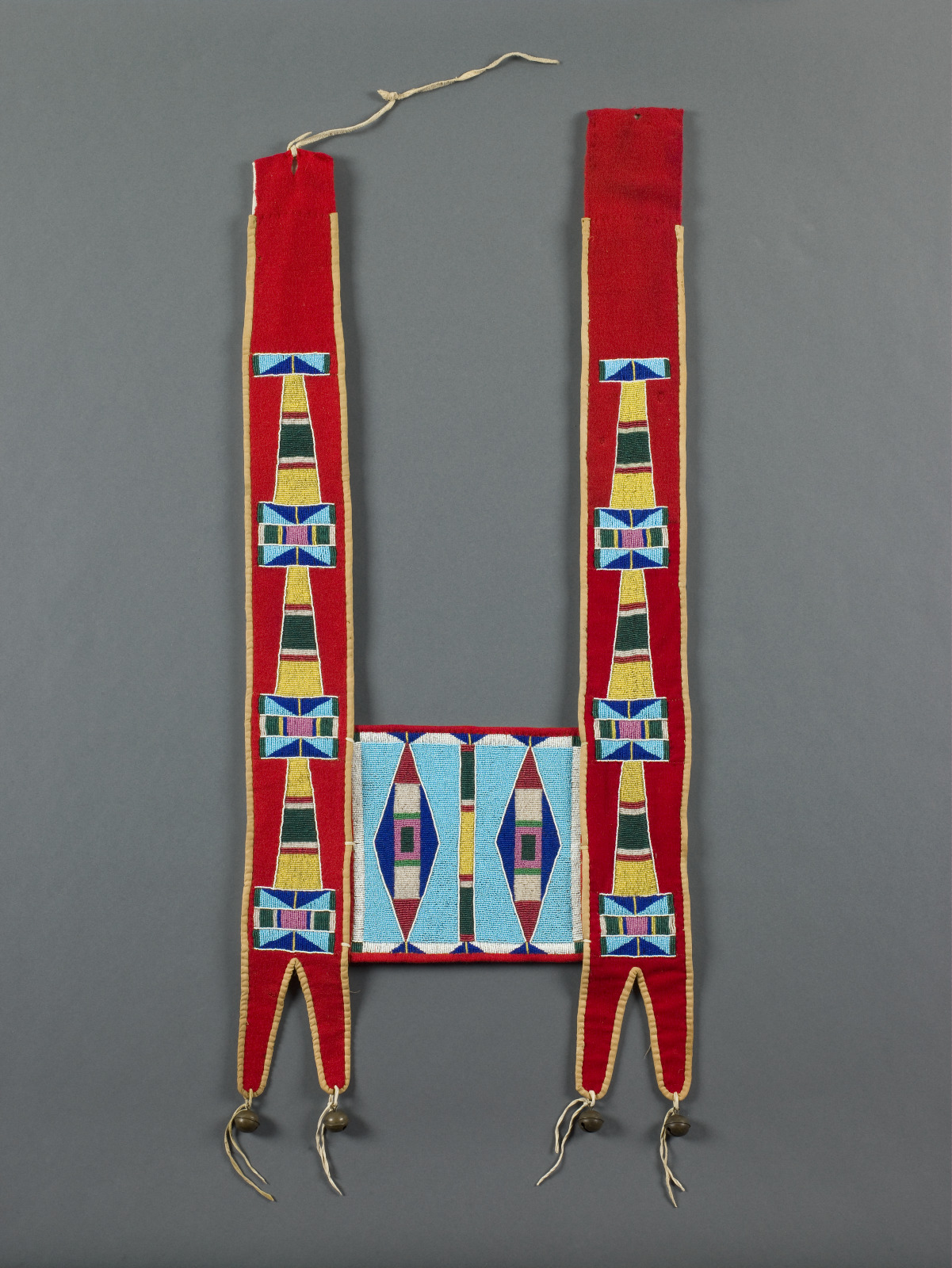
Apsaalooke (Crow) artist; Martingale, c.1900; tanned hide, wool and cotton cloth, glass seed beads, and brass bells; 37 x 16 inches; Saint Louis Art Museum, The Donald Danforth Jr. Collection, Gift of Mrs. Donald Danforth Jr. 80:2010
Martingales, like the one seen here, hang from a horse’s neck and cover its chest. Among the Native Americans living on the Plains, horses were a source of both honor and currency. The best horses were decorated for special occasions including parades and celebrations, a practice that continues today among the Apsáalooke (Crow) in south-central Montana.
August 6, 2024
Farnham

Sir Anthony Caro, English, 1924–2013; Farnham, 1969; painted steel; 91 inches x 17 feet 11 inches x 85 inches; Saint Louis Art Museum, Funds given by the Shoenberg Foundation, Inc. 115:1977a-c; © The Anthony Caro Centre
Linear rods of steel in bright red rest on the ground, project into the air, and form a series of varied angles. Sir Anthony Caro developed a sculptural process of welding together found pieces of industrial metal such as I-beams and steel plates. By placing his abstract sculpture directly on the ground rather than on a pedestal, Caro invited viewers to engage with the surrounding space of the work and to approach it from any direction.
August 5, 2024
Buddhist Priest’s Seven-Column Robe (kesa) with Design of Dragons amidst Multicolored Clouds
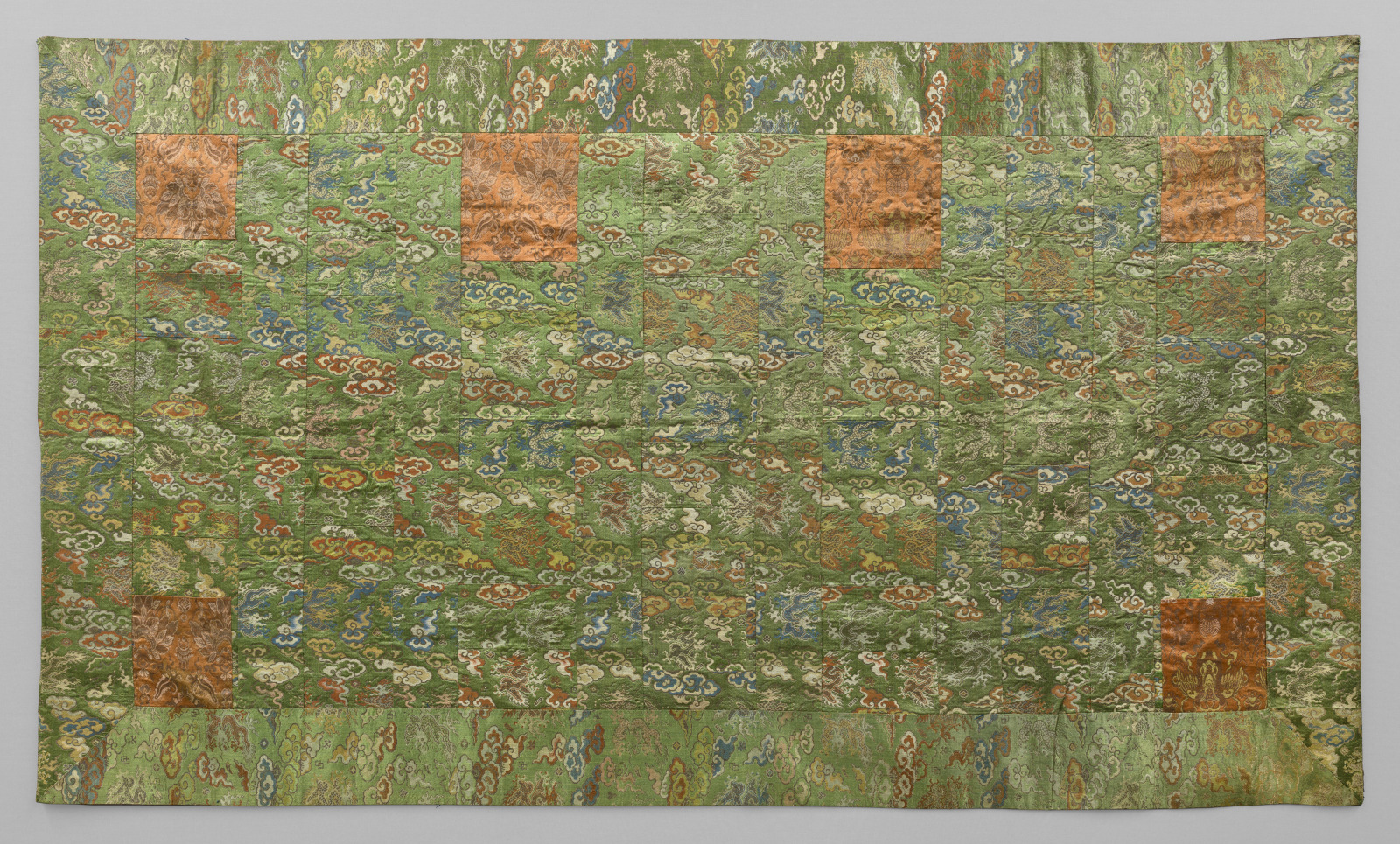
Buddhist Priest's Seven-Column Robe (kesa) with Design of Dragons amidst Multicolored Clouds, 19th century; Japanese, Edo period, or Meiji period; silk satin ground brocaded with silk supplementary wefts and silver-wrapped paper; 44 1/8 x 76 1/2 inches; Saint Louis Art Museum, Bequest of Leona J. Beckmann 26:1985
This multicolored textile features a green silk satin ground brocade-woven with a supplementary weft pattern of four-clawed dragons in flight against swirling clouds. The motifs are based on Chinese textiles of the Ming dynasty (1368–1644).
Buddhist priests wear robes (kesa) like this one draped over the left shoulder and under the right arm. A common kesa design includes seven wider vertical columns (jō) within borders (yō), alternating with narrower columns. Square patches near each corner of the kesa represent one of the Guardians of the Four Directions (shitennō). Additionally, two slightly larger “attendant” squares (niten) flank the upper part of the central column. They may represent the bodhisattvas, or enlightened beings, Monju (Mañjuśrī) and Fugen (Samantabhadra), or the guardians of the Buddha known as the Two Benevolent Kings (ni-ō).
August 4, 2024
Cairo – Old Mosques in Southern Cemetery
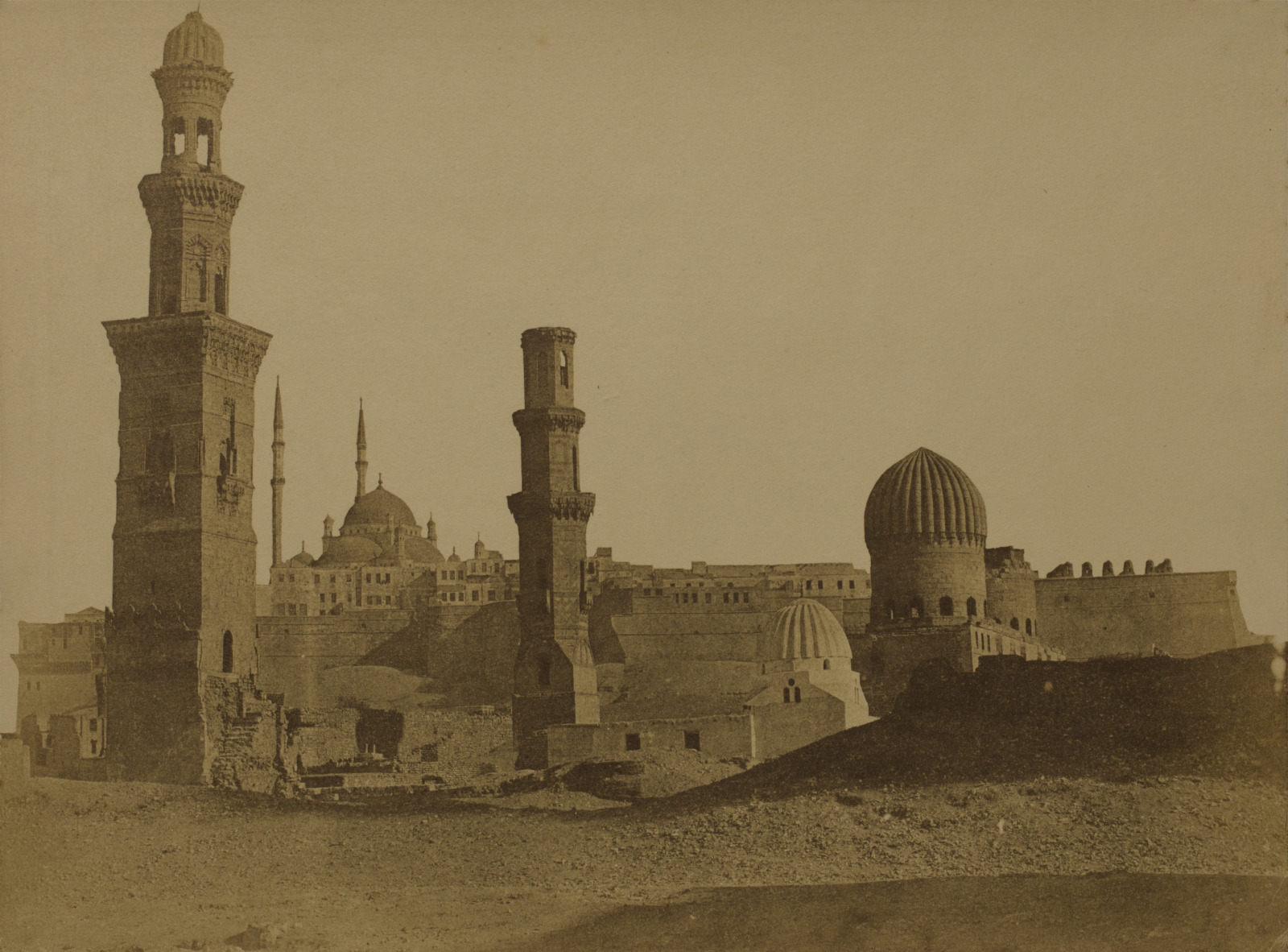
Robert Murray, Scottish, 1822–1893; Cairo - Old Mosques in Southern Cemetery, c.1853–54, printed 1856; albumen print from paper negative; image: 7 1/4 x 9 3/4 inches, mount: 8 1/8 x 10 1/2 inches; Saint Louis Art Museum, Gift of David R. Hanlon 137:2019
The invention of photography was presented to the public in both France and England in 1839. Artists from those countries became interested in using the new medium to document the remains of early architectural histories in the Middle East. Many photographers, including Robert Murray, passed through Cairo as part of their tour of the region. In this image, he focused on the array of Islamic towers and domes for the tombs of rulers and elites erected over the centuries in an important cemetery.
Early practitioners had to work within technical limitations, such as negatives made from paper, which did not transmit as much visual information as later glass and plastic negatives. Yet, they still produced aesthetically pleasing pictures in their handling of shape and light.
August 3, 2024
Temptation (Adam and Eve)
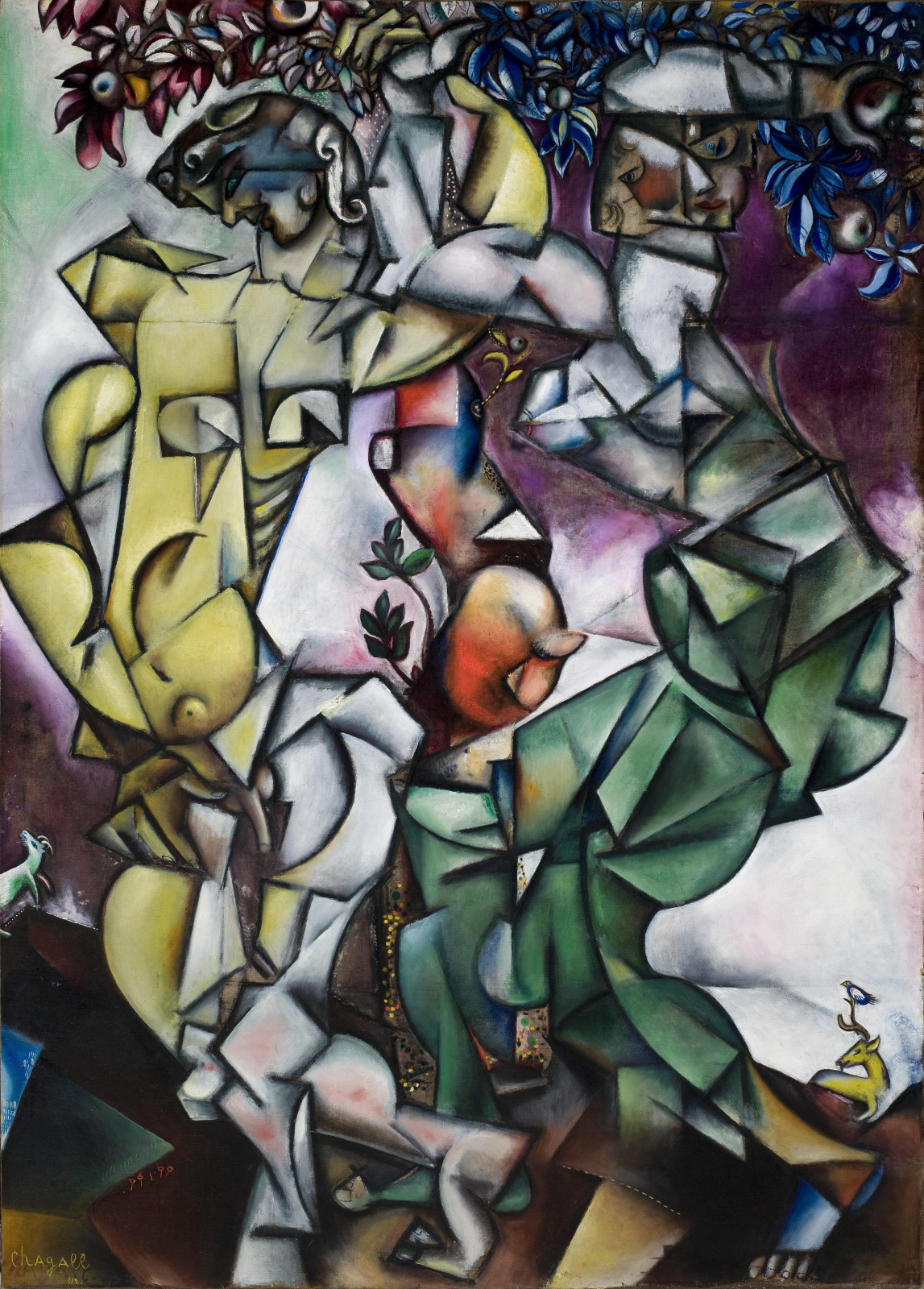
Marc Chagall, French (born Belarus), 1887–1985; Temptation, 1912; oil on canvas; 65 1/2 x 46 3/4 inches; Saint Louis Art Museum, Gift of Morton D. May 74:1954
In this biblical narrative, Eve grasps the forbidden apple, which she will hand to the golden figure of Adam on the left. Animal figures are dotted throughout the composition, including a bird perched on the antlers of a deer to the bottom right. Chagall treated this traditional subject in a highly modern, Cubist style, which he encountered after moving to Paris in 1910. Forms are broken down into faceted planes; the Cubist device of the split face allows Eve to look at both the apple and its destination.
August 2, 2024
The Besieged Elephant
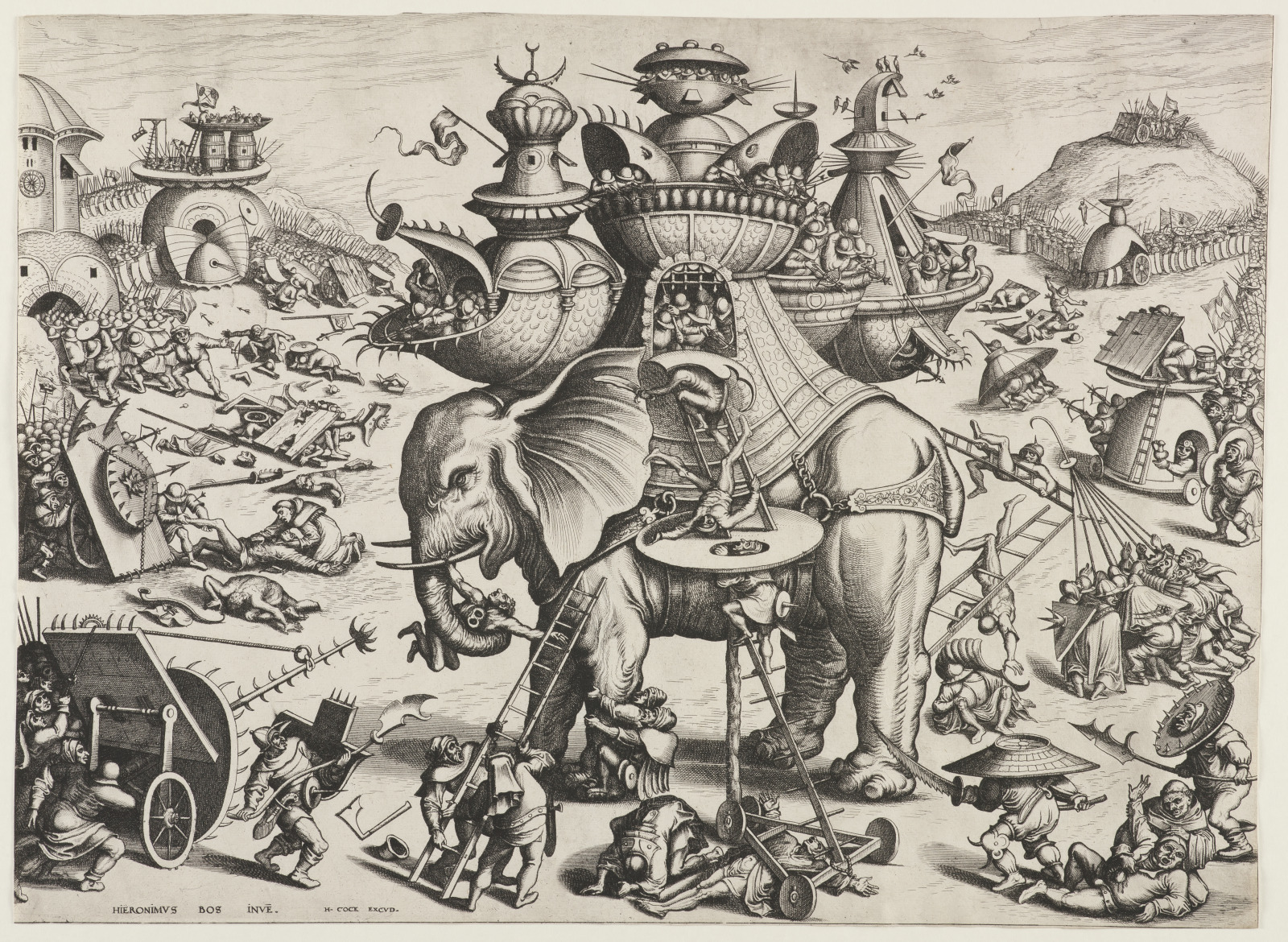
after Alart du Hameel, Netherlandish, 1449–1507; printed by Jan van Doetechum the Elder, Dutch, (active 1554–1605); printed by Lucas van Doetechum, Dutch, active 1554–1572; published by Hieronymus Cock, Netherlandish, 1510–1570; The Besieged Elephant, c.1563; etching and engraving; sheet (trimmed between image and platemark): 15 5/8 x 21 1/2 inches; Saint Louis Art Museum, Anonymous Gift 647:2018
The elephant at the center of this oversize print bears the weight of an entire army. Dozens of helmeted soldiers armed with crossbows, swords, and projectiles are ensconced in a fantastical turreted structure fastened atop his back. Even the elephant has gone on the defensive and seized an opponent forcefully in his massive trunk. The print’s overarching message seems to warn mankind to beware of the dangers of extreme aggression.
Although an inscription on the print identifies Hieronymus Bosch as its “inventor,” no such composition by the celebrated Netherlandish painter survives. Rather, this print’s inspiration came from a now-rare engraving by Bosch’s contemporary, Alaert du Hameel. Hameel may well have adapted imagery from Bosch’s devilish inventions. Created decades later, this print was one of many that reinterpreted and updated Boschian themes for a new generation. In one such update, the many animals fighting alongside soldiers in the earlier version by Hameel are absent here, and all focus turns to the challenges of humanity.
August 1, 2024
You Can’t Lay Down Your Memories Chest of Drawers
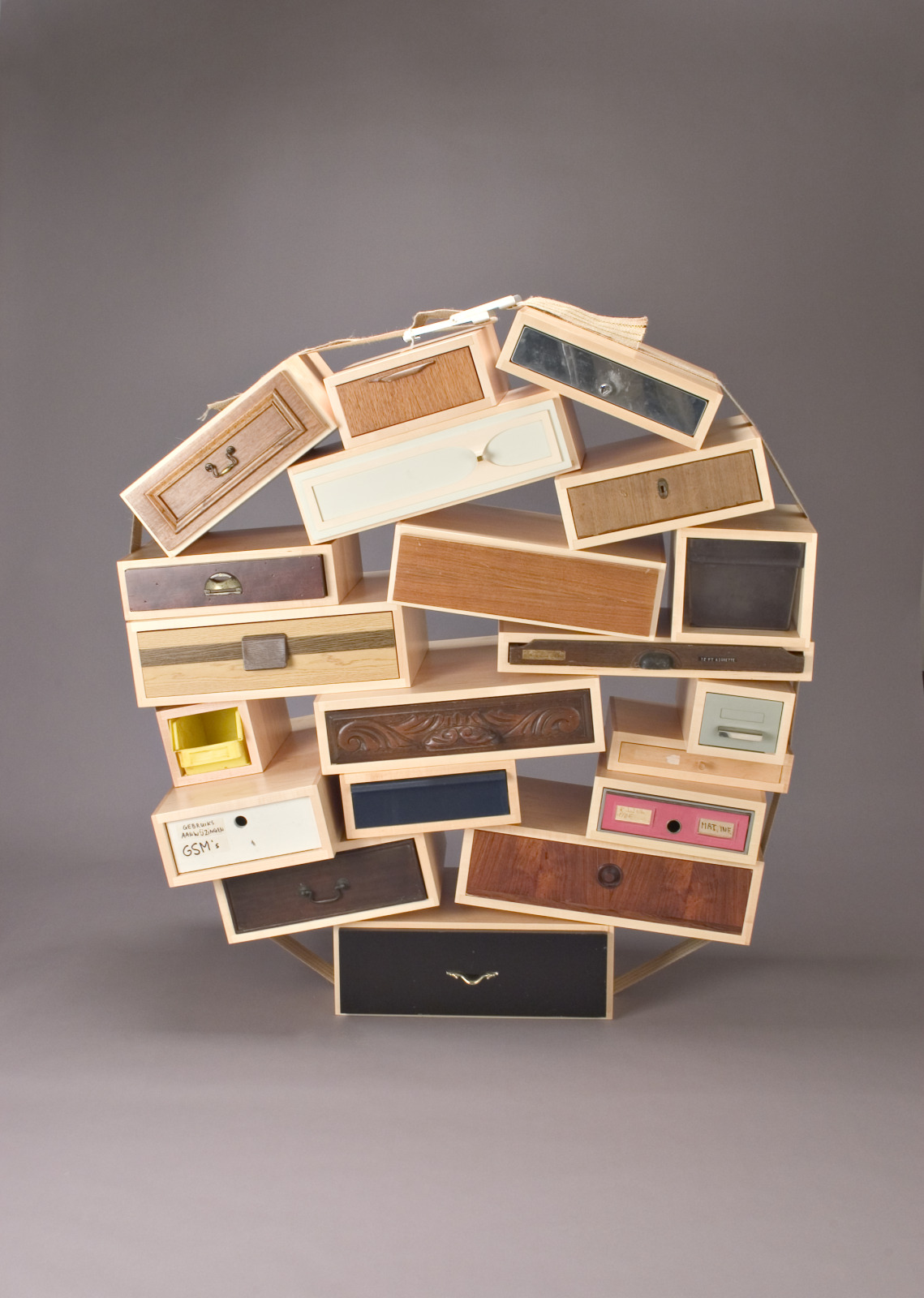
Tejo Remy, Dutch, born 1960; for Droog Design, Amsterdam, Netherlands; You Can't Lay Down Your Memories Chest of Drawers, designed 1991, made 2005; vintage drawers, maple frames, and jute strap; approximate: 56 x 56 x 23 inches; Saint Louis Art Museum, Funds given by Mr. and Mrs. L. Max Lippman Jr. 78:2005a-u; © Tejo Remy
This playful assemblage of mismatched drawers, piled in an asymmetrical configuration and bound together with an upholstery strap, is an alternative to the traditional compact, upright chest form. All the drawers are salvaged scrap and each chest in this limited series is unique. In fact, brave owners can create their own compositions by stacking and rearranging the drawers at will.
July 31, 2024
Labret
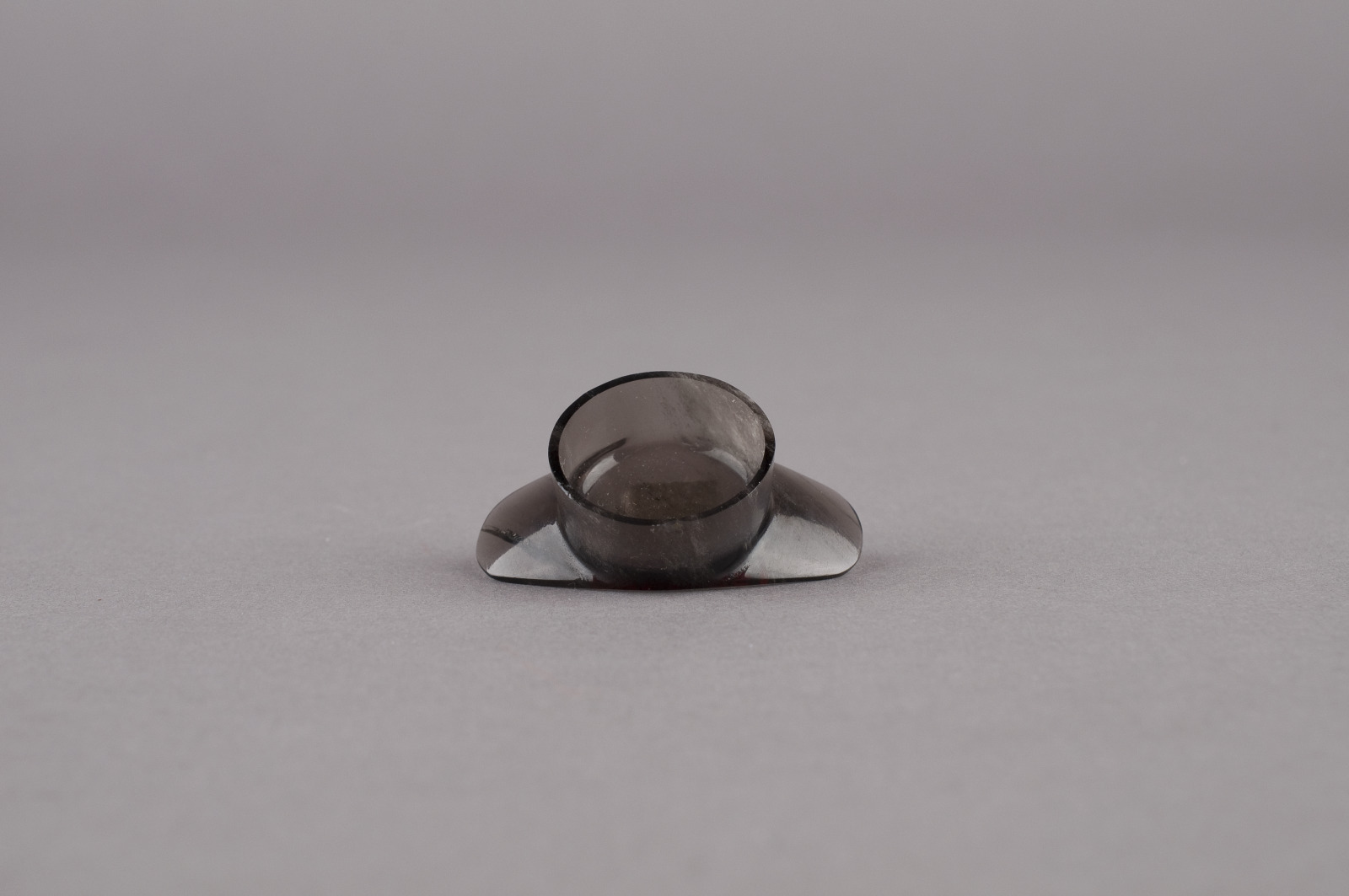
Labret, c.1250–1450; Mixtec, Mexico, Late Postclassic period; obsidian; 7/8 x 1 5/8 x 13/16 inches; Saint Louis Art Museum, Gift of Morton D. May 138:1980
This labret, or lip plug, is carved from a single piece of obsidian, a type of volcanic glass. An important resource across Mesoamerican cultures, this material was used to make luxury items such as jewelry, but also tools like knives and weapons. The labret was probably worn by a high-ranking member of the Mixtec people, who were indigenous to present-day southwestern Mexico. Personal ornaments like these were also fashioned in gold, jadeite, and wood.
July 30, 2024
Attachment
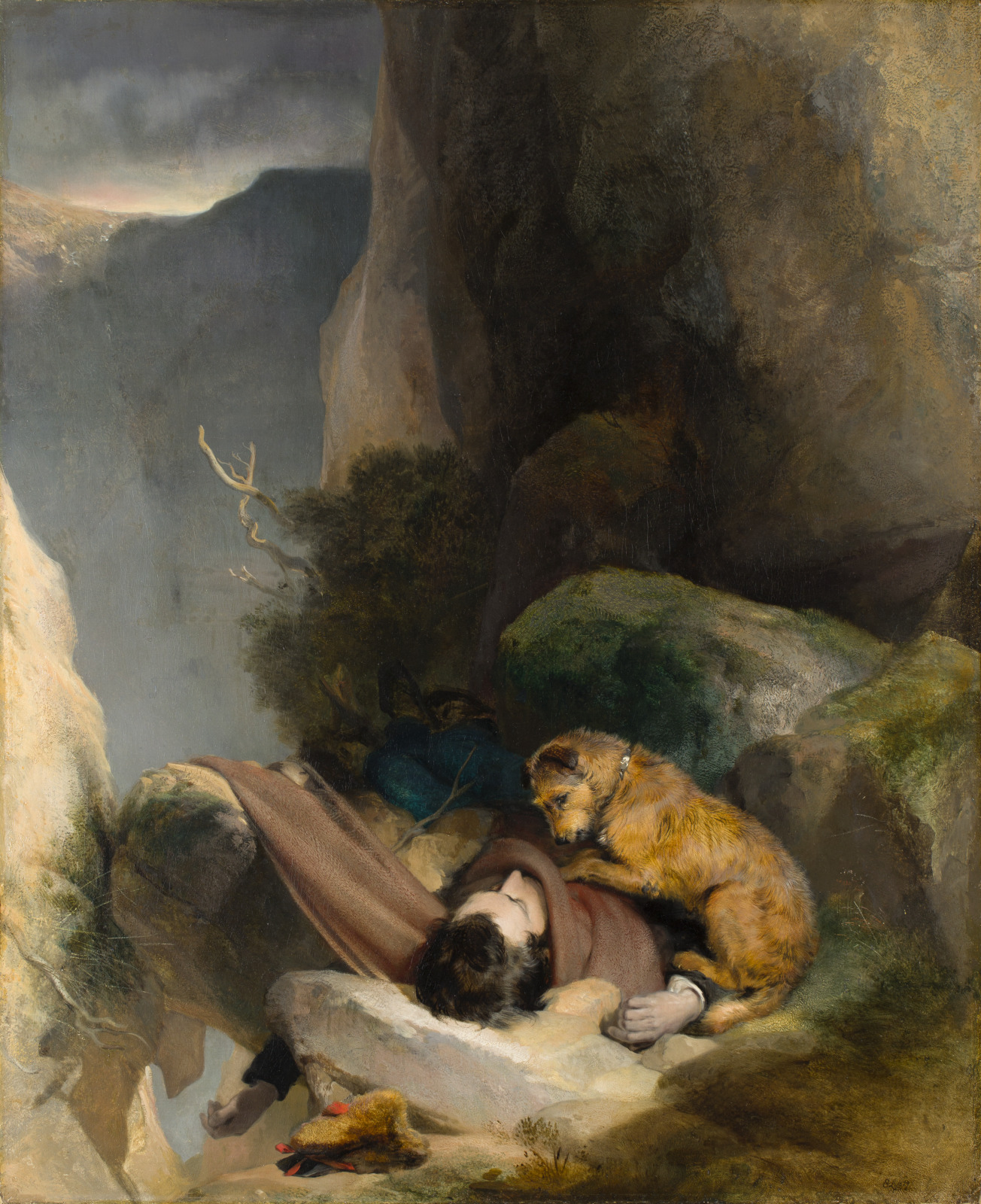
Sir Edwin Henry Landseer, English, 1802–1873; Attachment, 1829; oil on canvas; 39 7/8 x 32 7/8 inches; Saint Louis Art Museum, Gift of Mrs. Eugene A. Perry in memory of her mother, Mrs. Claude Kilpatrick, by exchange 123:1987
This painting illustrates Sir Walter Scott’s poem “Helvellyn,” about a faithful dog that guarded her master’s body after he had fallen while mountain climbing. Though the body went undiscovered for three months, the dog stayed to ward off the ravens and foxes that might have scavenged the remains. Edwin Henry Landseer dramatizes this scene through vivid contrasts of light and shadow, and by placing the man’s body at the bottom of the composition, which emphasizes the great height from which it fell.
July 29, 2024
Portrait of a Young Man (perhaps an artist)

workshop of Rembrandt van Rijn, Dutch, 1606–1669; Portrait of a Young Man (perhaps an artist), 1661–62; oil on canvas; 35 3/8 x 27 7/8 inches; Saint Louis Art Museum, Museum Purchase and funds given by anonymous donors 90:1950
Wearing a heavy coat and floppy velvet cap, this young man addresses us with a slightly bemused expression. His costume suggests that he is an artist, and it is believed that this portrait was done by one of Rembrandt van Rijn’s pupils, observing a colleague in the studio. The sensitive handling of the shadows on his forehead and the sitter’s beautifully rendered right eye suggest the hand of a talented young painter.
July 28, 2024
Covered Wine Vessel (fang lei)
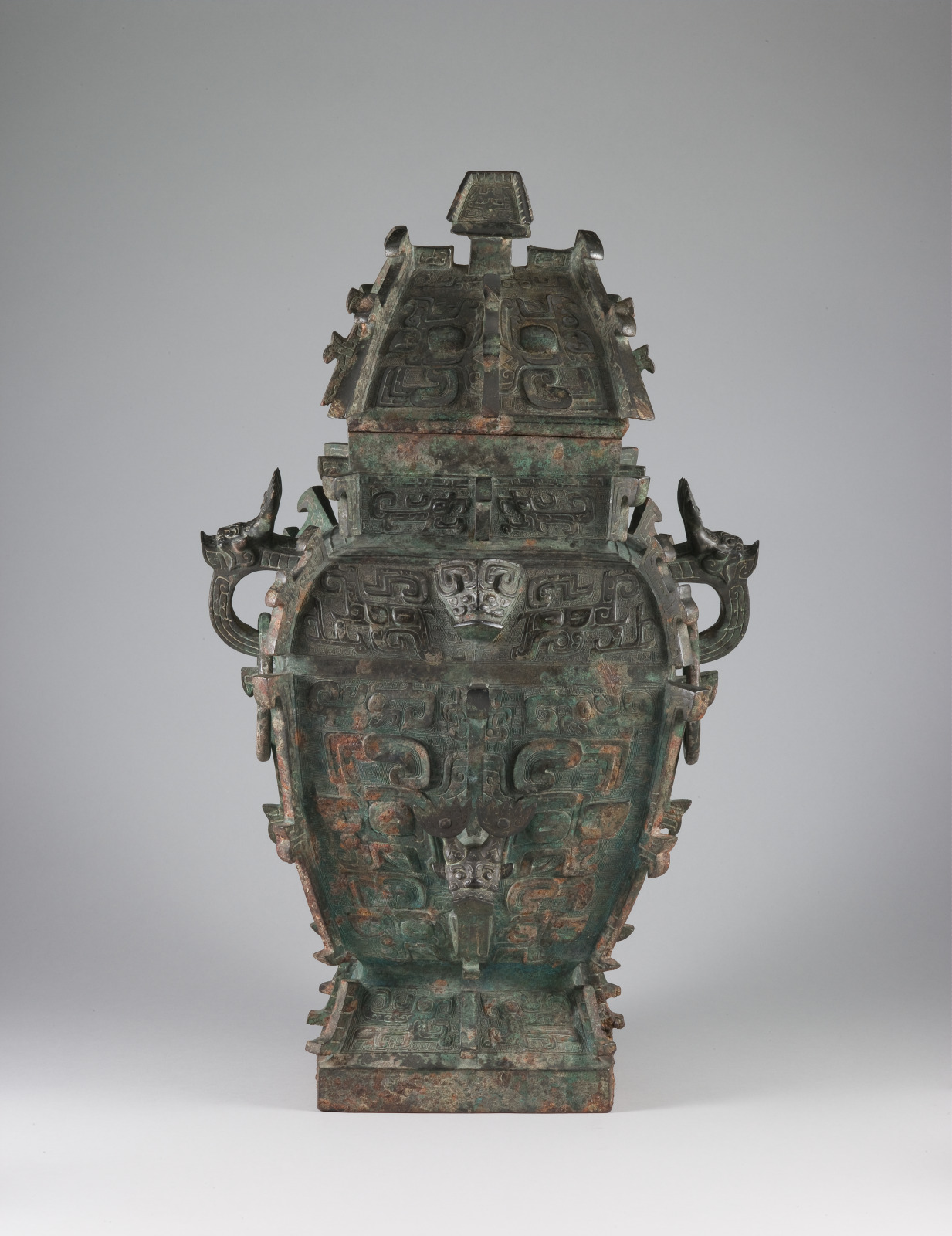
Covered Wine Vessel (fang lei) with Design of Zoomorphic Masks and Animal-Headed Handles, late 11th century BC; Chinese, Western Zhou dynasty; bronze; 24 5/8 x 14 5/8 x 10 3/8 inches; Saint Louis Art Museum, Museum Purchase 2:1941a,b
The sharp hooks, spurs, and spikes bristling from the body of this extraordinary sacrificial bronze give a sculptural force to its impressive size and architectonic structure. The vessel is further ornamented with zoomorphic masks (taotie) and low-relief dragons in distinct registers arranged in a highly symmetrical decorative order. The horizontal orientation of the ornamental bands achieves a measured, visual balance that gives the work a stateliness to complement its visually aggressive character. The body of this wine vessel is distinguished by an unusual double taotie on each side. A very rare inscription of a single character may relate to the royal grant of land to a noble.
July 27, 2024
Pollaxe (mazzapicchio) with the Arms of the City of Venice

Pollaxe (mazzapicchio) with the Arms of the City of Venice, early 16th century; Italian; etched and gilded steel, brass, and wood; 58 3/4 x 9 x 4 3/4 inches, blade only: 8 5/8 inches; Saint Louis Art Museum, Museum Purchase 44:1919
Staff weapons, popularly called polearms, were the most typical infantry weapons until well into the 16th-century. Most staff weapons evolved from agricultural or everyday tools modified for military use and simply fastened to long wooden staves. All polearms require the use of both hands and were used exclusively on foot, except for the long spear called a lance, which was used from horseback. Staff weapons were used by commoners and professional soldiers in battle, by knights in armored sporting combats, and by bodyguards of royalty. Like many other arms, staff weapons assumed a primarily ceremonial role by the mid-17th century.
July 26, 2024
The Beach, Étretat

Jean-Baptiste-Camille Corot, French, 1796–1875; The Beach, Étretat, 1872; oil on canvas; 14 x 22 3/16 inches; Saint Louis Art Museum, Museum Purchase 63:1932
Jean-Baptiste-Camille Corot represents boats on the beach at the resort of Étretat in Normandy, France. The unusual arch rock formations, for which the location is known, are just visible in the distance. The interesting cropped form of the wooden mooring pier at right, with its strong, abstract shapes, may reflect Corot’s interest in photography. Corot painted this work during an extensive tour around France in his mid-70s when he continued to travel despite suffering from severe gout.
July 25, 2024
Striding Male Figure
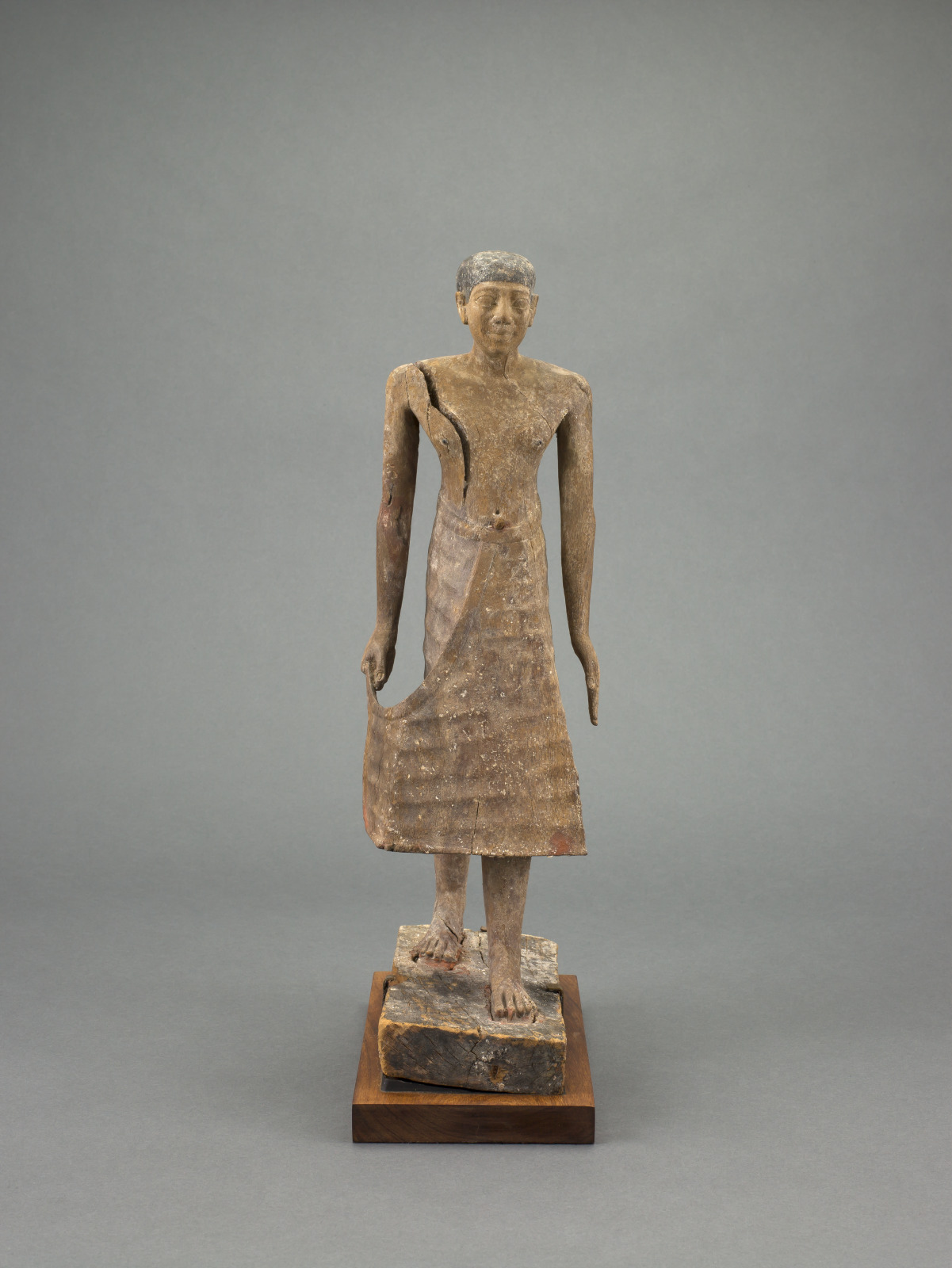
Striding Male Figure, 2278–2184 BC; Egyptian, Old Kingdom, Dynasty 6, associated with Pepi II Neferkare; wood, ebony, plaster, and paint; height: 16 inches; Saint Louis Art Museum, Friends Endowment Fund 1:1986
-
See Details
![11986dig_3_hand]()
Striding Male Figure (detail), 2278–2184 BC; Egyptian, Old Kingdom, Dynasty 6; wood, ebony, plaster, and paint; height: 16 inches; Saint Louis Art Museum, Friends Fund 1:1986
![9a8ce260-2788-443d-8af2-c5daaec18fa4]()
Striding Male Figure (detail), 2278–2184 BC; Egyptian, Old Kingdom, Dynasty 6; wood, ebony, plaster, and paint; height: 16 inches; Saint Louis Art Museum, Friends Fund 1:1986
Wooden statues from Egypt’s Old Kingdom (2686–2160 BC) were often damaged by the natural conditions of rot and insects as well as the wanton destruction wrought by tomb robbers. This fortunate survivor probably represents a nobleman or an official. Striding forward with assurance, he grasps the loose end of his kilt and pulls it aside in an elegant flourish that may represent a gesture of adoration or supplication.
This delicate figure is remarkable for the subtle modeling of the body beneath the pleated skirt, the careful details in the carving of the fingernails, and the distinctive inlaid nipples of ebony (see details). Wooden sculptures of the deceased, like this one, were placed in various locations within tombs and in varying numbers, depending on the traditions that were popular during different Old Kingdom dynasties.
July 24, 2024
Hanging with Design of Dragon and Phoenix amidst Waves and Clouds
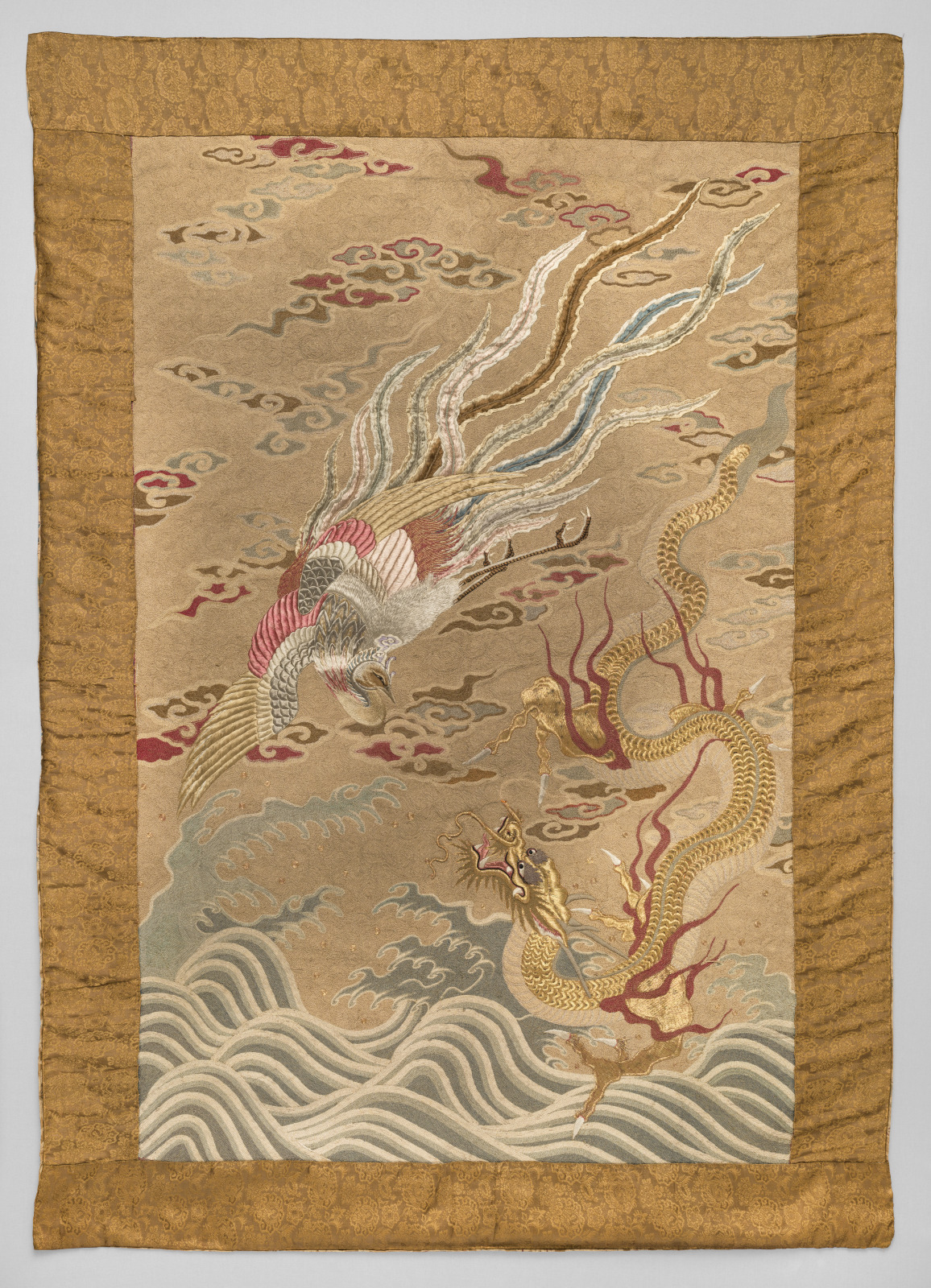
Hanging with Design of Dragon and Phoenix amidst Waves and Clouds, late 19th century; Japanese, Meiji period; silk embroidered with multicolored silk floss and metallic-wrapped threads; overall: 72 1/2 x 52 1/4 inches; Saint Louis Art Museum, Gift of Mrs. Alexander B. Pierce 253:1951
A flaming dragon with golden scales and a silver underbelly is depicted at the lower right of this decorative silk hanging. A phoenix with multicolored outstretched wings and streaming plumage is shown at the upper left. The undulating and cresting waves at the bottom are striped in hues of blue-gray, green-gray, and beige. Auspicious clouds in shades of red, green, blue, and brown appear against a light brown background.
Framed by a border of yellow-brown silk fabric, the hanging’s subject matter comes from traditional imperial Chinese imagery of the dragon and phoenix, which symbolize the emperor and empress.
July 23, 2024
Caroline

Alberto Giacometti, Swiss, 1901–1966; Caroline, 1964; oil on canvas; 36 1/4 x 25 5/8 inches; Saint Louis Art Museum, Gift of Mr. and Mrs. Joseph Pulitzer Jr. 134:1976; © 2024 Artists Rights Society (ARS), New York / ADAGP / Faag, Paris
Painted in a muted palette of black, white, and gray, this portrait features a young woman who confronts the viewer head-on. Her frontality and disproportionately small head characterize Alberto Giacometti’s art. He made 20 portraits of this young Parisian woman in her mid-20s, whom he described as having eyes that “radiate intensity.” The subject’s loosely drawn body contrasts with her head, where the artist repeatedly applied paint, scraped it off, and painted over it again.
July 22, 2024
Ballgame Vessel
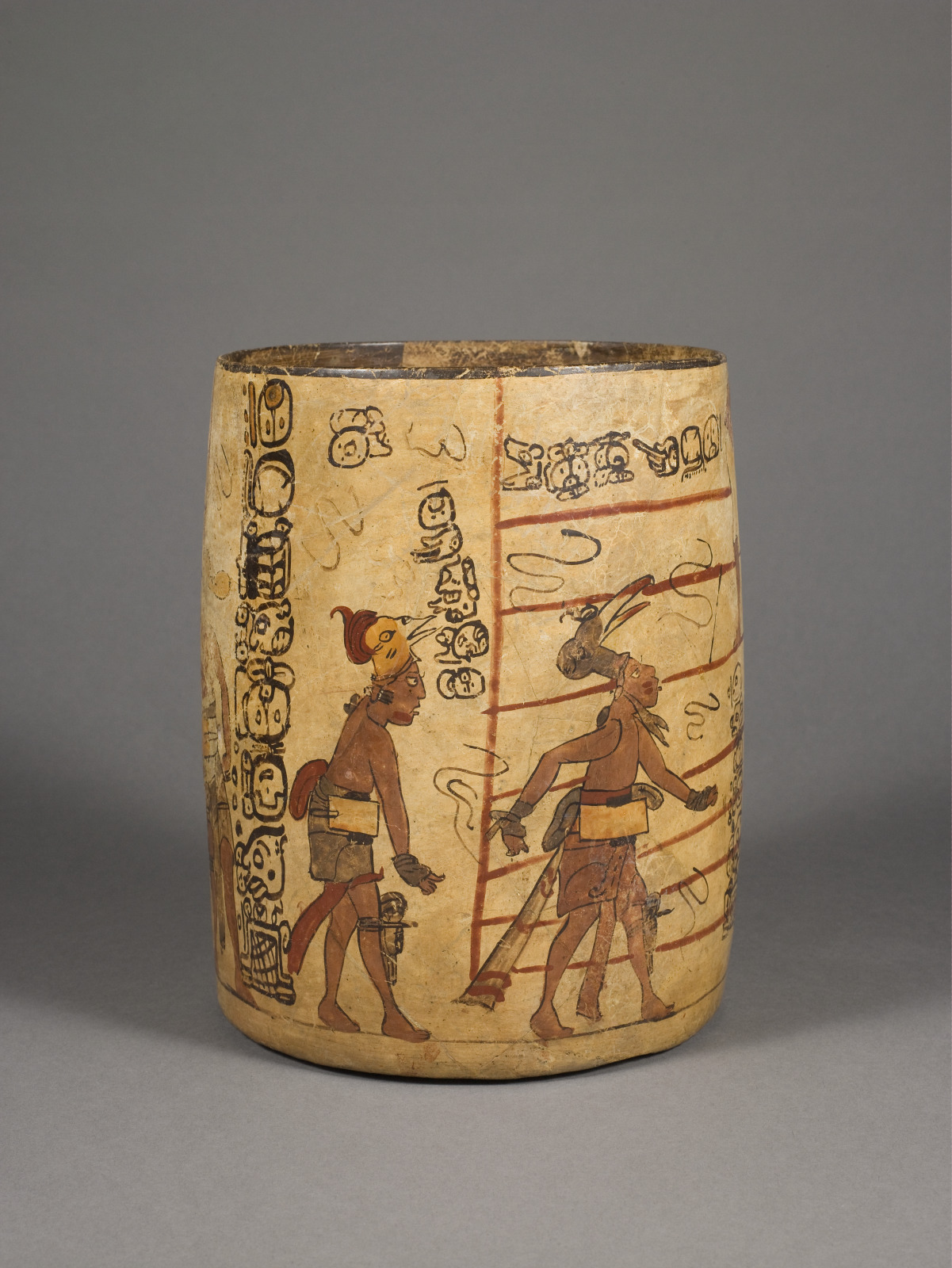
Ballgame Vessel, c.700–800; Maya, Guatemala, Late Classic period; ceramic with slip; 9 1/16 x 6 7/8 inches; Saint Louis Art Museum, Gift of Morton D. May 216:1979
-
View Additional Scenes
![2161979dig_3_3bg2]()
Ballgame Vessel, c.700–800; Maya, Guatemala, Late Classic period, 600–909; ceramic with slip; 9 1/16 x 6 7/8 inches; Saint Louis Art Museum, Gift of Morton D. May 216:1979
![2161979dig_3_3bg3]()
Ballgame Vessel, c.700–800; Maya, Guatemala, Late Classic period, 600–909; ceramic with slip; 9 1/16 x 6 7/8 inches; Saint Louis Art Museum, Gift of Morton D. May 216:1979
![2161979dig_3_3bg4]()
Ballgame Vessel, c.700–800; Maya, Guatemala, Late Classic period, 600–909; ceramic with slip; 9 1/16 x 6 7/8 inches; Saint Louis Art Museum, Gift of Morton D. May 216:1979
The large black circle and horizontal red stripes on this cylindrical vessel represent a hard rubber ball bouncing down the steps of a Maya ball court. The ballplayers gape at the ball while various spectators gesture towards it, avidly watch, gossip, or play instruments in the stands. This sense of dynamic spectacle is unusual in representations of the ballgame. The ballgame story on this vessel unfolds in sections as the viewer examines the scene, guided by the diagonal placement of the figures. The hieroglyphs seen throughout are loosely rendered, as though the scribe emulated the speed of the game.
July 21, 2024
Saint Louis in 1846
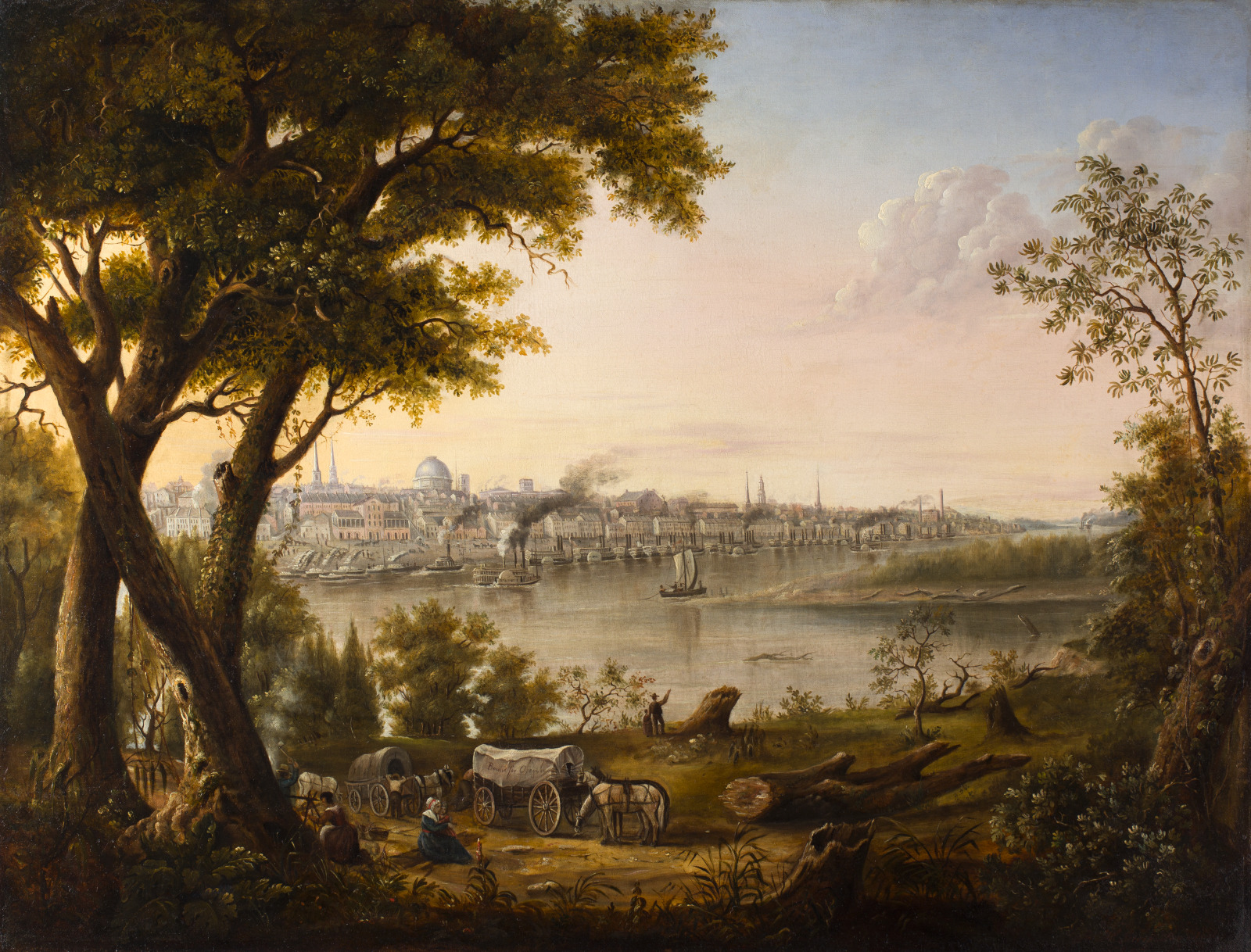
Henry Lewis, American (born England), 1819–1904; Saint Louis in 1846, 1846; oil on canvas; 32 1/4 x 42 1/4 inches; Saint Louis Art Museum, Eliza McMillan Trust 170:1955
-
See Detail
![1701955_o2.detail]()
Henry Lewis, American (born England), 1819–1904; Saint Louis in 1846 (detail), 1846; oil on canvas; 32 1/4 × 42 1/4 inches; Saint Louis Art Museum, Eliza McMillan Trust 170:1955
Steamboats crowd a riverfront lined with warehouses, evidence of the bustling economy in St. Louis during the 19th century. Across the river, a wagon train has set up camp. “Bound for Oregon” is written on one of the wagons.
Henry Lewis came to St. Louis in 1836 to create scenery for the St. Louis Theatre. During his stay, he made several sketching trips along the Mississippi River. In 1846, Lewis likely sent this painting to New York City for exhibition. He wrote, “This view is taken from the Illinois shore, and you may rely on it being a correct one of our City as I took great pains in making the sketches and also took advantage of the Daguerreotype [an early form of photography]…although this city now contains a population of near forty thousand souls still the opposite shore remains in all its natural wildness.”
July 20, 2024
Slightly Off Keel #60
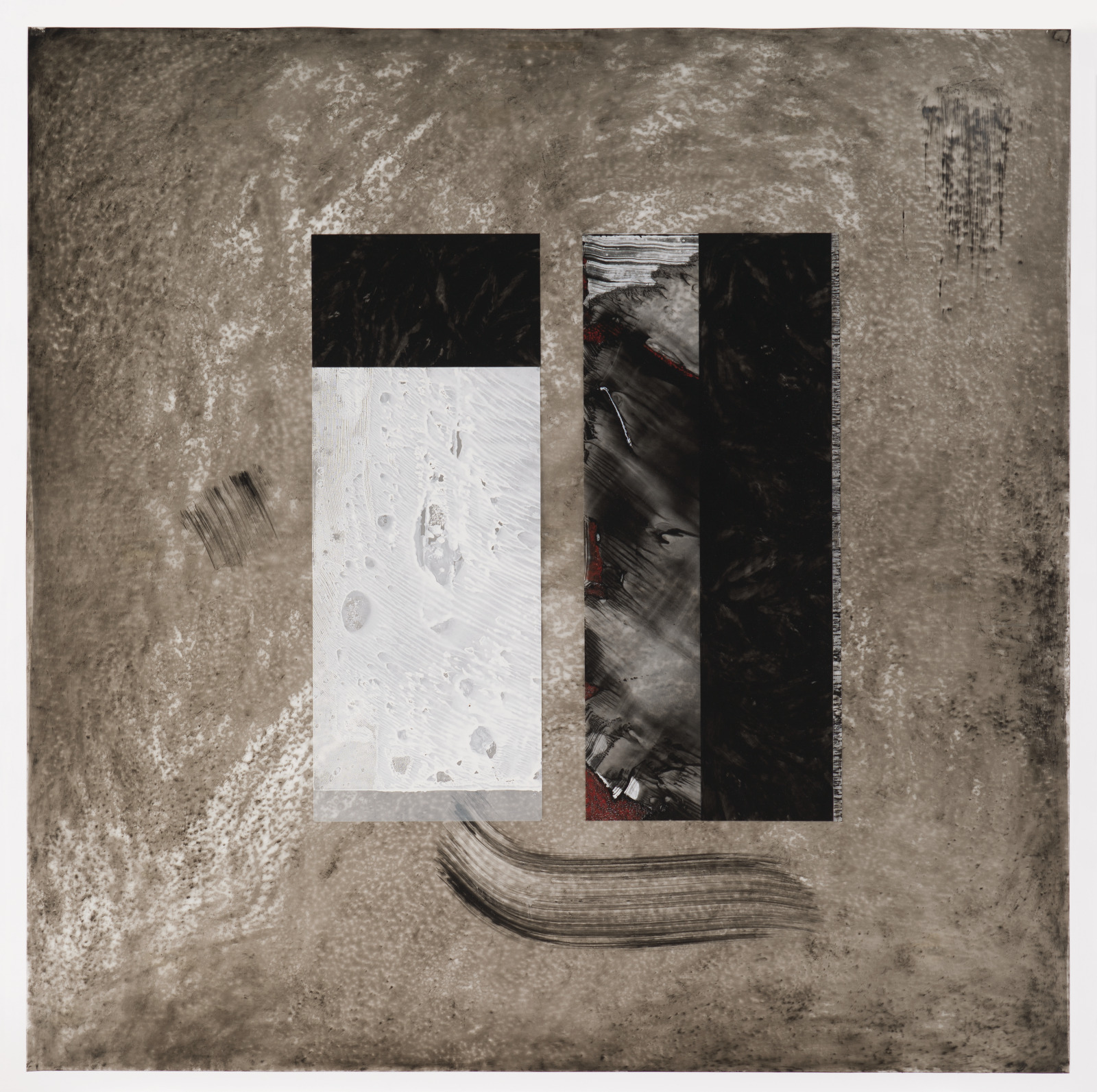
Nanette Carter, American, born 1954; Slightly Off Keel #60, 1999; oil on Mylar; 35 7/8 x 36 1/16 inches; Saint Louis Art Museum, The Thelma and Bert Ollie Memorial Collection, Gift of Ronald and Monique Ollie 124:2017; © Nanette Carter
Slightly Off Keel #60—a title referring to a sailboat’s delicate balance as it speeds through water—consists of multiple mark-making types, both structured and loose. Moving away from canvas in the late 1990s (learn more), Nanette Carter adopted Mylar, a translucent polyester film, as her support of choice, which she admired for its potential to be used on both sides. The material is frosted on the surface, providing a satisfying tooth to hold oil paint, which she applies by brush or sometimes through printing (zoom in).
July 19, 2024
Organic Forms (Striding Man)

Rudolf Belling, German, 1886–1972; Organic Forms (Striding Man), 1921; bronze; 21 1/2 x 8 x 7 inches; Saint Louis Art Museum, Gift of Mr. and Mrs. Morton D. May 236:1959; © 2024 Artists Rights Society (ARS), New York / VG Bild-Kunst, Bonn
Rudolf Belling juxtaposes curved and angled forms to represent an abstract figure in motion. Spherical masses define the man’s head and shoulders while parallel projections suggest his ribcage. Belling explored the idea of making the human body resemble a mechanized figure. The smooth, metallic surface and streamlined forms of this striding robot reflect the preoccupation with the aesthetics of modern machines in interwar Germany.
July 18, 2024
Room
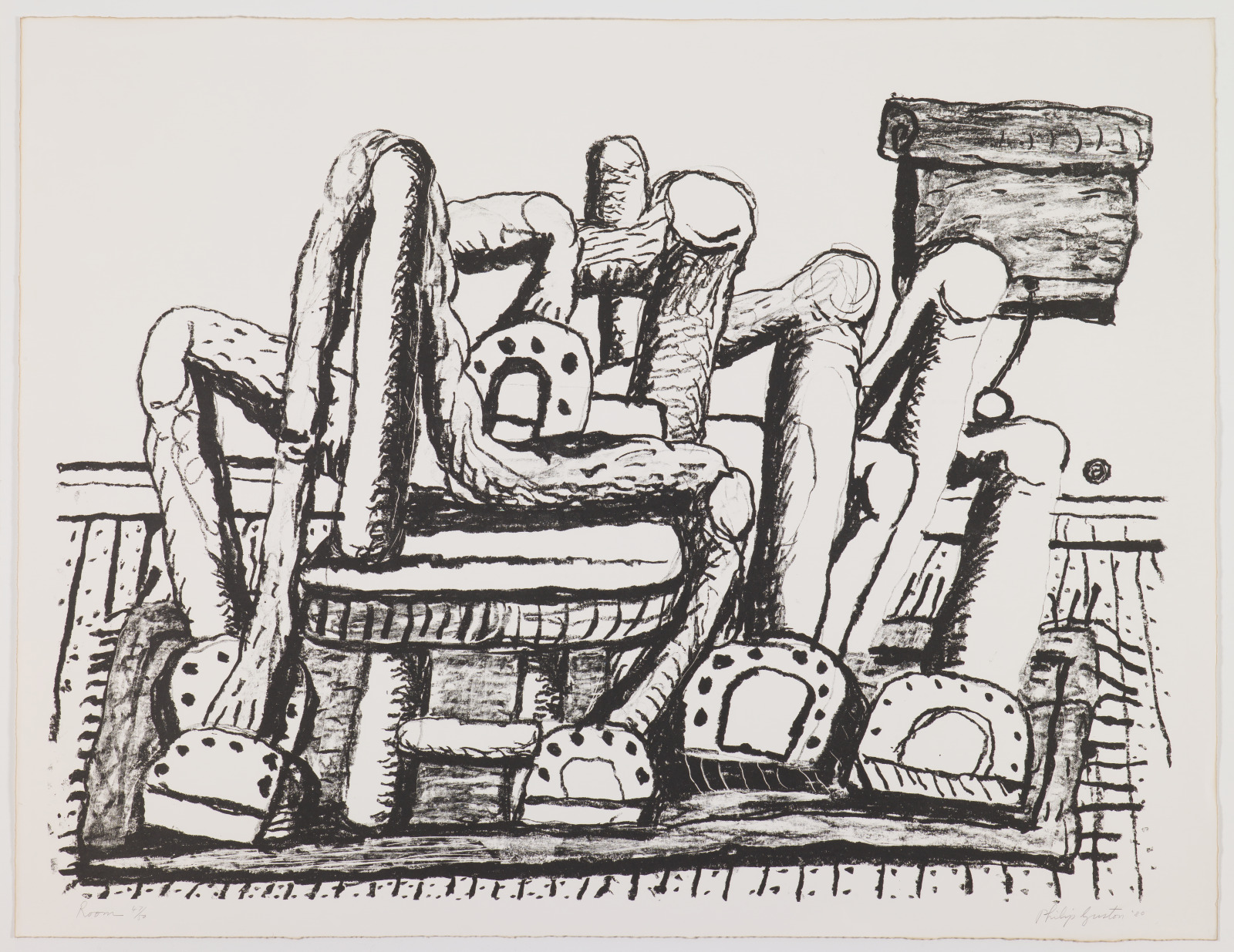
Philip Guston, American (born Canada), 1913–1980; printed and published by Gemini G.E.L. (Graphic Editions Limited), Los Angeles, California, founded 1966; Room, 1980; lithograph; sheet: 32 3/4 x 42 1/2 inches; Saint Louis Art Museum, Eliza McMillan Trust 53:1988; © 2024 Estate of Philip Guston
Draped upon the top of a stool is a tangle of long, skinny legs, each ending in an upturned shoe sole. These legs are a recurring motif of Philip Guston’s late work, and their unexpected scale and limpness turn a familiar bodily feature into something surprising and disorienting. Although depicted in a style recalling comic book imagery, the pile of detached limbs may indirectly suggest collective histories of violence. Guston located them within a confined domestic space where, in the background, a shade is pulled over a window, closing off any visual outlet.
July 17, 2024
Vineyards at Auvers
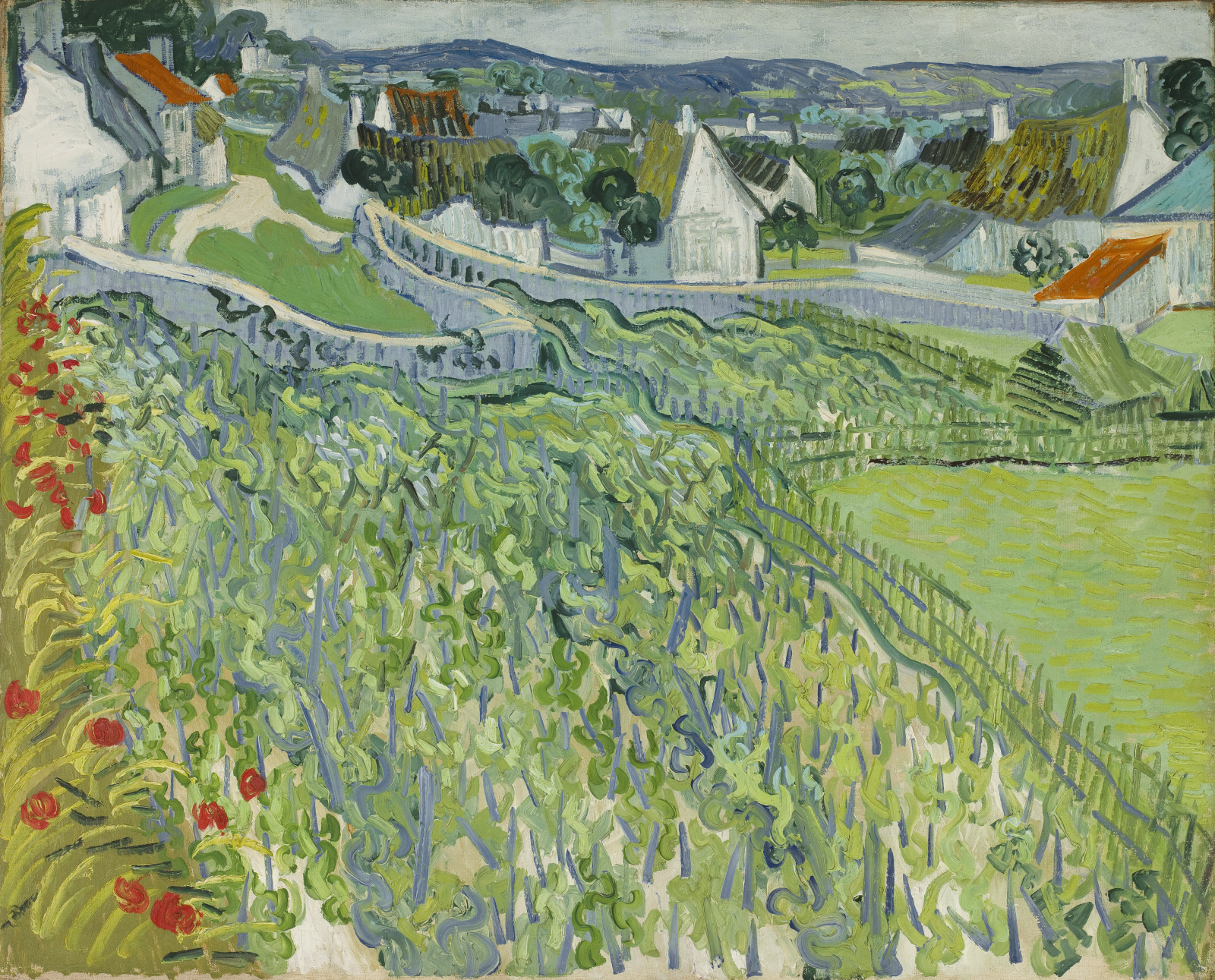
Vincent van Gogh, Dutch, 1853–1890; Vineyards at Auvers, June 1890; oil on canvas; 25 5/8 x 31 5/8 inches; Saint Louis Art Museum, Funds given by Mrs. Mark C. Steinberg 8:1953
This canvas focuses on the twisted forms of grapevines depicted with Vincent van Gogh’s characteristic, heavily loaded paintbrush. Red poppies animate the composition, as do the orange roofs in the distance. In May 1890, after spending two years in the south of France, van Gogh moved to the village of Auvers, just to the north of Paris. He spent two prolific months there, producing about 70 paintings before his death by suicide.
July 16, 2024
De Oude Kerk, Amsterdam II
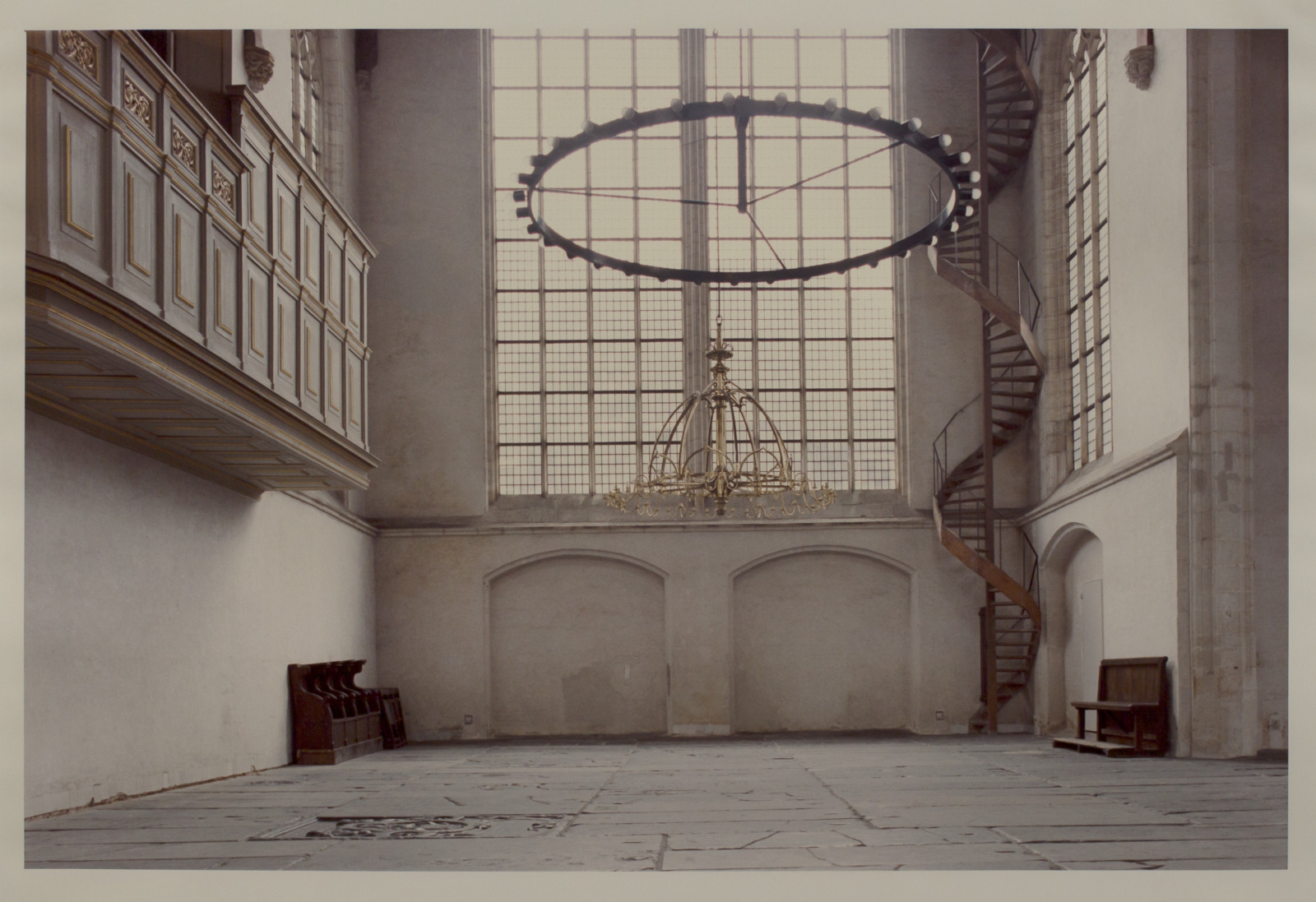
Candida Hofer, German, born 1944; De Oude Kerk, Amsterdam II, 1993; chromogenic print; image: 15 1/4 x 22 3/4 inches, sheet: 20 1/4 x 24 inches; Saint Louis Art Museum, Partial and promised gift of Betsy Millard, the Earl and Betsy Millard Collection 54:2003; © 2024 Artists Rights Society (ARS), New York / VG Bild-Kunst, Bonn
This light-filled interior was photographed in one of the oldest churches in Amsterdam, the Netherlands, begun in the early 13th century and expanded over time. Instead of attempting to take in the breadth of space in the main part of a church, Candida Höfer dwelled on the arrangements of a side chapel. The space is spare and peopled only by suggestion, with two benches placed against the wall, yet is full of the echoes of history. One can discern many layers of addition and alteration: gravestones on the floor; a uniquely shaped spiral staircase in the corner; and modern lighting fixture hanging next to an older chandelier. The niches on the far wall were stripped of sculptural ornamentation during the 16th-century transition of the sanctuary from a Catholic to a Calvinist church and now stand empty.
July 15, 2024
High Lama’s Summer Hat
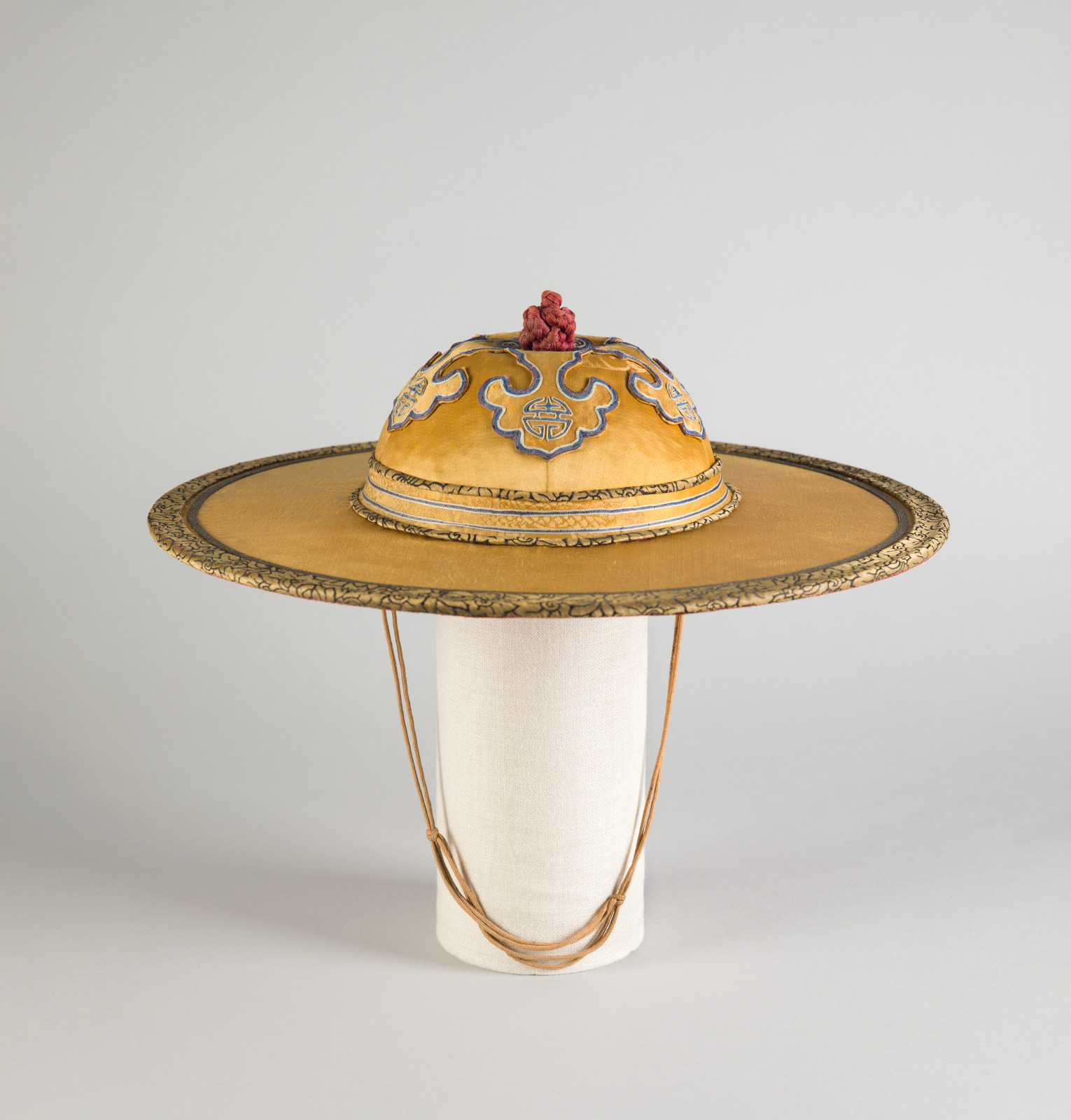
High Lama's Summer Hat, late 19th–early 20th century; Chinese, Qing dynasty, Guangxu period, or Xuantong period; silk satin damask with metallic silk braid and silk brocade over woven bamboo frame; 3 11/16 x 15 3/16 inches; Saint Louis Art Museum, Gift of Mr. and Mrs. F. Russell Fette in memory of Helen Campbell Fette 271:1986
This hat has a rounded crown and a wide flat brim. The interior is made of woven bamboo covered with bright yellow silk satin damask featuring roundels with five-clawed dragons. The top ends in a red silk knot above a border with stylized fungus (ruyi) forms. The hat’s brim is edged with a key-fret brocade and its underside is covered with red silk damask. Hats like this were made in China for use by visiting high-ranking Tibetan Buddhist monks known as lamas. The use of bright yellow silk and five-clawed dragons are strong indications that such hats were commissioned by the imperial court at Beijing, a city with a number of important Tibetan Buddhist temples and monasteries.
July 14, 2024
Billiken
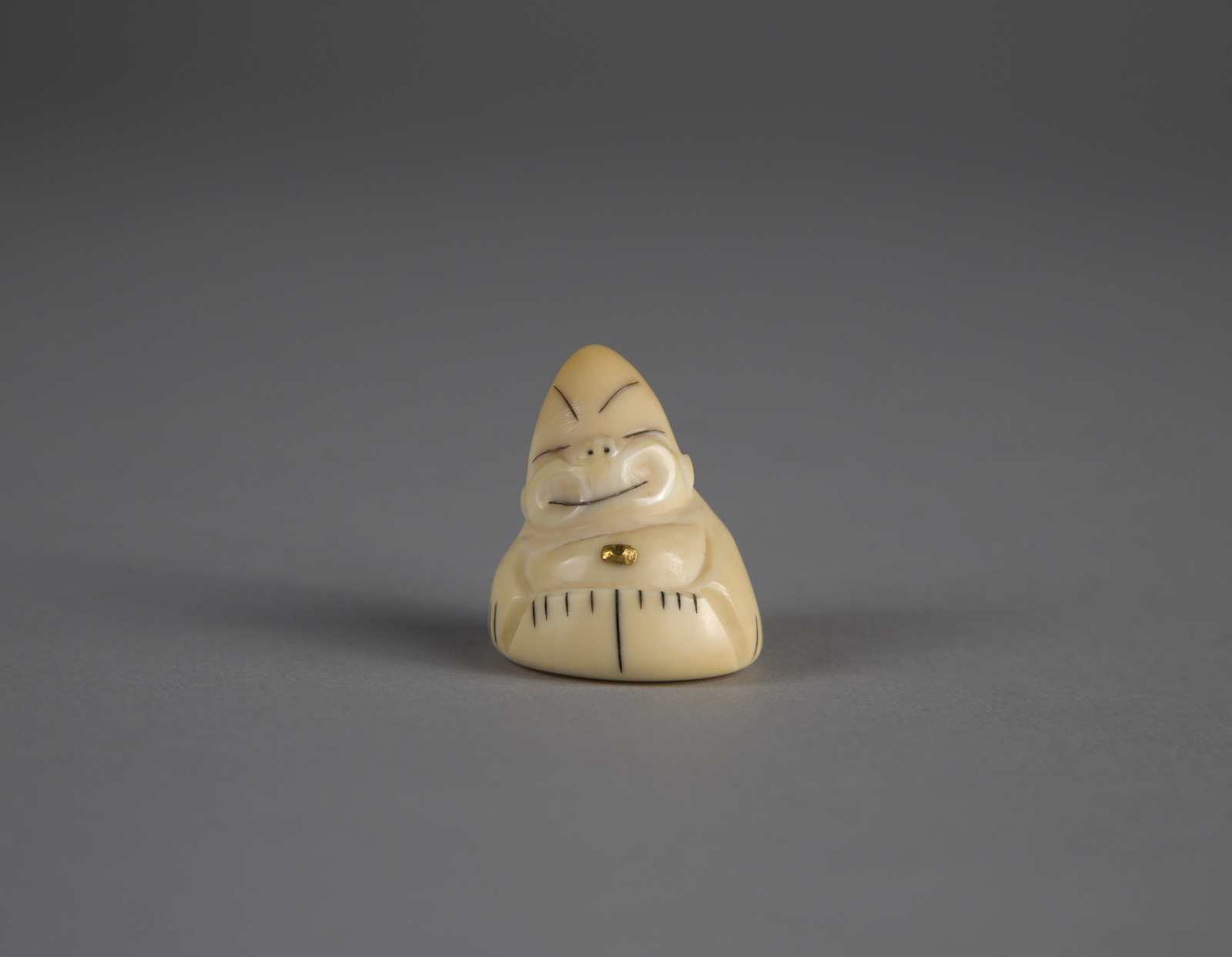
Iñupiaq artist; Billiken, mid- 20th century; Ivory, gold, and pigment; 1 1/4 x 1 1/8 x 1 1/8 inches; Saint Louis Art Museum, Gift of Marisa Longrais Human 243:2019
The rounded form, pointed head, and impish grin help identify this figure as a billiken. Developed by a Kansas City art teacher in 1908, the billiken character circulated widely in American popular culture. It inspired songs such as the “Billiken Rag” and became the mascot for sports teams including the athletics program of Saint Louis University. Through the 20th century, the billiken remained a mainstay in the repertoire of Alaska Native artists who created sculpture for sale to collectors and travelers. A gold nugget inlaid in the belly distinguishes this work.
July 13, 2024
Side Chair (MR 10)

designed by Ludwig Mies van der Rohe, German, 1886–1969; made by Berliner Metallgewerbe Joseph Muller, Berlin, Germany; Side Chair (MR 10), 1927; nickel-plated steel and cane; 31 x 18 1/2 x 28 1/4 inches; Saint Louis Art Museum, Richard Brumbaugh Trust in memory of Richard Irving Brumbaugh and in honor of Grace Lischer Brumbaugh 174:1992
Only steel has the strength to support the weight of a person on two slender curving tubes. Inspired by tubular steel’s physical properties, Ludwig Mies van der Rohe replaced standard chair legs with a counterbalanced design called a cantilever to make the chair seem to float. In 1927, he debuted the MR 10 at the Weissenhof Estate, a neighborhood of model homes designed by leading modernist architects using prefabricated components. The chair was so popular that it is still produced today.
July 12, 2024
Double Exposure

James Little, American, born 1952; Double Exposure, 2008; oil and wax on canvas; 39 x 50 inches; Saint Louis Art Museum, The Thelma and Bert Ollie Memorial Collection, Gift of Ronald and Monique Ollie 190:2017; © June Kelly Gallery / James Little
Brightly colored triangles transform into vertical stripes moving from left to right. James Little’s variation of color, shape, and interval width within a repeating pattern create a dynamic composition. Little uses historic painting materials to create abstract works like Double Exposure. According to the artist, “I’m not interested in illusionism, I’m interested in flatness and materials that keep illusions at bay.” Little painted with a mixture of heated beeswax and raw pigments, developing a version of the encaustic painting technique first used by ancient Egyptians and Greeks.
July 10, 2024
New Continent

Louise Nevelson, American (born Ukraine), 1899–1988; New Continent, 1962; painted wood; 77 3/4 x 121 3/4 x 10 1/8 inches; Saint Louis Art Museum, Museum Purchase, by exchange and funds given by Martha I. Love, Mr. and Mrs. George S. Rosborough Jr., the Weil Charitable Foundation, Henry B. Pflager, Jane and Warren Shapleigh, The Lea-Thi-Ta Study Group, and Nancy W. Gilmartin 14:1967; © 2024 Estate of Louise Nevelson / Artists Rights Society (ARS), New York
Louise Nevelson assembled found architectural elements such as chair legs, balusters, and moldings within 36 wooden compartments, then painted the construction white. She juxtaposed the geometric grid of the boxes with a lyrical arrangement of curves, textures, light, and shadow. The urban environment of Manhattan provided the artist with the discarded objects that were the building blocks of her sculptural practice. She once said, “When I look at the city from my point of view, I see New York City as a great big sculpture.”
July 9, 2024
Altar Vase with Animal-Head Loop Handles and Quatrefoil Rings

Altar Vase with Animal-Head Loop Handles and Quatrefoil Rings, 1494; Chinese, Ming dynasty, Hongzhi period; bronze; 22 x 14 inches; Saint Louis Art Museum, Gift of Robert E. Kresko 16:2005
The high foot, ring handles, and elaborate animal heads would have made this vase appropriate only for altar tables of shrines and temples. The base of this imposing vessel is cast with the inscription: “Made on an auspicious day in the third month of the seventh year of the Hongzhi reign period.” The vase was probably from a set of altar implements that consisted of candle holders, an incense burner, and a pair of flower vases all with similar decoration and general design.
July 8, 2024
View of the St. Anne’s River

Robert Seldon Duncanson, American, 1821–1872; View of the St. Anne's River, 1870; oil on canvas; 21 1/4 x 40 1/8 inches; Saint Louis Art Museum, Museum Purchase 163:1966
Pervasive golden light, reflected in the smooth surface of the river, establishes the tranquil mood of this landscape. A small herd of cattle wades in the shallow water, undisturbed by the fishermen in the distance. Robert Duncanson created this painting from sketches he had made on a trip to Canada in 1869. Duncanson was one of the first African American painters to experience success in the United States. He felt his paintings measured up to the work of European artists, commenting that “of all the landscapes I saw in Europe (and I saw thousands) I do not feel discouraged.”
July 7, 2024
German National Library, Frankfurt am Main IV
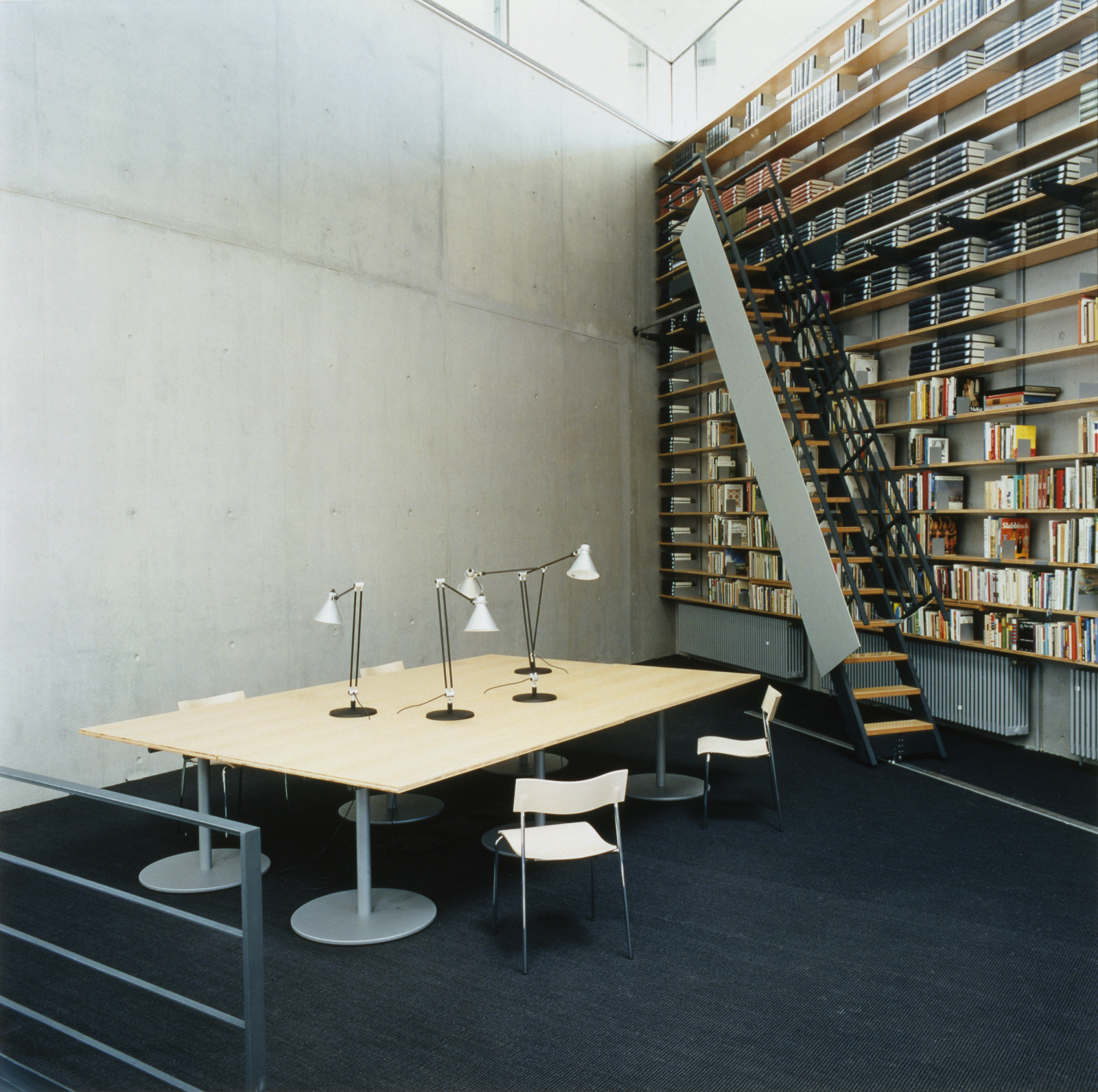
Candida Hofer, German, born 1944; German National Library, Frankfurt am Main IV, 1997; chromogenic print; image: 23 13/16 x 23 5/8 inches, sheet: 33 9/16 x 33 9/16 inches; Saint Louis Art Museum, Funds given by the Honorable and Mrs. Thomas F. Eagleton 27:2000; © 2024 Artists Rights Society (ARS), New York / VG Bild-Kunst, Bonn
Sparse decoration and stark geometry characterize the architectural space in this image of a Frankfurt library study room. Devoid of human subjects, Candida Höfer’s photograph highlights the organizational logic of the room itself. Höfer’s photographs of libraries, museums, and universities contemplate the function of public spaces as well as the values and ideals that structure them. Höfer has stated, “These rooms are spaces that are open to everyone. They are spaces of meeting, communication, knowledge, relaxation, and recuperation…All rooms have a purpose.”
July 6, 2024
Seated Vajrasattva
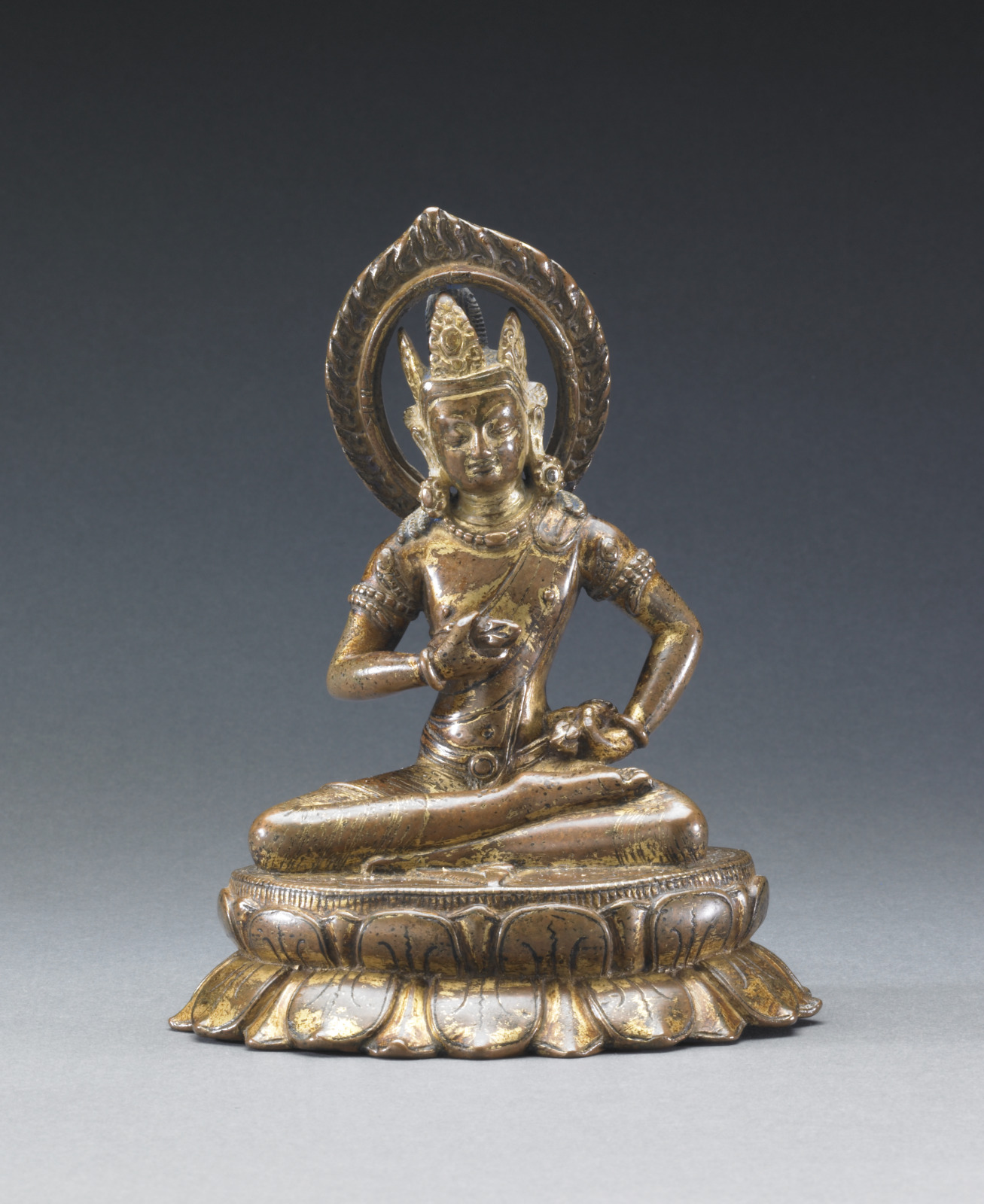
Seated Vajrasattva, 11th century; Nepalese, Transitional period; copper alloy with gilding; 6 1/4 x 5 x 3 7/16 inches; Saint Louis Art Museum, William K. Bixby Trust for Asian Art 25:1968
In Nepal, Vajrasattva represents the perfected Buddhist ritual practitioner. Before performing a ritual, priests and meditators establish within themselves the attitude of Vajrasattva in order to ensure that the subsequent ritual will be performed properly and yield the desired results. Although Vajrasattva is ornamented, his jewels do not indicate that he is a bodhisattva. Rather, his adornments show that he is a sambhogakaya Buddha who reveals the splendor and glory of enlightenment. In his left hand, Vajrasattva holds a bell that symbolizes clear insight into the true nature of reality. Vajrasattva’s right hand bears a vajra that symbolizes the compassionate application of that insight to help other beings skillfully. In Mahayana Buddhism, it is only by combining intellectual insight with compassionate activity that true enlightenment is achieved.
July 5, 2024
Hollyhocks
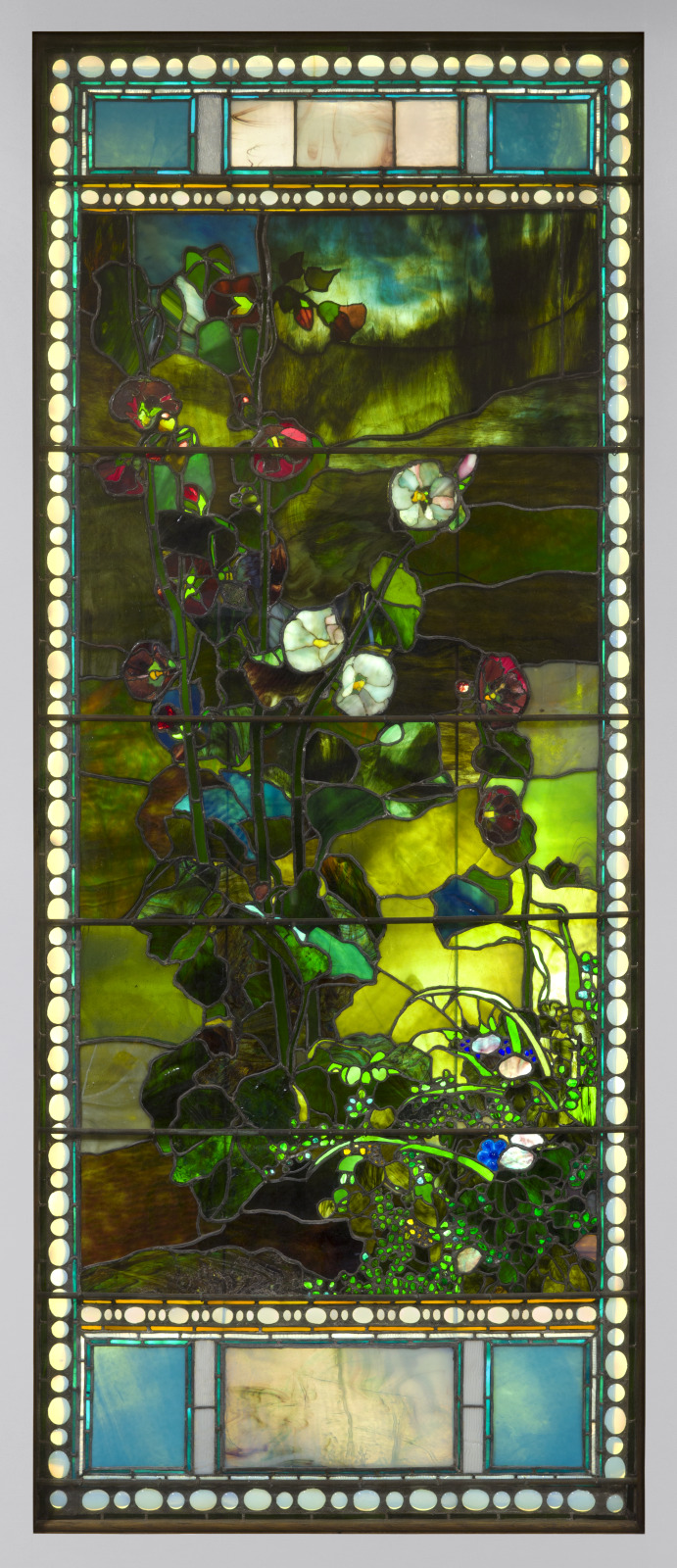
John La Farge, American, 1835–1910; Hollyhocks, window from the Frederick Lothrop Ames House, Boston, Massachusetts, 1882; leaded glass; 87 1/4 x 37 1/4 x 2 3/4 inches; Saint Louis Art Museum, Funds given by the Decorative Arts Society in honor of the Twentieth Anniversary of the Friends of the Saint Louis Art Museum 31:1972.1
-
View Other Panel
![31:1972.2]()
John La Farge, American, 1835–1910; Flowering Cherry Tree and Peony, window from the Frederick Lothrop Ames House, Boston, Massachusetts, 1882; leaded glass; 87 1/4 x 37 1/4 x 2 3/4 inches; Saint Louis Art Museum, Funds given by the Decorative Arts Society in honor of the Twentieth Anniversary of the Friends of the Saint Louis Art Museum 31:1972.2
This window is one of a pair created for the redesign of the Frederick Lothrop Ames house in Boston. The windows contain John La Farge’s revolutionary use of opalescent glass, significant because of the effects this “glowing white glass” had on light, color, and depth. The asymmetrical compositions and ornate floral patterns seen in these windows were inspired by La Farge’s paintings and his enthusiasm for Japanese art.
La Farge was an important painter, muralist, and decorator who shifted his interests to the artistic possibilities of glass. His innovation lies in the way he exploited the characteristics of glass itself, manipulating, casting, and layering it to create myriad hues, textures, and depth, eliminating the traditional need for painted details.
July 4, 2024
Factory-Printed Chintz Appliqué Quilt

Cornelia Ann Burling, American, 1794–1882; Factory-Printed Chintz Applique Quilt, c.1816–17; cotton and printed dyes; 81 1/2 x 79 1/2 inches; Saint Louis Art Museum, Gift of Elliott and Mary Chubb 304:2021
From 1816 to 1817, New Yorker Cornelia Ann Burling sewed these flowers, clipped from British factory-printed chintz, on the white ground of this large, carefully-made quilt. Called chintz appliqué or broderie perse, they were highly fashionable in the United States during the early 19th-century, surpassed in popularity by patchwork quilts only in the 1840s.
These quilts’ colorful flora and birds and contrasting light background recall Indian chintz furnishing textiles, particularly palampores, or large bedcovers or wall hangings, often with enclosed borders and flowering tree or central medallion motifs.
July 3, 2024
The Plaza after the Rain

Paul Cornoyer, American, 1864–1923; The Plaza after the Rain, 1908; oil on canvas; 59 1/4 x 59 1/4 inches; Saint Louis Art Museum, Museum Purchase 65:1910
Tones of brown and gray dominate this view of New York on a rainy day. Although there is a plaza of the same name in Brooklyn, this scene shows the Grand Army Plaza in Manhattan. To the right lies the southeast corner of Central Park. Visible between the trees, a shimmer of bronze and gold indicates the presence of Augustus Saint-Gaudens’s statue of Civil War general William Tecumseh Sherman.
July 2, 2024
Portrait of a Musician

Girolamo Mazzola Bedoli, Italian, c.1505–1569/70; Portrait of a Musician, c.1540; oil on panel; 31 5/8 x 23 5/8 inches; Saint Louis Art Museum, Museum Purchase 30:1922
The subject’s moody expression and delicate hands draw viewers into this portrait. Although the identity of this figure is unknown, his occupation is revealed by the instrument he rests on and the pick he holds in his right hand. Music was an important part of courtly life in 16th-century Parma, Italy, the city in which this portrait was probably painted. The musician wears a gold chain hidden by the square neckline of his sleeveless garment. This heavy gold jewelry may have intentionally been placed inside so as not to interfere with his ability to play the instrument. The artist has posed his figure in front of a wall covered in cut velvet; color variations in the background capture the effect of light upon the fabric’s nap.
July 1, 2024
Manchu Woman’s Informal Robe (chenyi) with Design of Roundels Containing Orchid, Chrysanthemum, and Begonia Sprays

Manchu Woman's Informal Robe (chenyi) with Design of Roundels Containing Orchid, Chrysanthemum, and Begonia Sprays, late 19th–early 20th century; Chinese, Qing dynasty, Guangxu period; silk satin damask with polychrome silk embroidery; 53 7/8 x 47 1/2 inches; Saint Louis Art Museum, Gift of Mr. and Mrs. F. Russell Fette in memory of Helen Campbell Fette 263:1986
The principal material for this robe is a pale lavender silk satin damask with roundels containing orchids, chrysanthemums, and other flowers. The wide borders accentuating the sleeves, neck, side, and hem are black silk satin embroidered with floral and butterfly motifs using silk floss of many colors. Each sleeve is also embellished by an additional decorative band made from white silk satin and embroidered with multicolored silk floss. The narrower bands of blue silk edging are also decorated with floral and butterfly motifs. Informal robes of this kind were worn at the late Qing court by imperial concubines and senior ladies-in-waiting.
Today’s Object of the Day is one of many objects featured in Chinese Silk Textiles of the Ming and Qing Dynasties, located in the Carolyn C. and William A. McDonnell Gallery 100.
June 30, 2024
Gateway, Tangier

Henry Ossawa Tanner, American, 1859–1937; Gateway, Tangier, c.1912; oil on canvas; 18 7/16 x 15 5/16 inches; Saint Louis Art Museum, Friends Fund, Museum Minority Artists Purchase Fund, and the Judy Glick Fund 33:2005
The blue tones and loose brushwork of this painting typify Henry Ossawa Tanner’s most successful experiments with color composition and application of paint. Tanner, an African American artist, traveled to the Mediterranean region four times, and these trips had a profound effect on his style and subject matter. During a 1912 trip to Tangier, Morocco, Tanner became fascinated with this gateway—the entrance to the casbah, or the historic city area and fortress—and he proceeded to paint the gateway from many perspectives and vantage points.
June 29, 2024
Sunburst in the Riesengebirge

Caspar David Friedrich, German, 1774–1840; Sunburst in the Riesengebirge, 1835; oil on canvas; 10 x 12 1/2 inches; Saint Louis Art Museum, Friends Fund, Museum Purchase, Director's Discretionary Fund, the Ann Goddard Trust, and the Third Wednesday Group 1:2019
Sunlight bursts over distant hills as a blue sky dispels gathering storm clouds. The hut at top left indicates a human presence within this vast landscape. Caspar David Friedrich based this scene on the Riesengebirge, a mountain range on the present-day border of the Czech Republic and Poland. Friedrich hiked in this area in 1810, nearly 25 years before he painted this work. Elements of the landscape held strong symbolism for Friedrich and his audience. The fir tree represented life and vitality; the dead tree, mortality; and the illuminated hills, an aspiration toward the promise of eternity.
June 28, 2024
Portrait of Mme Vernot with Aurelie
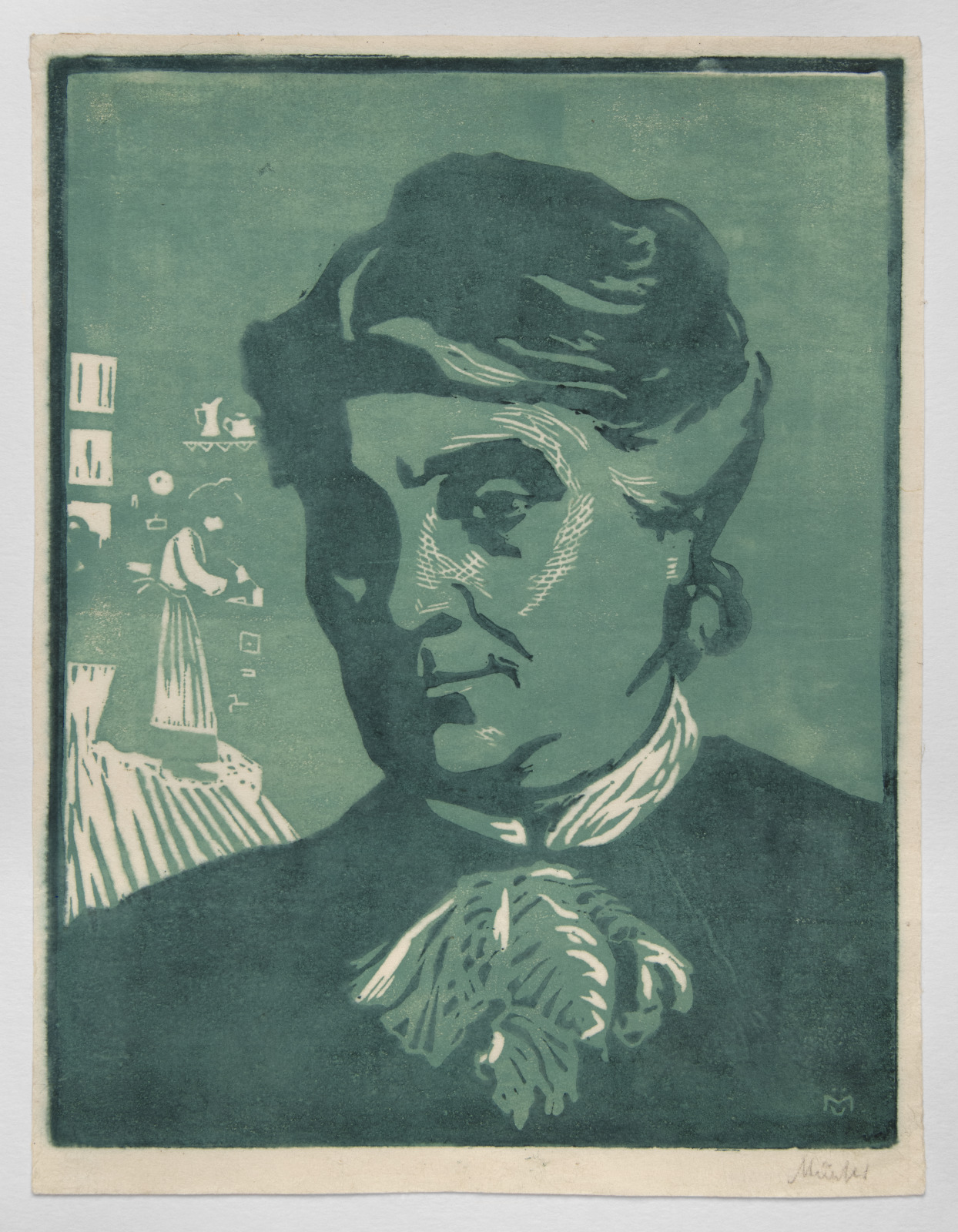
Gabriele Münter, German, 1877–1962; Portrait of Mme Vernot with Aurelie, 1906; two-color linocut; block: 8 15/16 x 7 inches, sheet: 9 1/2 x 7 3/8 inches; Saint Louis Art Museum, Bequest of Richard Brumbaugh 138:1989
Gabriele Münter portrayed her friend and neighbor Madame Vernot in strong outlines that strike a balance between realism and abstraction. Münter carved the portrait from one linoleum block, and the Vernots’ kitchen and their maid Aurelie on a second one. The background was printed in a lighter color over the portrait. The two registers weave together, embedding Madame Vernot in her domestic setting. The muted green tones of this work reflect Münter’s experimentation with color printing during her yearlong stay outside of Paris.
June 27, 2024
Perseus Rescuing Andromeda

Cavaliere D'Arpino (Giuseppe Cesari), Italian, 1568–1640; Perseus Rescuing Andromeda, c.1593–94; oil on lapis lazuli; 7 15/16 x 6 1/8 x 1/4 inches; Saint Louis Art Museum, Friends Fund and funds given by Mr. and Mrs. Christian B. Peper, Museum Purchase, Phoebe and Mark Weil, the Kate Stamper Wilhite Charitable Foundation, Mr. and Mrs. Kenneth F. Teasdale, the Fox Family Foundation, the John M. Olin Charitable Trust, the Scherck Charitable Foundation, the McMillan-Avery Fund of the Saint Louis Community Foundation, the Martha Love Symington Foundation, the John R. Goodall Charitable Trust, Mr. and Mrs. J. Patrick Mulcahy, Mrs. James Lee Johnson Jr., Mr. and Mrs. Charles F. Knight, Mr. and Mrs. Thomas Latzer, Mrs. Janet M. Weakley in honor of James D. Burke, Mrs. Ellen Langsdorf, Mr. and Mrs. William H. T. Bush, the Longmire Fund of the St. Louis Community Foundation, Eleanor C. Johnson, Alice S. Gerdine, Mr. and Mrs. Michael Cramer, BSI Constructors, Inc., David R. Cole in memory of Opal Runzi, The G. A. Jr. and Kathryn M. Buder Charitable Foundation, Dr. and Mrs. William H. Danforth, Charles and Patricia Marshall, The Mungenast Foundation, Inc., Mariko A. Nutt, Robert Brookings Smith, The Sidener Foundation, an anonymous donor, Mr. and Mrs. William F. Schierholz, Mr. and Mrs. William C. Lortz, Sewell A. McMillan, Edith B. Schiele; Barbara Wohltman, Mr. and Mrs. Fielding Lewis Holmes, and Ruth Nelson Kraft in honor of James D. Burke; and donors to the 1999 Art Enrichment Fund 1:2000
The intense blue of this unpainted lapis lazuli stone represents sky and water. Cavaliere D’Arpino created this work at a time when artists were beginning to use colored stones as painting surfaces. In this scene, the ancient Greek hero Perseus rescues Andromeda, a captivating Ethiopian princess who had been left by her father as an offering to appease an evil sea monster. Here, Perseus, motivated by his love for Andromeda, prepares to plunge his sword into the monster to save her.
In the earliest versions of the story, Andromeda’s appearance is described as beautiful. Some accounts differed in their description of her skin tone. A few 16th- and 17th-century European artists represented the princess as a dark-skinned woman; Cavaliere d’Arpino adhered to the more widely followed western European tradition that equated beauty with whiteness.
June 26, 2024
Grasshopper Floor Lamp
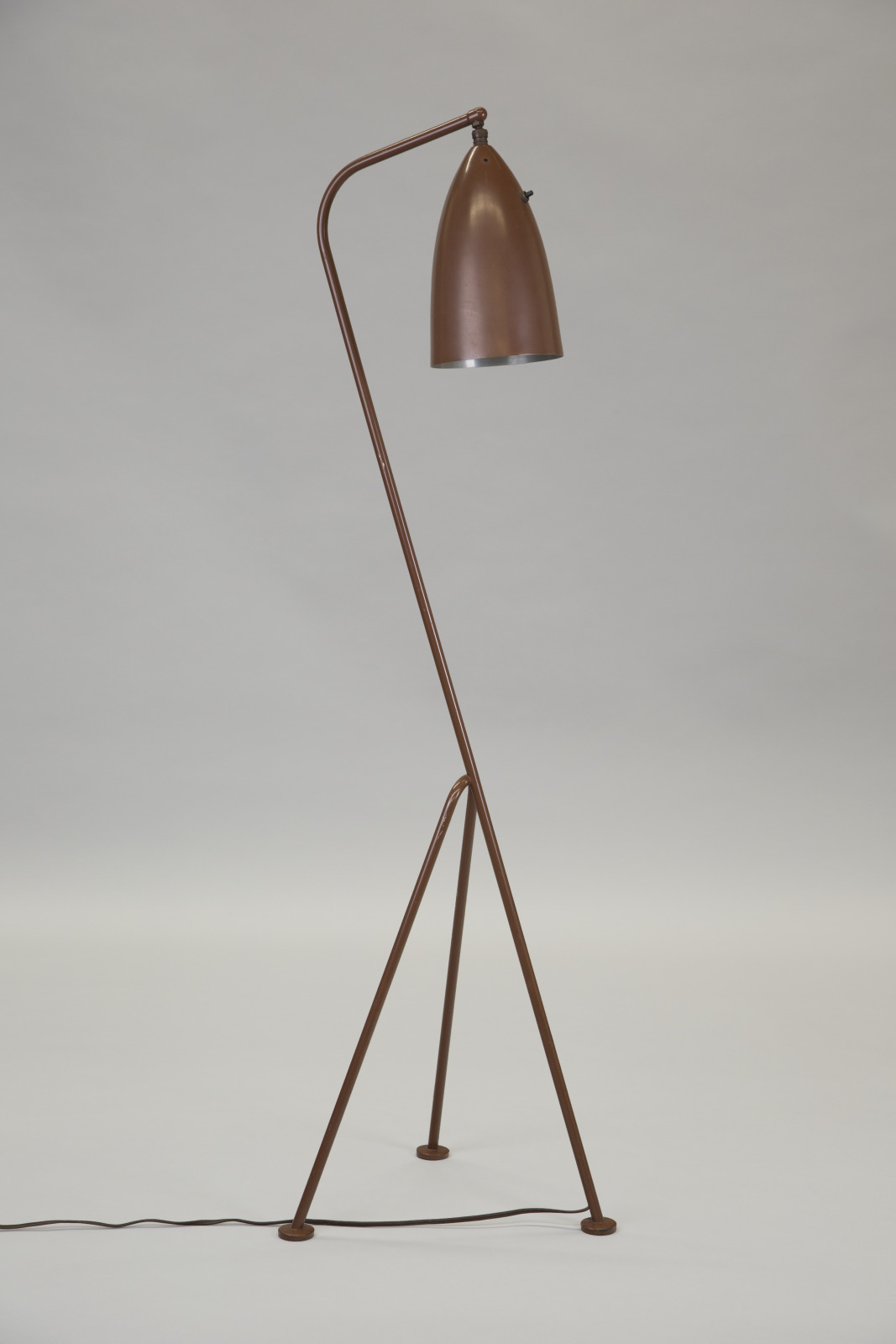
designed by Greta Magnusson Grossman, American (born Sweden), 1906–1999; made by Ralph O. Smith Manufacturing Company, Burbank, California, active c.1949–1954; Grasshopper Floor Lamp, 1947–48; enameled steel, enameled aluminum, brass; 50 1/4 x 15 x 15 inches; Saint Louis Art Museum, Funds given by the Ruth Kelso Renfrow Art Club 80:2019
The imaginative assembly of simple materials—two lengths of tubular steel and a bullet-shaped shade—gives this floor lamp its distinctive, animated form. Designed by Greta Magnusson Grossman in 1947, the aptly titled Grasshopper Floor Lamp was featured in a number of the Swedish-born architect’s own residences. Perched high on Los Angeles hilltops, the open-plan houses outfitted with multi-functional furnishings epitomized the casual, indoor-outdoor ethos of California modern.
June 25, 2024
Galloping Horse

Edgar Degas, French, 1834–1917; Galloping Horse, c.1889–90; bronze; 12 1/4 x 18 1/4 x 8 inches; Saint Louis Art Museum, Museum Purchase 187:1946
Edgar Degas produced about fifteen sculptures of horses in which he aimed to capture the complexity of horses in motion. A regular visitor to the racetrack, he focused on elegant thoroughbreds rather than workhorses. This sculpture shows a running horse with head intently forward, tail raised, and front legs elevated; Degas succeeds in rendering the energy and tense musculature of the animal. Degas may have been influenced by Eadweard Muybridge’s sequential photographic studies of running horses, published in 1879.
June 23, 2024
Amphora with Herakles and Apollo
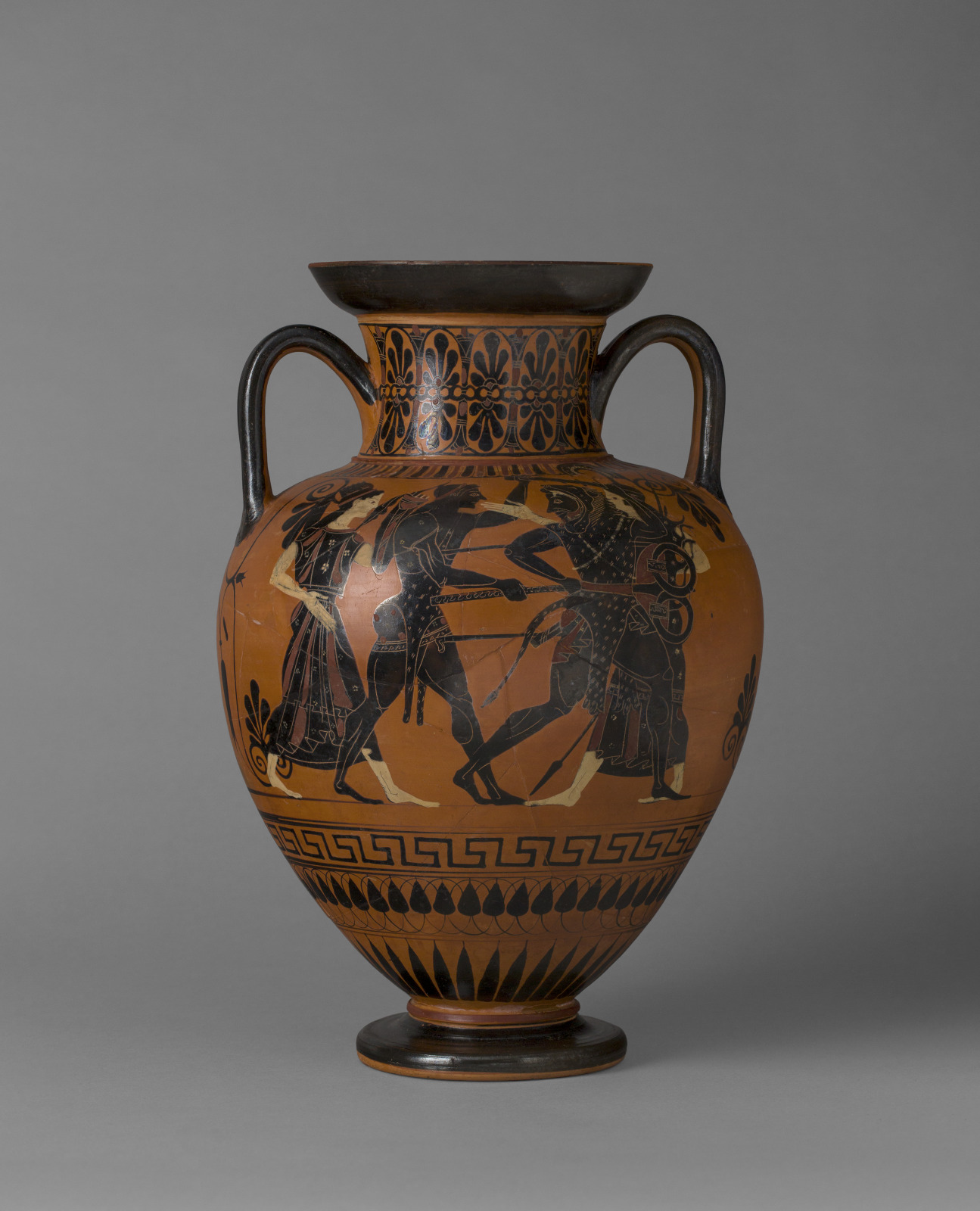
attributed to the Antimenes Painter, Attic Greek, active 530–510 BC; Amphora with Herakles and Apollo, 530–510 BC; black-figure ceramic; 15 1/4 x 10 1/2 inches; Saint Louis Art Museum, Museum Purchase 39:1921
The scene on this vase shows an argument between siblings: the mortal hero Herakles and his divine half-brother Apollo. Enraged that Apollo’s priestess at the sanctuary of Delphi would not provide him with an answer to his question, Herakles tries to steal the sacred tripod. Here we see the brothers struggling to hold on to the tripod. Each is flanked by a female supporter: at left Artemis accompanies her twin brother Apollo, and Athena, patron and protector of Herakles, is shown at right. These figures are identifiable by a series of attributes or accessories. Herakles has his wooden club and lion skin, Apollo has his quiver of arrows, and Athena has her helmet. White paint was used to distinguish the female characters.
June 22, 2024
Magnolia

Martin Johnson Heade, American, 1819–1904; Magnolia, c.1885–95; oil on canvas; 15 x 24 1/8 inches; Saint Louis Art Museum, Gift of Mr. and Mrs. John Alden Sears 172:1986
This voluptuous blossom, with its flawless petals and leaves, conveys the flower’s symbolic sensuality. In 1954, a curator described Martin Johnson Heade’s magnolia paintings as, “the fleshy whiteness of magnolia blossoms startlingly arrayed on sumptuous red velvet like odalisques [reclining nudes] on a couch.” Heade became fascinated with this flower in the 1880s when he moved to Florida. His magnolia paintings were sought after by wealthy tourists, who displayed them in their homes upon return.
June 21, 2024
Cabinet on Stand
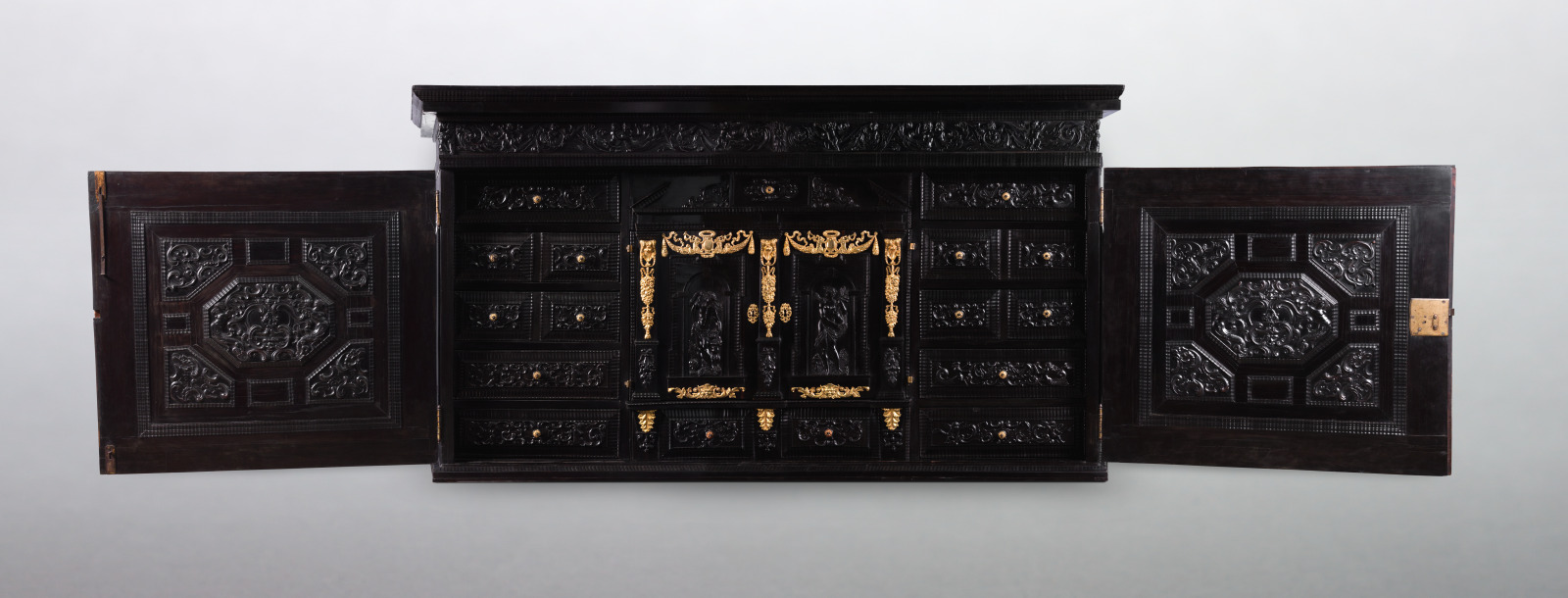
Cabinet on Stand, cabinet 1640–60, stand 1850–70; French; ebony, rosewood, walnut, ebonized pearwood, oak, and other woods, ivory and stained bone, gilded bronze or brass, and mirrored glass; 89 x 76 1/2 x 23 1/2 inches; Saint Louis Art Museum, Gift of an anonymous donor 1:1921a,b
Doors ornamented with carved figures, scrolls, and ripple moldings open to reveal a dramatic architectural scene in this cabinet’s interior. The ebony and ivory “flooring” and rosewood arches lead to distant landscapes of engraved and stained animal bone. Cabinets made with imported luxury materials are a Germanic invention of the mid-1500s. Craftsmen from Germany and the Netherlands who settled in Paris, France, in the early 1600s produced the first of these monumental cabinets. The drawers once stored jewelry, medals, and other precious objects, while the center stage was the ideal backdrop for displaying such possessions.
Framed by winged nudes, goats, and fruit and floral garlands, this cabinet’s doors depict mythological stories by the ancient Roman poet Ovid. On the left, the nymph Procris, accidentally shot by her lover, dies. At right, Callisto and other nymphs bathe before the goddess Diana. The carver probably used print engravings by Italian Renaissance artists to reimagine these scenes. Craftsmen from Germany and the Netherlands who settled in Paris, France, in the early 1600s made the first of these monumental display cabinets. The Parisian collector Maurice Chabrière-Arlès (1829–1897) may have restored the carved and painted wooden base in the late 1800s.
June 20, 2024
Jug with Design of Five Sphinxes and a Standing Figure

Jug with Design of Five Sphinxes and a Standing Figure, c.1150–1300; Persian, Iran; glazed fritware with underglaze painting and overglaze enamel; height: 5 3/8 inches, diameter of mouth: 3 1/4 inches, diameter of body: 5 1/2 inches, diameter of foot: 2 1/8 inches; Saint Louis Art Museum, William K. Bixby Trust for Asian Art 163:1952
Five sphinxes, followed by a man in a hat, advance across the surface of this small jug in patterns of blue, red, green, and gold. This is an example of Mina’i ware, a style of pottery from Kashan, Iran. Its vibrant effect was achieved by applying enameled paint over a light-colored background. The bright white glaze was developed by Persian artists to mimic Chinese porcelain, which was imported into present-day Iran as a luxury good. Kaolin clay, required to make porcelain, was not locally available in Persia during this period.
June 19, 2024
The Promenade with the Railroad Bridge, Argenteuil

Claude Monet, French, 1840–1926; The Promenade with the Railroad Bridge, Argenteuil, 1874; oil on canvas; 21 1/8 x 28 3/8 inches; Saint Louis Art Museum, Gift of Sydney M. Shoenberg Sr. 45:1973
This work was painted in the year of the first Impressionist exhibition and displays Claude Monet’s characteristically sketchy brushwork. The light gray color of the canvas ground remains visible across much of the picture surface. Monet represented his wife Camille and son Jean walking alongside the River Seine, while in the distance a train crosses the recently constructed railroad bridge. Monet lived in the Parisian suburb of Argenteuil from 1871 until 1878 and produced an extensive body of work there focusing on themes of leisure and industry.
June 18, 2024
Woman’s Tubular Skirt (kain sarung) with Design of Floral Bouquets, Birds, and Butterflies
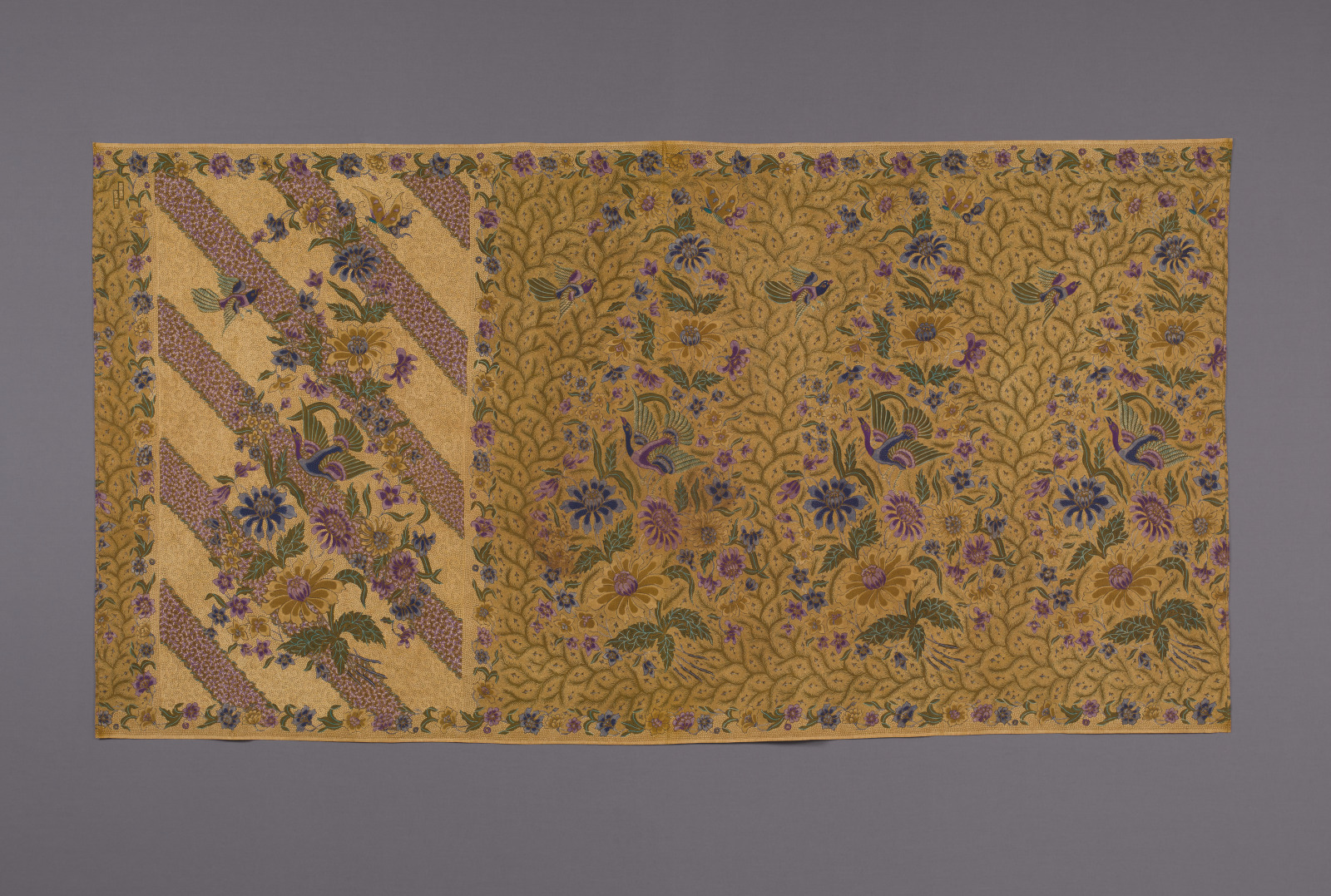
Woman's Tubular Skirt (kain sarung) with Design of Floral Bouquets, Birds, and Butterflies, 1950s; Javanese, Indonesia; plain-weave cotton with hand drawn wax-resist decoration (batik tulis) with synthetic dyes; 40 15/16 x 78 3/4 inches; Saint Louis Art Museum, Gift of the Heirs of Berenice C. Ballard, and William K. Bixby Trust for Asian Art, both by exchange 474:2018
This garment, created by a Peranakan (Javanese-Chinese) workshop on the north coast of Java, is a tubular skirt that has been unstitched and opened. Made from very high-quality cotton, it has extremely fine hand-drawn floral bouquets surrounded by duck-like birds. In the kepala (head) panel at the left, the bouquet is set against diagonal bands of alternating colors while the bouquets in the badan (body) section are positioned against a background of fine scrolling tendrils, tiny dots and leaves, and small swimming fish. The colors come from synthetic dyes. At the upper left of the cloth are adjoining cartouches that identify the workshop and its location.
June 17, 2024
Lake with Castle on a Hill
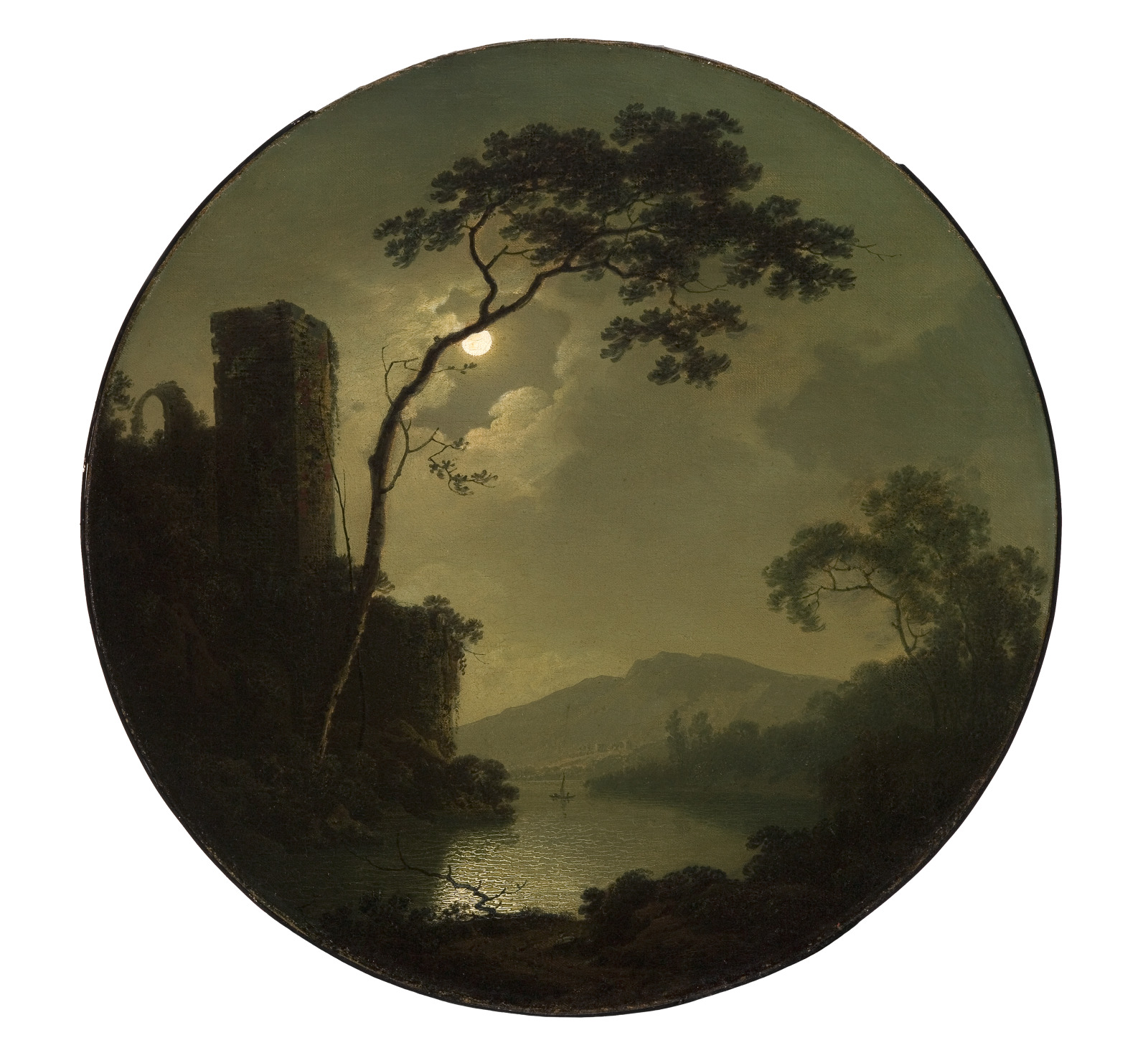
Joseph Wright of Derby, English, 1734–1797; Lake with Castle on a Hill, 1787; oil on canvas; diameter: 23 1/4 inches; Saint Louis Art Museum, Gift of Christian B. Peper 36:2006
The dark tree silhouetted against the moonlight enhances the romantic drama of this isolated castle tower overlooking a lake. Joseph Wright of Derby also contrasted the glittering water surface with the softer glow of the luminous clouds. Justly famous for his ability to depict light, the artist was adept at capturing a range of effects, from the glow surrounding a volcano fire to the reflection of a gas lamp or, as here, the natural radiance of the moon. This painting was inspired by the artist’s fond recollections of a trip to Naples, Italy, in 1774.
June 16, 2024
Staff Pair (edan ogboni)
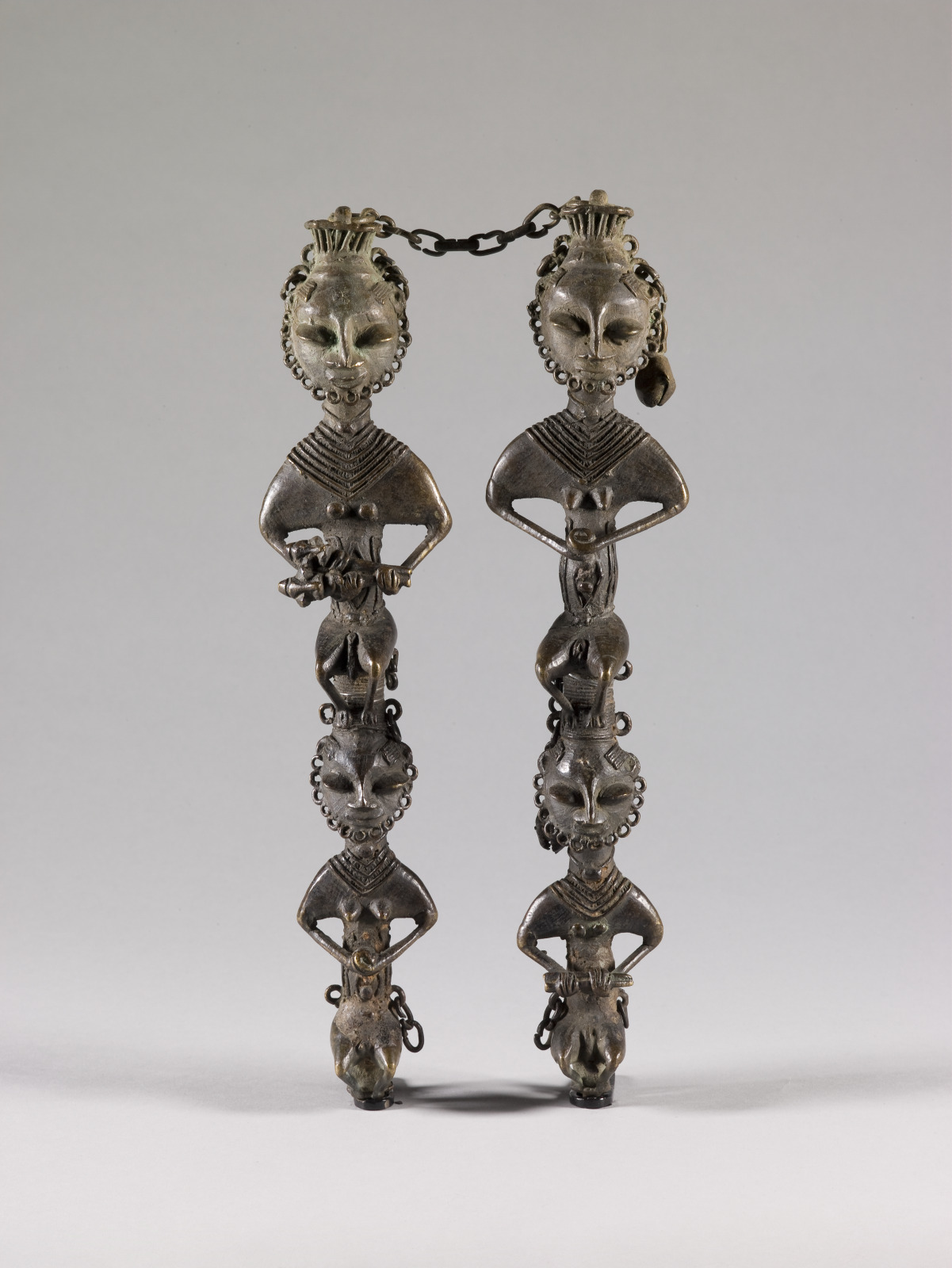
Yoruba artist, Nigeria; Staff Pair (edan ogboni), early 20th century; copper alloy, iron; 13 3/8 x 6 5/16 x 1 9/16 inches; Saint Louis Art Museum, Gift of Morton D. May 279:1972
Repetition of paired imagery, as seen on this pair of staffs, emphasizes the wise male and female elders who make up the Oshugbo society, also known as Ogboni. This group of initiated members serves political, judicial, and religious functions, including the appointment of kings. These alternating, distinctively gendered figures suggest the importance of cooperation between men and women to sustain society—a principal Oshugbo tenet. Each elder would receive an edan, or pair of staffs, such as this, upon initiation into the society. Here, the male figures hold figurative and non-figurative edan. The female figures pose using the society’s hand gesture, left fist over right with thumbs concealed. Although proceedings of the Oshugbo society are largely secret, members could wear or employ edan for symbolic purposes in public settings.
June 15, 2024
Entrance to Holyrood Chapel
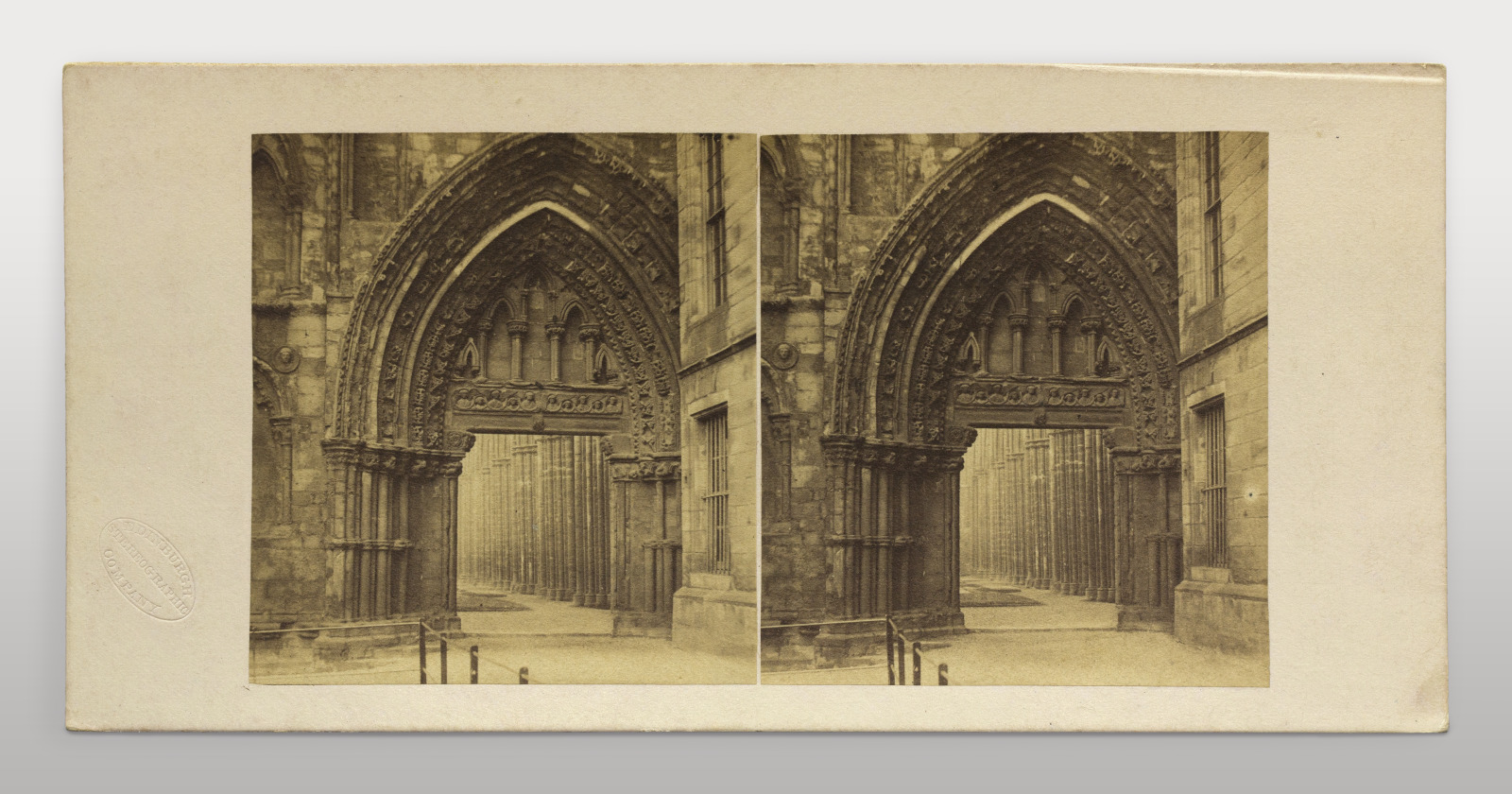
attributed to John Moffat, Scottish, 1819–1894; published by Edinburgh Stereographic Company, Edinburgh, Scotland and New York, New York; Entrance to Holyrood Chapel, 1858–59; stereograph; image: 2 5/8 x 5 inches, mount: 3 1/4 x 6 3/4 inches; Saint Louis Art Museum, Gift of David R. Hanlon 134:2020
This is an example of a stereograph—cards with two nearly identical images placed side by side that produce a three-dimensional effect when viewed through a handheld stereoscope. To create stereographs, photographers would take images of the same scene from two slightly different perspectives, the same distance with which human eyes are separated, thus approximating binocular vision. Stereographs came into European and American marketplaces in the mid-1850s and were very popular soon after. Their affordability helped to popularize photography by bringing it into the hands of the middle class. Picturesque topographical views, such as the ruins of ancient monuments and abbeys, were quite common.
June 14, 2024
Marie Cézanne, the Artist’s Sister (recto), The Artist’s Mother (verso)
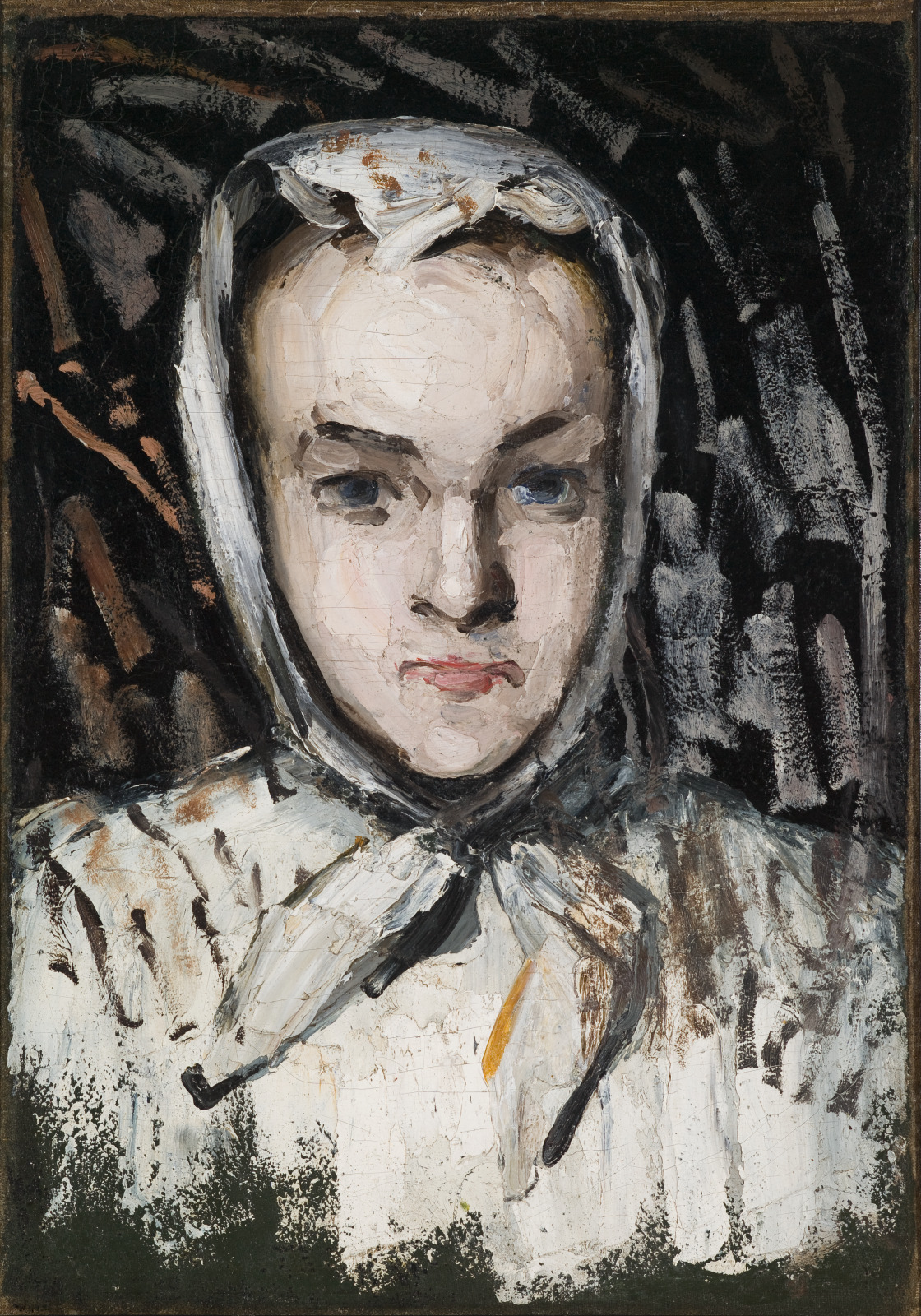
Paul Cezanne, French, 1839–1906; Marie Cezanne, the Artist's Sister (recto), 1866–67; oil on canvas; 22 x 15 1/2 inches; Saint Louis Art Museum, Museum Purchase 34:1934
Paul Cezanne’s early portraits focused on members of his family, and in this double-sided portrait he represented his mother, Anne-Elisabeth-Honorine, and his younger sister, Marie. He painted the face of his mother, framed by a white scarf, in a near-abstract mosaic of thick paint touches in yellow, pink, and orange. On the other side of the same canvas the portrait of Marie is upside down. She is painted with a similar scarf tied under her chin and with vigorous, flat paint marks applied with his palette knife. At this early stage in his career, Cezanne probably painted on both sides of the canvas for financial reasons, in order to economize on canvas purchases.
June 13, 2024
Cushion Cover with Design of Four-armed Cross Centered in an Octagon
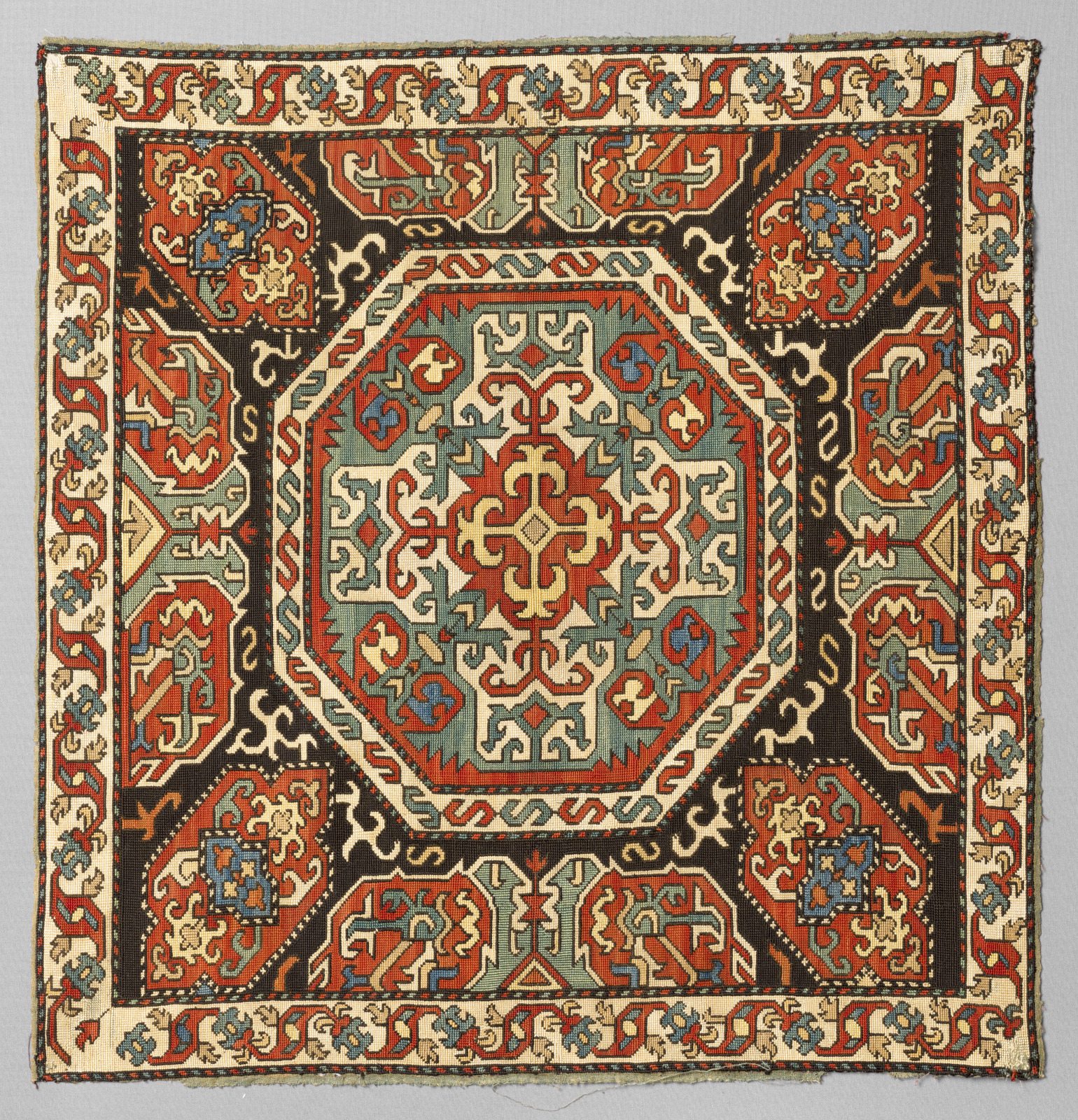
Cushion Cover with Design of Four-armed Cross Centered in an Octagon, 18th–19th century; Azerbaijani; silk embroidered on plain-weave cotton; 23 5/8 x 22 5/8 inches; Saint Louis Art Museum, Gift of Mrs. Frank H. Cook 177:1952
At the center of this cushion cover is a yellow, stylized cross. Around this cross is a larger, highly decorated cross on a cream background enclosed by an octagon with a cream border of S-shaped motifs. The outermost border of this textile is also on a cream background and features a scrolling floral pattern. Just inside this outer border, hexagonal, decorated sections occupy the four inner corners with irregular oblongs between them.
All of these angular and hooked patterns and geometric forms originated in woven carpet designs. Until the 19th century, the eastern Caucasus region (present-day Armenia, Azerbaijan, Georgia, northern Iran, southern Russia, and eastern Turkey) was dominated by Persia (present-day Iran). So Persian artistic influence is apparent in many textiles from the Caucasus area, including carpets and cushion covers such as this example. Cushions, placed on the floor for seating, were an essential part of homes in the Caucasus. Embroidery is one of several techniques used to make these colorful textiles.
June 12, 2024
Figurehead (pakoko or tete) from a fishing canoe

Maori artist, New Zealand; Figurehead (pakoko or tete) from a fishing canoe, 18th–early 19th century; wood; 15 3/8 x 8 7/16 x 16 1/8 inches; Saint Louis Art Museum, Bequest of Morton D. May 1558:1983
Appearing defiant with a thick protruding tongue, this tiki head was attached to the bow of a waka tete, or fishing canoe. Its aggressive face would have pointed outward, parting the sea with its powerful force. The curved and spiral patterns around the mouth likely represent moko, intricate tattoos that communicate personal history as well as tribal status. The eyes of the head were once inlaid with iridescent shells.
June 11, 2024
The Silver Goblet
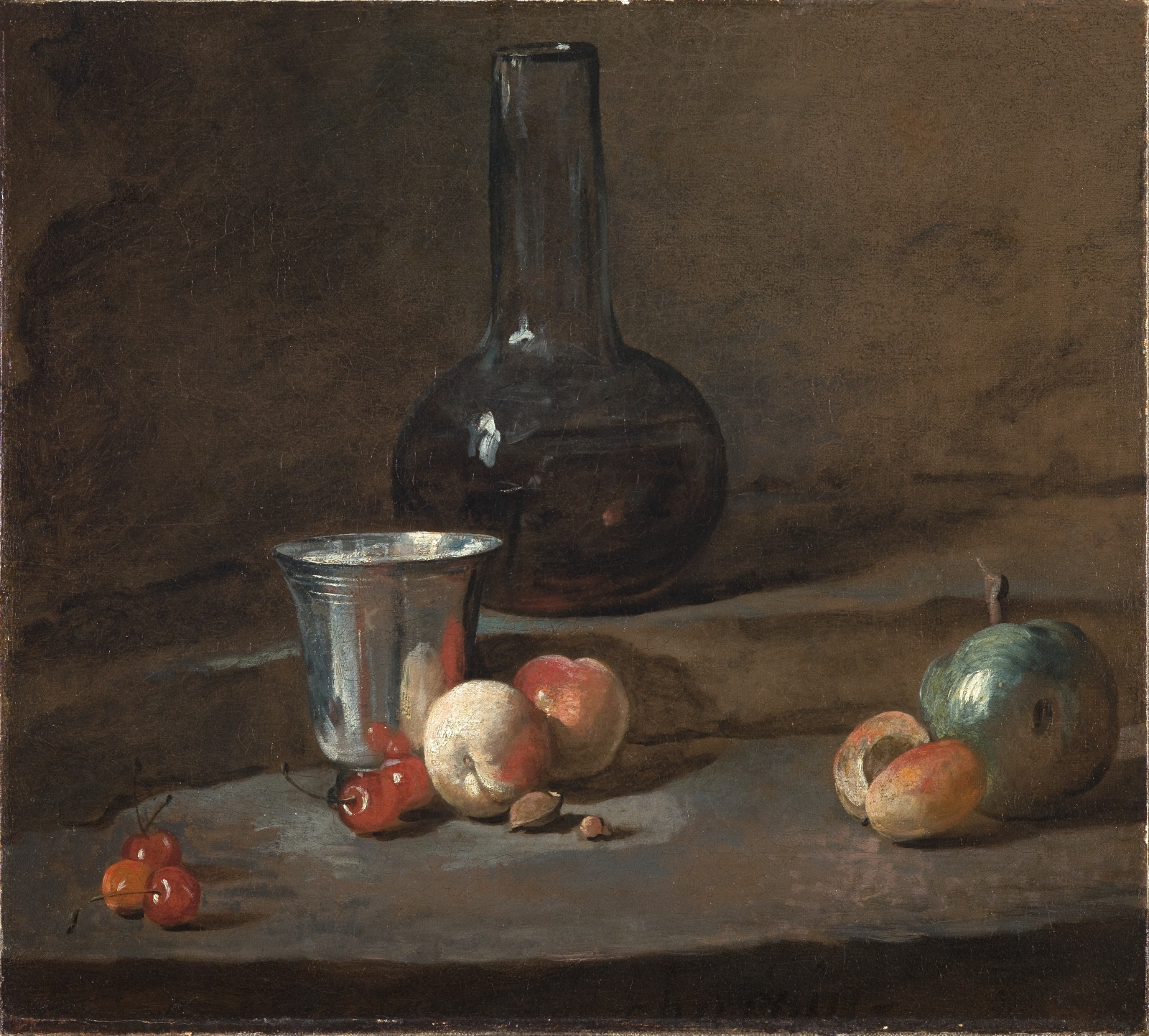
Jean-Simeon Chardin, French, 1699–1779; The Silver Goblet, c.1728; oil on canvas; 16 7/8 x 19 inches; Saint Louis Art Museum, Museum Purchase 55:1934
This seemingly simple still life features a silver goblet, a subject Jean-Siméon Chardin painted often. The dark background contrasts with the goblet’s polished surface, which reflects the simple objects clustered around it. Chardin produced many evocative still-life paintings in which individual elements contribute to a feeling of quiet solitude and ethereal beauty. Unlike most other objects in this gallery, this small still life was probably not made for royal patrons.
June 10, 2024
Mirror with Design of Striding Lions amidst Floral Scrolls and Border of Zodiacal Animals
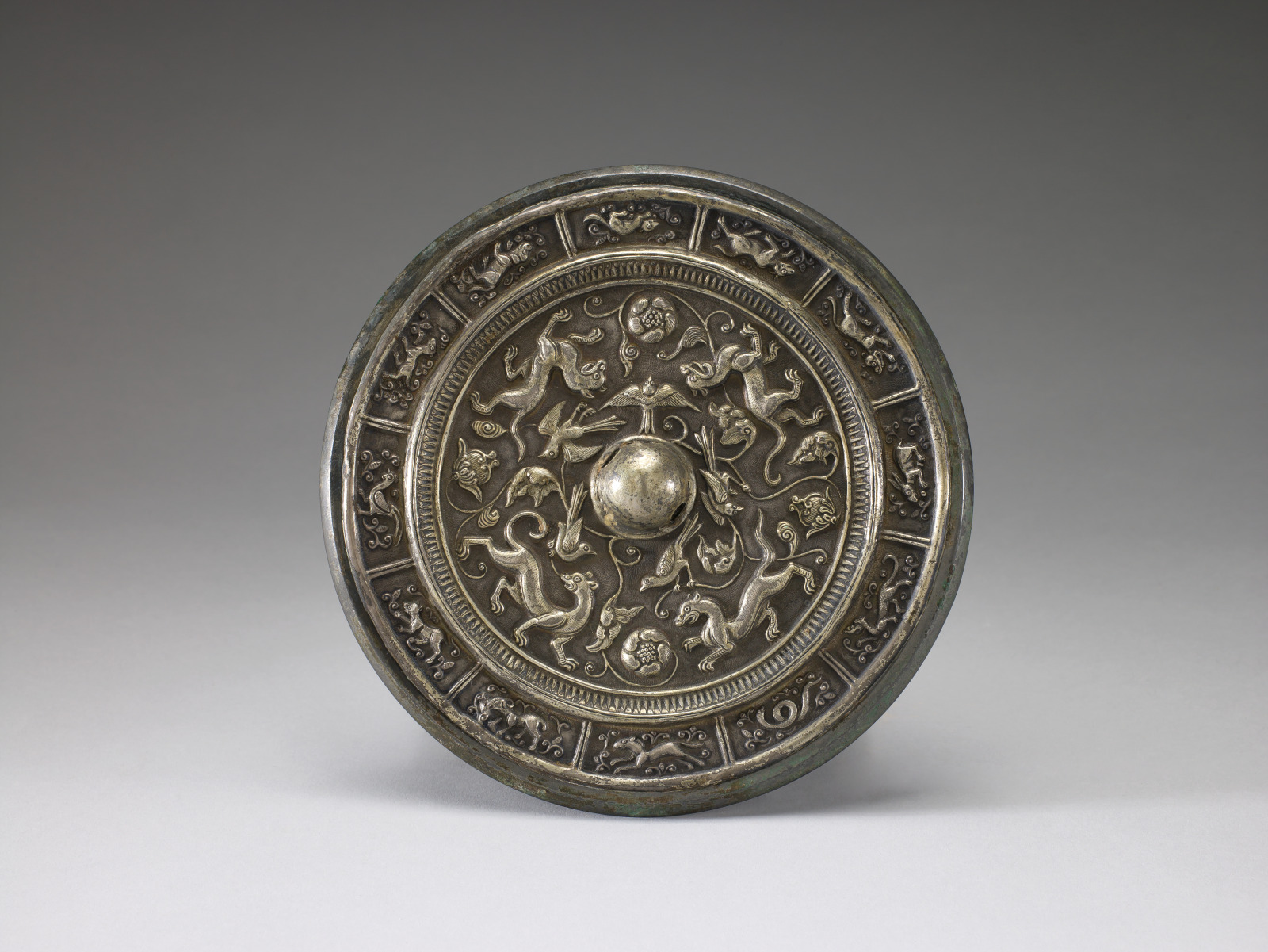
Mirror with Design of Striding Lions amidst Floral Scrolls and Border of Zodiacal Animals, late 7th–8th century; Chinese, Tang dynasty; silvered bronze with traces of gilding; 7 1/4 x 3/16 inches; Saint Louis Art Museum, Spink Asian Art Collection, Bequest of Edith J. and C. C. Johnson Spink 137:2014
The intricately decorated back of this circular mirror indicates both its practical and symbolic functions. Bronze mirrors like this were expensive, prized possessions associated with concepts such as good luck, harmony, and protection. This is indicated by the 12 animals of the Chinese zodiac seen in the outer ring, and in the depiction of lions and birds among blooming flowers. The work itself was held by a cord strung through the central knob. The front was once highly reflective.
June 9, 2024
Sea Captains Carousing in Suriname

John Greenwood, English (born colonial North America), 1727–1792; Sea Captains Carousing in Suriname, c.1755–58; oil on bed ticking; 37 3/4 x 75 inches; Saint Louis Art Museum, Museum Purchase 256:1948
It’s 2:00 am, and a group of intoxicated men in a tavern dance, smoke, guzzle spiced rum, cheat at cards, doze off, and even vomit from overindulgence. The raucous scene took place in the prosperous Dutch colony of Suriname (now the Republic of Suriname) in South America. Four Black men and women serve beverages or doze nearby. They, or their ancestors, had been captured in West Africa and transported by the Dutch West India Company to Suriname, whose economy relied on the stolen labor, knowledge, and skills of enslaved workers to produce the colony’s primary crop of sugar cane.
Boston-born artist John Greenwood lived in Suriname from 1752 to 1758, painting portraits of visiting merchants, who built fortunes by trading commodities among colonial outposts in the Americas. According to the painting’s early owners, many men depicted here came from prominent Rhode Island families involved in this trade. Greenwood’s painting offers a glimpse into movements of people, goods, and ideas as 18th-century empires intersected around the Atlantic Ocean.
June 8, 2024
The Bull Fight
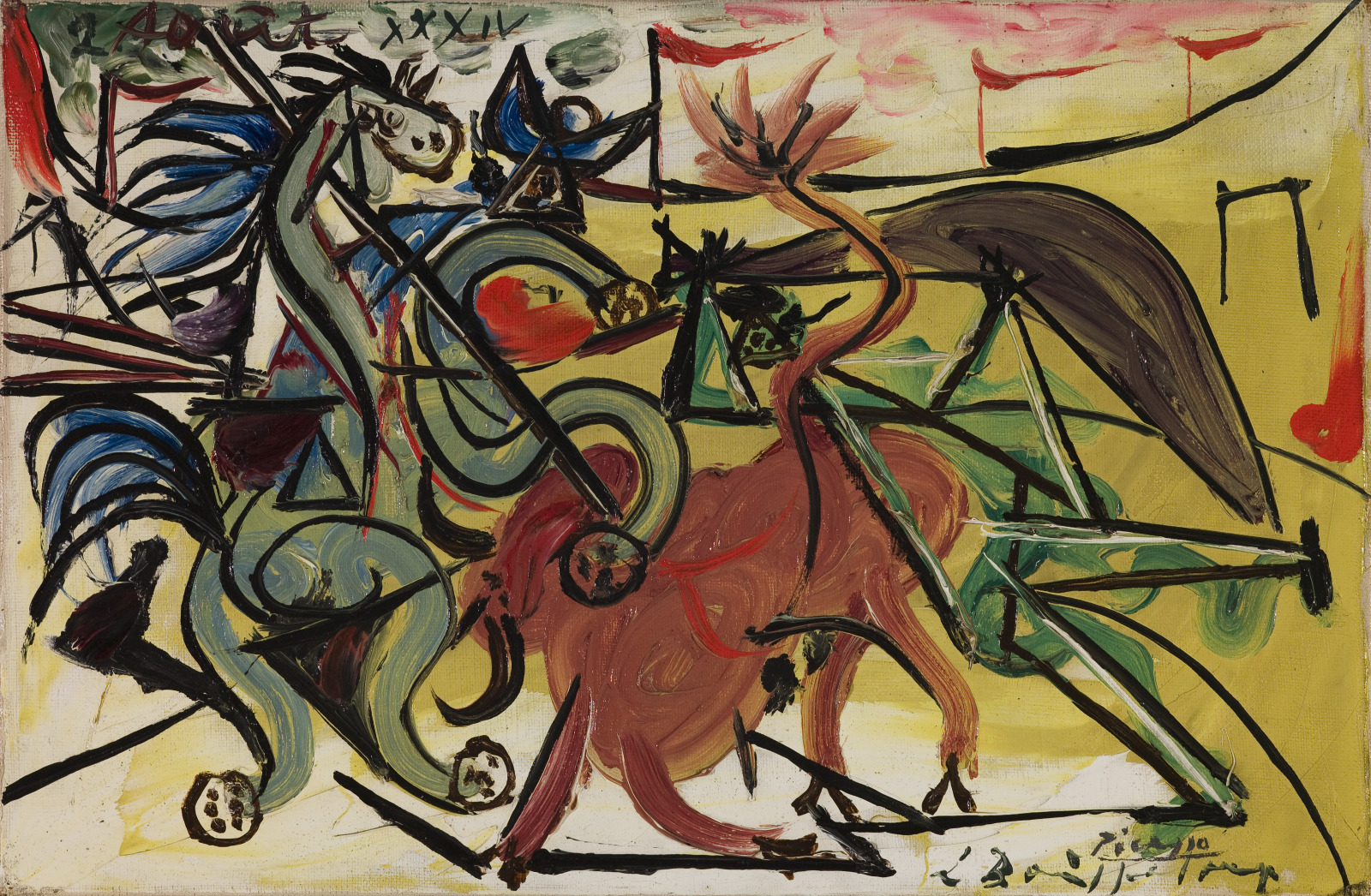
Pablo Picasso, Spanish, 1881–1973; The Bull Fight, August 1934; oil on canvas; 10 3/4 x 16 1/4 inches; Saint Louis Art Museum, Gift of Mr. and Mrs. Marcus Rice 279:1957; © 2024 Estate of Pablo Picasso / Artists Rights Society (ARS), New York
Pablo Picasso uses a tangle of black lines to describe the violent energy of a bullfight. A brown bull is flanked by a rearing stallion on the left and an angular, green matador at right. The artist admired the power and force of the bull, seeing it as a metaphor for the animalistic, sexual passions of the unconscious mind. Picasso’s inscriptions indicate this picture was painted at the artist’s chateau at Boisgeloup, just outside of Paris, on August 2, 1934.
June 7, 2024
Nō Costume (chōken) with Design of Butterflies and Weeping Cherries

Nō Costume (chōken) with Design of Butterflies and Weeping Cherries, 18th century; Japanese, Edo period; silk gauze (ro) brocaded with gold paper-wrapped supplementary wefts; 43 1/4 x 81 inches; Saint Louis Art Museum, Museum Purchase 112:1919
This unlined outer robe (chōken) was worn for dancing by a male Nō actor performing a female role. The large sleeves are joined only slightly to the body of the garment, allowing the dancer to move freely during the performance. The robe is made of silk gauze delicately patterned with gold butterflies and weeping cherries.
The Japanese term for this type of garment, chōken, literally means “long silk” in reference to the long sleeves. The use of such robes dates back to the Muromachi period (1392–1573), when they were worn by young boys of elite samurai families. High-ranking samurai would also present Nō actors with elegant chōken hitatare (long-sleeved jacket paired with a trouser-skirt) to use as costumes.
June 6, 2024
Portrait of a Woman
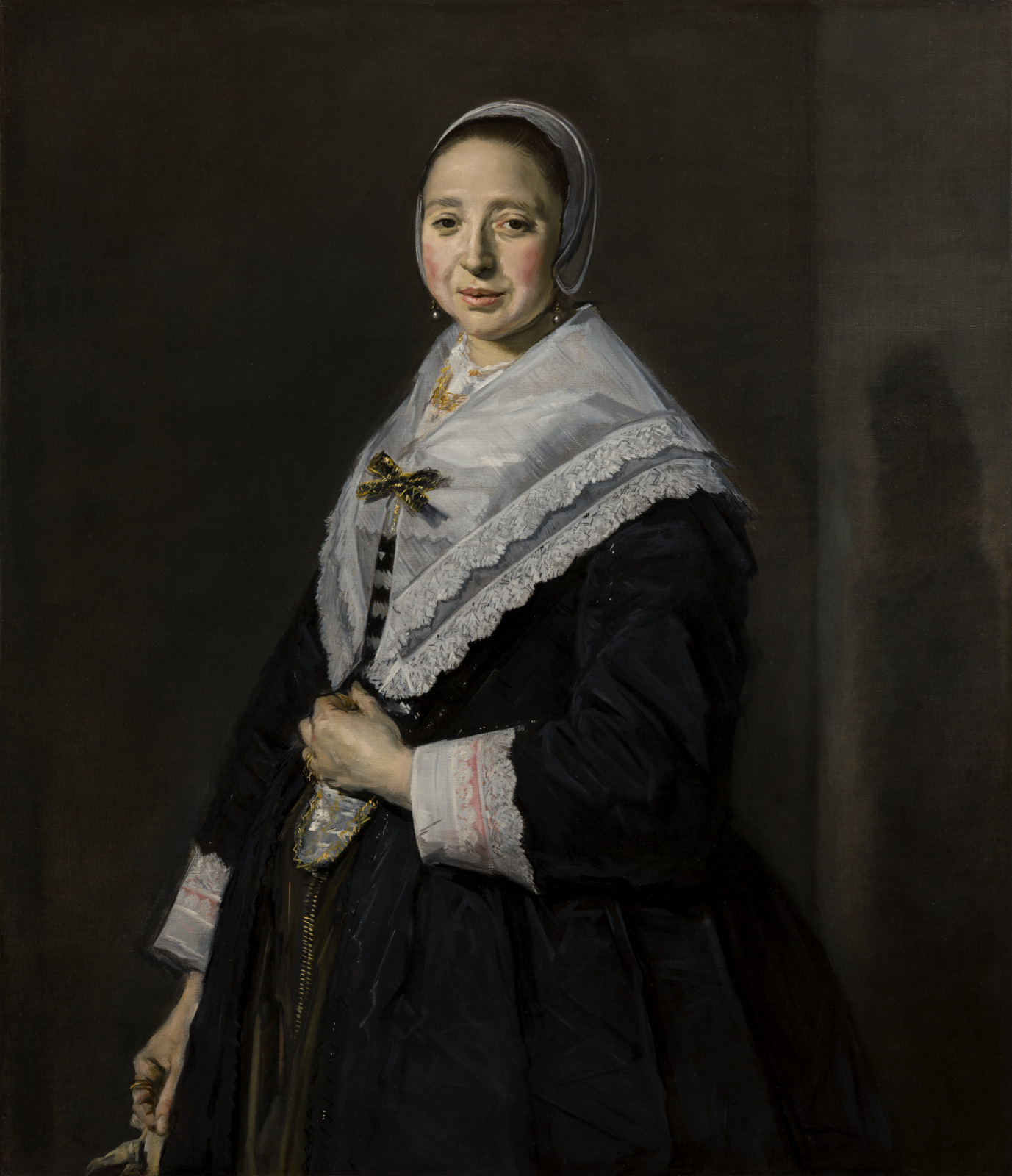
Frans Hals, Dutch, c.1582/1583–1666; Portrait of a Woman, c.1650–52; oil on canvas; 40 3/8 x 35 inches; Saint Louis Art Museum, Museum Purchase and funds given by the John M. Olin Charitable Trust, Friends Endowment Fund, Mr. and Mrs. Sydney M. Shoenberg Sr., Stella Kuhn and Effie C. Kuhn, Mrs. Clifford W. Gaylord, Mr. Joseph L. Werner, Mr. and Mrs. Daniel K. Catlin, Martha I. Love, Mr. and Mrs. Henry B. Pflager, The Steinberg Charitable Fund, Mr. and Mrs. Lansing W. Thoms, the Weil Charitable Foundation, Mrs. Arthur C. Drefs, and Mr. and Mrs. John P. Meyer 272:1955
-
View Companion Painting
![31-90_Hals-PortraitOfAMan_front]()
Frans Hals, Dutch, c.1581/1585–1666; Portrait of a Man, c.1650; oil on canvas; 41 1/4 x 35 1/2 inches; Nelson Atkins Art Museum, Purchase: William Rockhill Nelson Trust 31-90
This portrait of a married woman displays dazzling technique in the freely painted details of her lace collar, and cuffs— signs of her family’s prosperity. Very little can be seen of her surroundings, merely the suggestion of a corner to the right and her shadow cast upon the wall. As a result, she is moved back into the fictional realm of the painting, making her presence seem less assertive. Frans Hals, a leading 17th-century Dutch painter, made more conservative portraits during the 1650s, limiting his use of color and controlling the extraordinarily sketchy brushstrokes for which he is famous. This work was intended to hang together with an image of the woman’s husband, a portrait that is in the collection of The Nelson-Atkins Museum of Art in Kansas City.
June 5, 2024
The Two Doorways
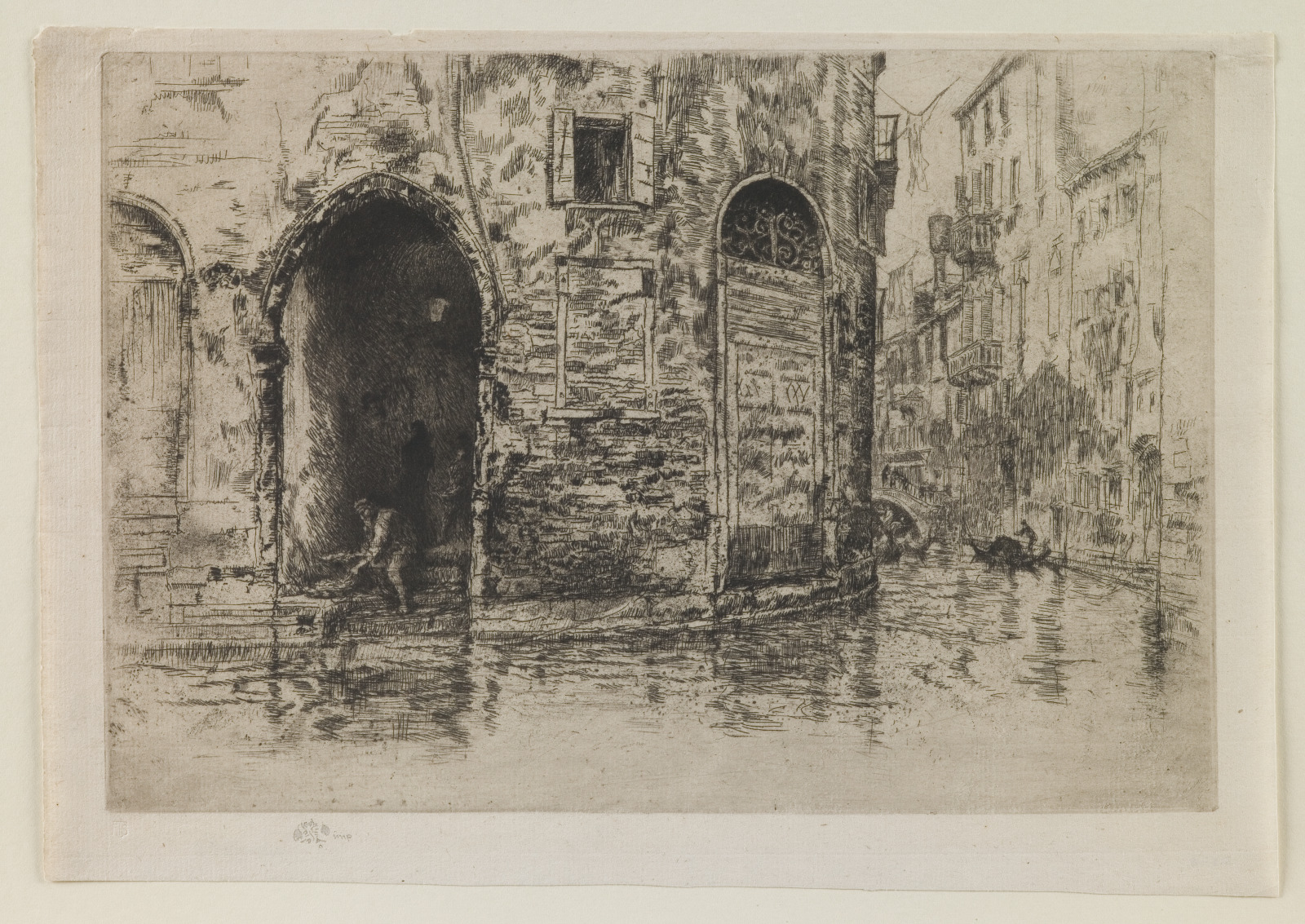
James A. McNeill Whistler, American, 1834–1903; The Two Doorways, 1880; etching and drypoint; plate: 7 7/8 x 11 1/2 inches, sheet: 8 15/16 x 12 3/4 inches; Saint Louis Art Museum, Funds given by Sidney S. Cohen in memory of Sadie M. Cohen 121:1977
James McNeill Whistler transformed an otherwise nondescript scene of Venice, Italy, into a drama of light and movement with a range of etching techniques. His quickly hatched lines seem to dissolve both the solid walls and the liquid reflections they cast in Venice’s distinctive canals. He also selectively wiped areas of the inked copper plate, leaving heavier ink on the plate’s surface to darken the receding archway. Whistler continued to make changes as he sought to capture the interplay of buildings and environment that enlivened every corner of this scene. This is only one of a series of etchings that Whistler made from his observations during time spent in Venice between 1879 and 1880.
June 4, 2024
Posthumous Miracle of St. Stephen

circle of Blasco da Grañén, Spanish, active 1422–d.1459; Posthumous Miracle of St. Stephen, 15th century; oil on panel; height, left side of panel: 40 3/16 inches, height, right side of panel: 40 1/4 inches, width, top of panel: 27 15/16 inches, width, bottom of panel: 27 5/8 inches; Saint Louis Art Museum, Museum Purchase 30:1963
A crowd looks on as a saint lifts his right hand in blessing while raising five people from the dead. This work exemplifies the creative approach to paint handling and technique in 15th-century Spanish art. Gold leaf was used to its most glittering effect by punched, or pressed, designs in the surface of the sky and the saint’s halo. The same method is seen in the tunics of the saint and the man in the grey hat, as if gold was woven into the fabric. The scene may combine multiple posthumous, or after death, miracles of St. Stephen, who according to legend resurrected six people.
June 3, 2024
Table
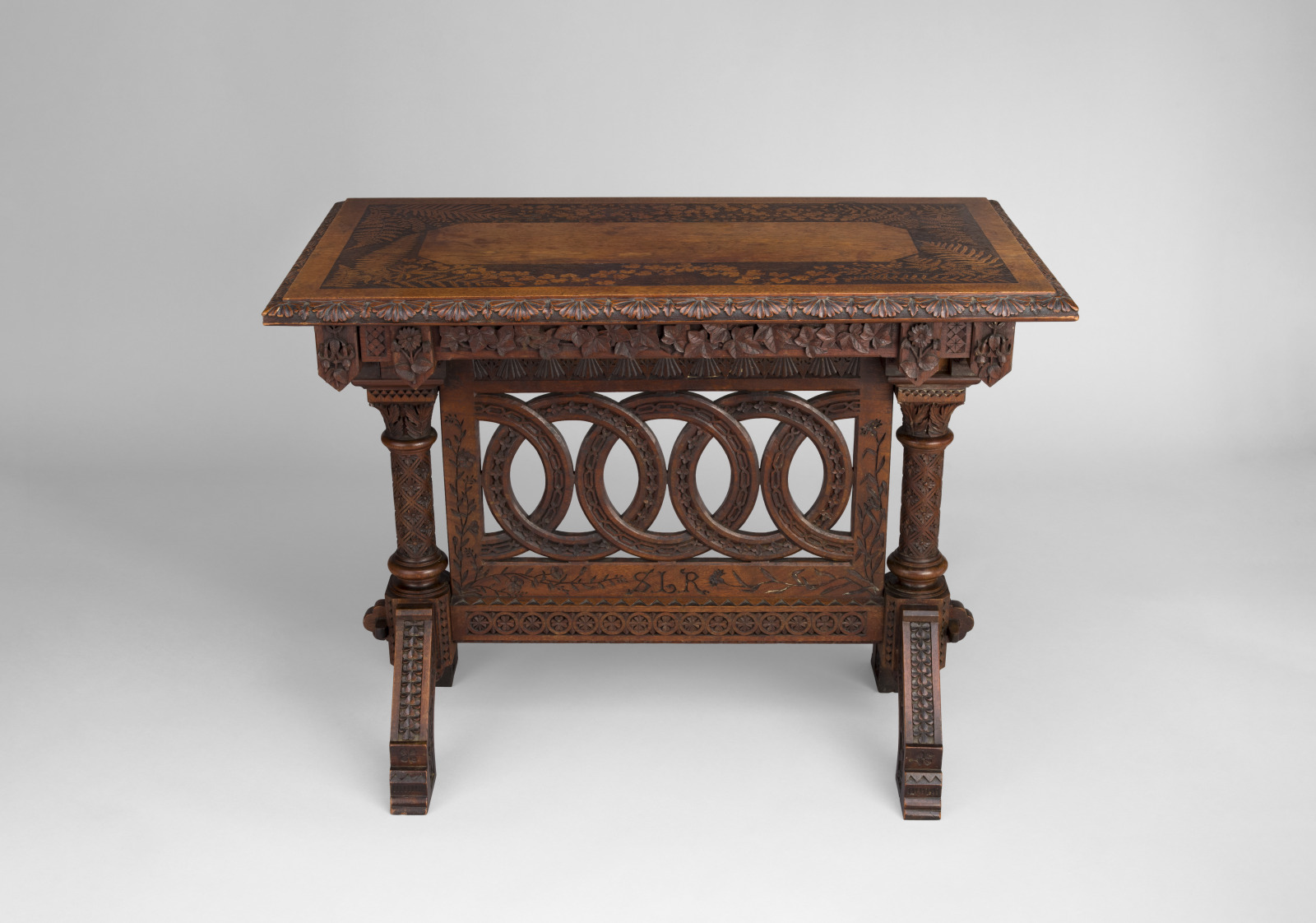
made by Julia Hall Rice, American, 1849–1919; Table, 1876; walnut; 29 1/2 x 38 x 20 1/2 inches; Saint Louis Art Museum, Mary Jo and David Abrahamson Endowment 74:2019
Nearly every surface of this table is embellished with carved flowers and other plant motifs. High-relief daisies and roses ornament the triangular ends, and low-relief ferns and vines frame the top.
In Midwestern cities like Cincinnati, Ohio, where this table was made, and St. Louis, Missouri, many women practiced woodcarving, china painting, and other decorative arts. A table carved by Julia Hall Rice, possibly this example, was included in the influential exhibition of decorative arts by Cincinnati women at the Centennial Exposition in Philadelphia in 1876.
June 2, 2024
Mingkulpa 4 Sale

Kaylene Whiskey, Yankunytjatjara, born 1976; Mingkulpa 4 Sale, 2021; acrylic on linen; 48 1/16 x 59 13/16 inches; Saint Louis Art Museum, Friends Endowment Fund; and Gift of Leila and Monroe R. Meyerson, by exchange 254:2022; © Kaylene Whiskey
Kaylene Whiskey loves American music and movies. In this painting she imagines female celebrities visiting her remote desert community of Indulkana, South Australia. Painted in comic-strip style with speech and thought bubbles, the women, or kungkas, address the viewer. Here, a giant Princess Leia offers the nicotine-rich plant mingkulpa, while one version of Cat Woman declares her hunger for tjala, the Aboriginal delicacy honey ants. Wonder Woman announces a kungka party in America. Combining powerful women with Indigenous Australian cultures, Whiskey playfully celebrates sisterhood and invites everyone to have fun.
June 1, 2024
Zenobia in Chains

Harriet Goodhue Hosmer, American (active Italy), 1830–1908; Zenobia in Chains, c.1859; marble; 44 1/4 x 14 x 18 inches; Saint Louis Art Museum, American Art Purchase Fund 19:2008
The dignity of this figure’s profile, with her head held high, and the intricate details of her ancient dress testify to Harriet Hosmer’s sophisticated carving abilities. Zenobia ruled Palmyra (present-day Syria) for six years after her husband’s death in AD 267. She conquered Egypt and reigned until Roman forces overpowered her armies and captured her. Emperor Aurelian marched her in chains as part of his triumphal procession through Rome.
Hosmer, one of a group of 19th century female sculptors working in Rome, held strong feminist beliefs. She saw in Zenobia an embodiment of a woman’s ability to move beyond the constraints placed on her. Zenobia’s bearing stresses her strength rather than victimization. As Hosmer wrote, “I have tried to make her too proud to exhibit passion or emotion of any kind; not subdued, though a prisoner; but calm, grand, and strong within herself.”
May 31, 2024
Coffeepot
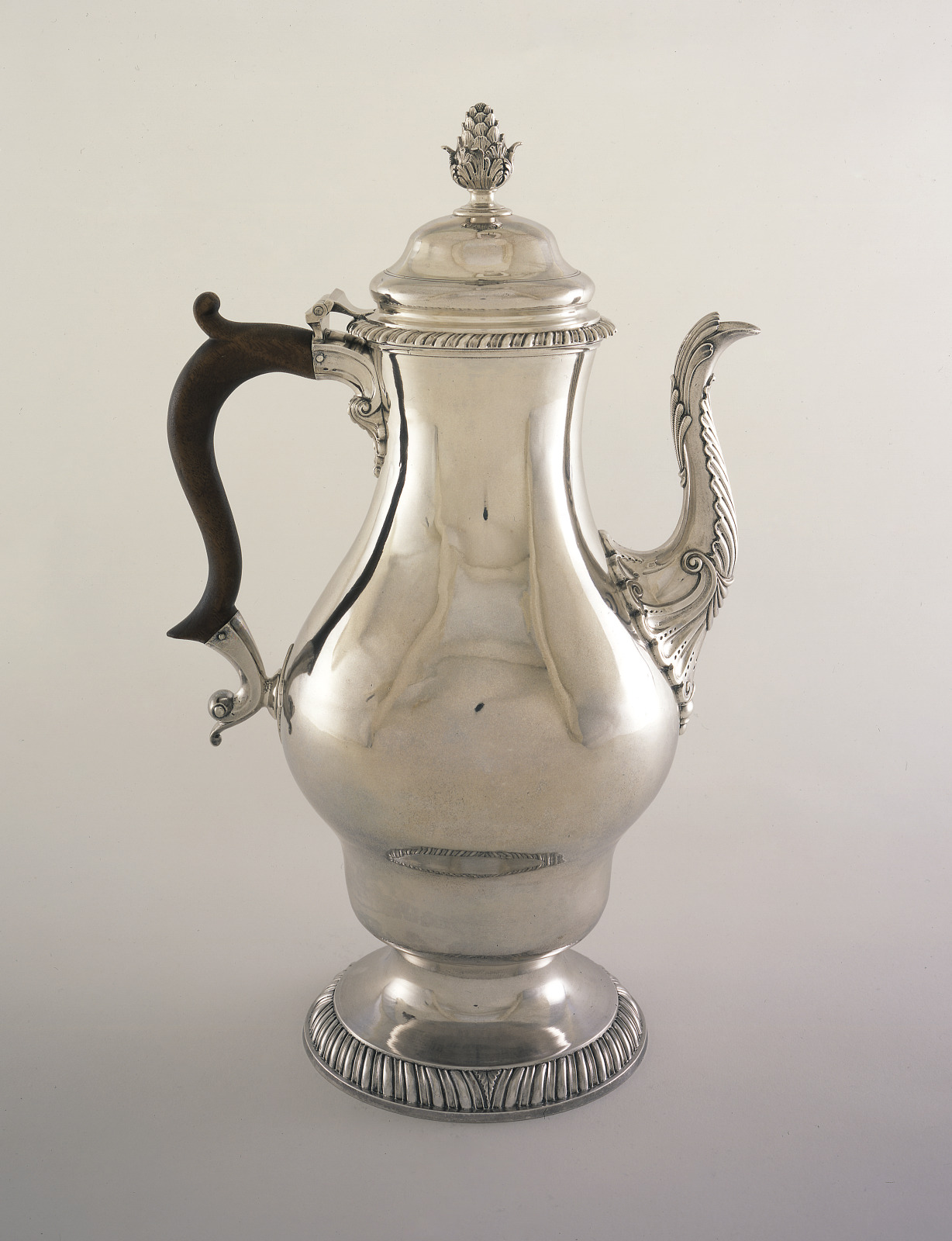
Myer Myers, American, 1723–1795; Coffeepot, 1770–76; silver and wood; 13 7/8 x 8 3/4 x 5 7/8 inches; Saint Louis Art Museum, Gift of Charles H. Stix in memory of his mother, Mrs. Henry S. Stix 84:1945
This substantial coffeepot is enlivened by the undulating line of its pear-shaped body, the tight curves of its spout and handle, and the upward lift of the finial atop the lid. The dynamic interplay of curving form and line is one characteristic of silver in the rococo style. Another is the rich vocabulary of shells, acanthus leaves, and scrolls that form the cast handle sockets, finial, and spout. The coffeepot’s cast elements were tooled to sharpen the details, add textures, and enrich their surfaces. Finishing of this quality is extraordinary, even for silver made by Myer Myers, a craftsman of Jewish ancestry, who is celebrated as one of the best and most innovative silversmiths of colonial New York.
May 30, 2024
St. Christopher

St. Christopher, last quarter 15th century; French, Burgundian, or Flemish, France; limestone; 31 x 27 x 15 inches; Saint Louis Art Museum, Museum Purchase 3:1934
With his waist slightly twisted and his right arm raised upwards, this monumental figure appears to be in the process of taking a step forward. The sculpture depicts St. Christopher, who according to legend was a man of great size who dedicated his life to ferrying people over a river. One day, a young boy asked to be taken across on his shoulders, but became heavier as Christopher waded through the water. Upon reaching the other side, the child revealed himself to be Christ, telling Christopher he had carried the weight of the world. The right knee and left foot of Christ are seen at the shoulders of the sculpture.
As a result of this story, Christopher was considered a patron saint of travelers. Viewing his image was also thought to protect against an unexpected death. Works like this were often displayed at the doorways to churches to provide spiritual defense to worshippers as they exited.
Today’s Object of the Day is featured in Global Connections, 500–1500.
May 29, 2024
Basin

Basin, mid-14th century; Egyptian, Mamluk period; brass with silver and gold inlay; height: 9 1/4 inches, diameter of mouth: 22 1/8 inches, diameter of base: 16 1/2 inches; Saint Louis Art Museum, Museum Purchase 50:1927
This magnificent basin was used for washing, in conjunction with a pitcher. The teeming fish swimming around the bottom of the interior reflect its function, as the water would splash over them. The stately Arabic inscriptions encircling the exterior of the basin and its interior rim indicate it was created for a high-ranking officer of the Mamluk ruler al-Malik al-Nasir (ruled 1293–1341). The Mamluks ruled Egypt and Syria from 1250 to 1517. In 1322 they signed a peace treaty with the Mongols, opening the way to trade with China. Contact with China introduced new motifs, such as the lotus flowers in the roundels on this basin.
May 28, 2024
Vespers
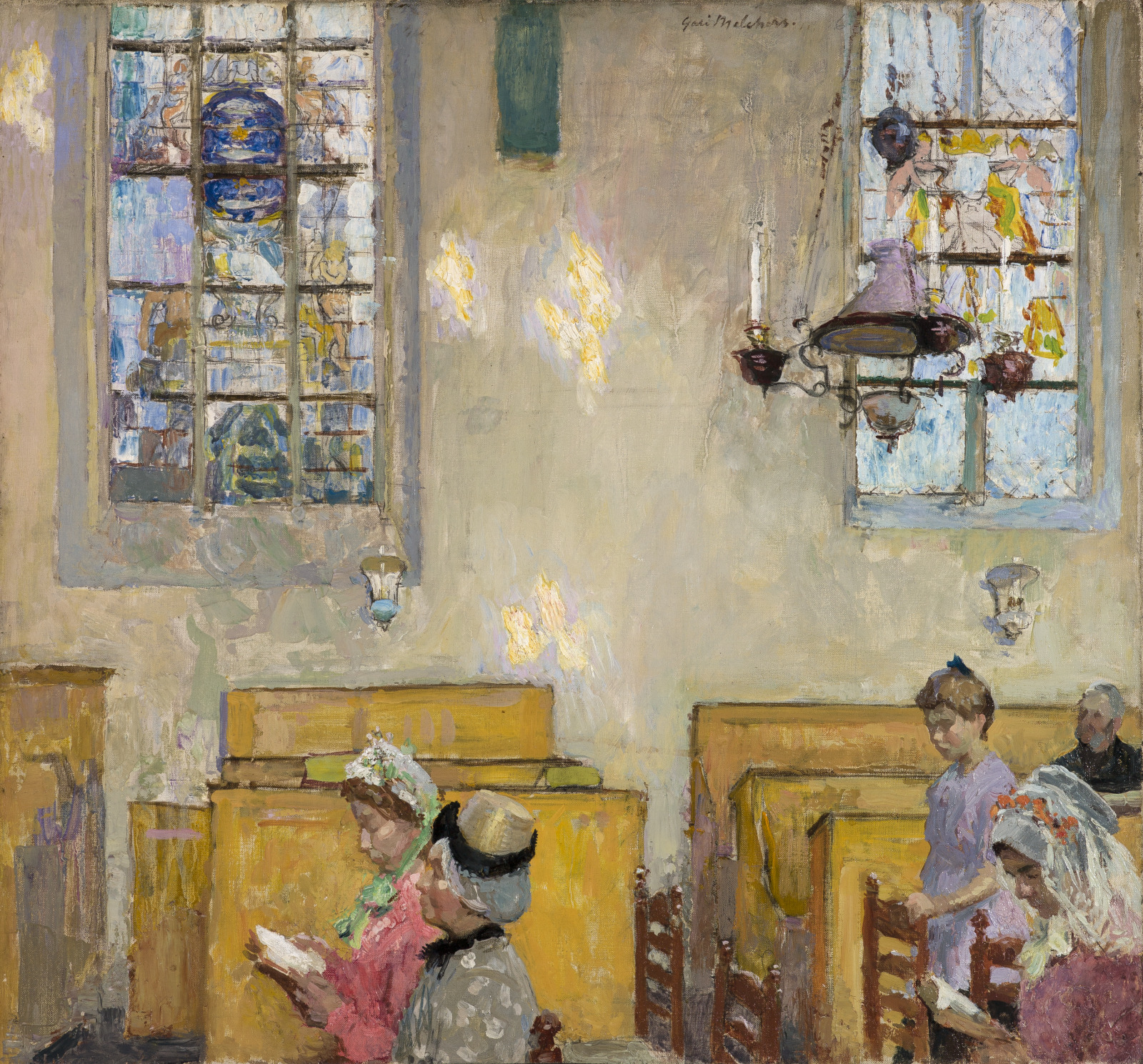
Gari Melchers, American, 1860–1932; Vespers, c.1910; oil on canvas; 21 1/2 x 22 1/2 inches; Saint Louis Art Museum, Museum Purchase 228:1916
The focus of this painting is the way light plays across different surfaces. Light slides across the church wall in patches of thick paint, and dissolves the glass windows into beautifully mottled tones of gem-like color. Vespers, the Christian early evening prayer service, is depicted here in an Egmond-aan-Hoef, Holland church, where artist Gari Melchers relocated and taught other American painters during the summer.
The parishioners, seen in the bottom third of the painting, are carefully given three-dimensional shape. Though American Impressionists like Melchers were interested in the effects of light, they were never as willing as their French counterparts to allow light to completely dissolve.
May 27, 2024
Crown

Crown, 10th–11th century; Chinese, Northern Song dynasty, or Liao dynasty; bronze with gilding and repousse decor; 7 5/8 x 8 x 8 1/2 inches; Saint Louis Art Museum, Funds given by Edith Spink in memory of her husband, C. C. Johnson Spink 108:2002
This gilded, high-peaked crown is distinguished by extraordinarily fine repoussé (metalwork pushed up from the underside) in high relief. The image of a large flaming jewel, flanked by two large, seated dragons, rises to the height of high auspicious clouds from an opened lotus, the blossom itself emerging from an endless sea of waves. Thousands of minute dragon scales are individually hammered and picked out with pin-prick indentations. What seems like a single strand of beads along the bands of grapes and vines is fine hammer work so fluidly produced that the crown appears as if cast from molten metal instead of cold-worked with tools. This elaborate crown was presented by the Chinese Song court as tribute to a Qidan envoy of the Liao dynasty (916-1125). The foreign Qidan were a confederation of powerful northern tribes that threatened the borders of China and were often erstwhile allies of the Chinese, who soothed the temper of the Qidan with gold bullion, rare tea, and sumptuous goods, including fine gilded metalwork such as this crown.
May 26, 2024
The Dream
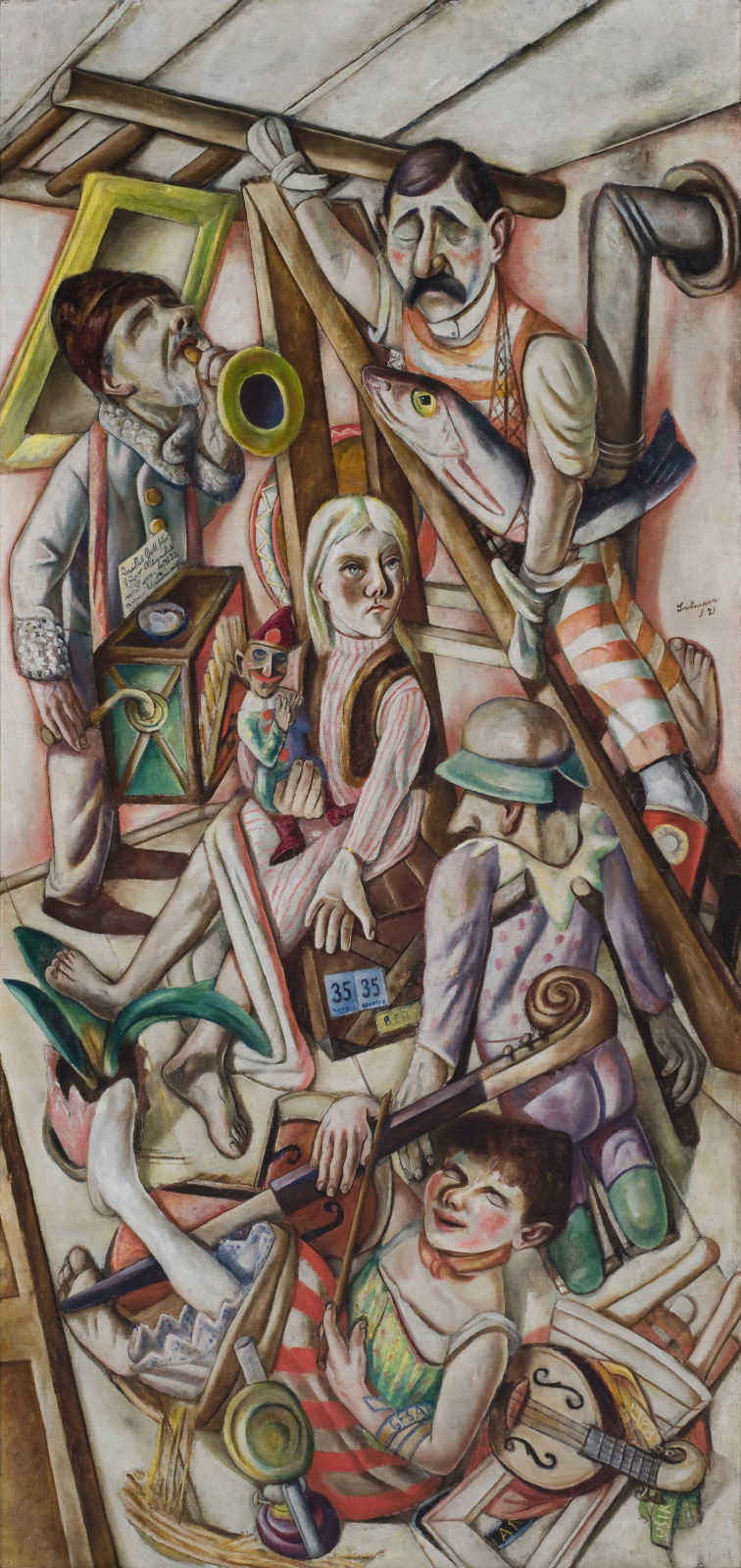
Max Beckmann, German, 1884–1950; The Dream, 1921; oil on canvas; 71 5/8 x 35 13/16 inches; Saint Louis Art Museum, Bequest of Morton D. May 841:1983
Five figures crowd the cramped interior of an attic room. They wear unusual clothes and perform actions at odds with their surroundings and each other. Max Beckmann’s title proposes an explanation for the scene’s chaos. These people may be dreams taken from his sleeping mind. With its focus on subjective experience, the theme reflects Beckmann’s artistic rejection of the visible world after World War I (1914–1918).
Today’s Object of the Day is featured in the Max Beckmann Collection Guide.
May 25, 2024
Palisades, from “The Hudson River Portfolio”
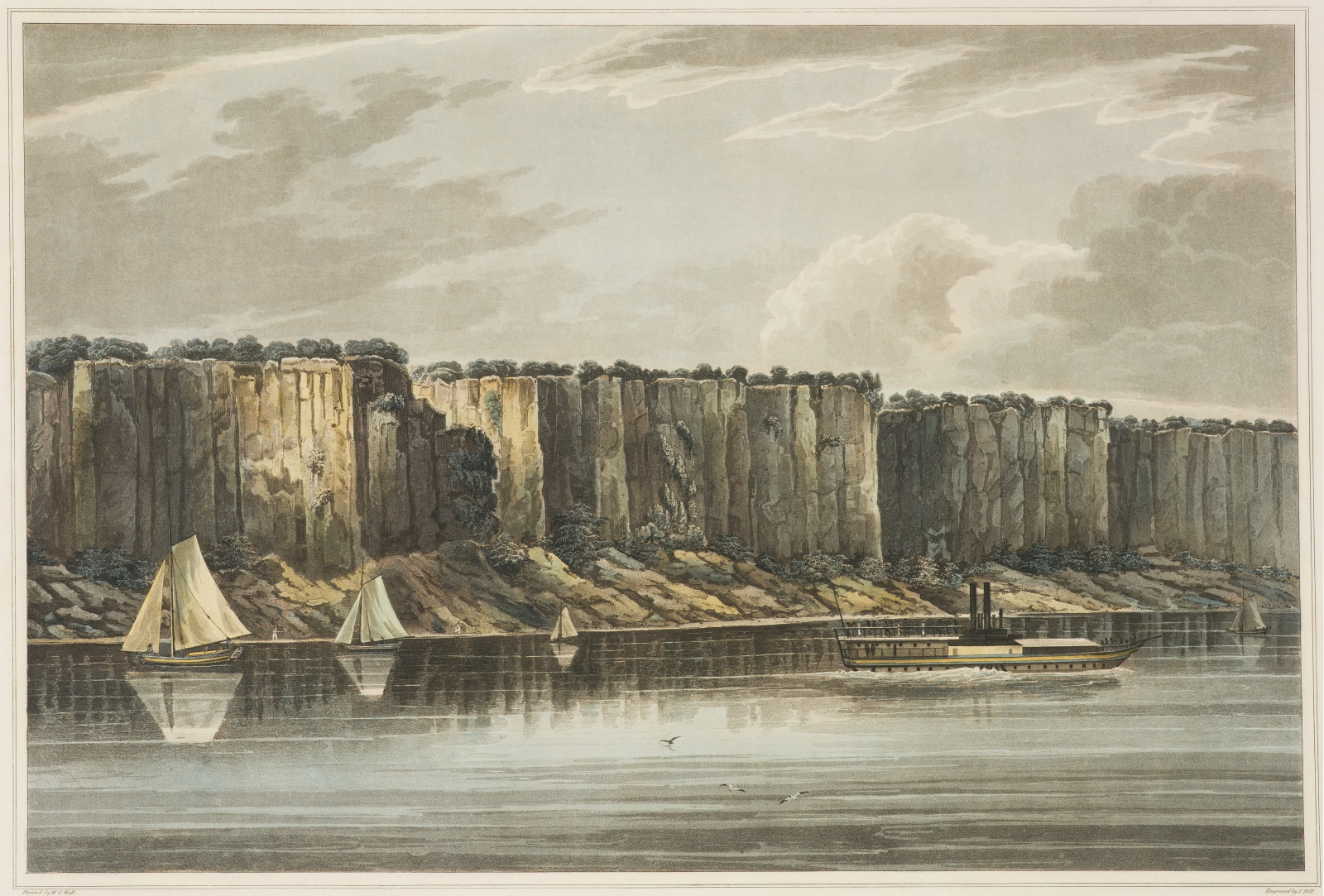
William Guy Wall, Irish, 1792–after 1864; printed by John Hill, American (born England), 1770–1850; Palisades, from The Hudson River Portfolio, 1823–24; hand-colored aquatint, etching, and engraving; image: 16 x 21 1/4 inches, plate: 17 3/4 x 24 1/8 inches, sheet: 19 1/8 x 25 3/16 inches; Saint Louis Art Museum, The Sidney S. and Sadie Cohen Print Purchase Fund, Director's Discretionary Fund, and funds given by the estates of Babette T. Putzel and Louis R. Putzel, James and Joan Schiele, Paul M. Arenberg, an anonymous donor in honor of Nancy G. Rosenbaum, Mr. and Mrs. David C. Farrell, Nancy and Kenneth Kranzberg, and Charles and Jane Walbrandt 5:2008.25
A steamboat full of tourists gliding along the Hudson River gives a sense of scale to this view of the dramatic bluffs known as the Palisades. These cliffs rise as high as 550 feet above the water of the river only a few miles north of New York City. This image serves as reminder to city dwellers of nature’s wonders that lay just beyond their doors. After its initial release, The Hudson River Portfolio quickly made its way into American popular culture. The images inspired an upsurge of illustrated guidebooks that were pervasive in mid-19th century America. The sketches were even reproduced on the surfaces of dinnerware—Staffordshire Pottery’s Picturesque Views—which was sold commercially. The portfolio was so popular that a second edition was published between 1828 and 1833 with a run that numbered in the thousands.
May 24, 2024
Vase
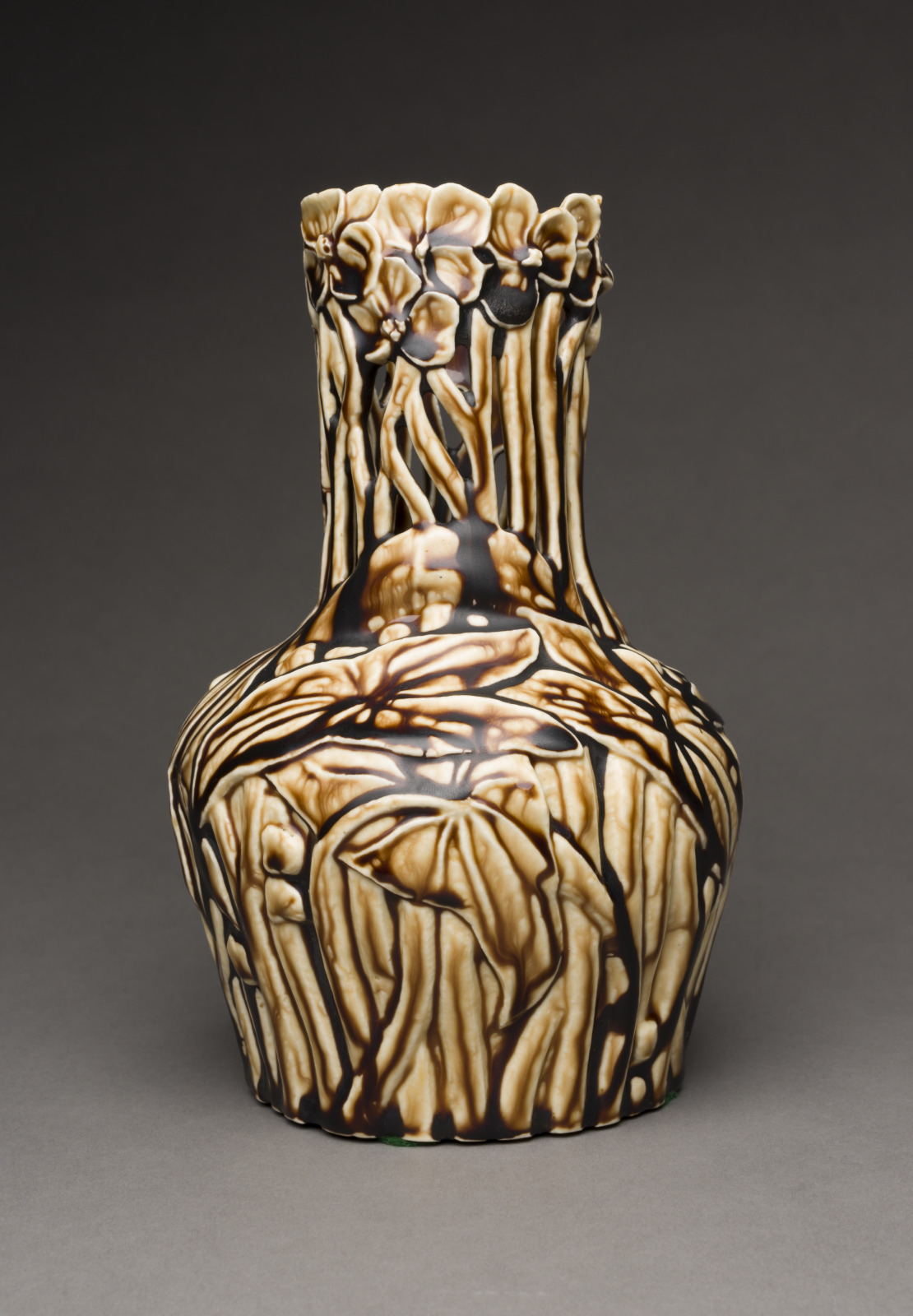
Louis Comfort Tiffany, American, 1848–1933; made by Tiffany Studios, Corona, New York, 1900–1938; Vase, 1905–10; glazed earthenware; 7 5/8 x 5 1/4 x 5 1/4 inches; Saint Louis Art Museum, Given in honor of the Docents of the Saint Louis Art Museum by Dr. Matthew and Jane Newman 165:2015
Ferns, flowering vines, and woodland plants inspired the ceramics produced by Tiffany Studios, as seen here. This vase with arrowhead plants and a snake winding through the foliage is one of their most original designs. The neck is daringly pierced to form delicate stems that support a ring of flowers around the rim. Overall, a dark umber matte-textured glaze helps to define the low-relief ornament.
Louis Comfort Tiffany was renowned during his lifetime for the versatility of his firm’s creative output in the decorative arts. About 1880, Tiffany’s decorating company began to produce stained glass windows and mosaics. During the 1890s, they added blown glass, leaded glass lamps, and bronze to their lines, and beginning about 1900, ceramics. Following a few years of experimentation, Tiffany seized the spectacle of the 1904 St. Louis World’s Fair for the first public exhibition of their nature-inspired art pottery.
May 23, 2024
Pheasantry in the Forest of Compiègne
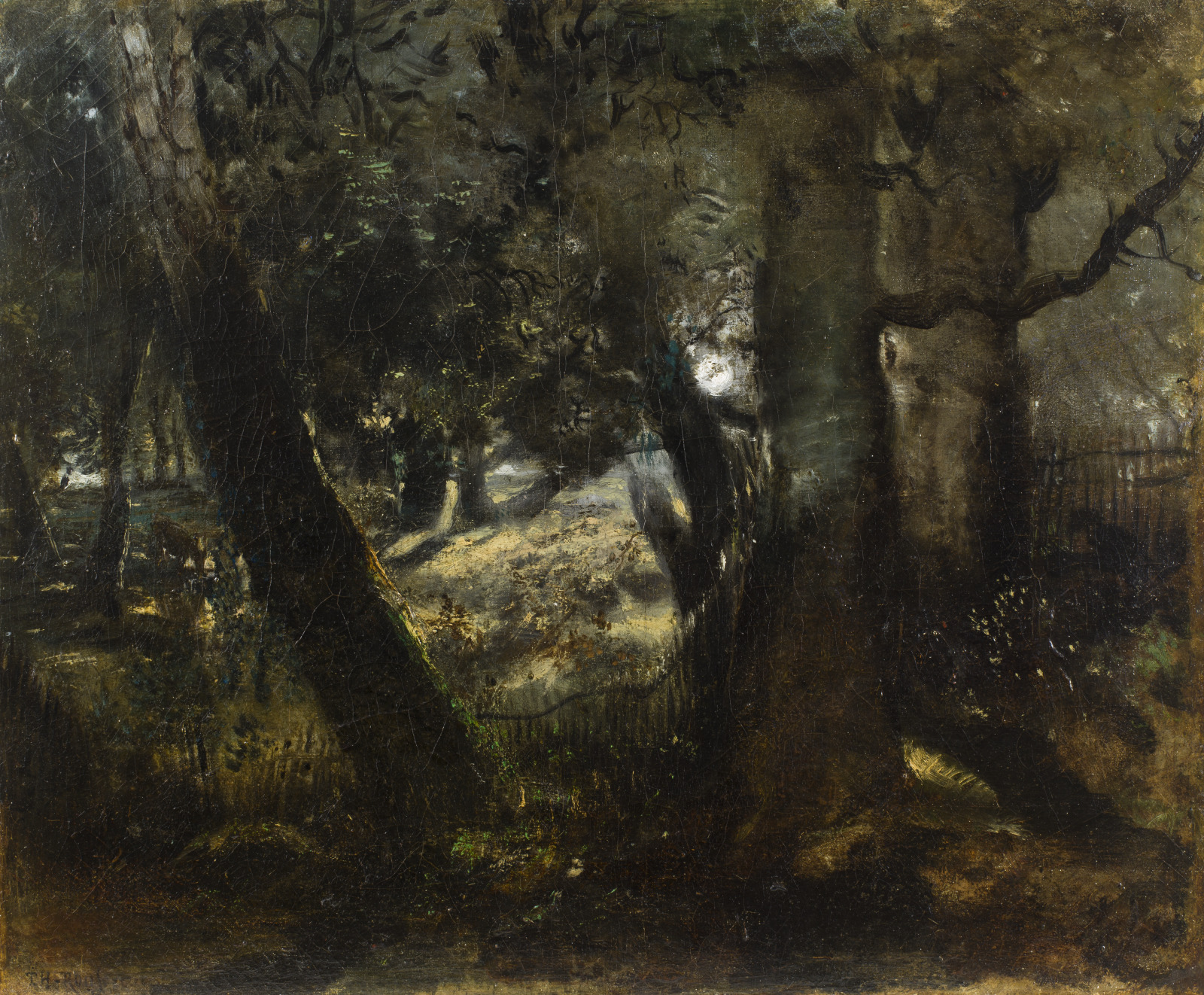
Théodore Rousseau, French, 1812–1867; Pheasantry in the Forest of Compiègne, 1833; oil on canvas; 20 7/8 x 25 5/8 inches; Saint Louis Art Museum, Funds given by Mr. and Mrs. John Peters MacCarthy; and Gift of Justina G. Catlin in memory of her husband, Daniel Catlin, by exchange 33:2016
In this atmospheric moonlight scene, Théodore Rousseau depicted a pheasantry, or pheasant farm. Flecks of yellow paint at the bottom right suggest a pheasant in flight. The silhouetted forms of trees offer a flat, surface pattern while depth in the space is created by the detail of a cow drinking from a pond at back left. Rousseau painted this gestural work when he was only 21, demonstrating his early artistic talent. Due to his skill, Rousseau was considered the leading landscape painter of the Barbizon School, an artistic colony southeast of Paris.
May 22, 2024
Bottle in the Form of a Fulling Block
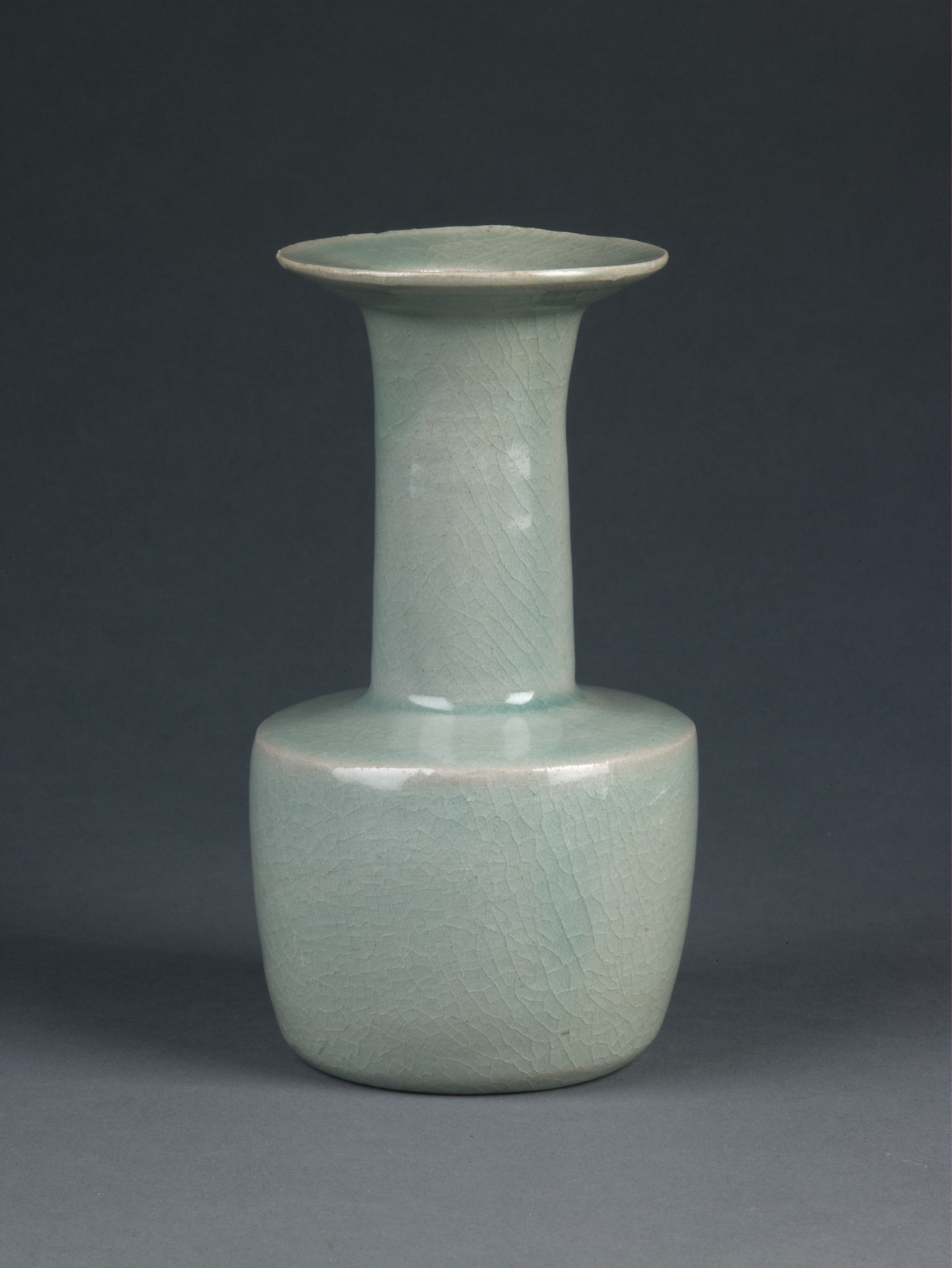
Bottle in the Form of a Fulling Block, early 12th century; Korean, Goryeo dynasty; stoneware with celadon glaze; 6 5/8 x 3 11/16 inches; Saint Louis Art Museum, Gift of Samuel C. Davis and Museum Purchase, by exchange 63:2010
This extraordinary early 12th-century Korean vessel is known by the Japanese term for mallet or fulling block (kinuta). In the past, Japanese and Korean women would use large mallets to pound wrinkles out of fabrics and the shape of this vessel resembles those tools. The color and quality of this vessel’s crackled glaze, which is exceptional, closely relates to examples of Chinese Ru wares of the Northern Song dynasty. This kinuta also recalls the best Chinese Longquan porcelains of the Southern Song dynasty.
The elegant simplicity of this bottle, its subtle coloration, and skillful production make it one of the rarest and finest Korean objects in the Museum’s collection. It represents the highest level of design and execution among the porcelains and porcelaneous stoneware of Korea in any period. In addition, it easily holds its own against, and even challenges, the best imperial ceramic wares produced in China during the Northern and Southern Song dynasties
May 21, 2024
Landscape with Pond
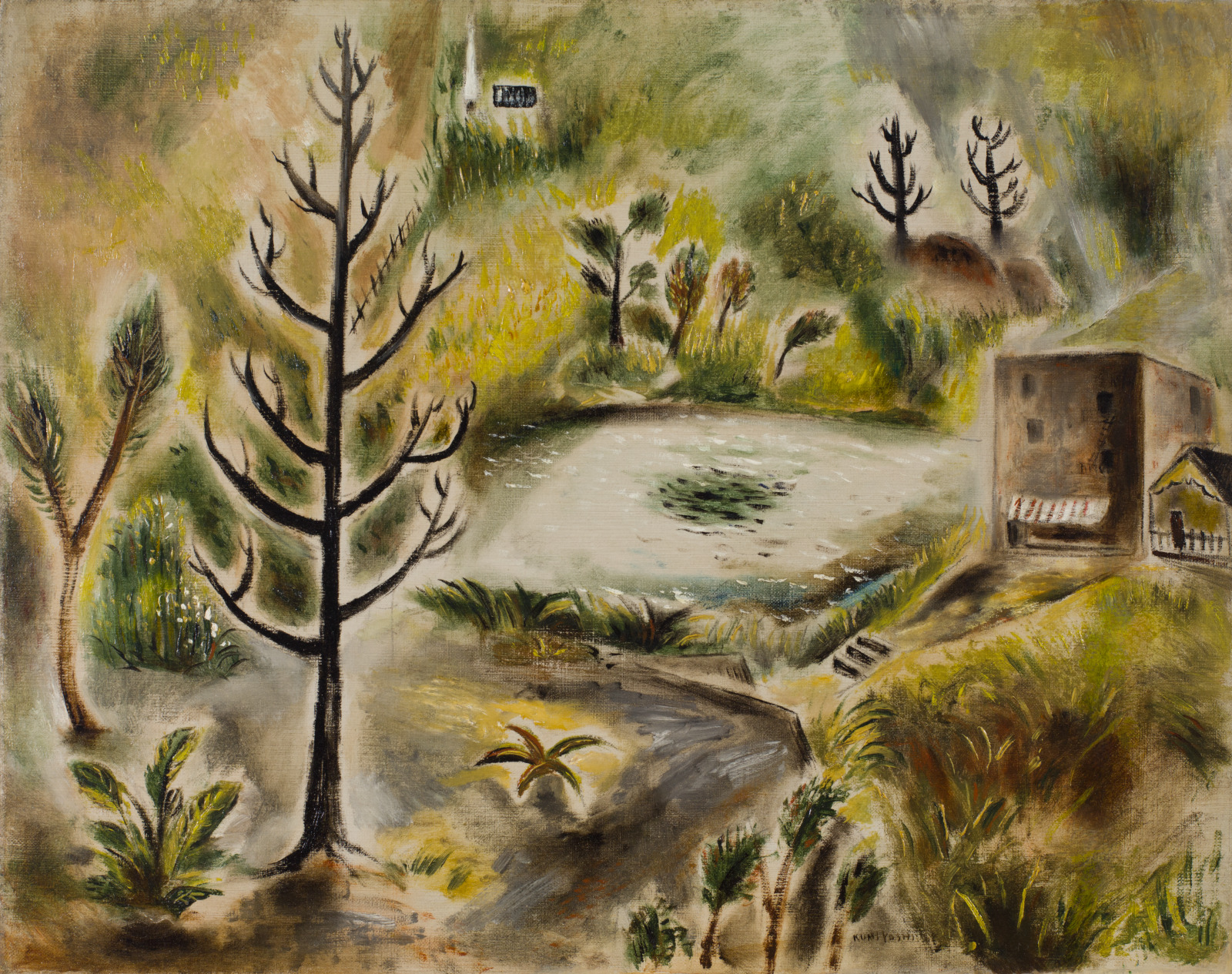
Yasuo Kuniyoshi, American (born Japan), 1889–1953; Morning, 1920; oil on canvas; 16 x 20 inches; Saint Louis Art Museum, Gift of John and Susan Horseman, in honor of Melissa Wolfe, Curator of American Art 102:2019
Painted in pearlescent colors, this wooded landscape is enveloped in shimmering halos. Mottled tones emphasize flatness as they eliminate a horizon line and seem to push forward the squares of open meadow. The artist, Yasuo Kuniyoshi, merged the shifting planes of three-dimensional forms seen in 20th-century European art and the flat backgrounds of Asian art. However, the way in which objects emerge and recede as if conjured in a dream can also be found in the powerful visions and reductive forms of American folk-art paintings and sculpture, which the artist avidly collected. Kuniyoshi immigrated to the United States from Japan in 1906 when he was 13 years old. Though he actively supported the nation during World War II (1939–1945), he was classified by the government as an enemy alien, causing him great hardship.
May 20, 2024
Driftwood on the Bagaduce
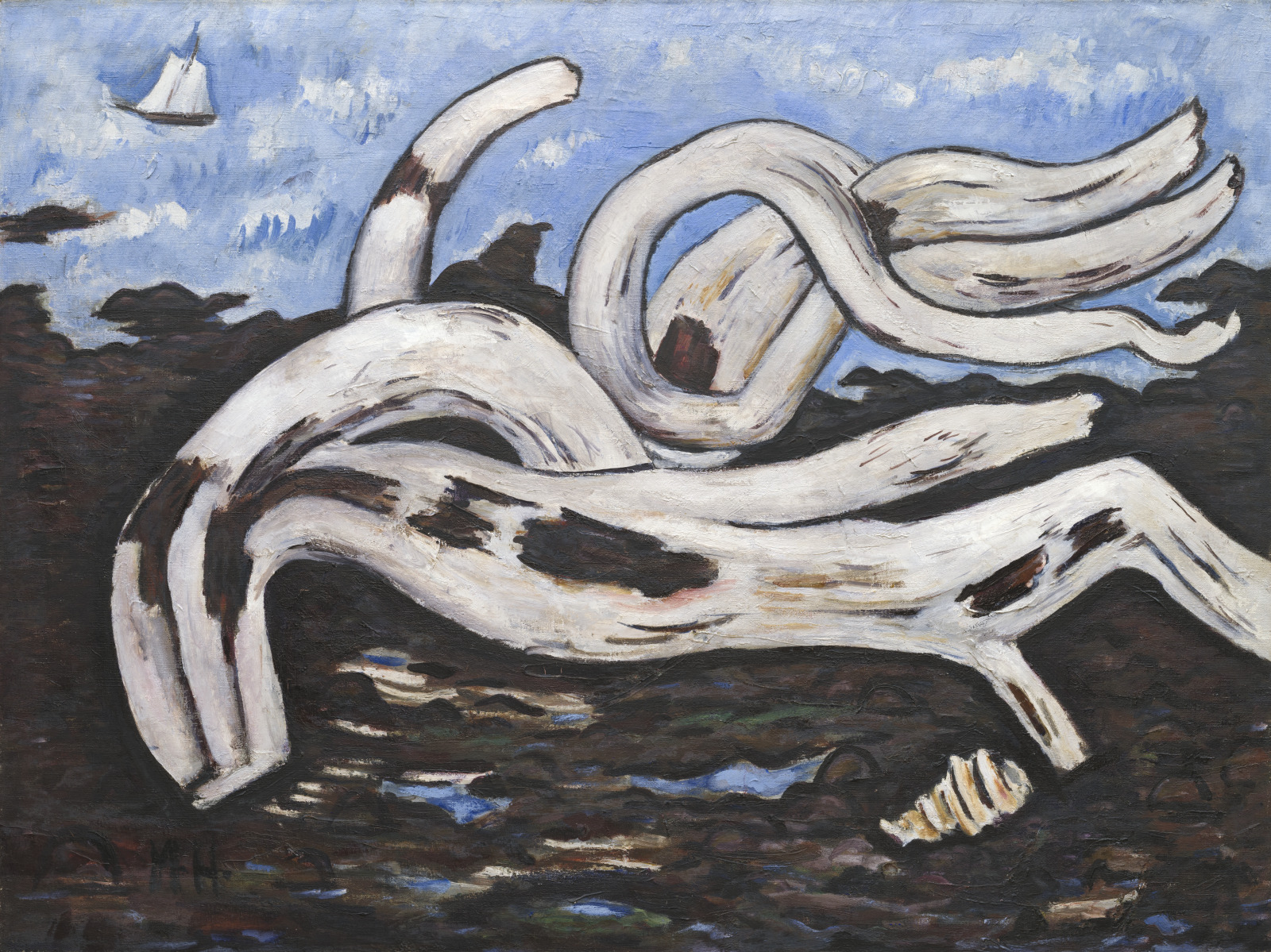
Marsden Hartley, American, 1877–1943; Driftwood on the Bagaduce, 1939–40; oil on canvas; 30 3/16 x 40 3/16 inches; Saint Louis Art Museum, Gift of Morton D. May 387:1955
The dry branches of driftwood and harsh black outlines give this image an angular and frenetic energy. Artist Marsden Hartley reduced nature to essential forms and a stark color palette. In 1937, Hartley returned to Maine, his native state and the location of the Bagaduce River represented in this painting. Hartley asserted, “I wish to declare myself the painter from Maine.” His subsequent works, like this one, explore the landscape, seas, and natural elements that characterize the state.
May 19, 2024
Miniature Two-handled Jar (amphoriskos)

Miniature Two-handled Jar (amphoriskos), mid-2nd century BC–early 1st century AD; Eastern Mediterranean, Levant, Asia, Hellenistic; glass; 5 3/16 x 1 13/16 inches; Saint Louis Art Museum, Museum Purchase 77:1921
Despite the beauty of this container, it was the contents inside that were truly valuable. Luxurious oils and sweet-smelling unguents were coveted and used by both men and women. The ancient Greeks even used olive oil as a soap by spreading it on their skin and scraping it off with a metal tool called a strigil.
Note the similarities in shape between this perfume bottle and amphoras used for storing wine. The miniature two-handled jars in this case are called amphoriskoi or “little amphoras.”
May 18, 2024
Little Briar-Rose, from the Household Tales of the Brothers Grimm
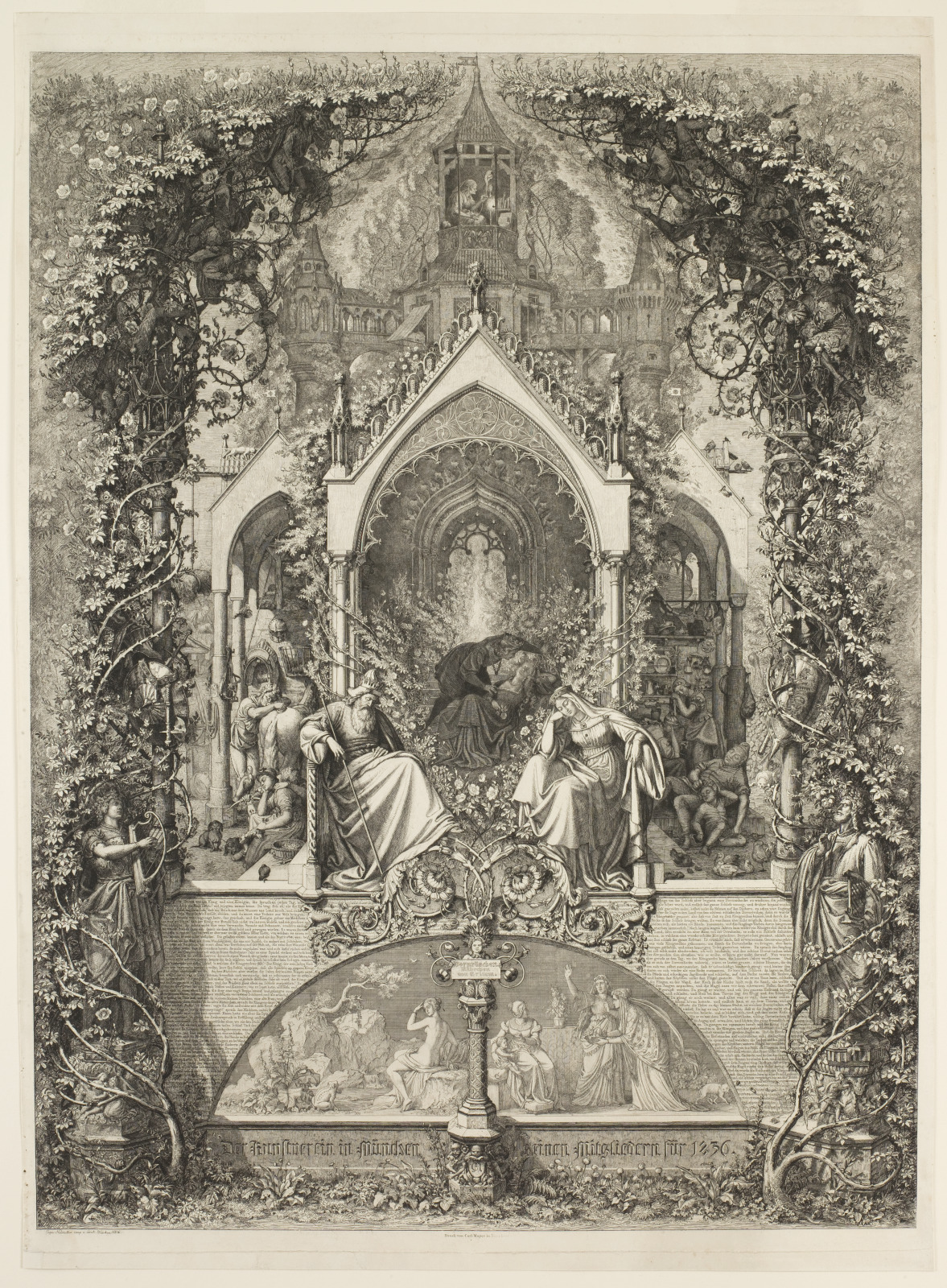
Eugen Napoleon Neureuther, German, 1806–1882; Little Briar-Rose, from the Household Tales of the Brothers Grimm, 1836; etching; 27 x 21 inches; Saint Louis Art Museum, The Sidney S. and Sadie Cohen Print Purchase Fund 1:2003
An impenetrable wall of thorns encloses a castle where everyone is asleep except for a prince poised to kiss the sleeping princess. Eugen Napoleon Neureuther’s print illustrates the Brothers Grimm fairy tale “Little Briar-Rose,” more familiar to Americans as Sleeping Beauty. The Brothers Grimm recorded their fairy tales, first published in 1812, in an effort to document Germanic folk stories. Neureuther’s print shows the growing popularity of the Brothers Grimm fairy tales. Without political unity, Germans embraced art, literature, and folklore that reflected a common cultural heritage.
May 17, 2024
Out into the Open
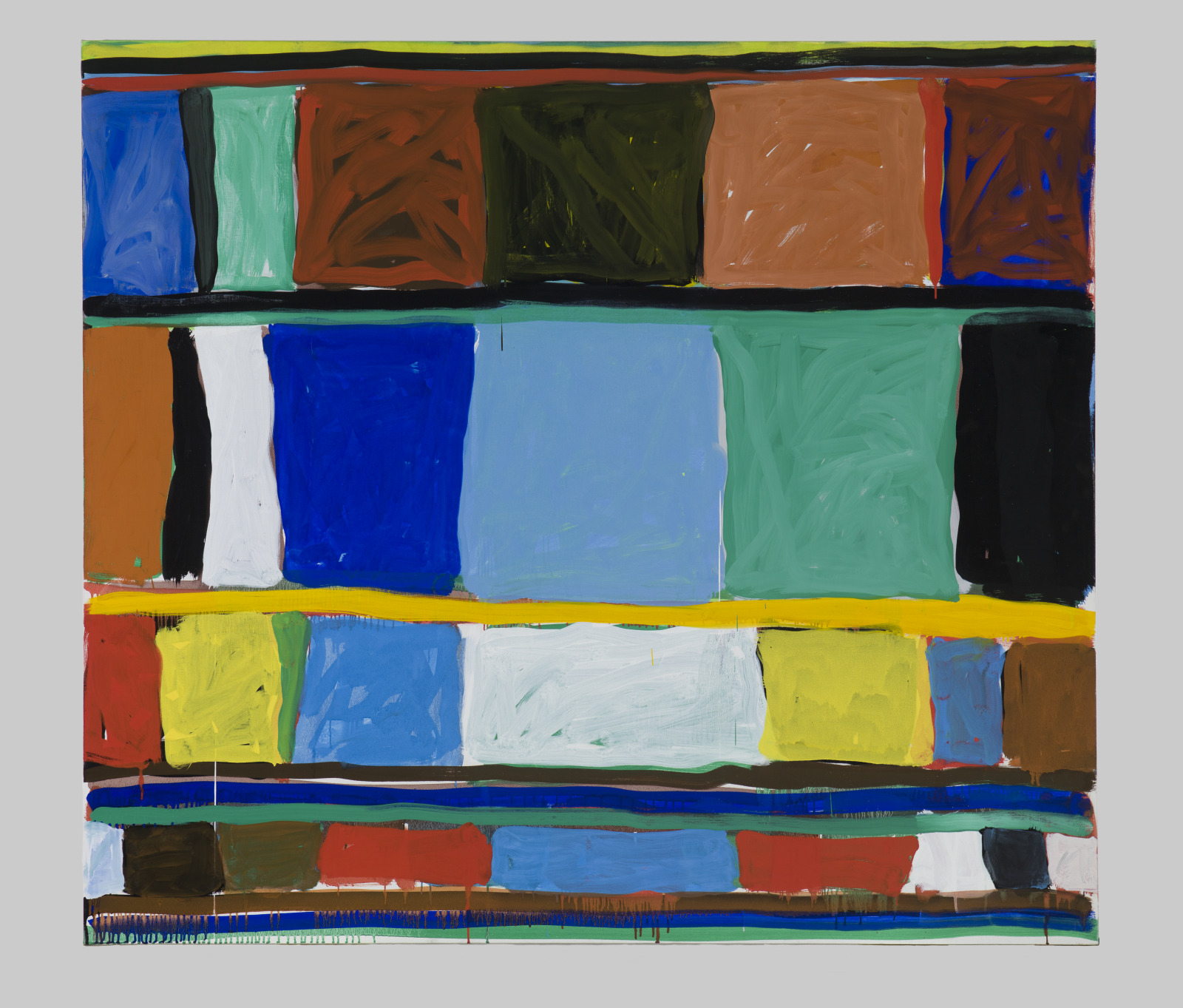
Stanley Whitney, American, born 1946; Out into the Open, 2000; acrylic on canvas; 53 1/2 x 60 inches; Saint Louis Art Museum, The Thelma and Bert Ollie Memorial Collection, Gift of Ronald and Monique Ollie 193:2017; © Lisson Gallery / Stanley Whitney
Squares of color form a loose grid—the organizing structure for all of Stanley Whitney’s work. The artist’s travels abroad and the architecture he encountered prompted this practice. Visiting Rome in 1992, he admired blocks used to construct ancient structures, and in Egypt in 1996, he marveled at the density of the pyramids. Yet, color is as important to Whitney as shape and is the primary subject matter of his work. Here, stacked blocks of bold and varied hues expand and animate the structure of the grid.
May 16, 2024
Seated Vizier
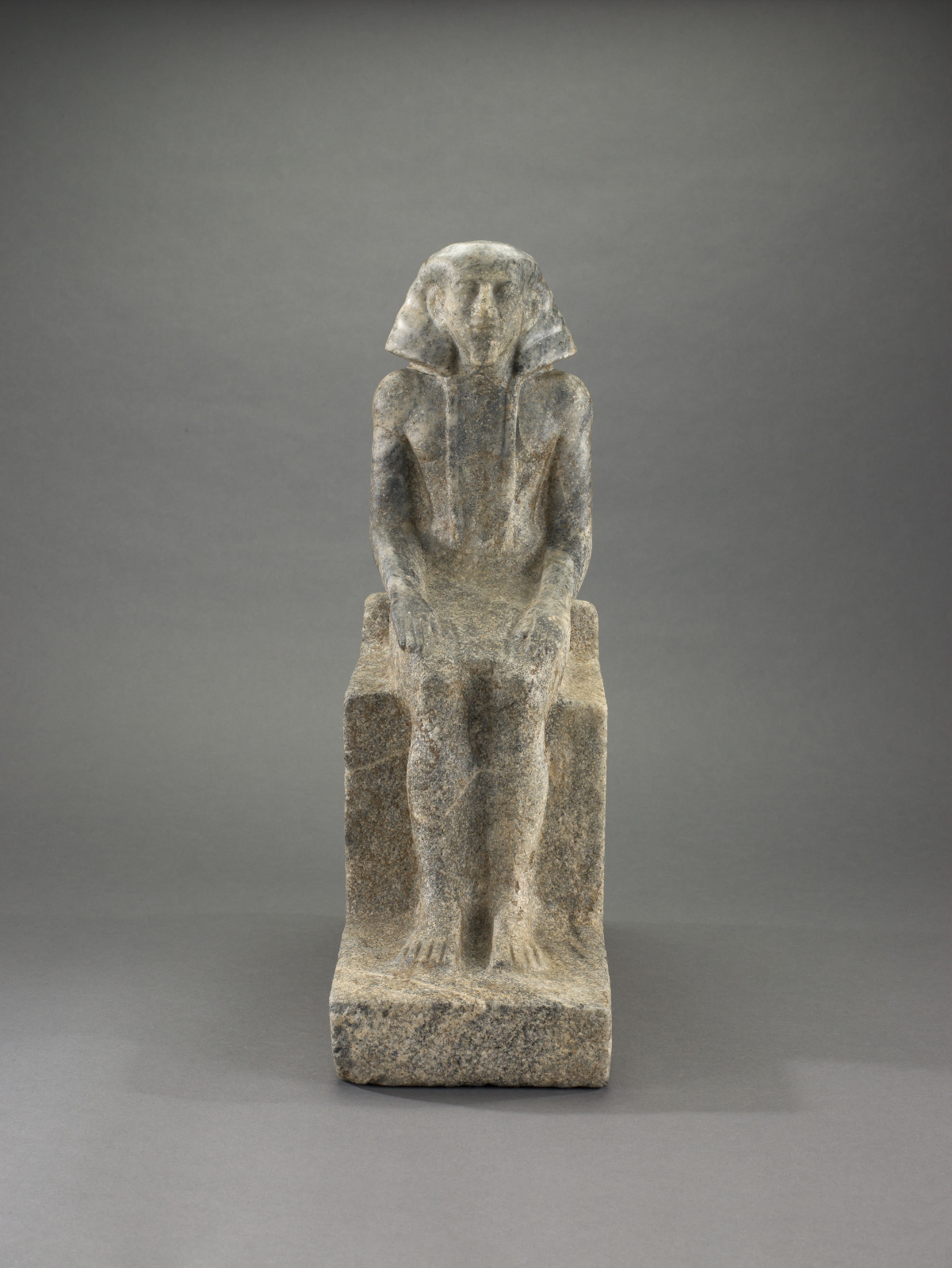
Seated Vizier, 1991–1783 BC; Egyptian, Middle Kingdom, Dynasty 12; anorthosite gneiss; 18 1/8 x 6 5/16 x 12 3/16 inches; Saint Louis Art Museum, Funds given by David and Paula Kipnis, Friends Endowment Fund, Mr. and Mrs. Christian B. Peper, an anonymous donor, and Mr. and Mrs. Lester A. Crancer Jr.; and Museum Purchase and gift of J. Lionberger Davis, an anonymous donor, and Clark and Marian Shay, by exchange 1:2007
A vizier held the most powerful position in Egypt under the Pharaoh. Similar to a secretary of state, the vizier was in charge of all civil affairs. This figure’s rank of vizier is confirmed by the cord around his neck from which his official badge or seal would have been suspended. The seal would have been tucked into his kilt for safekeeping. Carved from anorthosite gneiss (also known as Chephren diorite, the material associated with the Old Kingdom pharoah Chephren), the stone for this statue was limited to representing pharaonic or royal figures and could be used only by the royal workshop. It is unknown why this figure is unfinished.
May 15, 2024
The Reader

Edouard Manet, French, 1832–1883; The Reader, 1861; oil on canvas; 39 1/4 x 32 inches; Saint Louis Art Museum, Museum Purchase 254:1915
-
View Details
![2541915_hand2]()
Detail of Left Hand: Édouard Manet, French, 1832–1883; The Reader , 1861; oil on canvas; 39 1/4 x 32 inches; Saint Louis Art Museum, Museum Purchase 254:1915
![2541915_hand1]()
Detail of Right Hand: Édouard Manet, French, 1832–1883; The Reader , 1861; oil on canvas; 39 1/4 x 32 inches; Saint Louis Art Museum, Museum Purchase 254:1915
Edouard Manet represented his elderly friend, the painter Joseph Gall, absorbed in reading a large book. The ledge in the foreground serves as a barrier, establishing distance between the sitter and the viewer. The artist’s palette is muted and restrained. Although Manet never participated in any of the Impressionist exhibitions, he was closely associated with the group; his lively, inventive brushwork is evident in the sitter’s left hand, depicted with a few rapid and abstract brush marks.
May 13, 2024
Punch Bowl

Punch Bowl, 1695–1710; English; salt-glazed stoneware with enamel decoration; 5 5/8 x 9 1/2 inches; Saint Louis Art Museum, Funds given by the Decorative Arts Society 528:1978
By the eighteenth century, punch bowls had become fashionable symbols of hospitality and generosity. The colorful overglaze enamels on this punch bowl were probably the work of a German or Dutch glass painter, while the inclusion of Chinese figures reflected the Western fascination with the Far East. The bowl’s brown sheen and “orange peel” texture were accomplished by throwing salt into the kiln during firing. Beverages served from punch bowls demonstrated the impact of international trade: the combination of exotic spices and spirits from the East with citrus fruits and refined sugar from the West Indies were all evidence of a good host’s means and taste.
May 12, 2024
Togetherness
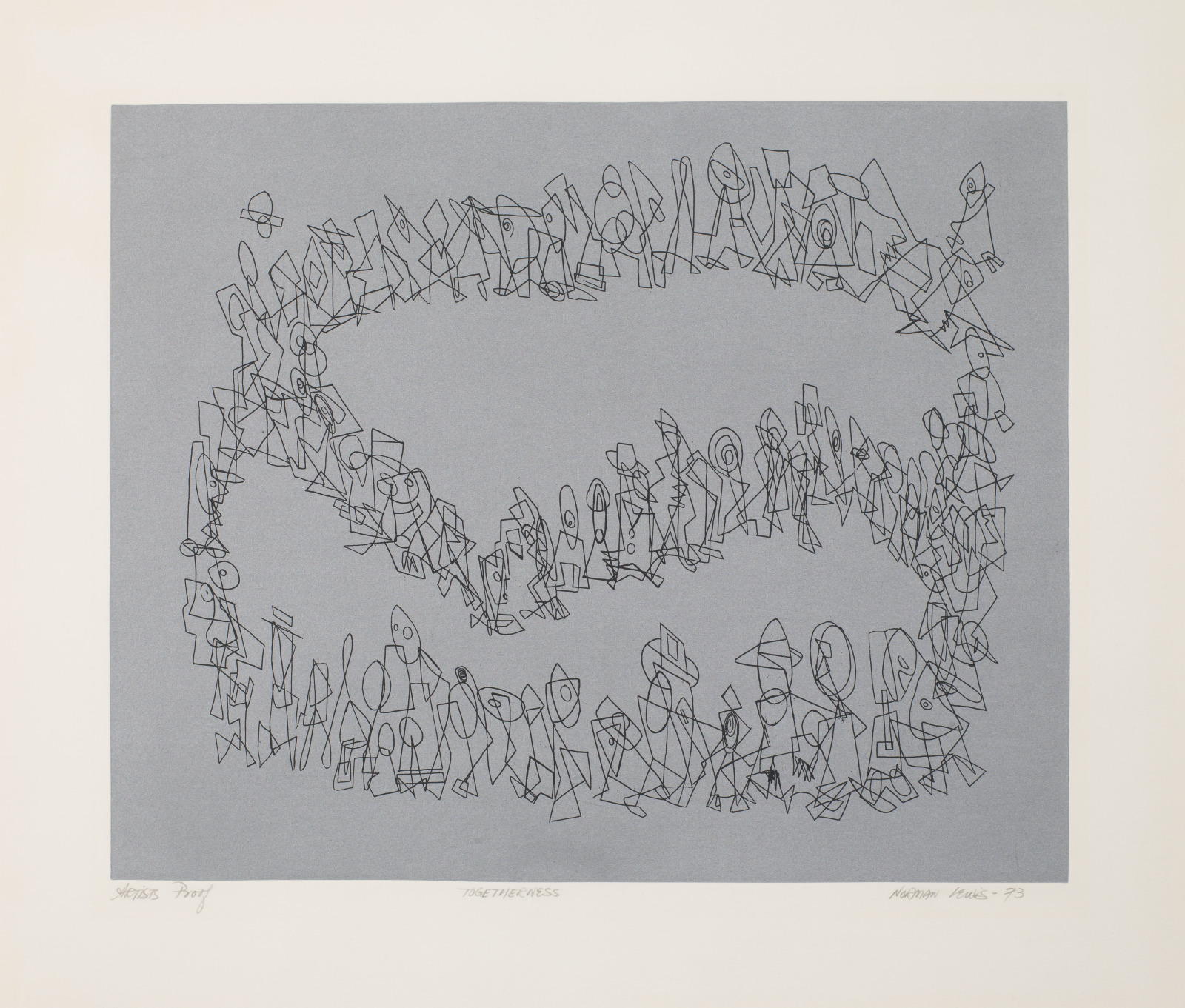
Norman Lewis, American, 1909–1979; printed by Robert Blackburn Printmaking Workshop, New York, New York, founded 1947; Togetherness, 1973; etching; plate: 12 3/4 x 15 11/16 inches, sheet: 16 13/16 x 19 11/16 inches; Saint Louis Art Museum, The Thelma and Bert Ollie Memorial Collection, Gift of Ronald and Monique Ollie 164:2017; © The Estate of Norman W. Lewis; Courtesy of Michael Rosenfeld Gallery LLC, New York, NY
Overlapping shapes, suggestive of human forms, encircle and transverse the gray ground in Togetherness. Norman Lewis, a friend of Romare Bearden, was primarily an abstract artist. Equally interested in the question of art’s place in the civil rights movement, Lewis and Bearden, along with a few others, founded the artists’ group, Spiral (1963–65). Though short-lived, the collective was an incubator for collaboration. In 1969, the pair, along with Ernest Crichlow (1914–2009), opened Cinque Gallery in New York, a space that exhibited work by African American artists and hosted educational programs.
May 11, 2024
Enthroned Virgin and Child

Enthroned Virgin and Child, 12th century; French; wood with traces of paint; 36 x 14 x 13 inches; Saint Louis Art Museum, Friends Fund 279:1952
The seated Virgin Mary assumes a rigid pose that echoes the shape of her chair, making her a throne for her son. Sermons and religious writings of the 11th and 12th centuries describe Mary as the Throne of Wisdom or the Throne of Solomon. The latter alludes to the Old Testament king known for wisdom and understood to be a precursor of Christ. During a later period, a chamber was carved into the figure’s right shoulder to serve as a container for relics. Although insect damage and structural repairs are evident throughout this work, the shallow cascading drapery folds on the chest and at the Virgin’s feet make this a superior example of French medieval sculpture.
May 10, 2024
Center Table
marquetry signed by Joseph Cremer, Luxembourgeois, active Paris, 1811–after 1878; Center Table, 1865–75; ebonized and gilded wood, wood marquetry, mother-of-pearl, and gilded bronze; 30 1/4 x 54 1/8 x 35 1/2 inches; Saint Louis Art Museum, Marjorie Wyman Endowment Fund 32:2016
A lush bouquet of flowers is the focal point of this ornamental tabletop. The floral design is composed of small pieces of wood stained with dyes and fitted together like a jigsaw puzzle. This technique, called marquetry, was a specialty of Parisian craftsman Joseph Cremer, whose signature is engraved among the scrolling stems and leaves.
A New York cabinetmaker imported the marquetry panel and incorporated it into this painted and gilded table made for an unknown American client. This extravagant object was intended for use in a formal interior to display ceramics, small bronze sculptures, or other precious artworks.
May 9, 2024
Judgment of Paris
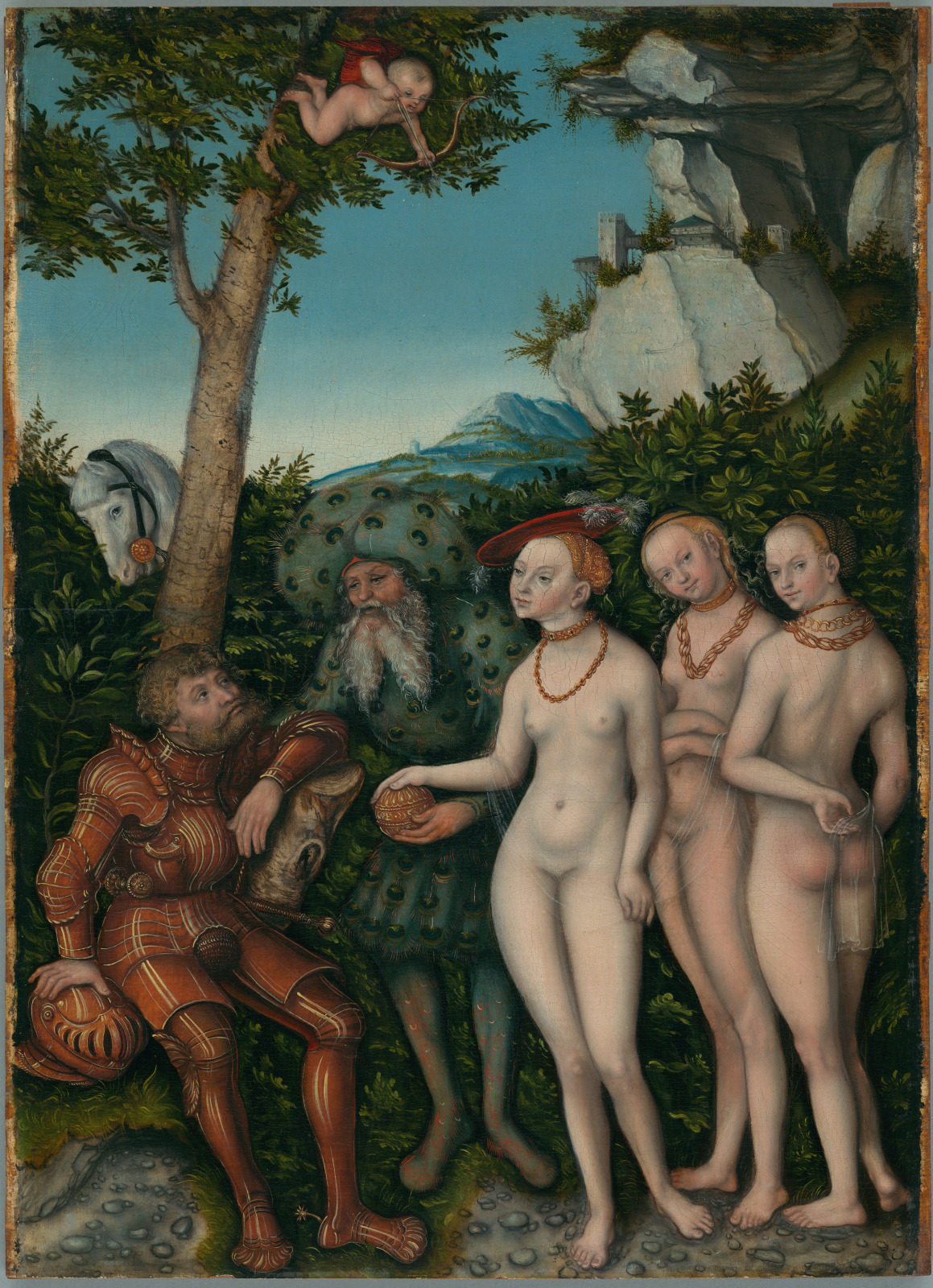
Lucas Cranach the Elder, German, 1472–1553; Judgment of Paris, 1530; oil and tempera on panel; 20 x 14 5/16 inches; Saint Louis Art Museum, Museum Purchase 28:1932
The seated knight at left has just finished judging a beauty contest. This scene comes from the ancient story of the Judgment of Paris in which the shepherd Paris is selected to referee an Olympian beauty contest. In this painting, Lucas Cranach the Elder depicted a similar later account in which Paris is a knight who goes hunting, tumbles into a bush, and dreams that the god Mercury, here clad in peacock feathers, tells him to judge the most beautiful of three goddesses.
Juno (far right) glances coyly at the viewer and bobs her diaphanous wrap while Minerva (center) flirts more demurely by tilting her head. Venus, however, claims the winner’s golden orb, exuding arrogant self-assurance in the lift of her chin and her diverted gaze. Conforming with the European Renaissance ideal of beauty, the artist represented the three goddesses with fair skin.
May 8, 2024
The Basket of Fruit
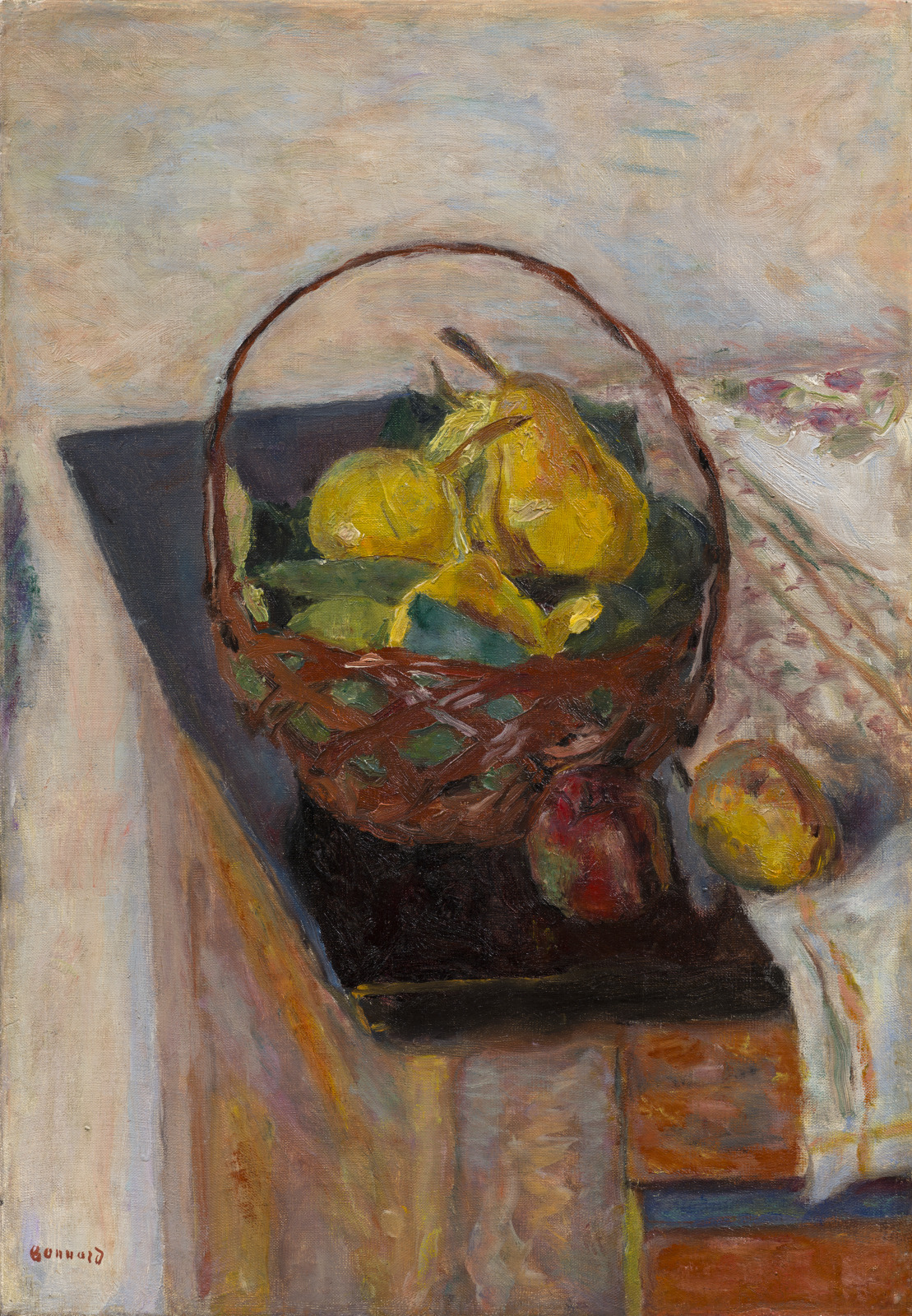
Pierre Bonnard, French, 1867–1947; The Basket of Fruit, 1922; oil on canvas; 19 7/16 × 13 1/2 inches; Saint Louis Art Museum, Gift of Mr. and Mrs. Richard K. Weil 581:1958
Pierre Bonnard represents a basket of apples and pears within a geometrical framework created by the diagonals, horizontals, and verticals of a table top. Bonnard wrestled with the complexities of white as a color throughout his career; here, the nuanced pale tones of the wall and tablecloth serve as a counterpoint to the brighter color accents of the fruit. Bonnard was a founding member of the Nabis group of painters who emphasized the importance of decorative pattern making in their compositions.
May 7, 2024
Whistle in the Form of Two Human Figures
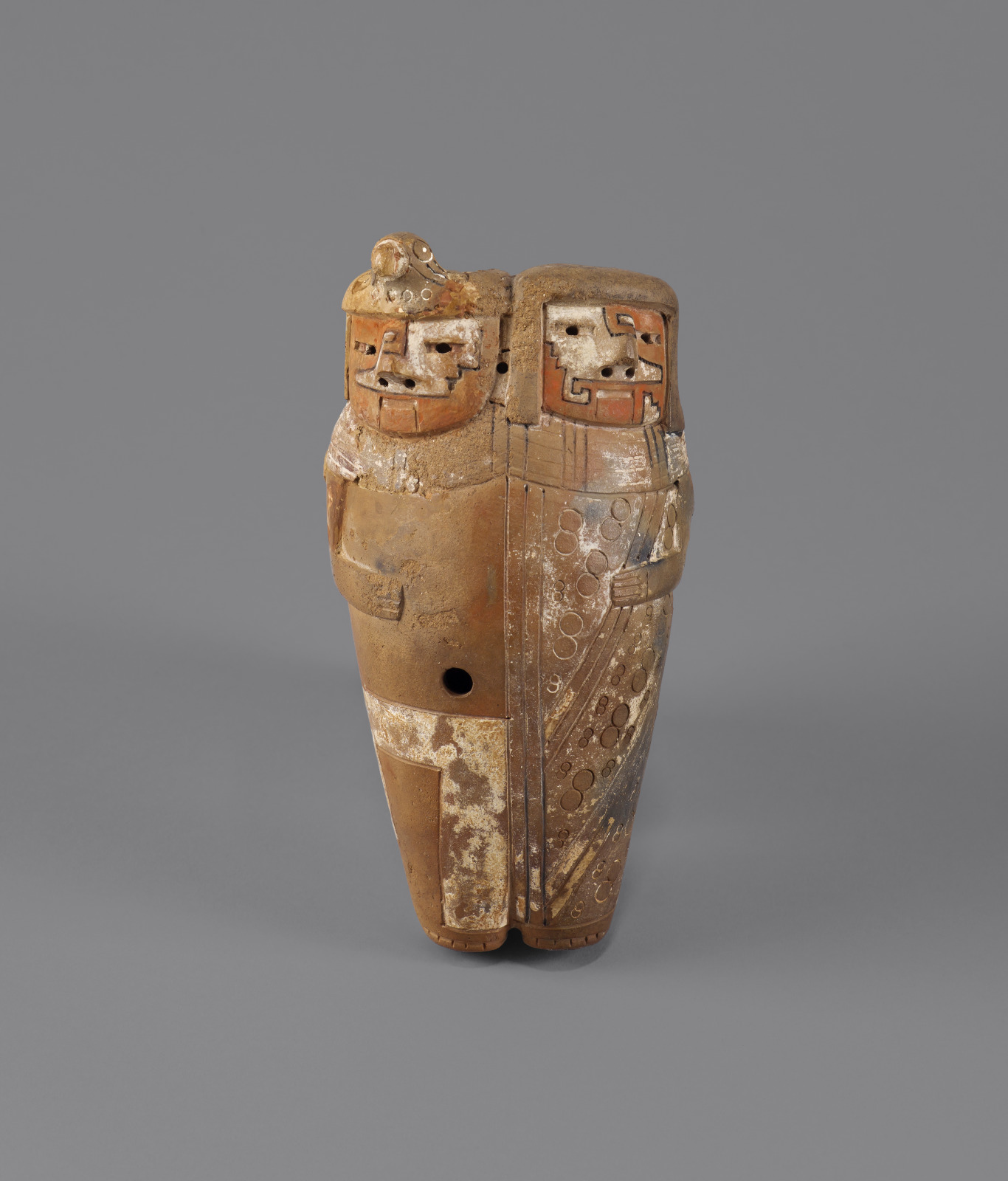
Whistle in the Form of Two Human Figures, c.700–400 BC; Tembladera, Peru, Early Horizon period; ceramic with pigment; 7 5/16 x 3 9/16 x 1 15/16 inches; Saint Louis Art Museum, Gift of Morton D. May 186:1979
In this ceramic whistle, the figures of a man (left) and a woman (right) join together to make music. These two individuals share a single body, each contributing an arm and a leg, creating a balanced whole. The male and female halves are distinguished by their clothing, which differs according to fit and decoration. Their facial painting, which may designate their ethnic affiliations, is also reminiscent of textile patterns.
May 6, 2024
Head of a Buddha
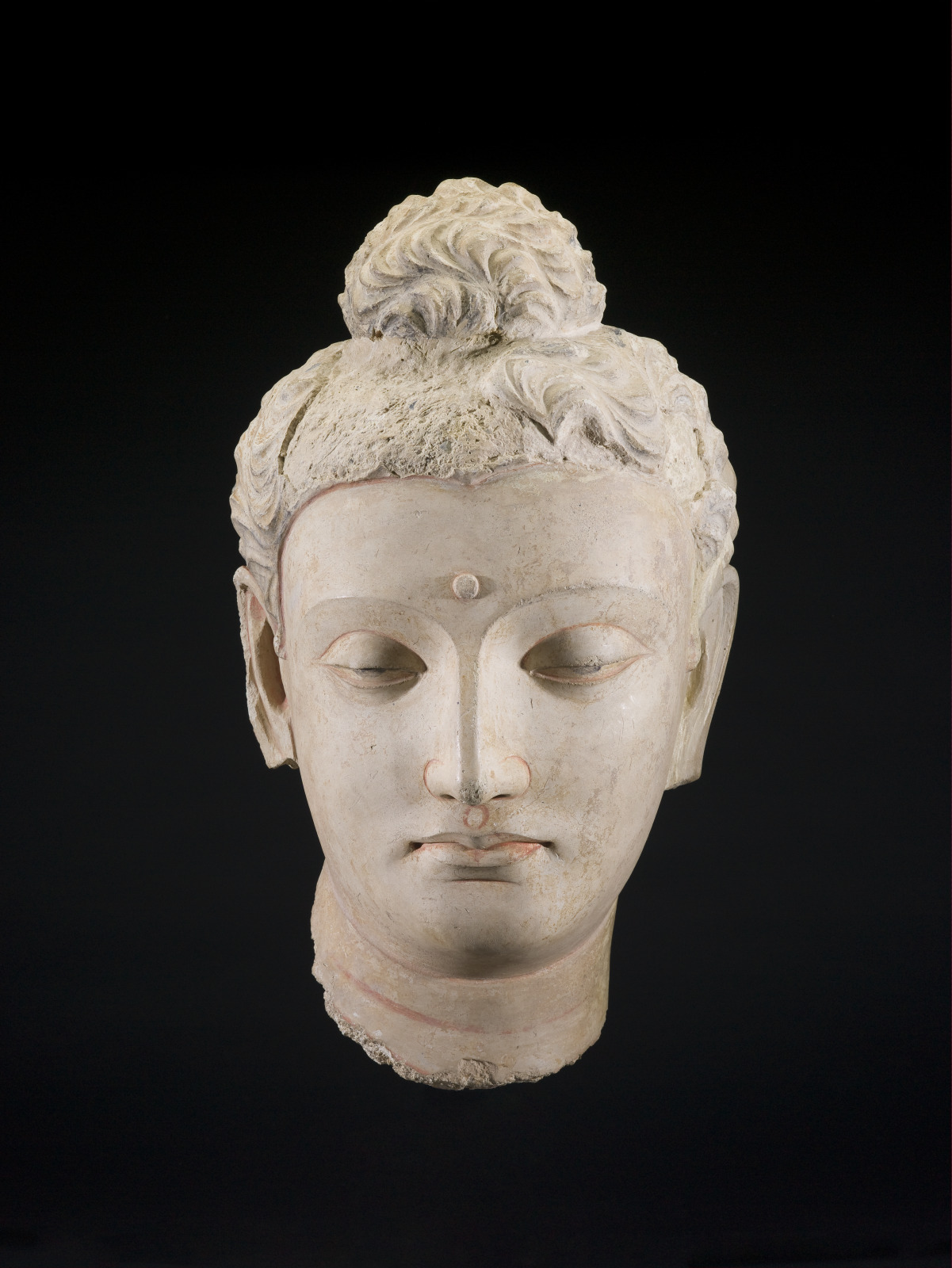
Head of a Buddha, 4th century; Gandhāran, Pakistan, probably Kidarite dynasty; stucco with traces of pigment; 18 x 11 1/2 x 10 1/2 inches; Saint Louis Art Museum, Museum Purchase 43:1931
This head of a Buddha bears the distinguishing marks of an enlightened being. Atop his head is an uṣṇīṣa, a topknot-like protuberance. In the middle of his forehead lies an ūrṇā, a circular tuft of hair. Long earlobes, stretched by weighty jewelry, reveal a former life as a prince. Additionally, the figure’s half-closed eyes represent a constant state of meditative equanimity.
The gracefully idealized features represent a mixture of influences from Greece, Rome, Persia, and Central Asia. While the hair and some other features of this head were modeled by hand, the face was shaped in a mold. Examples of such molds have been excavated at Gandharan monasteries, indicating that sculptures were produced at the sites where they were installed. Originally richly polychromed, only traces of red, blue, and black remain.
May 5, 2024
Young Men by the Sea

Max Beckmann, German, 1884–1950; Young Men by the Sea, 1943; oil on canvas; 75 3/8 x 39 1/2 inches; Saint Louis Art Museum, Museum Purchase 106:1946; © 2024 Artists Rights Society (ARS), New York
Four men gather at the seashore on a small strip of sand. Their statuesque bodies and ornamented wraps evoke figures from antiquity. The beach setting along with the flute played by one of the men and the flagon of wine in the hands of another suggest ritualistic revelry. Any sense of gaiety is dampened, however, by the painting’s somber tones and the rigid clustering of the men’s bodies within the narrow space of the canvas. The tightly crossed arms of the central figure underscore the isolation despite the improbable proximity of all four men.
In 1947, just two months before he emigrated to the United States, Max Beckmann received an anonymous poem from St. Louis about the painting. Beckmann expressed surprise at the accuracy of the interpretation in which the central figure, described as a mystic, speaks, saying, “The sea and the shore and the sky and we, shall never be bound, nor ever set free.”
May 4, 2024
Pink Roses in a Glass Vase
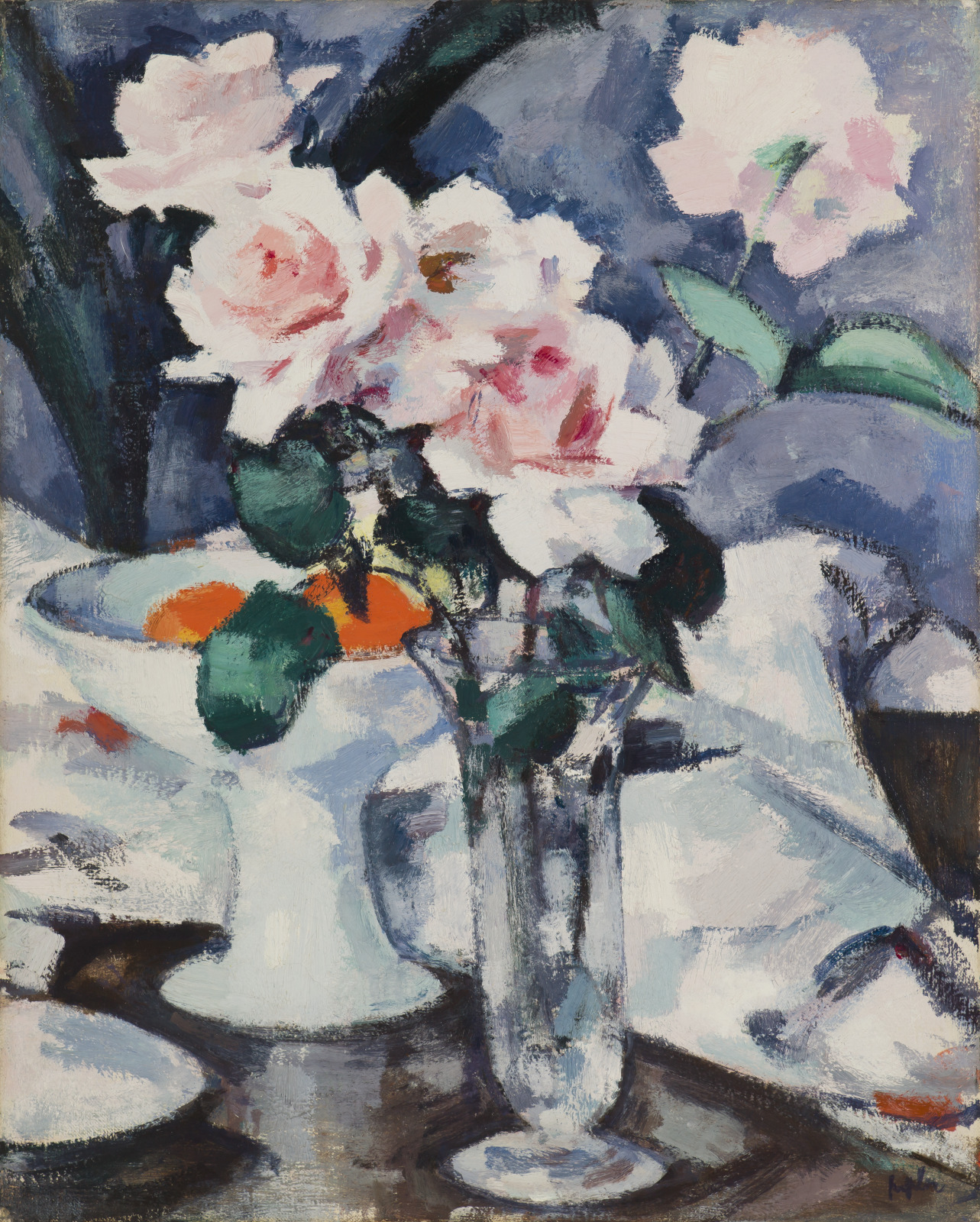
Samuel John Peploe, Scottish, 1871–1935; Pink Roses in a Glass Vase, late 1920s; oil on canvas; 28 1/2 x 24 5/8 x 3 5/8 inches; Saint Louis Art Museum, Gift from the Estate of Mary and Oliver Langenberg 1:2018
In this carefully composed still life, Samuel Peploe explores complex color combinations. The reds and pinks of roses complement green leaves while oranges vibrate against a background of blue. The artist would spend long periods positioning his objects, and here the elegant curves of a white ceramic-footed bowl echo those of a tall glass vase. Peploe was a leading figure among a group of early 20th-century painters known as the Scottish Colorists, who explored effects of vibrant color. Peploe often traveled to France and was much influenced by the colors of French avant-garde painters, such as Henri Matisse.
May 3, 2024
Saint Luke

Saint Luke, late 15th century; French; limestone with traces of paint; 39 x 21 x 17 1/2 inches; Saint Louis Art Museum, Museum Purchase 12:1933
Luke is traditionally shown as an evangelist, an author of a gospel account, accompanied by his symbol the ox. In this sculpture, Luke’s soft cap, voluminous cape, and belted robe portray him as a scholar—appropriate since he was also a physician. Additionally, Luke is the patron saint of artists, and in this work he may be painting a portrait of the Virgin Mary. The desk holds a panel with a curved top, suggestive of a painting rather than a text. Luke’s upturned gaze suggests observation as well as inspiration.
May 2, 2024
Fireplace Tiles, from the John J. Meacham House, University City, Missouri
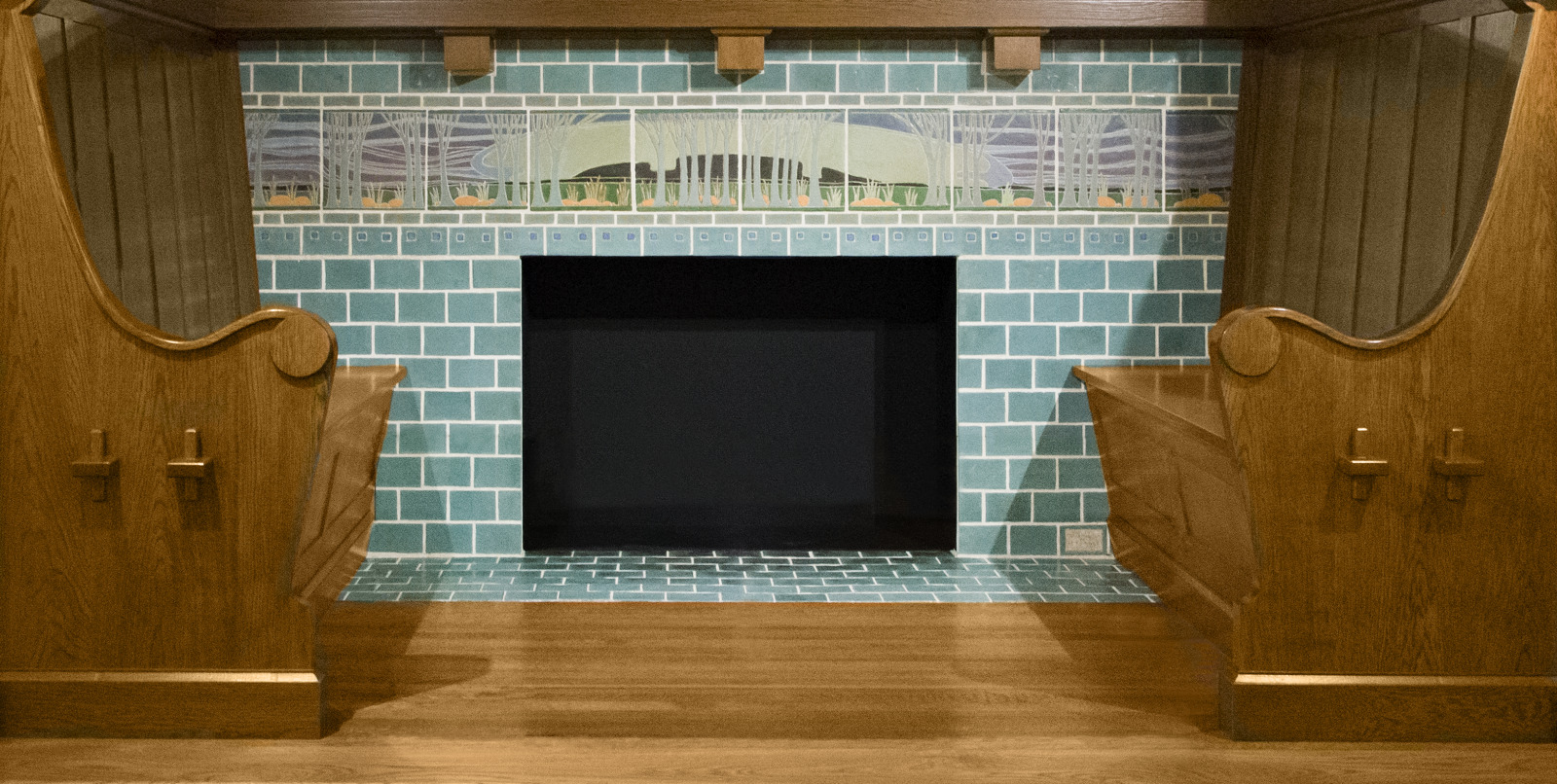
Frederick Hurten Rhead, American (born England), 1880–1942; Agnes Rhead, American (born England), born 1877; associated with the Art Academy of the American Woman's League, University City, Missouri, active 1909–1911; Fireplace Tiles, from the John J. Meacham House, University City, Missouri, 1911; glazed earthenware; assembled: 50 x 95 1/2 inches; Saint Louis Art Museum, Museum Shop Fund, Friends Fund, gift of the Norman Family in loving memory of Isaac and Elva Norman, and funds given by Mr. and Mrs. L. Max Lippman Jr. 63:2001
This fireplace features a panoramic landscape of flowing lines and glowing colors. The scene was made from incised glazed tiles surrounded by a blue-green matte tile border. Agnes and Frederick Rhead created this set of tiles for the home of John J. Meacham in University City, Missouri. The expansive landscape is depicted at dusk, with a cloud-filled sky beyond a screen of trees, rocks, and plants. The tiles were installed in Meacham’s living room inglenook, a built-in seating area surrounding the hearth, which was a popular feature of Arts and Crafts homes from the 1870s until the 1920s.
The graphic clarity and matte-textured glaze palette seen in these tiles are also hallmarks of Arts and Crafts design. In 1910 and 1911 Frederick Hurten Rhead, who had trained in England, joined the internationally renowned ceramic faculty of the Art Academy of the American Woman’s League in University City. He taught and worked at the school, at times with his wife Agnes, also a trained artist. The wooden benches visible in this image are reproductions of originals found in the Meacham house.
May 1, 2024
Setting Sun of Sacramento Valley
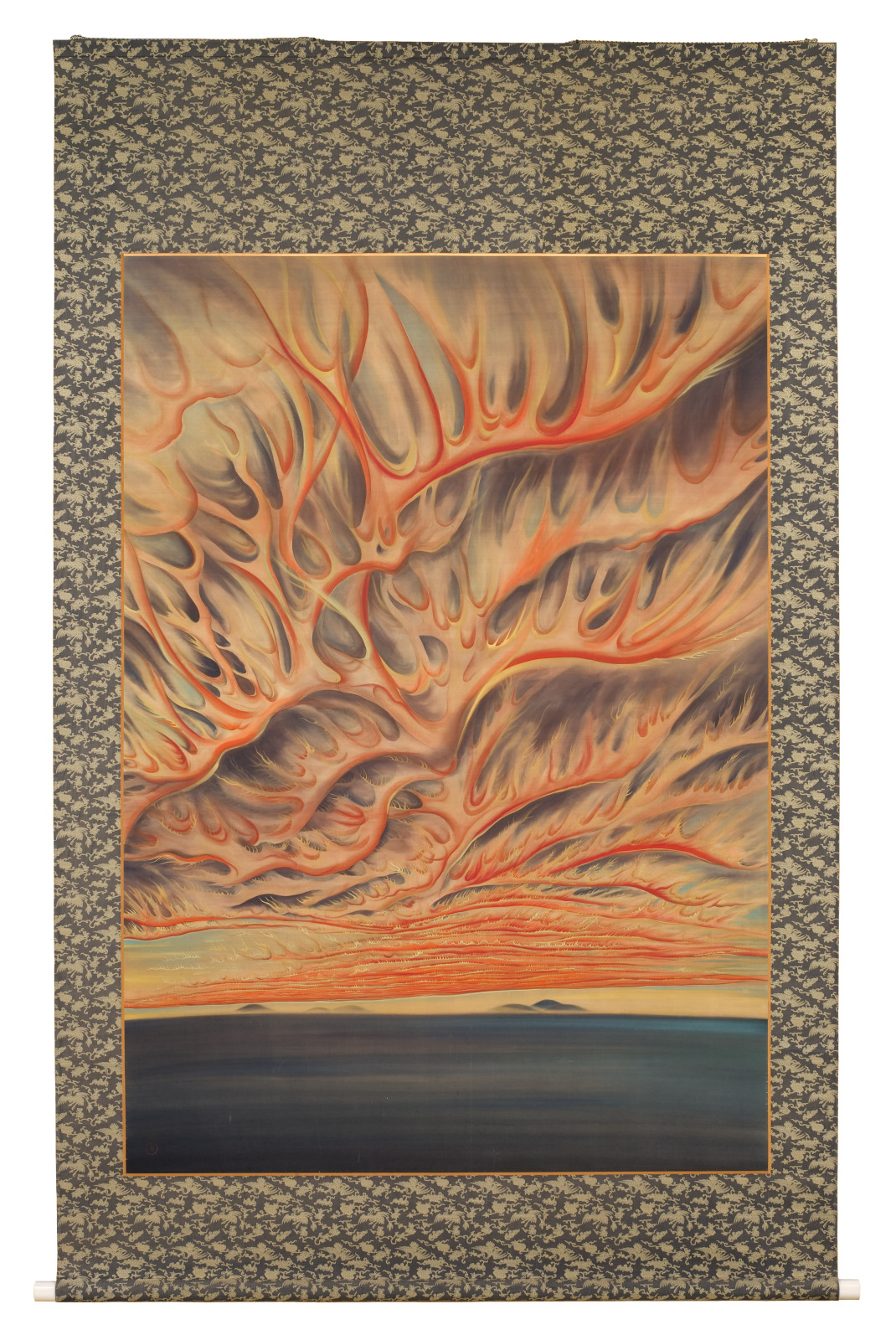
Chiura Obata, American (born Japan), 1885–1975; Setting Sun of Sacramento Valley, 1922; hanging scroll: ink and color on silk; image: 80 7/8 x 56 3/4 inches, scroll: 111 5/8 x 72 7/8 inches; Saint Louis Art Museum, Gift of Mr. and Mrs. Gyo Obata 187:2011
This monumental painting depicts a glowing California sunset. In 1909, Chiura Obata worked in the hops fields of the Sacramento Valley, where he was first introduced to the dramatic natural landscape he later represented in this painting. Most of the composition is devoted to the dusk sky, which is energized by flame-like clouds over a blue-tinged landscape. The slightly domed horizon emphasizes not only the vast distance between the viewer and the sunset but also the immense geographical span of the Sacramento Valley, whose terrain encompasses all or parts of 10 counties.
This painting, arguably the most well-known by the artist, resonates with the work of a close contemporary, the American Georgia O’Keeffe (1887–1986), who shared an interest in depicting desolate landscapes of the American West.
April 29, 2024
Domenica delle Cascine, la Cecca di Pratolino, and Pietro Moro
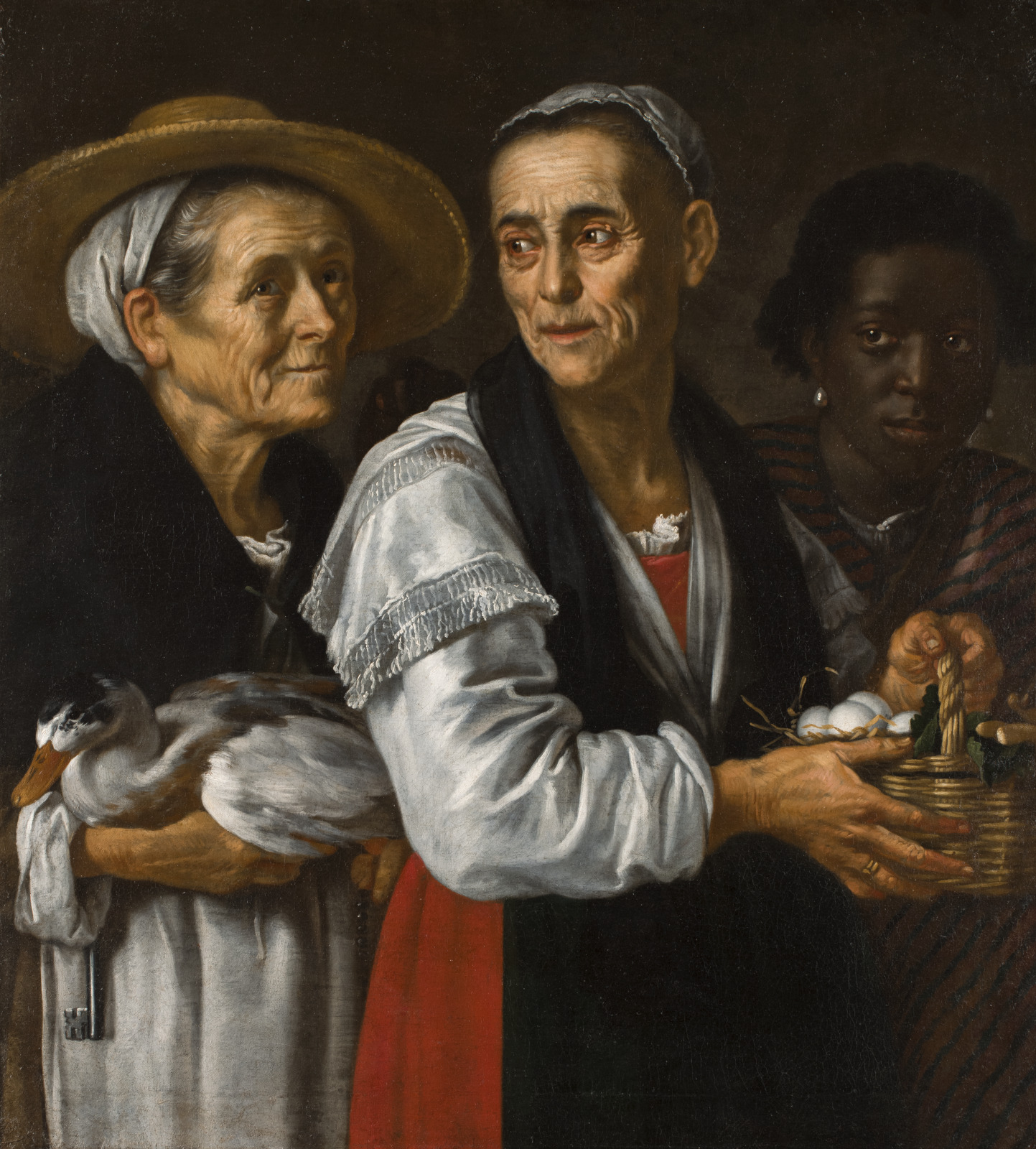
Justus Suttermans, Flemish (active Italy), 1597–1681; Domenica delle Cascine, la Cecca di Pratolino, and Pietro Moro, 1634; oil on canvas; 36 x 32 5/8 inches; Saint Louis Art Museum, Funds given by Opal and Arthur H. Meyer Jr., and Mr. and Mrs. John Peters MacCarthy 44:2021
Here, Justus Suttermans carefully portrayed three servants from the household of the ruling Medici family of Florence. Detailed wisps of hair, observant treatment of wrinkles and skin tones, and garments of varied textures and patterns present them as specific individuals: Domenica delle Cascine (at left), la Cecca di Pratolino (at center), and Pietro Moro (at right). In a time when portraiture signaled the power and status of those depicted, this painting stands out as a rare representation of those who served.
In the Medici court, the two women provided food. One of them is recorded as performing as a jester. Pietro Moro’s status and role are less understood today and research continues. It is almost certain that he was enslaved when he arrived in Florence. The painting was made at Medici command, referred to in a letter as a recreation. None of the three figures were in any position to give consent to be painted. Their representations are defined by the power structures of their time. They exemplify portraiture’s heralded ability to make the absent present.
April 28, 2024
Incense Burner in the Form of a Bird
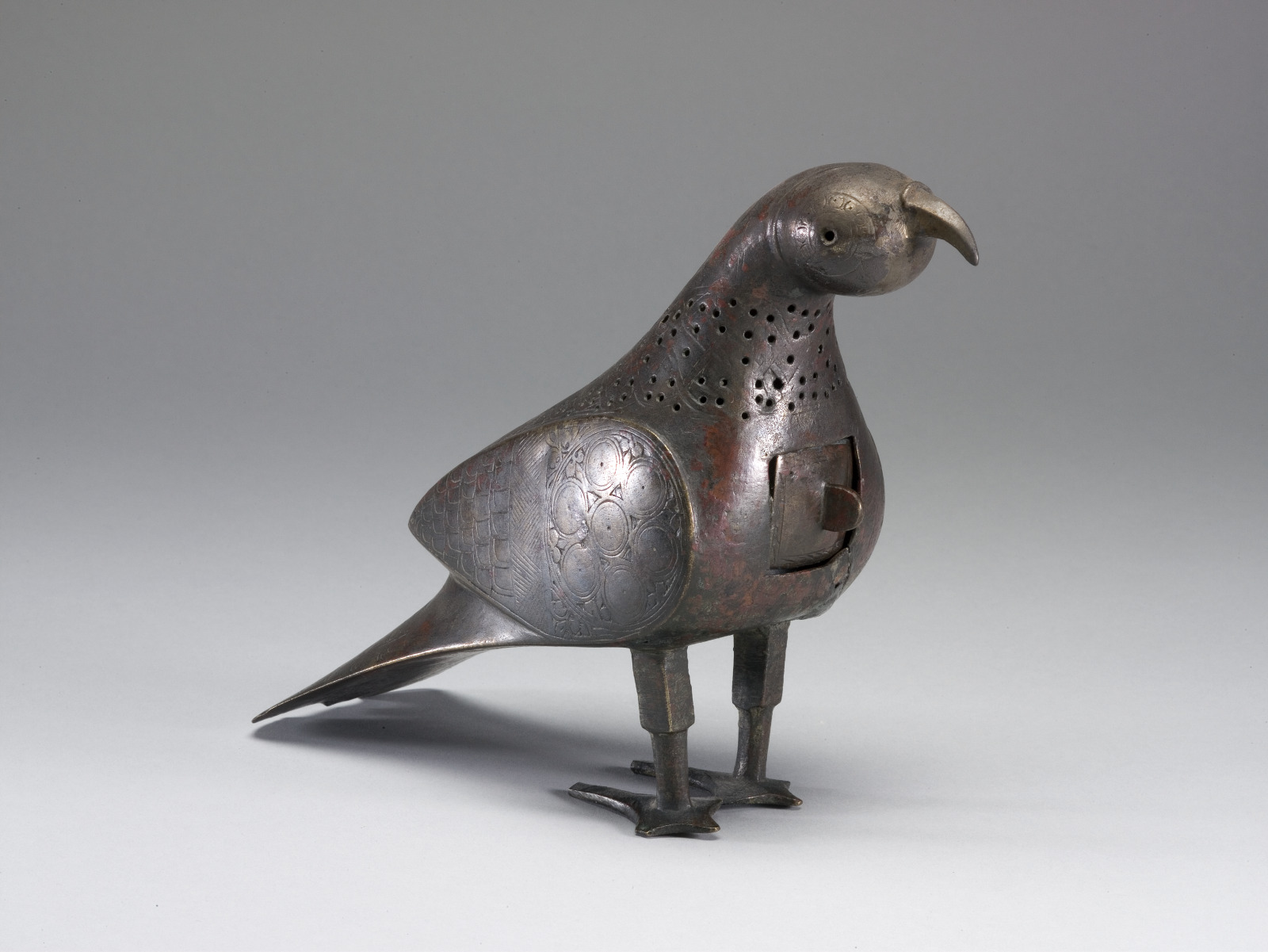
Incense Burner in the Form of a Bird, 12th century; Persian, Iran, Seljuk period; bronze; 7 1/8 x 3 3/8 x 8 3/4 inches; Saint Louis Art Museum, Eliza McMillan Trust 245:1952
This life-sized sculpture of a bird is an incense burner. A small drawer within its chest opens to hold incense. Once lit, the smoke would emanate from pierced holes in its neck. The incised patterns on the wings are a mixture of realistic feathers and interlocking circles, a combination that stems from an aesthetic appreciation of geometric patterns rather than from a desire to avoid lifelike realism. Before the late 18th century, all Islamic art objects were functional in some way.
April 27, 2024
View on the Upper Mississippi

John Frederick Kensett, American, 1816–1872; View on the Upper Mississippi, 1855; oil on canvas; 18 1/2 x 30 inches; Saint Louis Art Museum, Eliza McMillan Trust 22:1950
-
View Details
![221950det1]()
John Frederick Kensett, American, 1816–1872; View on the Upper Mississippi(detail), 1855; oil on canvas; 18 1/2 x 30 inches; Saint Louis Art Museum, Eliza McMillan Trust 22:1950
![221950det2]()
John Frederick Kensett, American, 1816–1872; View on the Upper Mississippi(detail), 1855; oil on canvas; 18 1/2 x 30 inches; Saint Louis Art Museum, Eliza McMillan Trust 22:1950
An expanse of glassy, unruffled water and silvery evening light evoke a seemingly impenetrable stillness. Though a group of Native Americans push their canoes off a sandy spit of land, they are dwarfed by the massive scale of the outcropping behind them. Their movements carry no sound, and only the birds in the foreground appear capable of breaking the silence.
This landscape depicts Lake Pepin, located along the widest part of the Mississippi River at a point that is now south of Minneapolis, Minnesota. The artist, John Frederick Kensett, made sketches of the site when he accompanied St. Louis businessman Pierre Chouteau Jr. on one of his trading expeditions.
April 26, 2024
Travelers Awaiting a Ferry

Philips Wouwerman, Dutch, 1619–1668; Travelers Awaiting a Ferry, 1649; oil on canvas; 26 x 32 3/4 inches; Saint Louis Art Museum, Gift of an anonymous donor 159:1998
The juxtaposition of steep mountains and peaceful river, combined with the foggy mist above the water, creates a mood of mystery and nostalgia. Philips Wouwermans has created a fanciful place. We know that such topography does not exist in the regions in which the artist worked. His evocative rendering combines the careful structure of Italian landscapes with precise markers to indicate specific depths (here suggested by different rocky outcroppings) with the atmosphere of an alpine scene. The white horse, seen in profile, occurs frequently in Wouwermans’s landscapes. The artist’s abbreviated name (PHILS.W.) and the date are inscribed on the lower left side of the painting.
April 25, 2024
Bust of Zeus Serapis
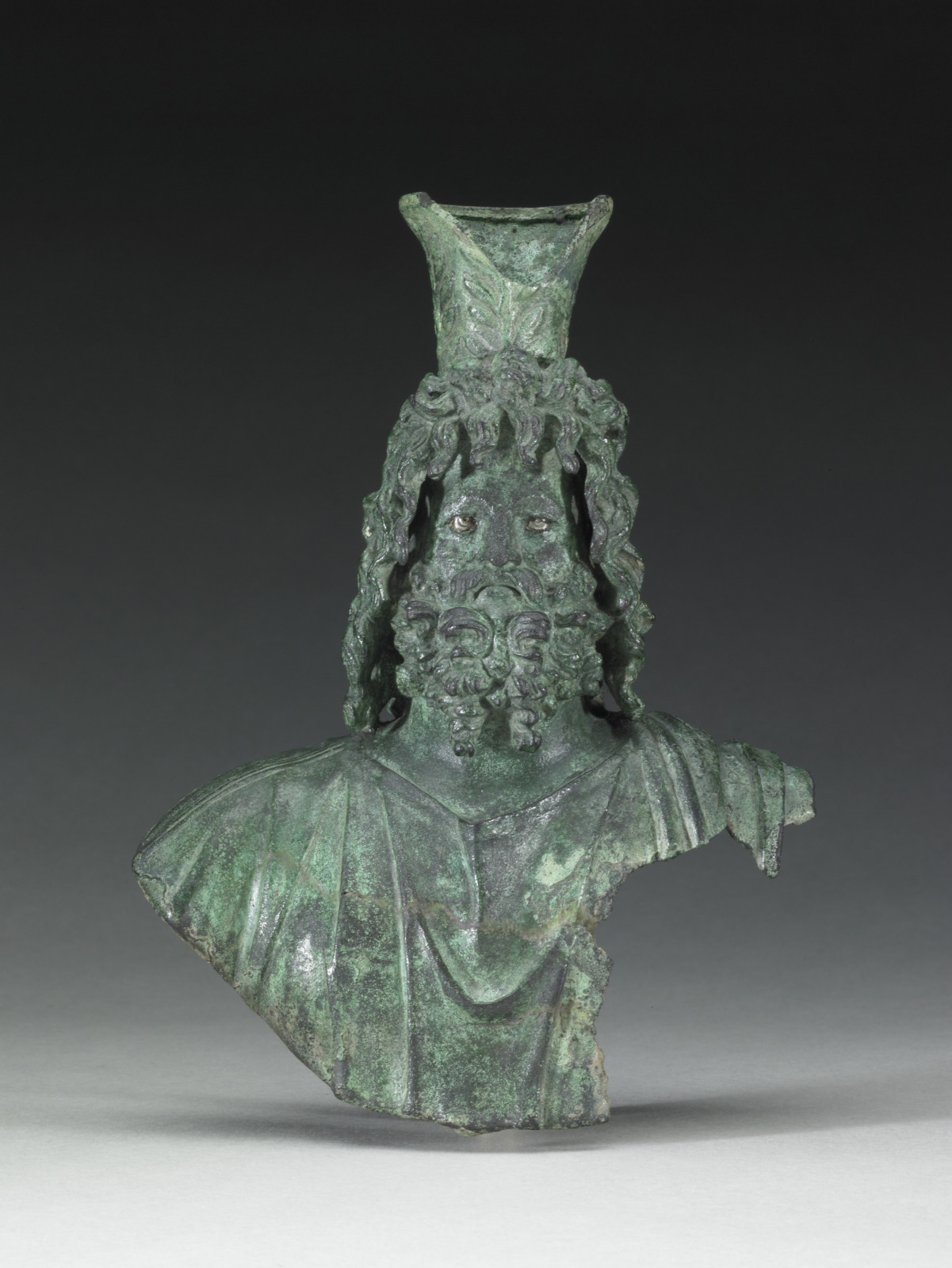
Bust of Zeus Serapis, mid-2nd–mid-3rd century; Roman, Imperial period; bronze with silver inlay; 6 3/4 x 5 1/8 x 1 7/8 inches; Saint Louis Art Museum, Museum Purchase 69:1923
As today, individuals in antiquity found ways to express their devotion to the gods. Whether maintaining a small altar at home for the worship of a particular deity, or presenting gifts called votives, at sanctuaries or graves, many of the objects that survive from antiquity served a ritual function.
This bronze bust represents Zeus Serapis—a hybrid deity. The pharaohs of Egypt introduced Zeus Serapis in the 3rd century BC to unify competing Greek and Egyptian pantheons.
April 24, 2024
Dish with Design of Foliate Motifs

Dish with Design of Foliate Motifs, c.1600; Indian, Mughal dynasty; mother-of-pearl over wood core; diameter: 17 3/4 inches; Saint Louis Art Museum, Edwin and Betty Greenfield Grossman Endowment 432:2018
This shallow dish has a thin teakwood body covered on both sides with shaped plaques of mother-of-pearl, which come from the green turban shell (Turbo marmoratus). There may also be inserts of one or two other marine shells, namely the button shell (Trochus niloticus) or the pearl oyster (Pinctada margaritifera), or both. The main body of the dish is decorated with a central multi-petaled flower head with radiating small-shaped plaques of increasing size. These radiating shapes are framed by a narrow circular border around the edge of the bowl. The concave sides are decorated with vertical plaques following the shape of the dish with a narrow undulating rim. Gujarat, in western India, was the center for artisanal mother-of-pearl production during the 16th and 17th centuries. The allure of this material lay in its versatility, its strength, and above all in its lustrous and beautiful iridescent surface, which reflected light and varied color. Objects covered in mother-of-pearl were given to foreign rulers as diplomatic gifts and were exported to the east coast of Africa, Turkey, and Europe.
Gujarat, in western India, was the center for artisanal mother-of-pearl production during the 16th and 17th centuries. The allure of this material lay in its versatility, its strength, and above all in its lustrous and beautiful iridescent surface, which reflected light and varied color. Objects covered in mother-of-pearl were given to foreign rulers as diplomatic gifts and were exported to the east coast of Africa, Turkey, and Europe.
April 23, 2024
Dressing Table and Mirror

made by Herter Brothers, New York, New York, active 1864–1906; Dressing Table and Mirror, 1879; ebonized cherry, holly and purpleheart marquetry, padouk, marble, brass, mirrored glass, and gilding; 85 1/4 x 78 x 24 3/8 inches; Saint Louis Art Museum, Funds given by Mrs. Harold Baer, Mrs. Ernest Eddy in memory of William P. Williams, the Weiss Foundation in memory of Edith N. Weiss, Mr. and Mrs. L. K. Ayers, and the Decorative Arts Society 183:1977.2a,b
This dressing table is from a large suite of bedroom furniture in the Museum’s collection, made for the New York City mansion of Arabella Worsham Huntington. Composed of elemental geometric forms with two-dimensional ornament and a reduced color palette, the dressing table exemplifies the late-nineteenth-century taste for Asian art and design. Light-colored patterns of flowering vines set against black-painted surfaces echo the composition and coloring of Japanese prints and lacquer. The floral and foliate designs that cover the surface are executed in marquetry, a technique that uses small pieces of colored woods to create pictorial images. The rounded corners of the marble and the upper drawers, adapted from Chinese furniture, along with the molded contours of the legs and rails that separate the drawers, lighten the visual weight of each element.
April 22, 2024
Study of a Cedar
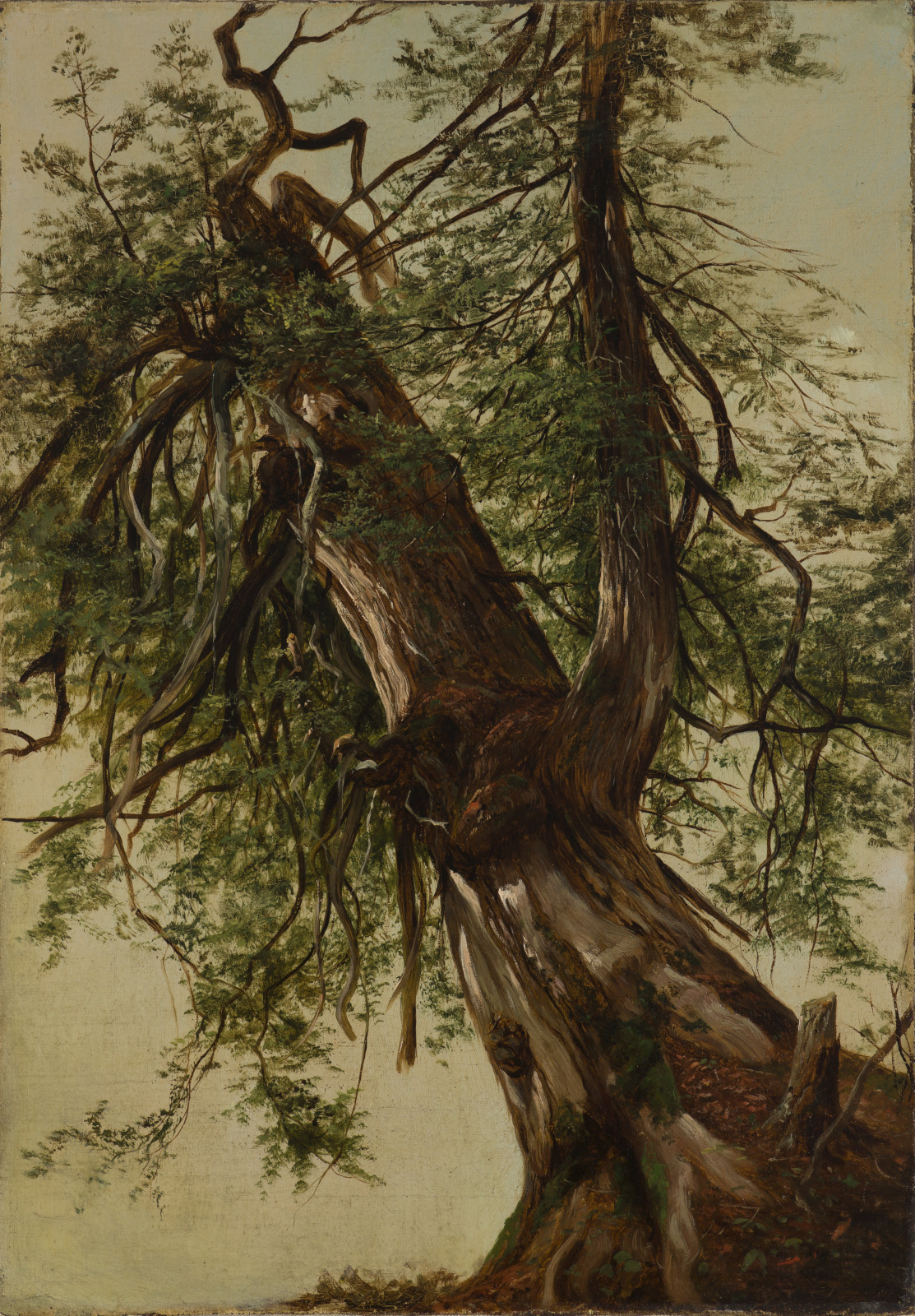
David Johnson, American, 1827–1908; Study of a Cedar, c.1867; oil on canvas; 20 x 14 inches; Saint Louis Art Museum, James D. Burke Art Acquisition Fund 105:2017
A massive cedar tree, scarred by peeling bark and bristling with ungainly branches, rises dramatically across this small canvas. The intimate perspective and closely observed details reflect ideas promoted by John Ruskin, a British critic who championed botanical and geological specificity.
Johnson described the process of making paintings such as Study of a Cedar in Ruskinian terms: “[it is] an out-door study, painted entirely upon the spot, and is, as far as I was able to make it so, a literal portrait of the place. I placed my easel there and went to work earnestly to find out how Dame Nature made things, divesting myself of all thoughts of picture or Studio effects.”
On Fridays in April, Object of the Day will feature artwork from the collection to celebrate Earth Month.
Today’s Object of the Day is featured in our on-demand virtual program Art Speaks: American Artists’ Fascination with Nature, 1830-1870
April 21, 2024
Sallet Helmet

Sallet Helmet, c.1480; probably Austrian; steel, iron, and leather; 9 3/4 x 9 x 15 5/16 inches; Saint Louis Art Museum, Museum Purchase 58:1939
Characterized by their horizontal profile and long pointed tail, helmets known as sallets cover the upper half of the face. They were often supplemented with a bevor, a separate guard that protected the chin and throat. This helmet was beaten from one large sheet of metal, requiring great skill and finesse to hammer the smooth sweeping form. The pristine curve of its surface deflects weapons and, pierced with a vision slit, the sallet exudes a mysterious, masklike presence. Although a helmet was only one element of a knight’s armor, it was the crowning glory of military garb, and its form, construction, and decoration provide clues to its use, date, and place of manufacture.
April 20, 2024
Jar with Design of Flowering Plants, Grasses, and Insects

Jar with Design of Flowering Plants, Grasses, and Insects, late 17th century; Japanese, Edo period; Arita ware, Ko-Imari type; porcelain with overglaze enamel decoration; 11 3/4 x 10 1/8 inches; Saint Louis Art Museum, Funds given by Mr. and Mrs. Arthur B. Baer 75:1968
When they were brought to Europe bright iron-red enameled wares like this one provided a refreshing change from the blue-and-white porcelains that had been exported there in such great quantity from seventeenth-century Japan. This type of jar, with its well-composed, sedate floral motifs, was far rarer than the countless blue-and-whites and stood in sharp contrast to the highly elaborate surfaces of other wares. The dense, red interlocking lattice and wave patterns of this broad-shouldered pot frame four other panels of plant life rendered in colors of pale straw, green, and blue. The treatment of the pictorial vignettes is more painterly than would be found on other export wares.
April 19, 2024
Puppet

Bamana artist, Mali; Puppet, 1960s; wood, pigment, animal hair, metal, cloth, fiber; 24 x 36 1/2 inches; Saint Louis Art Museum, Partial gift of Thomas Alexander and Museum Shop Fund 189:1994
This puppet is constructed with moveable joints, allowing both the horse and rider to strike a variety of gestures and poses. Puppeteers work from behind a cloth screen to operate the puppets, up to five feet from the ground. Part of a genre known as “the animals come forth” (sogo bò), this puppet was used to entertain children and young adults. Sogo bò is a tradition shared among several cultural groups in the Ségou Region of central Mali. This type of puppetry, which originated prior to 1890, is particularly suited to inventiveness and change, and continues to evolve through new performances into the present day. Secular in character, the performances are owned and enacted by members of the kamalen ton, the young men’s society.
April 18, 2024
Eyes in the Forest

Odilon Redon, French, 1840–1916; Eyes in the Forest, 1882; charcoal on pale brown paper; sheet: 13 1/4 x 10 5/8 inches; Saint Louis Art Museum, Gift of Mr. and Mrs. Morton D. May 234:1959
A pair of disembodied eyes float in the middle of a forest, gazing out toward something beyond the viewer’s line of sight. The naturalistic depiction of the tree on the right contrasts dramatically with the apparition of the eyeballs, which seem to emanate a glowing light that illuminates the forest clearing. With these strange contrasts, Odilon Redon transformed an otherwise familiar landscape into an uncanny realm.
Redon had been fascinated by scientific advancements that occurred during his lifetime, including botany, microbiology, and evolutionary biology. He was particularly interested in studies of optics in the 1870s, specifically the structure of the human eye and the sense of sight. At the same time, he also explored the more subjective side of vision: dreams, hallucinations, and seeing things in the mind’s eye. Thus, eyes appear frequently in Redon’s works, playing upon ideas of both the visible and the invisible.
April 17, 2024
Hanging Made from Pieced Fragments of a Priest’s Robe (kāṣāya) with Design of the “Thousand Buddhas” Motif
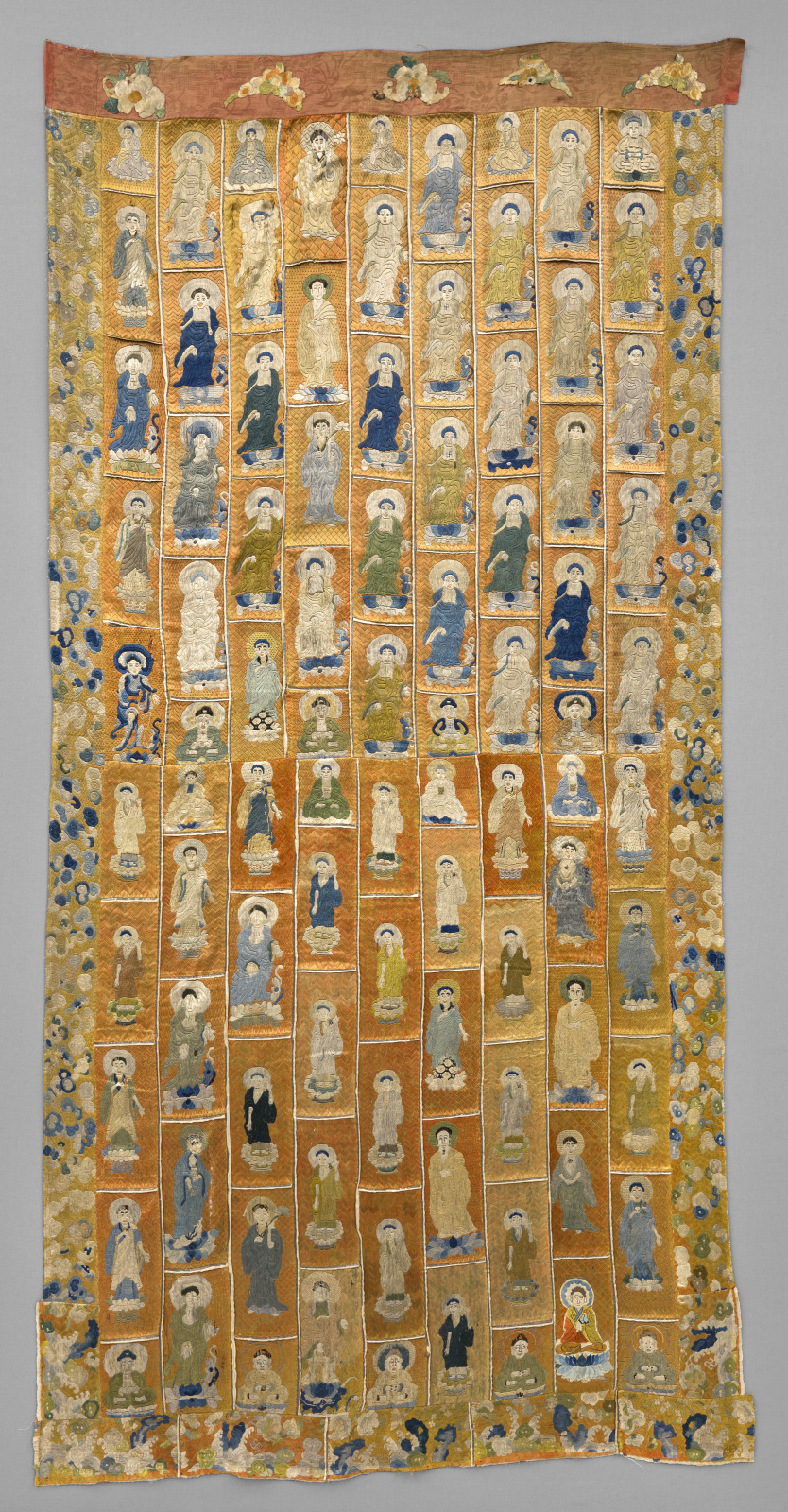
Hanging Made from Pieced Fragments of a Priest’s Robe (kāṣāya) with Design of the “Thousand Buddhas” Motif, 15th–17th century; Chinese, Ming dynasty, or Qing dynasty; silk gauze embroidered with silk satin; 86 1/4 x 43 1/4 inches; Saint Louis Art Museum, Museum Purchase 115:1919
The main field of this hanging features the “Thousand Buddhas” motif representing the Buddha’s infinite availability, the actual number being insignificant. Here, 90 Buddhas stand in tall rectangular panels or seated in squares. The figures are worked in long stitches of multicolored silk satin, while their backgrounds, of several tones of apricot-colored silks in vertical lines, feature chevrons, swastikas, and other geometric patterns. The central area is surrounded on three sides by multicolored clouds in a border with similar grounds. The halos of the Buddhas and other small parts of the work are in appliqué; the ground of the embroidery is a fine white gauze.
This textile once took the form of a wide rectangular embroidered priest’s robe (kāsāya). Two large square-shaped sections were subsequently cut and reassembled one above the other, pieced together along with borders featuring a design of rocks, plants, waves, and clouds. In its original state, the textile was most likely presented by Chinese imperial officials to a high-ranking member of the Buddhist clergy in Tibet.
April 16, 2024
Circus Rider (recto), Dancers with Castanets (verso)

Ernst Ludwig Kirchner, German (active Switzerland), 1880–1938; Circus Rider (recto), 1914; oil on canvas; 79 x 59 7/16 inches; Saint Louis Art Museum, Bequest of Morton D. May 904:1983
A rearing horse and rider dominate the center of this canvas. A clown in white makeup and red cap hurries by amidst green and yellow stage lights. The ringmaster stands at bottom right while the viewer is positioned as a member of the audience behind a row of fellow circus-goers. Ernst Ludwig Kirchner was attracted to the bohemian atmosphere found at the circus. In this flattened and compacted composition, he evoked the thrilling energy and vitality of the circus arena.
Today’s Object of the Day is currently on view in Concealed Layers: Uncovering Expressionist Paintings.
April 14, 2024
Wanderer on the Mountaintop
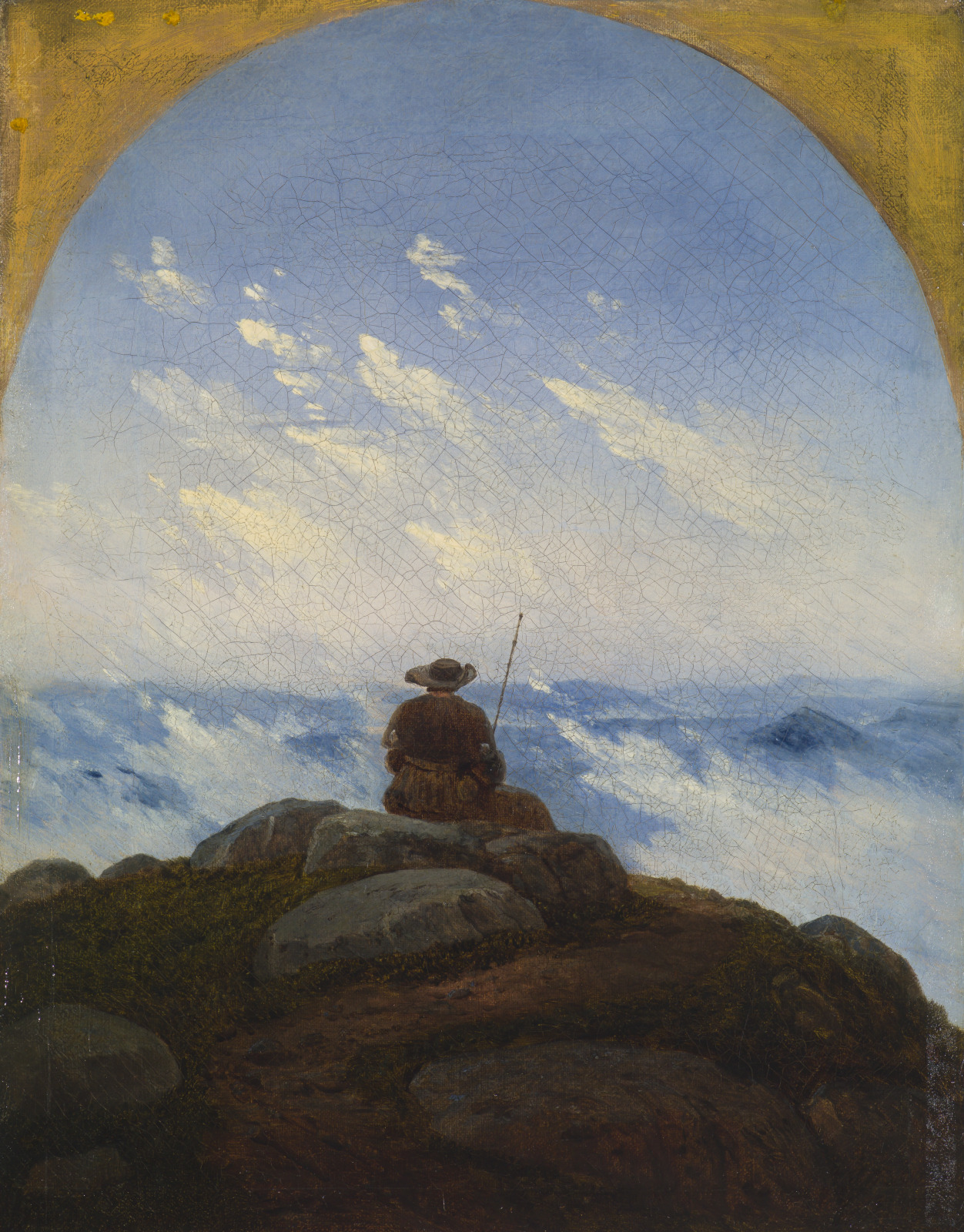
Carl Gustav Carus, German, 1789–1869; Wanderer on the Mountaintop, 1818; oil on canvas; 17 x 13 1/4 inches; Saint Louis Art Museum, Museum Shop Fund 323:1991
A traveler has climbed a winding path and rests with his staff on a mountaintop to look out over a sea of clouds. Lone, back-turned figures appear frequently in German Romantic art of the late 18th to 19th centuries. These figures represent a longing for unity with the vastness of nature, a characteristic of this art movement. Carl Gustav Carus described his own mystical experience in the mountains, writing “you lose yourself in boundless space…your ego vanishes; you are nothing, God is all.”
April 13, 2024
Pair of Vases

made by Sevres Porcelain Factory, Sevres, France, founded 1756; scene painted by Charles-Eloi Asselin, French, 1743–1804; after a painting by Jean-Baptiste Greuze, French, 1725–1805; flowers painted by Jean-Baptiste Tandart, French, active 1754–1803; Pair of Vases, 1774; soft-paste porcelain, overglaze enamels, and gilding; each: 12 1/2 x 9 1/2 x 6 inches; Saint Louis Art Museum, Seek Beauty and Find Love: Jane and Whitney Harris 80:2000.1,.2
The sumptuous blue-and-gold surface of these ornamental vases exemplifies the 18th-century taste for gilded decoration and exuberant color. Rimmed in gold, the top openings resemble precious shells while the handles seem to have been formed by encasing myrtle leaves in gold. The vases carry narrative scenes based on compositions by the French painter Jean-Baptiste Greuze (1725–1805). Greuze’s Blind Man Fooled, 1755, in the collection of the Pushkin Museum, shows a young woman fooling her blind husband as she attempts to sneak her lover out of the basement and away before her spouse discovers her ruse. The scene on the vase at left, Mommy (La Maman), depicts a mother trying to feed her younger son while the older one grabs at the spoon intended for his brother.
April 12, 2024
Nō Costume (karaori) with Design of Weeping Cherries and Clouds
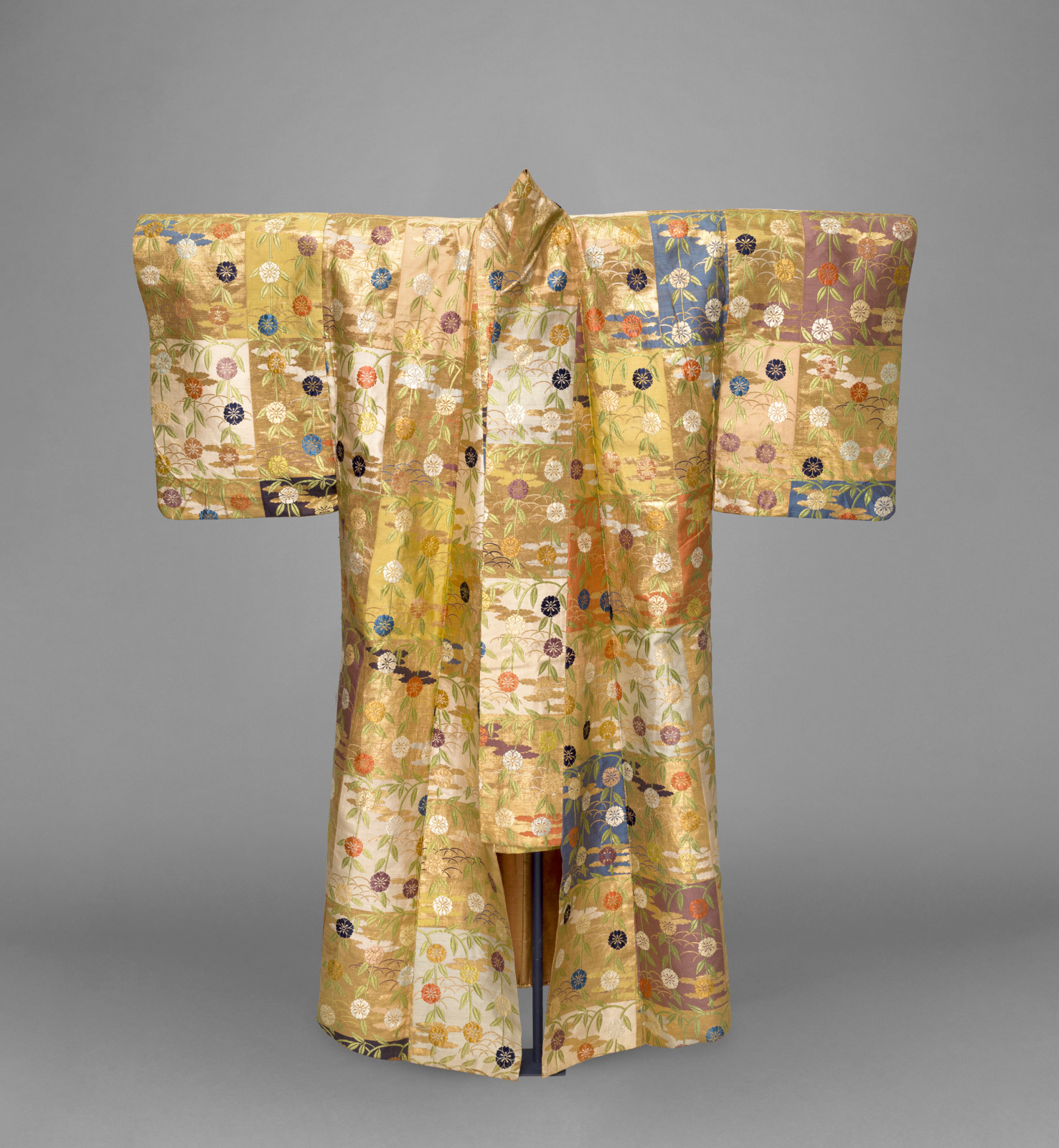
Nō Costume (karaori) with Design of Weeping Cherries and Clouds, 18th century; Japanese, Edo period; twill-weave silk brocaded with supplementary wefts of multicolored silk floss and gold paper-covered threads; 65 1/4 x 54 3/4 inches; Saint Louis Art Museum, Museum Purchase 119:1919
This costume for the Nō theater consists of rectangles (dangawari) in a variety of colors alternating with gold brocade. Large and small blocks are patterned with stalks of weeping cherry in full bloom against a background of clouds.
Known in Japanese as karaori (literally “Chinese weave”), this type of garment features a stiff brocade technique. Horizontal wefts in long stitches of glossed silk threads were floated over an unglossed silk twill ground, while flat threads covered with gold paper were bound close to the twill ground weave. Although the rigid brocade does not drape easily, it creates an angular effect that is striking on the theater stage.
April 11, 2024
Woman in Turkish Dress
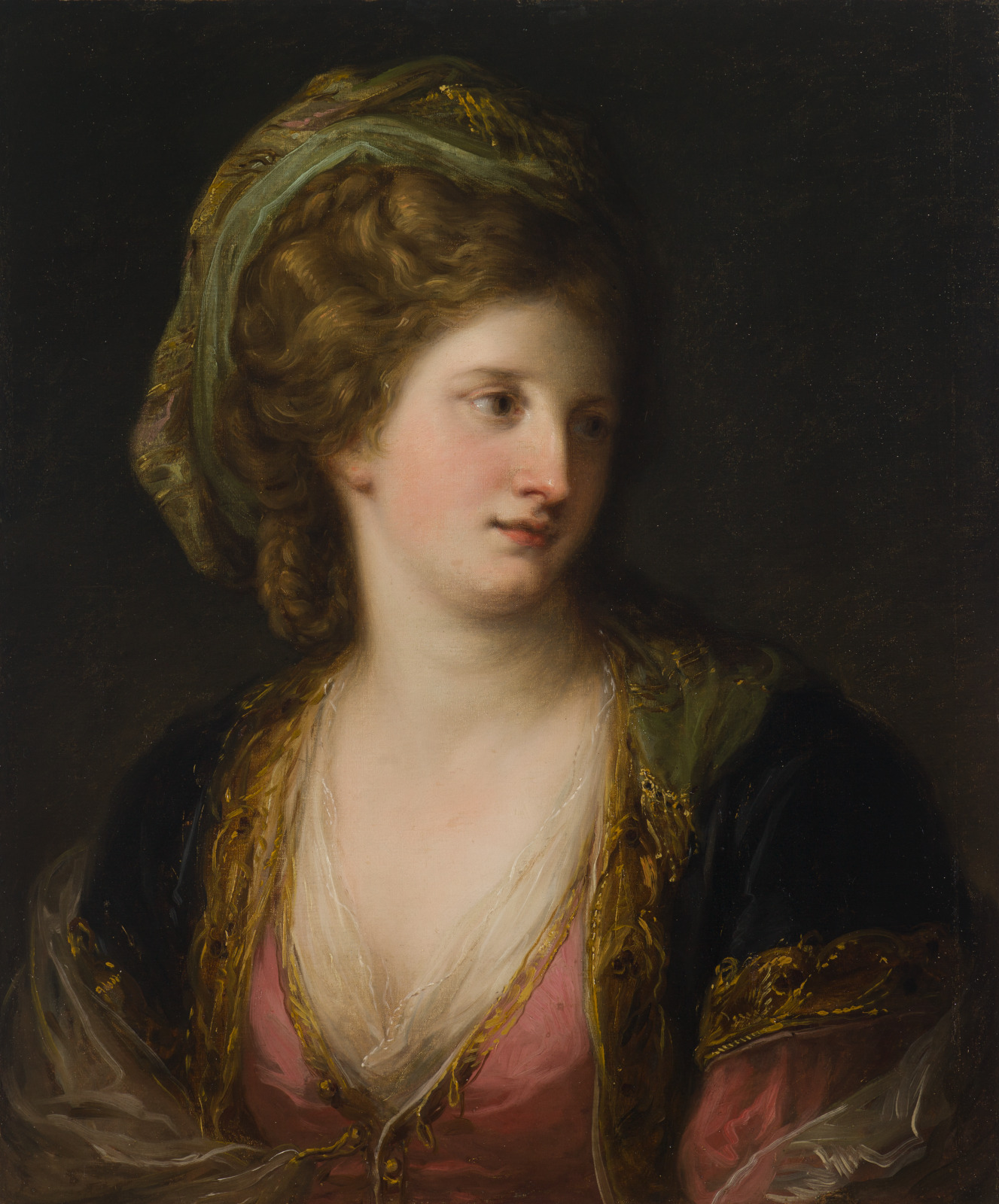
Angelica Kauffmann, Swiss, 1741–1807; Woman in Turkish Dress, c.1771-74; oil on canvas; 24 1/2 x 19 1/2 inches; Saint Louis Art Museum, Funds given by Dr. E. Robert and Carol Sue Schultz 704:2018
Loose yet assured brushwork, seen in gold edging along the shoulders, animates this painting of an unknown woman wearing Turkish clothing. Foreign attire was popular in London throughout the 18th century, and Angelica Kauffmann painted several versions of garments that were based on clothing worn in the Ottoman Empire. Western Europeans, including the British, appropriated and exoticized Middle Eastern societies, often using stereotypes, an embodiment of a colonial outlook towards non-European cultures.
For this portrait, the artist depicted a loose gown trimmed in white lace (gömlek), a more fitted long-sleeved salmon-colored garment with buttons down the front (yelek), and an outer long coat edged in lace and fashioned from plum-colored velvet (entari). Dated on the back of the canvas in what appears to be the artist’s own hand, this painting may have served as an advertisement to convince women in London society to have their portraits painted in Turkish dress.
April 9, 2024
Relief with Winged Genie
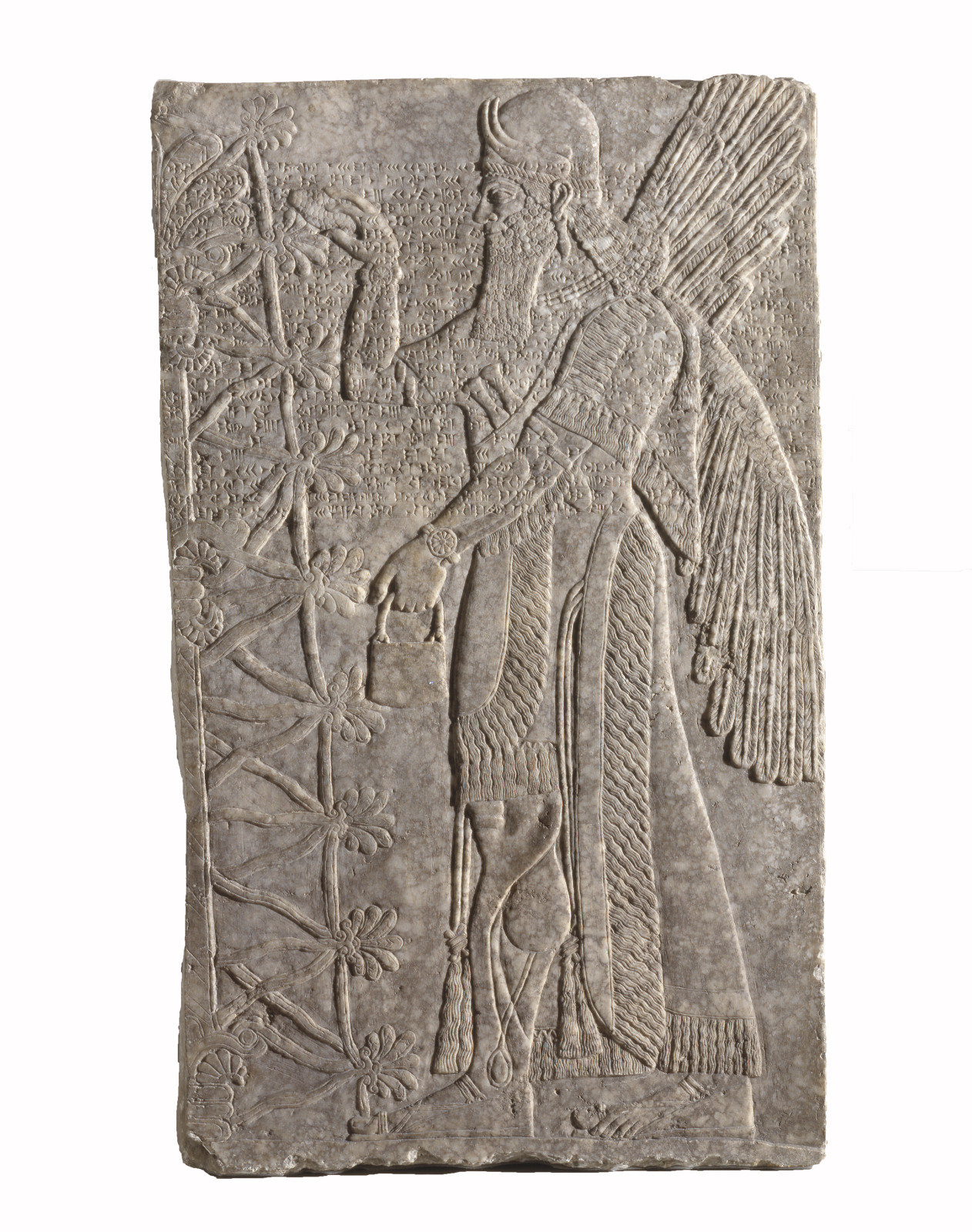
Relief with Winged Genie, 883–859 BC; Assyrian, Iraq, Neo-Assyrian period, associated with Ashurnasirpal II, King of Assyria; alabaster; 59 1/2 x 35 1/4 inches; Saint Louis Art Museum, Museum Purchase 186:1925
The carved image in this relief may represent a mythical being known as a winged genie. The figure ensures fertility and stability by pollinating a sacred tree with a cone and situla, a bucket with a handle. The cuneiform inscriptions over the surface of the sculpture expound the Assyrian king Ashurnasirpal II’s splendid endeavors and exploits. In the heart of his empire in the northern part of present-day Iraq, King Ashurnasirpal built huge royal palaces that were guarded by colossal statues of man-headed bulls. Endless reliefs decorating the interiors of the palaces portrayed the glory of the king and the mighty deities who protected him and his vast holdings.
April 8, 2024
Panoramic Landscape with Shepherds

Aelbert Cuyp, Dutch, 1620–1691; Panoramic Landscape with Shepherds, 1640–45; oil on panel; 30 1/4 x 42 1/8 inches; Saint Louis Art Museum, Friends Fund 23:1967
The flat horizon line and the subtle tones of the sky and reflective water surfaces are the major focus of this painting, rather than the humans or their bovine companions. Aelbert Cuyp uses delicate shifts in the color of the sky as well as a limited amber palette to describe the land and its inhabitants. While some of his contemporaries depicted a cloudy and misty sky, sunlight is often an important element in Cuyp’s pictures.
April 7, 2024
Crouching Figure

John Bernard Flannagan, American, 1895–1942; Crouching Figure, 1935; stone; 15 1/2 x 11 1/2 x 13 3/4 inches; Saint Louis Art Museum, Gift of Morton D. May 232:1954; Saint Louis Art Museum
This sculpture is both rough and elegant while radically simple and powerfully emotional. It evokes both the natural form of the stone from which it is carved and the living form it represents. John Flannagan was one of the first artists to practice “direct carving,” a reaction to the increasingly elaborate casting or modeling processes traditionally used to make sculpture. Flannagan would follow the shape, structure, color, and texture of a specific fieldstone to determine the sculpture he would make from it. As he wrote, “I would like my sculpture to appear as rocks, left quite untouched and natural, and . . . inevitable.”
April 6, 2024
Elastic Chair

made by Samuel Gragg, American, 1772–1855; Elastic Chair, patented 1808; painted and gilded oak and maple; 33 3/4 x 19 3/4 x 20 1/4 inches; Saint Louis Art Museum, Funds given by the Decorative Arts Society 18:1979
The son of a wheelwright, Samuel Gragg patented several techniques for making chairs with bentwood. Gragg’s technique used long strips of oak to form the curved back supports and the concave seat. These parts were made using steam and molds to bend the wood into exaggerated curves. According to Gragg’s patent application, the design rendered his chair “very elastic, very comfortable and agreeable to the person sitting in it.” Decoration such as the painted and gilded peacock feather on the back, and front feet painted like hooves helped this innovative design conform to the taste for classical-style furniture.
April 5, 2024
To Cover the Earth with a New Dew
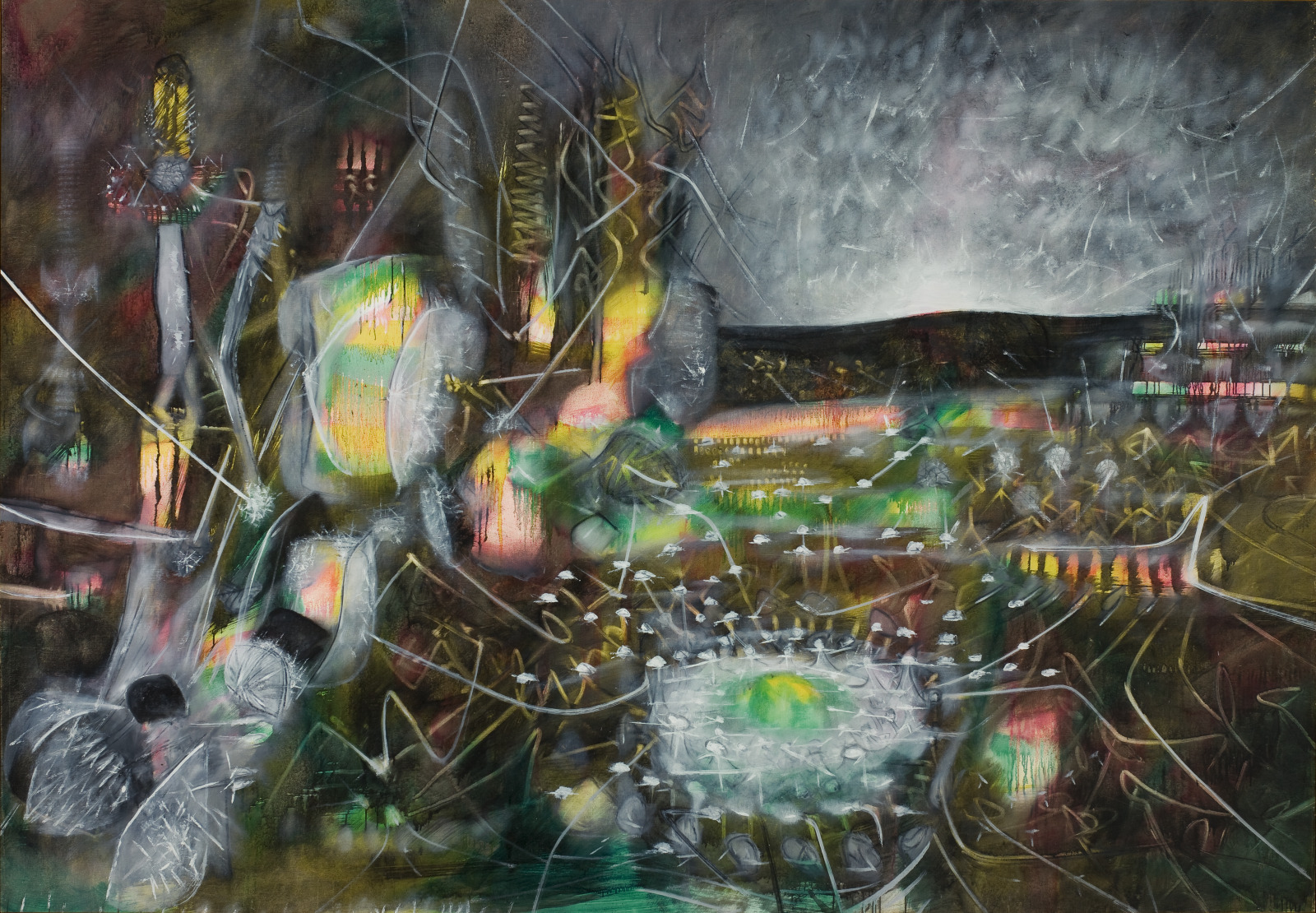
Roberto Matta, Chilean (active France and United States), 1911–2002; To Cover the Earth with a New Dew, 1953; oil on canvas; 79 3/4 x 114 1/2 inches; Saint Louis Art Museum, Gift of Morton D. May 396:1955; © 2024 Artists Rights Society (ARS), New York / ADAGP, Paris
In this hallucinatory landscape, the sun rises over a scene of swarming white insects and bizarre green-and-pink orbs. Roberto Matta moved to Paris in 1935 and became a prominent figure in the Surrealist movement. This later work showcases his continued interest in Surrealism’s automatic drawing and painting, where the hand moves freely, uninhibited by conscious thought. Matta described his paintings as, “the subconscious in its burning, liquid state; a conscious daytime substitution of the phenomena of dreams.”
March 30, 2024
Rectangular Food Vessel (fang ding) with Flattened Feet in the Form of Kui-Dragons

Rectangular Food Vessel (fang ding) with Flattened Feet in the Form of Kui-Dragons, 11th century BC; Chinese, Shang dynasty; bronze; height: 8 3/4 inches, width across handles: 7 1/4 inches; Saint Louis Art Museum, Spink Asian Art Collection, Bequest of Edith J. and C. C. Johnson Spink 34:2014
Four, large-beaked birds with long tails support a shallow, square basin. The shape is based on rectangular sacrificial vessels of an earlier period, however the sculptural quality of the birds and the hooked flanges are features of the vigorous later style. Inscriptions for signifying clans are commonly found on Shang dynasty bronzes.
March 29, 2024
Vase
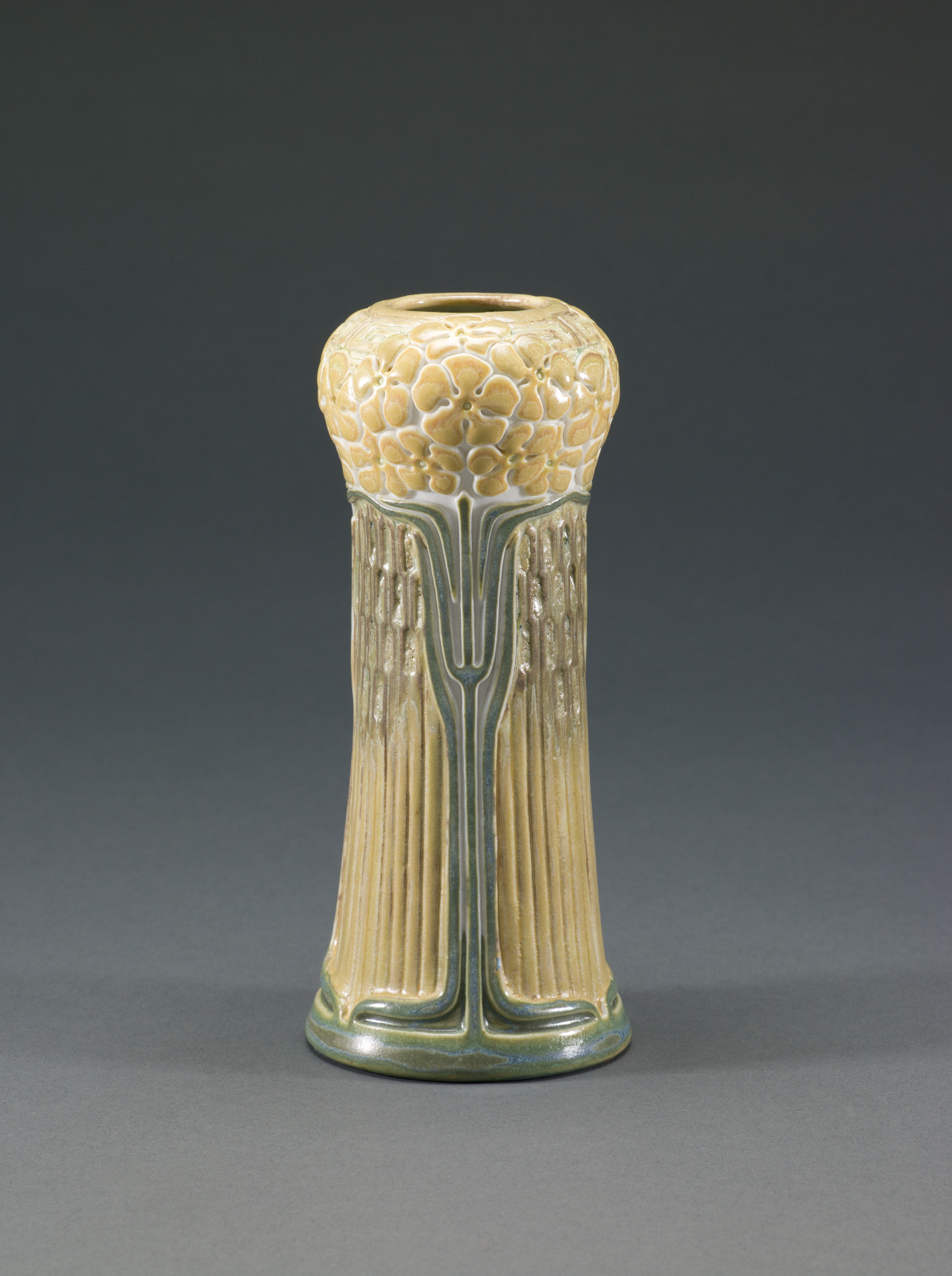
Adelaide Alsop Robineau, American, 1865–1929; associated with the Art Academy of the American Woman's League, University City, Missouri, active 1909–1911; Vase, 1910; glazed porcelain; 6 1/16 x 2 7/16 inches; Saint Louis Art Museum, Bequest of Elsa K. Bertig in memory of Joseph and Elsa Bertig, by exchange 471:1979
Yellow blossoms surround the top of this vase, while simplified green stems divide the lower body. The areas in between were pierced, then filled with a blue translucent glaze. Adelaide Robineau was known for exacting technical work, often carving into the vessel walls to achieve extraordinary thinness and translucency.
March 28, 2024
Abu Simbel, Sculptures at the Entrance of Spéos de Phré
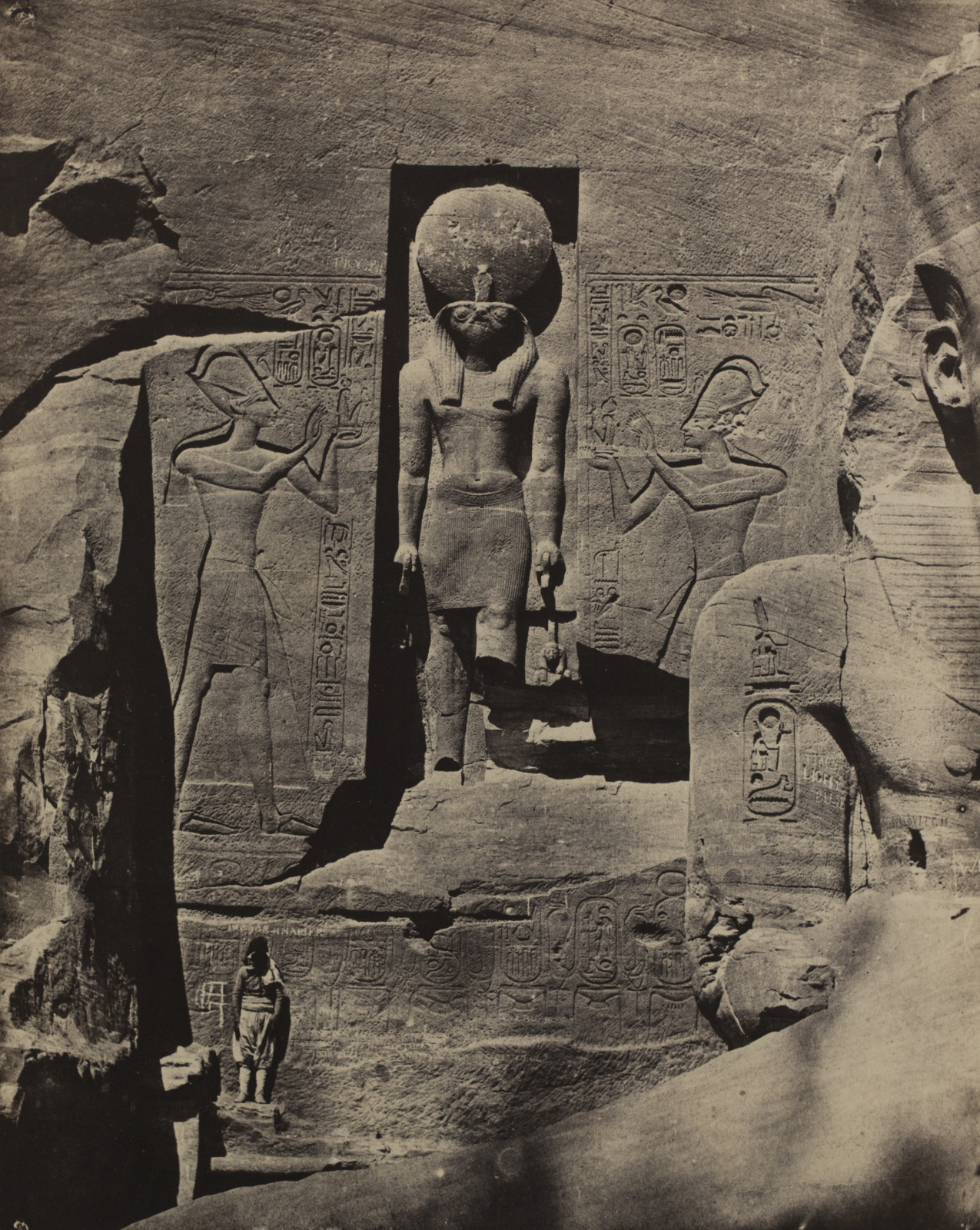
Maxime Du Camp, French, 1822–1894; Abu Simbel, Sculptures at the Entrance of Speos de Phre, 1853; salt print; image: 8 1/2 x 6 5/8 inches, mount: 14 7/8 x 11 3/4 inches; Saint Louis Art Museum, Museum Shop Fund 27:1995
The setting of this image is the ancient temple complex of Abu Simbel, cut into solid rock cliffs north of the present-day Egyptian and Sudanese border. Rather than trying to take in its enormity, Maxime Du Camp directed his camera to the figure of the Egyptian sun god Amun, carved in relief directly above the main doorway. This frontal view yields a documentary clarity, and Du Camp’s assistant stood at the lower left to provide a sense of scale. The temple was in disrepair and forgotten by the 6th century, then rediscovered, largely buried under sand, in the early 19th century.
Trained initially as a journalist, Du Camp kept extensive diaries of his adventures to supplement his images. He also traveled with the French writer Gustave Flaubert, and elements of their time together provided inspiration for fictional stories Flaubert published
March 27, 2024
Young Woman in Green
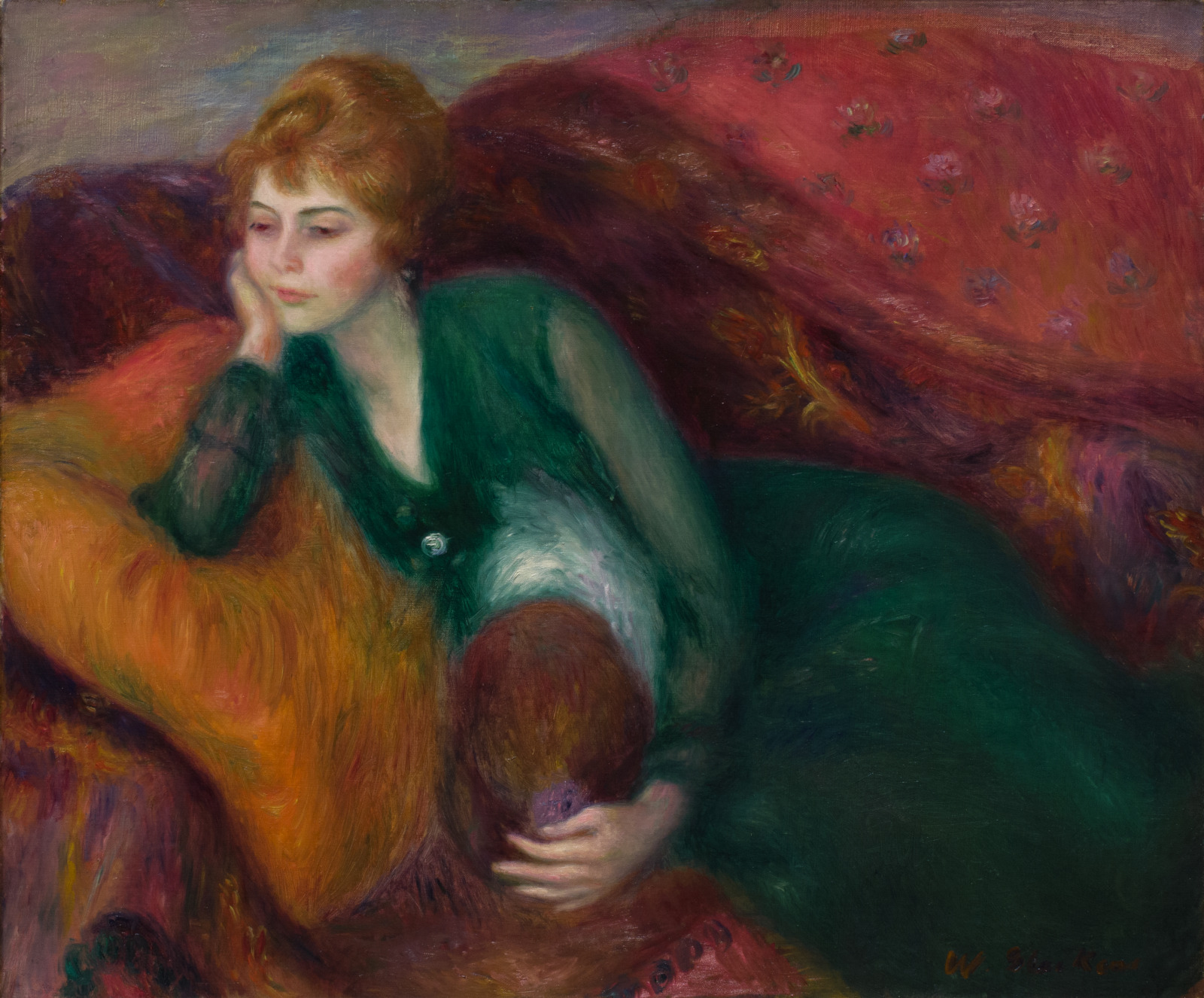
William James Glackens, American, 1870–1938; Young Woman in Green, c.1915; oil on canvas; 25 x 30 inches; Saint Louis Art Museum, Gift of Mr. and Mrs. Ira Glackens 230:1966
The pearl tones of this woman’s skin contrast beautifully with the painting’s rich jewel colors of green, orange, and red. The soft brushstrokes are well-suited to rendering the plush cushion, downy blanket, and hat plume, as well as the model’s dreamy mood.
William Glackens made a number of paintings that focus on a single female model, with titles that refer to a formal element, such as a color in this example. In this way, the artist reinforces the poetic quality of the subject.
March 26, 2024
Jar
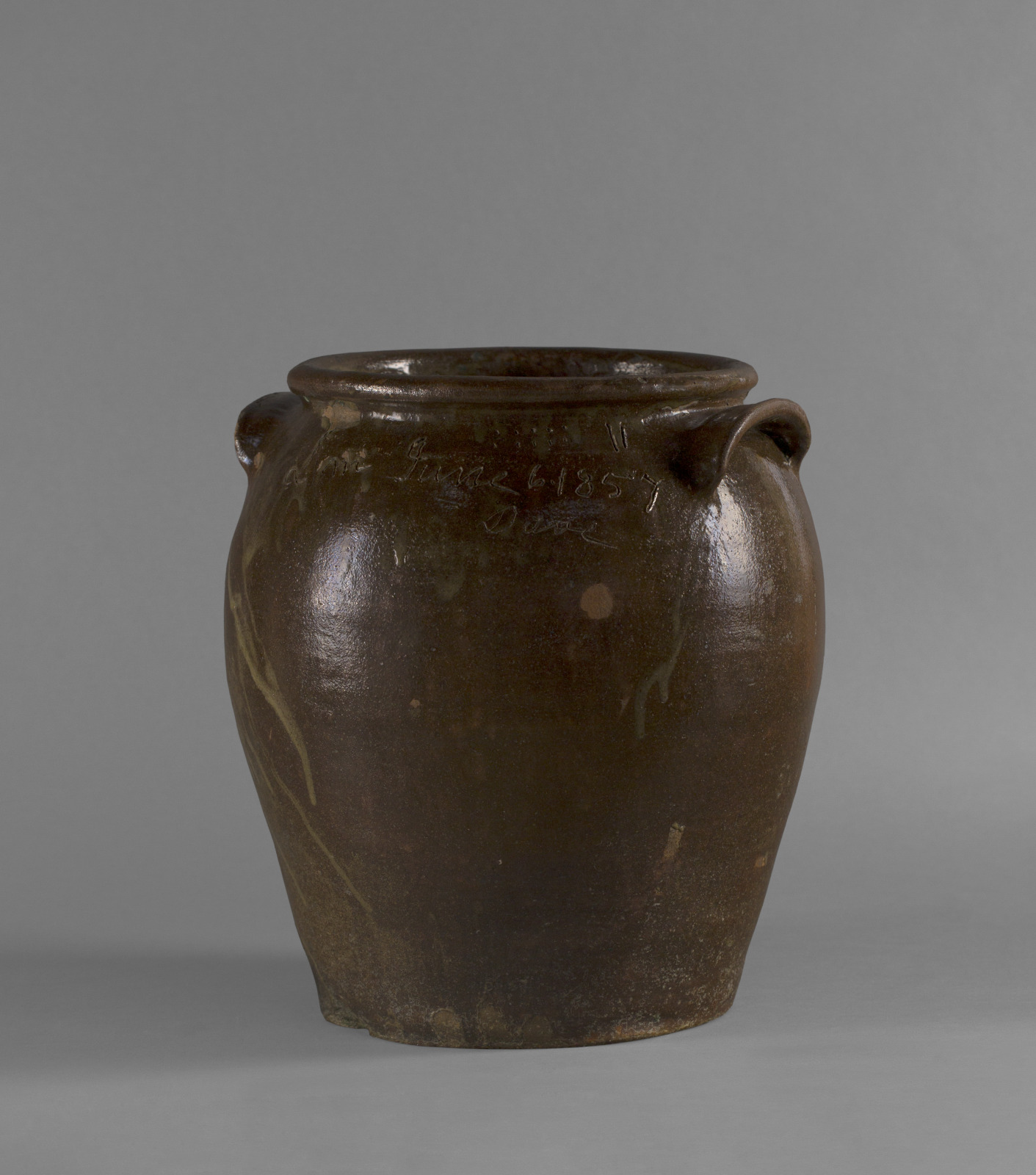
David Drake, American, c.1801–after 1870; made at Stony Bluff Manufactory, Edgefield District, South Carolina; Jar, June 6, 1857; alkaline-glazed stoneware; 17 x 15 3/8 x 15 3/8 inches; Saint Louis Art Museum, Richard Brumbaugh Trust in memory of Richard Irving Brumbaugh and Grace Lischer Brumbaugh, Friends Endowment Fund, Marjorie Wyman Endowment Fund, The Lopata Endowment Fund, Mary Elizabeth Rosborough Decorative Arts Fund, and the Margarita M. and Roland E. Jester Endowment Fund for the Decorative Arts 326:2020
Near the rim of this jar, while the clay was still damp, David Drake wrote his name under the date June 6, 1857. Drake, the skilled African American potter who made this substantial 10-gallon storage jar, is renowned for inscribing his signature, dates, and occasionally a rhyming verse on hundreds of utilitarian ceramics. His hand is also visible where his fingers gripped the base as he coated, dripped, and splashed the vessel with brown- and ochre-colored glaze. Drake was born into slavery and worked daily while enslaved in potteries around Edgefield, South Carolina. He incised his ceramics at a time when laws prohibiting literacy among enslaved people were common. In that light, his powerful ceramics are defiant expressions of literacy, authorship, and creativity in the face of slavery.
March 25, 2024
Dispositions of the Gentleman
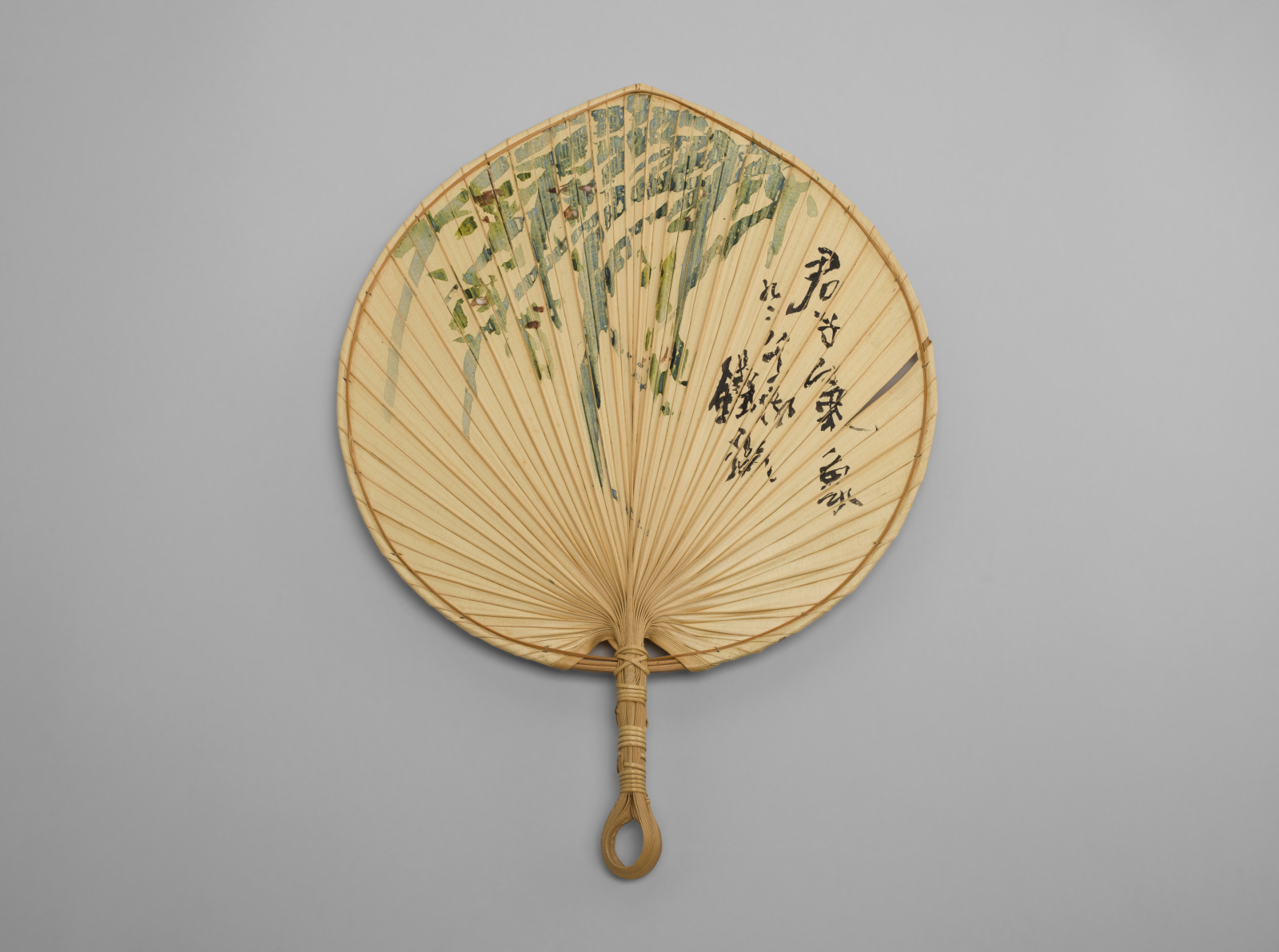
Tomioka Tessai, Japanese, 1837–1924; Dispositions of the Gentleman, 1916; ink and color on betel palm leaves; fan: 15 3/8 x 10 5/8 x 1/2 inches; Saint Louis Art Museum, Friends Endowment Fund 85:1992
Made from a betel palm leaf, this fan is painted on both sides. On one side are blossoming orchids looming over a rock, while on the other side more orchids emerge from the tip of the fan. The artist’s inscription includes four large characters which refer to orchids as symbols of a perfect gentleman’s dispositions: integrity, nobility, humility, and self-restraint.
This object, created for everyday use, was elevated to fine art through the addition of painting by one of Japan’s greatest literati artists of the modern era. Tomioka Tessai brought new vitality into an old tradition through creative manipulations of traditional subjects, forceful brushwork, and expressive color. Tessai was a philosophical and ethical individual who, despite enormous fame, managed to live a quiet life, completely devoted to his studies.
March 23, 2024
Fountains (Les Jets d’Eau) Textile
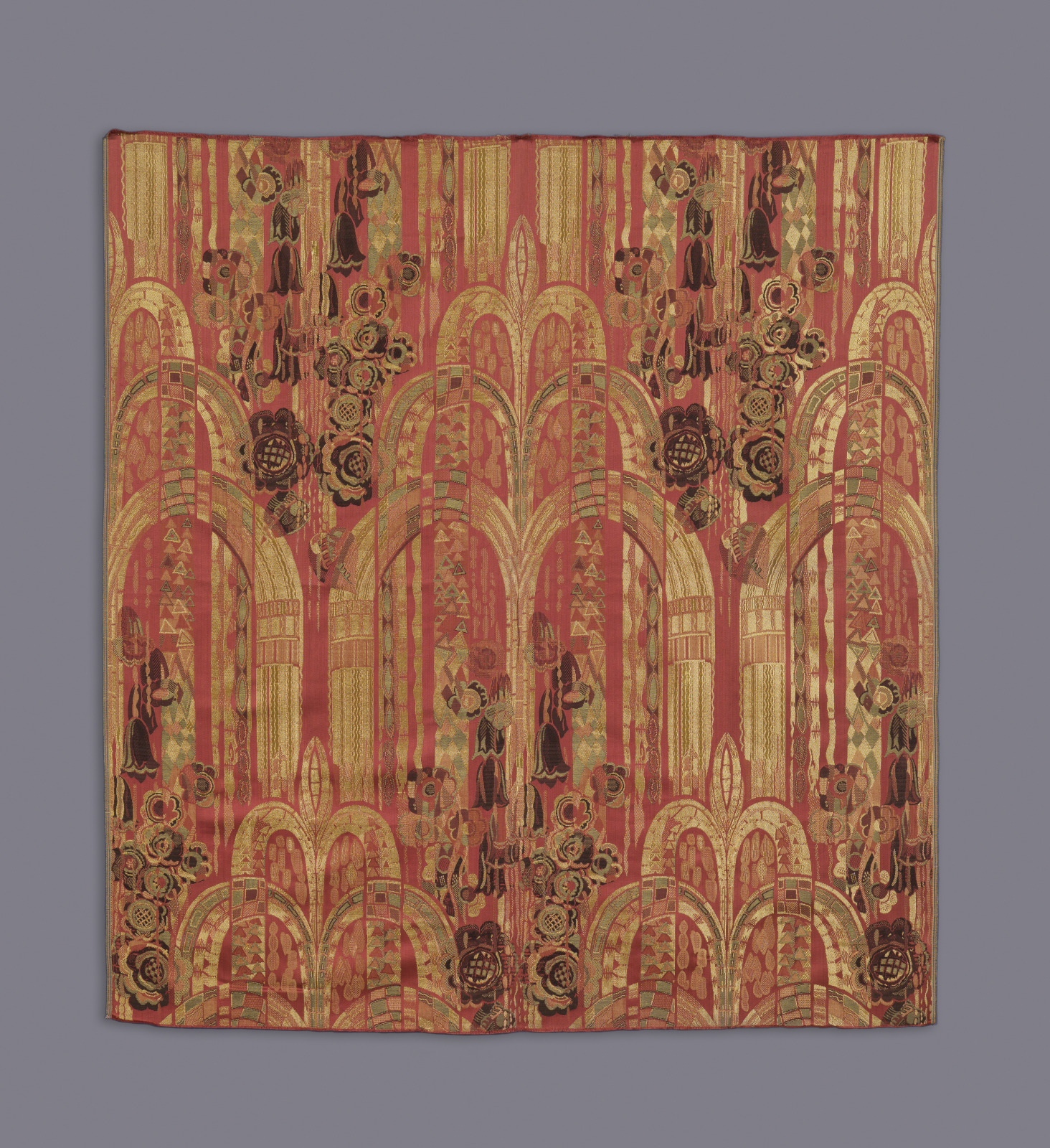
designed by Édouard Bénédictus, French, 1878–1930; made by Brunet-Meunie et Cie, Paris, France, founded 1815; Fountains (Les Jets d'Eau) Textile, 1925; cotton and rayon; 53 1/4 x 49 3/4 inches; Saint Louis Art Museum, Funds given by The Lea-Thi-Ta Study Group 464:2018
Stylized streams of water—chains of squares and triangles and waving rivulets—form shimmering arches across this textile’s burgundy ground. Abstracted blossoms bubble up from the base of the jets in a lively floral froth. In the 1910s and ’20s, French designer Édouard Bénédictus translated natural forms into complex, geometric flat patterns for textiles, wallpaper, carpets, and inlaid leather. Presented at the 1925 Paris World’s Fair (L’Exposition Internationale des Arts Décoratifs et Industriels Modernes), Fountains covered the walls of a grand reception room in an imagined French embassy.
March 22, 2024
Relay Hunting

Rosa Bonheur, French, 1822–1899; Relay Hunting, 1887; oil on canvas; 18 x 26 inches; Saint Louis Art Museum, Gift of Justina G. Catlin in memory of her husband, Daniel Catlin 7:1917
Rosa Bonheur was known for her careful study of animals and even maintained stables at her Paris studio. She was a pioneering feminist who enjoyed notoriety by dressing publicly in men’s clothes and smoking cigars. This work represents a relay hunt whereby riders would use fresh groups of horses to relieve their exhausted animals. Bonheur has precisely rendered the anatomy of the horses’ forms as well as the sheen of their coats in brown, white, and gray.
March 21, 2024
Pair of Doors

Pair of Doors, 15th–16th century; Spanish, Mudéjar; painted wood, iron, and gilding; 179 1/8 x 106 inches; Saint Louis Art Museum, Museum Purchase 81:1937
This grand pair of doors most likely came from the convent of Santa Isabel in Toledo, Spain. The large doors would be opened only on special occasions, while the smaller sets of double doors in the lower half of each panel were for daily use. The inlaid design covering their surface is the lazo of ten, comprised of expanding and interlocking ten-pointed stars. Originally, the huge iron throw-bolts and studded rivets were covered with gilt decoration.
These doors are a magnificent example of the style known as Mudéjar, a term used to describe Spanish Muslims living under Christian rule. The intricate inlay on these doors, created from small pieces of wood pieced together in complex geometric shapes, is a technique originating in the Islamic world that remained popular in Spain for centuries after the political defeat of Muslim rulers. Such inlay was considered to be especially suitable for religious buildings of every persuasion because of its conspicuous expense and visual appeal.
March 20, 2024
Table Screen
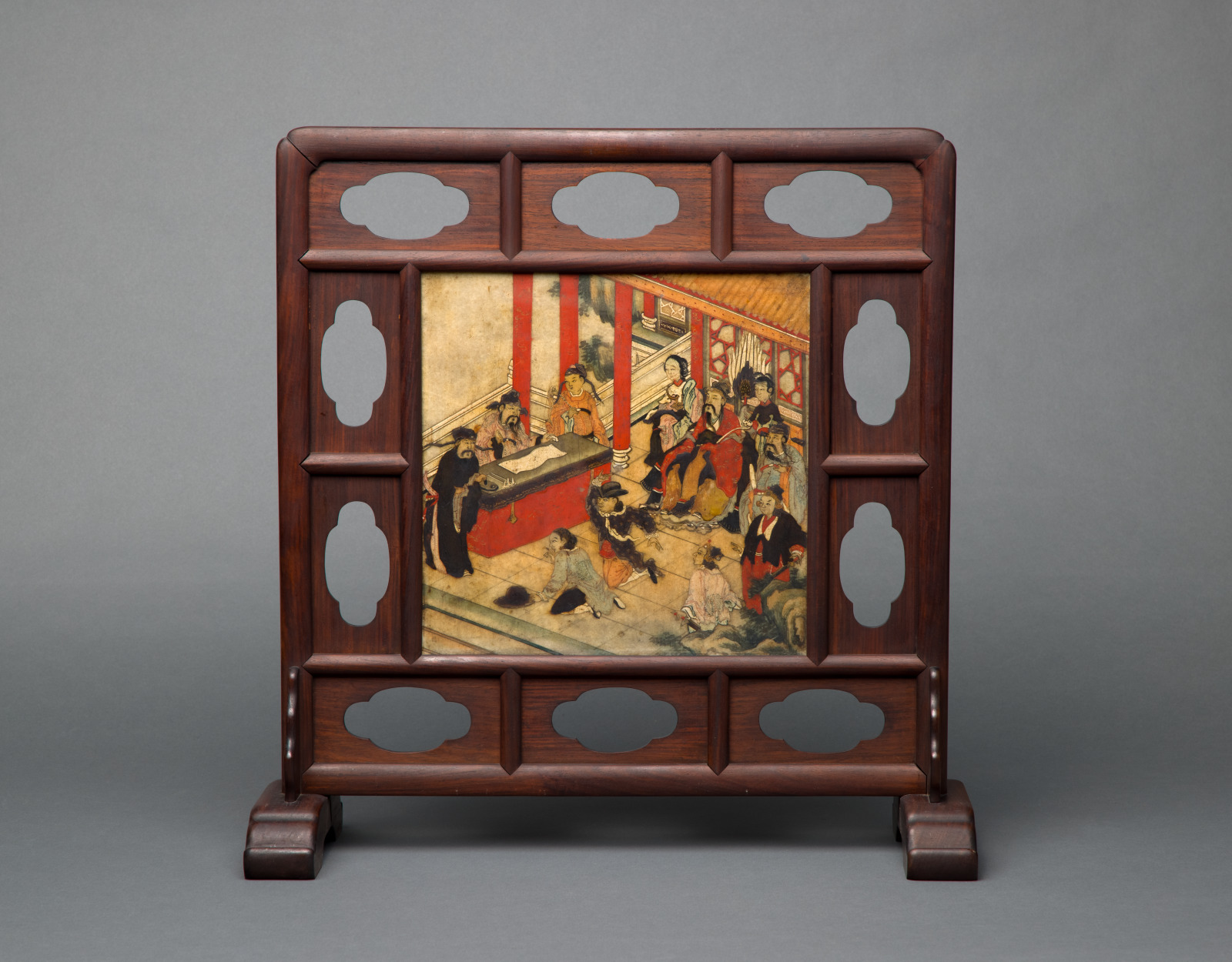
Table Screen, 19th century; Chinese, Qing dynasty; ink and color on marble; wood frame and stand; overall: 21 1/8 x 21 5/8 x 7 inches, image: 11 1/8 x 11 1/8 inches; Saint Louis Art Museum, Museum Purchase 289:1915
This decorative screen made for placement on a desk or table has a square marble panel at the center surrounded by a wooden frame. In the image, two figures in European clothing are kneeling in front of a table with three officials. One official appears to be affixing a seal and signature to a document. Looking on is another figure in regal clothing seated at right, flanked by attendants and other officials nearby. This narrative imagery resembles those of sinners begging for mercy in traditional Chinese Buddhist illustrations of the Ten Kings of Hell. However, the presence of figures in European clothing does not have a clear explanation and awaits further research. On the back of the marble panel is an unrelated poetic inscription about traveling in a landscape, written in semi-cursive script with the remnants of two seals impressed in red. The panel’s frame consists of 10 rectangular ornamental sections, each enclosing a quatrefoil shape using an openwork technique.
March 19, 2024
Spring

Alexei Jawlensky, Russian (active Germany), 1864–1941; Spring, 1912; oil on cardboard; 26 x 19 3/4 inches; Saint Louis Art Museum, Bequest of Morton D. May 896:1983
Bright yellows, greens, and pinks evoke the colors of spring and give this woman’s face an almost flowerlike appearance. European artists had personified the four seasons as women for centuries, but that was not Alexei Jawlensky’s intent. He believed that a painting’s colors inspired an emotional response in its viewer. The woman’s blushing red cheeks and bold mouth, outlined in yellow, suggest love and affection —feelings associated with spring.
March 18, 2024
Pavise (Archer’s Shield)

Pavise (Archer's Shield), before 1467; Swiss; wood, painted leather, boar skin, and iron; 41 x 17 1/8 x 4 3/4 inches; Saint Louis Art Museum, Museum Purchase 94:1932
On the battlefield, archers often carried a shield called a pavise. It could be set vertically against a support and was large enough for a foot soldier to crouch behind it while readying his bow or crossbow. Shields are among the oldest forms of defensive armor. They were part of a knight’s equipment until full plate armor was adopted. Less well-equipped knights and other troops continued to use shields for a longer time.
March 17, 2024
Houses and Palm Trees
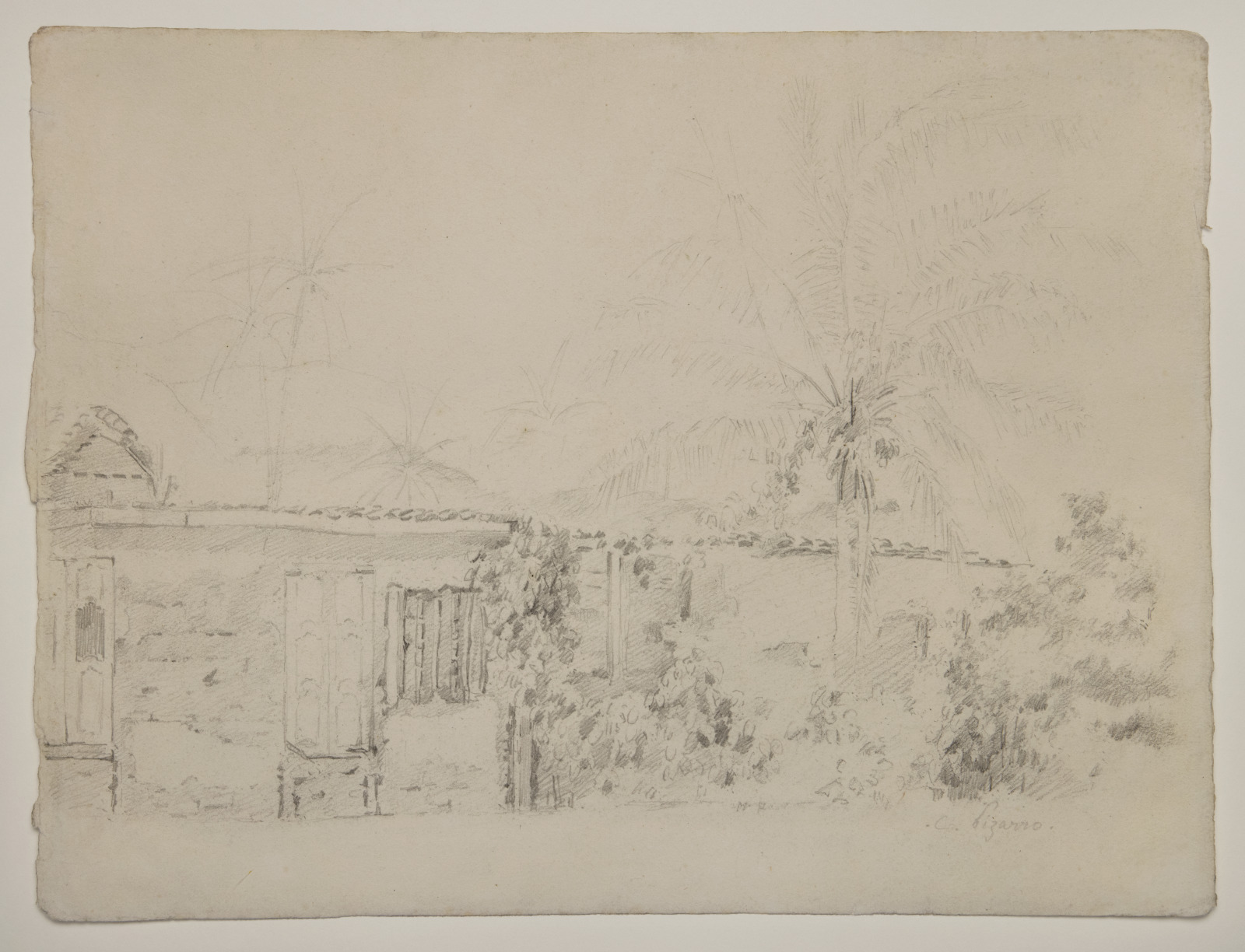
Camille Pissarro, French, 1830–1903; Houses and Palm Trees, c.1855; graphite; 10 5/8 x 14 3/16 inches; Saint Louis Art Museum, Funds given by Mr. and Mrs. Richard K. Weil 87:1954
This delicate, but confidently executed drawing shows the early artistic beginnings of one of the most revered Impressionist painters, Camille Pissarro. Born on the Caribbean Island of St. Thomas, he was sent to high school in France between 12 and 17. There, he took drawing lessons and visited the Louvre Museum, where he absorbed the history of European art. On his return to his native St. Thomas, he continued to draw, while also working in his family’s business. His French teacher advised him to draw palm trees—advice he took in this work, where the trees subtly dominate the scene. Pissarro was a voracious draftsman from his earliest days, and his output of drawings as well as prints is large and wide-ranging.
March 16, 2024
Portrait of Anne Stafford
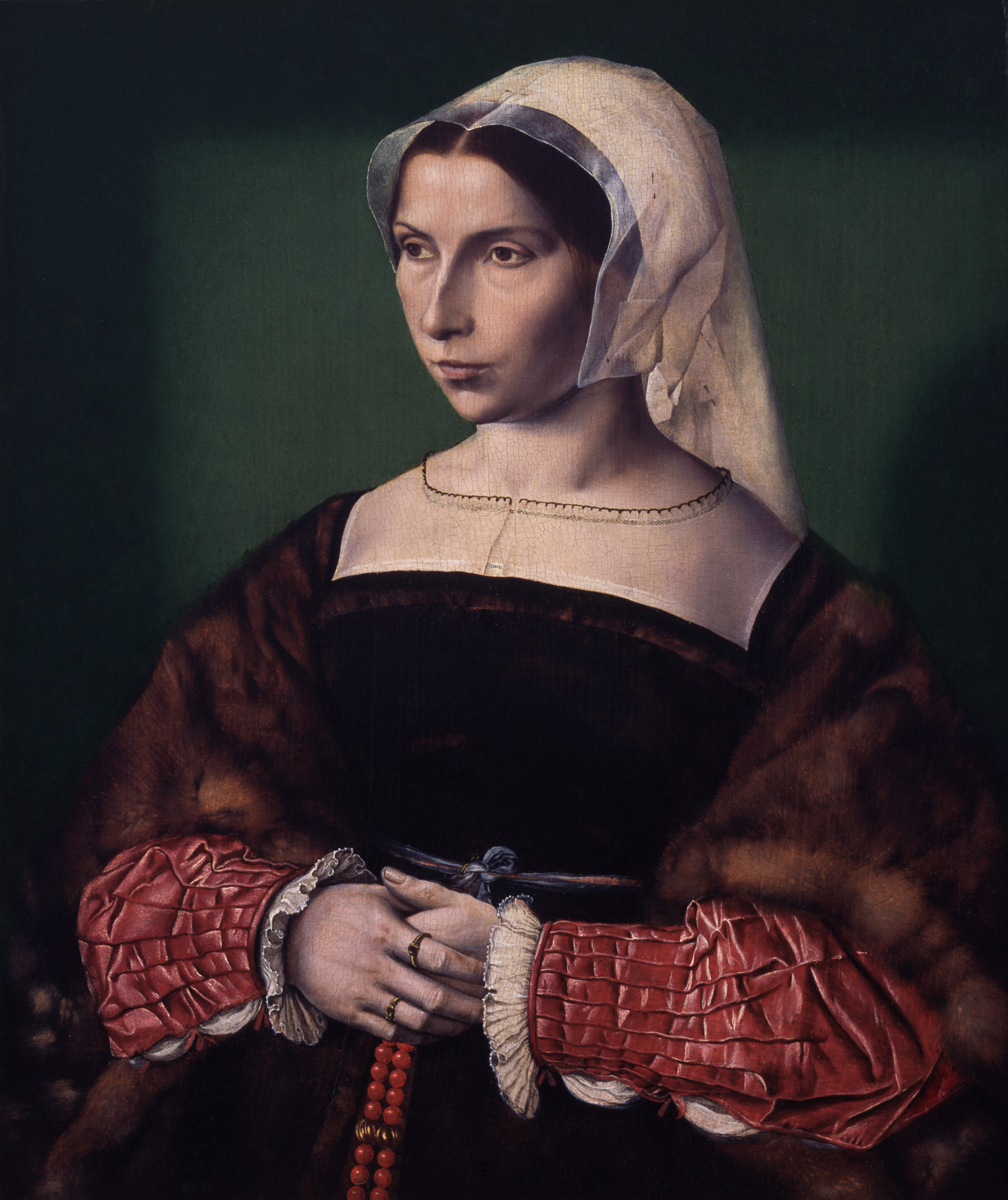
Ambrosius Benson, Netherlandish (born Italy), c.1495–before 1550; Portrait of Anne Stafford, c.1535; oil on panel; 16 x 13 3/8 inches; Saint Louis Art Museum, Museum Purchase by exchange, and funds given by Mr. and Mrs. John Peters MacCarthy in memory of Cornelia Peters Harms 154:2003
This portrait depicts Anne Stafford, a lady-in-waiting to Catherine of Aragon, first wife of King Henry VIII of England. Anne is shown as properly devout, holding a rosary in her lap. Her lavish attire is similar to other members of Henry’s court with like social standing. Anne’s delicate linen headscarf, secured by straight pins, her stiff bodice, and pleated sleeves with fur coverings, reflect the fashion of both Bruges (in present-day Belgium) and London, England, in the early 16th century. A companion portrait of Anne’s husband, George Hastings (first Earl of Huntingdon), also painted by Ambrosius Benson is in the Royal Museums of Fine Arts of Belgium.
March 15, 2024
Bearded Bull’s Head

Bearded Bull's Head, 2600–2450 BC; Ancient Near Eastern, Mesopotamian, or Sumerian, Iraq, Early Dynastic III period, or Bronze Age; copper with lapis lazuli and shell inlay; 9 1/4 x 9 1/16 x 4 3/4 inches; Saint Louis Art Museum, Friends Endowment Fund 260:1951
This powerful head cast of solid copper has a hollow in the back so that it could be attached to a larger object. The head is brought to life with inlaid eyes of lapis lazuli and shell. It was probably part of a copper relief or a three-dimensional figure that protected the façade or interior of an early temple. The bull’s massive head is emphasized by a stocky muzzle and shortened horns. The addition of a curled, wide beard looks curiously natural on an animal that symbolized the sky god An. As the embodiment of fertility and power, the bearded bull served as an ever-present symbol of divine protection and royal might through centuries of ancient Near Eastern art.
March 14, 2024
The Country School

Winslow Homer, American, 1836–1910; The Country School, 1871; oil on canvas; 21 1/4 x 38 1/4 inches; Saint Louis Art Museum, Museum Purchase 123:1946
The themes that most interested Winslow Homer throughout the 1870s – rural life, childhood, and the disappearing one-room schoolhouse – are depicted here. Homer had visited this rural New England schoolroom the year before he painted it. The picture is filled with an array of details-students in various states of attentiveness, fresh flowers on the teacher’s desk and wilted ones on the floorboards, lunch pails in the far corner, the teacher’s hat hanging from a nail above the chalkboard, and the warm glow of sunlight shining through the windows. Within the carefully organized composition, the teacher commands the room from her desk. Students of all ages line the room in a horizontal band, with girls on one side of the room and boys on the other, except for the crying boy sitting alongside the girls.
March 13, 2024
Lake Walchen, Silver Path

Lovis Corinth, German, 1858–1925; Lake Walchen, Silver Path, 1923; oil on canvas; 23 3/4 x 35 1/8 inches; Saint Louis Art Museum, Bequest of Morton D. May 878:1983
An explosion of brushstrokes hides the idyllic landscape of the Walchensee, an alpine lake located in the far south of Germany. Look closer and you might see the artist’s daughter in a white dress running past a stand of beeches at center right. Behind her, a hotel rooftop marks the edge of the lake’s expanse. The Walchensee was Lovis Corinth’s retreat in his final years and the site of his mesmerizing works that dissolve into abstraction.
March 12, 2024
Manchu Man’s Informal Summer Court Robe with Design of Four-Clawed Dragons Chasing Flaming Pearls
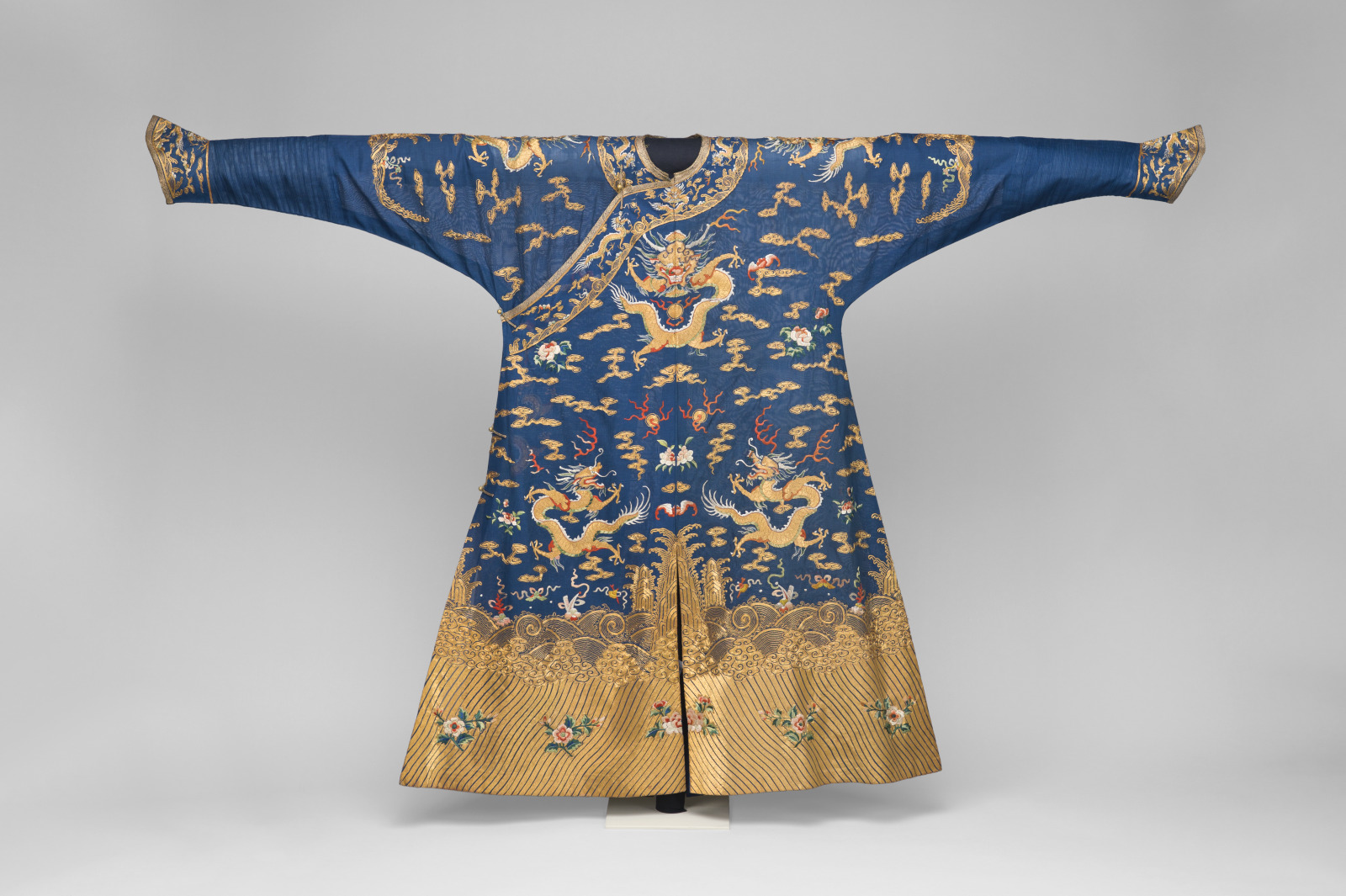
Manchu Man's Informal Summer Court Robe with Design of Four-Clawed Dragons Chasing Flaming Pearls, late 18th–early 19th century; Chinese, Qing dynasty, Jiaqing period; silk and metallic yarns couched and embroidered on silk gauze; 54 x 84 inches; Saint Louis Art Museum, Museum Purchase 52:1934
This informal summer court robe was made from dark blue gauze to be worn by a prince of the first or second rank. The main motif of nine four-clawed dragons (mang), one of which is hidden under the front flap, is couched in gold and colored silk threads. The dragons chase pearls with crimson flames amidst gold clouds, interspersed with red bats, floral sprays, and other auspicious motifs. The hem has a design of wavy gold bands of “standing water” (lishui) couched with gold threads and decorated with floral sprays embroidered with colored silk threads in satin stitch. The garment is unlined except for the interior of the sleeve extensions and cuffs, which are lined with light blue silk damask.
March 11, 2024
Approach to the Mountain Pass at Donzère, from the album “The Northern Railway from Paris to Lyon and the Mediterranean”

Edouard-Denis Baldus, French (born Prussia), 1813–1889; Approach to the Mountain Pass at Donzere, from the album The Northern Railway from Paris to Lyon and the Mediterranean, c.1861; albumen print; image: 12 11/16 x 17 3/16 inches, mount: 17 15/16 x 23 7/8 inches; Saint Louis Art Museum, Museum Purchase 195:1977
The spread of the railways across Europe and America was one of the enduring preoccupations of nineteenth-century photography. Edouard-Denis Baldus produced this striking photograph of a line near the Rhone River for an album documenting a new service from Lyon to the Mediterranean Sea sometime around 1859. Made up of finely detailed contact prints, it has been described as the most beautiful photographic album of the nineteenth century, and this image, which shows the recently constructed tracks and an accompanying telegraph line, is one of the finest prints from the album.
As with most early photographs, the chemistry used to make this image was overly sensitive to ultraviolet light. This caused the sky to appear white and featureless in the picture. Baldus knew how to use this limitation to his advantage. The sky becomes a strong graphic element in the picture: a powerful, abstract form echoing the shape of the land.
March 10, 2024
Annunciation
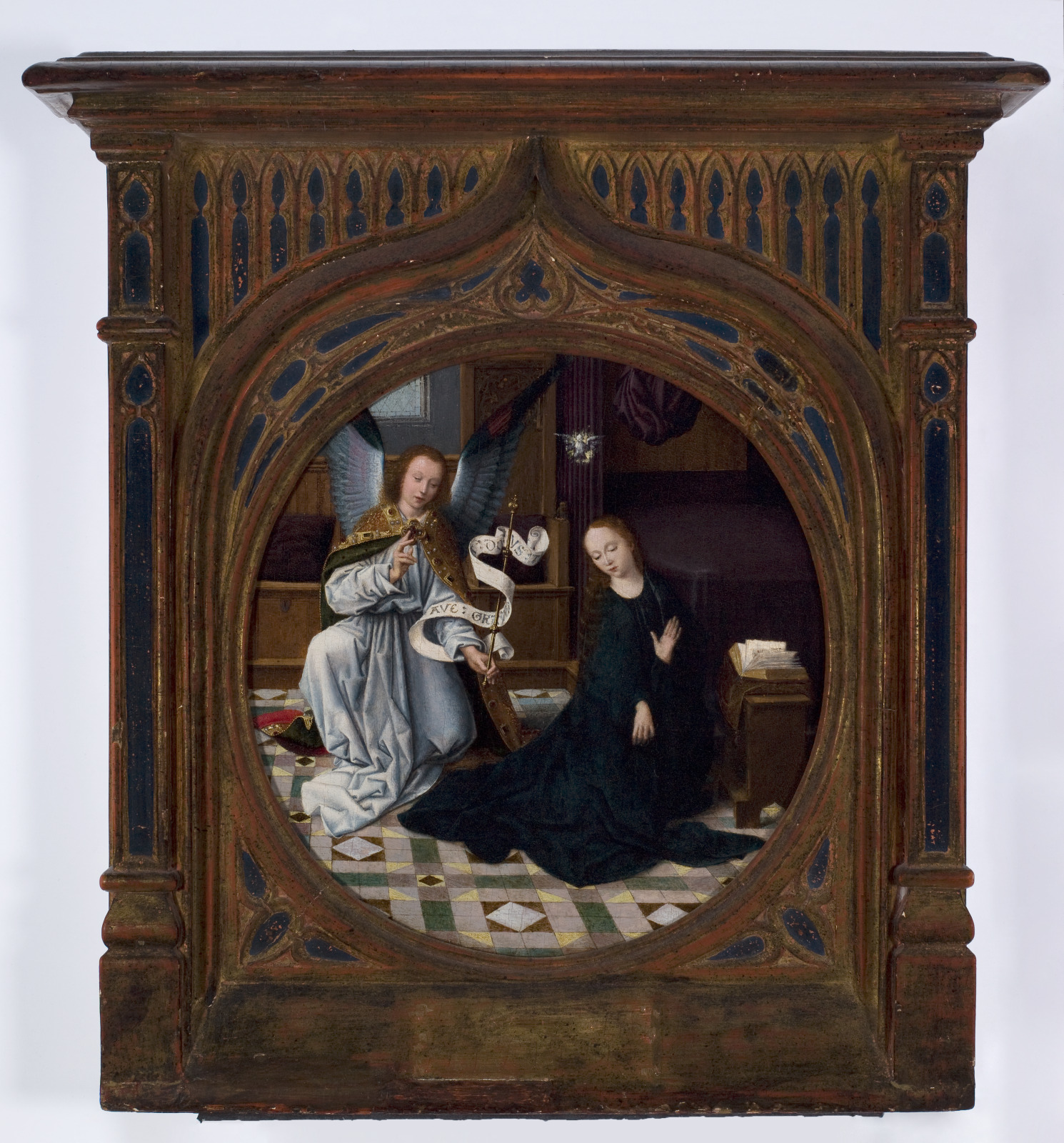
Gerard David, Netherlandish, c.1460–1523; Annunciation, c.1515; oil on panel; image only: 12 x 10 5/8 inches; Saint Louis Art Museum, Museum Purchase 204:1942
An angel kneels at left, having just entered Mary’s bedchamber to tell her that she will bear Jesus, the son of God. The angel’s white robe is reminiscent of the contemporary garments worn by the acolytes who assisted priests in celebrating Roman Catholic Mass. The meticulously detailed jeweled cape refers to the glories of heaven and also reminds worshippers of the ritual commemoration of Jesus’ death that takes place at every church altar. Mary, who according to Gospel accounts was reading the book of Isaiah, reacts to the arrival of her holy visitor. Her gesture and the fluttering pages of her open Bible suggest her surprise.
March 9, 2024
Pilgrim Flask, with the Arms of Fernando Ruiz de Castro, 6th Count of Lemos

Francesco Patanazzi, Italian, active 1585–1616; Pilgrim Flask, with the Arms of Fernando Ruiz de Castro, 6th Count of Lemos, 1599–1600; tin-glazed earthenware and pewter; with cap, maximum width: 16 3/8 x 10 7/8 x 5 3/4 inches; Saint Louis Art Museum, Museum Purchase 37:1925a,b
-
See Additional Views
![371925dig_6_2]()
Antonio Patanazzi, Italian, active by c.1570; Pilgrim Flask, 1599–1600; tin-glazed earthenware with pewter stopper; 16 3/8 x 10 7/8 x 5 3/4 inches; Saint Louis Art Museum, Museum Purchase 37:1925a,b
With gold hues and blue accents, a whirling design of fantastic creatures flanks a central coat of arms representing the Spanish nobleman Fernando Ruiz de Castro, (1548–1601). The patterns reflect wall decorations from the ancient Palace of Nero, unearthed in Rome in the late 15th century.
March 8, 2024
Whistle (nsiba) with Figural Finial
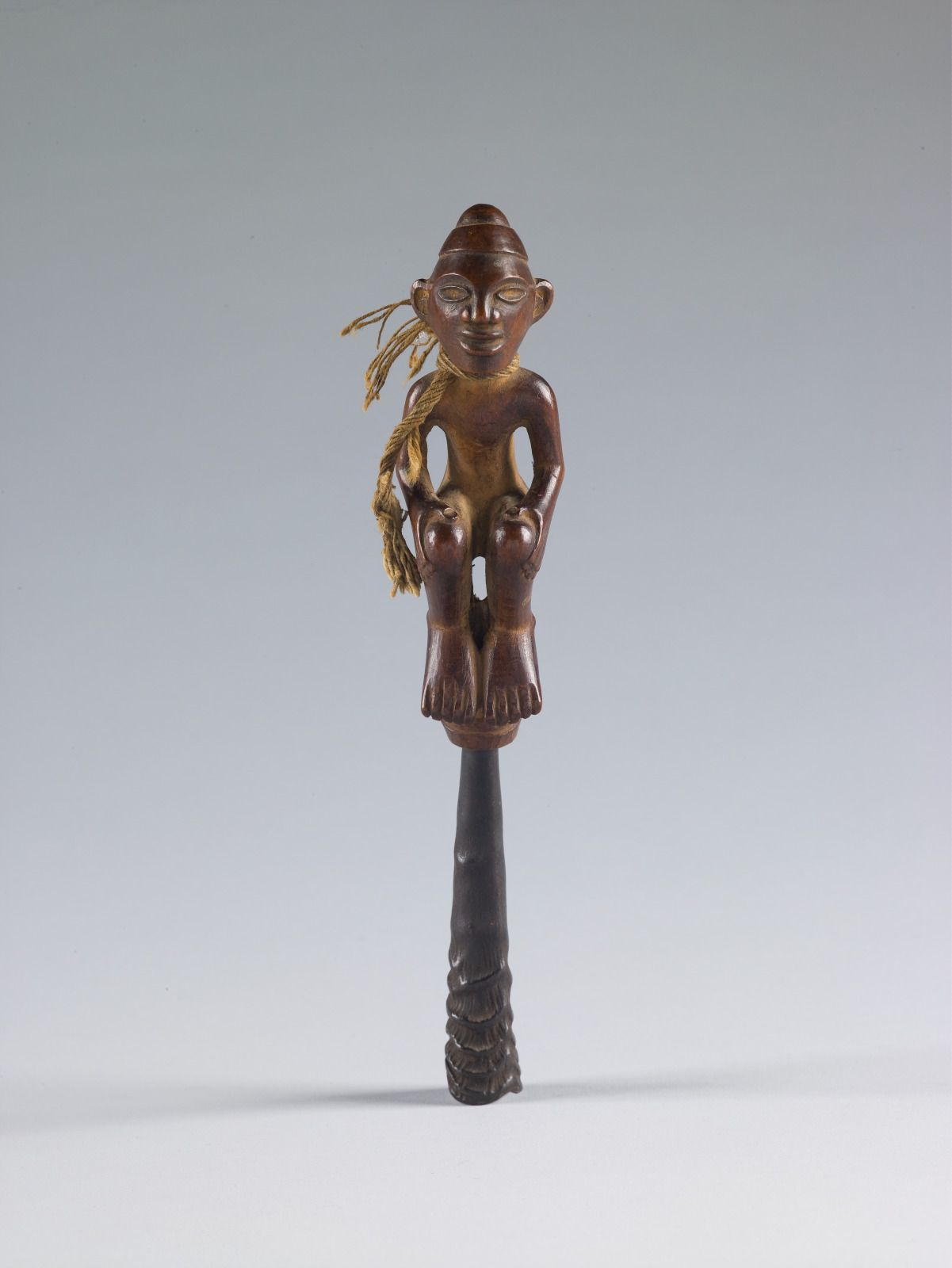
Kongo artist, Democratic Republic of the Congo, Congo, or Angola; Whistle (nsiba) with Figural Finial, late 19th–early 20th century; wood, duiker antelope horn, fiber, pigment; 7 3/4 x 1 3/8 x 1 1/2 inches; Saint Louis Art Museum, Museum Shop Fund and funds given by the Honorable and Mrs. Charles A. Shaw 155:2003a,b
Antelope-horn whistles such as this, with finely executed miniature sculptures, belonged solely to banganga, or ritual specialists, and certain chiefs. The whistles were important components of minkisi, or medicines, among a nganga’s ensemble of implements, and often were attached to larger bundled and figural minkisi as well. Minkisi and banganga may be metaphorically related to the hunt, in terms of their power to assist in vanquishing wrongdoing.
Kongo game hunters and ritual practitioners alike use horns of the duiker antelope (Silvicapra grimmia) as whistles for their respective pursuits. Music is integral to ritual proceedings. Multi-layered sounds and rhythms emanating from such instruments as drums, gongs, bells, and the human voice, as well as whistles, are critical to invoking the presence of spirits.
March 7, 2024
Covered Censer with Design of Dragons and Phoenixes in Clouds and Sea Creatures in Waves

Covered Censer with Design of Dragons and Phoenixes in Clouds and Sea Creatures in Waves, mid- to late 18th century; Chinese, Qing dynasty, Qianlong period; bronze with gilding; 13 5/8 x 9 3/16 x 7 5/16 inches; Saint Louis Art Museum, Gift of Robert E. Kresko 13:2005a,b
This censer’s extravagant shape and forms exemplify the overblown and highly decorative style of the late 18th century. Only imperial dragons inhabit the body; lesser sea creatures are relegated to the foot of the vessel. The ungainly proportions of this vessel were misinterpretations of Western art. This censer was an imperial commission from the imperial workshops and likely decorated the interior of a Western-style Chinese palace.
March 5, 2024
Two-Handled Cup and Cover
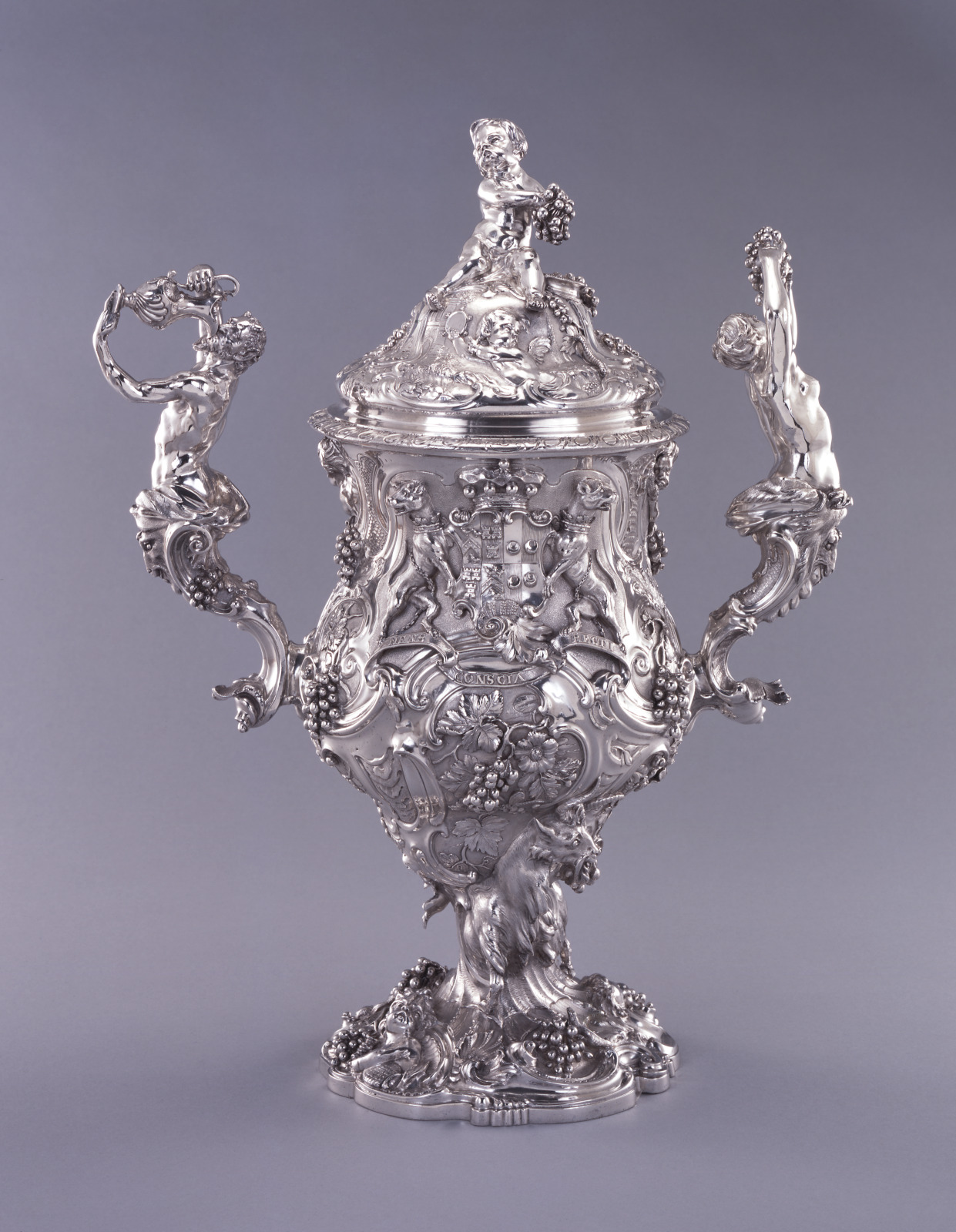
made by Charles Frederick Kandler, English (born Germany), active c.1735, died 1778; Two-Handled Cup and Cover, 1749–50; silver; cup and lid: 16 7/8 x 14 x 7 inches; Saint Louis Art Museum, Gift of Morton J. May 252:1952a,b
Covered with rich embellishments, including cherubs, grapevines, goats, bees, and shells, this opulent object was intended for ceremonial display. Its decoration celebrates Bacchus, the ancient Roman god of wine. The sheer exuberance of the forms, most notable in the arching figures that almost break free of the cup’s surface, exemplifies the joyous revelry of 18th-century Rococo art. This lavish cup and cover were cast in silver and then finished by adding texture to the grape leaves, the goats’ fur, and the other ornamentation. Although based on forms in the everyday world, the final ensemble is definitely not something found in nature.
March 4, 2024
Fishing Boats at Saintes-Maries-de-la-Mer
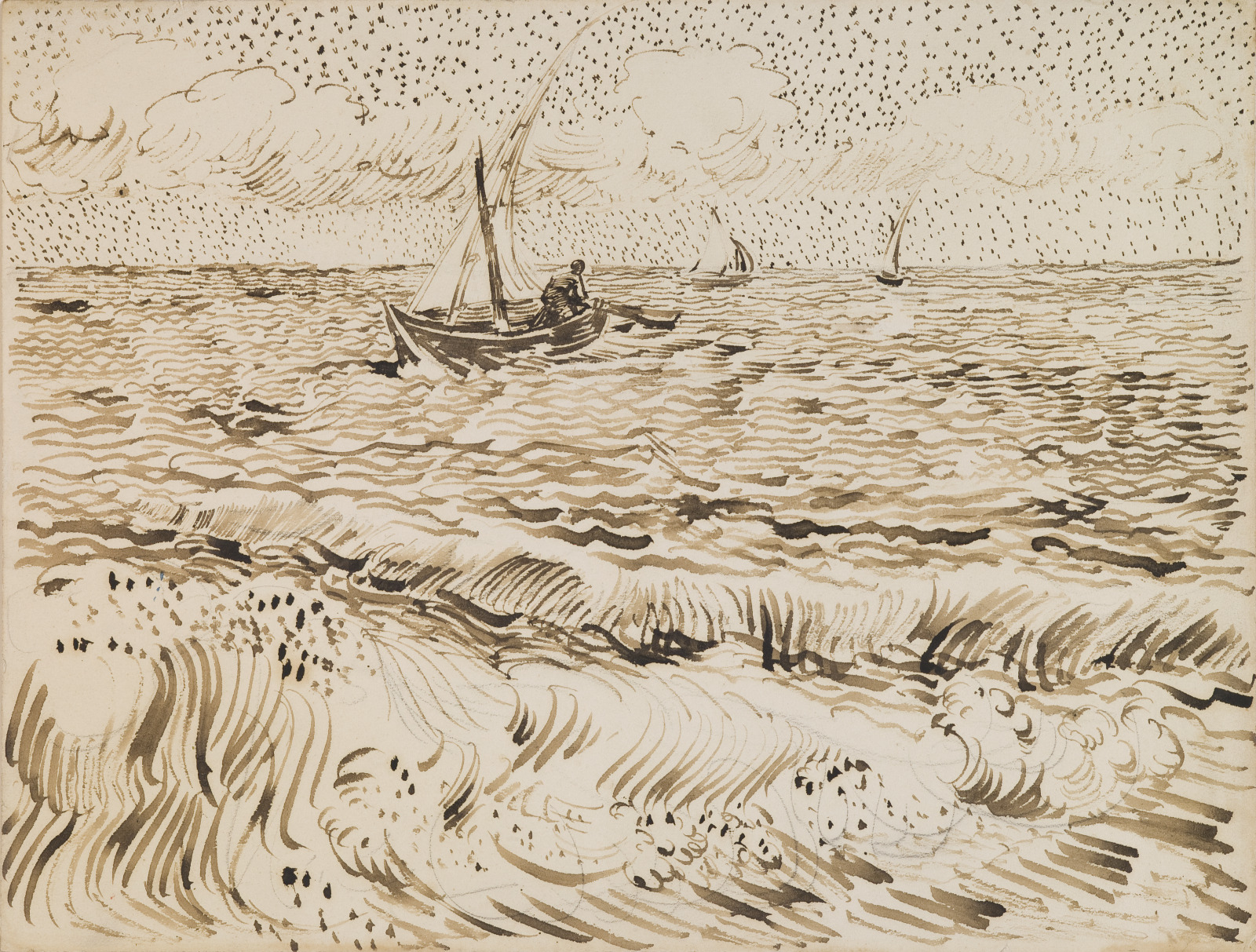
Vincent van Gogh, Dutch, 1853–1890; Fishing Boats at Saintes-Maries-de-la-Mer, 1888; pen and ink and pencil; 9 5/8 x 12 9/16 inches; Saint Louis Art Museum, Gift of Mr. and Mrs. Joseph Pulitzer Jr. 137:1984
The elevated horizon line flattens the sense of depth in this seascape, while at the same time the spontaneous ink marks show a sensitivity to depicting atmospheric conditions. In early June 1888, Vincent van Gogh made his only excursion to the Mediterranean Sea, to Saintes-Maries-de-la-Mer. At the beach, where fisherman worked and kept their boats, he made several quick sketches.
Drawings are made for all kinds of reasons, and he used some of his sketches from the beach later as studies for paintings. The circumstances of the drawing however are reversed — it is in fact a replica of a painting that was made while in Saintes-Maries, perhaps even on the beach. Although van Gogh frequently included informal sketches of his paintings in his letters, this more formal independent drawing was sent to a fellow artist in hopes that he might purchase the work.
March 3, 2024
Treasure Box (wakahuia)

Maori artist, New Zealand; Treasure Box (wakahuia), early 19th century; wood, shell, greenstone; 4 9/16 x 4 x 19 15/16 inches; Saint Louis Art Museum, Gift of Morton D. May 203:1975a,b
Lavishly carved, the rich and fluid relief sculpture adorning this lidded box reveals male and female ancestral figures. On the base, shown to the right, two male figures flank a female figure at center. Their heads extend from either end of the container to form knobs, which allowed it to hang from the rafters of a Maori home. Household residents typically viewed the boxes from below.
Created primarily to hold the white-tipped black feathers of the now-extinct huia bird, these boxes also stored personal adornments made of materials such as wood, bone, greenstone, and whale ivory. Although a container for taonga (treasures), a wakahuia was itself a cherished object.
March 2, 2024
Landscape with a Goatherd

Adam Pynacker, Dutch, c.1620–1673; Landscape with a Goatherd, c.1650; oil on panel; 15 1/4 x 24 inches; Saint Louis Art Museum, Museum Shop Fund, Friends Endowment Fund, and funds given by Christian B. and Ethel K. Peper, Mrs. John M. Olin, Mary and Oliver Langenberg, Jacob M. Heimann and L. O. Kipnis by exchange, Mr. and Mrs. Stanley F. Jackes, Mr. and Mrs. Newell Augur, Mr. and Mrs. Lester A. Crancer Jr., Mrs. Clark P. Fiske, Mr. and Mrs. James H. Grove, Mrs. G. Gordon Hertslet, Miss Helen M. Longmire, the John Allan Love Charitable Foundation, the Columbia Terminals Company Charitable Trust, Mrs. Tyrell Williams by exchange, Mr. and Mrs. Charles W. Lorenz; Mrs. W. Welles Hoyt and General and Mrs. Rollin Tilton, by exchange, the John R. Goodall Charitable Trust, Mrs. G. L. Harris, Mr. and Mrs. Edwin M. Johnston, Mr. and Mrs. Joseph Ruwitch, Mr. and Mrs. Ethan A. H. Shepley Jr., Charles H. Yalem by exchange, Mr. and Mrs. George K. Conant Jr., Mr. and Mrs. Sam Langsdorf Jr., Mr. and Mrs. Russell Fette, Mr. and Mrs. Frank Block, Mrs. Earl Bumiller, Mr. and Mrs. Max Diamant, Dr. and Mrs. Thomas F. Eggleston, Gallery of the Masters, Inc., Mr. and Mrs. Richard Kniep, Mr. and Mrs. Martin Kodner, Dr. and Mrs. William A. Murphy, Dr. and Mrs. Eli R. Shuter, Versie T. Walser, and 316 additional donors to the 1982 Art Enrichment Fund 150:1982
This view of a goatherd overseeing his charges demonstrates Adam Pynacker’s mastery of color as a means to capture the light and atmosphere of the Roman countryside. By contrasting the pale, tan tones of the vines on the right against the darker background, and varying the reds and blues in the fabrics of the goatherd’s coat and belongings, he is able to capture the rich feeling of the dense afternoon sun as it washes across the southern landscape.
March 1, 2024
Chrysanthemums and Autumnal Plants
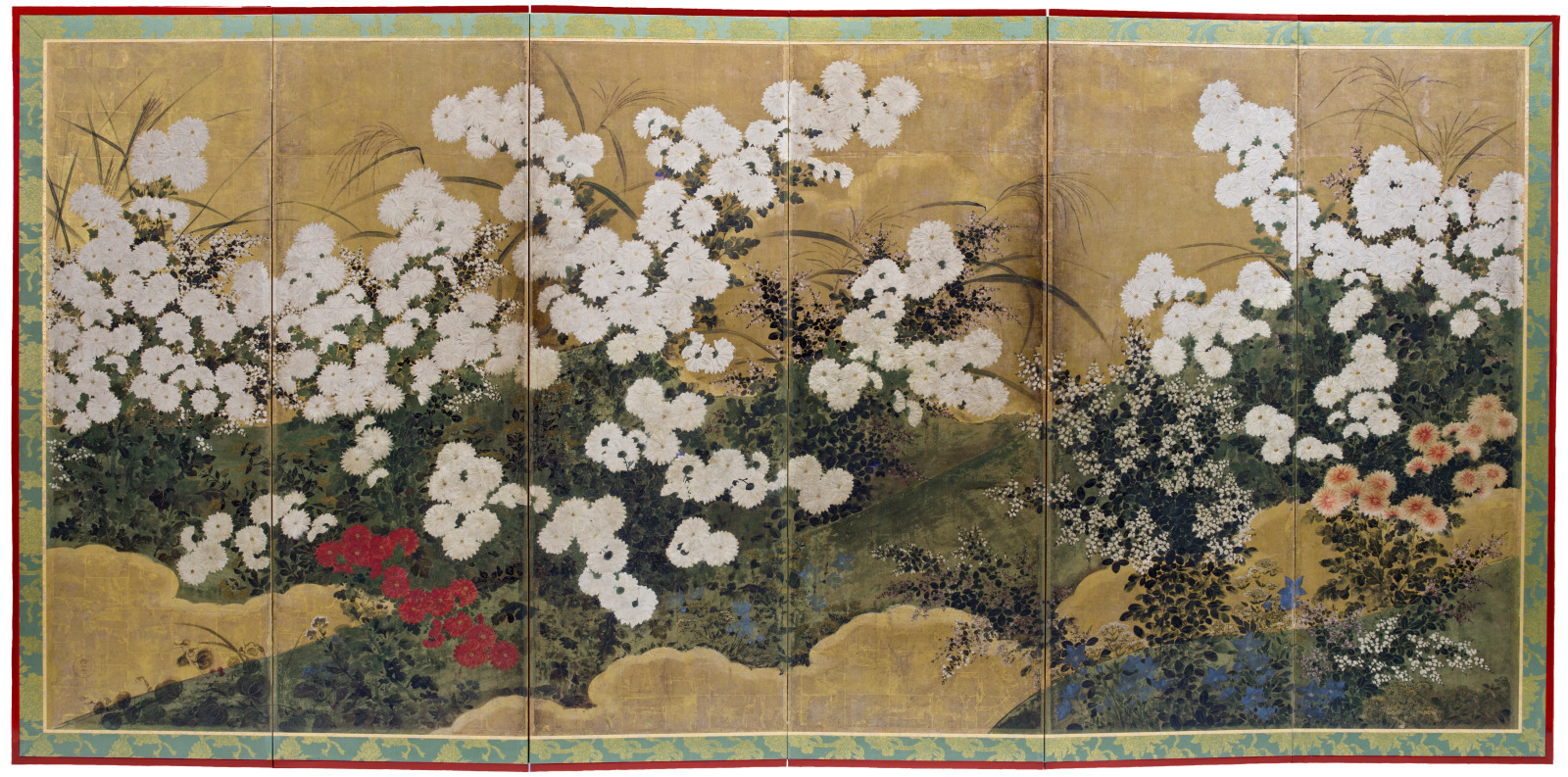
Chrysanthemums and Autumnal Plants, late 17th–early 18th century; Japanese, Edo period; six-panel folding screen; ink, color, and gold leaf on paper; overall: 66 1/2 x 136 inches; Saint Louis Art Museum, Gift of William K. Bixby 962:1920
This screen features chrysanthemums (kiku in Japanese) and autumnal plants (akikusa, literally “autumnal grasses”) against a gold background enlivened with golden clouds. The chrysanthemums are shown in three distinct colors: white, orange, and red. The petals of the white chrysanthemums were painted in a raised technique called moriage. The white-flowering variety of the bush clover (shirohagi; Lespedeza japonica) in the lower right corner, a favorite motif among Japanese poets since ancient times, is associated with melancholy and unrequited love. Blue Chinese bellflowers (kikyō; Platycodon grandiflorus) also animate the lower right while clumps of delicate Japanese silver grass (susuki; Miscanthus sinensis) emerge from behind the chrysanthemums at the back.
Together, the bush clover, Chinese bellflower, and Japanese silver grass are three of the so-called “seven grasses of autumn” (aki no nanakusa) and reinforce the seasonal theme. At the lower left corner is a round I’nen seal impressed in red. Tawaraya Sōtatsu (1570–1643), one of the founders of the Rinpa school, first used this seal, and it continued to be used by successive artists in his workshop.
This screen was the first Japanese painting to enter the Museum’s collection in 1920. The Museum is grateful to the Sumitomo Foundation in Tokyo, Japan, for providing a generous grant to fund the full-scale conservation and remounting of this screen at Nishio Conservation Studio in Washington, D.C.
February 26, 2024
In Deep Thought

Alfred Stevens, Belgian, 1823–1906; In Deep Thought, 1881; oil on canvas; 18 3/4 x 23 1/4 inches; Saint Louis Art Museum, Museum Purchase 58:1916
The Belgian painter Alfred Stevens was a good friend of Manet and Degas, and like both of those artists, painted scenes of fashionable modern life. Here, a woman in an elegant pink dress looks abstractly out to sea while her straw hat and gloves lie on the table and her pet dog sits nearby. The scene takes place at the Norman port of Le Havre; steamboats, a sign of modernity, are visible in the distance.
February 25, 2024
Moonlight

Edvard Munch, Norwegian, 1863–1944; Moonlight, 1896; printed c.1906; color woodcut on Japan paper; image: 15 13/16 x 18 9/16 inches, sheet: 18 7/8 x 23 5/16 inches; Saint Louis Art Museum, Gift of General and Mrs. Leif J. Sverdrup 338:1952
This seemingly straightforward image depicts a woman standing in front of a house and a tree. However, Edvard Munch imbued the picture with psychological meaning. The moonlight bathes the woman’s face in a silvery light, giving it a ghostly appearance, while also casting an ominous black shadow behind her.
Munch helped revive the centuries-old medium of woodcut in the late 1800s. He exploited its expressive potential through roughly cut lines combined with accents of color. However, it was Munch’s innovative printing technique that was most significant: he cut the block into pieces that fit together like a jigsaw puzzle, allowing him to use different colors and inks on each separate piece. He also printed another block with visible woodgrain on top of the image. The texture creates a thin veil, adding to its otherworldly appearance.
February 24, 2024
Plate with Design of Arabic Inscription in Kufic Script
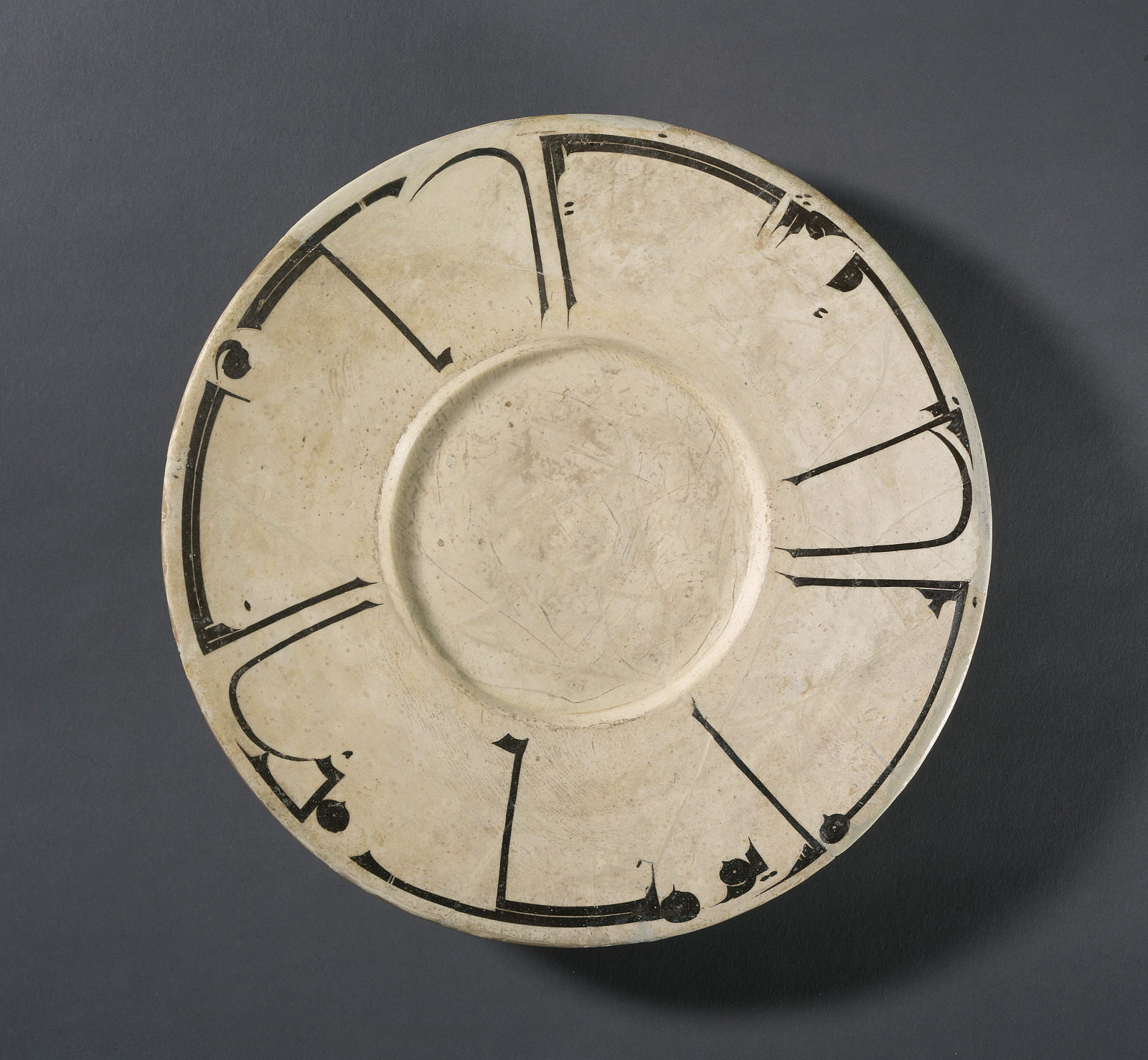
Plate with Design of Arabic Inscription in Kufic Script, 10th century; Persian, Iran, Samanid dynasty; glazed and slip-painted earthenware; 1 3/4 x 14 7/8 inches; Saint Louis Art Museum, Museum Purchase 283:1951
Painted in the long, elegant strokes of Kufic script, this plate’s inscription is among the most beautiful examples of calligraphy from the early Islamic period. The elegant inscription decrees that “Planning before work protects you from regret.” The plate is one of a group of vessels that admonish the owners and their guests to be assiduous, careful, and virtuous in simple yet profound mottoes by which one might live a good life. The white slip body on which the calligraphy appears is related to Chinese porcelains and stonewares imported to Baghdad, the seat of power and commerce in the early Islamic world. The white slip, or liquefied clay, was painted over the surface of the vessel to mask its coarse body and to suggest coveted Eastern porcelains. Applying ornamental calligraphy to the expansive white surface created designs that were bold and appealing.
February 23, 2024
Night Blossom Chandelier
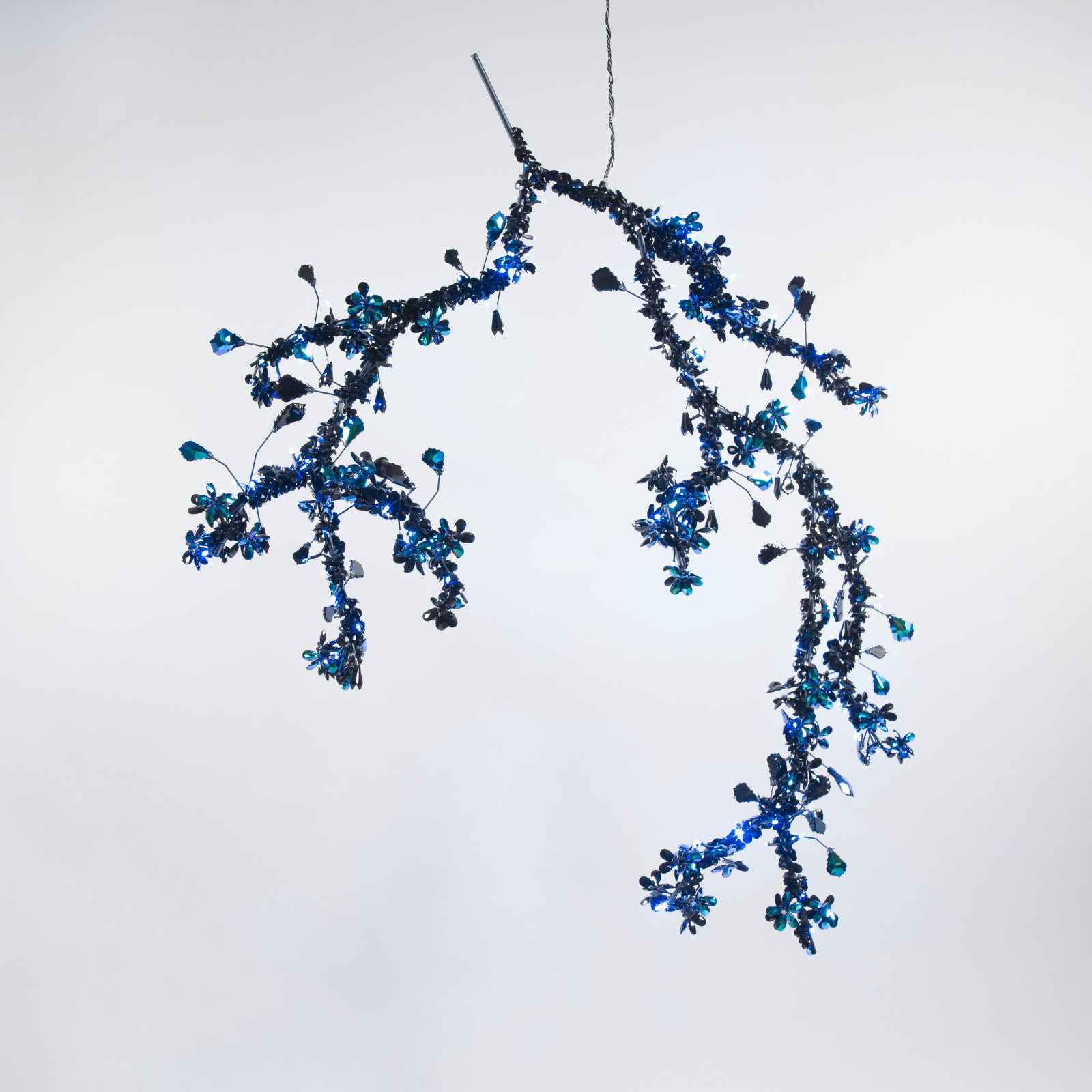
Tord Boontje, Dutch, born 1968; made by Swarovski, Tyrol, Austria, founded 1892; Night Blossom Chandelier, 2003; glass, LED lights, and lacquered steel; 40 1/2 x 57 1/2 x 14 1/2 inches; Saint Louis Art Museum, Funds given by Emily Rauh Pulitzer in honor of Cara McCarty 1:2006; © Tord Boontje, Design for Swarovski
This floating, crystal-encrusted branch is a contemporary chandelier, commissioned by the Austrian crystal manufacturer, Swarovski. As with chandeliers from other eras, nature was Tord Boontje’s point of departure. His work is inspired by the romantic decoration on 17th and 18th-century objects, while his use of tiny blue LED lights wrapped around a branch-shaped form places Night Blossom firmly in the 21st century. Boontje’s designs are like jewelry: they are about romance and ornament.
February 22, 2024
Jar with Design of Floral Petals
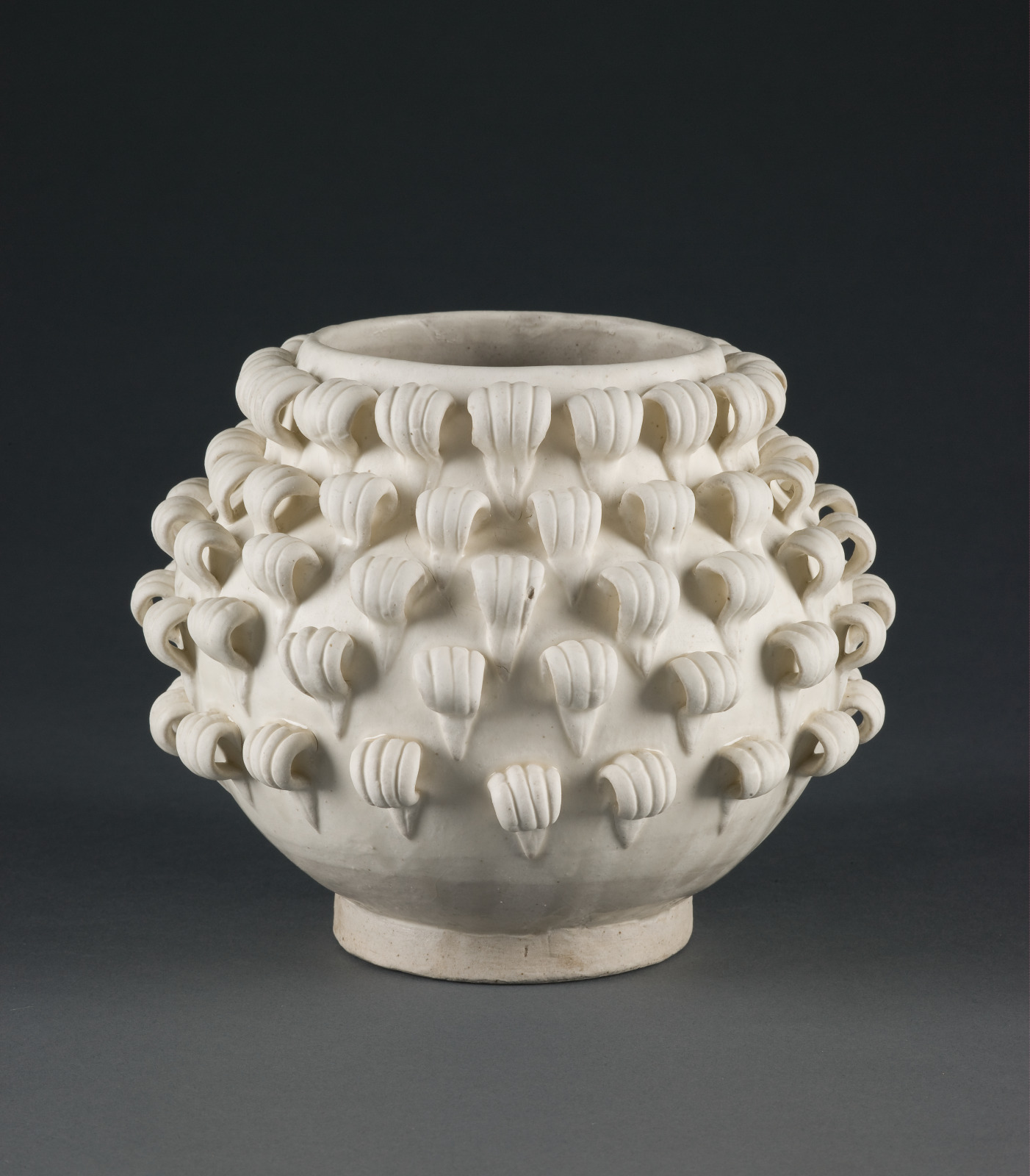
Jar with Design of Floral Petals, late 11th–early 12th century; Chinese, Northern Song dynasty; stoneware with white slip under transparent glaze; 5 1/4 x 7 1/2 inches; Saint Louis Art Museum, Funds given in memory of Elsie B. Valier by her children Biron A. Valier Jr. and Elise V. Barr 61:2010
This jar with a globular body and a short neck is decorated with five applied rows of grooved floral petals like those of a chrysanthemum. Each petal is attached to the body so as to ensure a definitive curve and ends in a small pointed tail pressed onto the contour of the jar. The rows end well above the thick foot and below the slightly incurved mouth rim. Dipped twice in white slip—clay thinned with water—and covered with a very thin clear glaze, the surface is predominately matt and resembles cake icing. The slips end in two straight lines low on the body while the clear glaze drips toward the foot and is also applied as a thin coating on the interior of the vessel.
February 21, 2024
Lady in White

Thomas Wilmer Dewing, American, 1851–1938; Lady in White, c.1901; oil on panel; 20 1/8 x 15 7/8 inches; Saint Louis Art Museum, Museum Purchase and the Eliza McMillan Trust 102:1988
An elegant woman poses in profile. Though the painting’s small size and close view would suggest a certain intimacy, she seems quite remote and absorbed in her own thoughts. In late 19th-century America, women were understood to maintain ideals of truth and beauty, which the woman in this painting embodies. She is presented more as an object to be enjoyed for its refinement, like the graceful Empire chair, antique gown, and magnificent gilded frame surrounding the painting.
February 20, 2024
St. Jerome Reading in an Italian Landscape
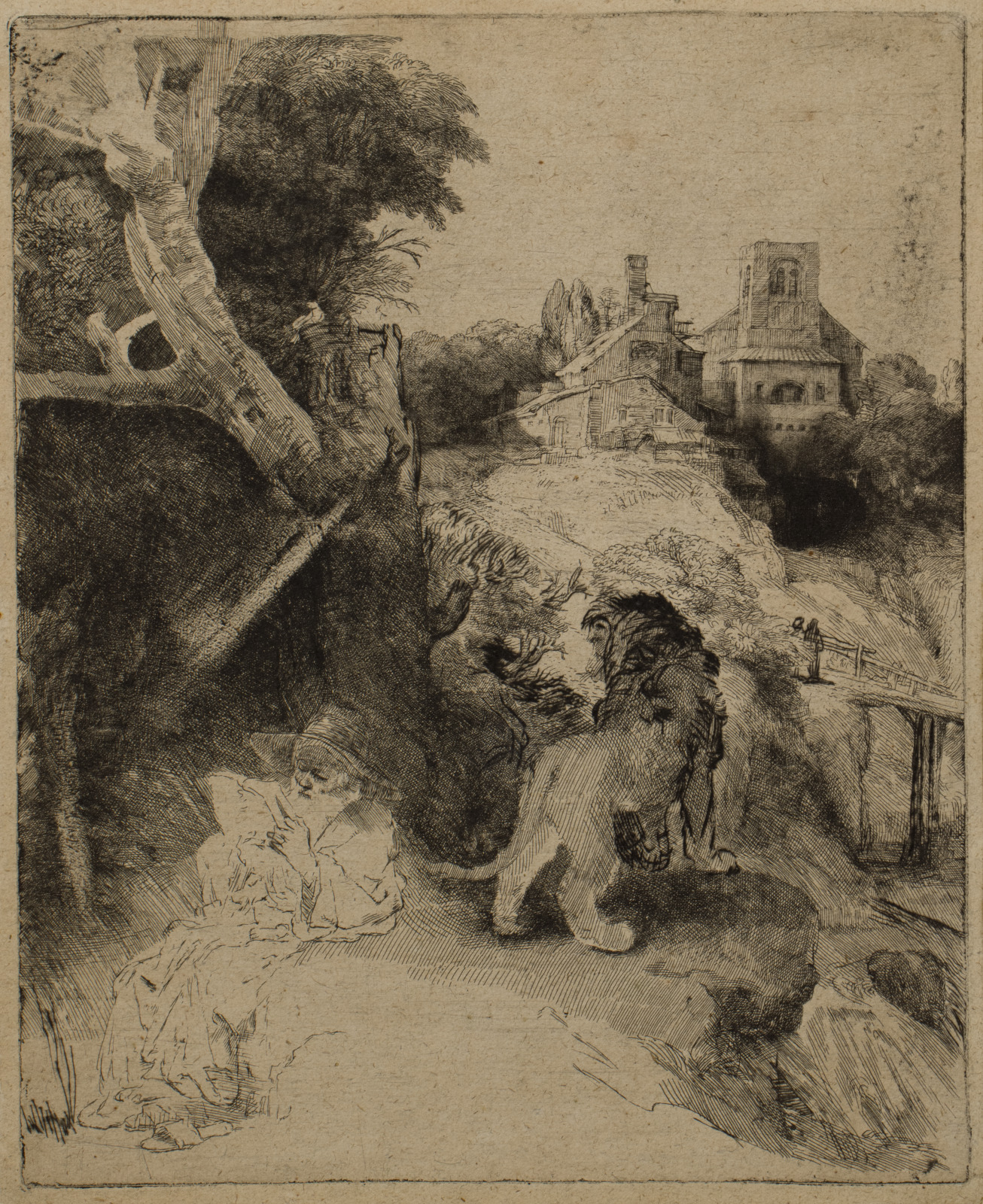
Rembrandt van Rijn, Dutch, 1606–1669; St. Jerome Reading in an Italian Landscape, c.1653; etching, drypoint, and engraving on oatmeal paper; plate: 10 1/4 x 8 1/4 inches, sheet: 10 5/8 x 8 5/8 inches; Saint Louis Art Museum, Funds given in honor of Brent R. Benjamin 96:2021
Paper itself is transformed into the light that streams across the lower left of this print, illuminating the figure of St. Jerome absorbed in reading. Around the figure of the Christian saint, Rembrandt’s inventive facility in printmaking is on display. Dark, velvety drypoint lines represent the mane of the lion, Jerome’s companion. These marks contrast with the tremendous variety of etched patterns that describe a natural and built landscape inspired by the work of 16th-century Venetian artists. Rembrandt engaged with a long history of representing St. Jerome in European art but only indirectly alluded to his fame as the first translator of the Bible into Latin. Instead, Jerome sits here as a model of the peace promised by a contemplative life.
February 19, 2024
Wall Clock, from the Casa Milà, Barcelona, Spain
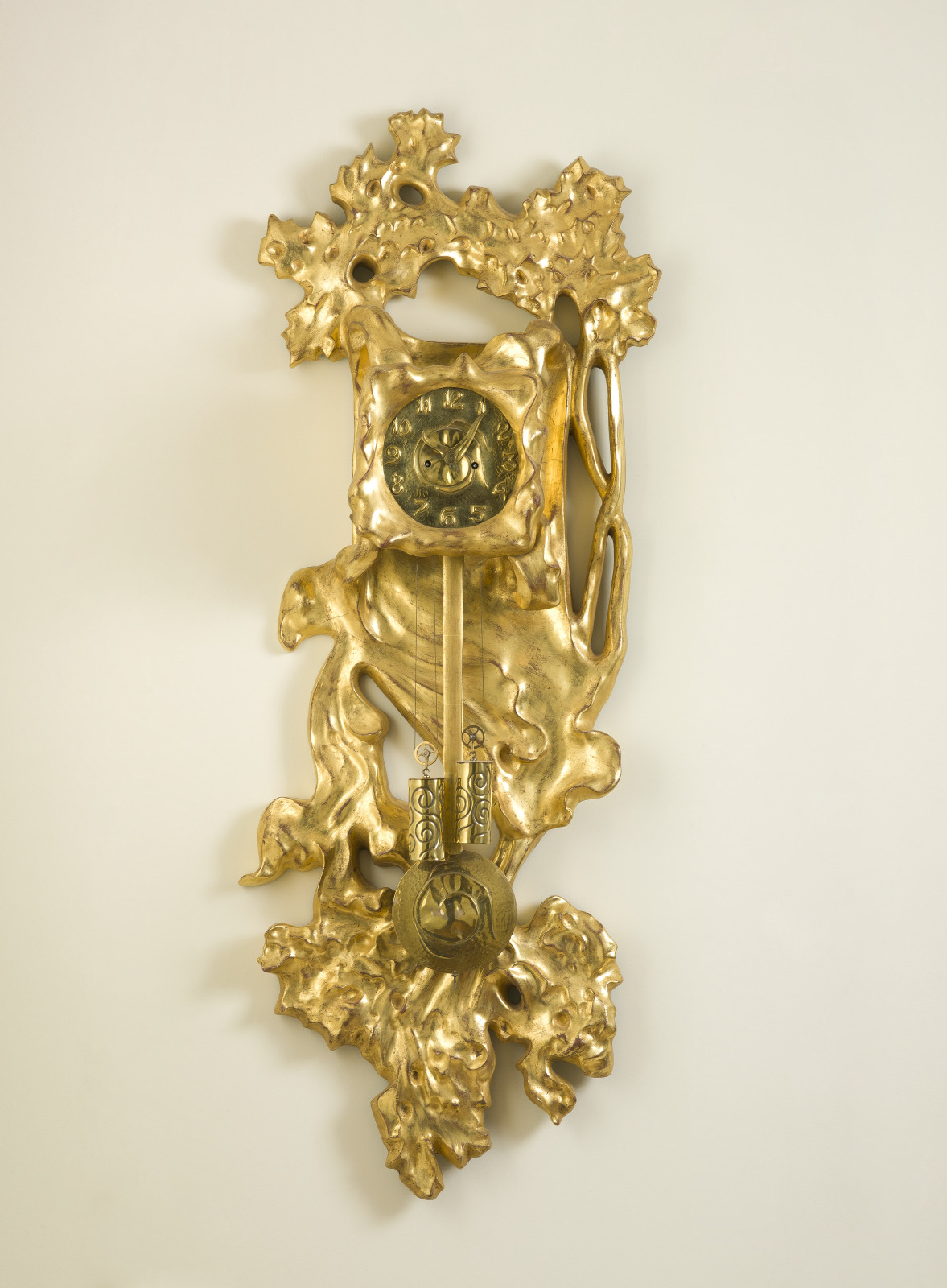
Antoni Gaudi, Spanish, 1852–1926; Wall Clock, from the Casa Mila, Barcelona, Spain, c.1909; gilded wood and plaster, brass, and metal; 51 x 18 x 7 inches; Saint Louis Art Museum, Richard Brumbaugh Trust in memory of Richard Irving Brumbaugh and in honor of Grace Lischer Brumbaugh, and funds given by the Pulitzer Publishing Foundation, Mr. and Mrs. William R. Orthwein, the Decorative Arts Society, Mrs. Charles W. Lorenz, Mr. and Mrs. David Mesker, Roxanne H. Frank, Nancy and Kenneth Kranzberg, Mrs. Eleanor J. Moore, Jane and Warren Shapleigh, donors to the 1996 Annual Appeal; and Museum Purchase, by exchange 2:1997
For his Casa Milà apartment building in Barcelona, Gaudi designed furnishings, ceramic floor tiles, and wrought-iron window grilles that complemented his sculptural treatment of the building. Many of these forms were inspired by aquatic themes; unlike some of his contemporaries, Gaudi did not copy nature but sought its essences. This clock is one of several similar versions made for the Casa Milà. Like the building’s undulating façade, the clock appears as a malleable mass, stretched downward by the pull of gravity. Its asymmetrical distortions create an illusion of movement: the clock could, in fact, be a commentary on time, and even on life itself.
February 18, 2024
Long-necked Bottle

Long-necked Bottle, 12th century; Persian, Iran, Seljuk period; mold-blown glass; height: 9 3/4 inches, diameter of mouth: 7/8 inches, diameter of body: 4 inches, diameter of foot: 2 1/4 inches; Saint Louis Art Museum, Gift of Roland E. Jester in memory of Margo Jester 217:1993
The body of this bottle is decorated with four roundels containing peacocks, a very popular motif in Iranian textiles during late antiquity. The migration of motifs from one medium to another is characteristic of Islamic art. On one side of the vessel, the peacocks are facing each other, whereas on the other side they are facing the same direction. To form this decoration, the glass was blown into a two-part mold, indicated by the seam down the side of the vessel.
February 17, 2024
Young Woman at the Table (Samovar)

Walter Gramatté, German, 1897–1929; Young Woman at the Table (Samovar), 1922; oil on canvas, artist frame; 30 9/16 x 26 1/4 inches; Saint Louis Art Museum, Gift of The Eckhardt-Gramatte Foundation, Winnipeg, Canada 119:2019
Sonia Gramatté lays on a sofa in her husband’s studio, in front of a table set for coffee. Her reclining pose and questioning expression suggest Walter Gramatté may have woken her from a nap. The strong shadow across her forehead gives the otherwise ordinary scene an air of menace. Sonia was an accomplished musician and composer who shared the struggles of an artist’s life with Walter. He made more than 100 portraits of her during their marriage, which was cut short by his death from tuberculosis at 32.
February 16, 2024
Fishes, Wishes and Star Apple Blue

Sir Frank Bowling, English (born Guyana), born 1936; Fishes, Wishes and Star Apple Blue, 1992; acrylic on canvas; 39 1/2 x 40 inches; Saint Louis Art Museum, The Thelma and Bert Ollie Memorial Collection, Gift of Ronald and Monique Ollie 187:2017; © Frank Bowling
Sir Frank Bowling worked the surface of this canvas with clear acrylic gel, using a spatula or palette knife to mix in pearlescent pigments and bright colors. During a decade living in New York in the 1960s, Bowling acquired Abstract Expressionists’ fondness for creative and experimental paint application techniques. In the title Fishes, Wishes and Star Apple Blue, Bowling referenced the deep indigo color of the star apple, a fruit native to the Caribbean region, and his childhood in Guyana.
February 14, 2024
Floral Still Life with Shells
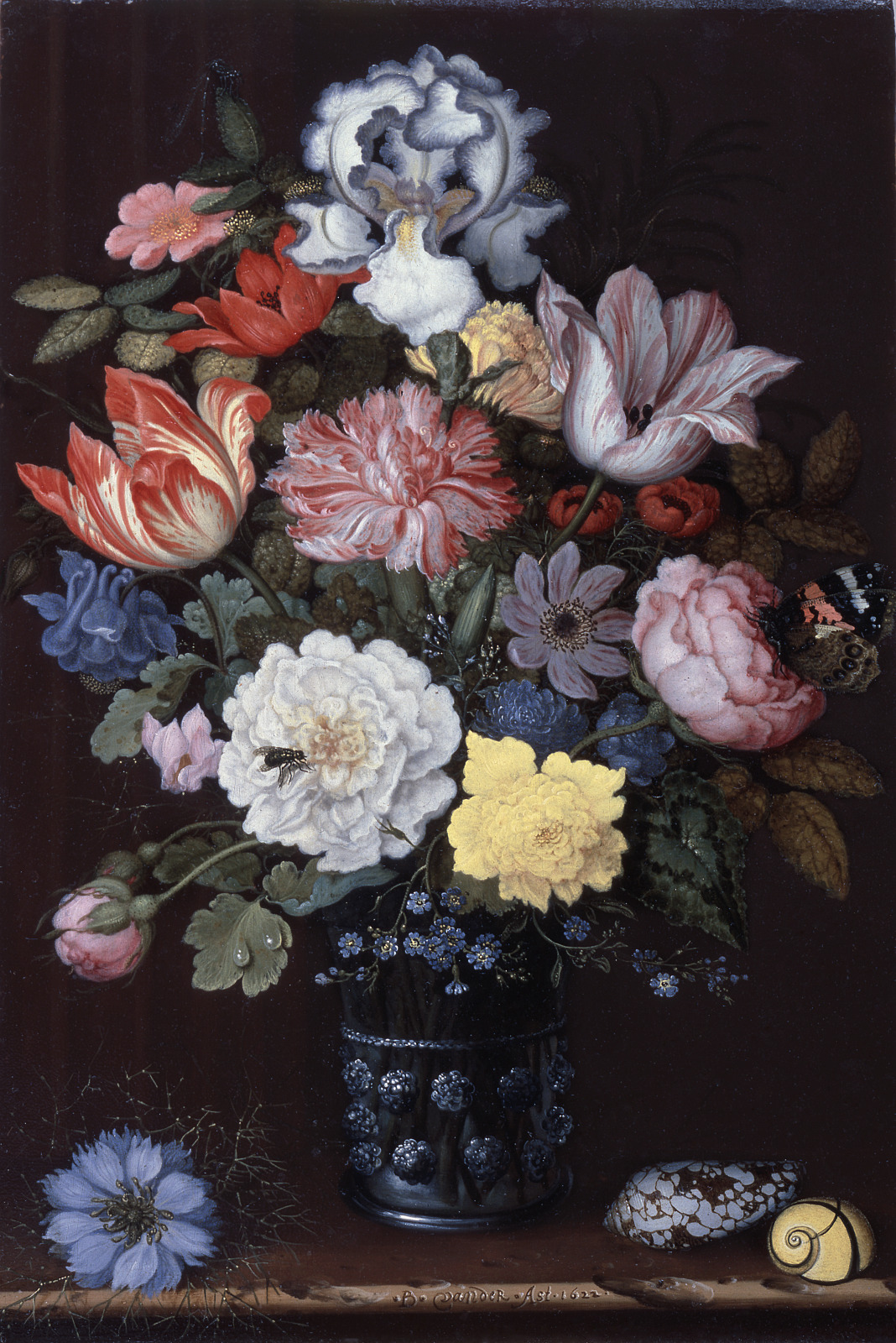
Balthasar van der Ast, Netherlandish, 1593/4–1657; Floral Still Life with Shells, 1622; oil on copper; 13 3/16 x 8 3/4 inches; Saint Louis Art Museum, Museum Purchase 172:1955
Flowers that bloom for a very short time and exotic shells arouse the sensual pleasures of sight, smell, and touch. Fifteen separate blossoms represent twelve different species in this still life. Balthasar van der Ast is credited with inventing the type of flower painting that included shells, and this early example is so exact that specialists can identify specific varieties. These blossoms, however, do not flower at the same time, reminding us that this seemingly realistic depiction is actually a lovely contrivance only possible in the painter’s fantasy realm.
February 13, 2024
The Hermit

Ignacio Zuloaga, Spanish, 1870–1945; The Hermit, 1904; oil on canvas; 46 1/4 x 42 1/2 inches; Saint Louis Art Museum, Museum Purchase 309:1916
A bearded Spanish man in rustic clothing stands with cross in hand alongside a stone ledge that forms a simple shrine. Ignacio Zuloaga represented this lonely figure with a meditative dignity, suggesting a comparison with the Christian hermit St. Paul of Thebes. Zuloaga was a prominent artist who enjoyed great success not only with views of his native Spain but also with society portraits of the wealthiest families in the United States.
February 11, 2024
The Calumny of Apelles
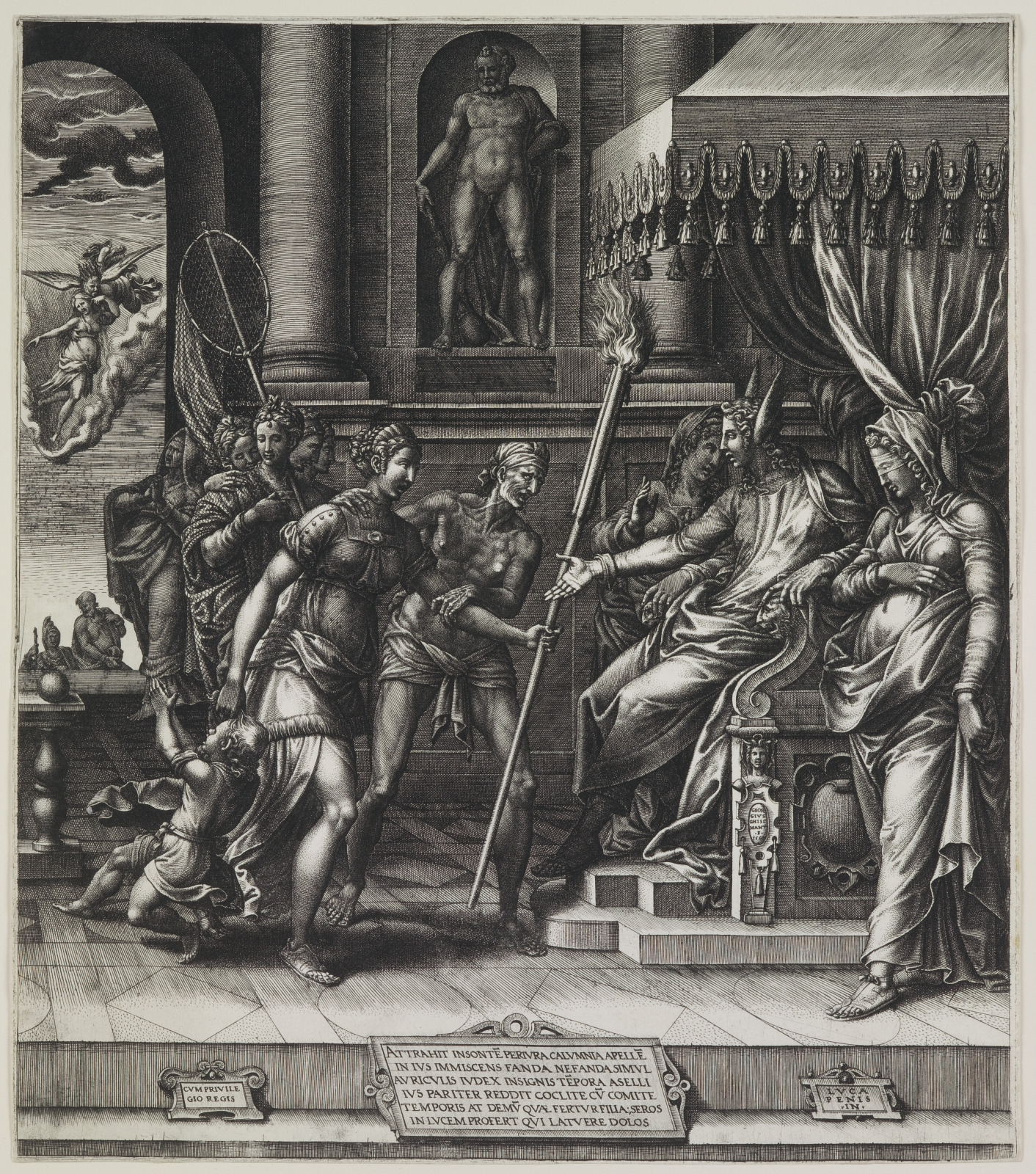
engraved by Giorgio Ghisi, Italian, 1520–1582; after Luca Penni, Italian, 1500/04–1557; The Calumny of Apelles, 1560; engraving; plate: 14 1/2 x 12 11/16 inches, sheet: 14 9/16 x 12 13/16 inches; Saint Louis Art Museum, Friends Fund 96:1982
This superb impression is based on an ancient description of a lost allegorical painting by the Greek artist Apelles. The lost painting, known as The Calumny of Apelles, expresses truths about calumny, or the telling of lies to ruin someone’s reputation. Apelles painted it after he himself had nearly been put to death because of a rival’s slander. Ghisi’s engraving recreates the allegory by depicting a judge with large donkey ears sitting at right. He is advised by two female figures who represent Ignorance and Suspicion. The judge extends his hand to Calumny, who approaches with a burning torch in her left hand and with her right hand drags the youthful Innocence, who lifts his hands in despair. Envy, Treachery, and Deceit bring Calumny closer to the long-eared man. Fortunately, Truth and Time appear as two small figures in a cloud in the background, implying that the unjustly accused will be vindicated.
February 10, 2024
Altar Frontal with Design of Dragons amidst Multicolored Clouds and Waves with Kui-Dragon Roundels
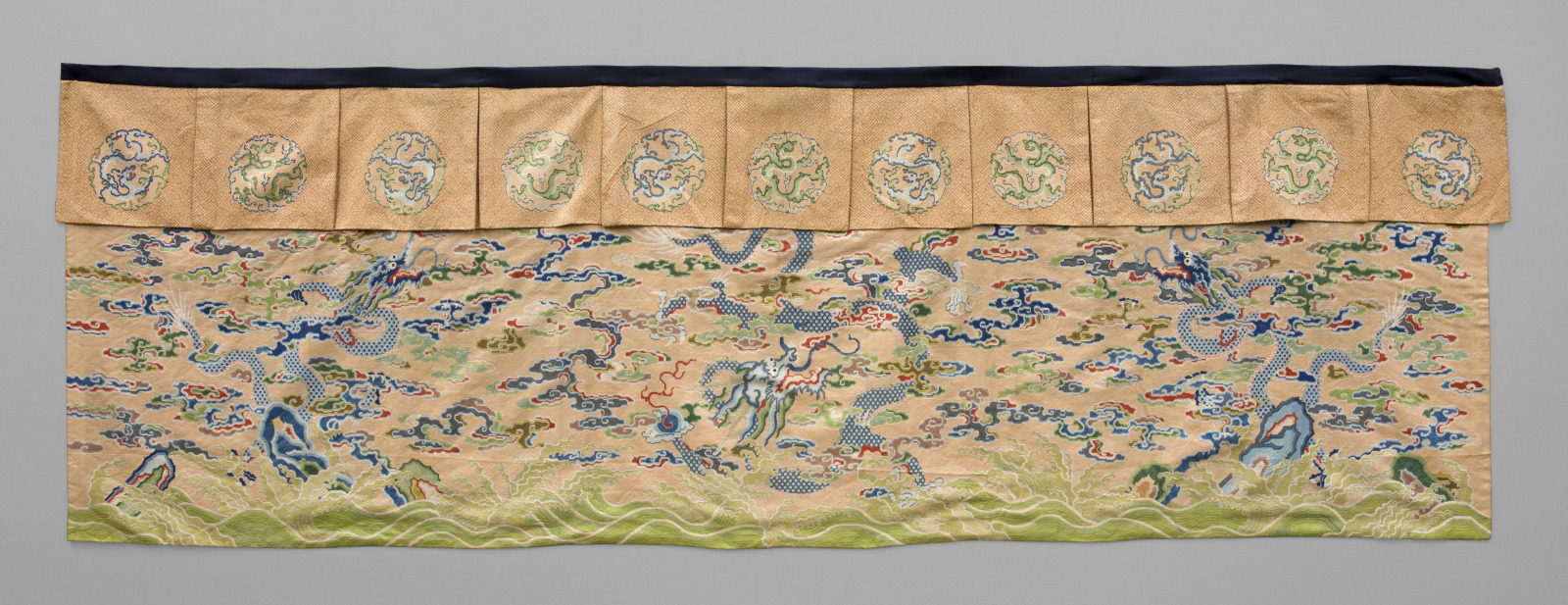
Altar Frontal with Design of Dragons amidst Multicolored Clouds and Waves with Kui-Dragon Roundels, mid- to late 18th century; Chinese, Qing dynasty, Qianlong period; silk floss embroidery in counted stitch on silk gauze; when stretched flat on one plane: 31 x 95 7/8 inches; Saint Louis Art Museum, Museum Purchase 84:1923
This textile has a narrow valance falling over a wide lower section. The bottom portion features three blue-scaled dragons amidst multicolored clouds rising above green waves. The central dragon clasps a flaming pearl representative of spiritual energy, wisdom, prosperity, and power. On the pleated valance above are 11 roundels with kui-dragons in blues and greens on a swastika-fret ground of the same apricot-colored silk floss forming the ground of the lower section. The textile is designed to be wrapped around three sides of a table, with five roundels facing forward and three each on the sides. The white plain-weave gauze ground is completely embroidered with multicolored floss silks in a technique called counted stitch, which is even more time-consuming than silk tapestry (kesi).
February 8, 2024
Judith Displaying the Head of Holofernes
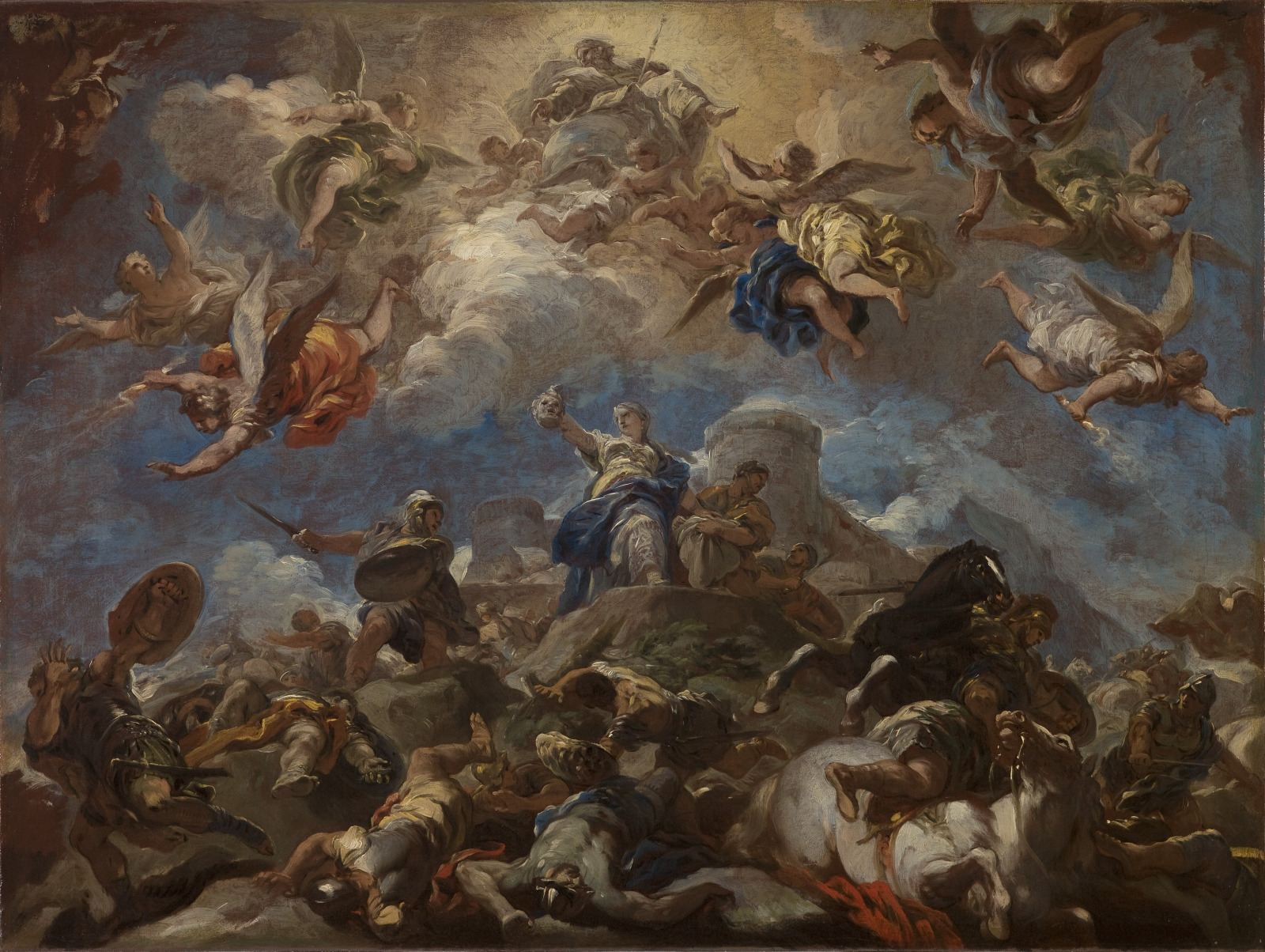
Luca Giordano, Italian, 1634–1705; Judith Displaying the Head of Holofernes, 1703–4; oil on canvas; 30 1/2 x 40 1/2 inches; Saint Louis Art Museum, Museum Purchase 60:1965
The body of the murdered Assyrian general Holofernes forms the focal point in this oil sketch, part of Luca Giordano’s last cycle of paintings. Holofernes led an army that besieged the city of Bethulia, home to the beautiful Jewish widow Judith. Having accepted the general’s invitation to dine, Judith beheaded him when he fell into an inebriated sleep. Standing as the central figure in this painting, Judith displays the trophy head to rouse the dispirited Israelites.
February 7, 2024
Return of the Fishermen
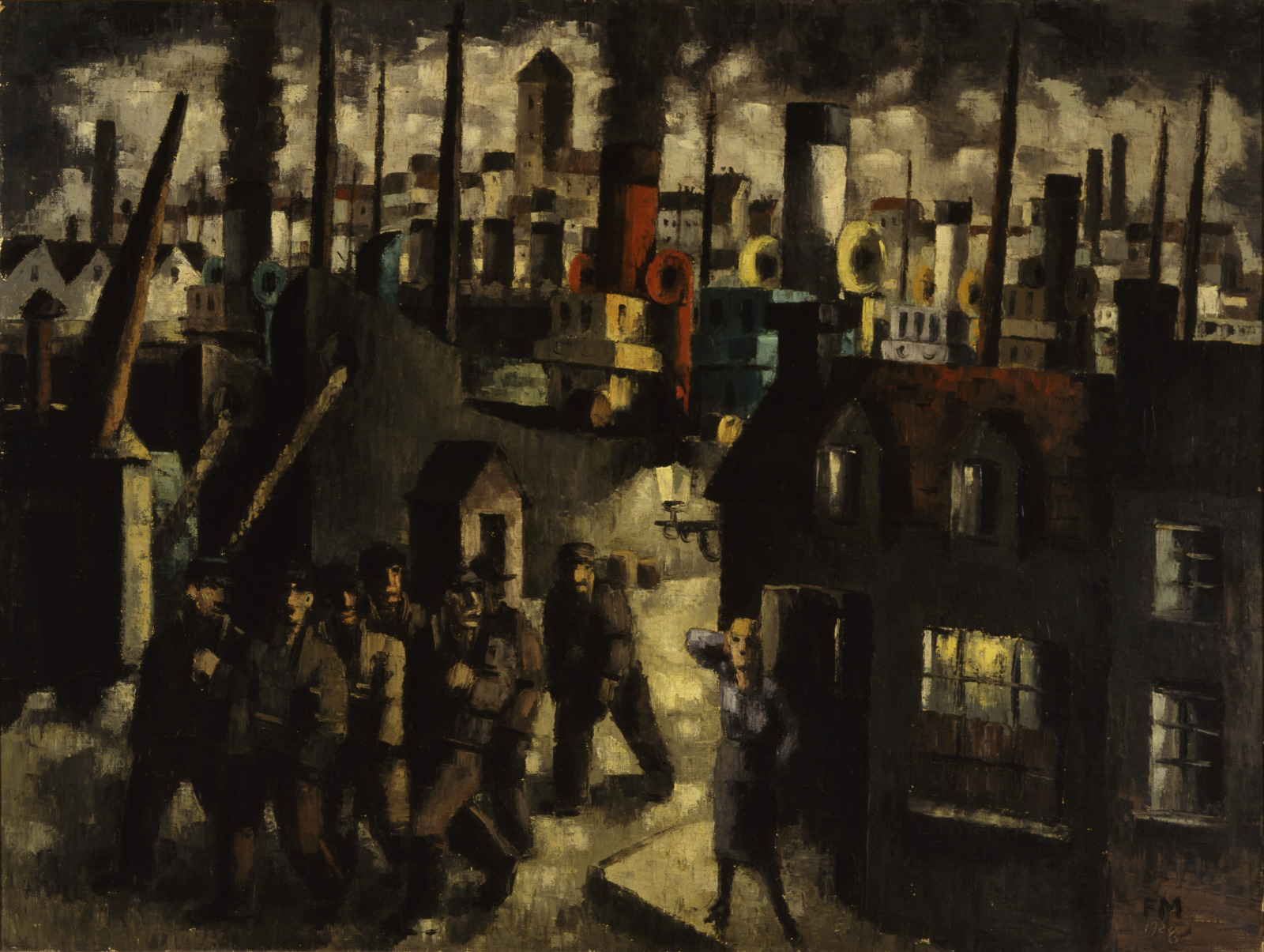
Frans Masereel, Belgian, 1889–1972; Return of the Fishermen, 1928; oil on canvas; 38 1/4 x 51 3/8 inches; Saint Louis Art Museum, Gift of Morton D. May 277:1952
The smokestacks of ships loom over the French city of Boulogne and spew exhaust into its polluted air. Below, fishermen trudge home through dark streets past a woman who the artist has posed to suggest she is a prostitute. Boulogne’s seedy port attracted Frans Masereel, who admired the tenacity of the people he met there. His primary medium of black-and-white woodcut inspired the painting’s blocky, jagged shapes and dark colors, which invest his subjects with dignity.
February 5, 2024
Prunus Vase (meiping) with Design of Leaping Carp Turning into a Dragon amidst Waves and Clouds

Prunus Vase (meiping) with Design of Leaping Carp Turning into a Dragon amidst Waves and Clouds, late 17th–early 18th century; Chinese, Qing dynasty, Kangxi period; Jingdezhen ware; porcelain with overglaze polychrome (famille verte) enamel decoration; 15 x 8 3/4 inches; Saint Louis Art Museum, Spink Asian Art Collection, Bequest of Edith J. and C. C. Johnson Spink 100:2014
Dancing above ocean waves, a celestial dragon chases a flaming jewel of wisdom. The sinuous, serpentine body of the creature twists and turns, thrusting the dragon’s head toward the viewer in a show of ferocity and intensity. Displayed against a pure white ground, the colorful decoration of this vase is notable for the clarity of its enamel colors and the vigor of its design.
February 4, 2024
Sunset, Newburyport Meadows
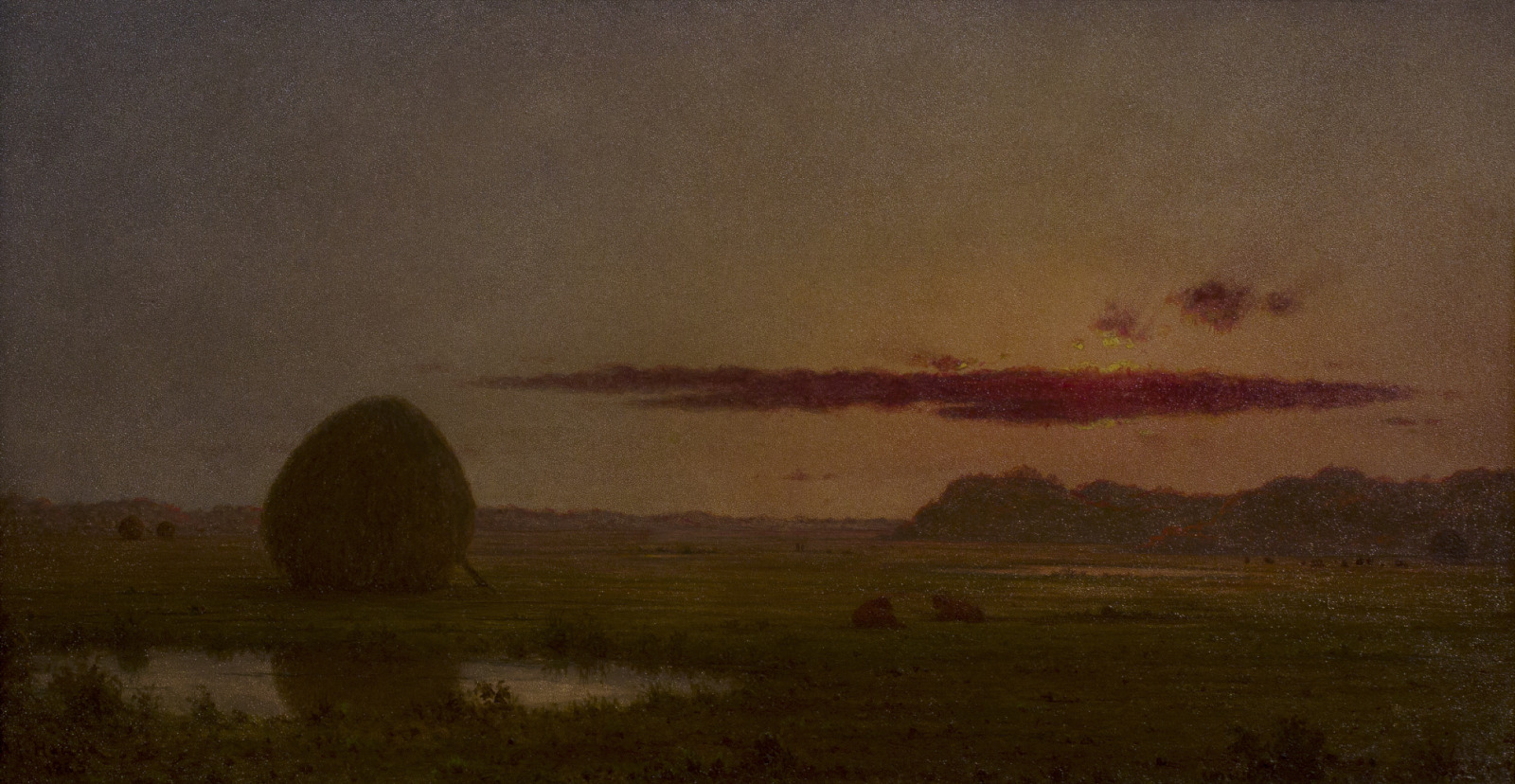
Martin Johnson Heade, American, 1819–1904; Sunset, Newburyport Meadows, 1863; oil on board; 10 x 18 1/2 inches; Saint Louis Art Museum, Museum Purchase 96:1973
The radiant glow from a setting sun silhouettes low hanging clouds. The light also reflects on shallow water, whose meandering path recedes back through flat, salt marshes. Located near popular tourist spots, these quiet marsh areas were an unusual subject for American landscape painters at the time, who typically depicted grandiose mountain vistas. Many interpret these scenes as a visual respite, a meditative salve, for the trauma of the Civil War (1861–65).
February 3, 2024
Fighting Centaurs
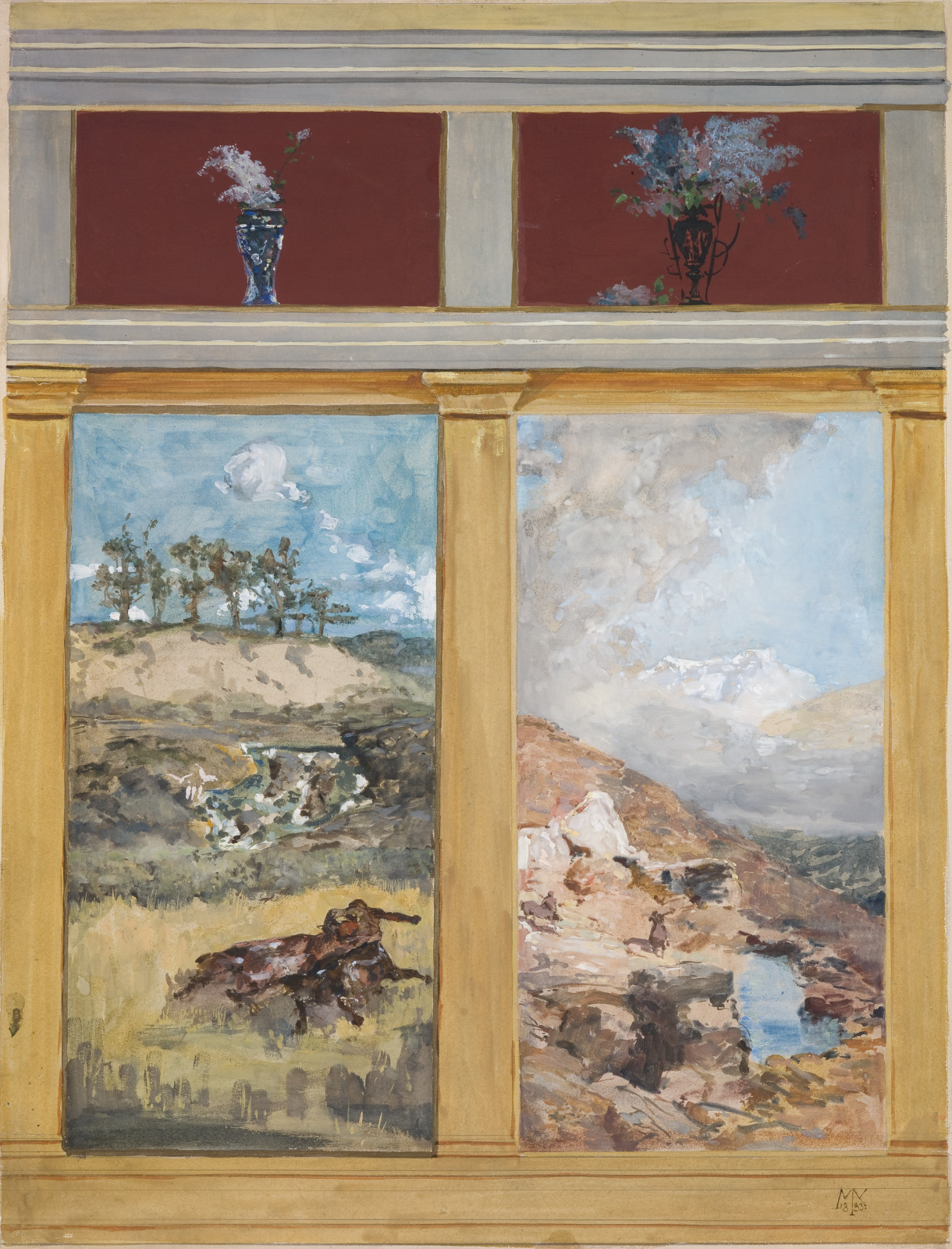
Max Klinger, German, 1857–1920; Fighting Centaurs, 1883; gouache and colored chalks over graphite; sheet: 23 x 17 1/2 inches; Saint Louis Art Museum, Friends Fund 74:1993
In this drawing, Max Klinger presented two sun-drenched ancient landscapes. In the left portion, two centaurs, hybrid creatures who were part human and part horse, battle fiercely in a grassy plain. The centaurs reappear in the right portion, where the figures almost disappear into the arid, rocky landscape. Klinger incorporated architectural elements like gold columns and the decorative frieze to frame these scenes and enhance his overall scheme.
This study was part of a decorative commission for the vestibule of a villa belonging to the Austrian jurist Julius Albers. It was Klinger’s first such project, and he was given almost free rein in decorating the space with wall paintings and sculptures. He sought to create a Gesamtkunstwerk, a total work of art that unified architecture, painting, sculpture, and ornament into a cohesive whole. This model is all that remains of the mural, as the room was eventually dismantled and the paintings based on this study were destroyed in World War II (1939–1945).
February 2, 2024
Han Chinese Woman’s Skirt (qun) with Design of Floral Sprays, Bats, Auspicious Emblems, and Waves with Stylized Dragon Borders

Han Chinese Woman's Skirt (qun) with Design of Floral Sprays, Bats, Auspicious Emblems, and Waves with Stylized Dragon Borders, late 19th century; Chinese, Qing dynasty, Tongzhi period, or Guangxu period; silk satin embroidered with silk and couched gold threads, cotton waistband; length: 32 inches; Saint Louis Art Museum, William K. Bixby Trust for Asian Art 977:1920
This brilliant red silk satin skirt is embroidered with floss silks and couched with gold thread on panels with flowers, auspicious emblems, bats, waves, and rocks. These motifs are bordered by bands of stylized dragon scrolls in blue and white. When the skirt is wrapped around the body, the two decorated flat panels appear at the front and back. The embroidered decoration is concentrated across the lower edge of the skirt, which remains the only visible area under the calf-length upper garment that would be worn with it.
January 31, 2024
Serape

Diné (Navajo) artist; Serape, c.1880; wool and dye; 81 x 50 inches; Saint Louis Art Museum, Gift of Elissa and Paul Cahn 234:2017
Columns of concentric blue-and-red diamonds run vertically up the central section of this textile. In narrow bands at top and bottom, connecting lines establish a contrasting, horizontal orientation.
For centuries, Diné weavers specialized in creating textiles for trade. This style of wearing blanket, with a vertical orientation and bold pattern, was popular through much of the 19th century.
January 30, 2024
Portrait of a Florentine Nobleman
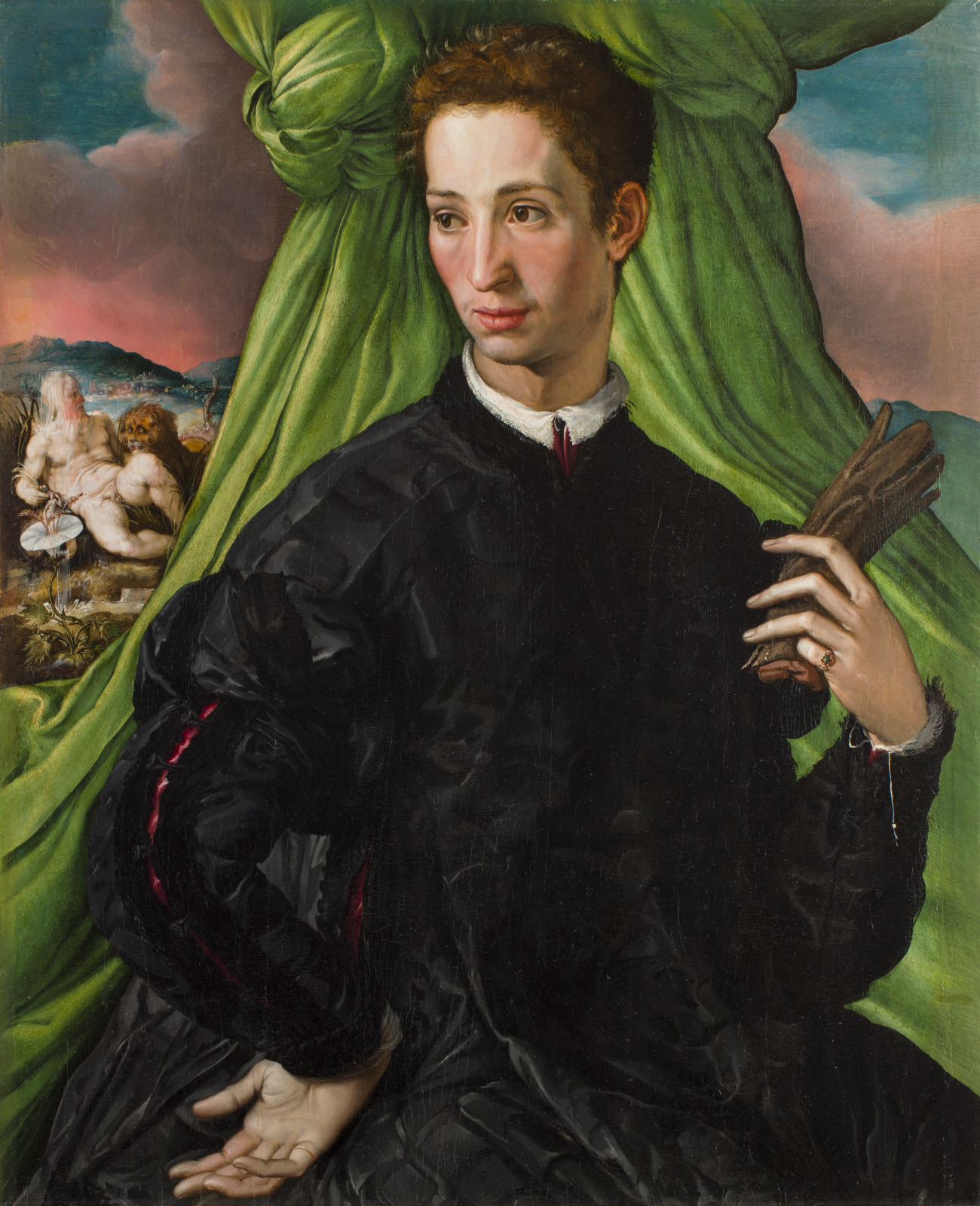
Francesco Salviati (Francesco de'Rossi), Italian, 1510–1563; Portrait of a Florentine Nobleman, 1546–48; oil on panel; 40 1/4 x 32 1/2 inches; Saint Louis Art Museum, Museum Purchase 415:1943
This portrait presents a confident young man seated before an acid-green knotted drapery. A bearded man dripping with water reclines in the background, probably intended to represent an ancient river god. Beside him, an opened flower blossom supports a small female figure. Together the man and blossom represent the city of Florence, which is located on the Arno River, and has a name derived from the Italian word for flower. The portrait embodies the complex aesthetic of 16th-century Mannerism as seen in its strong color, the man’s elegant, elongated hands, and the unusual hues in the sky. The Mannerist style was grounded in artifice, that is, it emphasized artistic invention over the slavish imitation of nature. The obvious artificiality of the painting makes clear the artist’s abilities at rendering pleasing forms and surprising chromatic combinations.
January 28, 2024
The Colossal Pair, Thebes

Frank Dillon, English, 1823–1909; The Colossal Pair, Thebes, 1856; oil on canvas; 25 x 72 1/4 inches; Saint Louis Art Museum, Gift of J. Lionberger Davis, Count Cecil Charles Pecci-Blunt, and Mrs. Eugene A. Perry in memory of her mother, Mrs. Claude Kilpatrick, by exchange 67:1989
Frank Dillon captures the grand statues of the pharaoh Amenhotep III and his wife which still stand on the plain of Thebes (today known as Luxor) in Egypt. A sense of desolate solitude is heightened by the inclusion of a camel’s skeleton in the foreground. Dillon produced this painting shortly after his first visit to Egypt in 1854. The frame is original to the picture and is decorated with orbs and eagles’ wings at the center and corners.
January 26, 2024
Fowler
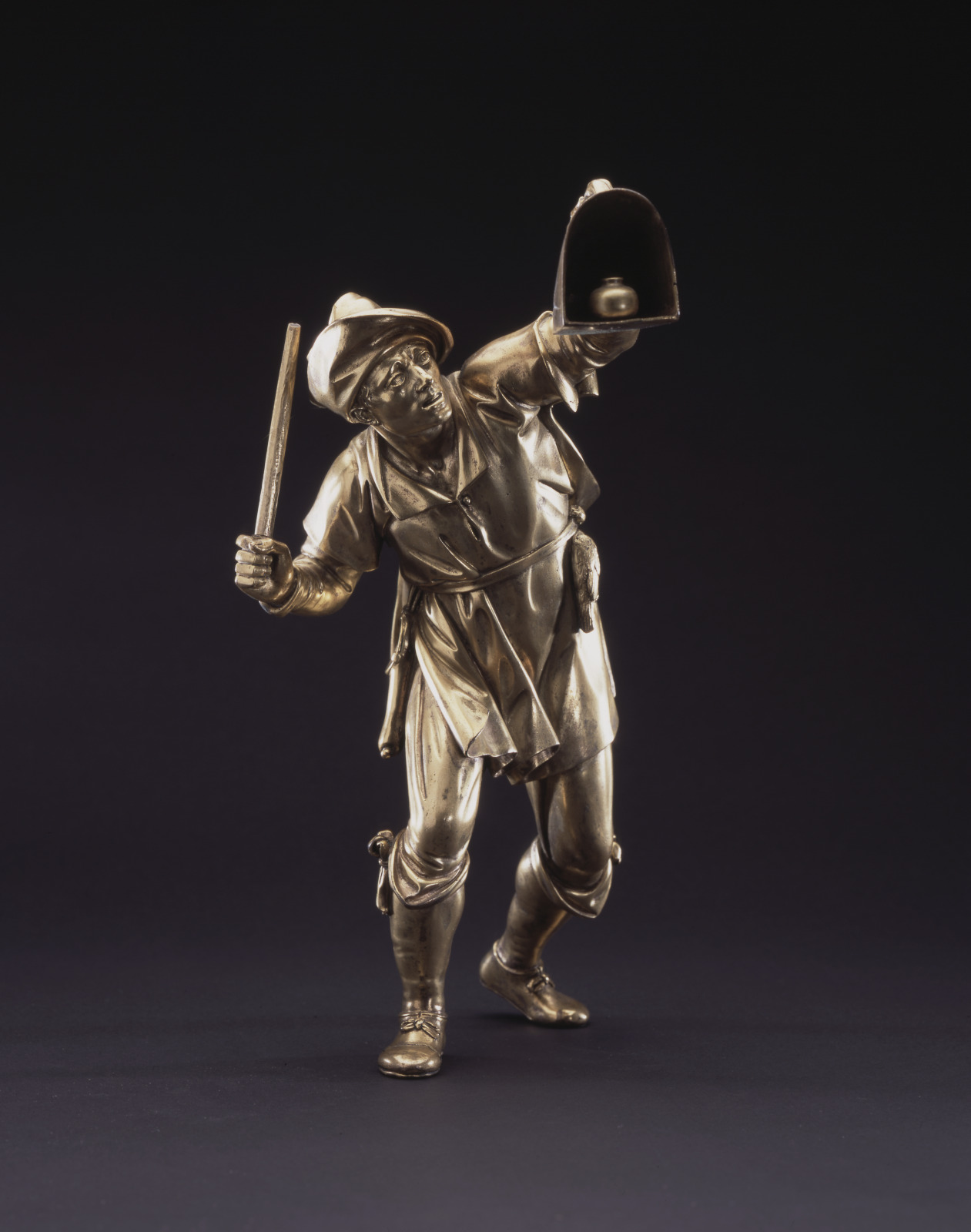
after Giambologna, Flemish (active Italy), 1529–1608; probably cast by Antonio Susini, Italian, active 1580–1624; Fowler, late 16th–early 17th century; bronze with gilding; 11 1/2 x 4 x 6 inches; Saint Louis Art Museum, Museum Purchase 284:1951
Cautious and alert, the fowler prepares to cage a bird using a small lamp and a stick (originally a racquet) to flush them from their nests. Among one of the best examples of the approximately ten variations of the subject known today, this bronze cast has a meticulously crafted surface, and shows the artist’s great attention to details and sensitive modeling. This version was probably cast by skilled bronzeworker Antonio Susini. Susini assisted Giambologna, a renowned Flemish artist born in Douai, Flanders, in the 16th century (now Douai, France) who spent most of his career in Italy.
January 24, 2024
Plate, from the Charlotte-Louise Service
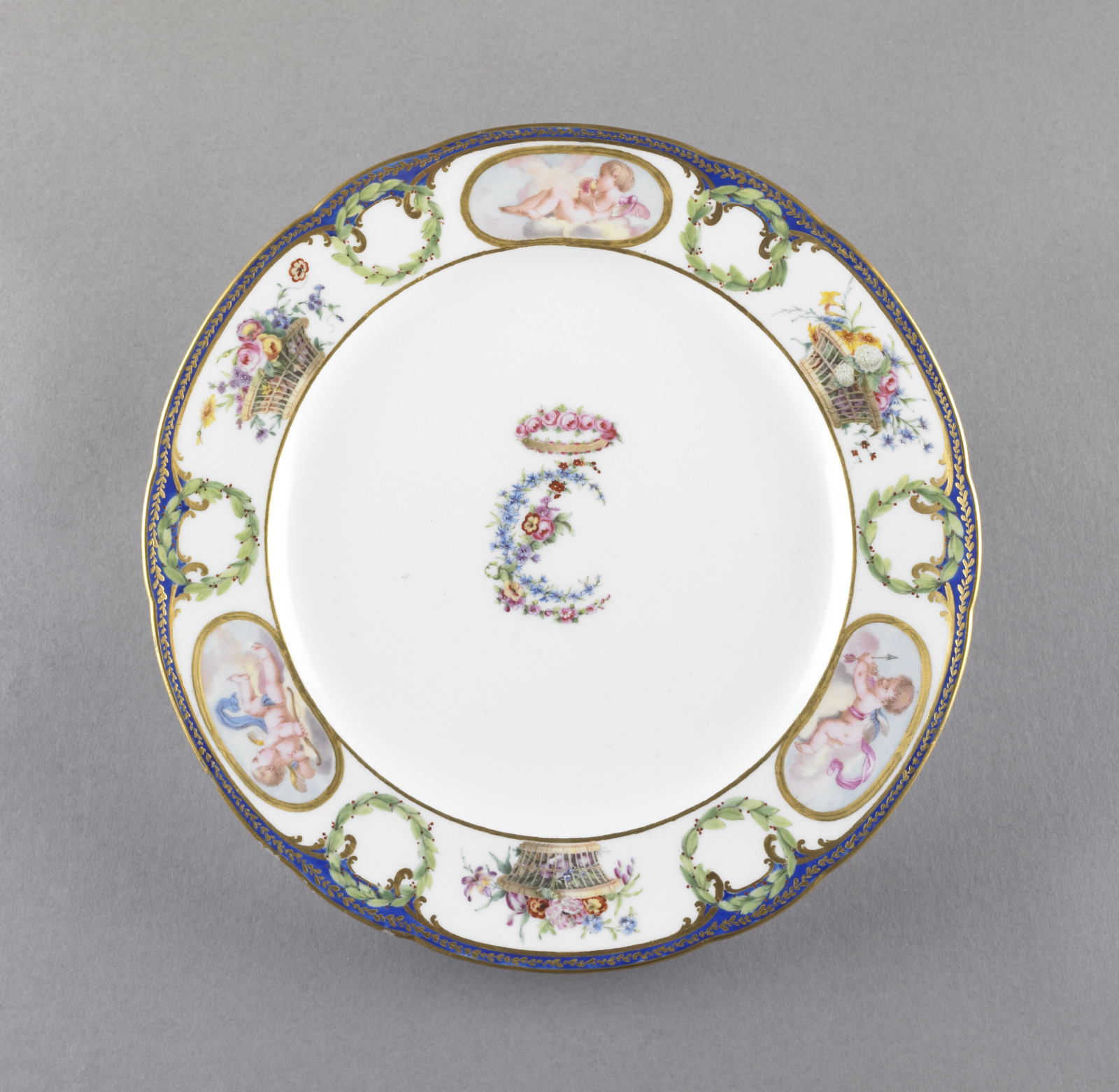
made by Sèvres Porcelain Factory, France, founded 1756; painted by Jean-Louis Morin, French, 1732–1787; painted by Nicolas Bulidon, French, active 1763–1792; commissioned by Louis XV, King of France (1715-1774), French, 1710 - 1774; Plate, from the Charlotte-Louise Service, 1773; glazed porcelain with enamel and gilding; 9 5/8 x 1 inches; Saint Louis Art Museum, Gift of Mr. and Mrs. Oliver R. Burkart by exchange 45:1976
This white porcelain plate is decorated with a cobalt blue border enhanced with gilding. The outer design depicts putti (small cherubs) in clouds, interspersed with baskets of flowers and laurel wreaths. In the center are interlocking floral and foliate initials.
This plate comes from a service presented by Louis XV in January 1774 to Maria Carolina Louisa (known as Charlotte-Louise or Marie-Caroline-Louise), queen of Naples and the Two Sicilies, upon the birth of her second daughter, Louise, in 1773.
January 22, 2024
Charles Wheeler

Lucinda Redmon Orear, American, 1823–1852; Charles Wheeler (1795-1873), c.1845; oil on canvas; 35 x 31 inches; Saint Louis Art Museum, Gift of Sydney M. Shoenberg Sr. 191:1951
Charles Wheeler is shown in his library filled with law books. Born in Hancock, New Hampshire, Wheeler graduated from Dartmouth College and moved west to Troy, Missouri, to practice law. He was active in the Whig Party, and was elected to the 1845 Missouri state constitutional convention. Both Wheeler’s professional and personal identities are conveyed in this portrait. Likely the Connecticut River and White Mountains of New Hampshire are depicted outside his window, and the envelope on his desk bears the date, August 11, 1835, the day Wheeler was married.
Wheeler is just the kind of self-made, rising, middle-class businessman who sought out local or traveling artists for a portrait. This task was likely easier for Wheeler than most, as his portrait and the companion one of his wife, were painted by his sister-in-law, Lucinda Redmon Orear.
January 21, 2024
Halberd

Halberd, 1622–23; German; etched steel and wood; 91 1/16 x 11 5/16 x 3 inches, head: 23 1/4 inches; Saint Louis Art Museum, Museum Purchase 168:1926
This halberd was made for a bodyguard of Prince Karl Eusebius von Liechtenstein (1611-1684). It was probably made around the occasion of his appointment as Governor of Bohemia on January 17, 1622. Halberds like this one became purely ceremonial arms carried by bodyguards. Their makers exploited the broad surfaces of the blade, creating fanciful, graphic shapes, and covered them with beautiful decoration and the personal mottos and coats of arms of their owners. The long staffs were often embellished with vibrant fabrics and tassels. This meant that they could be used not only to keep threats at a distance, but also to create an imposing presence when carried upright by a large group of bodyguards.
January 20, 2024
Coupled-column Prayer Rug

Coupled-column Prayer Rug, 18th century; Ottoman Empire, Turkey, Ottoman period; wool; 72 x 48 inches; Saint Louis Art Museum, Gift of James F. Ballard 113:1929
Prayer carpets are characterized by a central space featuring a mihrab, or arched niche, at one end. This carpet is distinctive for its pairs of slender columns with stepped bases and stylized capitals that support the arch. These so-called coupled columns were not a known feature of Ottoman buildings when this design was first developed in the 16th century. Recent scholarship suggests this motif is characteristic of Nasrid architecture from Muslim Spain. It was likely brought to the Ottoman Empire via Jewish weavers who fled persecution during the Spanish Inquisition in the 15th century.
January 17, 2024
Twilight in the Wilderness
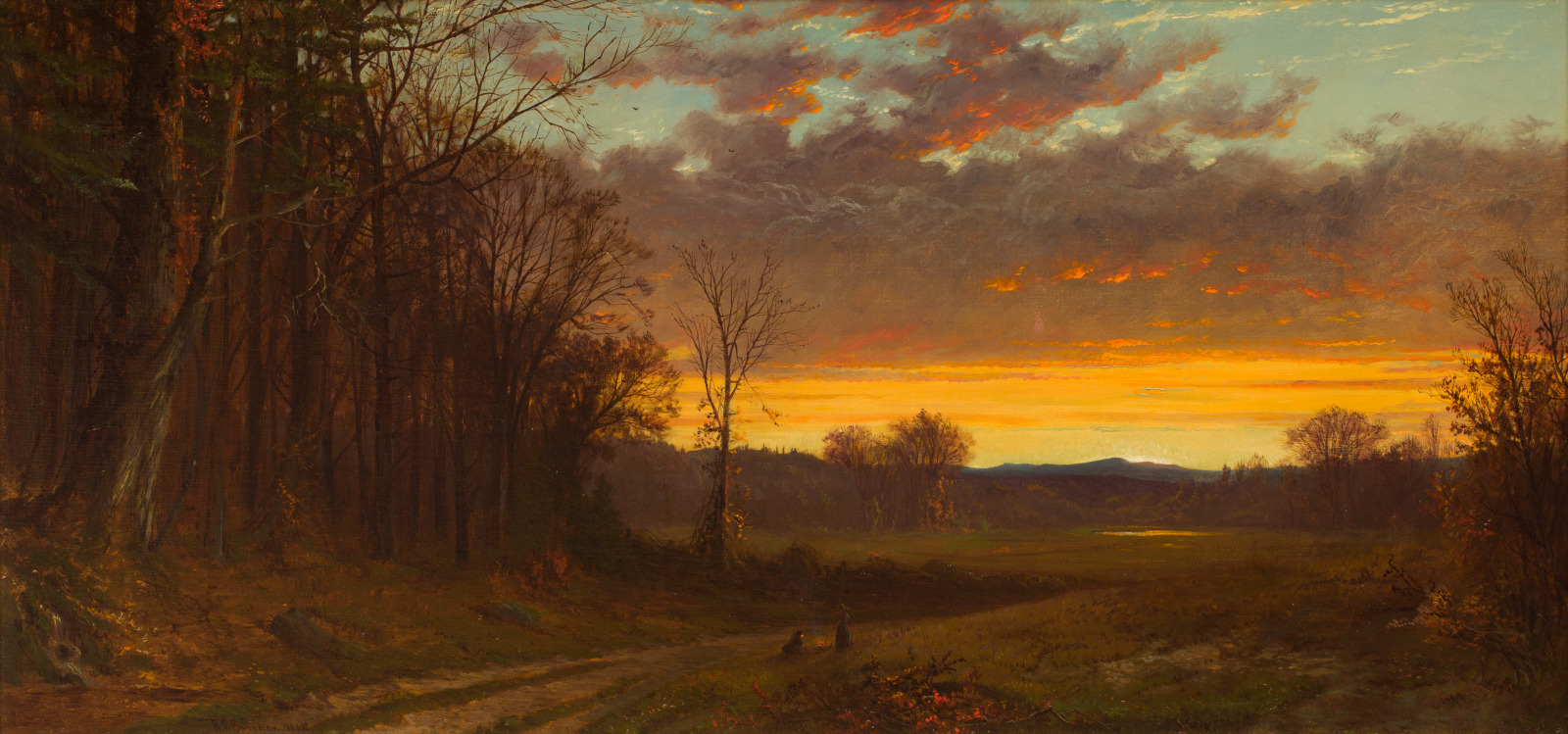
Alfred Thompson Bricher, American, 1837–1908; Twilight in the Wilderness, 1865; oil on canvas; 20 1/8 x 42 inches; Saint Louis Art Museum, Friends Fund, funds given by Jeanne and Rex Sinquefield and Eleanor Moore; bequest of Friederike Gottfried, gift of Nellie Ballard White, Whitaker Charitable Foundation, Mrs. Willard Bartlett, Howard Russell Butler Jr., and James F. Ballard, by exchange 22:2007
A stand of trees and open field are dramatically silhouetted against a vibrant sunset of orange, yellow, and purple. Most likely painted along the front range of the White Mountains in New Hampshire, this scene communicated poetic and symbolic meaning to audiences at the time rather than landscape details.
Painted at the close of the Civil War, such a vivid representation of the end of day provided visual affirmation of the profound trauma Americans had endured. Simultaneously, the grandeur of the scene spoke to American democratic fervor that would carry the country through its distress.
January 16, 2024
Footed Bowl (tazza)
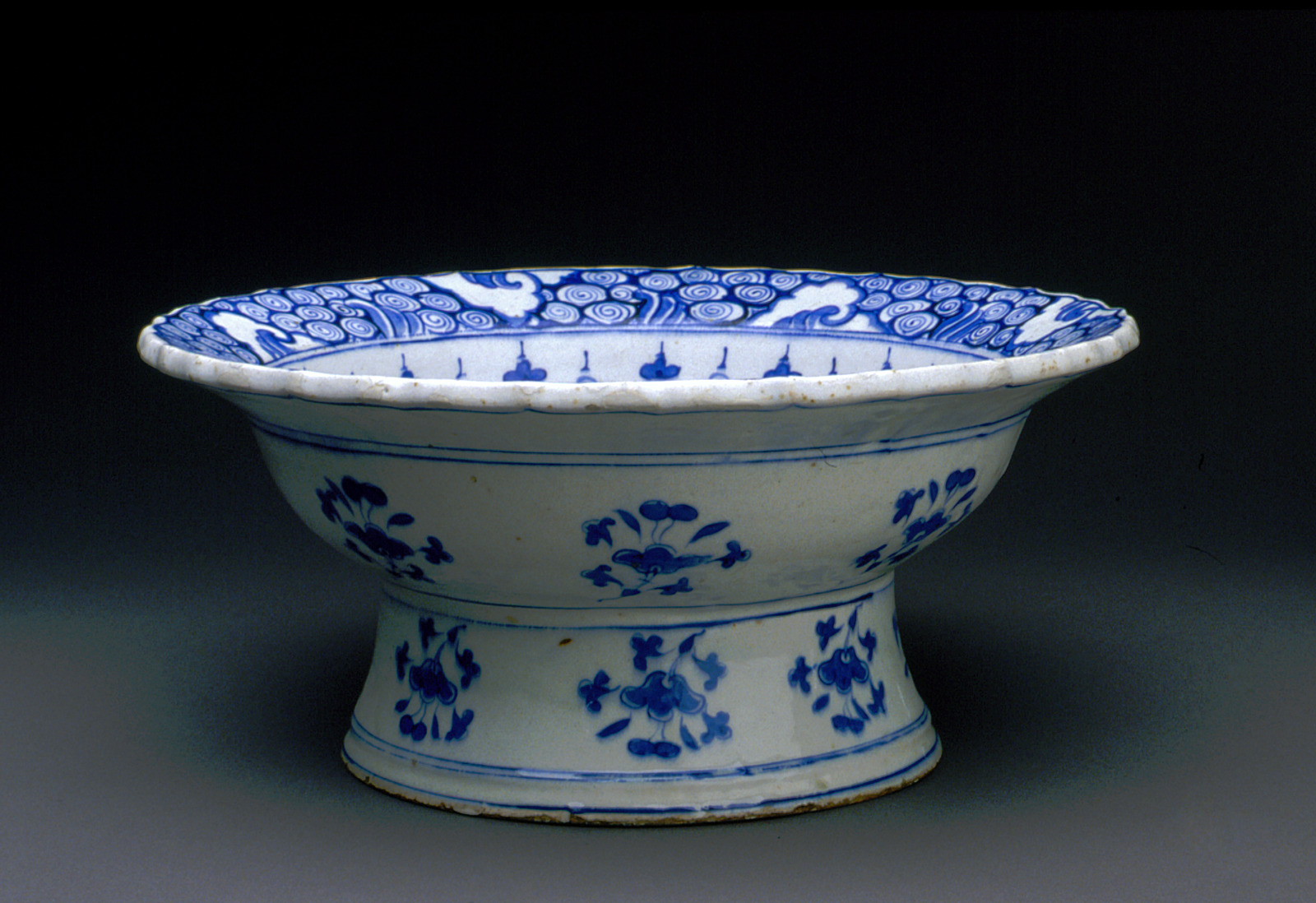
Footed Bowl (tazza), c.1570–90; Ottoman period, Turkey; glazed fritware with underglaze painted decoration; height: 6 1/4 inches, diameter of mouth: 13 3/4 inches, diameter of foot: 8 3/8 inches; Saint Louis Art Museum, Hortense and Tobias Lewin Ancient Art Fund 151:2003
The stately tazza, or footed bowl, is one of the rarer shapes found in Iznik ware. These ceramics were produced at Iznik in modern Turkey during the 16th century. They are notable for the brilliance of their white fritware bodies, composed mostly of quartz, and for the precision of the underglaze pigments. Iznik fritware was produced for the Ottoman court, so the designs were often determined in the court workshops in Istanbul.
January 15, 2024
Dr. Martin Luther King, Jr. in the midst at the March on Washington

Moneta Sleet Jr., American, 1926–1996; Dr. Martin Luther King, Jr. in the midst at the March on Washington, 1963, printed c.1970; gelatin silver print; image: 11 1/8 x 17 1/8 inches, sheet: 11 1/8 x 17 1/8 inches; Saint Louis Art Museum, Gift of the Johnson Publishing Company 397:1991; © Johnson Publishing Company Archive, Courtesy Ford Foundation, J. Paul Getty Trust, John D. and Catherine T. MacArthur Foundation, Andrew W. Mellon Foundation and Smithsonian National Museum of African American History and Culture
In the center of this photograph, the Rev. Dr. Martin Luther King Jr. leads thousands of marchers, stretching as far as the eye can see. With his arms raised and hands clasped with prominent civil rights leaders, King energetically leads the participants forward. On August 28, 1963, more than 250,000 people participated in the March on Washington for Jobs and Freedom. Gathering near the Lincoln Memorial, Dr. King delivered his iconic “I Have a Dream” speech. Over 3,000 members of the press, including Moneta Sleet Jr., were in attendance to cover it.
Sleet is one of the most recognized photojournalists of the civil rights movement. He developed a close relationship with Dr. King and photographed him numerous times throughout the 1950s and ’60s, including King’s acceptance of the Nobel Peace Prize in 1964 and his leadership of the Selma to Montgomery marches in 1965.
January 13, 2024
Children at the Seashore
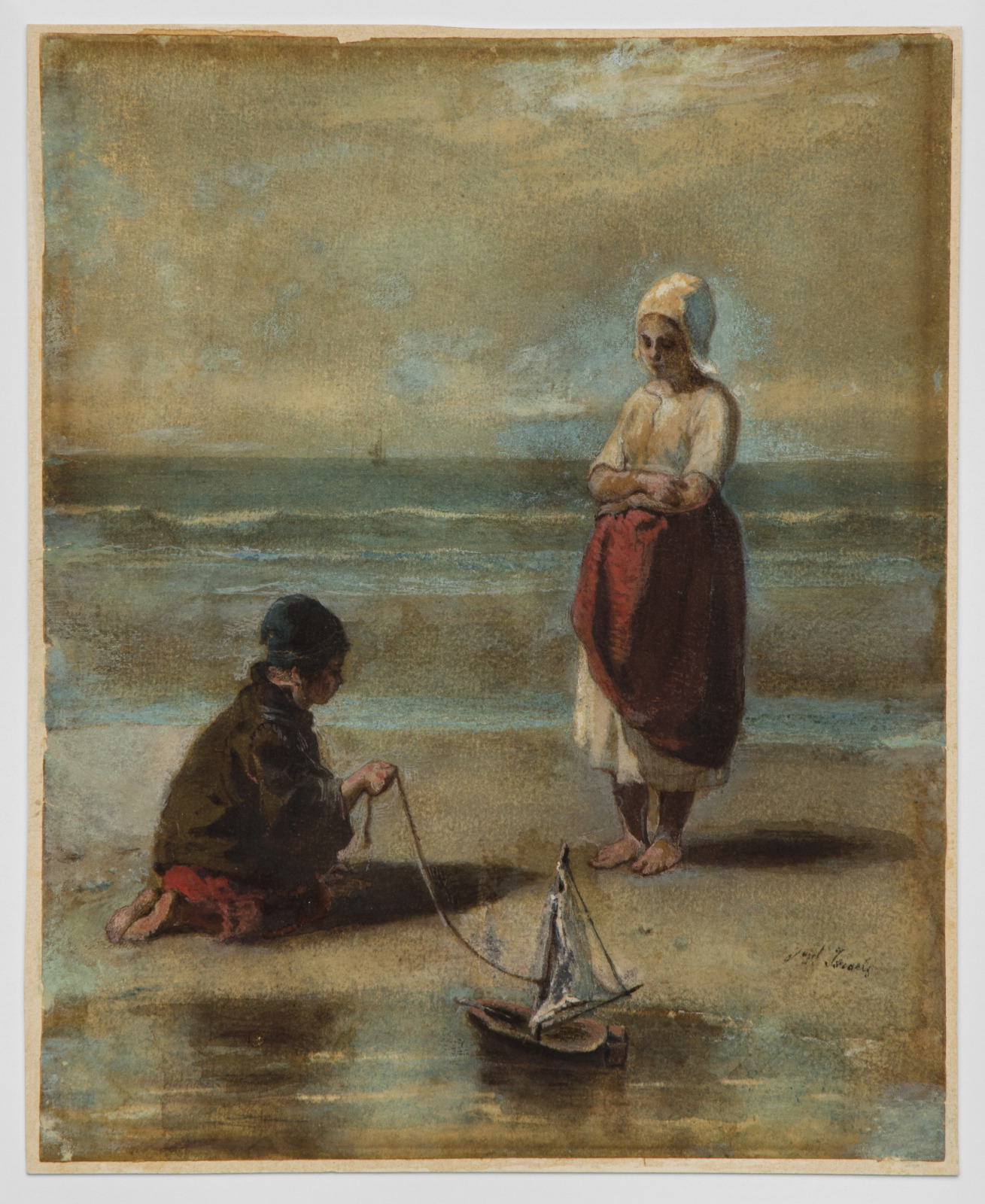
Jozef Israëls, Dutch, 1824–1911; Children at the Seashore, 1860s; watercolor with pastel; sheet: 9 1/2 x 7 11/16 inches; Saint Louis Art Museum, Bequest of Ellis Wainwright 286:1925
Charming scenes of children at the beach were an especially popular theme for Jozef Israëls. In his native Netherlands, the sea is never far away, and the subject recurs often in his work. Variants include fishing and seafaring to more everyday subjects such as this view of a boy and girl playing on the beach. Israëls was a founding member of the Hague School, a group of 19th-century Dutch painters who looked back at their illustrious 17th-century predecessors such as Rembrandt for inspiration. At the same time, they absorbed new trends toward naturalism and direct observation evolving in France.
Even though Israëls himself pronounced copies of paintings to be “potboilers,” at least three painted versions of this composition survive, in addition to the Museum’s pastel. The earliest version, from 1863, was exhibited at the 1867 Exposition Universelle in Paris, France.
January 12, 2024
Lip Plug in the Form of an Eagle Head (teocuitcuauhtentetl)
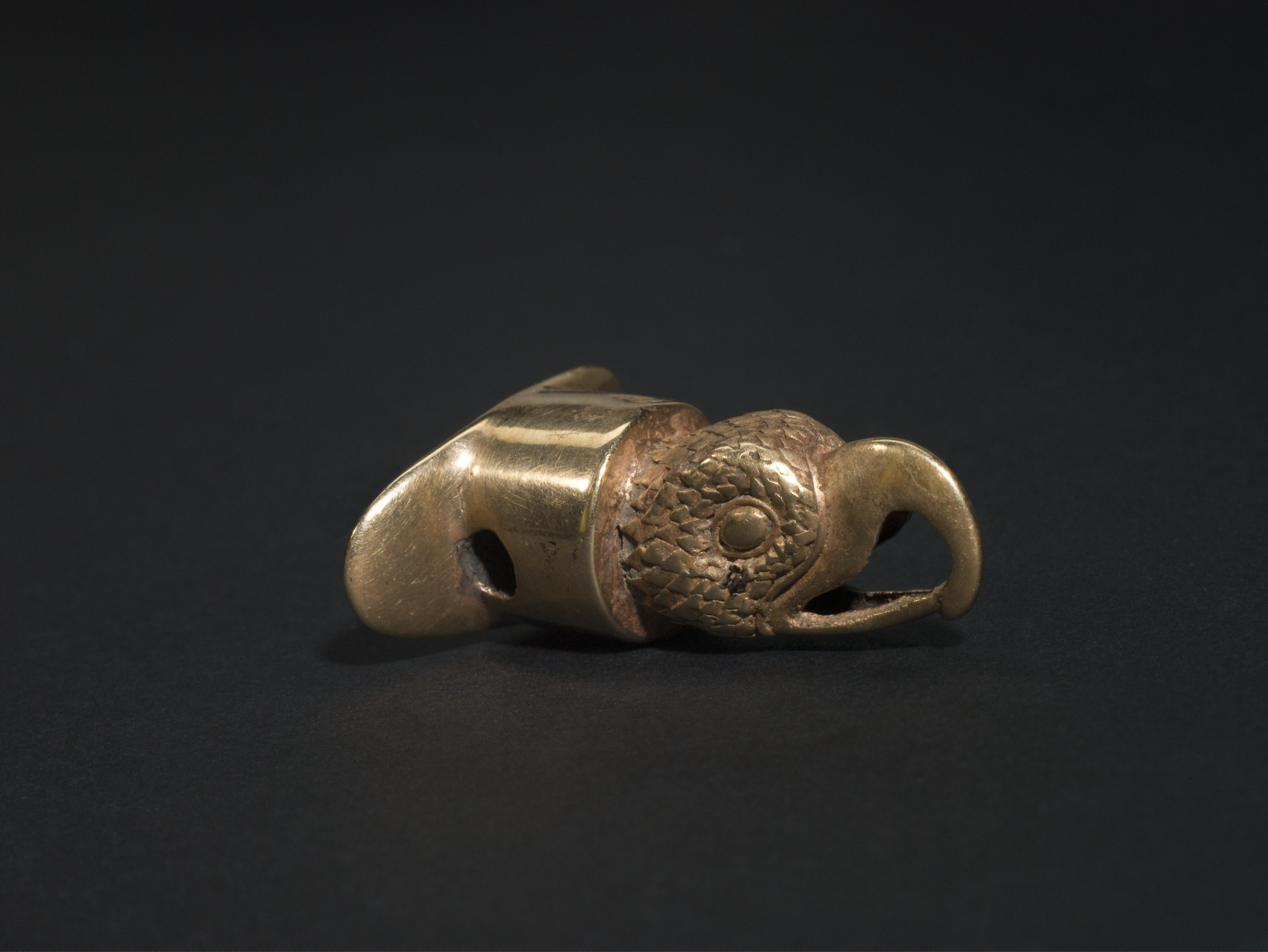
Lip Plug in the Form of an Eagle Head (teocuitcuauhtentetl), c.1200–1521; Mixtec, Mexico, Late Postclassic period; gold; 9/16 x 1 1/8 x 1 1/2 inches; Saint Louis Art Museum, Gift of Morton D. May 275:1978
With its exquisitely detailed feather arrangement around the head, prominent eyes, and menacing claw-like beak, this beautifully cast gold eagle head was worn by a warrior preparing for battle or ritual ceremony. The labret was inserted through a hole in the lower lip, with the radiance of the metal reflecting the light of the sun.
Metalworking in central Mexico was probably introduced to the Mixtecs as a fully developed art from South America sometime in the 13th century. The neighboring Aztecs purchased such objects from their neighbors to use in sacred and political rituals; they called such objects teocuitlacuauhtentetl.
January 11, 2024
One-handled Cup (modiolus)
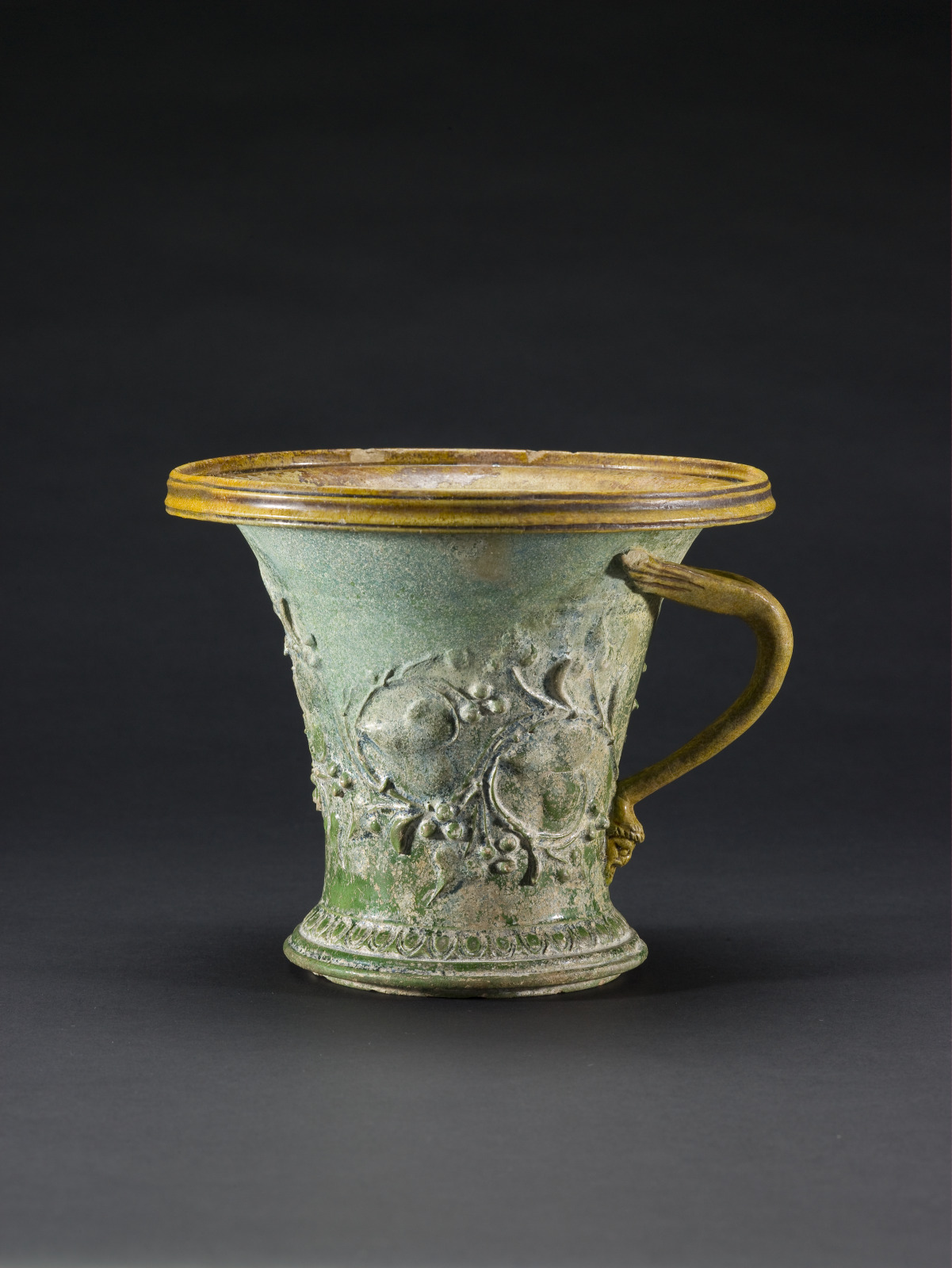
One-handled Cup (modiolus), 1st century BC–1st century AD; Roman, Early Imperial period; lead-glazed ceramic; 5 3/4 x 7 inches; Saint Louis Art Museum, Museum Purchase 386:1923
The distinct colors—deep green and mustard yellow—of this mold-made ceramic cup are obtained from a lead glaze developed in the 1st century BC in the eastern Mediterranean. More fluid and less prone to cracking, this glaze was a distinct improvement over other contemporary glazing technologies. It has been suggested that these colors were specifically selected to emulate the patina of weathered bronze and gilded silver. This vessel shape is common in ceramic, glass, and metal.
January 10, 2024
Pair of Chairs
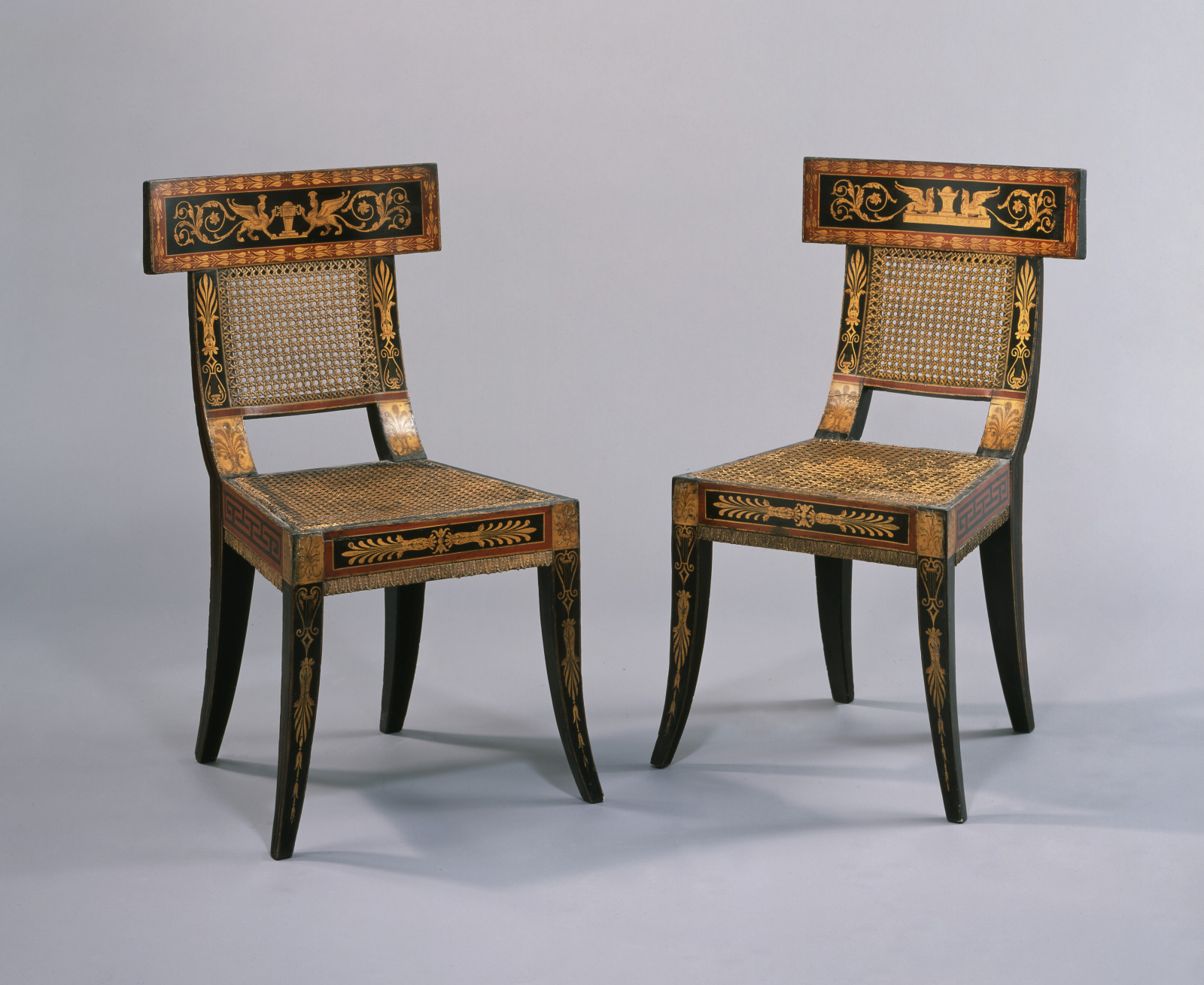
designed by Benjamin Henry Latrobe, American (born England), 1764–1820; painted by George Bridport, American (born England), 1783–1819; Pair of Chairs, 1808; painted and gilded yellow poplar, white oak, and white pine; gilded gesso; replacement and original gilded cane; and reproduction wool and silk upholstery; 34 1/4 x 20 x 19 1/2 inches; Saint Louis Art Museum, Funds given by the Decorative Arts Society in honor of Charles E. Buckley 217:1975.1,.2
Dramatically curved and boldly colored, these chairs heralded a new style of classicism in American furniture that turned to ancient Greek forms for its models. The chairs are from a large suite of tables and seating furniture by the English architect Benjamin Henry Latrobe for the drawing room of the house he designed for the Philadelphia merchant William Waln. The simplified palette of red, black, and gold provides clarity and contrast for the classical vocabulary of gilded palmettes, lyres, and foliage that adorn the chairs’ surfaces. Each crest rail in the set of chairs features a different composition of mythological creatures. Latrobe’s innovative design presented a challenge for the furniture maker he commissioned to make the set. Writing to his client, Latrobe complained that the first model “was the ugliest thing I ever saw. To make a chair requires as much taste as to design one.”
January 9, 2024
Stationery Box (ryōshibako) with Design of Squirrels among Grapevines
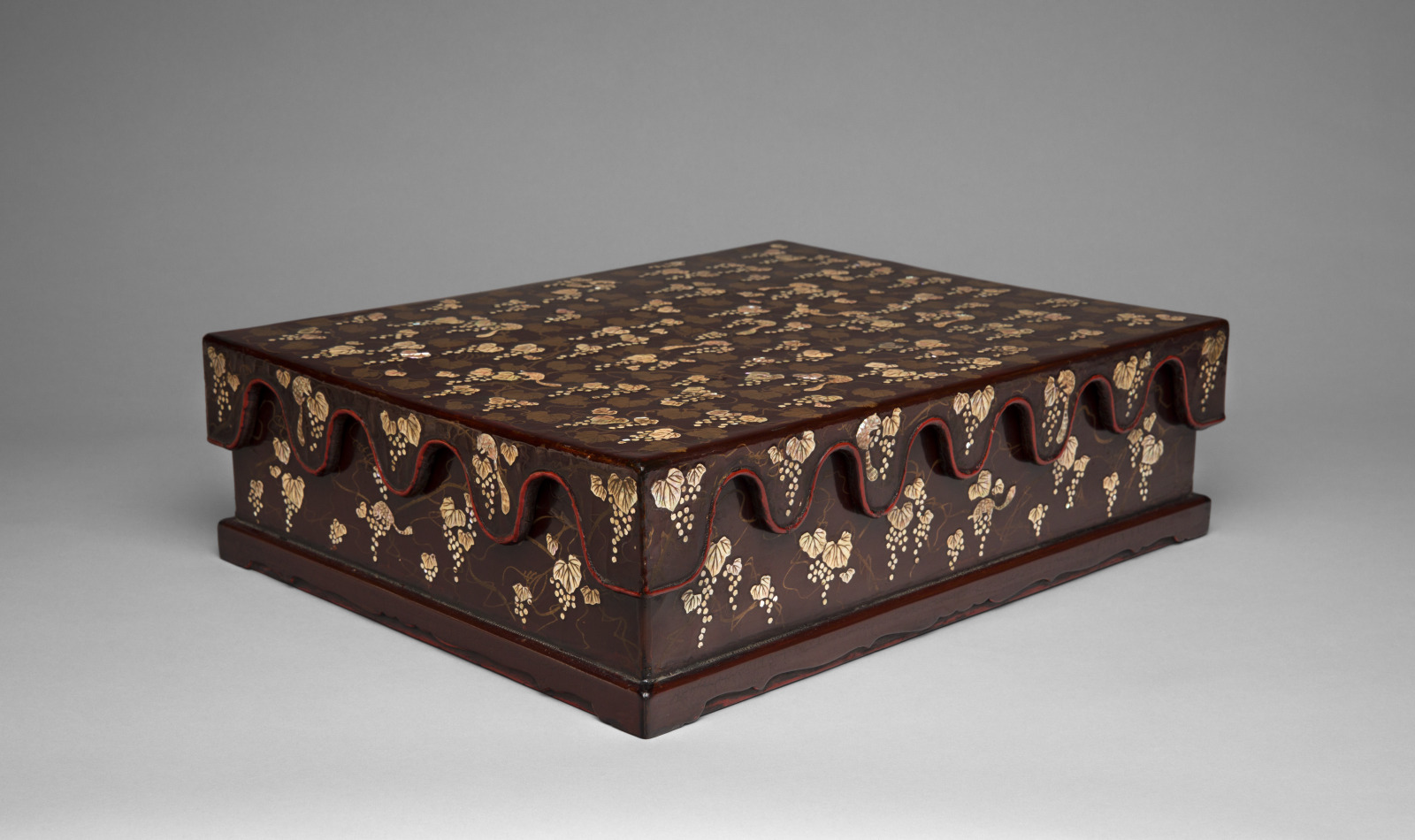
Stationery Box (ryōshibako) with Design of Squirrels among Grapevines, 17th century; Ryūkyūan, Japan, Second Shō dynasty; lacquer inlaid with mother-of-pearl and gold-foil decoration; 5 1/8 x 17 13/16 x 14 1/8 inches; Saint Louis Art Museum, The Langenberg Endowment Fund 48:2006a,b
The squirrels-among-grapevines motif, which has appeared on paintings and decorative objects in China, Korea, and Japan since the 16th century, symbolizes fertility, as squirrels have large litters and grapes produce many seeds. The squirrels, grapes, and some leaves are inlaid with turban shell. The remaining leaves and tendrils are painted with gold foil in a technique known as hakue; delicate lines may be scratched through the foil or painted over with lacquer. This stationery box was made in the Ryukyu Islands, an archipelago between Japan and Taiwan that was an independent kingdom from the 14th century until 1879, when it was annexed by Japan. The cover of the box has scalloped edges outlined in red lacquer and fits snugly over the box, which is raised above a projected perimeter footing with decorative reveals.
January 8, 2024
Eggs of Rain

Roberto Matta, Chilean (active France and United States), 1911–2002; Eggs of Rain, 1953; oil on canvas; 35 x 41 1/2 inches; Saint Louis Art Museum, Gift of Mr. and Mrs. Joseph Pulitzer Jr. 244:1962; © 2024 Artists Rights Society (ARS), New York / ADAGP, Paris
Tubular forms float in a swamp-like green expanse, while tiny silver eggs at bottom right allude to a future rainstorm. Working under the influence of French Surrealism, Roberto Matta adopted its practice of automatic drawing, where the hand is freed from rational control. Matta worked in New York City during the 1940s and became a mentor for a generation of young American painters who shared his interest in abstraction and unconscious creative impulses.
January 7, 2024
New York from the Shelton
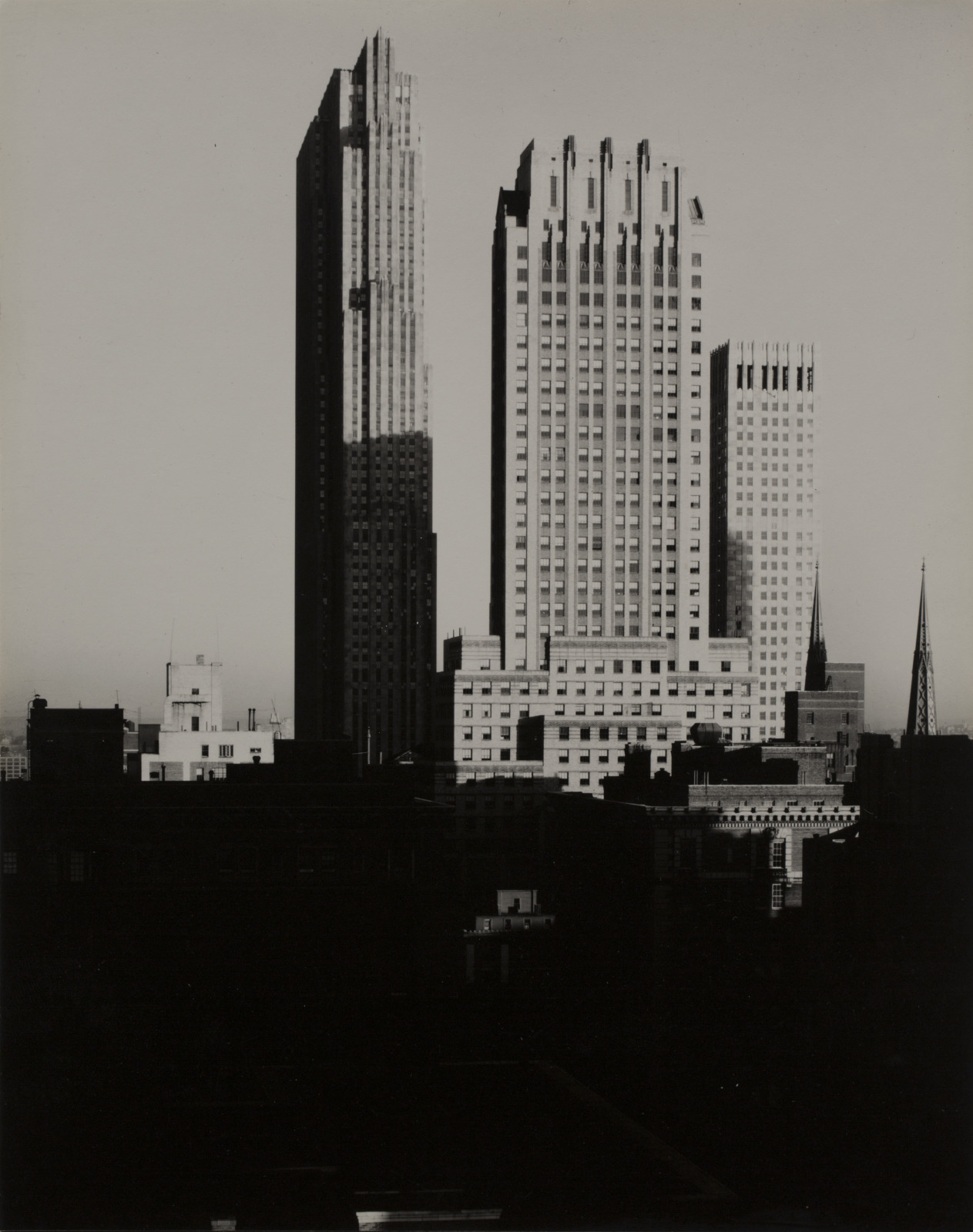
Alfred Stieglitz, American, 1864–1946; New York from the Shelton, 1935; gelatin silver print; image (trimmed): 9 5/8 x 7 9/16 inches, mount: 20 1/16 x 15 1/4 inches; Saint Louis Art Museum, Given anonymously 177:1984
Alfred Stieglitz was intrigued by the ever-changing skyline of Manhattan, which he photographed from the midtown high-rise that he shared with his wife, Georgia O’Keeffe. In this image, he contrasted both new and old, light and dark. The newly constructed Rockefeller Center dwarfs the spires of St. Patrick’s Cathedral, just visible on the right. At the same time, the bright, crystalline forms of its modern towers dramatically ascend from the vast pool of darkness below.
January 6, 2024
Adoration of the Magi
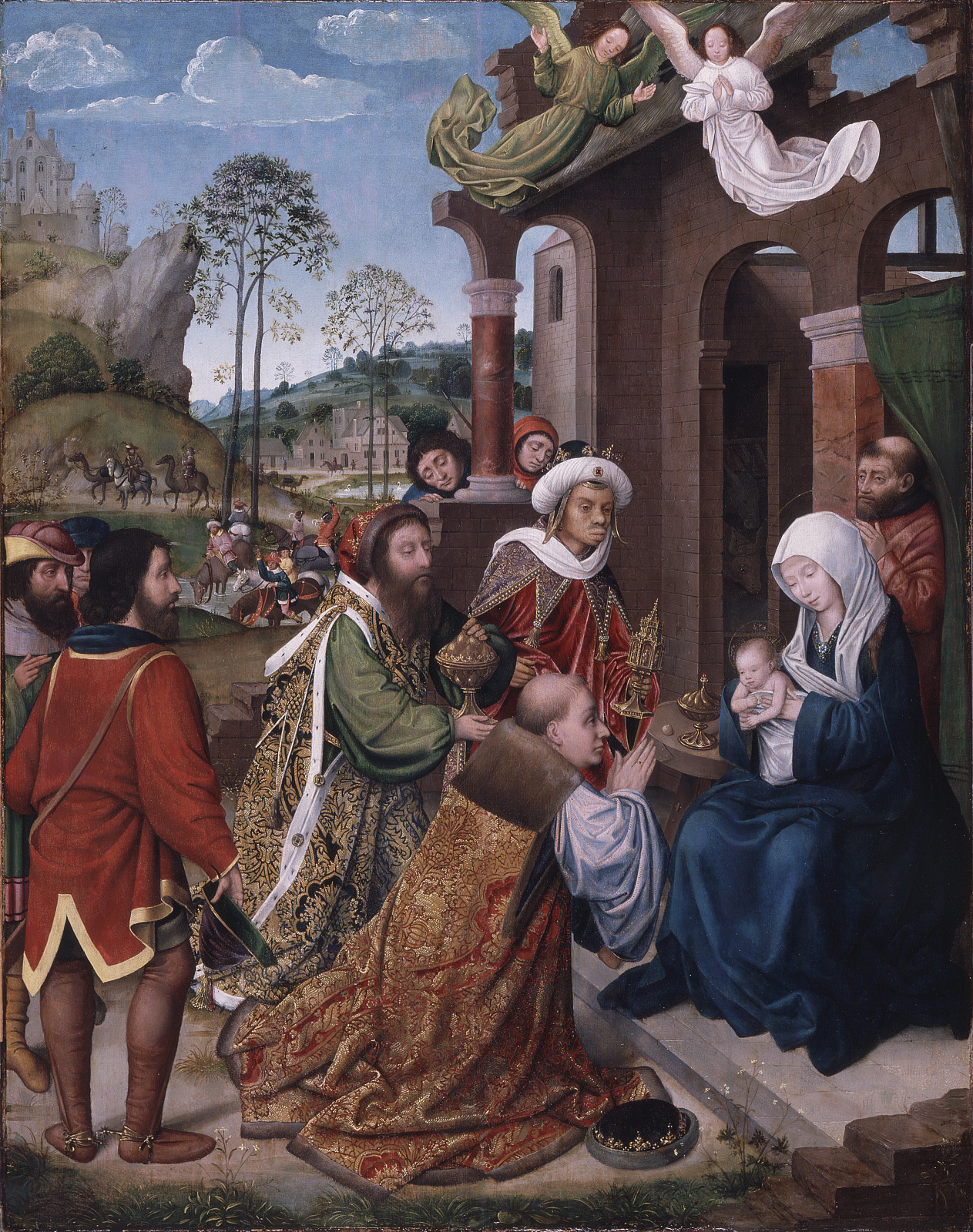
follower of Hugo van der Goes, Flemish, c.1440–1482; Adoration of the Magi, c.1505; oil on panel; 50 3/4 x 40 inches; Saint Louis Art Museum, Museum Purchase 93:1926
Before a magnificent landscape of hills and cliffs, three opulently dressed Magi present the Christ Child with exotic gifts of gold, frankincense, and myrrh. The flamboyant kings contrast with the two simple shepherds who strain to observe the scene as they peer on either side of the half column behind the Holy Family. The three different ages and nationalities of the Magi, as well as the distinction between the poor shepherds and wealthy kings, symbolize the universality of Christ’s mission. Following Northern traditions of architectural symbolism, the dilapidated building at right denotes the collapse of a previous religious order. The stone steps on which Mary and her baby sit suggest the foundation of a new one.
January 4, 2024
A Harbor in Moonlight
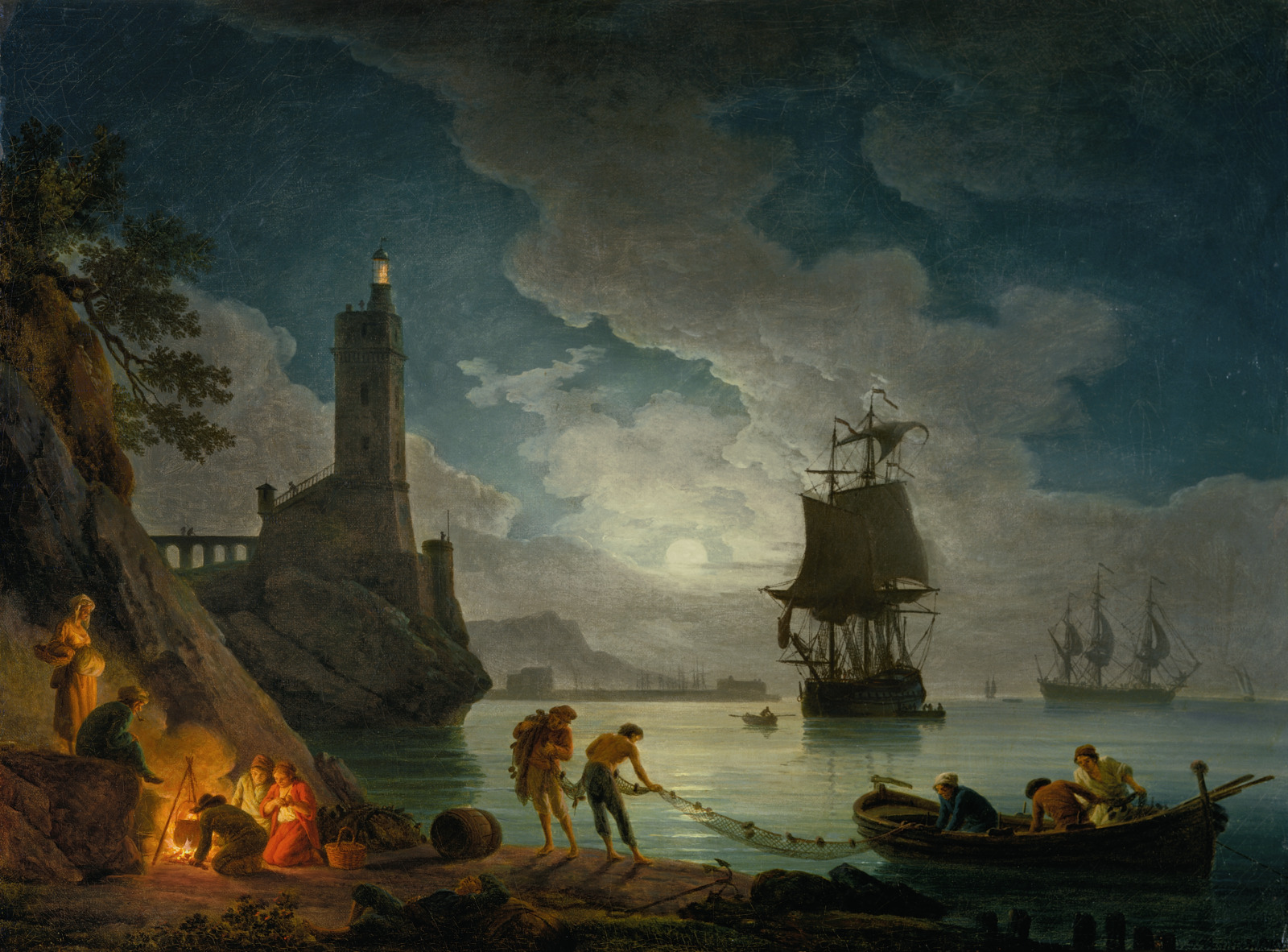
Joseph Vernet, French, 1714–1789; A Harbor in Moonlight, 1787; oil on canvas; 24 x 32 inches; Saint Louis Art Museum, Gift of Christian B. Peper 37:2006
Joseph Vernet’s harbor view presents four distinct types of light: campfire, moonglow, lighthouse beam, and the reflection of light on the water’s surface. European art enthusiasts of the late 17th to late 18th centuries loved a mixture of the scientific and the poetic, and Vernet’s canvas provides just that. A specialist in marine pictures and imaginary landscapes, Vernet visited Naples three times during his life and drew upon his experiences there to create engaging views of the southern Italian city. The painting evokes Naples with its harbor view, lighthouse tower, and shoreline fishermen.
January 3, 2024
Headrest in the Form of a Theater
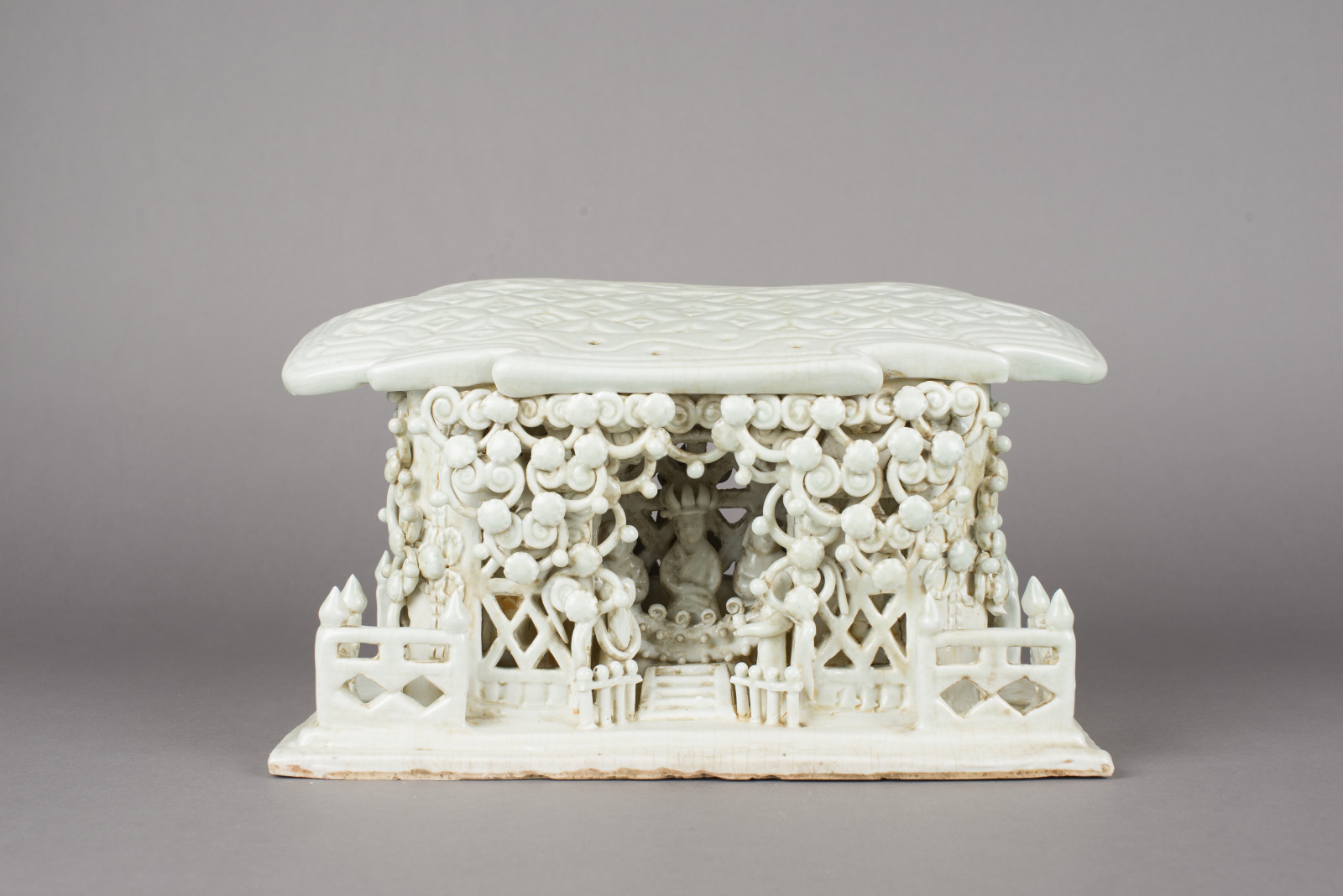
Headrest in the Form of a Theater, late 13th–mid-14th century; Chinese, Yuan dynasty; Jingdezhen ware; porcelain with carved and applied decoration under bluish-white (qingbai) glaze; 6 3/4 x 12 x 6 3/4 inches; Saint Louis Art Museum, Spink Asian Art Collection, Bequest of Edith J. and C. C. Johnson Spink 148:2014
This is a rare porcelain headrest in the form of a theater with a surrounding balustrade. The object is modeled in high relief on all four sides with figural and architectural details (see detail). The shaped top is slanted toward one of the long sides and decorated with a design of interlocking coins within an undulating border. During the Yuan dynasty, drama attained such a high point in the history of Chinese literature and performing arts that theatrical structures inspired the production of ceramic headrests.
January 2, 2024
Seaweed, Maine
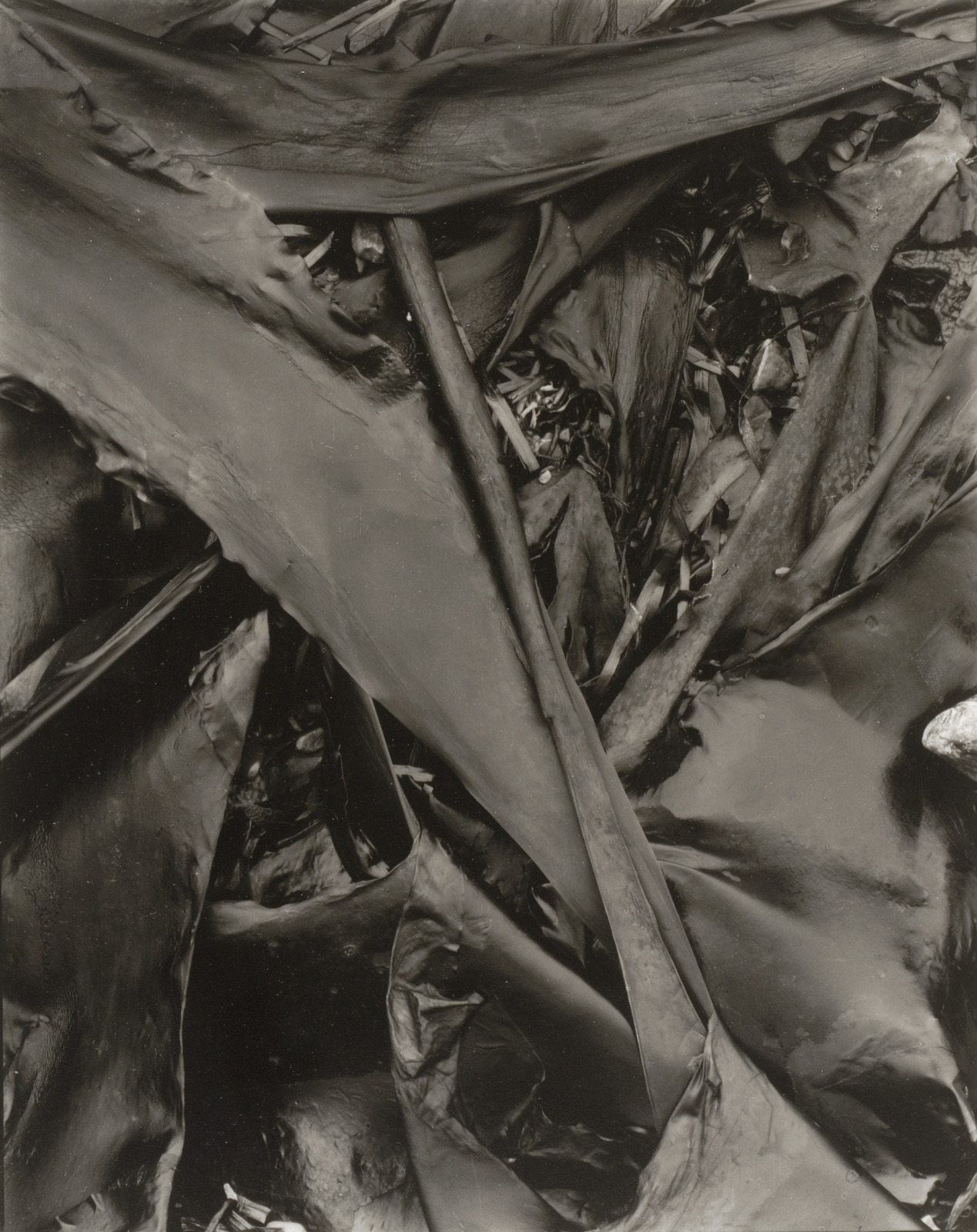
Paul Strand, American, 1890–1976; Seaweed, Maine, 1927, printed later; gelatin silver print; image: 9 3/4 x 7 3/4 inches, sheet: 9 3/4 x 7 3/4 inches; Saint Louis Art Museum, Gift of The Paul Strand Foundation 38:1981
In this photo, seaweed along the Maine coast creates a dense web of overlapping shapes and forms. There is an evocative physical presence in its glistening blades amidst a dark mysterious background. The photographer used a large-format camera to achieve tremendous clarity and detail. The tight composition makes the subject ambiguous and encourage new possible interpretations. In Strand’s view, the seaweed patterns actively move the viewer’s eye in and around the image, conveying nature’s energy and the fluidity of its form.
January 1, 2024
Mill Scene

Frits Thaulow, Norwegian, 1847–1906; Mill Scene, c.1885–90; oil on canvas; 32 1/8 x 39 5/8 inches; Saint Louis Art Museum, Gift of Nellie Ballard White 281:1972
Frits Thaulow was the brother-in-law of Paul Gauguin, a friend of Claude Monet, and the central figure in the emergence of a Norwegian school of Impressionist landscape painting in the 1880s. This image is one of a series of winter views which Thaulow produced of factories on the Akerselven River in Oslo. The reds of the buildings offset the whites of the snow and inky blackness of the water; a tiny figure crosses a bridge in the distance.
December 31, 2023
The Fireplace

Édouard Vuillard, French, 1868–1940; The Fireplace, 1901; oil on paper mounted on canvas; 18 3/16 x 24 1/2 inches; Saint Louis Art Museum, Funds given by Mr. and Mrs. John E. Simon 177:1955
Édouard Vuillard was a prominent member of the 1890s avant-garde group The Nabis, (a Hebrew word meaning “prophet”), who acquired notoriety for their highly decorative, semi-abstract compositions. Vuillard favored representations of bourgeois interiors, often of his family home. Here he represents his mother seated in her armchair in the left foreground with her legs stretched toward the heat emanating from the fire.
December 28, 2023
The River’s Golden Dream
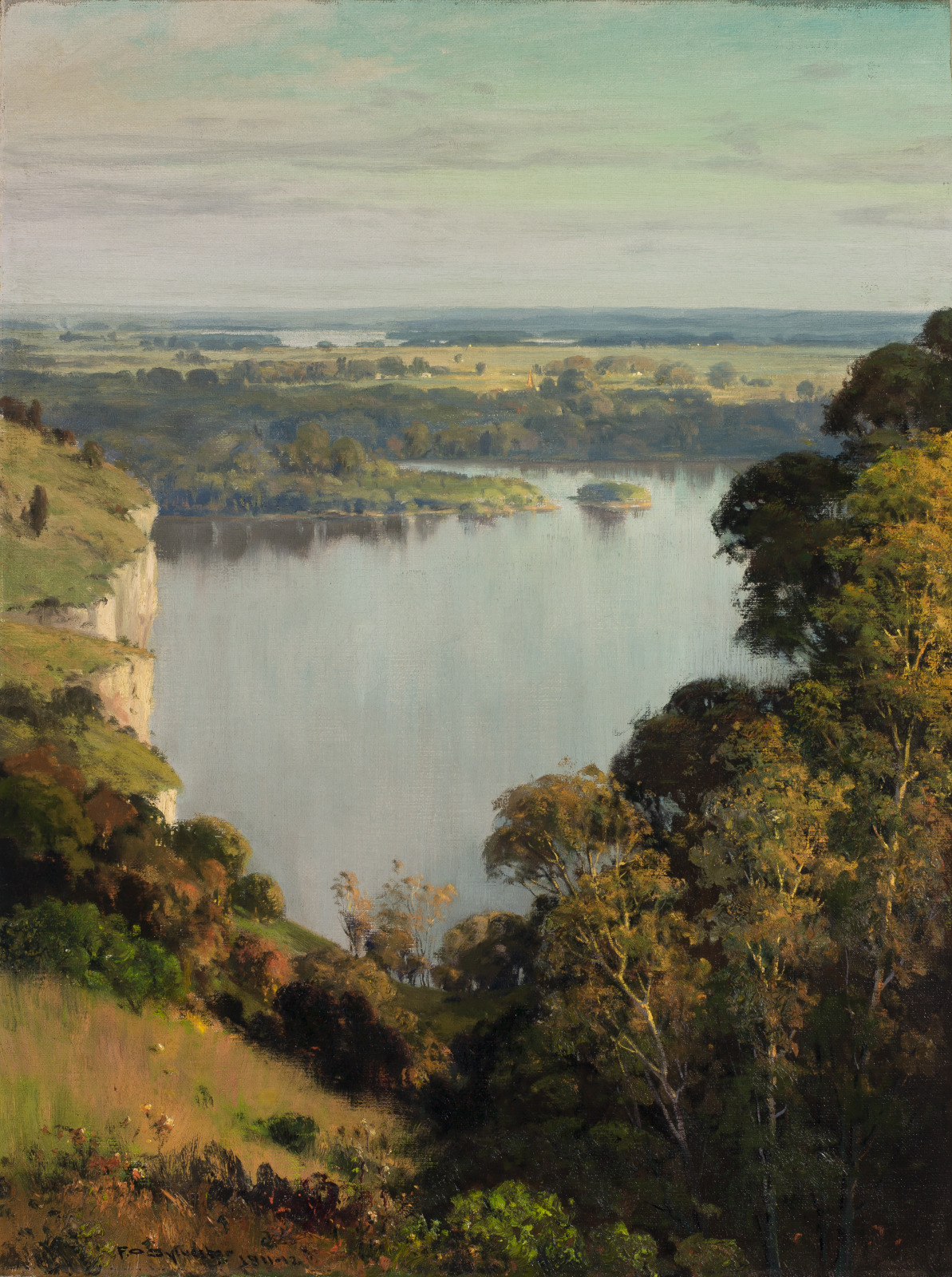
Frederick Oakes Sylvester, American, 1869–1915; The River's Golden Dream, 1911–12; oil on canvas; 40 x 30 inches; Saint Louis Art Museum, Museum Purchase 5:1913
The Mississippi River fills the foreground, with wetlands stretching into the distance. Frederick Oakes Sylvester painted this view looking towards Missouri from the bluffs at Elsah, Illinois. A leader in the early 20th-century St. Louis art scene, Sylvester taught at Principia and Central High School.
Best known for his paintings of the Mississippi River, Sylvester also wrote poems praising the beauty of the water and its golden light. In 1911, he published a collection titled The Great River: Poems and Pictures, a copy of which is held in the Richardson Memorial Library Special Collections.
December 27, 2023
Chinese-style Flower Basket (karamono-utsushi hanakago) with Loop Handle

Chikkōen, Japanese, active 20th century; Chinese-style Flower Basket (karamono-utsushi hanakago) with Loop Handle, early to mid-20th century; bamboo and rattan; 18 1/2 x 8 3/8 x 7 inches; Saint Louis Art Museum, The Nancy Jane Davidson Shestack Collection, bequest of Alan Shestack 245:2020
The refined symmetry and tight weave of this container identify it as a Chinese-style flower basket. Starting with chrysanthemum base plaiting (kikuzoko-ami), the sensual curving sides of the body and neck are mainly made of mat plaiting (gozame-ami or nuki-ami) except for a banded section of openwork toward the top.
The tall and elegant handle is made from a single wide strip of bamboo with decorative rattan knotting at the top. It is attached to the body at its two widest points with elaborate knots as well as to the neck of the vessel by way of two circular rings. The handle is further secured to the body by two bent bamboo stalks, each with three delicate knot fastenings.
December 26, 2023
Douglass Square
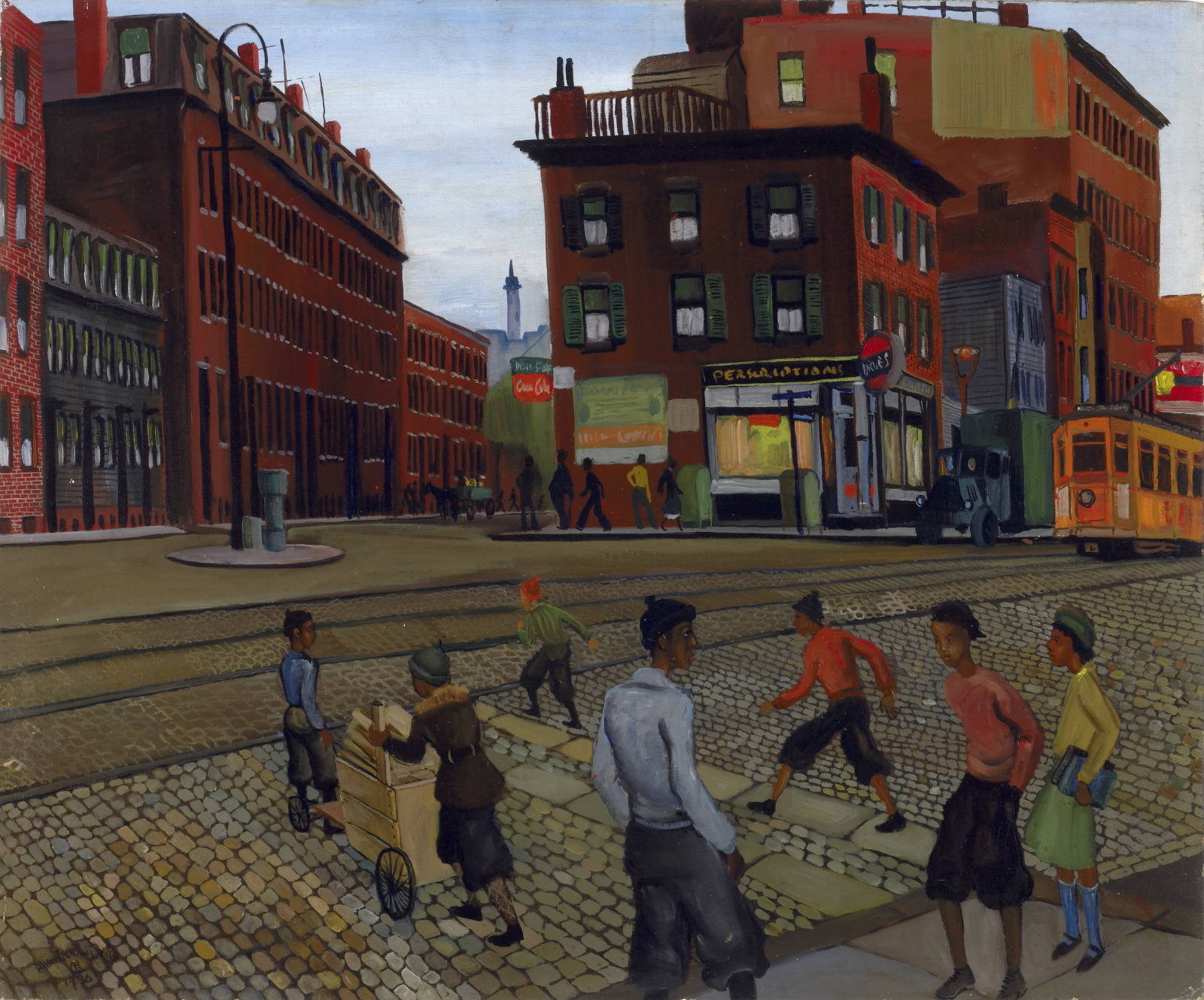
Allan Rohan Crite, American, 1910–2007; associated with Federal Works Agency, Work Projects Administration, Washington, D.C., active 1935–1943; Douglass Square, 1936; oil on canvas-covered artist's board; 23 1/2 x 27 inches; Saint Louis Art Museum, Gift of the Federal Works Agency, Work Projects Administration 354:1943
In 1979, the artist Alan Rohan Crite explained his preference for the kind of everyday neighborhood scene like Douglass Square. He said, “I was living here [Boston] in the South End with a lot of black people around me. I was painting them as I saw them as human beings, just ordinary human beings, having ordinary lives. In the twenties and thirties the image of black people was distorted, to put it mildly. We had a ‘Jazz Negro’ entertainer or a traumatic figure out of the ghetto or a social problem. But the ordinary human being who goes to the store, comes home, washes dishes, all the homely things—he just wasn’t registering. I felt it important for me to present that life of black people as part of the Christian dignity of man.”
December 25, 2023
Skating Near a Town

Hendrick Avercamp, Dutch, 1585–1634; Skating Near a Town, c.1610–20; oil on canvas; 13 x 23 7/8 inches; Saint Louis Art Museum, Museum Purchase 46:1939
The bare tree silhouetted against the lighter background enhances the wintry chill of this picture. This artist was the first to specialize in the winter panorama, scenes he depicted with satisfying and interesting detail. Hendrick Avercamp was an astute observer of people, carefully recording gestures and activities to lend a sense of everyday life to his subjects. He sometimes repeated the same figures in subsequent paintings without losing the individuality of the people engaged in their daily tasks.
December 24, 2023
Album Quilt

Album Quilt, 1848; American, Baltimore; cotton; 100 1/4 x 100 1/4 inches; Saint Louis Art Museum, Gift of Mrs. Stratford Lee Morton 1:1973
Album, or friendship, quilts are among the most beautiful and sophisticated American quilts produced in the 19th century. This style of quilt was made in Baltimore between 1846 and 1852. They were stitched by groups of women to commemorate special events, to honor a prominent community member, or to remember someone relocating in this period of westward expansion.
This quilt was made as a tribute to Elizabeth Morrison by a group of Methodist church women. It is inscribed, “Presented to E Morrison By Ladies of Baltimore, MD.,” and has eight signatures. Two other inscriptions begin with the words “Friendship’s Offering” and “Friendship’s Gift.” An additional message offers an insight into political events of the time: “From one of the Rough & Ready To the Worthy President Mary Ann Hudgins, 1848.” U.S. Army General Zachary Taylor, who became the nation’s 12th president in 1849, was known to his troops as “Old Rough and Ready.”
December 23, 2023
Miniature Canoe
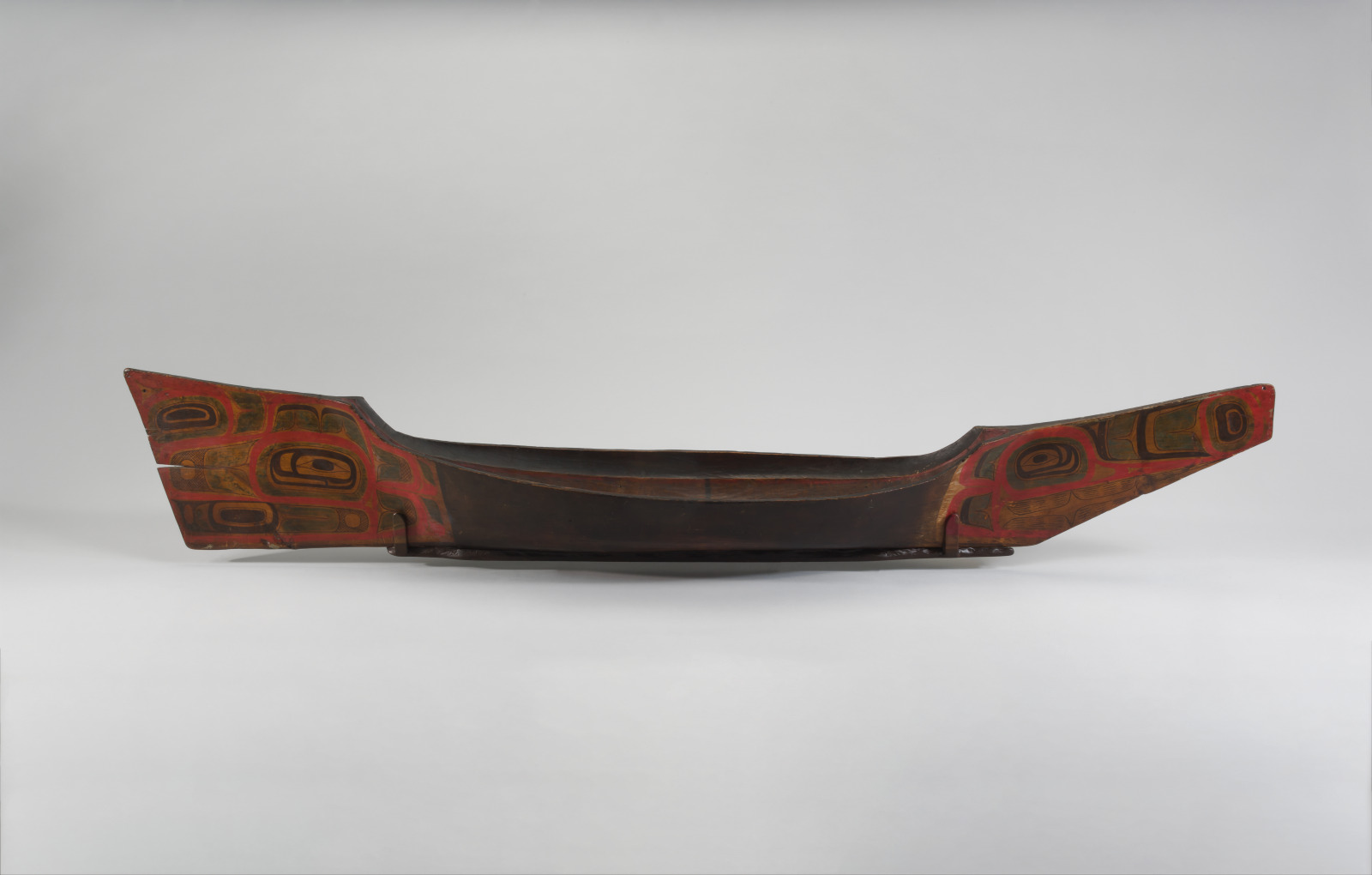
Haida, Tlingit, or Tsimshian artist; Canoe Model, 1825–50; wood and pigment; 9 1/2 x 9 x 54 inches; Saint Louis Art Museum, Museum Purchase and Friends Fund 526:1978
This canoe model, created by a Haida, Tlingit, or Tsimshian artist, exhibits the same technique, form, design, and painting used for large-scale canoes. Carved from a single log, the model has the central characteristic U-shape of larger canoes and the narrowing ends typical of head canoes, known as long tails by the Tlingit. The abstract, ovoid shapes represent different kinds of animals in green, red, and black pigment and follow the natural contours of the canoe. Canoe models were often made for some of the earliest non-Native travelers to the Northwest, and were carved by the same master artists who crafted large-scale canoes and lived in Haida and Tlingit communities.
December 19, 2023
Madonna and Child Enthroned with Angels

Spinello Aretino, Italian, c.1350–c.1410; Madonna and Child Enthroned with Angels, c.1390; tempera and gold leaf on panel; 53 x 25 inches; Saint Louis Art Museum, Museum Purchase 48:1927
Seated in a magnificent throne that conveys both importance and spatial depth, Mary holds the Christ child as he playfully pulls at her mantle. The altarpiece demonstrates the late 14th- and early 15th-century interest in rendering the Madonna and child in a more naturalistic manner by displaying tender emotions and figural volume. The placement of the throne and the position of the attending angels invite the viewer into the space and suggest a regal yet earthly setting.
December 18, 2023
Journey Signs
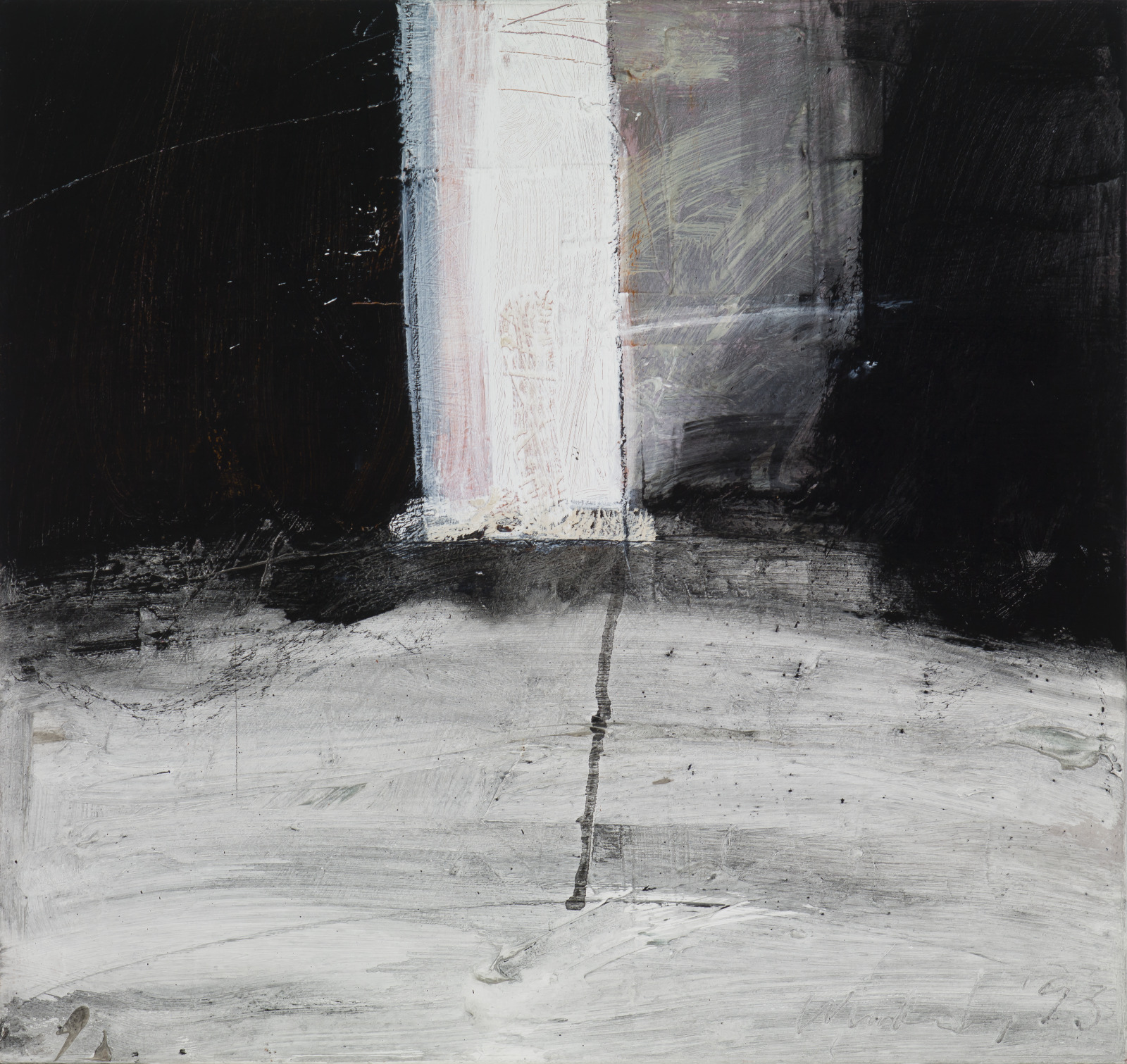
Frank Wimberley, American, born 1926; Journey Signs, 1993; acrylic on canvas with collage; 32 x 34 inches; Saint Louis Art Museum, The Thelma and Bert Ollie Memorial Collection, Gift of Ronald and Monique Ollie 194:2017; © Frank Wimberley
This seemingly simple work actually contains many layers of paint and fabric (see detail). Scratches through the black on the left reveal a ground of bright orange, also evident under white areas in the lower half. The white rectangle in the center is built up from layers of cut canvas, and its side shimmers with iridescent pinks and gold. Frank Wimberley’s approach to assembling these elements was improvisational and inspired by jazz. In turn, it was appreciated by musicians such as Miles Davis, who collected his work.
December 14, 2023
Bathers
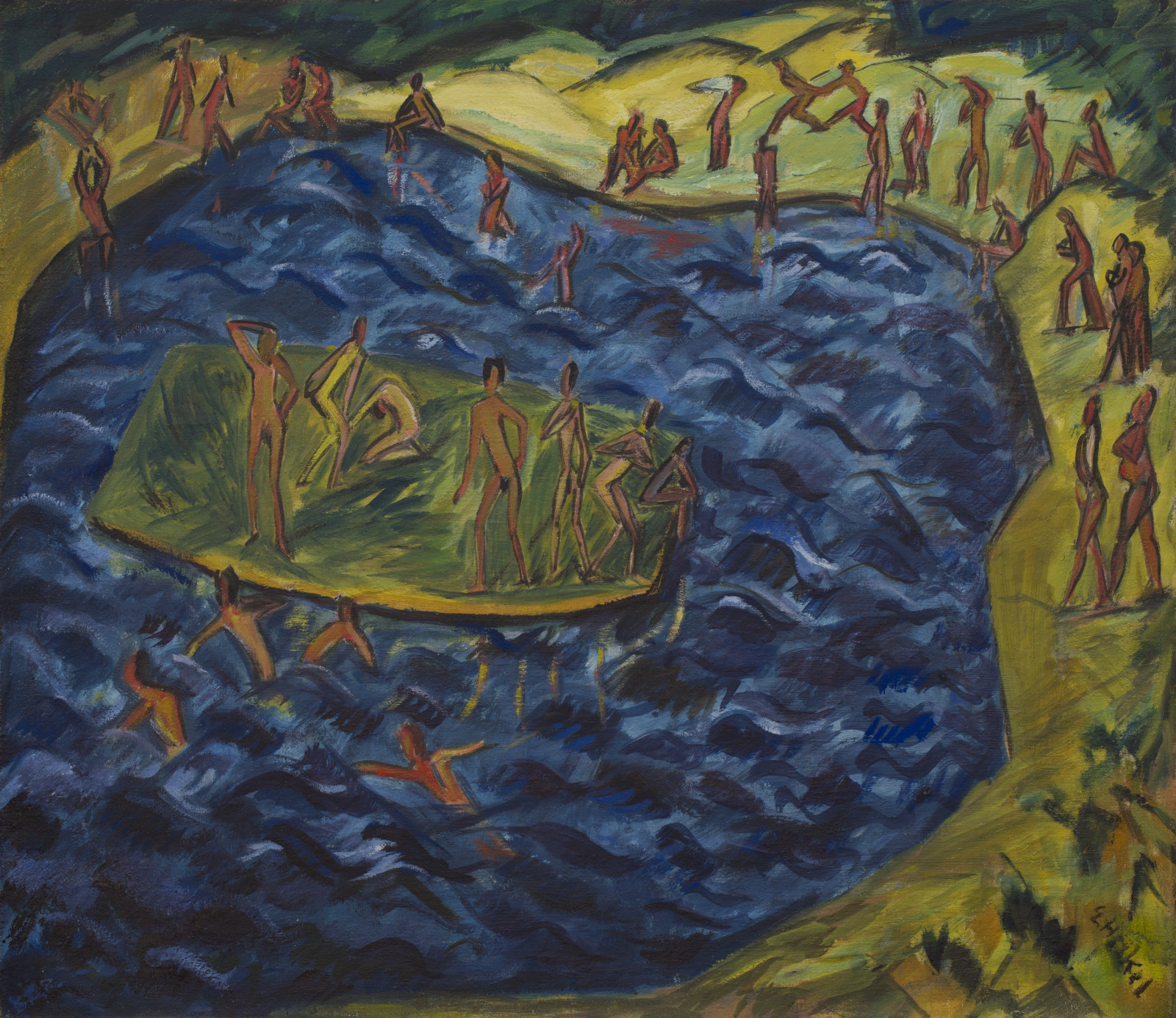
Erich Heckel, German, 1883–1970; Bathers, 1913; oil on canvas; 33 x 37 7/8 inches; Saint Louis Art Museum, Bequest of Morton D. May 892:1983
Erich Heckel’s aerial view of bathers captures life at a lakeside retreat in northern Germany. Heckel and other members of the artist group Die Brücke (The Bridge) visited such retreats to paint nude models outdoors and to escape the pressures of early 20th-century urban life. They were not alone. Many Germans practiced nude bathing as part of Lebensreform (Life Reform), a back-to-nature movement that advocated nudity outdoors to improve mental and physical health.
December 13, 2023
Banquet Table (kakeban) with Design of Clouds and Chrysanthemums

Banquet Table (kakeban) with Design of Clouds and Chrysanthemums, late 16th century; Japanese, Muromachi period, or Momoyama period; wood, lacquer, gold, and silver; 7 1/2 x 14 1/2 x 13 1/2 inches; Saint Louis Art Museum, Funds given by Mr. and Mrs. John Peters MacCarthy and Director's Discretionary Fund 109:2002
The sumptuous gold-lacquer chrysanthemums decorating this serving table celebrate the beauty and abundance of autumn. Revealed among delicate, lacy leaves, a profusion of blossoms in low relief is echoed by spiraling clouds of swirling gold and silver flake, all against a gold-dusted, “pear-skin” ground. The raised, neatly indented corners on the top complement the four finely proportioned legs, the taut, curving shapes of which give the table an elegant and dynamic form. In style and technique, this table closely conforms to work from sixteenth-century Kyoto, especially the costly commissions for the nobility and the ruling military class. Beautifully set with gourmet morsels before an honored guest, the table would exemplify the lavishly ornate high aristocratic style of later Japan under the rule of the shoguns.
December 10, 2023
Faith

Hiram Powers, American, 1805–1873; Faith, 1867–73; marble; 28 1/4 x 18 7/8 x 12 5/8 inches; Saint Louis Art Museum, Gift of J. Harold Pettus 129:1965
Faith’s draped classical dress, decorative headband with cross, and solemn expression communicate this sculpture’s neoclassical character and its spiritual significance. This work is one of a trio of allegorical busts depicting the theological virtues Faith, Hope, and Charity. The artist, Hiram Powers placed the virtues in a different order; he believed that, “Hope was the bud, Faith, the flower, Charity, the fruit.” Powers was one of a number of American sculptors who made his home in Florence, Italy.
December 7, 2023
LS #17
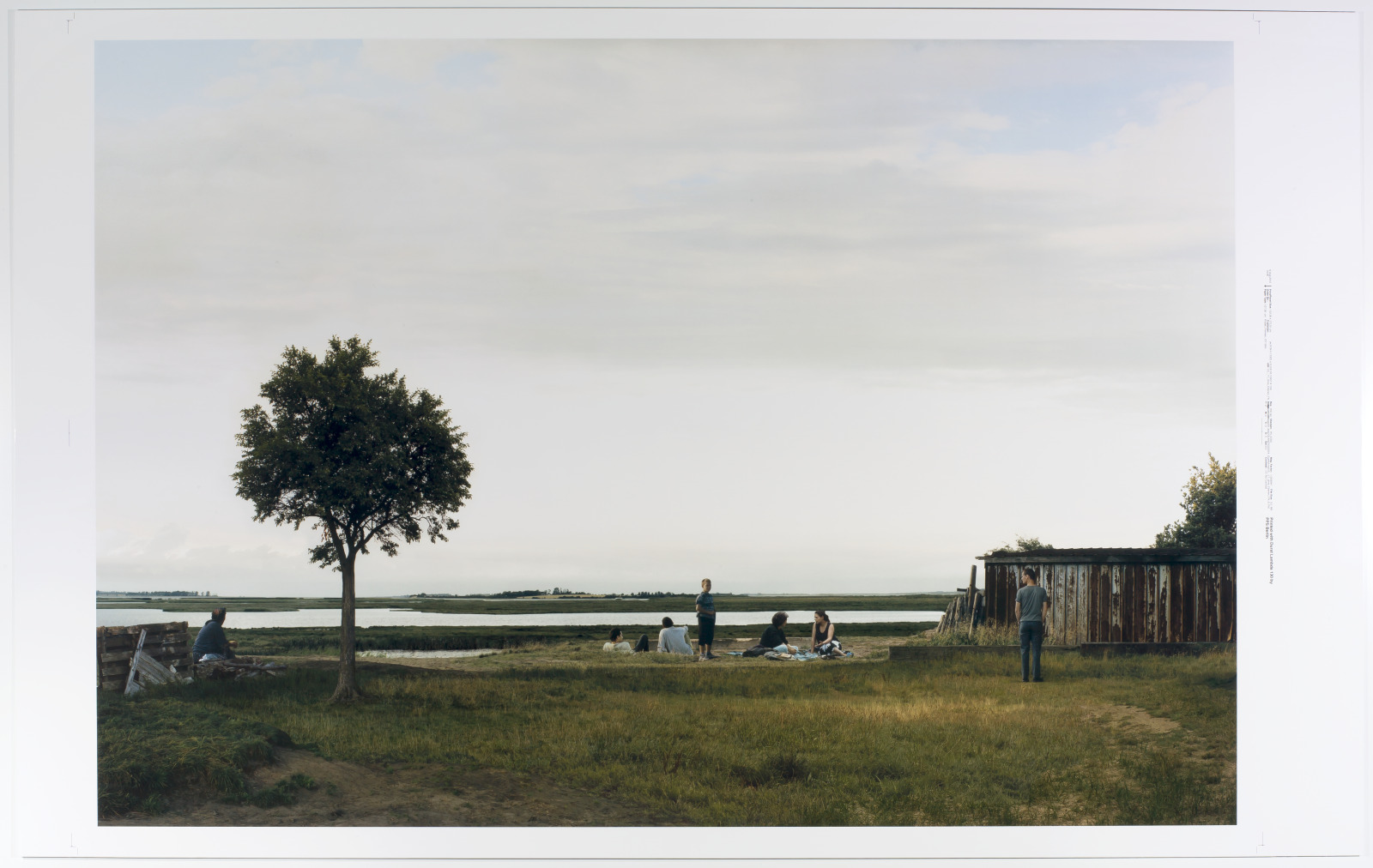
Beate Gütschow, German, born 1970; LS #17, 2003, printed 2012; chromogenic print; image: 45 1/2 x 66 1/2 inches, sheet: 48 1/2 x 78 1/2 inches; Saint Louis Art Museum, Funds given by Jeffrey T. Fort, the St. Louis Friends of Photography, the Anne L. Lehmann Charitable Trust, Mr. Sam Weiss; and gift of Stephen Bunyard and Museum Purchase, by exchange 24:2012; © 2023 Artists Rights Society (ARS), New York
Hear Expert Commentary
-
Transcript
Speaker: Eric Lutz
Associate Curator of Prints, Drawings, and Photographs
Saint Louis Art MuseumHello, this is Eric Lutz, associate curator of prints, drawings, and photographs. We are looking here at the large-scale photograph by the contemporary artist Beate Gütschow entitled LS #17. Gütschow composes what looks like a panoramic view of a northern European countryside, very reminiscent of Dutch 17th-century paintings. A low, flat horizon is dominated by a vast sky, and lounging figures by a river are enjoying the scenery. Yet what we are seeing is not a window onto an actual place but a meticulous simulation. The artifice is apparent only after sustained and close viewing. For example, the shadows do not match up throughout the image, and there are elements that are disruptive to a harmony of the overall scene, such as patches of dirt, discarded shipping palettes, and the oddly small scale of the main tree.
Gütschow used advanced visual software—digitally stitching the image together from dozens of different negatives that she had taken on her travels. Rather unexpectedly, the sources for the individual elements in this composition are far from the natural environment it suggests. She chose to photograph in urban centers, public parks, even construction sites, recombining the elements to appear as if we are looking at untouched wilderness. Further, she includes city dwellers—people engaged in mundane urban activities. Indeed, many of the figures in LS #17 look disconnected from or awkwardly situated within the bucolic countryside.
All of these subtle inconsistencies reveal the traces of Gütschow’s process for constructing her picture. She even goes so far as to engage the margins around the image by including the registration marks and the printing information from the large-format printer she uses. Gütschow revels in this push and pull between the believability of the illusion and the artifice of its construction.
Reminiscent of a 17th-century Dutch landscape painting with a distant, low horizon and clusters of figures, this photograph is a meticulous simulation. Beate Gütschow digitally combined dozens of images of mundane, unrelated places, such as public parks and construction sites. This blending references earlier traditions of European landscape pictures, in which the countryside vistas depicted were also artificial fabrications. The printing information visible at the right deliberately erodes trust in the photographic illusion by hinting at the process of its construction.
December 6, 2023
On the Ice Near Dordrecht
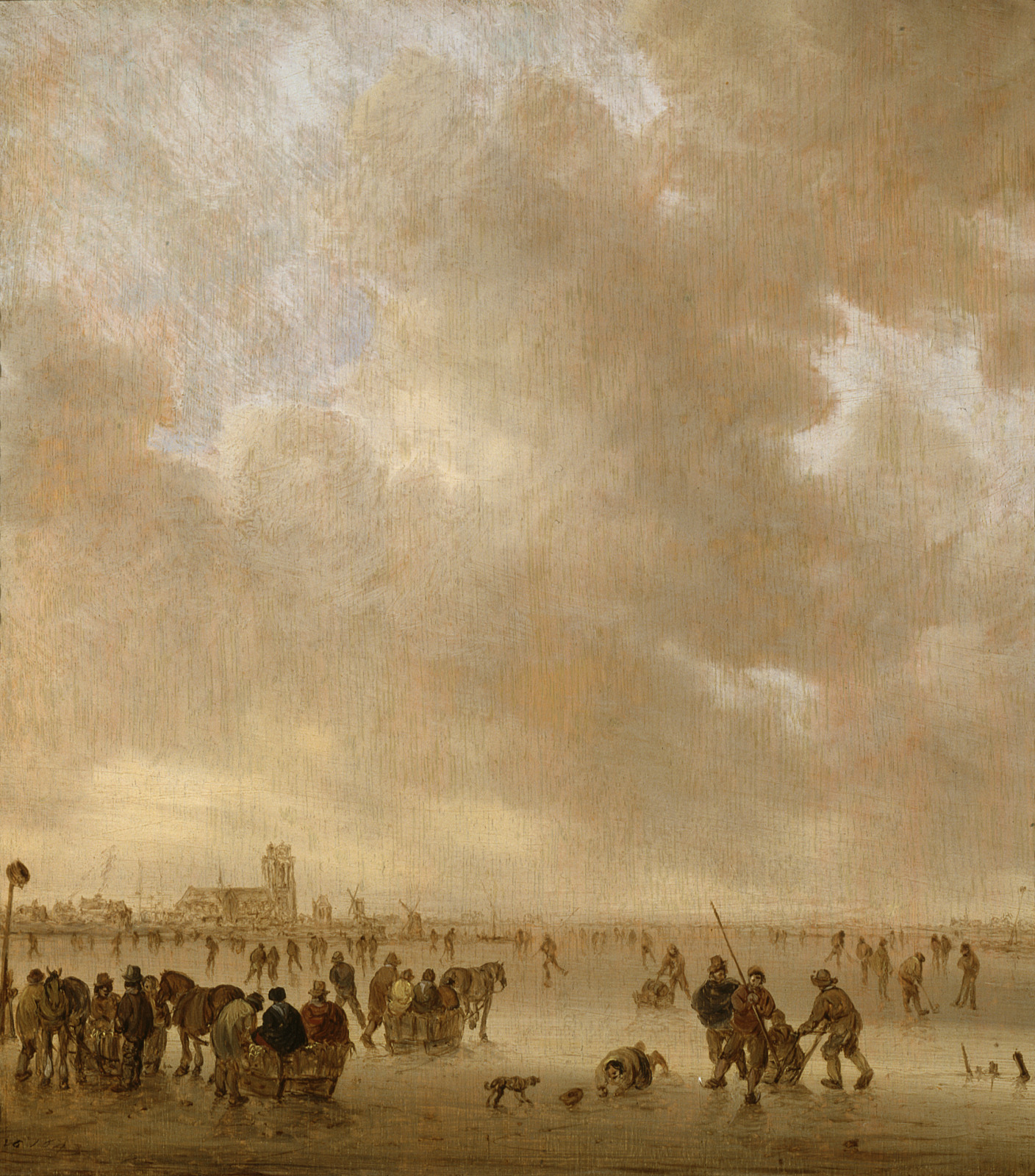
Jan van Goyen, Dutch, 1596–1656; On the Ice Near Dordrecht, 1643; oil on panel; 14 5/8 x 13 1/4 inches; Saint Louis Art Museum, Museum Purchase 223:1916
The low horizon line of this picture emphasizes the most prominent characteristic of the Dutch countryside—its flatness. Several Dutch artists working in the middle years of the 17th century focused on this aspect of their native land. Using a limited number of colors, Jan van Goyen captures the tonal variations in the clouds and the reflected light on the cool ice below.
December 5, 2023
Length of Brocaded Fabric
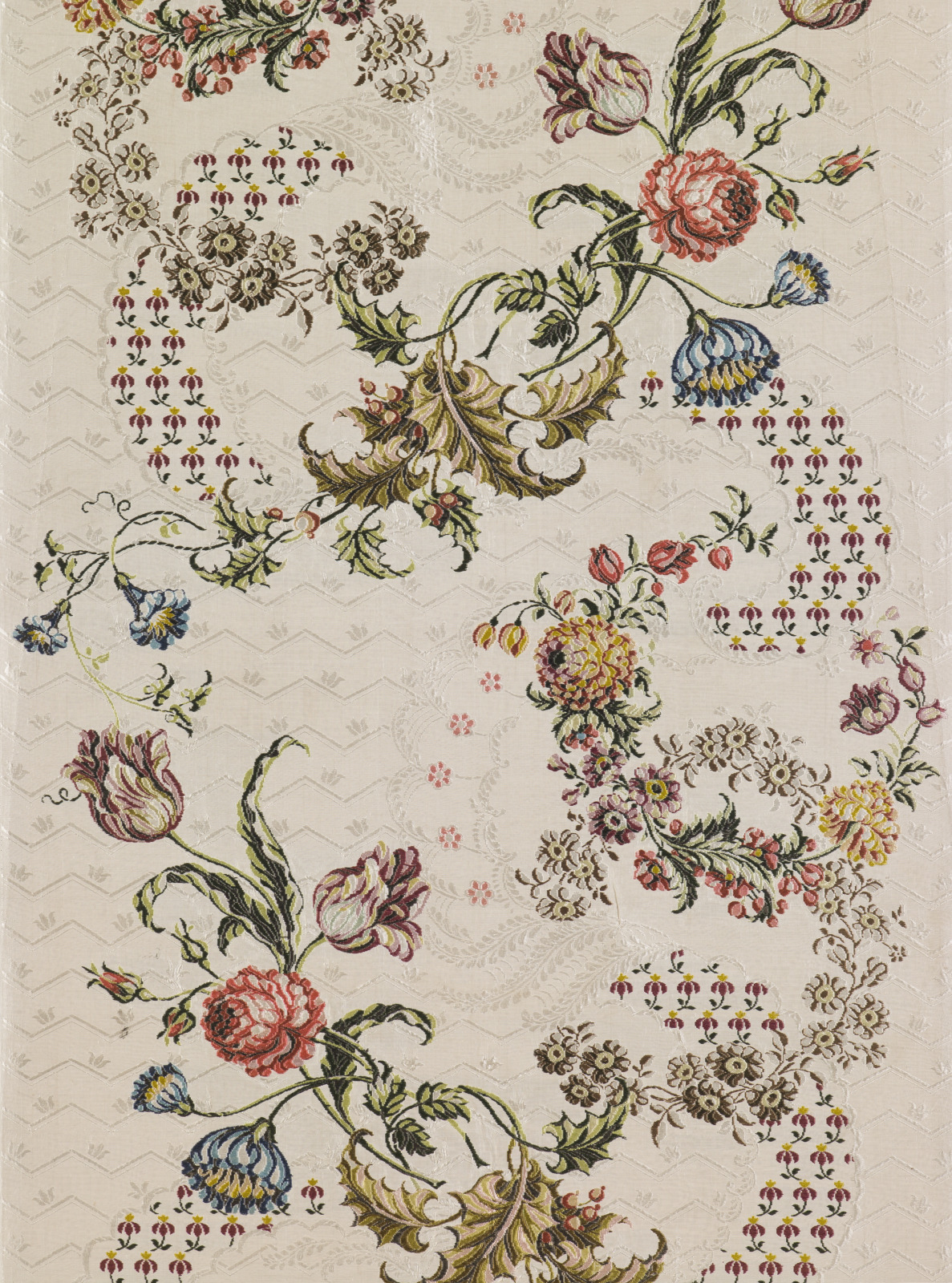
Length of Brocaded Fabric, c.1745; English; silk; 19 3/4 x 40 1/4 inches; Saint Louis Art Museum, Richard Brumbaugh Trust in memory of Richard Irving Brumbaugh and Grace Lischer Brumbaugh 108:2016
Flowers three ways—loosely bundled, wound into garlands, and repeated in commas of pattern—make this a dizzyingly complex textile. Made in Spitalfields, the silk-weaving capital of England, this luxurious dress fabric, festooned with tulips, roses, and bellflowers, represents the pinnacle of 18th-century botanical naturalism. The brocading, or woven and raised embellishment, mirrored the depth and variation achieved in embroidery of the same moment.
December 3, 2023
The Ecstasy of Mary Magdalene
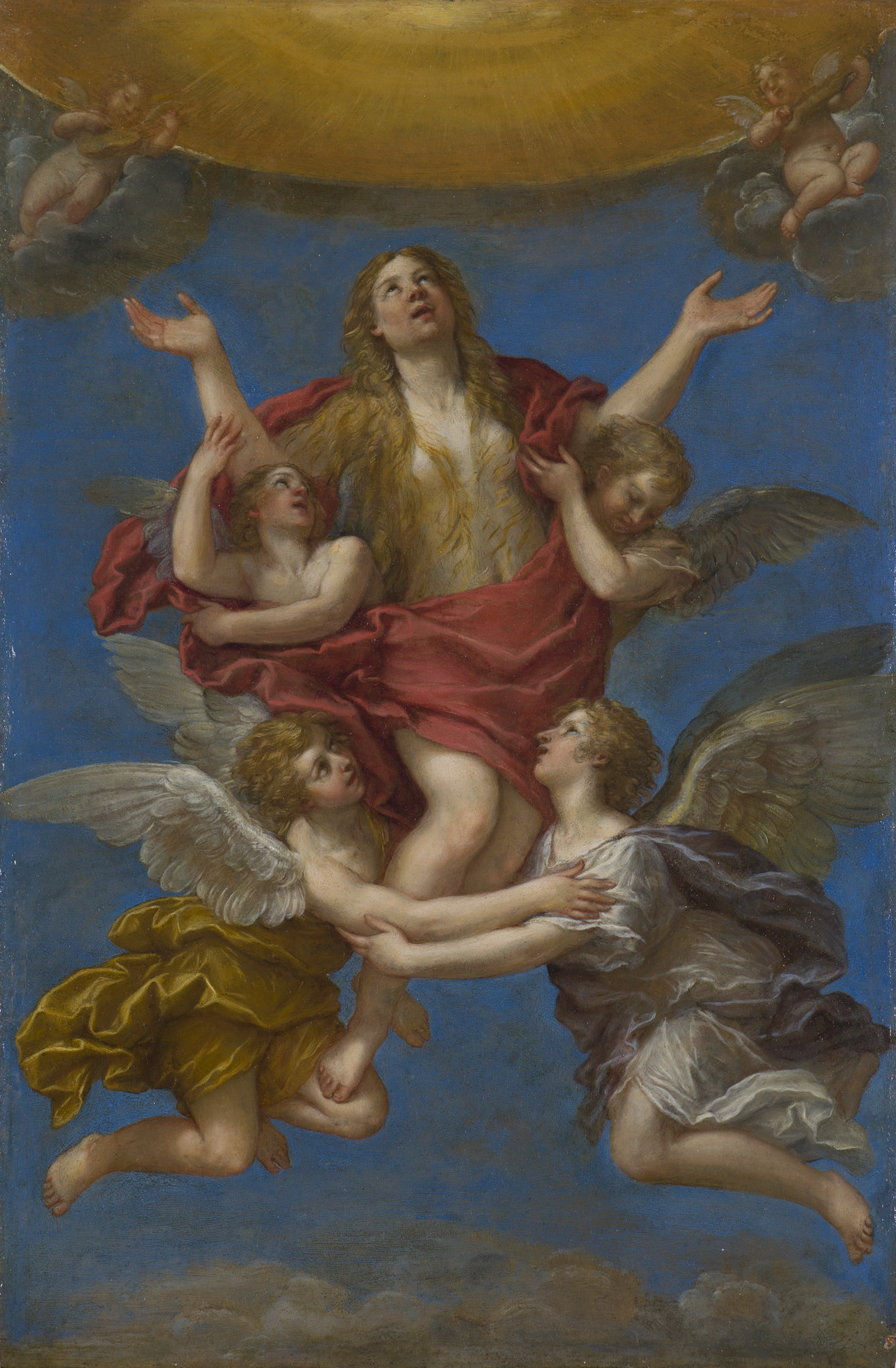
Francesco Albani, Italian, 1578–1660; The Ecstasy of Mary Magdalene, 1640s; oil on copper; 16 9/16 x 10 13/16 inches; Saint Louis Art Museum, Funds given by Mr. and Mrs. John Peters MacCarthy in memory of Ruth Peters MacCarthy 512:2018
Mary Magdalene, a Christian saint popular in the 17th century, is being carried into the sky by angels. According to a 13th-century biographical account, she retired to a cave in southern France near the end of her life. Her daily prayer ritual, depicted here, included an ascent into heaven facilitated by a group of angels who carried her aloft. In the 17th century, Christians believed she was a converted prostitute (now known to be untrue). Since she was able to renounce her sin and follow Christianity, she was held as a model for those who had embraced the tenets of Protestantism and could also renounce their past and return to the Catholic Church. Francesco Albani’s mastery of the human form resulted from his training in Bologna, Italy, where artists utilized drawings made by sketching live models.
December 1, 2023
Girl with Mandolin
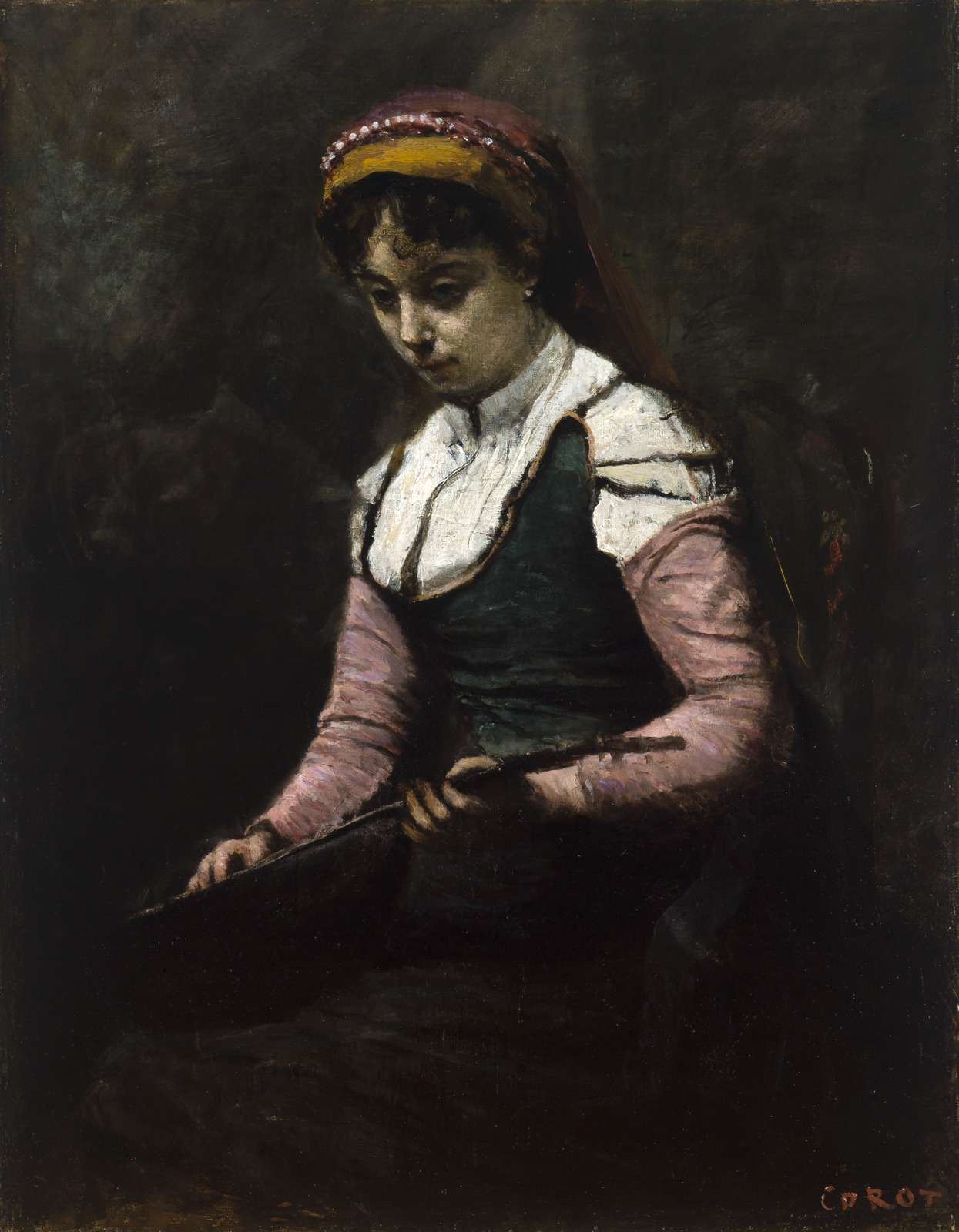
Jean-Baptiste-Camille Corot, French, 1796–1875; Girl with Mandolin, 1860–65; oil on canvas; 20 1/4 x 15 7/8 inches; Saint Louis Art Museum, Museum Purchase 3:1939
Jean-Baptiste-Camille Corot was nearly seventy years old and at the height of his considerable fame as a landscape artist, when he painted Girl with Mandolin. Corot employed models and directed them to strike contemplative attitudes, often holding an instrument or a book. Posing in the theatrical space of the studio, this young woman wears an Italian peasant costume and idly plucks the mandolin strings.
November 29, 2023
Figure of a Woman
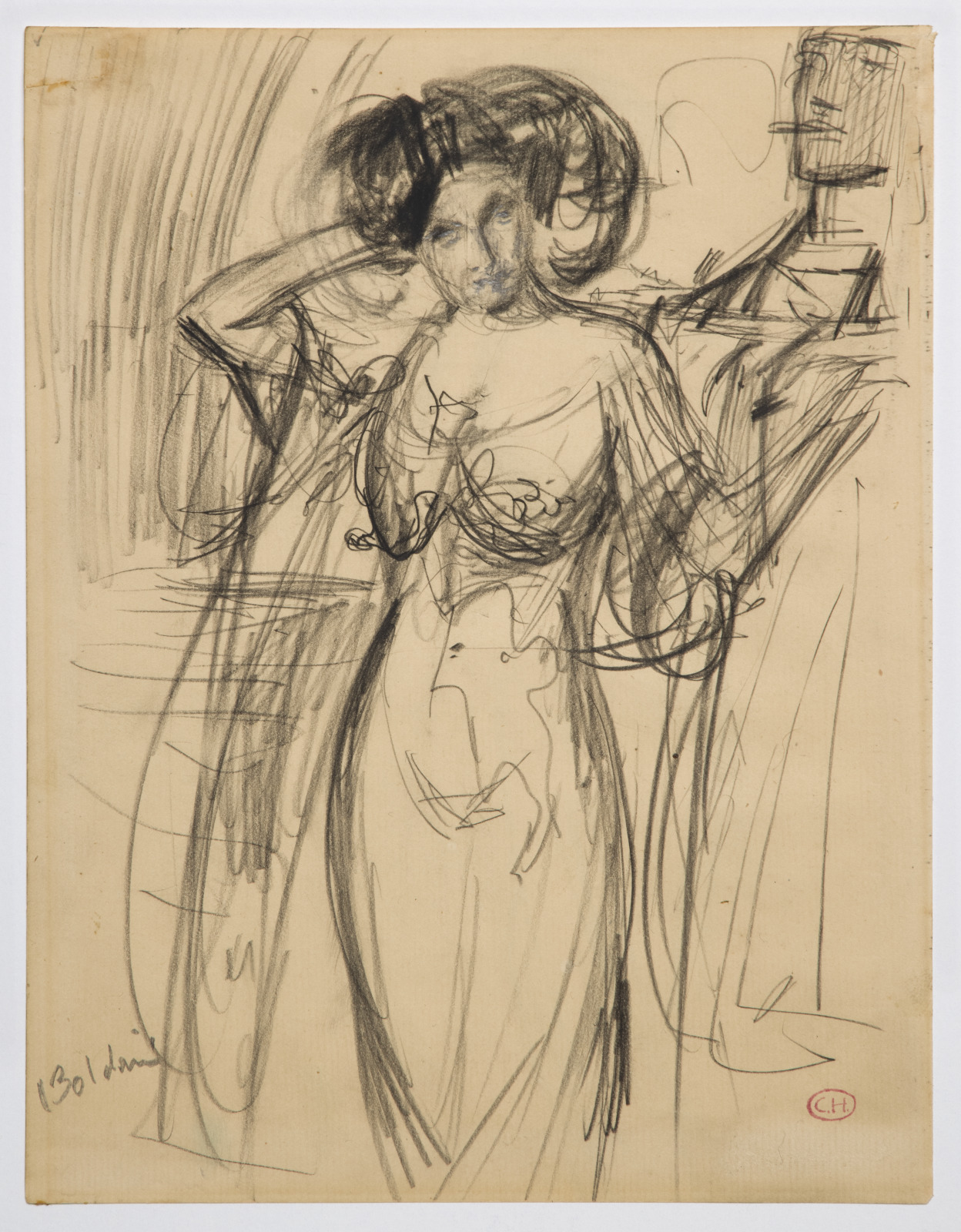
Giovanni Boldini, Italian, 1842–1931; Figure of a Woman, c.1900–10; graphite; 9 x 6 7/8 inches; Saint Louis Art Museum, Gift of Mr. and Mrs. Martin Kodner 1875:1981
A woman wears a slim-fitting gown with the suggestion of embroidery on the bodice. Her dress, coupled with her plumed headwear, identifies her as a woman of high fashion and wealth. Giovanni Boldini’s work was synonymous with society portraiture both in Paris, where he spent most of his career, and internationally. The decisive lines that shape the figure’s body, clothes, and setting lend an abstracted energy to this depiction. Boldini painted using a similar approach, creating a style that appealed to elegant patrons.
The woman’s body is subtly evident beneath her clothes in this drawing. Such portraits circulated as evaluations of a woman’s position in society, based on her appearance and clothing, as determined by the expectations of the male gaze.
November 25, 2023
Untitled
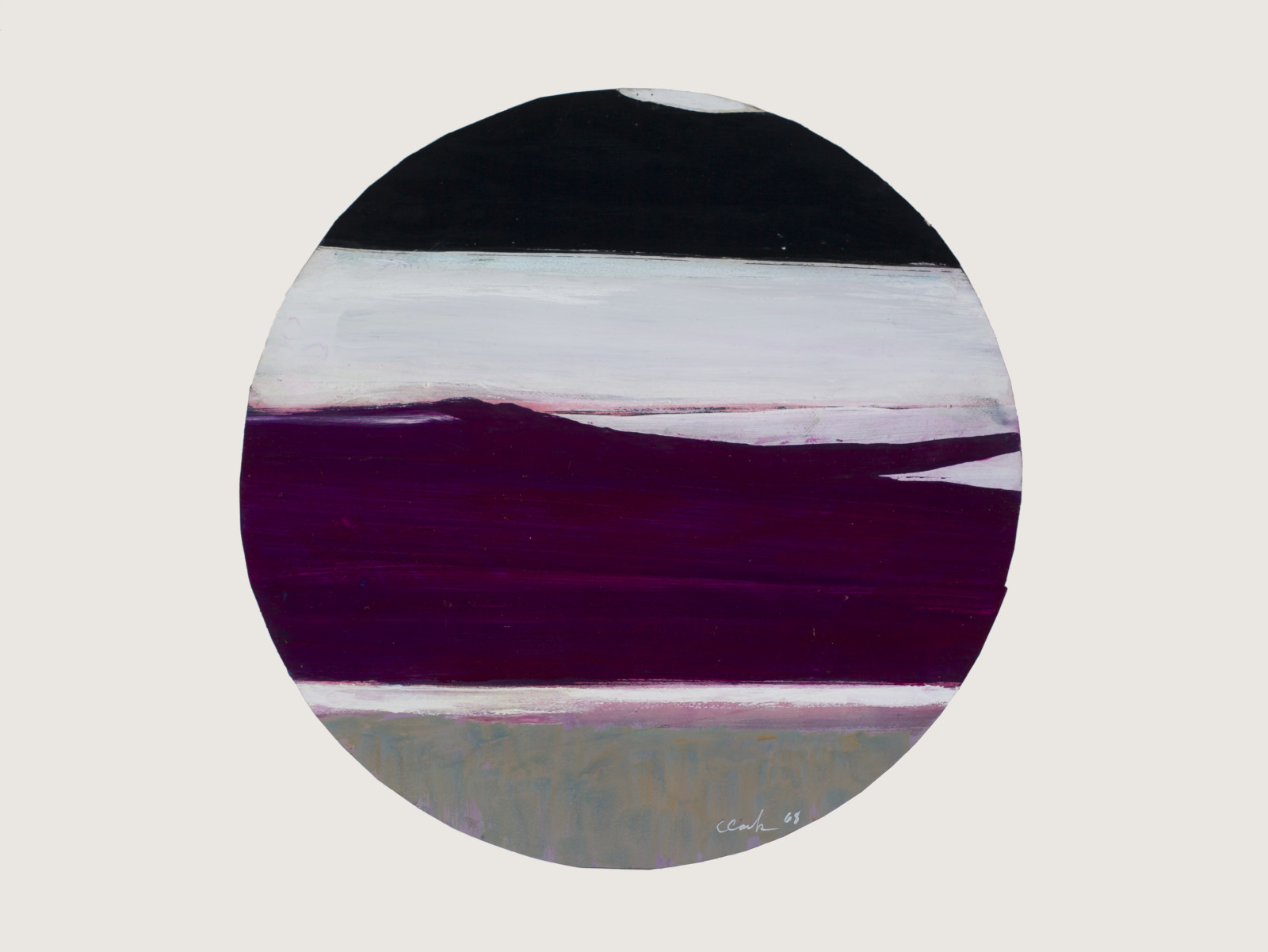
Ed Clark, American, 1926–2019; Untitled, 1968; acrylic; 19 1/2 x 19 1/4 inches; Saint Louis Art Museum, The Thelma and Bert Ollie Memorial Collection, Gift of Ronald and Monique Ollie 125:2017; © Ed Clark / Michael Rosenfeld Gallery
In this work, horizontal bands of color slice across a round sheet. Ed Clark is considered among the first American artists to experiment with shaped supports, a radical departure from traditional rectangular formats, which redefined painting. He first exhibited his transformative shaped work, which had elements extending beyond the frame, in 1957 at the Brata Gallery. This was an influential venue in New York at the heart of the city’s mid-century avant-garde art scene. In 1968, he began to explore circular and oval profiles, of which this work is an early example.
November 24, 2023
Hand Drum
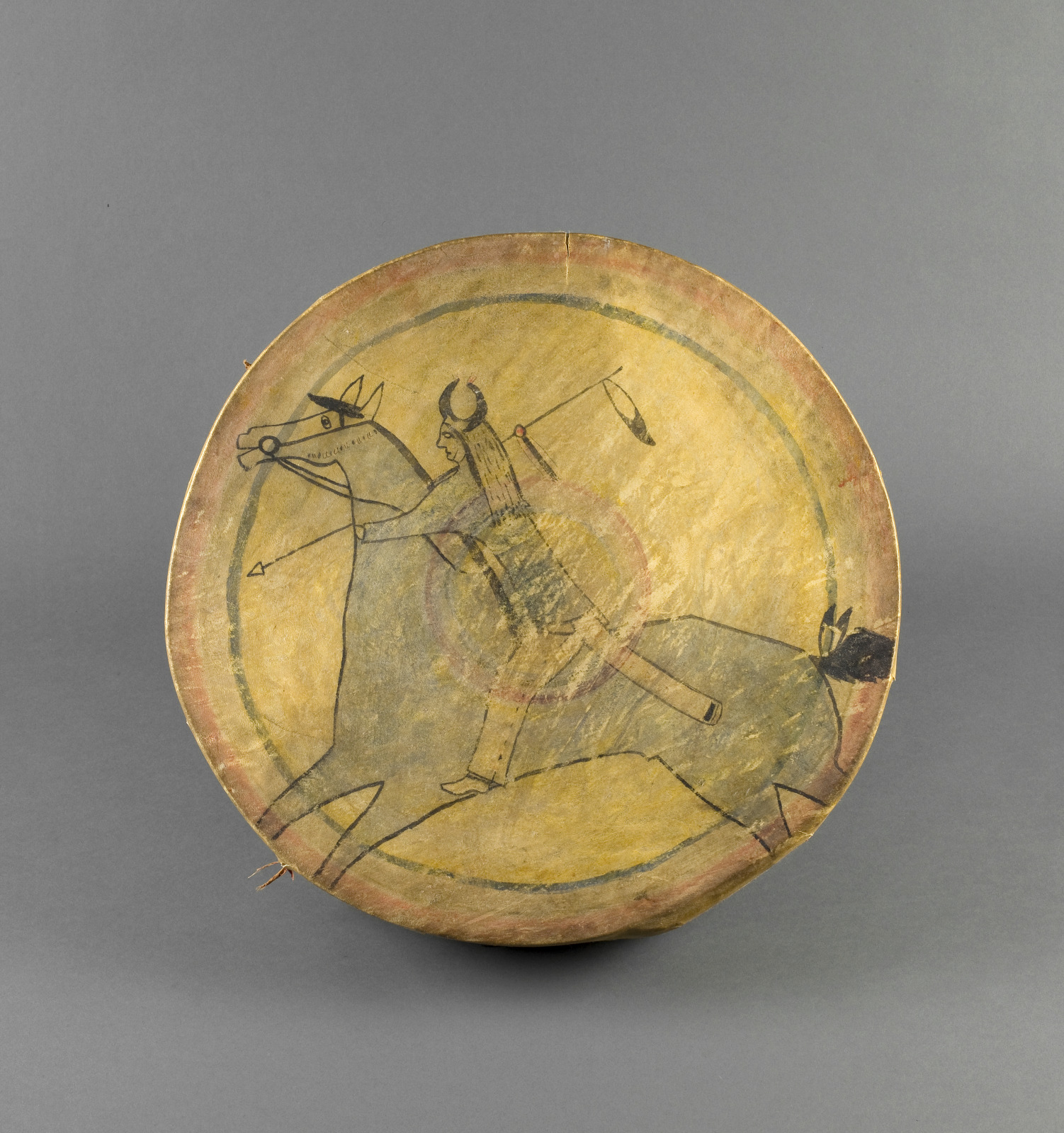
Oki' cize-ta'wa, Lakota (Sioux), 1850–1924; Hand Drum, c.1910; rawhide, wood, nails, cotton cloth, leather, metal wire, and pigment; diameter: 19 inches; Saint Louis Art Museum, The Donald Danforth Jr. Collection, Gift of Mrs. Donald Danforth Jr. 40:2012
A galloping horse and rider evoke the iconic Plains horse cultures from the pre-reservation era. Across the 19th century many Plains men created autobiographical, narrative drawings and paintings to memorialize their brave feats. As a young man in the 1860s, Oki’ cize-ta’wa garnered recognition for his achievement raiding horses from enemy camps. This figure may represent the artist himself. The design for painting his face included an upturned crescent on his chin, here visible as a dark, tapering line.
Made for trade during the reservation era, this drum demonstrates how Plains men adapted ancestral pictorial conventions to earn income under foreign economic and social contexts.
November 23, 2023
Sideboard

made by Alexander Roux, American (born France), 1813–1886; Sideboard, c.1855–60; black walnut, yellow poplar, pine, and marble; 94 3/8 x 72 x 25 inches; Saint Louis Art Museum, Eliza McMillan Purchase Fund; and Museum Purchase, gift of the Mercantile Library, bequest of Miss Georgia Elliot, funds given by the Decorative Arts Society, gift of William T. Deacon, bequest of Katherine Jane Hinchey Cochran in honor of Paul Hinchey, and gift of Mr. and Mrs. Stanley M. Rosenblum and Miss Elizabeth Green, by exchange 23:2007a-d
This extravagant sideboard features carved ornament that represents wine and agriculture, subjects appropriate to furniture intended for the dining room. Grape vines encircle a pudgy baby or putto at the top. Pendant grapes and the goat in the central panel may be emblems of Bacchus, the Roman god of wine. More grapes and a cask ornament one of the doors below. The inclusion of straw hats, sheaves of wheat, a hay fork, and a gourd bottle on the other door suggests agriculture, the harvest, or simply country life—all motifs for the enjoyment of the city dwellers who were Alexander Roux’s principal customers.
November 21, 2023
Miniature Bowl with Design of Millefiori Motifs
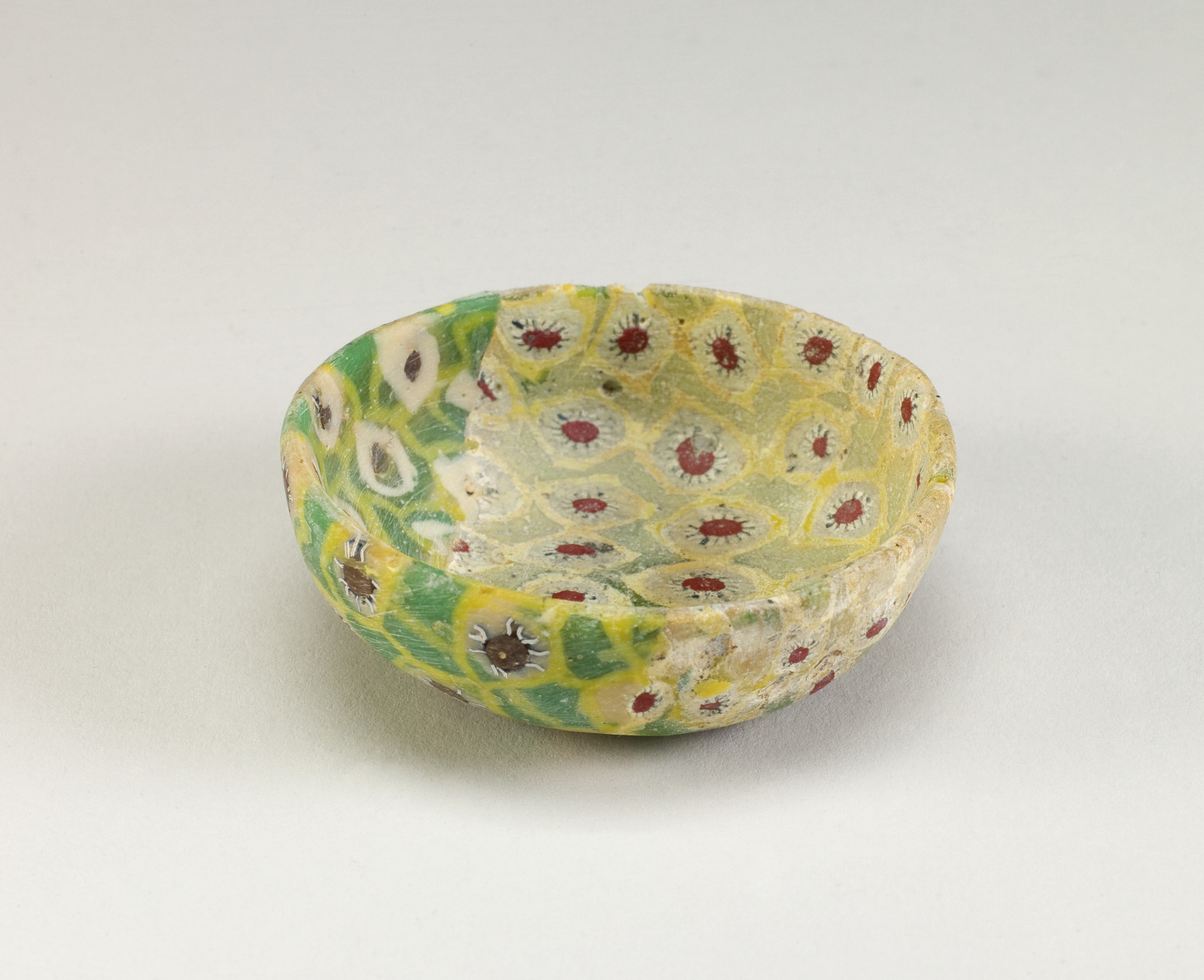
Miniature Bowl with Design of Millefiori Motifs, 9th century; Iraqi, Abbasid period; mosaic glass in millefiori technique; 3/4 x 2 1/4 inches; Saint Louis Art Museum, Gift of Hadji Baba Gallery in memory of Rafti Soleimani 110:1989
Glass-making in the Islamic world reflects a vibrant tradition dating from ancient times. The Romans first discovered how to blow glass on a rod, while the Iranians in late antiquity specialized in molded glass with wheel-cut decoration.
This tiny bowl from Iraq was made using a revived Roman technique called millefiori, or “thousand flowers,” which entailed slicing through rods of differently colored glass and then heating them slowly in a mold until they fused together.
November 20, 2023
Portrait of a Woman
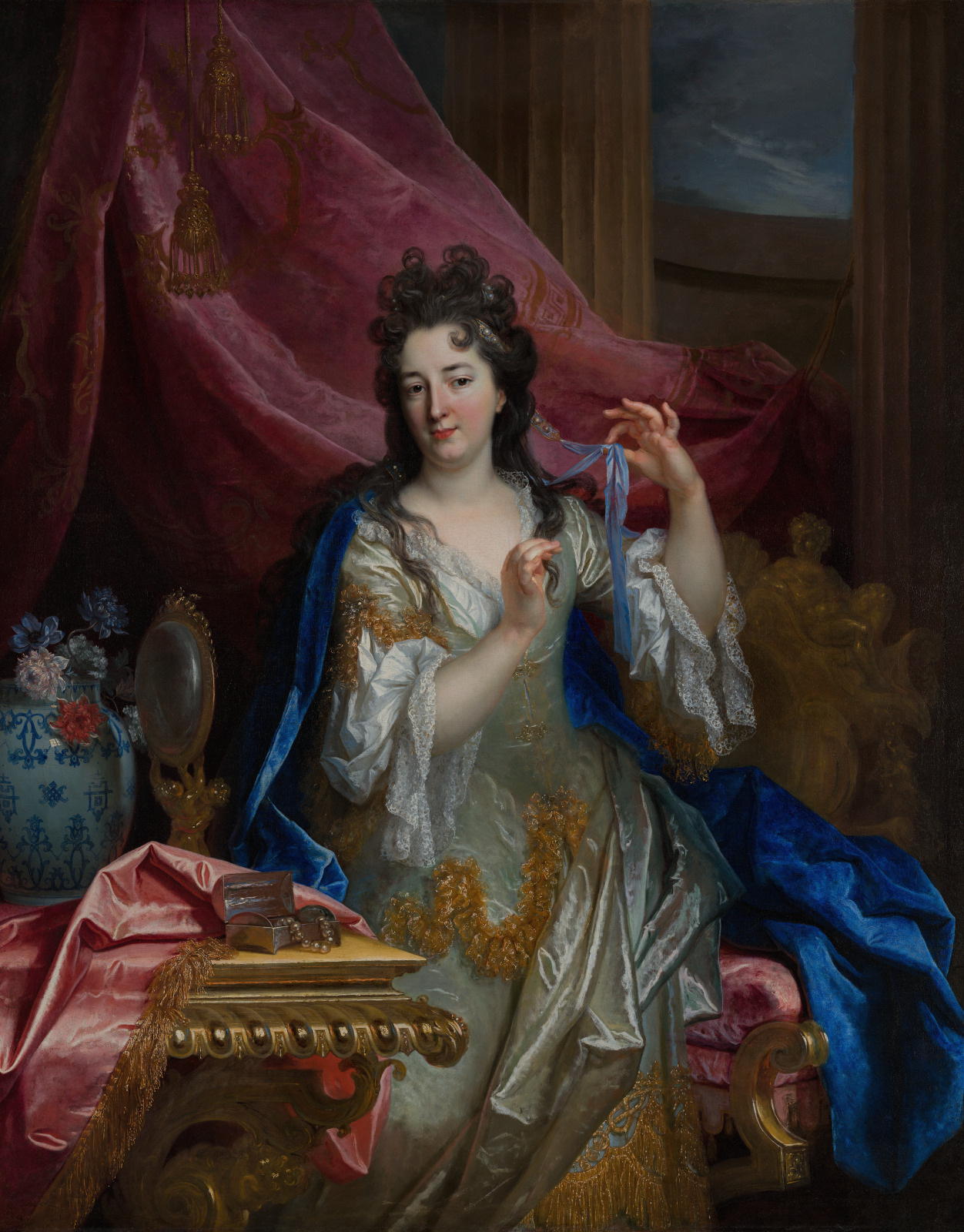
Nicolas de Largilliere, French, 1656–1746; Portrait of a Woman, c.1696; oil on canvas; 64 1/4 x 51 1/4 inches; Saint Louis Art Museum, Museum Purchase 3:1943
Surrounded by luxurious objects that enhance her beauty and define her good taste, this unknown woman threads the satin ribbons from a string of crystal beads into her hair. The lavish marble-top table with its putto base, the imported Chinese porcelain vase, and the opulent fabrics were frequent motifs in Largillière’s art and were particularly popular among the moneyed society that employed him. In a court where nobility vied to be present when the king dressed in the morning, intimate images like this one, set in the bedroom or boudoir, were appropriate for the display of wealth and power.
November 19, 2023
Manchu Woman’s Informal Winter Court Robe with Design of Cranes and Butterflies
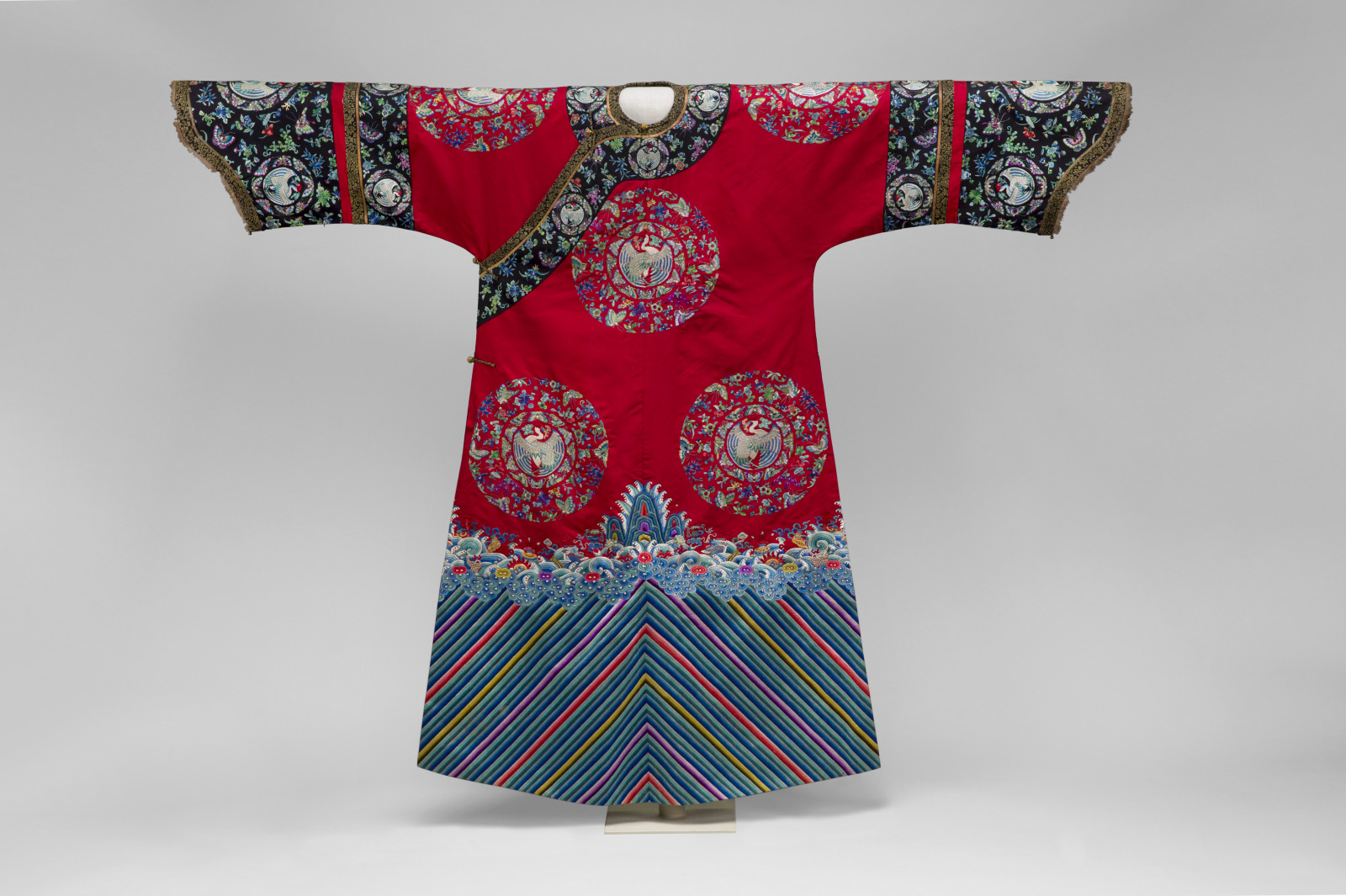
Manchu Woman's Informal Winter Court Robe with Design of Cranes and Butterflies, early 20th century; Chinese, Qing dynasty, Guangxu period, or Xuantong period; twill-weave silk with polychrome silk embroidery, cuffs trimmed with otter fur; 53 1/2 x 72 inches; Saint Louis Art Museum, Gift of Mr. and Mrs. F. Russell Fette in memory of Helen Campbell Fette 259:1986
Gilt metal ball-and-loop toggle buttons fasten the top flap of this robe. The sleeves end in deeply flared cuffs trimmed with otter fur. The red twill-weave silk ground is finely embroidered with multicolored floss silk in satin stitch. Eight medallions surround a Manchurian red-crowned crane encircled by butterflies and floral sprays. The neck band, sleeve bands, and cuffs feature smaller medallions containing similar motifs against a black silk ground. The very wide hem has parallel bands of “standing water” (lishui) with auspicious emblems and a slit at either side. The bright purple in the hem bands derives from a synthetic dye known as “Perkin’s purple” that was first imported from England to China in 1871.
November 15, 2023
Extensive Landscape With Travellers on a Country Road
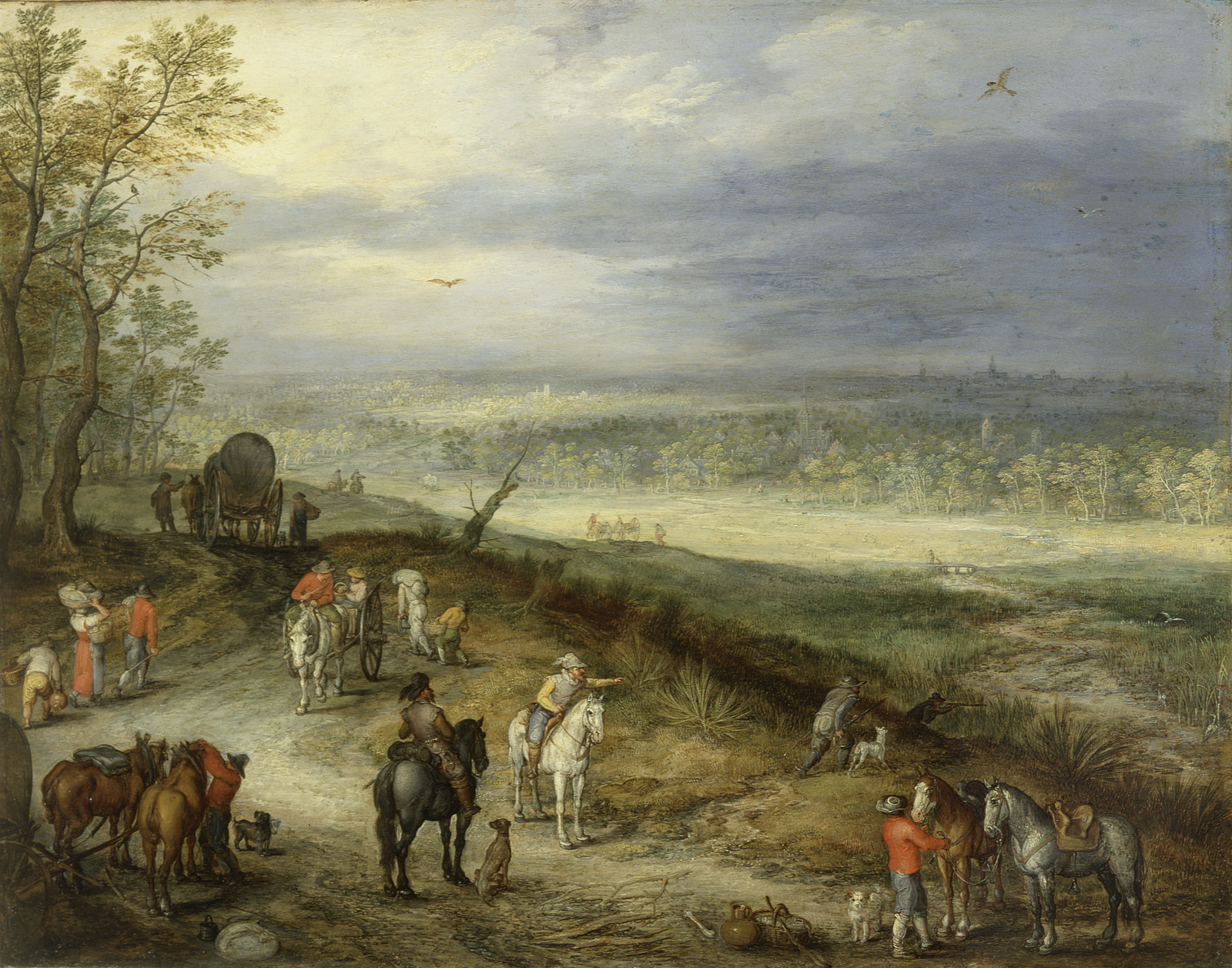
Jan Brueghel the Elder, Flemish, 1568–1625; Extensive Landscape With Travellers on a Country Road, c.1608–10; oil on copper; 13 1/4 x 18 1/4 inches; Saint Louis Art Museum, Friends Fund Endowment, Museum Shop Fund, and funds given by Christian B. Peper in memory of Ethel Peper, Museum Purchase, Mr. and Mrs. Lester A. Crancer Jr., The Labarque Charitable Trust, Malcolm W. Martin, The Martha Love Symington Foundation, The John Peters MacCarthy Irrevocable Trust, Mrs. Elmer G. Kiefer, Mr. Fred M. Saigh, the McMillan-Avery Fund of the Saint Louis Community Foundation, Mr. and Mrs. James D. Burke in memory of William Guy Heckman, Mr. and Mrs. Harvey Saligman, Marlyn Adderton, W. B. McMillan Jr., and the Henry L. and Natalie Edison Freund Charitable Trust 84:1996
From an elevated viewpoint we see the city of Antwerp at the distant right, a covered wagon in the middle distance, and a marshy stream in the right foreground. The scene is filled with fauna and flora, all finished in the painstaking detail for which Jan Brueghel the Elder is known. The road at left draws us into the painting, while bands of varying greens open up the distant landscape to suggest expansive space. Travelers journey on the left while hunters stalk herons in the marshy grasses at the right. The standing dog on the lower left appears to have a second head, indicating that the artist changed its position.
November 14, 2023
Fairy Tale Tile
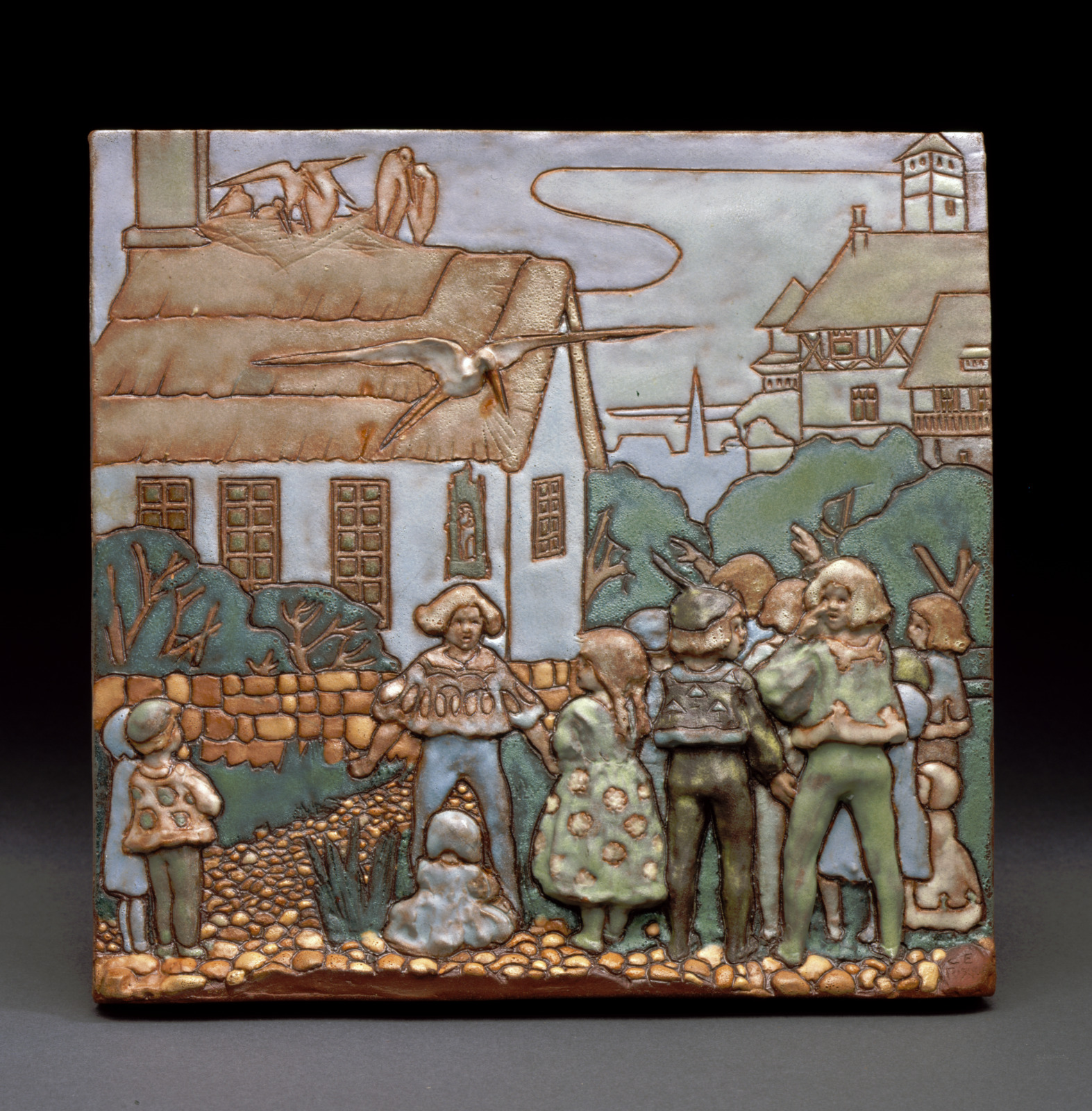
Caroline Risque, American, 1883–1952; associated with the Art Academy of the American Woman's League, University City, Missouri, active 1909–1911; Fairy Tale Tile, c.1911; glazed earthenware; 9 1/2 x 9 1/2 x 1 1/4 inches; Saint Louis Art Museum, Friends Fund 219:1980.1
This tile represents Caroline Risque’s response to a design exercise for “a medieval village” proposed by Frederick Rhead for the correspondence students at University City Pottery. The red earthenware clay is modeled in low relief and incised contours strengthen the design. Risque simplified her figures and other forms to suit the low-relief surface. She used Rhead’s palette of matte buff, blue, green, and brown glazes.
November 13, 2023
Censer with Cover and Stand

Censer with Cover and Stand, 17th–early 18th century; Chinese, Ming dynasty or Qing dynasty; bronze with pigment, wood, and jade; 26 1/4 x 25 11/16 inches; Saint Louis Art Museum, Gift of Robert E. Kresko 6:2005a-c
The visually complex shape and interlocking dragon decor of this work are based on ancient prototypes. The surface of this vessel appears to be an aged, corroded patina (finish) but is actually skillfully applied paint. This extraordinary tripod vessel is among the very rare Ming works that closely follow ancient ritual bronze design. Early collectors prized this bronze based on the elaborately carved cover and stand in matching fine woods that were created for it in the 18th century.
November 12, 2023
The Art Dealers (The Bernheim-Jeune Brothers)
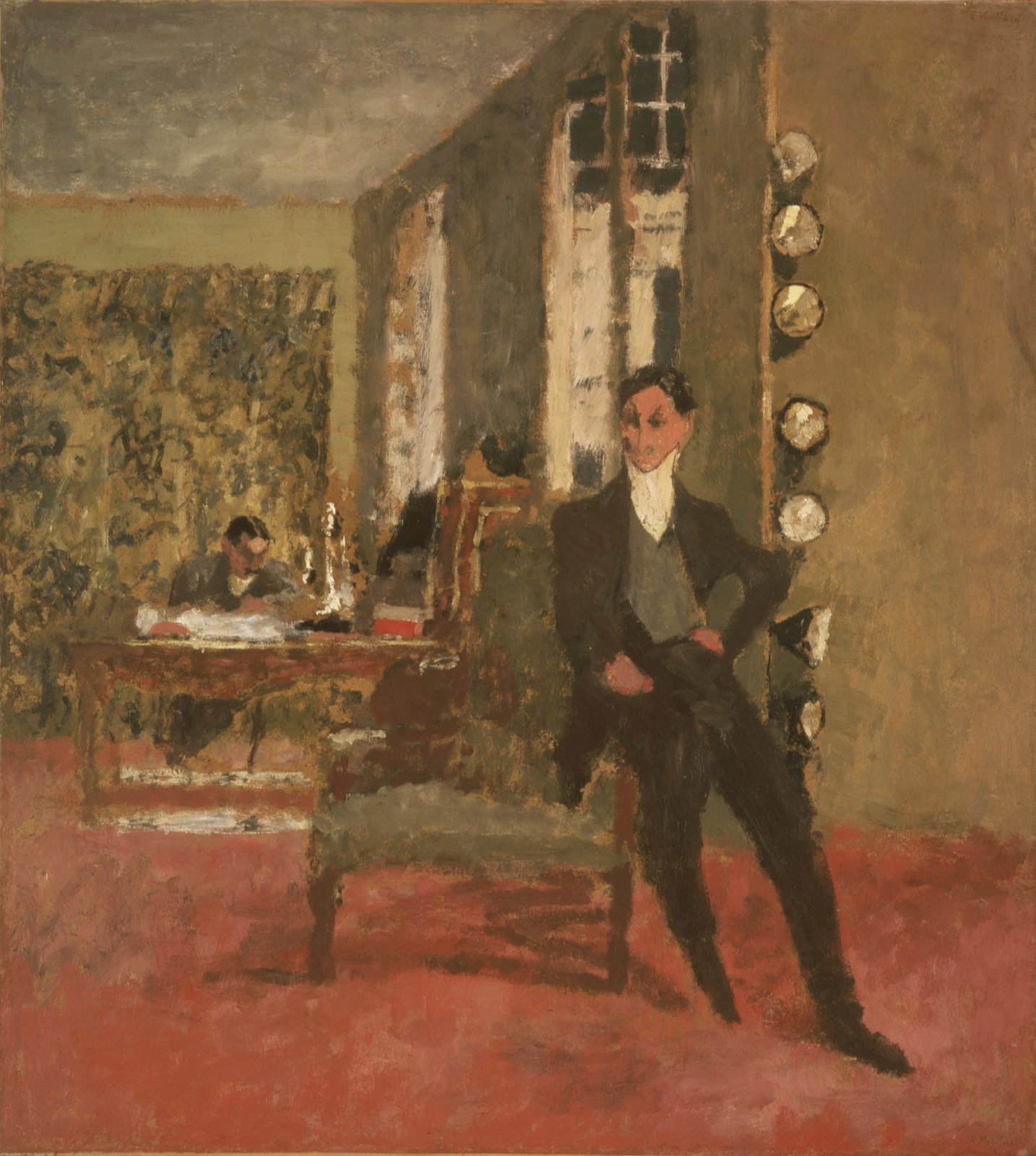
Edouard Vuillard, French, 1868–1940; The Art Dealers (The Bernheim-Jeune Brothers), 1912; oil on board, mounted on canvas; 23 13/16 x 26 inches; Saint Louis Art Museum, Gift of Mr. and Mrs. Richard K. Weil 66:1953
Two of the most prominent contemporary art dealers, the brothers Gaston and Josse Bernheim-Jeune, pose in the viewing studio of their galleries. Gaston perches on a chair in the foreground while Josse reads at his desk further back; high-powered picture lights are visible to the right. Vuillard was a friend of the two dealers and regularly exhibited at their gallery, enjoying considerable commercial success in the early years of the twentieth century.
November 11, 2023
Joan of Arc Listening to the Heavenly Voices

Robert Porter Bringhurst, American, 1855–1925; Joan of Arc Listening to the Heavenly Voices, 1885; marble; bust: 15 x 7 3/4 x 7 1/2 inches, bust and base, height: 21 inches; Saint Louis Art Museum, Gift of Friends of the Artist 50:1924
The naturalism of Joan of Arc, a 15th-century French heroine and Catholic saint, is striking. She turns her head momentarily, her attention seemingly held rapt by something—perhaps a voice—to her left.
Robert Porter Bringhurst taught in St. Louis at the School of Fine Arts (now Washington University) from 1885–1893. Several of his works can still be seen in the city, including a large bronze figure of President Ulysses S. Grant that stands near City Hall on the corner of Market and Tucker Streets.
November 10, 2023
The Clenched Hand
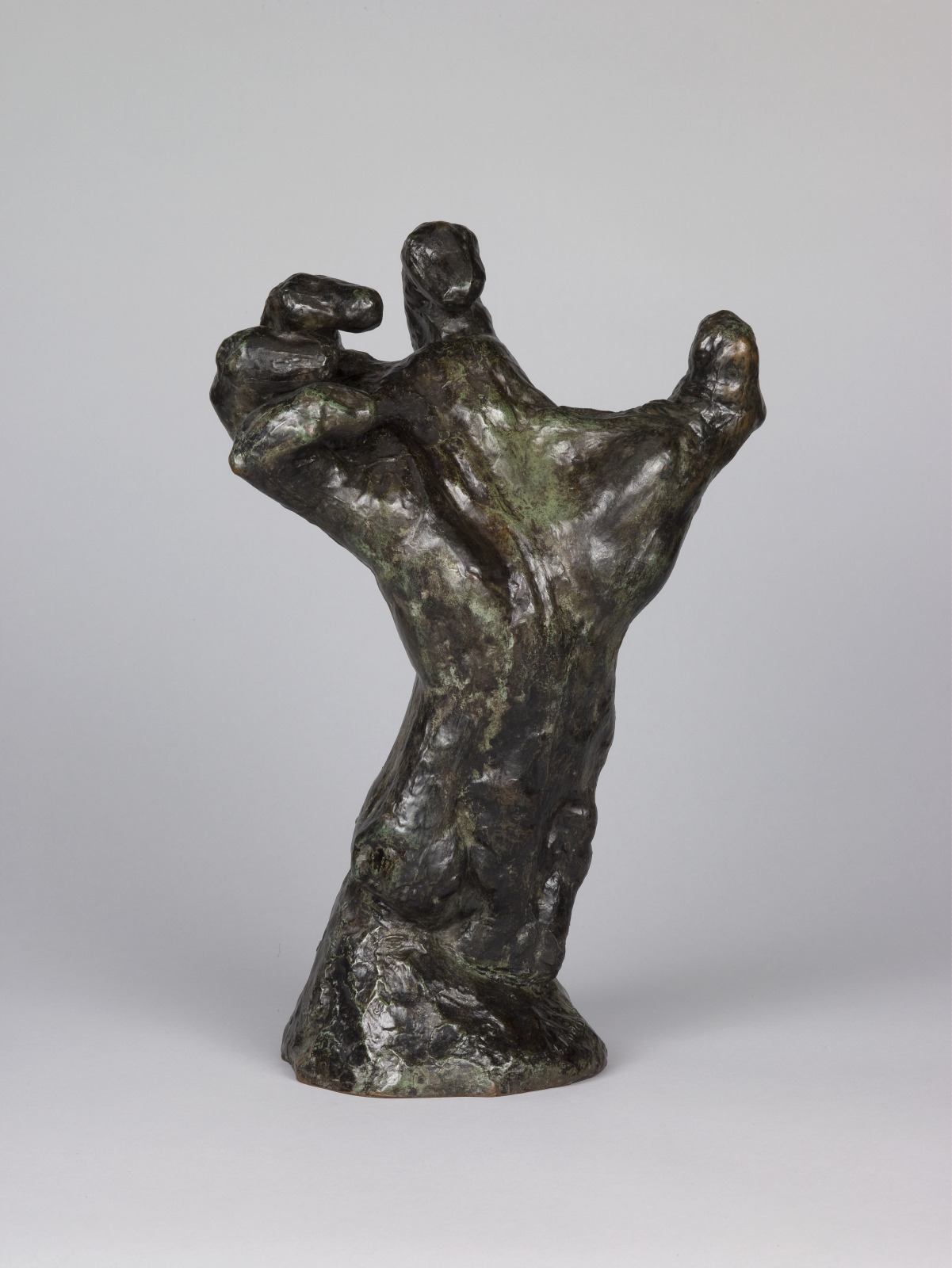
Auguste Rodin, French, 1840–1917; The Clenched Hand, c.1885; bronze; 18 1/8 x 10 3/8 x 8 1/4 inches; Saint Louis Art Museum, Funds given by Lanlee Realty Company 3:1957
Auguste Rodin often produced fragmentary studies of individual anatomical features, and stated, “I have always had an intense passion for the expression of the human hand.” In this work, the boldly modeled swellings and depressions of the hand suggest a sense of agitated anguish. This sculpture is probably related to Rodin’s grand project, The Burghers of Calais, in which a group of elderly men face the prospect of impending death.
November 8, 2023
Banner with Design of Five-Clawed Dragon, Flaming Pearl, and Multicolored Clouds
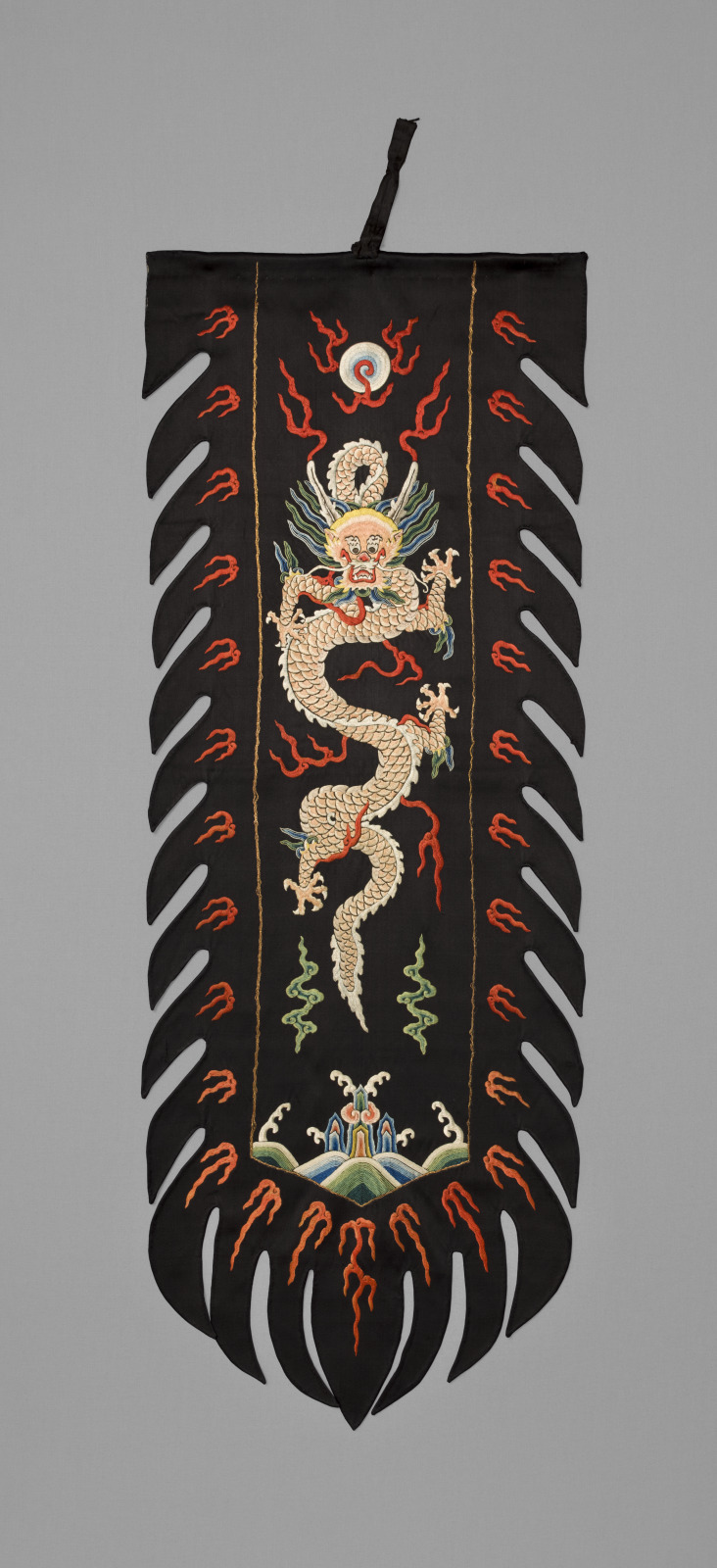
Banner with Design of Five-Clawed Dragon, Flaming Pearl, and Multicolored Clouds, late 19th century; Chinese, Qing dynasty, Guangxu period; floss silk embroidery on silk satin; 37 5/8 x 14 3/16 inches; Saint Louis Art Museum, Gift of Mr. and Mrs. F. Russell Fette in memory of Helen Campbell Fette 119:1994
This banner, one of a pair, has an elongated vertical form with a flat top, pointed lower end, and serrated edges on three sides worked with stylized red flames. The ground material is black silk satin with embroidered decoration featuring a front-facing five-clawed dragon with red flames emanating from its pale pink scaly body. The mythical creature rises above waves, rocks, and clouds. Hovering above it is a flaming pearl, a symbol of spiritual energy, knowledge, good fortune, and authority. Since the banner was meant to be viewed from either direction when hung, the design is identical on both sides. Such examples were used primarily in ceremonies and military reviews rather than on the battleground, or as part of theatrical sets in an imperial palace.
November 4, 2023
Untitled
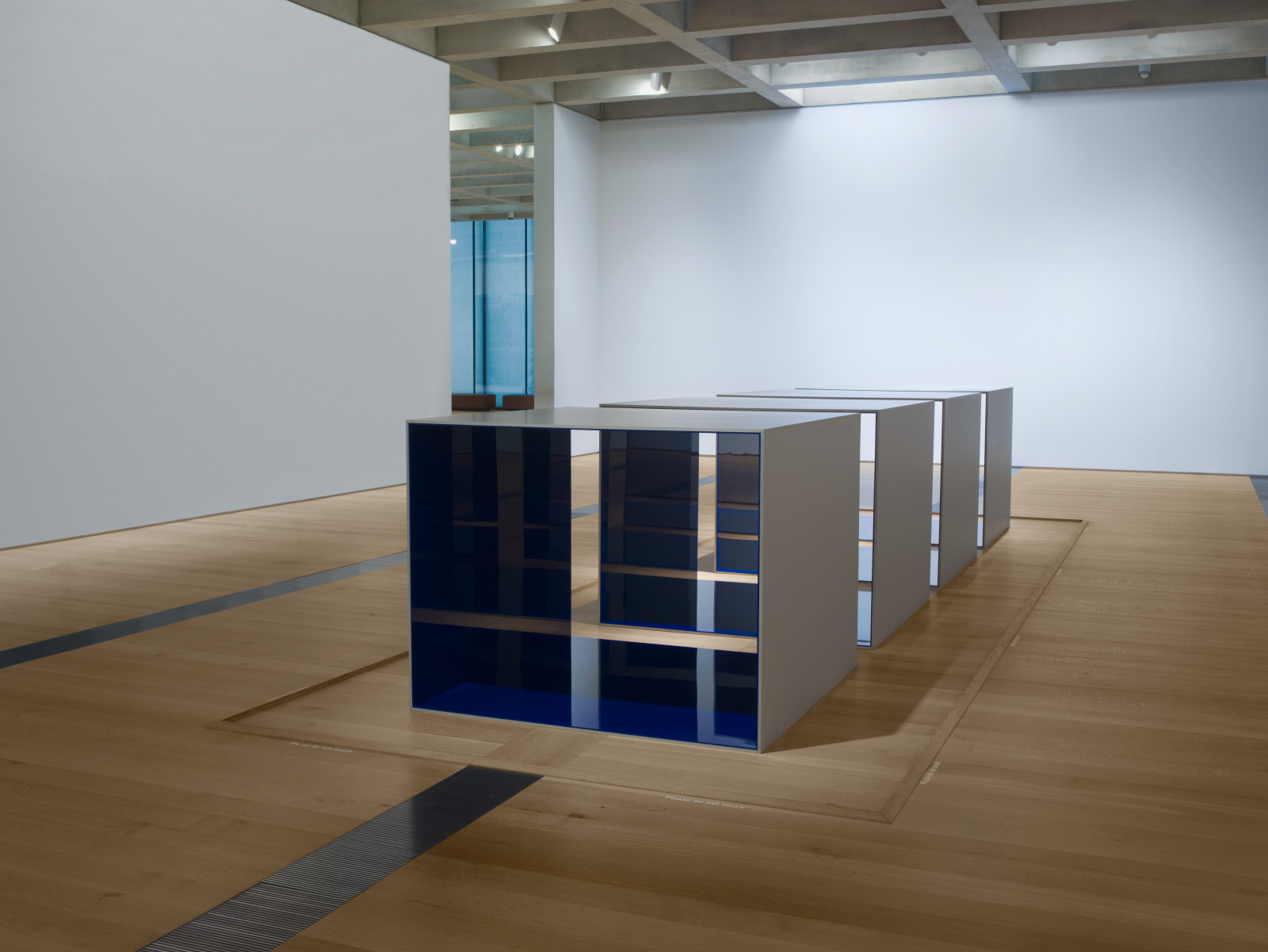
Donald Judd, American, 1928–1994; Untitled, 1969; anodized aluminum and Plexiglas; each unit: 47 1/2 x 59 7/8 x 59 7/8 inches; Saint Louis Art Museum, Funds given by the Shoenberg Foundation, Inc. 1:1970a-d; Donald Judd Art © Judd Foundation / Artists Rights Society (ARS), New York
Four aluminum boxes lined with blue Plexiglas are spaced at equal intervals. Donald Judd used repeated forms to reduce emphasis on any one aspect of the composition. Made by fabricators using industrial processes and materials, his works do not bear the trace of his hand. Judd insisted that freestanding objects like these be placed on the floor, rather than on a gallery platform, to create a direct relationship with the surrounding space.
October 31, 2023
Vivien and Merlin

Julia Margaret Cameron, English (active India), 1815–1879; Vivien and Merlin, 1874; albumen print; image: 11 15/16 x 10 inches, mount: 17 3/8 x 13 1/8 inches; Saint Louis Art Museum, Museum Shop Fund 72:2004
The preeminent Victorian photographer Julia Margaret Cameron costumed her friends and family and used dramatic lighting effects to create imaginative scenes. Vivien and Merlin is an evocative enactment of a passage from Alfred Lord Tennyson’s epic poem, Idylls of the King. Capturing the moment of betrayal in Tennyson’s poem, this image depicts the seductive Vivien casting a spell over the magician Merlin as he falls into a trance. Cameron’s husband, Charles, and her maid, Agnes Mangles posed for the two characters in this scene.
October 30, 2023
Zischägge Helmet

Zischägge Helmet, 1610–50; German; steel, brass, modern leather, and restorations; 13 1/4 x 11 x 15 1/2 inches; Saint Louis Art Museum, Museum Purchase 312:1925
This simple helmet, with large cheekpieces and adjustable nasal guard to defend against sword cuts and flexible neck defense reminiscent of a lobster’s tail, was the classic headpiece of European horsemen during the Thirty Years’ War (1618-48). Its name is derived from the Slavic/Turkic term shishak, the name for a similarly formed helmet introduced into eastern Europe via the Ottoman Turks. This example is of finer quality than most others, which were left unpolished or painted black to reduce maintenance.
October 29, 2023
Necklace
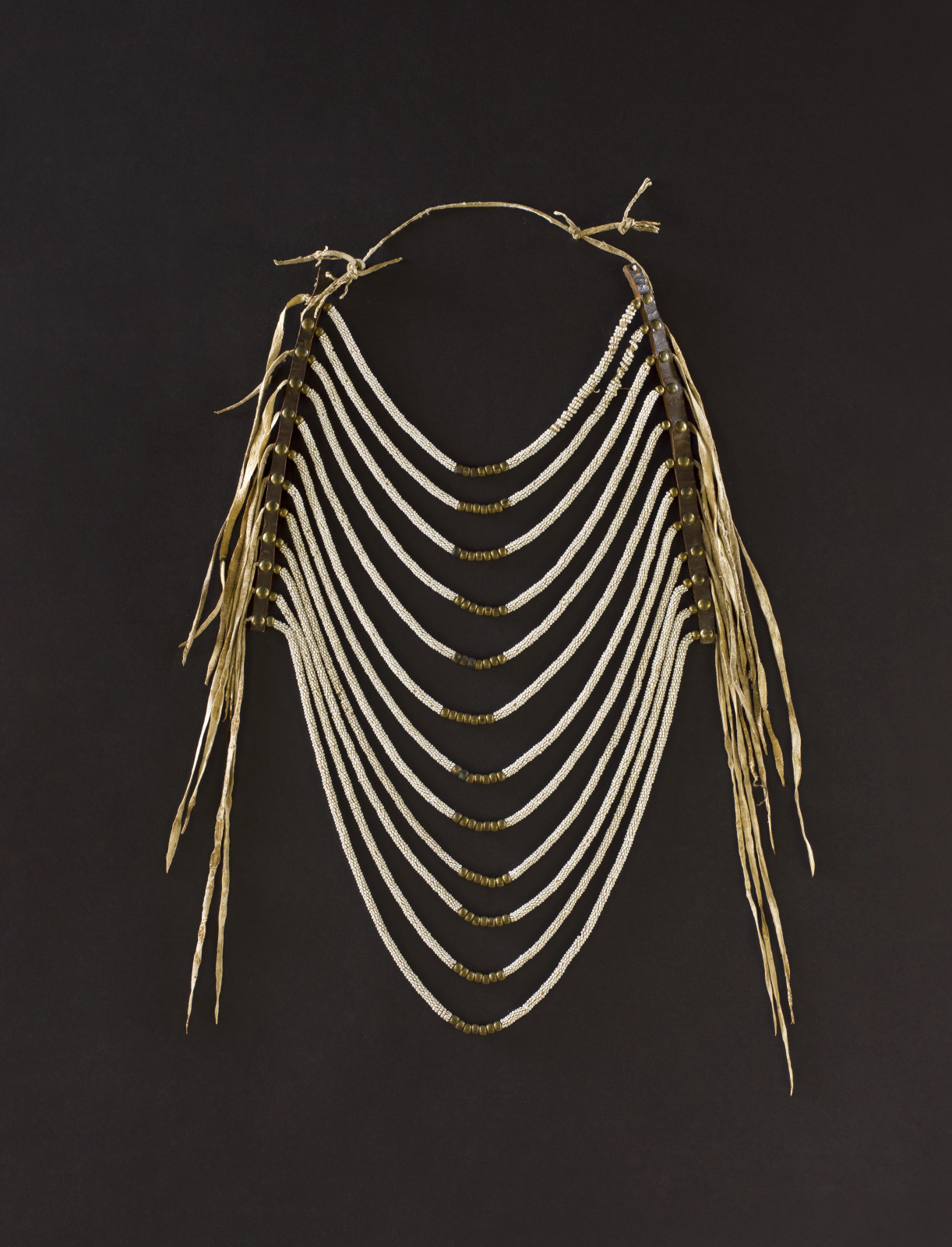
Niitsitapi (Blackfoot) artist; Necklace, c.1900; leather, tanned hide, metal tacks, glass beads, metal beads, and cord; 20 x 10 1/2 inches; Saint Louis Art Museum, The Donald Danforth Jr. Collection, Gift of Mrs. Donald Danforth Jr. 80:2015
Strands of tiny white glass beads spiral around arching cords, fastened by meticulous stitching. Contrasting in tone and texture, large metal beads establish a bold column at center. This necklace combines the ancient technique of threading beads, as with the metal discs, and the more recent method of bead embroidery. Women made necklaces such as this for men to wear on special occasions during the first decades of life on reservations in Montana and reserves in Alberta and Saskatchewan, Canada.
October 28, 2023
The Felixmüller Family
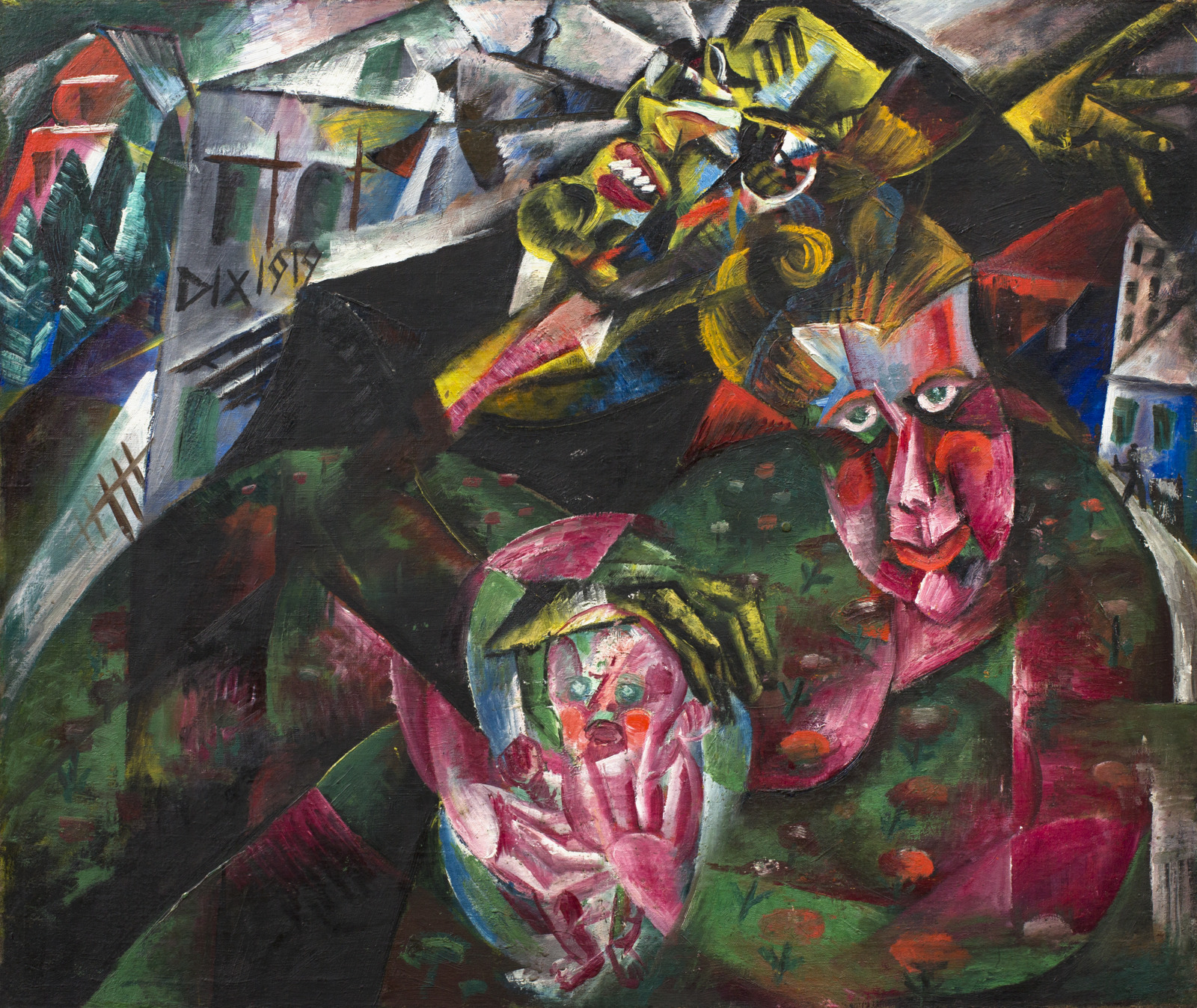
Otto Dix, German, 1891–1969; The Felixmüller Family, 1919; oil on canvas; 29 7/8 x 36 inches; Saint Louis Art Museum, Bequest of Morton D. May 882:1983
Otto Dix depicts the family of fellow artist Conrad Felixmüller, who is shown at top facing upward with yellow-toned skin and open mouth. Below him at right is his wife, Londa, who smiles serenely while cradling their baby, Luca. Together the parents form a protective backdrop around Luca, while Conrad’s right arm reaches over to rest atop Luca’s head. A townscape is visible in the background. In this work Dix’s style combines the faceted forms of Cubism with the vibrant color of the Italian Futurists.
October 27, 2023
Lotus Pond with Irises
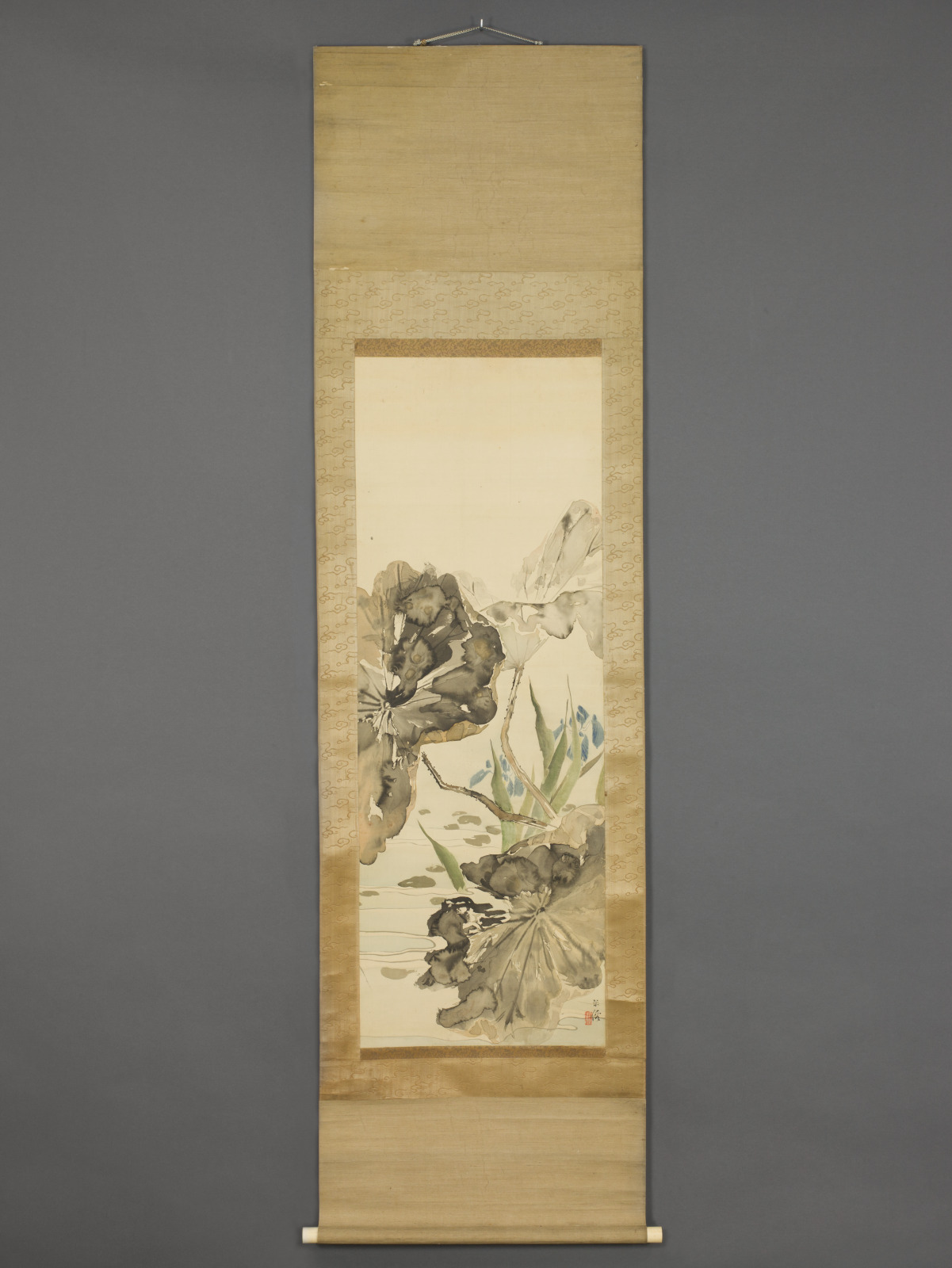
Kubota Beisen, Japanese, 1852–1906; Lotus Pond with Irises, c.1895–98; hanging scroll: ink and color on silk; image: 45 1/2 x 16 1/4 inches, scroll: 79 x 21 5/8 inches; Saint Louis Art Museum, William K. Bixby Trust for Asian Art 1:1992
This painting depicts a lotus pond with a clump of Japanese iris (Iris ensata; hanashōbu) with angular leaf blades. Kubota Beisen executed the work in a splashed-ink style, using the so-called “boneless” technique (without outlines), which originated in the Tang dynasty of 8th-century China. Modern artists in both China and Japan continually revived ancient painting methods in innovative ways. Much of Beisen’s painting was based on the Chinese literati style known as nanga (southern painting). Quickly executed in cursory brushstrokes, as seen here, his abstracted forms and shapes are still recognizable as mottled decaying lotus leaves.
October 24, 2023
Sinking of the Titanic

Max Beckmann, German, 1884–1950; Sinking of the Titanic, 1912–13; oil on canvas; 104 1/4 x 130 inches; Saint Louis Art Museum, Bequest of Morton D. May 840:1983
On April 15, 1912, the world’s largest luxury liner, Titanic, sank off the coast of Newfoundland; of the 2,200 passengers, 1,507 died. Beckmann was inspired by news accounts to produce this enormous canvas in which he focused on the lifeboats of the Titanic while placing the distant, brightly lit liner against an iron-red night sky. Beckmann sought to emulate a 19th-century French tradition of grand paintings of contemporary events. Here, his theme is the struggle for survival; boats list dangerously or have overturned. The largest lifeboat is crammed with women and children including one passenger still in her violet evening gown and earrings. Beckmann employs a palette of vibrant green and blue coloring to highlight the nightmarish quality of a scene in which ghostly heads can clearly be seen floating in the water
Today’s object is featured in the Max Beckmann Collection Guide, a self-guided audio experience.
October 21, 2023
Container
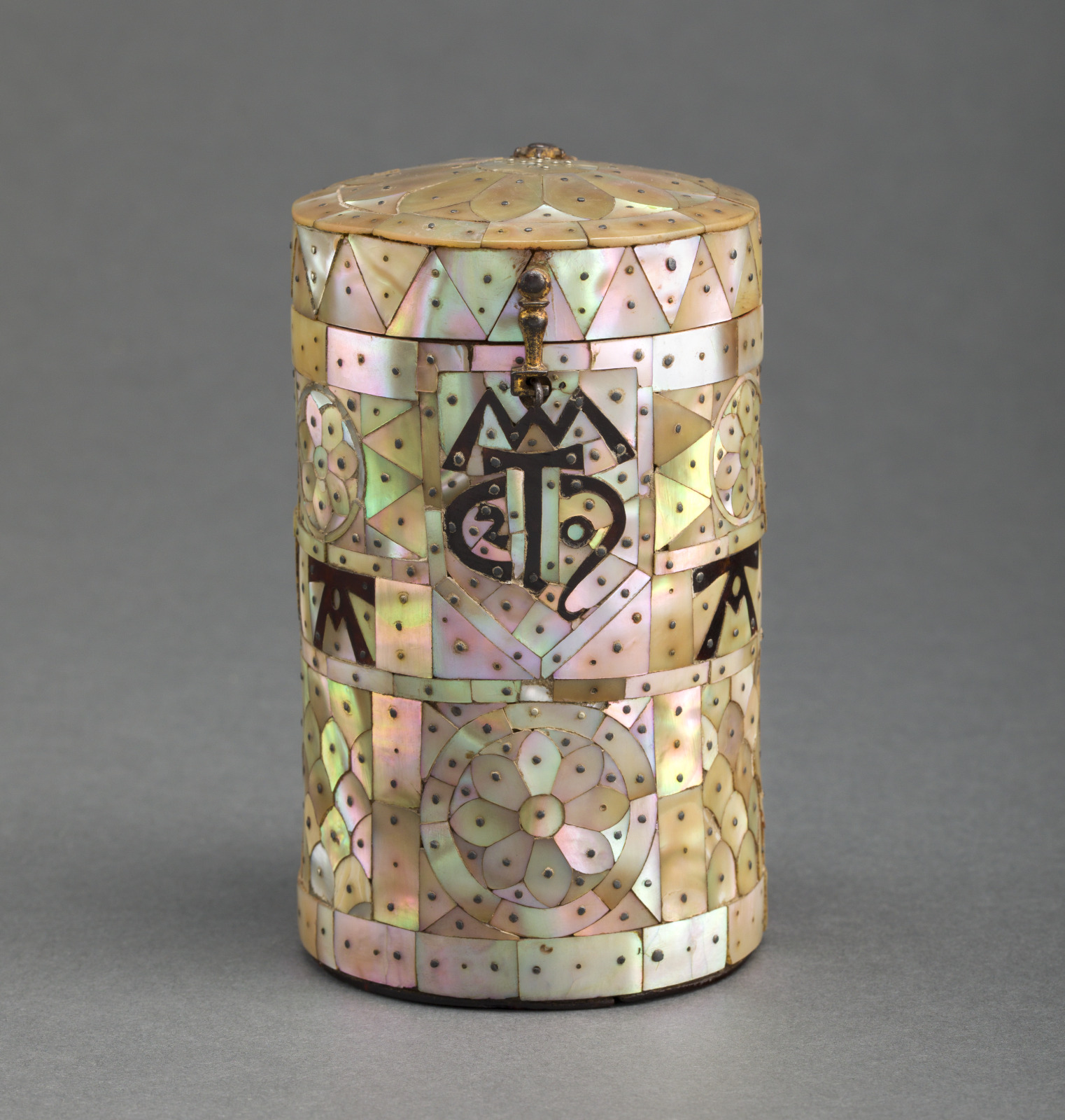
Container, c.1550; Indian, for the European market; mother-of-pearl, amber, tortoiseshell, gilded iron, and wood; 5 1/4 x 3 1/16 inches; Saint Louis Art Museum, Museum Purchase 243:1952
The pearly shell-tiled surface of this cylindrical container shimmers with passing light. The prayer verse “Ave Maria,” or “Hail Mary,” a Christian cross, and other symbols decorate the object. Skilled laborers in Gujarāt, India, expertly carved the material by hand and fastened each piece in place using silver pins. Portuguese merchants and Franciscan missionaries commissioned boxes like this one for export to Europe for religious and secular purposes. The complex pattern and iridescence of the shell would have captured the imagination of those who saw it.
October 20, 2023
Man’s Robe (agbada)
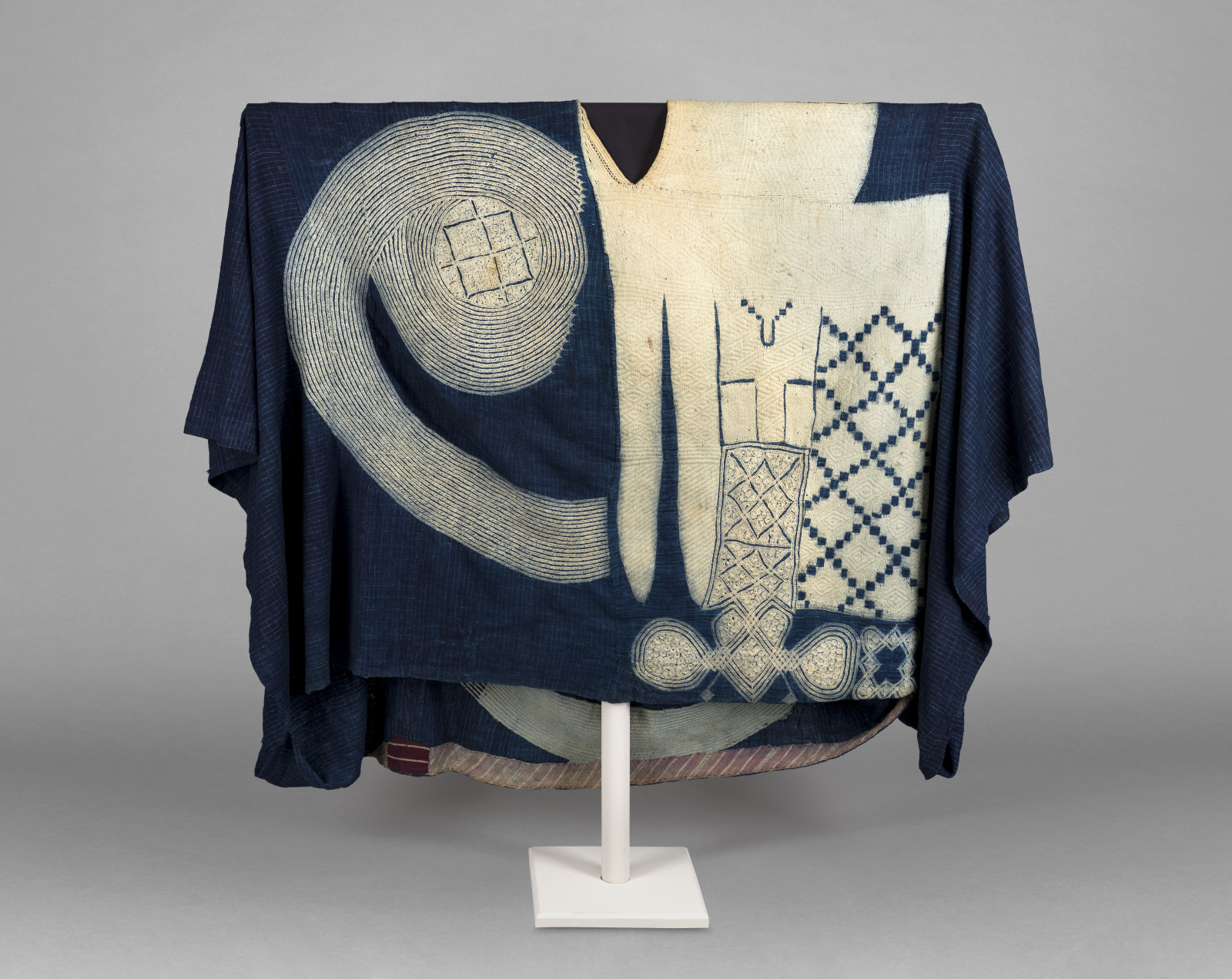
Yoruba artist; Man's Robe, early to mid-20th century; cotton; 50 x 96 in. (127 x 243.8 cm); Saint Louis Art Museum, Gift of A. Patrick Irue and Amber Wamhoff, in memory of Dr. Leonard and Mrs. Lenora Gulbransen 180:2015
The deep indigo hue of this agbada creates an intensely dramatic contrast between the aso oke cloth and the embroidered designs. Upon close inspection, the cloth reveals a delicate checked pattern alternating light- and dark-blue threads. Called etu in Yoruba, this subtle tonal effect is named for its similarity to the speckled feathers of a guinea fowl (Numida meleagris). The saturation of etu cloth corresponds to the length of time its threads were submerged in indigo dye, ranging from light (ofeefe) to medium (ayinrin) and dark (dudu). In Yoruba aesthetics, dudu signifies coolness, composure, and self-control, associating these qualities of an effective leader with the elite man who wore this robe.
Today’s object of the day is currently on view in Aso Oke: Prestige Cloth from Nigeria.
October 19, 2023
Death Pursuing the Human Herd
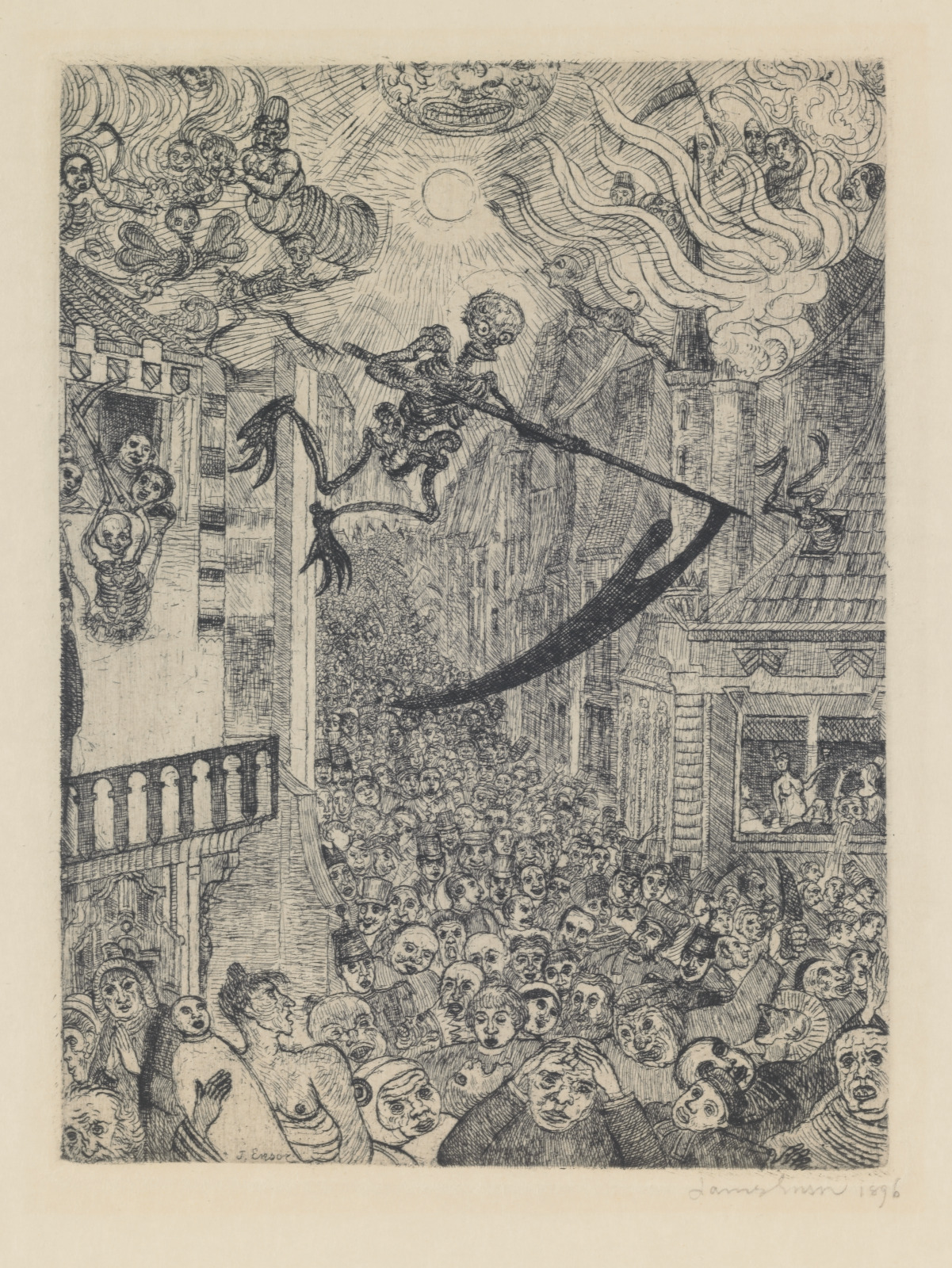
James Ensor, Belgian, 1860–1949; Death Pursuing the Human Herd, 1896; etching; image: 9 1/4 x 6 7/8 inches; Saint Louis Art Museum, Gift of Dr. Borden S. Veeder 223:1948
The packed crowd in this city street seen from above is punctuated by an army of scythe-bearing skeletons personifying Death. A seeming regiment of them is dispersed throughout the mass of people, while a large, hairy-headed skeleton bears down on the roiling masses from the sky. The horrified expressions of the crowd, a drunkard vomiting from a tavern window on the right, hybrid demons in the sky, a burning rooftop, and a grimacing orb above it all contribute to a hellishly frightening scene.
Skeletons and imaginative demons have a long history in European religious imagery. James Ensor, a prominent painter in the Belgian avant-garde of the 1880s and 1890s, was well-schooled in the art of his predecessors. Yet it was his view of contemporary Belgian society, governed by a predominantly Catholic state, that fueled his often carnivalesque scenes.
October 15, 2023
Weislingen Captured by Götz’s Men
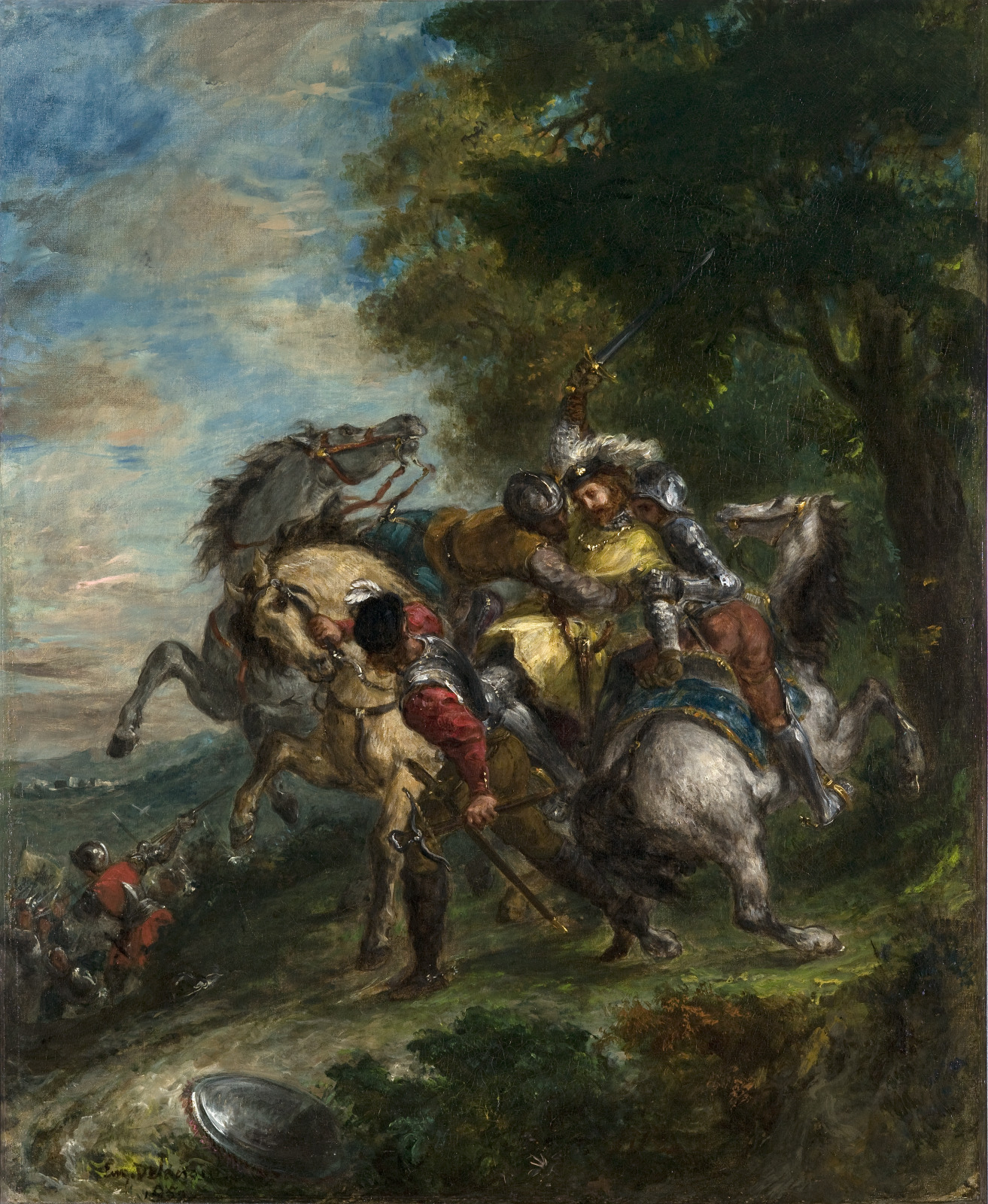
Eugene Delacroix, French, 1798–1863; Weislingen Captured by Gotz's Men, 1853; oil on canvas; 29 x 24 inches; Saint Louis Art Museum, Emelie Weindal Bequest Fund 75:1954
The knight Weislingen, wearing a yellow coat, is dramatically ambushed by three soldiers serving under his enemy, Götz. In this fictional scene from medieval Europe, Eugène Delacroix created a dynamic composition around the swirling forms of rearing and frightened horses. A great colorist, Delacroix juxtaposed contrasting colors of the blue saddle against the knight’s yellow garment and the soldier’s red tunic against the surrounding greenery. The 1773 play Götz van Berlichingen by German writer Johann Wolfgang von Goethe (1749–1832) inspired this painting.
October 14, 2023
I See Red: Migration
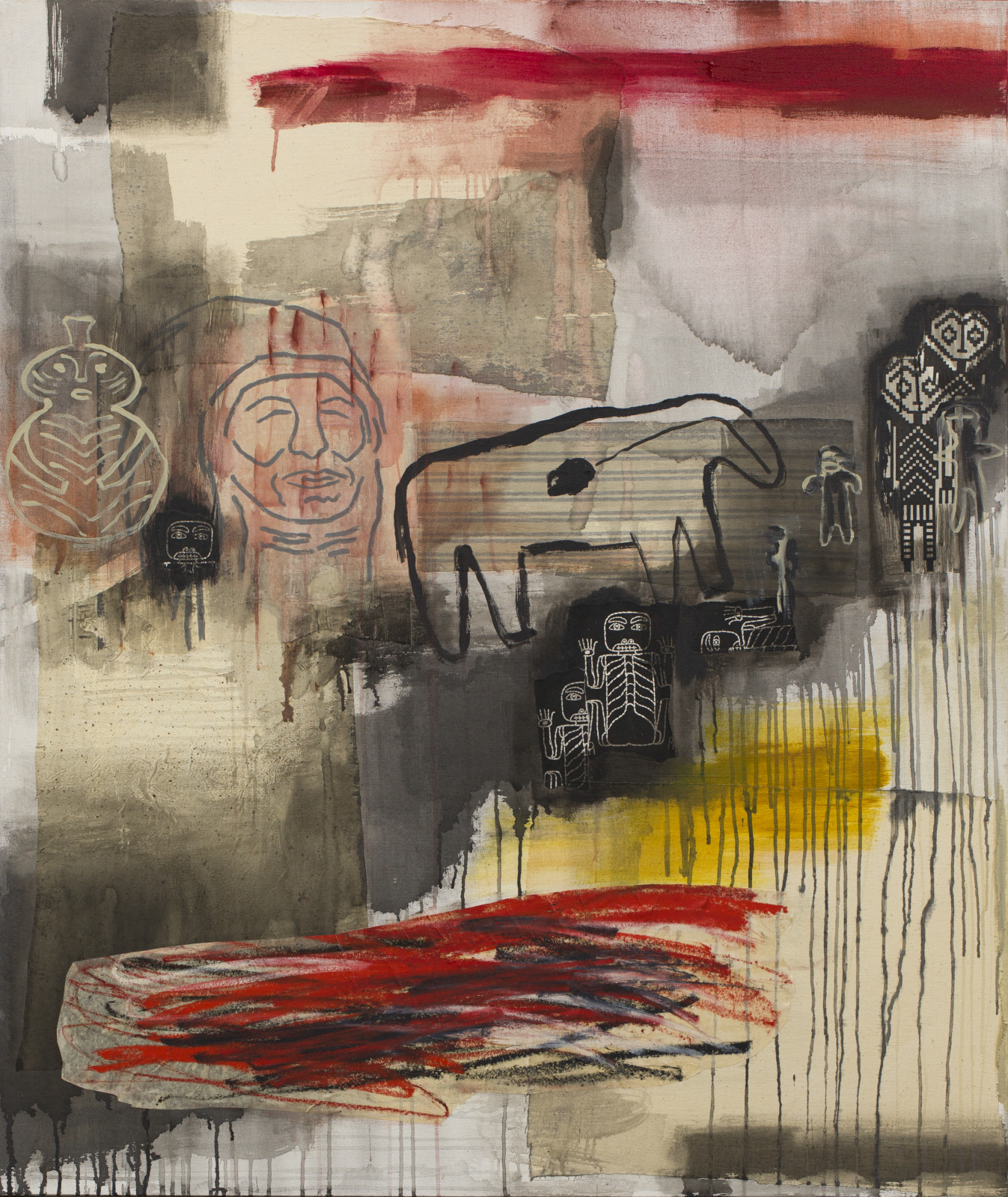
Jaune Quick-to-See Smith, Enrolled Salish, Confederated Salish and Kootenai Nation, MT, born 1940; I See Red: Migration, 1995; mixed media on canvas; 60 x 50 inches; Saint Louis Art Museum, Siteman Contemporary Art Fund, and funds given by Gary C. Werths and Richard Frimel 325:2020; © Jaune Quick-To-See Smith, Courtesy of the artist and Garth Greenan Gallery, New York
In this painting, Jaune Quick-to-See Smith combined imagery associated with Native American identity with marks reminiscent of American mid-century gestural abstraction. A stereotyped depiction of an Indigenous man, an ancient Mississippian vessel, an animal with a heart line from Great Plains paintings, and figures from Columbia River basketry and Northwest Coast textiles appear across the canvas.
In I See Red: Migration, Smith layered concepts and images to address issues facing Native peoples from the 1970s to the present, including land relationships and colonial displacement. Through techniques of appropriation, she foregrounded the rich and diverse history of Native American cultural production while challenging the celebration of Abstract Expressionism as indicative of American artistic exceptionalism.
October 13, 2023
Processional Cross

Processional Cross, 16th century; Spanish; silver; 38 1/4 x 24 3/4 x 6 3/4 inches; Saint Louis Art Museum, Museum Purchase 98:1957
The profusion of decoration on this cross testifies to the superior skills of Spanish silversmiths as much as to the importance of the cross in Christian ritual. The many curved, angled, and radiating forms, as well as the narrative illustrations on front and back, were made by hammering the silver from the inside to create three-dimensional elements. This technique, called repoussé, allows for a lighter cross. Had the forms been cast in solid silver, the cross would not be as easy to carry in processions both within the church as well as to gravesites.
October 12, 2023
Dish with Hermaphroditus and the Nymph Salmacis
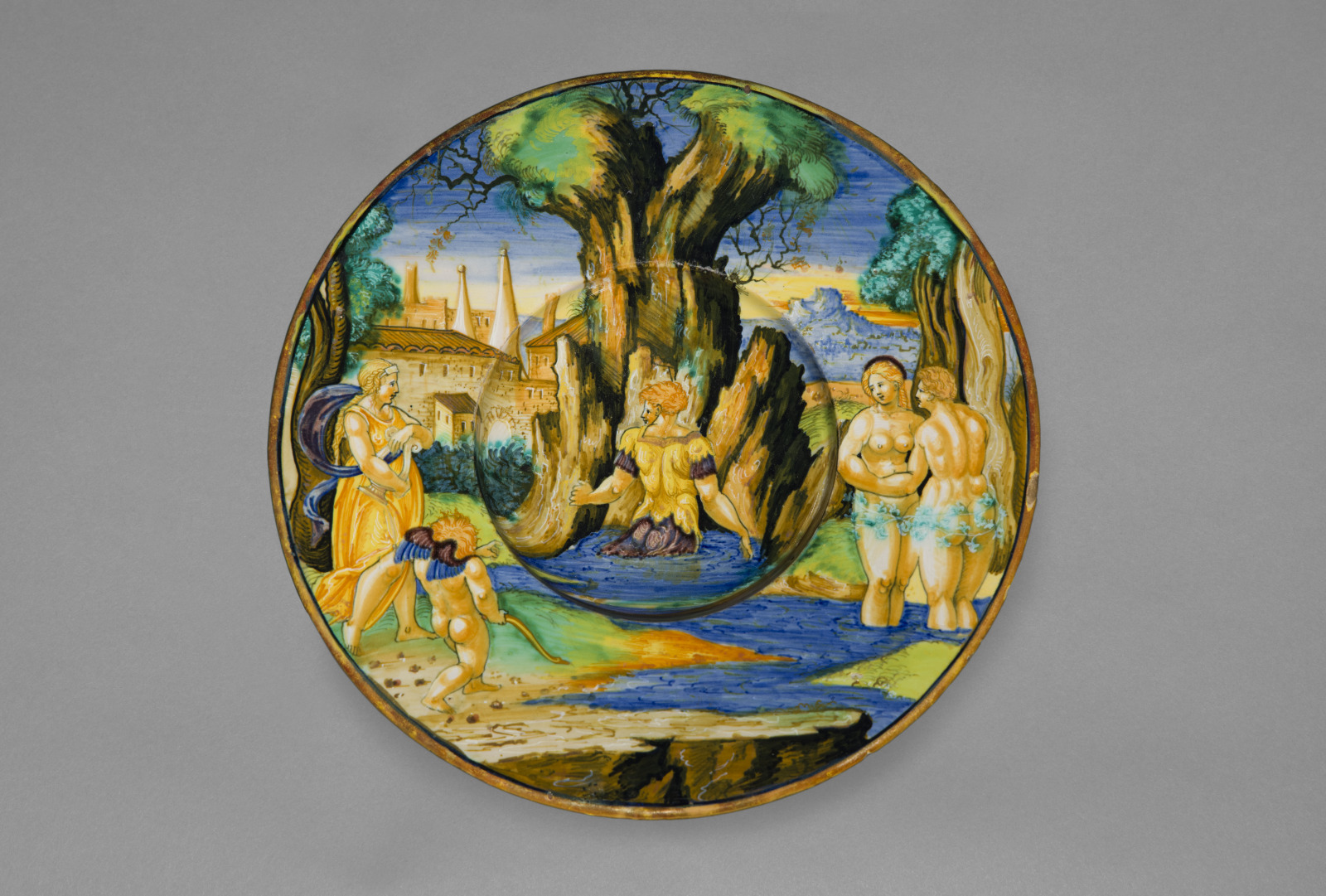
Francesco Xanto Avelli da Rovigo, Italian, c.1487–c.1542; Dish with Hermaphroditus and the Nymph Salmacis, dated 1532; tin-glazed earthenware, lustered; diameter: 10 1/2 inches, height: 1 11/16 inches; Saint Louis Art Museum, Museum Purchase 120:1951
Based on a poem by the ancient Roman poet Ovid, the colorful images on this dish would have tested its Renaissance owner’s knowledge of popular stories. Three moments from the lives of Hermaphroditus and Salmacis are portrayed on the dish, painted by one of the most illustrious pottery painters of the 16th century.
One day, Hermaphroditus chose to bathe in a pool (center), home to the water nymph Salmacis. Upon seeing him bathing, Salmacis was immediately enamored, indicated by Cupid appearing beside her at left. Her advances rejected, the nymph pleaded with the gods never to separate her from her lover. Salmacis’ wish was granted, shown at right, where she and Hermaphroditus share a single arm, a reference to their ultimate fusion into a single being with both male and female characteristics.
October 11, 2023
Loch Lomond

Gustave Doré, French, 1832–1883; Loch Lomond, 1875; oil on canvas; 48 x 75 inches; Saint Louis Art Museum, Museum Purchase 88:1913
In 1873 the prolific illustrator Gustave Doré went salmon fishing in Scotland; the trip provided him with inspiration for a series of grand landscapes. This dramatic work is animated by rays of light bursting through the clouds and falling on the distant lake. A tiny figure in red, on the path at bottom left, provides a color accent contrasting with the dominant greens of the composition. Doré evoked a vision of the Scottish landscape as sublime and awe-inspiring.
October 7, 2023
Untitled 4
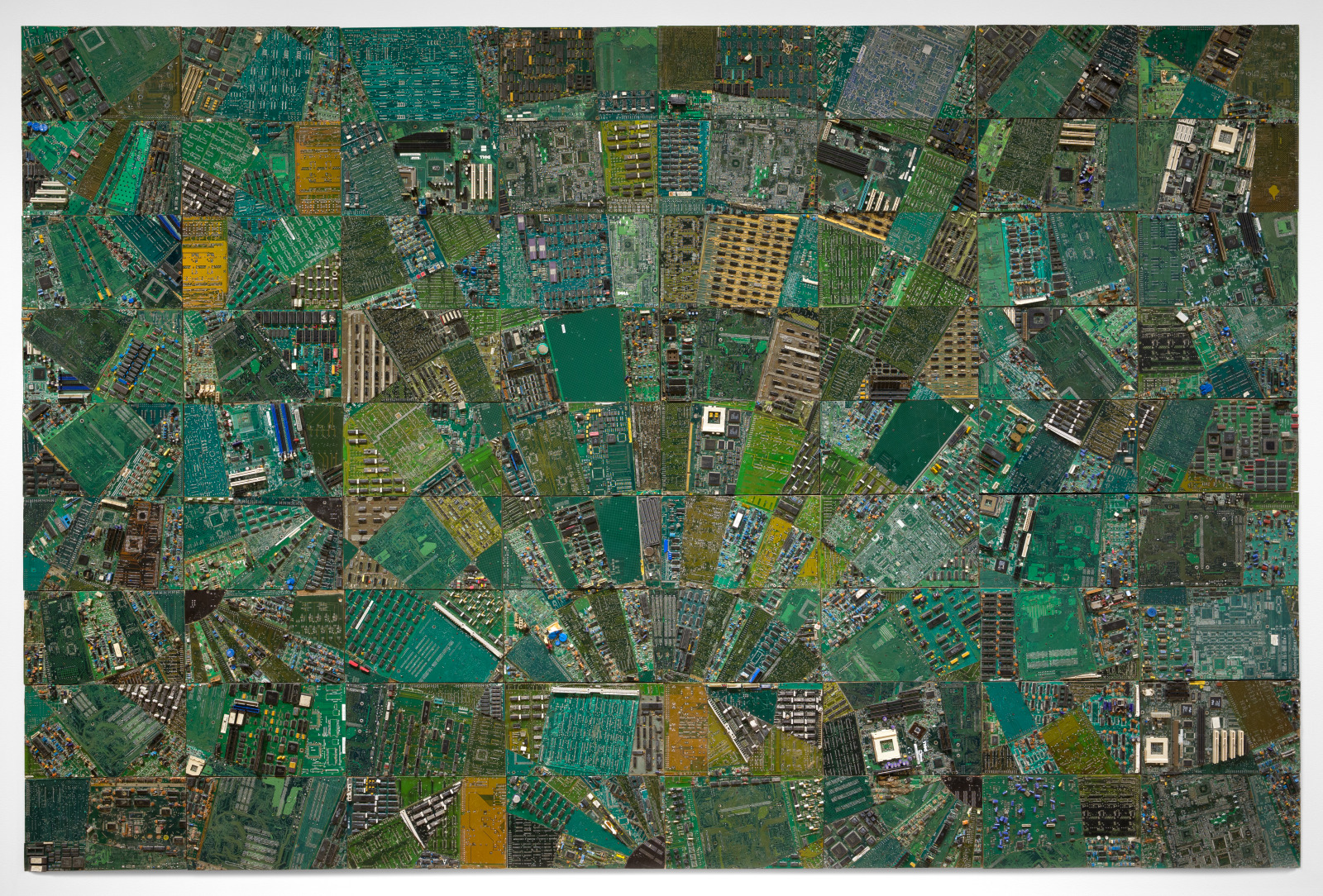
Elias Sime, Ethiopian, born 1968; Untitled 4, 2020; reclaimed electrical wires and components on panel; 81 3/4 x 123 1/4 inches; Saint Louis Art Museum, Friends Fund, and funds given by Eleanor J. Moore, Gary Werths and Richard Frimel, the Ross Family Foundation, and Yvette Drury Dubinsky and John Paul Dubinsky 43:2021; © Elias Sime 2019
Elias Sime collected motherboards and chips from inside computers, cutting and collaging them together to create this abstraction. The work resembles an aerial view of a landscape; however, it does not represent a specific place. Sime borrows the aesthetics of topographical and satellite views to expand the characteristics of landscape art. Technological advancements dependent upon the same materials used for Sime’s work have enabled us to see the world from new perspectives and connect humans across vast distances.
October 5, 2023
Centerpiece

Centerpiece, c.1790; English, possibly made by Leeds Pottery, Leeds, England, active c.1760–1881, or Wedgwood, Barlaston, England, founded 1759; glazed earthenware with painted and transfer-printed decoration; assembled: 23 3/4 x 15 1/4 x 16 inches; Saint Louis Art Museum, Gift of Roland E. Jester in memory of Margo Jester 77:1985a-k
The figure of Plenty holding a cornucopia and standing atop this extravagant assemblage embodies the ideal of copious display that characterized eighteenth-century dining tables. From her position above an urn-shaped bowl supported by winged figures, Plenty surveys three tiers of pierced baskets and dishes intended to contain pickles, nuts, or sweets, and pairs of cruets and casters for condiments consumed during the savory courses of the meal.
The centerpiece probably matched the dishes used on the table, since it is made from cream-colored earthenware, which was both inexpensive and extremely fashionable in the mid- to late eighteenth century. The architectural motifs and decoration of swags of foliage and flowers signal the reemergence of the classical style as the latest fashion in the late eighteenth-century.
October 3, 2023
Everyone is an Alienígeno

Enrique Chagoya, American (born Mexico), born 1953; printed and published by Shark's Ink, Lyons, Colorado, founded 1976; Everyone is an Alienígeno, 2018; lithograph; 22 x 30 inches; Saint Louis Art Museum, Gift of Ted L. and Maryanne Ellison Simmons; and funds given by the Marian Cronheim Trust for Prints and Drawings, Museum Purchase, Friends Fund, The Sidney S. and Sadie Cohen Print Purchase Fund, and the Eliza McMillan Purchase Fund 471:2020; © Enrique Chagoya
Enrique Chagoya exploded ethnic stereotypes in the splashes of color that march across this print. Among the most legible features are the googly eyes and manner of dress. The small images scattered between the figures gesture to a history of capturing individuals with the goal of categorizing and formalizing difference, and the harm that ensued and still continues. Drawing on his own experiences of living within and between cultures, Chagoya’s title suggests the spectrum of commonalities without degrees of superiority.
September 29, 2023
Vessel in the Form of an Owl
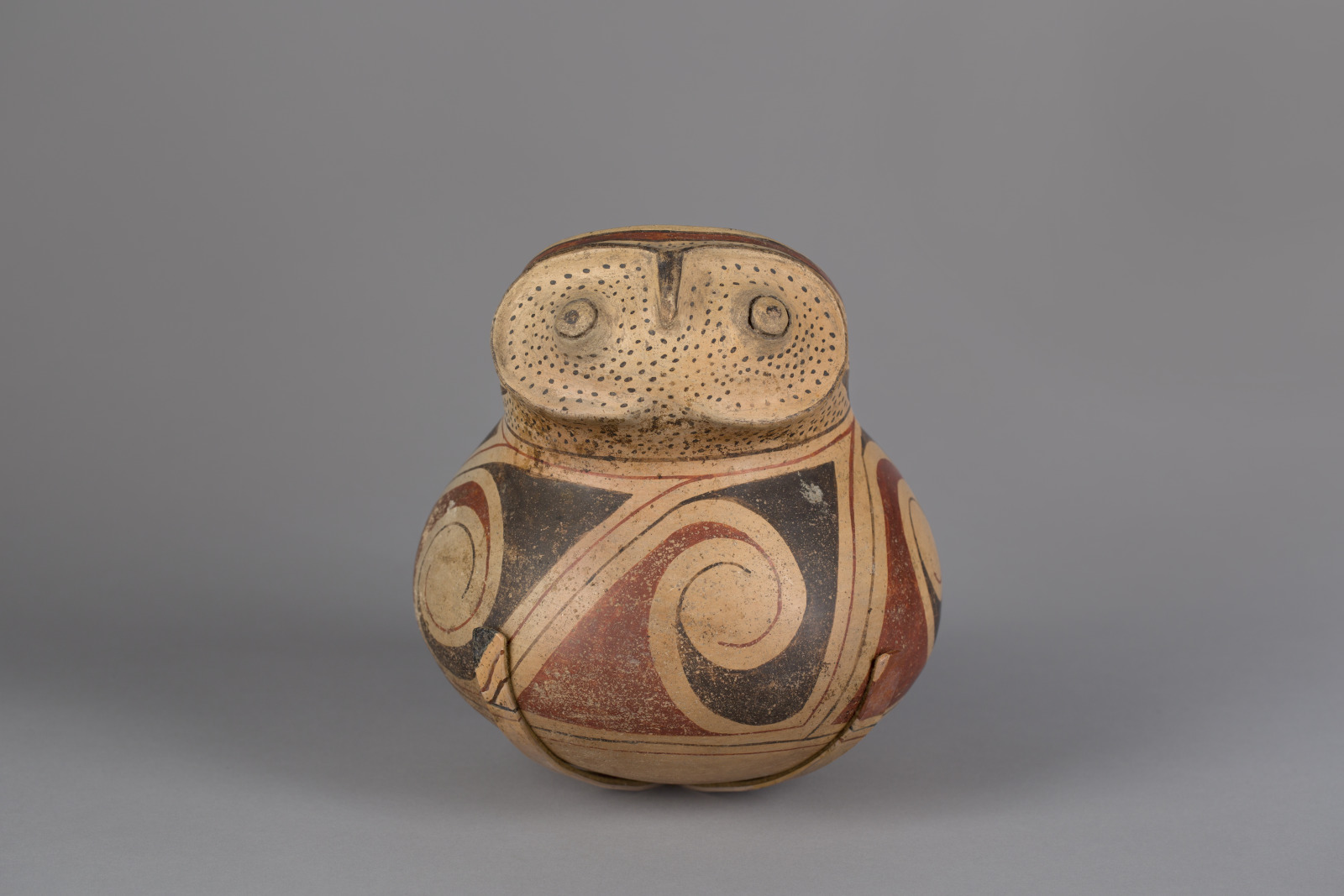
Vessel in the Form of an Owl, c.1280–1450; Casas Grandes, Mexico; ceramic with pigment; 8 x 6 1/2 inches; Saint Louis Art Museum, Bequest of Morton D. May 1094:1983
Intertwining black and red spirals painted on the body of this owl contrast with more realistic facial markings. Artists associated with the ancient city of Paquime, and nearby archaeological sites in present-day northern Chihuahua, Mexico, frequently painted figural vessels with a combination of abstract and naturalistic imagery. Owls represent one form among a staggering range of Casas Grandes vessels, including humans, various animals, and an array of non-figural jar shapes.
Casas Grandes ceramics reconfigure designs from older southwestern painted vessels while using inventive polychrome palettes. This artistic revival likely presented the past as an ideal age, a concept that would support leaders’ claims to distinguished ancestry.
September 28, 2023
St. Lawrence Distributing the Riches of the Church
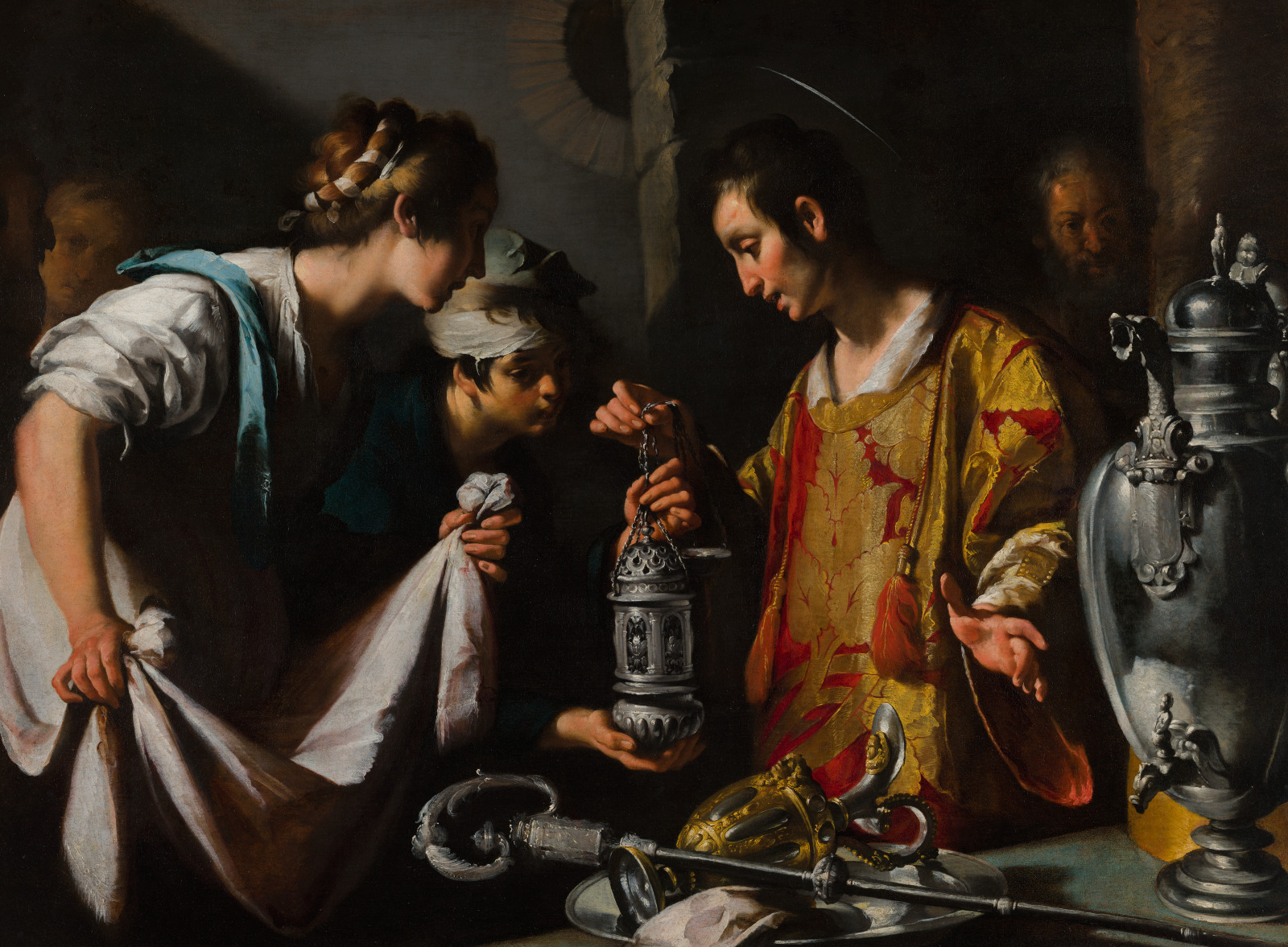
Bernardo Strozzi, Italian, 1581–1644; St. Lawrence Distributing the Riches of the Church, c.1625; oil on canvas; 48 3/8 x 64 1/2 inches; Saint Louis Art Museum, Museum Purchase 37:1944
Here, the 3rd-century Christian martyr St. Lawrence distributes the Church’s treasures to those in need. Through vivid color contrasts, selective highlights, and the saint’s extended left hand, the artist draws viewers into this scene. Bernardo Strozzi has captured the sumptuous grouping of richly ornamented objects that almost burst out of the pictorial space. Close observation of those who gather to receive the gifts reveals the impact of the saint’s generosity.
September 27, 2023
At the Suresnes Ball
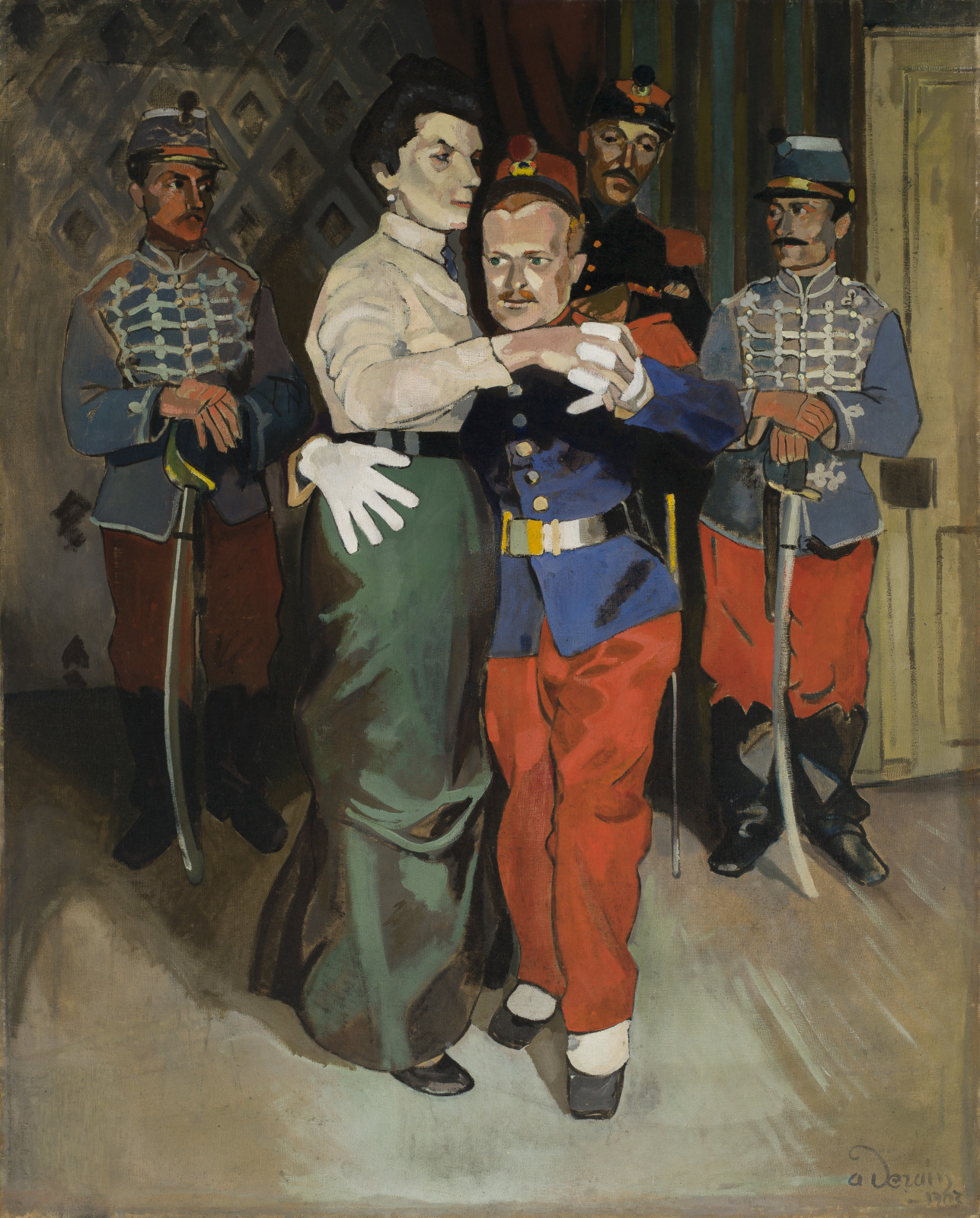
André Derain, French, 1880–1954; At the Suresnes Ball, 1903; oil on canvas; 70 7/8 x 57 1/8 inches; Saint Louis Art Museum, Museum Purchase 172:1944
A man in an infantry uniform dances with a taller woman, the splayed fingers of his white-gloved hand sharply illuminated against her green skirt. Three fellow soldiers observe in the background; the tallest may be a self-portrait of André Derain who painted this work during a year of military service. The artist takes a humorous approach to his subject, presenting the dance as an awkward social ritual. This early picture is notable for its areas of bold, flat color, anticipating Derain’s experiments with Fauvism.
September 26, 2023
Side-handled Teapot (kyūsu)

Aoki Mokubei, Japanese, 1767–1833; Side-handled Teapot (kyūsu), 1832; stoneware with molded decoration and inscription; height: 3 15/16 inches; Saint Louis Art Museum, William K. Bixby Trust for Asian Art 126:1985a,b
Aoki Mokubei made one hundred identical teapots bearing the four-character inscription from an ancient Chinese tea poem, “He who desires to know the pure, cool taste of flower buds [tea] must be the man of sleeping clouds and creeping stones.” The compact body of this pot is unglazed, and the rough, wheel-thrown spout, handle, and cover are simple and well-proportioned. Mokubei made the pots for a tea gathering planned for the spring of 1833 at Kitano Shrine, Kyoto. The grand affair was to be in celebration of the festival of plum blossoms for which the shrine was famous. But the party never took place because Mokubei died unexpectedly. His daughter gave the hundred teapots, the last Mokubei ever made, to his friends to remember him by. Only three or four of the teapots are thought to have survived.
September 24, 2023
Descendant, from the portfolio “Taxa”
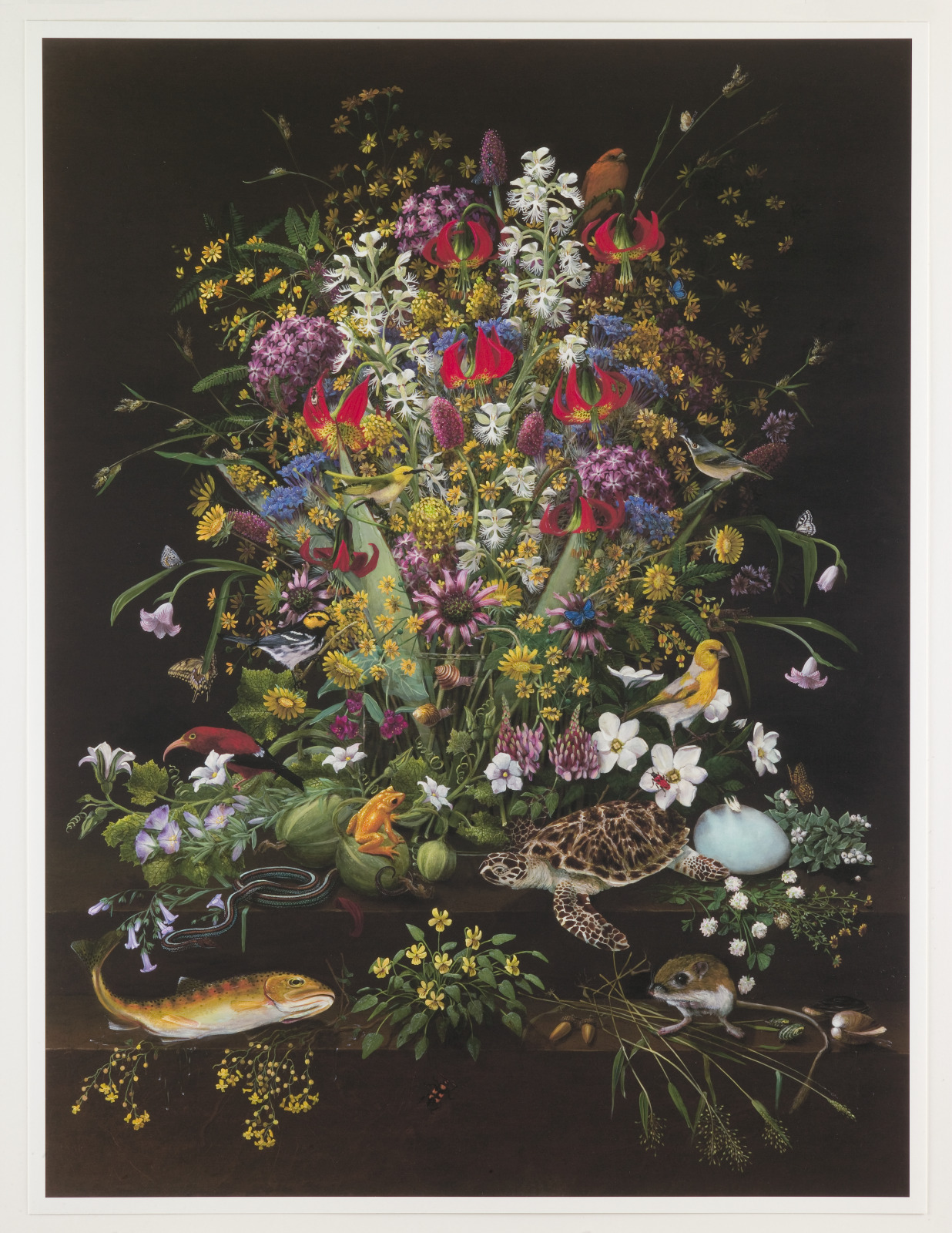
Isabella Kirkland, American, born 1954; published by Feature Inc., New York, New York; Descendant, from the portfolio Taxa, 2006; inkjet print; image: 34 1/16 x 25 1/2 inches, sheet: 35 x 26 1/2 inches; Saint Louis Art Museum, The Sidney S. and Sadie Cohen Print Purchase Fund 158:2011.1; © Isabella Kirkland
Native to North American countries and territories, the sixty-one plants and animals in Descendant are all declining in number. Many of them, like the hawksbill sea turtle, are classified as critically endangered; a few species are even presumed to be extinct. The Oahu tree snail, for instance, is one of more than seven hundred different species of land snails once found throughout the Hawaiian Islands. Today more than fifty-two of these native snail species are considered extinct, having largely succumbed to pest control practices.
September 23, 2023
Parrot’s Forest (Papageienwald) Textile Sample

designed by Ludwig Heinrich Jungnickel, Austrian (born Germany), 1881–1965; made by Wiener Werkstatte, Vienna, Austria, active 1903–1932; Parrot's Forest (Papageienwald) Textile Sample, 1910–11, probably made c.1913; block-printed linen; 41 x 30 3/4 inches; Saint Louis Art Museum, Marjorie Wyman Endowment Fund 9:2020
This lively print by Bavarian-born Ludwig Heinrich Jungnickel was used for upholstery and curtains in the library of a house in the Moravian town of Winkelsdorf. Built for banker and industrialist Otto Primavesi and his wife Eugenia, it showed the couples’ passion for Viennese progressive art and design. The Villa Primavesi, as it was called, was just one of many important Wiener Werkstätte commissions located in the present-day Czech Republic.
September 22, 2023
Reclining Figure
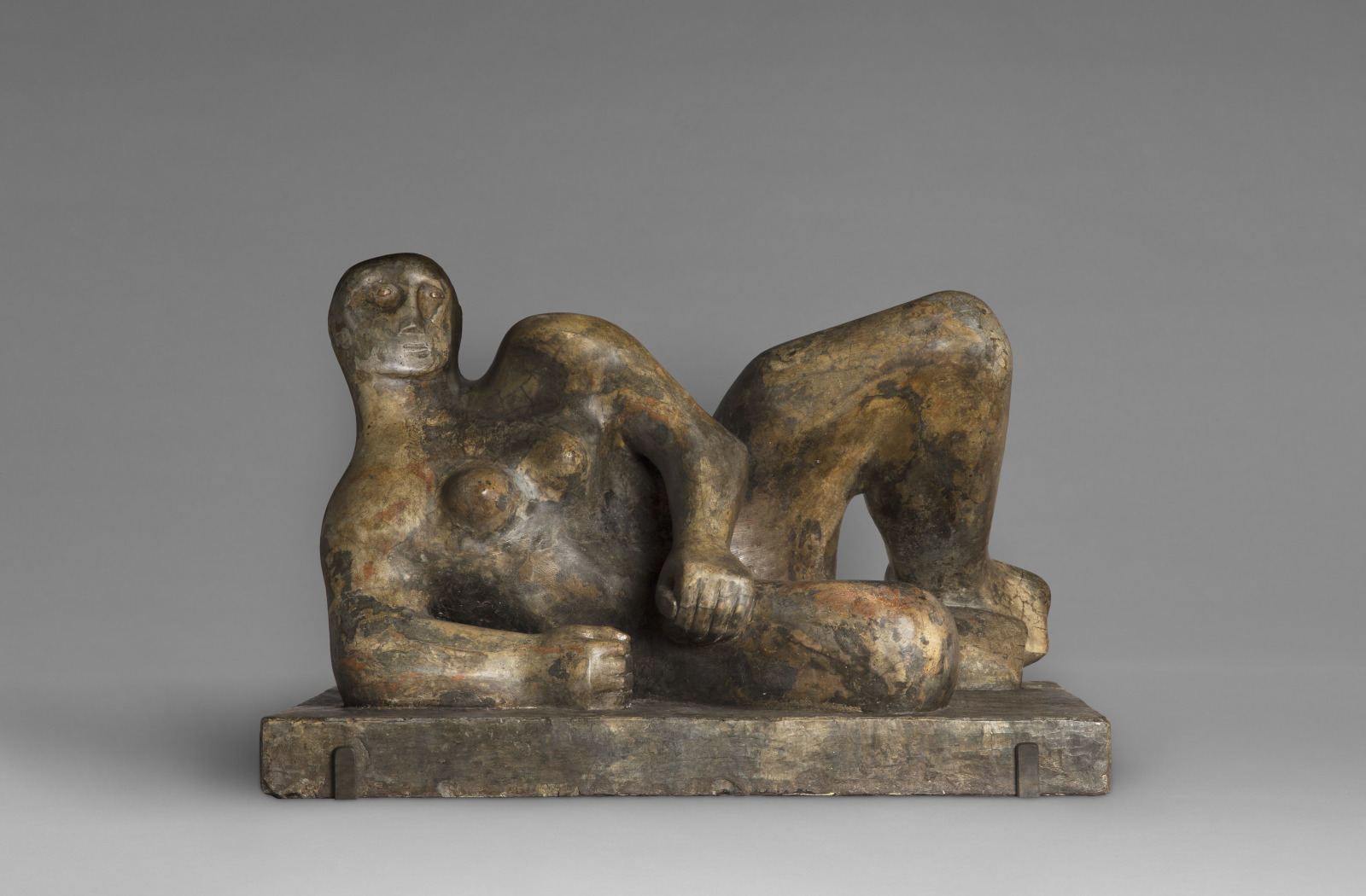
Henry Moore, English, 1898–1986; Reclining Figure, 1932; reinforced concrete; 25 5/8 x 38 3/8 x 22 3/8 inches; Saint Louis Art Museum, Museum Purchase 75:1948; © 2023 Artists Rights Society (ARS), New York
This monumental female figure represents the largest sculpture that Henry Moore made in the unconventional medium of concrete. Imitating the mottled colors of natural stone, Moore achieved a polychrome surface by adding red, brown, and black pigments to wet concrete without stirring the mixture uniformly. Once dried, Moore carved into the concrete. The pose of this figure, influenced by ancient American sculpture, parallels an interest in art of this culture by Moore and the Surrealists who exhibited together during the 1930s.
September 20, 2023
Still Life

John Johnston, American, 1752–1818; Still Life, 1810; oil on panel; 14 7/8 x 18 1/4 inches; Saint Louis Art Museum, Funds given anonymously 218:1966
Still Life revels in the textures of translucent grapes and fuzz of peach skin. The unadorned background emphasizes the delicate silhouette of grape leaves and tendrils. The bee and caterpillar add a sense of the momentary to an otherwise seemingly timeless theme. These details draw us closer to the image, increasing our sense of intimacy with it by inviting careful observation.
This work is one of the earliest still life paintings made in the United States. The artist, John Johnston, worked in his father’s engraving and decorative painting business. He served in the Continental Army during the Revolutionary War (1775–1783) and was injured and imprisoned by the British for over a year before returning to Boston to open his own studio.
September 19, 2023
Ceiling Lamp, from the Francis W. Little House, Peoria, Illinois

Frank Lloyd Wright, American, 1867–1959; Ceiling Lamp, from the Francis W. Little House, Peoria, Illinois, 1902–3; glass, copper alloy, and zinc; 29 x 16 x 16 inches; Saint Louis Art Museum, Richard Brumbaugh Trust in memory of Richard Irving Brumbaugh and Grace Lischer Brumbaugh, Marjorie Wyman Endowment Fund, and Friends Fund Endowment 1:2014
This lamp’s shade is a complex grid of intersecting rectangles and squares overhanging a cube-shaped light box. Large and small squares of colored iridescent glass dot the shade’s perimeter and corners. In its form, the lamp embodies the home it was designed to illuminate. Frank Lloyd Wright’s Prairie School structures, like the Little House, are long and low with gently sloping roofs, sheltering overhangs, and projecting terraces. These design features echo the midwestern landscape’s “quiet level.” Leaded glass lanterns, sconces, table lamps as well as windows and screens were important elements in Wright’s Prairie School homes. These and other custom-designed furnishings, such as this ceiling lamp, developed from a shared language of motifs and produced a unified design experience. Wright was an influential member of the Prairie School, the Midwest’s greatest contribution to the American Arts and Crafts movement. Wright transcended both his midwestern roots and an American context. He became an international figure who was widely published and emulated, and whose influence can be measured around the globe.
September 12, 2023
Café

George Grosz, German, 1893–1959; Cafe, 1916; oil on canvas; 19 x 12 3/4 inches; Saint Louis Art Museum, Bequest of Morton D. May 889:1983
In this satirical painting, George Grosz presents three card-playing men in a Berlin café illuminated by an eerie red glow. The bloated figures represent the well-fed, greedy leaders of capitalist society, whom the artist saw as the source of many social ills. Two of the men glance sideways with beady eyes while the third collects his winnings. Painted in the midst of World War I, this work reveals the artist’s keen sense of social injustice while also showing his fascination with metropolitan nightlife.
September 5, 2023
Self-Portrait
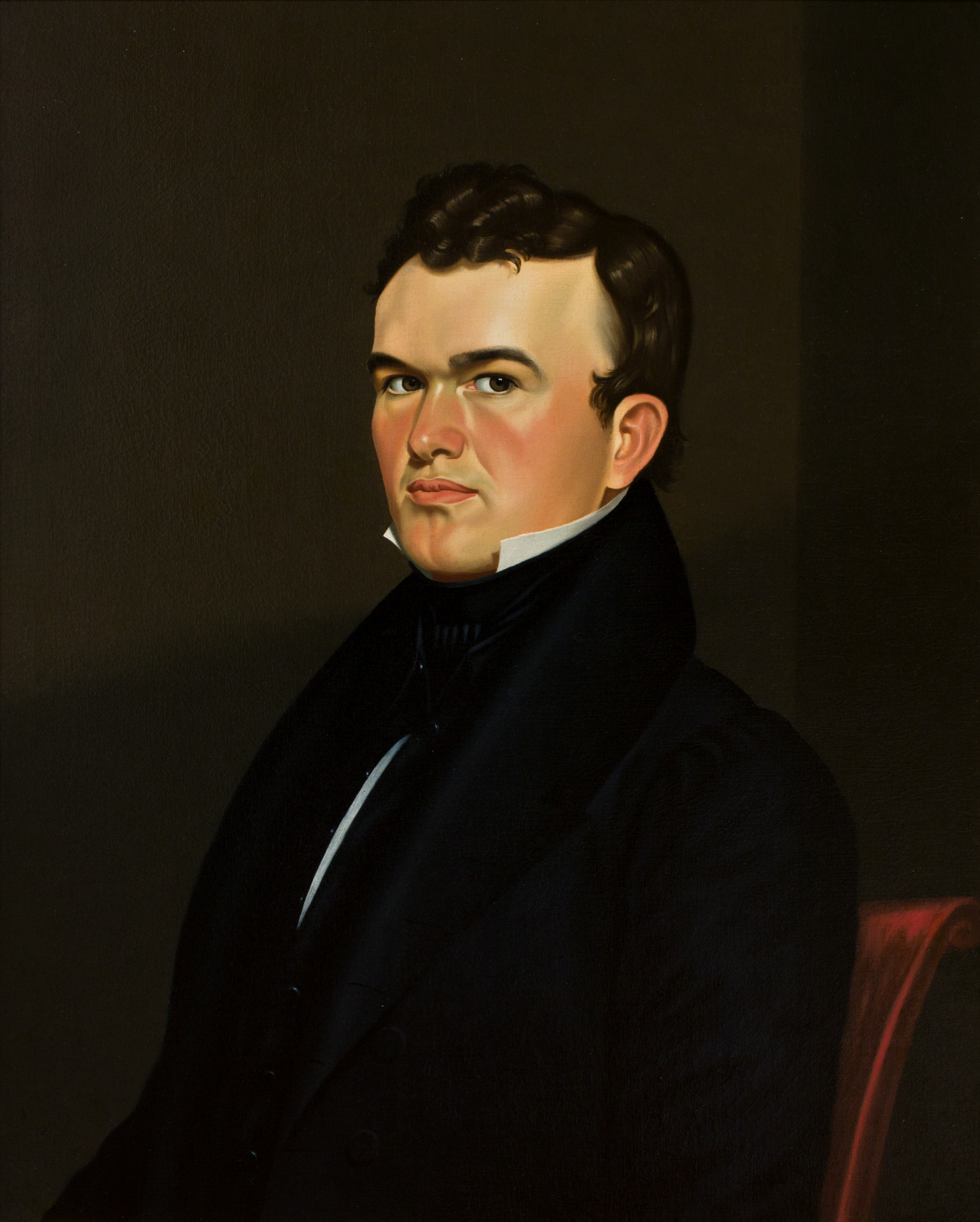
George Caleb Bingham, American, 1811–1879; Self Portrait, 1834–35; oil on canvas; 28 3/8 x 22 11/16 inches; Saint Louis Art Museum, Eliza McMillan Trust 57:1934
George Caleb Bingham began his career as an artist by meeting the demand for portraits among the prominent citizens of Missouri. Successful East Coast painters did not make regular trips west, but the inhabitants of the western states were still anxious to have images of their loved ones. In this self-portrait, Bingham did not emphasize his identity as an artist, but rather followed the same conventions he would employ to depict his well-to-do sitters. In this way, the painting could serve as a model and an advertisement for his work.
September 4, 2023
The Active Voice
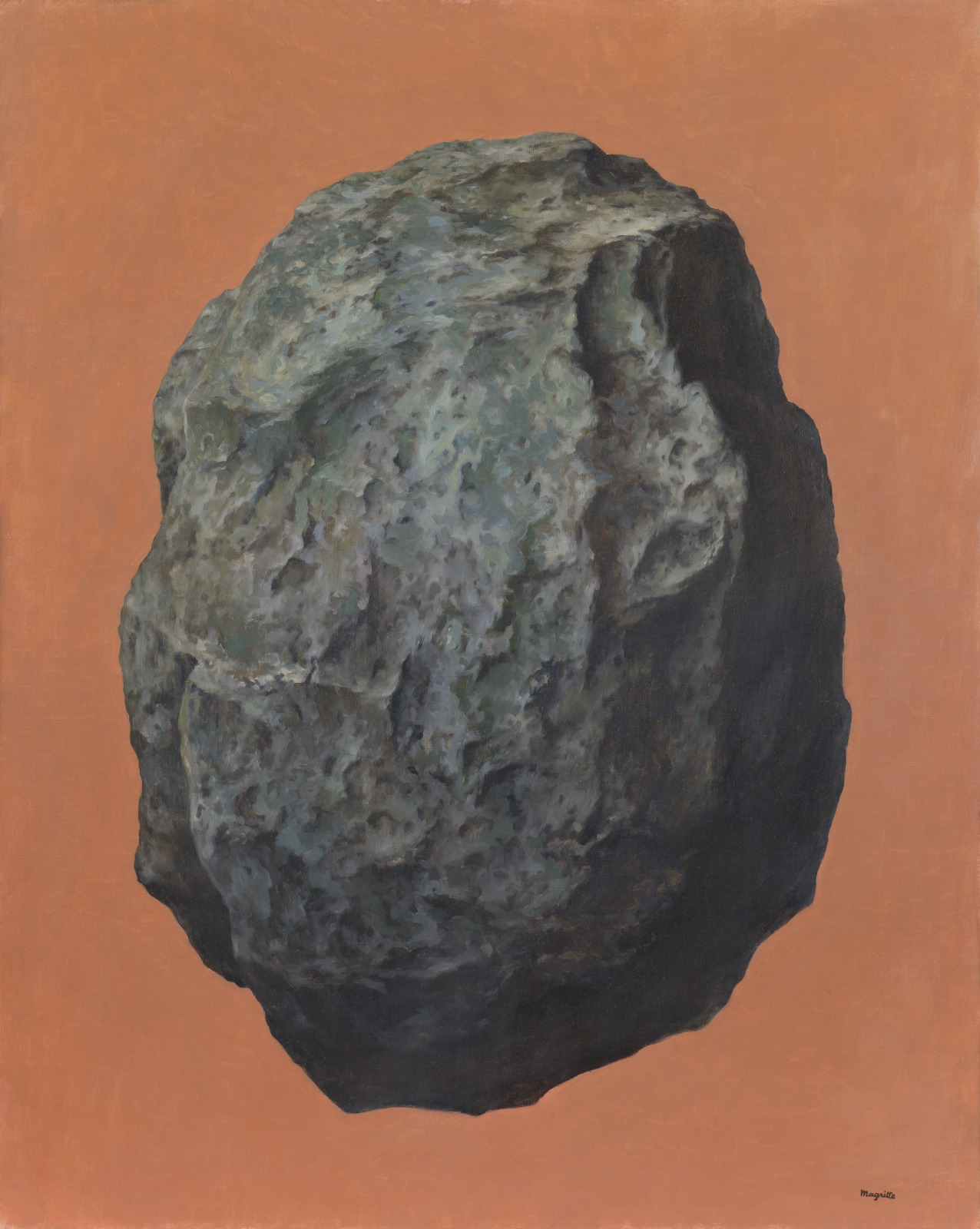
Rene Magritte, Belgian, 1898–1967; The Active Voice, 1951; oil on canvas; 39 1/2 x 31 1/2 inches; Saint Louis Art Museum, Gift of Mr. and Mrs. Joseph Pulitzer Jr. 4:1960; © 2023 Artists Rights Society (ARS), New York / ADAGP, Paris
Precisely depicted in shades of gray and taupe, an isolated stone hovers before a solid orange background. Without any other objects to reference for scale, it is impossible to know whether this rock is a tiny pebble or a massive boulder. René Magritte, a prominent member of the surrealist movement, painted disorienting and dreamlike subjects in a style of meticulous realism. The artist’s choice of title here may be an ironic play on the pervasive sense of silence in this painting.
September 2, 2023
Sampler: Batman and Catwoman

Mark Newport, American, born 1964; Sampler: Batman and Catwoman, 2005; embroidered comic book cover; 10 1/8 x 6 3/8 inches; Saint Louis Art Museum, Gift of Ted L. and Maryanne Ellison Simmons; and funds given by the Marian Cronheim Trust for Prints and Drawings, Museum Purchase, Friends Fund, The Sidney S. and Sadie Cohen Print Purchase Fund, and the Eliza McMillan Purchase Fund 762:2020; © Mark Newport
This comic book cover shows superheroes at dramatic moments of combat. Artist Mark Newport hand-stitched threads of embroidery floss over the main characters, creating a soft texture that diminishes their ferocity. Newport explains:
I usually pick covers where the hero is in danger or in a moment that seems fraught. I predominantly use two stitches for the figures: the French knot and the bullion stitch. French knots make various sizes of dots which reminds me of the halftone Ben-Day dots used to print old comic books. The bullion stitch makes more linear stitches [similar to] crosshatching from drawings and muscle striations. The stitches on borders and around letters on the covers refer back to the embroidery sampler tradition.
August 29, 2023
Iris

Man Ray, American (active France), 1890–1976; Iris, 1926; solarized gelatin silver print; image: 9 3/4 x 7 7/8 inches, sheet: 9 3/4 x 7 7/8 inches; Saint Louis Art Museum, Museum Purchase 126:1977
Man Ray mastered a darkroom technique known as solarization used in this image of an iris flower. Through a selective re-exposure of a print during development, a chemical phenomenon causes a reversal of tones, particularly in areas where there is a sharp contrast of light and dark. Man Ray solarized the contours of this flower, and as a result, the brilliant whites of the petals seem to well up from a pool of darkness, radiating an otherworldly glow.
August 28, 2023
Bahrām Gūr in the Green Pavilion, folio from a manuscript of the Khamsa of Niẓāmī
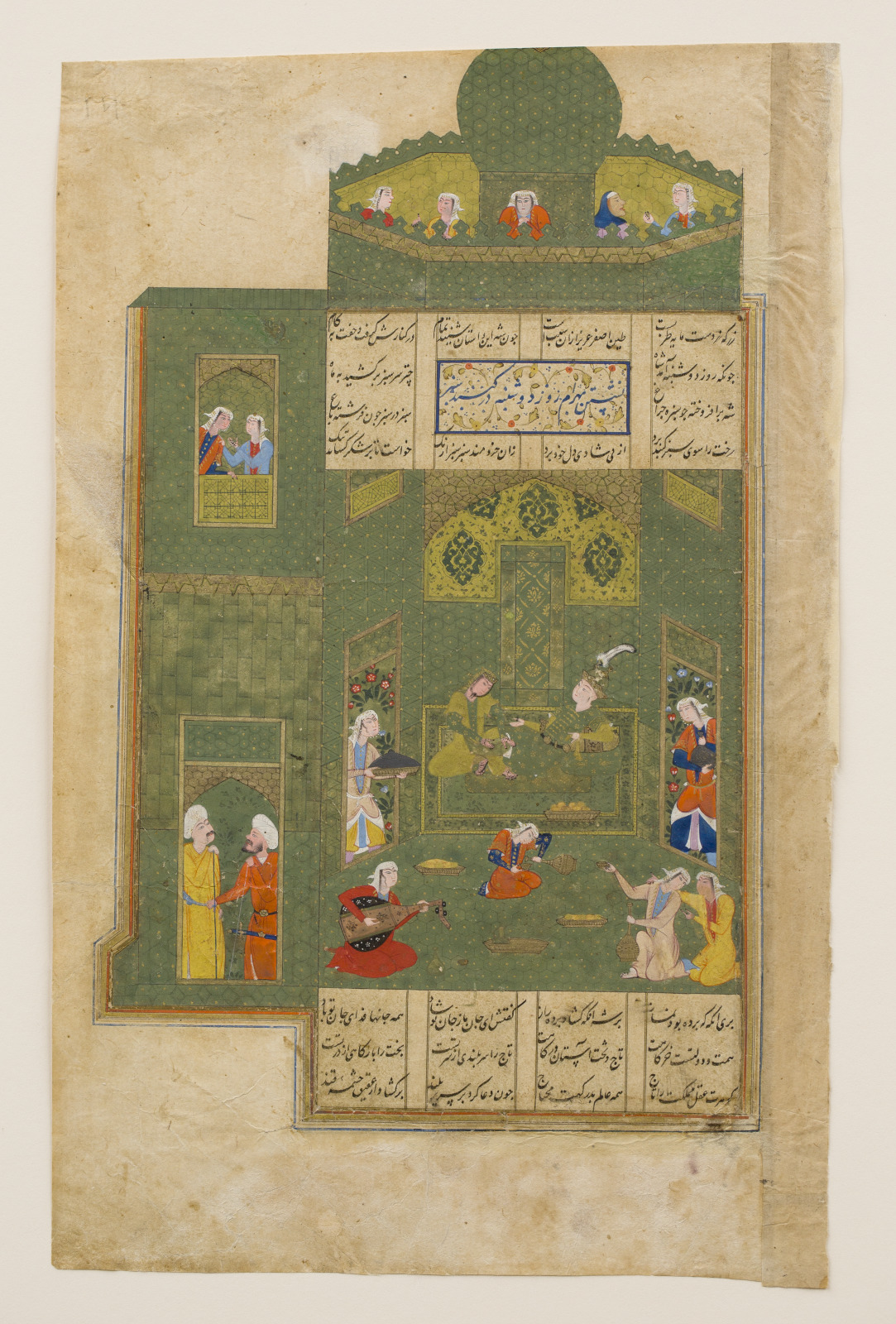
Bahrām Gūr in the Black Pavilion, folio from a manuscript of the Khamsa of Niẓāmī, early to mid-16th century; Persian, Iran, Safavid dynasty; ink, opaque watercolor, and gold on paper; image: 10 1/16 x 5 13/16 inches, sheet: 11 3/4 x 7 5/16 inches; Saint Louis Art Museum, William K. Bixby Trust for Asian Art 292:1949
This painting shows Sassanian king Bahrām V (r.420–438), ruler of the vast Empire of Iranians, visiting Princess Pari Naz of Khwarazm in the Green Pavilion on a Monday. A famous Persian epic tale imagined that Bahrām married seven princesses, who each lived in a colored, domed pavilion that aligned with a planet and day of the week. The pavilion here is green and corresponded with the moon, considered a planet in the 15th-century.
Bahrām V and Pari Naz are seated on cushions while female attendants serve wine and play music. Other women of his court look in from upper balconies and windows. Passages of Persian script are visible above and below the image. This detached sheet is from an illuminated manuscript of the Khamsa, a collection of five long poems by Ilyas Yusuf Nizami (c.1141–c.1209) from Ganja in present-day Azerbaijan. The Khamsa includes the Haft Paykar (Seven Portraits), a narrative poem composed c.1197, describing the exploits of Bahrām V. Due to his love of hunting wild ass (gūr), he became known as Bahrām Gūr.
August 17, 2023
Model for Lobby Ceiling, American Stove Company Building
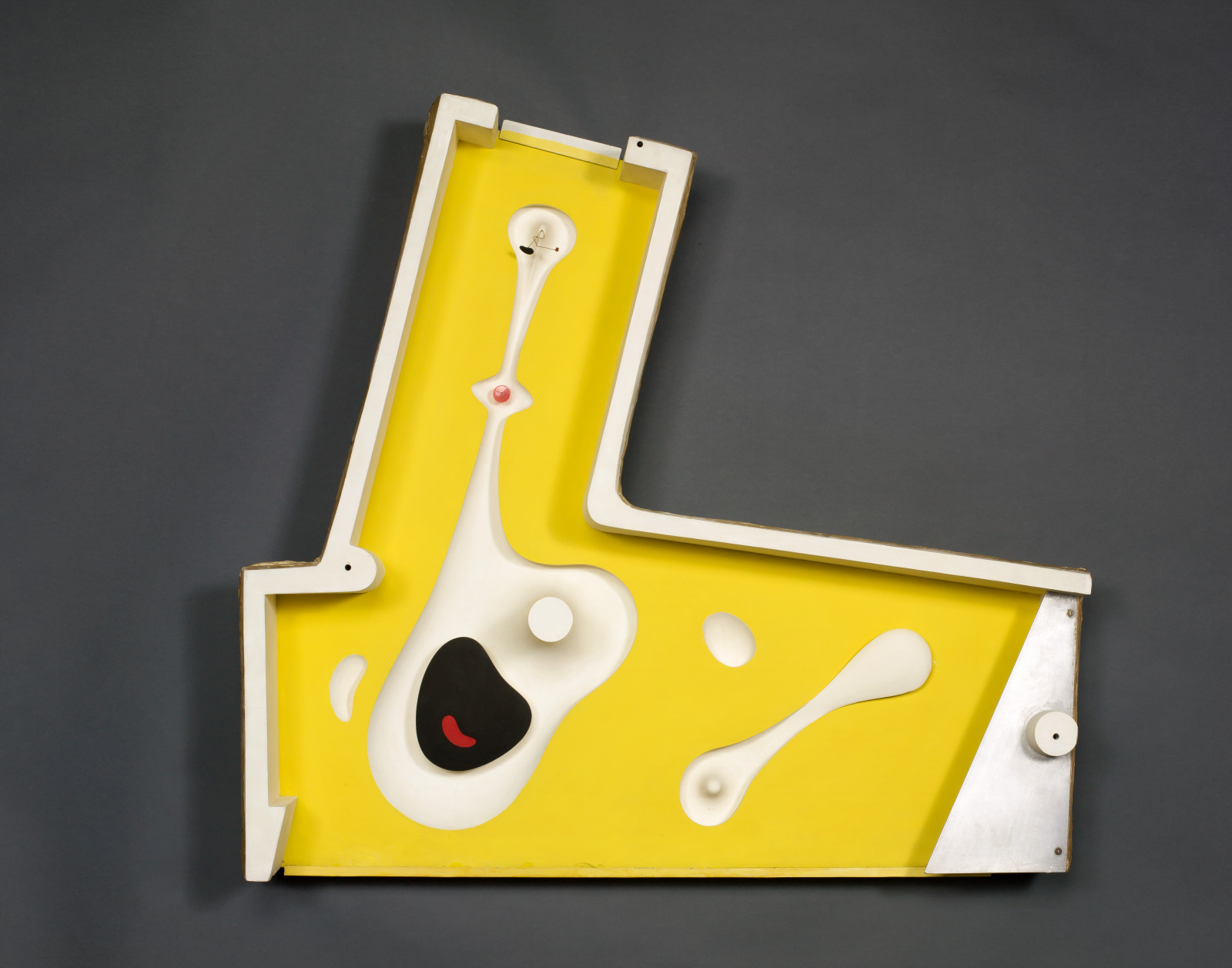
Isamu Noguchi, American, 1904–1988; Model for Lobby Ceiling, American Stove Company Building, 1946–47; plaster, wire, plexiglass, and aluminum; 40 3/8 x 43 x 7 1/2 inches; Saint Louis Art Museum, Gift of Mr. and Mrs. Harris Armstrong 86:1970; © 2023 Artists Rights Society (ARS), New York
The biomorphic shapes that characterize Isamu Noguchi’s sculpture from the 1940s feature prominently in this model of the lobby ceiling he designed for the American Stove Company in St. Louis. The free-form contours functioned as recessed light fixtures, but they also transformed the ceiling into a sculpted landscape that guided visitors through the lobby, making them “feel better, feel happier to be there.” The American Stove Company building, designed by Harris Armstrong, and this ceiling exemplify the modern architecture commissioned in St. Louis during the mid-20th century. This model was used by plasterers to construct the actual ceiling.
August 16, 2023
Peter and John at the Gate of the Temple
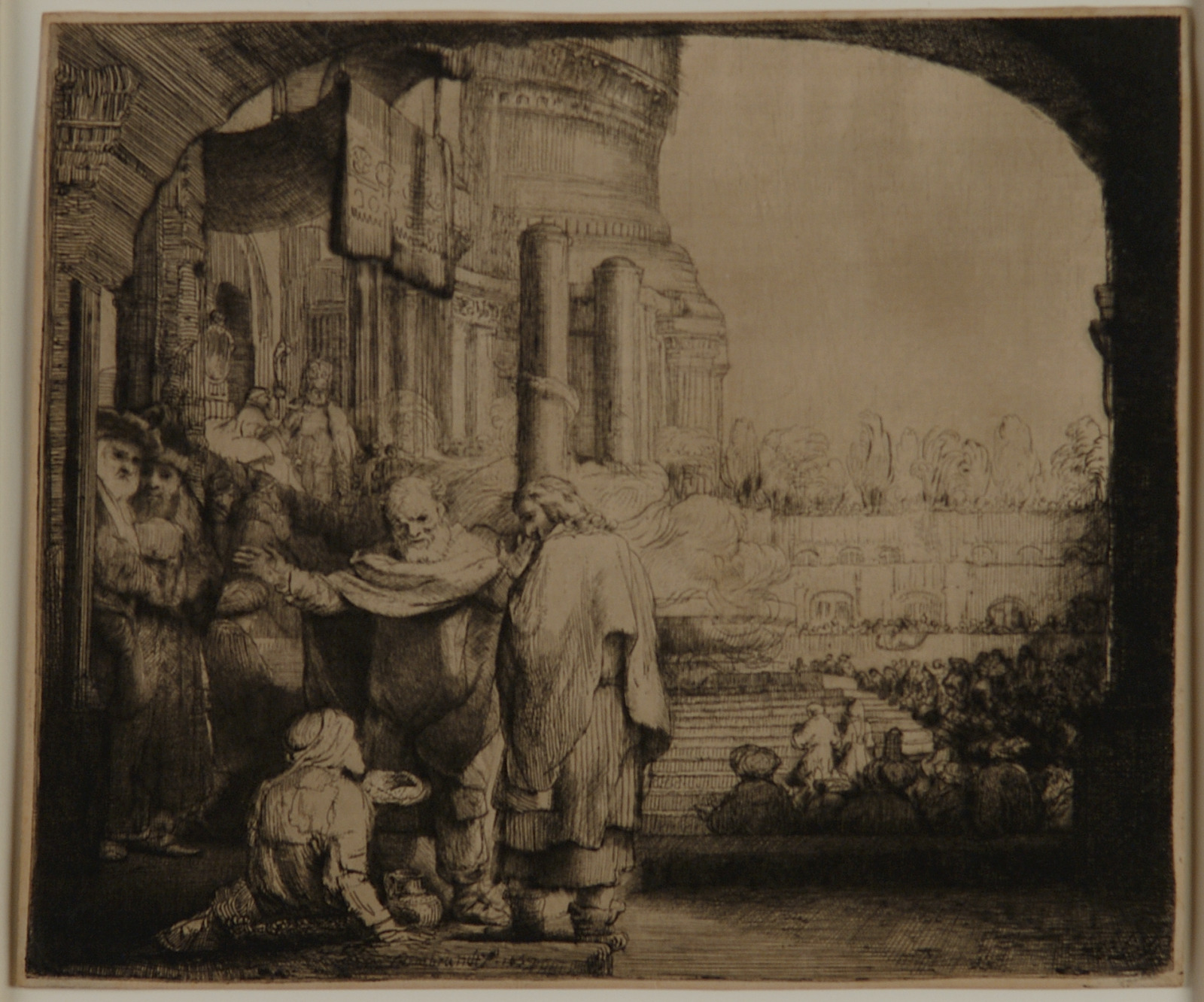
Rembrandt van Rijn, Dutch, 1606–1669; Peter and John at the Gate of the Temple, 1659; etching and drypoint; plate: 7 1/16 x 8 1/2 inches, sheet: 7 3/16 x 8 11/16 inches; Saint Louis Art Museum, Director's Discretionary Fund and the Julian and Hope Edison Print Fund 34:2005
This etching, based on a passage from the biblical New Testament, portrays a scene of miraculous healing. On their way to the temple, Peter and John, followers of Jesus, encounter a man unable to walk since birth asking for money. Peter says, “I have no silver and gold, but I give you what I have: in the name of Jesus Christ of Nazareth, walk.” In the print, Rembrandt van Rijn showed Peter raising his hands to bless the man. The biblical passage goes on to describe how the man then stands and walks. Billows of smoke roll out of the great basin behind Peter, amplifying the miraculous force of his gesture.
August 13, 2023
Headrest in the Form of a Reclining Boy
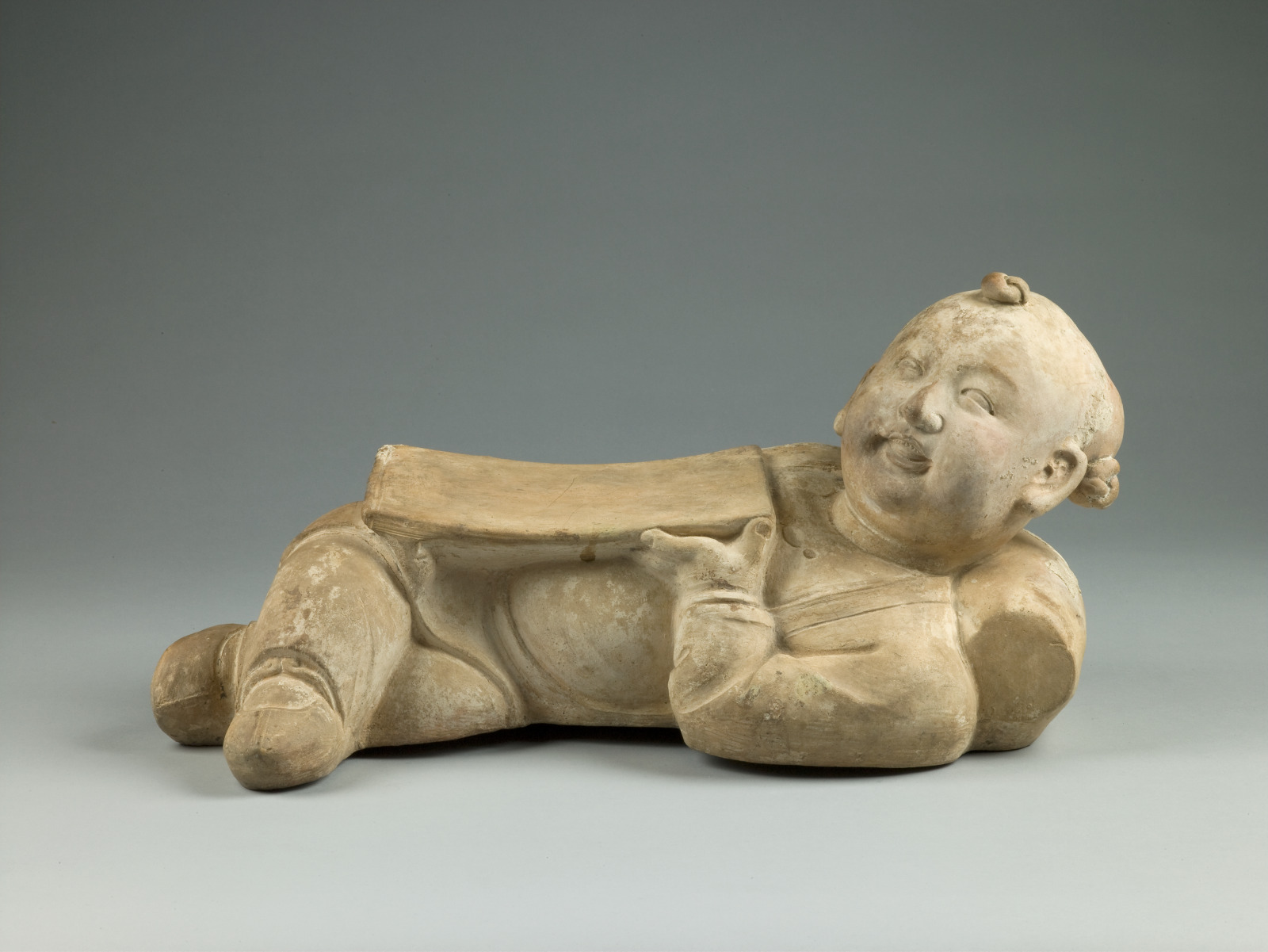
Headrest in the Form of a Reclining Boy, 12th–early 13th century; Chinese, Jin dynasty; Cizhou ware; earthenware with traces of white slip; 8 1/2 x 17 x 9 inches; Saint Louis Art Museum, Spink Asian Art Collection, Bequest of Edith J. and C. C. Johnson Spink 56:2014
This large earthenware headrest takes the form of a chubby boy reclining with his large head supported by a sausage-shaped pillow with flat-cut ends. The figure has a lively expression, with his open mouth showing detailed teeth and his hair gathered in three small knots behind his ears and high on his forehead. He wears a loose tunic over pantaloons and round-toed slippers as well as bracelets around his wrists and ankles. He supports a gently curved platform on his side to serve as the headrest. Traces of white slip, a mixture of clay and water, on the surface suggest that its maker intended it to resemble porcelain.
August 11, 2023
Daphne
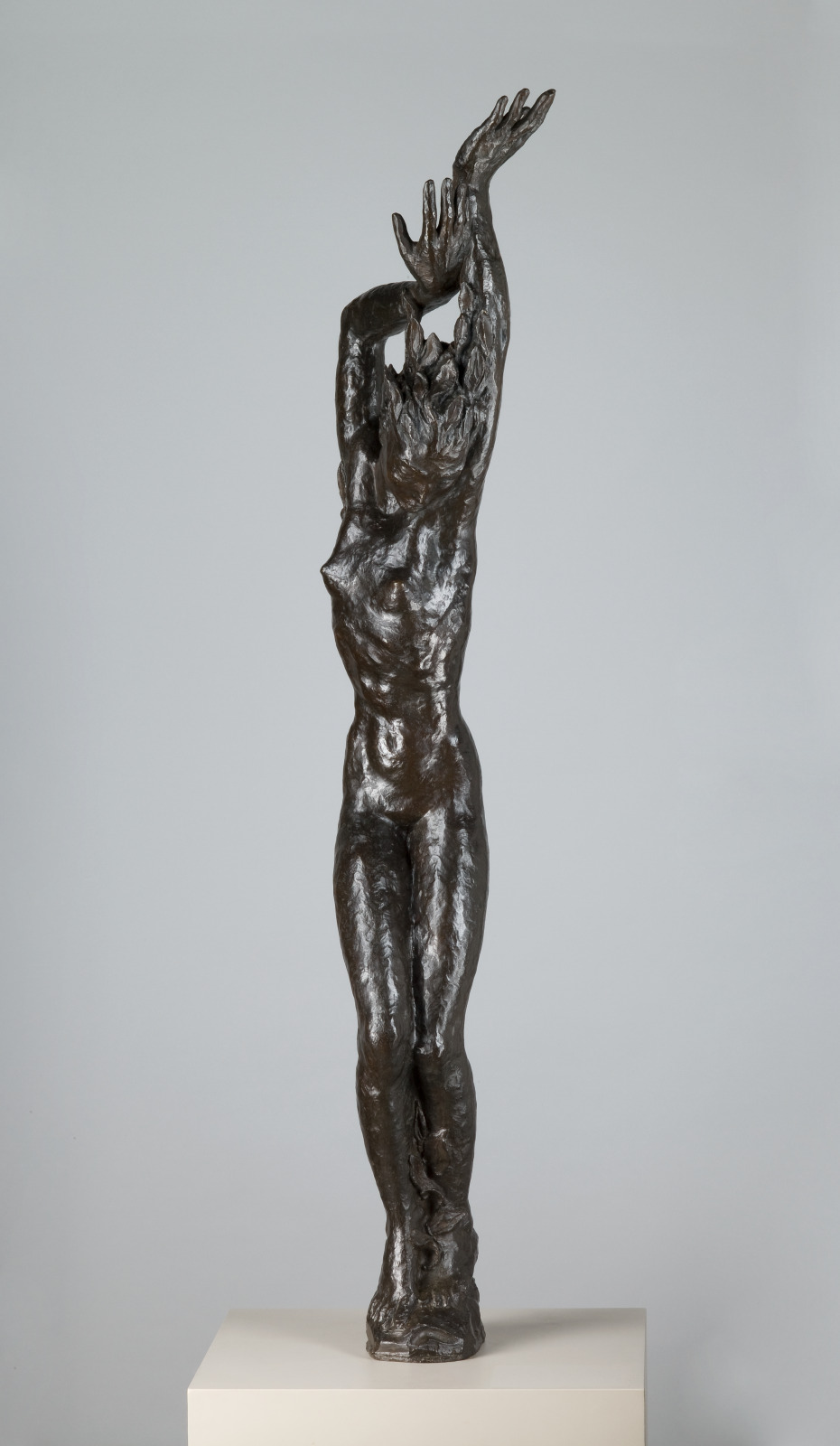
Renée Sintenis, German, 1888–1965; Daphne, 1930; bronze; 56 7/8 x 2 1/2 inches; Saint Louis Art Museum, Museum Purchase 672:1949; © 2023 Artists Rights Society (ARS), New York / VG Bild-Kunst, Bonn
Renée Sintenis was a prominent sculptor in early 20th century Germany. In this mythological subject, she depicts Daphne changing into a tree. The nymph’s hair turns to leaves while foliage appears around her legs and sprouts from her armpits. Daphne was pursued by the Greek god Apollo and was transformed into a tree in order to escape the god’s unwanted advances. Sintenis affirmed, “I tried to capture the beginning of this magic transformation in plastic form.”
August 8, 2023
Standing Śākyamuni Buddha
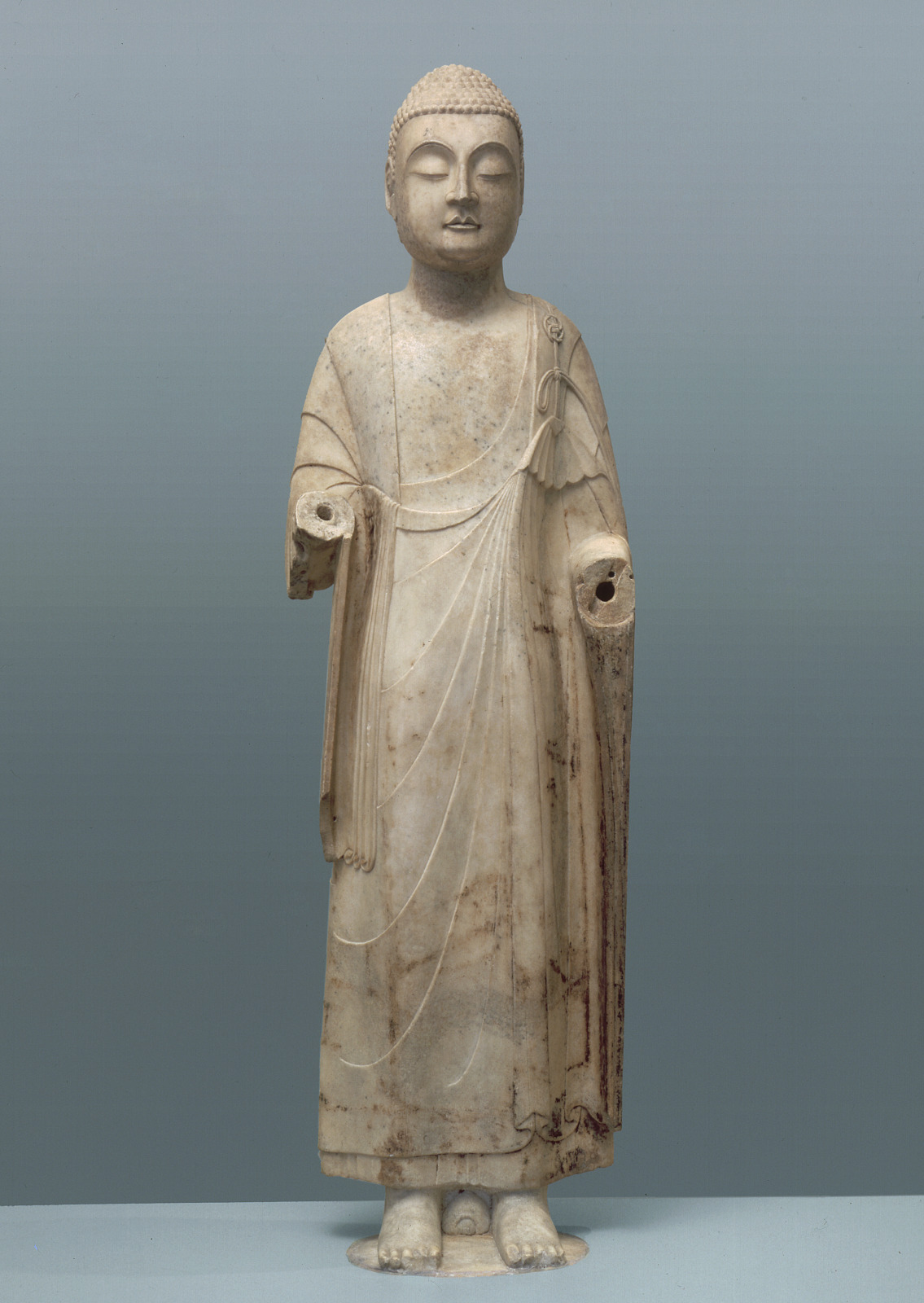
Standing Sākyamuni Buddha, late 6th century; Chinese, Northern Qi dynasty, or Sui dynasty; marble with traces of pigment; height from bottom of feet to top of head: 63 3/4 inches, width: 18 1/2 inches, depth: 12 inches; Saint Louis Art Museum, Museum Purchase 182:1919
The serene, introspective gaze of this Buddha is enhanced by the figure’s formal stance and the white, cool character of the marble. Traces of old pigment indicate that this sculpture was originally painted to show the richly embroidered, colorful patchwork silks of a priest’s robe. There are two rare features depicted in this work. The first, just under the left shoulder, is an inverted fan shape that represents the gathering of cloth in a clasp. The second, nestled between the ankles, is a fruit-like motif interpreted as a lotus bud or a wish-granting pearl (cintāmaṇi), both symbols of purity.
Based on stylistic analysis and other comparable works, this statue may have been made either during the final years of the Northern Qi dynasty or the early years of the Sui dynasty. This standing statue would have been supported on a lotus pedestal that surmounted a square base, carved from the same marble.
August 5, 2023
Long Live Love or Charming Country
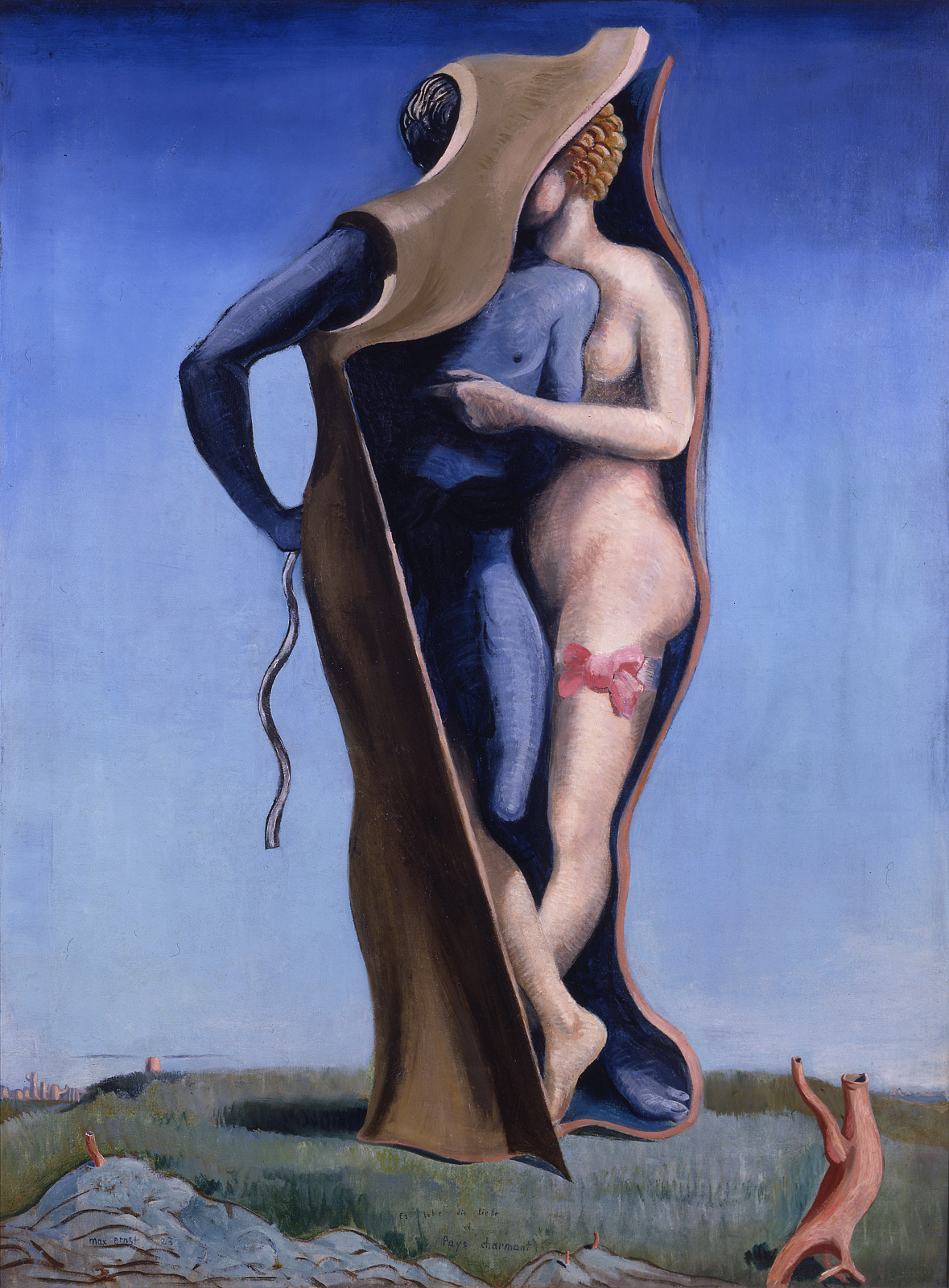
Max Ernst, German, 1891–1976; Long Live Love or Charming Country, 1923; oil on canvas; 51 3/4 x 38 5/8 inches; Saint Louis Art Museum, Bequest of Morton D. May 885:1983
A male and female nude are intertwined within a form resembling a hollow tree trunk. Smaller tree stumps are spread through a strange, bare landscape. Max Ernst painted this image soon after moving to Paris from his native Germany in the early 1920s. He lived in a ménage à trois relationship with poet Paul Éluard and their partner Gala, who may be the figures depicted in this work. It is unclear whether the couple is passionately embracing or suffocating in claustrophobic proximity.
July 31, 2023
Beaker

Beaker, second half 13th or 14th century; Syrian, Mamluk period; glass; height: 4 1/8 inches, diameter of mouth: 2 inches, diameter of foot: 1 5/8 inches; Saint Louis Art Museum, Museum Purchase 52:1921
Glass-making in the Islamic world reflects a vibrant tradition dating from ancient times. The Romans first discovered how to blow glass on a rod, while the Iranians in late antiquity specialized in molded glass with wheel-cut decoration.
Roman traditions in glass-making also continued for centuries. As late as the 13th century, glass from Egypt and Syria exhibited Roman decorative techniques to incorporate contrasting colors. Such techniques can be seen on this small beaker.
July 30, 2023
The Mother
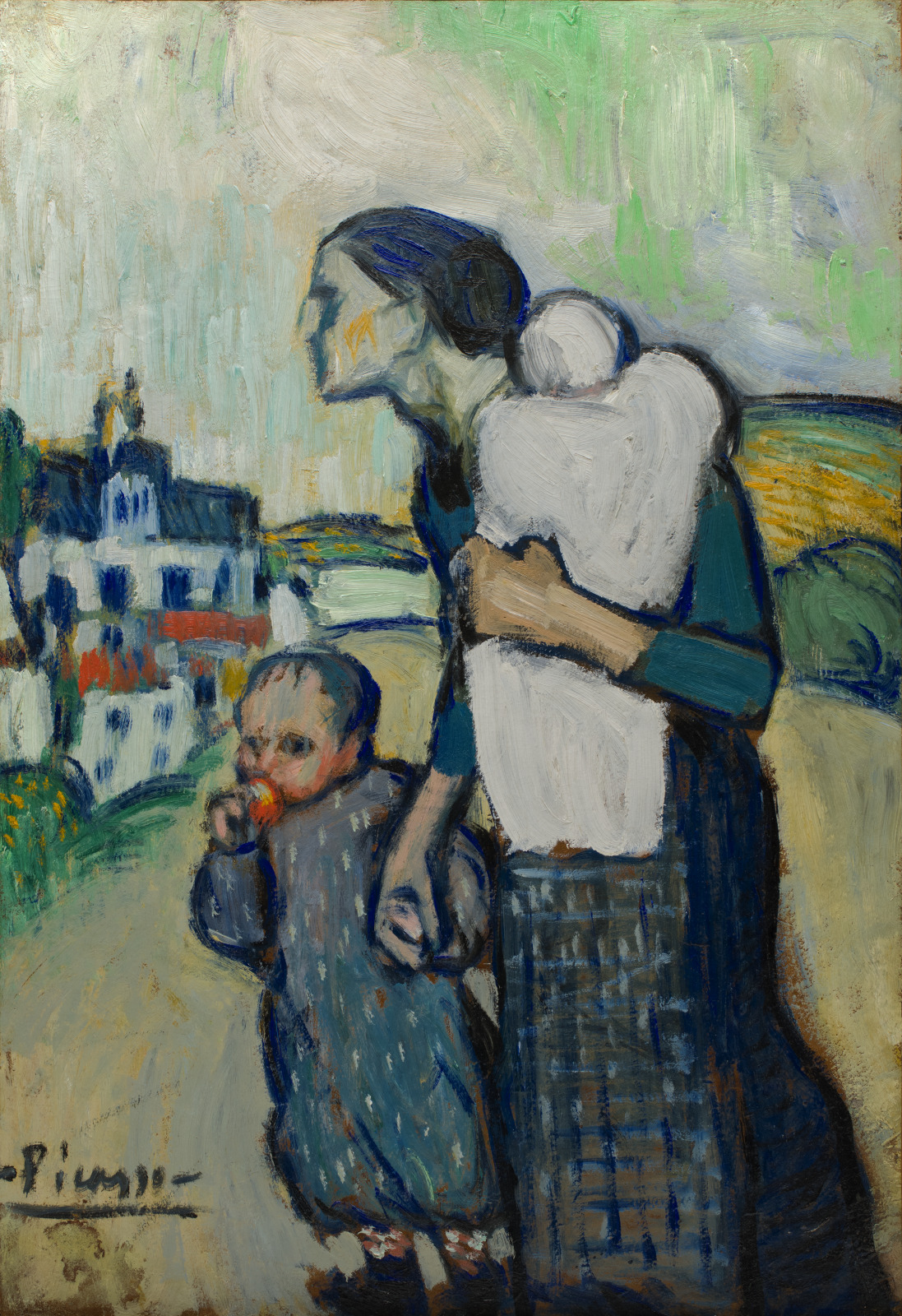
Pablo Picasso, Spanish, 1881–1973; The Mother, 1901; oil on cardboard mounted on panel; 29 1/2 x 20 1/2 inches; Saint Louis Art Museum, Museum Purchase 10:1939
This work, painted by Pablo Picasso when he was just 20 years old, features a mother who grasps her toddler by the hand and holds her infant high against her shoulder. The woman stands resolute on the outskirts of a town or city, looking upon her surroundings with a determined gaze. The blue-gray tone of her skin is a precursor to Picasso’s Blue Period, during which time he depicted several downtrodden members of urban society in a palette of cool colors.
July 26, 2023
Tiger Devouring a Gavial

Antoine-Louis Barye, French, 1796–1875; Tiger Devouring a Gavial, 1831; bronze; 7 3/4 x 19 1/2 x 8 inches; Saint Louis Art Museum, Museum Purchase 256:1915
A tiger grips its claws around a young gavial (a type of crocodile native to India) and devours it as the reptile, in agony, shows its fangs; a turtle emerges from beneath the tiger’s right foreleg. Antoine-Louis Barye carefully studied the anatomy of tigers in the Paris zoo, the Jardin des Plantes, and succeeds in rendering the tense energy of the large cat’s form. This bronze is one of several smaller versions of a successful larger sculpture.
July 23, 2023
Asheville
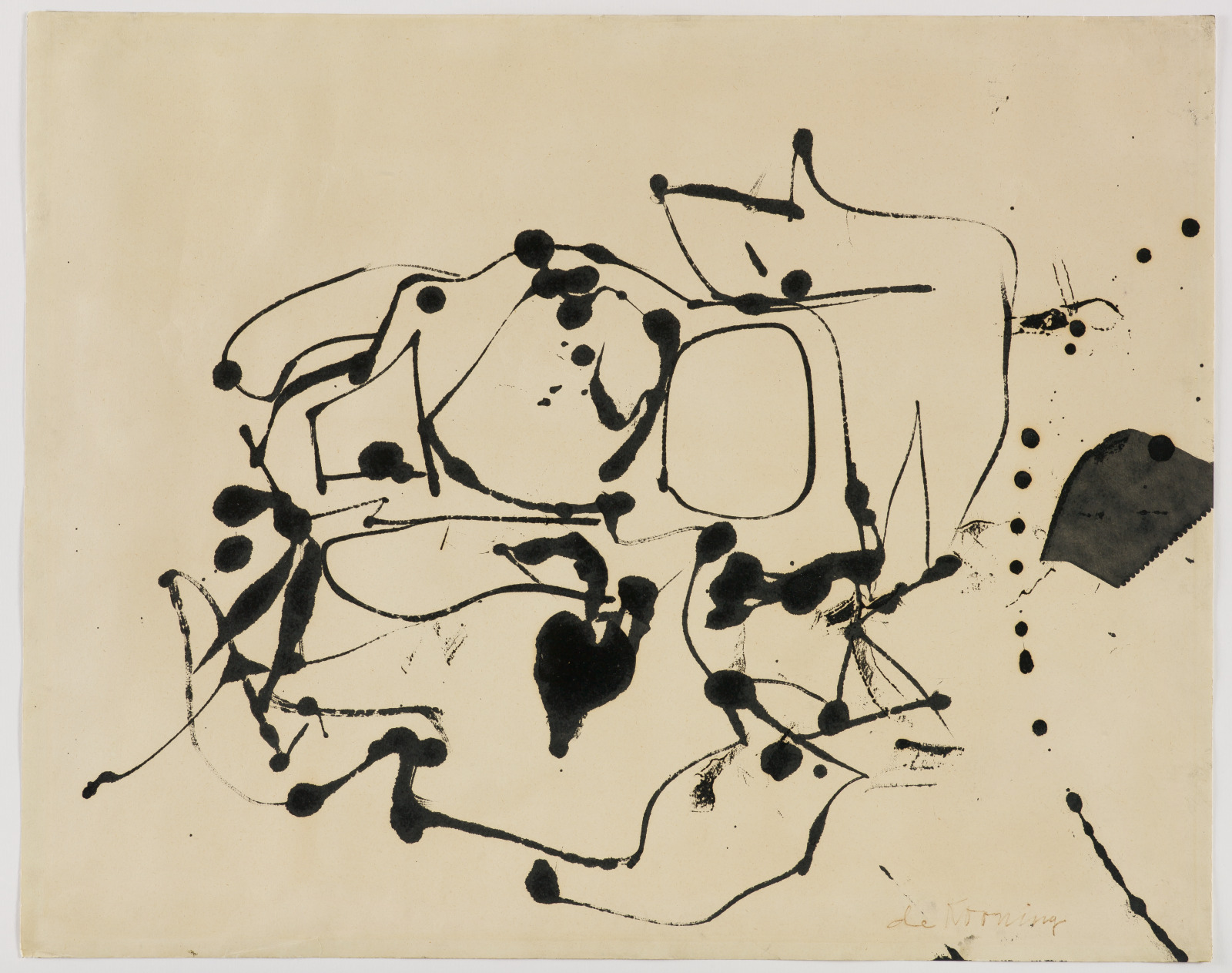
Willem de Kooning, American (born Netherlands), 1904–1997; Asheville, 1948; enamel; 19 1/16 x 24 inches; Saint Louis Art Museum, Museum Purchase 150:1966; © 2023 The Willem de Kooning Foundation / Artists Rights Society (ARS), New York
Using commercial enamel paint on a sturdy sheet of paper, Willem de Kooning captured a vivid sense of movement with the wide variety of marks in this drawing. The black paint pools into a glossy surface where it is thickest. Elsewhere, its surface is matte where the paper absorbed the pigment more fully, and traces of rapid, staccato brush marks appear where paint thins out. When the Museum purchased Asheville in 1966, it was the first work by this important Abstract Expressionist painter to enter the collection.
De Kooning made this drawing during the summer of 1948, when he was invited to teach at Black Mountain College, not far from Asheville, North Carolina. The school, which operated between 1933 and 1957, was a center of interdisciplinary innovation in mid-20th century America.
July 19, 2023
Solidus of Byzantine Empire with Bust of Jesus Christ, minted under Justinian II
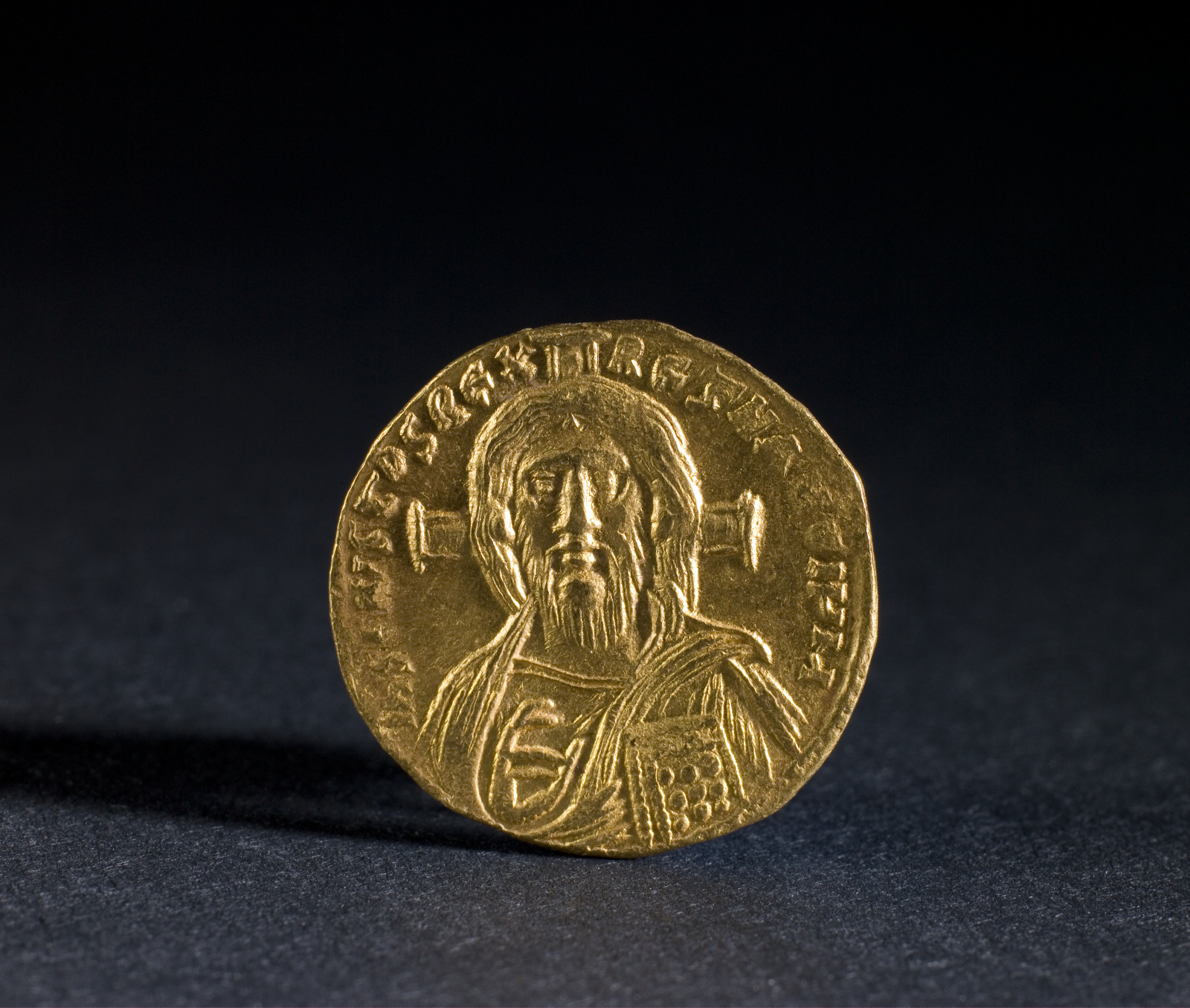
Solidus of Byzantine Empire with Bust of Jesus Christ, minted under Justinian II, 692–695; Byzantine, Turkey, reign of Justinian II; gold; diameter: 3/4 inches; Saint Louis Art Museum, Museum Purchase, by exchange 1:2012
A particularly important moment in the history of Christian art is depicted on this gold coin. A bearded image of Christ Pantokrator (Ruler of All), inspired by earlier Greco-Roman images of the god Zeus, dominates the obverse (front). In his left hand, Christ holds the book of Gospels; his right hand is raised in a gesture of benediction. On the reverse (see image), the emperor Justinian, rendered at a smaller scale, identifies himself as a “servant of Christ.” This imagery represents the first time in the history of the Byzantine Empire that Jesus Christ appears as the preeminent image on coinage, with the emperor relegated to subservient status on the back.
July 14, 2023
Helmet Mask
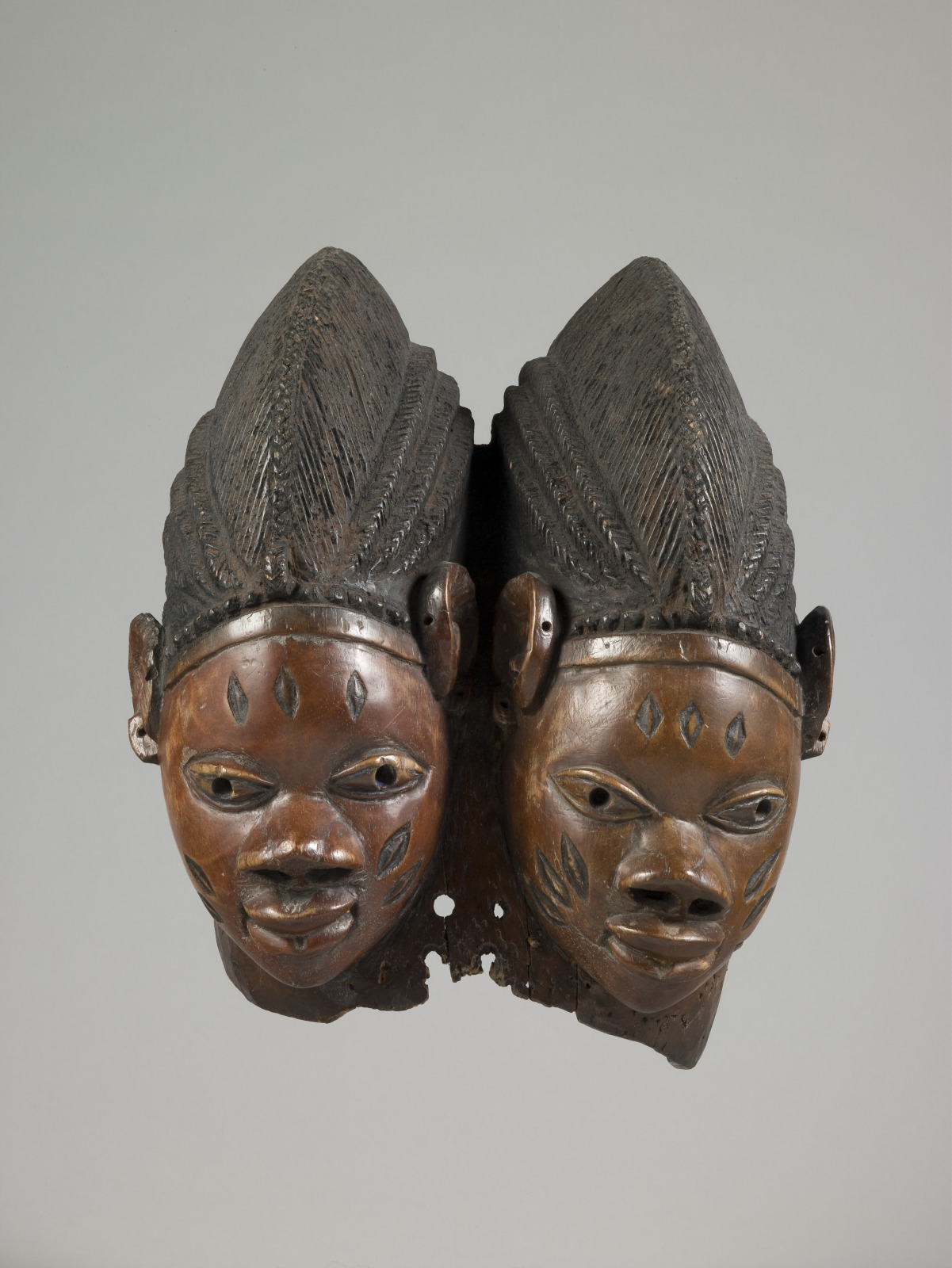
Oduntan Aina, Yoruba (Nigeria); Helmet Mask, early–mid-20th century; wood, pigment, fiber; 13 1/2 x 10 1/8 x 8 11/16 inches; Saint Louis Art Museum, Museum Shop Fund 67:1995
This mask represents twins. Gelede masks such as this portray all sorts of characters in the community and are performed by male dancers at festivals honoring women. Twins and their mothers are especially revered in Yorubaland; the Yoruba have among the highest per capita occurrence of twin births in the world. Gelede performances are particularly aimed at appeasing the powerful Great Mothers, including both elderly women of the community and the ancestors of Yoruba society. The Great Mothers may bring either great fortune or great trouble to the community if not pleased. Gelede performances entertain, educate, and document elements of everyday life.
July 9, 2023
The Dreamer
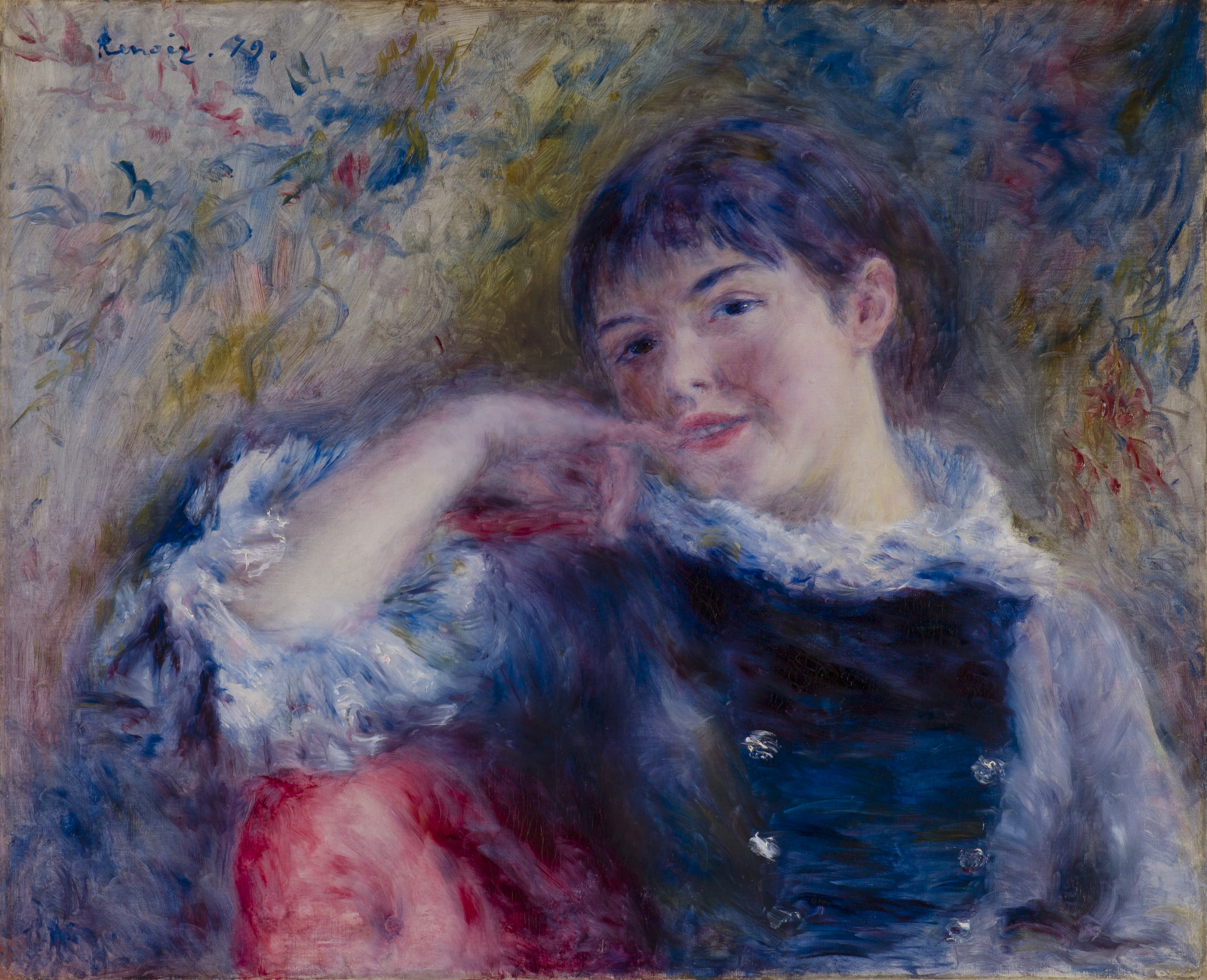
Pierre-Auguste Renoir, French, 1841–1919; The Dreamer, 1879; oil on canvas; 20 1/8 x 24 3/8 inches; Saint Louis Art Museum, Museum Purchase 5:1935
This vibrant, colorful work depicts a young, unidentified model that Pierre Auguste Renoir painted at his studio in the Montmartre district of Paris. He used his characteristically feathery brushwork, particularly in his representation of the background floral wallpaper. The mild eroticism of the sitter’s gaze—the English painter Walter Richard Sickert later described this as a “saucy” portrait—is enhanced by the way in which she idly places her finger in her mouth.
July 4, 2023
Marching Band

Helen LaFrance, American, 1919–2020; Marching Band, 1994–99; oil on canvas; 18 x 24 inches; Saint Louis Art Museum, Funds given by Lotsie and Rick Holton 204:2019; © Estate of Helen LaFrance
Marching Band represents Helen LaFrance’s memory of a 4th-of-July parade in Louisville, Kentucky. Recognizable elements of the holiday include flags and red, white, and blue balloons that become abstracted dots in the sky. Central to the scene, a marching band parades down the street. The difference in scale between the building, marching band, and spectators demonstrates a wonderfully personal take on perspective. While LaFrance understood technical aspects of painting, such as realistic perspective, she preferred flat patterns and skewed space for the way in which they create a more animated vision.
Today’s Object of the Day is currently on view in Memory Painting: Helen LaFrance and the American Landscape, located in the Alison and John Ferring Gallery 212S.
July 1, 2023
To Sit (with Pochoir)
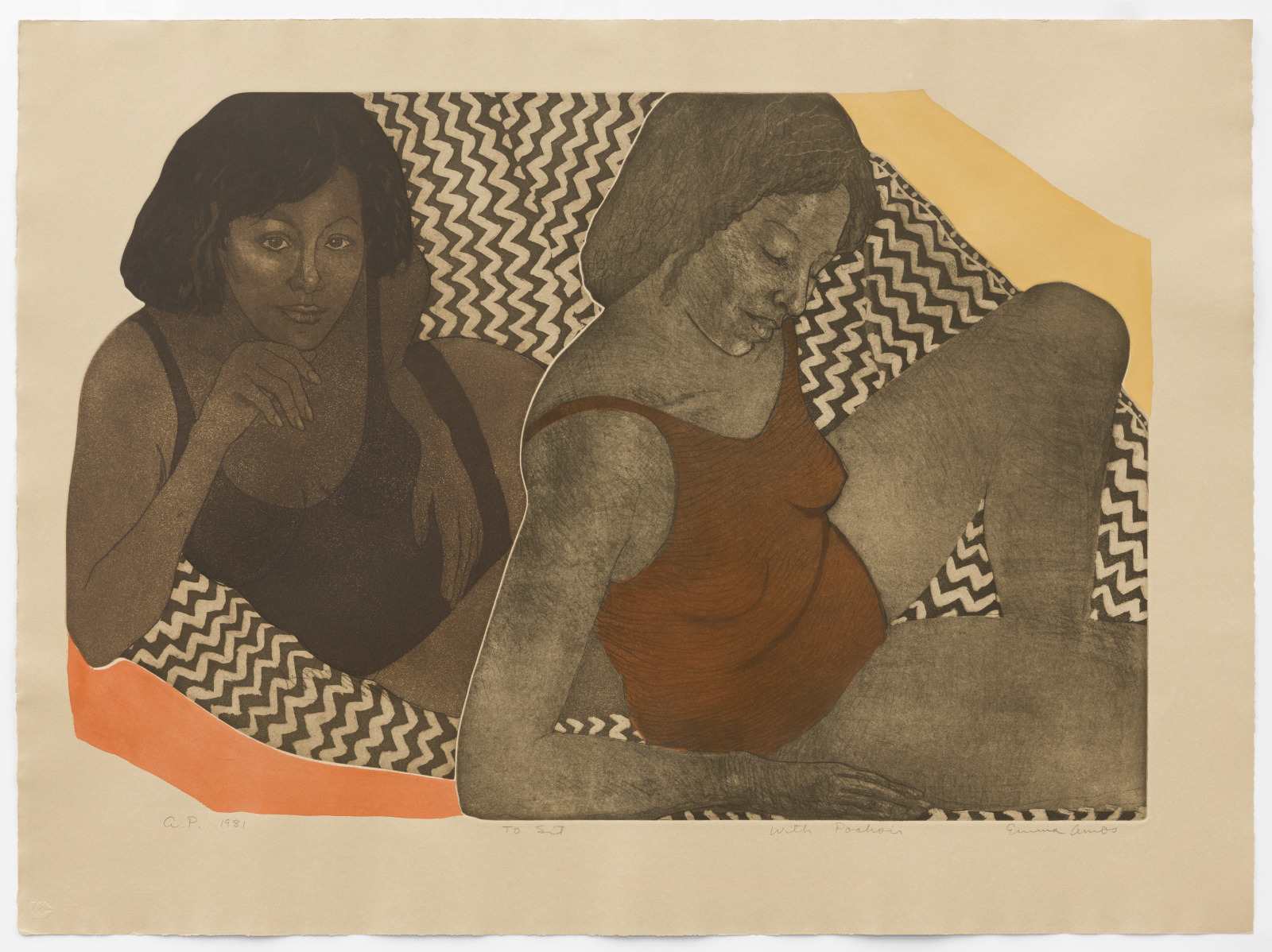
Emma Amos, American, 1938–2020; To Sit (with Pochoir), 1981; etching, aquatint, and styrene stencil; image: 25 x 36 inches, sheet: 29 1/2 x 40 inches; Saint Louis Art Museum, The Sidney S. and Sadie Cohen Print Purchase Fund 100:2022; © Estate of Emma Amos, Courtesy of RYAN LEE Gallery, New York
Two women recline comfortably against a patterned textile. Emma Amos cut the printing plate to draw particular attention to their bodily presence by outlining a knee, elbows, shoulders, and hair. In an act that fragments and completes the composition, she sliced the plate in half, leaving a thin line of paper as a bright juncture between the figures. Adding another layer, she used a stencil technique called pochoir to apply the color by hand. These experiments with artistic process brought visible form to Amos’s larger project of reclaiming and expanding the representation of Black bodies. This print is the first by Amos to enter the Museum’s collection.
June 23, 2023
Betsy

Jess T. Dugan, American, born 1986; Betsy, 2013, printed 2017; inkjet print; 40 x 32 inches; Saint Louis Art Museum, Funds given by Friends of the Artist 428:2018; © Jess T. Dugan
Betsy is one of American photographer Jess Dugan’s most engaging photographs. The subject of the image, standing in her kitchen in Chicago, exudes both a vulnerability and strength. Dugan references earlier traditions of formal portraiture within a decidedly intimate domestic setting. They selected this image for the cover of their publication Every Breath We Drew, 2015.
Dugan engages with issues of sexuality, identity, and community. They have been photographing with LGBTQ communities for the past decade, exploring inclusive notions of gender within the formal parameters of color and natural lighting.
Each Friday in June the Museum’s Object of the Day will feature a work of art in celebration of Pride month. Additionally, enjoy virtual programs offered by local artist Jess Dugan here.
June 19, 2023
Painting (5.12.11)
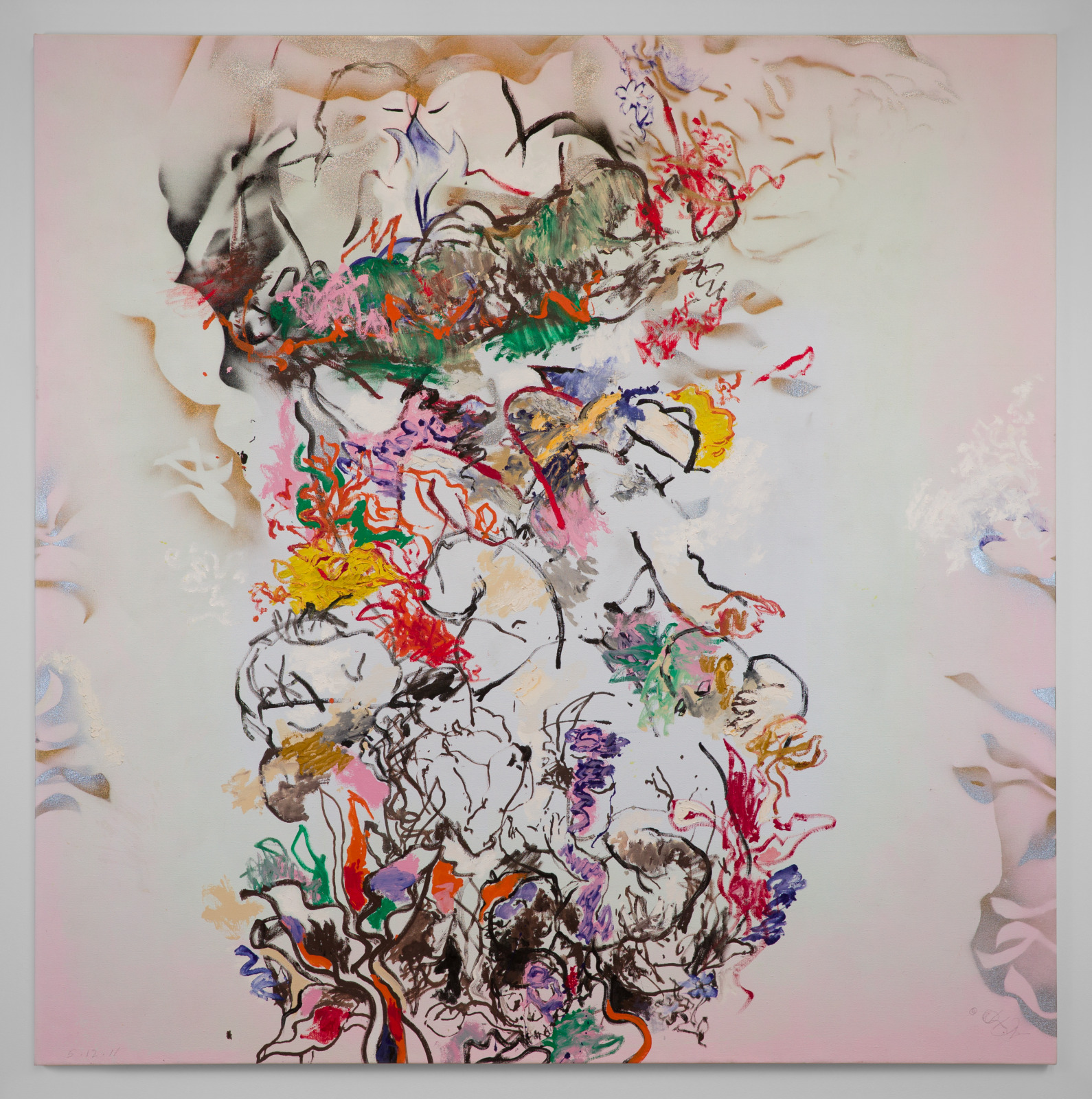
Oliver Lee Jackson, American, born 1935; Painting (5.12.11), 2011; oil-based pigment, acrylic, and silver and gold spray enamel on gessoed linen; 108 x 108 inches; Saint Louis Art Museum, Friends Fund 12:2022; © Oliver Lee Jackson
Figural forms emerge within a central vortex of swirling lines and colors. At bottom center are a skull and several crouching figures, including one who points and wears a hat. They are surrounded by a field of soft pink, gold, and silver, which was airbrushed and spray-painted onto the canvas. These figurative elements are crucial to the construction of Oliver Lee Jackson’s works, or what he calls their “actual tangible effect.” The dualities at play—hard and soft, abstraction and figuration, color and space—are fundamental to Jackson’s practice. They embody his lifelong exploration of materials, pushing the boundaries of painting as an artistic medium.
June 16, 2023
Grey Space (distractor)

Julie Mehretu, American (born Ethiopia), born 1970; Grey Space (distractor), 2006; acrylic and ink on canvas; 72 x 96 inches; Saint Louis Art Museum, Gift of the Honorable and Mrs. Thomas F. Eagleton by exchange, Siteman Contemporary Art Fund, and funds given by Emily Rauh Pulitzer 1:2010; © Julie Mehretu
Brightly colored geometric forms float across this canvas and propel dynamic motion while heightening the illusion of vast space. The artist produced such effects of constant activity and endless expansion by diligently applying multiple layers of ink and acrylic pigment. Through her characteristic use of drawing, Julie Mehretu built up the surface, mining imagery from maps, diagrams, architectural blueprints, and corporate logos. The result is a visual collision of bold color and detailed linear configurations, offering distinct modes of viewing—from up close and afar.
June 15, 2023
Golden and Blue Bolero
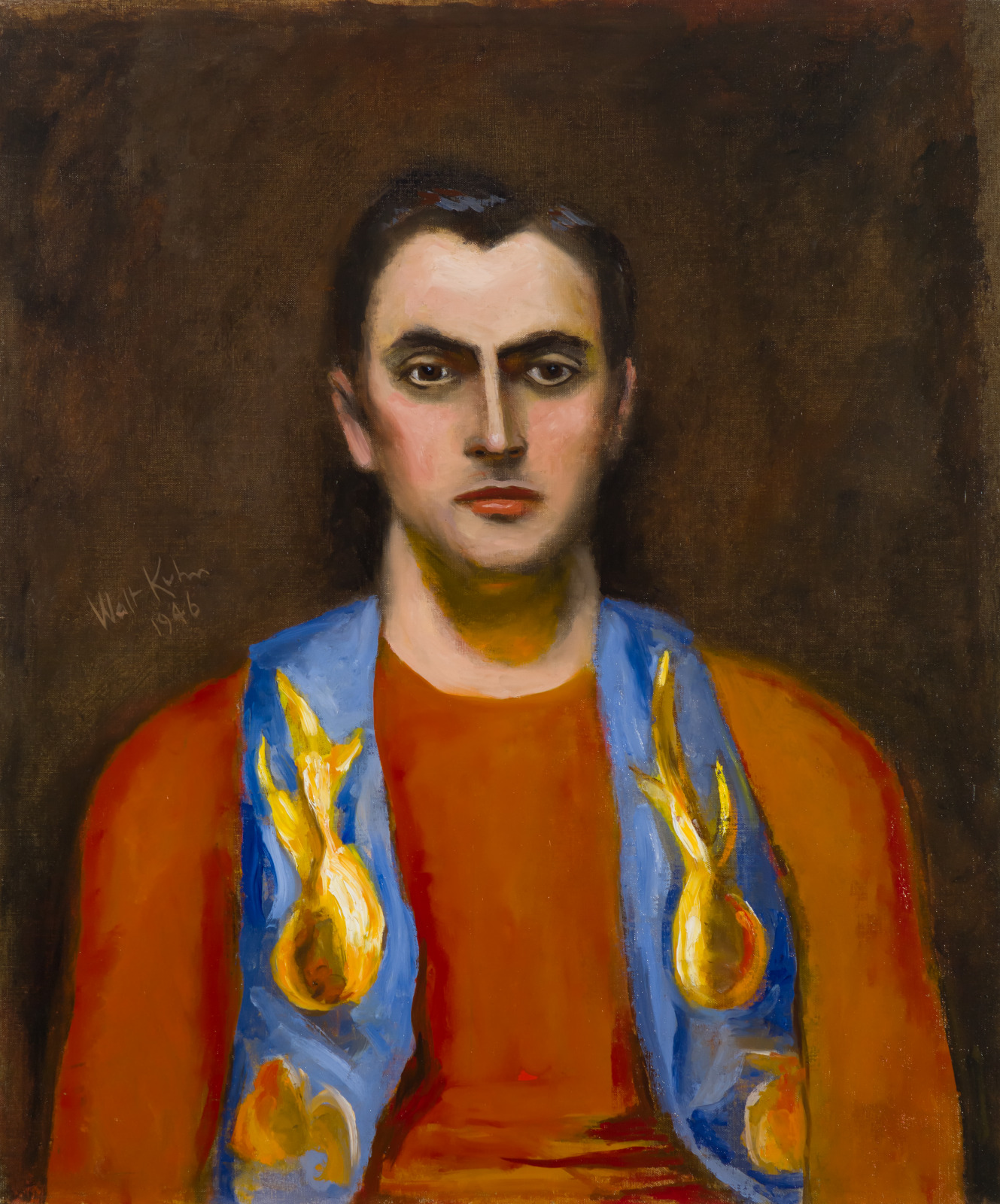
Walt Kuhn, American, 1877–1949; Golden and Blue Bolero, 1946; oil on canvas; 24 x 20 inches; Saint Louis Art Museum, Gift of John and Susan Horseman, in honor of Melissa Wolfe, Curator of American Art 101:2019
Bold strokes of red, orange, and yellow flicker across this man’s bolero vest and reflect in the shadows beneath his chin. The painting’s fiery, primary hues are at odds with its subject’s impassive expression. Walt Kuhn is renowned for his portraits of circus performers, as seen here. His figures are depicted frontally, holding a deadpan gaze contrary to their expected joyfulness. Though anonymous and mysterious, this man conveys a dignity and psychological presence often denied to itinerant performers.
June 9, 2023
Untitled (Face in Dirt)

David Wojnarowicz, American, 1954–1992; Untitled (Face in Dirt), 1991; gelatin silver print; image: 19 x 19 3/4 inches, sheet: 19 7/8 x 24 inches; Saint Louis Art Museum, Gift of Ted L. and Maryanne Ellison Simmons; and funds given by the Marian Cronheim Trust for Prints and Drawings, Museum Purchase, Friends Fund, The Sidney S. and Sadie Cohen Print Purchase Fund, and the Eliza McMillan Purchase Fund 858:2020; Courtesy of the Estate of David Wojnarowicz and P·P·O·W, New York
Is this man emerging from or sinking into the earth? The artist staged this self-portrait in Chaco Canyon in New Mexico just over a year before he died of AIDS. Fueled by bigotry, political leaders dismissed and downplayed the new virus, delaying research and medical care that led to thousands of preventable deaths. Reflecting on mortality in the age of AIDS, David Wojnarowicz wrote, “The first minute after being diagnosed you are forever separated from what you had come to view as your life or living …”
June 8, 2023
Maquette for Sculpture Screen at Lambert-St. Louis Airport Terminal

Harry Bertoia, American (born Italy), 1915–1978; Maquette for Sculpture Screen at Lambert-St. Louis Airport Terminal, 1954–55; metal and paint on metal; 8 x 48 x 2 1/4 inches; Saint Louis Art Museum, Funds given by Mrs. Charles W. Lorenz, the E. Reuben and Gladys Flora Grant Charitable Trust, and the Gary Wolff Family 39:2001; © 2023 Estate of Harry Bertoia / Artists Rights Society (ARS), New York
This scale model is of a sculpture that was designed by Harry Bertoia for the Lambert-St. Louis Air Terminal when it opened in 1956. The 48-foot-long screen delineated the space between the main lobby and the Kitty Hawk dining room. Vividly colored panels suspended within the screen’s framework appeared to flutter as people walked by, creating a delightful sense of rhythm and movement. On one side the panels were painted in oranges, reds, and yellows; the other side had cooler reds, blues, and fuschias. The screen was removed from the terminal sometime between 1965 and 1967 when the airport expanded. This maquette is the only surviving document of both the sculpture and the original paint scheme.
June 7, 2023
Portrait of a Lady, probably Camilla Martelli de’Medici
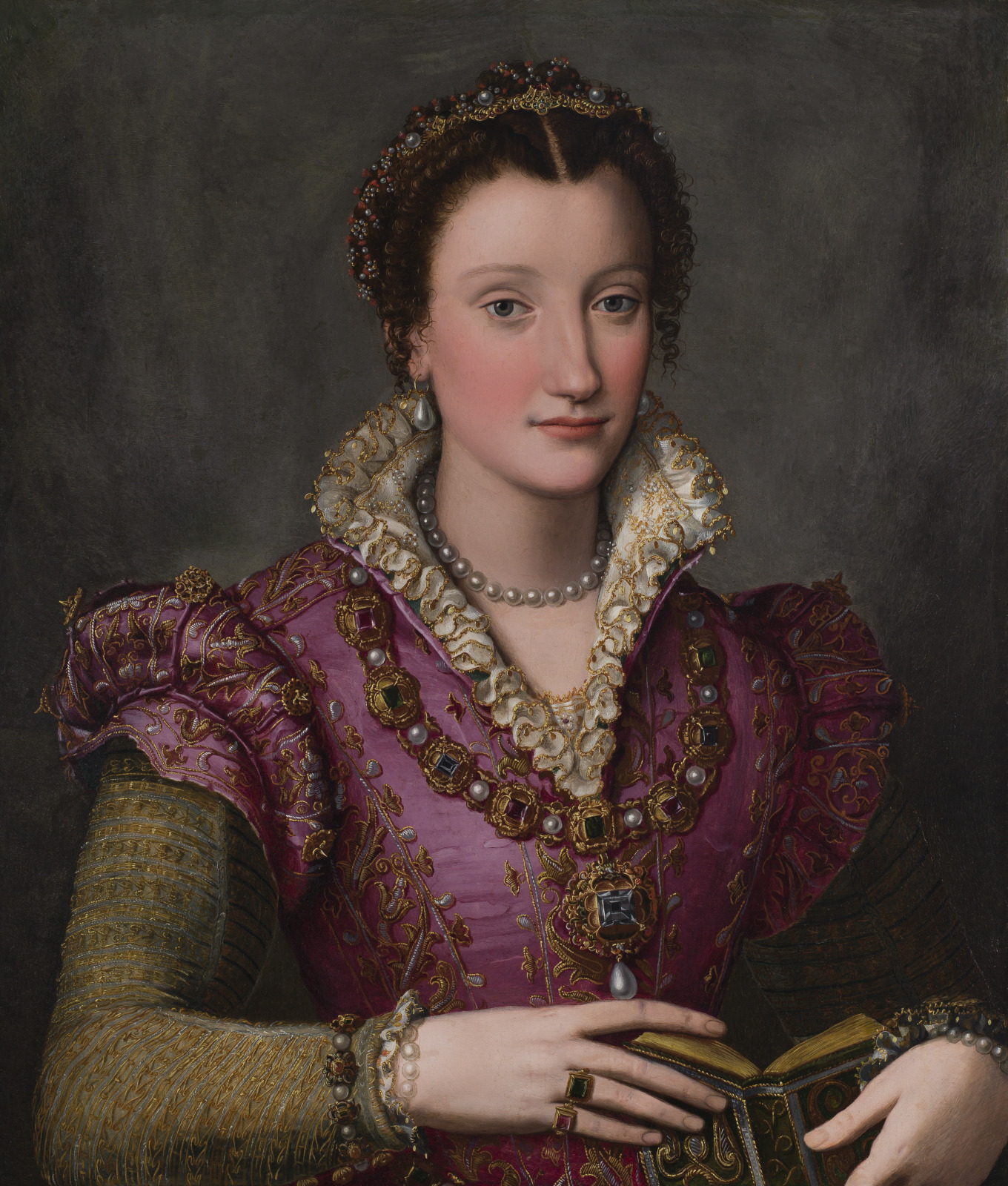
Alessandro Allori, Italian, 1535–1607; Portrait of a Lady, probably Camilla Martelli de'Medici, 1570s; oil on canvas, mounted on board; 27 x 23 1/4 inches; Saint Louis Art Museum, Bequest of Mary Plant Faust 9:2017
This woman’s exquisite attire indicates her likely wealth and importance. Gold disks decorate the edge of her collar while rubies and emeralds adorn her hair. She wears an extravagant necklace with a large cut diamond and luxurious pearl. The fashion suggests the portrait was made in the 1570s. It is possibly a representation of Camilla Martelli, mistress and later second wife of the Grand Duke of Tuscany, Cosimo I de’Medici. Unlike other portraits depicting individuals who themselves may have collected art or created a studioli, or private studies, Camilla herself would not have had access to such a study room. However, the Medici family had one of the most celebrated studioli in all of Italy.
June 4, 2023
The Port of St. Tropez

Paul Signac, French, 1863–1935; printed by Auguste Clot, French, 1858–1936; published by Ambroise Vollard, French, 1867–1939; The Port of St. Tropez, 1897–98; lithograph; 17 1/8 x 13 inches; Saint Louis Art Museum, Museum Purchase 76:1973
Paul Signac depicted the old port of St. Tropez, in southern France, from the harbor. The scene glistens in an effect achieved with small dots of unmixed color and, significantly, the white of the paper. The tower of the village church, Nôtre-Dame-de-l’Assomption, rises in the background amid clouds that are made only of the paper itself.
The artist was among the most articulate proponents of the movement now known as Neo-Impressionism, in which color was applied to canvas or paper in small, individual units. It is the role of the viewer’s eye and brain, rather than the painter with his brush, to complete the blending of the hues. Signac drew the image on specially prepared transfer paper, which the printer would have transferred to a series of stones, one for each color.
June 3, 2023
Permelia Redmon Wheeler (Mrs. Charles Wheeler)

Lucinda Redmon Orear, American, 1823–1852; Permelia Redmon Wheeler (Mrs. Charles Wheeler), c.1845; oil on canvas; 35 x 27 inches; Saint Louis Art Museum, Gift of Sydney M. Shoenberg Sr. 190:1951
-
See Companion Image
![1911951dig_o2]()
Lucinda Redmon Orear, American, 1823–1852; Charles Wheeler (1795-1873), c.1845; oil on canvas; 35 x 31 inches; Saint Louis Art Museum, Gift of Sydney M. Shoenberg Sr. 191:1951
Permelia Wheeler gestures gracefully to the rose pinned to her bodice; its color echoed in her book. The palette of pinks and blues along with the elegant patterns and curves establish a unified, delicate tone throughout the portrait. Permelia’s sister, Lucinda, created both this picture and a companion portrait of Permelia’s husband, Charles Wheeler.
Permelia and Lucinda’s family moved from Kentucky to St. Charles, Missouri, where they owned land next to Linden Wood School for Girls, now Lindenwood University. The Wheeler portraits reveal typical signs of a self-taught artist, such as inconsistencies in anatomy, perspective, and shading. Nevertheless, their refined charm and competence suggest Lucinda may have developed her natural ability through study at the nearby school, which offered art instruction—a rare opportunity for a woman at that time. Permelia’s grandson donated both portraits to the Museum.
May 27, 2023
Betalo Rubino, Dramatic Dancer

Robert Henri, American, 1865–1929; Betalo Rubino, Dramatic Dancer, 1916; oil on canvas; 77 1/4 x 37 1/4 inches; Saint Louis Art Museum, Museum Purchase 841:1920
Confident brushstrokes and bold color, as seen here, are hallmarks of Robert Henri’s best work. One reviewer commented, “one is struck immediately with the strength of the artist’s color, and if one may say it, the daring of it.”
Henri was captivating as a teacher and a painter. He advocated his students search for subjects in the city streets, which were teeming with the vitality of working-class and immigrant crowds. Henri lectured, “What we need is an art that expresses the spirit of the people of today.” The flamboyant persona of Betalo Rubino, a Spanish dancer living in New York City, was a perfect fit for Henri’s dramatic palette.
May 25, 2023
Danaë
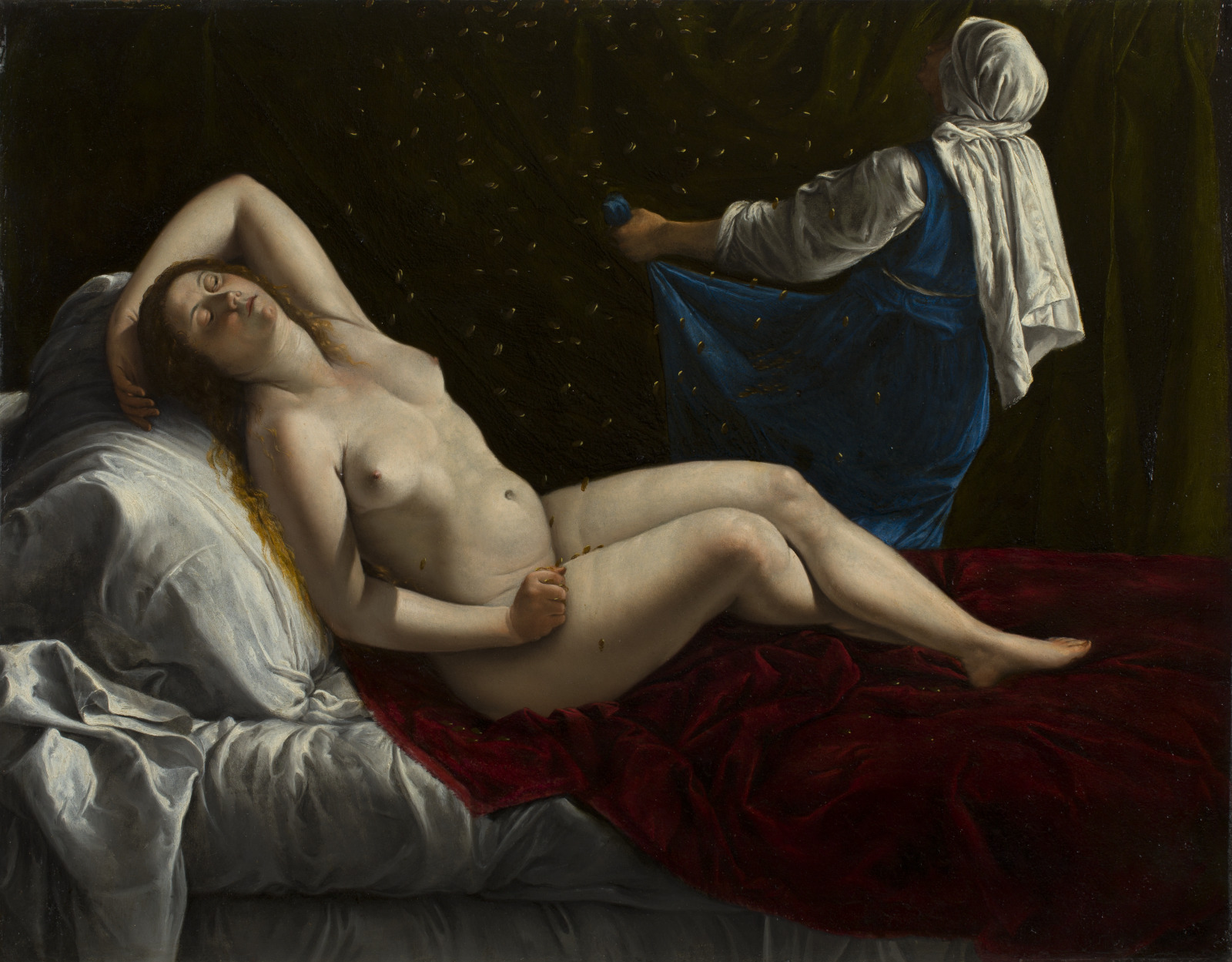
Artemisia Gentileschi, Italian, 1593–c.1656; Danaë, c.1612; oil on copper; 16 1/4 x 20 3/4 inches; Saint Louis Art Museum, Museum Purchase and gift of Edward Mallinckrodt, Sydney M. Shoenberg Sr., Horace Morison, Mrs. Florence E. Bing, Morton D. May in honor of Perry T. Rathbone, Mrs. James Lee Johnson Jr., Oscar Johnson, Fredonia J. Moss, Mrs. Arthur Drefs, Mrs. W. Welles Hoyt, J. Lionberger Davis, Jacob M. Heimann, Virginia Linn Bullock in memory of her husband, George Benbow Bullock, C. Wickham Moore, Mrs. Lyda D'Oench Turley and Miss Elizabeth F. D'Oench, and J. Harold Pettus, and bequests of Mr. Alfred Keller and Cora E. Ludwig, by exchange 93:1986
Artemisia Gentileschi excelled at capturing textures, as seen in this reclining figure’s golden hair, the lush fabrics, and metal coins that fall on bare flesh. Such sensuous effects are appropriate for the ancient Greek story of Danaë, a young woman whose father confined her to prevent her from becoming pregnant. An oracle had predicted she would bear a son who would kill her own father. Zeus, king of the gods, was able to thwart the plan by transforming himself into a golden rain, which allowed him to enter the enclosed chamber where Danaë was held captive. After returning to his god-like form, he impregnated Danaë. Painted when Gentileschi was only 19 years old, this picture reflects the skills she learned from her father, Orazio, to paint subtle flesh tones and rich surfaces.
May 22, 2023
Total Transparency Filter (Portrait of N)
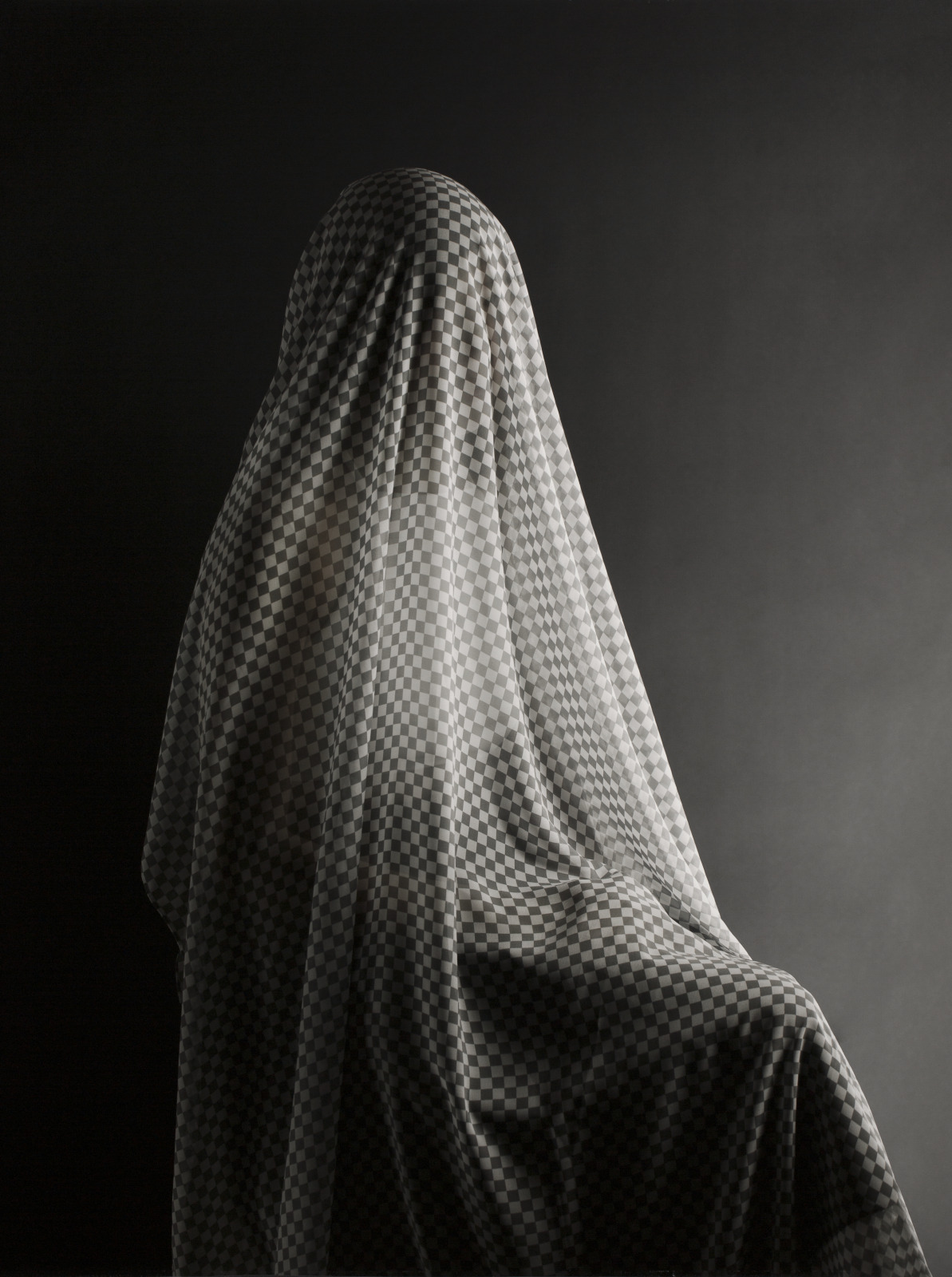
Stephanie Syjuco, American (born Philippines), born 1974; Total Transparency Filter (Portrait of N), 2017; archival pigment print; 40 x 30 inches; Saint Louis Art Museum, Funds given by Margery Campbell Fort and Jeffrey T. Fort; Gift of Stephen Bunyard, by exchange 91:2019; Courtesy of the artist, Catharine Clark Gallery, San Francisco and RYAN LEE Gallery, New York
In this print, a seated figure is draped in a checkered cloth. The pattern is the default background of the image-manipulation software Photoshop—the transparency filter to which the title refers. The subject was a student in the federal government’s Deferred Action for Childhood Arrivals (DACA) program. Through this work Stephanie Syjuco, a Filipino-American artist, comments on the uncertain position of immigrants in the United States, primarily their risk of being made invisible. Syjuco uses fabric props to complicate the legibility of the photographic image, defying expectations of what a studio portrait should convey.
May 18, 2023
Peasant Interior with Woman at a Well
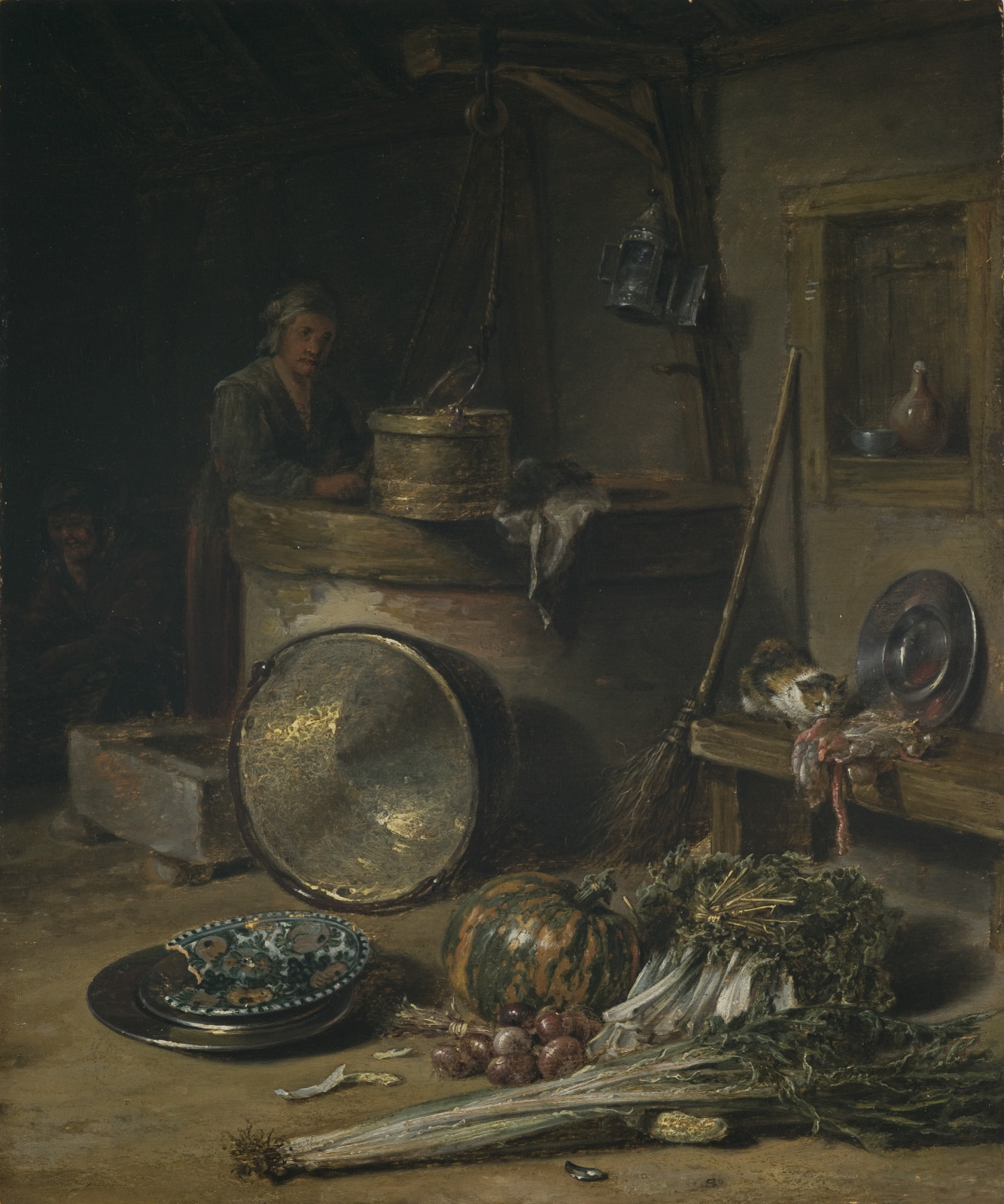
Willem Kalf, Dutch, 1619–1693; Peasant Interior with Woman at a Well, c.1642–43; oil on panel; 10 x 8 1/4 inches; Saint Louis Art Museum, Museum Purchase 93:1947
The accomplished still life in the foreground is the true focus of this small composition. In the background, there are two peasant figures and a hungry cat perched on a wooden bench at right. The artist painted this picture relatively early in his career when he lived in Paris and favored compositions using close-up groupings of objects juxtaposed to figures set deep in the background. Willem Kalf went on to become one of the foremost still-life painters of the second half of the 17th century. He specialized in extravagant objects such as delicate transparent glassware, sumptuous fabrics, and imported Chinese porcelains. His interest in ceramics can be discerned in the large plate that lies atop two pewter platters on the floor.
May 15, 2023
Prayer Rug (sajjāda) or Wall Hanging with Design of Flowering Tree

Prayer Rug (sajjāda) or Wall Hanging with Design of Flowering Tree, 19th century; Indian, Kashmiri; wool with embroidery; 69 1/2 x 40 1/2 inches; Saint Louis Art Museum, Museum Purchase 126:1916
This rectangular textile depicts a flowering tree emerging from a vase above a stylized urn. These elements are set within a central, cream-colored prayer niche (mihrab) with a cusped arch at the top. The wide borders on three sides of the textile feature large and small pairs of almond or pine cone-shaped motifs with sharp curved upper ends. Originating from Persia, where they are known as boteh, these motifs became very common in India, where they are called buta. All the decoration is embroidered in multicolored silks, predominantly in shades of red, on an ivory wool background.
This textile was made in Kashmir, now part of the state of Jammu-Kashmir in northern India. Its similarity to Mughal tent panels with prayer niches and to hangings for royal audiences suggests that it may have hung vertically rather than used on the floor.
May 12, 2023
Plank Mask
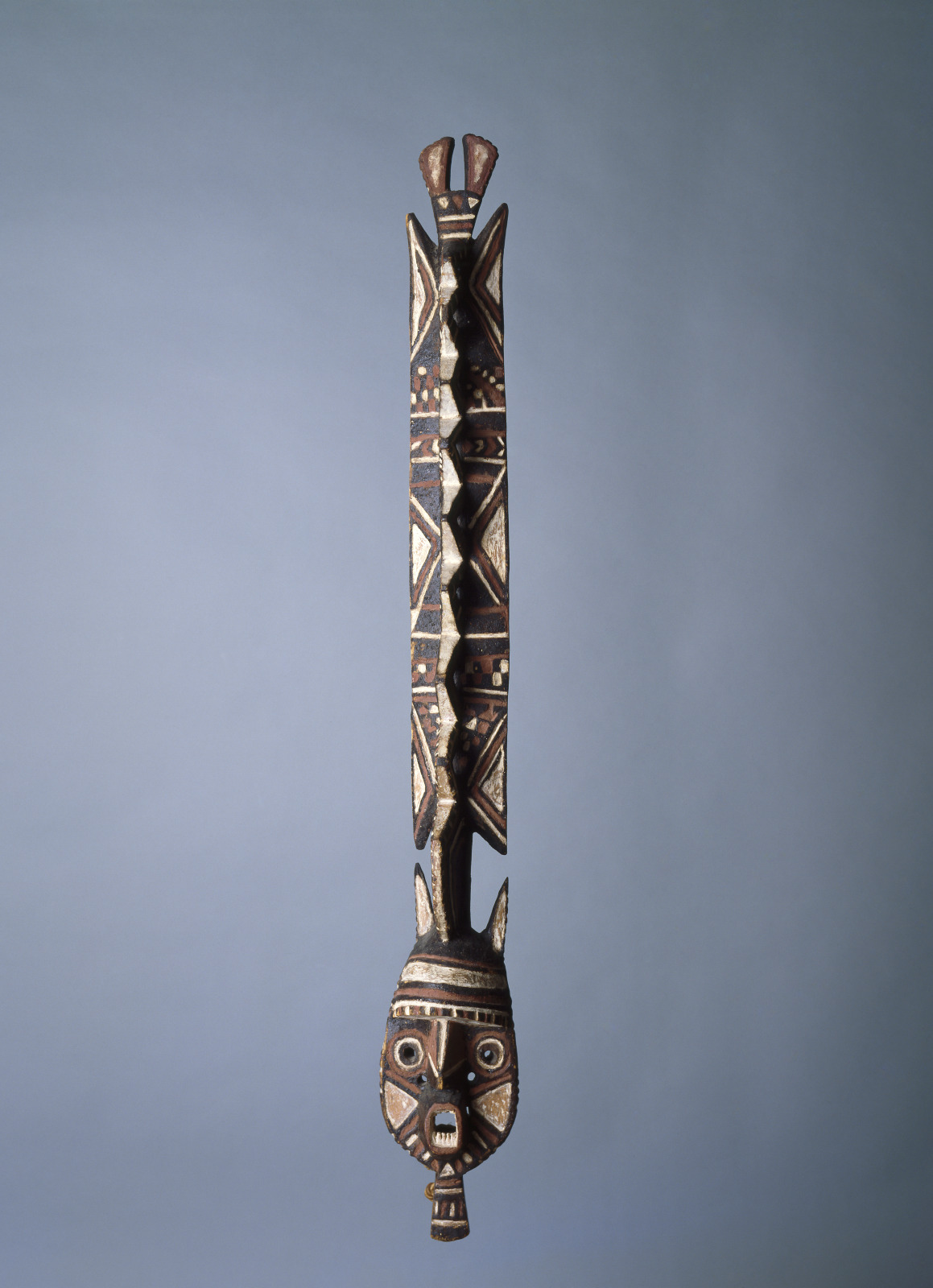
Winiama artist, Burkina Faso; Plank Mask, 20th century; wood, pigment; 51 3/16 x 6 3/8 x 5 1/4 inches; Saint Louis Art Museum, Gift of Dr. Donald M. Suggs 221:1977
Masks from Burkina Faso are famous for their dramatic forms and graphic surface patterning, as seen in this example. Enhanced by vivid, contrasting pigments, this mask and the one to the left each feature a plank crest or superstructure that soars overhead. Rising high into the air, swirling, and bobbing when danced by a masquerader, these masks and their dramatic scale and movements would emphasize the otherworldliness of the spirits they represent. The abstract geometric designs of plank masks could suggest the presence of various, invented protective spirits that guard and guide communities and accompany the spirits of the dead into the ancestral realm.
May 9, 2023
Parfleche
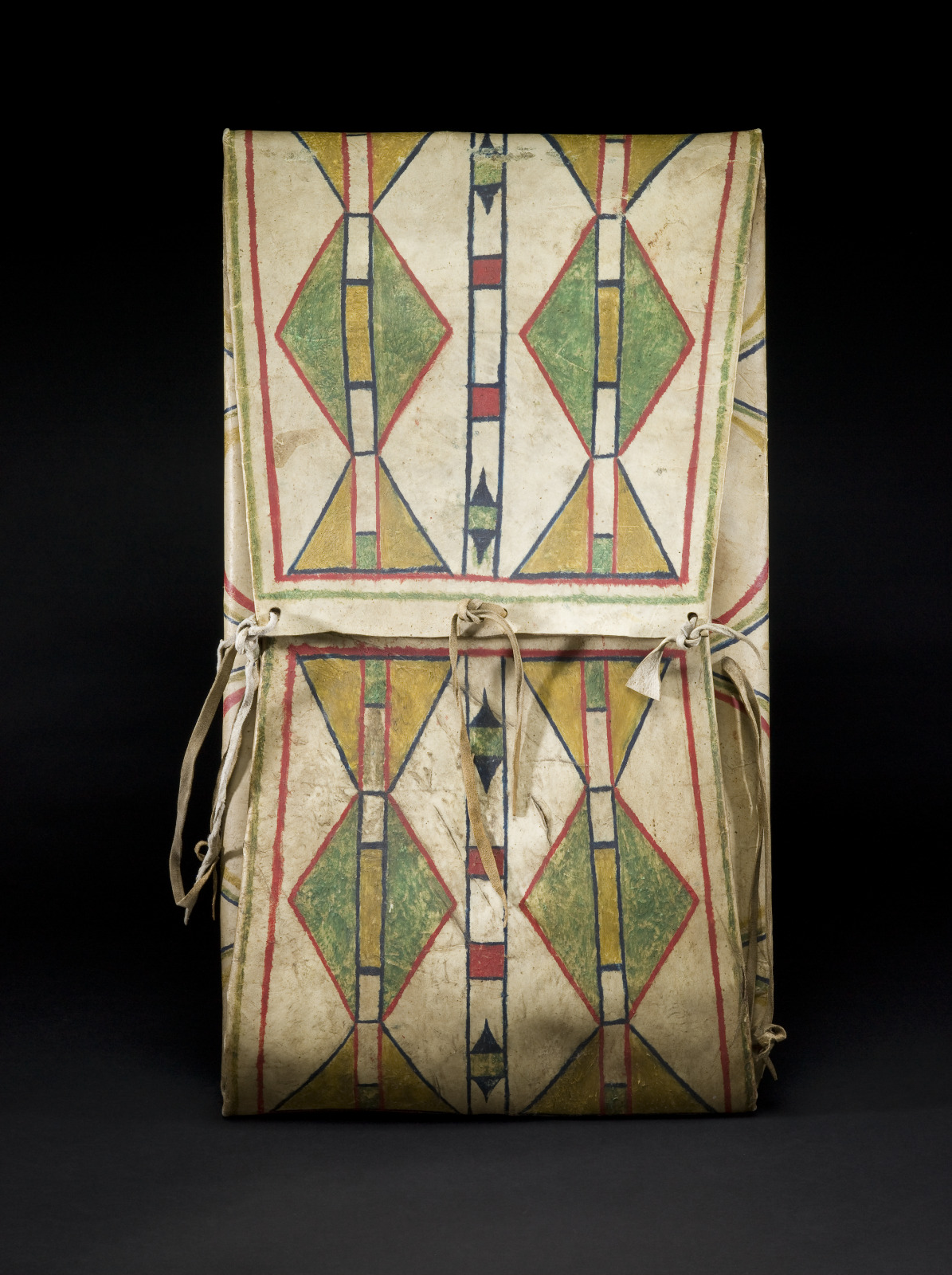
Niitsitapi (Blackfoot) artist; Parfleche, c.1890; hide, leather, and pigment; 28 x 16 x 5 inches; Saint Louis Art Museum, The Donald Danforth Jr. Collection, Gift of Mrs. Donald Danforth Jr. 105:2010
A Niitsitapi woman decorated this hide while it was still moist, enabling the vivid green, gold, blue, and red paint to saturate the surface rather than remain on top. To prepare the material for painting, the artist first scraped and washed the hide, stretched it horizontally, and coated it with a glutinous wash. She painted the flat hide in specific sections that, when folded in the envelope form you see here, appear solely on front-facing planes. The painted sections align, allowing two rows of diamonds to run continuously across the top and bottom panels.
May 7, 2023
Bahrām Gūr in the Black Pavilion, folio from a manuscript of the Khamsa of Niẓāmī
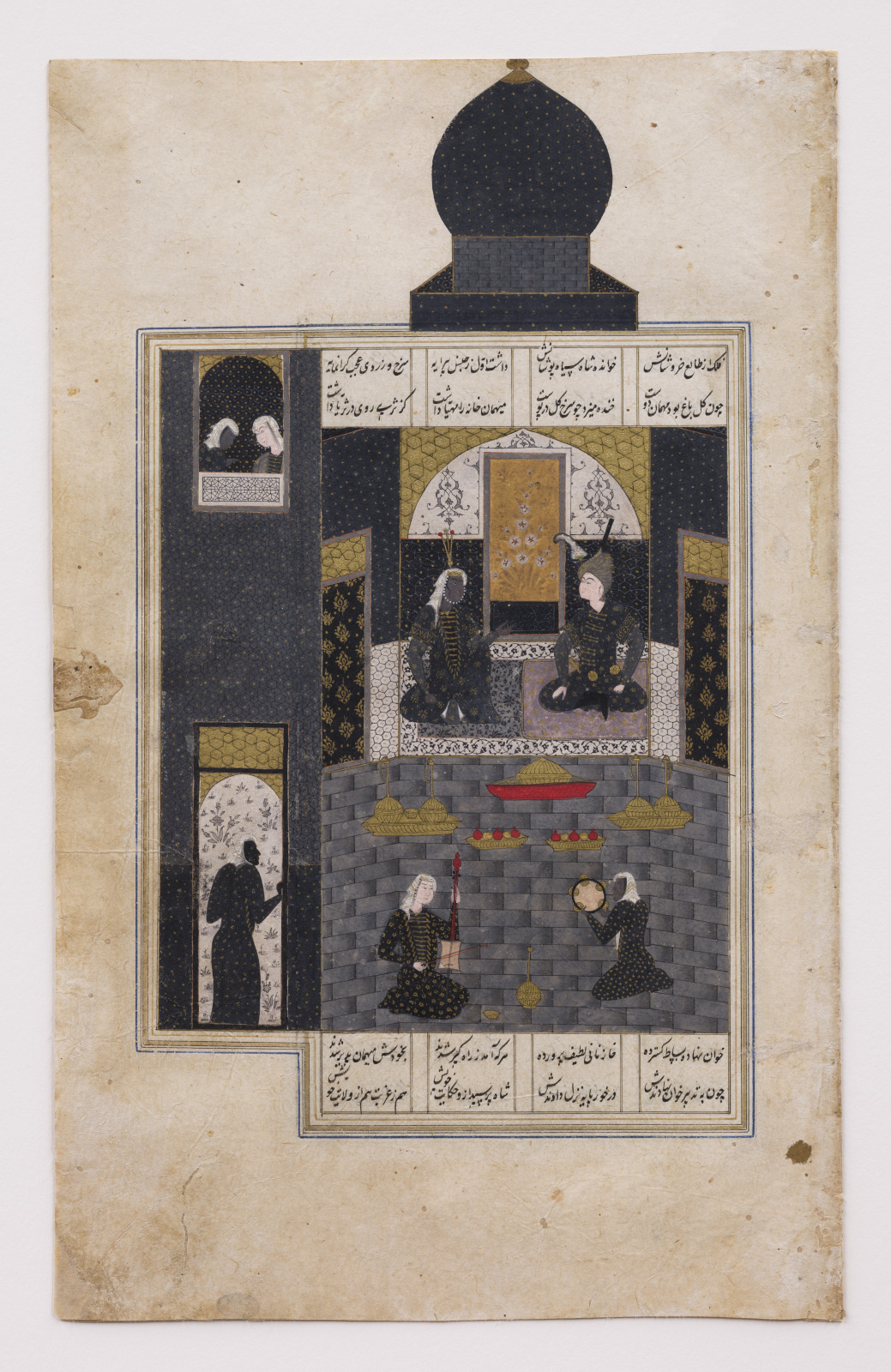
Bahrām Gūr in the Black Pavilion, folio from a manuscript of the Khamsa of Niẓāmī, early to mid-16th century; Persian, Safavid dynasty; ink, opaque watercolor, and gold on paper; image: 10 1/16 x 5 13/16 inches, sheet: 11 3/4 x 7 5/16 inches; Saint Louis Art Museum, William K. Bixby Trust for Asian Art 292:1949
This painting shows Sassanian king Bahrām V (reigned 420–438), seen at upper right, visiting the Indian princess Fūrak in the Black Pavilion on a Saturday. A famous Persian epic tale imagined that Bahrām married seven princesses, who each lived in a domed pavilion of specific color that aligned with a planet and day of the week. The pavilion here is black and corresponded with Saturn. Bahrām V and Princess Fūrak meet in the space below the black dome. There are passages of Persian text in Nasta’liq script above and below the central image.
This detached sheet is from an illuminated manuscript of the Khamsa, a collection of five long poems by Ilyas Yusuf Nizami (c.1141–c.1209) from Ganja in present-day Azerbaijan. The Khamsa includes the Haft Paykar (Seven Portraits), a narrative poem composed c.1197, describing the exploits of Bahrām V. Due to his love of hunting wild ass (gūr), he became known as Bahrām Gūr.
May 4, 2023
Untitled (Man, Small Girl, and Buggy in Lake)
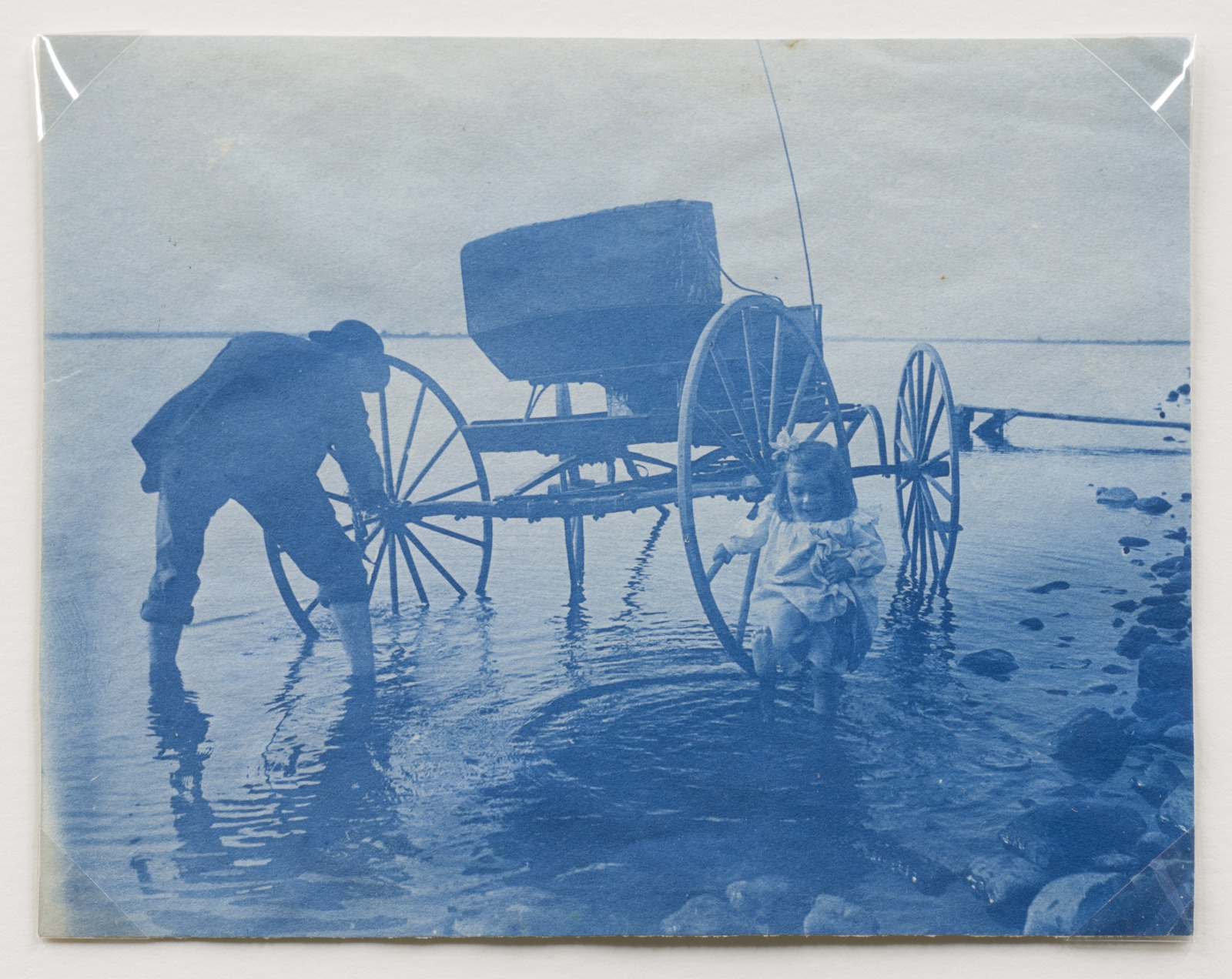
Unknown; Untitled (Man, Small Girl, and Buggy in Lake), c.1895; cyanotype; sheet: 3 3/8 x 4 1/4 inches; Saint Louis Art Museum, Gift of Peter J. Cohen in honor of Laura T. Cohen 130:2018
Standing ankle-deep in a lake, a man leans down to tinker with the wheel of his buggy. A young girl splashes playfully nearby in the shallow water.
The recognizable Prussian-blue color of cyanotypes lends itself well to these images of water, as it naturally mimics the hue of lake water. Cyanotypes are made using a quick and inexpensive printing process that was accessible to amateurs and enabled them to produce interesting images. A new focus on collecting vernacular, or non-fine-art, photography has brought more cyanotypes into the Museum’s collection in recent years.
April 26, 2023
Townscape Sa 2
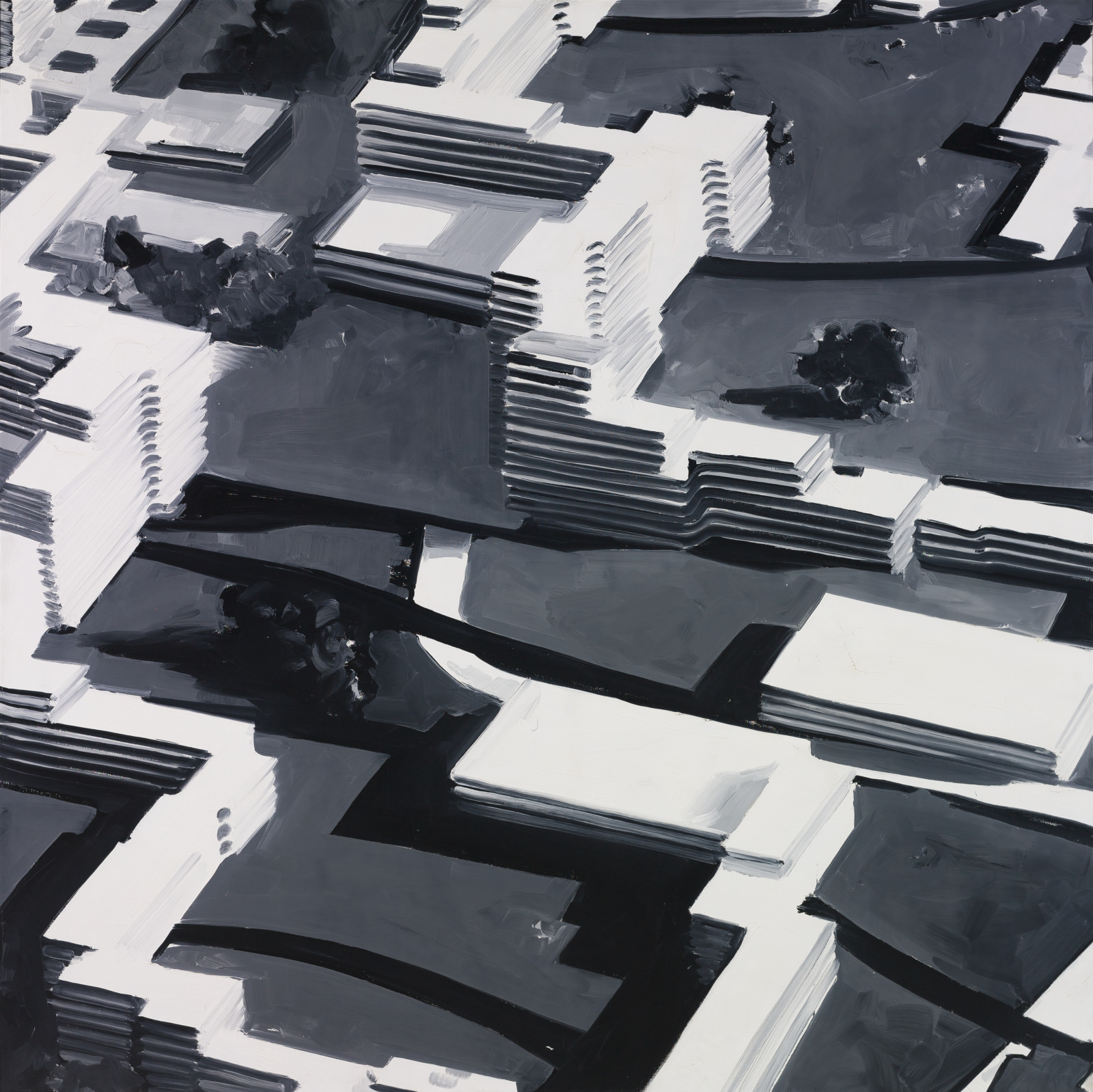
Gerhard Richter, German, born 1932; Townscape Sa 2, 1969; oil on canvas; 49 x 49 inches; Saint Louis Art Museum, The Siteman Contemporary Art Fund, partial gift of John and Sally Van Doren and Mr. and Mrs. Ronald K. Greenberg, Friends Fund, and Museum Purchase 67:2001; © Gerhard Richter 2019
While this painting appears to represent an aerial view of a cityscape, Gerhard Richter actually based its composition on a black-and-white photograph of a now-lost architectural model. Appropriating that image, Richter’s painting alludes to the types of streamlined, mass-produced buildings erected throughout Germany in the 1960s following the destruction of World War II (1939–1945). Richter’s brushy, gestural paint application softens the utilitarian, geometric forms of the model buildings, such as flat roofs, horizontal windows, and white walls.
April 25, 2023
Forest Park, Saint Louis, Missouri: Showing Reclamation and Restoration of World’s Fair Grounds and Museum of Fine Arts
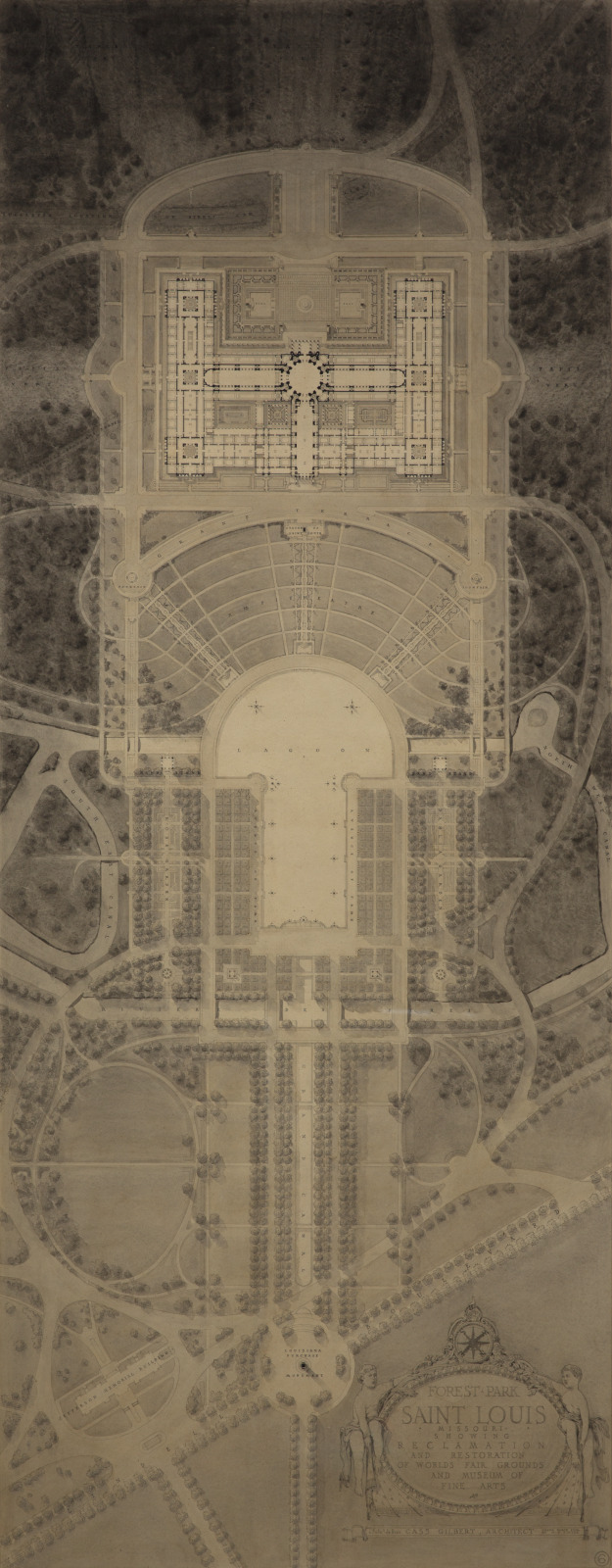
Cass Gilbert, American, 1859–1934; William Pinckney Foulds, American, 1879–1947; Forest Park, Saint Louis, Missouri: Showing Reclamation and Restoration of World's Fair Grounds and Museum of Fine Arts, 1916; graphite, pen and ink, and wash; 86 x 34 inches; Saint Louis Art Museum, Museum Purchase 117:1979
In this grandiose vision of Art Hill, terraces and gardens thrive, trees line promenades, fountains cascade, and bridges cross the River Des Peres. All of this culminates at the top with an elaborately expanded art museum. Although built just 12 years earlier as the Palace of Fine Arts for the 1904 World’s Fair, by 1916 the Museum was already eager to expand. Cass Gilbert’s plans detailed here were ultimately deemed too costly and were never realized.
April 22, 2023
Celestial Tree
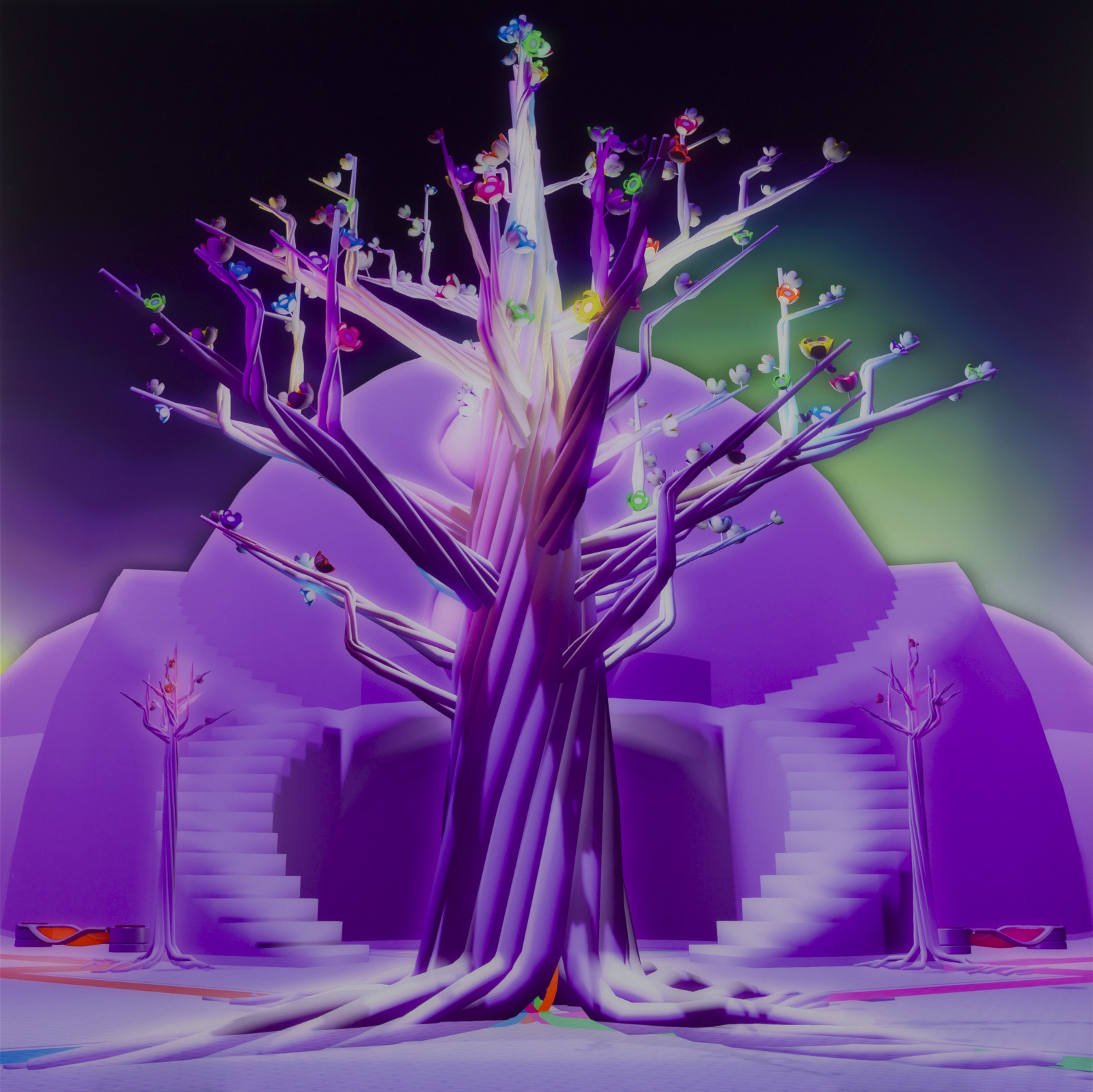
Skawennati, Kanien’keha:ka, born 1969; Celestial Tree, 2017, printed 2022; inkjet print; image: 46 1/4 x 46 1/4 inches; Saint Louis Art Museum, Helen Kornblum Fund for Women Photographers 115:2022; © Skawennati
One of the Museum’s most recent acquisitions is also perhaps one of the most futuristic in appearance. Here, a massive electrified tree, its twisted roots extending in four directions from the trunk, sits before a domed structure. The branches lift radiant flowers in a glowing canopy. The setting for the picture, “Sky World,” is the spiritual realm of proto-human life according to Iroquois religious thought. Skawennati reimagined this Indigenous creation story through the graphic language of science fiction. She designed Celestial Tree using the online digital platform, Second Life. The artist refers to the print as a machinimagraph, a still image created in a virtual world.
April 16, 2023
Pet Dog (Haushund) Textile Sample
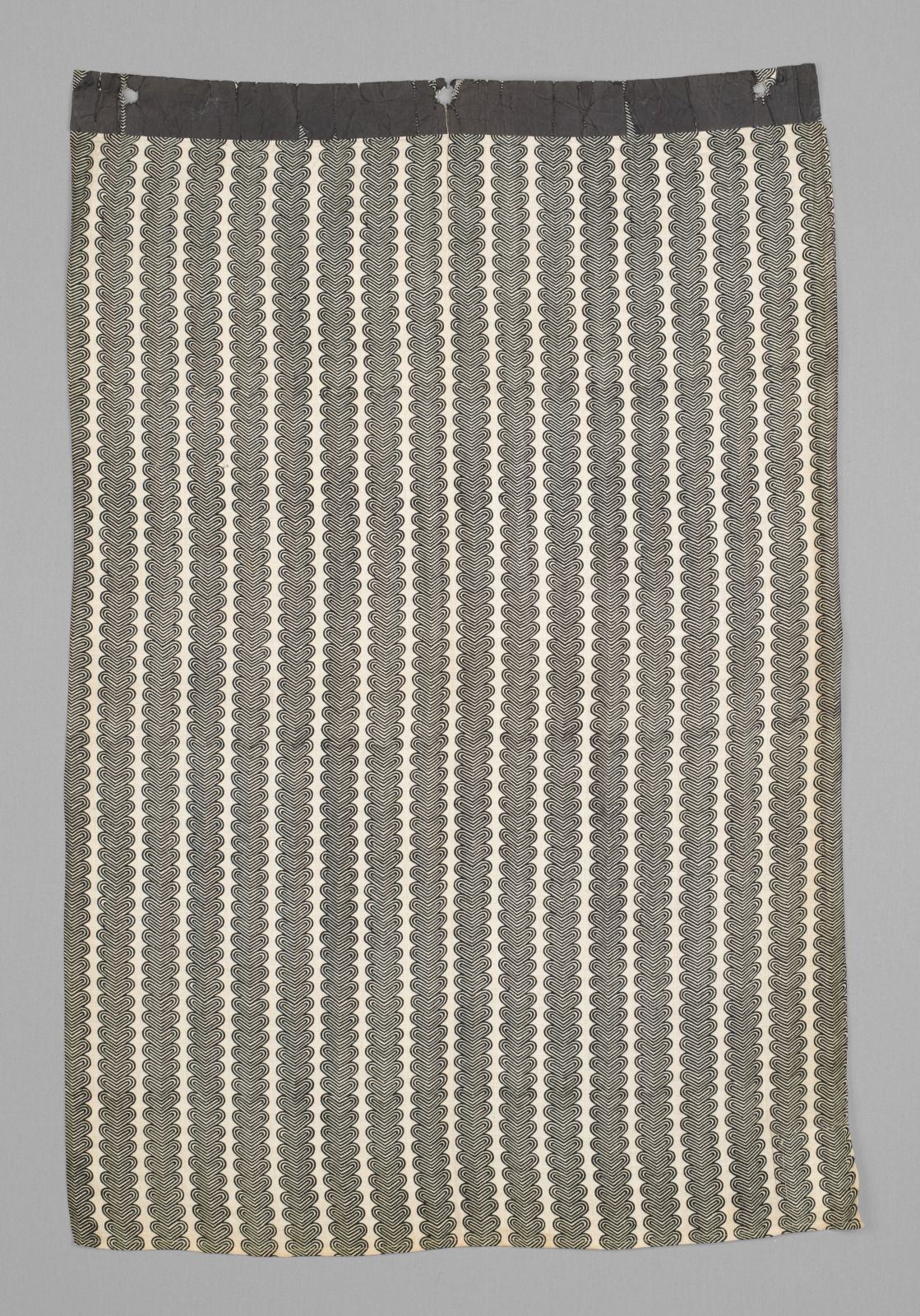
designed by Carl Otto Czeschka, Austrian, 1878–1960; made by Wiener Werkstatte, Vienna, Austria, active 1903–1932; Pet Dog (Haushund) Textile Sample, 1910–11, probably made c.1913; block-printed linen; 43 1/2 x 28 1/2 inches; Saint Louis Art Museum, Marjorie Wyman Endowment Fund 11:2020
Stacks of tiny concentric hearts create the graphic black stripes of this textile by influential Wiener Werkstätte designer Carl Otto Czeschka. Born to Bohemian and Moravian parents, Czeschka was one of thousands of Viennese with Czech heritage. An expert in ornament, many of his early works draw upon Central European folk designs. These include stylized flowers and animals, and an array of simple but striking geometric patterns in contrasting color schemes.
April 11, 2023
Banquet Scene with a Lute Player

Nicolas Tournier, French, 1590–before 1639; Banquet Scene with a Lute Player, c.1625; oil on canvas; 47 3/4 x 65 3/4 inches; Saint Louis Art Museum, Museum Purchase 90:1942
Bright light and contrasting shadows have been used to especially good effect in this banquet scene. The artist employed these tools to enhance the spatial qualities of the table corner and to define the surface textures of the food and clothing.
Artists of the early 17th century tried to involve the observer in their paintings, which is why the composition is arranged so that the table corner juts out toward the viewer. At this time musical instruments, such as the lute seen here, often conveyed erotic themes, and this setting may be an inn or a brothel. The man who drains his wine glass may indicate that indulgence and vice are subjects presented here. Such a context suggests that the single female may be a courtesan. Nicolas Tournier worked in Rome between 1619 and 1626 and probably used models that he encountered on the streets of that city for his paintings.
April 5, 2023
Bowl
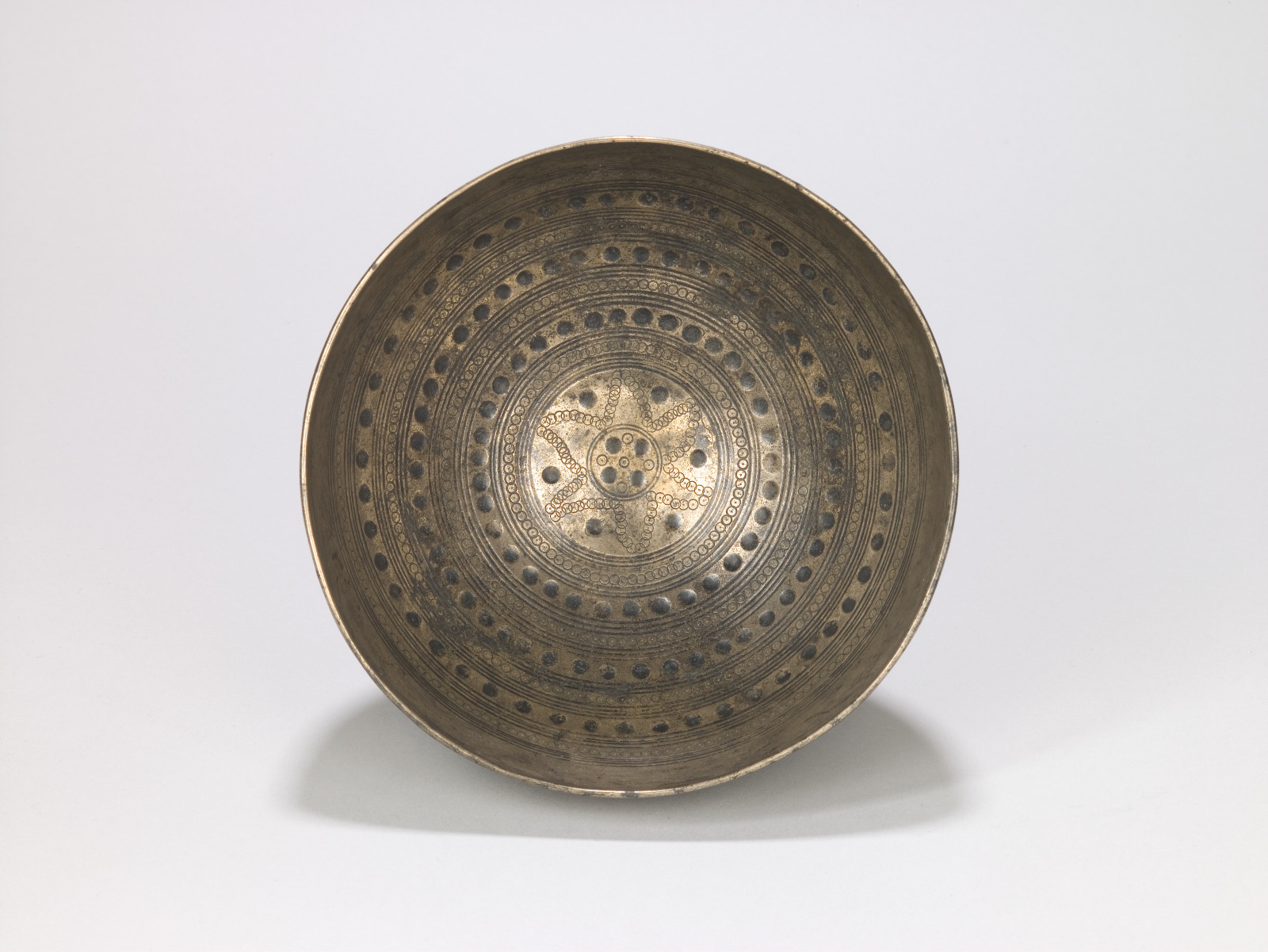
Bowl, 10th century; Persianate, Afghanistan, Ghaznavid period; high-tin bronze; height: 3 5/8 inches, diameter of mouth: 7 7/8 inches; Saint Louis Art Museum, Gift of J. Lionberger Davis 248:1955
The interlocking circles and geometric patterns seen here are typical of vessels made in 10th century Khorasan (Afghanistan). With their gleaming color and the ringing sound they make when struck, high-tin bronze vessels had been popular in Iran since late antiquity, during the Sasanian period (221–651). Early Islamic examples are virtually indistinguishable from their predecessors, but new styles had appeared by the 10th century.
March 30, 2023
Cowboys and Indians, Made in America

Jaune Quick-to-See Smith, Enrolled Salish, Confederated Salish and Kootenai Nation, MT, born 1940; printed by Kevin Garber, American; printed and published by Washington University Collaborative Printmaking Workshop, Saint Louis, Missouri, founded 1978; Cowboys and Indians, Made in America, 1995; collagraph; image: 71 3/8 x 47 1/4 inches, sheet: 77 5/8 x 53 3/8 inches; Saint Louis Art Museum, Gift of Ted L. and Maryanne Ellison Simmons; and funds given by the Marian Cronheim Trust for Prints and Drawings, Museum Purchase, Friends Fund, The Sidney S. and Sadie Cohen Print Purchase Fund, and the Eliza McMillan Purchase Fund 800:2020; © Jaune Quick-To-See Smith, Courtesy of the artist and Garth Greenan Gallery, New York
Two figures wearing cowboy hats appear to shoot each other, though to comical rather than violent effect. The print’s title, inscribed at top and bottom, repeats a Hollywood cliché popularized in Western movies. Yet these figures are indistinguishable, negating supposed differences between the two characters. Jaune Quick-to-See Smith underscores the humor of the work in her strategic placement of the guns, which read as stand-ins for male anatomy. In this way, her print critiques stereotypes of “the West” and masculinity.
March 20, 2023
Illustrated Ritual Manuscript

Illustrated Ritual Manuscript, 15th century; Tibetan; ink and pigment on dyed paper; each sheet, approximate: 4 3/8 x 11 3/4 inches; Saint Louis Art Museum, Gift of Ernest Shapiro 153:1987.1
The pages of this manuscript convey some of the ways in which images of deities are intimately tied to Buddhist ritual. Written in Tibetan, the manuscript gives instructions for performing various offerings and other essential practices. Some stages of the ritual are illustrated by images of deities associated with those acts. In other cases, groups of figures that do not relate to the text are depicted for their auspicious or protective power.
March 19, 2023
St. John the Baptist

Auguste Rodin, French, 1840–1917; St. John the Baptist, 1878; bronze; height: 79 1/4 inches; Saint Louis Art Museum, Museum Purchase 2:1946
Auguste Rodin depicted St. John the Baptist as a vigorous figure in motion. In fact, the sculptor requested that his model, an Italian peasant named Pignatelli, walk repeatedly about the studio so he could capture the spontaneity of the young man’s movements. Rodin’s representation of natural motion challenged conventional nineteenth century sculptural practices that conformed to an accepted canon of suitable, classical poses. For this reason, St. John the Baptist became a milestone in the development of modern sculpture.
March 18, 2023
Seated Woman

Elizabeth Catlett, American (active Mexico), 1915–2012; Seated Woman, 1962; mahogany; 22 1/2 x 13 1/2 x 7 inches; Saint Louis Art Museum, Friends Fund Endowment; Gift of Edward J. Costigan in memory of his wife, Sara Guth Costigan, by exchange; The James D. Burke Art Acquisition Fund, Eliza McMillan Trust, Funds given by the Alturas Foundation, and Museum Purchase 75:2019; © 2023 Mora-Catlett Family / Licensed by VAGA at Artists Rights Society (ARS), NY
A lustrous finish emphasizes the mahogany wood grain that artist Elizabeth Catlett beautifully incorporated into Seated Woman. The figure’s rounded body and firmly placed legs convey confidence and stability. A sense of naturalism merges perfectly with a simplified, abstracted form reminiscent of African masks and Mexican sculpture. Catlett, an African American artist who lived her adult life in Mexico, greatly respected these two artistic traditions. Catlett felt affirmative representations, such as “Seated Woman,” could support social change because they allow people who are underrepresented to see themselves depicted in art. Female subjects are predominant throughout Catlett’s work. She was moved by “black beauty, not the female nudes of the European artists, but the women of the African wood carvers and the pre-Hispanic stone carvers.”
March 17, 2023
City Lights (Prophet with No Tongue)
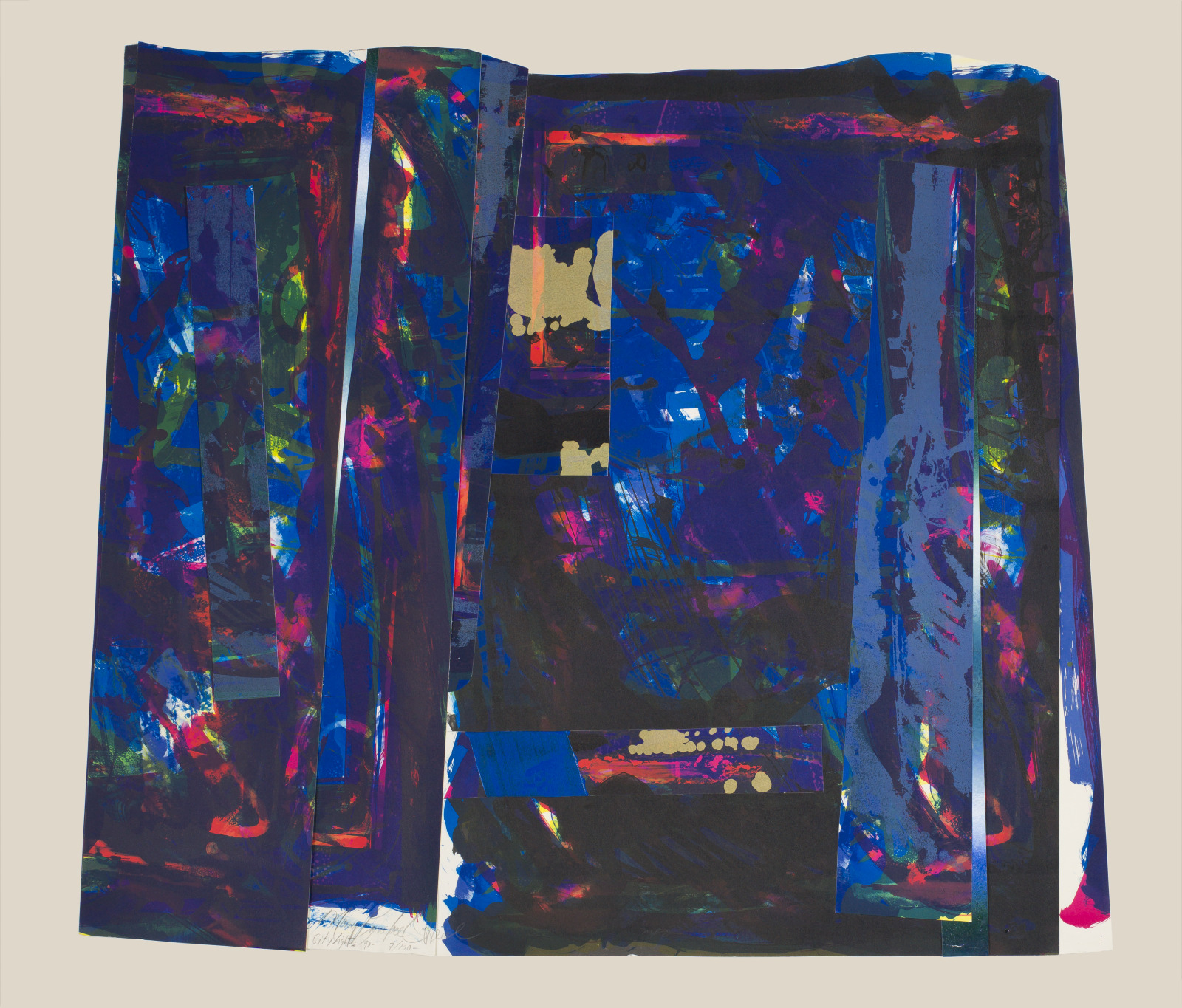
Mary Lovelace O'Neal, American, born 1942; printed and published by Brandywine Workshop, Philadelphia, Pennsylvania, founded 1972; City Lights (Prophet with No Tongue), 1988; offset lithograph and screenprint; sheet (irregular): 28 1/8 x 32 1/8 inches; Saint Louis Art Museum, The Thelma and Bert Ollie Memorial Collection, Gift of Ronald and Monique Ollie 177:2017; © Mary Lovelace O'Neal
This print is constructed of cut paper inked with colors that evoke a city skyline. The deep blue is punctuated by bright pinks and yellows—evidence of bright lights in a bustling metropolis—and the irregular shape evokes a silhouetted cityscape. Mary Lovelace O’Neal worked primarily as a painter until 1984, when Robert Blackburn invited her to his printmaking studio. Captivated by the print medium, she created this work at the Brandywine Workshop in Philadelphia in 1988.
March 15, 2023
Antiochus and Stratonice

Benjamin West, English (born colonial North America), 1738–1820; Antiochus and Stratonice, c.1773; pen and brown ink with brown, blue, and white washes on brown paper; sheet: 17 9/16 x 23 3/8 inches; Saint Louis Art Museum, Museum Purchase 4:1949
The subject of this drawing comes from a legend loosely based on ancient Greek history. The Syrian king Seleucus (seated at right) summoned a physician to diagnose a mysterious ailment afflicting his son Antiochus. The doctor concluded that the prince was suffering from unrequited love for his own stepmother, Stratonice, who stands at left.
Benjamin West was a prolific painter of historical scenes and a tireless draftsman, working through ideas and compositions in hundreds of surviving preparatory drawings, such as this example. Created around the same time as Daniel Interpreting to Belshazzar the Writing on the Wall, also on view in this gallery, this drawing attests to West’s skill as a history painter and his interest in the past for both his subject matter and style.
March 13, 2023
Woman with a Fan
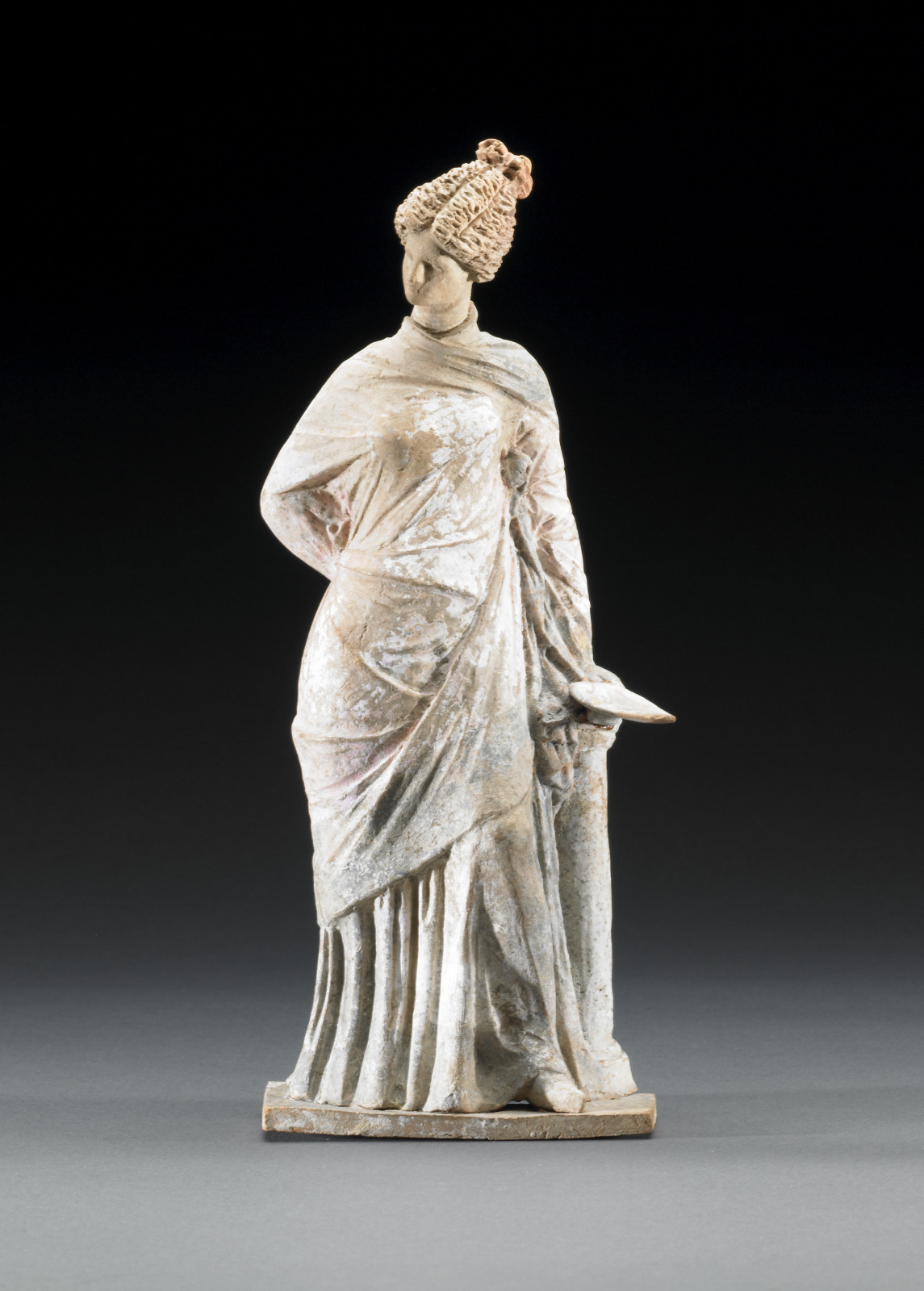
Woman with a Fan, 3rd century BC; Greek, Hellenistic; terracotta; height: 10 inches; Saint Louis Art Museum, Museum Purchase 118:1951
As today, individuals in antiquity found ways to express their devotion to the gods. Whether maintaining a small altar at home for the worship of a particular deity, or presenting gifts called votives, at sanctuaries or graves, many of the objects that survive from antiquity served a ritual function. Terracotta objects reflect the most common medium for votive and dedicatory items because of its availability and affordability.
March 9, 2023
The Cushion

Maximilien Kurzweil, Austrian, 1867–1916; The Cushion, 1903; color woodcut on Japanese paper; image: 11 5/16 x 10 1/4 inches, sheet: 15 3/8 x 12 1/16 inches; Saint Louis Art Museum, Bequest of Richard Brumbaugh 134:1989
The flattened, simplified shapes, pastel coloring, and bold floral patterns in this artwork are all fundamentals of the Vienna Secessionists. In 1897, Czech-born artist Maximilien Kurzweil co-founded this group of artists and designers who rejected academic traditions and sought new forms of expression. Kurzweil’s woodcut of his wife strewn across a couch utilizes modern Japanese-style printing, which simplifies and delineates the composition through bold outlines and patterns. The lush surface decoration became an important element of the Wiener Werkstätte, which grew out of the Vienna Secession.
March 7, 2023
The Harbor of Genoa
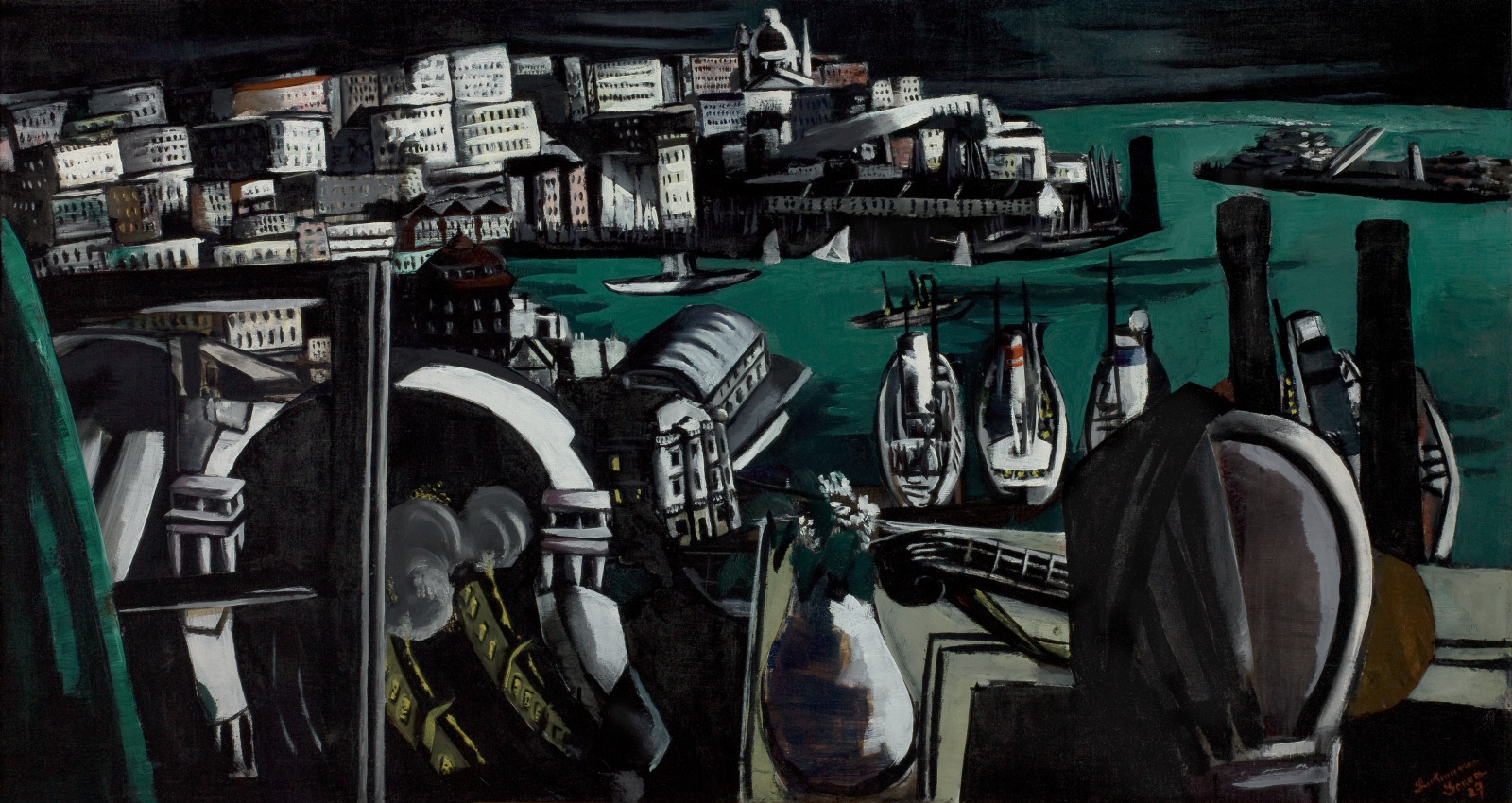
Max Beckmann, German, 1884–1950; The Harbor of Genoa, 1927; oil on canvas; 35 1/2 x 66 5/8 inches; Saint Louis Art Museum, Bequest of Morton D. May 843:1983
Max Beckmann’s atmospheric moonlit scene is a memory of the busy Italian port of Genoa which he had recently visited in 1926. Boats sit at rest in the harbor while two yellow trains puff into a station at bottom left. Beckmann’s image combines views of near and far. His viewpoint is from his balcony ledge, which supports a vase of flowers, a stringed instrument, and chair draped with a jacket. The work reflects Beckmann’s ongoing interest in urban, industrial scenes.
February 28, 2023
Wrapper (adire eleko)
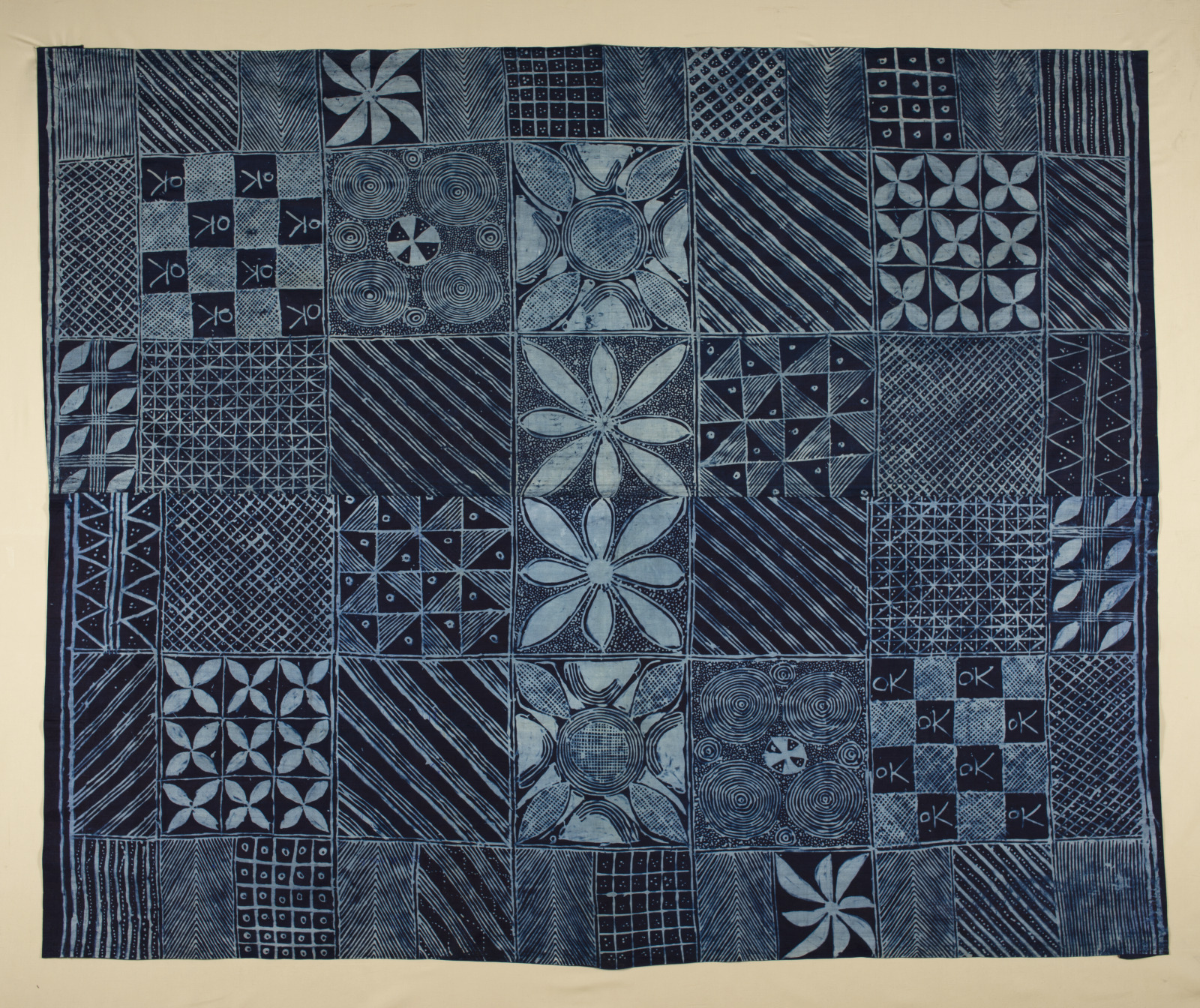
Yoruba artist, Nigeria; Wrapper (adire eleko), mid-20th century; indigo-dyed cotton; 65 x 79 1/2 inches; Saint Louis Art Museum, Gift of William C. Siegmann 1165:2010
Adire is the name for any indigo resist-dyed Yoruba cloth produced through a variety of techniques such as tying, knotting, binding, stitching, freehand painting, or stenciling. Adire eleko refers to hand-painted designs typically applied by women, as seen on this wrapper. The artist painted the motifs on commercially-produced cloth using cassava starch paste as the resist material, dyed the cloth in an indigo bath, then washed away the starch. The central double-foliate motif is identified as the Olokun pattern, named after the Yoruba goddess of the sea and of wealth.
February 25, 2023
Curtain Panel, possibly Les Giroflées

made by Atelier Martine, Paris, France, active 1911–1929; Curtain Panel, possibly Les Giroflees, c.1923; printed cotton with metal hardware; 105 x 46 inches; Saint Louis Art Museum, Richard Brumbaugh Trust in memory of Richard Irving Brumbaugh and Grace Lischer Brumbaugh 26:2016
Splashed with abstract flowers, this cotton textile brims with the impossible promise of an everlasting summer. French fashion designer Paul Poiret visited the Wiener Werkstätte in 1911, buying yards of fabric for use in his own designs. The king of Parisian fashion was especially drawn to the firm’s folk aesthetic, capturing the self-conscious naivety of its colorful floral patterns in his interiors branch, Martine. By the 1920s and ‘30s, popular Parisian women’s magazines were promoting “peasant styles” translated by couturiers like Chanel, who followed Poiret’s early lead.
February 23, 2023
Parfleche

Plateau artist; Parfleche, c.1890; hide and pigment; 27 x 13 x 3 1/2 inches; Saint Louis Art Museum, The Donald Danforth Jr. Collection, Gift of Mrs. Donald Danforth Jr. 175:2011
Painting this hide while it was still moist, the artist saturated her underlying support with pigment rather than allow it to remain on the surface. To prepare the material for painting, she first scraped and rinsed the hide, stretched it horizontally, and coated it with a glutinous wash. She painted the flat, stretched hide in specific sections that, when folded to form the envelope here, appear solely on the front-facing panels. The painted sections align to create a diamond that extends across the central opening.
February 21, 2023
Clematis
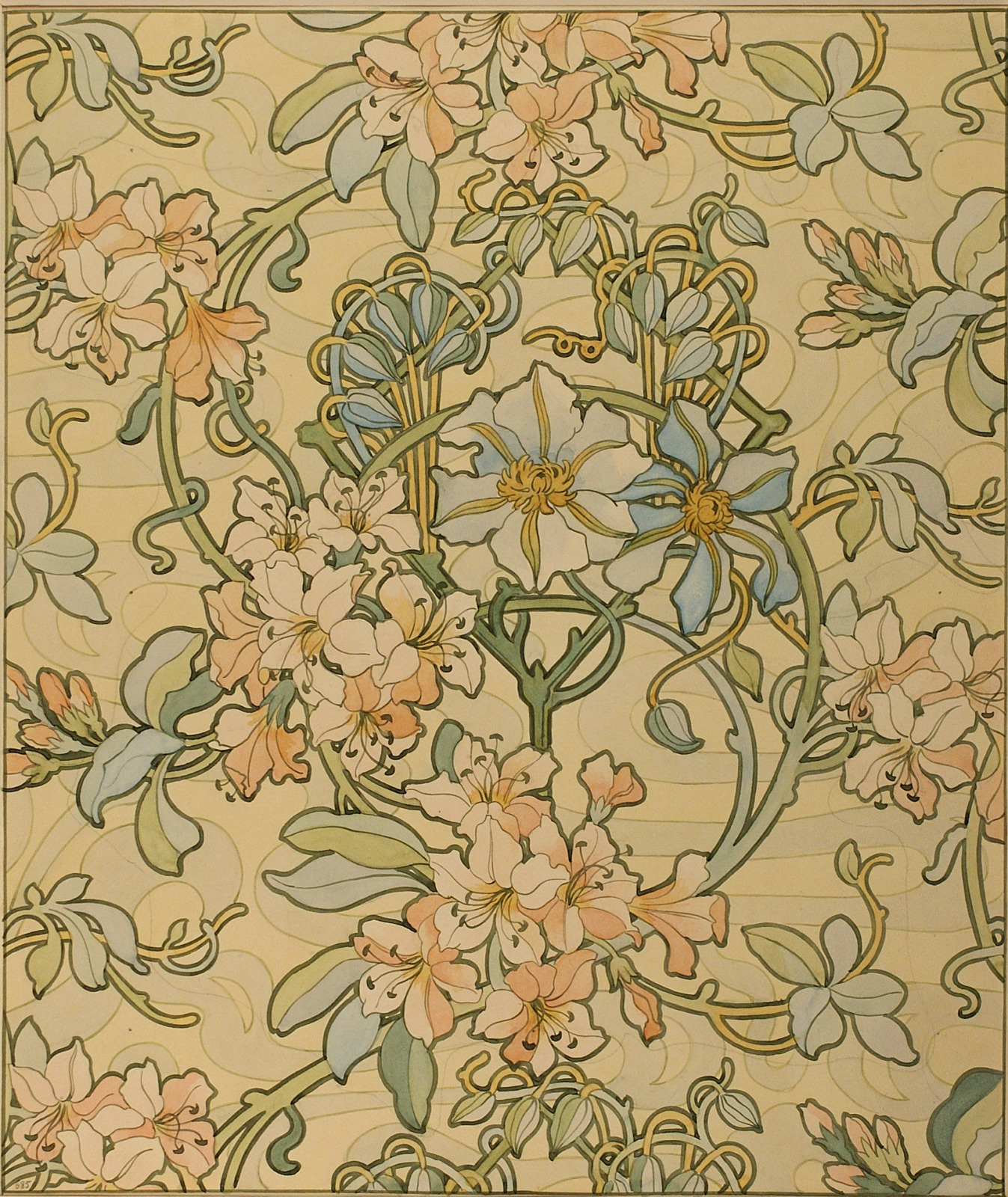
Alphonse Mucha, Czech (active France), 1860–1939; Clematis, 1897–98; watercolor; 21 3/4 x 18 9/16 inches; Saint Louis Art Museum, Funds given by William and Jean L. Crowder, Mr. and Mrs. Arthur Ansehl, Mrs. Ellen R. Conant, H. Edwin Trusheim, Mrs. Ben Wells, and Barbara Wohltman through the Art Enrichment Fund 28:2005
In this textile pattern sample, pink lilies encircle pale blue clematises while yellow and blue lines twist across the background. The whiplash curves and soft coloring reveal influences from Art Nouveau, a 19th-century style that drew inspiration from nature and sinuous lines. The emphasis on simplified, floral forms also recalls Moravian folk embroidery while hinting at the future style of the Wiener Werkstätte. Born in Moravia and trained in Paris, Alphonse Mucha often brought both Czech folk art and international trends to his designs.
February 17, 2023
Double Diptych Icon Pendant

Amhara or Tigrinya artist, Ethiopia; Double Diptych Icon Pendant, late 17th century; wood, tempera pigment, fiber; open: 3 3/4 x 4 5/8 x 1/2 inches; Saint Louis Art Museum, Gift of Marilyn Heldman in memory of Louis Gilden 12:2016
Like a locket, this artwork served a public and private role for its owner. Worn suspended from the neck, the pendant’s incised crosses on the outside of the small doors proclaimed Christian identity and served indigenous beliefs for deflecting harm. Behind each closed door, vibrantly colored scenes inspired moments of personal prayer and contemplation. On one side, St. George slays a dragon opposite Mary and Jesus. On the other side, the Crucifixion appears opposite two historical Ethiopian saints. Gabra Manfas Qeddus (died c.1400), appearing with a lion and wearing a cloak made from his own hair, was a hermit and ascetic especially gifted with animals. Abuna Ewostatewos (c.1273–1352), bearing a long beard and handheld cross, founded monasteries in the Tigray region of northern Ethiopia. Christianity in Ethiopia dates to the 4th century.
February 13, 2023
Card Players
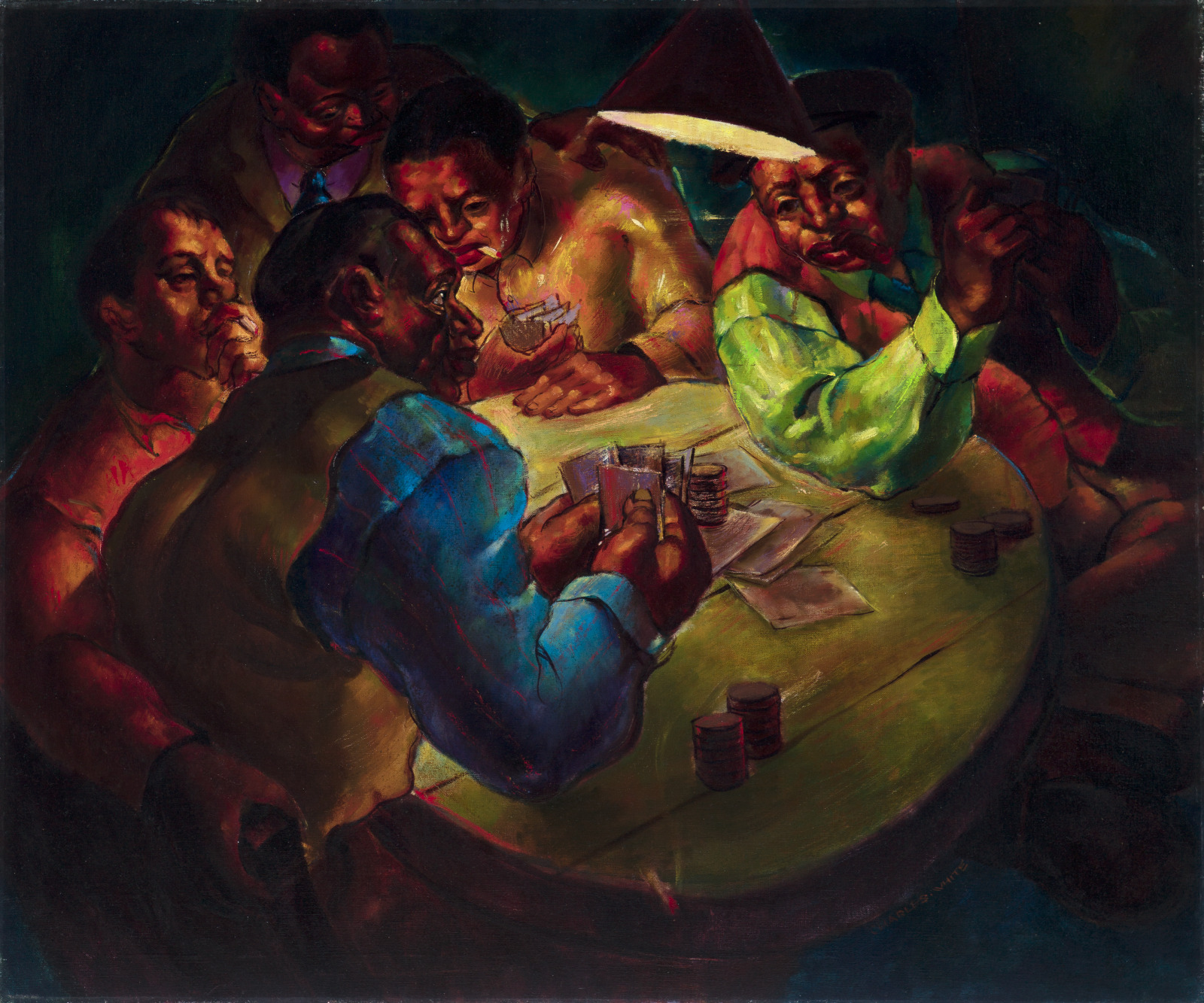
Charles White, American, 1918–1979; associated with Federal Works Agency, Work Projects Administration, New York, New York, active 1935–1943; Card Players, 1939; oil on canvas; 30 x 36 inches; Saint Louis Art Museum, Gift of the Federal Works Agency, Work Projects Administration 364:1943
Four gamblers fill the canvas of Card Players. The group occupies a cramped room lit by a single lamp, elevating the feeling of suspense as one of the men prepares to play his cards. Artist Charles White was involved with the active community of African American artists in Chicago in the 1930s and 1940s. Their influence led him to create artwork that celebrates both the everyday lives and the history of African Americans.
February 9, 2023
Stump Speaking
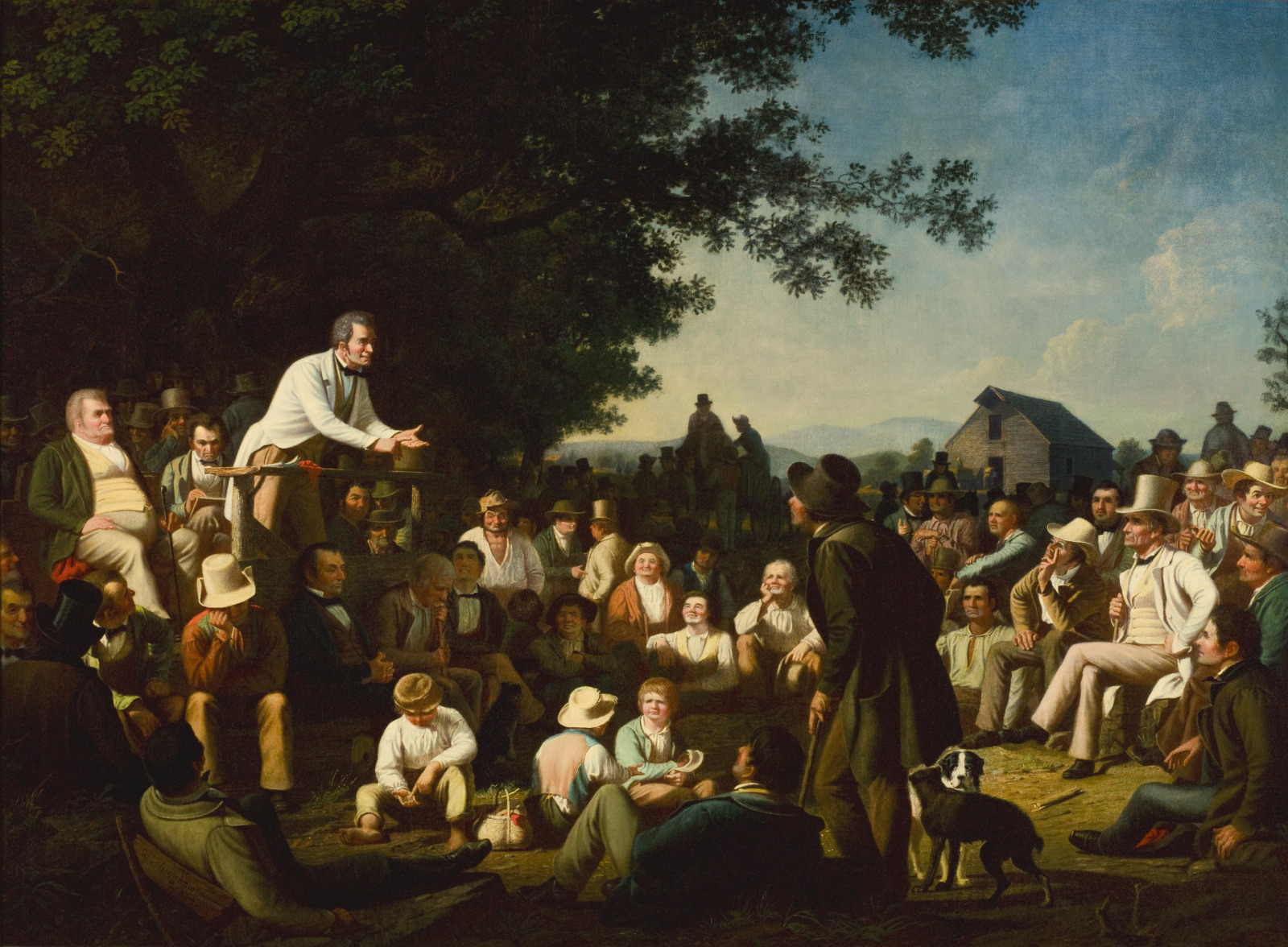
George Caleb Bingham, American, 1811–1879; Stump Speaking, 1853–54; oil on canvas; 42 1/2 x 58 inches; Saint Louis Art Museum, Gift of Bank of America 43:2001
Stump Speaking presents a view of two politicians campaigning in a rural town. In a letter to a friend, George Caleb Bingham described the candidates, writing: “In my orator I have endeavored to personify a wiry politician, grown gray in the pursuit of office and the service of party. His influence upon the crowd is quite manifest, but I have placed behind him a shrewd clear-headed opponent, who is busy taking notes, and who will, when his turn comes, make sophisms fly like cobwebs before the housekeeper’s broom.” Their audience is made up of men of various social standings, some of whom listen closely to the speaker, while others gather around a watermelon wagon, converse, or struggle to stay awake. This work is part of Bingham’s Election Series, which illustrates different stages of the American political cycle.
February 2, 2023
Panel
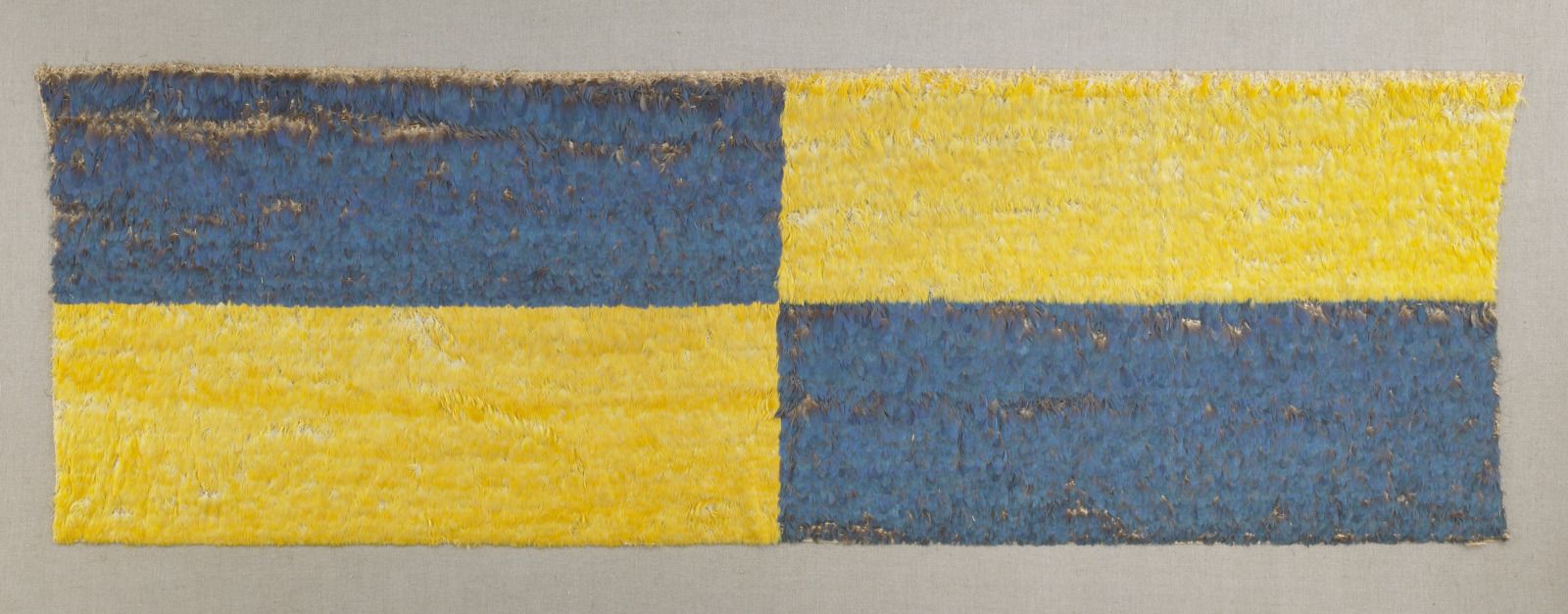
Panel, c.650–900; Wari, Peru, Middle Horizon; feathers and cotton; 26 15/16 x 82 5/16 inches; Saint Louis Art Museum, Museum Purchase 285:1949
Ancient traders carried tens of thousands of blue-and-yellow macaw feathers from the Amazonian rainforest over the Andes Mountains to create this textile. Wari artists attached feathers to this cotton panel in overlapping rows to mimic the way feathers cover a bird’s body. Fields of blue and yellow on the textile create strong visual balance, and also reference the symbolic coloration of the macaw. With a blue back and yellow underside, this tropical bird embodies the division of top and bottom, particularly when in flight.
January 14, 2023
Distant Road II

Araki Minol, Japanese (born China), 1928–2010; Distant Road II, 1979; ink on four paper panels; overall (all four panels together): 36 3/16 inches x 16 feet 9 1/2 inches; Saint Louis Art Museum, Gift of the artist 149:2003a-d; © Minol Araki, licensed by David Frank and Kazukuni Sugiyama
This painting depicts an expansive landscape splashed in ink across four paper panels. Land, water, and natural features are represented from a high perspective. Reading from right to left, the first panel depicts an open expanse of water; the second panel, an extended isthmus or peninsula. The third features dense hills and mountains ranging beyond the tops and branches of evergreens; the fourth panel shows an opening expanse of water. The so-called “ink-splash” painting tradition of China and Japan is the most demanding style. It requires faultless technique, crystal-clear conception, and single-minded concentration.
These same elements are valued traits of the Zen Buddhist practitioner. Thus, the most accomplished and powerful of the “ink-splashed” paintings are likened to the moment of enlightenment: brilliant, highly personal, and irrefutable. Araki Minol was an independent artist in the literati tradition of East Asia. He was born in Dairen (Dalian, now part of Lüda, China), a port city in Japanese-occupied Manchuria. Having grown up amidst Japanese, Chinese, and Russian influences, Araki subsequently developed an even more cross-cultural mindset by living in Tokyo, Taipei, and New York.
January 12, 2023
Saddle Blanket
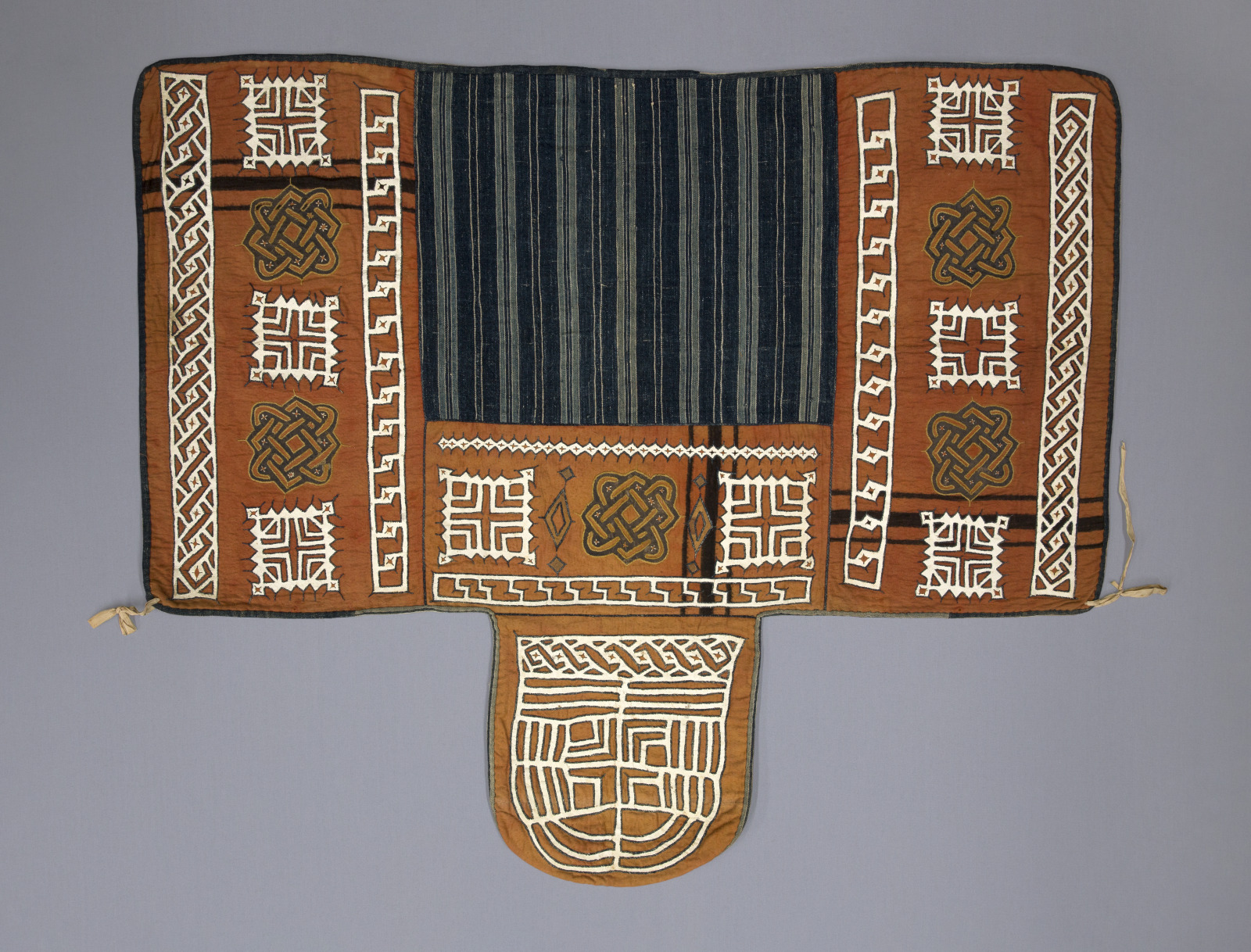
Mossi artist, Burkina Faso; Saddle Blanket, early 20th century; cotton, leather, natural and synthetic dyes; 44 1/8 x 51 3/16 inches; Saint Louis Art Museum, Friends Fund Endowment 20:2020
The wide border and descending flange of this saddle blanket feature dramatic interlace and geometric leather designs. These are appliquéd onto portions of European-produced cotton cloth. The blanket’s center is made of strip-woven, indigo-dyed cotton produced by West African weavers. Converging local and imported materials, techniques, and designs, this textile reflects the significance of its geographical origins—the Sahel—as a locus of longstanding trade and contact between sub-Saharan Africa, northern Africa, and beyond. The Sahel is the transitional region between Africa’s Sahara Desert to the north and the sub-Saharan regions to the south. The blanket attests to the extent of horse culture in West Africa and the great mobility of textiles via long-distance trade. Hausa people from the north introduced horses to Yorubaland by the late 18th to early 19th centuries.
January 2, 2023
Ascendant, from the portfolio “Taxa”

Isabella Kirkland, American, born 1954; published by Feature Inc.; Ascendant, from the portfolio Taxa, 2006; inkjet print; image (each): 34 1/16 x 25 1/2 inches, sheet (each): 35 x 26 1/2 inches; Saint Louis Art Museum, The Sidney S. and Sadie Cohen Print Purchase Fund 158:2011.2; © Isabella Kirkland
Colonization of the New World brought a wealth of species to the Americas from around the globe. The seventy-four species in Ascendant are all non-native, but they are also thriving as their populations continue to grow—often at the expense of indigenous flora and fauna. The Indian mongoose, for example, was originally imported to the Hawaiian Islands in the 1880s to control sky-rocketing numbers of another invasive species: rats. Instead, the mongoose has had tragic consequences for rare local bird colonies.
Today’s object is featured in the Animals in Art Collection Guide, a self-guided audio experience for all ages.
January 1, 2023
Untitled No. 02-038
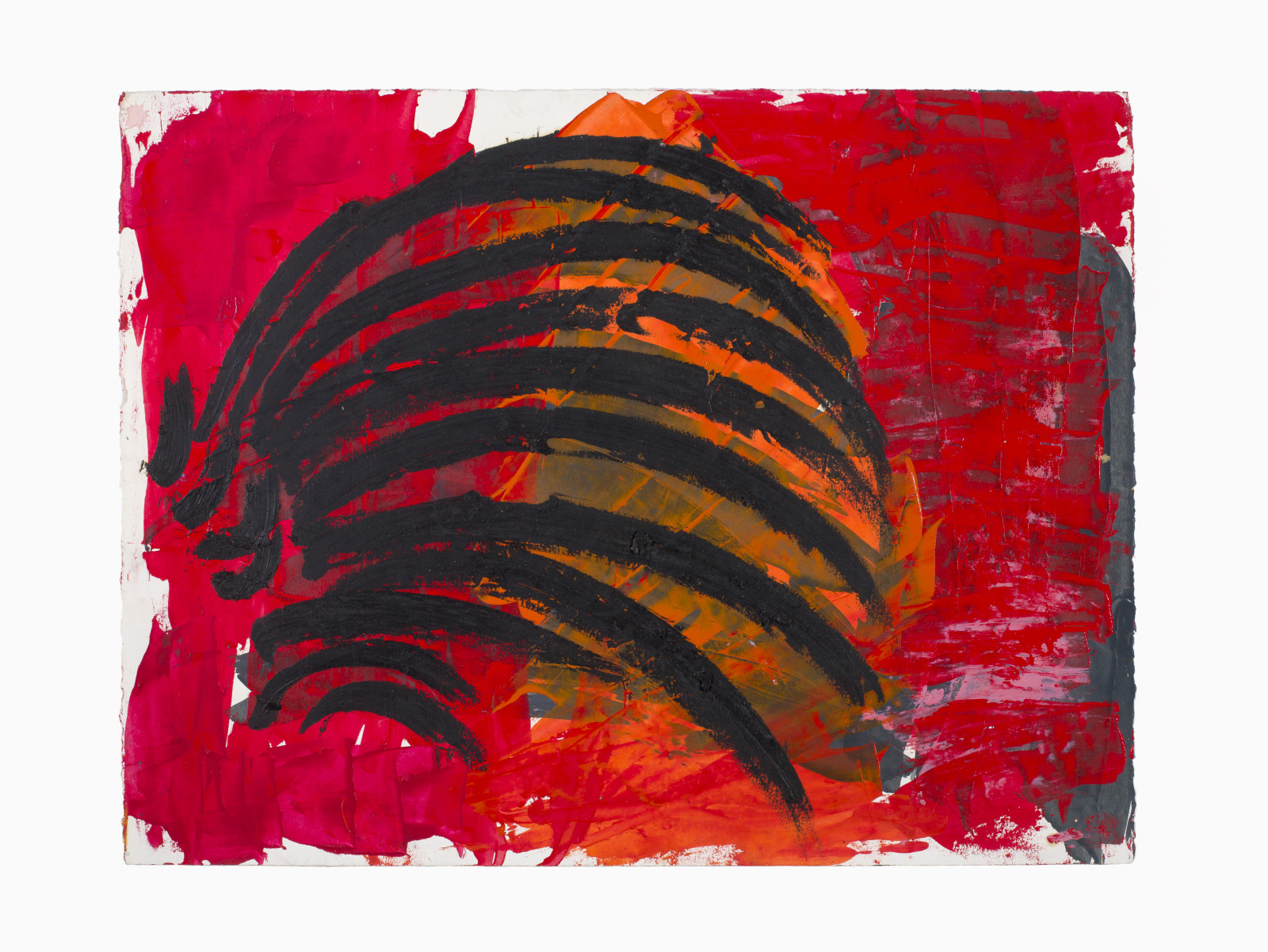
Lamerol A. Gatewood, American, born 1954; Untitled No. 02-038, 2002; oil; 19 3/4 x 25 7/8 inches Saint Louis Art Museum, The Thelma and Bert Ollie Memorial Collection, Gift of Ronald and Monique Ollie 135:2017; © Lamerol A. Gatewood 5.13.2002
Energy pulsates between arcing lines punctuated by layers of red and orange pigment. In the year he created this work, Lamerol Gatewood made many paintings addressing the human form and vessel-like shapes. Here, Gatewood seemingly deconstructs the figure, simplifying the body into a rhythmic set of black curvilinear brushstrokes, which could reference the skeletal structure, perhaps the rib cage. In addition, the parallel hatched linework in the center creates a sense of volume against the flat background.
December 29, 2022
Clearing in the Forest
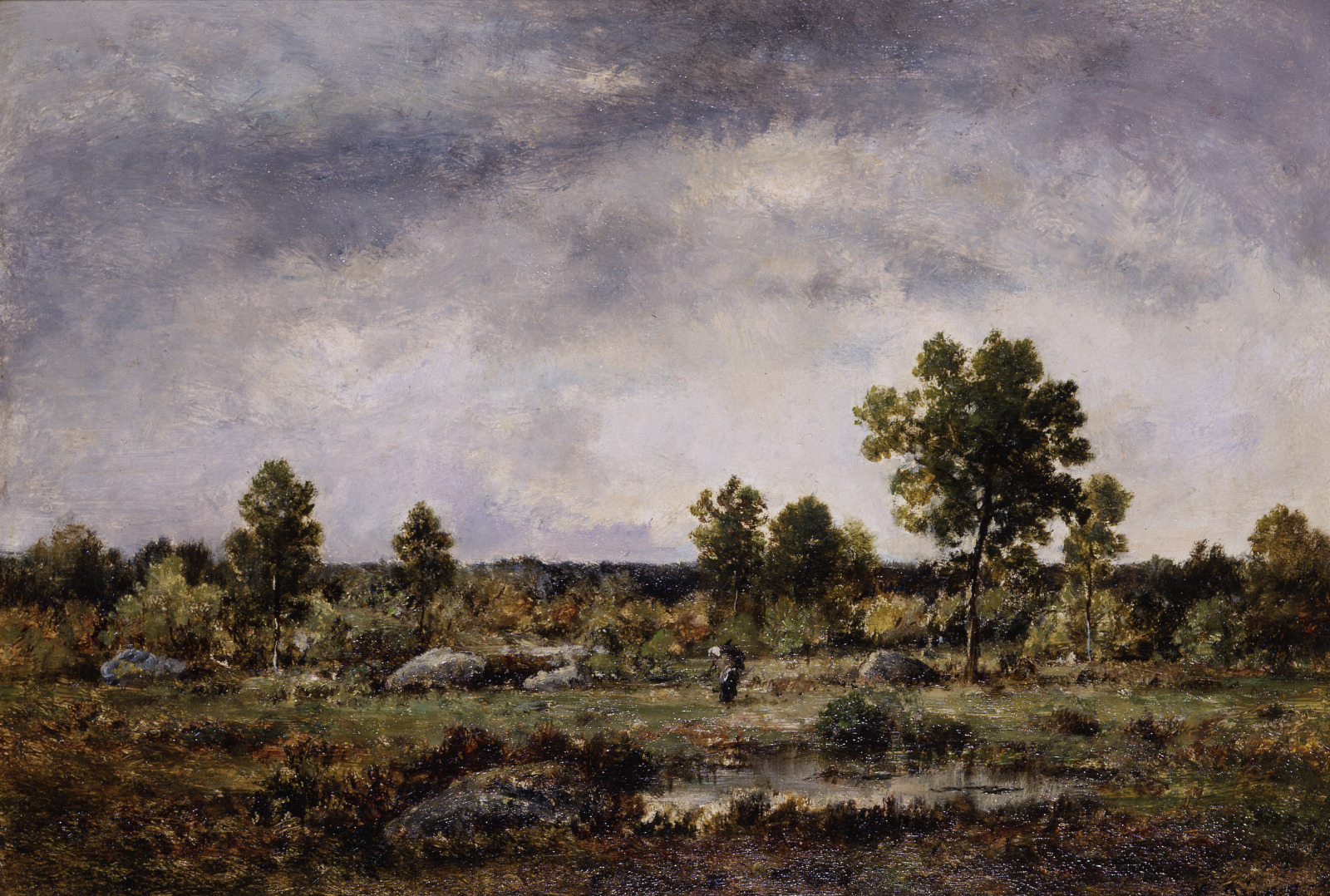
Narcisse-Virgile Diaz de la Peña, French, 1807–1876; Clearing in the Forest, c.1870; oil on panel; 9 1/2 x 13 7/8 inches; Saint Louis Art Museum, Bequest of Edward Mallinckrodt Sr. 41:1974
This lively view of scrubland in the French forest of Fontainebleau suggests an impending storm. The tiny figure of a peasant woman carrying a bundle of wood animates the scene. Narcisse Virgile Diaz de le Peña was a central figure among the colony of painters at nearby Barbizon, and first worked in Fontainebleau in the late 1830s. Thereafter, he was a prolific painter of the forest’s dense glades and expansive moors; his work was a particularly important influence on the landscapes of the young Auguste Renoir.
December 28, 2022
A Woman Bathing Her Feet at a Brook

Rembrandt van Rijn, Dutch, 1606–1669; A Woman Bathing Her Feet at a Brook, 1658; etching, drypoint, and engraving; plate: 6 5/16 x 3 1/8 inches, sheet: 6 5/8 x 3 1/2 inches; Saint Louis Art Museum, Ruth Peters MacCarthy Charitable Trust 35:1997
During his career, Rembrandt van Rijn etched eight female nudes. In this print the artist depicts a seated woman who gently turns her head from the viewer, her face half obscured by shadow. This late work by Rembrandt grew from a study of a nude model in the studio, as indicated by the large cushion and the chair back; but the artist added foliage and a brook to evoke an outdoor setting. The color and texture of the golden Japanese paper on which this early impression of the etching is printed suggest warm flesh tones, and the dark, velvety shadows, created by means of drypoint, throw the soft form of the figure into relief.
December 21, 2022
Interior at Nice
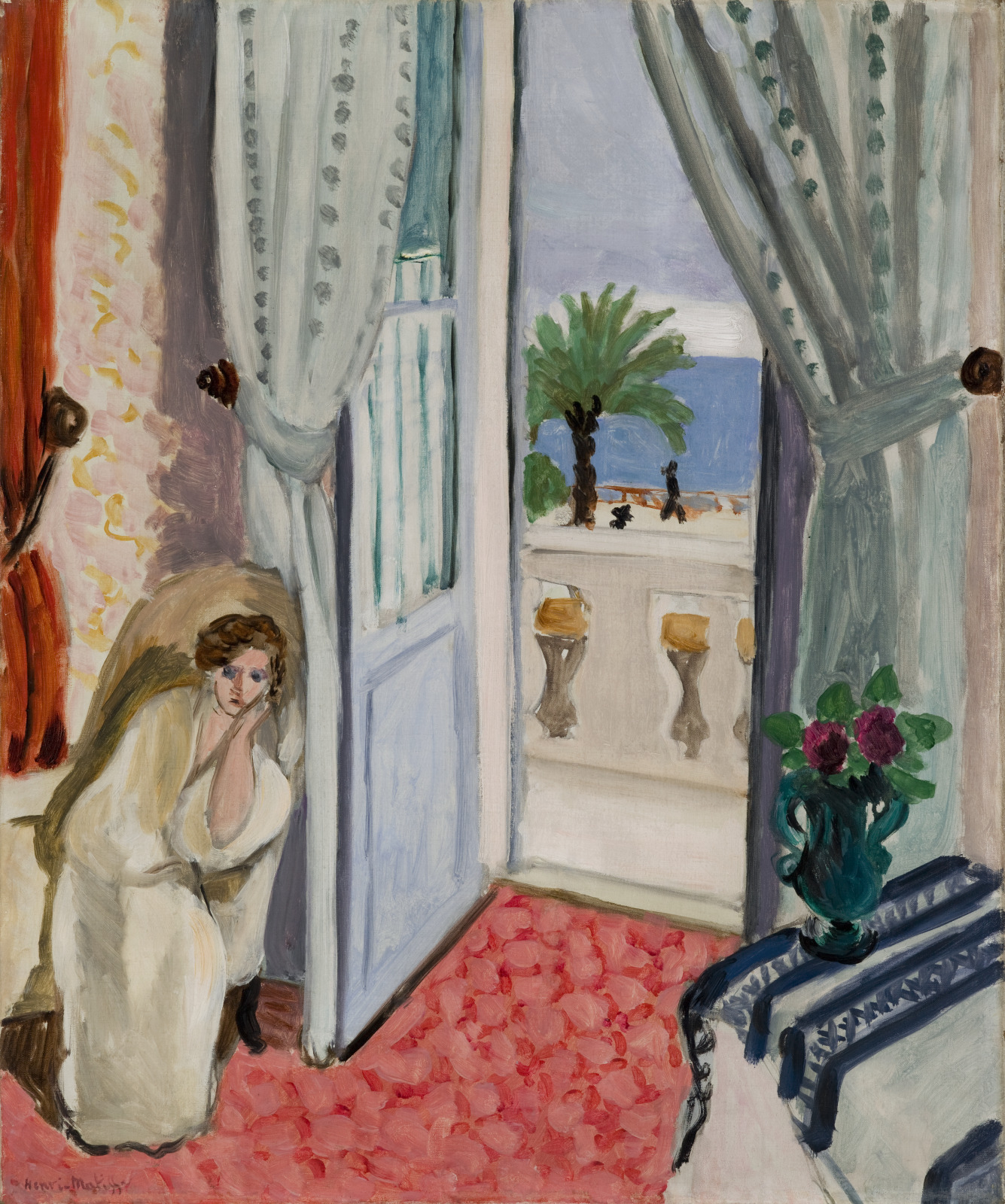
Henri Matisse, French, 1869–1954; Interior at Nice, c.1919; oil on canvas; 26 1/4 x 21 5/8 inches; Saint Louis Art Museum, Museum Purchase 74:1945
Henri Matisse evokes the relaxed atmosphere of Nice, France, a seaside city where the artist lived and worked for many years. Large doors have been thrown open to reveal the palm trees and sands of the sunny Mediterranean coast. Within the interior, Matisse explores a range of rich colors and decorative patterns around a seated figure that appears to be deep in thought. The artist painted variants of this picture with differing coloristic effects.
December 18, 2022
Torah Ark Curtain (Parokhet)
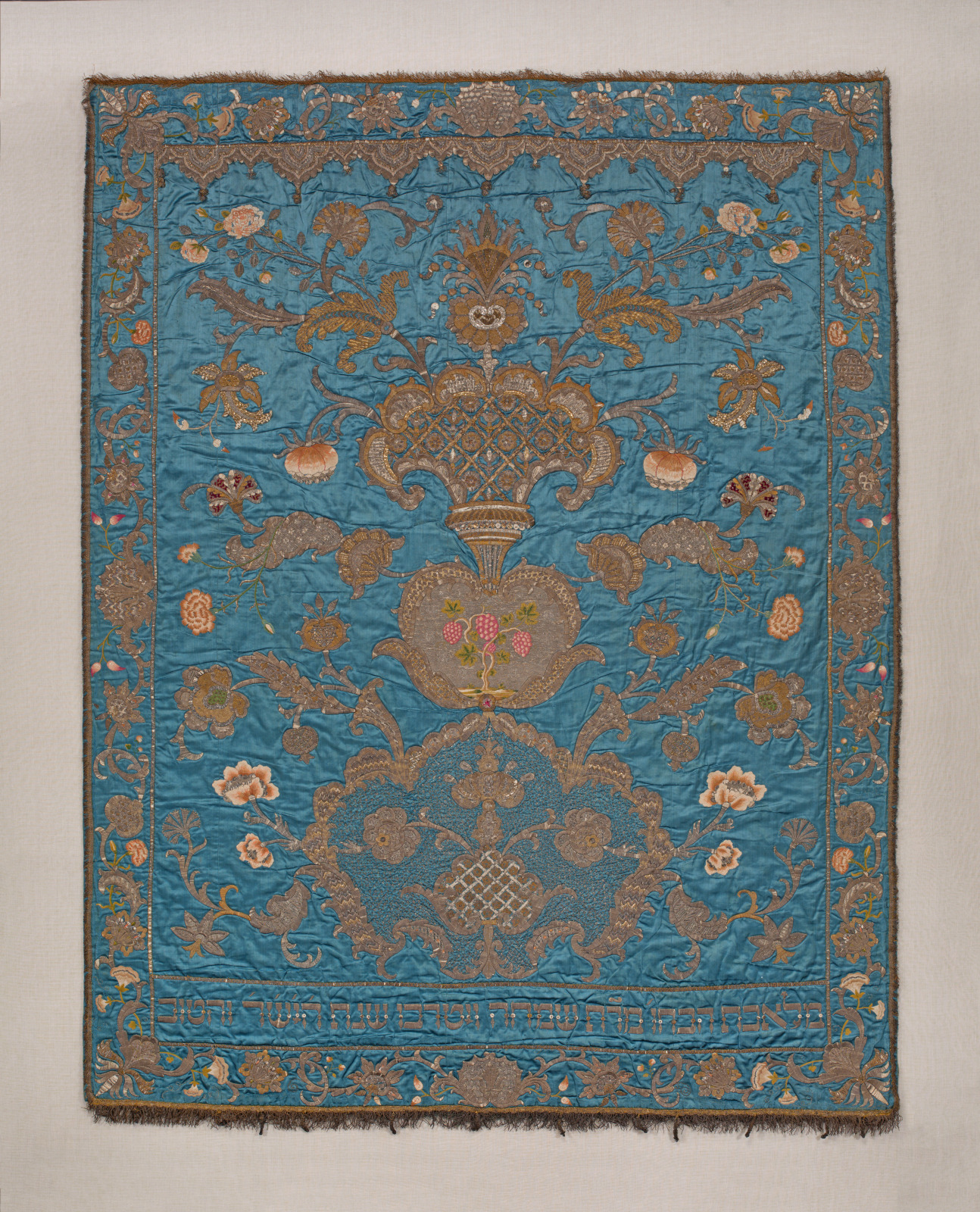
Simhah Viterbo, Italian, 1739–1779; Torah Ark Curtain (Parokhet), 1754–55; silk, silk and metallic thread, vellum, metal sequins, metal wire, cotton thread, velvet, metallic fringe, and linen backing; 87 x 66 inches; Saint Louis Art Museum, The Deane and Paul Shatz Endowment Fund for Judaica 2:2019
A needlework tour-de-force, the azure satin ground of this Torah Ark curtain (parokhet) is extensively appliquéd and embroidered with silk and metallic threads, pressed metal strips, spiral wire, and sequins. The silver and gold embellishment and most of the flowers are worked on thin sheets of vellum, or prepared animal skin, and in some cases padded for added volume. The textile’s opulence reflects the skill and wealth of its young maker, Simhah Viterbo. Torah curtains hang in front of the ark, a cabinet or structure that houses the sacred Torah scrolls, the first five books of the Hebrew Bible. This curtain would have been visible to a synagogue’s entire congregation, including the women who occupied the elevated gallery above the main hall. Its scalloped and scrolling ornament and carefully depicted carnations, bellflowers, and roses follow a European taste for botanical naturalism. However, the curtain’s enclosed floral borders and symmetrical central composition suggest the influence of Ottoman textiles.
December 15, 2022
The Conversion and Baptism of St. Augustine by St. Ambrose

Juan de Valdes Leal, Spanish, 1622–1690; The Conversion and Baptism of St. Augustine by St. Ambrose, 1673; oil on canvas; 65 1/8 x 43 inches; Saint Louis Art Museum, Museum Purchase 1:1964
Energetic brushwork, rich color contrasts, and an angled view into the church interior enliven this image of two important events in a Christian saint’s life. The painting was one of seven canvases portraying the life of St. Ambrose (c.334/340–397), bishop of Milan, all painted by Juan de Valdés Leal. This painting formed part of a decorative group for the lower oratory of the Archbishop’s Palace in Seville, Spain. It depicts St. Ambrose converting St. Augustine to Christianity in the foreground, and Augustine’s subsequent baptism on April 24, 387, in the background at right.
December 11, 2022
Repose in a Park

Jean-Baptiste Joseph Pater, French, 1695–1736; Repose in a Park, c.1730; oil on canvas; 21 1/2 x 25 7/8 inches; Saint Louis Art Museum, Friends Fund 13:1967
Surrounding the seated woman in pink are well-dressed members of the upper class enjoying the pleasantries of a park. Flirtations abound. The kneeling man to the left of the seated woman holds his hand to his chest to signify his affection while the reclining man in the lower right seeks to charm the young lady beside him. Known by the term fête galante, (literally “gallant party”) this type of painting depicts the intricacies of social relationships and courtship within a pastoral setting.
December 2, 2022
Still Life, Basket of Apples
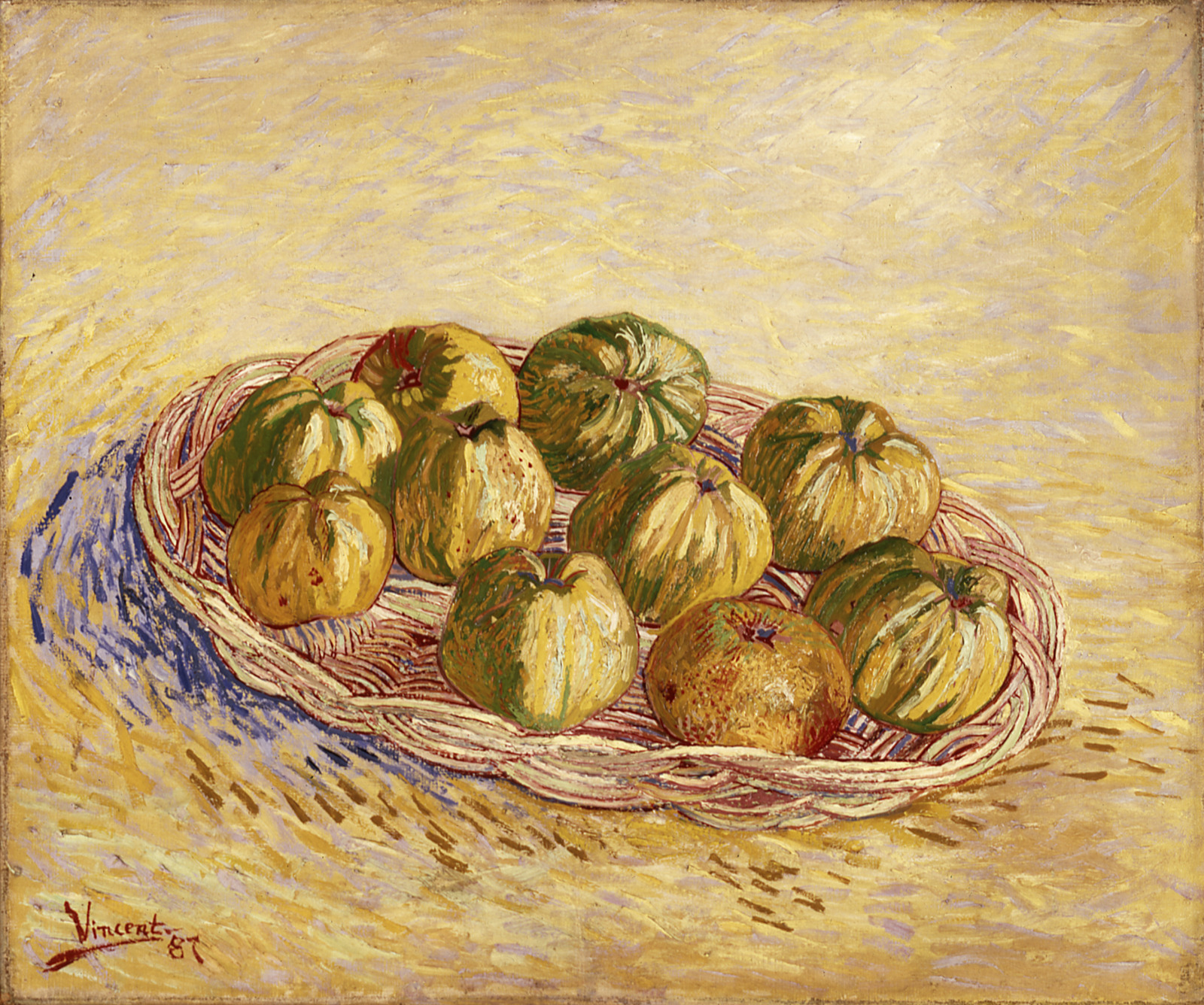
Vincent van Gogh, Dutch, 1853–1890; Still Life, Basket of Apples, 1887; oil on canvas; 18 3/8 x 21 3/4 inches; Saint Louis Art Museum, Gift of Sydney M. Shoenberg Sr. 43:1972
Vincent van Gogh suggested the bounty of nature in this view of ten apples in a wicker basket. The red outlines of the apples complement their green texture while the blue-violet shadows offset the dominant golden-yellow color of the composition. Van Gogh rarely signed his paintings, but here used only his first name as a signature, perhaps the first artist to do so in the history of Western art. This work is one of a series of still lifes that the artist painted in Paris in 1887.
November 25, 2022
Spouted Vessel with Painted Motifs
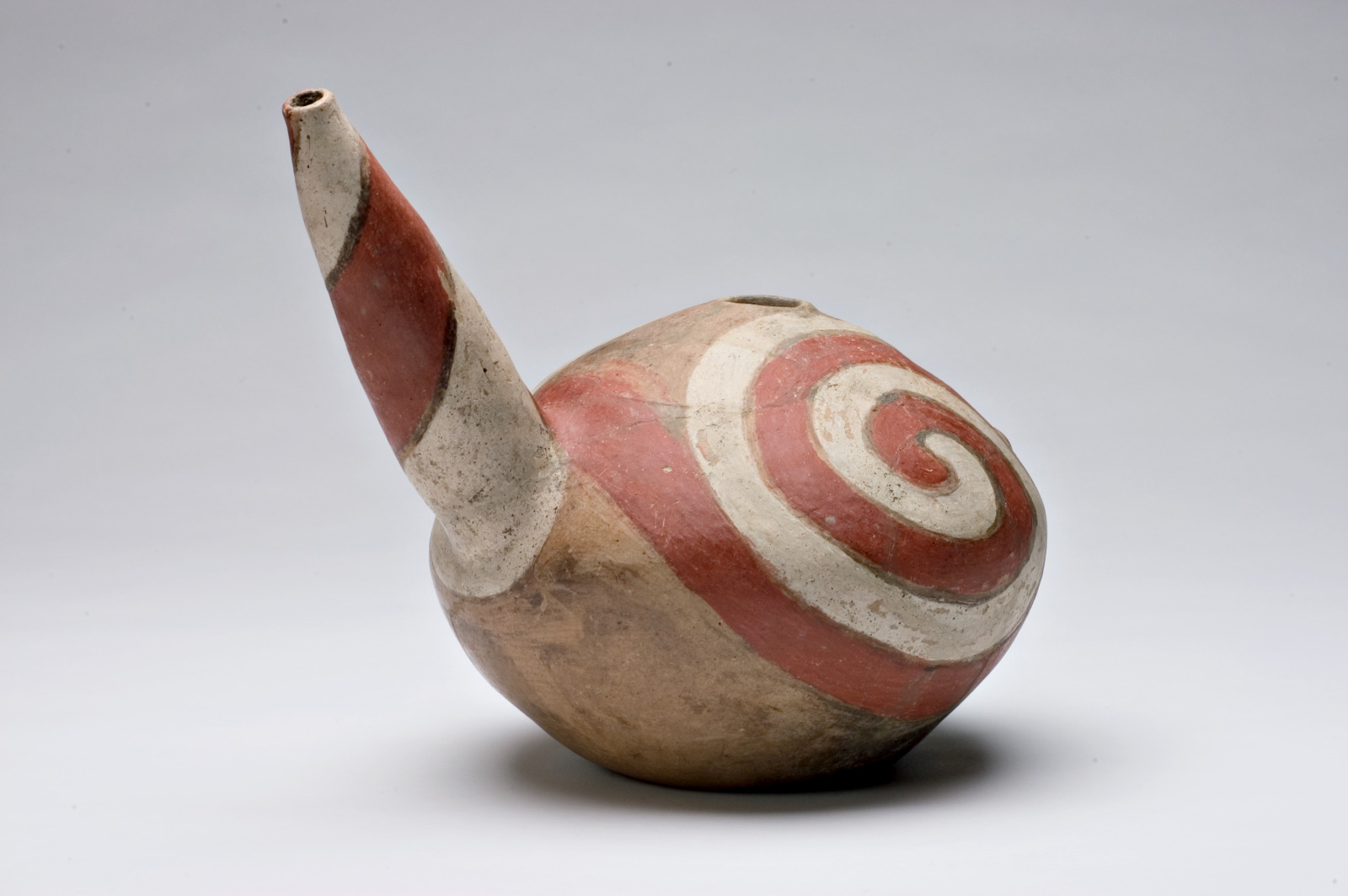
Spouted Vessel with Painted Motifs, c.1500–1700; Quapaw, Arkansas; ceramic with pigment; 10 1/2 x 11 inches; Saint Louis Art Museum, Director's Discretionary Fund 65:2005
The bold interlocking swirl of red and white suggests worldly dualities. Painted ceramics such as this are synonymous with Quapaw peoples. The group migrated from the Ohio River valley south to the confluence of the Arkansas and Mississippi rivers around the 16th century. During this time, artists stopped using exotic North American materials sourced through long distance trade, such as copper and shell, and instead expanded upon earlier ceramic traditions. Quapaw artists seem to draw inspiration from the globular body and tapering necks of gourds while consistently using color combinations of red, white, black, and buff. It is likely this “teapot” form was based on vessels introduced following the arrival of Europeans in the mid-16th century. The Quapaw nation continued to inhabit what is now Arkansas through the early 19th century. Following policies set by the United States government and the signing of three treaties, the government forcibly removed Quapaw peoples to present-day Oklahoma, where the Quapaw nation is located today.
November 24, 2022
Dining Chair, from the Ward W. Willits House, Highland Park, Illinois
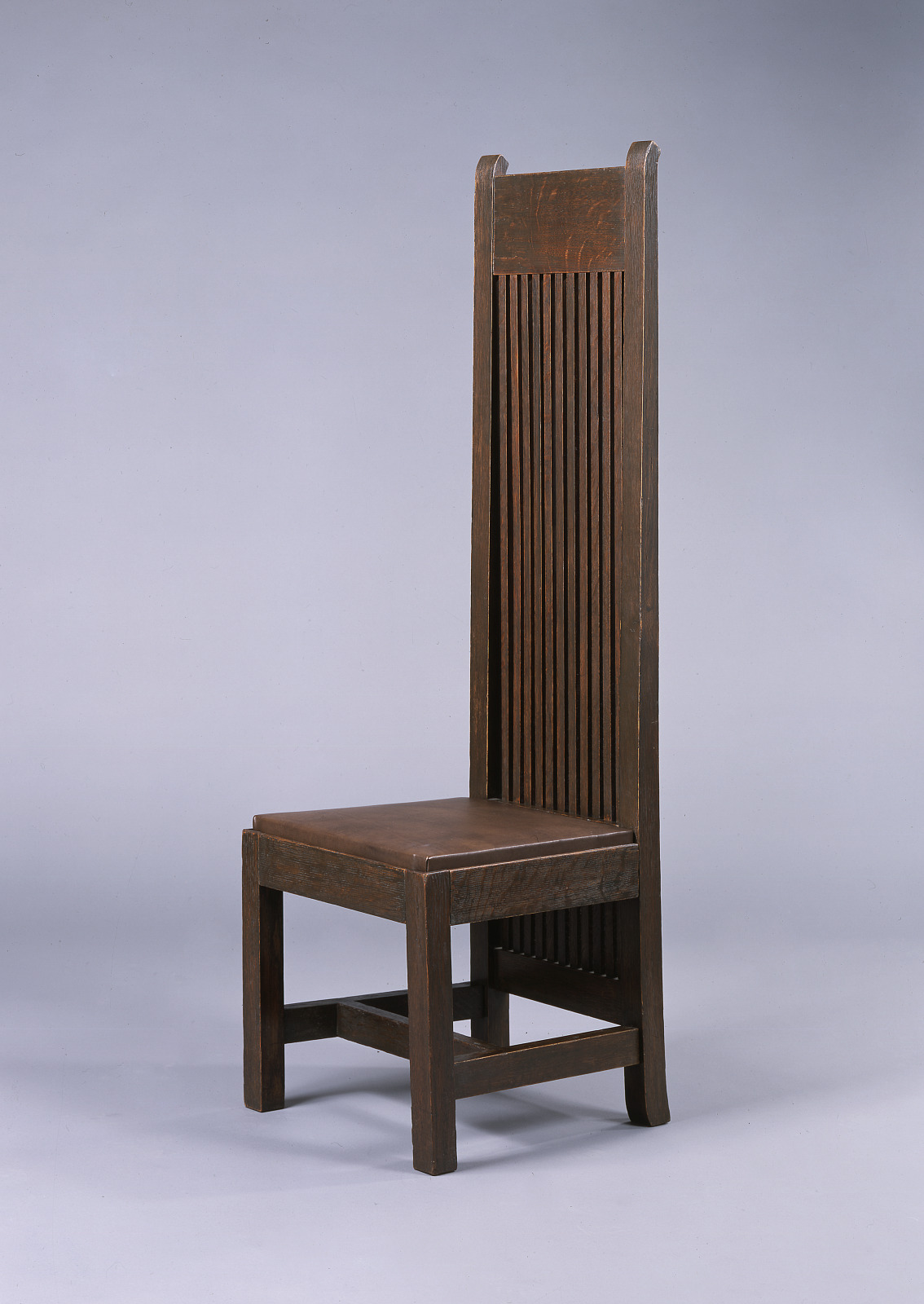
Frank Lloyd Wright, American, 1867–1959; probably made by John W. Ayers, American, 1850–1914; Dining Chair, from the Ward W. Willits House, Highland Park, Illinois, designed c.1903; oak with replacement synthetic leather upholstery; 56 x 17 1/16 x 18 3/16 inches; Saint Louis Art Museum, Funds given by the Decorative Arts Society 239:1977; © 2022 Frank Lloyd Wright Foundation. All Rights Reserved. Licensed by Artists Rights Society
The simple, elegant form of this chair does not depend on ornament or carving but on the rhythmic play of lines and shapes. Like all of Frank Lloyd Wright’s furniture, it was intended to harmonize with the home for which it was designed. Its high back contrasted with the dining room’s horizontal orientation and also served as a partition: when the six chairs were pulled up around the table, the dining ensemble became an intimate room within a larger space.
November 23, 2022
Still Life with a Basket of Fruit
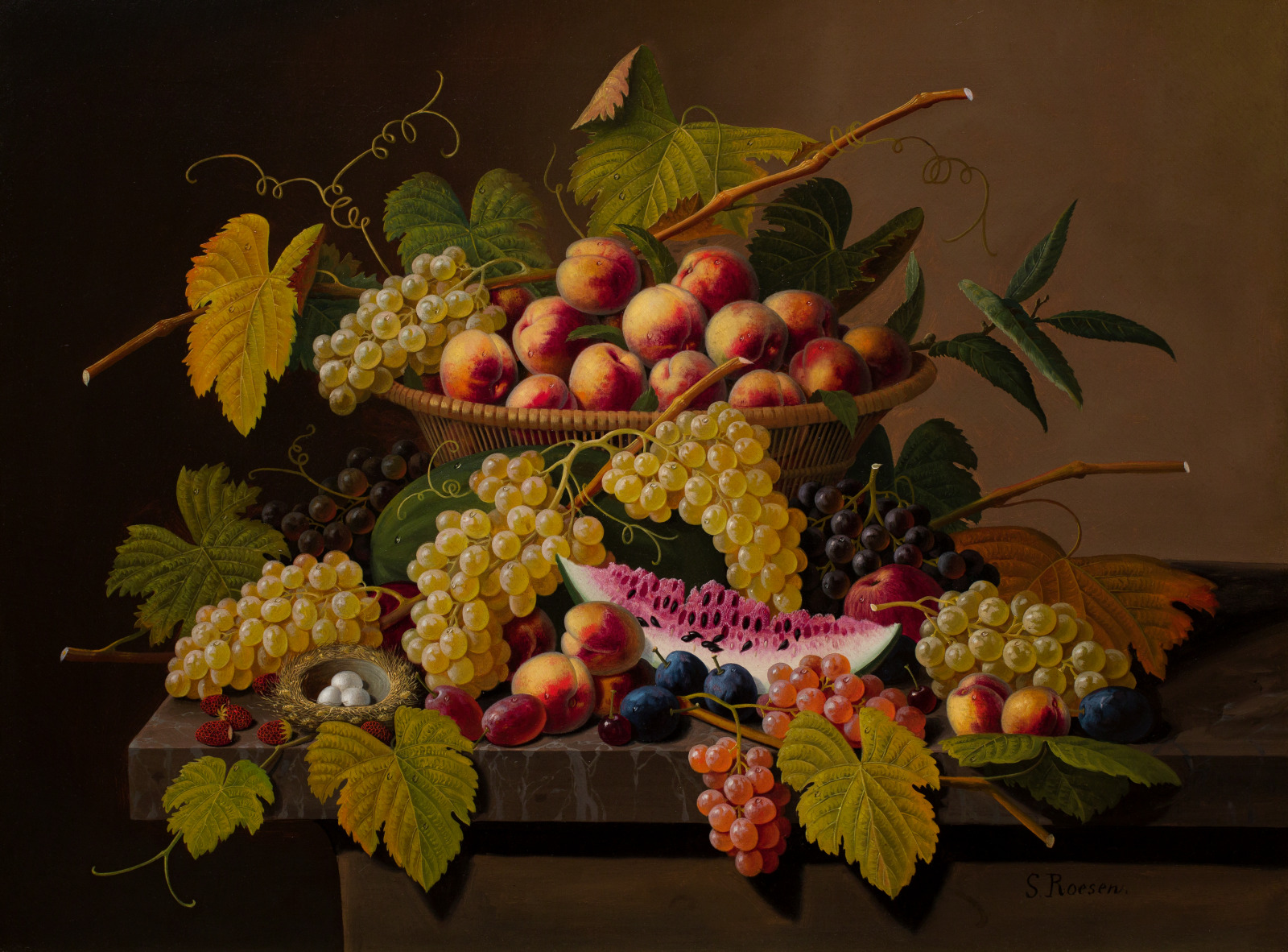
Severin Roesen, American (born Germany), 1816–after 1872; Still Life with a Basket of Fruit, c.1850–70; oil on canvas; 30 1/8 x 40 1/8 inches; Saint Louis Art Museum, Friends Fund 2:1970
Tendrils of grapevine playfully coil around a profusion of grapes, peaches, watermelon, plums, cherries, strawberries, an apple, and even a bird’s nest that cradles three delicate eggs. Miniscule dewdrops reward careful exploration. Artist Severin Roesen created this painting as a feast for the eyes. Hung in well-to-do parlors and dining rooms, paintings such as this celebrated the nation’s abundant natural resources, a source of pride and optimism for the future. Bountiful resources were especially appreciated in Williamsport, Pennsylvania, where the German-born artist worked. This “Lumber Capital of the World” produced 350 million board feet per day, creating more millionaires per capita than any other city in the mid-19th century. It was hard for those Americans, whose wealth was increasing so dramatically in the decades before the Civil War, to imagine that such resources could be depleted.
November 22, 2022
Votive Hand of Zeus Sabazios
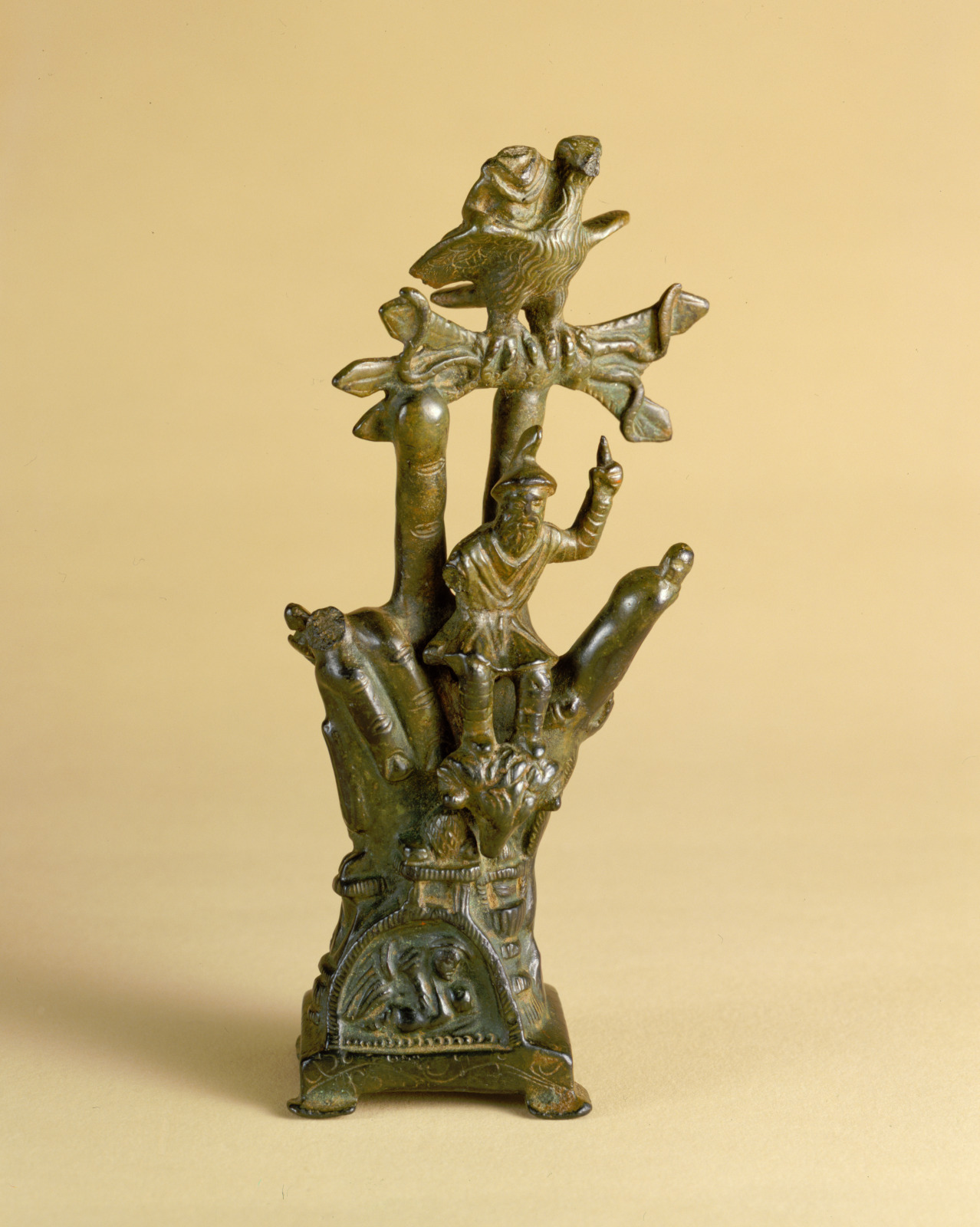
Votive Hand of Zeus Sabazios, 2nd–4th century; Roman, Imperial period; bronze; approximate: 8 x 3 x 2 inches; Saint Louis Art Museum, Museum Purchase 52:1956
As today, individuals in antiquity found ways to express their devotion to the gods. Whether maintaining a small altar at home for the worship of a particular deity, or presenting gifts called votives, at sanctuaries or graves, many of the objects that survive from antiquity served a ritual function.
This bronze in the shape of a hand represents Zeus in an Anatolian (Asia Minor) guise of Sabazios, who like Zeus was the god of the sky.
November 15, 2022
Self Portrait, plate 1 from the portfolio “Day and Dream”
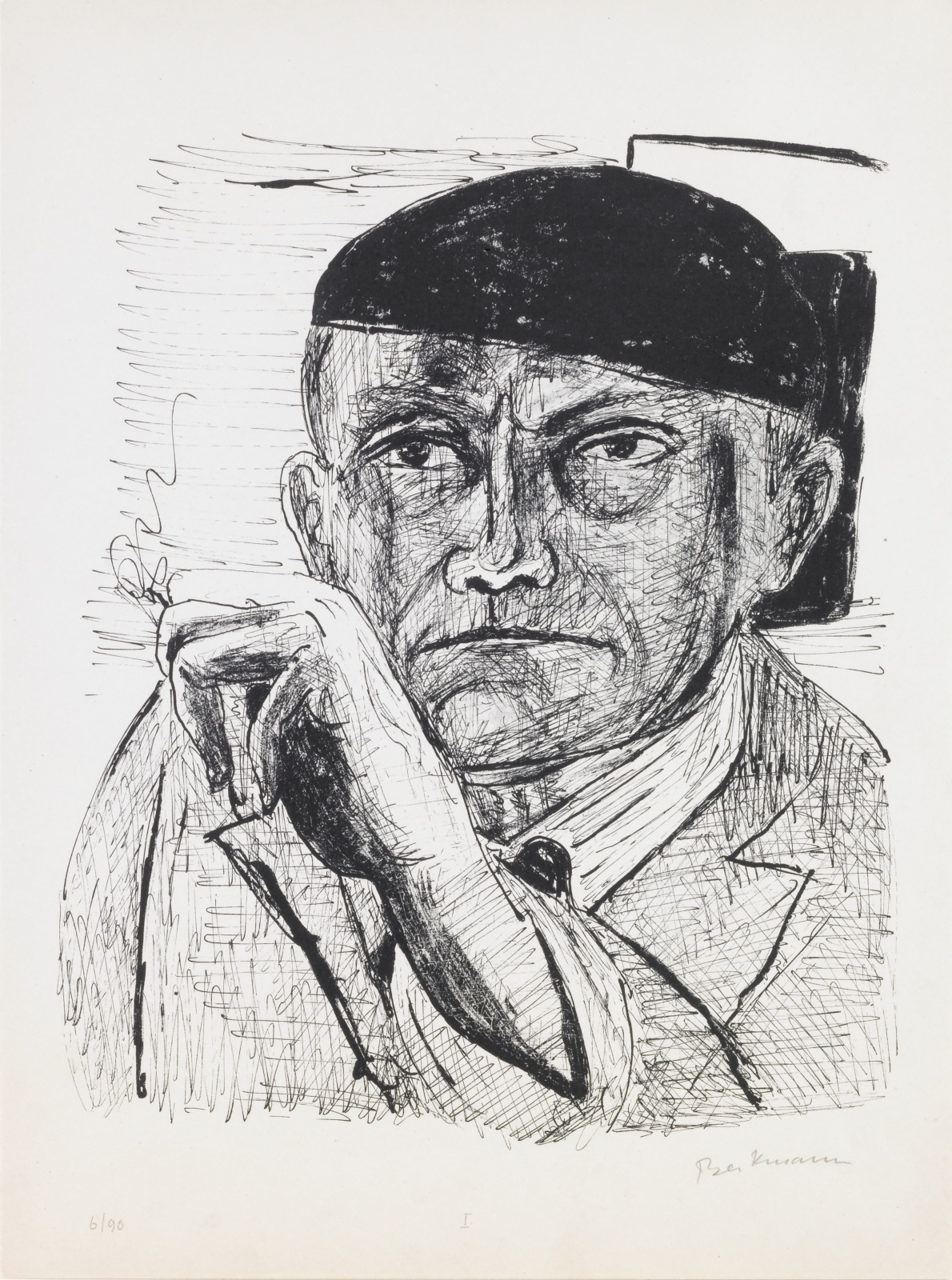
Max Beckmann, German, 1884–1950; published by Curt Valentin, German, 1902–1954; Self Portrait, plate 1 from the portfolio Day and Dream, 1946; lithograph; image: 12 1/2 x 10 3/8 inches, sheet: 15 13/16 x 11 13/16 inches; Saint Louis Art Museum, Neumann/Frumkin Collection, purchased with funds provided by the bequest of Morton D. May, by exchange, the bequest of Florene M. Schoenborn in honor of her father, David May, by exchange, Emily Rauh Pulitzer, Museum Shop Fund, Mr. and Mrs. Lester A. Crancer Jr., Phoebe and Mark Weil, The Sidney S. and Sadie Cohen Print Purchase Fund, Mr. and Mrs. David C. Farrell, the Julian and Hope Edison Print Fund, gift of George Rickey, by exchange, bequest of Helen K. Baer, by exchange, Suzanne and Jerry Sincoff, Museum Shop Fund, by exchange, gift of the Buchholz Gallery, by exchange, Museum Purchase, by exchange, Jerome F. and Judith Weiss Levy, bequest of Horace M. Swope, by exchange, and funds given by Fielding Lewis Holmes through the 1988 Art Enrichment Fund, by exchange 143:2002.1
What I want to show in my work is the idea that hides itself behind so-called reality. I am seeking the bridge that leads from the visible to the invisible.
—Max Beckmann, “On My Painting,” 1938
In Day and Dream, scenes from Max Beckmann’s exile in Amsterdam combine with dream imagery to create a fantasy world. It dates from an eventful time in his life. World War II (1938–1945) had ended, and Beckmann was looking for a new home. A New York art dealer’s commission for Day and Dream was an opportunity to make connections in the United States. The next year, Beckmann moved to St. Louis to teach at Washington University.
Today’s Object of the Day is currently on view in Day & Dream in Modern Germany, 1914-1945. To learn more about this artwork, listen to the audio guide dedicated to Max Beckmann’s Day & Dream portfolio.
November 13, 2022
Super Bowl Sunday

Katharine Kuharic, American, born 1962; Super Bowl Sunday, 2003; oil on linen; 34 3/8 x 22 3/8 inches; Saint Louis Art Museum, The Nancy and Kenneth Kranzberg Fund for Artists Based in the St. Louis Area 11:2004; © Katharine Kuharic, Courtesy of Katharine Kuharic and P·P·O·W, New York
Seven circular forms based on advertising images hover in a vibrant blue sky over this devastated landscape. They appear alternately as tornados, mandalas, and flowers. For Super Bowl Sunday, Katharine Kuharic drew on memories of the chaos she experienced leaving her downtown New York studio following the tragic events of September 11, 2001, and her subsequent relocation to St. Louis. The contrast between the colorful symbols of prosperity floating above and the rubble-strewn scene below conveys deliberate ambiguity—suspending this work between a surreal, dreamlike vision and a societal critique.
October 28, 2022
SHIP
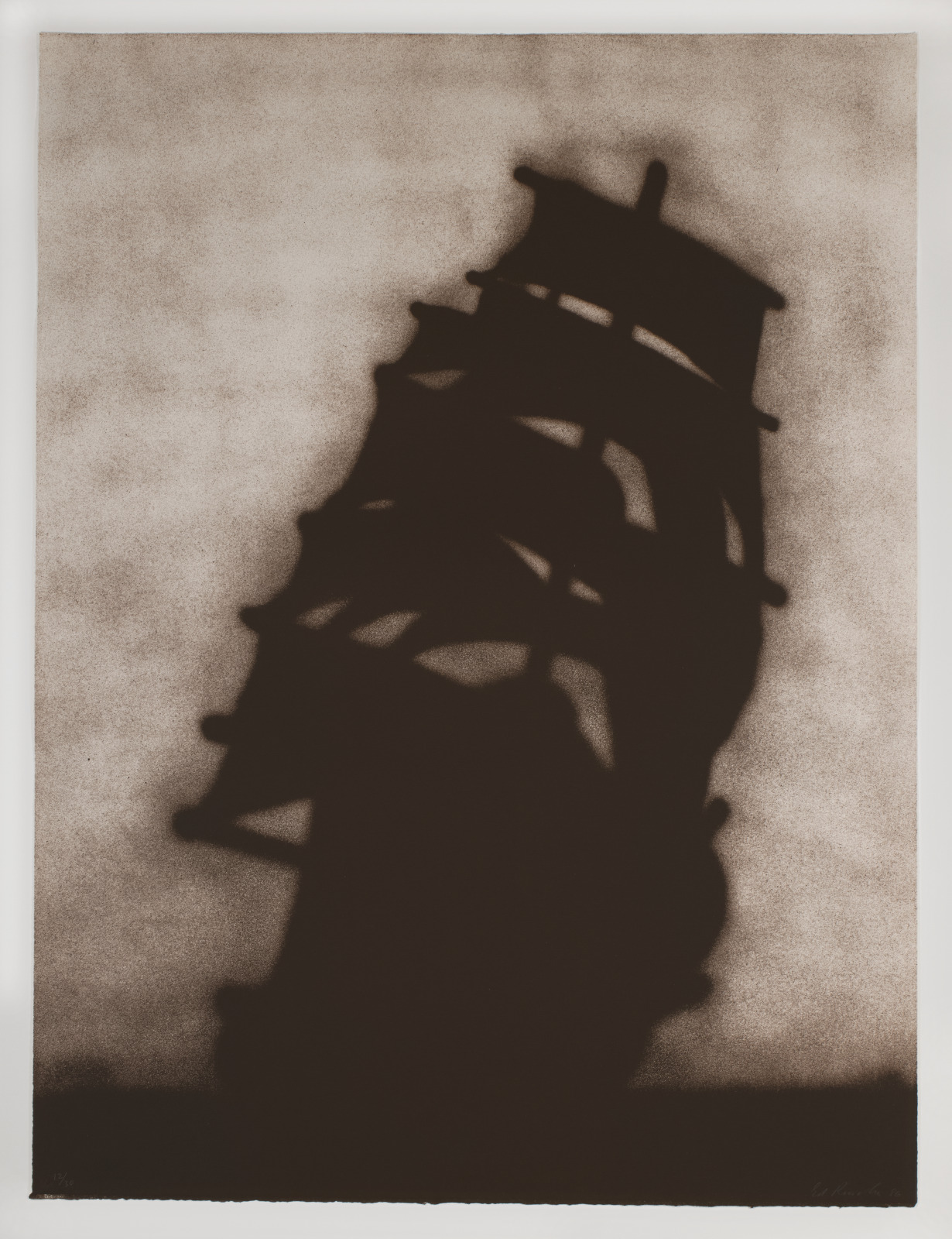
Edward Ruscha, American, born 1937; printed and published by Tamarind Institute, University of New Mexico, Albuquerque, New Mexico, founded 1970; SHIP, 1986; lithograph; sheet: 45 x 33 9/16 inches; Saint Louis Art Museum, Gift of Ted L. and Maryanne Ellison Simmons; and funds given by the Marian Cronheim Trust for Prints and Drawings, Museum Purchase, Friends Fund, The Sidney S. and Sadie Cohen Print Purchase Fund, and the Eliza McMillan Purchase Fund 777:2020; © Ed Ruscha
A ship emerges over the horizon—or is it disappearing into the mist? Ed Ruscha plays up the ambiguity of this lithograph to confuse the question of movement and directionality in the looming shape. As in much of his work, here Ruscha isolates a form and, by stripping it down, engages with the mythologizing built up around certain symbols. A ship, for example, could indicate military and economic superiority at sea that spurred both connection and exploitation across otherwise unsurpassable distances.
October 27, 2022
Serape
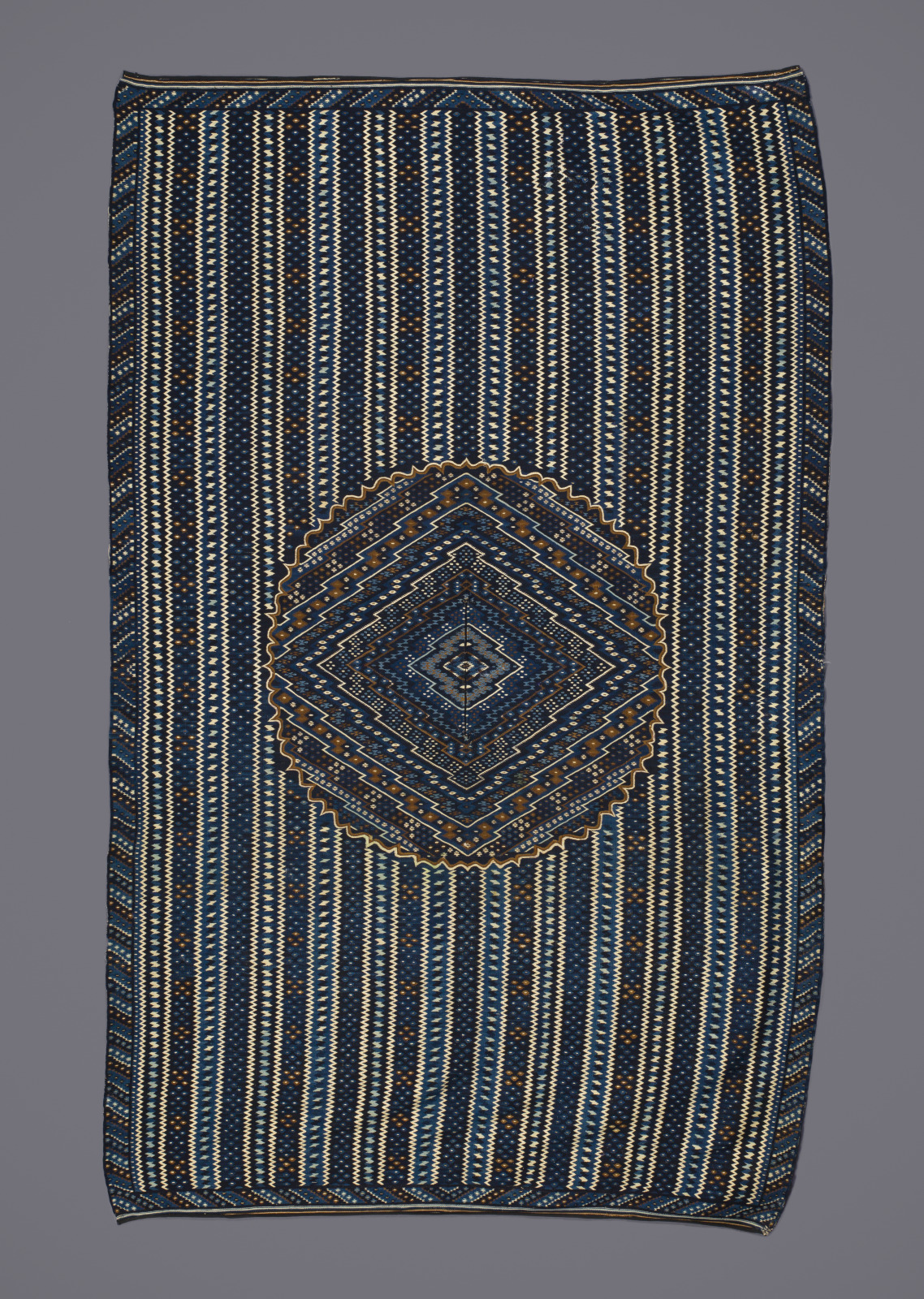
Mexican artist; Serape, c.1800; wool and dye; 93 x 56 1/2 inches; Saint Louis Art Museum, Gift of Elissa and Paul Cahn 262:2017
The intricate pattern of this wearing blanket achieves a striking sense of tension between the central diamond figure and the repeating, small-scale background. Featuring one of the most complex designs of its era, this textile was likely created by specialist weavers at a small workshop north of Mexico City. Often called Saltillo serapes, these garments circulated widely across colonial Mexico (New Spain), including Santa Fe and Taos in the present-day United States. One of the major venues for trade in the colonial era was an annual fair in Saltillo, today the state capital of Coahuila, Mexico.
October 25, 2022
Head of a Boy
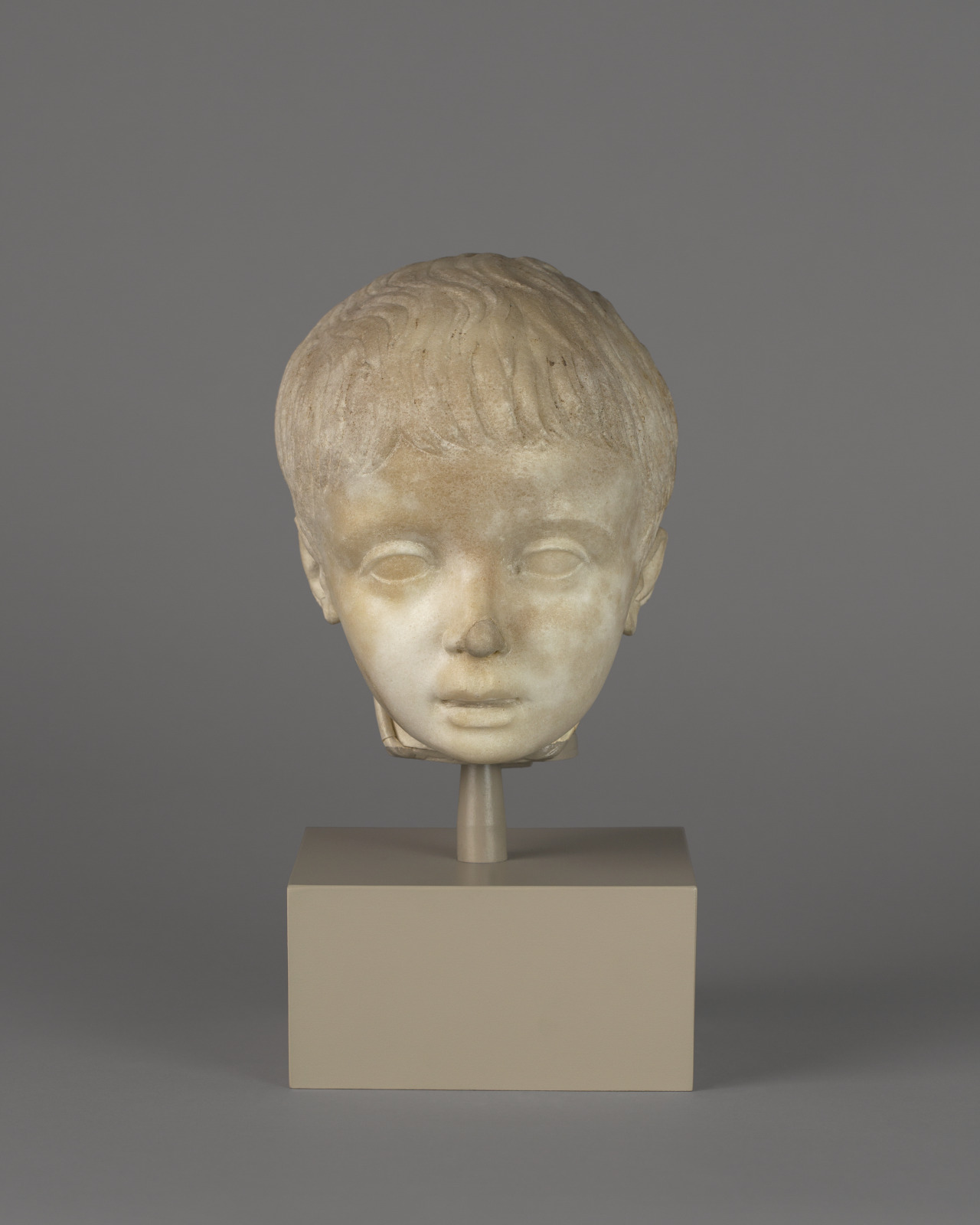
Head of a Boy, 1st century AD; Roman, Imperial period; marble; height: 7 11/16 inches; Saint Louis Art Museum, Funds given by Dorothy and Kent Kreh 92:2019
This portrait head of a young boy, perhaps a toddler, captures the child with downturned eyes. His mouth slightly open in a moment of sleepy repose. His full cheeks, delicately arched eyebrows, and diminutive nose confirm his young age. The finely carved and heavy-lidded eyes confer a sense of reverie to the work, which could be a reflection of the sculpture’s original function as a funerary portrait.
Images of children in antiquity are not as common as portraits and images of adults, possibly due to the high rate of infant and child mortality. However, during the Roman Republic (509 BC—27 BC) and continuing into the Imperial period (27 BC—330 AD), there is a marked increase in portraits of children, particularly boys. This increase in popularity has been linked to changing Roman funerary traditions where displaying portraits of deceased relatives and ancestors became a common practice.
October 23, 2022
The Church Supper
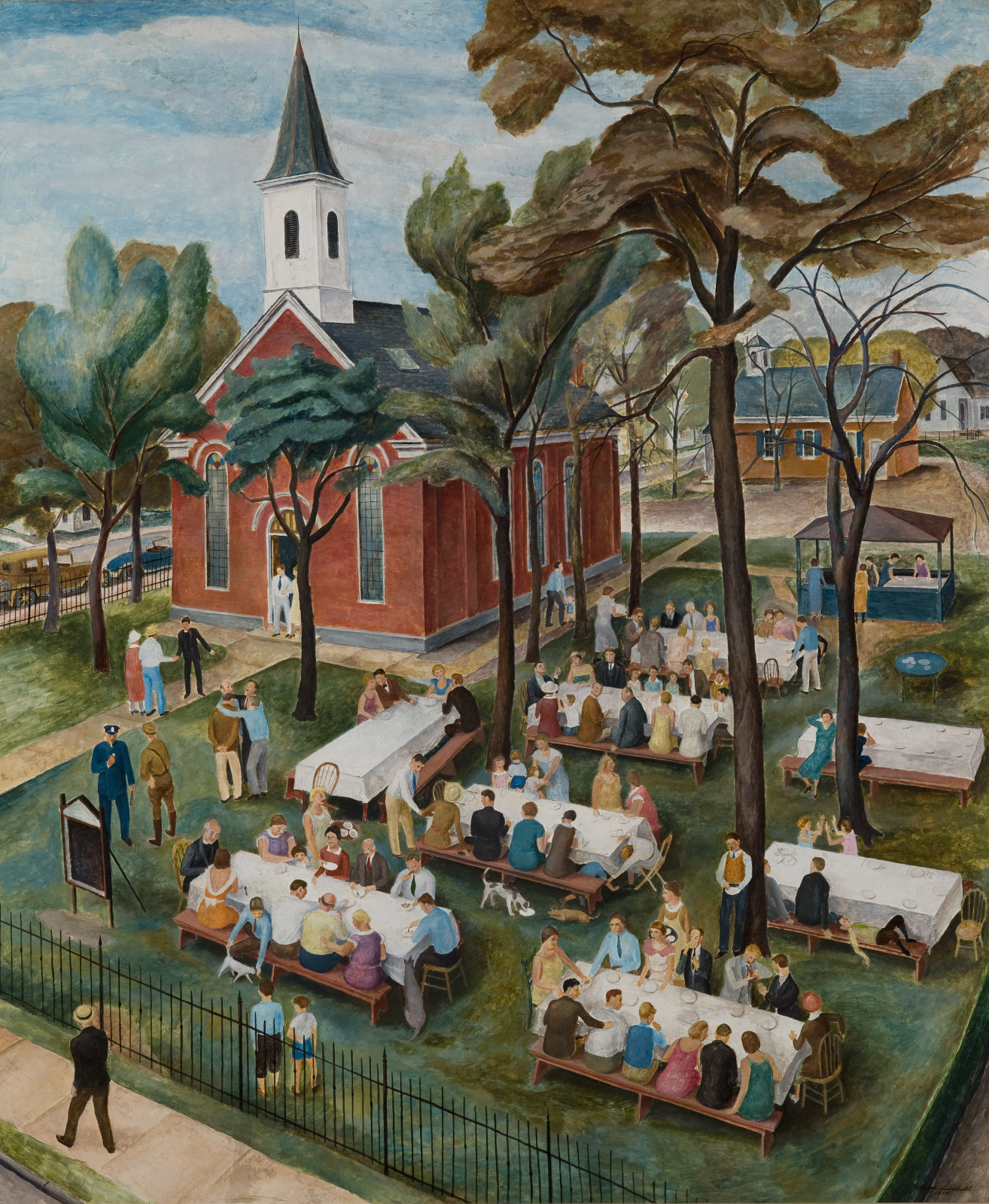
James Baare Turnbull, American, 1909–1976; The Church Supper, 1934; tempera on plywood; 36 1/4 x 30 5/16 inches; Saint Louis Art Museum, Gift of Mrs. James Baare Turnbull 1894:1981; © Estate of James Baare Turnbull
-
View Historical/Contemporary Images
![1867-1938]()
St. Paul's Lutheran Church, Des Peres, Missouri, 1867-1938; Historical Image
Townspeople eat supper, converse with friends, rest, and feed table scraps to their pets in this painting of a church social. James Turnbull included a representation of himself at the right, leaning against a tree. This particular gathering took place at St. Paul’s Lutheran Church in Des Peres, Missouri. Longtime church members recall fondly the many afternoon picnics held outdoors because the church lacked a basement fellowship hall. Such depictions of everyday life were in favor in the 1930s and 1940s. Their popularity helped to bring recognition to similar everyday scenes pictured by self-taught artists in memory paintings.
October 22, 2022
Stone Sea

Andy Goldsworthy, English, born 1956; Stone Sea, 2012; Missouri limestone; courtyard: 12 feet x 73 feet x 20 feet; Saint Louis Art Museum, Commissioned by the Saint Louis Art Museum, Director’s Discretionary Fund, and funds given by Mr. and Mrs. Andrew C. Taylor, Paul M. Arenberg Family, James G. and Catherine B. Berges, Mr. and Mrs. F. Gilbert Bickel III, Alison and John Ferring, Roxanne H. Frank, Nancy and Kenneth Kranzberg, Mr. and Mrs. John Peters MacCarthy, Pam and Greg Trapp, Anabeth and John Weil, Mr. and Mrs. Gary Wolff, an anonymous donor, Mr. and Mrs. William C. Rusnack, Mr. and Mrs. David C. Farrell, Jane S. Shapleigh, Hope and Julian Edison, Eleanor J. Moore, Terry Moore Shepley, the Paul and Elissa Cahn Foundation, Mrs. Barbara S. Eagleton, Marcia Jeanne Hart, Bettie S. Johnson, Kodner Gallery, Jim and Dorte Probstein, Emily Rauh Pulitzer, Judge and Mrs. Charles A. Shaw, Susan and David Sherman III, Mary Ann and Andrew Srenco, the Third Wednesday Group, Keith H. Williamson, Jerome F. and Judith Weiss Levy, Helen Kornblum; and gift of Paul and Elissa Cahn and bequest of Guy A. Thompson, by exchange 30:2012; © Andy Goldsworthy 2012, Courtesy Galerie Lelong & Co., Photography by Scott Smith
For Stone Sea, Andy Goldsworthy drew inspiration from St. Louis geology and the city’s underlying bedrock of limestone, formed in prehistoric times when the Midwest was covered by water. Using limestone from a local quarry, Goldsworthy constructed 25 unique arches employing ancient Roman dry-stone engineering. This dense network of stone arches each measure about 10 feet high and weigh 300 tons in total.
October 19, 2022
Diogenes

Ugo da Carpi, Italian, active c.1502–1532; after Parmigianino, Italian, 1503–1540; Diogenes, c.1527–30; chiaroscuro woodcut; image: 19 x 13 7/8 inches, sheet (trimmed to image): 19 x 13 7/8 inches; Saint Louis Art Museum, The Sidney S. and Sadie Cohen Print Purchase Fund 23:1984
This remarkable woodcut by Ugo da Carpi presents the fourth-century B.C. philosopher Diogenes in a spiraling, muscular pose. Having relinquished all earthly goods, Diogenes is seated naked and immersed in thought with his few possessions: three books, a wooden tub, and a cloak. The plucked chicken at right also appears as an attribute, since Diogenes had mocked Plato’s definition of man as a featherless biped. Ugo da Carpi introduced to Italy the chiaroscuro woodcut, which was developed to suggest the effect of a tonal drawing. He produced this print from four interdependent woodblocks that form a composition when printed together.
October 15, 2022
Fight or Flight

Shara Hughes, American, born 1981; Fight or Flight, 2018; oil and acrylic on canvas; 68 x 60 inches; Saint Louis Art Museum, Gift of the Katy and Kyle Miller Family Foundation 29:2019; © Shara Hughes
In this layered composition, sinuous forms and spatial distortions coincide with expressive brushstrokes and vivid color, creating a space both otherworldly and familiar. Seemingly abstract at first glance, Fight or Flight slowly divulges its relationship to landscape. A red sun peeks out in the upper left corner, and a sliver of turquoise-blue sea appears in the distance. Shara Hughes refers to her paintings as psychological or invented landscapes. Composed spontaneously, rather than from preliminary sketches, her works radiate a complexity that derives from memory, observation, and illusionism.
Today’s Object of the Day is currently on view in Shifting Perspectives: New Views on Landscape, located in the Roxanne H Frank Gallery 257.
October 13, 2022
Venus with Necklace
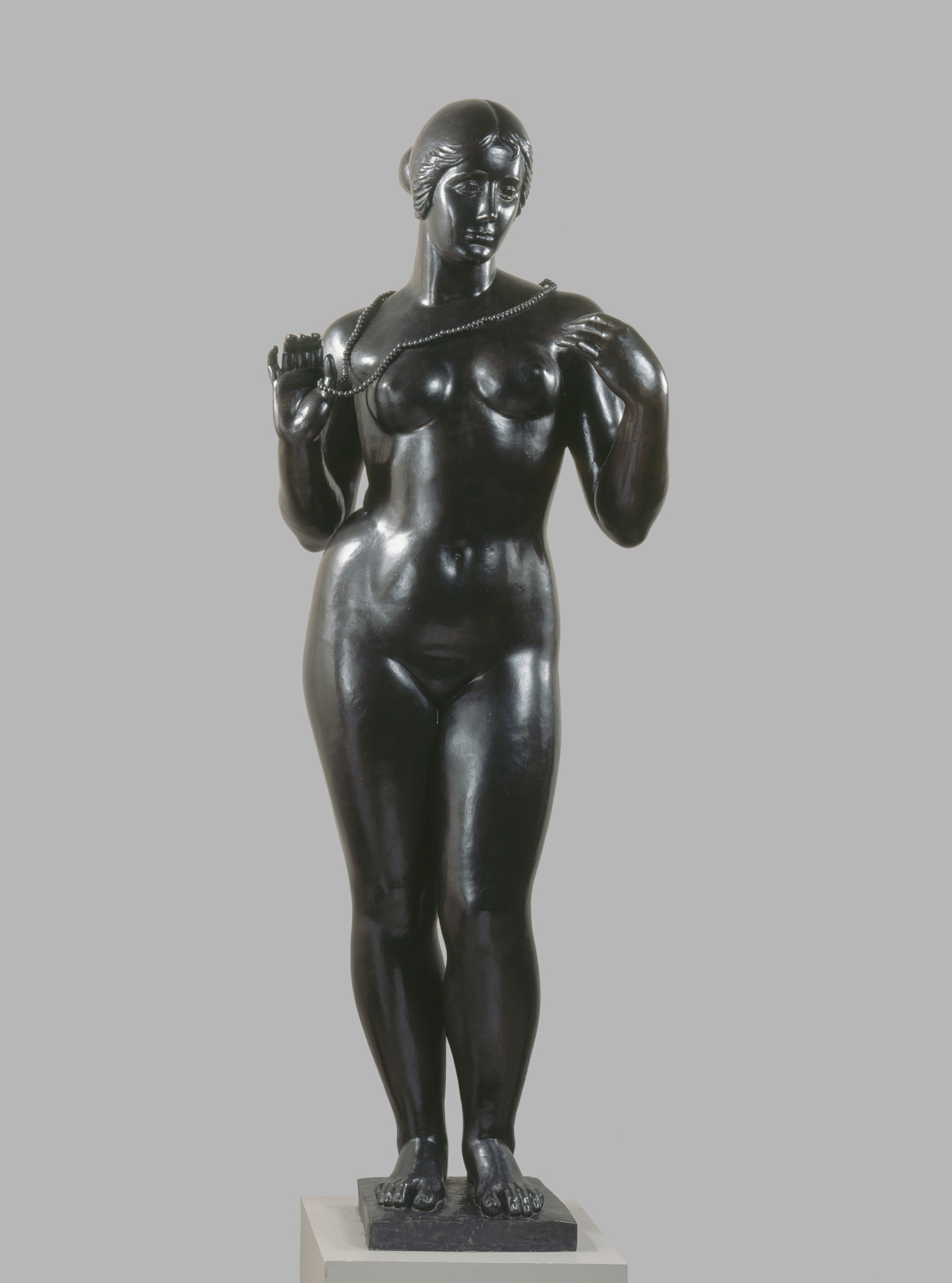
Aristide Maillol, French, 1861–1944; Venus with Necklace, 1928–29; bronze; height: 69 1/4 inches; Saint Louis Art Museum, Museum Purchase 1:1941
This monumental, yet graceful figure approaches the realm of abstraction: the surface of her body is comprised of smooth, rounded volumes and personal expression is absent from her face. Maillol aspired toward simplicity and perfection in his sculptures, which led him to return to the same subjects over and over again. It took him fifteen years to complete his modern rendition of the ancient Roman goddess Venus, and he executed two versions of her, both with and without a necklace.
October 10, 2022
Neuf Series

Hock E Aye Vi Edgar Heap of Birds, Cheyenne and Arapaho Nations, born 1954; Neuf Series, 1995; acrylic on canvas; 80 x 107 inches; Saint Louis Art Museum, Museum Minority Artists Purchase Fund 13:1996; © Hock E Aye Vi Edgar Heap of Birds
In this painting, colorful shapes with jagged, sawtooth edges form a layered abstraction. This work is from Edgar Heap of Birds’s Neuf series of paintings (neuf is the Cheyenne word for four), which he began in the 1980s. Here the artist created an unconventional landscape, eliminating the horizon line and surrounding viewers with hues of the land itself. The brightly colored shapes reference the wooded canyons of the Cheyenne and Arapaho Nations’s reservation lands in Oklahoma. Heap of Birds notes, “the paintings are inspired by the cedar tree family and canyon lands. These works are about sovereignty and landscape, and they speak to the issues of homeland and beauty.”
Today’s Object of the Day is currently on view in Shifting Perspectives: New Views on Landscape, located in the Roxanne H Frank Gallery 257.
October 1, 2022
Goya conoce a Posada (Goya Meets Posada), from the series Homage to Goya II: Disasters of War

Enrique Chagoya, American (born Mexico), born 1953; printed and published by Segura Publishing Company, Tempe, Arizona, founded 1981; Goya conoce a Posada (Goya Meets Posada), from the series Homage to Goya II: Disasters of War, 2003; etching, aquatint, and rubber stamp; plate: 6 3/4 x 8 1/2 inches, sheet: 13 x 14 7/8 inches; Saint Louis Art Museum, Gift of Ted L. and Maryanne Ellison Simmons; and funds given by the Marian Cronheim Trust for Prints and Drawings, Museum Purchase, Friends Fund, The Sidney S. and Sadie Cohen Print Purchase Fund, and the Eliza McMillan Purchase Fund 481:2020.6; © Enrique Chagoya
Enrique Chagoya produced a handful of prints over a decade in conversation with the work of the Spanish artist Francisco Goya. Chagoya emulated Goya’s achievements as an etcher and appropriated his compositions. However, he transformed them with his own commentaries on the dangers and evils of today’s world, in spheres ranging from contemporary art to nuclear war. In Goya meets Posada, a print entirely of Chagoya’s invention, he introduced two of his most-admired predecessors—Goya and José Guadalupe Posada. With his own playfulness, Chagoya renews their investments in the power of art to shine light in dark places.
To learn more about Enrique Chagoya and the collection, watch
SLAM in 60: Enrique Chagoya at the Saint Louis Art Museum
September 27, 2022
The Artist’s Brother
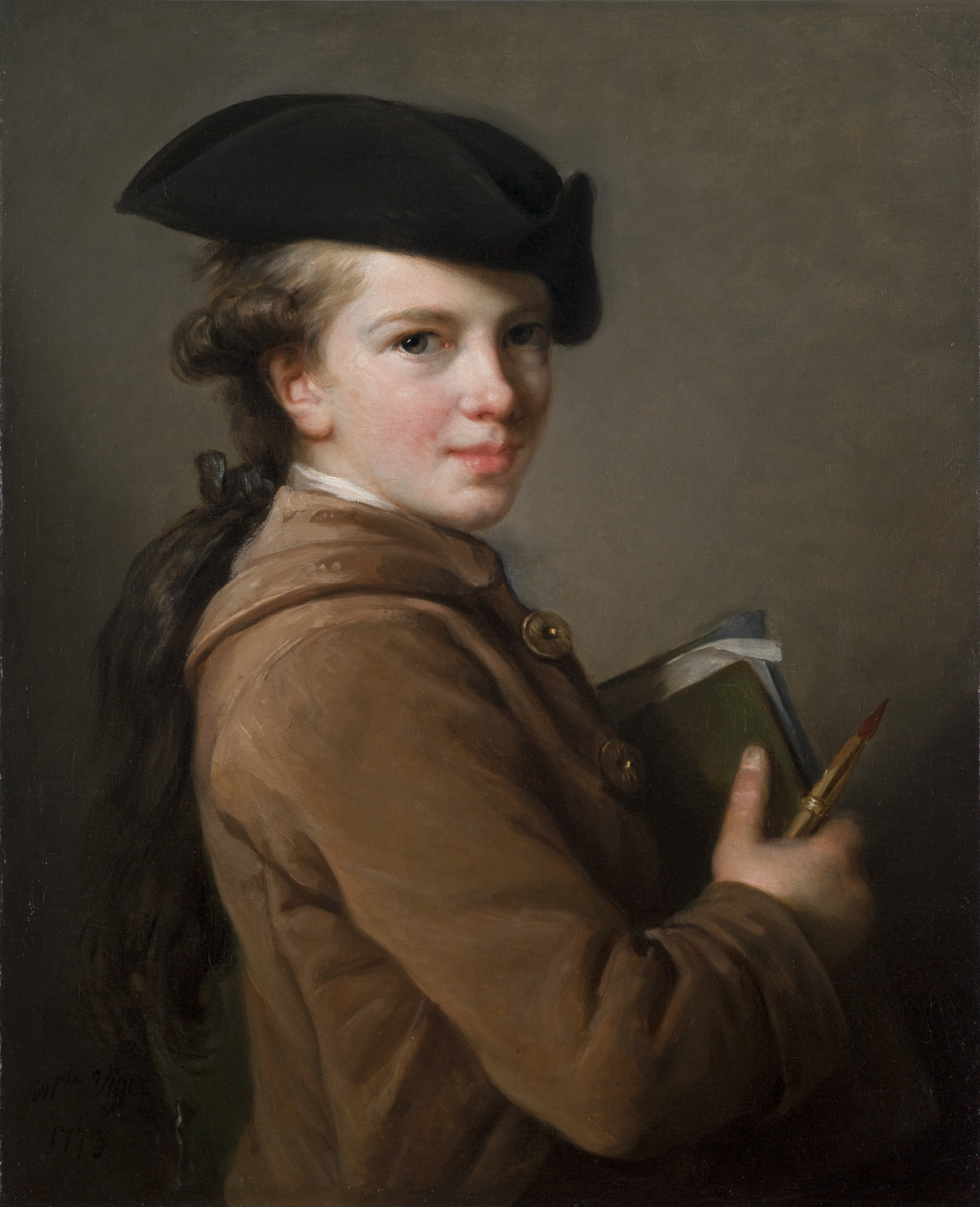
Elisabeth Louise Vigee-LeBrun, French, 1755–1842; The Artist's Brother, 1773; oil on canvas; 24 1/4 x 19 7/8 inches; Saint Louis Art Museum, Museum Purchase 3:1940
By posing the boy looking over his shoulder and by angling his hat over his forehead, Elisabeth Louise Vigée-LeBrun achieves a lovely image of youthful bravado. The portrait – very likely the artist’s brother Etienne at the age of fifteen – is probably the one the artist described in her memoirs as “my brother in schoolboy’s dress.” She alludes to his interest in letters (he later became a celebrated writer) by including a sheaf of papers and a pen. The artist created this portrait when she was only eighteen.
September 24, 2022
The Eviction
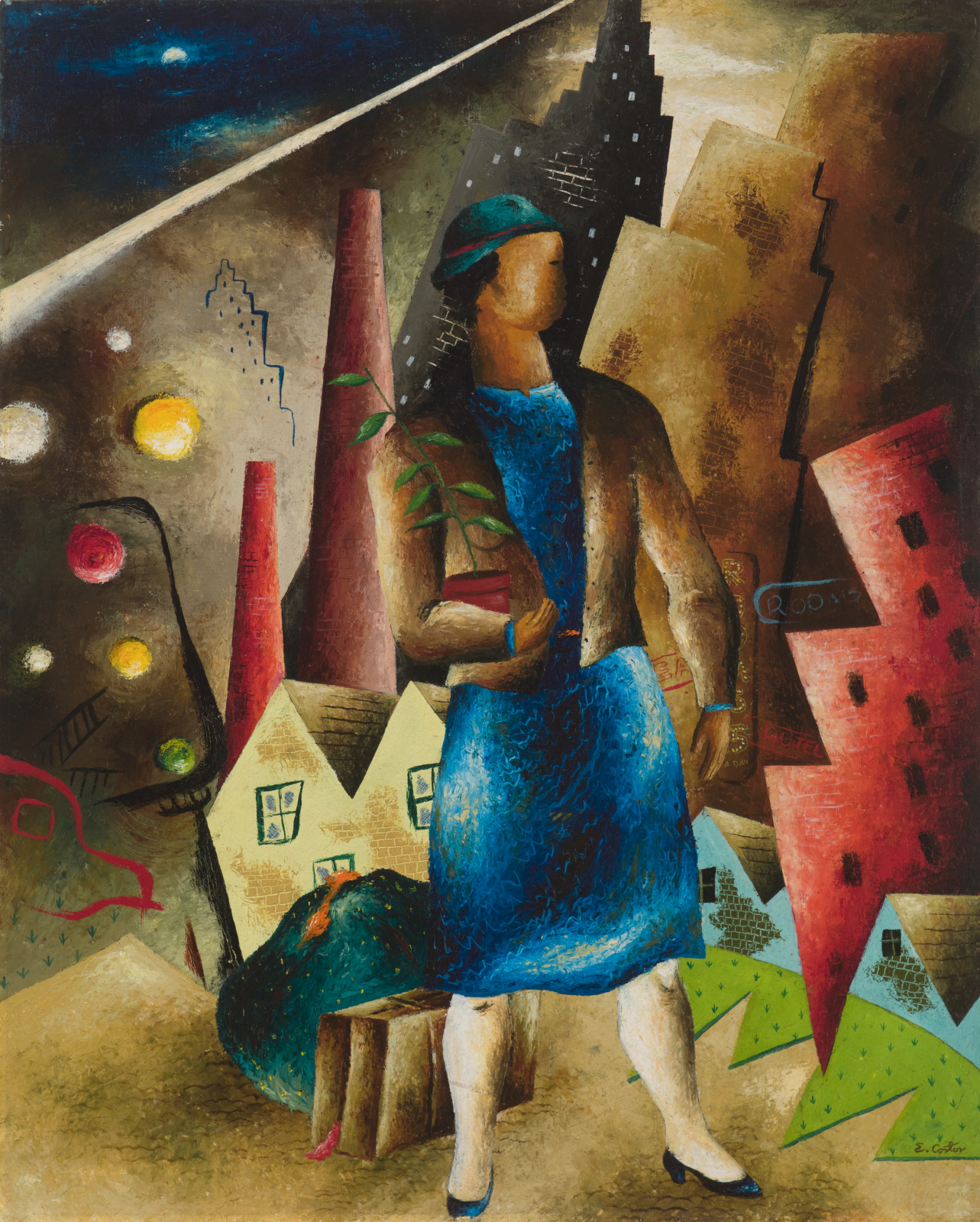
Eldzier Cortor, American, 1916–2015; associated with the Federal Works Agency, Work Projects Administration; The Eviction, c.1939–40; oil on canvas; 30 1/8 x 24 1/4 inches; Saint Louis Art Museum, Gift of the Federal Works Agency, Work Projects Administration 353:1943
Isolated against a backdrop of abstract skyscrapers, Eldzier Cortor’s African American woman stands confidently, even though she is now displaced. Cortor used the basic elements of art—the woman’s organic, upright form in contrast to the angular, jagged forms of the city, for instance—to evoke the resolve of African Americans facing social and economic challenges. This painting is typical of the artist’s early work, which centered on daily life in his Chicago neighborhood. In 1941, Cortor helped establish the South Side Community Art Center, an organization that offered the first significant opportunity for black artists to exhibit in Chicago.
September 21, 2022
Ceremonial Board (gerua wenena)

Siane artist, Papua New Guinea; Ceremonial Board (gerua wenena), mid-20th century; wood, pigment; 55 11/16 x 14 15/16 x 7/8 inches; Saint Louis Art Museum, Gift of Morton D. May 19:1977
Colorful, geometric designs enhance an abstracted human silhouette. This figure’s folded arms and legs suggest a crouching position, with the hands just below either side of the head. The lower section of the sculpture, which seems to suggest legs, would have been concealed when worn, disappearing into the headdress that mounted the figure atop the performer’s head. In an impressive display, hundreds of men wear figures such as this, called gerua, during dances celebrating grand periodic exchanges of pigs. These occasions give rhythm to the life of Siane communities in the Highlands of New Guinea. The painted motifs of a gerua are specific to different participating clans.
September 15, 2022
Spells and Incantations
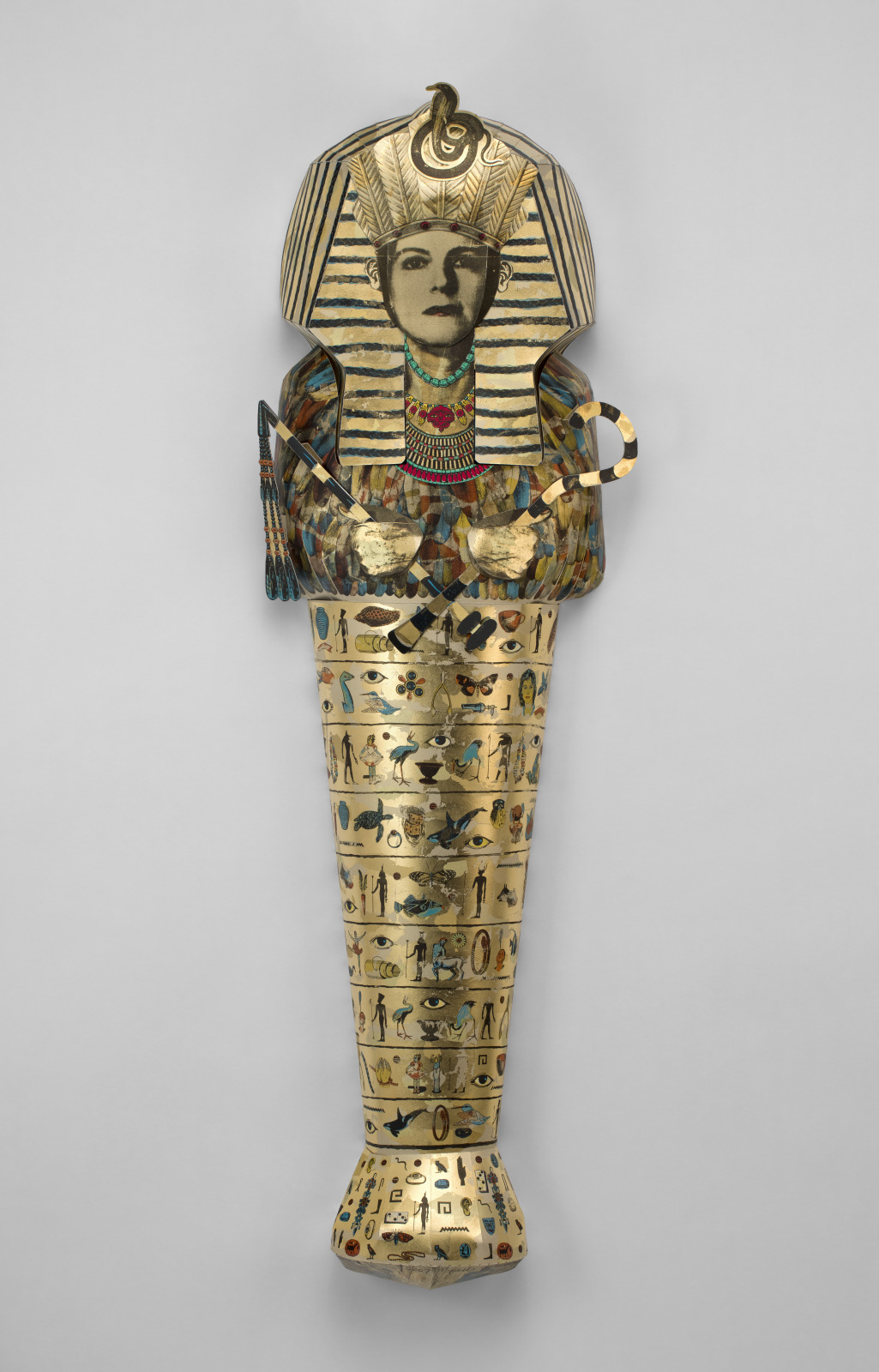
Jane Hammond, American, born 1950; printed and published by Shark's Ink, Lyons, Colorado, founded 1976; Spells and Incantations, 2007; lithograph and screenprint; 18 3/4 x 7 1/2 x 60 1/2 inches; Saint Louis Art Museum, Gift of Ted L. and Maryanne Ellison Simmons; and funds given by the Marian Cronheim Trust for Prints and Drawings, Museum Purchase, Friends Fund, The Sidney S. and Sadie Cohen Print Purchase Fund, and the Eliza McMillan Purchase Fund 619:2020; © Jane Hammond
This astonishing three-dimensional lithograph was printed on paper and cut and assembled into the shape of an Egyptian coffin. A photograph of the artist’s face functions as the mummy’s portrait. The pseudo-hieroglyphs adorning the surface are drawn from Jane Hammond’s personal repository of 276 found images compiled from printed illustrations. Of this work, Hammond says: “I think of this piece as an amulet for propitious things in the journey of this life and beyond.”
September 10, 2022
To Fix It (Wall Clock II)
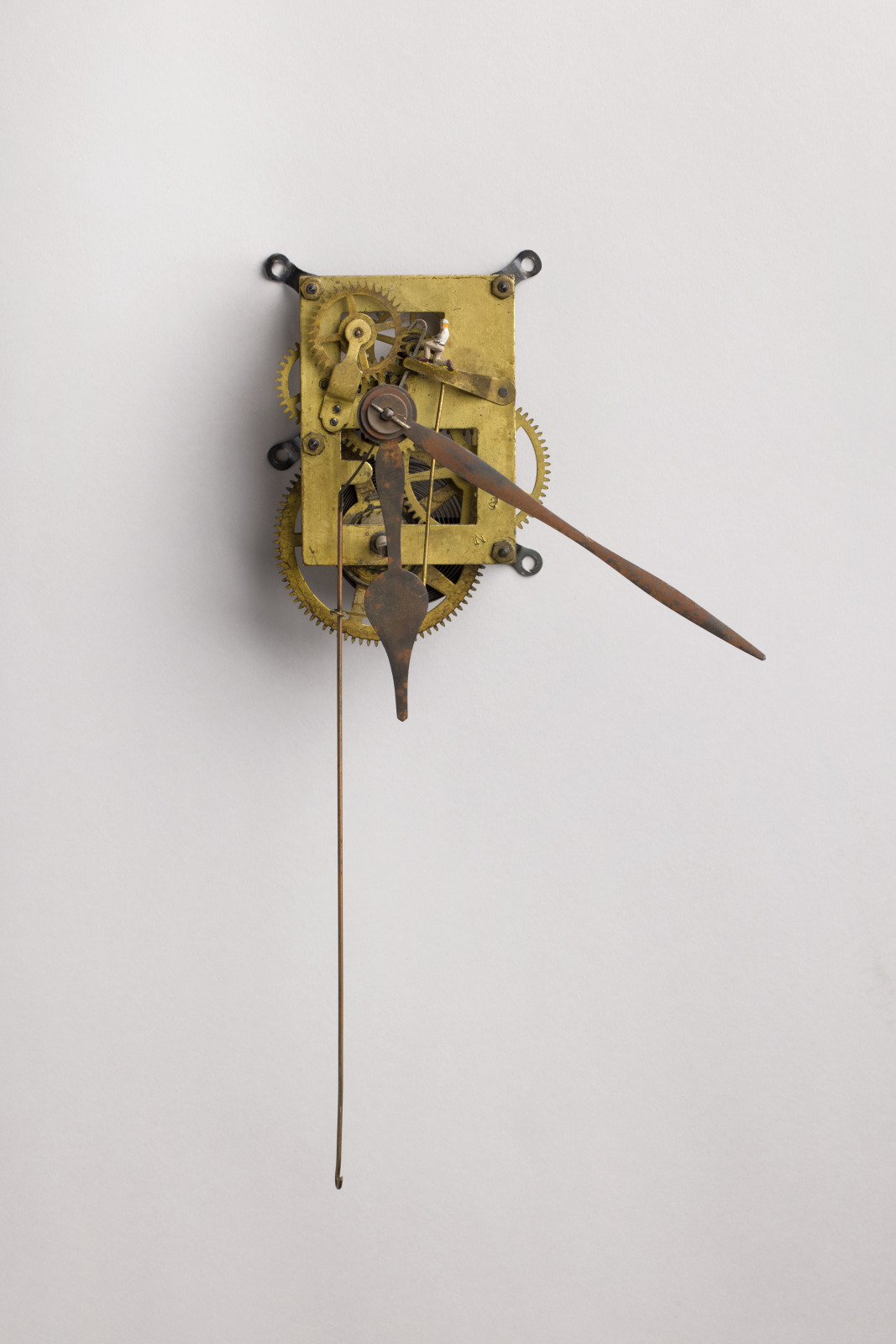
Liliana Porter, Argentine, born 1941; To Fix It (Wall Clock II), 2018; metal with figurine; 11 x 3 x 4 1/2 inches; Saint Louis Art Museum, Gift of Ted L. and Maryanne Ellison Simmons; and funds given by the Marian Cronheim Trust for Prints and Drawings, Museum Purchase, Friends Fund, The Sidney S. and Sadie Cohen Print Purchase Fund, and the Eliza McMillan Purchase Fund 773:2020; © Liliana Porter, Courtesy of Sicardi | Ayers | Bacino, Houston TX
Look closely to find a small figurine of a man making his way among the gears and hands of this disrobed clock. The title, To Fix It, suggests a problem that needs solving, and one made more challenging by the discrepancy in scale between the clock’s mechanisms and the figure. The toys and figurines incorporated into Liliana Porter’s work invite a humorous response to the puzzling scenarios she imagines. Underlying that playfulness is an awareness of the expectations and burdens imposed by the labor and effort of daily life.
September 9, 2022
Bowl with Painted Motifs
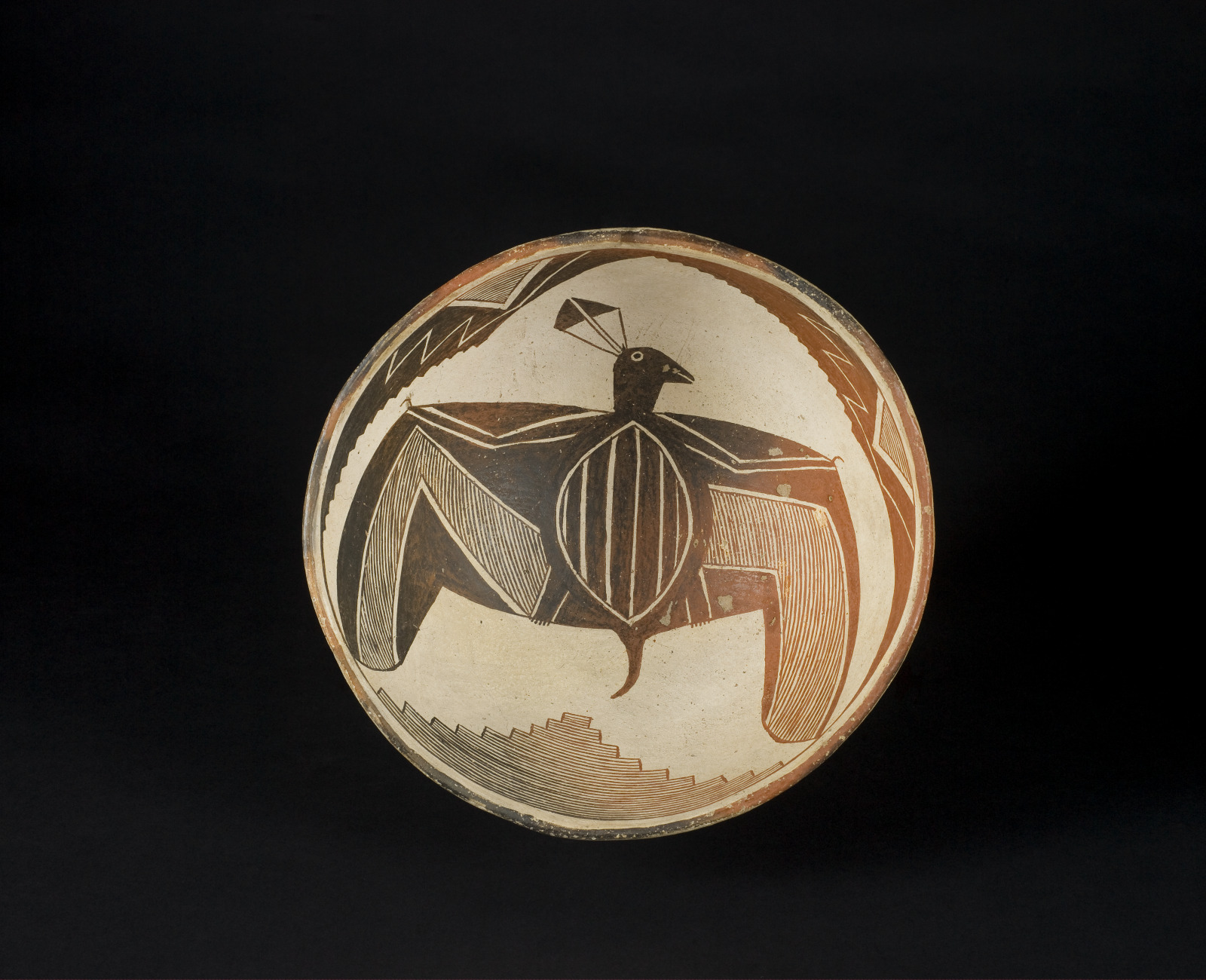
Bowl with Painted Motifs, c.1060–1110; Mimbres, New Mexico; ceramic with pigment; 4 1/4 x 9 1/4 inches; Saint Louis Art Museum, Museum Purchase 113:1944
The Mimbres developed a highly refined tradition of pottery that is characterized by beautifully painted narrative scenes. The central, concave area of this bowl’s interior depicts an animal with the outstretched wings of a bat and the ears of a rabbit. The peoples descended from the Mimbres probably reflect the beliefs of their ancestors when they see bats as messengers of death and creatures that accompany the deceased to the underworld; rabbits are associated with the moon. The white background and circular shape of this bowl suggest a full moon as the background for the silhouette of the flying creature. Bowls of this kind were placed over the face of the deceased, perhaps in hopes that the image within the bowl would guide the spirit safely through the underworld.
September 7, 2022
Untitled (After Yves St. Laurent)

Enrique Chagoya, American (born Mexico), born 1953; printed and published by Magnolia Editions, Oakland, California, founded 1981; Untitled (After Yves St. Laurent), 2016; etching with acrylic; plate: 17 1/4 x 33 1/8 inches, sheet: 22 1/2 x 38 1/4 inches; Saint Louis Art Museum, Gift of Ted L. and Maryanne Ellison Simmons; and funds given by the Marian Cronheim Trust for Prints and Drawings, Museum Purchase, Friends Fund, The Sidney S. and Sadie Cohen Print Purchase Fund, and the Eliza McMillan Purchase Fund 529:2020; © Enrique Chagoya
Modern art and high fashion collide in dresses inspired by the painter Piet Mondrian (Dutch, 1872–1944) and designed by Yves Saint Laurent (French, 1936–2008). With his usual insight, Enrique Chagoya modified this image of elite consumption by affixing the heads of vastly different cultural figures. The faces range from famed Mexican professional wrestler Blue Demon to a New Guinea Tambul warrior photographed by Irving Penn (American, 1917–2009). Chagoya probes the instabilities of identity and status, questioning the intersection of personhood and representation—just who is the “subject” and what is “art”?
September 4, 2022
Captain America
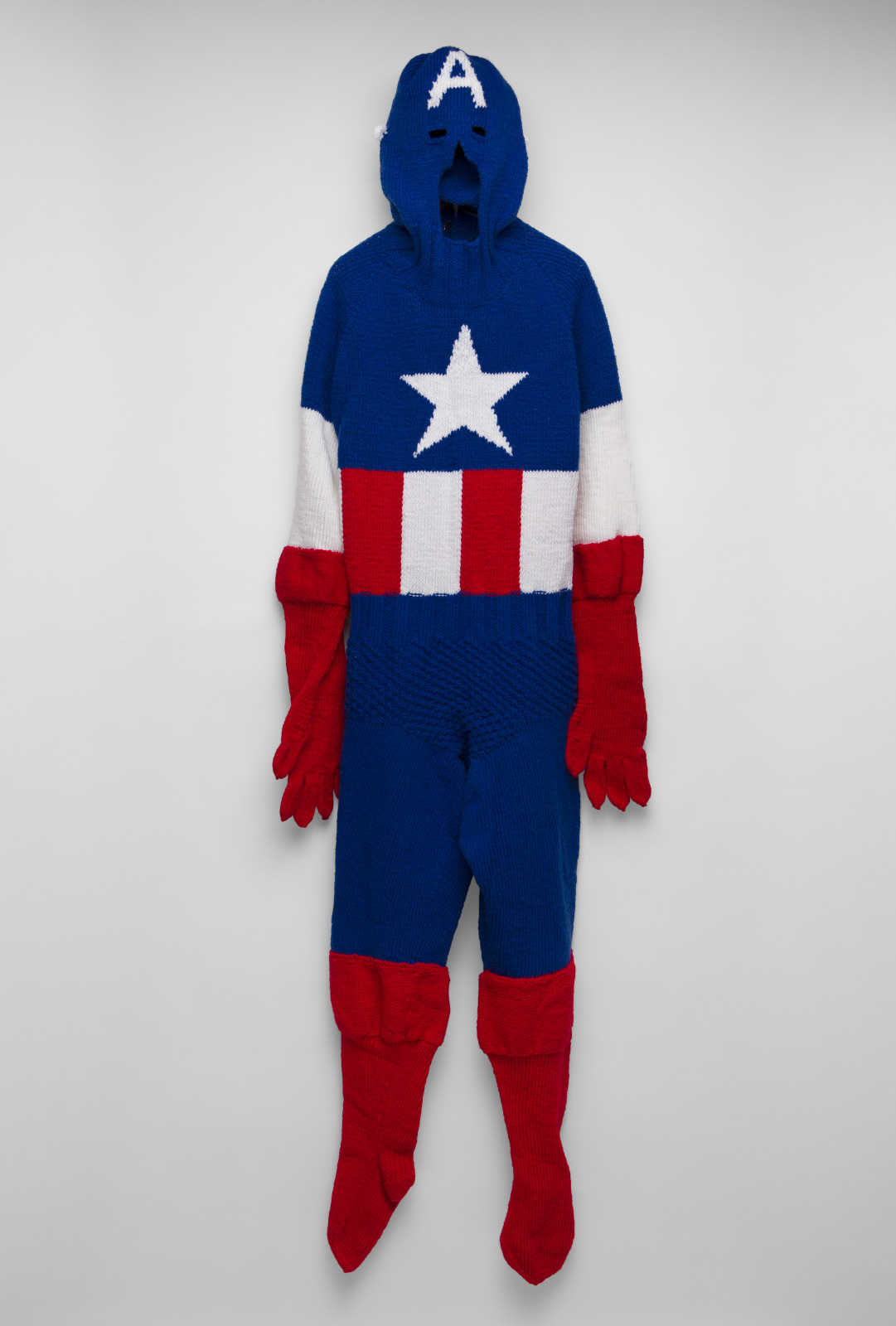
Mark Newport, American, born 1964; Captain America, 2007; acrylic yarn and buttons with wooden hanger; 75 x 21 x 2 inches; Saint Louis Art Museum, Gift of Ted L. and Maryanne Ellison Simmons; and funds given by the Marian Cronheim Trust for Prints and Drawings, Museum Purchase, Friends Fund, The Sidney S. and Sadie Cohen Print Purchase Fund, and the Eliza McMillan Purchase Fund 754:2020; © Mark Newport, Courtesy of Greg Kucera Gallery, Seattle and Duane Reed, St. Louis
Captain America, a World War II-era superhero, fights enemies of democracy. Portrayed as an empty, sagging hand-knit textile, however, this work contradicts superhero attributes of invincibility and power. The artist explains, “I work to forge a link between childhood experience and my adult exploration of protection, masculinity, and heroism.” Since 2003 Mark Newport has knitted nearly 40 superhero costumes, which he sometimes wears for photo shoots. He invents many characters, such as “Sweaterman,” but also represents well-known comic book legends.
September 2, 2022
Trademark

Hung Liu, American (born China), 1948–2021; printed and published by Washington University Collaborative Printmaking Workshop, Saint Louis, Missouri, founded 1978; Trademark, 1992; photolithograph with attached wooden blocks; image: 16 3/8 x 26 inches, plate: 16 5/8 x 26 inches, sheet: 22 1/2 x 33 inches; Saint Louis Art Museum, Gift of Ted L. and Maryanne Ellison Simmons; and funds given by the Marian Cronheim Trust for Prints and Drawings, Museum Purchase, Friends Fund, The Sidney S. and Sadie Cohen Print Purchase Fund, and the Eliza McMillan Purchase Fund 743:2020; © Hung Liu
Six young women wearing fine silk sit on display for the choosing. They are 19th-century Qing dynasty sex workers, often girls sold into service by poorer Chinese families. Wooden blocks bearing reproductions of a 17th-century European portrait of a Chinese woman are positioned on top of this lithograph. Arts writer Tessa Solomon explains, “[Hung] Liu was inspired by the people society had exploited, marginalized, and discarded—orphans, migrants, mothers, prostitutes …” In her paintings and prints, Liu aimed to underscore the individuality and humanity of overlooked people.
August 29, 2022
Snacktime Marcy
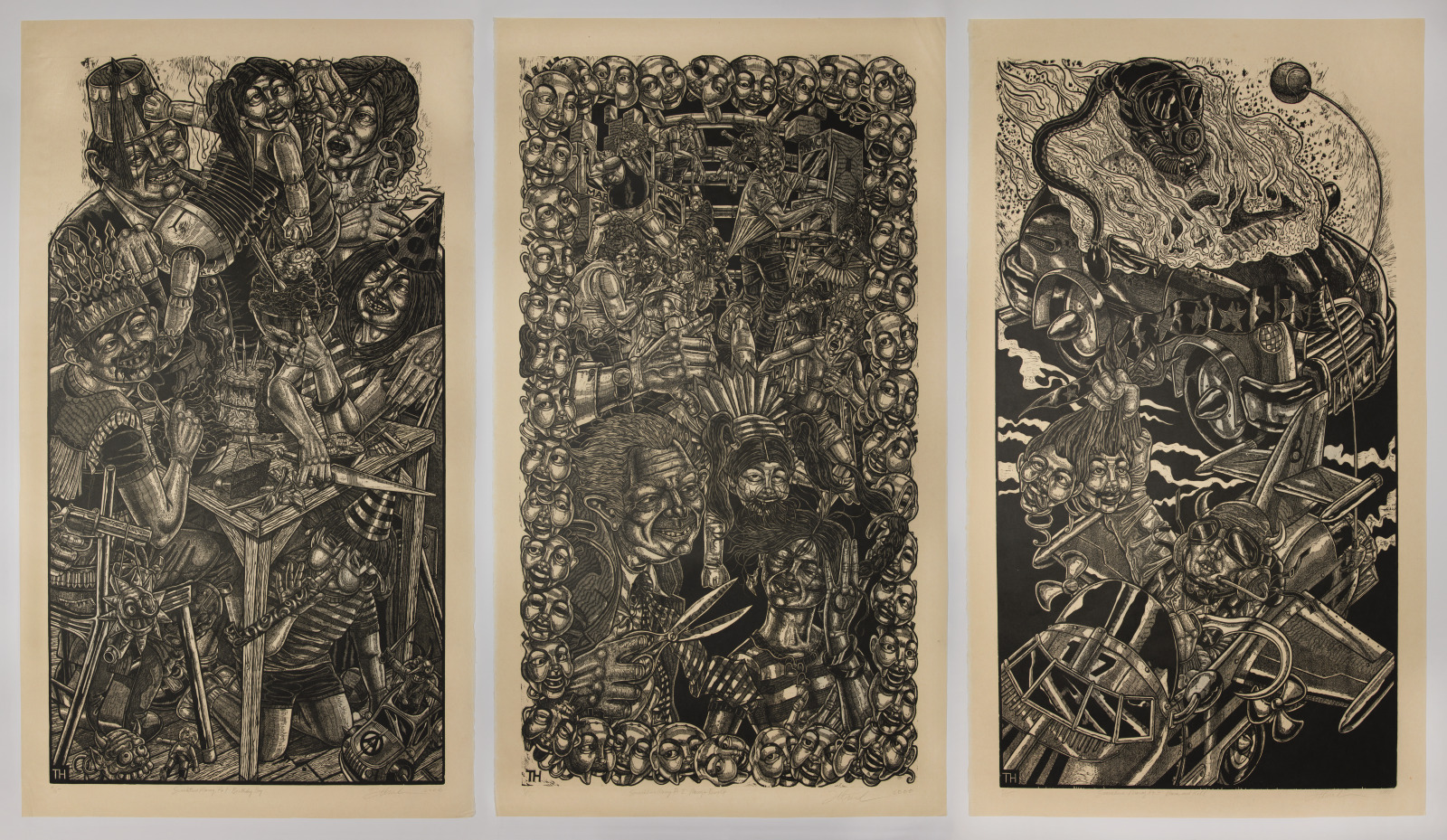
Tom Huck, American, born 1971; printed and published by Evil Prints, Saint Louis, Missouri, founded 1995; Snacktime Marcy, 2000; woodcut, printed from 3 blocks; sheet (a): 68 x 39 inches, image (a): 62 1/2 x 31 1/2 inches, sheet (b): 67 1/2 x 38 3/4 inches, image (b): 62 x 34 inches, sheet (c): 68 x 38 3/4 inches, image (c): 62 1/2 x 34 inches; Saint Louis Art Museum, Gift of Ted L. and Maryanne Ellison Simmons; and funds given by the Marian Cronheim Trust for Prints and Drawings, Museum Purchase, Friends Fund, The Sidney S. and Sadie Cohen Print Purchase Fund, and the Eliza McMillan Purchase Fund 703:2020a-c; © Tom Huck
The merry birthday party in the left-hand panel of this three-part woodcut devolves into violence in the center. A father wields an enormous pair of scissors—apparently intending to cut his daughter’s hair from the jaws of the now-diabolical doll. On the right, vengeance is carried out by an aviator holding decapitated dolls’ heads aloft.
The story that spawned Snacktime Marcy, Tom Huck’s first triptych, only appears too bizarre to be true. Any child or parent alive in the 1980s will remember the “Cabbage Patch Kid” dolls, but few will remember the “Snacktime Kid.” Her mechanical mouth, designed to gobble up her very own plastic French fries, instead latched onto anything in her path—including hair—and did not let go.
August 21, 2022
Print Your Own Jackie!
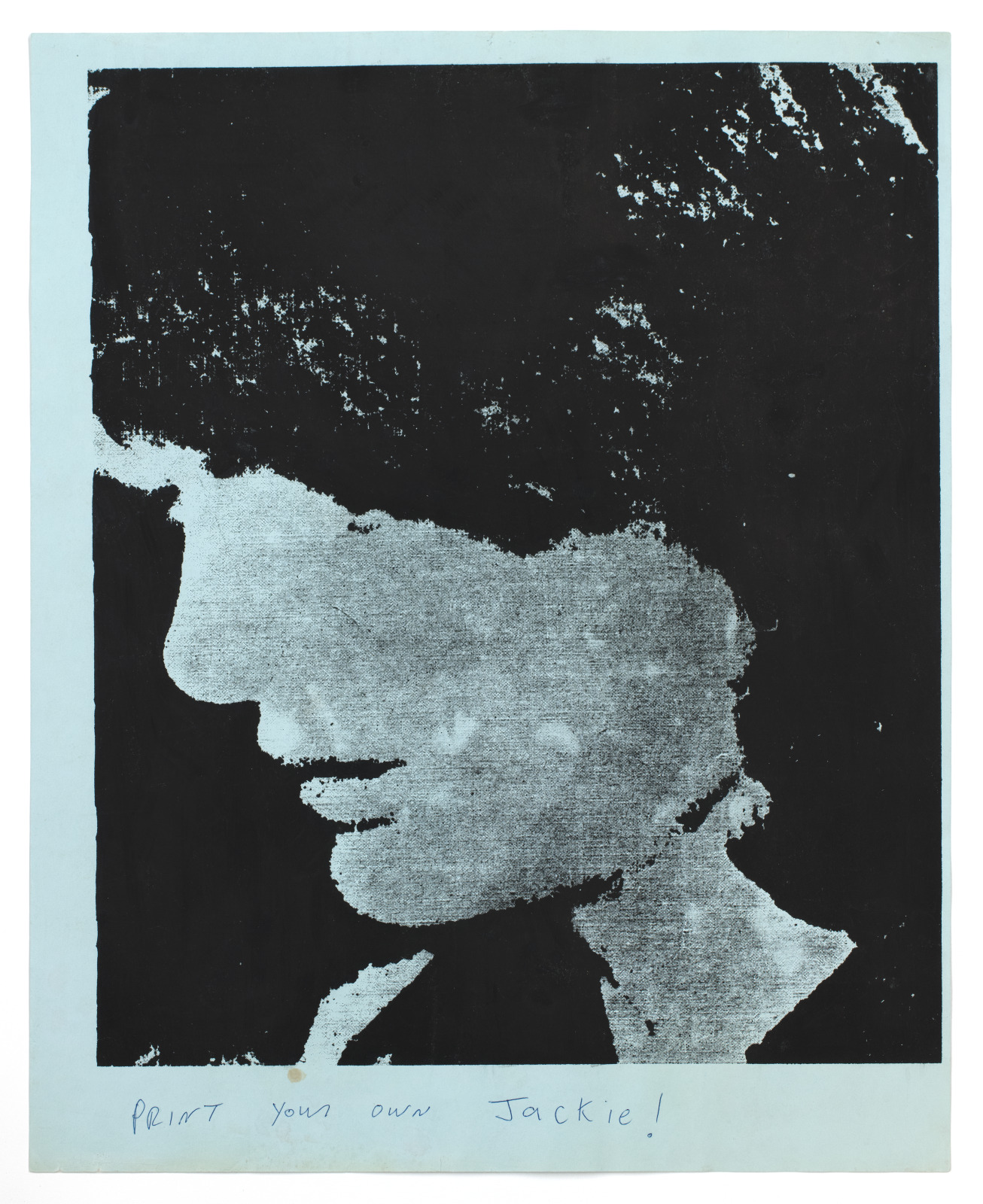
Mike Bidlo, American, born 1953; printed by Lower East Side Printshop, New York, founded 1968; Print Your Own Jackie!, 1984; screenprint; image: 19 5/8 x 16 inches, sheet: 22 3/8 x 17 3/8 inches; Saint Louis Art Museum, Gift of Ted L. and Maryanne Ellison Simmons; and funds given by the Marian Cronheim Trust for Prints and Drawings, Museum Purchase, Friends Fund, The Sidney S. and Sadie Cohen Print Purchase Fund, and the Eliza McMillan Purchase Fund 459:2020; © Mike Bidlo
In November 1963, press photographs of Jacqueline Kennedy at the funeral of her husband, President John F. Kennedy, became an emotional touch point for a grieving country. Andy Warhol manipulated several of those images and used them to produce hundreds of paintings and prints featuring Jackie’s face. Mike Bidlo seems to have relished the cascading layers of appropriation: Bidlo from Warhol; Warhol from the press; the press from the First Lady’s intensely private moment.
By writing “Print Your Own Jackie!” at the bottom of this print, Bidlo suggests anyone can create their own copy.
August 18, 2022
Tattooed Doll (female)
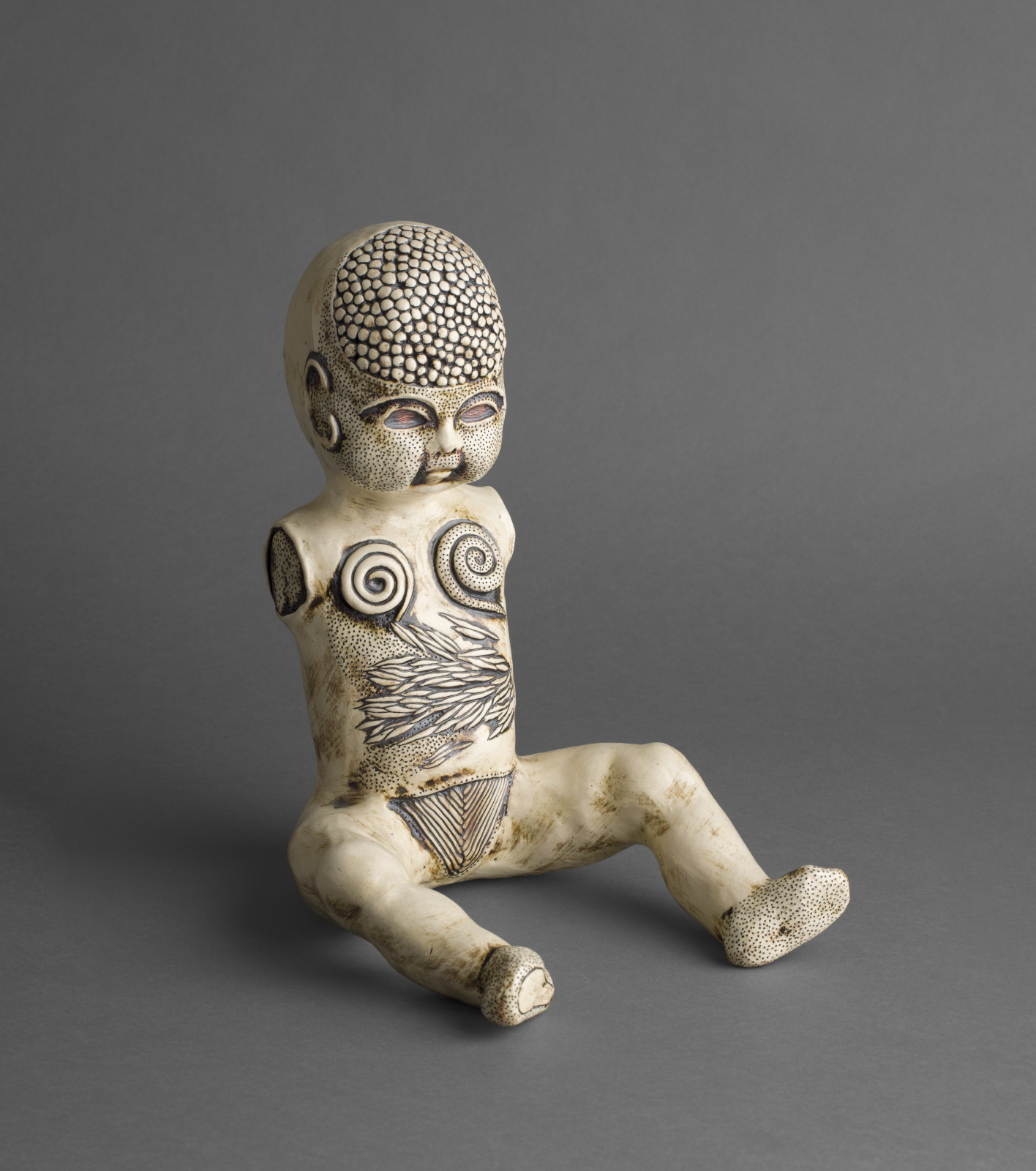
Michele Oka Doner, American, born 1945; Tattooed Doll (female), 1968; glazed porcelain with iron oxide; 12 x 7 x 8 inches; Saint Louis Art Museum, Gift of Ted L. and Maryanne Ellison Simmons; and funds given by the Marian Cronheim Trust for Prints and Drawings, Museum Purchase, Friends Fund, The Sidney S. and Sadie Cohen Print Purchase Fund, and the Eliza McMillan Purchase Fund 554:2020; © 2022 Michele Oka Doner / Artists Rights Society (ARS), New York
This curious figure suggests a vintage baby doll with missing arms and what appear to be calcified growths on its chest and head. Michele Oka Doner has long been inspired by organic material, especially ocean life and seashells. She shares, “The clay forms recalled the fragmentary nature of the corals I picked up on the beach.” Oka Doner sculpted about a dozen different ceramic dolls starting in 1966, her final year at the University of Michigan. In 1967, photographs of Vietnamese children burned by napalm shocked the American public, and the dolls quickly became symbols for anti-war protests. The artist embraced this interpretation and had it in mind when creating additional versions.
August 17, 2022
Carpet with Hexagonal Compartments

Carpet with Hexagonal Compartments, early 19th century; Yürük, Turkey, Ottoman period; wool; 71 1/4 x 49 3/4 inches; Saint Louis Art Museum, Gift of James F. Ballard 89:1929
The incredibly thick and lustrous wool pile of this rug is typical of Yürük products. Yürük, the Turkish word for “wanderer,” has been used to identify the nomadic people of Anatolia (modern-day Turkey). Yürük rugs made from local wools are very lightweight for their size. Given the sheen and difference in color saturation when viewed from opposite ends, this rug almost appears to be silk. The design is reminiscent of octagonal ceramic tiles, with interlocking octagonal medallions separated by a twisted-ribbon band in light blue. Connected to this band are rectangular boxes containing smaller hexagonal compartments filled with highly stylized insect forms that may have developed from a floral motif of projecting leaves. Geometric shapes, some with legs, and amulet shapes fill the larger octagonal spaces between the boxes.
August 12, 2022
My Heavens
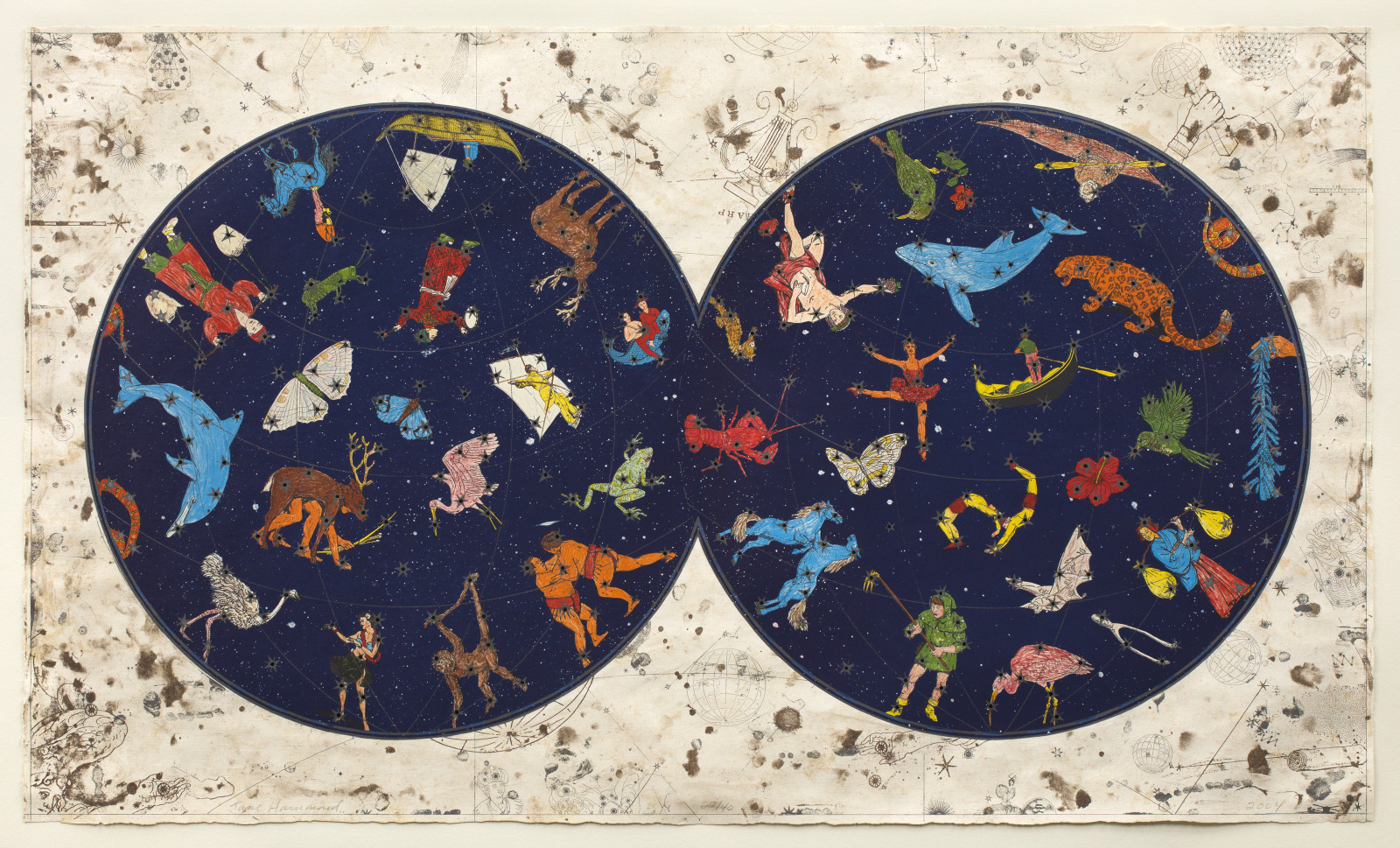
Jane Hammond, American, born 1950; printed and published by Shark’s Ink, Lyons, Colorado, founded 1976; My Heavens, 2004; lithograph; 30 × 51 inches; Saint Louis Art Museum, Gift of Ted L. and Maryanne Ellison Simmons; and funds given by the Marian Cronheim Trust for Prints and Drawings, Museum Purchase, Friends Fund, The Sidney S. and Sadie Cohen Print Purchase Fund, and the Eliza McMillan Purchase Fund 618:2020
This vibrantly colored star map is filled with creatures in flight, as well as antlered mammals and humans in dynamic poses. Given that all celestial constellations are born of images in the stars as perceived by humans, Jane Hammond echoed this act of creating order out of chaos by using images that are repeated throughout her body of work. To imitate shining stars, she single-handedly cut out each one, exposing the silver Mylar sheet beneath the paper.
August 10, 2022
Page from an Album made for Jahāngīr

painting by Keshav Das, Indian, active c.1570–1605; Page from an Album made for Jahāngīr (verso), c.1590; ink, opaque watercolor, and gold on paper; image: 8 1/2 × 4 13/16 inches, sheet: 16 5/8 x 10 7/16 inches; Saint Louis Art Museum, Gift of J. Lionberger Davis 403:1952
This painting was made by the Hindu court artist Kesu Dâs, who worked for the Mughal emperor Akbar (1542–1605). It shows the Old Testament character Joseph recounting the prophetic dream in which his family as “the sun and the moon and the eleven stars” bowed to him in reverence. The composition is adapted from a 1544 engraving by the German artist Georg Pencz (c.1500–1550) entitled, “Joseph Telling His Dream to His Father,” which Jesuit missionaries disseminated in India during the mid-16th century. The scene is on the back of a sumptuously illustrated page with a poem by Mir Ali, who was famous throughout the Persian-speaking world as a calligrapher. Both painting and calligraphy were collected by Akbar’s son and successor, Jahangir (1569–1627). He ordered the pages to be assembled in a special album and given elaborate borders of scenes from a hunt by an unknown but highly skilled court artist.
August 6, 2022
Detention at the Border of Language
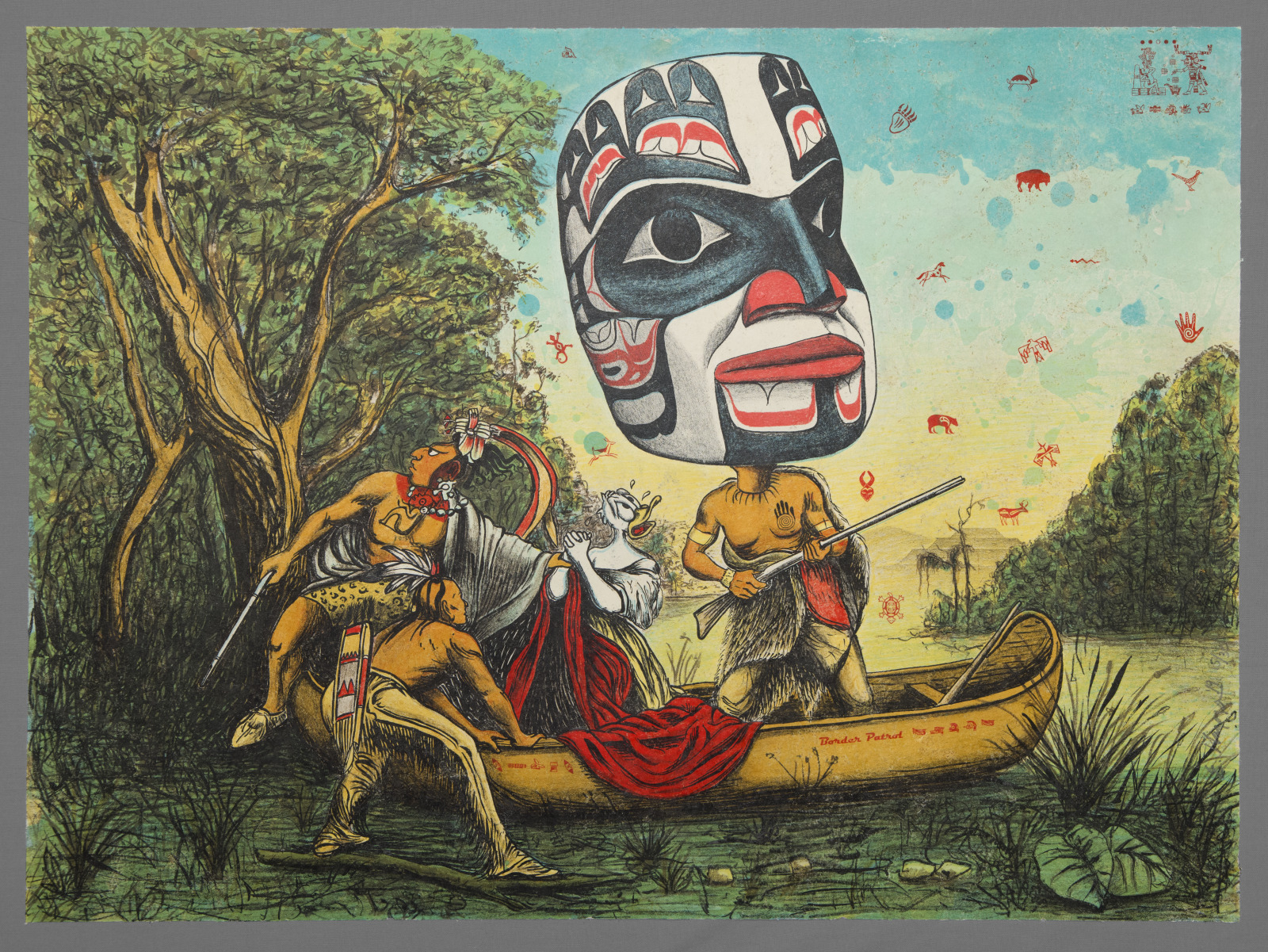
Enrique Chagoya, American (born Mexico), born 1953; printed and published by Shark’s Ink, Lyons, Colorado, founded 1976; Detention at the Border of Language, 2019; lithograph; 22 1/16 × 30 inches; Saint Louis Art Museum, Gift of Ted L. and Maryanne Ellison Simmons; and funds given by the Marian Cronheim Trust for Prints and Drawings, Museum Purchase, Friends Fund, The Sidney S. and Sadie Cohen Print Purchase Fund, and the Eliza McMillan Purchase Fund 465:2020; © Enrique Chagoya
The kidnapping of colonist Daniel Boone’s daughter Jemima is recast as the activity of a border patrol. As Enrique Chagoya notes, “Today, some politicians call refugees from Central America and other countries ‘illegal aliens’ but for me they are no different from the Pilgrims or Daniel Boone’s daughter.” Chagoya scrambled the identities of the figures, who take on heads borrowed from different Indigenous communities, while Jemima becomes a cartoon duck. In doing so, the artist calls attention to the irony that people living on historically stolen land carry hatred toward foreigners.
July 31, 2022
Stairway at Auvers
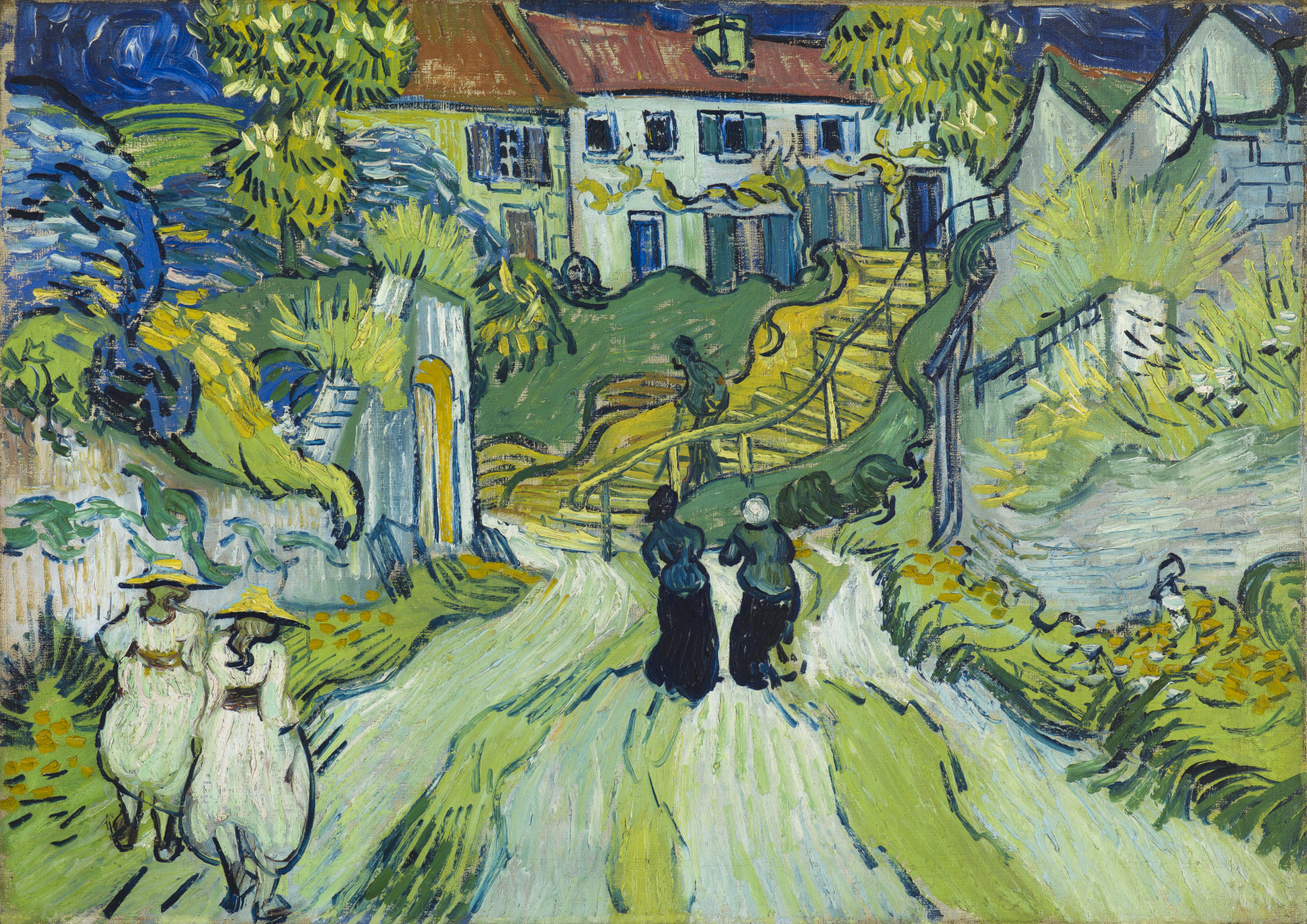
Vincent van Gogh, Dutch, 1853–1890; Stairway at Auvers, July 1890; oil on canvas; 19 11/16 x 27 3/4 inches; Saint Louis Art Museum, Museum Purchase 1:1935
The expressive, swirling lines of the foreground road move backward to the center of the composition and join the base of a stairway on which an elderly man with a stick descends. Chestnut trees are in flower to the right and left, while two pair of women walk along the road. Vincent van Gogh’s work is of a compact, almost claustrophobic density and the sky is barely seen. In one of his final letters, Van Gogh described Auvers as “of a grave beauty, the real countryside, characteristic and picturesque.”
July 29, 2022
The Two Sisters

Henri Fantin-Latour, French, 1836–1904; The Two Sisters, 1859; oil on canvas; 38 3/4 x 51 3/8 inches; Saint Louis Art Museum, Museum Purchase 8:1937
This double portrait shows the two younger sisters of the painter; Marie reads on the right while Nathalie embroiders on the left. The subdued tones of this bourgeois interior are offset by the colorful yarn on the embroidery frame. The picture is notable for an unspoken psychological tension between the two sitters. An unsettling note in Nathalie’s face hints at her depressive illness which would soon confine her to a mental institution for the rest of her life.
July 28, 2022
The Flute Lesson and The Grape Eaters

made by Sèvres Porcelain Factory, France, founded 1756; after François Boucher, French, 1703–1770; The Flute Lesson, 1757–66; porcelain; 8 3/4 x 9 1/2 x 5 1/2 inches; The Grape Eaters, 1757–66; porcelain; 8 11/16 x 9 1/4 x 7 inches; Saint Louis Art Museum, Marjorie Wyman Endowment Fund, the Mary Elizabeth Rosborough Decorative Arts Fund, and The Lopata Endowment Fund 2:2012.1-2
This pair of porcelains, based on a 1752 comic operetta, represents the romance between a shepherd (unnamed) and a shepherdess (Lisette). In one, the shepherd teaches Lisette to play his flute—he fingers the notes while she blows into the instrument. In the related piece, the shepherd feeds grapes to his beloved. Shepherds and shepherdesses in amorous couplings appear frequently in the painting, sculpture, and decorative arts of the 18th century. Mme Du Pompadour, the favorite mistress of Louis XV, owned examples of this pair.
July 22, 2022
Mantle
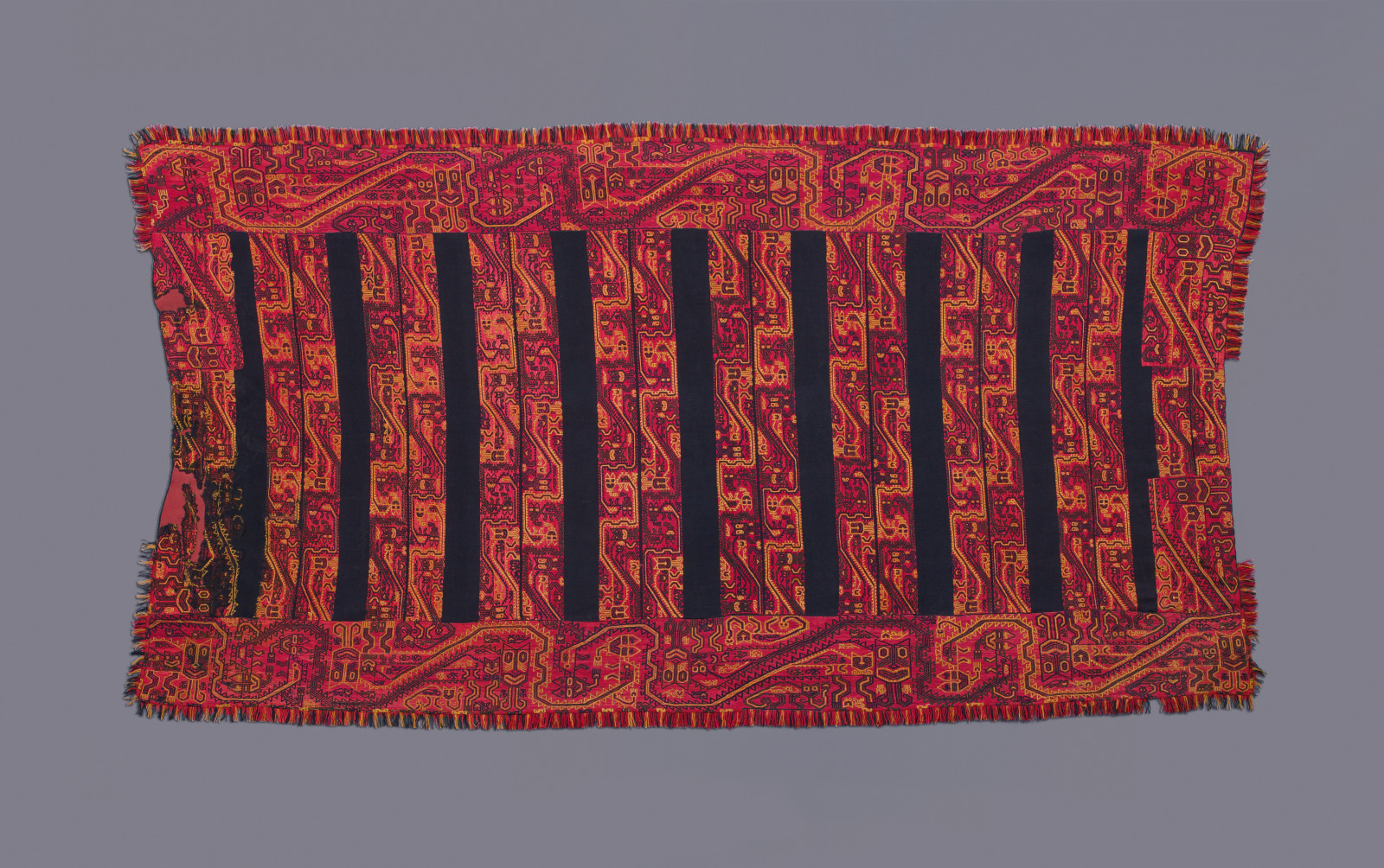
Mantle, c.200 BC–AD 100; Paracas, Peru, Early Horizon; camelid fiber; 50 x 102 3/8 inches; Saint Louis Art Museum, Museum Purchase, Friends Fund, and funds provided by the Maymar Corporation 21:1956
Cats abound on this enormous textile, occupying open space within and between other cats. Angular outlines of felines repeat in linear formation with remarkable consistency, but their forms are somewhat obscured by the overall geometry and rhythm. Cats best seen in the top and bottom horizontal borders express duality as two-bodied beings. Follow the serrated outline of a cat’s back to see how its tail turns a corner and becomes the tail of another cat. This mantle does not show signs of frequent wear, which suggests it was made for the exclusive use of wrapping the dead prior to burial in the coastal desert.
July 8, 2022
Model of a House with Figurines
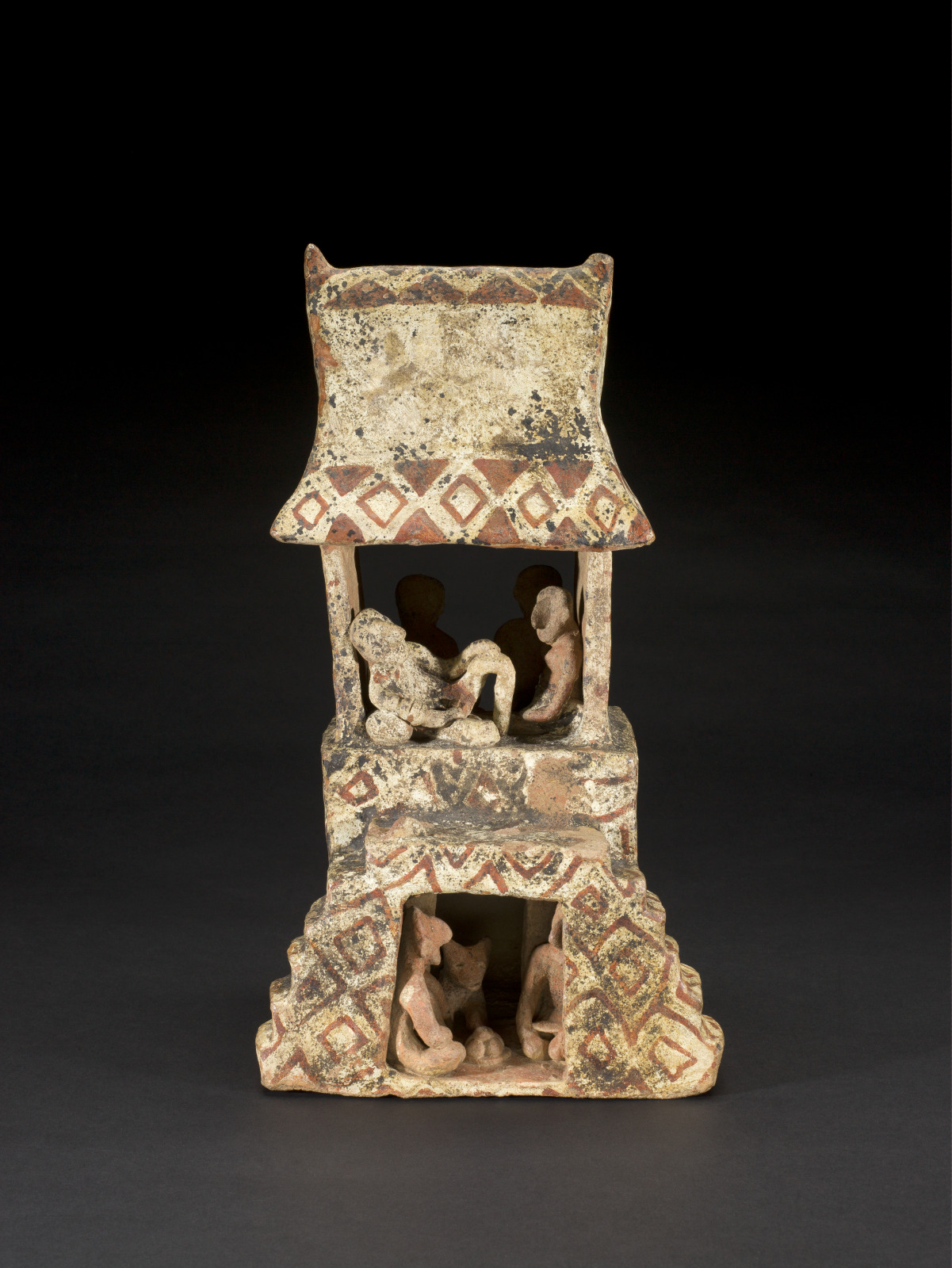
Model of a House with Figurines, c.300 BC–AD 300; Nayarit, Mexico, Late Formative period; ceramic with pigment; 14 1/8 x 7 7/8 x 6 inches; Saint Louis Art Museum, Museum Purchase 223:1957
This miniature version of a house, with a below ground space and lounging dog, conveys many details about Nayarit architecture and domestic life. The activities of the various residents and geometric exterior decoration provide insight into their daily existence. Rather than an anecdotal representation of the everyday, this scene may have had a more symbolic function. The elites of West Mexico often placed their deceased ancestors in shaft tombs populated with ceramic sculptures of humans, animals, and food vessels. The lower level of this intricate house model may link the below ground burial and ancestors with the realm of the living above.
July 6, 2022
Esther before Ahasuerus

Esther before Ahasuerus, c.1660; English; silk embroidered with silk and metallic yarns, and isinglass; inside: 10 1/8 x 13 5/8 inches, outside: 12 3/8 x 15 7/8 inches; Saint Louis Art Museum, Gift of Mrs. William A. McDonnell 17:1968
This detailed textile depicts the biblical story of brave Queen Esther, seen kneeling at center right, accompanied by two attendants. King Ahasuerus of Persia, Esther’s husband, gestures toward her with his scepter and grants her permission to speak. The king’s chief minister has plotted to kill all the Jews in the kingdom and Esther is a Jew herself. Although the king issued a ruling that no one could approach him without being summoned, Esther has risked her life by entering the King’s presence uninvited in order to protect her people from death. She succeeds as the King agrees to Esther’s request and reverses his minister’s order.
In this scene the central characters are dressed in court attire of 17th-century England. At this time a distinctive style of figurative embroidery emerged in England for creating small pictures and domestic objects, such as mirror covers, book covers, and small storage boxes. This example features a unique form of three-dimensional embroidery called stumpwork. The images depicted were often based on illustrated texts and engravings and were embroidered by girls and women, as well as professional male and female embroiderers. Needlework was a popular vehicle for portraying traits associated with the ideal woman who was brave, pious, and obedient. The biblical Queen Esther was seen as embodying these virtues as defined by 17th-century political and religious beliefs.
June 30, 2022
Embroidered Panel: Mercury
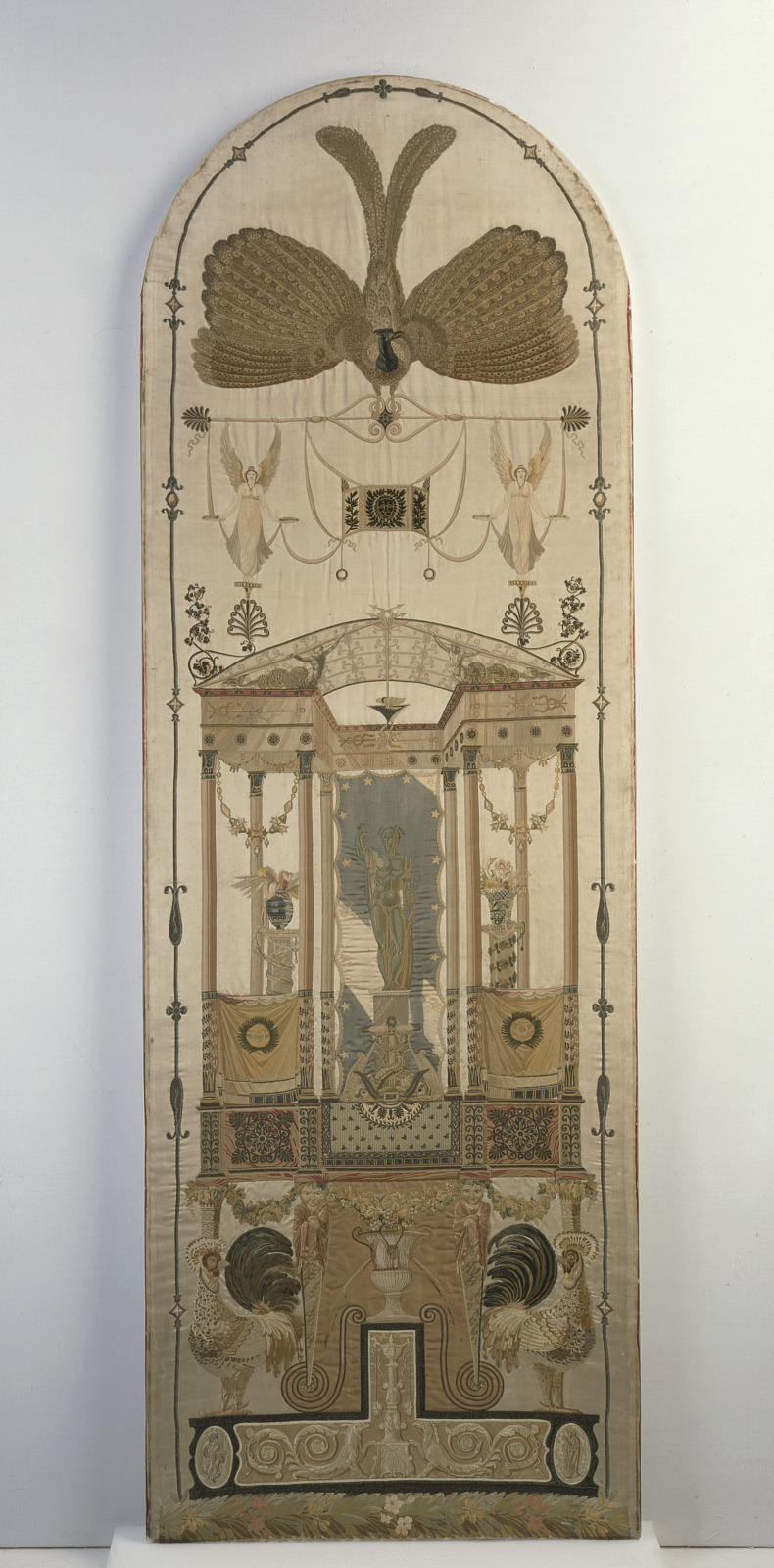
designed by Jean-Demosthene Dugourc, French, 1749–1825; possibly made by Camille Pernon, Lyon, France, founded 1753; Embroidered Panel: Mercury, c.1800–1810; silk with silk embroidery and watercolor; 98 x 32 inches; Saint Louis Art Museum, Museum Purchase 364:1923
France became the silk and fashion center of the world during the reign of Louis XIV and under the direction of his Minister of Finance, Jean-Baptiste Colbert. While the identity of most designers of luxurious silks made at the end of the eighteenth and beginning of the nineteenth centuries are unknown to us, the name of Jean-Démosthène Dugourc was well known as he was considered the leading interior decorator of his time. Dugourc had an interest in antiquity that meshed well with the Empire style promoted by Napoleon and helped bridge the stylistic evolution from the Rococo to Neoclassical periods. Dugourc worked for the prestigious silk firm of Camille Pernon in Lyon. The design for this panel featuring the god Mercury has been attributed to Dugourc based on a drawing found in Pernon’s archives.
June 27, 2022
Ornamental Box with Design of Fig Leaves and Fruit
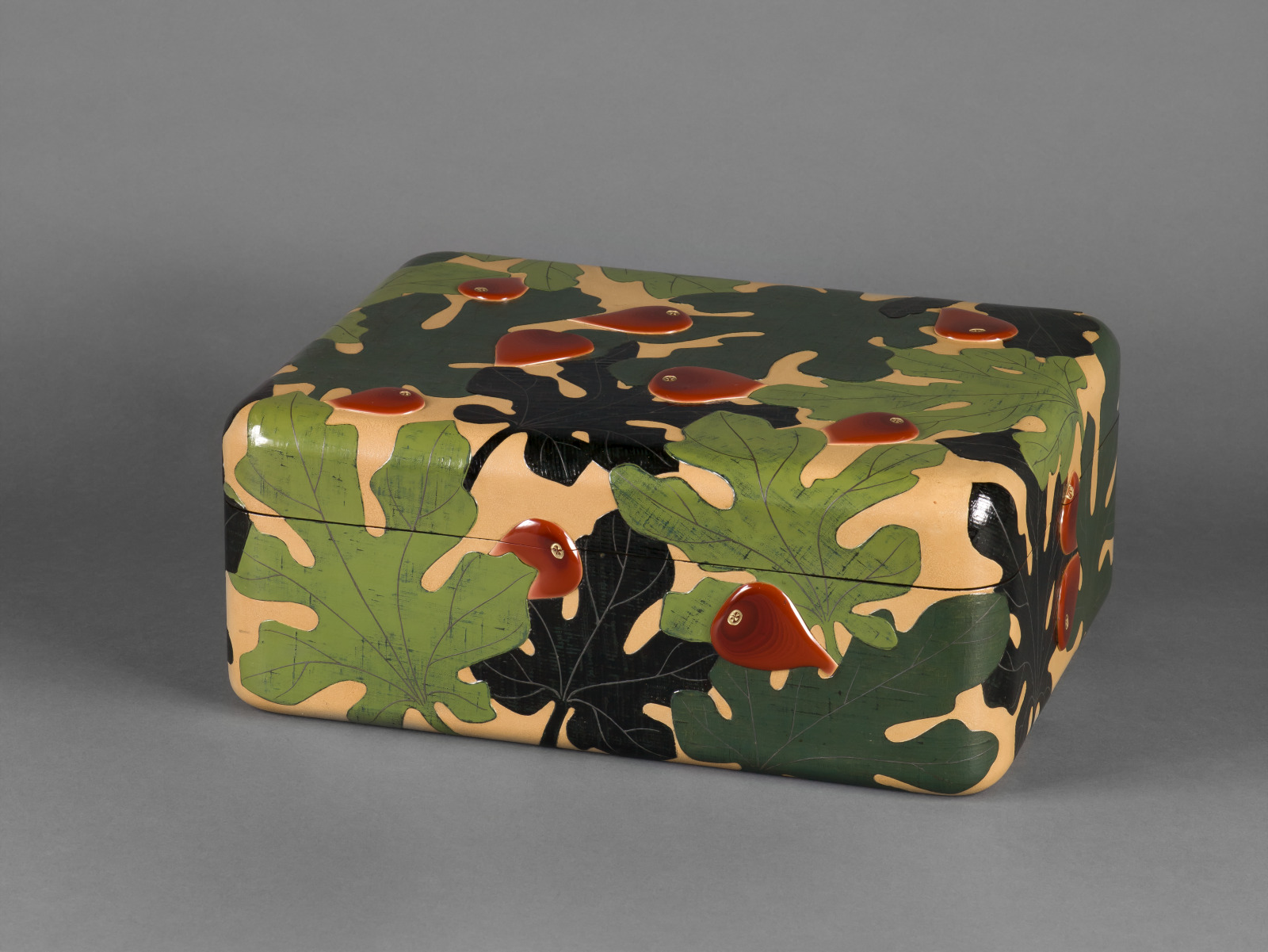
Tanabe Masayoshi, Japanese, born 1911; Ornamental Box with Design of Fig Leaves and Fruit, c.1950; colored and gold lacquers over wood core; box with cover: 6 1/4 x 12 1/8 x 15 7/8 inches; Saint Louis Art Museum, The Langenberg Endowment Fund 33:2017a-c; © Tanabe Masayoshi
This covered box features an exterior design of ichijiku (fig leaves and fruit) over a beige kawari-nuri (lacquer) ground on the five visible sides. Tanabe Masayoshi cut and added light, loose-textured textile pieces to the base before applying the lacquer in three shades of green (dark, medium, and light green). He also highly polished, cut, and carved the luscious red fruit lacquer inlays, with gold lacquer applied to the openings of the figs, known as an ostiole. The ingenious design is both stylized and evocative of the dense fig tree.
Tanabe’s studio was in the small city of Kuroe, Japan, the lacquer center of Wakayama Prefecture, just south of the Ōsaka metropolitan area. His work was exhibited at the annual Japan Arts Exhibition five times between 1949 and 1958. In 1979, Tanabe received a commendation award recognizing him as a master craftsman of Wakayama Prefecture.
In celebration of Virtual Art in Bloom, we are bringing you a floral-inspired work from the collection each Friday this month.
June 20, 2022
Transitional Weaving
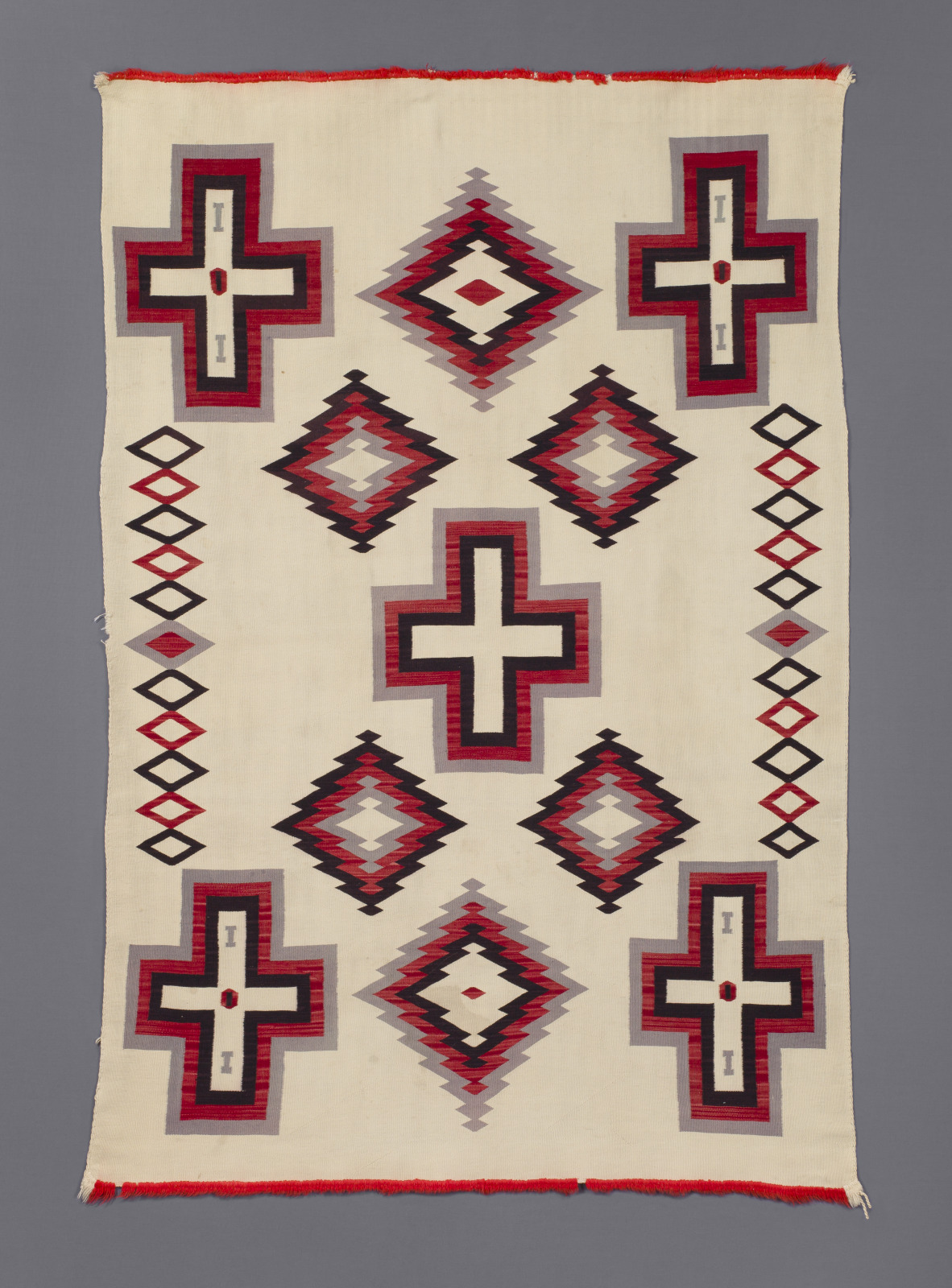
Diné (Navajo) artist; Transitional Weaving, c.1890; wool and dye; with fringe: 70 x 48 inches; Saint Louis Art Museum, Gift of Elissa and Paul Cahn 252:2017
The design and colors of this work relate to a revivalist period in Diné weaving. In particular, the use of red and prevalence of large crosses on the solid white ground call up the artistic conventions favored at the Hubbell Trading Post, a major business in the textile industry associated with the Navajo reservation.
In the 1890s, some observers started to fear that new wholesale markets encouraged weavers to prioritize volume and vibrant colors over design and technique. Managers at Hubbell and other large buyers developed their own standards for Diné textiles and encouraged weavers to follow their principles.
June 17, 2022
Charles I
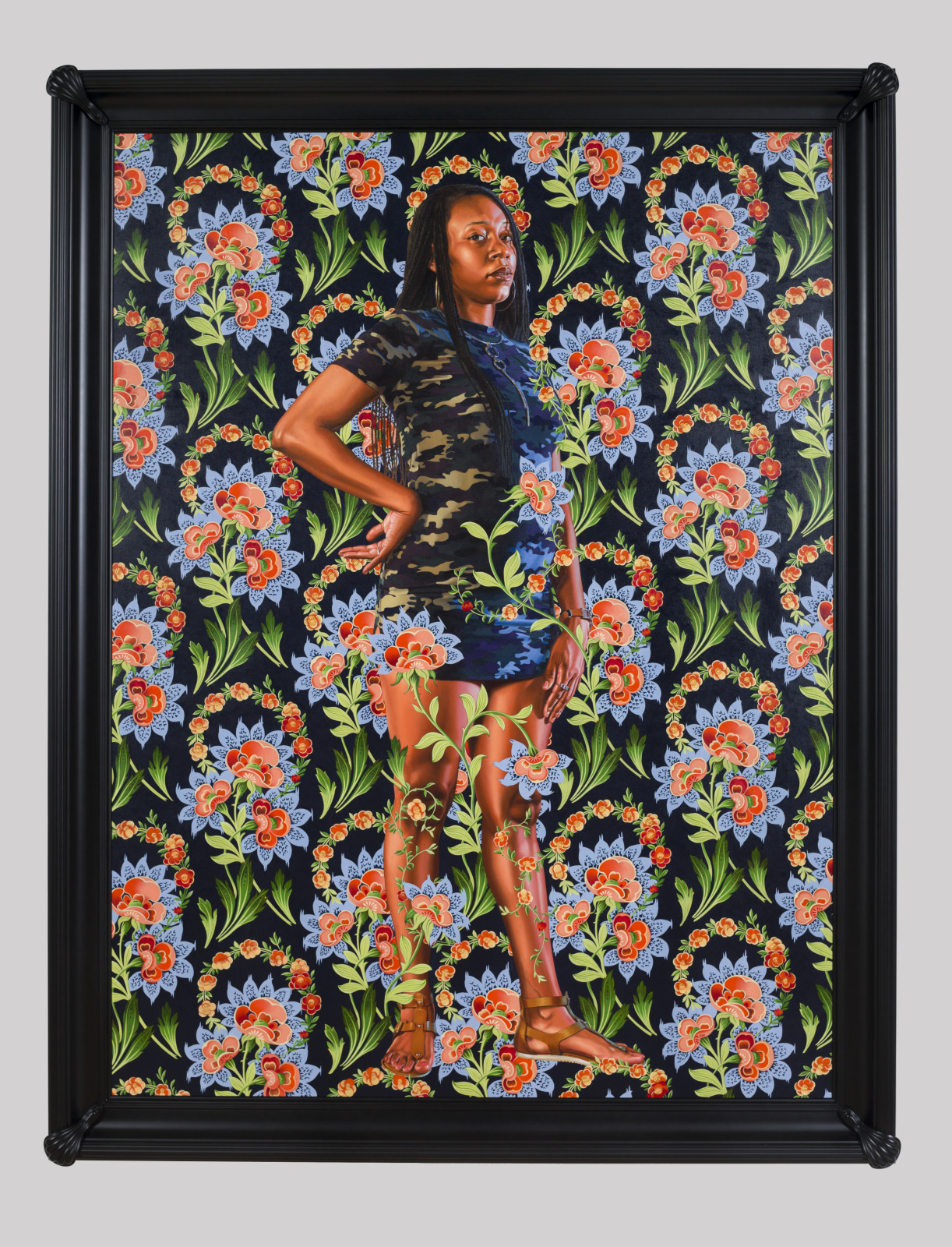
Kehinde Wiley, American, born 1977; Charles I, 2018; oil on linen; 96 x 72 inches; Saint Louis Art Museum, Funds given by Gary C. Werths and Richard Frimel, Barbara and Andy Taylor, Anabeth and John Weil, John and Susan Horseman, Nancy and Kenneth Kranzberg, Michael and Noemi Neidorff, David Obedin and Clare Davis, Adrienne D. Davis, Yvette Drury Dubinsky and John Paul Dubinsky, Mrs. Barbara S. Eagleton, Hope Edison, Roxanne H. Frank, Rosalyn and Charles Lowenhaupt, Jack and Susan Musgrave, Dr. and Mrs. E. Robert Schultz, Susan and David Sherman III, Pam and Greg Trapp, Mark S. Weil and Joan Hall-Weil, Keith H. Williamson, and the Third Wednesday Group 27:2019; © 2019 Kehinde Wiley, Courtesy of the Saint Louis Art Museum and Roberts Projects
-
View Comparative Image
![1181916dig_o2]()
Daniel Mytens I, Dutch, c.1590–before 1648; Charles I, 1633; oil on canvas; 90 3/4 x 57 inches; Saint Louis Art Museum, Museum Purchase 118:1916
St. Louisan Ashley Cooper stands with one hand on her hip in front of a vibrant floral backdrop that winds in front of and around her. Cooper’s pose is based on the stance of Charles I of England in a 1633 portrait by Dutch painter Daniel Mytens I in the Museum’s collection. Artist Kehinde Wiley uses the long‑standing practice of portraiture to address absences and erasures of black individuals in European and American art history. In his paintings, Wiley replaces white figures depicted in historical artworks with images of contemporary African Americans, Africans, and people of the African diaspora. In 2017, Wiley visited neighborhoods in north St. Louis and Ferguson, Missouri, where he selected Cooper and other individuals to pose for his paintings.
Each Friday in June the Museum’s Object of the Day will feature a work of art in celebration of Pride Month.
June 16, 2022
Sachihongo Mask
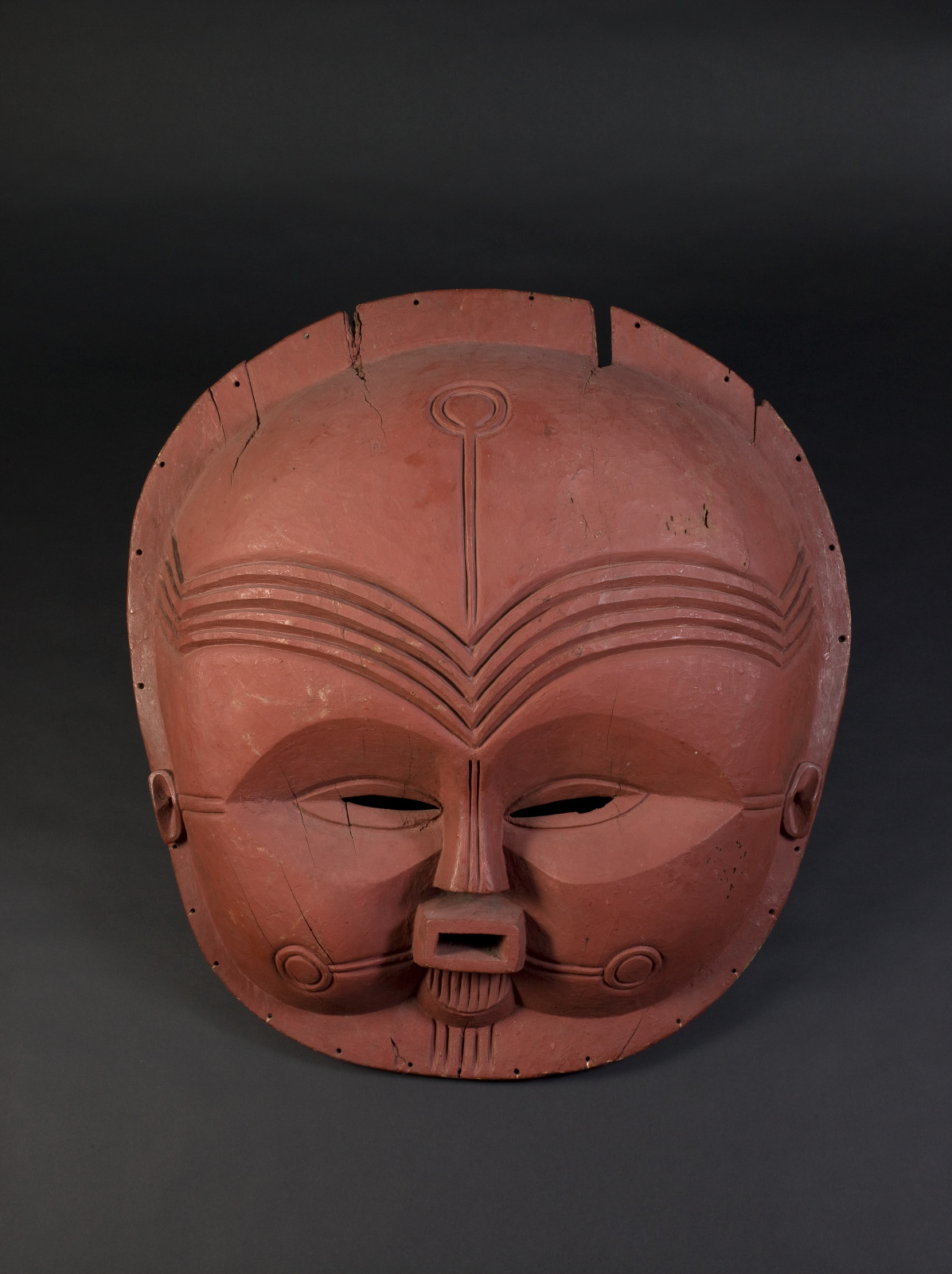
Mbunda artist, Zambia; Sachihongo Mask, 20th century; wood, fiber, pigment; 29 3/4 x 29 x 12 inches; Saint Louis Art Museum, Partial gift of Thomas Alexander and Laura Rogers, and funds given by the John R. Goodall Charitable Trust, the McMillan-Avery Fund of the St. Louis Community Foundation, Dr. and Mrs. William H. Danforth, Mr. and Mrs. Sam Langsdorf Jr., Mr. and Mrs. Jefferson Miller, Ms. Jane Stamper, the Gateway Apparel Charitable Foundation, Mr. and Mrs. Charles F. Knight, Mr. and Mrs. William F. Schierholz, and donors to the 1993 Art Enrichment Fund 6:1994
Incised arches across a broad forehead suggest the furrowed brow of one who is wise and fierce. This mask represents Sachihongo, a powerful character understood as an ancestral or elder chief, hunter, or diviner. Sachihongo is one of many figures represented in Mbunda masquerades to celebrate young male initiates’ return to the community following a period of seclusion for circumcision and instruction. Feathers and plant fibers were attached to holes around the edge of the mask. The masquerader wore a netted body suit and fiber skirts while dancing to a quick rhythm.
June 12, 2022
Precious Woods, Pure Enjoyment

Hine Taizan, Japanese, 1813–1869; Precious Woods, Pure Enjoyment, 1848; handscroll: ink and color on paper; scroll fully unrolled: 11 7/8 inches x 19 feet 6 3/8 inches; Saint Louis Art Museum, William K. Bixby Trust for Asian Art 9:1986
This long handscroll painting, almost 20 feet in length, depicts a majestic Chinese-style landscape filled with mountains and water features. It is enlivened in certain areas with human figures, architectural forms, bridges, and boats. The poetic title is translated from the four large characters written in the frontispiece inscription.
At age 35 when he completed this handscroll, Hine Taizan was still considered a young artist. A student was traditionally taught painting by copying the works of his teacher and other masters. It was also common among Japanese literati-style artists like Taizan to copy Chinese paintings to learn brushwork, composition, and a fluid ease with the brush, as seen here. Taizan’s Precious Woods, Pure Enjoyment documents a painting by the Chinese Ming-dynasty painter Zhang Fu (1546–after 1631).
June 5, 2022
Young Woman at her Toilette

Pierre-Auguste Renoir, French, 1841–1919; Young Woman at her Toilette, c.1876; pastel; image: 19 x 12 1/2 inches, sheet: 19 11/16 x 13 inches; Saint Louis Art Museum, Anonymous Gift 59:1988
A young woman carefully pins back her long, dark hair, as she stands before a basin on a table. The scene takes place in an interior room, possibly a bath chamber. Pierre-Auguste Renoir and his Impressionist contemporaries were known for painting outdoors, but just as often they represented interior spaces. In fact, domestic interiors, especially more private locations like this, were considered quintessentially modern subjects in the late 1800s. Pictures such as this one anticipated later avant-garde depictions of intimate scenes, like the print by Pierre Bonnard in the adjacent gallery.
The Impressionist inclination for quick strokes and luminous color is apparent in Renoir’s use of pastel. He began exploring the medium in the 1870s as a way to experiment with brilliant light and saturated colors as in his oil paintings. Pastel drawings also allowed him to capture quick impressions of his models, retaining their lifelike character and vibrancy.
June 3, 2022
Spectrum II
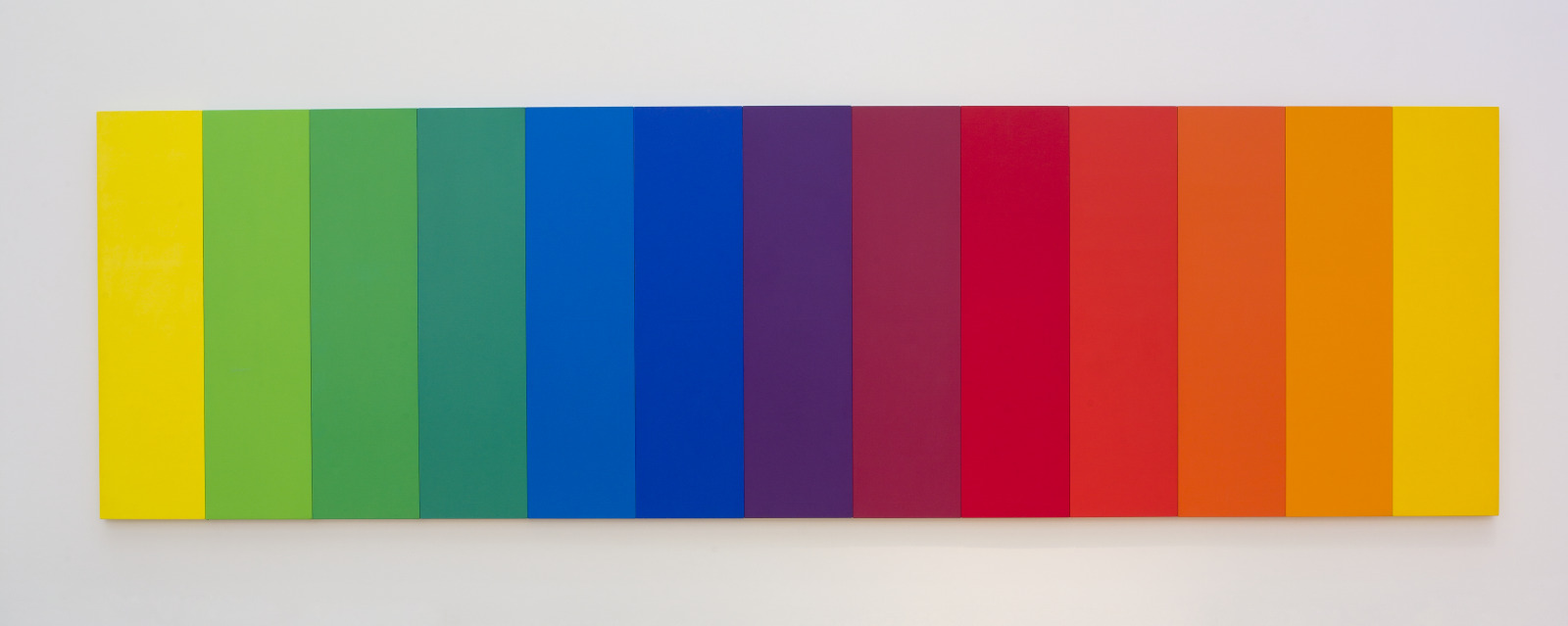
Ellsworth Kelly, American, 1923–2015; Spectrum II, 1966–67; oil on canvas; 80 inches x 22 feet 9 inches; Saint Louis Art Museum, Funds given by the Shoenberg Foundation, Inc. 4:1967a-m; © Ellsworth Kelly Foundation, Courtesy Matthew Marks Gallery
As the title indicates, this work relates to the color spectrum. Ellsworth Kelly, however, questions the predictability of the standard red to violet progression, instead offering a passage that begins with one shade of yellow and ends with another.
The search for specific color is central in Kelly’s art. He once explained, “It’s very difficult to do a spectrum because each color has to be the right red, the right purple, and they have to blend together.” Here, the artist has joined 13 individually painted canvases producing a work almost 23 feet long. Through this painting, Kelly has both reinvented the early European medieval tradition of the polyptych (joined multi-panel painting) and challenged the modern convention of the single canvas.
Each Friday in June the Museum’s Object of the Day will feature a work of art in celebration of Pride Month.
May 28, 2022
Landscape with Pollard Willows (verso: Figure in a Landscape)
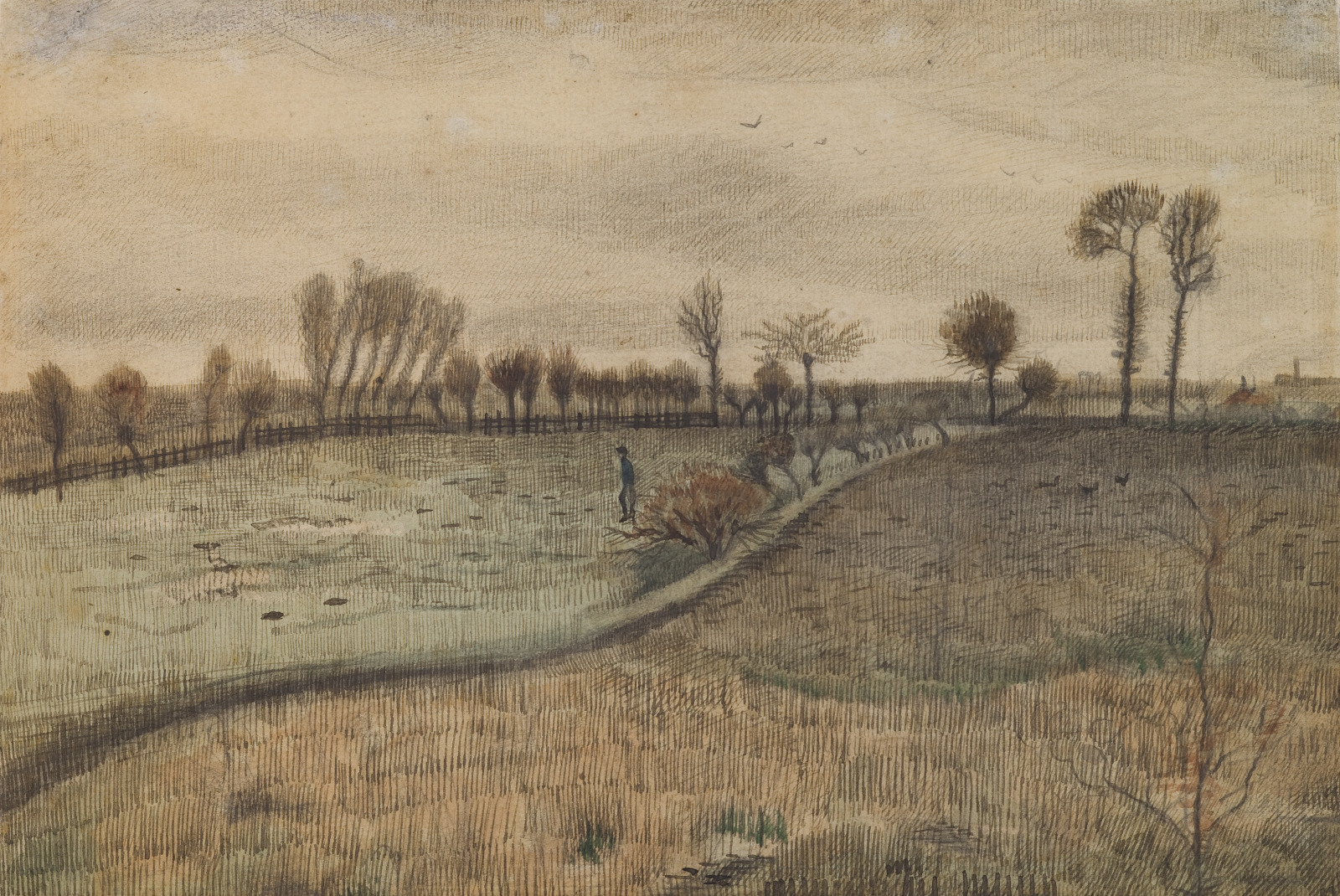
Vincent van Gogh, Dutch, 1853–1890; Landscape with Pollard Willows, c.1880; pen and ink, watercolor, and graphite; framed: 15 1/4 x 20 1/4 x 1 1/2 inches; Saint Louis Art Museum, Museum Purchase 6:1954
Vincent van Gogh drew on both sides of this sheet of paper. Each shows a figure walking through a landscape. The larger figure inhabits the immediate outskirts of an industrial town, while the smaller one is fully immersed in the fields. These two adjacent drawings show the young artist teaching himself to draw, and both point to significant aspects of van Gogh’s outlook on life.
Smokestacks on the back side of the sheet identify the location as the Borinage coal mining region in Belgium, where van Gogh lived between 1878 and 1880. He went there hoping to realize his dream to be a Protestant preacher and to serve an underappreciated public. He was, however, already on the path to becoming an artist. His progression can be seen in the delicate pen-and-ink hatchmarks in what was likely a later exercise in representing the fundamental relationship between humans and nature.
May 27, 2022
The Father’s Leave Taking
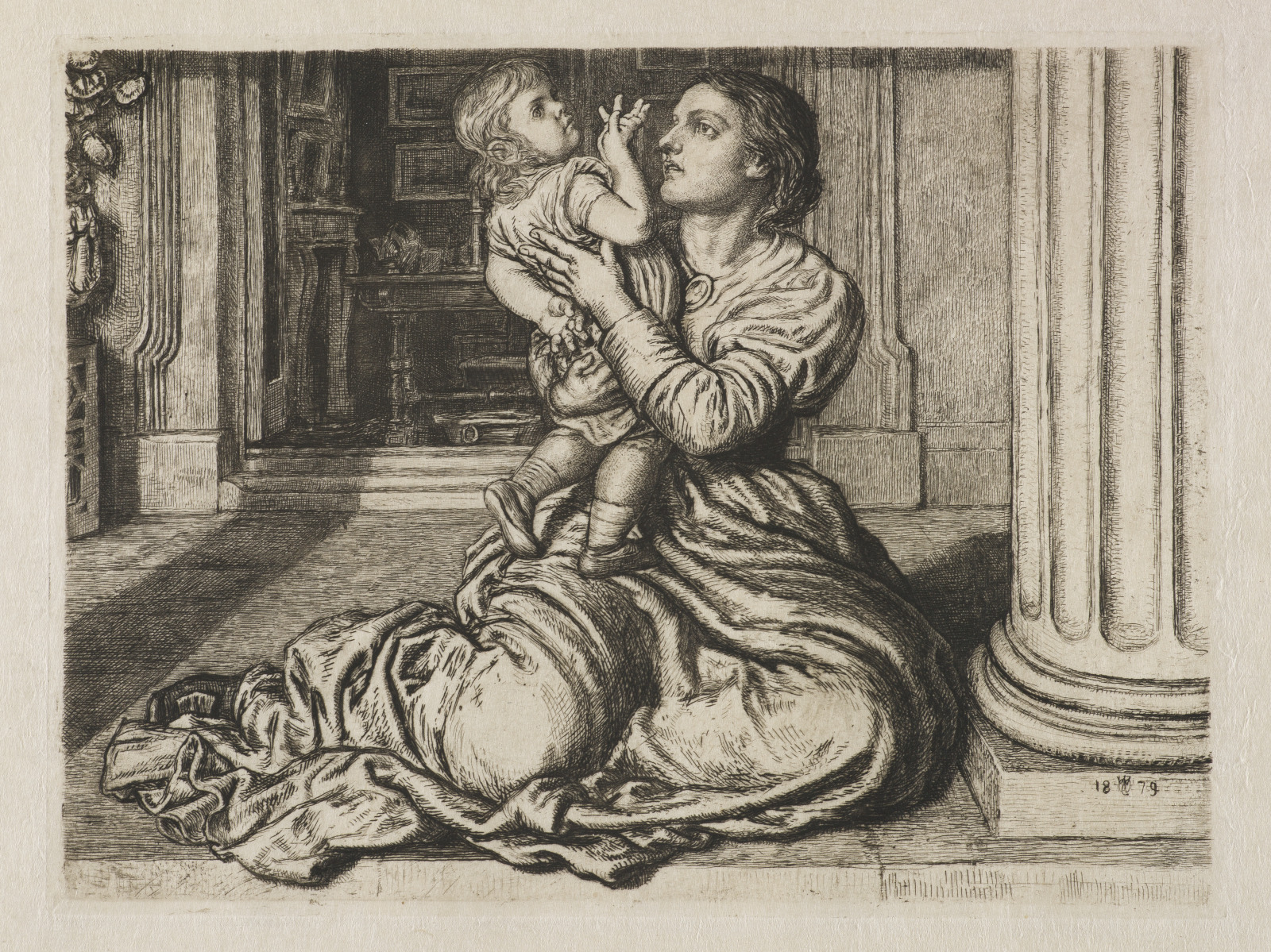
William Holman Hunt, English, 1827–1910; The Father's Leave Taking, 1879; etching and drypoint; plate: 7 3/8 x 9 7/8 inches, sheet: 13 x 18 5/8 inches; Saint Louis Art Museum, The Sidney S. and Sadie Cohen Print Purchase Fund 161:2003
The artist based this 1879 etching on a drawing of his wife Edith and their daughter Gladys from several years earlier. The composition’s solid forms and their triangular arrangement reveal the artist’s interest in the Italian Renaissance, while the work serves both as an hommage to motherhood and an intimate family portrait.
Hunt’s drawing of his family was made while they were living in Jerusalem, where Gladys was born and where Hunt had already spent considerable time. This was Hunt’s third and last trip to the region. On these extended trips, he experienced and learned from the Holy Land, with its sacred history relevant to Jews, Christians, and Muslims, in order to apply that knowledge to the deeply Christian themes of his paintings.
May 24, 2022
Dark Abstraction
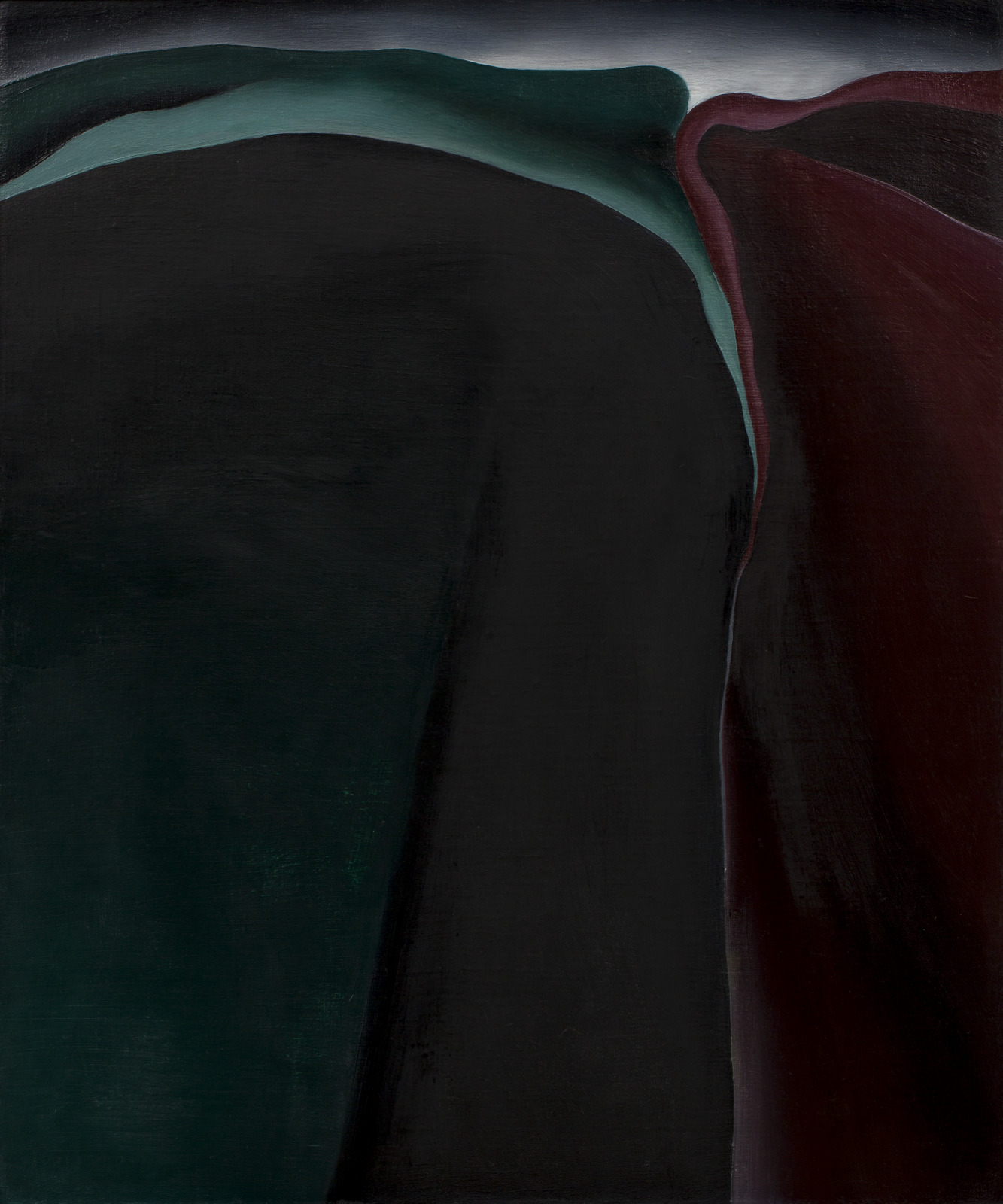
Georgia O'Keeffe, American, 1887–1986; Dark Abstraction, 1924; oil on canvas; 25 3/8 x 21 1/8 inches; Saint Louis Art Museum, Gift of Charles E. and Mary Merrill 187:1955; © Georgia O'Keeffe Museum / Artists Rights Society (ARS), New York, NY
Despite this painting’s modest size, its abstracted, organic forms evoke a monumentality and reverence for nature. Delicate folds of red and green call to mind the velvety, sensual surface and shapes of flower petals. Or, the dramatic plummet of the white line suggests a deep cleft in the earth’s shifting plates. One of the most recognized American artists of the 20th century, Georgia O’Keeffe often selected details of nature as her subjects and enlarged or distilled them until they took on a new appearance.
May 22, 2022
Hands Holding the Void (Invisible Object)

Alberto Giacometti, Swiss, 1901–1966; Hands Holding the Void (Invisible Object), 1934–35, cast c.1946–47; bronze; 60 x 12 x 9 1/2 inches; Saint Louis Art Museum, Friends Fund 217:1966; © 2022 Alberto Giacometti Estate / Licensed by VAGA and ARS, New York
Gazing into the distance with mouth open in wonder, a female figure leans forward while her long, nervous fingers encircle an empty space. Her vulnerable face evokes a sense of psychological alienation. Alberto Giacometti joined the Surrealist movement in the 1920s. Poet André Breton, leader of the Parisian Surrealists, described this work as “an emanation of the desire to love and be loved in quest of the true human object and in all the agony of its quest.”
May 20, 2022
Christ Presented to the People (Ecce Homo)
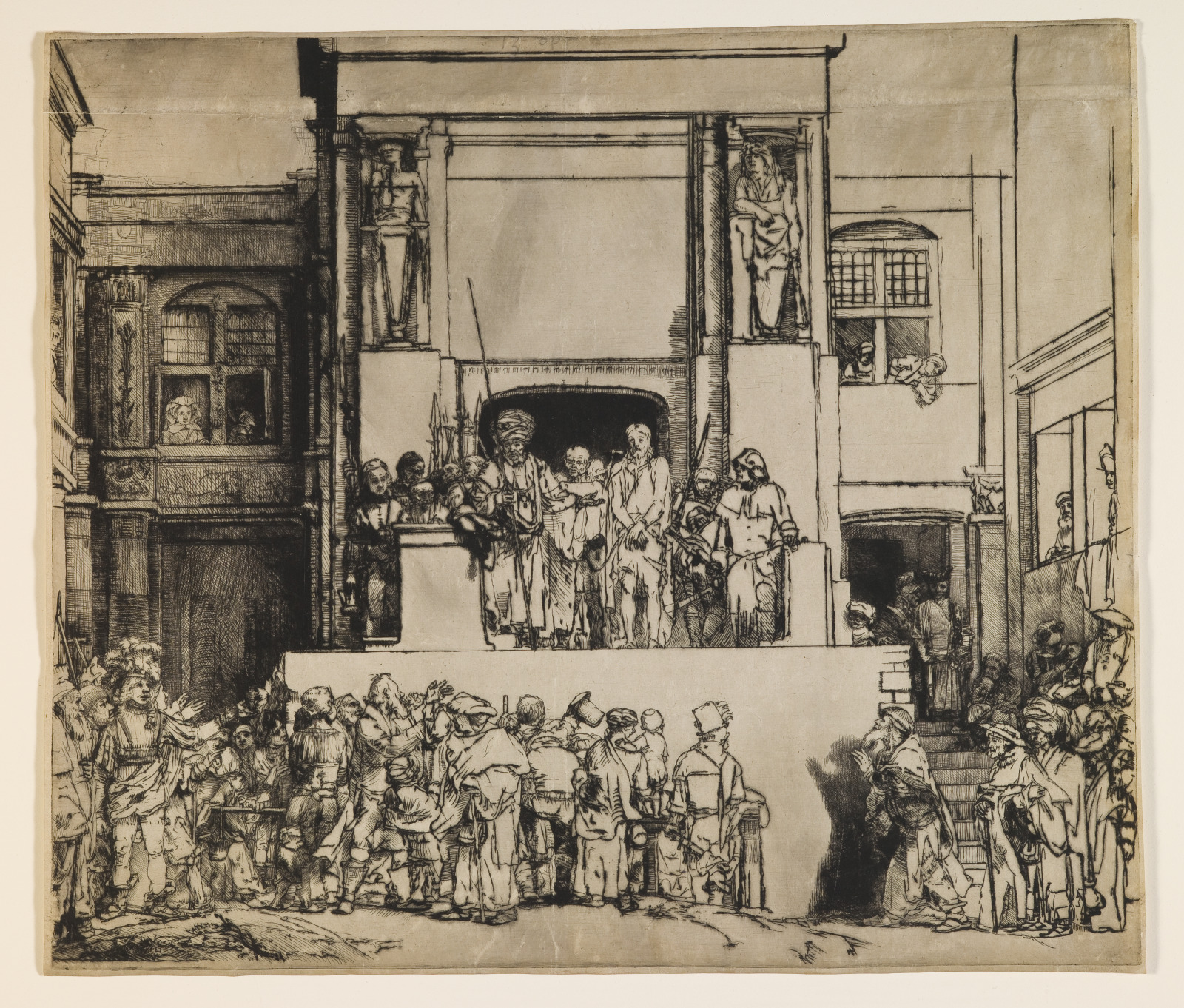
Rembrandt van Rijn, Dutch, 1606–1669; Christ Presented to the People ("The Ecce Homo"), 1655; drypoint; image: 15 1/8 x 17 5/8 inches, plate (irregular): 15 1/8 x 17 5/8 inches, sheet: 15 3/8 x 17 7/8 inches; Saint Louis Art Museum, Museum Shop Fund, Friends Fund, and funds given in honor of James D. Burke, Museum Director from 1980 to 1999, by Mr. and Mrs. Lester A. Crancer Jr., Mr. and Mrs. Christian B. Peper, the Ruth Peters MacCarthy Charitable Trust, an anonymous donor, Mary and Oliver Langenberg, Phoebe and Mark Weil, Sam and Marilyn Fox, The Sidney S. and Sadie Cohen Print Purchase Fund, the Julian and Hope Edison Print Fund, Margaret Grigg Oberheide, an anonymous donor, Mr. and Mrs. Kenneth F. Teasdale, Mr. and Mrs. John W. Bachmann, the Anne L. Lehmann Charitable Trust, Anabeth Calkins and John Weil, Mrs. James Lee Johnson Jr., Suzanne and Jerry Sincoff, Mr. and Mrs. Sam Weiss, Mr. and Mrs. Martin E. Galt III, and Mr. and Mrs. Andrew B. Craig III 1:1999
Silhouetted by a dark arch, the three protagonists from the Biblical New Testament, Pontius Pilate, Christ, and Barabbas, stand on the podium before a large civic building. Pilate, wearing a turban, has already asked the crowd before him: “Which of the two do you want me to release to you?” They shout, “Barabbas!” Rembrandt captures the moment when Pilate, pointing towards Christ, asks them the next question: “What then shall I do with Jesus who is called Christ?” They all shout back, “Let Him be crucified!” Surrounded by an extraordinary architectural setting, soldiers, and the surge of the crowd below him, Christ looks helpless and isolated. This is one of Rembrandt’s most celebrated prints because of its size, rarity, and complex composition. It is one of the few that Rembrandt did exclusively in drypoint, a process in which a sharp point is used to scratch a line directly into the copperplate.
May 17, 2022
Coyote Tales No. 1
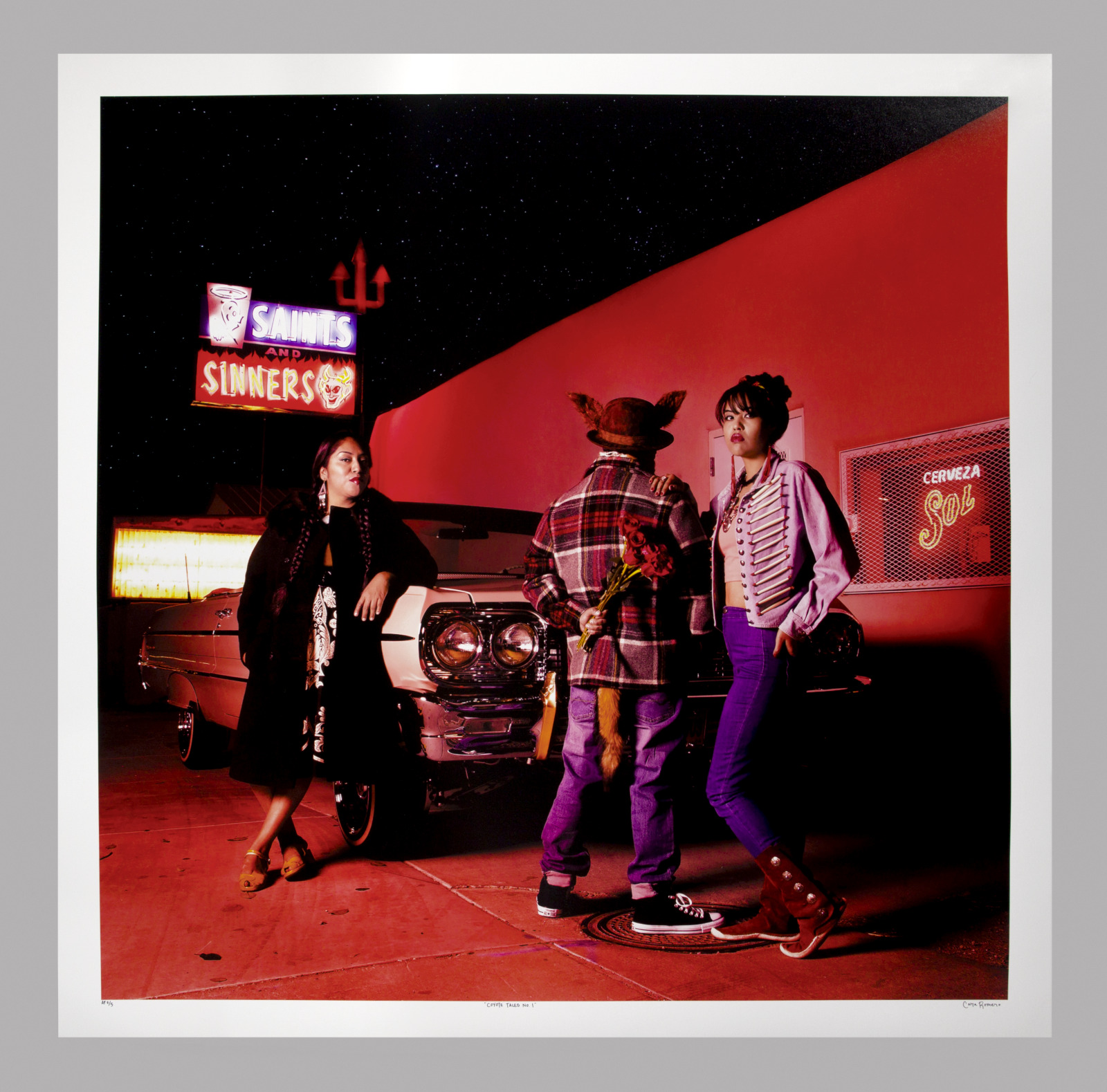
Cara Romero, American and enrolled Chemehuevi Indian Tribe, born 1977; Coyote Tales No. 1, 2017, printed 2018; inkjet on paper; image: 37 x 37 inches, sheet: 41 x 41 inches; Saint Louis Art Museum, The Helen Kornblum Fund for Women Photographers 24:2020; © Cara Romero, Courtesy of artist. All rights reserved.
Two stylish women face forward in this scene. They flank coyote, a figure responsible for unforeseen events, good and bad, in many Native American ancestral narratives. The glowing sign above the group highlights the trickster’s double-edged power. The sign also identifies the setting as an iconic liquor store and bar in Española, a city bordering Santa Clara Pueblo in northern New Mexico. This image demonstrates the contemporary significance of Indigenous storytelling. According to the artist, “the work is meant to evoke omniscience. We are all saints and sinners.”
May 15, 2022
Woman in Armchair
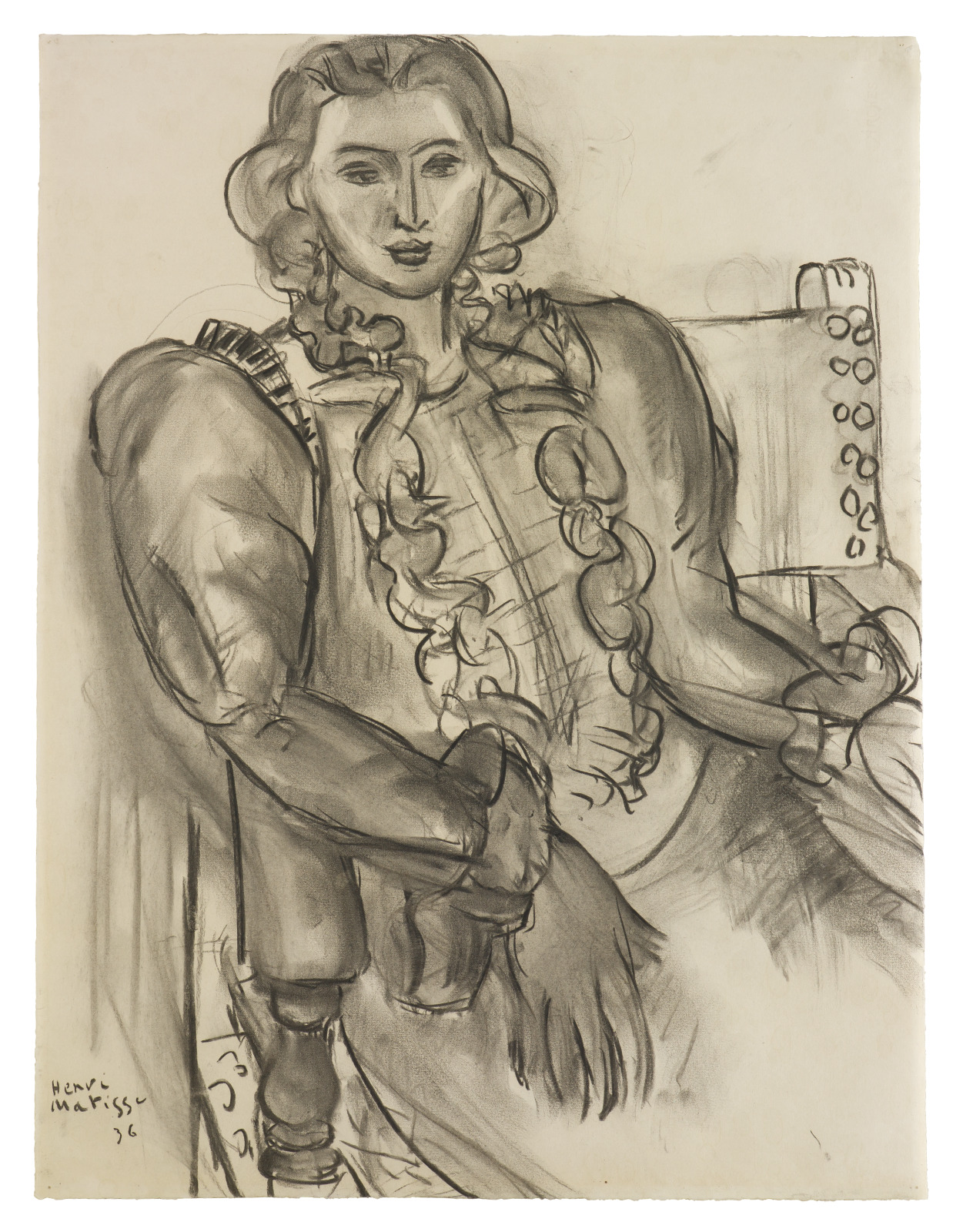
Henri Matisse, French, 1869–1954; Woman in Armchair, 1936; charcoal; 21 x 16 inches; Saint Louis Art Museum, Friends Fund and funds given in memory of Miriam O'Malley 9:1953; © 2013 Succession H. Matisse / Artists Rights Society (ARS), New York
A confident woman, elegantly dressed in a ruffled blouse with puffed sleeves and a skirt, gazes directly out toward the viewer in this charcoal drawing. The woman is Lydia Delectorskaya, Henri Matisse’s model, studio assistant, and, by the end of his life, his constant companion. Beginning in 1936, Matisse drew and painted numerous pictures of Lydia wearing this dress made of blue taffeta, which she designed at his request.
Matisse came from a family of weavers and was an avid collector of textiles and costumes, including dresses, which he used frequently in his works. He was especially fascinated by the patterns, textures, and colors of these objects. Even in this black-and-white drawing, he conveys the slight sheen and stiffness of the taffeta sleeves in contrast to the softer ruffles on the bodice.
April 29, 2022
Supermarket—Produce

Jacob Lawrence, American, 1917–2000; Supermarket—Produce, 1994; gouache; 25 3/4 x 19 1/2 inches; Saint Louis Art Museum, Museum Minority Artists Purchase Fund, and funds given by the Honorable Carol E. Jackson in memory of Dr. William Harrison 52:1995; © 2022 The Jacob and Gwendolyn Knight Lawrence Foundation, Seattle / Artists Rights Society (ARS), New York
The bright array of fruits and vegetables lends uncommon energy to a familiar shopping scene. Jacob Lawrence captured the action with swaths of color and bold shapes, transforming particulars into generalized outlines that invite the recognition of shared experience. The elevated perspective highlights the abundance of produce and variety of movement that characterize such a space. This work is one of a series of supermarket scenes that Lawrence made. They capture his fascination with supermarkets’ scale and atmosphere, even as he noted the contrast to his childhood memories of “small, neighborhood stores.”
On Fridays in April, Object of the Day will feature artwork from the collection to celebrate Earth Month.
This work of art is on view in the current installation, Memory Painting: Helen La France in the Alison and John Ferring Gallery 212S.
April 28, 2022
Superbox Wardrobe
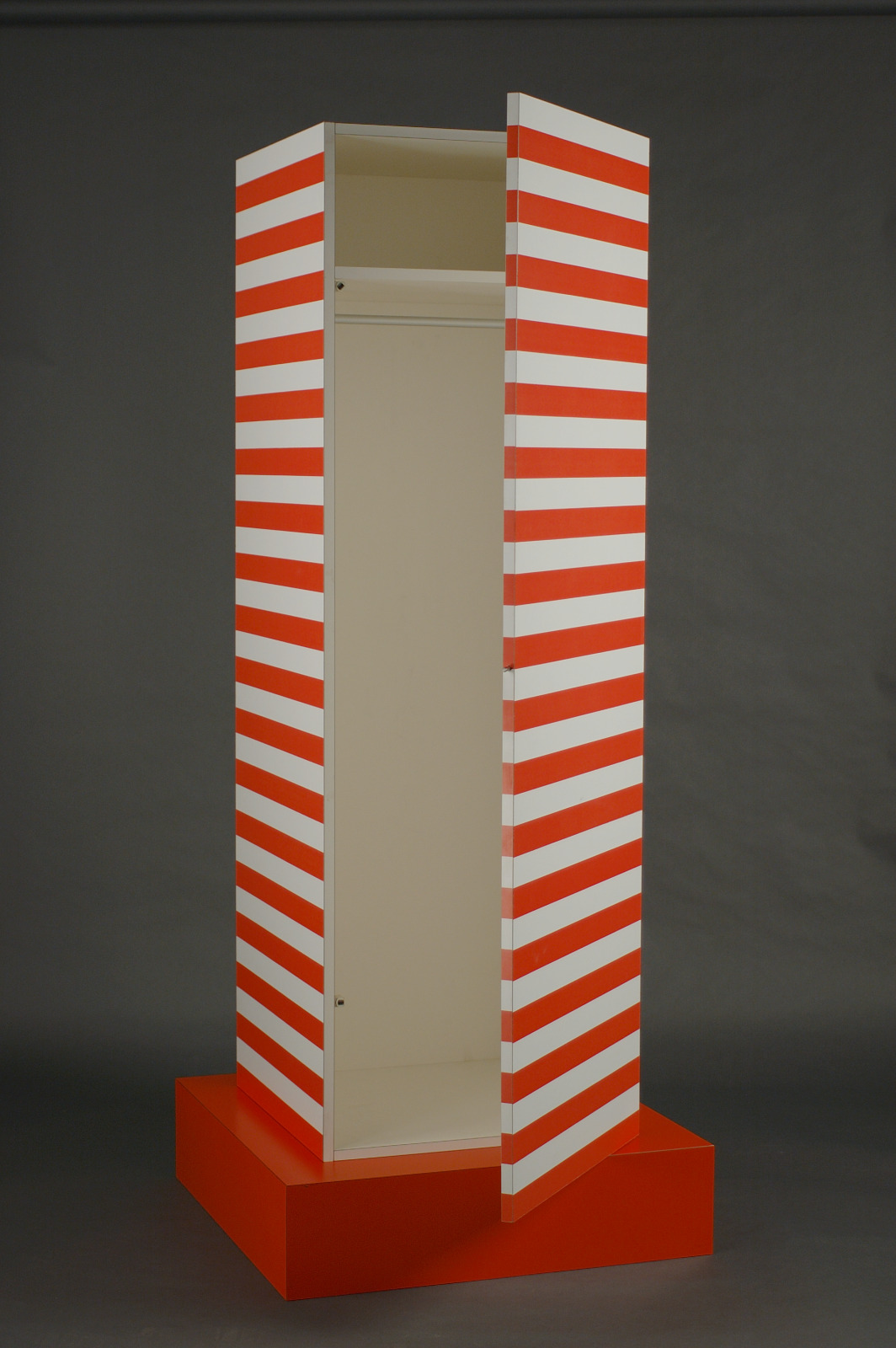
designed by Ettore Sottsass, Italian (born Austria), 1917–2007; made by Poltronova, Montale, Italy, founded 1957; Superbox Wardrobe, 1968; plastic laminate on particle board; 78 1/2 x 31 1/2 x 31 1/2 inches; Saint Louis Art Museum, The Marjorie Wyman Endowment Fund 46:2005a,b; © 2022 Artists Rights Society (ARS), New York / ADAGP, Paris
A simple rectangular wardrobe achieves a ritual significance when enlarged and adorned with graphic red and white stripes. Ettore Sottsass, the influential Italian designer who later founded the design group Memphis in 1981, developed his Superboxes as part of a limited-edition furniture series. Drawing on the spirit of contemporary artistic movements, this functional sculpture, meant to be displayed in the center of the room, is Sottsass’s cheeky “altarpiece for the domestic liturgy.”
April 26, 2022
Shrine Object
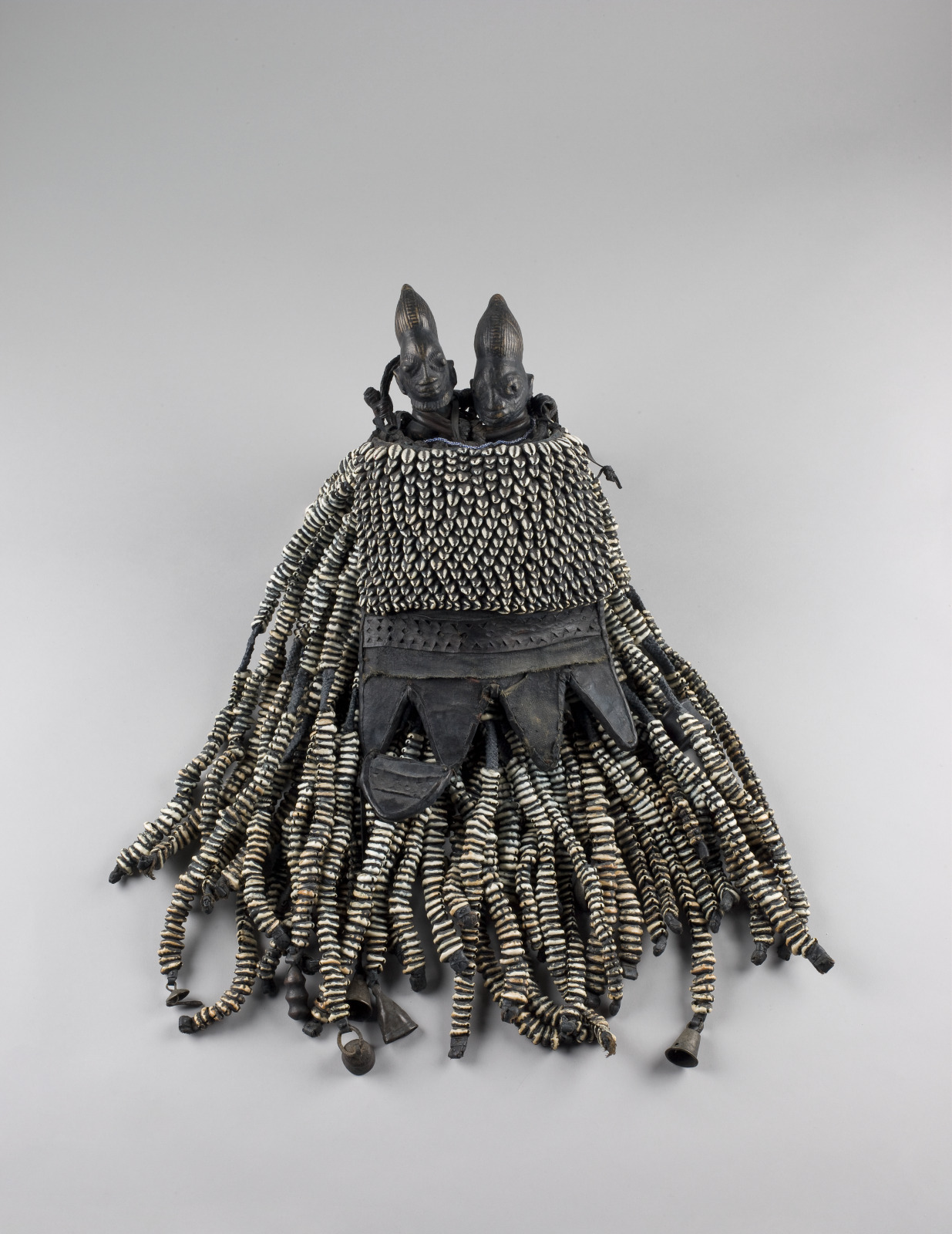
Yoruba artist, Nigeria; Shrine Object, first half 20th century; wood, leather, cowrie shells, glass beads, fiber, metal bells; height: 27 inches; Saint Louis Art Museum, Gift of Dr. William Harvey 18:1983
These figures, one male and one female, suggest the Yoruba god Eshu’s ability to bring opposites and complementary entities together. Eshu is known as the messenger between this world and the spiritual realm of the orishas and ancestors. The figure pair also emphasizes the duality inherent in Eshu’s personality. Known as a trickster, Eshu represents unpredictability and uncertainty in the universe. When this object was not set up as a shrine dedicated to the god, a devotee danced with it, activating its dangling bells and shells, at Eshu festivals held in the marketplace. Eshu is also considered the guardian of the markets and crossroads.
April 16, 2022
The Majesty of the Empire
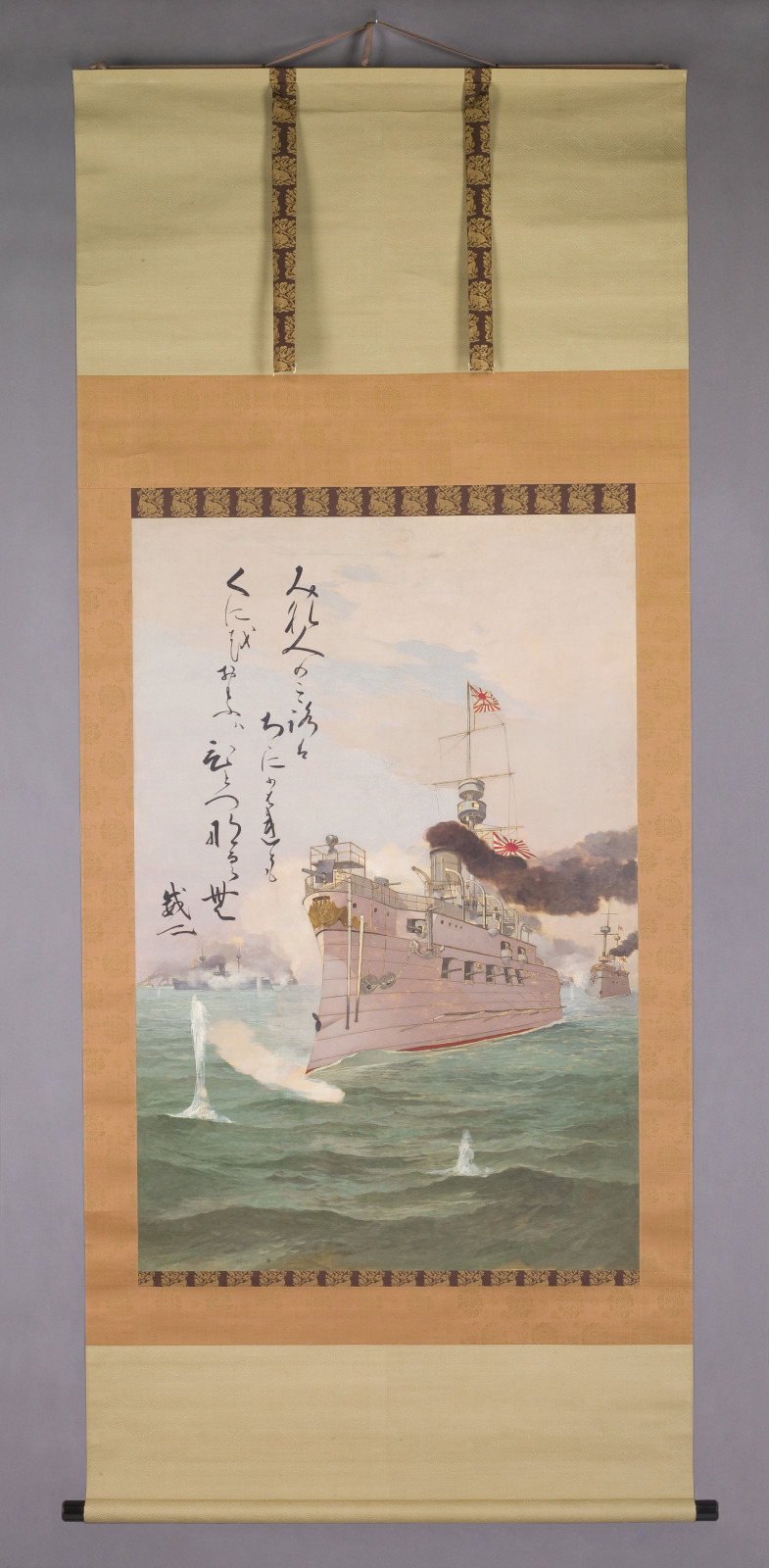
Kobayashi Kiyochika, Japanese, 1847–1915; The Majesty of the Empire, 1895–96; hanging scroll: ink and oil on silk; image: 50 1/2 x 33 5/8 inches, scroll: 97 x 40 3/4 inches; Saint Louis Art Museum, Gift of Mr. and Mrs. Charles A. Lowenhaupt 1060:2010
This portrait of the Matsushima, a former flagship of the Imperial Japanese Navy, is a rare oil painting on silk. Kobayashi Kiyochika’s skillful handling of oils is evident in the hazy sky and the choppy water with explosions rupturing its surface. Prince Arisugawa-no-miya Takehito (1862–1913) commanded the Matsushima from December 5, 1894, through May 18, 1895, during which period the cruiser was badly damaged in the Battle of the Yellow Sea off the coast of China.
The prince inscribed the painting with a classical poem:
Though divided in a thousand ways
are the minds of the people,
United as one in their hearts
is the love for their country.
April 11, 2022
Hand Drum
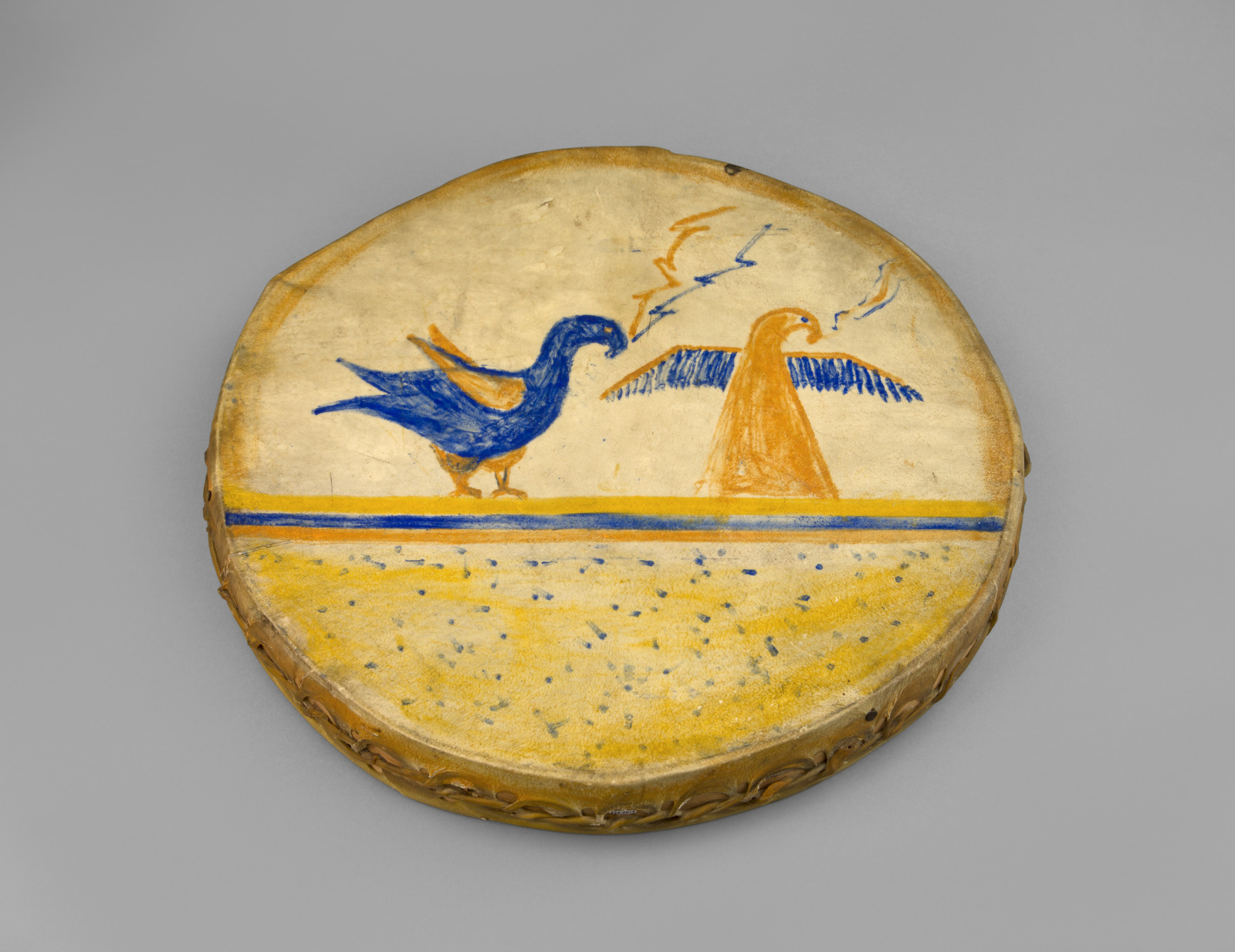
Anishinaabe artist; Hand Drum, 1850–1900; hide, pigment, and wood; 3 x 16 inches; Saint Louis Art Museum, Gift of Donald A. Herbst and Danielle Foster-Herbst, in memory of Lorenz Kneedler Ayers, Anna Marguerite Spackman Ayers, Donald Frederick Herbst, and Barbara Ayers Herbst 234:2019
A bird in full profile stands on the horizon at left. To the right, another bird extends its wings and turns its beak. The upright posture and triangular base show the yellow figure in the process of transforming. Numerous Anishinaabe narratives describe the metamorphosis of humans to thunderbirds, powerful manitous (spirit beings) that issue lightning from their eyes and create thunder by flapping their wings. Here, the horizon line underscores the Anishinaabe organization of the world into distinct zones of power above and below the earth’s surface.
April 9, 2022
Seireeni Textile

designed by Maija Isola, Finnish, 1927–2001; made by Marimekko Oy, Helsinki, Finland, founded 1951; Seireeni Textile, 1965; screen-printed cotton; 55 1/2 x 192 inches; Saint Louis Art Museum, Gift of Marimekko Oy 157:1971; © Maija Isola, courtesy of Marimekko Corporation
Like a powerful ocean swell, the sinuous wave of this furnishing fabric challenges human scale. Seireeni, or siren in Finnish, is part of artist and designer Maija Isola’s Arkkitehti series for the famed Finnish fashion and textile company Marimekko. Organic and abstract, these macroprints were originally marketed to architects and interior designers. Each design was conceived individually. Original patterns were created with paint and cut paper, and then like all Marimekko prints, they were transferred onto large silk screens and hand-printed at the Finland-based studio.
April 2, 2022
Seated Woman

Pablo Picasso, Spanish, 1881–1973; Seated Woman, July 1953; oil on canvas; 51 1/2 x 37 7/8 inches; Saint Louis Art Museum, Gift by exchange and funds given by Mr. and Mrs. Joseph Pulitzer Jr. 196:1953; © 2022 Estate of Pablo Picasso / Artists Rights Society (ARS), New York
Pablo Picasso monumentalized the nude body of his lover, Françoise Gilot, in this painting. Gilot, 40 years his junior, dominated the female imagery in Picasso’s art in the decade following their meeting in 1943. The artist represented many aspects of her body, showing her face from different angles and her buttocks along with a frontal view. Picasso’s fragmentation of forms highlights the continuing legacy of Cubism while his Surrealist-informed interest in erotic themes is evident in the powerful, sexual assertiveness of Gilot’s expression and stance.
March 29, 2022
The Minotauromachy
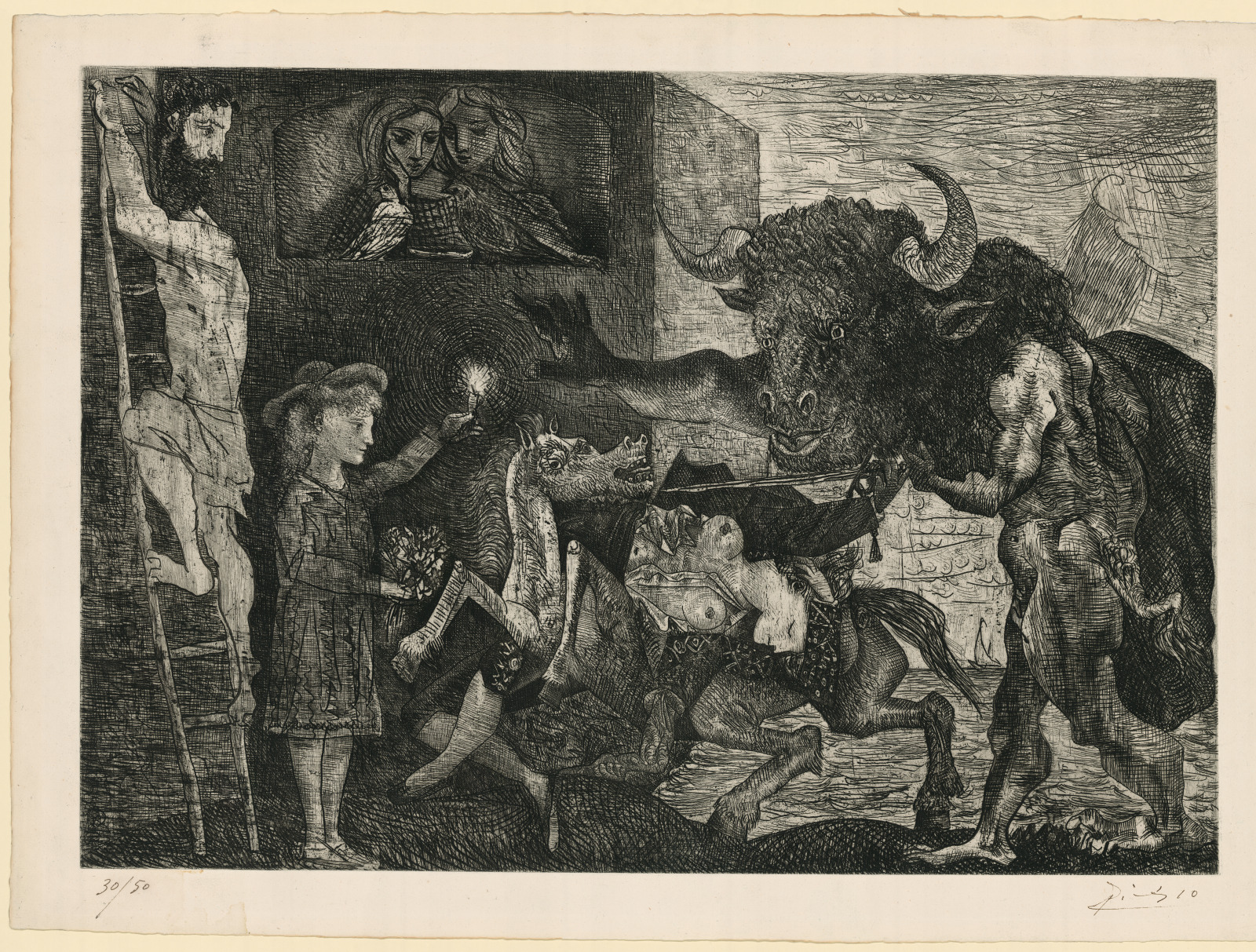
Pablo Picasso, Spanish, 1881–1973; printed by Roger Lacouriere, French, 1892–1966; The Minotauromachy, 1935; etching; plate: 19 9/16 x 27 3/16 inches, sheet: 22 9/16 x 30 7/16 inches; Saint Louis Art Museum, Bequest of Horace M. Swope 665:1940; © 2022 Estate of Pablo Picasso / Artists Rights Society (ARS), New York
The tangled webs of etched lines that compose this work are matched in their complexity by multiple overlapping interpretations of the subject. Pablo Picasso often represented the figure of the minotaur, seen at right, a creature from ancient Greek mythology that is part man and part bull. The minotaur’s relationship to other figures, especially the girl with the candle and the dead female bullfighter, invites reflection on manifestations of power and control in both life and art. Picasso turned his focus from painting to printmaking and poetry in 1935, exploring imagery that expressed intense struggle.
March 27, 2022
Tray
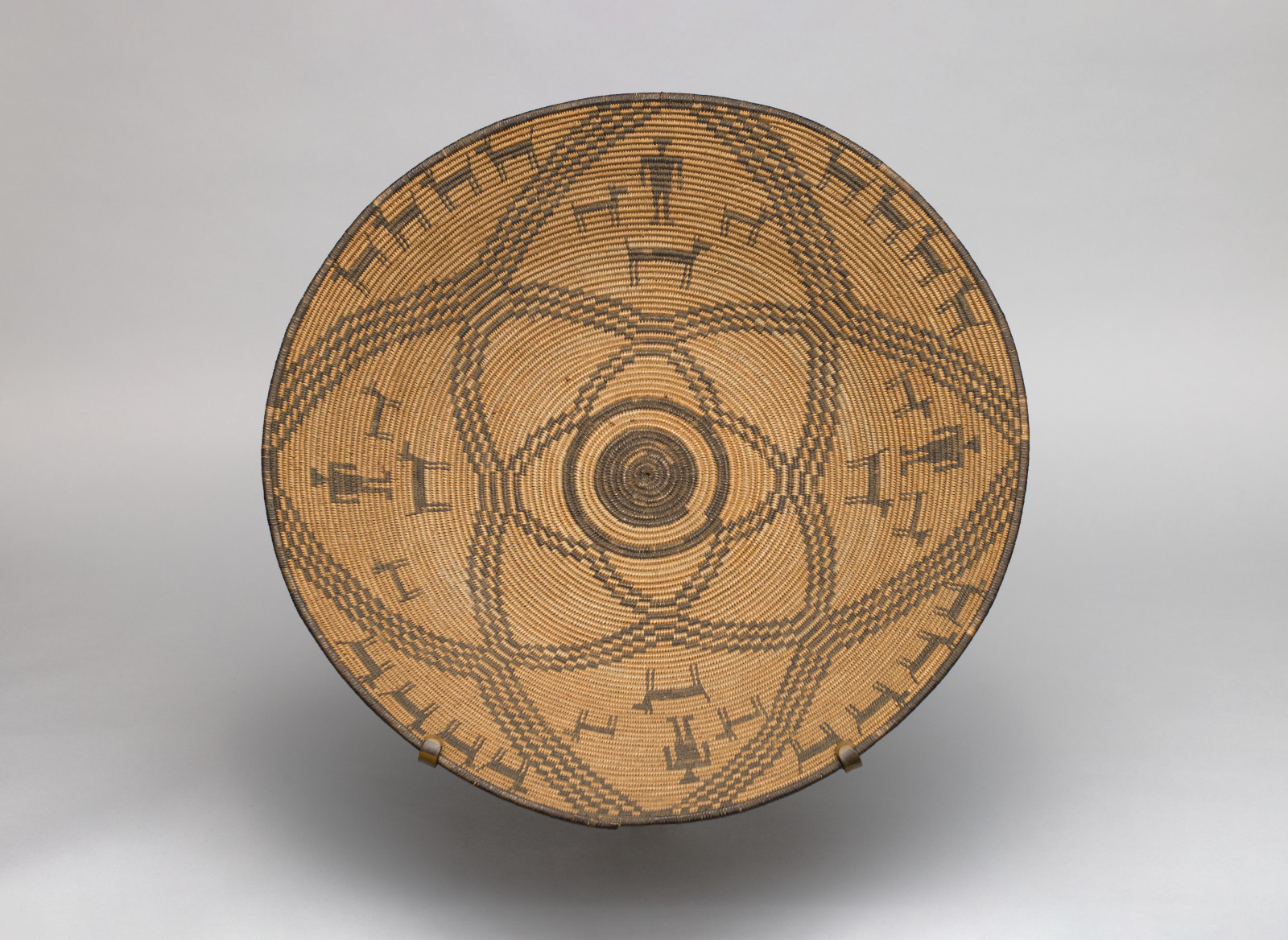
Inde (Apache) artist; Tray, c.1900; willow or cottonwood, and devil's claw; 3 3/4 x 21 inches; Saint Louis Art Museum, Gift of Eugene Pettus Jr. and George T. Pettus 122:1982
Arches ripple symmetrically from the center of this basket. They overlap to form a series of zones occupied by human and animal figures. The artist elaborated on ancestral techniques for coiling baskets to create this work for early tourist markets in the Southwest.
This basket is based on a spiraling foundation of shoots from cottonwood or willow trees. The artist sewed each stitch using evenly split strands of the material. To create the black designs, she used dried seed pods of the southwestern shrub devil’s claw.
March 25, 2022
Sightseeing

James Rosenquist, American, 1933–2017; Sightseeing, 1962; oil on canvas and glass, with painted wood and metal hardware; 48 x 60 inches; Saint Louis Art Museum, Funds given by the Shoenberg Foundation, Inc. 19:1975; © 2022 James Rosenquist Foundation / Licensed by Artists Rights Society (ARS), NY. Used by permission. All rights reserved.
James Rosenquist started his career as a billboard painter, creating advertisements and images of consumer goods on a monumental scale. His early training is evident in this work—vibrantly painted colors, block lettering, and enlarged details of recognizable imagery, in this case a bouquet of roses. Rosenquist drew inspiration for this painting from the back of a tour bus he regularly saw while painting signs in New York City’s Times Square. Sightseeing blurs the line between banal tourism and the supposedly elevated act of viewing art in a gallery or museum.
In celebration of Virtual Art in Bloom, we are bringing you a floral-inspired work from the collection each Friday this month.
March 22, 2022
Scene from the 1939–1940 Winter Offensive in the Vicinity of Baotou, Suiyuan Province, during the Second Sino-Japanese War

Fukuda Bisen, Japanese, 1875–1963; Scene from the 1939–1940 Winter Offensive in the Vicinity of Baotou, Suiyuan Province, during the Second Sino-Japanese War, c.1940; pair of six-panel folding screens: ink and color on paper; each screen, approximate: 68 7/8 inches x 12 feet 3 5/8 inches; Saint Louis Art Museum, Funds given by Mr. and Mrs. Charles A. Lowenhaupt 34:2017a,b
From a distance, this composition appears as an expansive winter landscape. Close viewing reveals Japanese military troops and a convoy of camels traversing the snowy ground as well as several warplanes providing cover from the air. Various specific locales are identified through place names inscribed with Chinese-style characters. The setting is in and around the city of Baotou in the historical Suiyuan Province of Republican China, now part of the Inner Mongolia Autonomous Region of the People’s Republic of China. The subject is the 1939–1940 Winter Offensive in China during the Second Sino-Japanese War (1937–1945).
Above the lower right corner of the right-hand screen, the artist inscribed the name of the place where he made the painting as well as his signature (Bisen). An impression in bright red of a tall rectangular artist’s seal with the legend also reads Bisen. At the upper left of the left-hand screen, the artist inscribed a five-character couplet in two columns, followed by another signature (Bisen) with a square artist’s seal and the four-character legend (“Sōtō Gabi”) carved in relief.
March 20, 2022
Isot Kivet Textile

Maija Isola, Finnish, 1927–2001; made by Marimekko Oy, Helsinki, Finland, founded 1951; Isot Kivet Textile, 1959; screen-printed cotton; 17 feet 11 inches x 48 inches; Saint Louis Art Museum, Gift of Marimekko Oy 163:1971; © Maija Isola, courtesy of Marimekko Corporation
The clipped curves of these monumental black dots lend an organic edge to this highly graphic textile. Designer Maija Isola created this simple but striking design with paper cut-outs, looking to the irregular shape of stones—kivet in Finnish—for inspiration. Isola’s outsized, abstract patterns helped catapult Finnish textile and fashion company Marimekko to international fame in the 1960s.
March 15, 2022
Funeral with Umbrellas
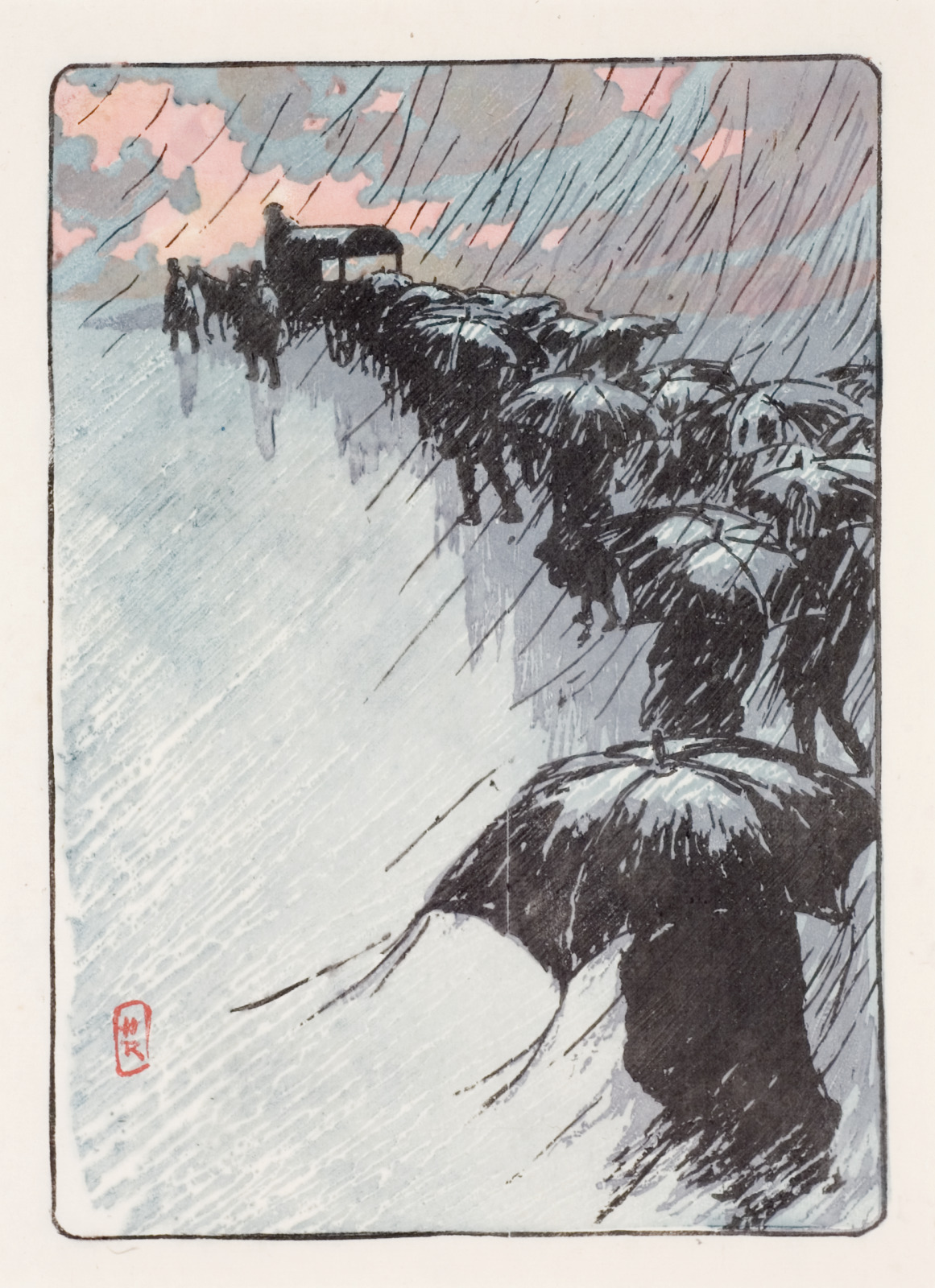
Henri Riviere, French, 1864–1951; Funeral with Umbrellas, 1891; color woodcut; image: 13 9/16 x 9 11/16 inches, sheet: 19 7/8 x 13 7/16 inches; Saint Louis Art Museum, Funds given anonymously in honor of Nancy G. Rosenbaum 10:2006
Rain pours down on a funeral procession that snakes along under a twilight sky. This print by Henri Rivière recalls colorful Japanese woodblock prints, called ukiyo-e. An influx of objects imported from Japan led to a western European craze known as Japonisme. Rivière capitalized on that popularity in his own works, borrowing stylistic elements such as dramatic diagonals, flattened space, and silhouetted forms. He even stamped his initials in red ink to capture the appearance of Japanese artists’ signatures. With its heavy rainfall and oblique angles, Funeral with Umbrellas seems to reference Sudden Shower Over Ōhashi Bridge and Atake, a print by Utagawa Hiroshige, one of the best-known Japanese ukiyo-e artists.
March 13, 2022
Wrapper (adire alabere)
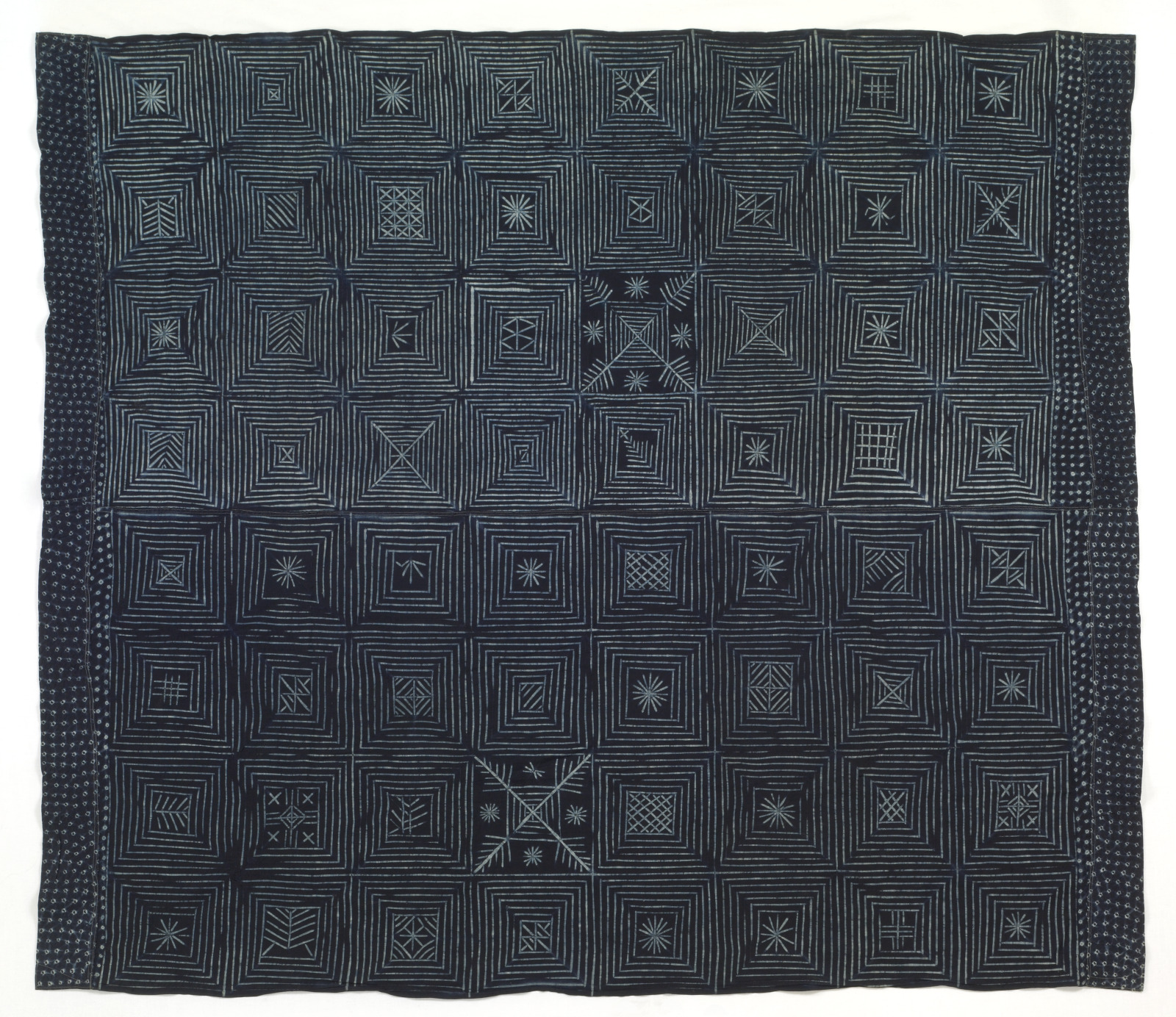
Yoruba artist, Nigeria; Wrapper (adire alabere), 20th century; cotton, indigo dye; 66 x 75 inches; Saint Louis Art Museum, Gift of Thomas Alexander and Laura Rogers 423:2002
Each concentric square of this cloth’s overall grid-like pattern features a unique linear design at its center. The artist employed a stitch-resist process called adire alabere to create these intricate motifs. After tightly stitching the cloth with a variety of techniques using a needle and thread, the artist saturated the cloth in an indigo bath until the desired color was achieved. Once the cloth was dry, the artist removed the stitches to reveal the complex designs in blue and white. This cloth is comprised of two strips of factory-produced cotton sewn together and worn as a wrap around a woman’s body. Yoruba women and men wore adire cloth wrappers as everyday dressing until the mid-20th century, when imported dyes and multi-colored, commercially-printed fabrics became fashionable.
March 10, 2022
Following the Mist at Dawn
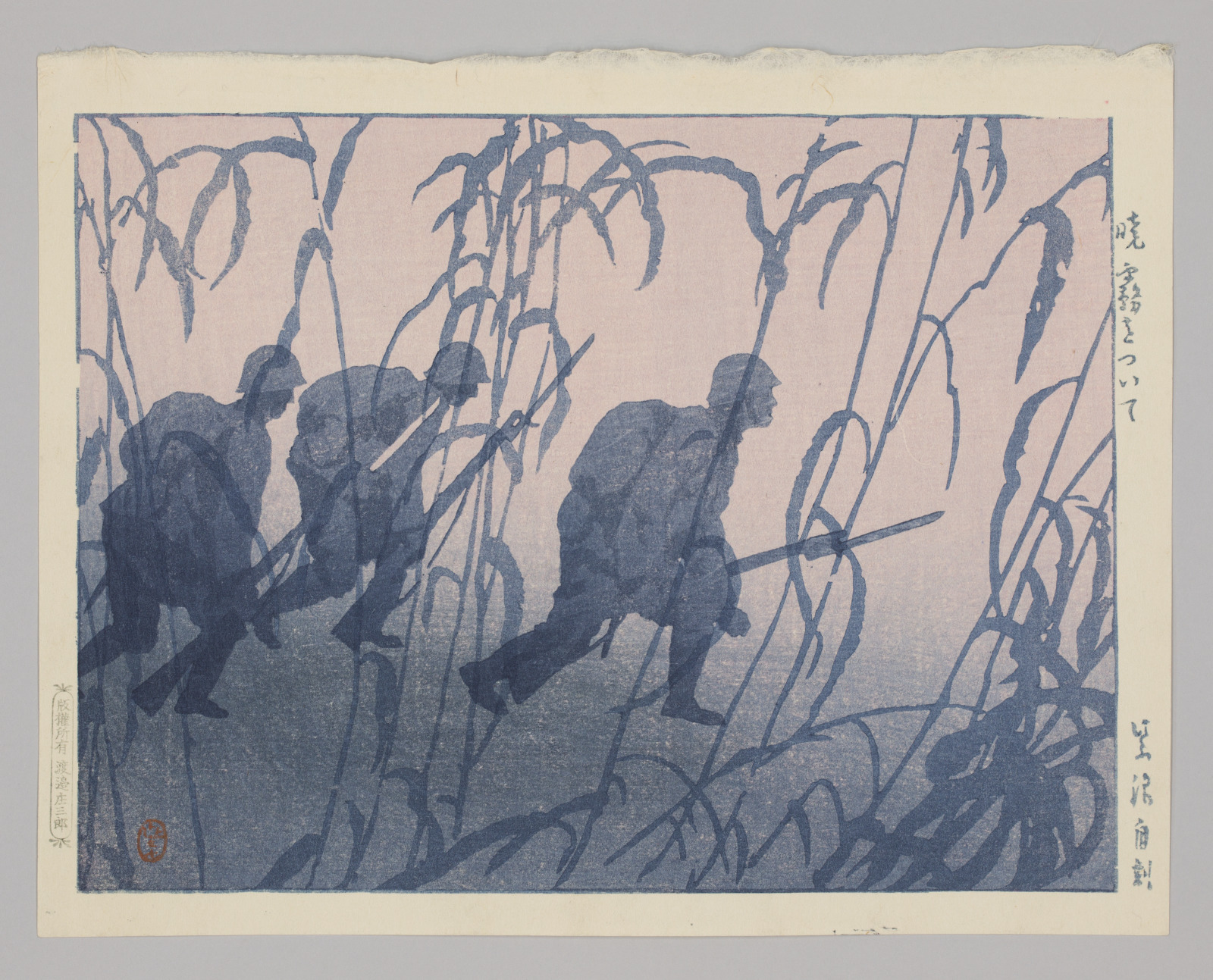
Kasamatsu Shirō, Japanese, 1898–1991; Following the Mist at Dawn, 1937; color woodblock print; sheet: 8 1/4 x 10 3/4 inches; Saint Louis Art Museum, Gift of Mr. and Mrs. Charles A. Lowenhaupt 294:2020; © Estate of Kasamatsu Shirō
This rare print shows a group of three Japanese soldiers, bayonets mounted on their rifles, moving carefully through a stand of reeds in early morning fog. Although undated, it is known from the publisher’s archives to have been made in 1937 at the start of the Second Sino-Japanese War (1937–1945). At that time, Japanese troops invaded much of the eastern coastal regions of China. Atmospheric and evocative, this is the only woodblock print by Kasamatsu Shirō known to depict a military subject.
March 4, 2022
Seed Jar with Painted Motifs
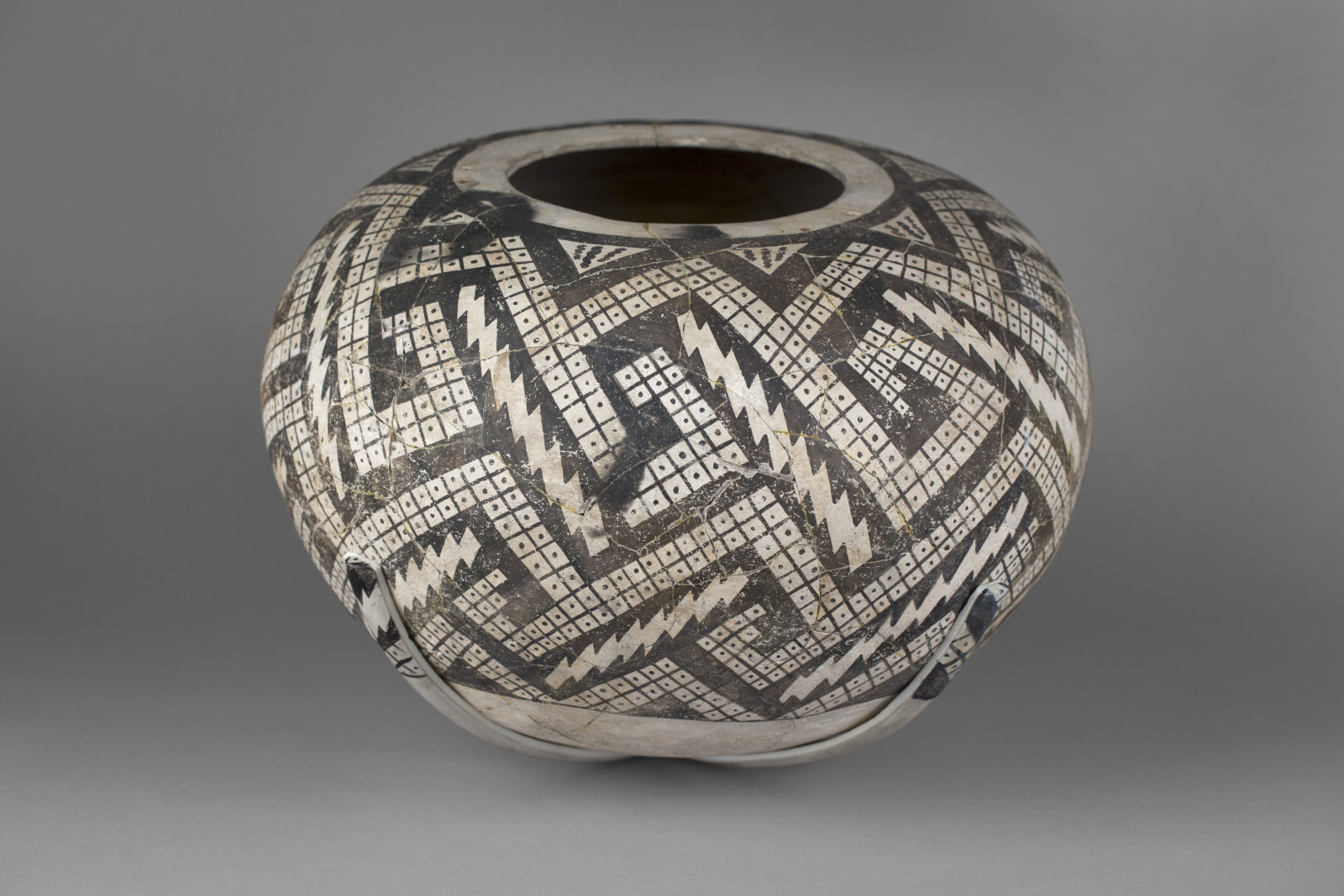
Seed Jar with Painted Motifs, c.980–1150; Ancestral Puebloan, Southwest, United States; ceramic with pigment; 10 1/2 x 14 1/2 inches; Saint Louis Art Museum, Funds given by the Children's Art Festival 175:1981
This elegant jar was made by the Ancestral Puebloan peoples of the American Southwest, who used such vessels to store seeds for planting. Working with very fine brushes made of yucca plant fibers, an artist painted the jar with complex geometric designs that include two bands of interlocking frets, composed of tiny white squares with dots at the centers, separated by white lightning patterns. The square shapes may represent kernels of corn, and the lightning motifs may symbolize thunder and rain, all references to the agricultural cycle. Given the dry climate of the American Southwest, the user of this jar may have been reassured of the ongoing cycle of fertility by the symbols on the jar.
In celebration of Virtual Art in Bloom, we are bringing you a floral-inspired work from the collection each Friday this month.
March 3, 2022
Madame Roulin
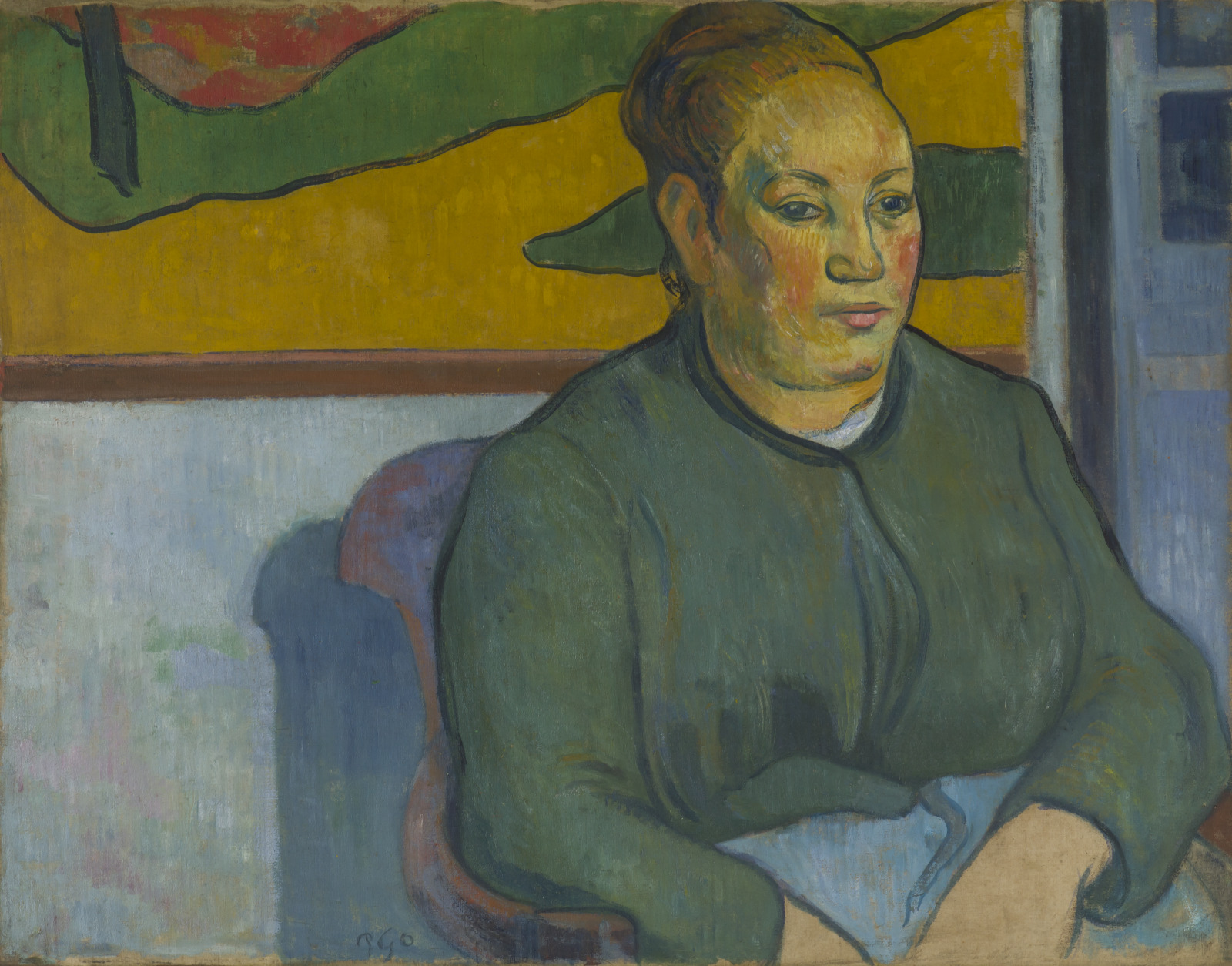
Paul Gauguin, French, 1848–1903; Madame Roulin, November 1888; oil on canvas; 19 7/8 x 25 inches; Saint Louis Art Museum, Funds given by Mrs. Mark C. Steinberg 5:1959
Paul Gauguin produced this portrait during a tempestuous two months spent in the company of Vincent van Gogh at Arles in the south of France. This female model was the local postman’s wife, and Gauguin focused on her ruddy complexion and reddish-brown hair. He also painted areas of flat, abstracted color, such as the shadow and the wall behind the chair. The woman’s form is strongly outlined in Prussian blue while a schematic version of one of the artist’s own pictures, Blue Trees, is visible on the wall behind.
March 2, 2022
Portrait of a Canon (probably Canon Johann Rieper of Brixen)
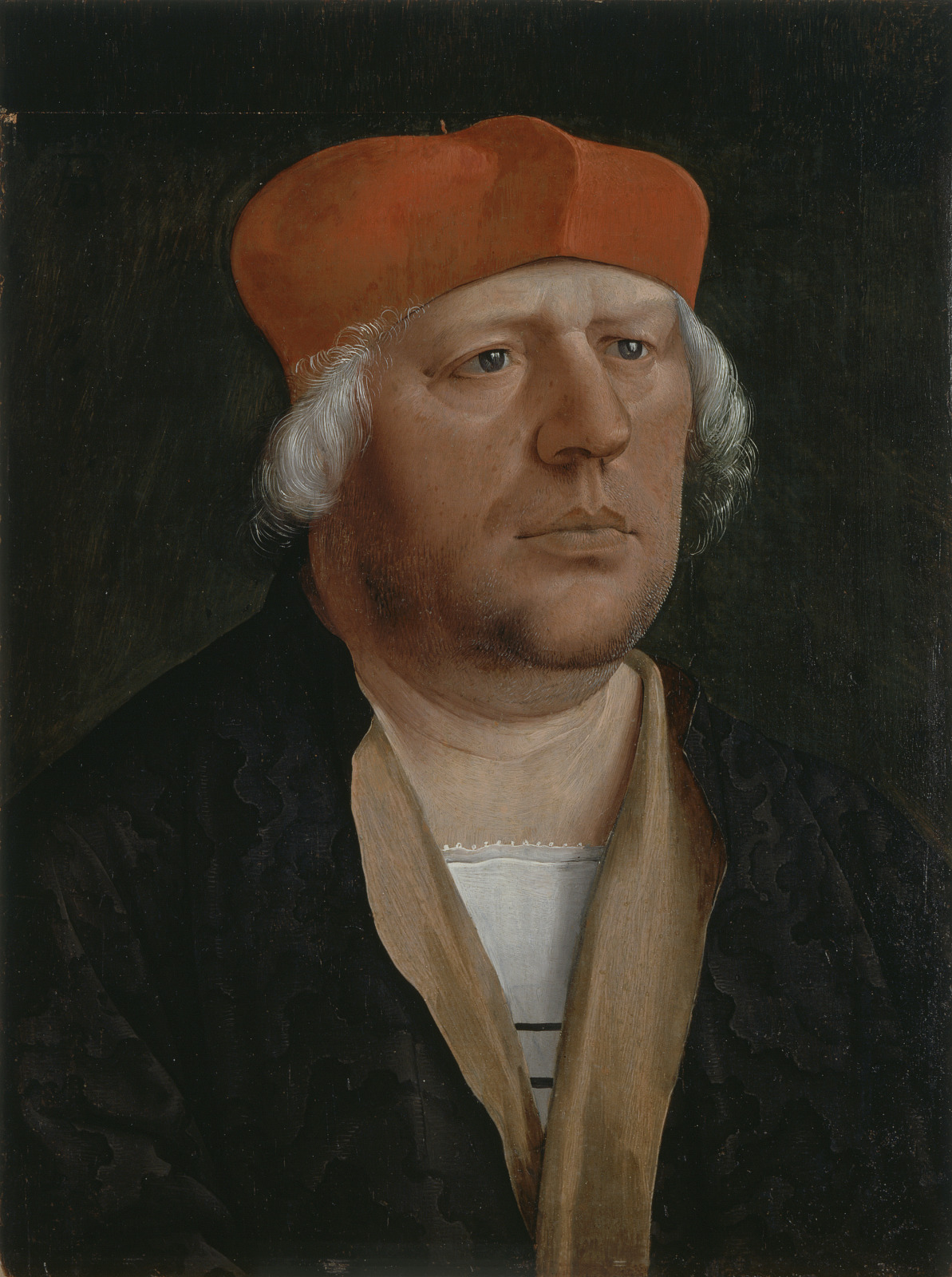
Marx Reichlich, Austrian, active c.1485–1520; Portrait of a Canon (probably Canon Johann Rieper of Brixen), c.1520; oil on panel; 15 3/4 x 11 3/4 inches; Saint Louis Art Museum, Museum Purchase 10:1915
The great attention paid to individual strands of hair, the beard stubble visible on his cheek and chin, and the crisp representation of form attest to the artist’s careful observation of his subject. While tradition holds that this man was Canon Johann Rieper of the northern Italian town of Brixen (Bressanone), few other contemporary images of Rieper exist to make identification certain. The cap that he wears, however, suggests that he was a canon, a cleric who lived in community with others. Images made by infrared reflectography reveal that the artist made the subject’s left cheek slimmer and adjustments were made to the nose and hat.
February 25, 2022
Before the Mirror
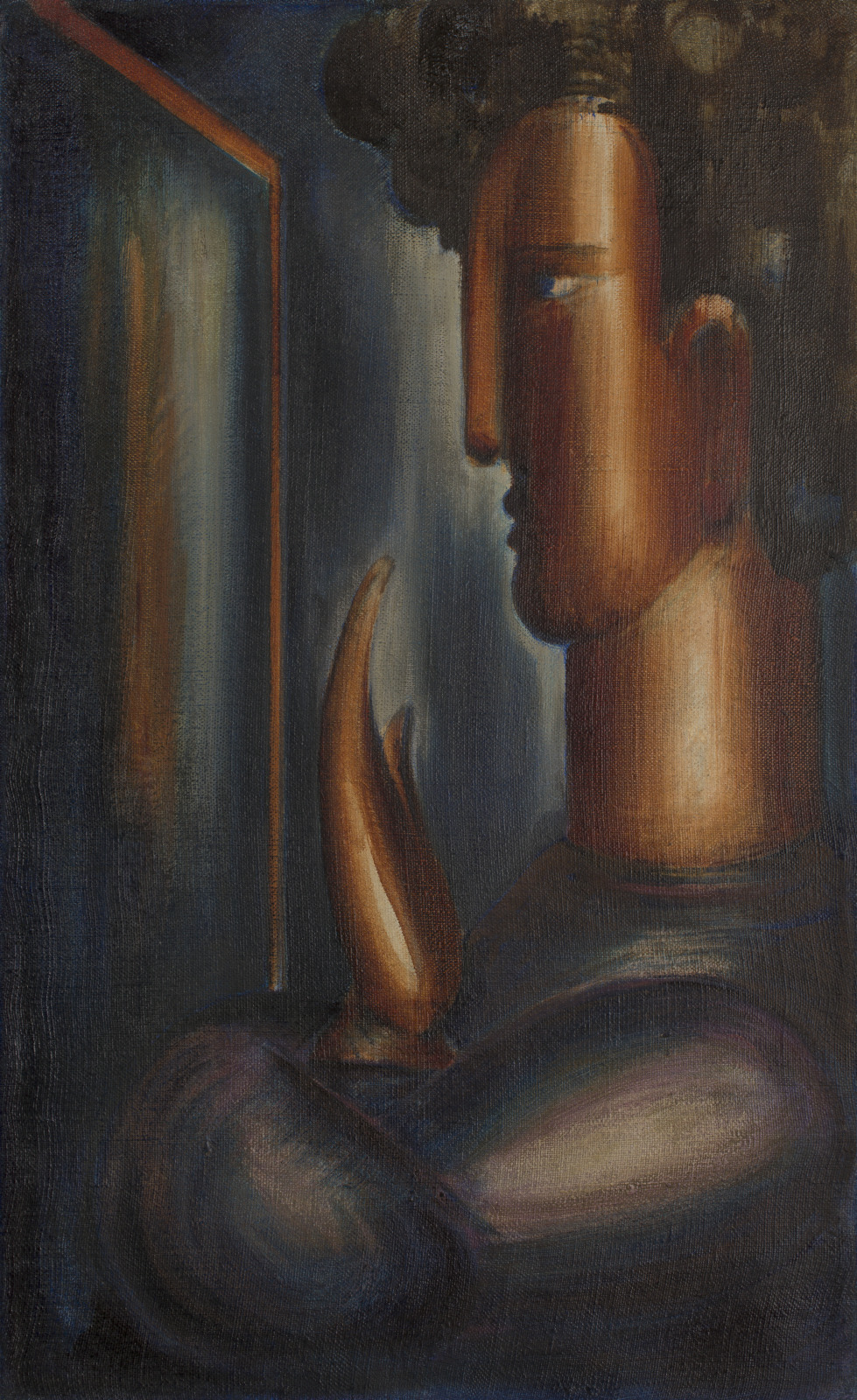
Oskar Schlemmer, German, 1888–1943; Before the Mirror, 1931; oil on canvas; 25 7/8 x 15 7/8 inches; Saint Louis Art Museum, Bequest of Morton D. May 937:1983
A strong light reflects off the shiny body of a strange figure. Critics described Oskar Schlemmer’s subjects as mechanical dolls for their metallic skin and segmented limbs. They resemble the costumes Schlemmer designed for dances he choreographed at the Bauhaus, where he taught theater in the 1920s. By the time Schlemmer made this painting in 1931, he described his mechanical dolls in terms of a “grand figural style,” in which the abstracted human form achieved conceptual precision.
February 24, 2022
Portrait of General Douglas MacArthur
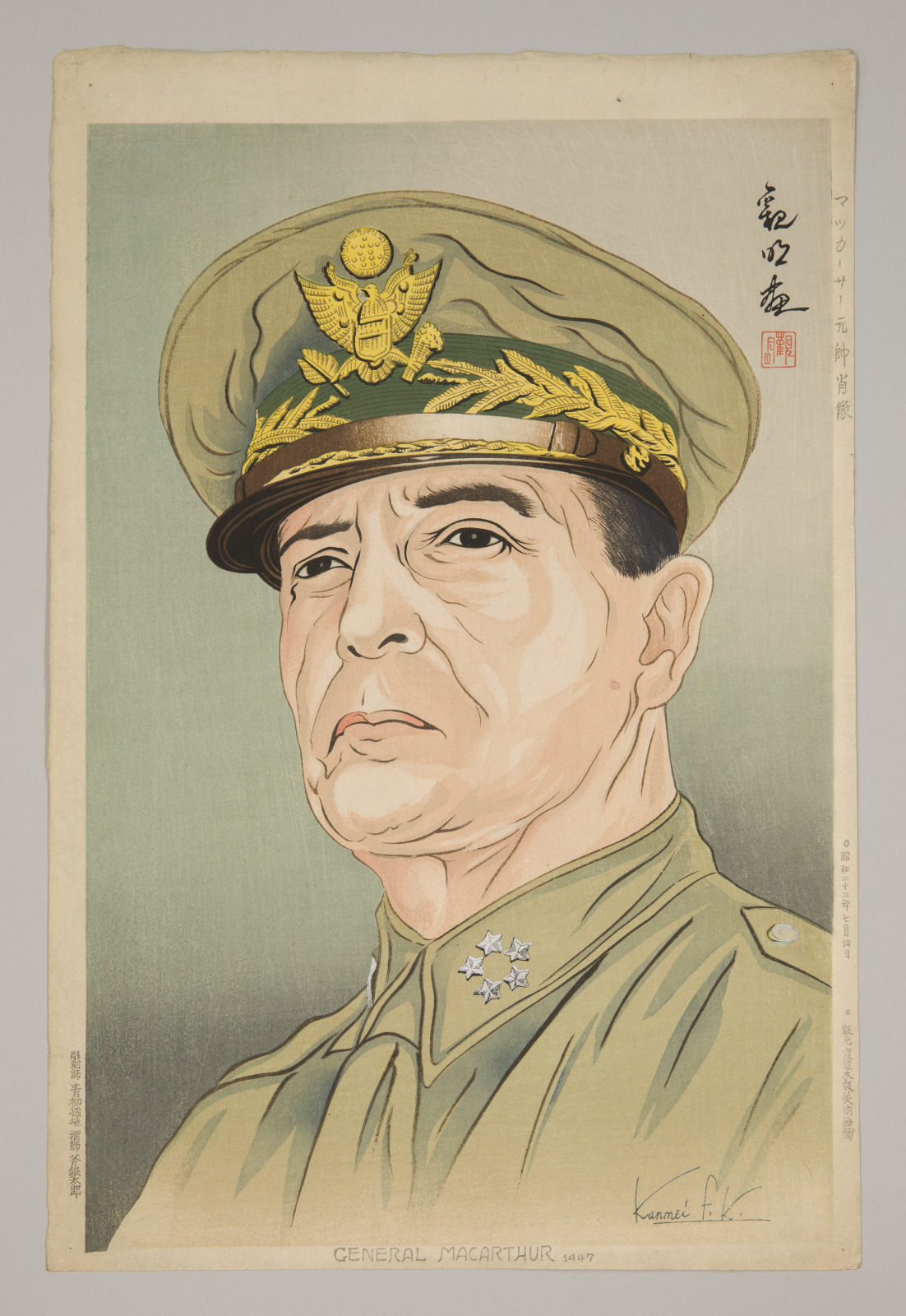
Kanmei, Japanese, active early to mid-20th century; engraved by Aoyanagi Isao, Japanese, active mid-20th century; printed by Ono Gintarō, Japanese, 1885–c.1962; published by Watanabe Shōzaburō, Japanese, 1885–1962; Portrait of General Douglas MacArthur, 1947; color woodblock print; image (irregular): 15 1/2 x 10 3/16 inches, sheet: 16 13/16 x 11 inches; Saint Louis Art Museum, Gift of Mr. and Mrs. Charles A. Lowenhaupt 330:2020
This very rare print depicts the United States Army General Douglas MacArthur (1880–1964). He officially accepted the surrender of Japan on September 2, 1945, aboard the USS Missouri while it was anchored in Tokyo Bay. MacArthur also led the occupation of Japan from 1945 to 1951. As the effective ruler of Japan during this period, he oversaw sweeping economic, political, and social changes.
The portrait is possibly based on one of many photographs of General MacArthur available in Japan during the American occupation. The official publication date is given as July 4, 1947, which suggests the savvy publisher had American servicemen in mind as potential buyers to celebrate their nation’s Independence Day.
February 23, 2022
Prayer Rug (sajjadah) with Design of Single Niche and Stylized Buta Motifs

Prayer Rug (sajjadah) with Design of Single Niche and Stylized Buta Motifs, 1894; Caucasian, Russia; wool; 36 x 61 inches; Saint Louis Art Museum, Gift of Mr. and Mrs. Irvin Dagen 184:1984
Assorted abstracted buta, or pinecone-shaped elements, on this carpet are arranged in staggered rows facing opposing directions on a red background. The term buta is derived from the Persian boteh, and the design later evolved into the paisley motif in Europe. The particular version of the buta seen here has flower heads forming the outline of the shape creating a dazzling overall pattern. Free-floating geometric ornaments appear alongside the buta, with stylized trees, flowers, and a four-legged animal appearing above the arch of the prayer niche or mihrab. The border comprises three bands of different designs. A date woven into the carpet’s niche corresponds to 1894.
This textile was likely made in Derbent, an ancient city in Dagestan, a republic of present-day Russia situated on the Caspian Sea, in the North Caucasus of Eastern Europe.
February 17, 2022
François Orléans, Prince de Joinville
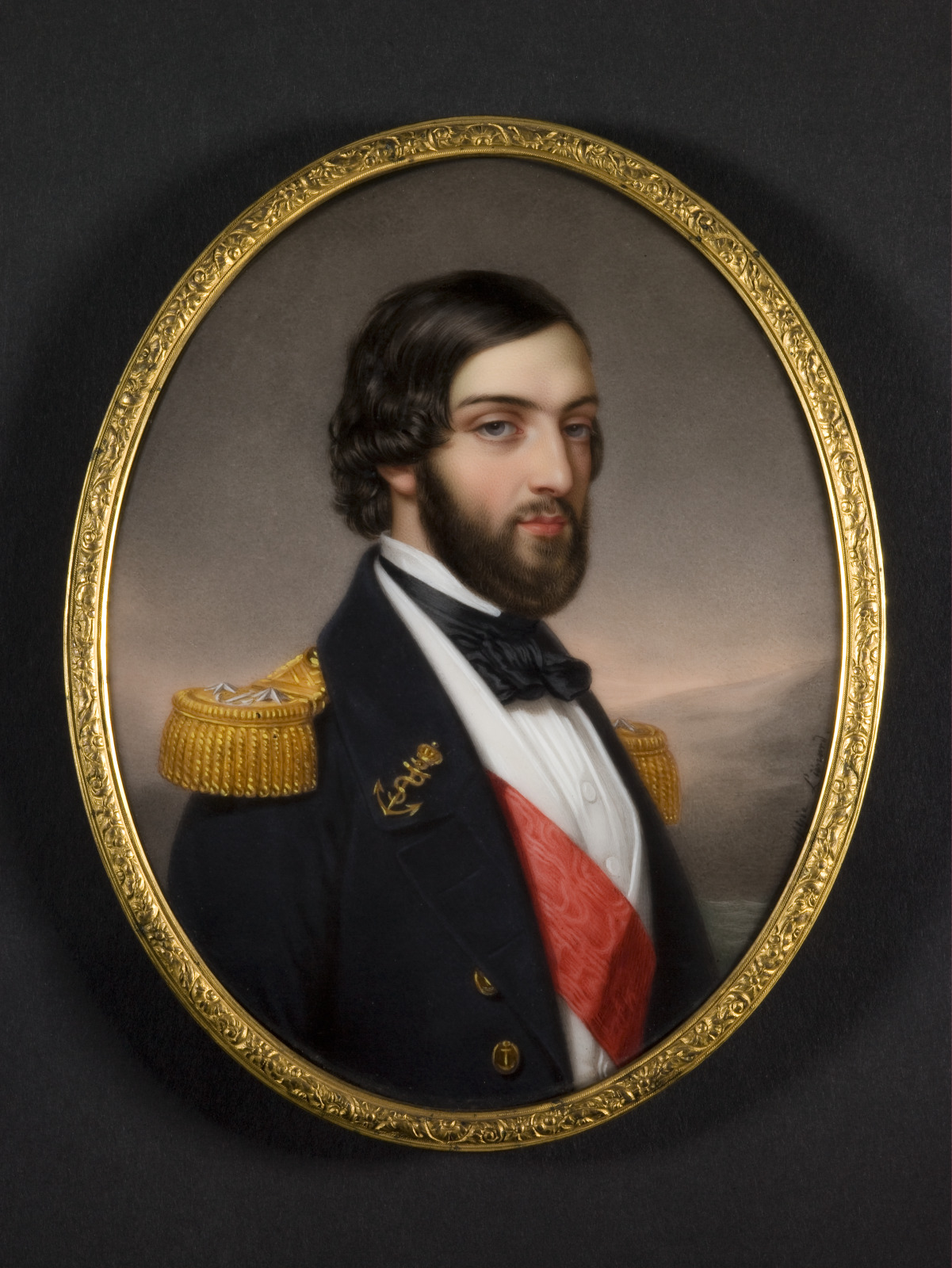
Sophie Lienard, French, active 1842–1845; Francois Orleans, Prince de Joinville, mid-19th century; enamel on porcelain; image (by sight): 5 9/16 x 4 5/16 inches; Saint Louis Art Museum, Gift of Mrs. Frank Spiekerman, The Frank Spiekerman Collection 28:1933.92
Portrait miniatures, small, detailed paintings of individuals, were commonly commissioned in the 18th and 19th centuries to commemorate famous people or remember loved ones. In the home, these likenesses could be arranged to form a family tree, their small size allowing many generations to be shown side by side. In smaller sizes they could be worn as rings, necklaces, and brooches.
February 14, 2022
Venus Anadyomene
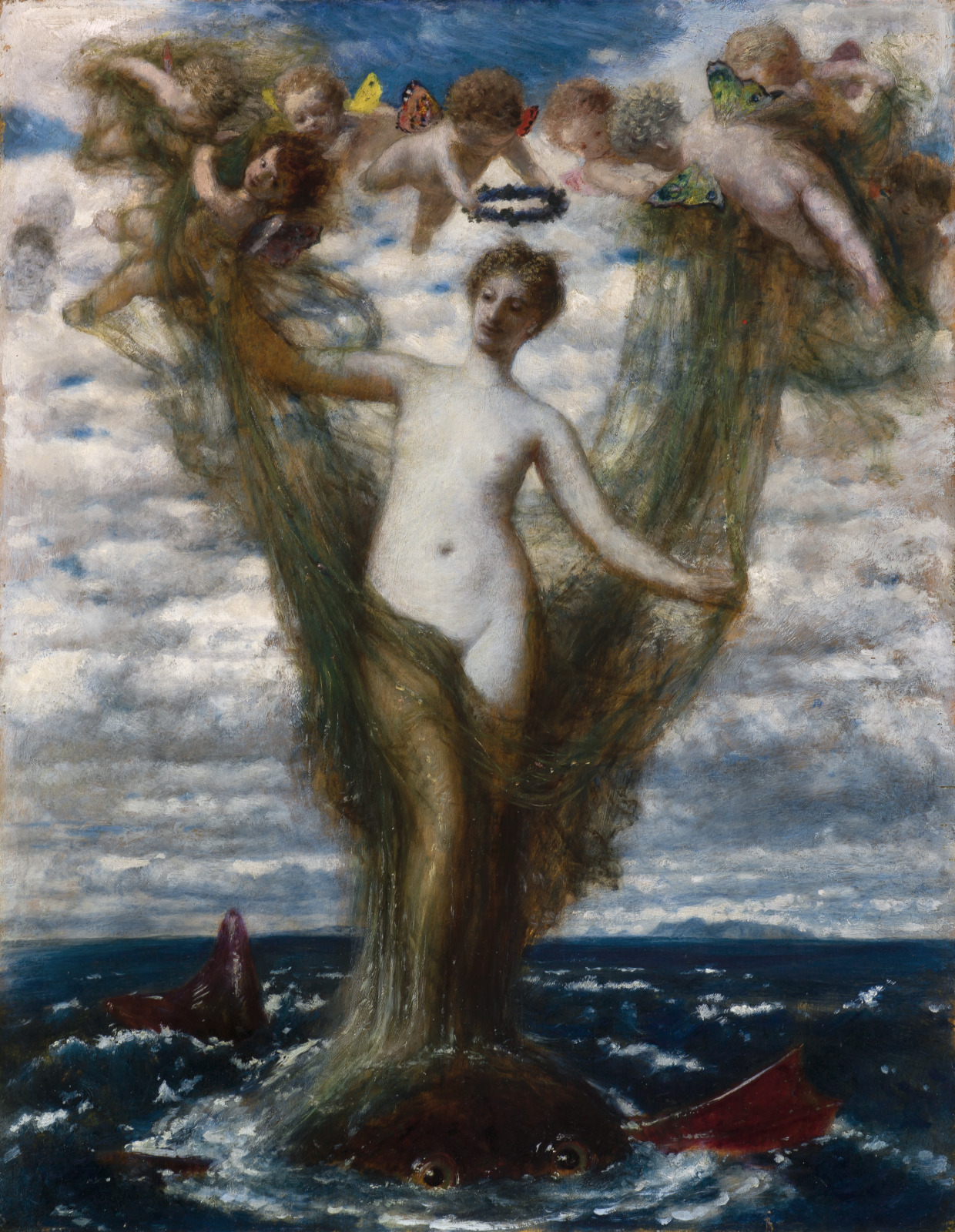
Arnold Böcklin, Swiss (active Germany), 1827–1901; Venus Anadyomene, 1872; oil on panel; 23 1/4 x 18 inches; Saint Louis Art Museum, Museum Purchase and funds given by Mr. and Mrs. Lester A. Crancer Jr., Mr. and Mrs. Stephen F. Brauer, Mr. and Mrs. Lawrence E. Langsam, an Anonymous Friend, and Mr. and Mrs. Christian B. Peper 45:1993
The newborn Venus, ancient Roman goddess of love and beauty, rises from the waves on the back of a sea monster. Cupids with butterfly wings clothe her in sea foam and crown her with a wreath. The Swiss artist Arnold Böcklin worked in Germany intermittently throughout his career, spending several years in Munich. His light, frothy brushwork and imaginative depictions of mythology made him one of Germany’s most popular painters. Böcklin’s success inspired younger German artists to paint scenes from ancient Greek and Roman mythology.
February 8, 2022
Untitled (Chicago Shoe Repairing)
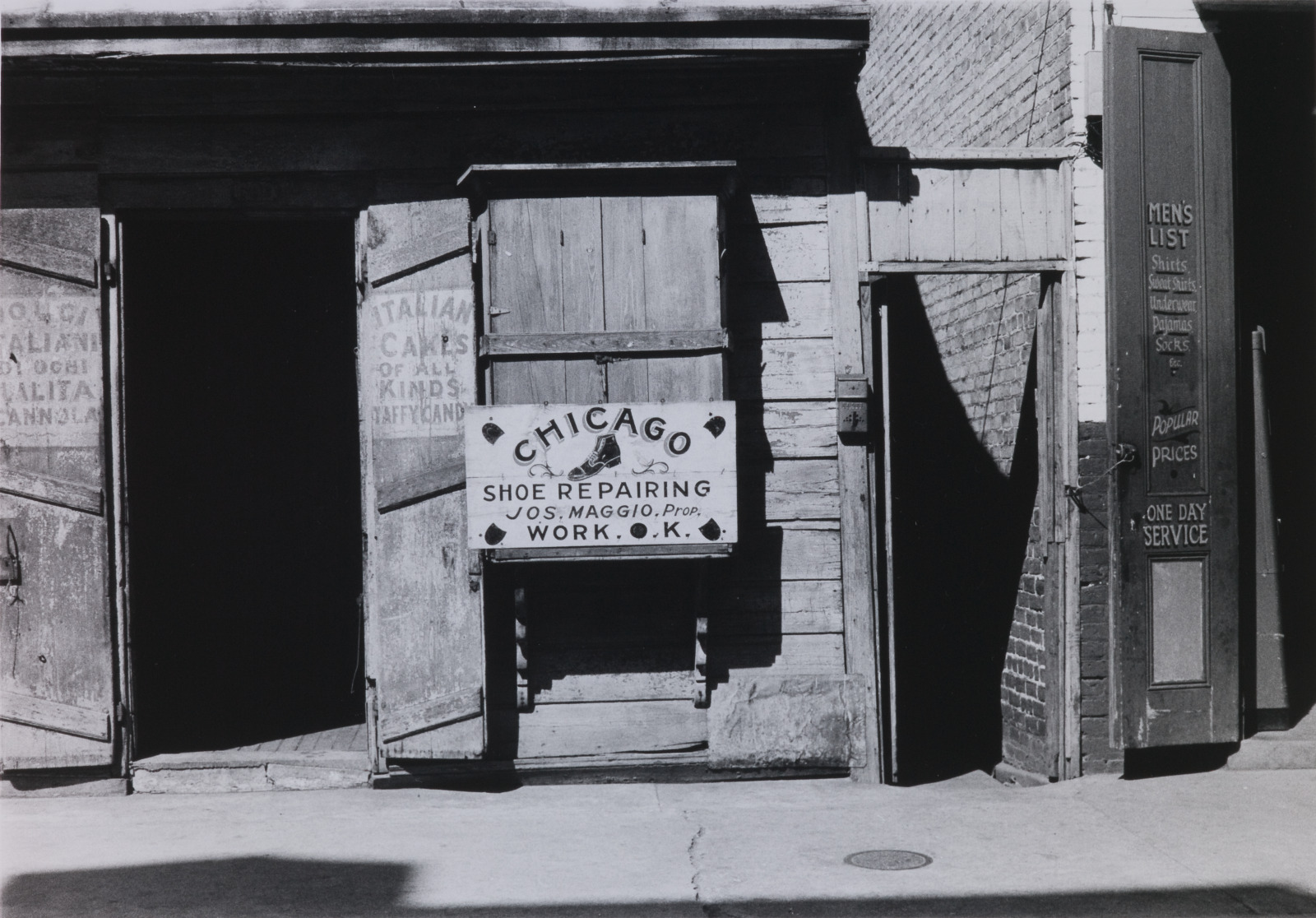
Ralston Crawford, American (born Canada), 1906–1978; Untitled (Chicago Shoe Repairing), 1952; gelatin silver print; image: 6 11/16 x 9 9/16 inches, sheet: 8 x 10 inches; Saint Louis Art Museum, Partial gift of John C. Crawford and funds given by donors to the Art Enrichment Fund 51:2010; © 2022 Estate of Ralston Crawford / Licensed by VAGA at Artists Rights Society (ARS), NY
This image depicts a Creole cottage in the New Orleans French Quarter—a building type that was common along the Gulf Coast in the late 18th and early 19th centuries. Though based in New York, Ralston Crawford spent a great deal of time in New Orleans photographing its distinctive architecture. In his focus on the dilapidated facade seen here, Crawford created a tightly knit composition; the deep shadows from the midday sun animate the scene. They produce rhythms of surface and void—rhythms that he regarded as visual counterparts to the improvisational jazz music in New Orleans that he admired.
February 6, 2022
Bandolier Bag

Anishinaabe or Menominee artist; Bandolier Bag, c.1880; glass beads, wool yarn, wool cloth, and cotton cloth; 25 x 9 1/2 inches; Saint Louis Art Museum, Gift of Toby Herbst and Danielle Foster-Herbst in loving memory of Lorenz Kneedler Ayers and Anna Marguerite Spackman Ayers 201:2017
This bag features a panel of beadwork with geometric abstractions. The artist wove the panels on a heddle and then sewed them to the pouch and strap of this whole-cloth bag. Additional beadwork embroidered directly on the bag evokes a spiritual power.
The bandolier bag represents a novel form of shoulder bag that developed in the western Great Lakes region in the mid-19th century, with connections to older panel bags. The term for bandolier bags in the Ojibwe language is gashkibidaagan, based on gashk– (attached together) and –bid (tie it).
January 30, 2022
Scene from the Destruction of Messina

Max Beckmann, German, 1884–1950; Scene from the Destruction of Messina, 1909; oil on canvas; 100 1/4 x 105 3/8 inches; Saint Louis Art Museum, Bequest of Morton D. May 837:1983
In December, 1908, an enormous earthquake destroyed the port of Messina in Southern Italy, killing 80,000 people. Beckmann focused on an account of escaped convicts struggling amongst one another in the aftermath of the quake. A single uniformed police officer in the middleground points a gun in an attempt to maintain order. The artist found a colorful beauty in the horrific event and described his palette as “a new, still richer variation of violet red and pallid yellow gold.”
January 27, 2022
Allure
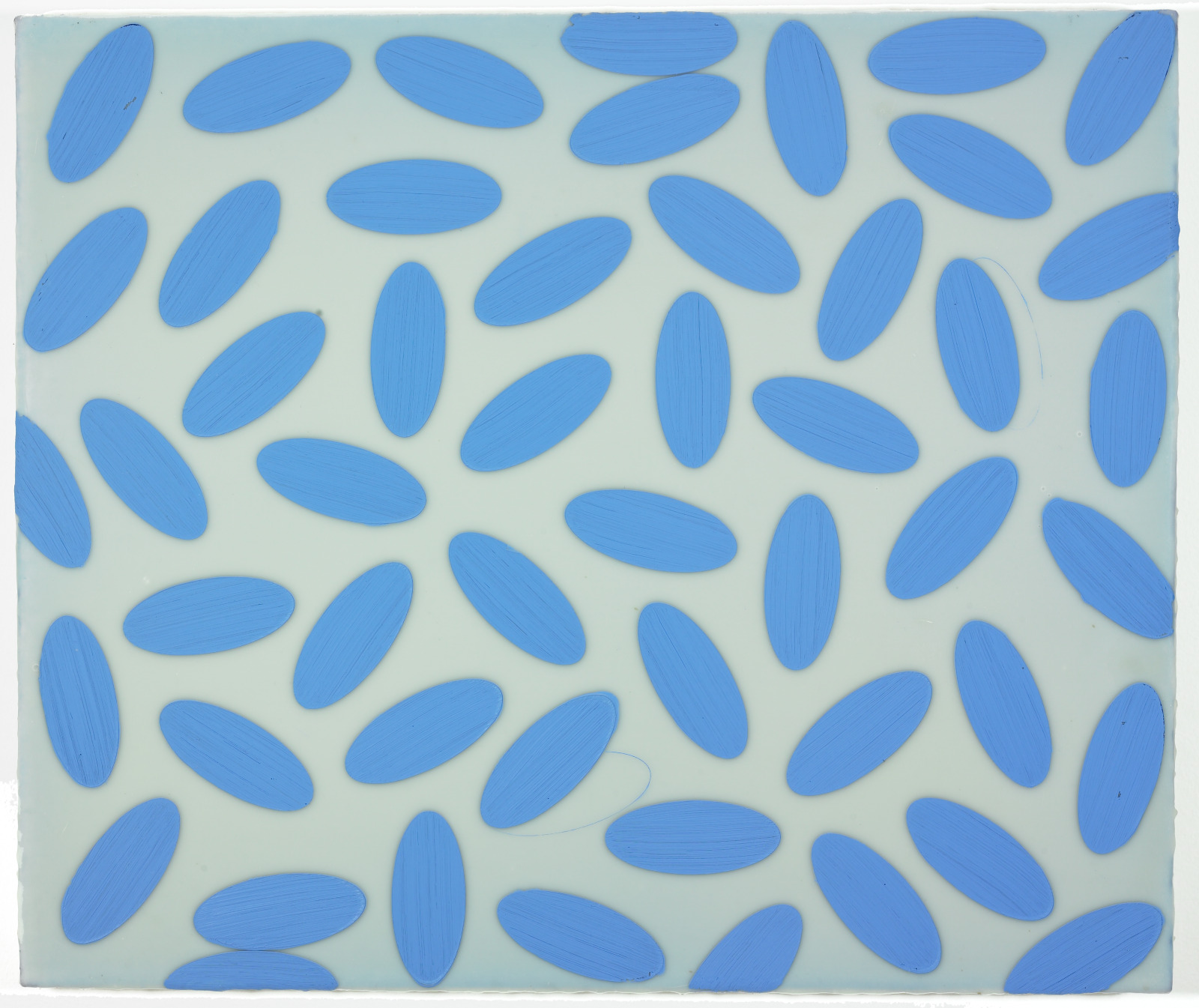
Jerald Ieans, American, born 1970; Allure, 1996; oil and glue on canvas; 21 x 25 inches; Saint Louis Art Museum, Gift of David and Judy Capes 62:2006; © Jerald Ieans
The cool, glossy surface of Allure has changed since it was first painted. Originally more translucent, the layers of glue are now beautifully hazy and opaque, obscuring the lavender under-layer of paint so that it reads as a shade of gray. Repeated blue elliptical shapes arranged on the surface energize the composition. Two of the painted ellipses playfully overlap elliptical outlines and imbue the painting with a sense of movement as they seem to have slid away from their original positions.
January 16, 2022
Box Candy
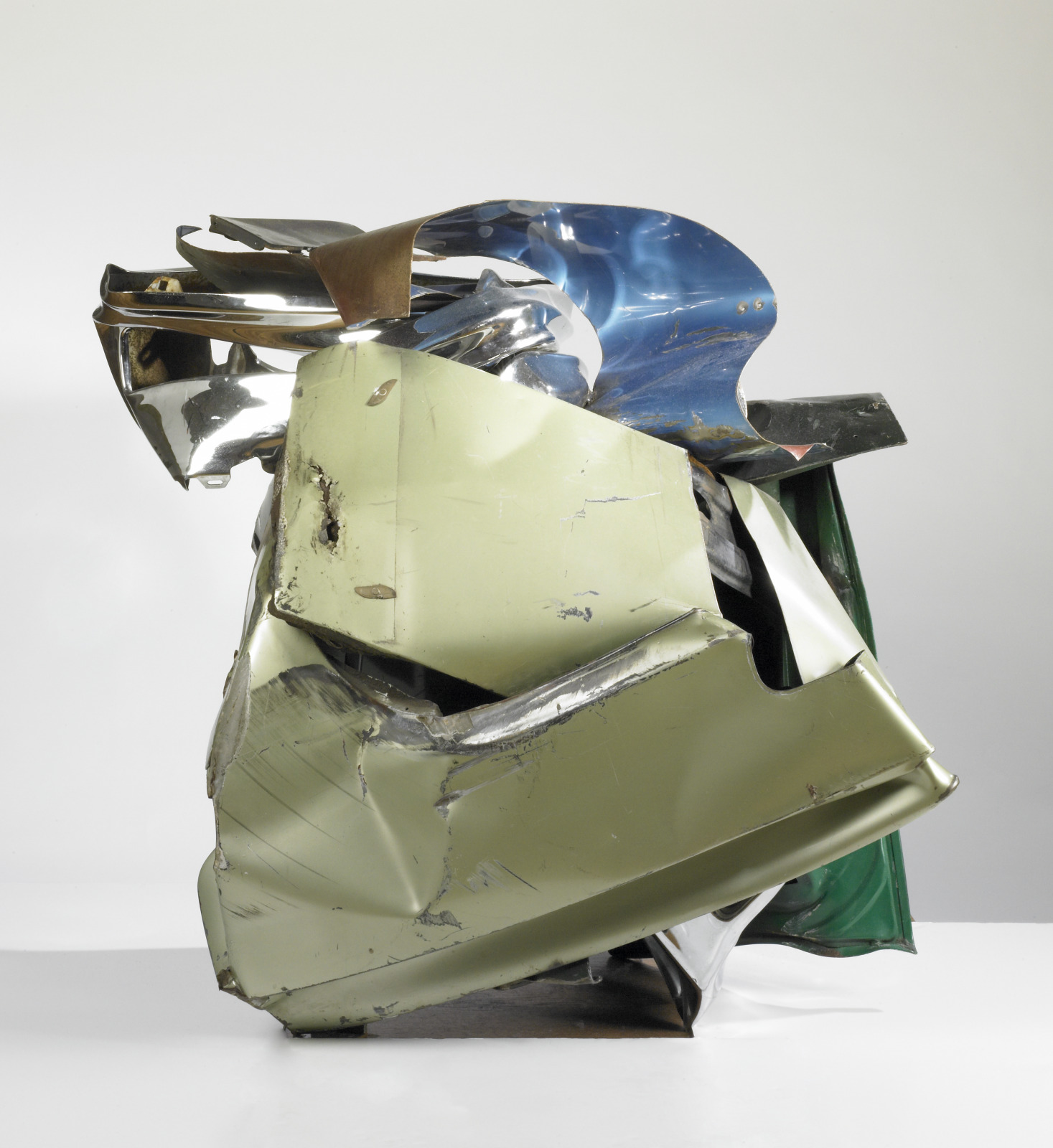
John Chamberlain, American, 1927–2011; Box Candy, 1974; painted and chromium-plated steel; approximate: 41 x 42 x 39 inches; Saint Louis Art Museum, Gift of Dr. and Mrs. Harold Joseph 61:1976; © 2022 Fairweather & Fairweather LTD / Artists Rights Society (ARS), New York
Compressed pieces of automobile sheet metal, painted by the original manufacturer in shades of green, off-white, brown, and orange, give form to a visually poetic assemblage.
Chamberlain finds beauty in these discarded car parts. Salvaged from a junkyard, the scraps are altered and fitted together so that welding by the artist is not necessary. Only when the sculpture was completed, did the artist weld the pieces together as a means of reinforcement.
January 13, 2022
Daoist Ritual Vessel with Design of the Eight Trigrams and Constellation Diagrams
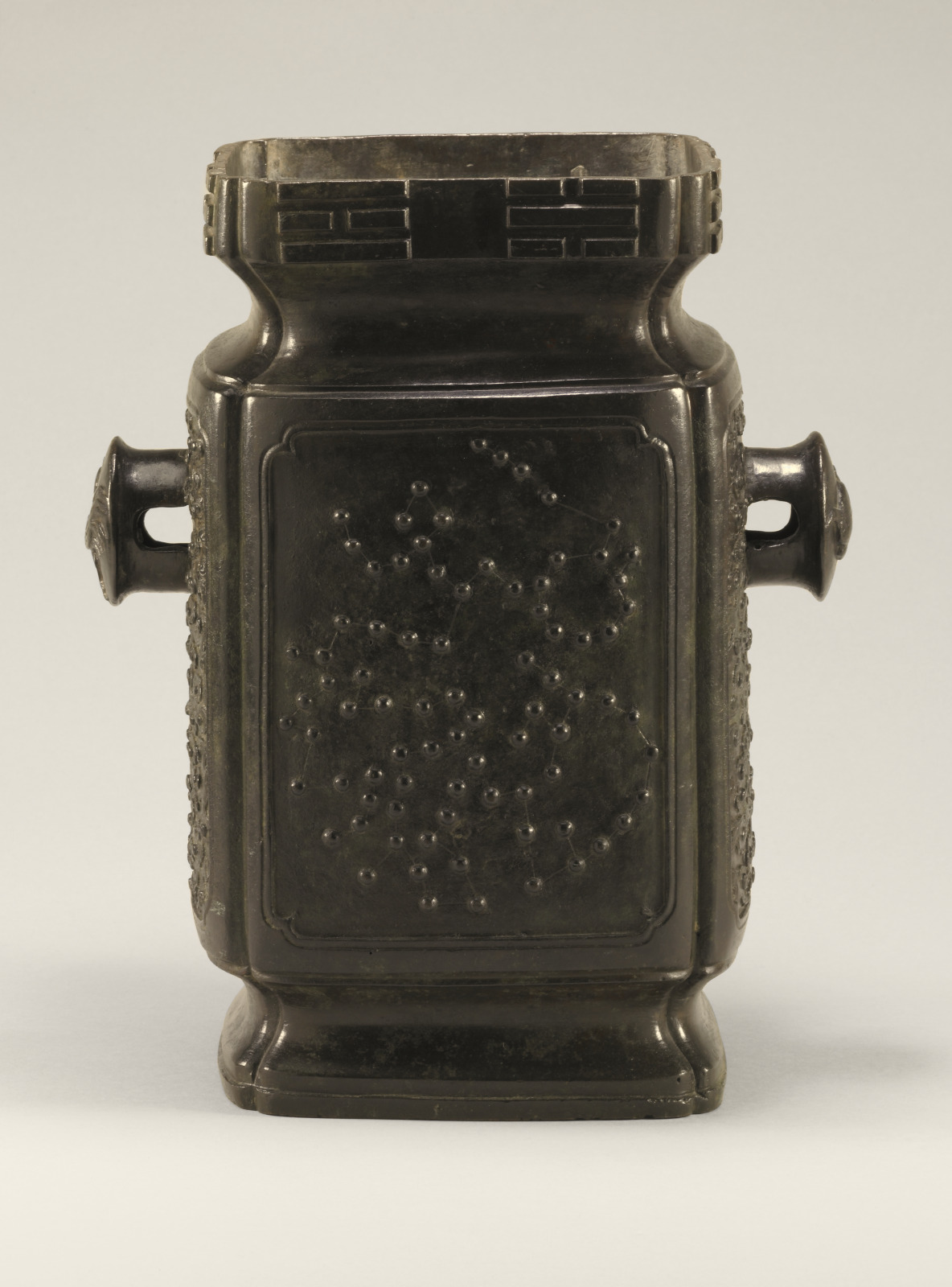
Daoist Ritual Vessel with Design of the Eight Trigrams and Constellation Diagrams, 16th–18th century; Chinese, Ming dynasty, or Qing dynasty; bronze; 11 1/2 x 9 5/8 inches; Saint Louis Art Museum, Gift of Robert E. Kresko 17:2005
This work features heavenly constellations, auspicious symbols, and the sun and moon, which are represented on the handles with the rooster and the hare. These elements are all important aspects of popular Daoism, a religion that had a great following in the Ming and Qing dynasties. This vessel, known as a ritual measure, likely served in Daoist rites to the Queen of Heaven, who was also known as Mother of the Measure. Half-filled with rice, the vessel was the central object of a ceremony that ensured longevity and affluence.
January 1, 2022
Power Figure (nkishi)

Songye artist, Democratic Republic of the Congo; Power Figure (nkishi), early 20th century; wood, horn, reptile skin, copper, glass beads, iron nails, fiber; 28 3/4 x 7 1/4 x 10 5/8 inches; Saint Louis Art Museum, Gift of Morton D. May 408:1955
Nkishi or power figures such as this served as containers for potent ingredients used in judicial and healing contexts. This figure must be activated by the ritual specialist – the expert who owns it, sources and assembles the powerful ingredients and embellishments, and activates it. To the Songye people, its importance lies in its ability to protect the community from evil forces and disease.
December 29, 2021
Helmet Mask (mukenga)
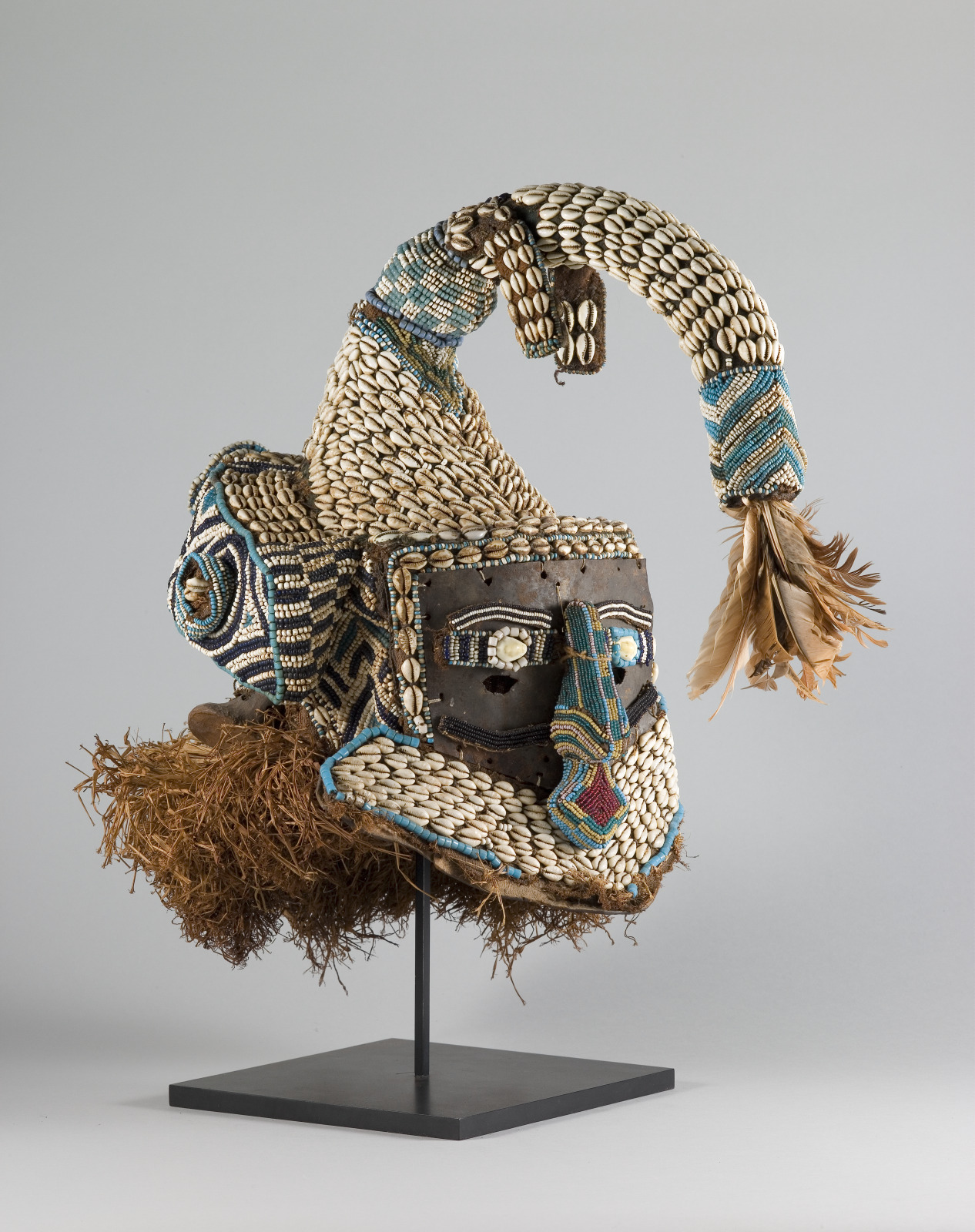
Kuba artist, Democratic Republic of the Congo; Helmet Mask (mukenga), 20th century; cloth, wood, cowrie shells, glass beads, iron, feathers, palm fiber, cane; 19 11/16 x 11 13/16 inches; Saint Louis Art Museum, Gift of Morton D. May 289:1982
With its abundant cowrie shells and symbolic elephant’s trunk, this mask is the most important of the Kuba royal masks and emphasizes the wealth and power of the nyeem (king). Cowrie shells, imported via the Indian Ocean to the Kasai River region of central Africa, were used as a currency often in exchange for ivory. As a principal commodity of the transatlantic trade, ivory was strictly controlled by the nyeem. Additionally, the strength and majesty of an elephant represent ideal characteristics for a king to embody. This type of mask was often performed with two other royal masks representing the Kuba kingdom’s mythological founding ancestors and the fundamental roles of the nyeem, women, and commoners in society.
Throughout this week, Object of the Day will feature a series of artworks in celebration of Kwanzaa.
December 28, 2021
Helmet Mask (ndoli jowei)
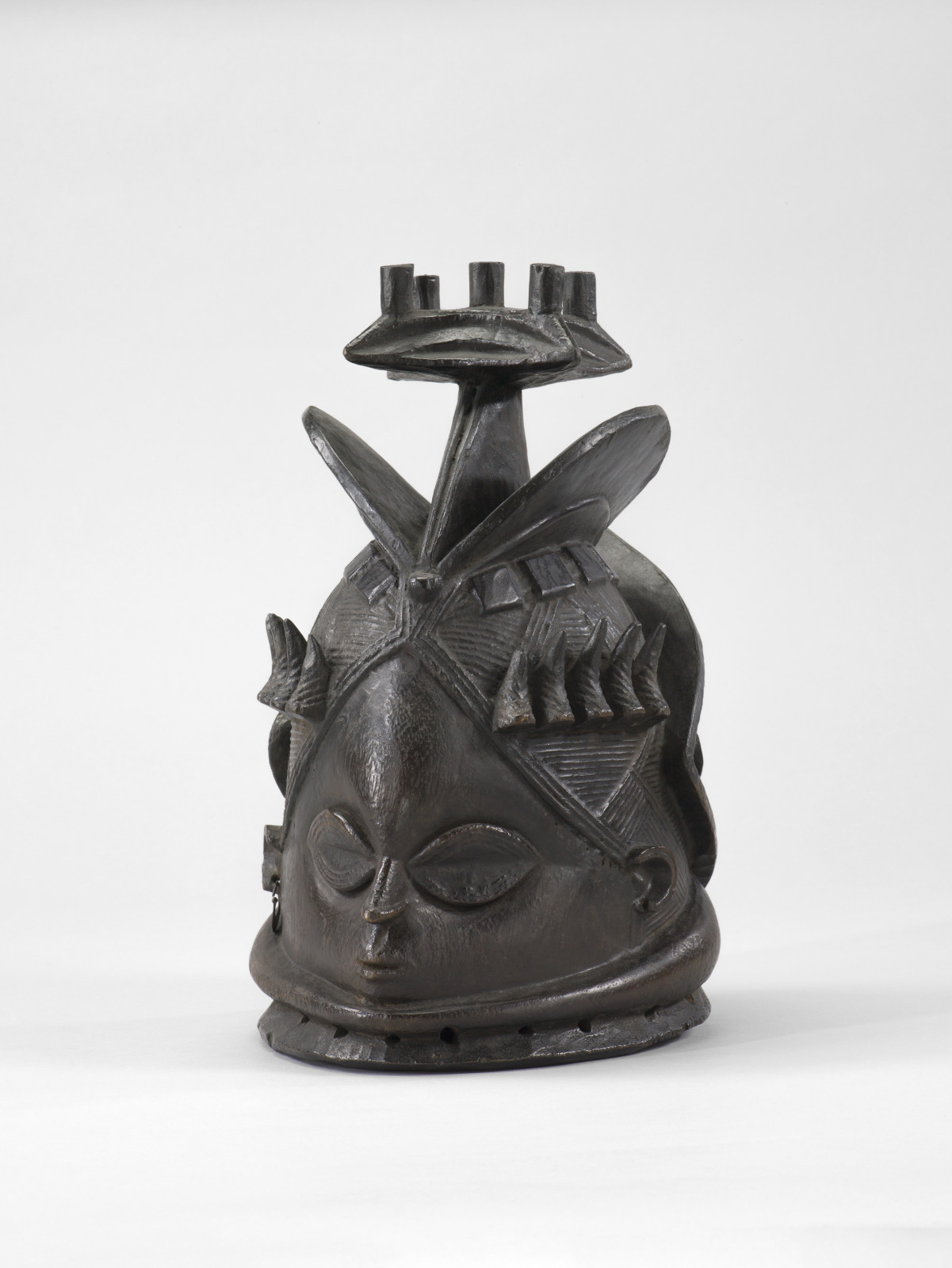
Mende artist, Sierra Leone; Helmet Mask (ndoli jowei), first half 20th century; wood, metal; 15 1/2 x 8 3/4 x 12 inches; Saint Louis Art Museum, Friends Fund 206:1992
A broad forehead, elaborate hairstyle, downcast eyes, and small nose and mouth, as seen in this mask, illustrate Mende ideals of feminine beauty and behavior. Mende Sande Society masks appear on occasions associated with coming-of-age ceremonies, when girls receive instruction for their roles and responsibilities as women in the community. Masks may embody the guardian spirit of the society, and represent Sande at all major public occasions. Sande masquerades, the only known traditions-based African masquerade that is performed by women rather than men, reinforce the society’s role as a principal mediator between the community and the spirit world. The Sande Society also acts to bind the women together as a powerful social and political force.
December 21, 2021
Night Shadows
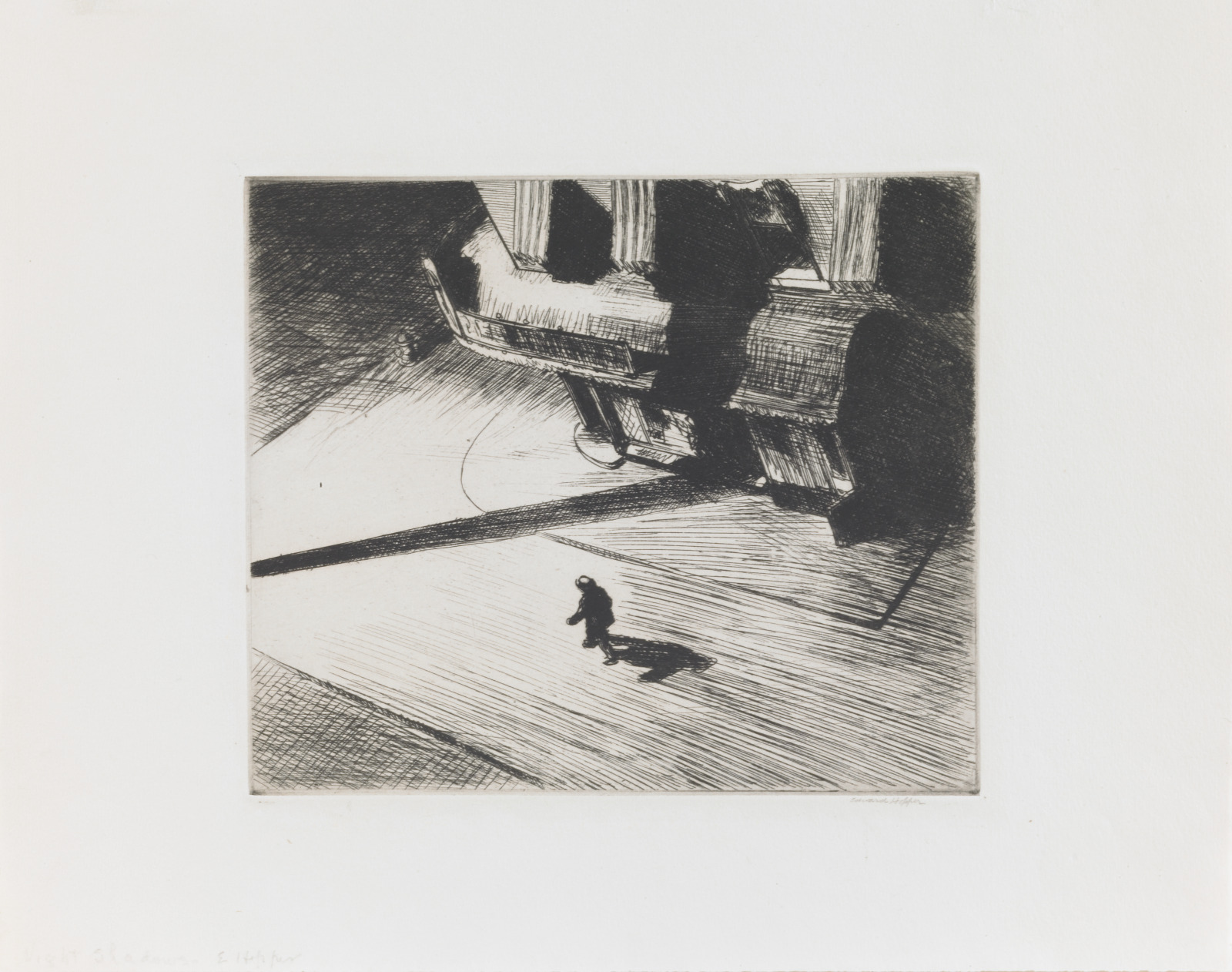
Edward Hopper, American, 1882–1967; Night Shadows, 1921; etching; plate: 6 7/8 x 8 1/8 inches, sheet: 11 x 14 inches; Saint Louis Art Museum, Gift of Dr. Borden S. Veeder 313:1948; © 2021 Heirs of Josephine N. Hopper / Licensed by Artists Rights Society (ARS), NY
By the start of the 20th century, artists were interested in nocturnal scenes of the urban environment like this one. Edward Hopper was particularly adept at using the glare of electric lighting to convey an eerie sense of alienation. Night Shadows depicts a solitary figure walking toward a street corner. It is a radically simplified composition in which the harsh shadow of a street lamp is thrust diagonally across the path of the man. He is seen from an unusual viewpoint—oblique and high above—making him both diminutive and anonymous.
December 20, 2021
Double Vase with Decoration of Phoenix, Chimera, and Chi-Dragon
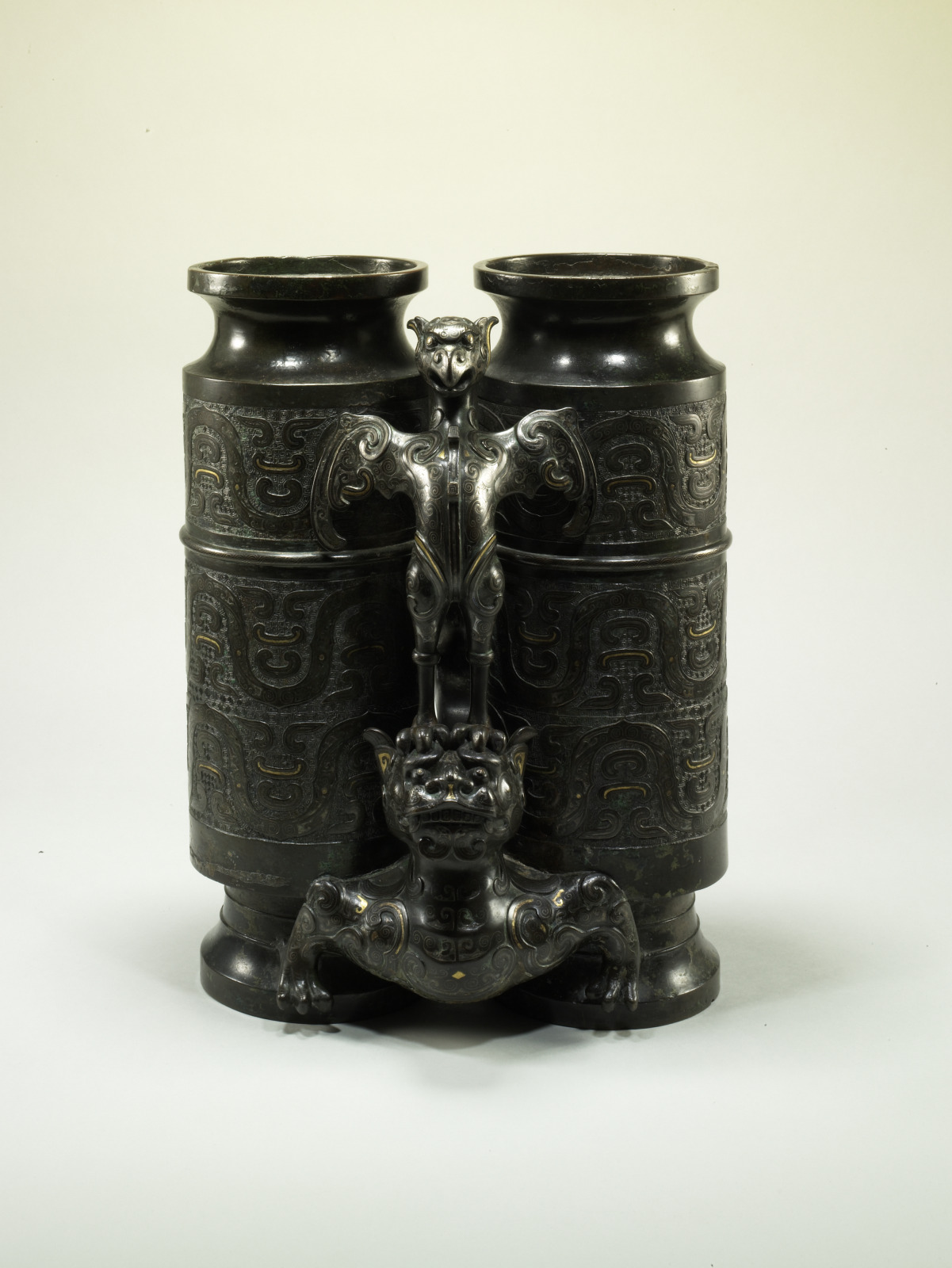
Double Vase with Decoration of Phoenix, Chimera, and Chi-Dragon, late 18th–early 19th century; Chinese, Qing dynasty, Qianlong period, or Jiaqing period; bronze with gold and silver inlay; 18 1/8 x 13 3/8 inches; Saint Louis Art Museum, Gift of Robert E. Kresko 18:2005
Later Chinese bronzes, like this one, often re-call the shape and design of vessels from the 7th through 6th century BCE. Bronze casting in China was a complex mixture of art and artifice. New bronzes might be ordered to look old, and artists might make a reproduction bronze similar to an original ancient model in nearly every detail, including corrosion and patina.
This piece, known as a double vase, is a nuptial, or marriage, cup according to popular lore. The two halves of the vessel are connected by a hidden channel that kept the level of wedding wine equal regardless of how much was drunk from one side, thus representing the ideal of an equitable and stable marriage.
December 17, 2021
Portrait of a Young Woman
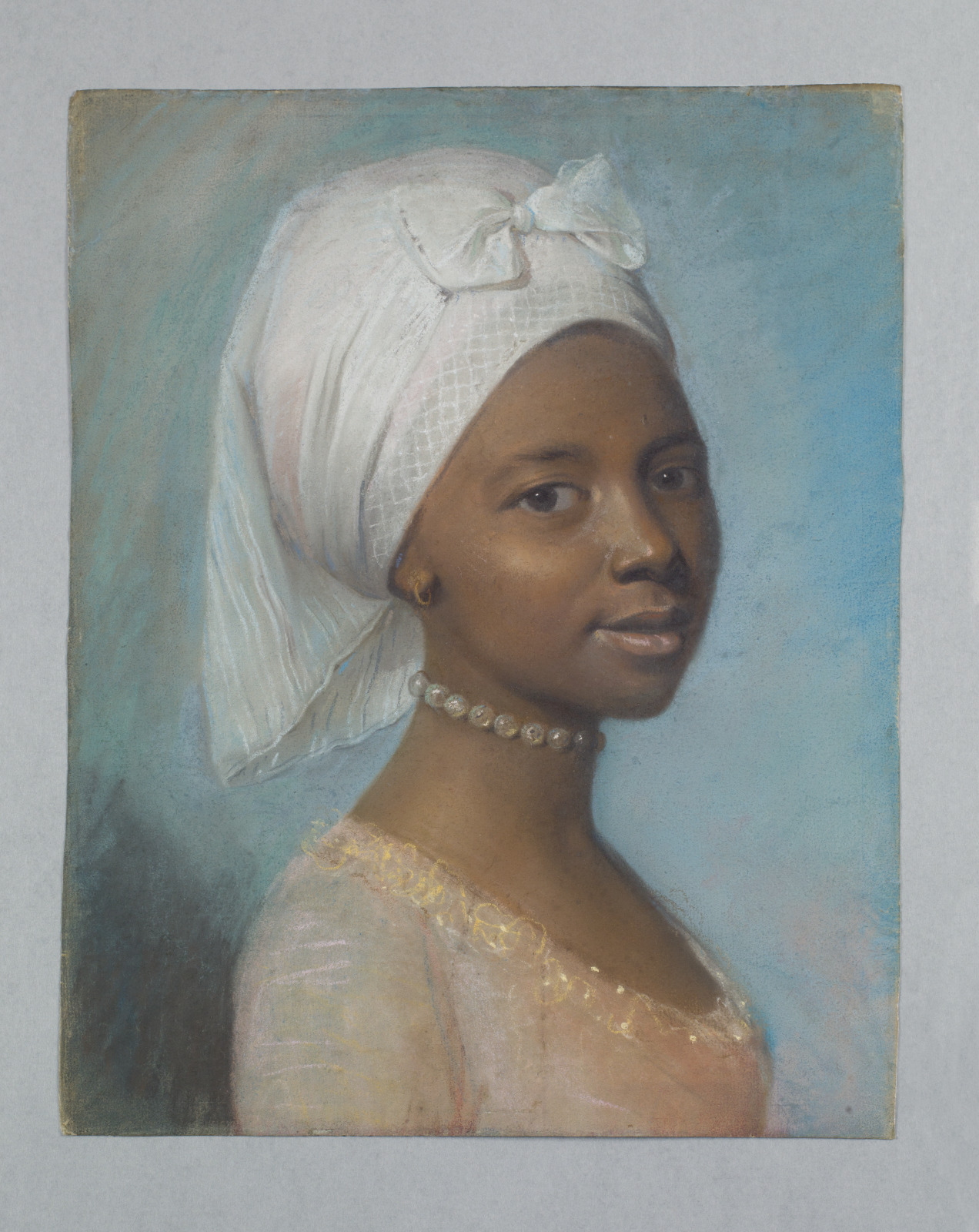
Unknown; Portrait of a Young Woman, late 18th century; pastel; 16 x 12 3/4 inches; Saint Louis Art Museum, Museum Purchase 186:1951
Hear Expert Commentary
-
Transcript
Speaker: Judith W. Mann, PhD
Curator of European Art to 1800
Saint Louis Art MuseumI’m looking at this lovely portrait of a young woman, a pastel on blue paper. It’s become a rather famous image. She’s really engaging and someone you’d certainly like to know. We know very little about her, unfortunately, and we’ve been trying through the years to figure out just who she is. For years it was thought she was this poet Phyllis Wheatley, who worked in London in the mid 18th-century. There is a famous portrait of Phyllis Wheatley where she seated at a desk and shown in profile and she too was a woman of color. But really, there’s very little similarity between the two.
There was also a well known young woman from the West Indies who came to England in the mid 18th-century and raised on and an estate there and then recorded in a portrait in 1779. Her name was Dido Belle, and she does look a bit like our sitter, but there’s really no other evidence to support that and most people don’t think that’s who she is.
Recently though, we’ve got some new information. We’ve been able to photograph and read accurately the watermark in the paper, an image imprinted in the surface of the paper, and it tells us that this paper was made by a paper maker in the Netherlands who started working in 1751. In addition, we’ve looked at the clothing our sitter wears and the headscarf in particular is something of a fashion that wasn’t worn in Europe but was worn in the Caribbean. So we take her to be a young woman from the Caribbean who made her way, probably to the port of Amsterdam, and then either she herself commissioned a pastel portrait, pastel was so popular in the 18th-century, or an artist was taken with her for many of the same reasons we find her so engaging and decided to make this lovely work.
This pastel depicts a young woman with her face turned slightly toward the viewer, revealing a warm expression. Her head is covered with a light‑colored wrap decorated with a sheer pattern. She wears a pair of small gold earrings, a pearl choker necklace, and a dress with an embellished scoop neckline.
Both the woman and the artist who portrayed her remain unidentified. A recent Google image search produced nearly 5.7 billion results with no clear answers to the artist’s and sitter’s identities. Useful clues may lie in the woman’s attire. Some scholars believe her head covering reveals Caribbean origins. This drawing’s blue paper contains a clue—a watermark is revealed when the sheet is held up to light. Watermarks contain information about when and where the paper was made. This one spells out E V Orspronk, a Dutch paper manufacturer active in the 18th century.
Who is the captivating young woman in this pastel? Hear Judith W. Mann, curator of European Art to 1800, discuss (above) the mystery of her possible identities, from Phillis Wheatley to Dido Belle, and what we have learned so far about the unknown subject of this portrait.
December 15, 2021
Self-Portrait 1950

Max Beckmann, German, 1884–1950; Self-Portrait 1950, 1950; oil on canvas; 55 1/8 x 36 inches; Saint Louis Art Museum, Bequest of Morton D. May 866:1983; © 2021 Artists Rights Society (ARS), New York
In this self-portrait, Max Beckmann wears a brightly colored shirt and sport coat, and stands in his studio contemplating an unseen painting. A canvas is turned to the wall behind him. Beckmann’s body seems almost lost in his clothing, and this diminished status references his failing health in his final years. This is the last of approximately 40 self-portraits that Beckmann produced. The work was shown at the Metropolitan Museum of Art in 1950; Beckmann suffered a fatal heart attack while crossing Central Park to view the exhibition.
December 14, 2021
Red Meander II
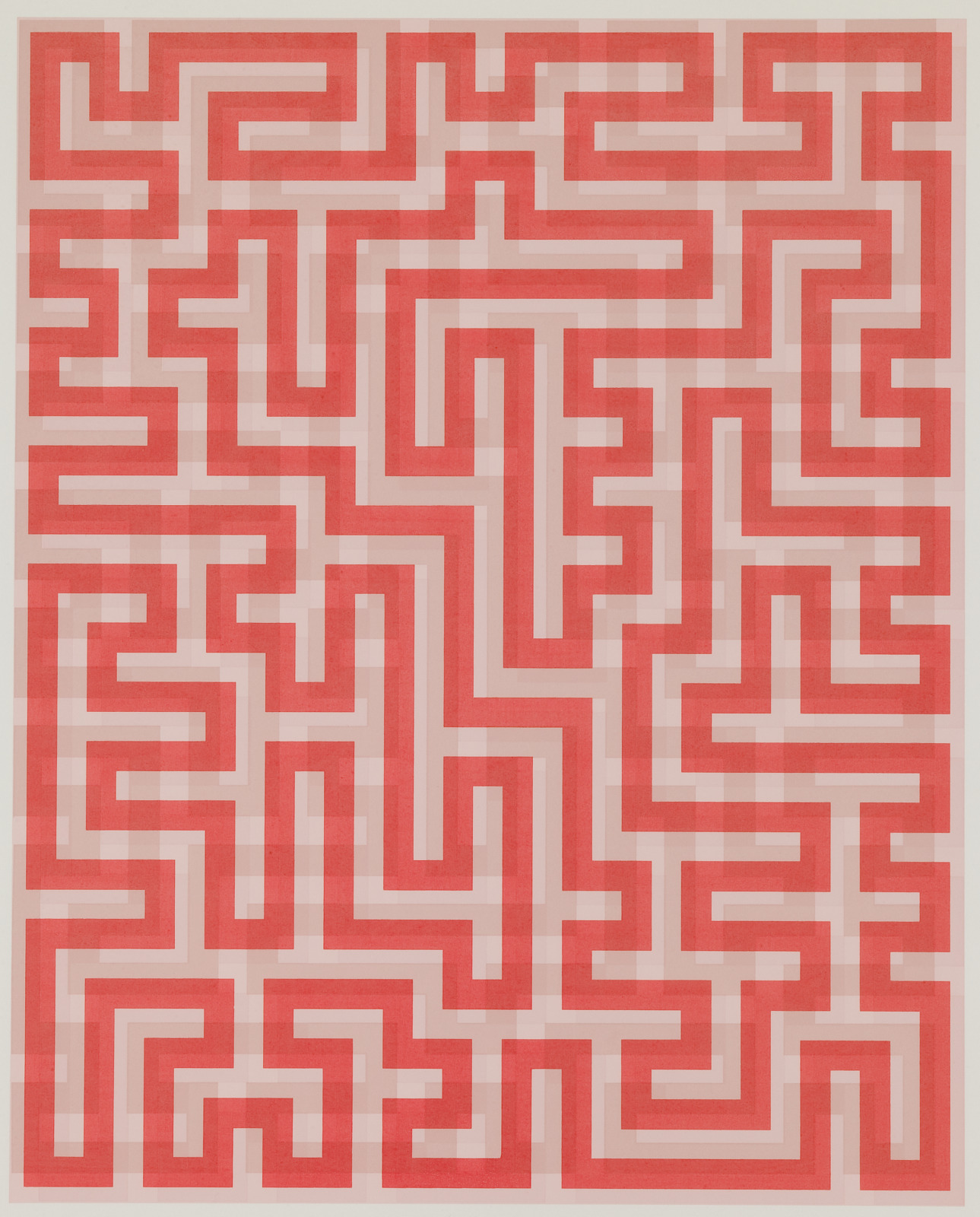
Anni Albers, American (born Germany), 1899–1994; Red Meander II, 1970–71; screenprint; 28 x 24 inches; Saint Louis Art Museum, Gift of Brooke Alexander, Inc. 13:1971; © 2021 Estate of Anni Albers / Artists Rights Society (ARS), New York
In this screen print, Anni Albers revisited a design she originally produced in 1954 as a linen and cotton textile. The artist had favored the textile medium earlier in her career. Here, meandering rectangular forms take on hard edges distinct from the softer quality of their fabric counterparts. In printmaking, as in weaving, Albers worked in layers, experimenting with optical effects, color, and form. In her later years, when the loom had become too cumbersome, printmaking allowed her to continue her formal experiments with process, geometry, and abstraction through new and different media.
December 4, 2021
Saint John the Baptist Preaching in the Wilderness

Salvator Rosa, Italian, 1615–1673; Saint John the Baptist Preaching in the Wilderness, c.1660; oil on canvas; 79 x 48 inches; Saint Louis Art Museum, Friends Fund 72:1970
John the Baptist, the preacher whose sermons promised the coming of a Savior, is shown instructing assembled listeners (rich men, tax-gatherers, priests, and soldiers) on how to prepare for the coming of Christ. The foreground water alludes to his additional role as the baptizer of Jesus, and the children shown at the river’s edge illustrate the idea of baptism as a form of rebirth. The animated trees and turbulent sky lend an aura of drama to the scene, an important aspect of Baroque art and one that has always made Rosa’s art so appealing to collectors.
December 3, 2021
Half Moon
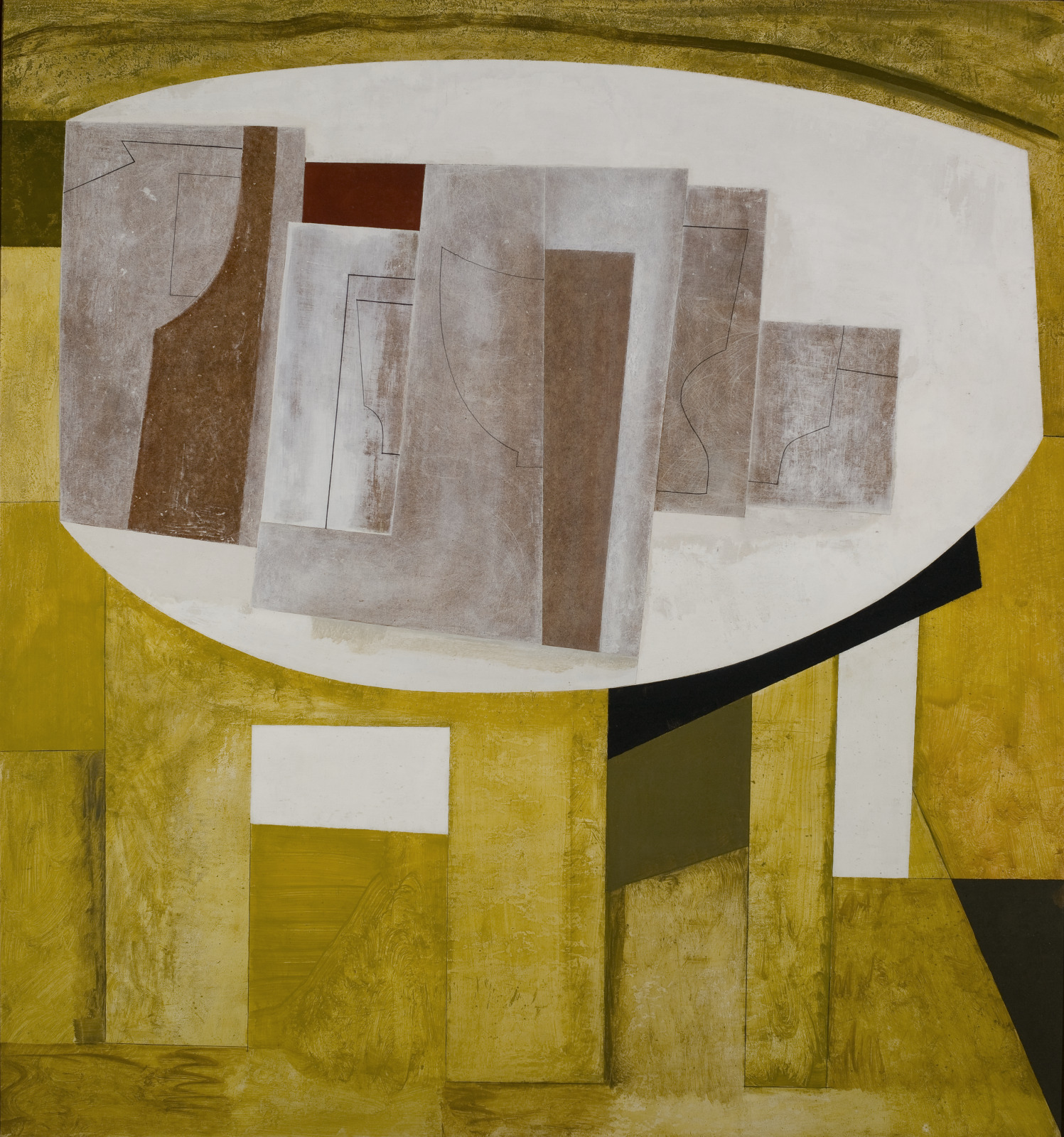
Ben Nicholson, English, 1894–1982; Half Moon, 1959; oil and gesso on Masonite; 62 7/8 x 58 3/4 inches; Saint Louis Art Museum, Gift of Richard K. Weil 83:1970; © 2021 Artists Rights Society (ARS), New York / DACS, London
Delicately drafted outlines suggest a tabletop arrayed with goblets and jugs while the white, ovoid shape in the center alludes to the lunar subject of this painting’s title. Ben Nicholson’s work reflects his interest in Cubist still life as well as his continued engagement with geometric abstraction. Nicholson painted directly on a Masonite board, allowing the grainy support to show through while adding textural variation with passages of oil paint and thin washes of gesso.
November 29, 2021
Light Drawing with Folded Paper

Nathan Lerner, American, 1913–1997; Light Drawing with Folded Paper, 1942, printed 1976; gelatin silver print; image: 18 3/4 x 12 1/8 inches, sheet: 19 7/8 x 15 inches; Saint Louis Art Museum, Gift of Morton D. May 272:1980; © Estate of Nathan Lerner / Artists Rights Society (ARS), New York
An array of geometric shapes cut from paper is folded upright and illuminated with intense raking light, setting up a dynamic interaction between bright and dark, form and shadow. Nathan Lerner was associated with the Institute of Design in Chicago. Its photography program, founded in 1937 by the German émigré László Moholy-Nagy, was widely influential for disseminating avant-garde visual ideas in the postwar period.
November 27, 2021
The Annunciation
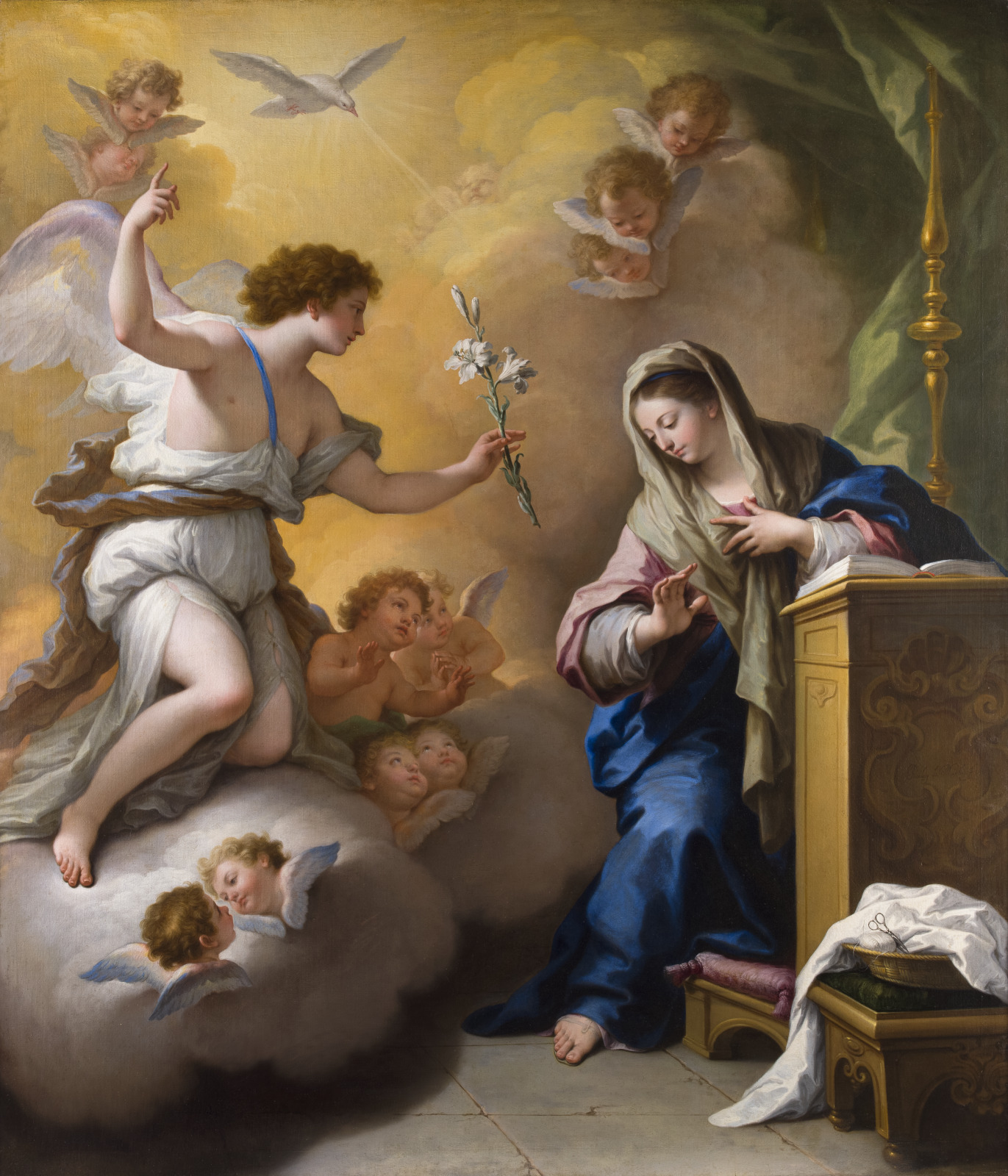
Paolo de Matteis, Italian, 1662–1728; The Annunciation, 1712; oil on canvas; 81 1/8 x 70 1/8 inches; Saint Louis Art Museum, Museum Purchase 69:1973
In this scene from the biblical New Testament, the archangel Gabriel arrives bearing news that the Virgin Mary will bear a child, the infant Jesus. The clouds beneath the messenger, his accompaniment of winged cherubs, and a golden glow, make it clear that he is divine. A dove in the golden aura near the top of the canvas symbolizes God sending the child into Mary’s womb. The artist used soft colors and delicate forms to evoke a sense of poetic ideal.
November 25, 2021
Serving Table, from the John Philip Meyer House, Saint Louis, Missouri
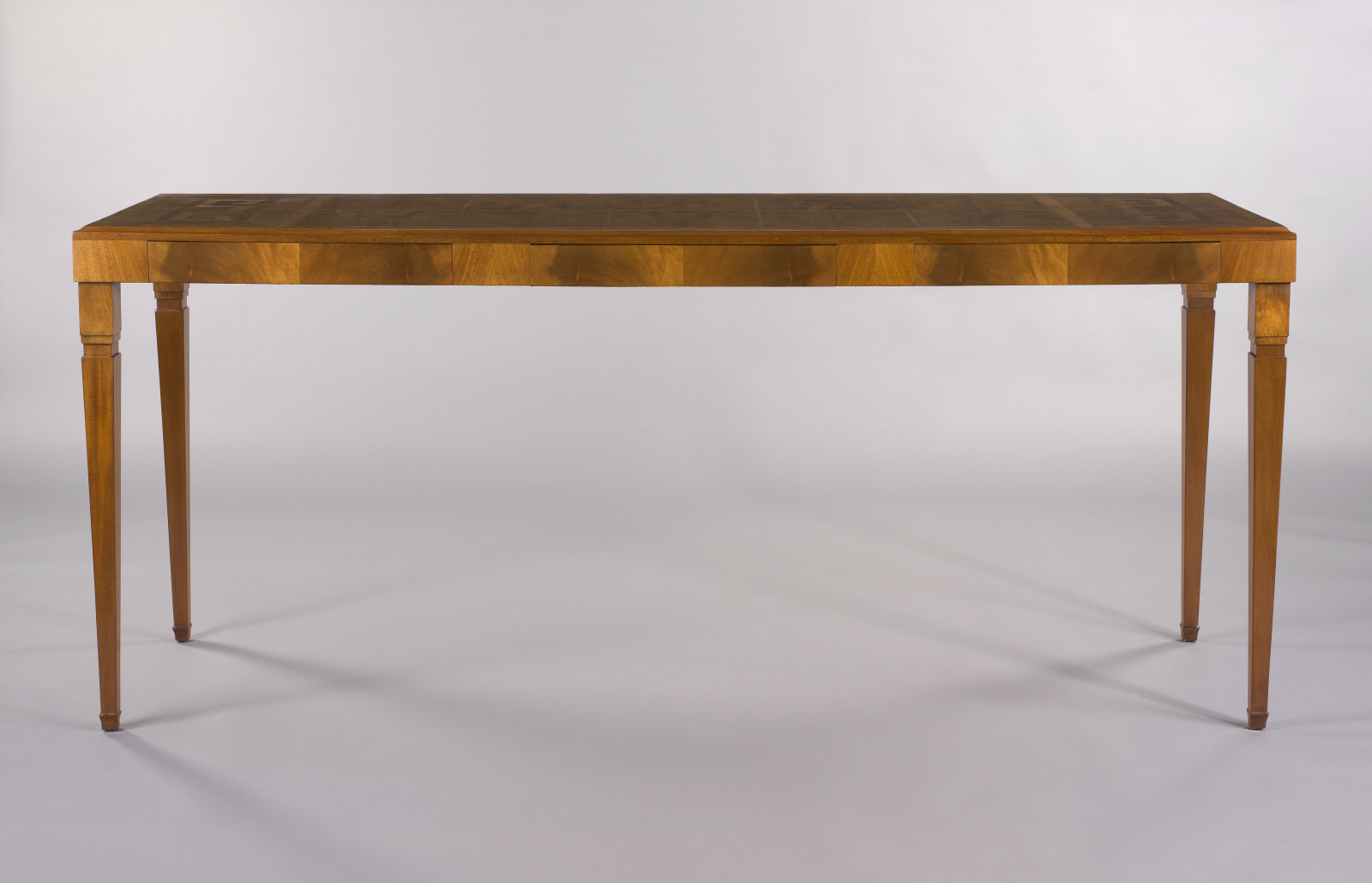
designed by Charles Eames, American, 1907–1978; made by John A. Rausch, American (born Germany), 1904–1980; Serving Table, from the John Philip Meyer House, Saint Louis, Missouri, 1936–38; walnut, mahogany, and other wood veneers; 34 5/8 x 79 15/16 x 25 inches; Saint Louis Art Museum, Gift of Alice S. Gerdine 597:1991; Courtesy Eames Office, LLC
With a meander, or ancient Greek key pattern inlaid on its top and delicate, tapered legs, this serving table shows the classical side of 1930s modern design. It is part of a lavish commission for a two-story brick house with custom, coordinated furnishings including metalwork, hand-woven fabrics and carpets, and furniture. Designed by Charles Eames, the project shows the influence of Eliel Saarinen, president of the Cranbrook School of Art and early supporter of the young St. Louis-born architect. Eames went on to study at Cranbrook in Bloomfield Hills, Michigan, where he met his wife and future design partner, Ray Kaiser.
November 24, 2021
Plate, 5 of 6
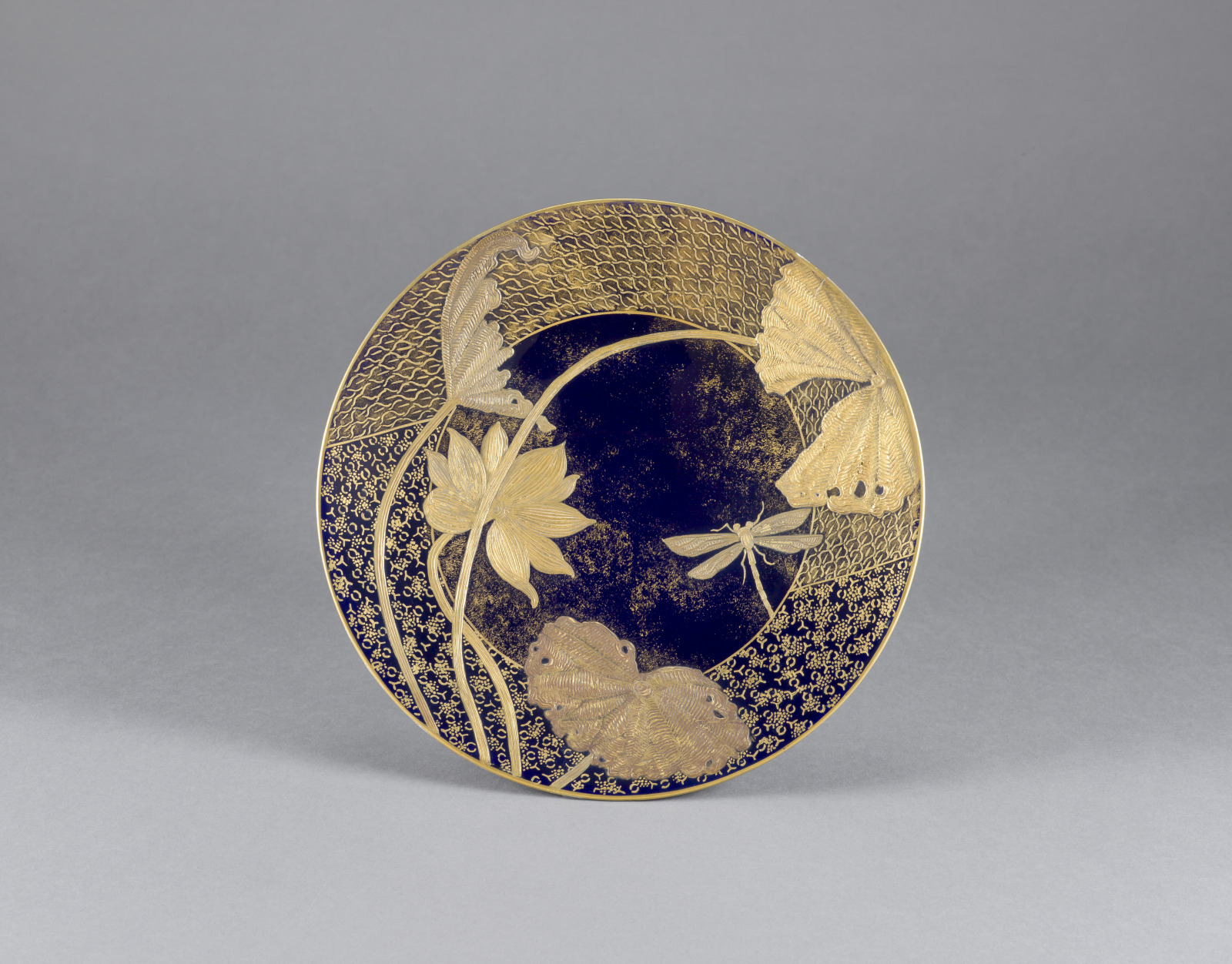
James Callowhill, American (born England), 1838–1917; Plate, 5 of 6, c.1888; glazed porcelain with gilding; 1 x 7 11/16 inches; Saint Louis Art Museum, Funds given by Victor Porter Smith, The Lea-Thi-Ta Study Group, the Mr. and Mrs. Milton L. Zorensky Ceramics Purchase Endowment, and the Margarita M. and Roland E. Jester Endowment Fund for the Decorative Arts 15:2012.5
The asymmetrical placement of poppies, waterlilies, moths, and dragonflies exemplifies Japonisme, or “in a Japanese style”, popular at the end of the 19th century. The designs, textile-pattern borders, and sponged-gold centers evoke motifs and compositional elements that western artists gleaned from Asian art forms, such as woodblock prints, fans, and lacquer. The plates, with their rich gold patterns laid over cobalt blue backgrounds, exemplify the sort of decorative objects that would reflect their owners’ refined taste.
November 19, 2021
Landscape with a Horse

Paul Gauguin, French, 1848–1903; Landscape with a Horse, 1899; oil on burlap; 27 7/8 x 17 1/2 inches; Saint Louis Art Museum, Gift of Sydney M. Shoenberg Sr. 27:1974
Paul Gauguin traveled to the French colony of Tahiti in the 1890s in search of an unspoilt Eden and a counterpoint to the decadence and spiritual bankruptcy of European civilization. He became fascinated by the lush tropical landscape of the island; here he paints a group of huts and a single wild horse against a range of distant, looming mountains. Gauguin employs his trademark areas of flat, arbitrary color for decorative effect while his rough burlap canvas creates an intentionally unrefined paint surface.
November 13, 2021
Gray Day at the Sea

Max Beckmann, German, 1884–1950; Gray Day at the Sea, 1907; oil on canvas; 29 1/8 x 36 3/8 inches; Saint Louis Art Museum, Bequest of Morton D. May 834:1983
In the vast expanse of sea, a tiny upended ship—perhaps sinking—is visible on the horizon beneath a menacing sky. This work, created in Schlawe (present-day Sławno, Poland), is one of a small group of marine paintings Max Beckmann produced on the Baltic Coast of Germany in the early 1900s. Grains of sand embedded in the paint indicate that Beckmann painted it outdoors, at least in part. Lively brushwork evokes the movement of the frothy blue and green waves.
November 11, 2021
Pegasus and Warrior (Courage)
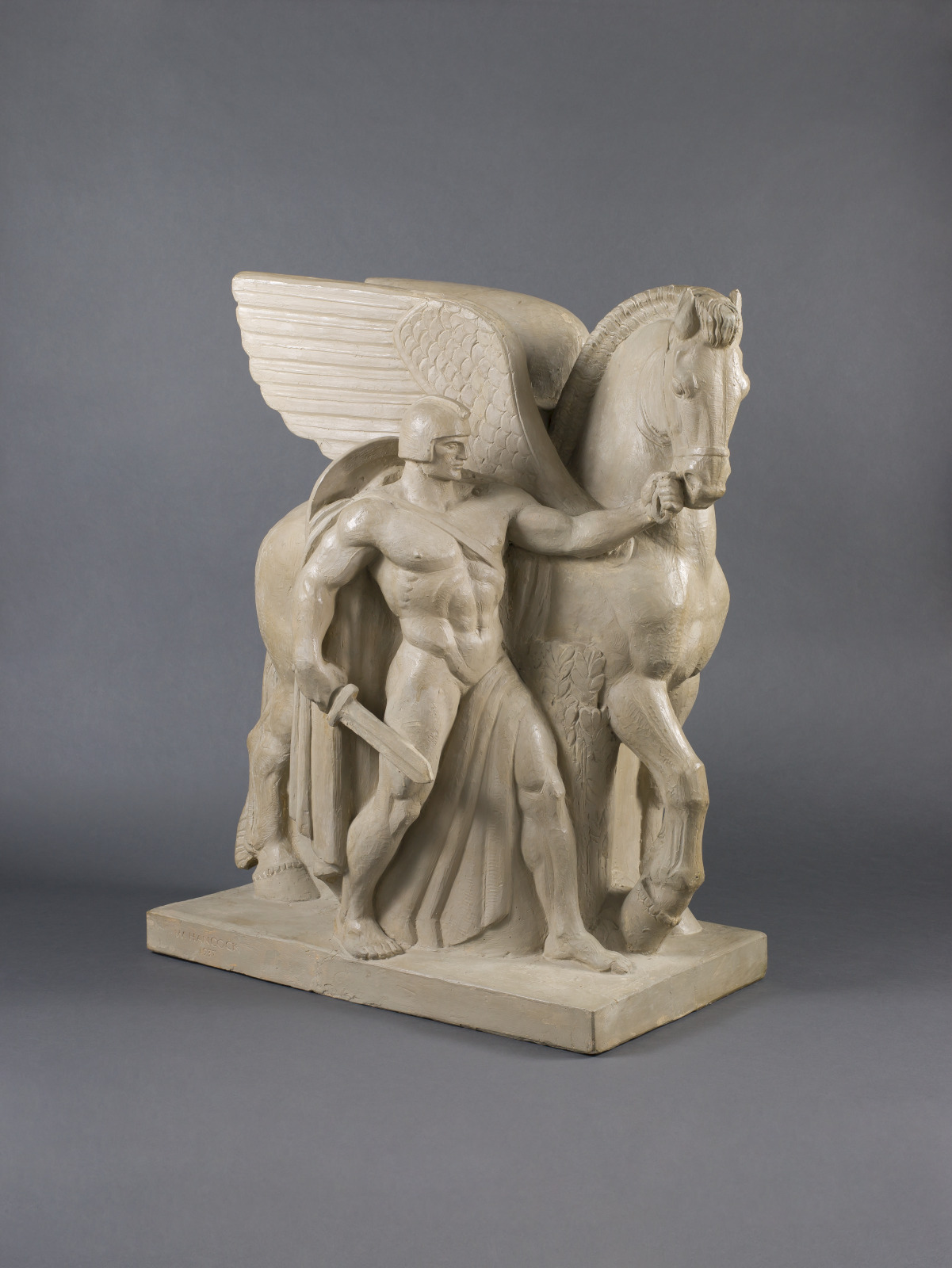
Walker Kirtland Hancock, American, 1901–1998; Pegasus and Warrior (Courage), 1937; plaster with paint wash; 29 x 23 x 13 inches; Saint Louis Art Museum, Gift of Deane Hancock French 26:2012; © Estate of Walker Kirtland Hancock
This warrior and the ancient Greek mythological horse Pegasus represent courage. Pegasus was the loyal, winged battle companion to gods and heroes. In this sculpture, the warrior’s sure control of Pegasus’ head contrasts with the horse’s opened wings, ready to take flight rather than remain earthbound.
The sculpture is a plaster cast, a scale working model, for one of four monumental sculptures created to flank the entrances to the Soldiers Memorial in downtown St. Louis. Though not completed until 1936, the memorial was proposed in 1919 to honor those soldiers who lost their lives in World War I (1914-1918). The four entrance sculptures—courage, vision, loyalty, and sacrifice—all done by Hancock, represent qualities found in soldiers and their families.
November 10, 2021
House Wall Panel (poupou)
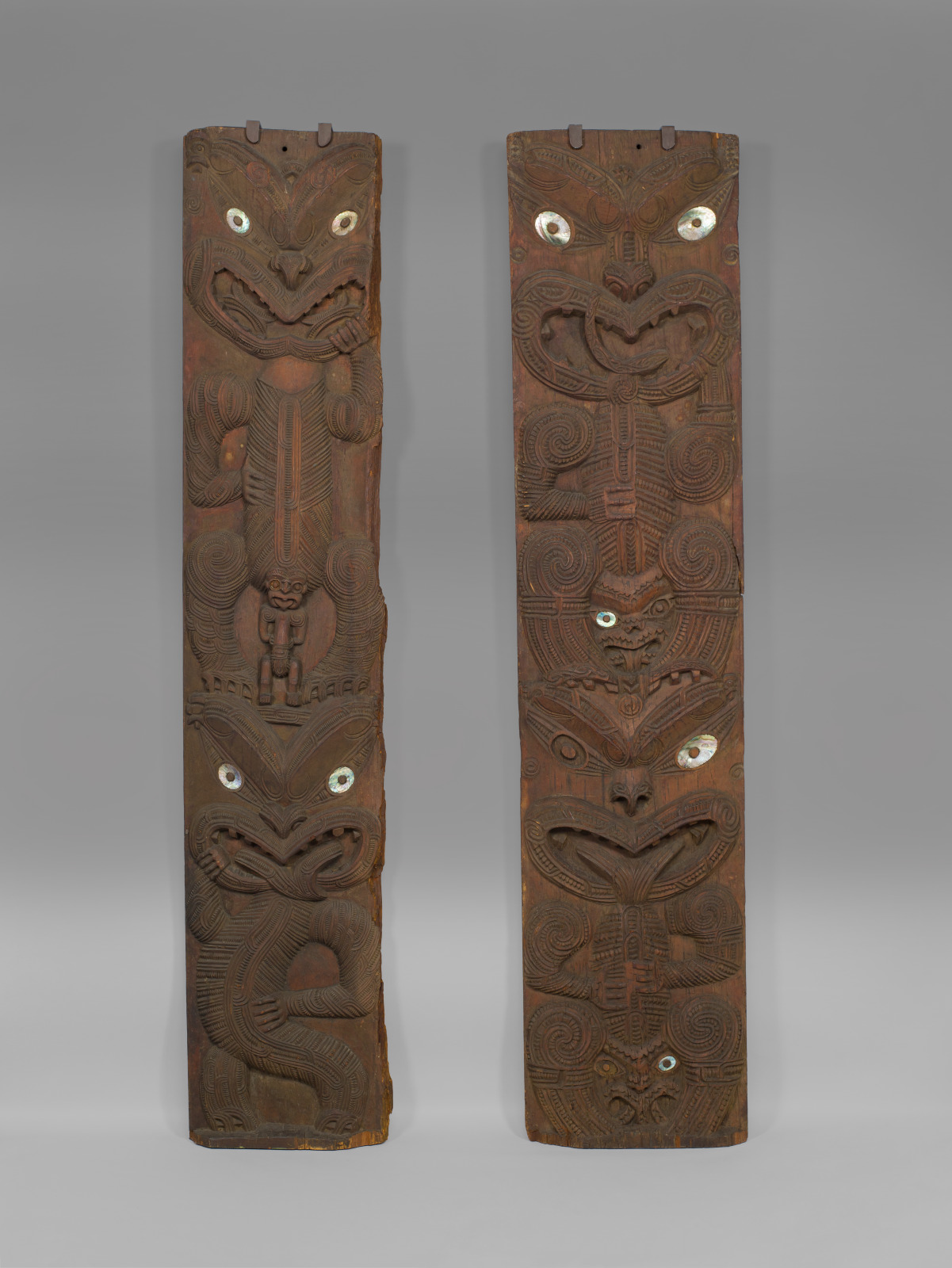
Hone Taahu, Maori, c.1825–1900, New Zealand (Aotearoa); House Wall Panels (poupou), c.1870; wood and haliotis shell; left panel: 96 5/8 x 18 7/8 x 3 15/16 inches, right panel: 96 3/4 x 21 3/4 x 3 15/16 inches; Saint Louis Art Museum, Gift of Morton D. May 88:1977.1,.2
Multiple figures intertwine across the surface of these carved panels while the figures’ bodies are also covered with interlaced patterns. The complex composition challenges our ability to distinguish one figure from the other. Between the large figures’ legs, small figures emerge, evoking the act of giving birth or the succession of generations. These poupou, or carved panels, belong to a group of 46 that were created to form the framework of a large Maori meeting house, which ultimately was never constructed. Supporting the rafters, these solid panels would alternate with lattice openwork panels. Wharenui (meeting houses) are considered to be the property of the local community and function as a space for important gatherings, such as weddings and tangihanga, or death ceremonies.
November 8, 2021
Vessel with Sacrificial Scene
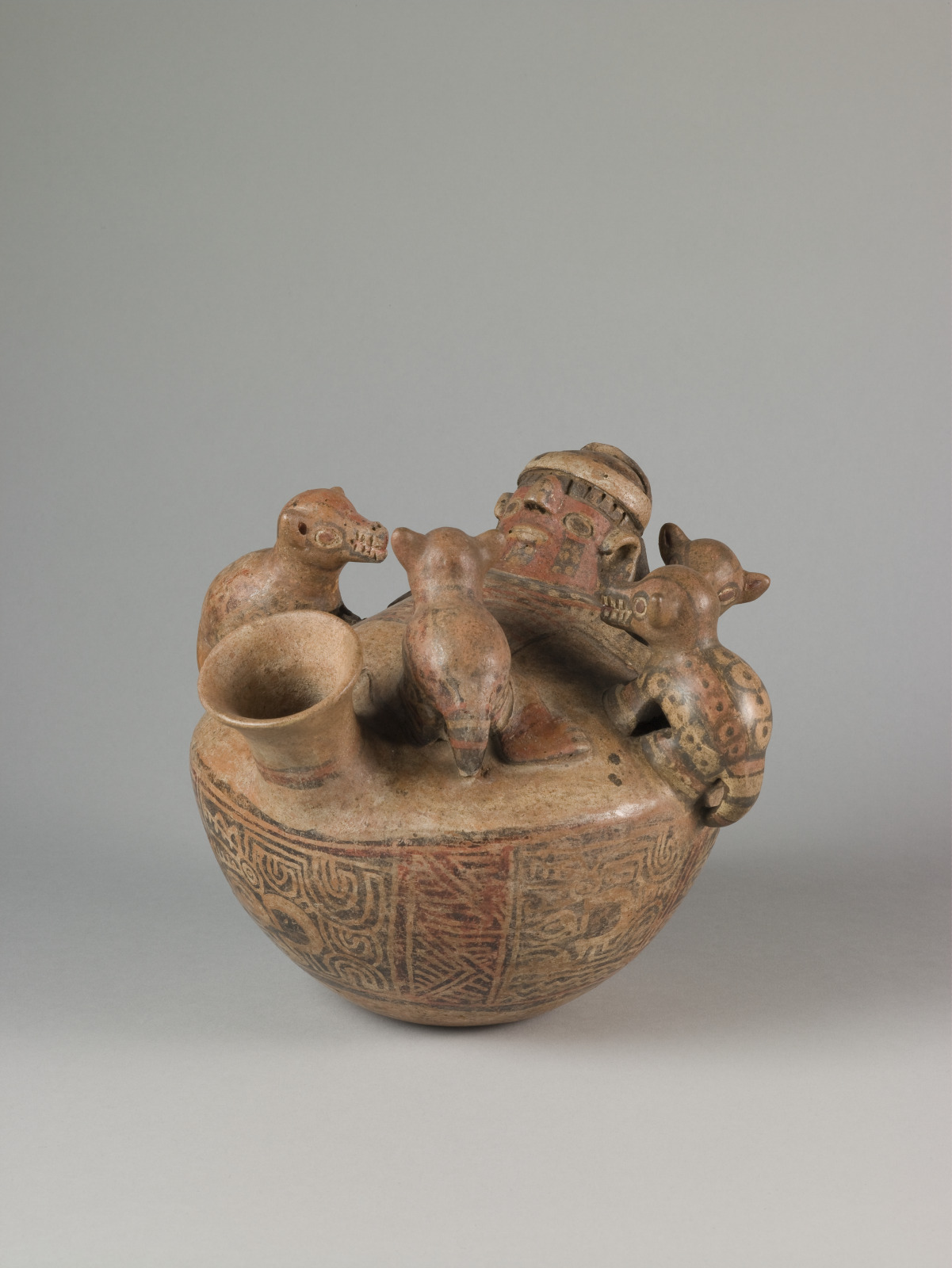
Vessel with Sacrificial Scene, c.100–600; Recuay, Peru, Early Intermediate period; ceramic with pigment; 7 5/16 x 8 3/4 inches; Saint Louis Art Museum, Gift of Morton D. May 347:1978
Four canine creatures surround a man splayed on his back, baring their sharp teeth in preparation for attack. The man’s vulnerable yet seemingly willing position as well as his elaborate clothing and headgear suggest that this elite figure is offering himself as a sacrifice. This vessel was likely used in rituals that honored ancestors whose deaths established their lineage. Recuay arts often represent confrontations, celebrating moments when opposing forces interact. This emphasis on conflicting states of being is further embodied in the canine creature, which also appears painted in linear profile along the lower half of the vessel.
November 2, 2021
Interior III
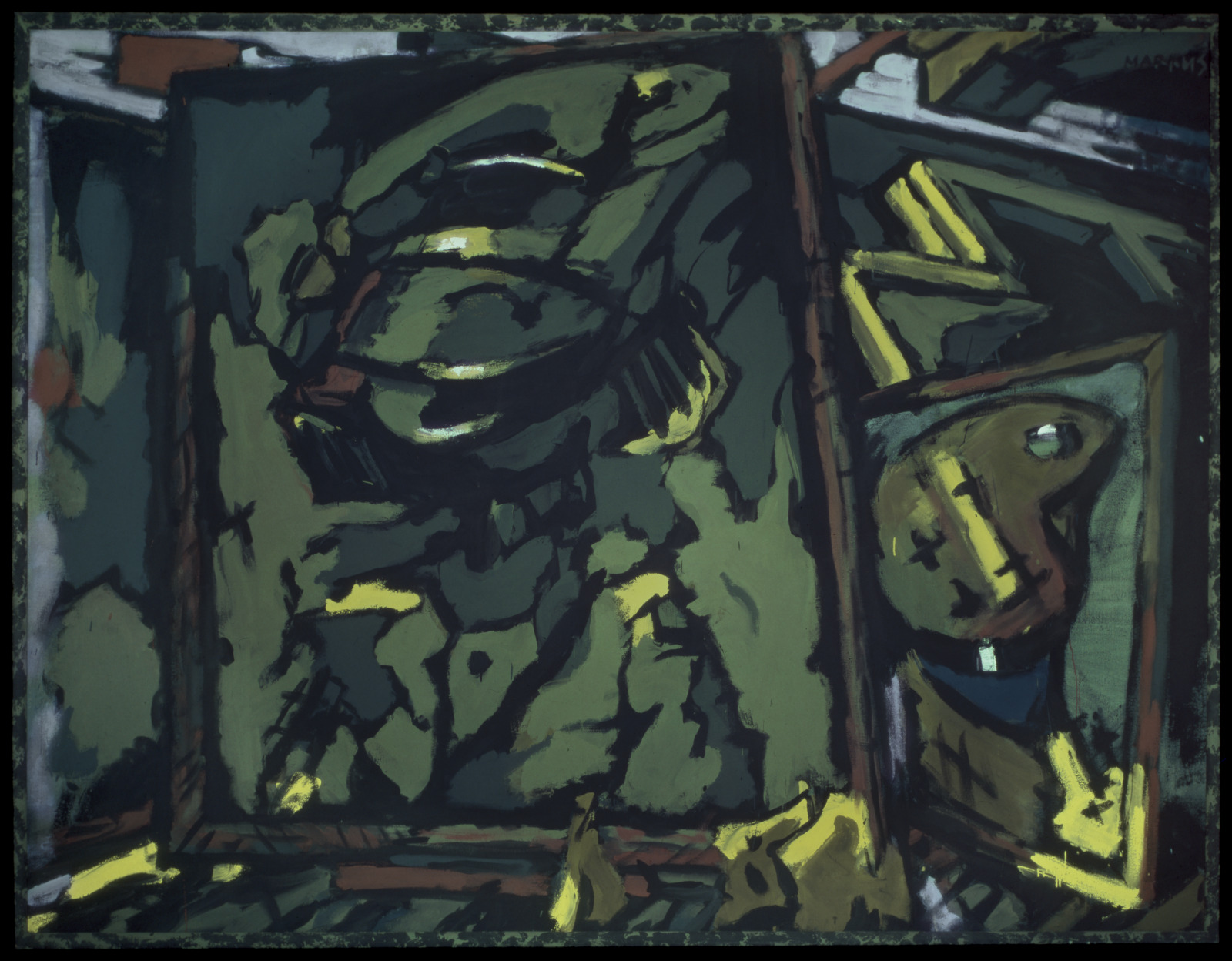
Markus Lüpertz, German, born 1941; Interior III, 1974; distemper on canvas; 77 x 101 3/8 inches; Saint Louis Art Museum, Friends Fund 10:2003; © 2021 Markus Lüpertz / Artists Rights Society (ARS), New York
Interior III depicts the artist’s studio with finished canvases in stacks. Markus Lüpertz represented the studio not as a place of active painting but as a symbol of the artist’s identity and relationship to art history. The most prominent canvas displayed presents an army coat and an oversized cap worn by an invisible occupant. For a German audience, such an image evokes memories of and questions about the army’s role in World War II (1939–1945) and the Holocaust. The empty shell of the uniform suggests the frightening anonymity of evil. Here, the artist confronts the viewer with the issue of collective responsibility while trying to define his own position in connection with the past.
November 1, 2021
Grave Stele of Kallistrate
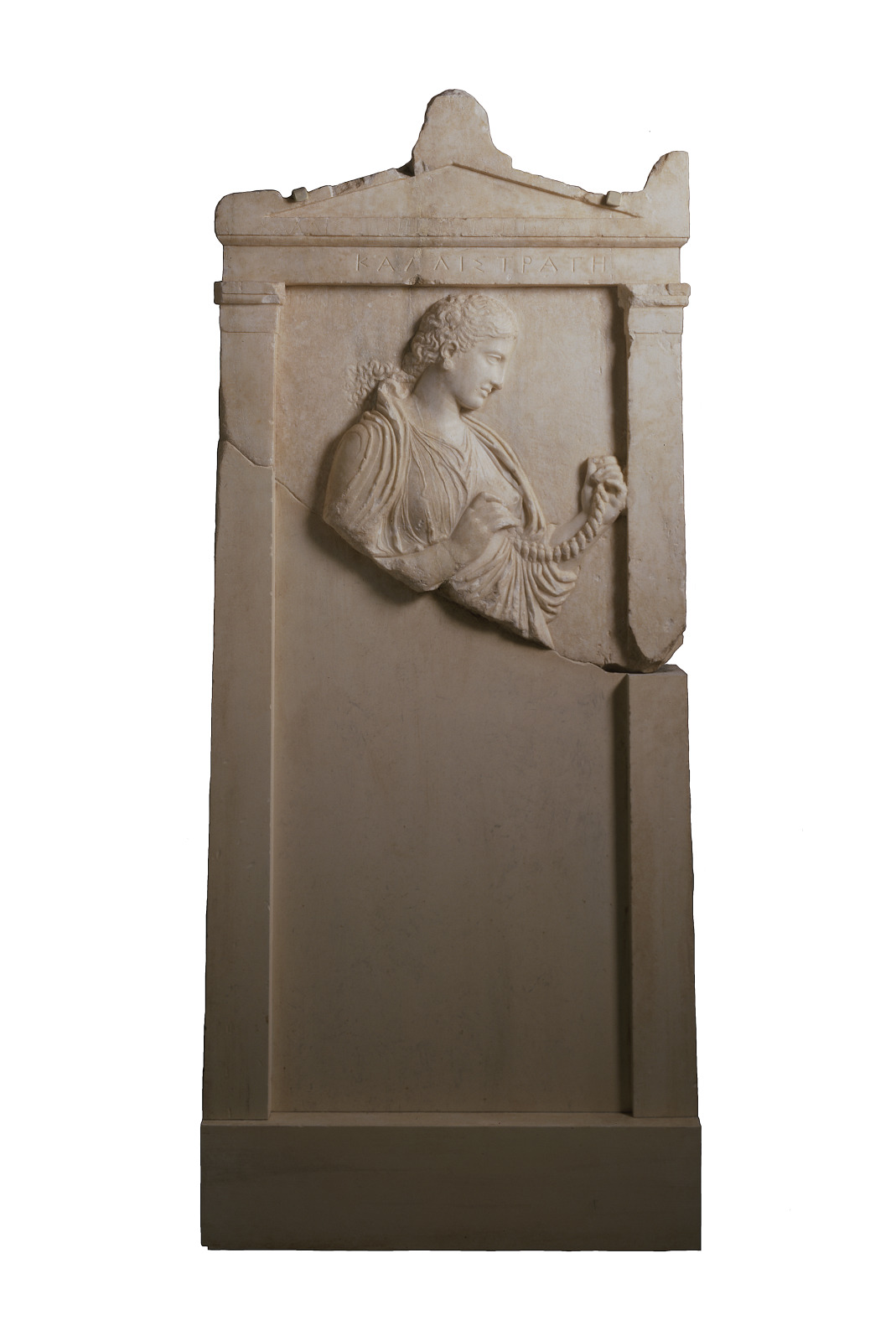
Grave Stele of Kallistrate, late 5th–early 4th century BC; Attic Greek, Late Classical period; marble; 33 1/2 x 26 5/8 x 4 3/4 inches; Saint Louis Art Museum, Museum Purchase 4:1933
Modeled after the form of a miniature temple (naiskos), this funerary monument, called a stele, once marked the grave of a woman named Kallistrate. Such monuments were common in Athens. This one captures the deceased in contemplative, somber, yet serene poses. Here Kallistrate, whose name has been inscribed on the lintel above her head, looks down at a necklace of amphora-shaped beads, which may have been a prized possession. The necklace may also allude to the dowry or bride price her father would have paid upon her marriage. Perhaps she died before the ceremony and contemplates the necklace as a symbol of the life she would never have. Her elegant attire, earring, and hairstyle attest to her high status and the wealth of the family who commissioned such a marker.
October 29, 2021
White Woman

Georg Baselitz, German, born 1938; White Woman, 1980; tempera on canvas; 130 x 98 5/16 inches; Saint Louis Art Museum, Funds given by Mrs. Alvin R. Frank, Bruce and Kimberly Olson, and Mr. and Mrs. Thomas K. Langsdorf 7:2003; © Georg Baselitz 1980
Layers of dark paint create an expressive surface from which an inverted, white figure emerges. Georg Baselitz based the figure on a photograph published in the journal Stern in 1979 of a Russian woman in Germany after World War II. The woman, who went from prisoner to victor, supervised German women tasked with cleaning up ruined cities. This painting recalls shared memories of Germans who had to construct new lives in the aftermath of the atrocities of the Holocaust and the loss of a war that left poverty and destruction in its wake.
October 25, 2021
Allegory
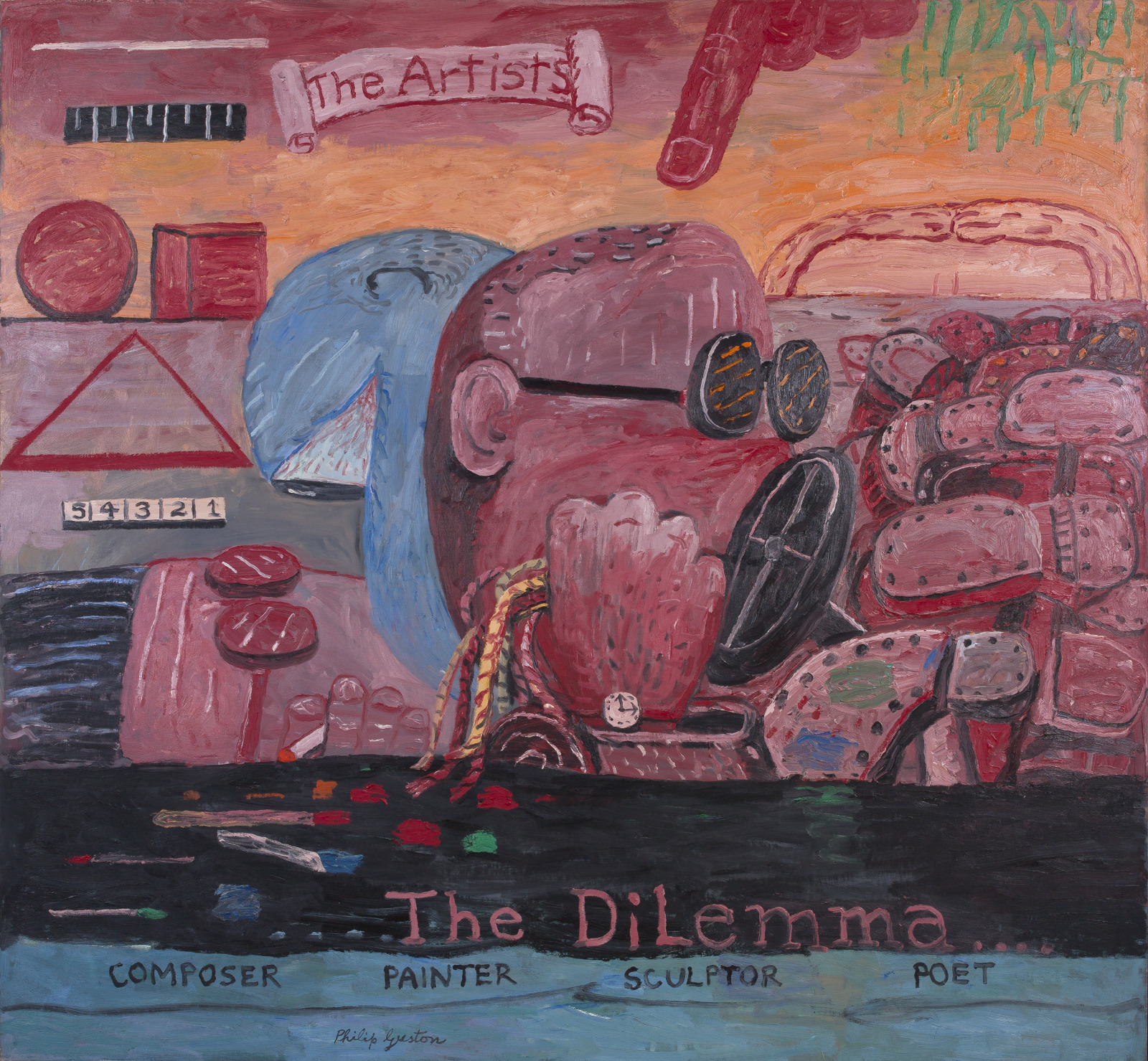
Philip Guston, American (born Canada), 1913–1980; Allegory, 1975; oil on canvas; 68 x 73 1/4 inches; Saint Louis Art Museum, Funds given by the Shoenberg Foundation, Inc. and Mr. and Mrs. Robert H. Shoenberg by exchange 8:1990; © 2021 Estate of Philip Guston
Philip Guston examines the dilemma of an artist—what is, in fact, his or her role in society? Guston presents himself here as an abstract blue creature in profile. He looks downward into the bespectacled eyes of composer Morton Feldman, while sculptor Raoul Hague flogs a jumble of shoes. The brow rising over the horizon belongs to Musa Guston, a poet and the painter’s wife. Instead of the certainty of science—represented by geometric shapes, numbers, and rulers—the artist faces ambiguity and endless possibilities in the search for artistic truth.
October 18, 2021
Cubi XIV
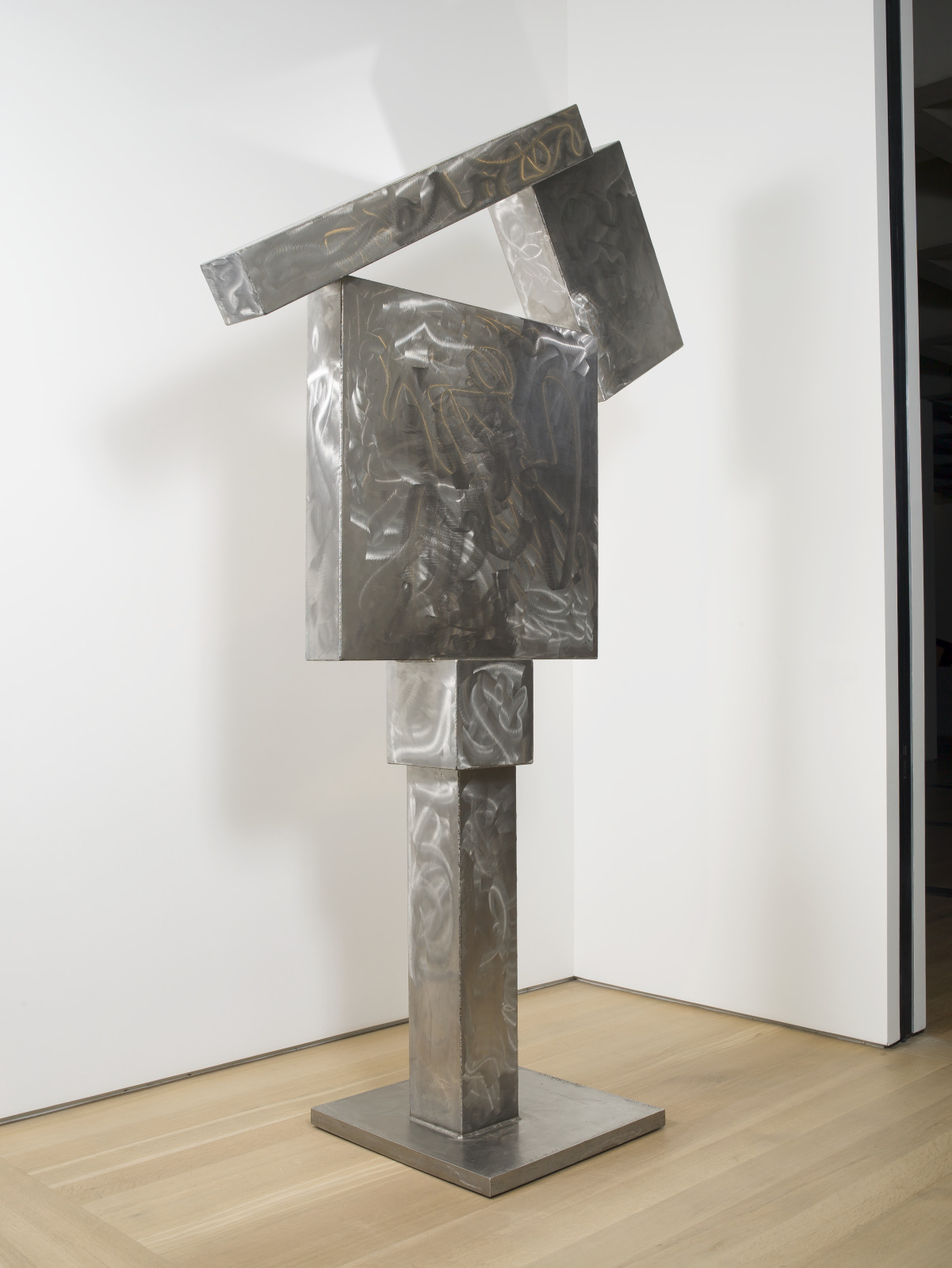
David Smith, American, 1906–1965; Cubi XIV, 1963; stainless steel; 125 1/2 x 78 x 30 3/4 inches; Saint Louis Art Museum, Friends Fund 32:1979; © 2021 Estate of David Smith / Licensed by Artists Rights Society (ARS), New York
For Cubi XIV, David Smith welded together geometric units made from industrial stainless steel. Welding allowed Smith to produce sculptures without casting or carving. In 1961, Smith began creating his final sculptural group, the Cubi series, whose title refers to the early 20th-century art movement, Cubism. While the structured composition of the sculpture recalls the shifting facets of Cubist art, the textured surface (which Smith created with an electric sander) echoes the gestural energy of Abstract Expressionism.
October 17, 2021
Actor Morita Kan’ya XIII as Jean Valjean, from an untitled series known as “Flowers of the Theater”
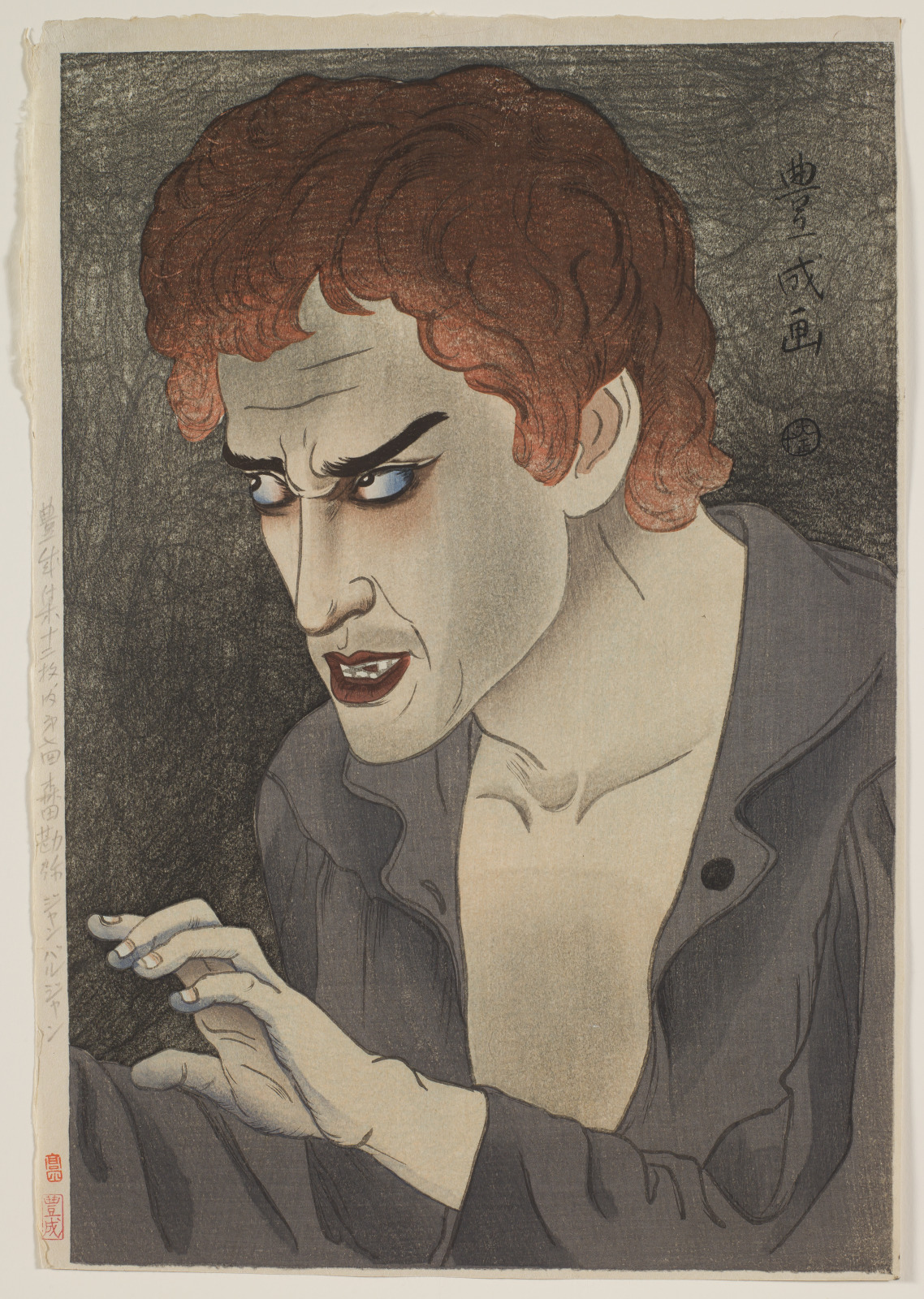
Yamamura Toyonari, Japanese, 1885–1942; published by Yamamura Kōka hanga kankōkai; Actor Morita Kan'ya XIII as Jean Valjean, from an untitled series known as Flowers of the Theater, 1921; color woodblock print; image: 15 3/4 x 10 11/16 inches, sheet: 16 1/2 x 11 1/4 inches; Saint Louis Art Museum, The Margaret and Irvin Dagen Fund for Modern and Contemporary Japanese Prints in honor of Steven Owyoung 22:2017
Opening in 1908, Tokyo’s Yūraku-za was Japan’s first Western-style theater. In 1920, it staged a production of Victor Hugo’s Les Miserables starring Morita Kan’ya, an actor whose repertoire spanned kabuki to Shakespeare. Yamamura Toyonari’s dramatic image of Kan’ya as Jean Valjean, poised to steal the bishop’s silver candlesticks, is based on promotional photographs. These “bromides” had largely superseded woodblock prints as souvenirs of the theater.
As an emerging artist, Toyonari augmented his income by illustrating books and magazines. His first actor prints, published by Watanabe Shōzaburō in 1916, attracted a circle of ardent supporters. With their patronage, Toyonari was able to establish a printmaking practice independent of Watanabe. This print belongs to a series of 12 actor portraits, his debut project as an autonomous printmaker.
October 15, 2021
Headcrest
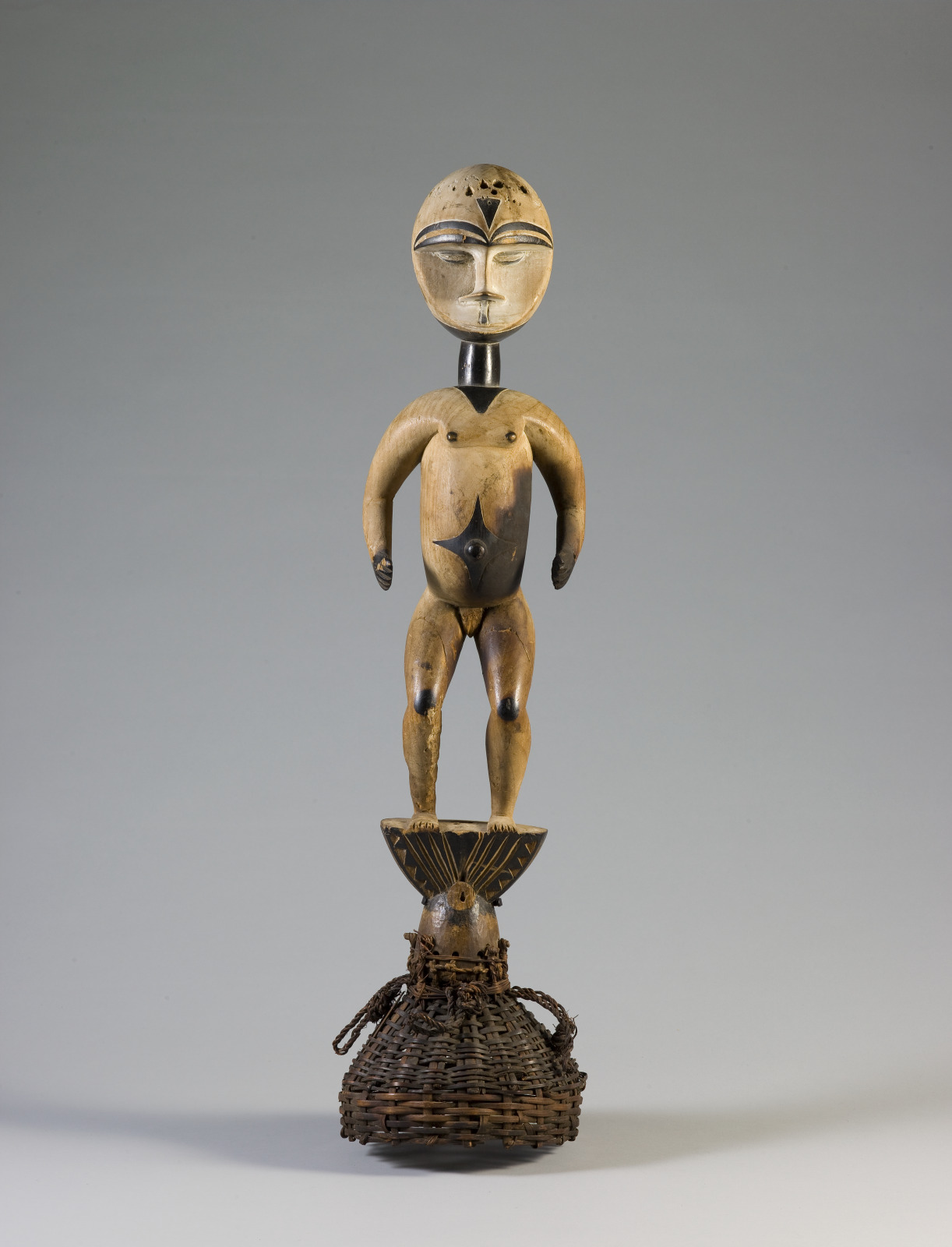
Eket artist, Nigeria; Headcrest, early 20th century; wood, reed, pigment; 30 3/4 x 8 1/2 x 8 inches; Saint Louis Art Museum, Gift of Morton D. May 274:1972
This figure’s active stance, robust forms, and painted geometric details suggest an ideal portrayal of masculine beauty. An Eket man wore this headcrest during performances called Ogbom, which honored the earth deity Ala and encouraged women’s fertility. While colorful ribbons descended from the basketry cap that supported the crest atop the dancer’s head, the gentleman performer was not otherwise concealed. Thus the dancer and headcrest appeared as a unit, each complementing the other, and perhaps attracting admirers from among an audience of singing and dancing women.
October 13, 2021
A Shadow on the Sky

Kay Sage, American, 1898–1963; A Shadow on the Sky, 1958; cut-and-pasted painted paper and watercolor on paper; sheet: 24 3/4 x 18 inches; Saint Louis Art Museum, Gift of Mr. and Mrs. Joseph Pulitzer Jr. 5:1960; © 2021 Estate of Kay Sage / Artists Rights Society (ARS), New York
Gray stones float in an imaginary space defined only by the shadows the stones cast against their backdrop. Kay Sage used the technique of collage to create this work, meticulously cutting out each stone and pasting it onto the paper support. In the 1940s Sage painted vast Surrealist landscapes populated by architectural fragments and amorphous objects. Due to the gradual loss of her eyesight and other factors, Sage stopped painting around 1959 and began creating various series of collages and small sculptures. An ominous sense pervades A Shadow on the Sky, as in much of Sage’s work.
October 11, 2021
Basket Dance

Women at center grasp distinct baskets while men at back rhythmically shake rattles. Tonita Peña devoted remarkable attention to detail in this watercolor. Describing her figures in a letter from 1921, she said, “I paint just the way they wear their dresses.” Peña aligned each dancer in this composition to convey action, depth, and community. This critical artistic achievement defied federal efforts in the 1920s to suppress Pueblo dances. Basket dances, as seen here, contribute to annual cycles of religious performances at many Pueblo communities, including Cochiti. There, Peña lived and worked as the sole woman in the first generation of Indigenous easel painters in northern New Mexico.
October 6, 2021
Cafeteria Counter
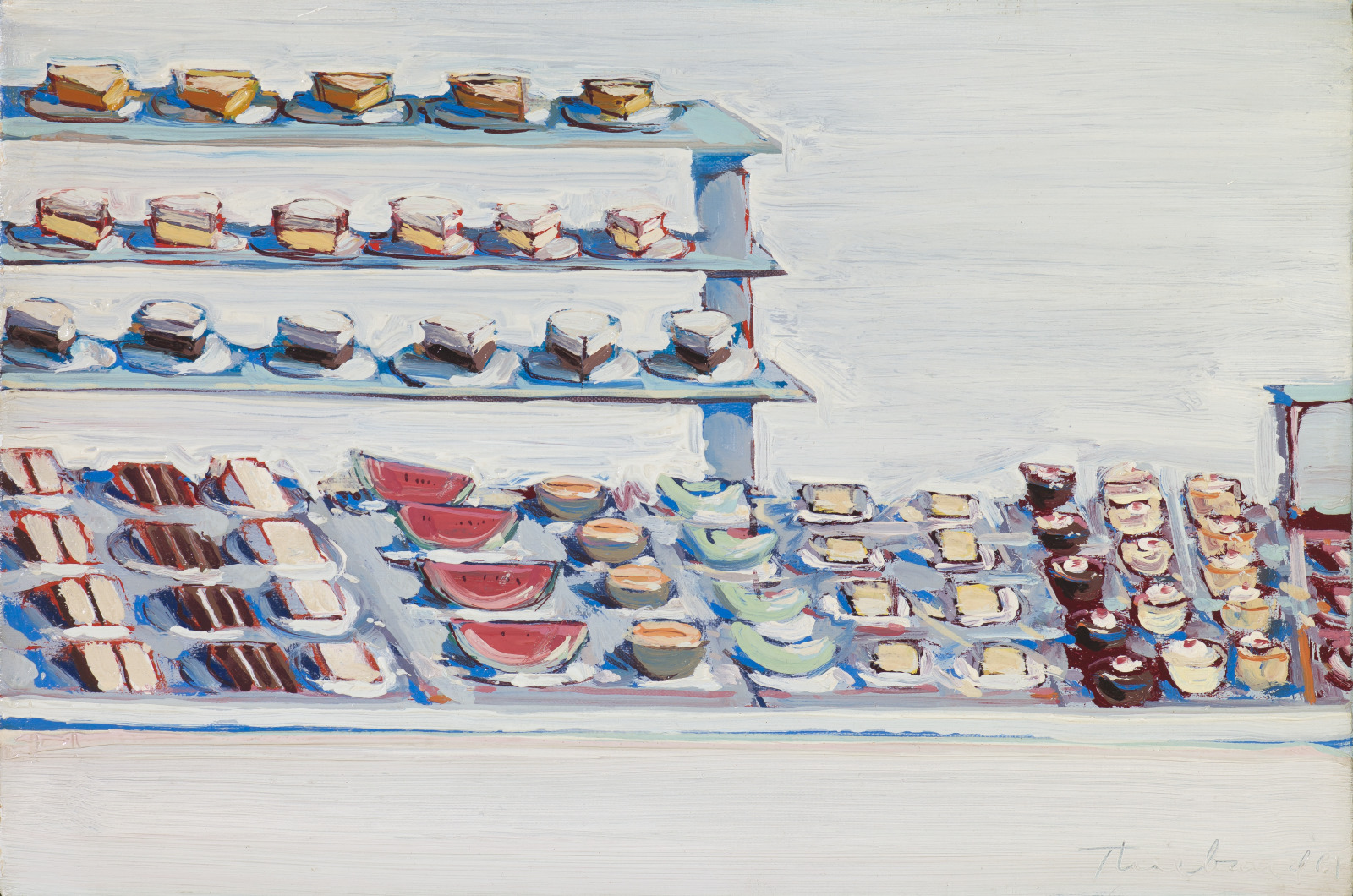
Wayne Thiebaud, American, born 1920; Cafeteria Counter, 1961; oil on canvas; 12 3/16 x 18 inches; Saint Louis Art Museum, Gift of Mr. and Mrs. Adam Aronson 287:1979; © 2021 Wayne Thiebaud/Licensed by Artists Rights Society (ARS), New York
Wayne Thiebaud presents an array of colorful dishes on display at a cafeteria counter. Cakes, pies, melons, and servings of pudding wait to be purchased and devoured. Thiebaud was featured early in significant Pop Art exhibitions, although he jokingly claimed he was “never a card-carrying member” of the movement. Unlike his Pop Art counterparts, Thiebaud remained committed to the traditions of painting and chose not to explore commercial techniques. He arranges triangular desserts, circular plates, and curved pieces of fruit into rows and columns to emphasize their forms.
October 2, 2021
Mocha Standard
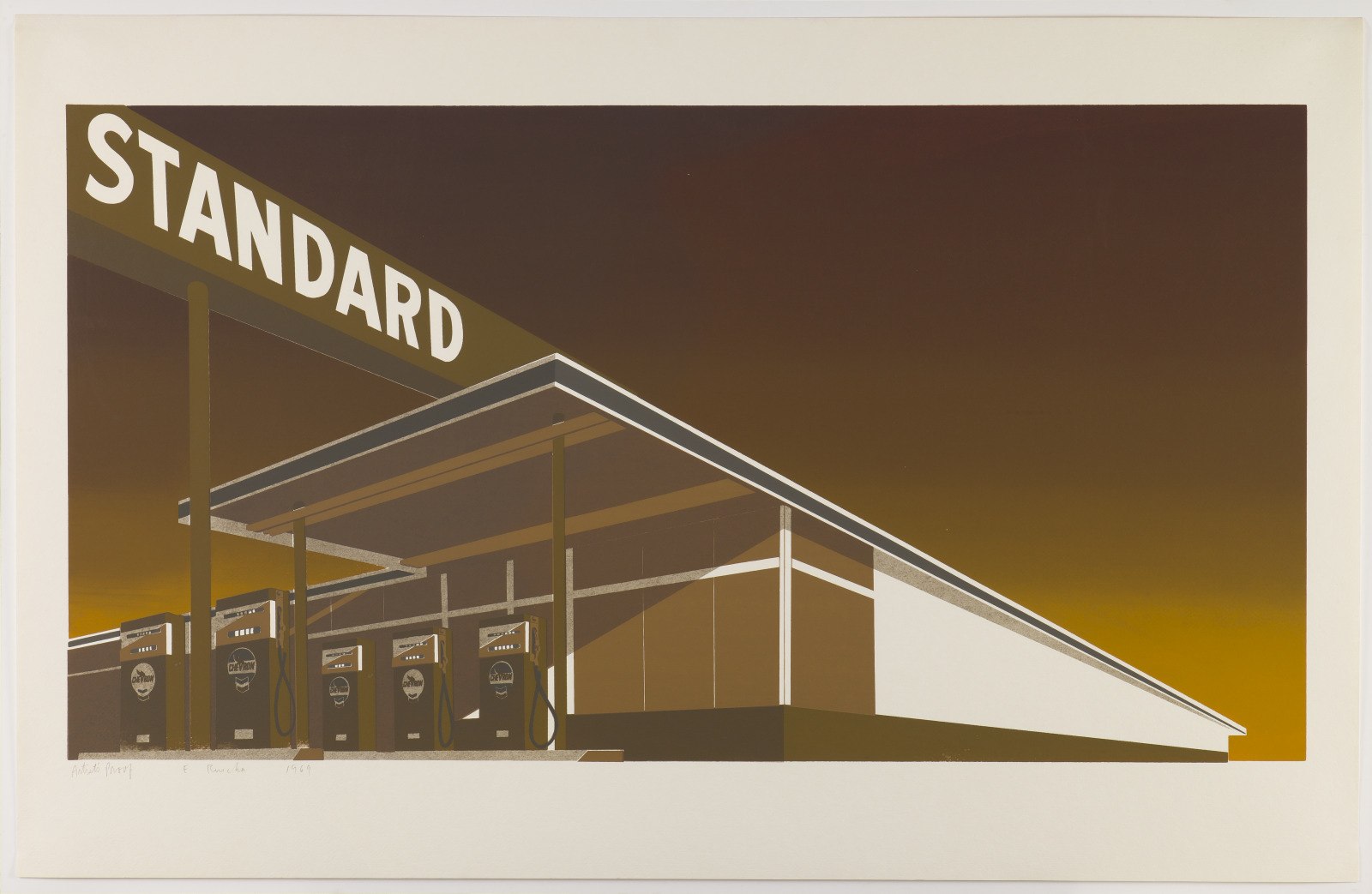
Edward Ruscha, American, born 1937; printed by Jean Milant, Los Angeles, and Daniel Socha, Los Angeles; published by Edward Ruscha; Mocha Standard, 1969; screenprint; image: 19 9/16 x 37 1/16 inches, sheet: 25 13/16 x 40 3/16 inches; Saint Louis Art Museum, Eliza McMillan Trust 99:1982; © Ed Ruscha
The first gasoline stations to appear in Ed Ruscha’s work were unremarkable black-and-white snapshots found in his artist’s books. Ruscha soon revealed his flair for casting even the humblest buildings as star attractions. The Standard Oil station became his signature subject, one he repeatedly returned to in both paintings and prints. In both media, the station is glamorized using graphic imagery borrowed from the world of commercial design. Dramatic foreshortening and bold diagonals make it appear larger than life, modeled to fit a Hollywood “standard.”
Mocha Standard is one of several screenprints identical in composition to Ruscha’s paintings of the station. Unlike the paintings, however, the screenprints are characterized by the lush gradations of color seen in the sky. Here, the chosen palette of chocolate brown and burnt orange sound a soft, even melancholic note that tempers the brash angular forms of the building.
October 1, 2021
Marriage of Reason and Squalor

Frank Stella, American, born 1936; Marriage of Reason and Squalor, 1959; enamel on canvas; 90 5/8 x 131 3/4 inches; Saint Louis Art Museum, Museum Purchase and gift of Mr. and Mrs. Joseph A. Helman and Mr. and Mrs. Ronald K. Greenberg 23:1969; © 2021 Frank Stella / Artists Rights Society (ARS), New York
With a housepainter’s brush, Frank Stella methodically applied industrial enamel paint to the surface of this canvas. Thick black bands form concentric rectangles cut off along the bottom edge while thin off-white lines reveal unpainted portions of the canvas. The artist used an extra thick stretcher, a novel decision in 1959, which allowed Stella to emphasize that a painting is, in fact, a three-dimensional object. When asked about the content of his austere works such as this, Stella answered, “What you see is what you see,” underscoring the artist’s matter-of-fact, literal approach to painting.
September 29, 2021
Gorilla

Houston Chandler, American, 1914–2015; Gorilla, c.1946; wood; 8 5/8 x 7 3/4 x 5 1/8 inches; Saint Louis Art Museum, Museum Purchase 1124:2010; © Houston Chandler
Gorilla features smooth surfaces, abstracted forms, and a mask-like face. These elements are evidence of Houston Chandler’s search for “the simplicity that brings out the greatest line of expression.” Though the gorilla rests in a hunched pose, its muscular limbs, arranged in diagonals across its body, allude to its physical power.
Born in St. Louis, Chandler was the second African American to earn a Master of Fine Arts degree at the University of Iowa. He returned to teach for many years at Vashon High School, and directed summer classes at the People’s Art Center, the city’s first racially integrated community arts center.
September 24, 2021
Toy Cradleboard

Plateau artist; Toy Cradleboard, c.1890; tanned hide, wood, glass beads, and wool cloth; 14 3/4 x 6 3/4 x 2 3/8 inches; Saint Louis Art Museum, The Donald Danforth Jr. Collection, Gift of Mrs. Donald Danforth Jr. 45:2013
This toy cradle consists of hide stretched across a teardrop-shaped wooden board. Across the Plains and Mountain West, Native American girls played with toy cradles that replicated the construction and design of similar full-size works. Here, lanes of beadwork create geometric designs, adorning the hide at top. The light blue ground and abstract beading with outlined forms are hallmarks of a style called Transmontane, shared by artists from multiple Native American groups in the mountainous areas west of the Plains.
September 21, 2021
Peace
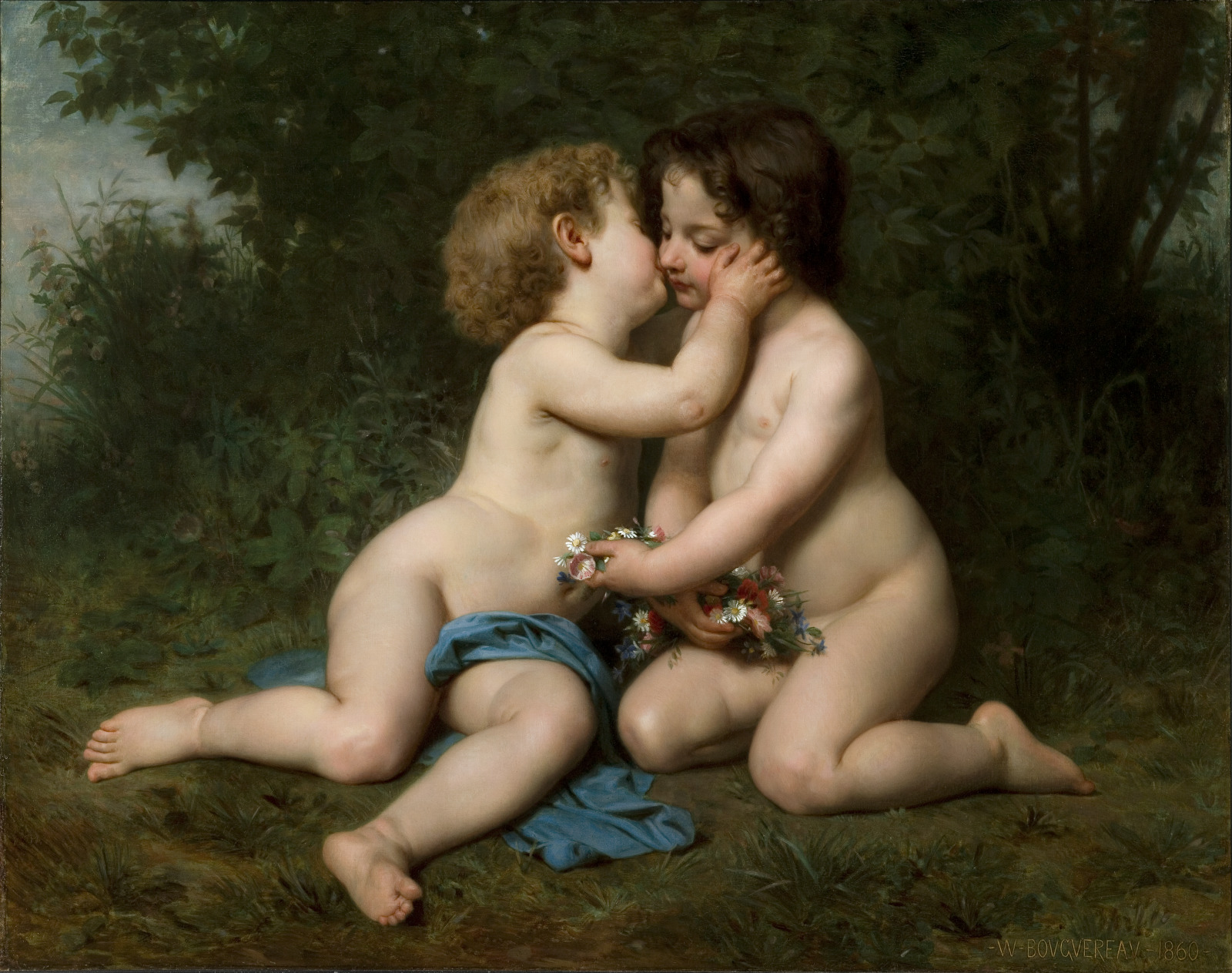
Adolphe-William Bouguereau, French, 1825–1905; Peace, 1860; oil on canvas; 33 1/2 x 42 1/4 inches; Saint Louis Art Museum, Gift of Miss Lillie B. Randell 304:1925
Two children embrace each other within a pastoral setting in this idyllic view. Adolphe-William Bouguereau, the prominent academic painter, showed Peace at the 1861 Salon, the official state-sponsored art exhibition, to critical acclaim. The artist produced a companion work, War (JAPS Collection, Mexico), in which the same two children are fighting. Peace had previously been identified as a copy after Bouguereau, but recent technical and provenance research has proven this to be an autograph painting.
September 12, 2021
Colonel Mendes Cohen

Rembrandt Peale, American, 1778–1860; Colonel Mendes Cohen, c.1838; oil on canvas; 30 1/4 x 25 1/4 inches; Saint Louis Art Museum, Eliza McMillan Trust 53:1930
Colonel Mendes Cohen (1796–1879) sits confidently, his arm thrown back over his chair to more fully direct his attention at us. His hair is fashionably swept, and the rich white, yellow, and black of his attire complete this handsome portrait. Cohen was a member of a prominent Jewish family in Baltimore, Maryland, that lobbied for some of the earliest rights for Jews, including the right to hold state office. Artist Rembrandt Peale, one of the most sought-after portraitists of the day, painted this portrait. It hung in the Cohen family dining room from the time it was painted in 1838 until 1929, when it was purchased by the Museum.
September 11, 2021
Red, Orange, Orange on Red

Mark Rothko, American (born Russia, now Latvia), 1903–1970; Red, Orange, Orange on Red, 1962; oil on canvas; 91 3/4 x 80 1/2 inches; Saint Louis Art Museum, Funds given by the Shoenberg Foundation, Inc. 129:1966; © 1998 Kate Rothko Prizel & Christopher Rothko / Artists Rights Society (ARS), New York
A floating field of tangerine orange is bounded at the bottom by an area of acidic orange, and at the top by a line of red. Mark Rothko stained the canvas with several layers of thin pigment, creating an effect that evokes the shimmering luminosity of dawn or sunset. Rothko’s compositions employ the elegant simplicity of rectilinear forms to express human emotions the artist believed to be “tragic and timeless.”
September 6, 2021
Sharecropper

Elizabeth Catlett, American (active Mexico), 1915–2012; published by Taller de Gráfica Popular, Mexico City, Mexico, founded 1937; Sharecropper, 1952, printed 1970; color linocut; 21 7/16 x 20 3/16 inches; Saint Louis Art Museum, The Sidney S. and Sadie Cohen Print Purchase Fund 4:2008; © 2021 Catlett Mora Family Trust / Licensed by VAGA at Artists Rights Society (ARS), NY
Sharecropper reveals Elizabeth Catlett’s lifelong concern for the marginalized and the dignity of women. Vivid markings create this anonymous woman’s weathered skin, textured white hair, and broad-brimmed straw hat. Fatigue is evident in her eyes, and a makeshift safety pin holds her lightweight jacket closed. She represents the many sharecroppers who rented land in an agricultural system that Catlett felt kept thousands of African Americans in a cycle of poverty. By focusing on the enduring strength of poor laborers, Catlett hoped to “find a voice to speak for people who do not have one.” In 1946, Catlett moved to Mexico City, Mexico. There, she worked with the People’s Graphic Workshop, a printmaking collective dedicated to using art to promote social change.
September 5, 2021
Alexander Weighing Gifts for his Tutor Leonidas
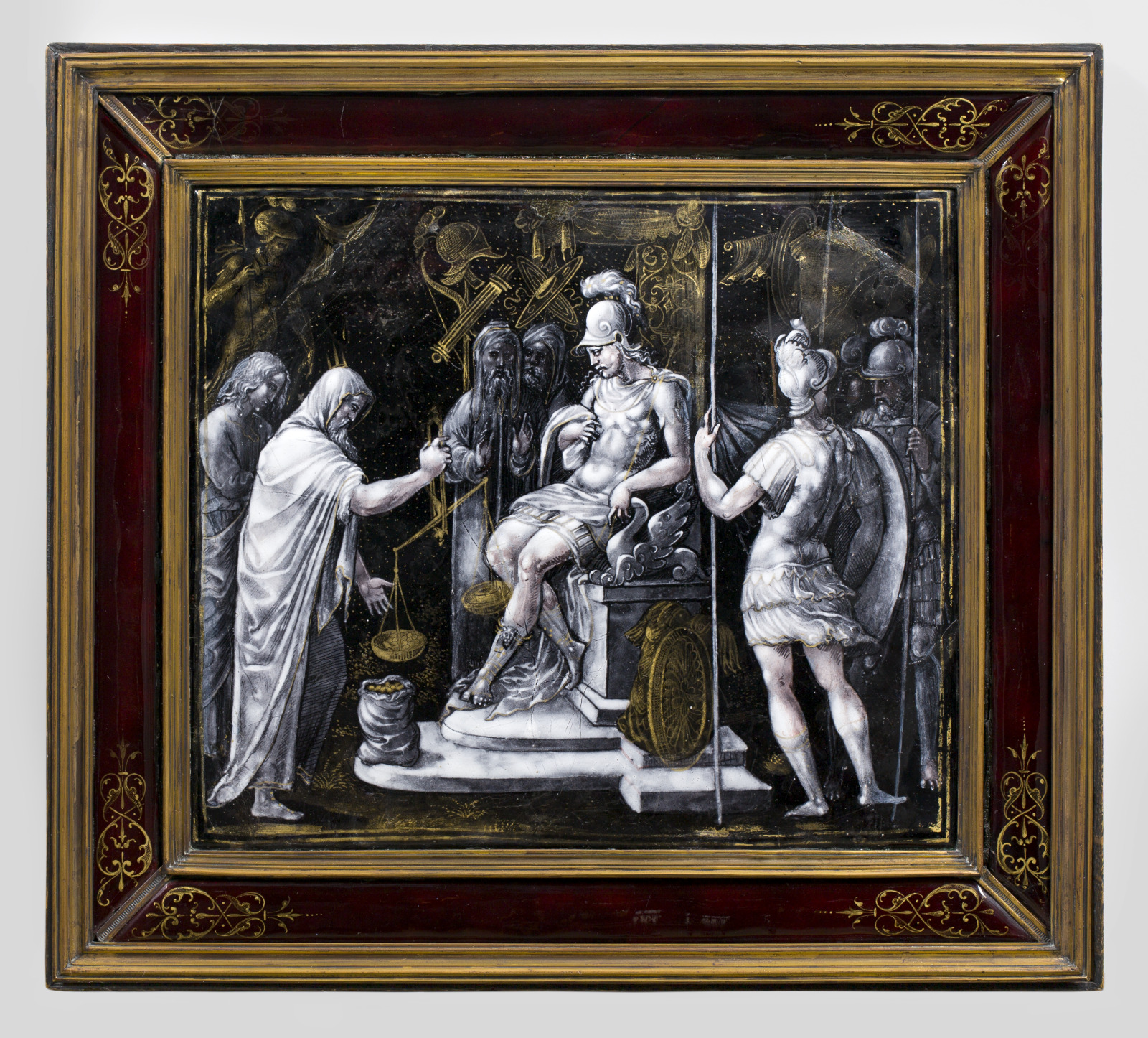
Jean III Pénicaud, French, died 1570; Alexander Weighing Gifts for his Tutor Leonidas, mid-16th century; enamel and gold on copper; image (by sight): 7 5/8 x 8 11/16 inches; Saint Louis Art Museum, Museum Purchase 221:1923
Enthroned in the center, Alexander the Great (reigned 336–323 BC) oversees the weighing of gifts to be sent to his childhood tutor, Leonidas. The writer Plutarch recounted how, when Alexander’s army distributed the spoils gleaned from their defeat of the Persian ruler Darius III, Alexander had frankincense and myrrh sent to Leonidas. The tutor cautioned Alexander as a child to use both of these spices sparingly. Only after Alexander ruled the lands that produced them could he use these luxuries extravagantly. This account prophesized that Alexander would one day be a conqueror.
This sumptuous plaque, with shields and battle implements drawn in gold behind the figures, displays the late Renaissance interest in depicting the human form. Note the fit physique of Alexander as well as his attending soldier, shown at the right with his back to the viewer.
August 18, 2021
Male and Female Couple
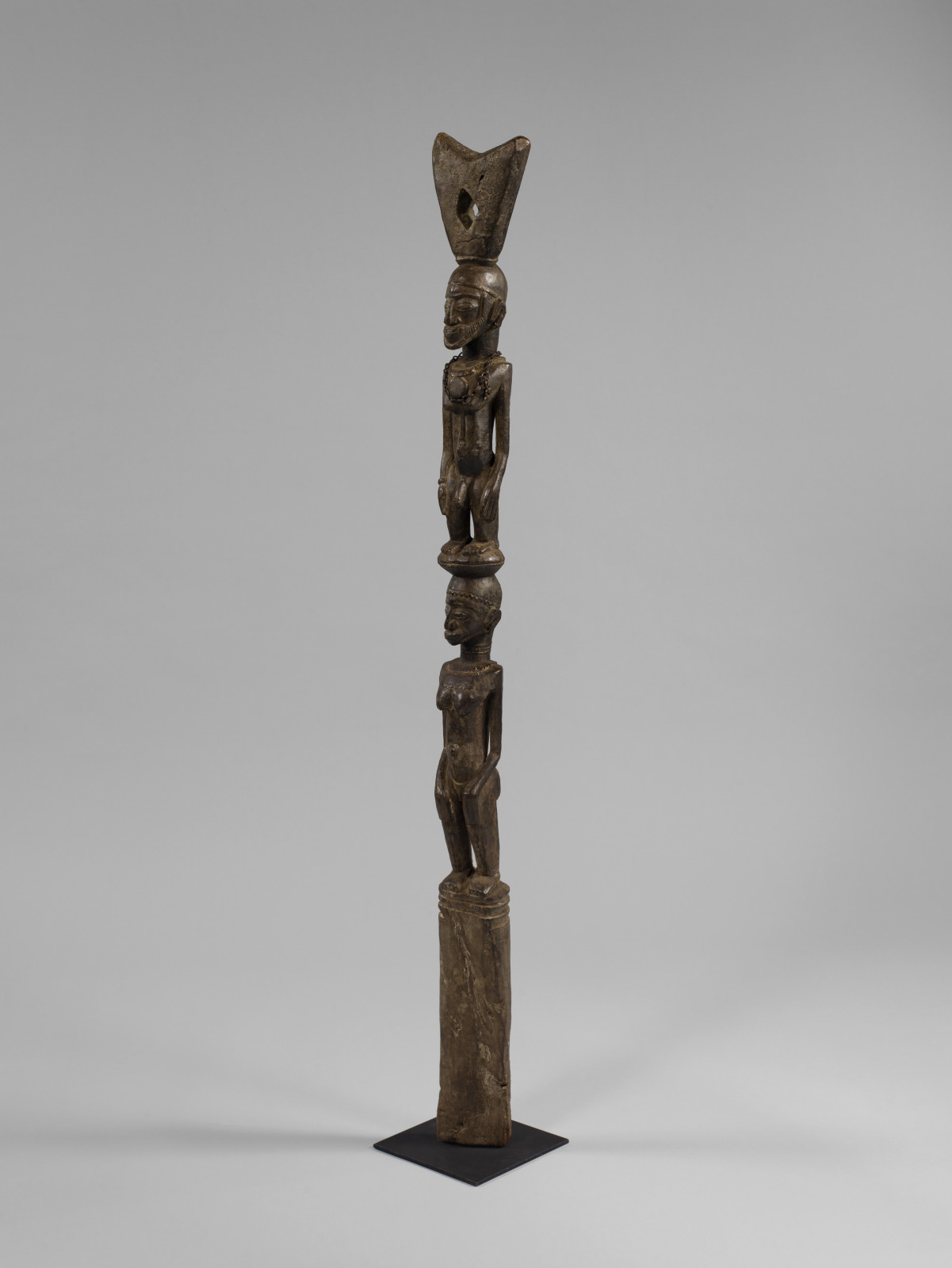
Dogon artist, Mali; Male and Female Couple, 1640–1810; wood, iron; 56 3/4 x 6 1/8 x 3 3/4 inches; Saint Louis Art Museum, Gift of an anonymous donor in memory of Martin Luther King's St. Louis Speech (March 22, 1964) 257:2014
Male and female couples, as seen here, are a common theme in Dogon art, and suggest the primordial ancestors to whom all Dogon people trace their origins. The vertical orientation of this sculpture, with the male standing atop the female’s head, may serve as a link to earlier sculptures from this region made by a culture known as Tellem. Tellem sculptures, created during the 11th- and 12th-centuries, often feature abstracted couples in which one figure stands atop the other with arms raised. Radiocarbon dating places this sculpture approximately 230 years before the present.
August 7, 2021
Delta
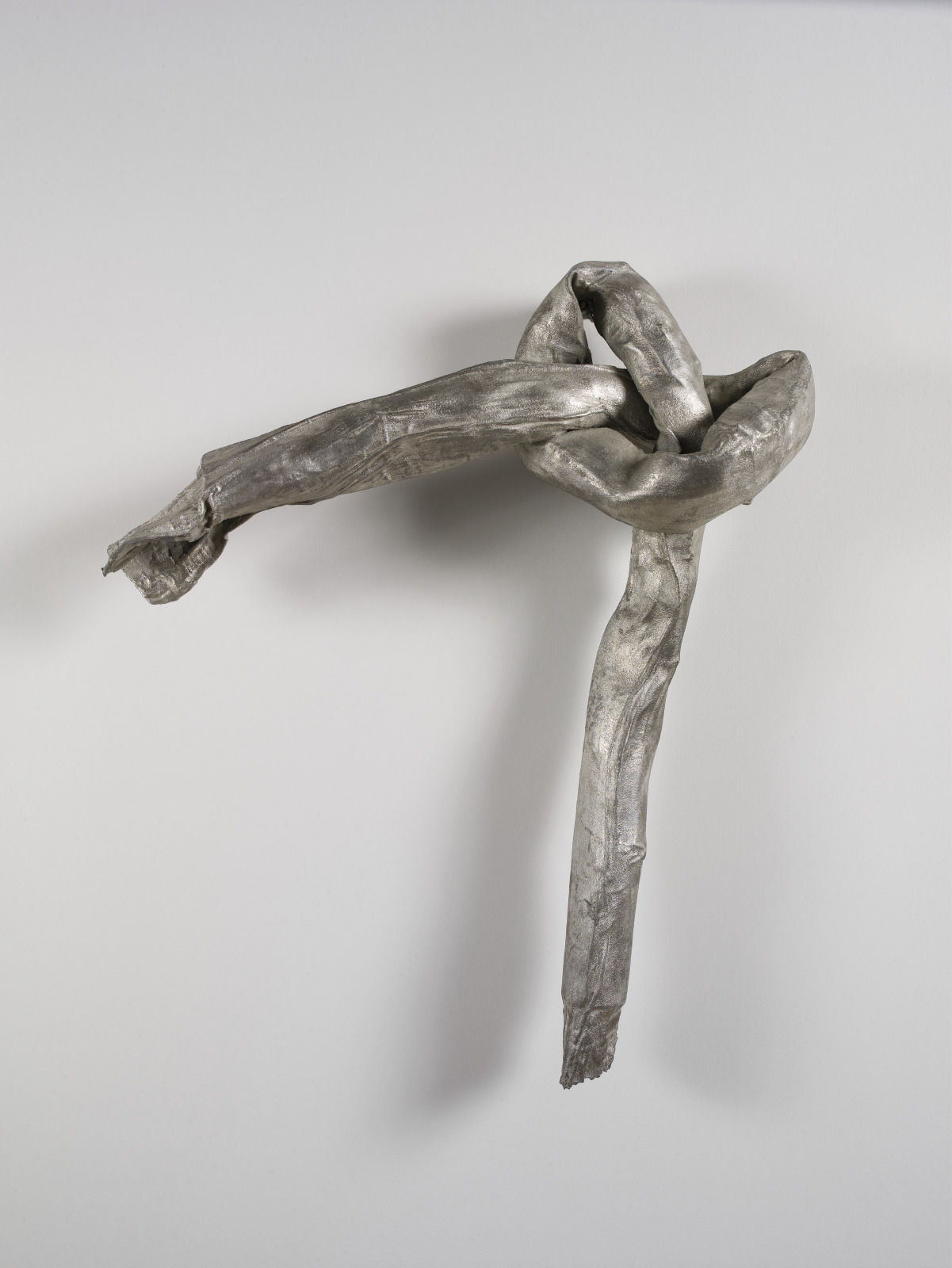
Lynda Benglis, American, born 1941; Delta, 1974; aluminum screen, bunting, plaster, sprayed zinc, steel, tin; 41 x 34 x 9 1/2 inches; Saint Louis Art Museum, Gift of Mr. and Mrs. Barney A. Ebsworth 150:1984; © 2021 Lynda Benglis / Licensed by Artists Rights Society (ARS), New York, NY
A metallic tube covered in wrinkles and creases is twisted into a knot. Lynda Benglis made a series of these knots using aluminum screen covered in cheesecloth and plaster. She tied the materials while wet in a technique reminiscent of historically female modes of artistic production, such as embroidery. The knots were then sprayed with metals, sometimes by airplane technicians. In Delta, Benglis combined the industrial materials common in Minimalist, geometric sculpture of the 1970s with organic, limb-like forms that suggest the softness of the human body.
August 4, 2021
Feather Cloak (kahu huruhuru)

Maori artist, New Zealand; Feather Cloak (kahu huruhuru), early 20th century; kererū feathers, tūī feathers, kākā feathers, kākāriki feathers, candlewick thread, bast fiber (probably linen), wool; 25 9/16 x 28 3/4 x 7/16 inches; Saint Louis Art Museum, Gift of Mrs. Paul Blackwelder in memory of her sister, Frances Del Mar 530:1957
Feathers from a variety of birds were used to decorate prestigious finger-woven cloaks, such as this one. Made without the use of a loom, but rather from a pair of upright sticks at either side, cloaks were woven by single- or two-pair weft-twining. For this cloak, made as a presentation gift, female weavers combined principally white and green kererū, or New Zealand pigeon, feathers to create a checkerboard pattern. Blue-black tūī, red kākā (parrot), and light green kākāriki (parakeet) feathers add color and beauty. The top of the cloak is trimmed with black wool.
Worn by men and women, these cloaks assumed characteristics or traits associated with particular birds. Kiwi feather capes indicated prestige and rarity, while red kākā feathers alluded to fine oratory skills of the bird and the chief that wore such a cloak. According to Māori belief, birds are the children of Tāne, god of the forest, and act as intermediaries between the sacred realm of gods (atua) and the human world.
July 31, 2021
Mummy Mask of Kay-neferwy

Mummy Mask of Kay-neferwy, 1295–1186 BC; Egyptian, New Kingdom, Dynasty 19; plaster, linen, resin, glass, wood, gold, and pigment; 21 1/16 x 14 9/16 x 9 3/4 inches; Saint Louis Art Museum, Friends Fund and funds given by Mr. and Mrs. Christian B. Peper, Mrs. Drew Philpott, the Longmire Fund of the Saint Louis Community Foundation, The Arthur and Helen Baer Charitable Foundation, an anonymous donor, Gary Wolff, Mrs. Marjorie M. Getty, by exchange, Florence Heiman in memory of her husband, Theodore Heiman, Ellen D. Thompson, by exchange, Dr. and Mrs. G. R. Hansen, Sid Goldstein in memory of Donna and Earl Jacobs, Friends Fund, by exchange, and Museum Purchase 19:1998
This mask has an extraordinary presence with its combination of glass inlaid eyes, gilt face with shimmering, almost lifelike translucence, and realistic wig. The craftsman who fashioned the wig out of thick resin carefully cut and modeled the plaits of hair in the latest style. The red “gold” coloring of her skin-a result of oxidation on the metal surface-may be purposeful or merely the product of the sulphurous fumes given off by the resinous wig. The band around her head, her eyes, and her nipples are inlaid with glass, surprising because glass was as costly and rare as the turquoise and carnelian for which it was substituted. The roughened surface of the mask’s lips suggests they were once covered with a heavier gold foil. In each hand she holds a wooden amulet to signify strength and welfare. A delicate scene carved in relief on her arms shows her successful ascent into the afterlife on the boat of the Great God Osiris.
July 14, 2021
Le Casquettador
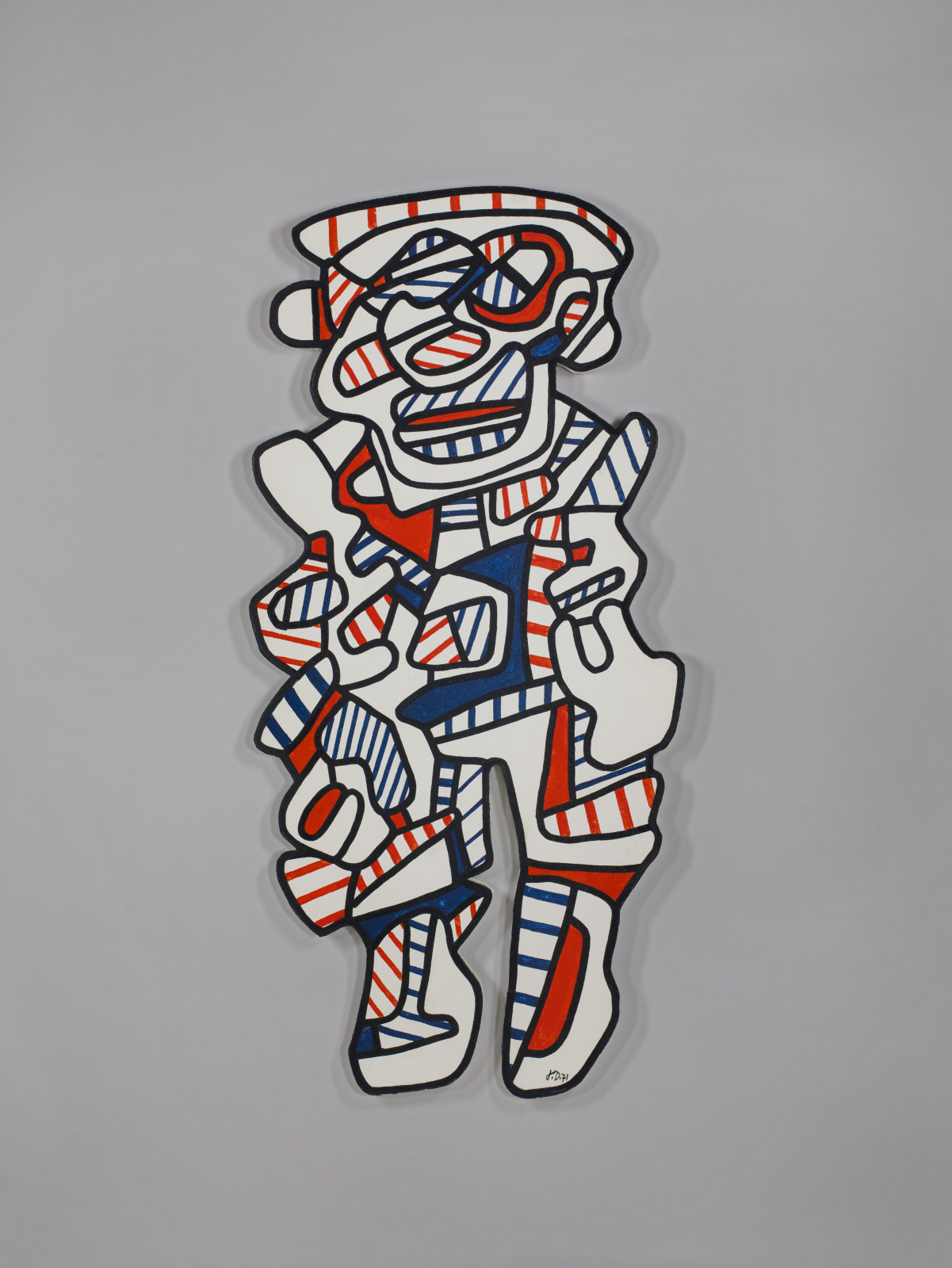
Jean Dubuffet, French, 1901–1985; Le Casquettador, November 1971; acrylic paint on Klegecell; 72 x 36 x 6 inches; Saint Louis Art Museum, Gift of Julian and Hope Edison 714:2018; © 2021 Estate of Jean Dubuffet, Artists Rights Society (ARS), New York / ADAGP, Paris
Painted with heavy black outlines and primary colors, this cartoonish figure is one of many unique characters artist Jean Dubuffet designed for his performance Coucou Bazar, which premiered in New York in 1973. In Coucou Bazar, life-size sculptures were propelled by motors or manipulated by costumed performers. Named for its cap, or “casquette” in French, Le Casquettador was originally mounted on wheels that allowed it to be moved. It is uncertain whether it appeared onstage, as only some of Dubuffet’s sculpted characters were ever used in productions.
July 13, 2021
Black Bird

Benny Andrews, American, 1930–2006; printed by Springraphics, New York; Black Bird, 1980; lithograph; sheet: 30 x 22 1/16 inches; Saint Louis Art Museum, The Thelma and Bert Ollie Memorial Collection, Gift of Ronald and Monique Ollie 117:2017; © 2021 Benny Andrews / Artists Rights Society (ARS), New York, NY
In this lithograph, Benny Andrews depicted a bird taking flight within an ambiguous setting. The surreal landscape relates to his Utopia series, in which he imagined an idyllic world without humans—free from all kinds of discrimination. His fantastical scenes, like this one, which fluctuate between abstraction and a representational style, present poignant themes throughout his work. Here, Andrews also explored the perceived textures he could achieve in lithography.
July 12, 2021
Acrobat on the Trapeze

Max Beckmann, German, 1884–1950; Acrobat on the Trapeze, 1940; oil on canvas; 57 3/8 x 35 7/8 inches; Saint Louis Art Museum, Bequest of Morton D. May 852:1983
Beckmann’s diaries from Amsterdam recount his numerous visits to cabarets, theaters, and the circus. In this painting, an acrobat in the lofty heights of a circus tent is shown from an improbably close viewpoint. The acrobat crouches on a trapeze and seems to be waiting for the right moment to propel himself back for his next routine. Behind the sturdy figure, which nearly fills the canvas, a second trapeze artist appears in the upper right corner while an audience, suggested by dotted brushwork, fills the middle band of the painting.
Beckmann’s use of bold black outlines and saturated planes of canary yellow and lush turquoise heighten the scene’s energy. To Beckmann, the acrobat’s courageous performance evoked the challenges met by every human: “We are all tightrope walkers,” he said. “We have the desire to achieve balance and to keep it.”
July 10, 2021
Cascilla
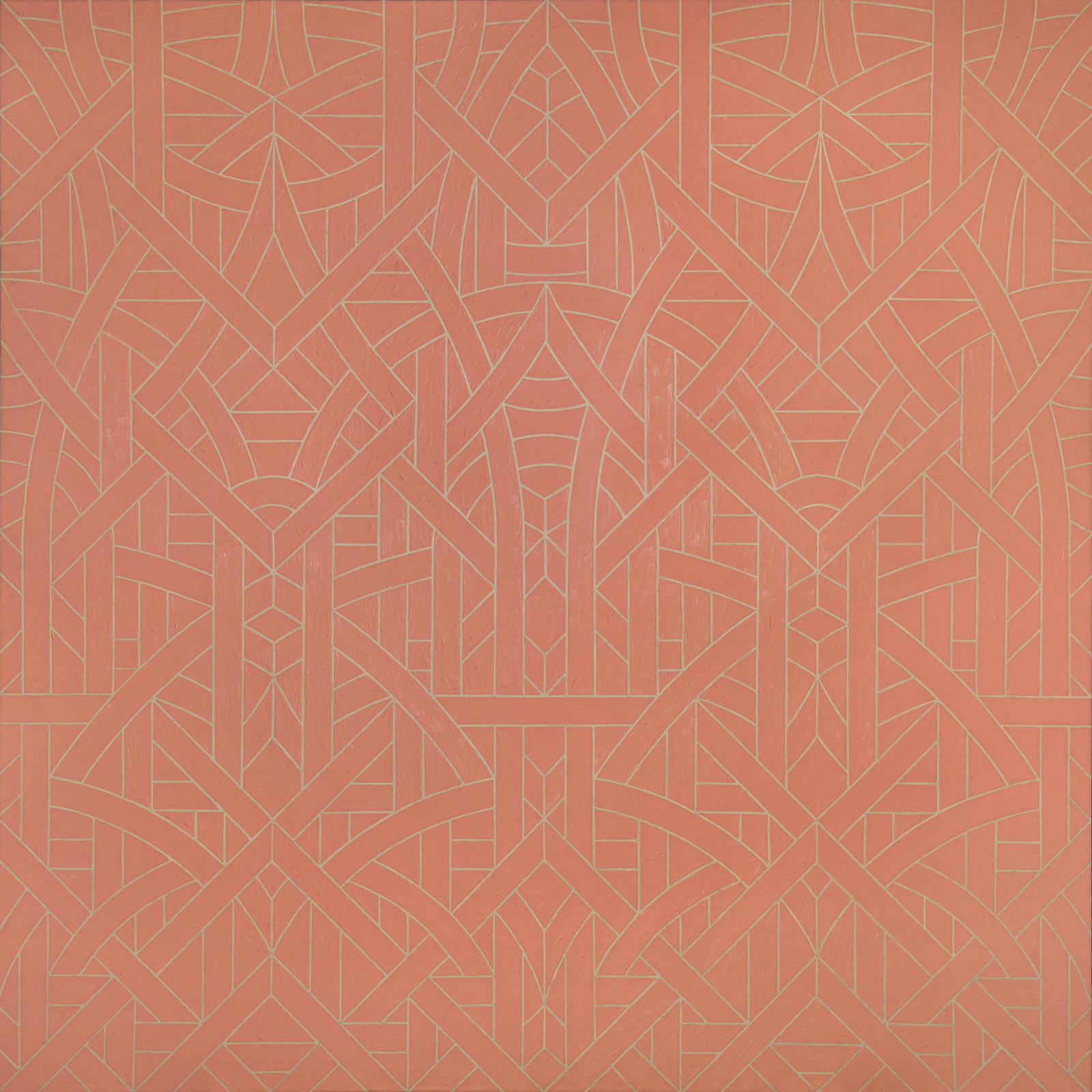
Valerie Jaudon, American, born 1945; Cascilla, 1979; oil on canvas; 72 x 72 inches; Saint Louis Art Museum, Gift of Jan and Ronald K. Greenberg 264:1995; © 2021 Valerie Jaudon / Artists Rights Society (ARS), New York, NY
Spanning this entire painting, a symmetric pattern of interlocking forms in salmon pink is outlined by exposed canvas. Valerie Jaudon’s paintings evoke the motifs and embellishments of wallpaper, upholstery textiles, and decorative arts often associated with notions of femininity.
Jaudon’s work recontextualizes and highlights such intricate forms, challenging long-held perceptions of their inferiority when compared with fine art, in particular the history of abstract painting. Her compositions are derived from systems of simple, repeated forms that are combined differently to create visually complex images with few colors.
July 8, 2021
The Transformed Dream

Giorgio de Chirico, Italian (born Greece), 1888–1978; The Transformed Dream, 1913; oil on canvas; 25 x 59 3/4 inches; Saint Louis Art Museum, Gift of Mr. and Mrs. Joseph Pulitzer Jr. 313:1951; © 2021 Artists Rights Society (ARS), New York, NY / SIAE, Rome
Giorgio de Chirico juxtaposes unusual objects within a vast, empty Italian piazza. An arrangement of fruit and a statue of the ancient Roman god Jupiter’s head in the foreground are offset in the distance by a steam train. In the years before World War I (1914–1918), De Chirico was an originator of the Italian movement, Pittura Metafisica (Metaphysical Painting), which sought to explore alternative realities behind appearances. The dreamlike qualities of the artist’s work were a major inspiration for the Surrealists.
July 4, 2021
Roman Candles Textile
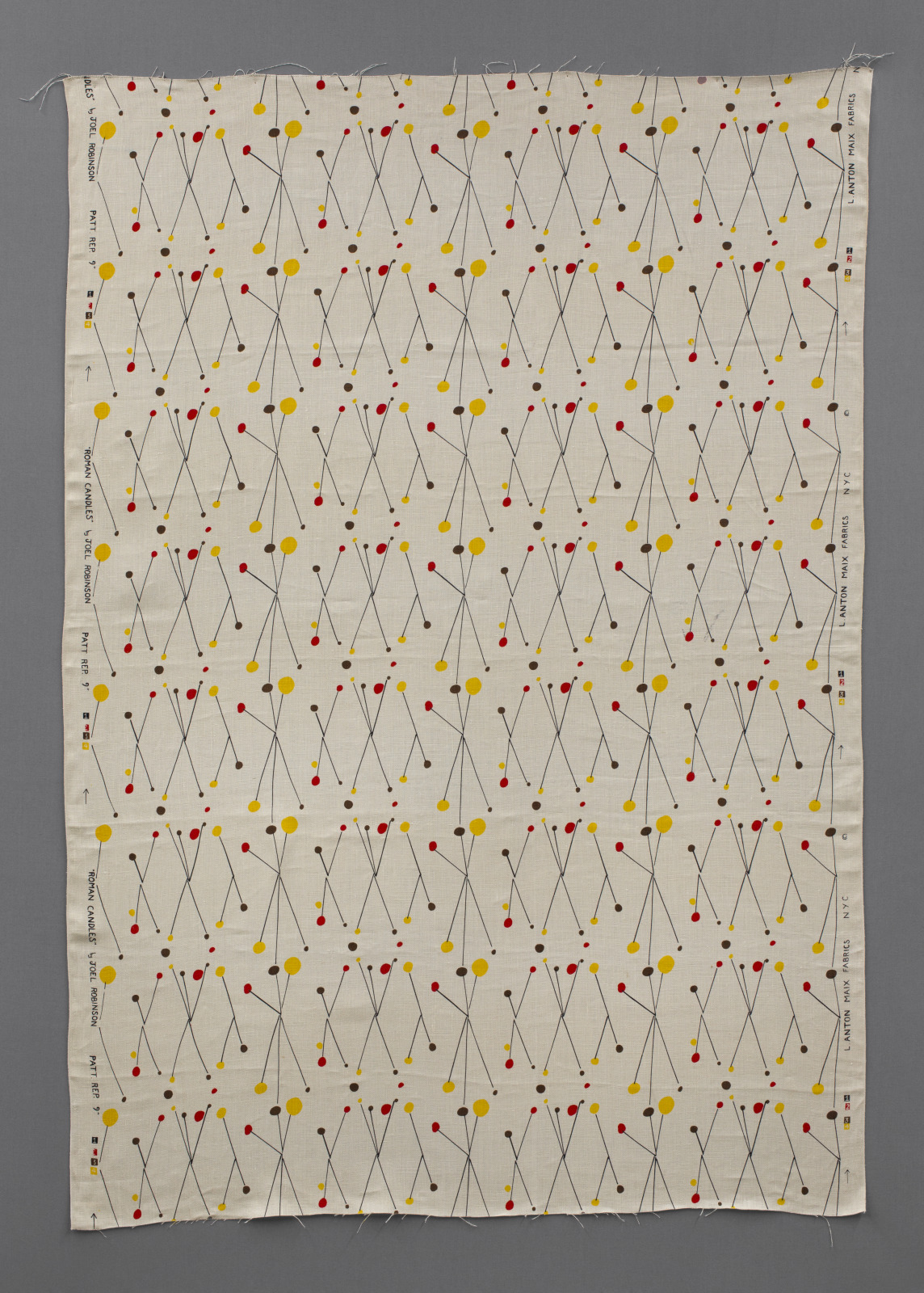
designed by A. Joel Robinson, American, 1915 - 2012; made by L. Anton Maix Fabrics; Roman Candles Textile, 1951–52; printed linen; 72 x 50 1/2 inches; Saint Louis Art Museum, Marjorie Wyman Endowment Fund 12:2020
Fireworks—bursts of orange, yellow, and brown—shower this screen-printed linen designed by A. Joel Robinson for L. Anton Maix Fabrics. Fittingly titled Roman Candles, this textile captures the painterly sensibility and architectural training of its multifaceted designer. Robinson is one of the first African American designers to have gained national attention in the mid-20th century. A 1951 Ebony magazine article described the “youthful New Yorker” as “the most promising newcomer in the creative textile design field.” That same year, Roman Candles was featured in the Museum of Modern Art and Chicago Merchandise Mart’s Good Design exhibitions.
June 17, 2021
Landscape, Sicily, Italy
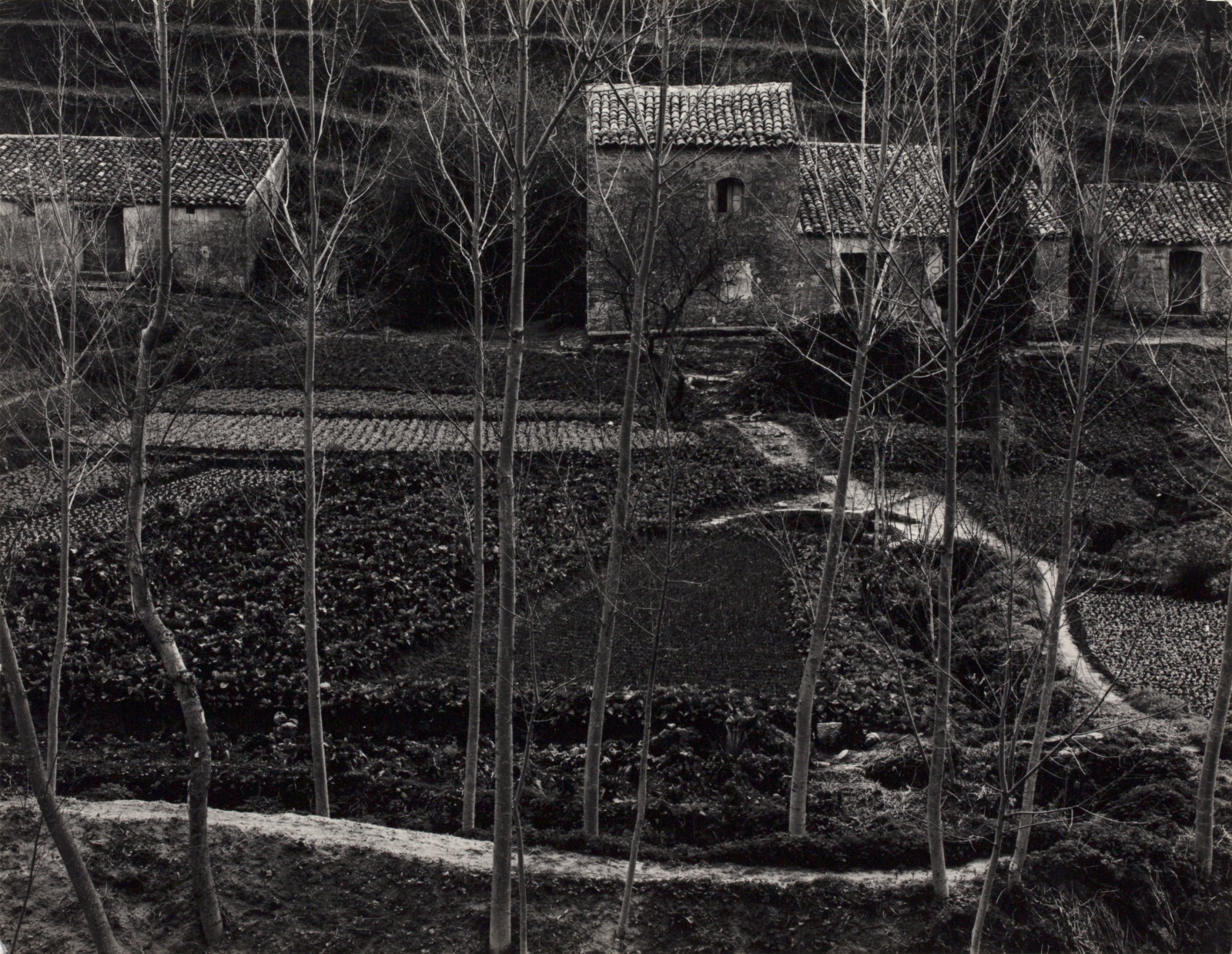
Paul Strand, American, 1890–1976; Landscape, Sicily, Italy, 1953; gelatin silver print; 4 5/8 x 5 7/8 inches; Saint Louis Art Museum, Funds given by the John Allan Love Charitable Foundation, Brian Catlin, Loring Catlin Sr., Leigh French, and Doris Yates, Gift of Stephen Bunyard, by exchange; Funds given by an anonymous donor in memory of Daniel Catlin, and funds given by Sam Weiss in memory of Jerome Levy 205:2019; © Paul Strand Archive, Aperture Foundation
In this photograph taken in the south of Italy, Paul Strand framed a broad vista so that it became an intimate and self-contained world. The thin trees and their leafless branches in the foreground organize the image, tying the stone farm buildings, pathways, and cultivated plots together in a dense pattern of the organic and geometric.
This view is a mediation on the potential for harmonious relationships between man and nature. Strand saw this condition as a potent alternative to the rapid changes brought on by the modern world in the mid-20th century. He had a humanistic interest in using photography to explore the distinctive character of places that he viewed as uncorrupted by industrial culture. Strand was interested in heightening our sense of reality, often favoring tightly composed views to intensify his subject’s visual significance.
June 10, 2021
Eye Dazzler

Diné (Navajo) artist; Eye Dazzler, c.1885; wool and dye; 79 3/4 x 50 7/8 inches; Saint Louis Art Museum, Gift of Mr. and Mrs. Alfred E. Goldman 493:2018
Diamonds radiate a series of cool, serrated lines. Across the red ground, a secondary network emerges and subtly echoes the bold contours of the overall design. These nuanced shifts between a brighter tone and a darker, cool red indicate the artist used yarns from at least two dye batches. Plied, industrially manufactured fibers yield crimson while warmer scarlet hues result from wool the artist dyed and spun herself.
In the last decades of the 19th century, Diné weavers used new materials to create complex, vibrant textiles such as this work. Aniline-dyed yarns initially arrived when the federal government supplied these materials to the Navajo Nation as part of annuity payments following the Treaty of Bosque Redondo in 1868. Later, weavers obtained these yarns as well as synthetic, powdered dyestuffs from trading posts on the Navajo reservation.
June 8, 2021
Sovereign
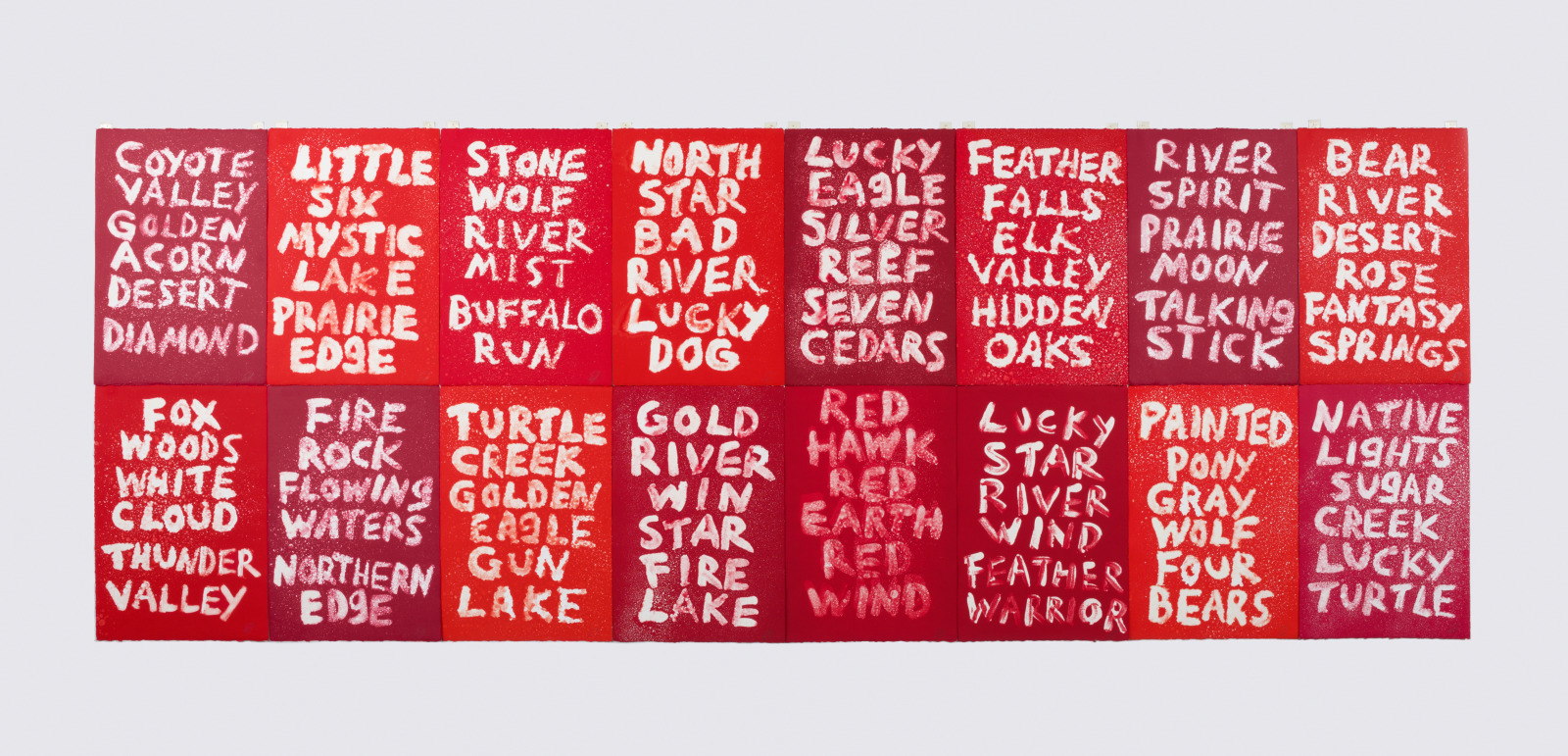
Hock E Aye Vi Edgar Heap of Birds, Cheyenne and Arapaho Nations, born 1954; printed by Charles Cohan, University of Hawaiʻi at Mānoa, Honolulu; Sovereign, 2017; monotype; Overall: 44 x 120 inches; Saint Louis Art Museum, The Sidney S. and Sadie Cohen Print Purchase Fund 483:2018a-p; © Hock E Aye Vi Edgar Heap of Birds
Words flow rhythmically across 16 red monotypes, each a separate unique print. A stippling effect eats away at the letters, destabilizing the initial meanings. “Talking Stick” and “Fire Rock” may seem to evoke settings and characters from Native American stories. However, the artist lifted these and other two-word phrases from Native gaming operations such as Lucky Star Casino, owned by the Cheyenne and Arapaho Tribes of Oklahoma.
In the 1980s, legal debates about Native gambling centered on the sovereign status of Native governments and reservations. Following passage of federal legislation in 1988, hundreds of Native nations opened gaming centers on tribally owned land, often along major highways in exurban areas. Casinos may fuel addiction and deepen individual poverty, though gaming profits frequently support cultural heritage programs and infrastructure projects.
June 5, 2021
Chief-Style Blanket, Second Phase Variant
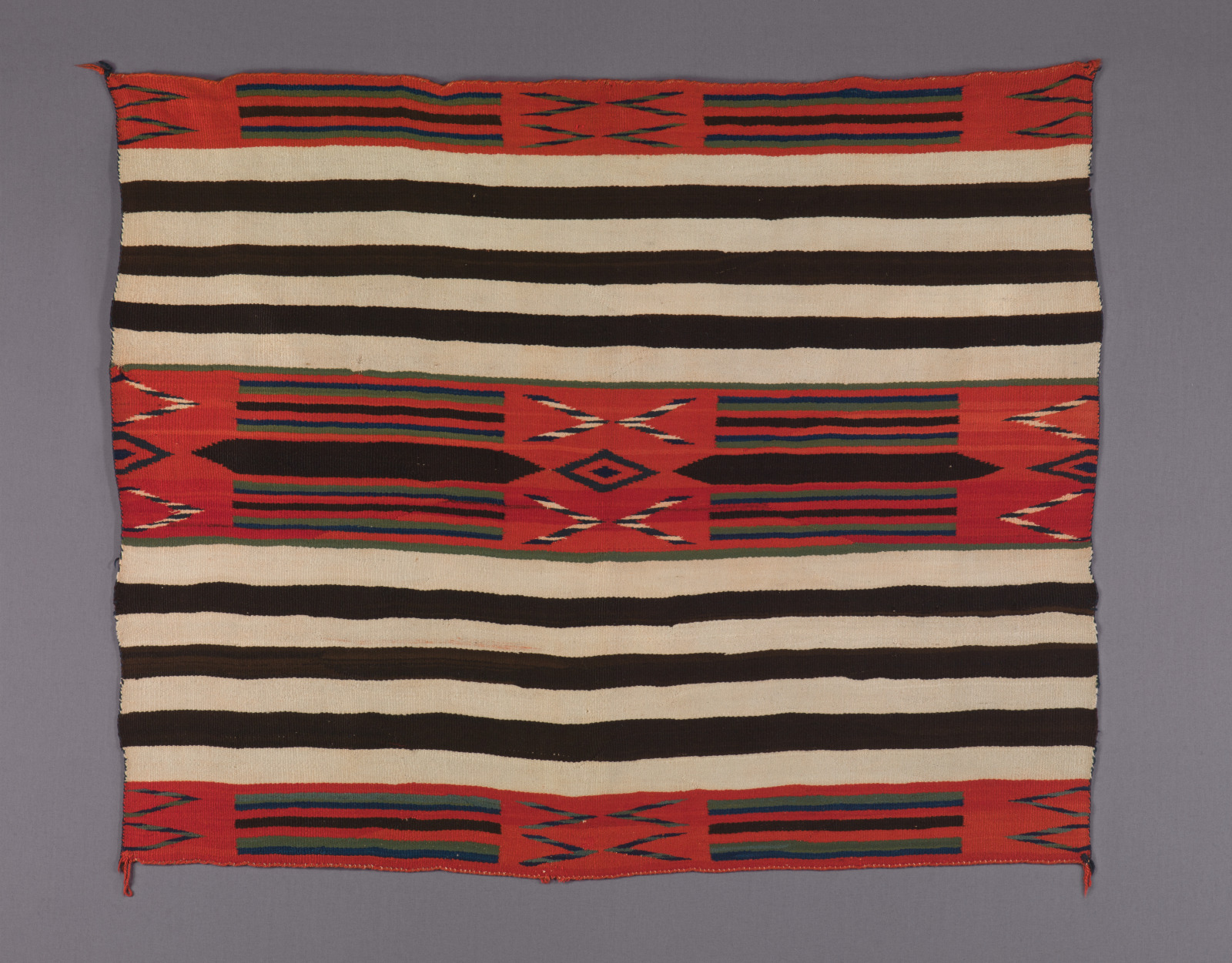
Diné (Navajo) artist; Chief-Style Blanket, Second Phase Variant, c.1880; wool and dye; 47 1/2 x 58 1/2 inches; Saint Louis Art Museum, Gift of Elissa and Paul Cahn 225:2017
On this blanket, linear designs in a range of colors float over a red ground. The massive red bands balance against thinner stripes in creamy white and dark brown, a pattern sometimes called a chief’s blanket. This term, however, is based on a historical misunderstanding about the use of these blankets among Indigenous peoples of the Great Plains earlier in the 19th century. Rather than marking rank, these textiles furnished Native peoples beyond the Southwest with warm outerwear, striking designs, and a sense of the unfamiliar that is often associated with luxury items from distant places of origin. The green yarns here help date this blanket to the late 19th century, an era when Diné weavers continued experimenting with this long-running style.
June 1, 2021
Detached III

Rachel Whiteread, English, born 1963; Detached III, 2012; concrete and steel; 77 1/4 × 67 1/2 × 115 3/4 inches; Saint Louis Art Museum, Museum Purchase 35:2017; © Rachel Whiteread
-
See and Hear More
![352017dig_6_o2]()
Rachel Whiteread, English, born 1963; Detached III (detail), 2012; concrete and steel; 77 1/4 × 67 1/2 × 115 3/4 inches; Saint Louis Art Museum, Museum Purchase 35:2017; © Rachel Whiteread
![352017dig_10_o2]()
Rachel Whiteread, English, born 1963; Detached III (alternate view), 2012; concrete and steel; 77 1/4 × 67 1/2 × 115 3/4 inches; Saint Louis Art Museum, Museum Purchase 35:2017; © Rachel Whiteread
![352017dig_11_o2]()
Rachel Whiteread, English, born 1963; Detached III (alternate view), 2012; concrete and steel; 77 1/4 × 67 1/2 × 115 3/4 inches; Saint Louis Art Museum, Museum Purchase 35:2017; © Rachel Whiteread
Hear Expert Commentary
-
Transcript
Speaker:
Simon Kelly
Curator of Modern and Contemporary Art
Saint Louis Art MuseumDetached III gives permanent concrete form to the empty space within a humble, prefabricated garden shed of a type available in any home improvement store. Whiteread has spoken about her aim “to mummify the air” within architectural structures. When seen from a distance, the sculpture is very minimalist in design. Yet, close up, one can clearly see the imprint of the shed’s wood grain, lending the work a greater sense of intimacy. The imprints of door handles and windows also suggest a latent human presence. Whiteread’s choice of title, Detached III, in fact, relates to her interest in the idea of the shed as a space where artists and writers have gone to find solitary retreat.
Detached III is an example of what Whiteread has called her “shy sculptures,” because she has generally sited them remotely and inconspicuously, often requiring a journey to visit. This sculpture is located alone on the southwest side of the building to reflect this intention. In order to make her sculpture, Whiteread and her team lifted up the shed on all sides on supports and then sprayed its interior from below with liquid concrete. The sculpture is therefore hollow, although with a steel framework, it still weighs the significant amount of 12,125 pounds or 5,500 kilograms. It is a unique piece and relates to a small series of sculptures by the artist that represent other prefabricated sheds.
Detached III was purchased by the Museum in 2017 and complements the Museum’s existing collection of sculpture by prominent British artists such as Henry Moore, Antony Caro, and Andy Goldsworthy.
Detached III gives concrete form to the empty or negative space within an everyday, prefabricated backyard shed (see and hear more above). This sculpture sums up the signature working process of prominent English artist Rachel Whiteread, which she has described as “mummifying the air.” Whiteread captures the intricate wood grain imprint of the shed’s door and sides, as well as the impression of windows. The work’s title alludes to the artist’s view of the garden shed as a space for quiet thought and reclusive study.
May 29, 2021
Morning Hair
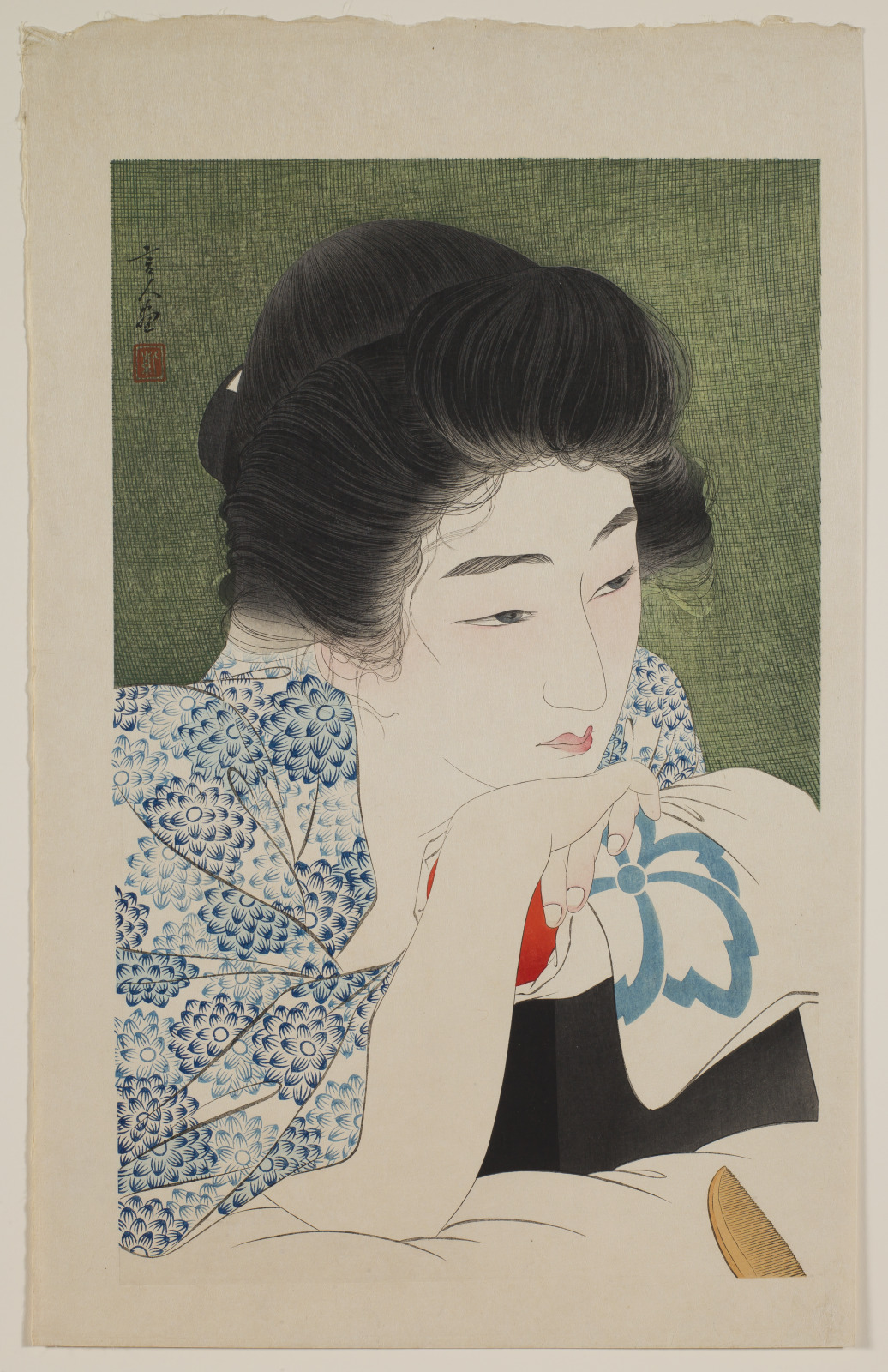
Torii Kotondo, Japanese, 1900–1976; Morning Hair, 1930; color woodblock print; sheet: 19 1/8 x 11 7/8 inches; Saint Louis Art Museum, The Langenberg Endowment Fund 24:2017; ©Torii Kotondo
The title of this print, asanegami, meaning “sleep-tangled hair,” alludes to a verse from the 8th-century anthology of poems Manyōshū. The poem’s main character imagines his lovelorn wife refusing to comb her hair in his absence. Torii Kotondo modernized the theme with a young, fashionably dressed woman lying in bed with unkempt hair, brooding upon her lover’s departure. The slightly risqué subject, the striking green of the mosquito net in the background, and the exquisitely detailed execution make this one of Kotondo’s most memorable prints.
May 28, 2021
Fresh News (Men and Machines)
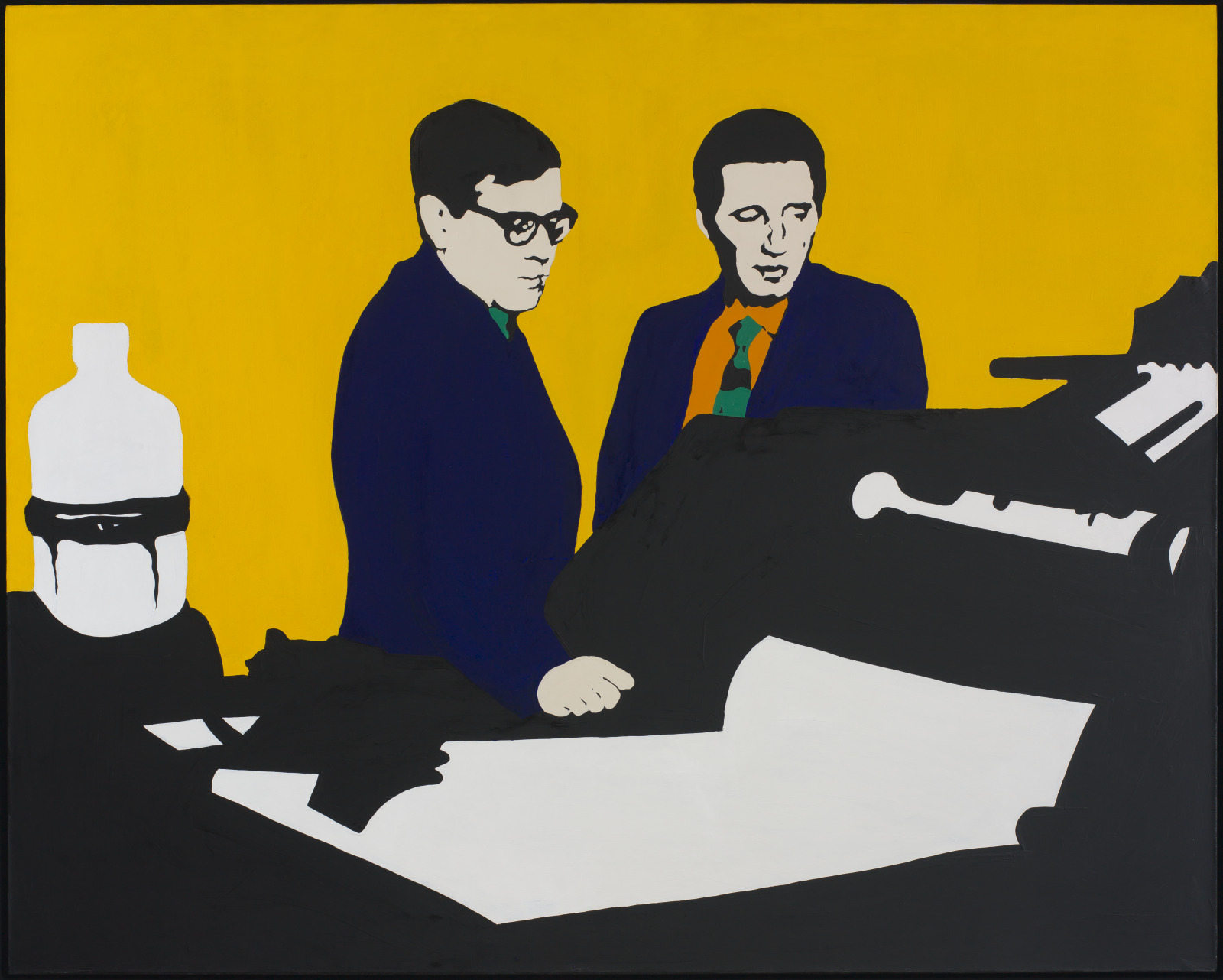
Rosalyn Drexler, American, born 1926; Fresh News (Men and Machines), 1965; acrylic and paper collage on canvas; 40 × 50 inches; Saint Louis Art Museum, Siteman Contemporary Art Fund 112:2017; © 2021 Rosalyn Drexler / Artists Rights Society (ARS), New York
In this image, taken from a photograph and abstracted (learn more), two men in suits supervise a new kind of commercial printing press, the Heidelberg Rotaspeed. Painting in large patches of flat, primary colors, artist Rosalyn Drexler omitted any clues to the figures’ identities, conflating these men with the machine they operate.
In her Men and Machines series, Drexler demystified the promises of 1960s technological progress and corporate capitalism. Exposing lingering anxieties of the Cold War era, such as the loss of human agency in the face of industrial advances, Drexler’s paintings undercut the false confidence of postwar American society in affluence and worldwide leadership.
May 22, 2021
Power Figure (nkisi nkondi)
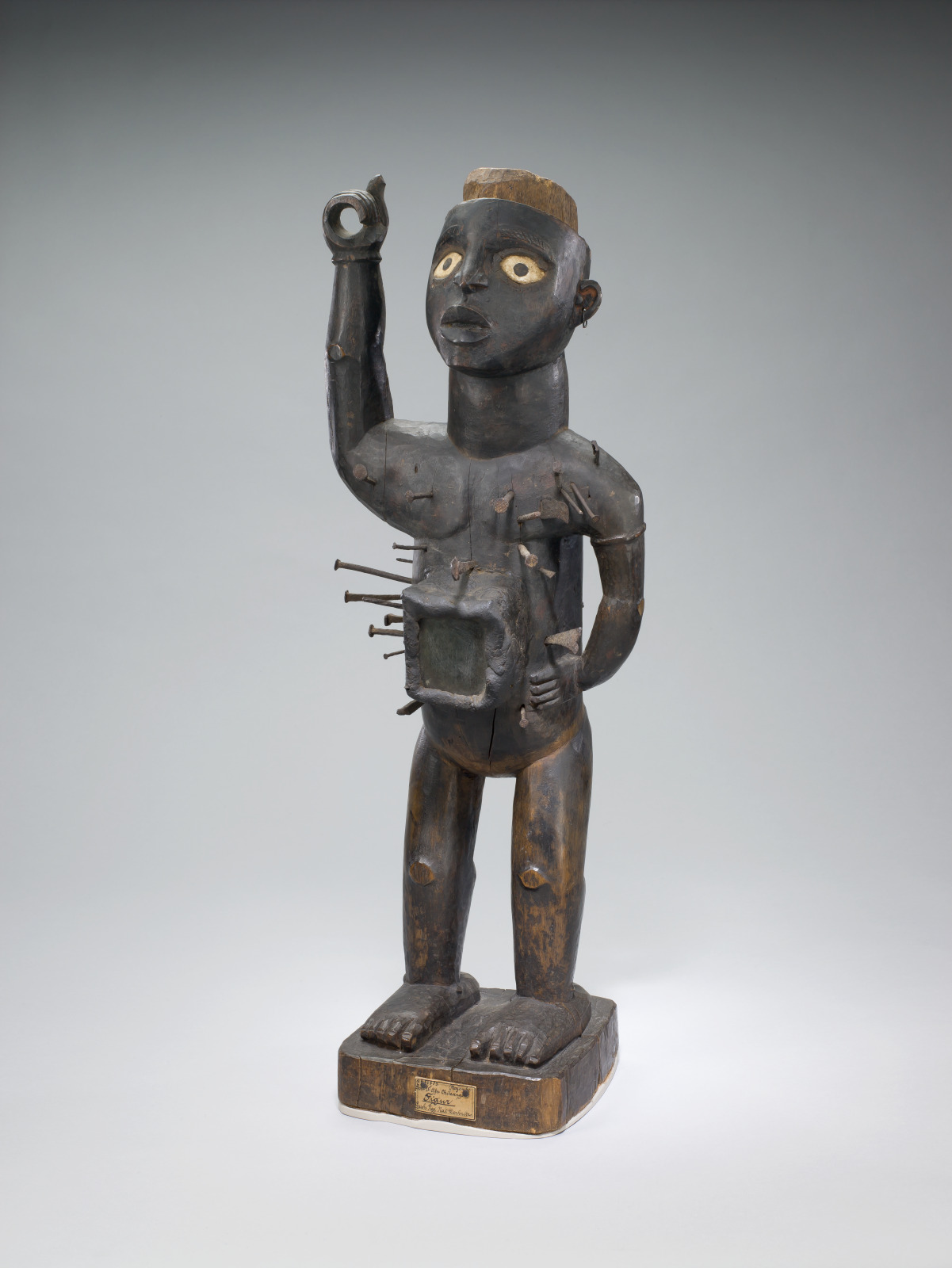
Kongo artist, Republic of the Congo; Power Figure (nkisi nkondi), before 1908; wood, iron, porcelain, glass, resin; height: 25 1/4 inches; Saint Louis Art Museum, Friends Fund 10:2016
. . . [T]he nganga pounds on the nkisi . . . to awaken it, that it should arise and go.
—BABUTIDI TIMOTIO, 1916
With alert eyes, head raised, and right arm thrust upward, this figure embodies the character of a hunter. Each iron blade or nail across the torso attests to specific moments when the nganga, a ritual specialist, called the figure into action or “to the hunt.” Directed by the nganga, the figure served purposes of healing, protection, or resolution on a client’s behalf. The figure’s white porcelain eyes, sensitively carved face, and mirrored belly emphasize the body’s spiritual power centers according to Kongo belief. These are also the sites where the nganga inserted plant, mineral, and other matter considered to be medicinal and powerful. The mirror, suggesting the surface of water, evokes Kongo conceptualization of the ancestral realm.
May 19, 2021
Din, Une Trés Belle Négresse 1
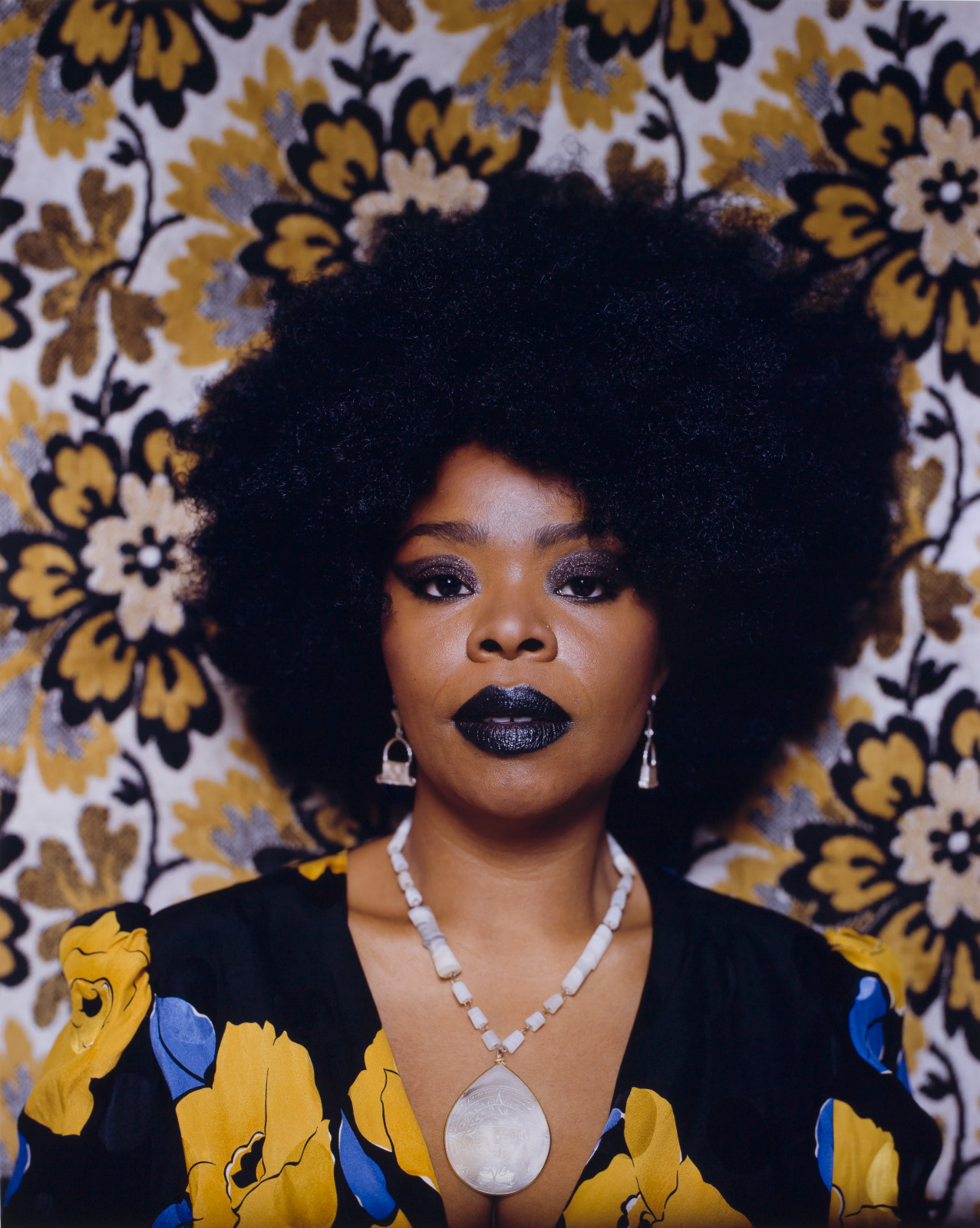
Mickalene Thomas, born 1971; Din, Une Trés Belle Négresse 1, 2012, printed 2015; chromogenic print; 60 x 50 inches; Saint Louis Art Museum, Funds given by Margery Campbell Fort in honor of Jeffrey Fort’s birthday 134:2015; © 2021 Mickalene Thomas / Artists Rights Society (ARS), New York
In this photograph, Mickalene Thomas captured the strength of the woman’s gaze, her halo of dark hair, and her made-up lips. The vibrant patterns of her dress and the wall textile background compliment her features. The model, Din, was a medical student who regularly posed for Thomas, yet the portrait depicts a character created by the artist through her staging of the setting and costume. Thus, the image becomes a more universal representation of a woman exuding sensual beauty, confidence, and self-awareness.
Thomas’s title, French for Din, A Very Beautiful Black Woman, acknowledges an earlier era with its use of the historically charged term “négresse.” Yet the title demonstrates a desire to create empowering associations with such words. In particular, Thomas employed a visual vocabulary that looks back to the 1970s—an era defined by powerful new images of Black beauty found in popular media.
May 18, 2021
Migrant Mother, Nipomo, CA
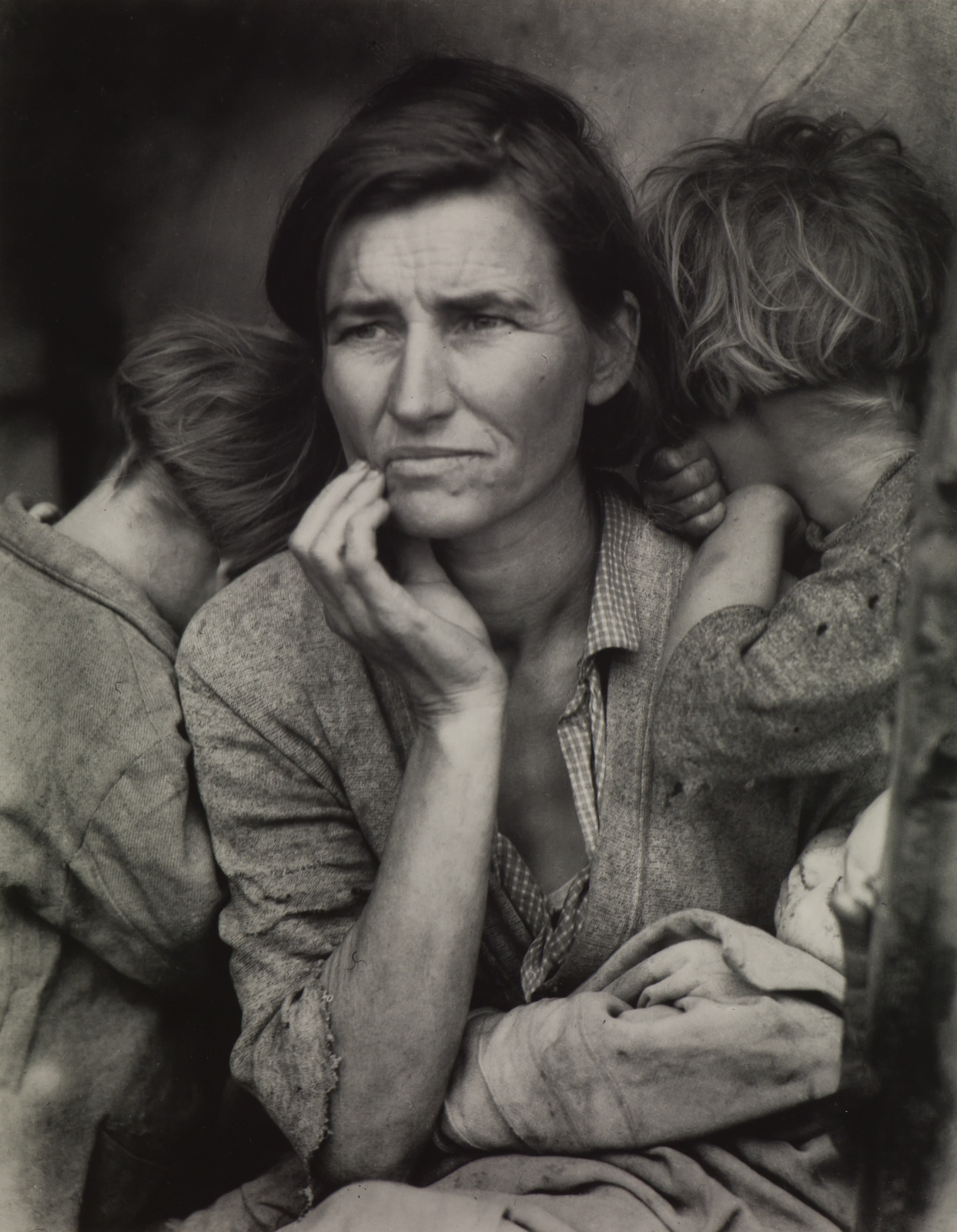
Dorothea Lange, American, 1895–1965; Migrant Mother, Nipomo, CA; 1936, printed c.1952; gelatin silver print; 13 1/2 x 10 1/2 inches; Saint Louis Art Museum, Gift of Charles A. Newman honoring Elizabeth, his wife and treasured guide to art 11:2014
This photograph, taken in 1936 in the central valley of California, became a symbol of the plight of migrant farm workers during America’s Great Depression (1929–1939). The image taps into both the anguish and perseverance of a mother trying to care for her children in a time of economic, social, and ecological crisis. Navigating between the artistic and the journalistic, Dorothea Lange excelled at distilling complex situations into powerful and empathetic black-and-white images with the hopes of motivating social and economic reform.
Lange ran a successful portrait studio in San Francisco beginning in 1919, but with the onset of the Great Depression, she was moved to photograph people that she saw standing in breadlines due to the dire conditions. These works led her to a job with the federal Farm Security Administration, and she crisscrossed the western and midwestern United States by automobile to record the struggles of those most affected by the Depression.
May 16, 2021
Louis XIV, King of France

François Girardon, French, 1628–1715; Louis XIV, King of France, 1690s; bronze; 21 1/2 x 22 3/8 x 9 7/8 inches, with ebony base: 27 7/8 x 22 3/8 x 9 7/8 inches; Saint Louis Art Museum, Funds given by Mr. and Mrs. John Peters MacCarthy, Friends Fund, the Edwin and Betty Greenfield Grossman Endowment, Mr. Christian B. Peper, Lisa and Allan Silverberg, and Museum Purchase, gift of Mrs. Mahlon Wallace and Leicester B. Faust, Mr. Horace Morison, Mrs. Mark C. Steinberg, Mr. Sydney Shoenberg Sr., an anonymous donor, Mr. J. Boyd Hill in memory of his wife, Barbara Johnson Hill, and Friends Fund, by exchange 1118:2010
This bronze bust presents French king Louis XIV (reigned 1643–1715) as a monarch of stately presence and imperial demeanor. The combination of turned head, diagonal sweep of fabric folds, and intricate hairstyle make for an assertive and dynamic likeness. Louis XIV established the court at Versailles outside of Paris in the 1680s, making it a model for the splendor and elegance that defined princely palaces into the following century. Sculptor François Girardon created several portraits of the king and succeeded in capturing a commanding individual.
May 15, 2021
Shirt
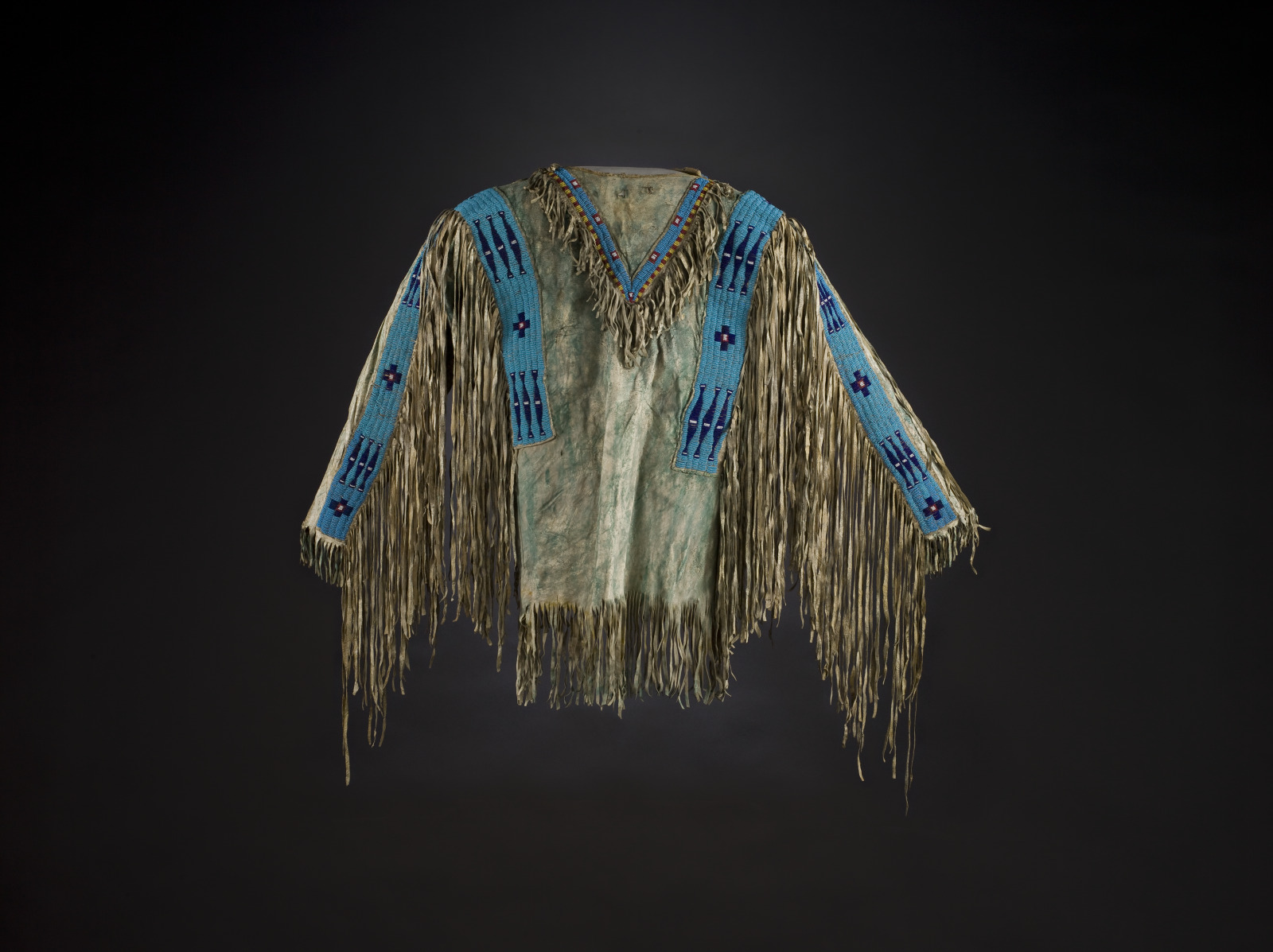
Northern Plains artist; Shirt, c.1890; tanned hide, glass beads, and pigment; with arms outstretched: 27 x 58 inches; Saint Louis Art Museum, The Donald Danforth Jr. Collection, Gift of Mrs. Donald Danforth Jr. 37:2012
Every detail of this honorary warrior’s shirt signifies important artistic and cultural principles in Native Plains art. Women skillfully decorated the shoulder and sleeve strips and the triangular neck flap with beadwork. The elongated diamonds and four directional designs reflect earlier quillwork patterns and visually communicate the continuity of Native design. The shirt’s blue paint and lavish fringe convey power and force, appropriate for the most highly regarded male family and community leaders. These men possessed esteemed characteristics in Plains society—compassion, bravery, generosity, and wisdom—and earned the privilege to wear this garment.
May 13, 2021
Bust of Emperor Caracalla
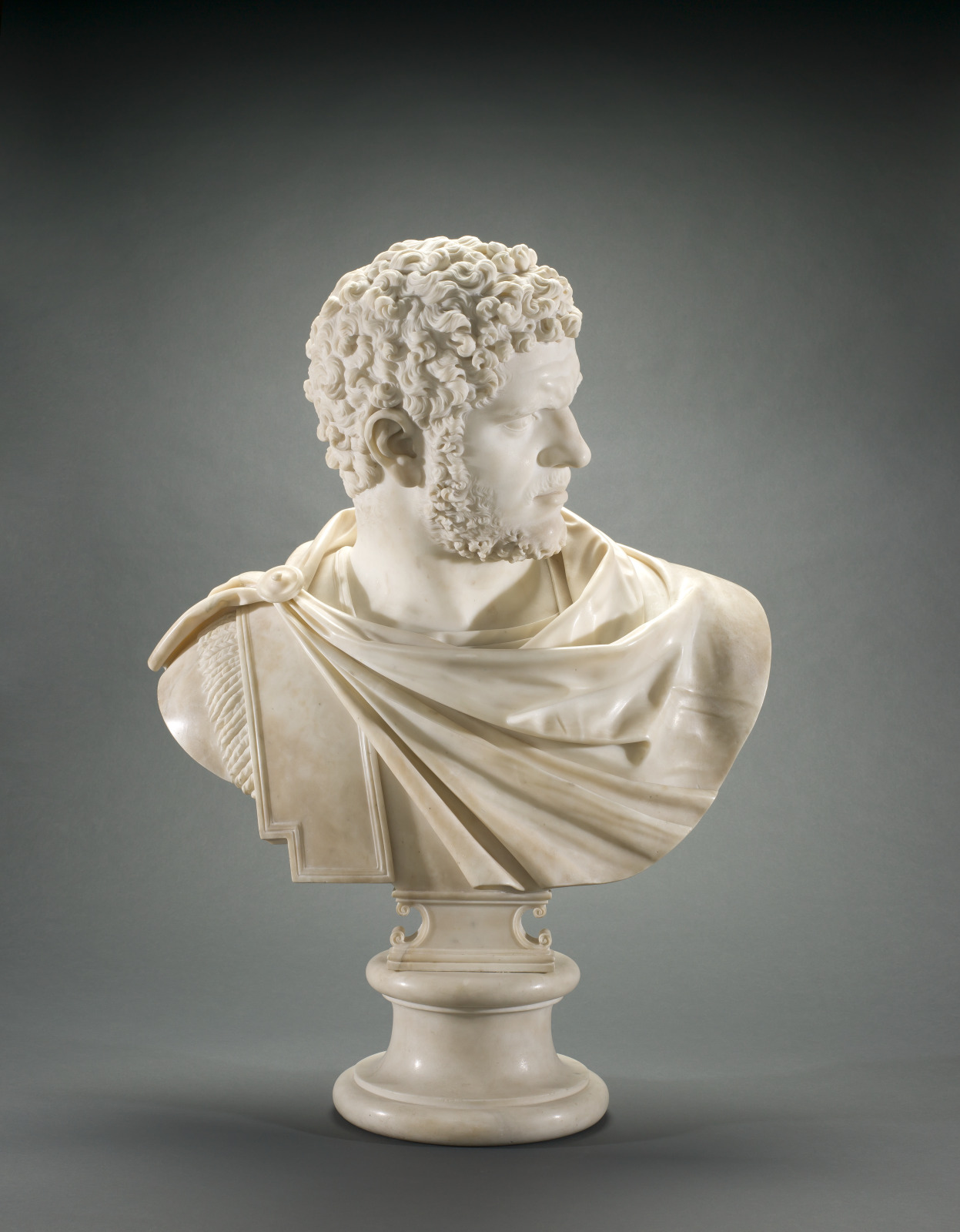
Joseph Claus, German, 1718–1788; Bust of Emperor Caracalla, 1757; marble; 28 3/4 x 20 x 8 inches; Saint Louis Art Museum, Museum Purchase 19:2013
This bust is modeled after a famous ancient sculpture of Caracalla, a notorious 3rd-century Roman emperor. The stern features and steely gaze embody the cruelty and abuse of power for which Caracalla was known. Creating busts of ancient rulers and dignitaries was popular among 18th-century sculptors working in Rome who made copies for English travelers. Sculpture Hall, in the center of the Saint Louis Art Museum’s main building, was inspired by the expansive Roman public baths that Caracalla built.
May 12, 2021
Untitled (seascape)
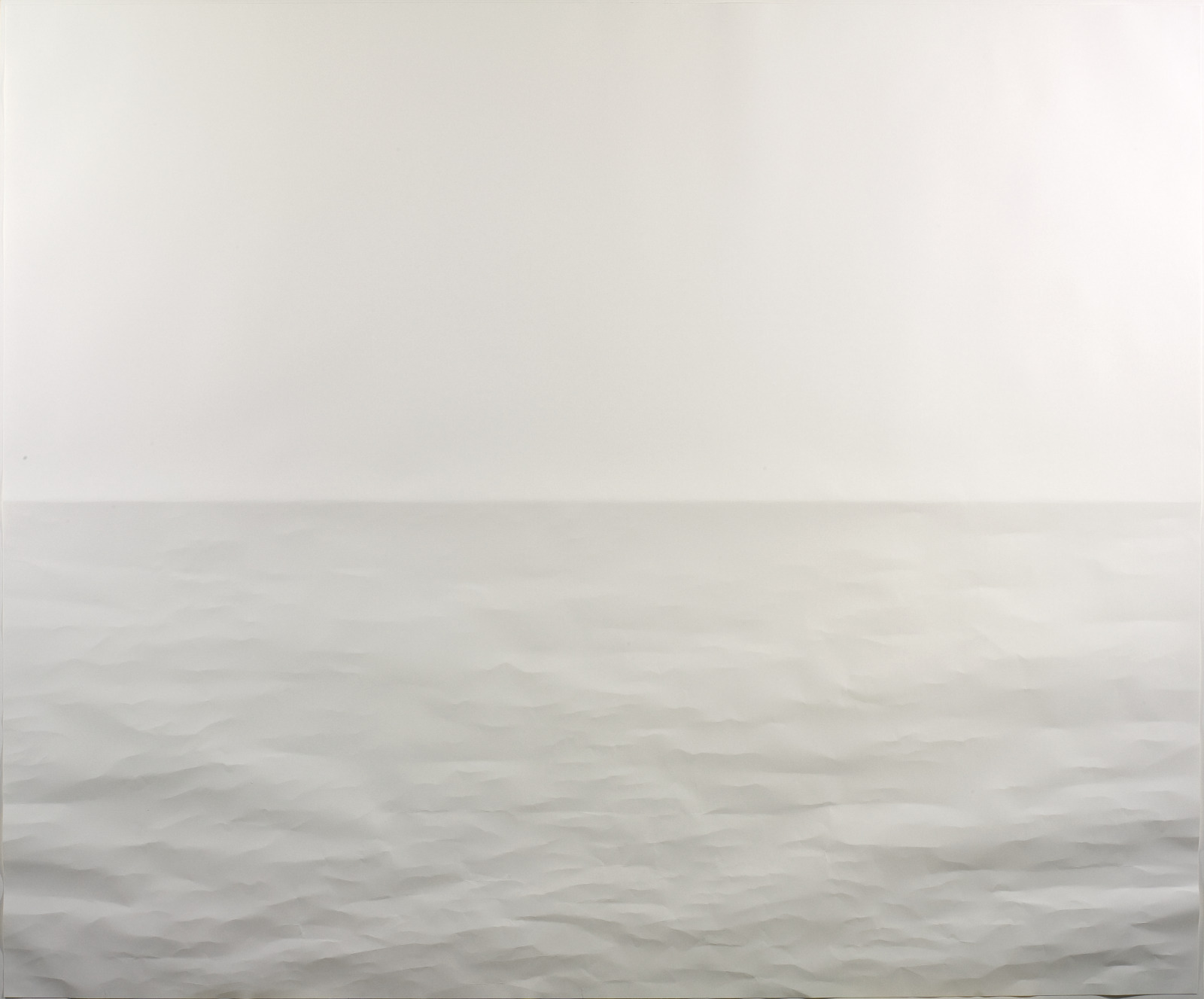
Tom Friedman, American, born 1965; Untitled (seascape), 2012; paper; 60 x 72 inches; Saint Louis Art Museum, Museum Funds 32:2012; © Tom Friedman, Courtesy of the artist, Luhring Augustine, New York, and Stephen Friedman Gallery, London
Using only a large sheet of white paper, Tom Friedman created this view of the sea by folding the horizon line and adding smaller creases to imitate the appearance of rippling water. This work exemplifies Friedman’s practice of painstakingly manipulating whatever medium he chooses, from pencil, pen, and clay to pencil shavings, hair, and Styrofoam. Friedman, who was born and raised in St. Louis, turns the centuries-old tradition of the painted seascape on its head by creating this view without any additional media, except for the paper itself.
May 10, 2021
Prunus Vase (maebyeong)

Prunus Vase (maebyeong) with Design of Lotus Sprays, 12th century; Korean, Goryeo dynasty; stoneware with incised decoration under celadon glaze; 12 1/4 x 7 1/2 inches; Saint Louis Art Museum, Museum Purchase, by exchange 137:2011
-
See Detail
![prunusvasedetailOOTD]()
Prunus Vase (maebyeong) with Design of Lotus Sprays (detail), 12th century; Korean, Goryeo dynasty; stoneware with incised decoration under celadon glaze; 12 1/4 x 7 1/2 inches; Saint Louis Art Museum, Museum Purchase, by exchange 137:2011
This bottle is beautifully formed with the classic round shoulder that gradually swells from the narrow, splayed base. The constricted neck is surmounted by a shallow, incurved, and thin lip. Although the carved decoration is subtle (see detail above), it enhances the shape, drawing attention to the curve of the shoulder with a four-trefoil cloud collar radiating from the neck. The decorative collar is infilled with leafy stems within a double-line conforming border.
Four large incised floral sprays of alternating lotus and peony on thick stems are incised on the sides of the vessel. Upright overlapping leaves encircle the base above a hastily carved zigzag band. The smooth celadon glaze is a bluish-tinged pale sea-green color with an overall crackle and covers the flat base within the unglazed foot rim where the gray stoneware body is visible.
May 9, 2021
Jack-in-the-Pulpit Vase
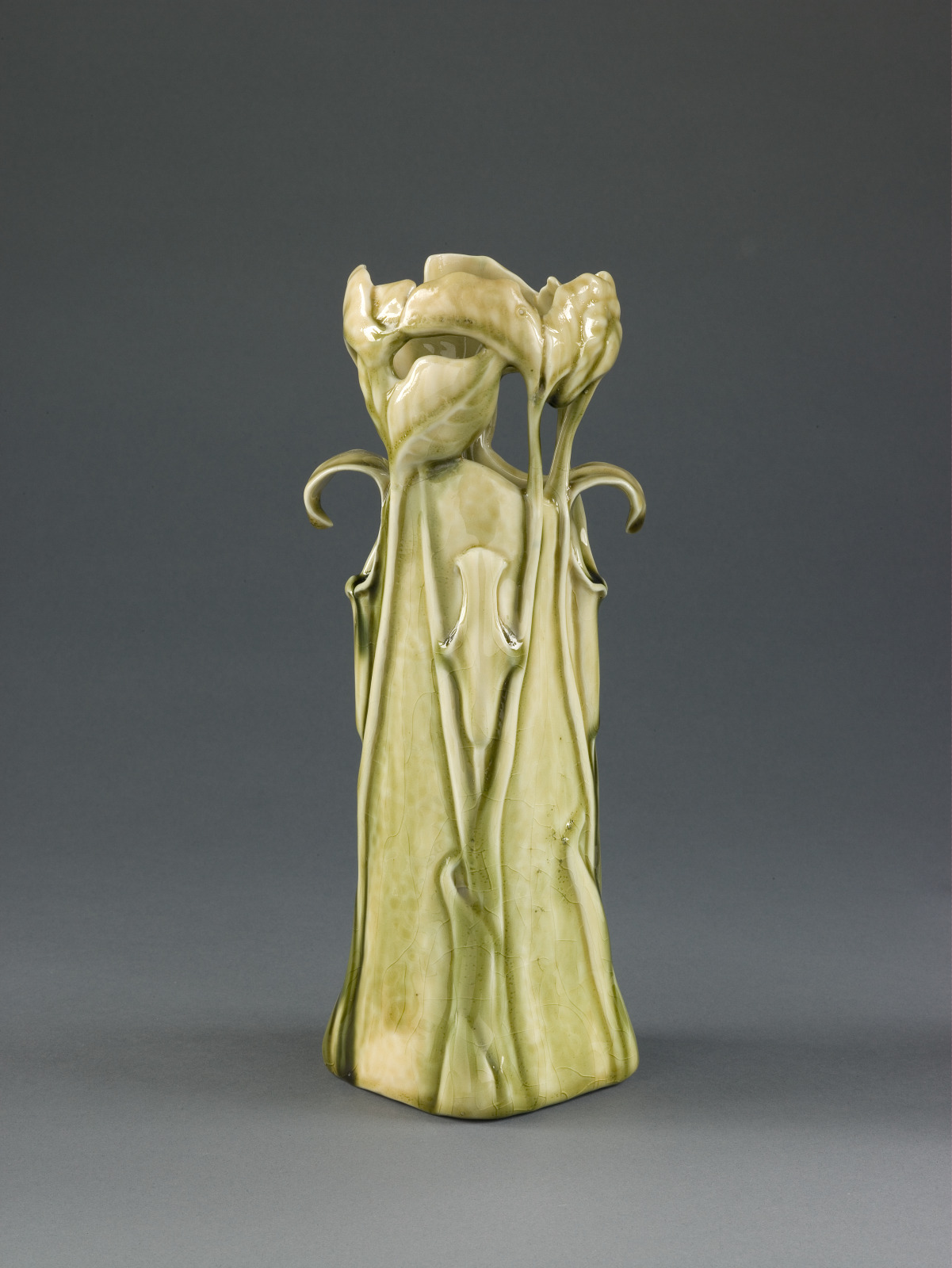
made by Tiffany Studios, Corona, New York, 1900–1938; Jack-in-the-Pulpit Vase, c.1905; glazed earthenware; 11 1/4 x 4 3/4 x 4 1/2 inches; Saint Louis Art Museum, Marjorie Wyman Endowment Fund, the E. Reuben and Gladys Flora Grant Charitable Trust, The Lopata Endowment Fund; funds given by the Decorative Arts Society, gift of Mr. and Mrs. Harvard Hecker, and bequest of Richard Brumbaugh, by exchange 12:2011
One of Tiffany’s most original ceramic designs, this cylindrical vase replicates the jack-in-the-pulpit, a native woodland plant of unusual form. Visible at each side is the projecting curved flap called a spathe that conceals a flower spike, or spadix, within a tubular sheath. That daring design element is matched by clusters of leaves around the rim, which are extensively pierced and supported only by tendril-thin stems. The vase’s pale green glaze helps to define the low-relief stems and leaves modeled on the body. Like many other Tiffany designs in glass, bronze, and enamel, nature was the starting point for their ceramics. Following several years of experimentation, Tiffany seized the opportunity of the 1904 St. Louis World’s Fair for the first public exhibition of the firm’s art pottery.
May 5, 2021
Richard Bellamy Seated
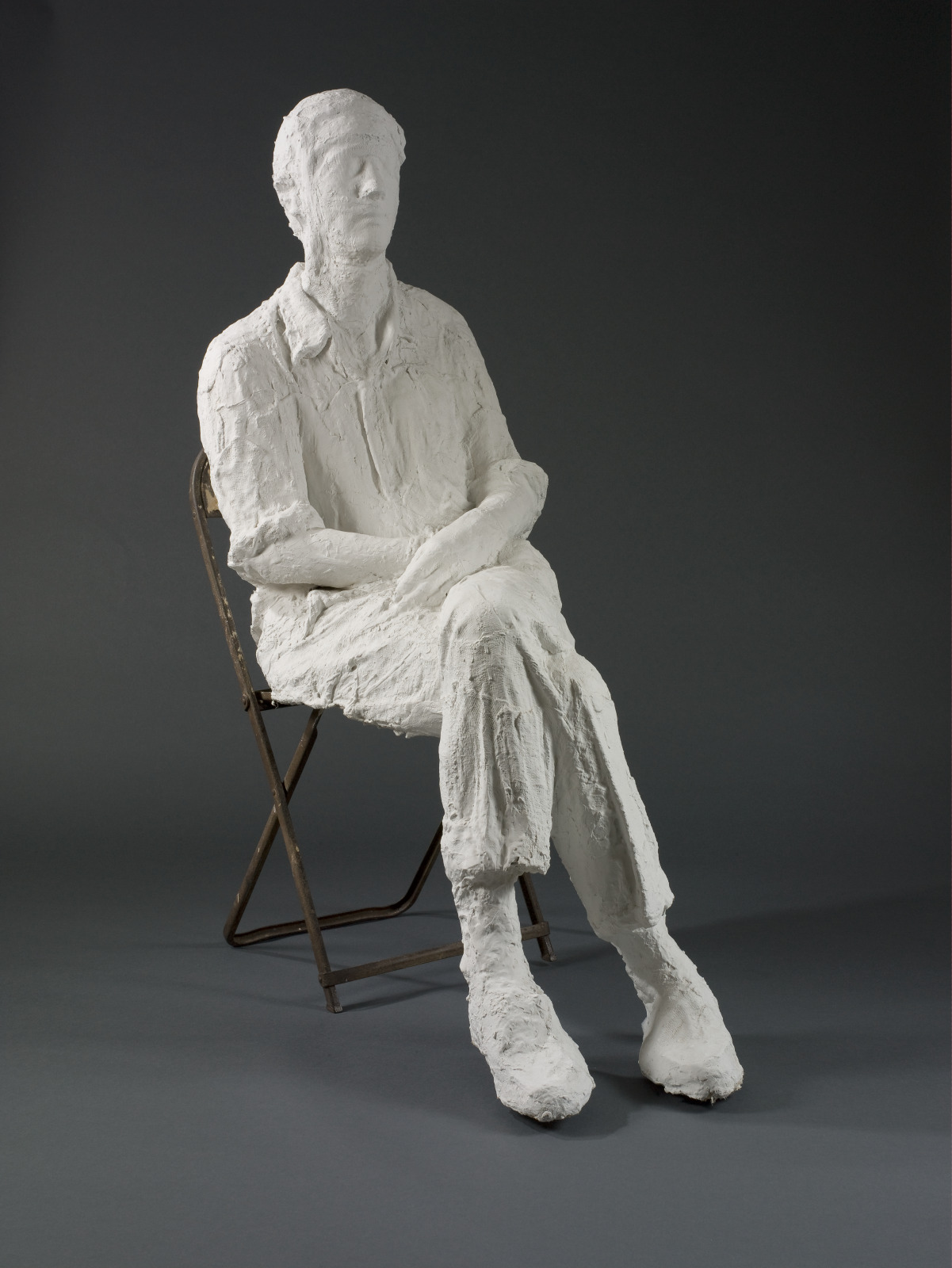
George Segal, American, 1924–2000; Richard Bellamy Seated, 1964; plaster and metal; 49 3/4 x 39 1/2 x 20 inches; Saint Louis Art Museum, Gift of Judith Aronson in memory of Adam Aronson 9:2010a,b; © 2021 The George and Helen Segal Foundation / Licensed by ARS, New York, NY
George Segal depicted his friend and New York art dealer Richard Bellamy in a casual pose. With shoulders slightly slumped and arms and legs crossed, Bellamy’s body rests nonchalantly on a metal folding chair. This sculpture was created using Segal’s characteristic method of applying cotton bandages dipped in plaster onto the faces and bodies of his chosen models—usually family, friends, and neighbors. As the director of the short-lived but influential Green Gallery in New York, Bellamy showcased Segal and a number of Pop artists, including Andy Warhol.
May 3, 2021
The Great Naval Battle outside the Harbor of Port Arthur: Great Victory of Our Troops on the Early Dawn of March 10, 1904

Ōkura Kōtō, Japanese, 1873–1910; Kimura Toyokichi, Japanese, active late 19th–early 20th century; The Great Naval Battle outside the Harbor of Port Arthur: Great Victory of Our Troops on the Early Dawn of March 10, 1904, 1904; color woodblock prints; hexaptych as mounted: 15 13/16 x 56 9/16 inches; Saint Louis Art Museum, Gift of Mr. and Mrs. Charles A. Lowenhaupt 33:2009a-f
The brutal weather conditions under which this naval battle was fought provided an opportunity for the artist to create one of the most memorable images of the war. The white of the searchlights and exploding torpedoes provide high contrast with the deep black of the night sky and the gray blue of the water. Falling snow is represented by the liberal scattering of gofun (oyster shell powder). Little is known about the artist Ōkura Kōtō, other than that he was a student of Ogata Gekkō.
Following the preemptive strikes by the Imperial Japanese Navy against the Russian Pacific Fleet on February 8–9, 1904, a number of naval battles broke out in the waters surrounding Port Arthur. This six-panel print depicts the battle on March 10, 1904, outside the harbor, which resulted in the sinking of two Russian destroyers.
May 2, 2021
Solid C2 Chair
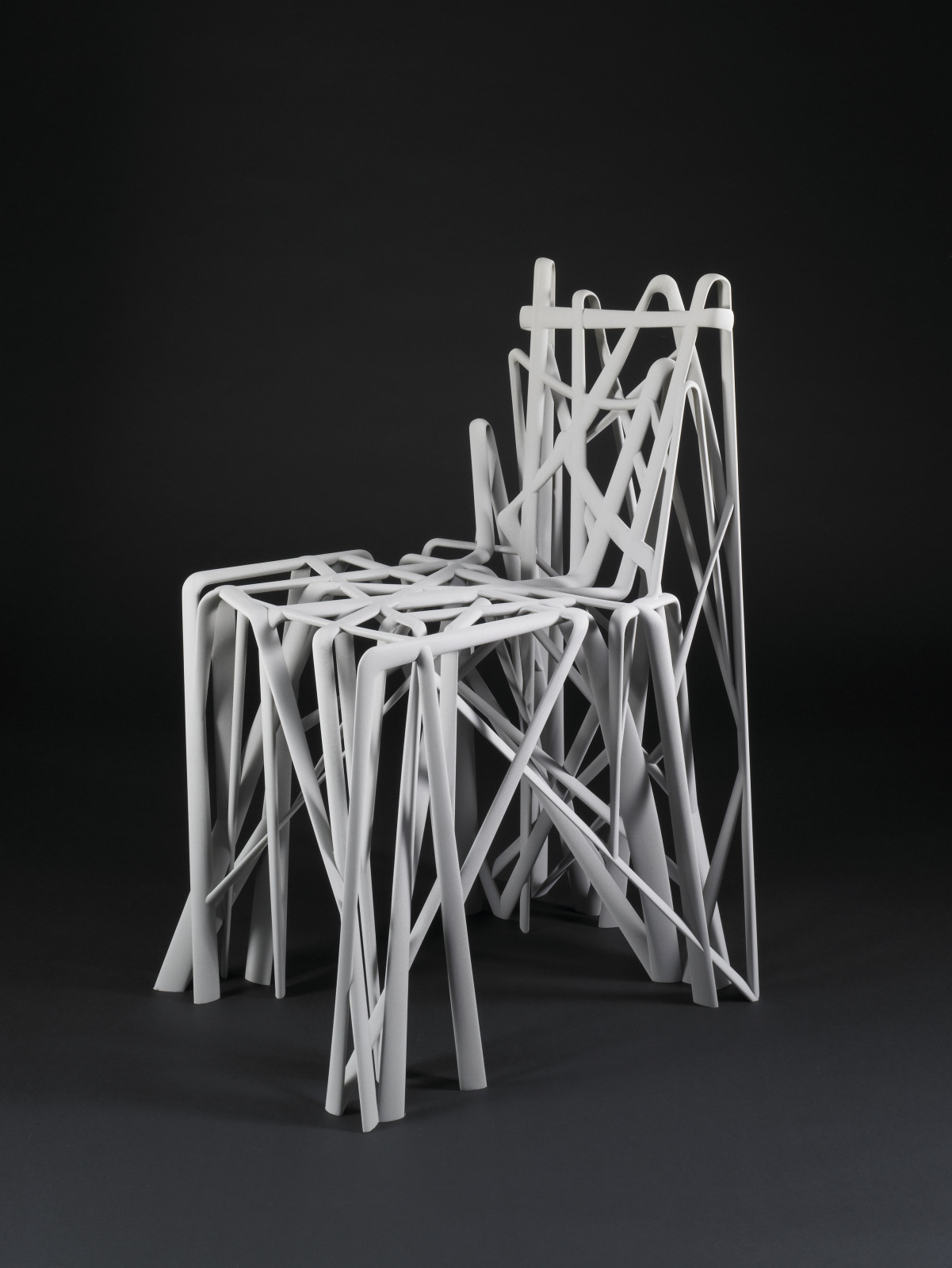
Patrick Jouin, French, born 1967; manufactured by Materialise, Leuven, Belgium; Solid C2 Chair, 2004, manufactured 2007; painted epoxy resin; 30 1/2 x 15 1/2 x 20 inches; Saint Louis Art Museum, Funds given by Zoe and Max Lippman in honor of Cara McCarty 12:2007; © Patrick Jouin
French industrial designer Patrick Jouin uses the 3-D printing technique known as stereolithography to produce furniture such as this chair. Jouin drew the chair in a computer program which converts the design into a digital 3-D model. The computer files are then connected to a laser that “prints” the chair, layer by layer, in liquid resin. Contact between the laser beam and resin cures the resin, hardening it to produce a 3-D object that is built up in strata like a stalagmite. The poetic inspiration for C2 was nature, the patterns created by criss-crossing blades of grass that bend, twist, fold, and turn corners.
April 28, 2021
Chartres, Flying Buttresses at the Crossing
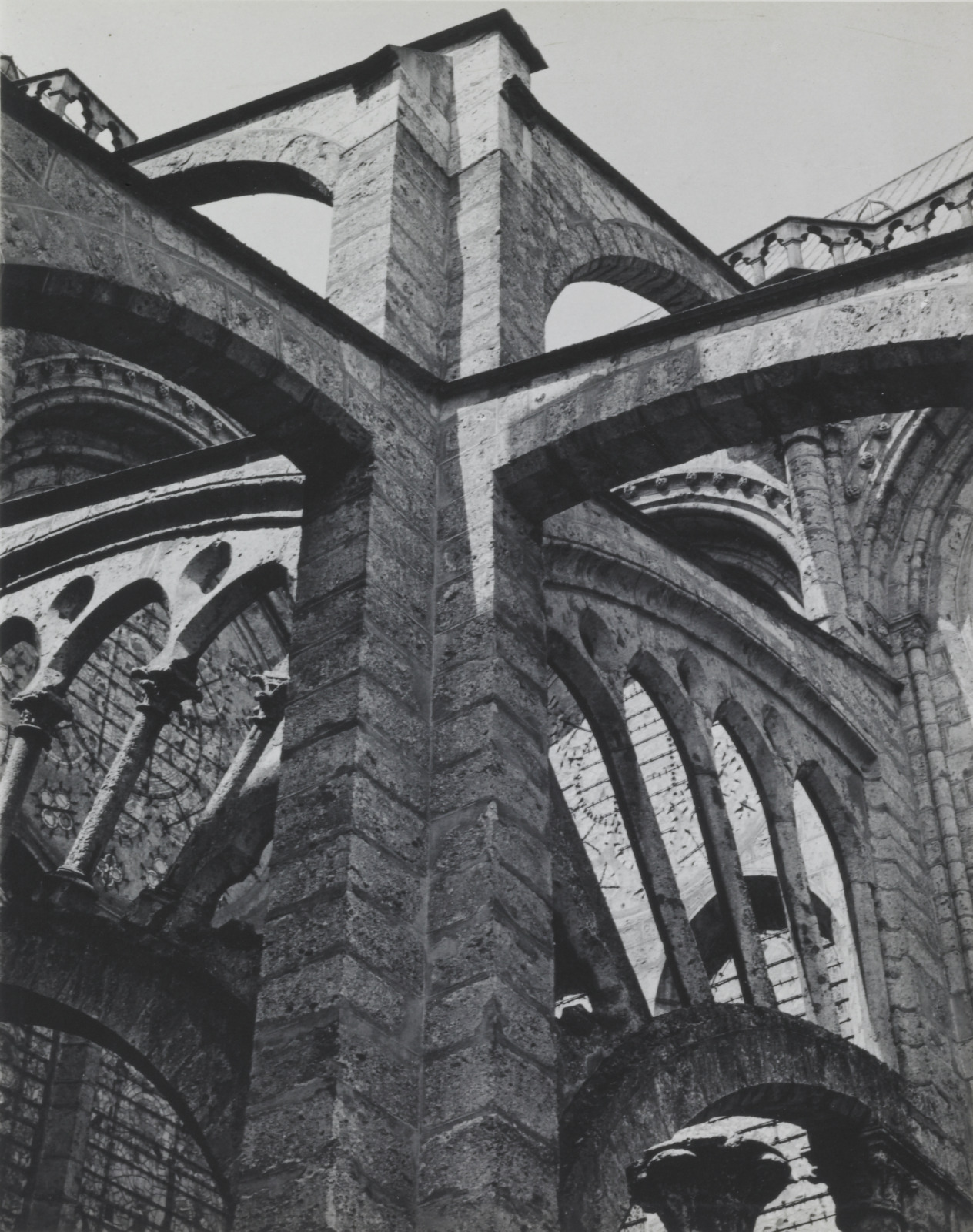
Charles Sheeler, American, 1883–1965; Chartres, Flying Buttresses at the Crossing, 1929, printed c.1930; gelatin silver print; image: 9 5/8 x 7 5/8 inches, sheet: 9 15/16 x 7 15/16 inches; Saint Louis Art Museum, Funds given by Jeffrey T. Fort 6:2008; © The Lane Collection, Courtesy Museum of Fine Arts, Boston
Charles Sheeler found dynamic abstract beauty in the curving and intersecting forms of Chartres Cathedral in France as seen in this photograph. He capitalized on the camera’s unique ability to interpret and depict architectural geometries with extraordinary clarity and detail. His close cropping of the image creates a taut and layered design of assertive lines and spatial rhythms.
This image is remarkable for its dramatic and unconventional viewpoint. Sheeler climbed around the building’s exterior with his camera to find a vantage point that would communicate the vertical thrust of the structural skeleton and the transfer of weight downward. There is a wonderful sense of energy and movement as buttresses converge on and radiate out of the central column.
April 27, 2021
Twilight Sounds
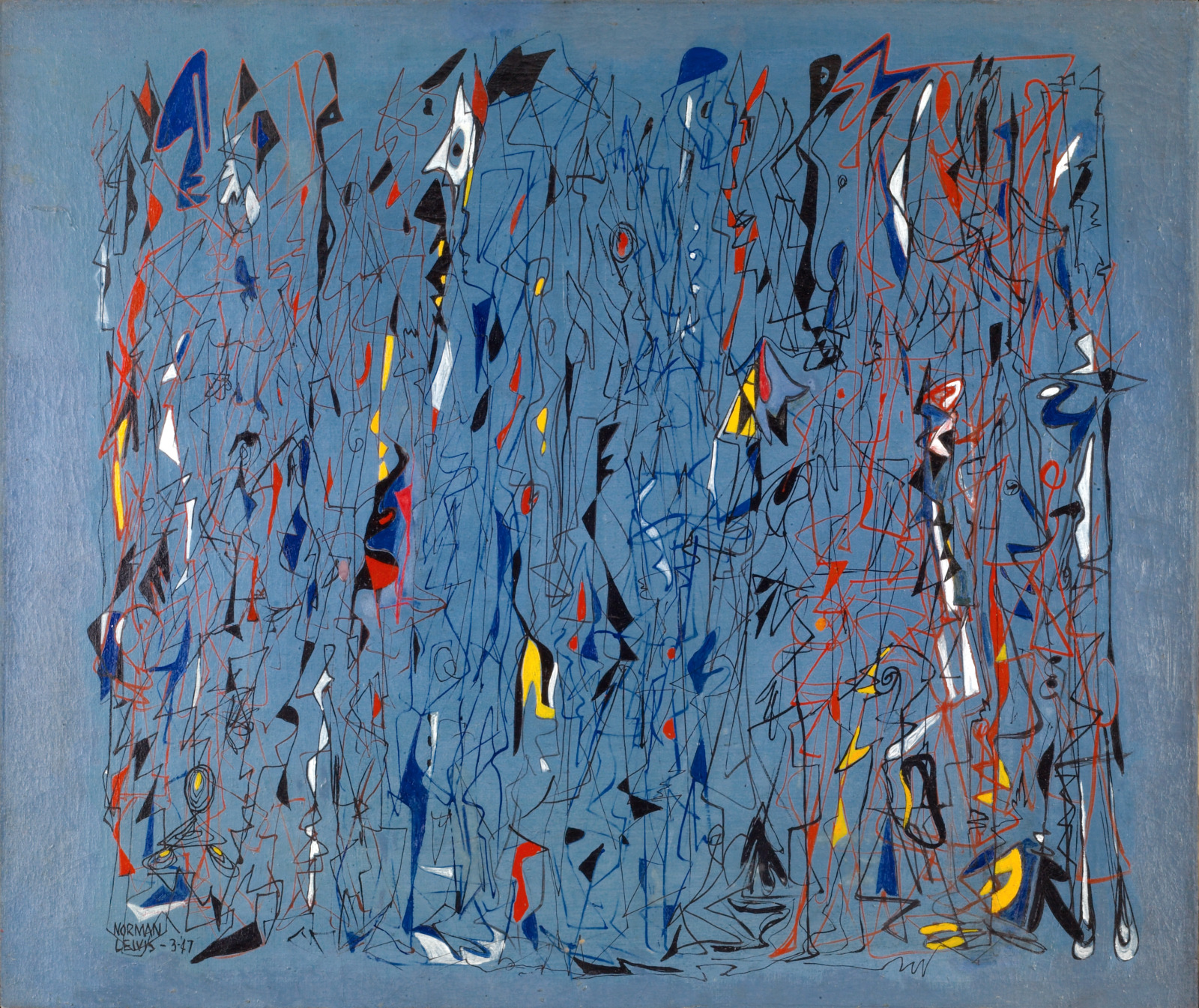
Norman Lewis, American, 1909–1979; Twilight Sounds, 1947; oil on canvas; 23 1/2 x 28 inches; Saint Louis Art Museum, Funds given by Mr. and Mrs. John Peters MacCarthy, the Linda and Harvey Saligman Endowed Acquisition Fund, Billy E. Hodges, and the Art Enrichment Fund 88:2007; © The Estate of Norman W. Lewis, Courtesy of Michael Rosenfeld Gallery LLC, New York, NY
Strong shades of red, yellow, blue, and white punctuate the intricate vertical black lines that fill this composition. Despite its abstraction, Twilight Sounds evokes a lived experience, possibly a crowd of active and noisy figures, milling about in the early evening as the sun has just slipped below the horizon. African American painter Norman Lewis compared his working process to the creativity and spontaneity of jazz composition, improvising and riffing off what had previously been laid down on the canvas. The energetic entanglements of the lines might mimic a saxophone climbing through a scale, joined by another instrument whose sounds weave through in red, and bass drum kicks that resonate the dark spaces.
April 26, 2021
The Milliners
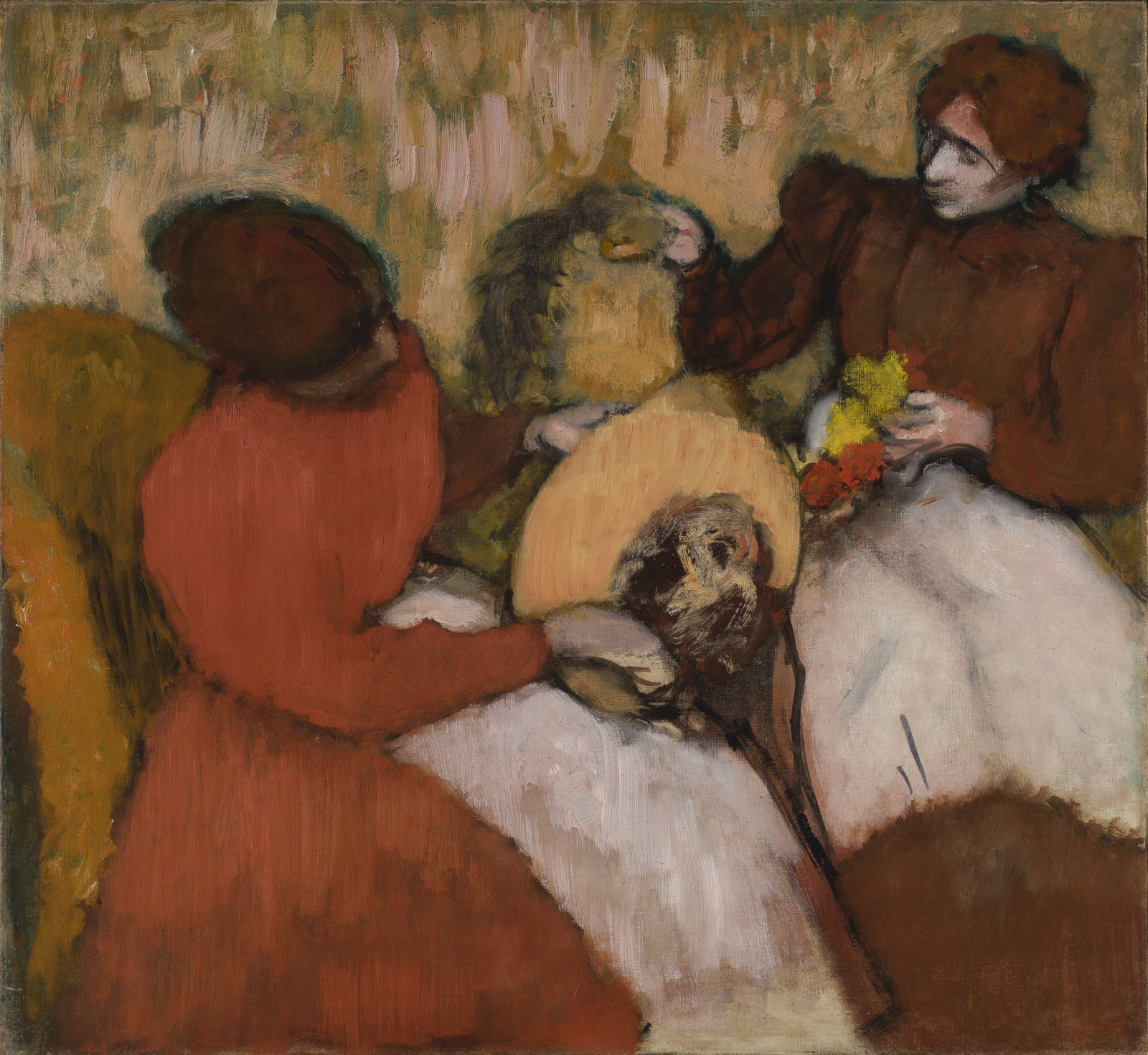
Edgar Degas, French, 1834–1917; The Milliners, c.1898; oil on canvas; 29 5/8 x 32 1/4 inches; Saint Louis Art Museum, Saint Louis Art Museum, Director's Discretionary Fund; and gift of Mr. and Mrs. Wilbur D. May, Dr. Ernest G. Stillman, Mr. and Mrs. Sydney M. Shoenberg Sr. and Mr. and Mrs. Sydney M. Shoenberg Jr., Mr. and Mrs. Irving Edison, and Harry Tenenbaum, bequest of Edward Mallinckrodt Sr., and gift of Mr. and Mrs. S. J. Levin, by exchange 25:2007
Hear Expert Commentary
-
Transcript
Speaker:
Simon Kelly, PhD
Curator of Modern and Contemporary Art
Saint Louis Art MuseumThis impressive painting highlights the rich and warm palettes characteristic of Degas’ late work. The red of the dress of the working milliner on the left, the orange of her chair, the red-brown of her assistant’s ensemble, and the copper hair of both women all merge together to create a symphony of color.
By this time, Degas was also exploring the possibilities of abstraction. He represents the forms of the women as flat masses of color outlined against the back wall that provides little spatial recession. The Saint Louis Art Museum x-rayed the painting and we found that Degas originally gave a frilly detail to the white apron of the milliner holding the hat. He subsequently painted this over, creating a more generalized color mass, further indicating his interest in abstraction.
It is perhaps no coincidence, a picture such as this, held a deep appeal for the great modern painter Henri Matisse, an important collector of Degas’ work. Beyond its formal qualities, Degas’ painting is a testament to the artistry of the millinery profession in Paris at the turn of the 20th century, highlighting as it the does, the careful focus of the milliner as she works to attach ostrich plumes to the crown of a wide-brimmed straw hat.
Milliners was acquired by the Saint Louis Art Museum in 2007 for the very substantial sum of $10,000,000, the largest purchase in the Museum’s history. It is Degas’ last oil painting on the theme of millinery and its significance is further indicated by the fact that Degas produced several related studies, including drawings in charcoal and a full-scale pastel.
Milliners was painted during the heyday of the Parisian millinery industry. But with the passing of conservation laws and changes in fashion after World War I to much simpler hats, notably the cloche, the millinery industry went into decline. Millinery remains a marginal presence in Paris today with only 41 milliners listed in the Parisian yellow pages. This painting, however, harks back toa time when milliners and their creations were an integral part of everyday Parisian life.
Two milliners in white aprons decorate a straw hat: the woman to the right holds feathers and flowers while her companion pins them in place. Edgar Degas regularly portrayed the theme of milliners and empathized with their creative abilities (hear more above). In earlier works, he used the American artist Mary Cassatt as a model, but in this late painting, his sitters have become abstract and generalized. This abstraction is evident in the flat areas of color and the line of green curling around the women’s heads.
April 22, 2021
A.Y.O.R. (At Your Own Risk) Chair
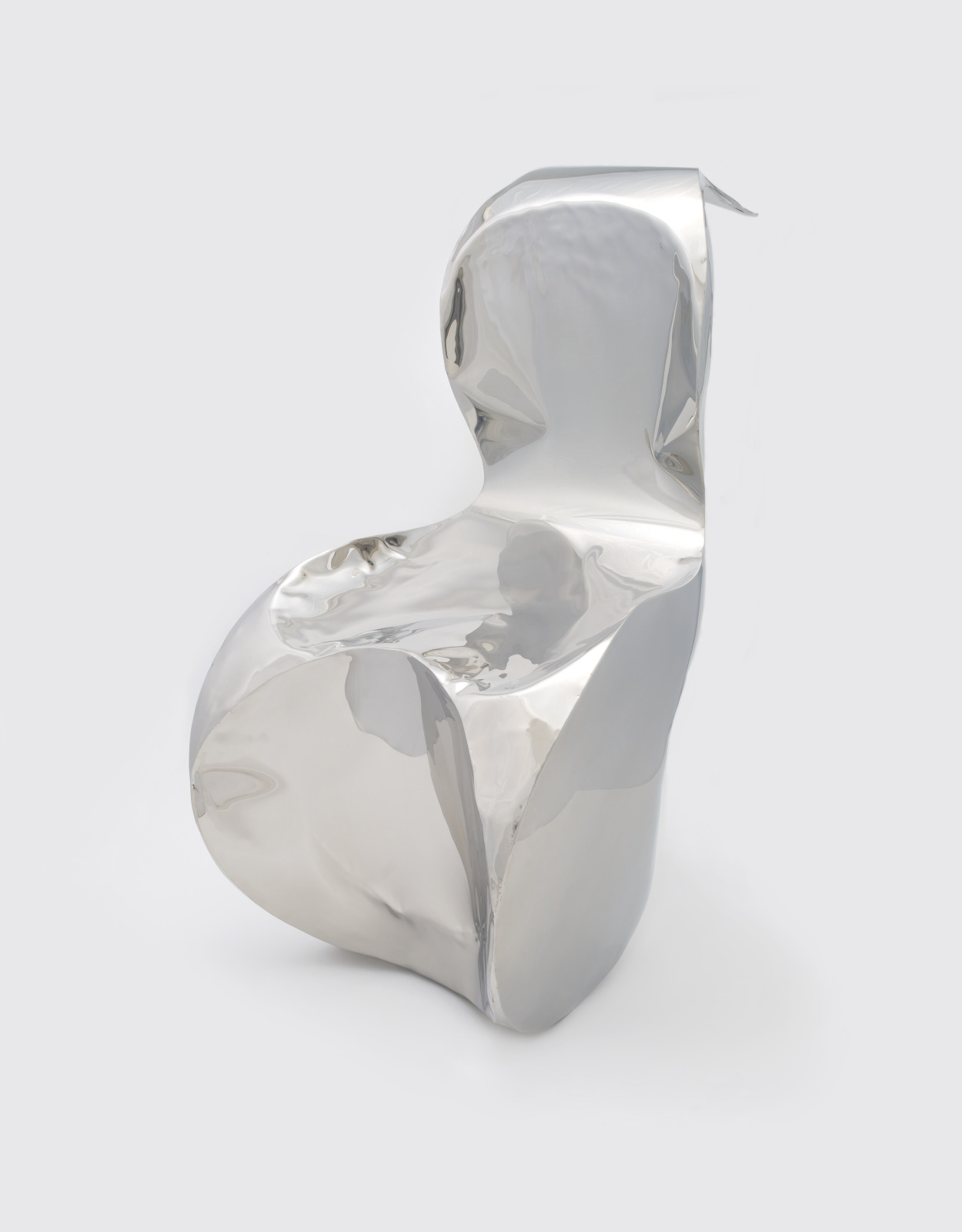
Ron Arad, British (born Israel), born 1951; A.Y.O.R. (At Your Own Risk) Chair, 1990; stainless steel and lead; 36 7/8 x 19 1/4 x 20 inches; Saint Louis Art Museum, Museum Shop Fund 6:2006; © Ron Arad
A meditation on balance, this faceted steel chair tips forward like a tottering question mark. Israel-born Ron Arad developed an appreciation for humble sheet metal early in his career, creating an influential series of experimental hand-welded furniture in his London studio. This A.Y.O.R. (At Your Own Risk) Chair was meticulously crafted by Arad himself. Its highly polished seams and surface give an illusion of a sculptural whole.
April 21, 2021
Draft
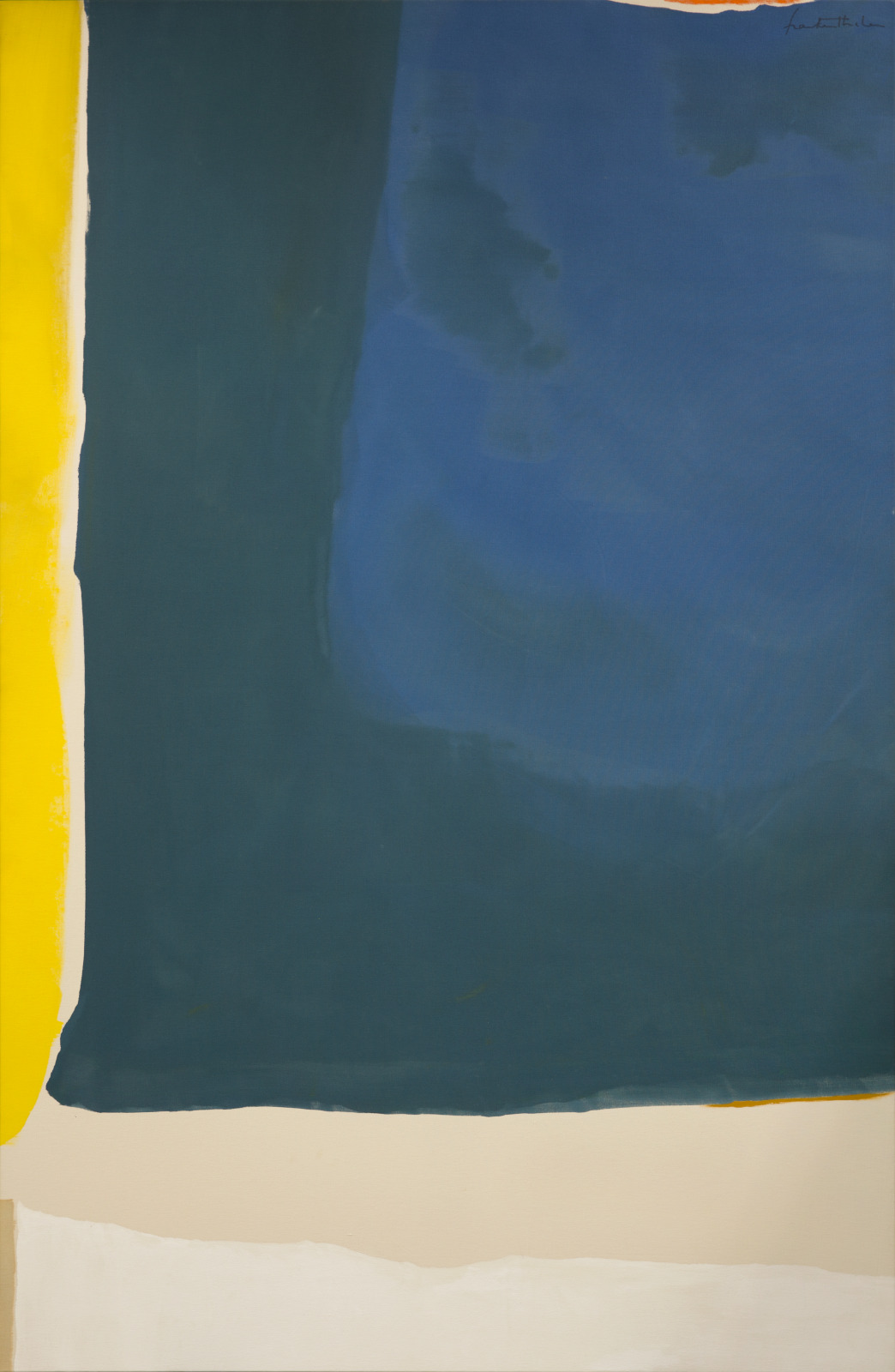
Helen Frankenthaler, American, 1928–2011; Draft, 1969; acrylic on canvas; 93 1/8 x 61 inches; Saint Louis Art Museum, Gift of Louis and Mary Zorensky 47:2006; © 2021 Estate of Helen Frankenthaler / Artists Rights Society (ARS), New York
Inspired by American artist Jackson Pollock’s technique of working directly on the floor, Helen Frankenthaler poured washes of thinned paint directly onto raw, unstretched canvas, as seen in this example. The resulting forms—broad yet carefully controlled areas of color that flood across the surface of the canvas—reveal her interest in the interaction of colors as well as the painterly gesture. The tiny area of orange at the top of the painting bursts out from the great expanse of blue beneath it.
April 11, 2021
Why Can’t I Stop Smoking?
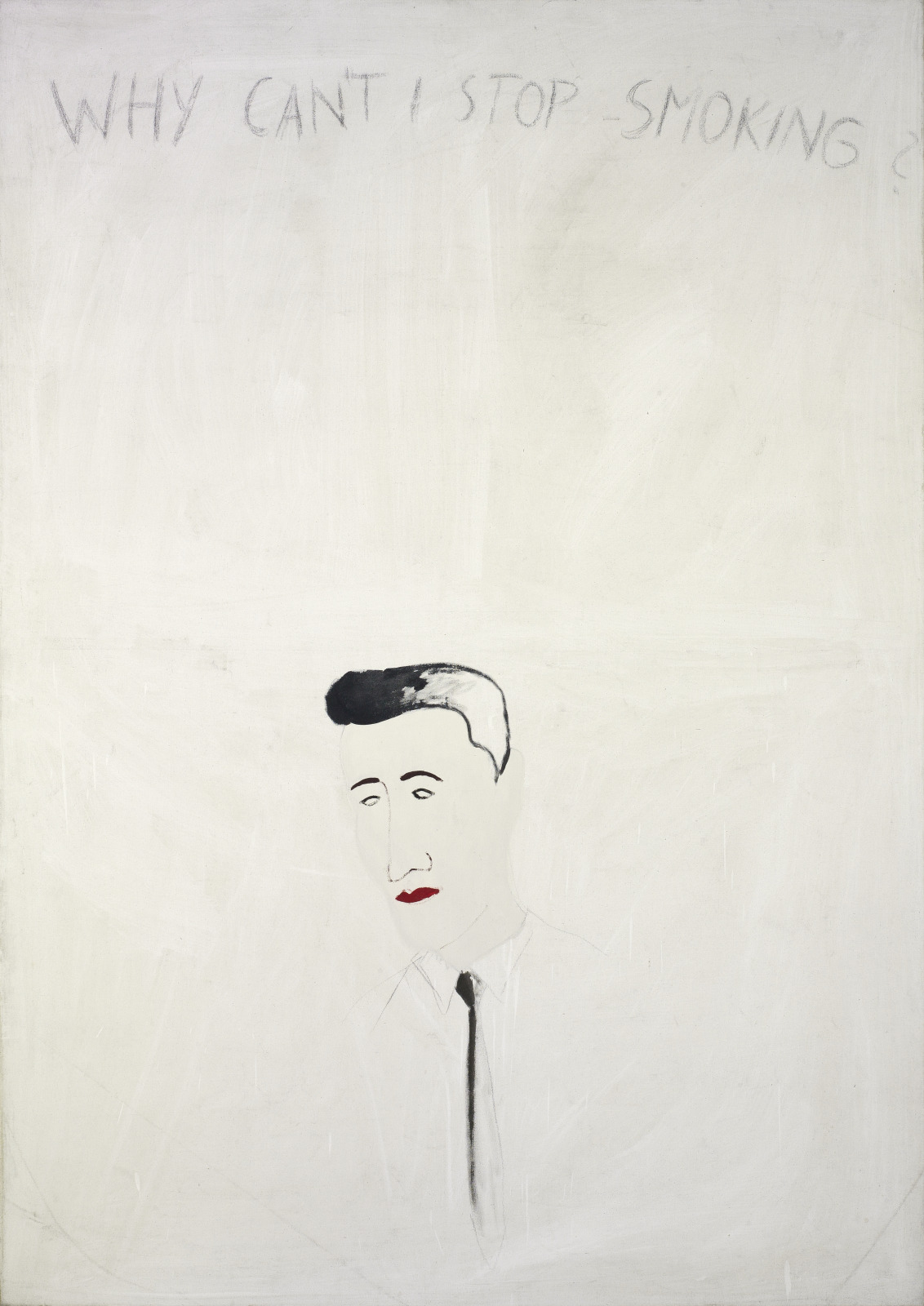
Sigmar Polke, German, 1941–2010; Why Can't I Stop Smoking?, 1964; dispersion and charcoal on canvas; 66 15/16 x 47 7/16 inches; Saint Louis Art Museum, Funds given by Mr. and Mrs. Donald L. Bryant Jr., the Gary Wolff Family, Friends Fund, and Modern Art Purchase Fund; and gift of the Honorable and Mrs. Thomas F. Eagleton, by exchange 15:2003; © 2021 The Estate of Sigmar Polke, Cologne / Artists Rights Society (ARS), New York
Thinly painted on unprimed canvas, this work was created in an offhand manner consistent with the deadpan tone of the question written in English at the top. Below, a male figure in a necktie is only partially completed, as if the artist lost interest. Here, Sigmar Polke insulted the tradition of painting by using inexpensive paints on a cheap support and borrowing imagery and text from popular culture. This intentionally sloppy translation of advertising imagery suggests a sarcastic critique of the addictive nature and easy comfort of consumer culture and middle-class norms.
To honor the retirement of Brent R. Benjamin, The Barbara B. Taylor Director, from March 23 through June 30, Object of the Day will feature a selection of 100 transformative works of art acquired during his 22-year tenure at the Museum.
April 9, 2021
Study for Frankenstein #1 (Study #1)
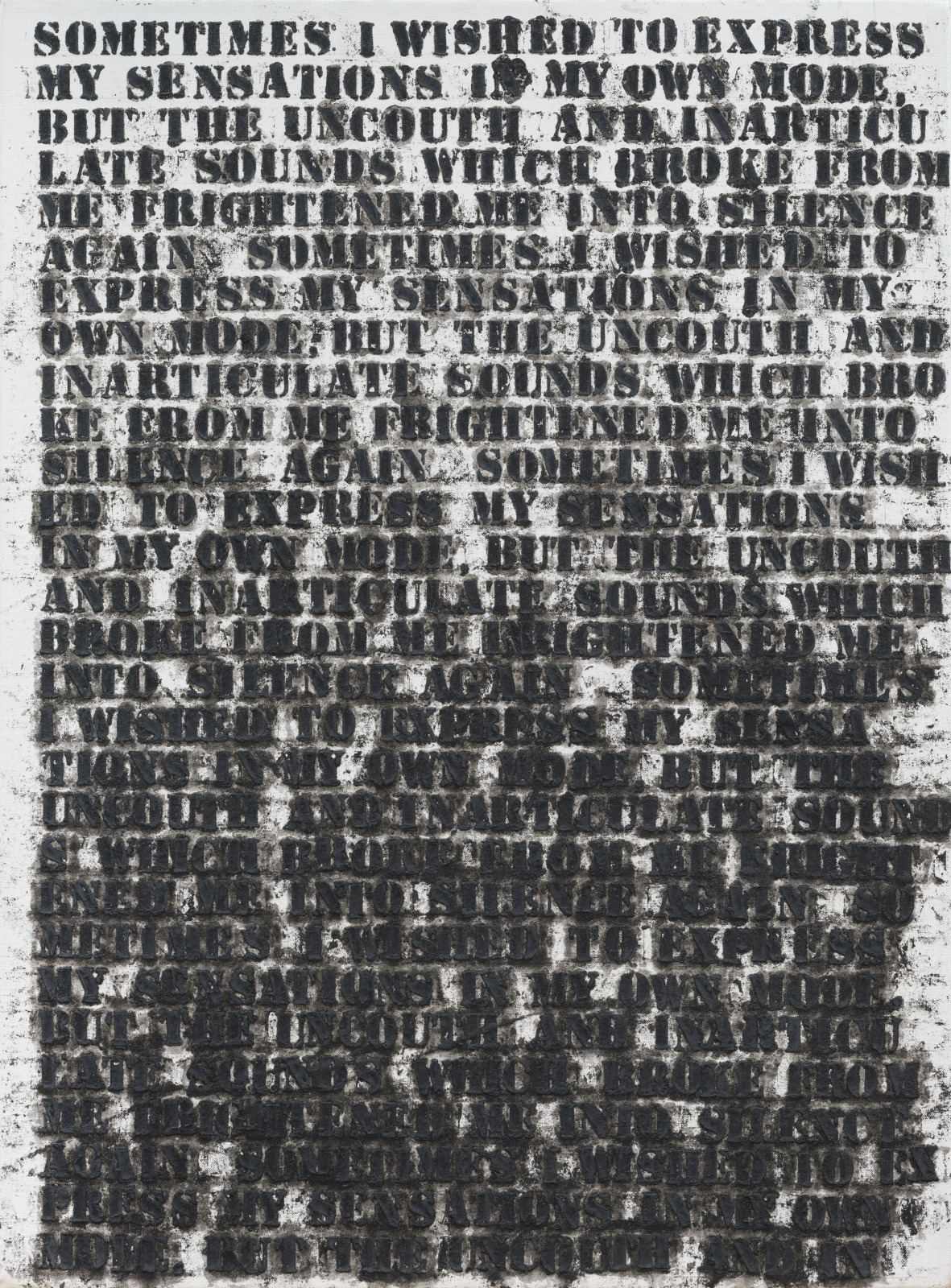
Glenn Ligon, American, born 1960; Study for Frankenstein #1 (Study #1), 1992; oil stick and gesso on canvas; 30 1/8 x 22 inches; Saint Louis Art Museum, Museum Minority Artists Purchase Fund and funds given by the Contemporary Art Society 70:2001; © Glenn Ligon, Courtesy of the artist, Hauser & Wirth, New York, Regen Projects, Los Angeles, Thomas Dane Gallery, London and Chantal Crousel, Paris
In his paintings, Glenn Ligon reproduces literary texts that often deal with race and social invisibility. Here, Ligon quoted from Mary Shelley’s 19th-century novel Frankenstein, the tragic story of a human monster shunned by society because of his physical appearance. The words read: “Sometimes I wished to express my sensations in my own mode, but the uncouth and inarticulate sounds which broke from me frightened me into silence again.” With an oil stick, Ligon stenciled and repeated the letters, gradually obscuring legible text into an abstraction.
To honor the retirement of Brent R. Benjamin, The Barbara B. Taylor Director, from March 23 through June 30, Object of the Day will feature a selection of 100 transformative works of art acquired during his 22-year tenure at the Museum.
April 8, 2021
Number 3, 1950
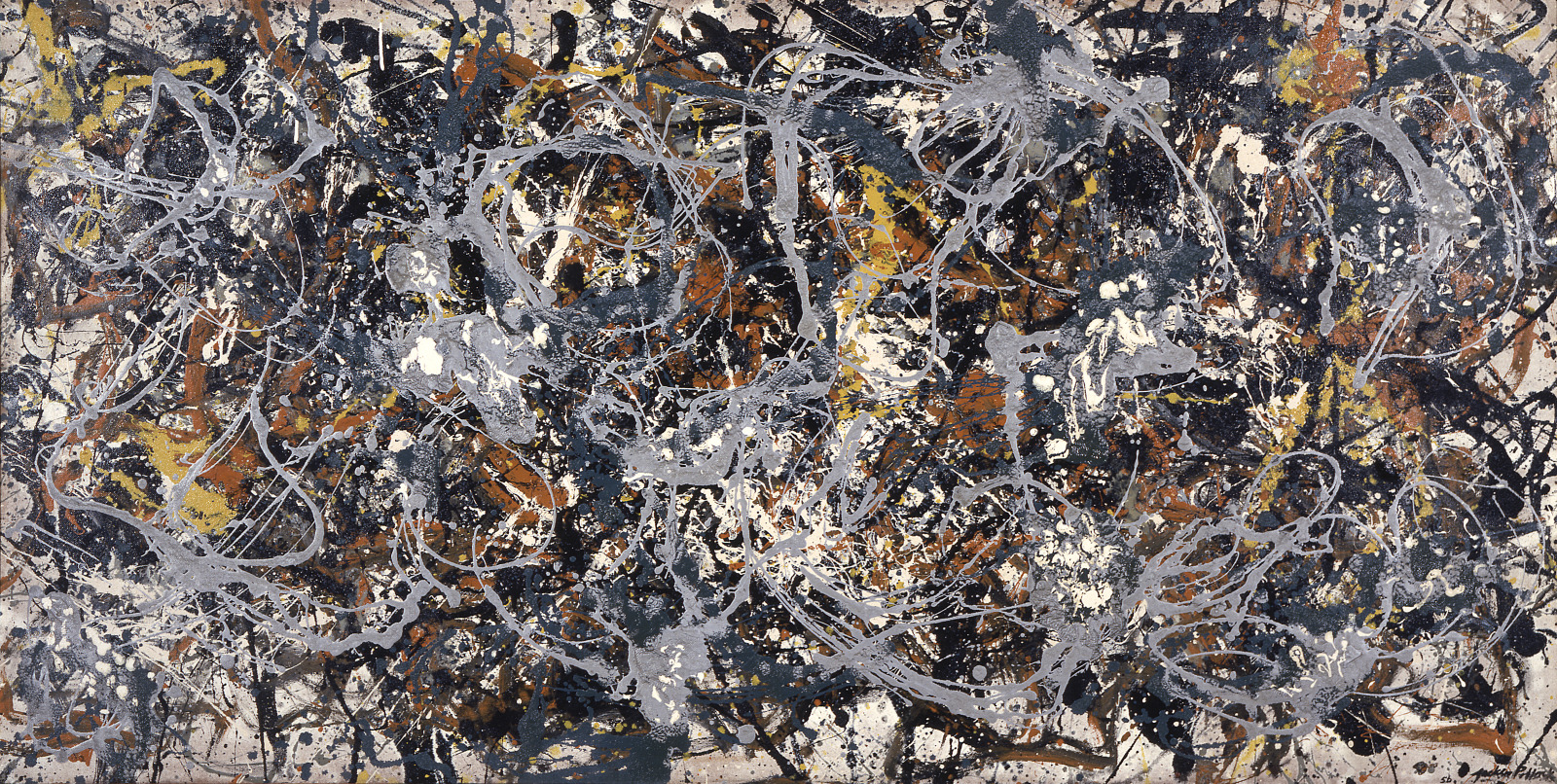
Jackson Pollock, American, 1912–1956; Number 3, 1950, 1950; oil, enamel, and aluminum paint on fiberboard; 48 x 96 1/8 inches; Saint Louis Art Museum, Partial and promised gift of Emily Rauh Pulitzer in honor of Joseph Pulitzer Jr. 1:2001; © 2021 The Pollock-Krasner Foundation / Artists Rights Society (ARS), New York, NY
In Number 3, Jackson Pollock layered multiple strands of paint to create an intricate web of interwoven colors. The result is an “all over” composition that prevents the eye from focusing on any single point. Three years earlier, Pollock first began to drip and splatter paint across unstretched canvas or fiberboard laid flat on his studio floor. Pollock’s creative breakthrough overturned the tradition of upright easel painting, a convention that had remained firmly established for five centuries.
To honor the retirement of Brent R. Benjamin, The Barbara B. Taylor Director, from March 23 through June 30, Object of the Day will feature a selection of 100 transformative works of art acquired during his 22-year tenure at the Museum.
March 30, 2021
Head of a Peasant Woman

Vincent van Gogh, Dutch, 1853–1890; Head of a Peasant Woman, December 1884; oil on canvas; 17 1/4 x 13 5/8 inches; Saint Louis Art Museum, Gift of Charles H. Yalem by exchange, and funds given by Bruce and Kimberly Olson, Mrs. Alvin R. Frank, Sam and Marilyn Fox and the Fox Family Foundation, Mr. and Mrs. Jack C. Taylor, Mr. and Mrs. Andrew C. Taylor, the Ruth Peters MacCarthy Charitable Trust, The Arthur and Helen Baer Charitable Foundation, Mr. and Mrs. David C. Farrell, The Jordan Charitable Foundation, Nancy and Kenneth Kranzberg, Mr. and Mrs. Thomas K. Langsdorf, Mr. and Mrs. William C. Rusnack, and the Gary Wolff Family 90:2000
Vincent van Gogh always felt deep sympathy for the peasant classes and here tenderly depicted the full, sunburnt features of a young Dutch peasant woman. Her cap, in subtle shades of white and blue, is pulled around her head, while her eyes are enlivened by white highlights. Van Gogh’s muted tones are very different from his later use of bright color that followed his arrival in France in 1886.
To honor the retirement of Brent R. Benjamin, The Barbara B. Taylor Director, from March 23 through June 30, Object of the Day will feature a selection of 100 transformative works of art acquired during his 22-year tenure at the Museum.
March 24, 2021
Father and Sons
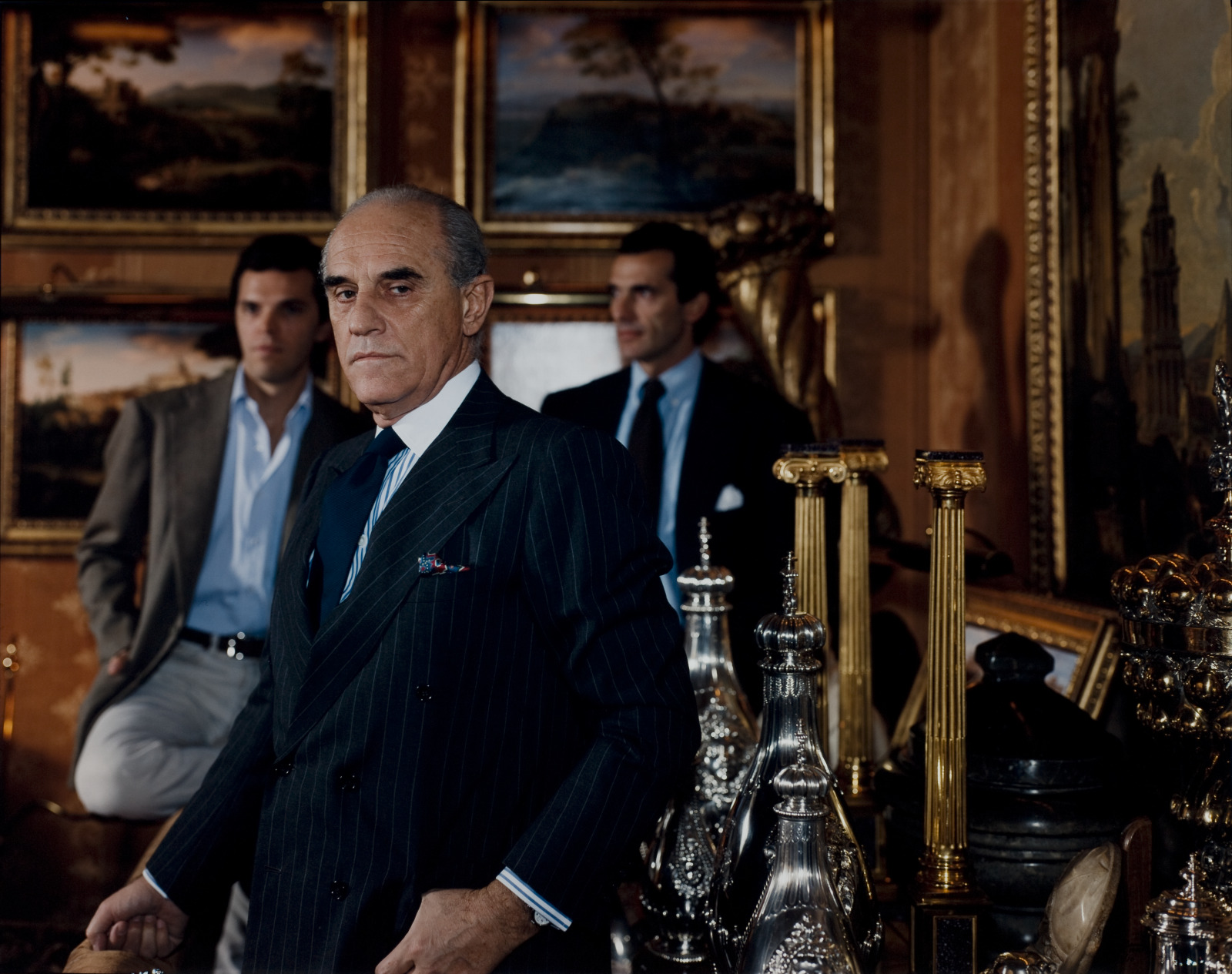
Tina Barney, American, born 1945; Father and Sons, 1996; chromogenic print; 48 x 60 7/8 inches; Saint Louis Art Museum, Museum Shop Fund and funds given by Mr. and Mrs. Sam Weiss in honor of Dr. Jerome F. and Judith Weiss Levy 11:2000; © Tina Barney
Tina Barney photographs wealthy families in their home and work environments, as seen in this striking example. Using a large-format camera and studio lights, Barney waits for a resonant moment in the interaction between her subjects, and then asks them to hold their positions. The result is an interesting blend of document and artistic arrangement. In this image of an Italian aristocrat and his two sons, power seems to be a central theme. We are keenly aware of the father’s dominant role through his positioning within the picture and the objects at his elbow. The sumptuous interior and suave posture of the two sons in the background creates a narrative that feels familiar, as if we are watching a family drama play out. More than mere documents of a particular way of life, Barney’s images are also psychological portraits that explore the roles people play and the relationships between them.
To honor the retirement of Brent R. Benjamin, The Barbara B. Taylor Director, from March 23 through June 30, Object of the Day will feature a selection of 100 transformative works of art acquired during his 22-year tenure at the Museum.
March 21, 2021
Dzunukwa Mask

Kwakwaka'wakw (Kwakiutl) artist; Dzunukwa Mask, c.1870; wood with pigment, human hair, bear fur, seal skin, raffia, cloth, and metal nails; 13 x 11 3/4 x 6 inches; Saint Louis Art Museum, Gift of Morton D. May 269:1982
Planes of the forehead, cheeks, and eyes converge at a vertical axis in the center of this carving. Graphite in the paint causes light to shimmer across the surfaces, contributing to an exaggerated sense of depth. This mask portrays Dzunukwa, a giant, bearded figure who dwells in the forest, kidnaps children, and eats them. With pursed lips, the mask appears ready to project the dzunukwa’s “wuu, wuu” call. The Dzunukwa could also bestow great wealth. Kwakwaka’wakw leaders wore finely carved and painted masks such as this, called gikamhl, when displaying or exchanging coppers during elaborate feasts. The Dzunukwa mask and copper reinforced the associations of wealth and power that each object independently conveyed to its audience.
March 18, 2021
Sorcerer’s Implement (arhiye kaiyam)
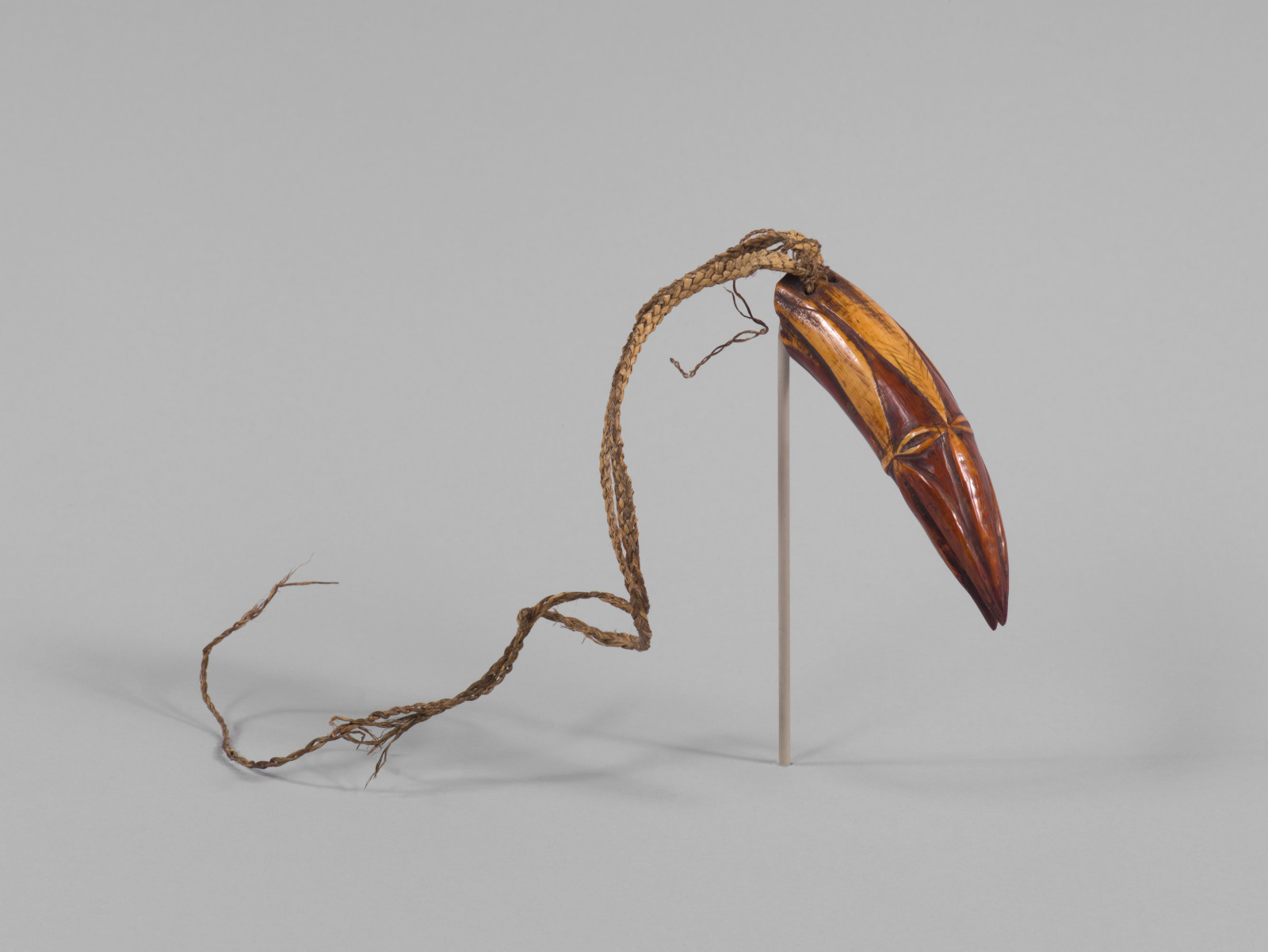
Lower Strickland River or middle Fly River artist, Papua New Guinea; Sorcerer's Implement (arhiye kaiyam), 19th–early 20th century; crocodile tooth, plant fiber; 4 ½ x 1 1/16 x 1 3/16 inches; Saint Louis Art Museum, Funds given by Antonio I. Longrais, D.D.S. 61:2000
This crocodile tooth has been carved to resemble a bird’s head, possibly a Papuan hornbill. Combining traits from two animals, the fearsome crocodile that inhabits land and water, and the hornbill that flies, possibly allowed the owner of this implement to symbolically traverse both the physical and spiritual realms. Magic and sorcery once played a vital role in Melanesian society. These traditions were used to both heal and harm. Potent materials like blood or beeswax could be secretly added to the tooth. In terms of healing, a sorcerer would use the implement to find and return things lost or stolen, such as a soul to a sick owner. To inflict harm, a sorcerer would recite certain words over the implement and symbolically “shoot” it into a victim causing illness or death.
March 16, 2021
Water Jar
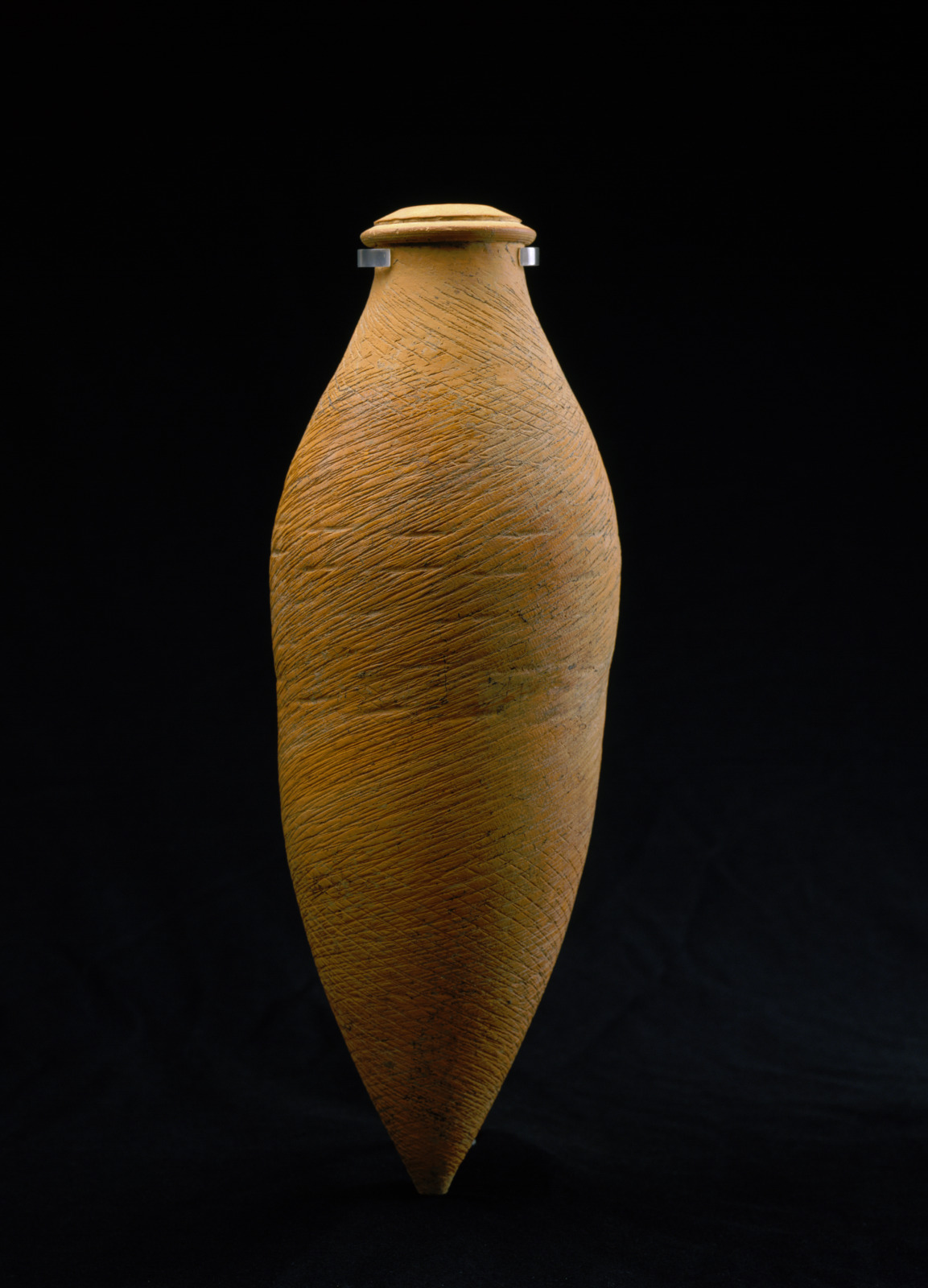
Water Jar, c.4000–3000 BC; Chinese, Neolithic period, Yangshao culture; earthenware with impressed decoration; 19 1/8 x 6 3/8 inches; Saint Louis Art Museum, Funds given by Edith Spink in memory of her husband, C. C. Johnson Spink 107:2002
This jar’s elegantly curving outline begins at the rim and finishes at the pointed end. Its surface is decorated with a subtle pattern made by pressing twisted cord into the soft clay body before firing. The fine markings are set at diagonals, imparting an ascendant, swirling movement to the work. Water jars like this one were bound with cord and dropped into water, where they slowly turned upright as they filled.
March 13, 2021
The Computer Moves In
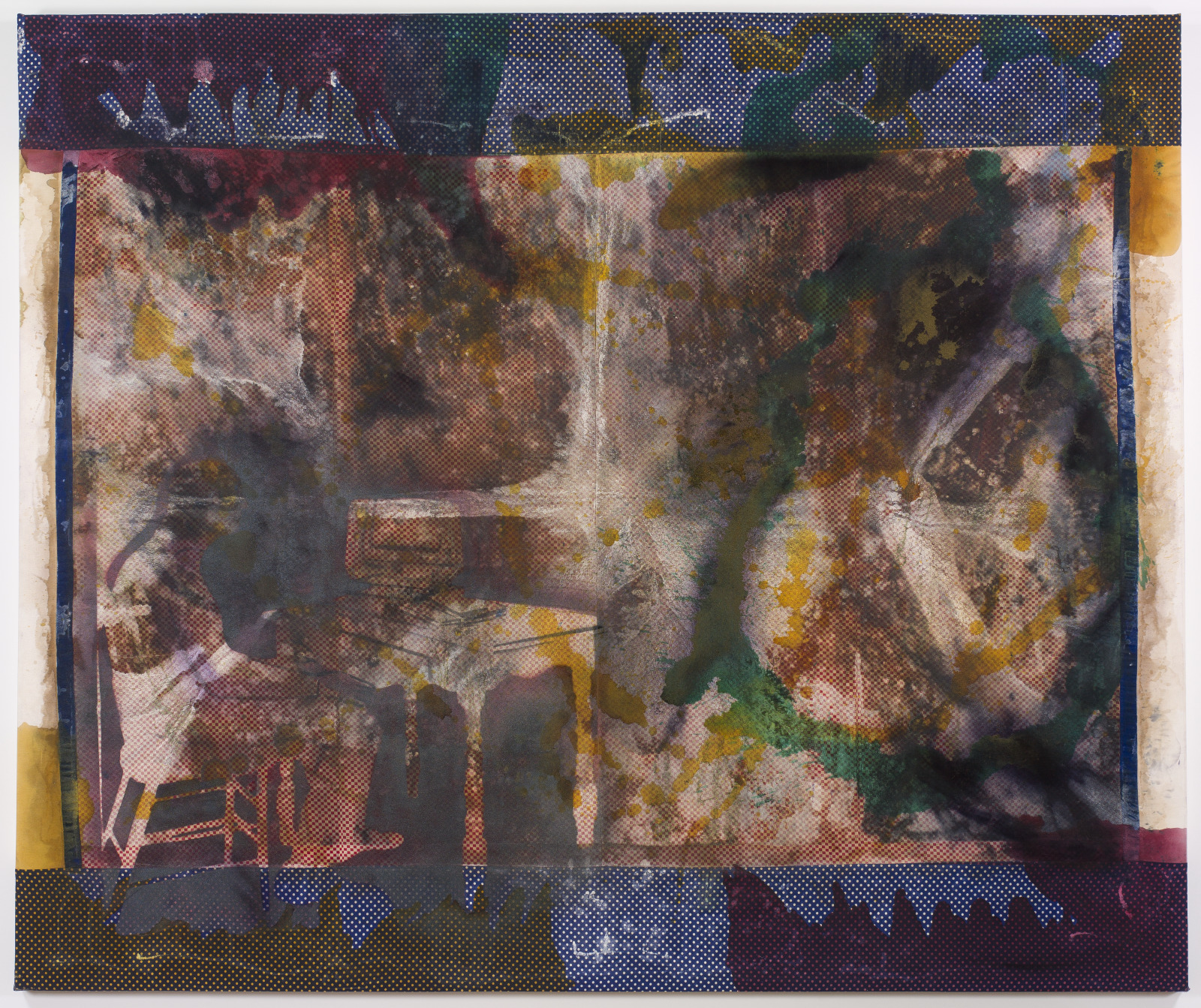
Sigmar Polke, German, 1941–2010; The Computer Moves In, 1983; mixed media with manganese on fabric; 102 1/2 x 122 1/2 inches; Saint Louis Art Museum, Funds given by Dr. and Mrs. Alvin R. Frank and Friends Fund 262:1995; © 2021 The Estate of Sigmar Polke / Artists Rights Society (ARS), New York 2013
In this work, artist Sigmar Polke appropriated imagery from a 1983 Time magazine cover that designated the computer “Machine of the Year,” in place of Time’s “Person of the Year.” The cover reproduced a sculpture by George Segal to highlight the increasing availability and advancement of computers in America, fed by the Cold War race toward technological development. Polke’s composition echoes a computer screen: from the fabric strips that frame the central image to the dot pattern and shimmering manganese shavings that recall the pixilation of early computer monitors.
March 11, 2021
untitled (to Ileana and Michael Sonnabend)

Dan Flavin, American, 1933–1996; untitled (to Ileana and Michael Sonnabend), 1970; fluorescent lights ; length: 96 inches; Saint Louis Art Museum, Museum Shop Fund 35:2006; © 2013 Stephen Flavin / Artists Rights Society (ARS), New York
Three fluorescent bulbs project blue, pink, and yellow light onto the surrounding walls. In 1961 Dan Flavin began to use fluorescent fixtures as his primary medium, allowing him, as he once said, to “combine traditions of painting and sculpture in architecture with acts of electric light defining space.” Flavin referred to his colored light installations as “proposals” or “situations” rather than sculptures. This piece is dedicated to friends of the artist, the important New York art dealer Ileana Sonnabend and her husband Michael.
March 10, 2021
Still Life

Willi Baumeister, German, 1889–1955; Still Life, 1930; oil on canvas; 26 x 32 1/4 inches; Saint Louis Art Museum, Bequest of Morton D. May 833:1983; © 2021 Artists Rights Society (ARS), New York, NY / VG Bild-Kunst, Bonn
Fragmented shapes floating against a tan wall offer few clues to their meaning. Critics in the 1920s saw Willi Baumeister’s abstract paintings as images of the machine age and compared them to architectural plans. Baumeister also frequently depicted actual machines. In Still Life, a rectangle and three circles, at left, is likely an old-fashioned radio with three tuner knobs. Radios, telephones, and wireless telegraphy brought the latest technology into German homes, transforming daily life in the 1930s.
March 7, 2021
Titan
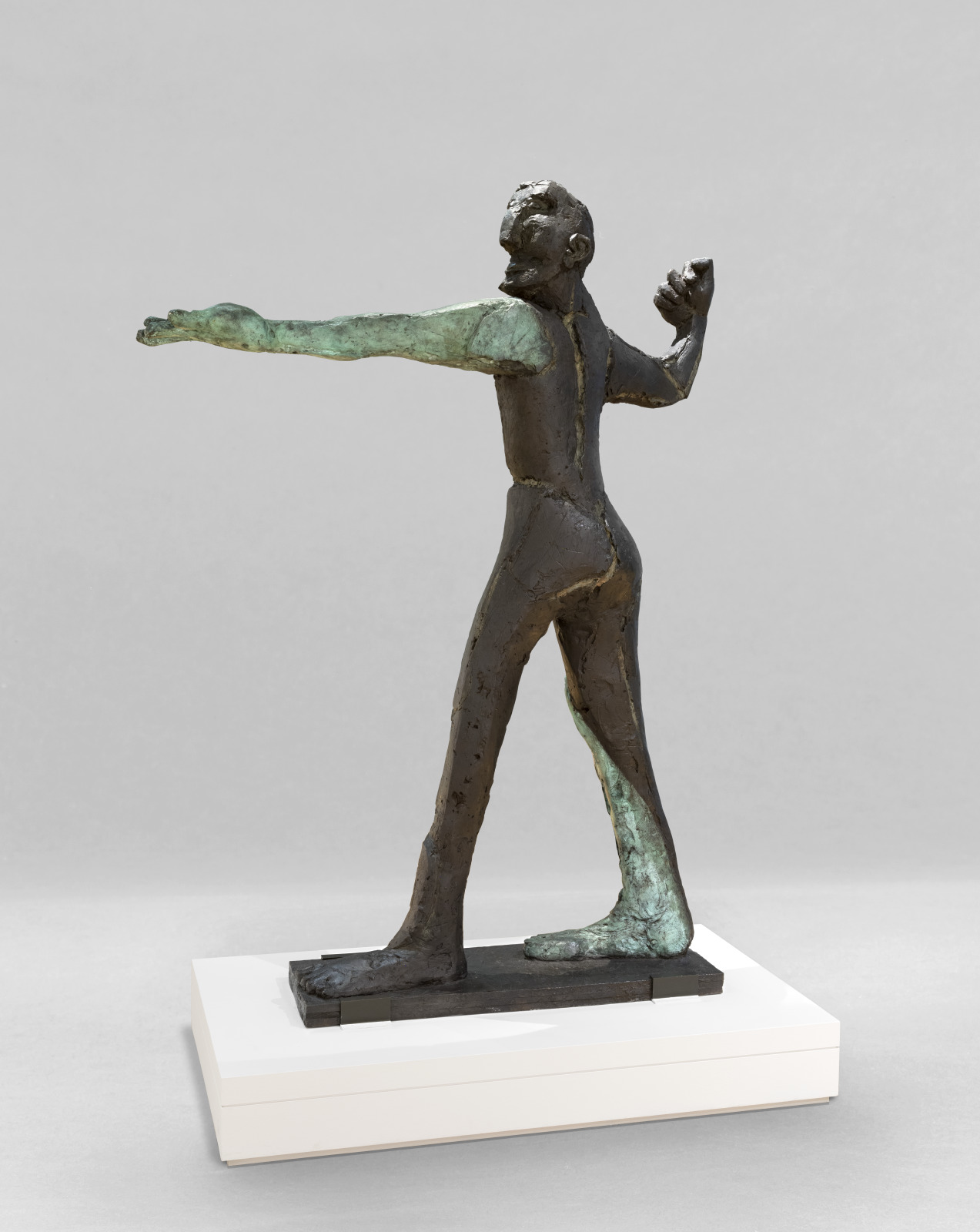
Markus Lüpertz, German, born 1941; Titan, 1986; painted bronze; 98 3/8 x 76 1/2 x 17 3/4 inches; Saint Louis Art Museum, Funds given by Nancy and Kenneth Kranzberg in honor of their children, Lily and David Dulan and Mary Ann and Andrew Srenco 11:2003; © 2020 Markus Lüpertz / Artists Rights Society (ARS), New York
A monumental bronze figure stands with feet firmly planted and one arm raised while the other extends straight ahead. Markus Lüpertz modeled the pose of this Titan after an ancient Greek sculpture of the god Zeus preparing to throw a spear or lightning bolt. According to Greek mythology, Zeus led the Olympian gods to victory over the Titans, an older generation of mighty deities, in a 10-year battle for the control of Earth.
In contrast to the balanced proportions and smooth surface of the original sculpture, this work has roughly formed features and a craggy texture that express the brute strength of the Titans. Lüpertz painted a leg and arm of the sculpture green, creating the appearance of an ancient patina (surface finish) that reinforces his references to classical art and mythology.
This work of art inspired an award-winning floral interpretation by Bob Hauck of Walter Knoll Florist in 2019. See the arrangement and enjoy this year’s virtual Art in Bloom.
March 2, 2021
Le Havre, Grand Quai

Maurice de Vlaminck, French, 1876–1958; Le Havre, Grand Quai, 1906; oil on canvas; 32 x 39 1/2 inches; Saint Louis Art Museum, Gift of Mr. and Mrs. Wilbur D. May 527:1957; © 2020 Artists Rights Society (ARS), New York / ADAGP, Paris
Boats with orange and pale-yellow sails crowd the busy French port of Le Havre. The setting is the city’s wharf, named Grand Quai, ringed by a line of blue-roofed buildings. Critics accused Maurice de Vlaminck and his fellow artists of being fauves, or wild beasts, who shocked viewers by using unmixed oil paint straight from the tube. The red, yellow, and blue that animate the water are a good example of the strong, artificial colors that define Fauvism.
This work of art inspired an award-winning floral interpretation by Christine Anson of S. Finch Florist in 2016. See the arrangement and enjoy this year’s virtual Art in Bloom.
March 1, 2021
Untitled
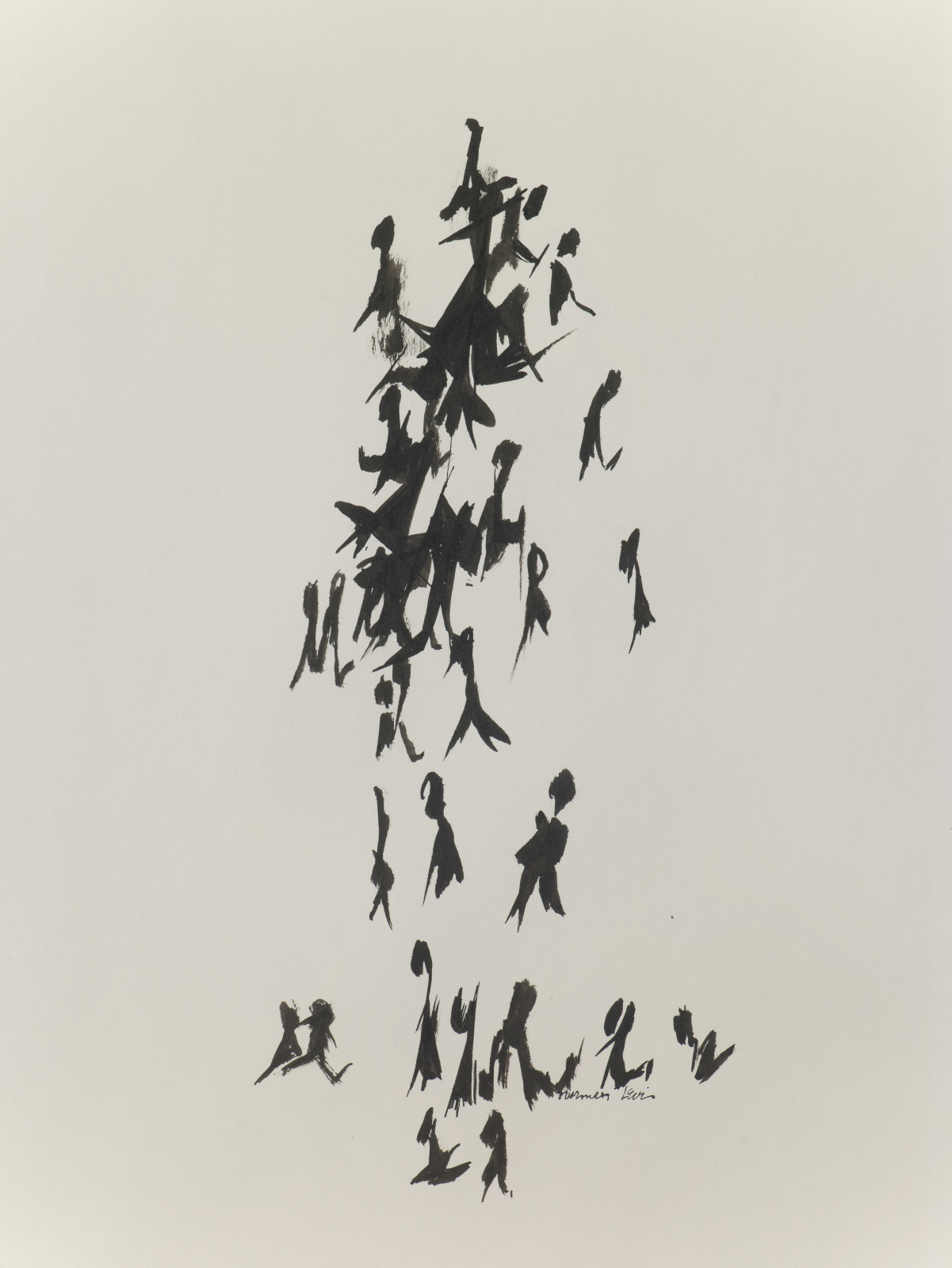
Norman Lewis, American, 1909–1979; Untitled, c.1940s; ink; 20 1/4 inches x 13 inches; Saint Louis Art Museum, The Thelma and Bert Ollie Memorial Collection, Gift of Ronald and Monique Ollie 166:2017; © The Estate of Norman W. Lewis; Courtesy of Michael Rosenfeld Gallery LLC, New York, NY
Short, calligraphic brushstrokes appear in this untitled drawing, reflecting the artist’s interest in East Asian scroll painting with a similar long, vertical format. Norman Lewis’ quick, gestural marks also suggest dispersing figures, like people on a crowded street. After producing artworks for the Work Projects Administration (WPA), a government-sponsored program that provided jobs for Americans during the Great Depression, Lewis migrated away from a representational style. He was among the first African American artists to be associated with Abstract Expressionism, although in early works such as this one, his abstractions still allude to the figure.
The Museum’s collection includes several works by Norman Lewis, including Twilight Sounds, which inspired an award-winning floral interpretation by Ann Rabbitt of Thorn Studio, LLC in 2018. See the arrangement and enjoy this year’s virtual Art in Bloom.
February 28, 2021
Untitled
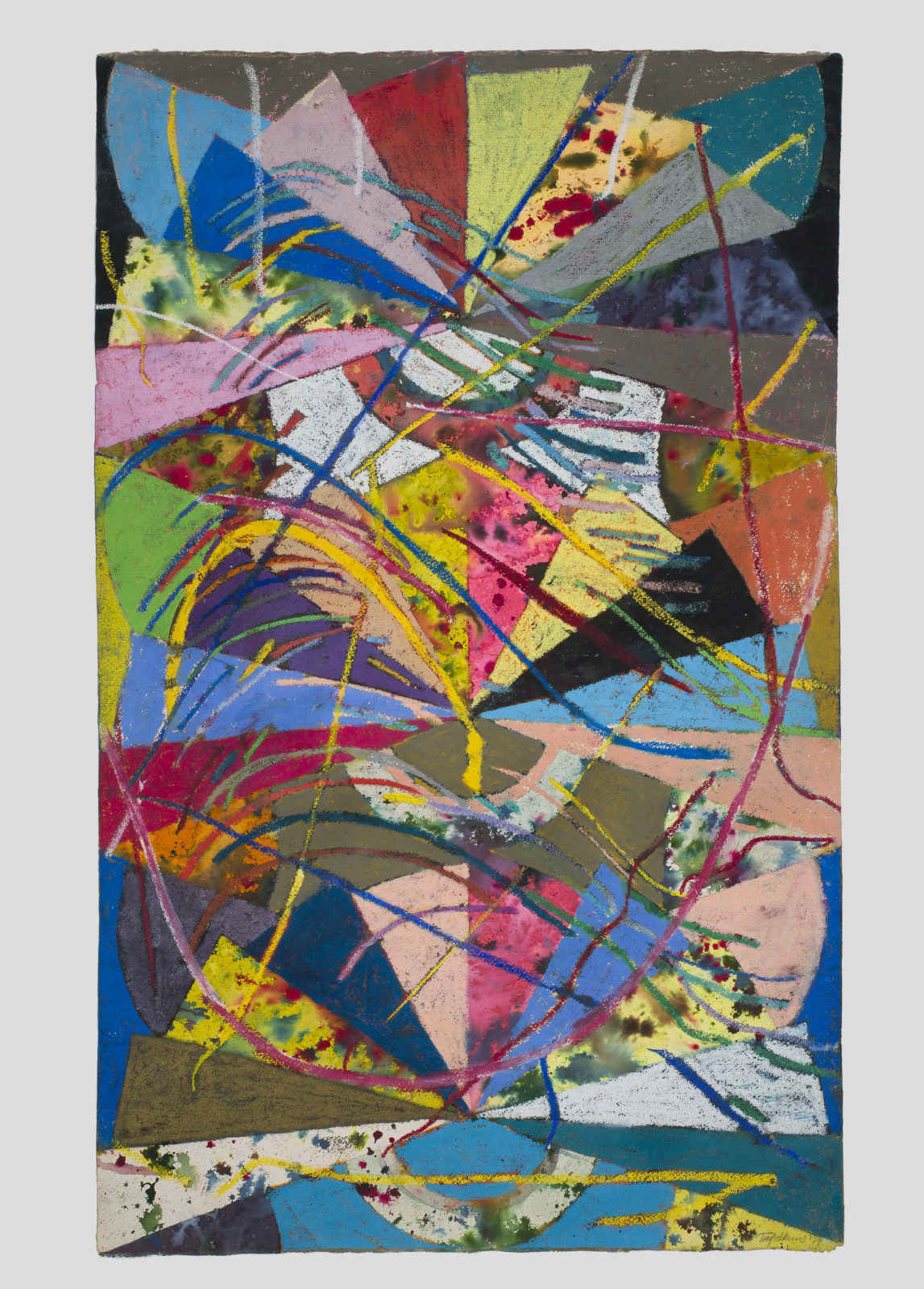
Terry Adkins, American, 1953–2014; Untitled, 1979; ink and gouache with graphite; 40 x 25 inches; Saint Louis Art Museum, The Thelma and Bert Ollie Memorial Collection, Gift of Ronald and Monique Ollie 114:2017; © 2019 The Estate of Terry Adkins / Artists Rights Society (ARS), New York
A vibrant celebration of color and form, Terry Adkins’ drawing features three geometric arrangements stacked along a central axis. Each is comprised of an upper arc of fanned wedges, some densely toned, and others dappled with stain, resting upon a concave curve. Together, these parts approximate a circle, a shape that remained a recurring and evocative motif for Adkins throughout his career as a sculptor and conceptual artist. For him, the circle became an indicator of sound, and in later works, he often incorporated rounded parts of musical instruments, such as drumheads and horn bells.
February 24, 2021
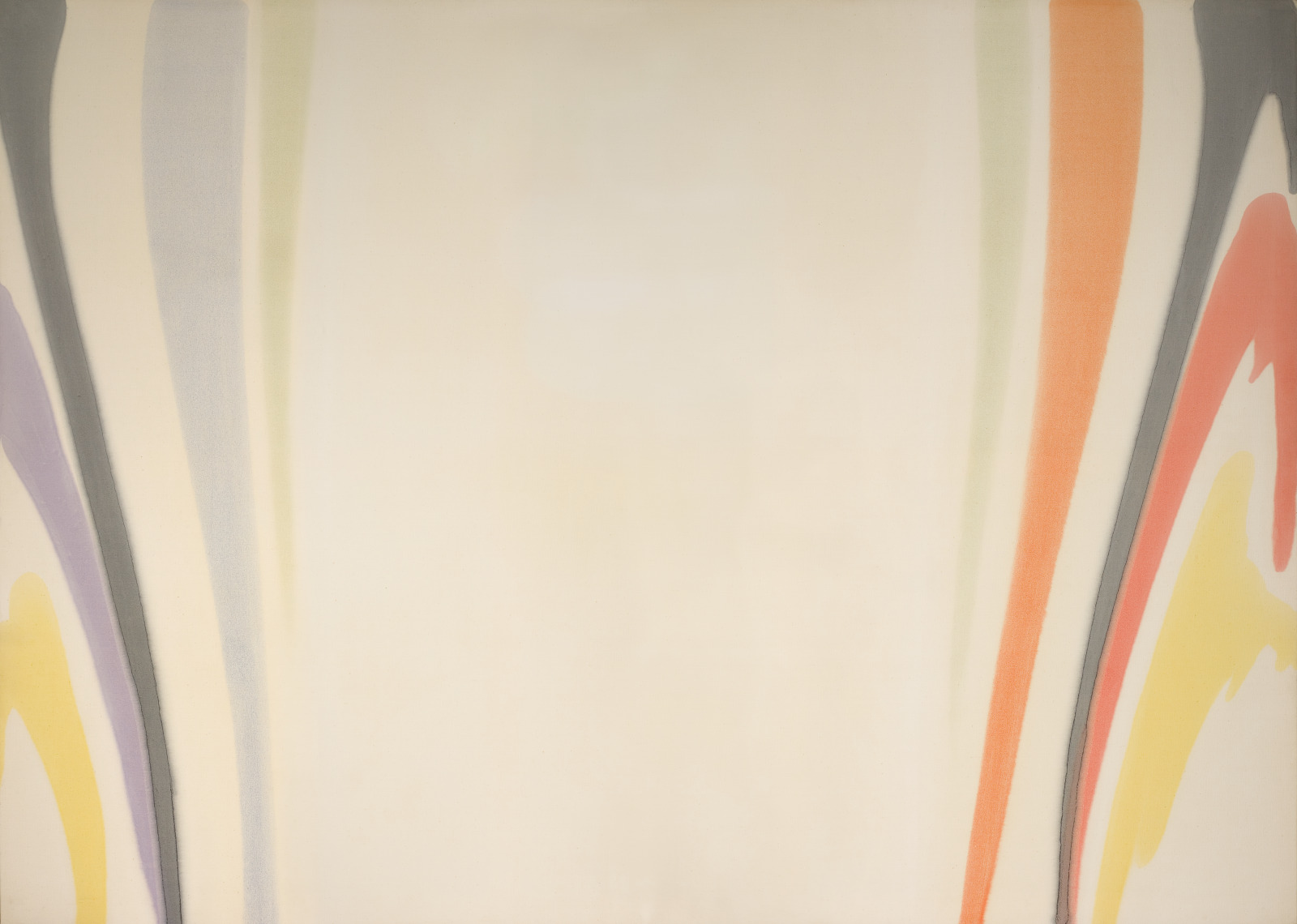
Morris Louis, American, 1912–1962; Beta, 1960; acrylic resin on canvas; 102 3/8 x 144 inches; Saint Louis Art Museum, Gift of the Marcella Brenner Revocable Trust 149:2011; © 1962 Morris Louis / Artists Rights Society (ARS), New York
Curving rivulets of color frame a wide expanse of white unprimed canvas. Morris Louis poured acrylic paint directly onto the surface from the sides, allowing it to run off the bottom edge. Louis achieved these pastel tones by diluting his paint with large amounts of turpentine. Beta is one of the first paintings in his Unfurled series, which Louis considered his most significant artistic achievement.
February 23, 2021
Wineglass (roemer)
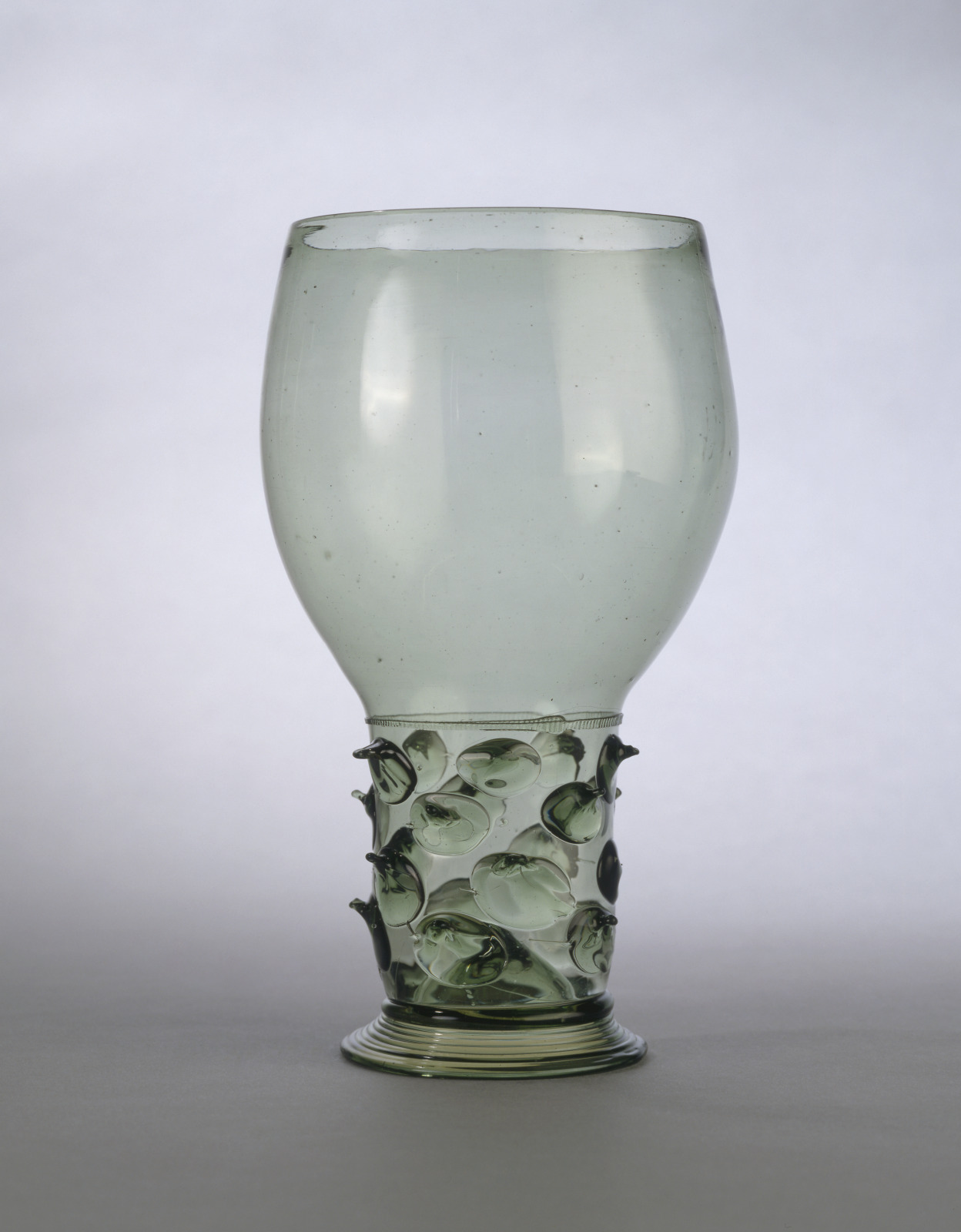
Wineglass (roemer), 1600–30; Dutch; glass; 9 1/4 x 5 1/8 inches; Saint Louis Art Museum, Funds given by Mr. and Mrs. William Orthwein, Dr. and Mrs. George R. Schoedinger III, and Museum Purchase by exchange 216:1995
The simple shape of this wine glass, a blown bowl and stem resting on a flared foot, was a popular form often included in 17th-century still-life paintings. The wide stem is typically decorated with bits of glass applied to the surface; sometimes these bits were stamped into shapes resembling raspberries.
February 22, 2021
4 Muses

Jörg Immendorff, German, 1945–2007; 4 Muses, 1980; acrylic on canvas; 122 1/8 x 98 1/2 inches; Saint Louis Art Museum, Funds given by The Jordan Charitable Foundation 5:2003; © The Estate of Jörg Immendorff, Courtesy Galerie Michael Werner Märkisch Wilmersdorf, Köln & New York
Hear Expert Commentary
-
Transcript
Speaker: Hannah Klemm
Associate Curator of Modern and Contemporary Art
Saint Louis Art MuseumIn this large-scale painting Jörg Immendorff has created a fictitious artist’s studio in which he has depicted himself and three of his contemporary artist friends: Georg Baselitz, Markus Lüpertz, and A. R. Penck. He chose this group because he saw them as artists all deeply linked to the politics of postwar Germany.
Immendorff was part of a generation of artists born at the end of World War II. He studied at the Düsseldorf Art Academy under the famed conceptual artist Joseph Beuys. Beuys’s political activism was a key influence on the young Immendorff. Like Beuys, Immendorff believed that art was inextricable from politics. His paintings and performances called for social change and extended from his radical socialist viewpoints.
In the late 1970s Immendorff began painting imagery that directly confronted the division of Germany, combining autobiography with social and political commentary. In 4 Muses he examines both the politics of Germany at the time and what it means to be an artist, looking at the inherent contradictions between isolated studio art practice and activism.
Closest to the foreground, the artist Georg Baselitz is depicted seated at a table. He is looking at an image of himself in a mirror. In the reflection a crown has slipped down from his head and is situated around his neck, while an inverted figure hangs in the background, a play on Baselitz’s signature style. The most visible table leg depicts an eagle, referencing Nazi symbolism and standing as an emblem of Germany’s traumatic past. Here the eagle is bound and inverted, indicating a loss of its political power, yet it is still there as a reminder never to forget the past.
On the right side of the canvas is A. R. Penck, the only artist of this group who resided in East Germany at the time this work was painted. Penck is depicted in the shadows surrounded by images of State Socialism’s repressive tactics. His table is held up by figures resembling East German border guards. Military personnel and the Berlin Wall loom in darkness.
Immendorff was introduced to Penck in the mid-1970s through their mutual art dealer, and they became close friends and collaborators, often meeting up in East Berlin. Penck appears in several of Immendorff’s paintings on Germany’s division.
The other two figures depicted are Markus Lüpertz and Immendorff himself. Lüpertz examines himself in a mirror resting on a table supported by heads with their eyes covered by German flags. Lüpertz had become known for his artwork that pushed the German population to confront their Nazi past. While Immendorff stands looking at himself in a mirror, the table legs represent his own sculptures.
Through this complex symbolic painting, Immendorff celebrates German artistic achievement while challenging linear narratives and questioning clear understandings of the complex issues surrounding German national identity construction.
Jörg Immendorff, working in West Germany, depicted a fictitious art studio shared by himself and three friends: Georg Baselitz, Markus Lüpertz, and A.R. Penck. Immendorff’s painting includes numerous references to the four artists’ works, personalities, and political beliefs (hear more above). Penck, who lived in East Germany, is shown in the shadows, surrounded by imagery of Eastern Bloc communism. Baselitz, also from East Germany, is represented at a table supported by his characteristic inverted figures. Lüpertz, who moved to West Germany as a child, is well-known for engaging with Germany’s past. Here, he sits at a table that rests on heads with Germany’s flag covering their eyes.
February 20, 2021
Cobalt Circle
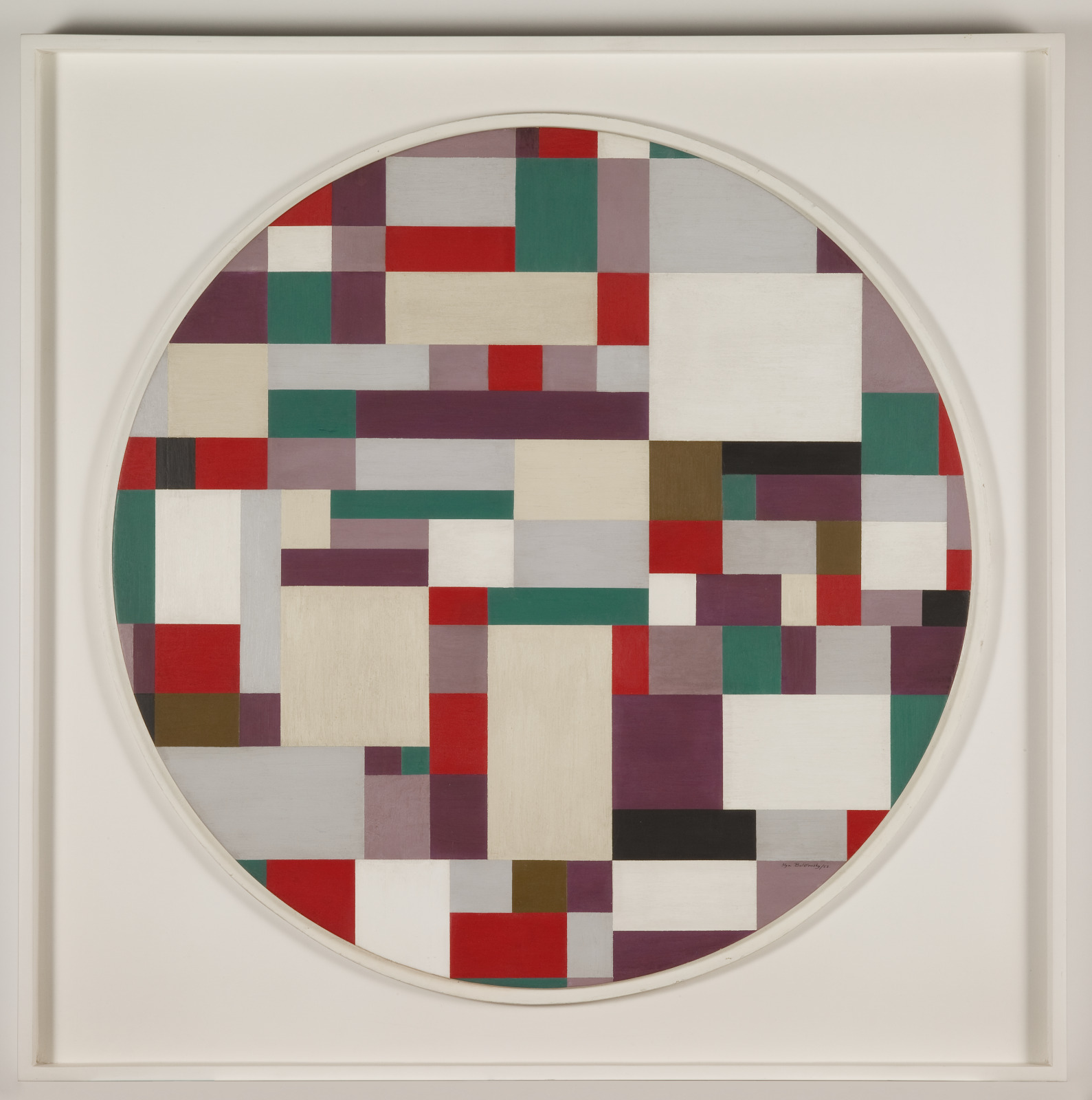
Ilya Bolotowsky, American (born Russia), 1907–1981; Cobalt Circle, 1953; oil on panel; diameter: 22 7/8 inches; Saint Louis Art Museum, Funds given by Harvey and Linda Saligman 106:1987; © 2021 Estate of Ilya Bolotowsky / Licensed by ARS, New York, NY
Ilya Bolotowsky contrasts the circular format of this painting with a rigidly angular, abstract composition in shades of teal, ochre, red, gray, and plum. Educated in Russia, Bolotowsky moved to New York in 1923. He experienced the work of artist Piet Mondrian a decade later and subsequently devoted his career to emulating the geometric, nonobjective style espoused by the Dutch artist. Bolotowsky became a pioneer in American abstraction and experimented with a range of canvas formats including diamonds, triangles, and circles.
February 18, 2021
Cabbage Field
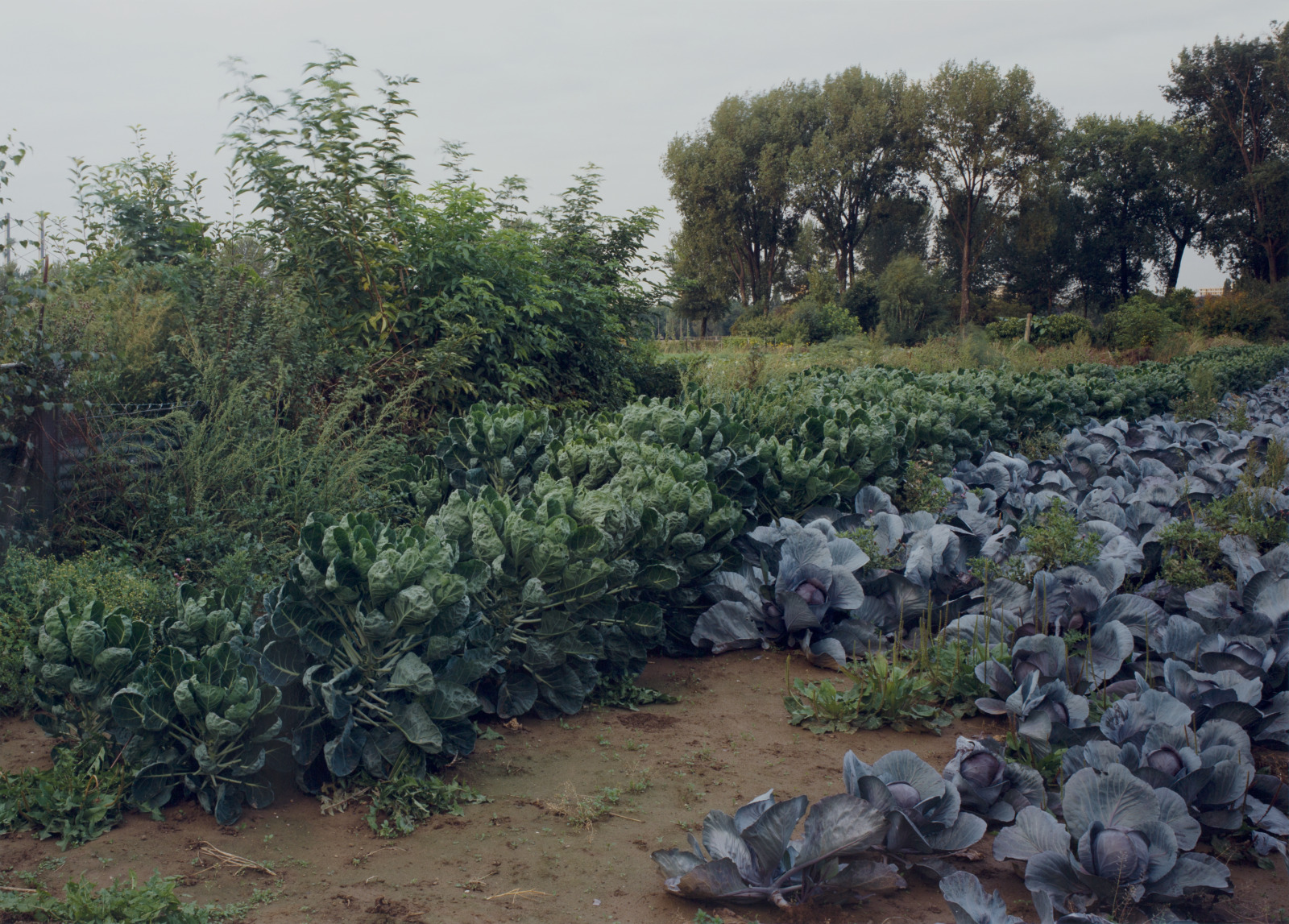
Simone Nieweg, German, born 1962; Cabbage Field, 1990, printed 2003; chromogenic print; image: 40 3/8 x 56 1/2 inches, sheet: 42 x 58 inches; Saint Louis Art Museum, Funds given by the Honorable and Mrs. Thomas F. Eagleton 169:2003; Simone Nieweg, VG Bildkunst
Green cabbages have gone to seed behind rows of purple cabbages in the foreground of this photograph. Simone Nieweg explores the German tradition of Grabeland, a unique community gardening system practiced on the outskirts of urban centers. The particular subject of cabbage, a food often identified as a staple of the German diet, recurs throughout Nieweg’s work. The only evidence of this garden’s proximity to a modern city is the solitary housing complex nestled between two trees in the upper right corner of the composition.
February 9, 2021
Cradling Wheat
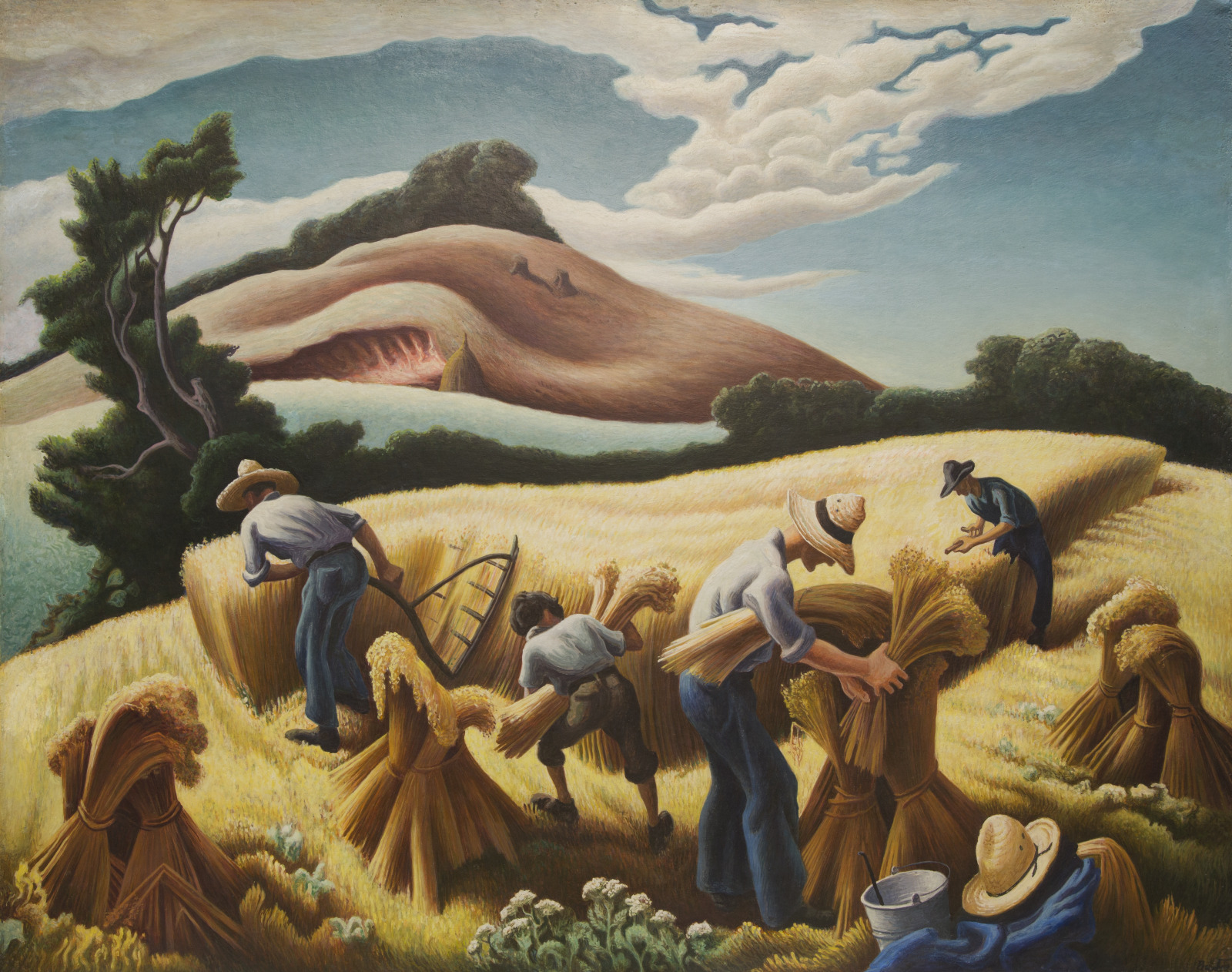
Thomas Hart Benton, American, 1889–1975; Cradling Wheat, 1938; tempera and oil on board; 31 1/4 x 39 1/4 inches; Saint Louis Art Museum, Museum Purchase 8:1939; © 2021 T.H. and R.P. Benton Testamentary Trusts / UMB Bank Trustee / Licensed by VAGA at Artists Rights Society (ARS, NY)
A group of lean, muscular field hands harvest grain on a sunny hillside. The rise and bend of their activity through the undulating contours of the land emphasizes the intimate relationship between man and nature. The artist, Missourian Thomas Hart Benton, was known for elevating the life of the working class, making their everyday labors appear heroic. Benton sought to capture images of grassroots America, which he felt was rapidly disappearing due to industrialization. Certainly Cradling Wheat is nostalgic: the cradle scythe used by the farmer on the left to cut the grain would have been old-fashioned by the 1930s. In his description of Cradling Wheat Benton wrote, “Scene in the hill country of East Tennessee in 1928…doubt whether this kind of harvesting can be found anymore—anywhere.”
February 8, 2021
Landscape with Pathos

Georg Baselitz, German, born 1938; Landscape with Pathos, 1970; synthetic resin on canvas; 79 1/8 x 99 inches; Saint Louis Art Museum, Gift of Alison and John Ferring and Friends Fund 6:2003; © Georg Baselitz 1970
Hear Expert Commentary
-
Transcript
Speaker: Hannah Klemm
Associate Curator of Modern and Contemporary Art
Saint Louis Art MuseumHello, I am Hannah Klemm, the associate curator of modern and contemporary art at the Saint Louis Art Museum. Landscape with Pathos, at first glance, looks almost abstract, yet artist Georg Baselitz has in fact taken an image of a landscape—blue sky, white clouds, trees, and a rocky outcrop—and flipped it upside down. This painting is one of the first works in which Baselitz inverted his imagery, a formula that became his signature style.
It was in 1969 that Baselitz began inverting his compositions; he wanted to stress the constructed nature of painting by creating a sense of dislocation for the viewer. He also wanted to disrupt traditional visual entry into pictorial space and any easy narrative readings of his paintings, but he didn’t want to create a work that was fully abstract. He often used biography as a starting point for the content of these paintings, either locations from his life or people in it, yet the subjects he chooses were often also part of long art historical traditions—such as landscape painting, in this case.
Baselitz was seven years old at the end of World War II. He spent his childhood in Communist East Germany in the town of Deutschbaselitz in Saxony. In 1957 he fled East Germany and enrolled in art school in West Berlin.
This painting is based on the landscape of Saxony. Baselitz was inspired by multiple sources that documented the landscape of his Saxon home. First, he looked to documentary photographs from a 1939 booklet published by the Saxon authorities that detailed regional landscapes and monuments. Baselitz brought several of these booklets of the Saxon landscape with him when he left East Germany. Second, many of his inverted landscapes of this time were influenced by the meticulous regional landscape paintings of the 19th-century Saxon painter Ferdinand von Rayski. Baselitz had seen the work of von Rayski in Dresden as a child with his father. Nearly a century after they were painted, von Rayski’s paintings had been appropriated by the Nazi party for propagandistic purposes.
Baselitz was interested in using his method of inverting the imagery as a way to examine the problematic history of the German landscape. In particular, he was interested in how the Nazis embraced and utilized the German landscape and German aesthetics to glorify the Third Reich, casting a dark shadow on historic artworks and motifs considered typically German.
In his paintings Baselitz confronts the human and cultural tragedies of World War II. Landscape with Pathos’s layered references and dislocating inversion conveyed the displacement and rootlessness caused by the war and subsequent division of Germany that Baselitz also personally felt through his own exile, while the deft combination of expressive, abstract, and documentary traditions demonstrate how landscapes have been coded and coopted throughout history as symbols of national and cultural identity.
With its palette of soft natural tones, this canvas first appears to be a gestural abstract painting. Upon longer study, representational subject matter becomes apparent: an upside-down landscape with the sky and clouds depicted in the lower half. Georg Baselitz inverted the image to draw attention to the painting as a material object and not merely a window into a scene. He based this painting on a black-and-white photograph capturing a landscape view of Saxony, his native region in Germany (hear more above). After inverting the photographed imagery, he added a large boulder—an artistic invention.
February 5, 2021
Jo Baker’s Birthday
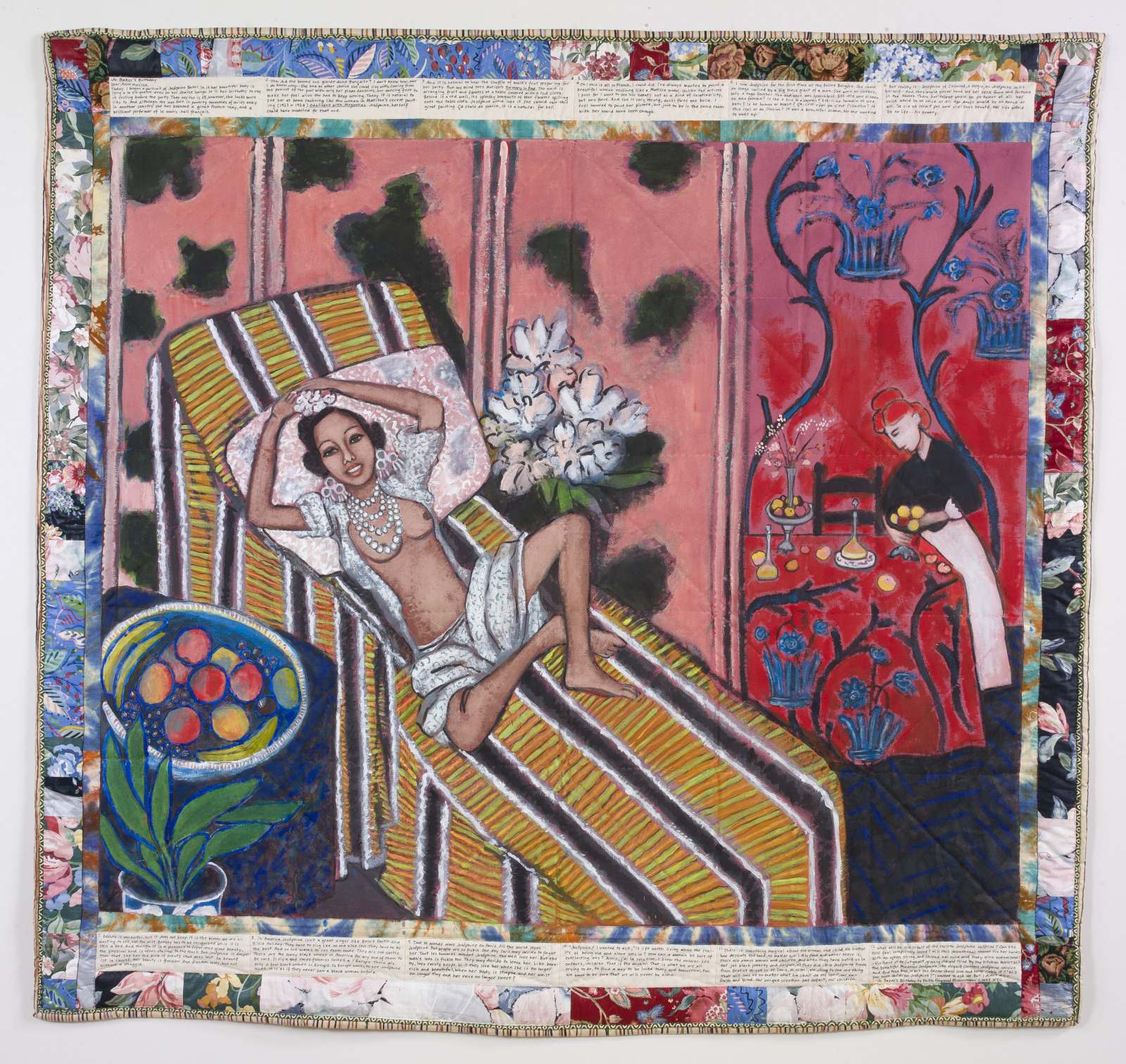
Faith Ringgold, American, born 1930; Jo Baker's Birthday, 1993; acrylic on canvas with tie-dyed and printed fabric; 74 1/4 x 78 1/2 inches; Saint Louis Art Museum, Museum Minority Artists Purchase Fund, the Honorable Carol E. Jackson, Casually Off-Grain Quilters of Chesterfield, Mr. and Mrs. Steven M. Cousins, Mr. and Mrs. Lester A. Crancer Jr., Mr. and Mrs. Solon Gershman, Mr. Sidney Goldstein in memory of Chip Goldstein, The Links, Inc., Gateway Chapter, the Honorable and Mrs. Charles A. Shaw, Donald M. Suggs, the Thimble & Thread Quilt Guild, and funds given in honor of Cuesta Benberry 10:1994; © 2021 Faith Ringgold / Artists Rights Society (ARS), New York
This painted quilt tells a story of a fictional African American artist living in France in the 1920s. Throughout a series of such quilts, the character Willia Marie Simone encounters important European artists as well as influential African American women. Through Willia, artist Faith Ringgold reshaped the past to redress the absence of Black figures in art history. In panels of text along the top and bottom of the quilt, Willia explains that she is painting a portrait of the famous St. Louis-born dancer Josephine Baker. In the background at right is a section of French artist Henri Matisse’s painting Harmony in Red. Regarding her choice of the quilt as a medium, Ringgold has said, “Feminist art is soft art, lightweight art, sewing art…Women’s art is less rigid, and it’s open to all kinds of new innovations.”
Discover more works by African American and African artists in the Museum’s collection.
February 3, 2021
Curtain Panel with Design of Horizontal Bands of Geometric Patterns and Arabic Inscriptions in Kufic Script

Curtain Panel with Design of Horizontal Bands of Geometric Patterns and Arabic Inscriptions in Kufic Script, late 14th century; Spanish, Nasrid period; brocaded silk; 40 5/8 x 14 5/8 inches; Saint Louis Art Museum, Museum Purchase 52:1939
From the 8th-century onward, Spanish weavers produced world-famous silks, continuing a tradition brought to Spain under Islamic-rule. The 17th-century writer Maqqar-I noted that the southern region of Spain produced silks that were exported to the far reaches of the Islamic world and beyond. This silk panel preserves a riot of controlled color and design in two joined strips with twenty-one bands of pattern. Two horizontal friezes, consisting of nine bands each, separate the two large pattern fields of elaborate eight-pointed stars in a complicated arabesque ground.
February 2, 2021
Madonna Figure
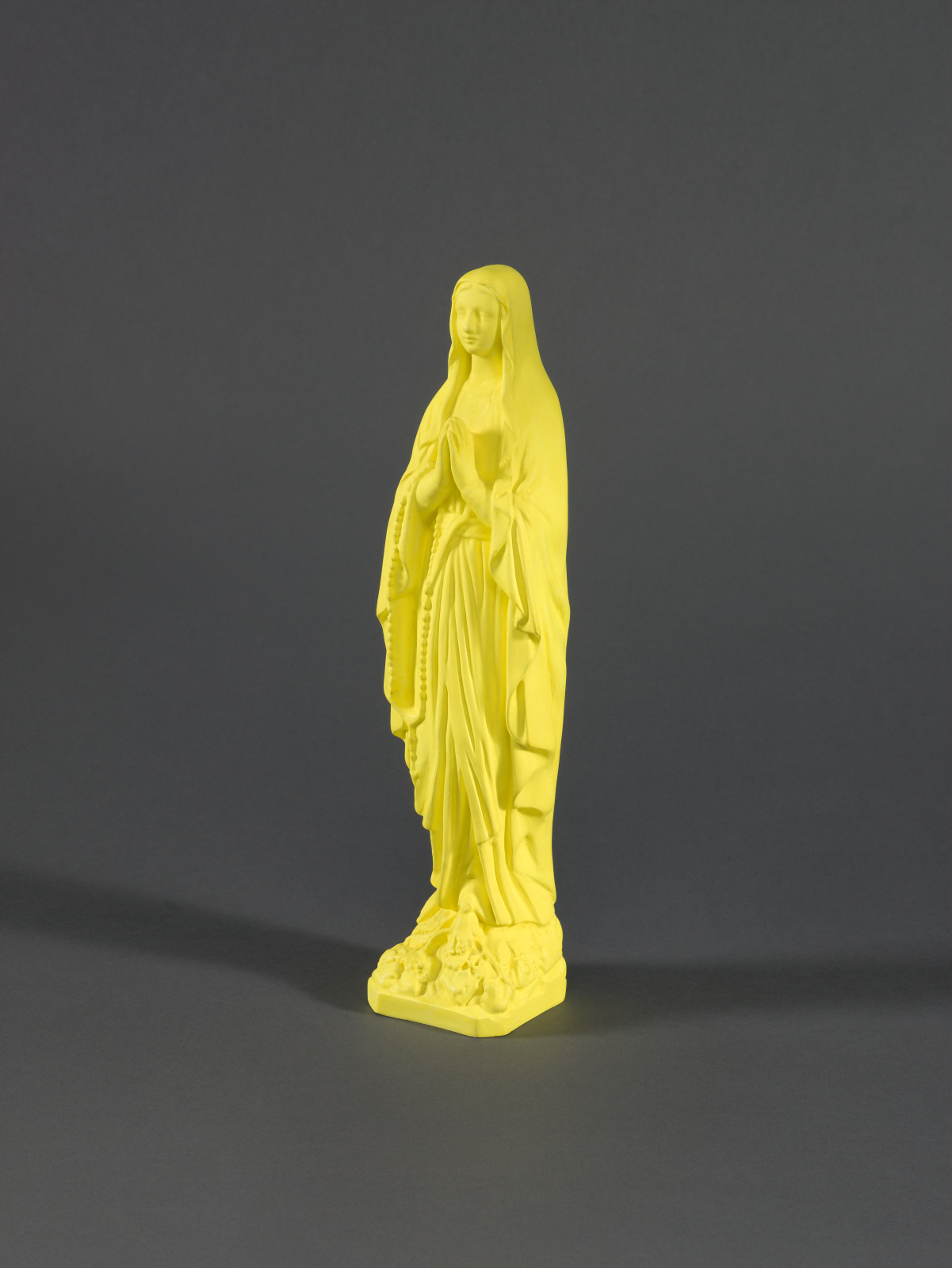
Katharina Fritsch, German, born 1956; Madonna Figure, 1982; painted plaster; 12 x 2 3/4 x 2 3/4 inches; Saint Louis Art Museum, Partial and promised gift of Betsy Millard, the Earl and Betsy Millard Collection 40:2003; © 2021 Artists Rights Society (ARS), New York, NY
Madonna Figure is cast from a small plaster statuette found in a tourist shop in Lourdes, France. Pilgrims, or people traveling to sacred sites for religious reasons, come to Lourdes in hopes of witnessing a miracle. Katharina Fritsch explores the nature of human perception and experience through sculpture. Her alterations of scale, color, and material make otherwise familiar objects seem strange. Fritsch is inspired by aspects of her native German folklore as well as broader consumer culture, which she mines for references. While objects such as this often have autobiographical significance, Fritsch also intends them to hold general, collective meanings, both as symbols of popular culture and as triggers of our own memories and associations.
January 27, 2021
Bruch der Gefäße (Breaking of the Vessels)
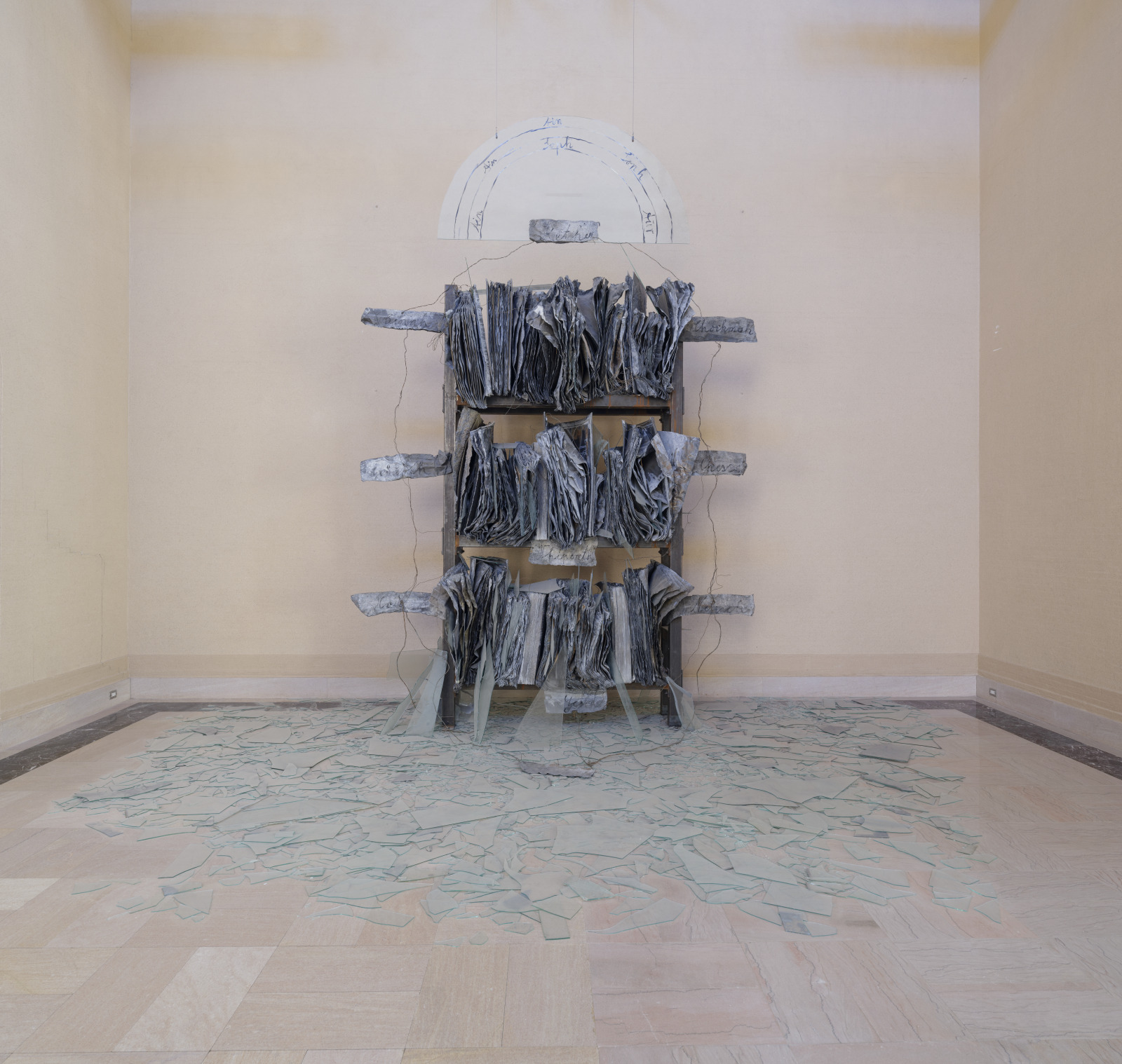
Anselm Kiefer, German, born 1945; Breaking of the Vessels, 1990; lead, iron, glass, copper wire, charcoal, and Aquatec; installed: 12 feet 5 inches x 27 feet 5 1/2 inches x 17 feet; Saint Louis Art Museum, Funds given by Mr. and Mrs. George Schlapp, Mrs. Francis A. Mesker, the Henry L. and Natalie Edison Freund Charitable Trust, The Arthur and Helen Baer Charitable Foundation, Sam and Marilyn Fox, Mrs. Eleanor J. Moore, Mr. and Mrs. John Wooten Moore, Donna and William Nussbaum, Mr. and Mrs. James E. Schneithorst, Jain and Richard Shaikewitz, Mark Twain Bancshares, Inc., Mr. and Mrs. Gary Wolff, Mr. and Mrs. Lester P. Ackerman Jr., the Honorable and Mrs. Thomas F. Eagleton, Alison and John Ferring, Mrs. Gail K. Fischmann, Mr. and Mrs. Solon Gershman, Dr. and Mrs. Gary Hansen, Nancy and Kenneth Kranzberg, Mr. and Mrs. Gyo Obata, Jane and Warren Shapleigh, Lee and Barbara Wagman, Anabeth Calkins and John Weil, Museum Shop Fund, the Contemporary Art Society, and Museum Purchase; Dr. and Mrs. Harold J. Joseph, estate of Alice P. Francis, Fine Arts Associates, J. Lionberger Davis, Mr. and Mrs. Samuel B. Edison, Mr. and Mrs. Morton D. May, estate of Louise H. Franciscus, an anonymous donor, Miss Ella M. Boedeker, by exchange 1:1991; © Anselm Kiefer
In this work, weighing over seven tons, lead book folios and broken panes of glass fill the shelves of a monumental bookcase. The lead books reference the centrality of learning to Jewish culture, while other elements of the sculpture represent ideas put forth in the Kabbalah, a collection of ancient Jewish mystical writings. The semicircular pane of glass suspended above the bookcase represents the spirit of G-d and is inscribed with the Hebrew words Ain Soph Aur, meaning “Infinite Light.” According to kabbalistic tradition, attributes of G-d’s light were divided among 10 vessels not strong enough to hold them. The destruction or breaking of the vessels brought the Divine into an imperfect world.
Anselm Kiefer symbolized these vessels through the lead markers extending from the sides of the bookcase linked with copper wire. The shattered glass projecting from the shelves and littering the floor beneath the bookcase recalls Kristallnacht (the Night of Broken Glass) in Germany, when civilians and Nazi paramilitary officers smashed thousands of synagogue windows and Jewish-owned storefronts on November 9 and 10, 1938. Kiefer’s towering installation commemorates the persecution of Jews, and its shattered glass suggests the fragility and imperfection of human existence.
January 25, 2021
Augustus III, Elector of Saxony and King of Poland

Johann Joachim Kändler, German, 1706–1775; made by Meissen Porcelain Factory, Germany, founded 1710; Augustus III, Elector of Saxony and King of Poland, 1736; glazed porcelain and bronze with gilding; figure and base, height: 26 1/4 inches; Saint Louis Art Museum, Museum Purchase 256:1951a,b
This portrait of Augustus was modeled from life. The king’s pose, gesture, and Roman-style armor are formulas of state portraiture, intended to affirm the king’s power and virtue by clothing him as a classical hero. Far from formulaic, however, is the richly modeled and chased breastplate, which reveals the king’s substantial torso, the scale-ornamented plates of his skirt, and the plumed helmet at his feet. The figure is a masterpiece of ceramic sculpture, both for its artistic virtuosity and for the technical challenge of firing so large a piece of porcelain.
January 24, 2021
Untitled (Portrait of the Artist’s Father)
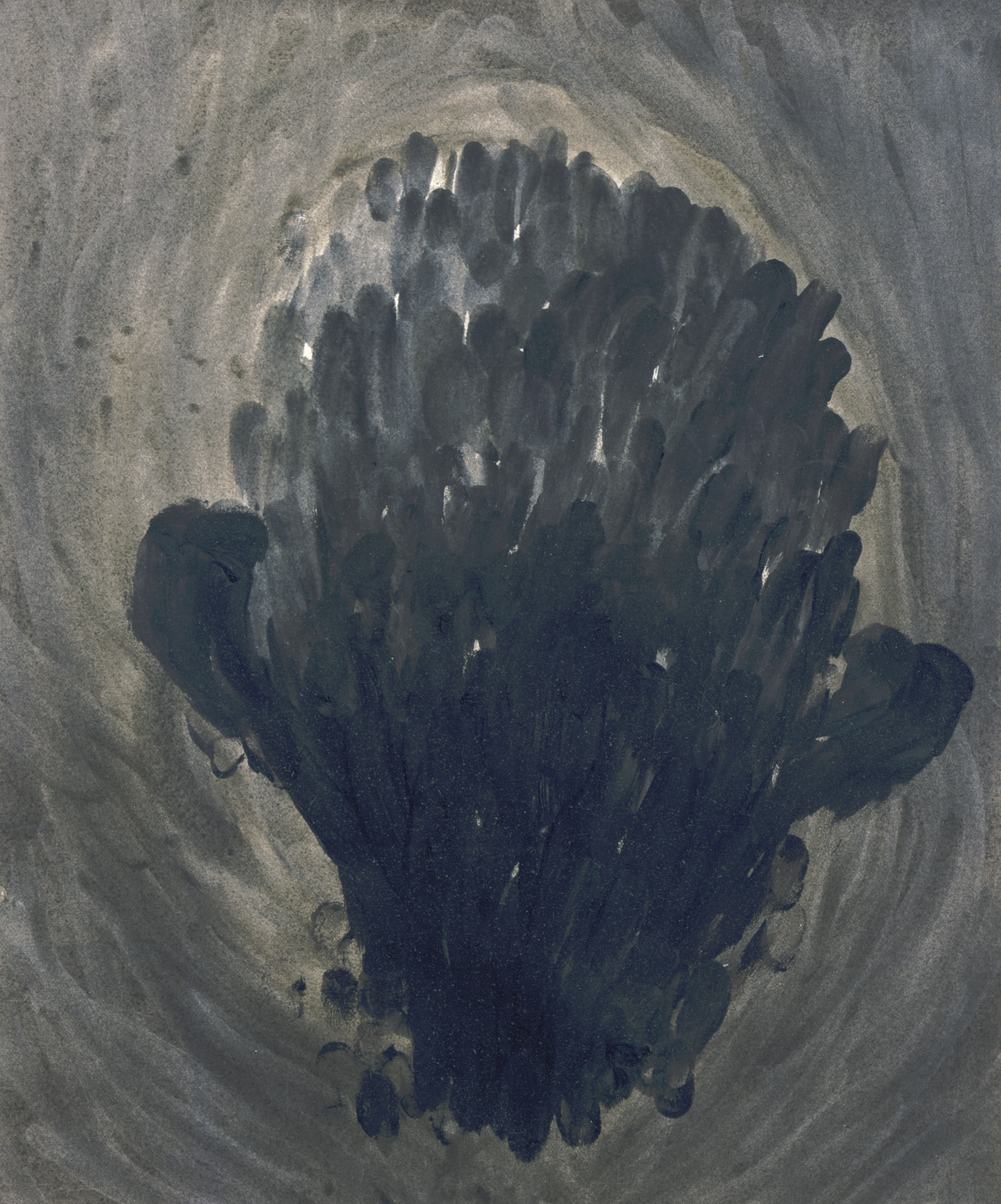
Rosemarie Trockel, German, born 1952; Untitled (Portrait of the Artist's Father), 1995; acrylic wash and acrylic paint on paper; 12 1/8 x 9 15/16 inches; Saint Louis Art Museum, Gift of Betsy Millard, the Earl and Betsy Millard Collection 110:2003; © 2021 Artists Rights Society (ARS), New York / VG Bild-Kunst, Bonn
Rosemarie Trockel’s oeuvre encompasses a broad range of media and styles, but each piece focuses on a specific detail or theme that is carefully elaborated. The subjects range from hybrid fairy-tale creatures to portraits of friends and family. In this portrait, Trockel finger-painted an image of her uncommunicative father. She was inspired by Freudian therapy, which encourages patients to draw images of family members as a way of releasing hidden emotions. Trockel recalled that the making of this drawing was “pure emotion” and part of an organic process in which all parts were created intuitively.
January 23, 2021
The Mississippi
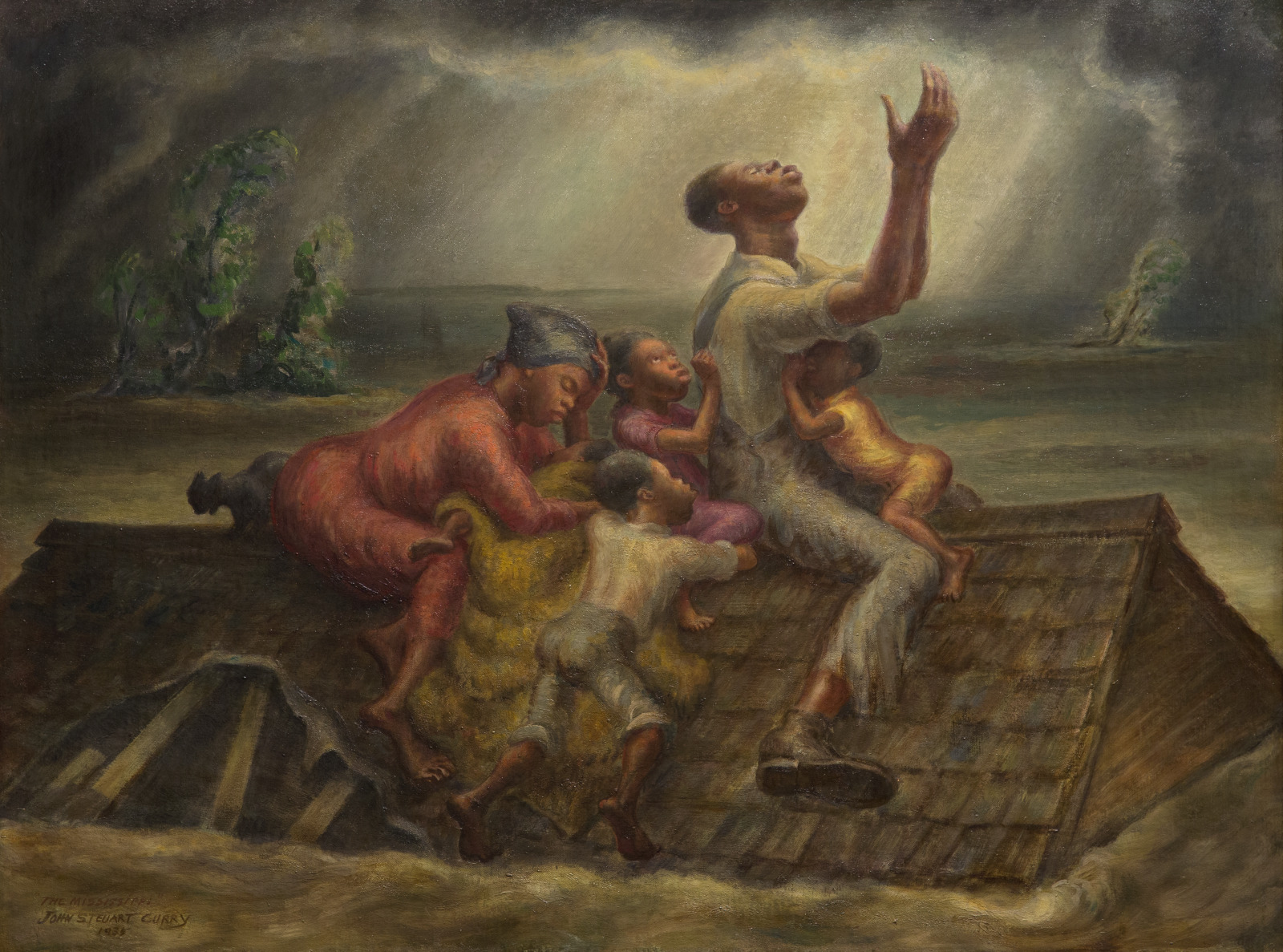
John Steuart Curry, American, 1897–1946; The Mississippi, 1935; tempera on canvas mounted on panel; 36 x 48 inches; Saint Louis Art Museum, Museum Purchase 7:1937
An African American family and their bedraggled cat cling to the roof of a house adrift in the muddy turbulence of flood water. The father’s raised hands beseeching divine aid are silhouetted against a break of light, suggesting hope for their dire situation. The artist, John Steuart Curry, like many of his fellow American Scene artists, believed in the rural family as the bedrock of American values. This painting is based on a drawing by the artist whose title, Mississippi Noah, refers to a flood that plagued the Mississippi Valley in 1927. Covering 27,000 square miles, displacing over 200,000 African Americans and enlarging the Mississippi River to a width of 60 miles below Memphis, this flood was one of the most destructive in the nation’s history. It was, however, only one of the many floods that plagued rural populations in the 1930s.
January 22, 2021
Untitled
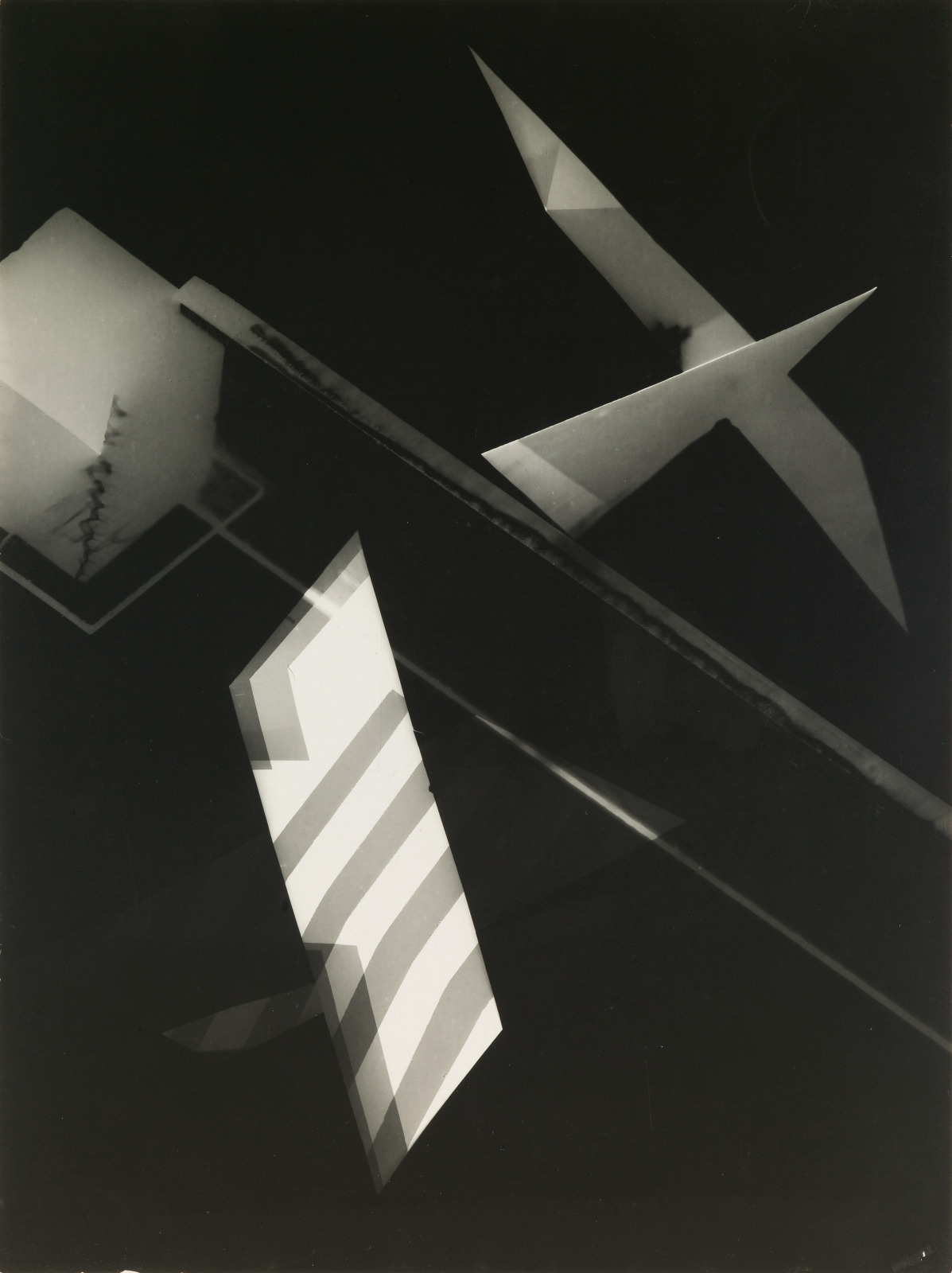
László Moholy-Nagy, American (born Austria-Hungary), 1895–1946; Untitled, c.1925; gelatin silver print; image: 9 1/2 x 7 inches; Saint Louis Art Museum, Friends Fund 7:1983; © 2021 Estate of László Moholy-Nagy / Artists Rights Society (ARS), New York / VG Bild-Kunst, Bonn
In Abstraction Laszlo Moholy-Nagy explores the formal relationships between light and dark through the photogram, a technique in which light is projected directly onto objects, both translucent and opaque, that have been placed on photographic paper. During his time as an instructor in metal arts at the Weimar Bauhaus from 1923 to 1928, Moholy-Nagy experimented with works from unusual points of view, as if seen through the eye of a worm or bird. His interest in odd perspectives is evident here, where forms appear to float in space, while the winged shape in the center suggests flight. Though he never described himself as a photographer, Moholy-Nagy produced some of the most influential photographs of the twentieth century.
January 20, 2021
George Washington

Rembrandt Peale, American, 1778–1860; George Washington, c.1845; oil on canvas; framed: 48 5/8 x 41 5/8 inches; Saint Louis Art Museum, Bequest of Edith J. and C. C. Johnson Spink 30:2014
Rembrandt Peale portrays George Washington in military dress, gazing resolutely off into the distance. Washington was commander of the Continental Army during the American Revolution and first president of the United States (1789–1797). In the decades following his death in 1799, public demand for his image grew.
We know that Washington had a rather long face and pear-shaped body. In this portrait Peale has squared off the chin, broadened the shoulders, and encircled the leader in stone to better evoke his visionary strength. Peale’s efforts were successful, and over a period of 40 years, beginning in 1824, he completed 79 versions of this portrait.
January 19, 2021
Steely Day
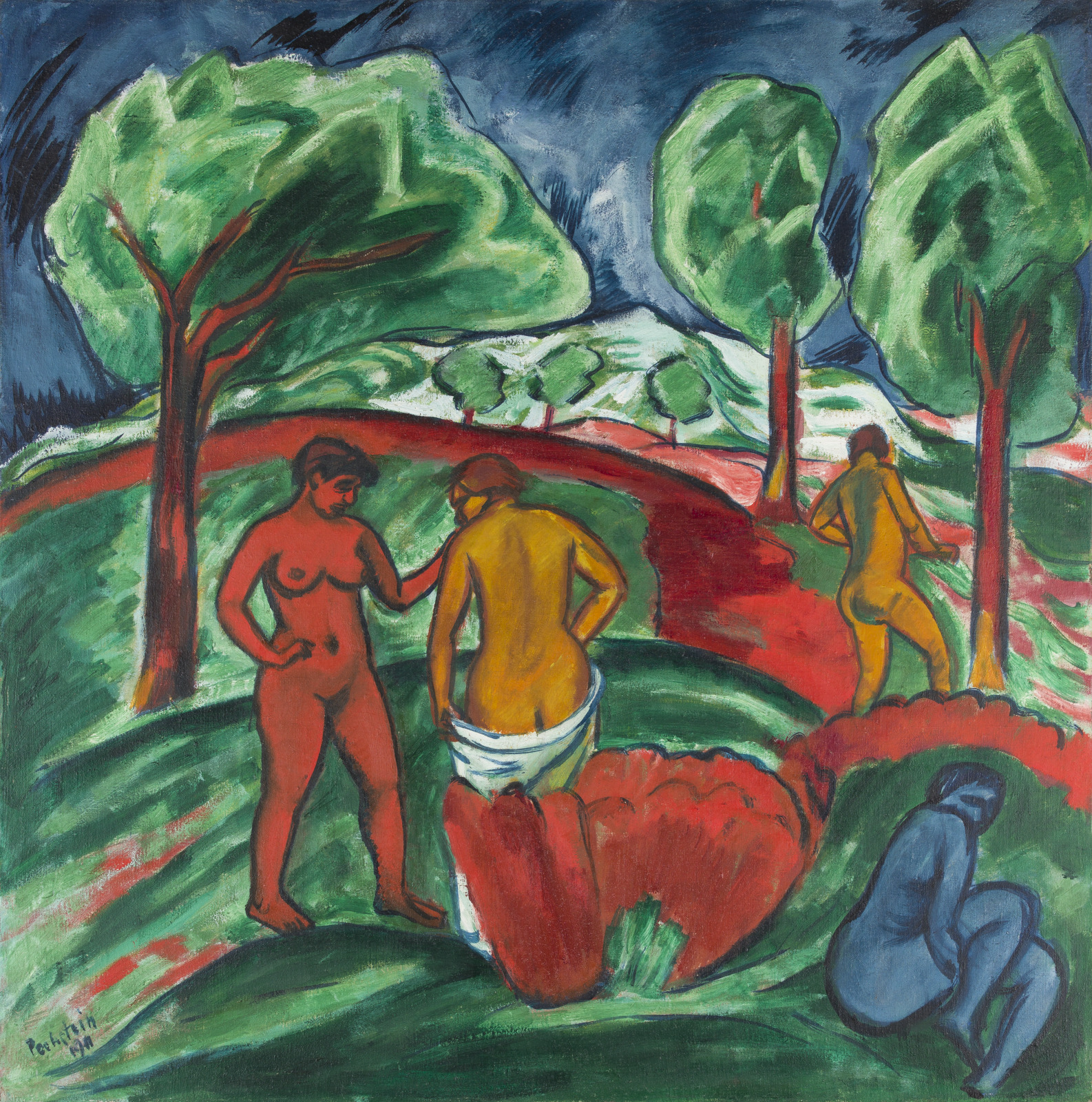
Max Pechstein, German, 1881–1955; Day of Steel, 1911; oil on canvas; 39 1/2 x 39 1/2 inches; Saint Louis Art Museum, Bequest of Morton D. May 927:1983; © 2021 Artists Rights Society (ARS), New York / Pechstein Hamburg / Toekendorf / VG Bild Kunst, Bonn
Women in dramatic primary colors of red, yellow, and blue explore a wooded setting. Max Pechstein painted Day of Steel during his second visit to Nidden (present-day Nida, Lithuania), a fishing village on the Baltic Sea. Although Pechstein lived in the metropolis of Berlin, he relished his annual trips to the seaside as opportunities to find artistic inspiration in nature. The painting’s enigmatic title may reference the steely blue sky or, more allusively, nudist bathing as a “steeling” and revitalizing activity, particularly since Pechstein wrote of the dreadful weather that he experienced during his stay.
January 2, 2021
Christ and the Sinner
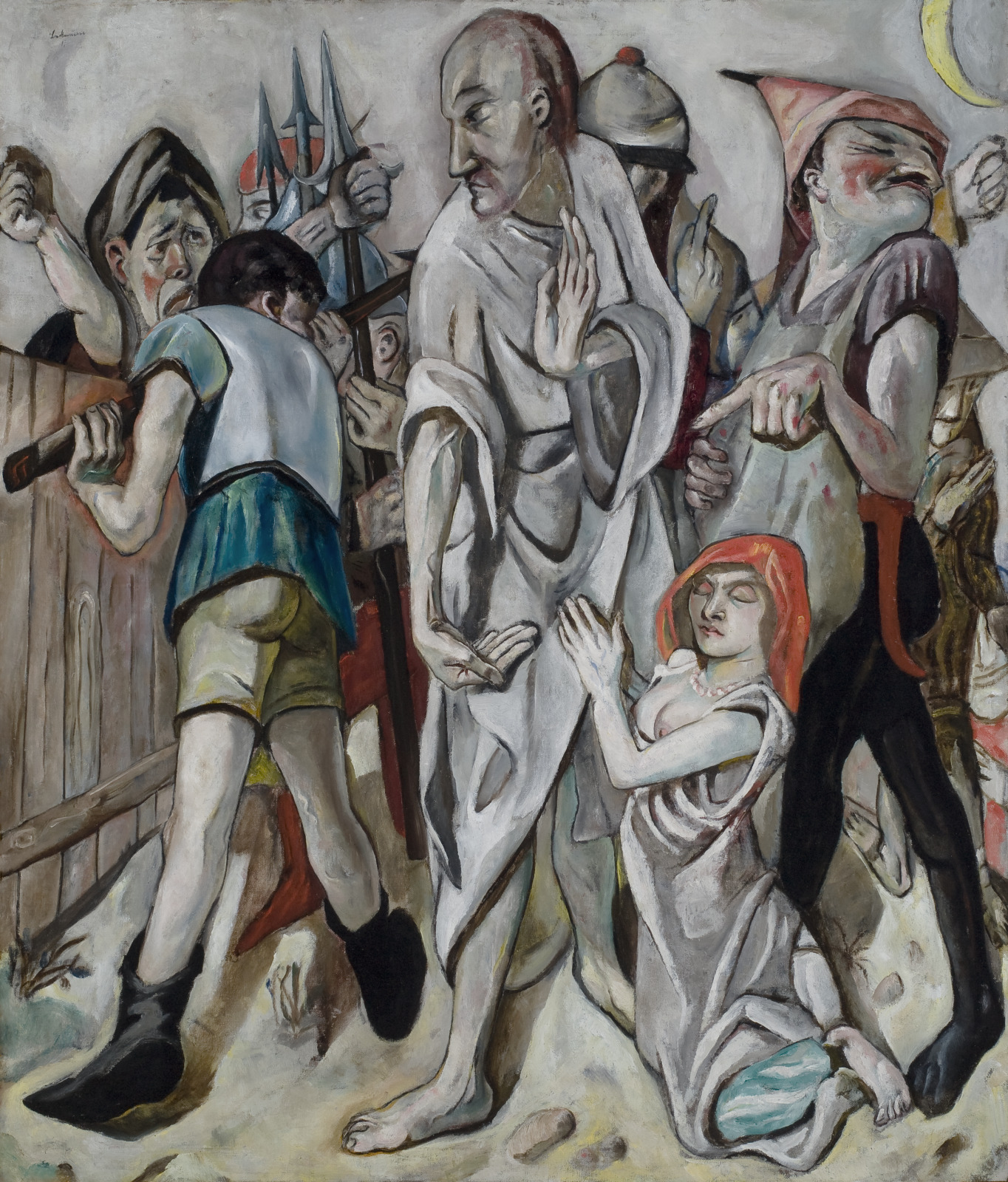
Max Beckmann, German, 1884–1950; Christ and the Sinner, 1917; oil on canvas; 58 3/4 x 49 7/8 inches; Saint Louis Art Museum, Bequest of Curt Valentin 185:1955
Hear Expert Commentary
-
Transcript
Speaker: Melissa Venator
Andrew W. Mellon Foundation Fellow for Modern Art
Saint Louis Art MuseumThis is a painting titled Christ and the Sinner, made in 1917 by Max Beckmann. It shows a passage from the Gospel of John from the New Testament of the Christian Bible. In the passage Jesus is asked to determine the fate of a woman accused of adultery. The law called for her to be stoned to death, but Jesus responded, “He that is without sin among you, let him first cast a stone at her,” the source of the familiar expression, “let him who is without sin cast the first stone.” It’s interpreted as a lesson in the virtue of forgiveness and a warning against hypocrisy. After all, are any of us so good that we can judge the action of others?
Beckmann often depicted scenes from the Bible, but he wasn’t a particularly religious man. For him, biblical stories represented universal themes, like the idea of forgiveness, easily understood by the average German. And that’s an important point to remember. In the German census of 1910, over 98 percent of Germans identified as Christian, either Protestant or Catholic. They would be familiar enough with Bible stories to identify the subject of this painting from the figures alone, and they would also know its moral lesson.
But while Beckmann refers to the biblical account, he also departs from it. Jesus stands at the center in a white robe, but Beckmann shows him beardless and bald, looking, in fact, very much like Beckmann himself. The woman at his feet is the woman accused of adultery, kneeling in prayer and thanking Jesus for his intercession. The other figures are harder to identify. One may be a soldier, another in tights and a red pointed hat and apron is a complete mystery. And they all make bizarre hand gestures. These are puzzles with no clear answers, which leave us with unresolved curiosity, a response I regularly have to Beckmann’s art.
As we try to understand Christ and the Sinner, its date helps a lot: 1917, the middle of World War I. By then Beckmann’s war was already over. He volunteered as a medical orderly in early 1915 and spent a year in occupied Belgium caring for wounded soldiers. In a letter home, he described how the wounded men reminded him of the sufferings of Jesus, likely the only example of a heavily wounded man he had ever encountered in his life before the war.
Beckmann’s constant exposure to pain and death led to a breakdown and discharge on medical grounds. While recuperating he began to paint large biblical scenes in a new angular and more abstract style, paintings including Christ and the Sinner. For Germans in the midst of war, not just Beckmann, the Bible’s apocalyptic narrative seemed a wholly appropriate metaphor for the large-scale human loss and environmental devastation.
In this unconventional depiction (hear more above), Jesus stops an angry mob from stoning a woman to death. The biblical story’s message of non-violence expresses Max Beckmann’s pacifism after his wartime service. Beckmann volunteered as a medical orderly during the war, but constant exposure to dead and dying soldiers traumatized him. This is one of the first paintings he made after his discharge in 1917. Twenty years later, Christ and the Sinner appeared in the infamous Entartete Kunst (Degenerate Art) show, a propaganda exhibition organized by the Nazi government to indoctrinate Germans against Expressionist and abstract art.
January 1, 2021
Reliquary Guardian Figure (mbulu ngulu)
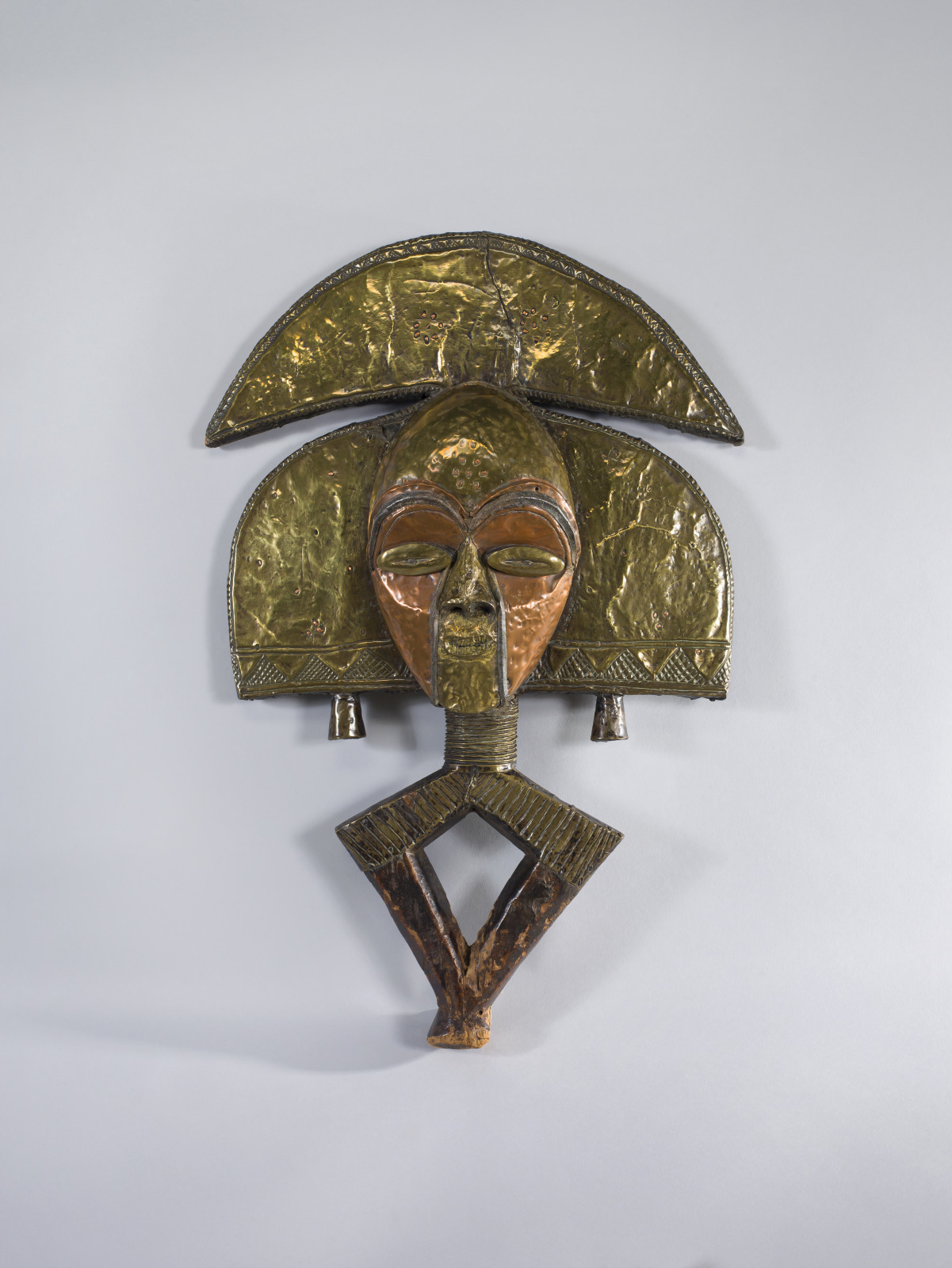
Kota artist, Gabon; Reliquary Guardian Figure (mbulu ngulu), late 19th–early 20th century; wood, copper, brass, iron; 25 1/2 x 16 1/4 x 4 1/2 inches; Saint Louis Art Museum, Funds given by The May Department Stores Company, and gift of Mr. and Mrs. Alvin S. Novack, Morton D. May, Ernest Anspach, Thomas Alexander, Michael Roth, J. Lionberger Davis, Jerry O. Wilkerson, and bequest of Morton D. May, by exchange; Museum Purchase and Friends Fund 23:1989
Kota reliquary guardian figures (mbulu ngulu), such as this one, are unique among African sculptural forms in their combination of wood and hammered metal. It is thought that the figurative form of the mbulu ngulu was intended to reinforce and communicate the reliquary’s intense power. The Kota used reliquary guardian figures to protect and identify the revered bones of family ancestors. The Kota believed that the relics of important men and women retain power after death, providing protection and good fortune to an individual’s descendants. The remains were preserved in containers made of bark or basketry. The mbulu ngulu stood atop this bundle, bound to it at the figure’s lozenge-shaped base.
Throughout this week, Object of the Day will feature a series of African works of art in celebration of Kwanzaa.
December 30, 2020
Crown (adenla)
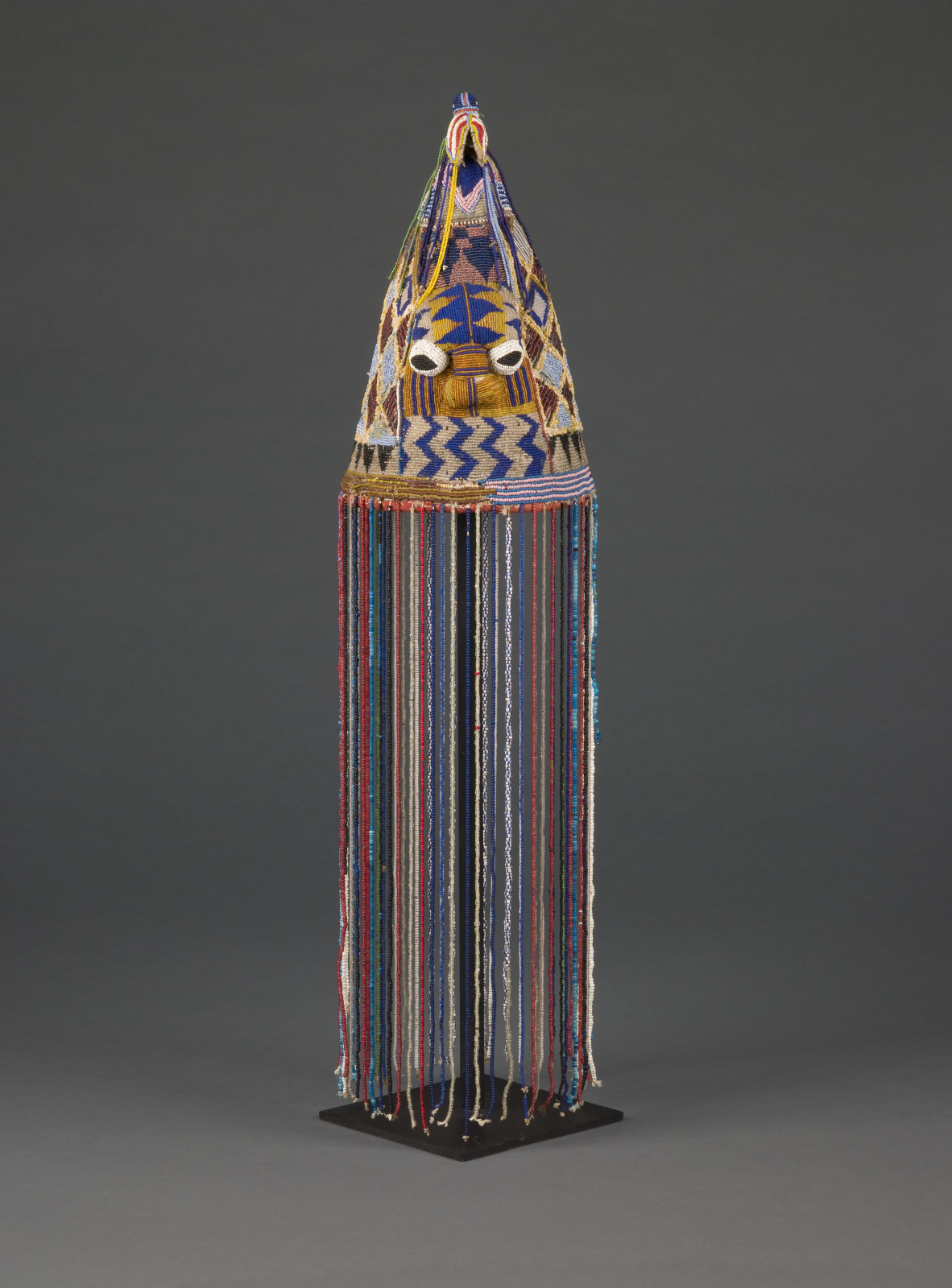
Yoruba artist, Nigeria; Crown (adenla), 20th century; glass beads, cotton fabric, rattan; 34 x 8 3/16 inches; Saint Louis Art Museum, Gift of Jeffrey and Jackie Hammer 52:2009
Lavish glass beading on this crown emphasizes the wealth and power of a Yoruba oba (king). Glass beads, imported from eastern Europe and northern Italy via transatlantic trade, became an important signifier of wealth. This crown’s veil concealed the face of the oba; the luxury of bountifully beaded ornamentation further underscored the separation between a semidivine king and his constituency. The crown’s principal conical shape highlights the significance of an oba’s ori inu, the “inner head,” which in Yoruba belief holds one’s character, intellect, destiny, and spiritual essence. The ori inu takes precedent over the ori ode, one’s physical “outer head.”
Throughout this week, Object of the Day will feature a series of African works of art in celebration of Kwanzaa.
December 29, 2020
Chief’s Chair
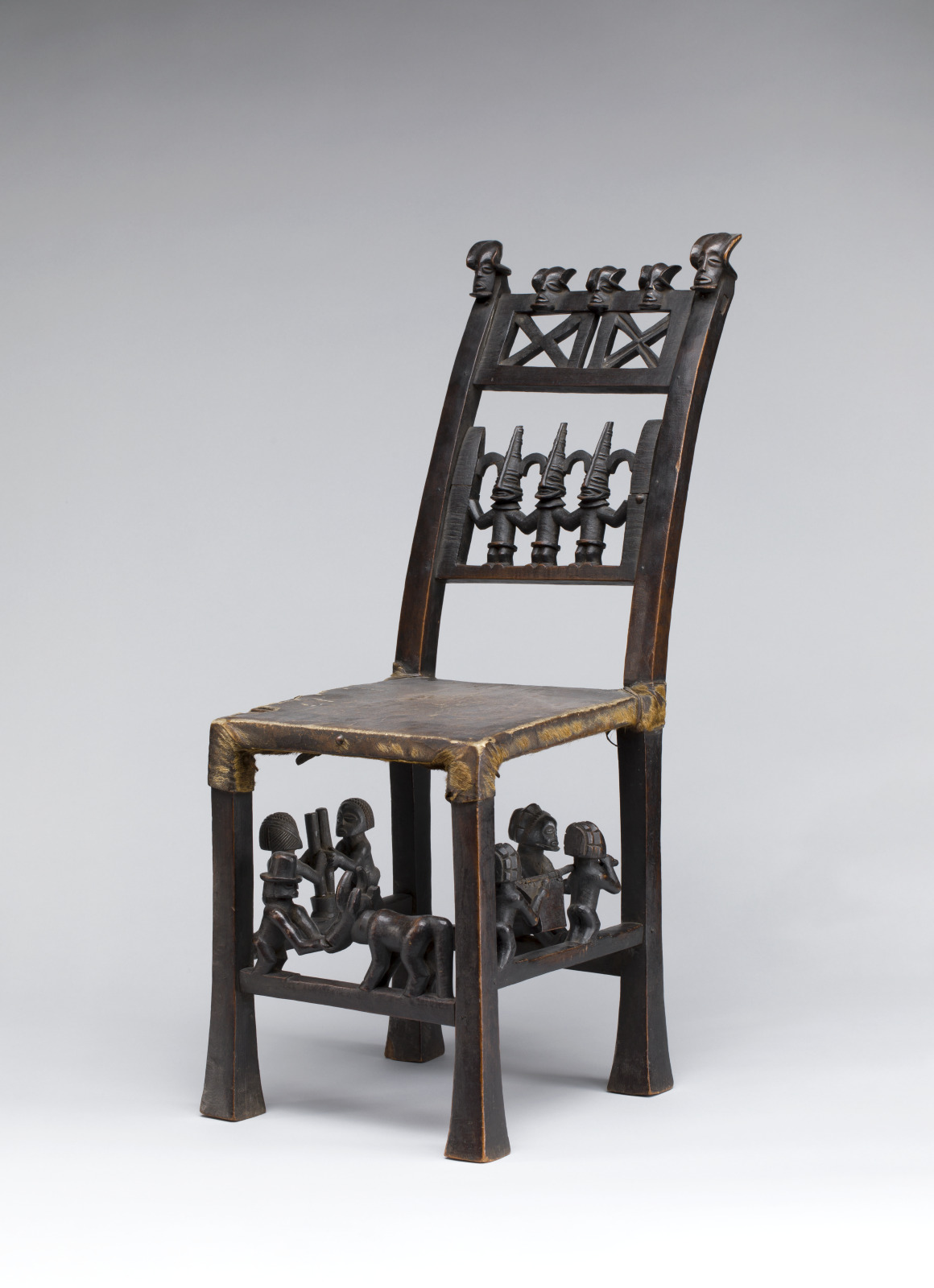
Chokwe artist, Angola; Chief's Chair, 19th century; wood, brass, hide; 29 1/4 x 11 x 17 1/2 inches; Saint Louis Art Museum, Museum Purchase 7:1943
This chair is a symbol of political power and social hierarchy. The top of the chair back features the heads of five Chokwe chiefs in royal headdresses. Below the chiefs, on the lower back are carved images of three initiates of the young men’s masking society (see detail), an association controlled by the chief. Underneath the initiates, on one side are a pair of musicians who carry and play a wood slit drum. On the opposite rung are two women with tall pestles pounding food in a mortar. The other two rungs feature carvings of scenes from Chokwe life, including a man leading a cow. From the 16th century, Portuguese traders imported European-style joinery chairs and presented them as gifts to their African trading partners. As the chairs were traded into the interior, they became prestige objects and eventually served as prototypes for chairs used by Chokwe chiefs.
Throughout this week, Object of the Day will feature a series of African works of art in celebration of Kwanzaa.
December 28, 2020
Crest Mask (ci-wara kun)
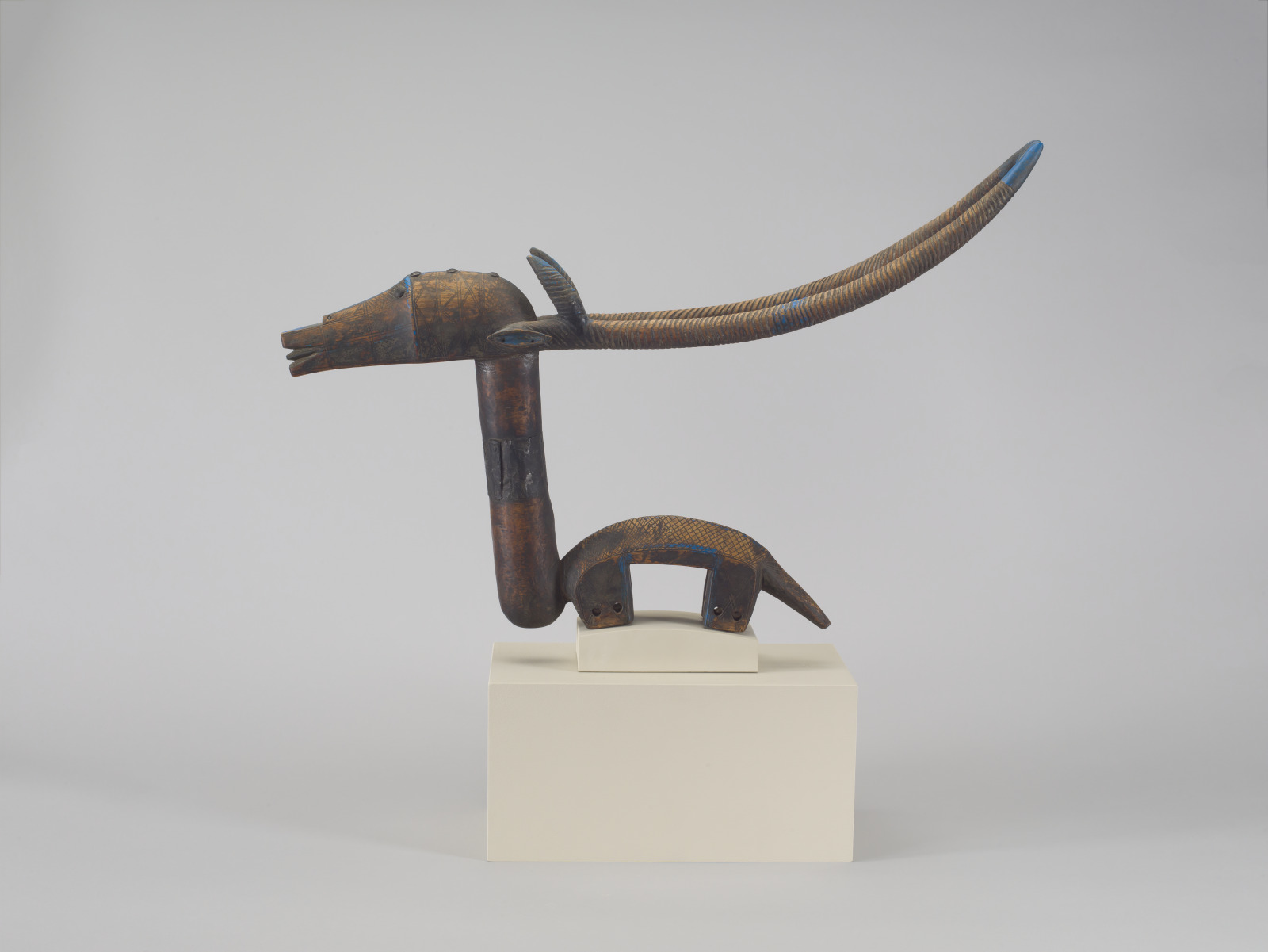
Bamana artist, Mali; Crest Mask (ci-wara kun), early 20th century; wood, pigment, metal tacks; 17 1/2 x 25 x 3 3/4 inches; Saint Louis Art Museum, Museum Shop Fund 68:1998
This headdress, called ci‑wara kun, primarily represents an antelope, an important animal in Bamana culture. The antelope’s power is a metaphor for the successful farmer who tirelessly tills his fields. Worn on the heads of male dancers, these headdresses are always performed in pairs—one male and one female—to symbolize the fertility of both land and animals. A male mask such as this would have been joined by a female mask and danced together to the sound of drums in order to bring forth the rain, clear the fields, and harvest the crops. Music and entertainment by the masked performers would inspire the young men to work efficiently and in harmony.
Throughout this week, Object of the Day will feature a series of African works of art in celebration of Kwanzaa.
December 27, 2020
Veranda Post

Yoruba artist, Nigeria; Veranda Post, 20th century; wood; 82 11/16 x 5 1/16 x 3 3/16 inches; Saint Louis Art Museum, Gift of Morton D. May 273:1972
The warrior-hunter, recognizable by his gun and long-tailed headdress, appears twice on this veranda post, standing atop a ram’s head above, and with his feline prey below (see detail). The sculpture communicated that its owner was a cosmopolitan individual who honored Ogun, the Yoruba god of warriors and chiefs, observed Islamic teachings, and maintained political ties with the British colonial administration. A Muslim teacher below is identifiable by the turban he wears and the Koranic writing board and prayer beads he holds. Above him, carved in relief, is a seated European colonial official, recognizable by his pith helmet, pipe, and book. Thus, leadership, in the forms of warriorhood, education, and politics, represents the values of the owner whose residence this post once adorned.
Throughout this week, Object of the Day will feature a series of African works of art in celebration of Kwanzaa.
December 25, 2020
Madonna and Child Enthroned with Sts. Peter, John the Baptist, Dominic, and Nicholas of Bari

Piero di Cosimo, Italian, 1461/62–1521; Madonna and Child Enthroned with Sts. Peter, John the Baptist, Dominic, and Nicholas of Bari, c.1481–85; tempera and oil on panel; 105 1/4 x 63 3/8 inches; Saint Louis Art Museum, Museum Purchase 1:1940
In a lifelike rendering, this large panel portrays a sacra conversazione (holy conversation) where saints surround the Madonna and Child in a unified pictorial space. Saint Peter presents the kneeling Saint Dominic (left) while Saint John the Baptist announces Christ’s ministry, and Saint Nicholas kneels in devotion (right). The three smaller panels, called a predella, depict scenes from the lives of Saints Dominic, John, and Nicholas (see detail). The Pugliese coat of arms adorns the frame, identifying the Florentine family who commissioned the work for its private chapel.
December 17, 2020
Urbis II
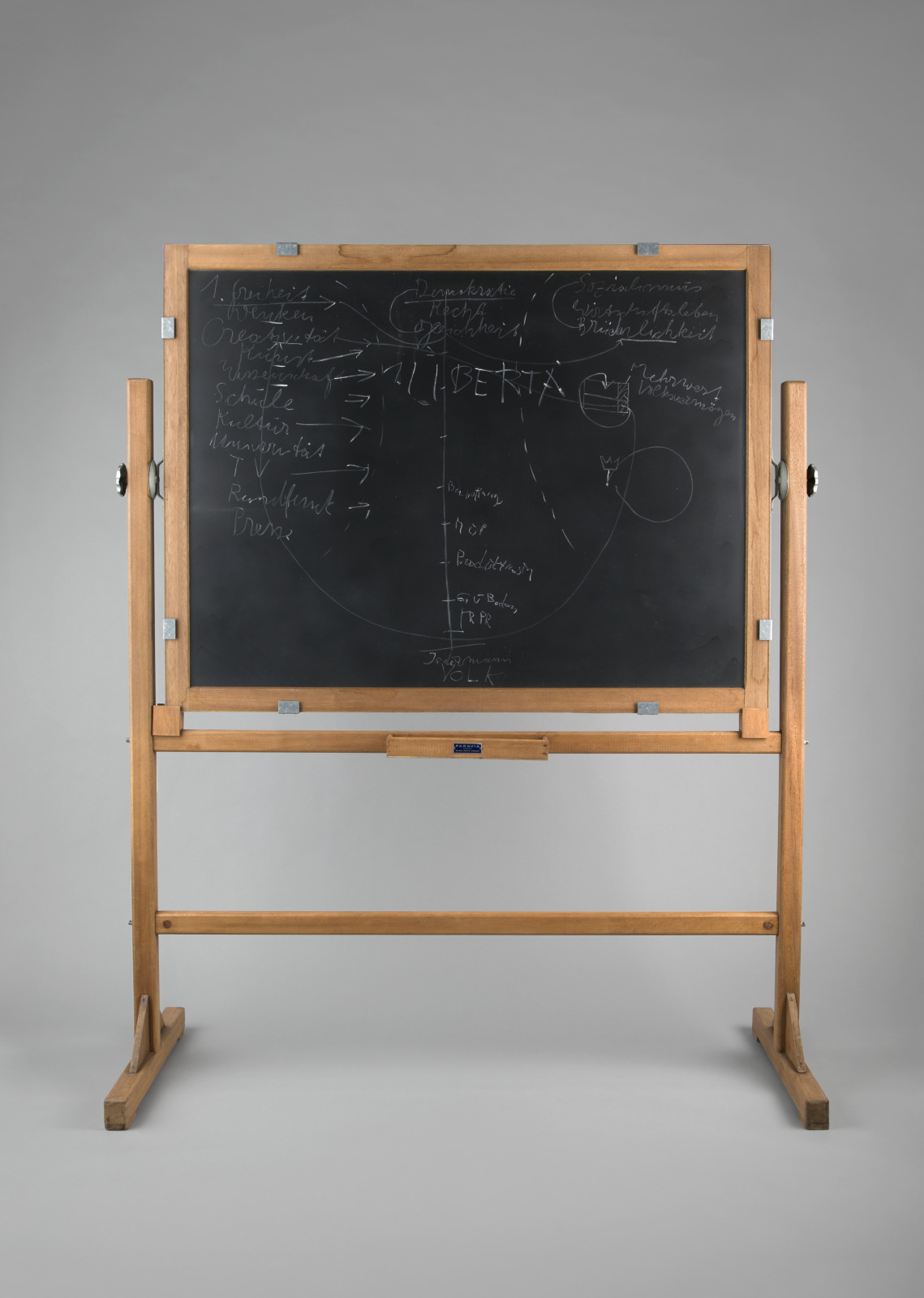
Joseph Beuys, German, 1921–1986; Urbis II, 1972; chalk on blackboard with wood stand; chalkboard and stand: 70 7/8 x 58 1/2 x 23 1/2 inches; Saint Louis Art Museum, Gift of the Donald L. Bryant Jr. Family Trust 189:2003; © 2020 Artists Rights Society (ARS), New York / VG Bild-Kunst, Bonn
Hear Expert Commentary
-
Transcript
Speaker: Hannah Klemm
Associate Curator of Modern and Contemporary Art
Saint Louis Art MuseumJoseph Beuys holds an almost mythical position in the pantheon of postwar German art. He was an important teacher, political activist, and artist. Beuys believed that art and life were inextricable, that art could change society, and that everyone could be an artist. Beuys was a multimedia and multidimensional artist, never intending his practice to be singular in its interpretation or presentation. In his work Beuys endowed humble, everyday objects and actions with spiritual meaning. He was famously charismatic and created an iconic public persona, combining the performance of self with political action.
Beuys served as professor of monumental sculpture at the Düsseldorf Art Academy from 1961 to 1972. He believed that art should compel conversation, communication, progressive social action, and be open to everyone. Acting on this belief, throughout the 1960s Beuys implemented an open enrollment policy in his class, accepting any student who wished to study with him.
Throughout the 1970s, as part of his performance art practice, Beuys lectured extensively on art and politics—specifically, on the task of creating a genuinely democratic society. He started using blackboards to write on during his lectures. While the blackboards played an important didactic function as a site for information during the lecture, Beuys deliberately saved the blackboards with their writing, often exhibiting them as autonomous works of art almost as soon as they were created.
This work, Urbis II, was a blackboard drawing from a performance Beuys did in Rome in 1972. These public discussions exemplified Beuys’s role as artist, teacher, and activist. On this chalkboard Beuys sketched out the points of this talk. At the center he wrote LIBERTÀ, which is Italian for freedom. Beuys often linked freedom to creativity, art, and expression. The three main headings for this lecture are, from left to right: Freiheit, or freedom; Demokratie, or democracy; and Sozialismus, or socialism. Beuys was an avid supporter of and activist for Democratic Socialism, believing that the state should take care of people’s basic needs. He felt this would allow individuals the freedom to develop innovative ways of thinking and would, in turn, support overall societal well-being.
With the blackboard drawings such as this one, Beuys liberated drawing from associations with private, individual artistic acts. Rather, it became a function and document of a communal action. The blackboard drawings also take on performative meaning—functioning as a lasting document of the relationship between artist, audience, and artwork. It was really social relationships that were Beuys’s primary area of concern, and works like Urbis II allow us to continue to explore and discuss fleeting, collective performative moments long after the lecture is over.
Words and arrows flow across the surface of this blackboard. Joseph Beuys used it during one of his legendary “chalk talks,” performances and lectures he gave throughout the 1960s and 70s (hear more above). Beuys understood his presentations on European politics and society as works of art—particularly as sculptures. He held a strong conviction that ideas, and not objects, were the most important form sculpture could take. Already notorious for his use of materials like felt and fat, Beuys turned to words to mold and express his creative goals.
November 27, 2020
Two Piece Reclining Figure No. 2

Henry Moore, English, 1898–1986; Two Piece Reclining Figure No. 2, 1959–60; bronze; sculpture: 49 1/2 x 101 1/2 x 42 3/4 inches; Saint Louis Art Museum, Gift of Mr. and Mrs. Howard F. Baer 68:1970a,b; © 2020 Artists Rights Society (ARS), New York, NY
Henry Moore produced an extensive sculptural series of the abstracted human body in two parts. Moore’s reclining forms can be compared to eroded cliffs, an association enhanced by the work’s carved and pock-marked surface. The artist found in these sculptures “a metaphor of the relationship of humanity with the earth.”
November 26, 2020
Ice Bag–Scale B

Claes Oldenburg, American (born Sweden), born 1929; Ice Bag–Scale B, 1971; nylon, fiberglass, mechanism, paint, lacquer, blowers, anodized parts, steel, zipper, acrylic, muslin, Velcro ; diameter: 48 1/4 inches, height, variable: 35 1/4 inches; Saint Louis Art Museum, Gift of Nancy Singer 11:1975; © Claes Oldenburg
Claes Oldenburg took a distinctive approach to sculpture, recreating everyday objects such as typewriters, hamburgers, and ice bags, as shown here. He enlarged these familiar items far beyond their actual size, describing them as “monuments to everyday things.” Using fabric materials, such as nylon and vinyl, Oldenburg gave his works their characteristically “soft” appearance. Oldenburg intended for this ice bag to be kinetic, twisting and inflating in order to give the appearance of being filled with ice.
November 22, 2020
World Receiver Brüsselerstrasse
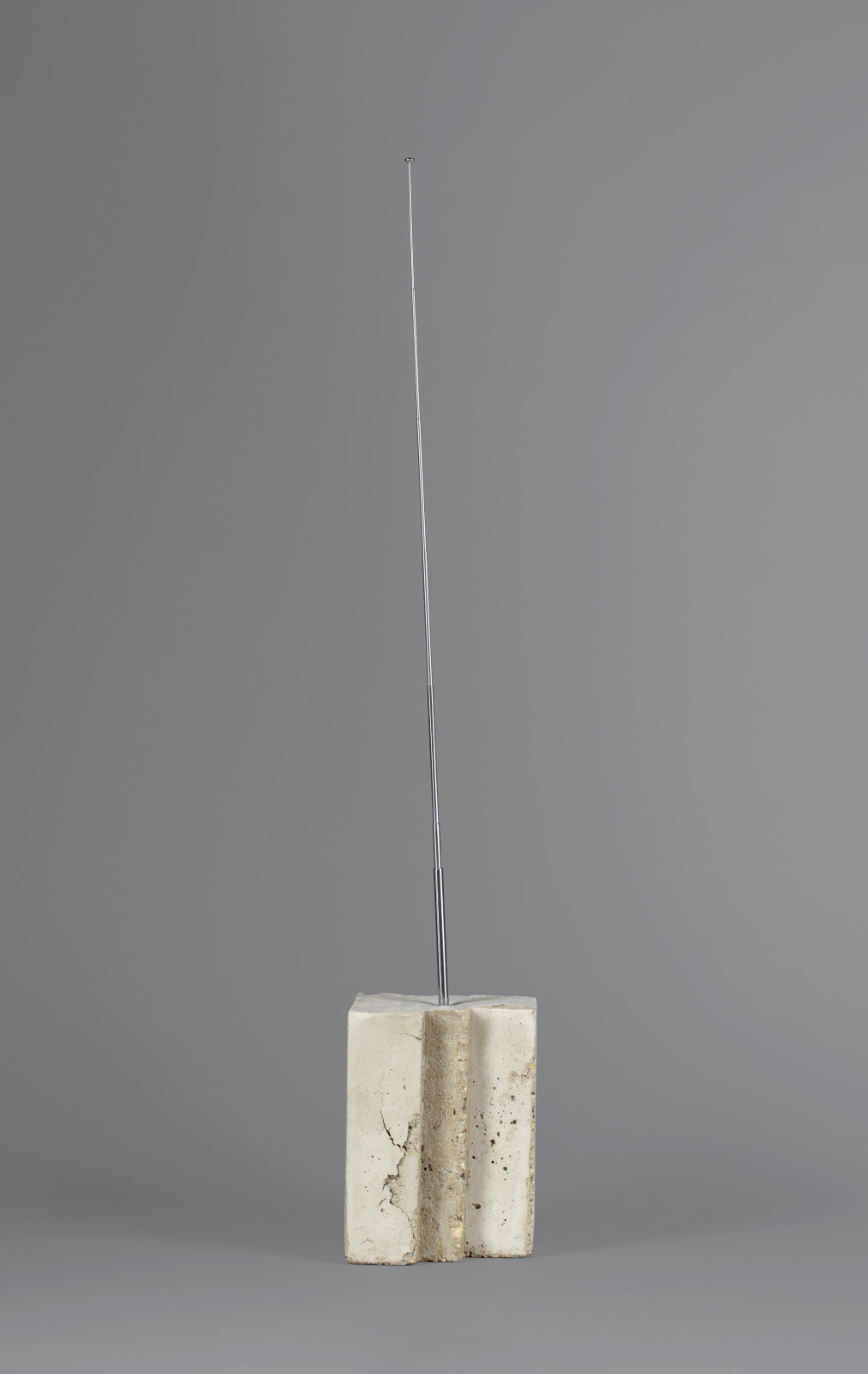
Isa Genzken, German, born 1948; World Receiver Brüsselerstrasse, 1992; cast concrete and telescoping radio antenna; 40 9/16 x 4 1/2 x 5 1/2 inches; Saint Louis Art Museum, Partial and promised gift of Betsy Millard, the Earl and Betsy Millard Collection 42:2003; © 2020 Isa Genzken / Artists Rights Society (ARS), New York / VG Bild-Kunst, Bonn
Hear Expert Commentary
-
Transcript
Speaker: Molly Moog
Research Assistant
Saint Louis Art MuseumA telescoping antenna extends out of this sculpture as though ready to receive a transmission. However, you won’t hear a sound coming from its core, a block of solid concrete. Renowned artist Isa Genzken has produced a series of these paradoxically silent radios, called World Receivers, starting in 1987, two years before the fall of the Berlin Wall. Evoking the global nature of radio transmission, many of the works in the series are titled after international cities. The title World Receiver Brüsselerstrasse encompasses the name of a street in Berlin as well as the capital of Belgium—Brüssels or Brussels.
Born in 1949 in northern Germany, Isa Genzken moved to Berlin with her family as a child. She studied at the famous Düsseldorf Art Academy in the 1970s and was exposed to works of American Minimalism on view in Düsseldorf art galleries.
In the 1980s Genzken moved to Cologne, a city still rebuilding after Allied bombing raids of the 1940s. She began casting the World Receivers in concrete, a material closely associated with postwar architecture. Germans of Genzken’s generation grew up in and around Modernist housing made from prefabricated concrete slabs that replaced the crumbling ruins left in the aftermath of World War II. The cracks and holes that mark the surface of World Receiver Brüsselerstrasse are reminiscent of wartime ruins themselves as well as the effects of time and weather on the cheaply constructed facades of postwar slab buildings. The intentionally rough surface treatment in Genzken’s sculpture highlights the vulnerability of what appears to be a solid and impenetrable material. Concrete is also the material of the Berlin Wall, constructed by East Germany in 1961 to stem the flow of defectors to the West. A symbol of Germany’s ideological division, the wall nevertheless could not prevent all communication between East and West Berlin.
Situated in a block of concrete, the antenna—a recurring symbol within Genzken’s body of work—brings to mind the radio stations that became sites of communication and propaganda transmission both within and across borders during the Cold War. However, it also suggests broader notions of connection, inspiration, and receptivity. A few years before she began her World Receiver series, Genzken made an oblong sculpture from plaster and the sweepings from her studio floor. Sticking a wire antenna in the top, she called the work Mein Gehirn (My brain)—a physical representation of artistic insight. Later she said of her World Receivers, “My antennas were also meant to be “feelers”—things you stretch out in order to feel something, like the sound of the world and its many tones.”
The familiar sight of a raised chrome antenna transforms this concrete block into a silent radio. Isa Genzken used concrete as a medium to reference the cold, raw material used in postwar German reconstruction (hear more below). World Receiver Brüsselerstrasse is subtitled with the name of a street (Brüsselerstraße in Berlin) and an international city (Brüssel, or Brussels), evoking the global nature of radio transmission. Radio waves cannot be blocked by borders or walls, so radio programs became a site of propaganda transmission during the Cold War. The work is part of a series begun by the artist in the early 1990s.
November 16, 2020
Christina’s Day Off (Down in the Dumps II)
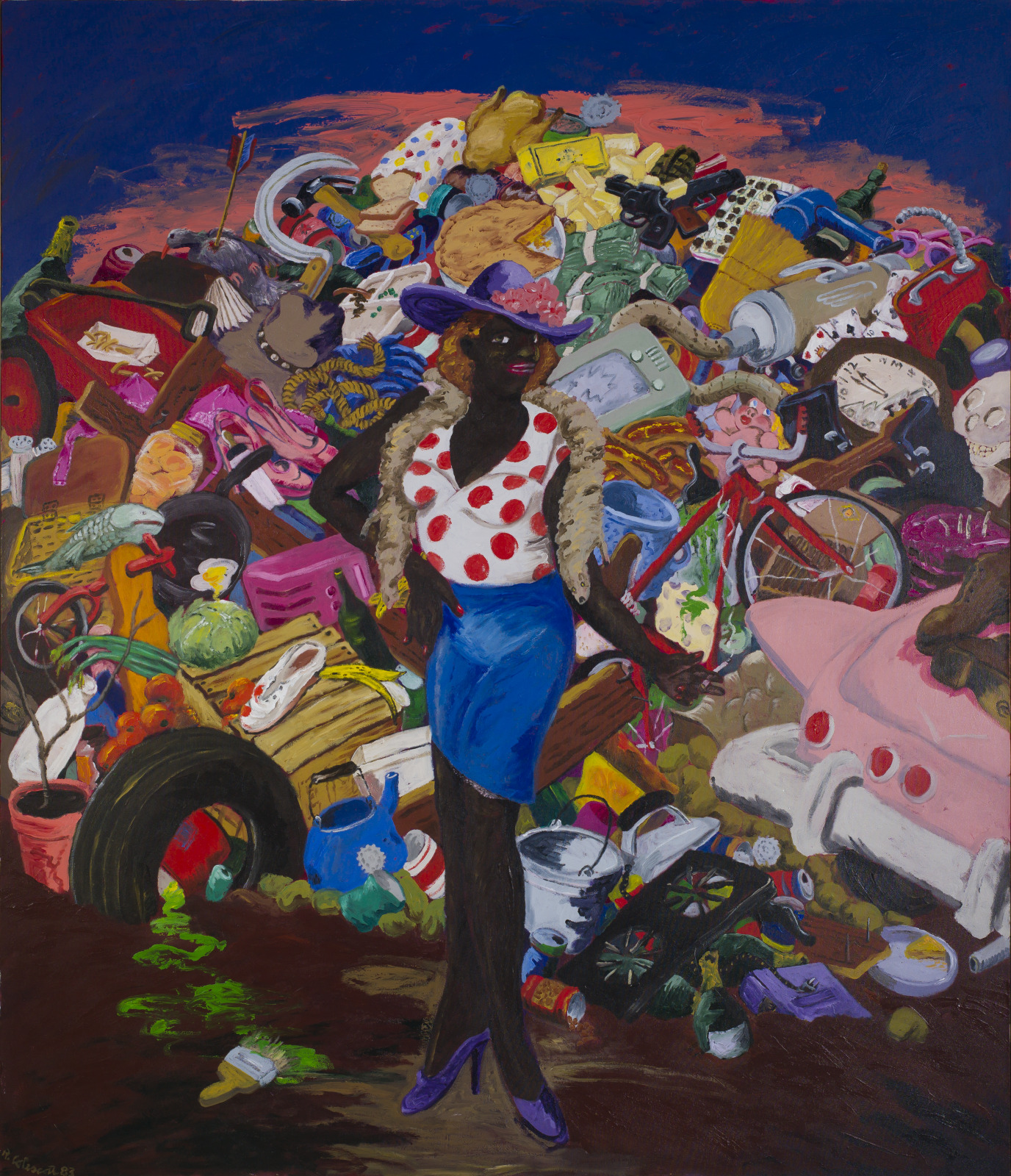
Robert Colescott, American, 1925–2009; Christina's Day Off (Down in the Dumps II), 1983; acrylic on canvas; 84 x 72 inches; Saint Louis Art Museum, Gift of Brooke and Carolyn Alexander 213:1993; © 2020 Robert Colescott / Artists Rights Society (ARS), New York
A woman named Christina poses in front of what appears to be a towering heap of trash. On closer inspection, desirable consumer goods, such as a pink car, are identifiable among the rubbish. The title of this painting refers to American artist Andrew Wyeth’s realist painting Christina’s World from 1948, in which a White woman crawls up a grassy hill toward a barn in the distance. In contrast, Robert Colescott represented Christina as an African American woman standing boldly upright and smiling. A wet paintbrush at Christina’s feet reminds us of the artist’s role in reimagining her story. In this work, Colescott both appropriated and critiqued stereotyped imagery, prompting difficult conversations around ideas of consumerism, race, gender, and desirability.
November 11, 2020
Thanksgiving
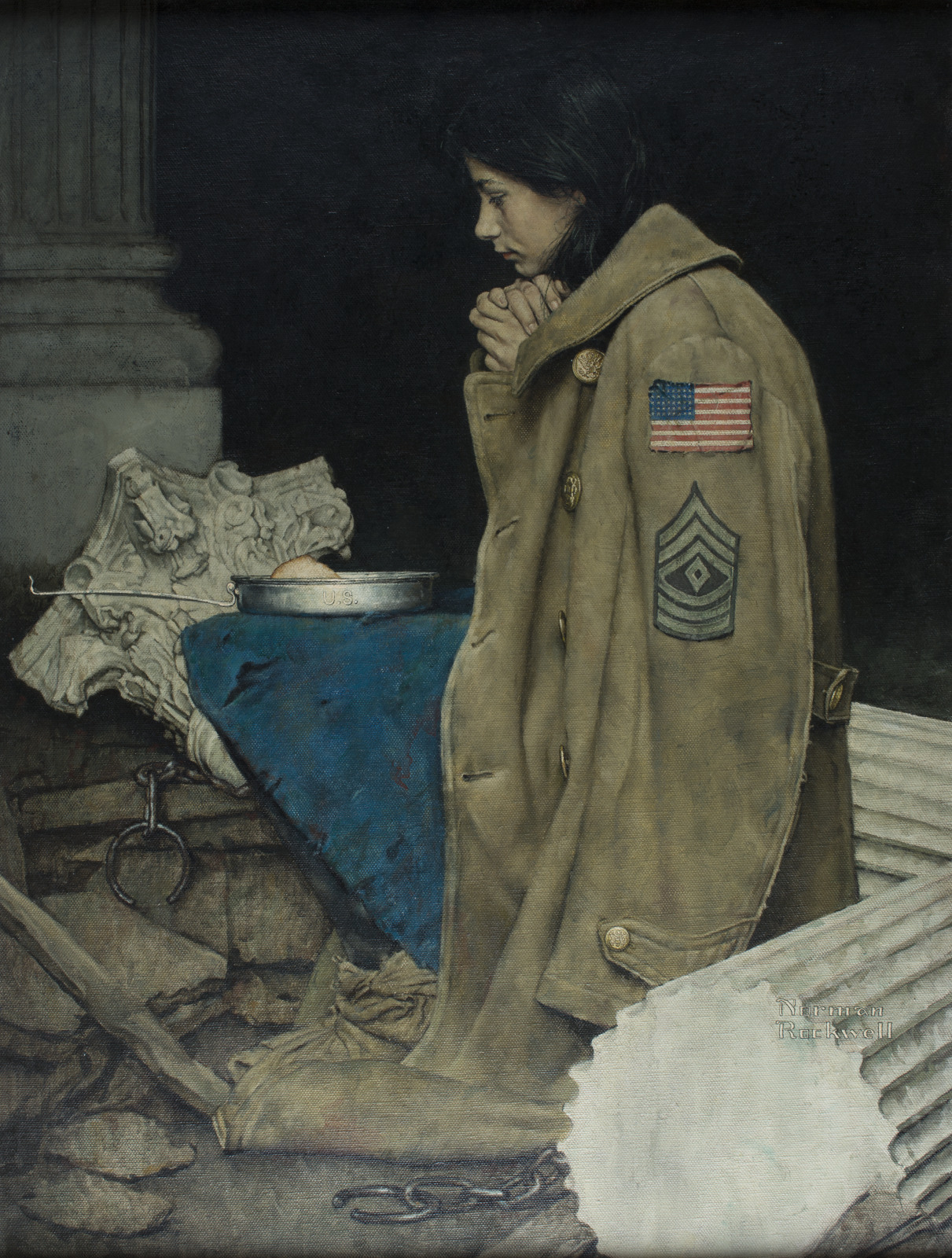
Norman Rockwell, American, 1894–1978; Thanksgiving, 1943; oil on canvas; 41 x 31 inches; Saint Louis Art Museum, Bequest of Edith J. and C. C. Johnson Spink 26:2014; Image © SEPS
This somber but hopeful painting served as the cover illustration for the November 27, 1943 edition of the The Saturday Evening Post. Norman Rockwell chose to paint a young girl in World War II-ravaged Italy draped in the coat of a passing United States soldier. Through his image, appropriately named Thanksgiving, Rockwell asked Americans to remember others less fortunate than themselves on a holiday devoted to gratefulness. Rockwell’s career with The Saturday Evening Post lasted nearly 50 years, resulting in 321 original covers that made him a household name.
November 3, 2020
The County Election

George Caleb Bingham, American, 1811–1879; The County Election, 1852; oil on canvas; 38 x 52 inches; Saint Louis Art Museum, Gift of Bank of America 44:2001
A large group of citizens gathers to place their votes in an election. Campaigning politicians anxiously press their party tickets toward individuals. One of the newest citizens, an Irish immigrant, is taking an oath that he had not voted elsewhere, just as one of the oldest, a Revolutionary War “76-er” veteran, is descending the steps. Merchants in top hats discuss the issues with laborers in shirtsleeves, an example of the rational exchange that sustains democracy.
Other individuals present a less responsible and informed perspective. One drunken citizen, unable to stand, is nonetheless dragged to cast a vote. Another sits on a bench to steady his head, his clarity evidently lost in a brawl. Two boys on the ground play mumblety peg, a knife game that progressively increases in risk. George Caleb Bingham revealed what every American supportive of an election understands: that the democratic ideal must be embraced even though uninformed votes could prevail.
November 2, 2020
Bowl
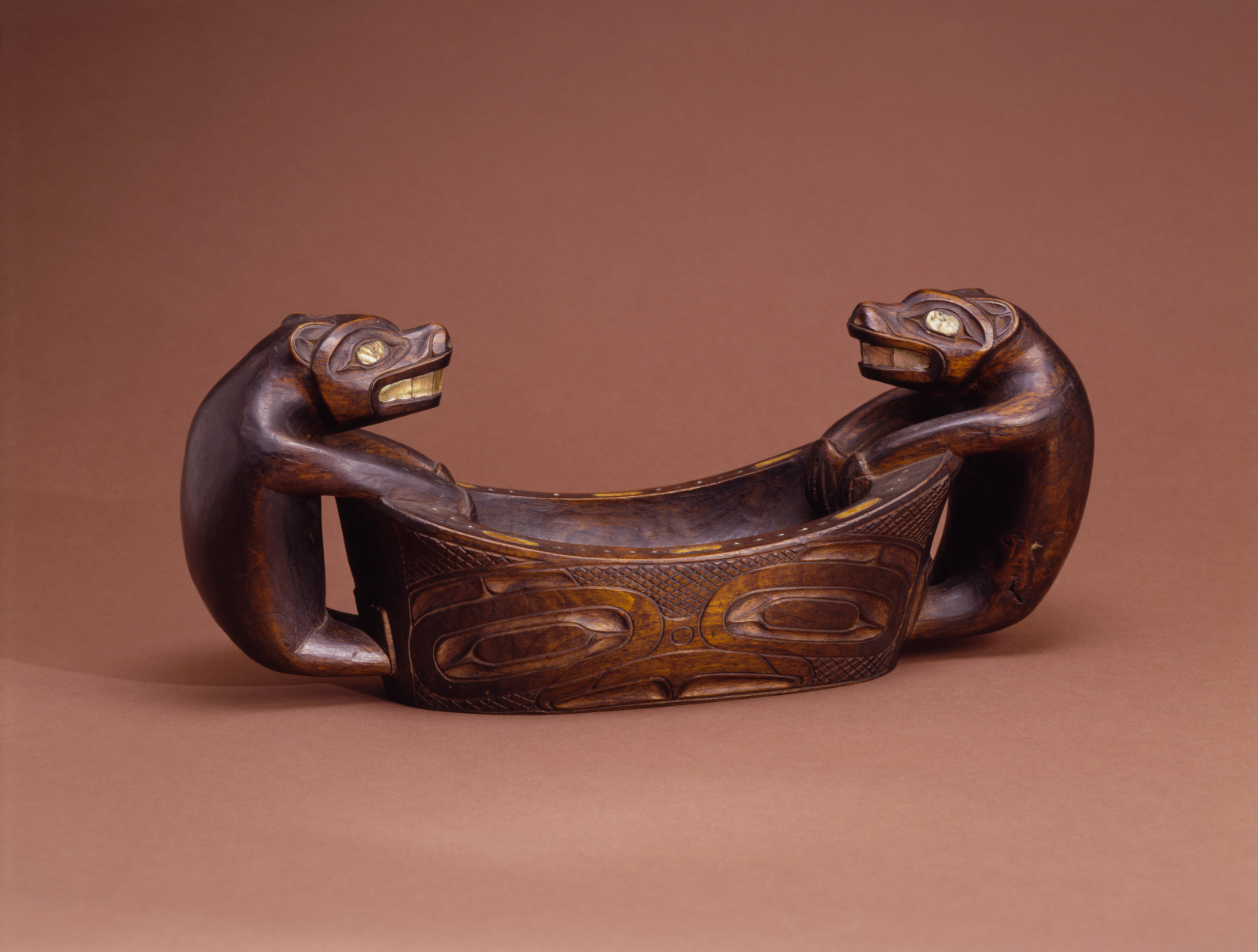
Rudolph Walton, 1867–1951; or Augustus Bean, 1856–1926; Bowl, c.1900; stained wood, abalone shell, glass beads, and ivory; 7 x 6 x 17 inches; Saint Louis Art Museum, Gift of Morton D. May 275:1982
The artist who created this bowl carved recognizable bears at each end while the side of the bowl features a “formline” design. For over a millennium, Native artists in coastal British Columbia and Southeast Alaska have used sinuous lines with ovoid and u-form shapes to create imagery. This visual vocabulary is now called formline.
Historically, artists learned formline carving and painting through apprenticeship with a master. At the end of the 19th century, territorial governments in Alaska and British Columbia imposed restrictions on ceremonial life, which had provided a major context for production of formline designs. In the first years of the 20th century, Native artists began to reconstruct formline vocabularies on their own based on observations of historic artworks rather than training through apprenticeship.
This object is featured in our current engagement activity Vote Your Art.
October 29, 2020
Deer Pendant
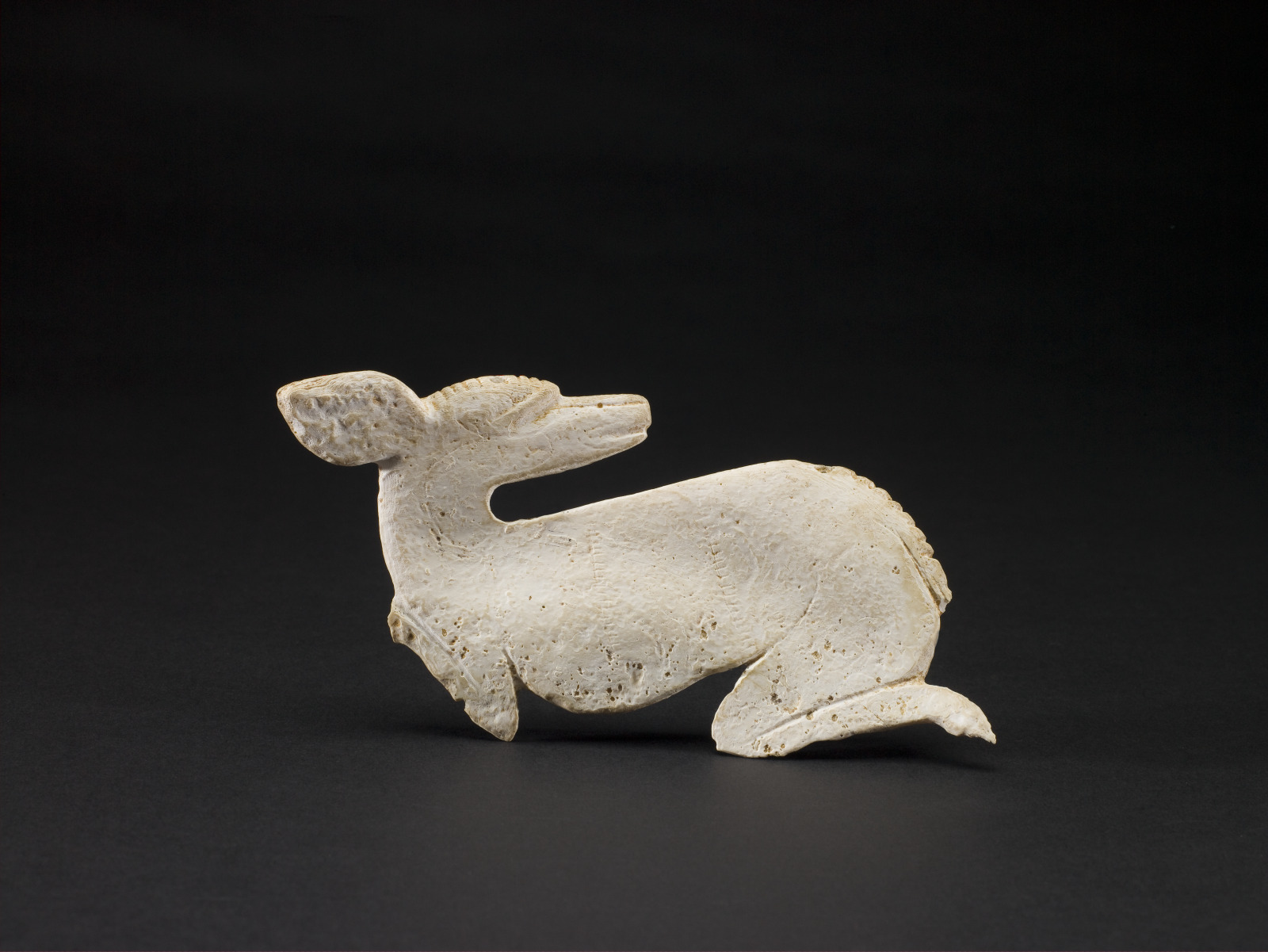
Deer Pendant, c.700–800; Maya, Late Classic period, Guatemala; shell; 2 15/16 x 4 7/8 x 1/4 inches; Saint Louis Art Museum, Bequest of Morton D. May 1317:1983
This pendant shows a deer posed mid-stride, frozen at a specific moment in time. The animal’s head is curved back with its legs pulled close to the body, as though looking and leaping to evade a predator. Carved from an exotic marine shell, the pendant was perhaps a piece of personal jewelry for a Maya noble. Images of deer frequently occur in depictions of hunting as well as sacrifice. The pendant may have been bestowed to a young Maya hunter as a token of his achievements.
This object is featured in the Museum’s current engagement activity Vote Your Art.
October 20, 2020
The Red Stairway
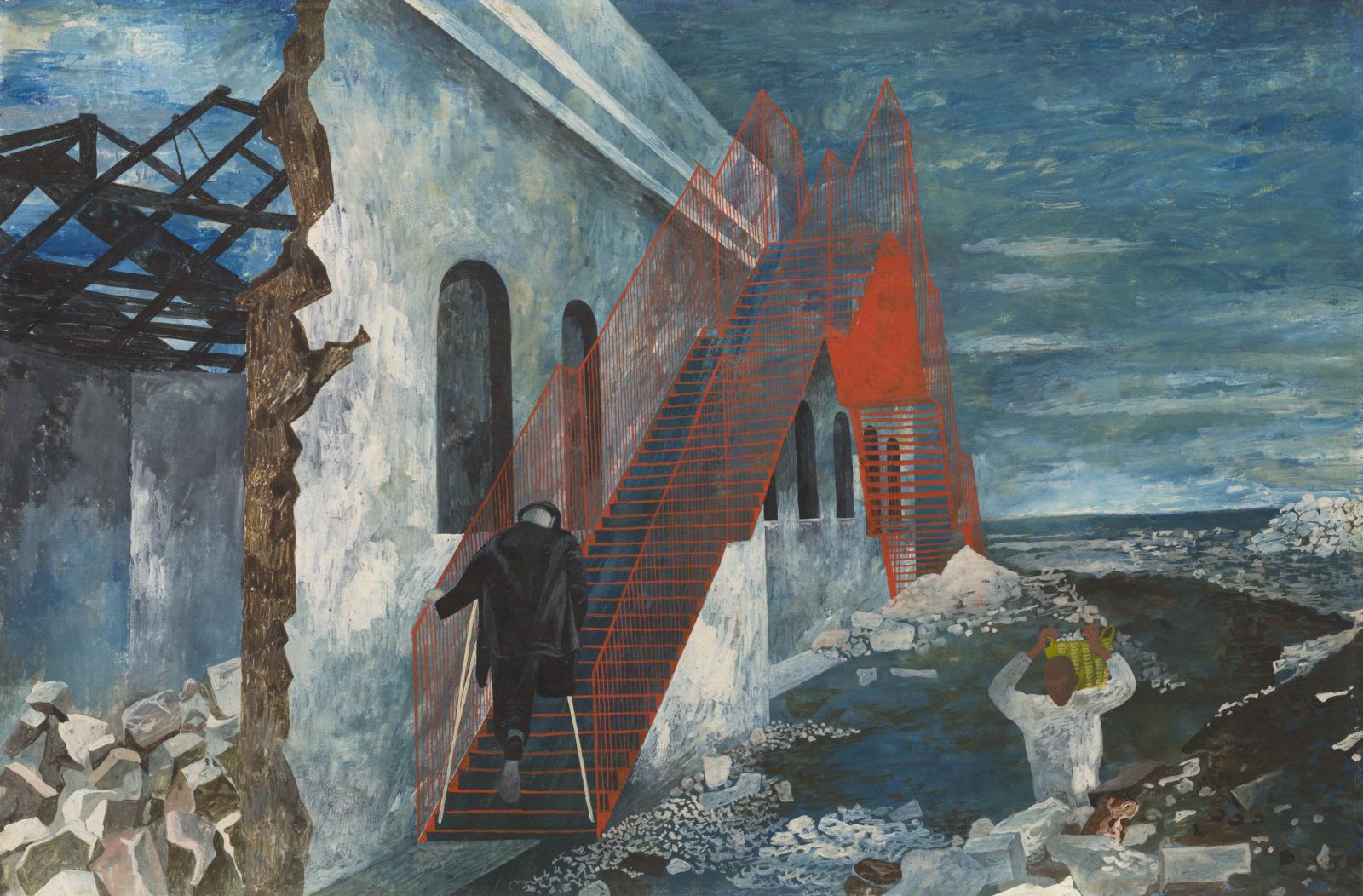
Ben Shahn, American (born Lithuania), 1898–1969; The Red Stairway, 1944; tempera on Masonite; 16 x 24 inches; Saint Louis Art Museum, Museum Purchase 25:1945; © 2020 Estate of Ben Shahn / Licensed by VAGA at Artists Rights Society (ARS), NY
A crumbling environment and a figure with one leg convey the wreckage that war, in this case World War II (1939–1945), leaves behind. The space within the ruined building remains unresolved as does the destination of the man on the red stairs, visually suggesting the senselessness of war.
The artist himself wrote of this painting, “to me this is both the hope and the fate of man, you know. It’s obvious almost that he seems to recover from the most frightful wars, the most frightful plagues, and goes right on again when he knows full well that he’s going into another one; but that’s the eternal hope in the human being.”
October 17, 2020
Giant Three-Way Plug, Scale A

Claes Oldenburg, American (born Sweden), born 1929; Giant Three-Way Plug, Scale A, 1970–71; Cor-Ten steel and bronze; 57 x 116 x 78 inches; Saint Louis Art Museum, Gift of the Shoenberg Foundation, Inc. 21:1971; © 1971 Claes Oldenburg
Claes Oldenburg produces monumental sculptures of everyday consumer objects. Just outside the Main Building, an enormous three-way electrical plug lies partially buried in the ground. The artist has described it as resembling “an implement left over from a war, returning to nature.” Oldenburg first installed the sculpture in this location in 1971, noting that the plug reminded him of historic architecture. Here, its arching lines and recessed spaces complement the classical design of the Museum’s Main Building by architect Cass Gilbert.
October 12, 2020
Ceremonial Seat (duho) or Platter
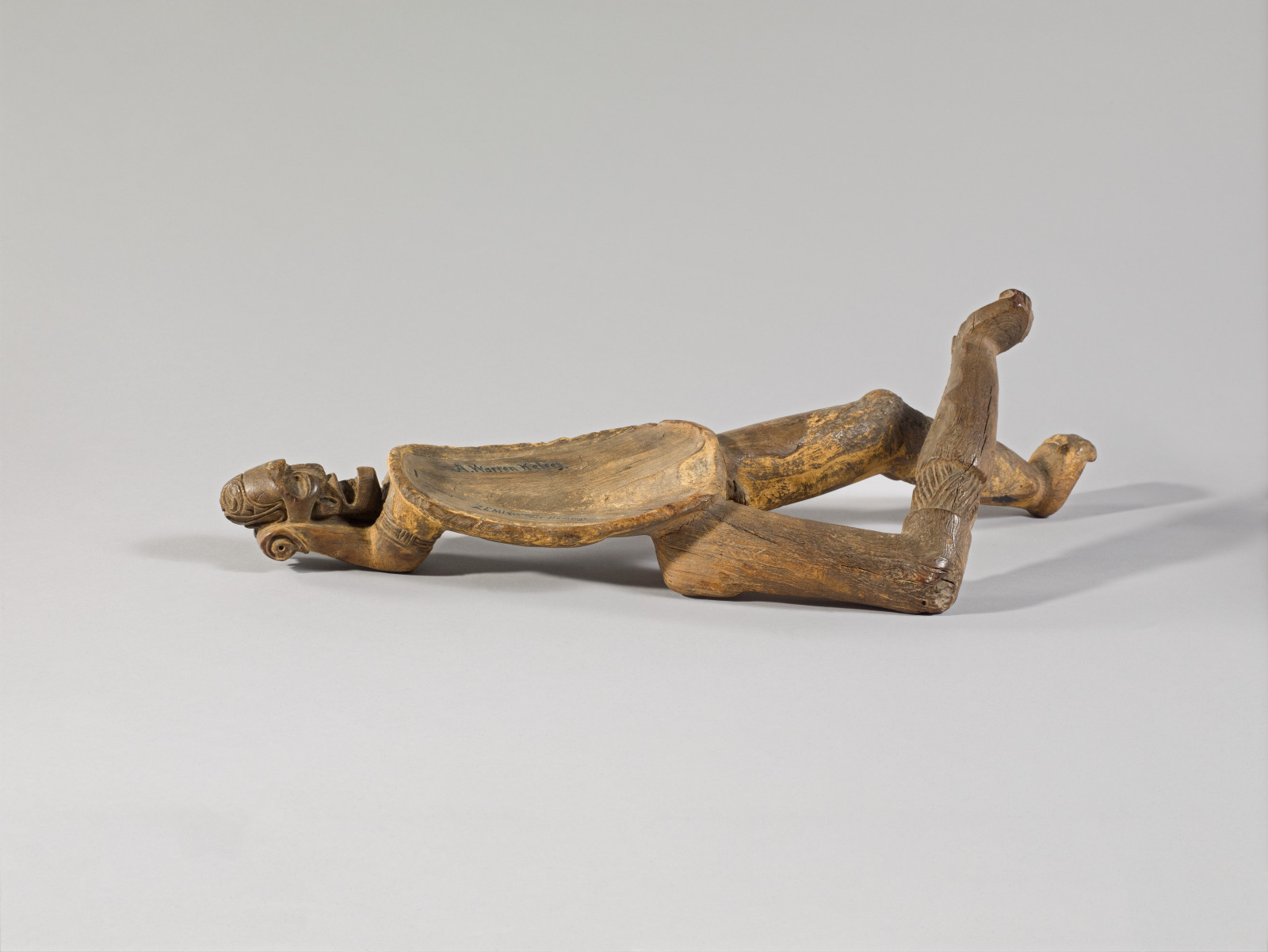
Taino artist, Dominican Republic; Ritual Seat (duho), c.1315–1416; wood; 6 5/8 x 8 x 24 1/2 inches; Saint Louis Art Museum, Friends Fund and Primitive Art Society Fund in honor of Morton D. May 168:1981
This extraordinary sculpture is carved from incredibly dense guaiacum wood, its form is likely an actual tree branch. The artist used the natural angles to define the bent legs of the human figure. The figure’s arms are curled up behind the head, while a shallow curved surface dominates the emaciated body. (The figures ribs can be seen on the bottom.) This depressed area led early scholars to identify the object as a duho, or ritual seat, but it may instead have functioned as a ceremonial platter during a ritual feast.
This work represents a masterpiece of the Taino civilization that thrived in the Caribbean in the 14th and 15th centuries. Such objects were collected by 19th-century businessmen working in Santo Domingo, who often signed them to establish ownership and document their history.
October 9, 2020
Teasing
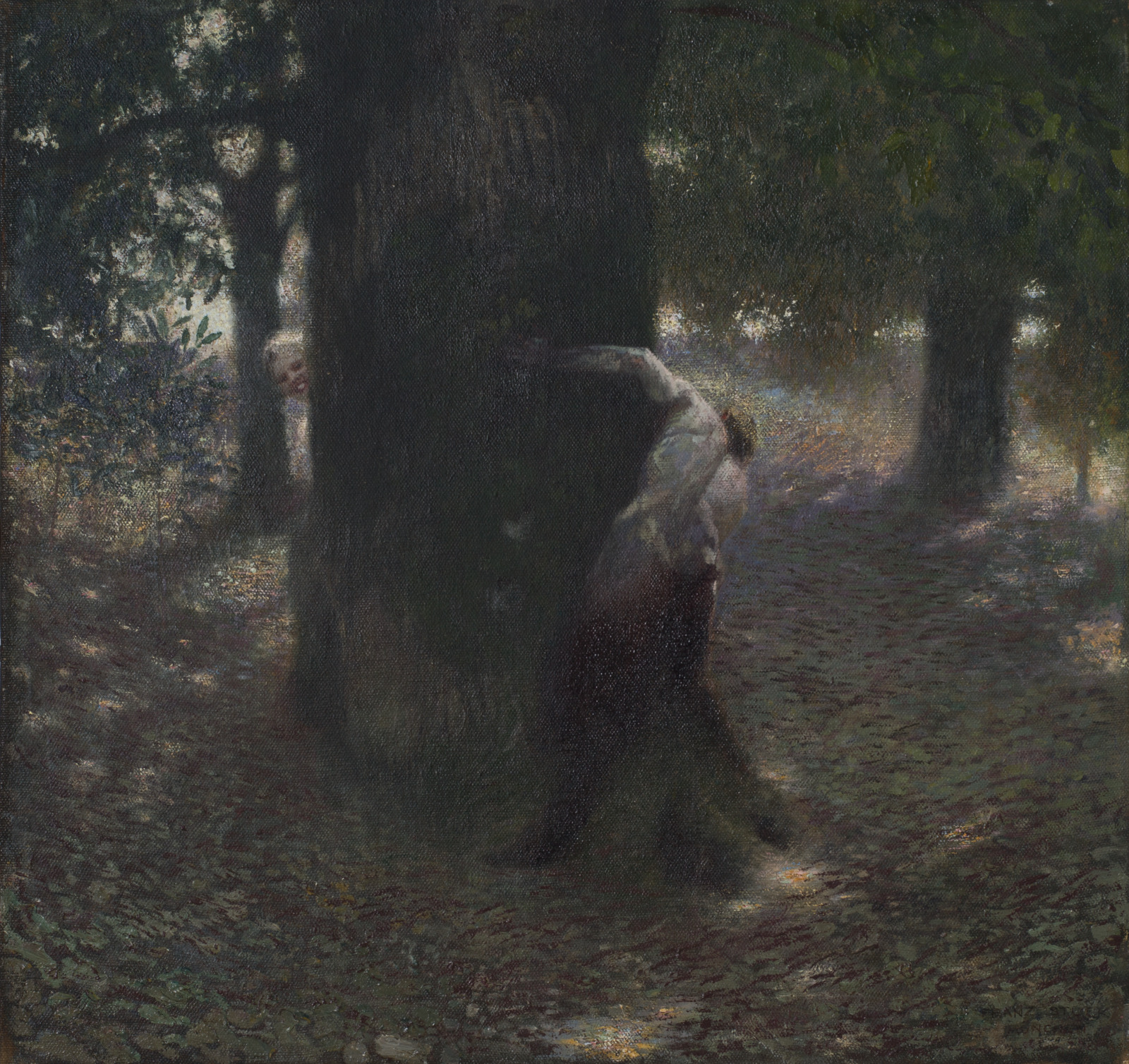
Franz von Stuck, German, 1863–1928; Teasing, 1889; oil on canvas; 19 1/2 x 18 1/2 inches; Saint Louis Art Museum, Friends Fund Endowment, and Gift of Frances H. Thomson in memory of her husband, John Edwin Thomson, Bequest of Ruth Sudholt Wunderlich, Museum Purchase, Bequest of Mrs. Sophia M. Wolf, Gift of Mr. Louis Werner, Gift of Mrs. Elizabeth Overton Busch and Mrs. Thomas Curtis Adams in memory of their mother and father, Mr. and Mrs. Charles Pope O'Fallon, Gift of J. Lionberger Davis, Gift of Nellie Ballard White, Gift of Miss Ella M. Boedeker, Bequest of Eleanor Lacey, all by exchange 484:2018
In Teasing, the thick trunk of a tree conceals a smiling female figure from the faun who playfully pursues her. Franz von Stuck often depicted the mischievous antics of fauns, mythological creatures that were part goat, part human. Here Stuck created the shaded forest landscape surrounding this tryst with small dabs of paint in contrasting colors, exhibiting an engagement with the painting techniques of pointillism. Stuck worked in illustration, decorative art, and sculpture but is best known for his allegorical and mythological paintings suffused with drama, sensuality, and humor.
October 7, 2020
The Deposition
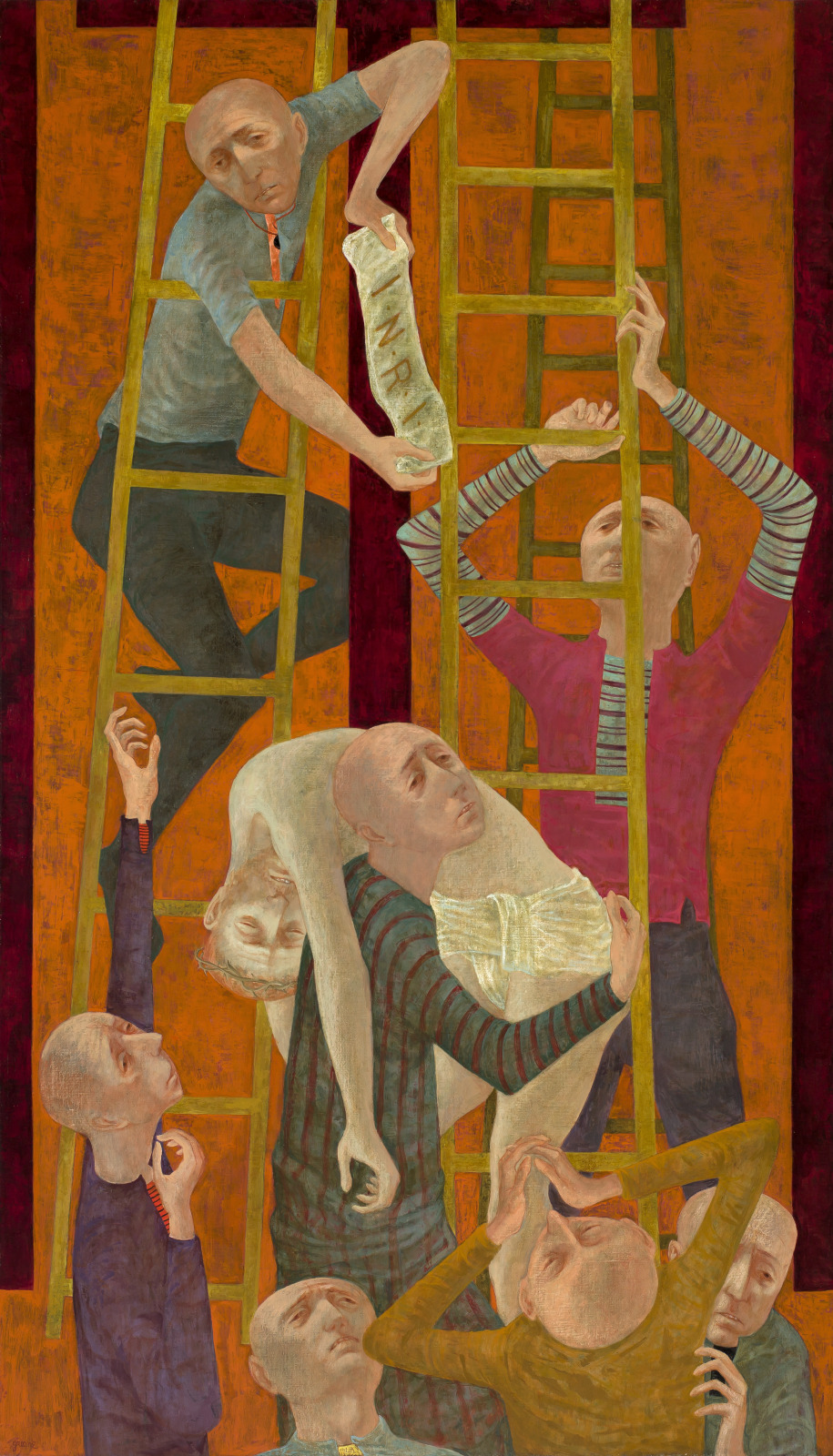
Stephen Greene, American, 1917–1999; The Deposition, 1947; oil on canvas; 59 1/4 × 33 7/8 inches; Saint Louis Art Museum, Gift of Mr. and Mrs. Joseph Pulitzer Jr. 529:1957; © The Estate of Stephen Greene, Jason McCoy, Inc., New York
Ladders surround a cross where seven figures remove the body of Jesus. The delicate human bodies and angular limbs interlock with the ladders. In addition, their sad expressions and striped garments, reminiscent of prison clothing, convey a sense of entrapment.
Stephen Greene was an instructor for one year, in 1946, at Washington University in St. Louis. During that time, he began to produce a group of paintings representing episodes from the life of Jesus. As Life magazine noted in 1950, “Greene’s canvases are not ingratiating. Peopled by sad, manikin‑like men, they have a strained and morbid cast…. Greene does not call himself a religious man, but because biblical stories are universally recognized and easily understood, he used them to communicate his own feelings on the state of modern man—a state Greene considers to be chaotic and insecure.”
October 3, 2020
For the Wind to Tear

Kay Sage, American, 1898–1963; For the Wind to Tear, 1955; oil on canvas; 16 1/8 x 20 inches; Saint Louis Art Museum, Bequest of Kay Sage Tanguy 17:1964; © 2020 Estate of Kay Sage / Artists Rights Society (ARS), New York
An ambiguous, angular form is set against an expansive gray background. Its shape can be read as a mountaintop seen from a distance or a gathering of fabric viewed at close range. This painting’s muted palette and sense of mystery are hallmarks of the American Surrealist Kay Sage. For several years, this work hung in the home of the artist, where she lived with her partner Yves Tanguy, a fellow Surrealist painter.
September 30, 2020
Breath

Kenneth Noland, American, 1924–2010; Breath, 1959; acrylic on canvas; 66 1/8 x 65 3/16 inches; Saint Louis Art Museum, Gift of Mr. and Mrs. Joseph Pulitzer Jr. 262:1982; © 2020 The Kenneth Noland Foundation / Licensed by VAGA at Artist Rights Society (ARS), NY
A freely painted area of sky blue surrounds green and gold concentric rings and a solid blue circle at center. The edge of the outer blue area appears to undulate, creating the effect of counterclockwise rotation. Kenneth Noland produced his characteristic target-like format by staining thinned paint directly onto raw unprimed canvas, leaving some areas unpainted. The gestural perimeter of blue contrasts with the meticulously painted circular rings.
September 25, 2020
Coal Elevators
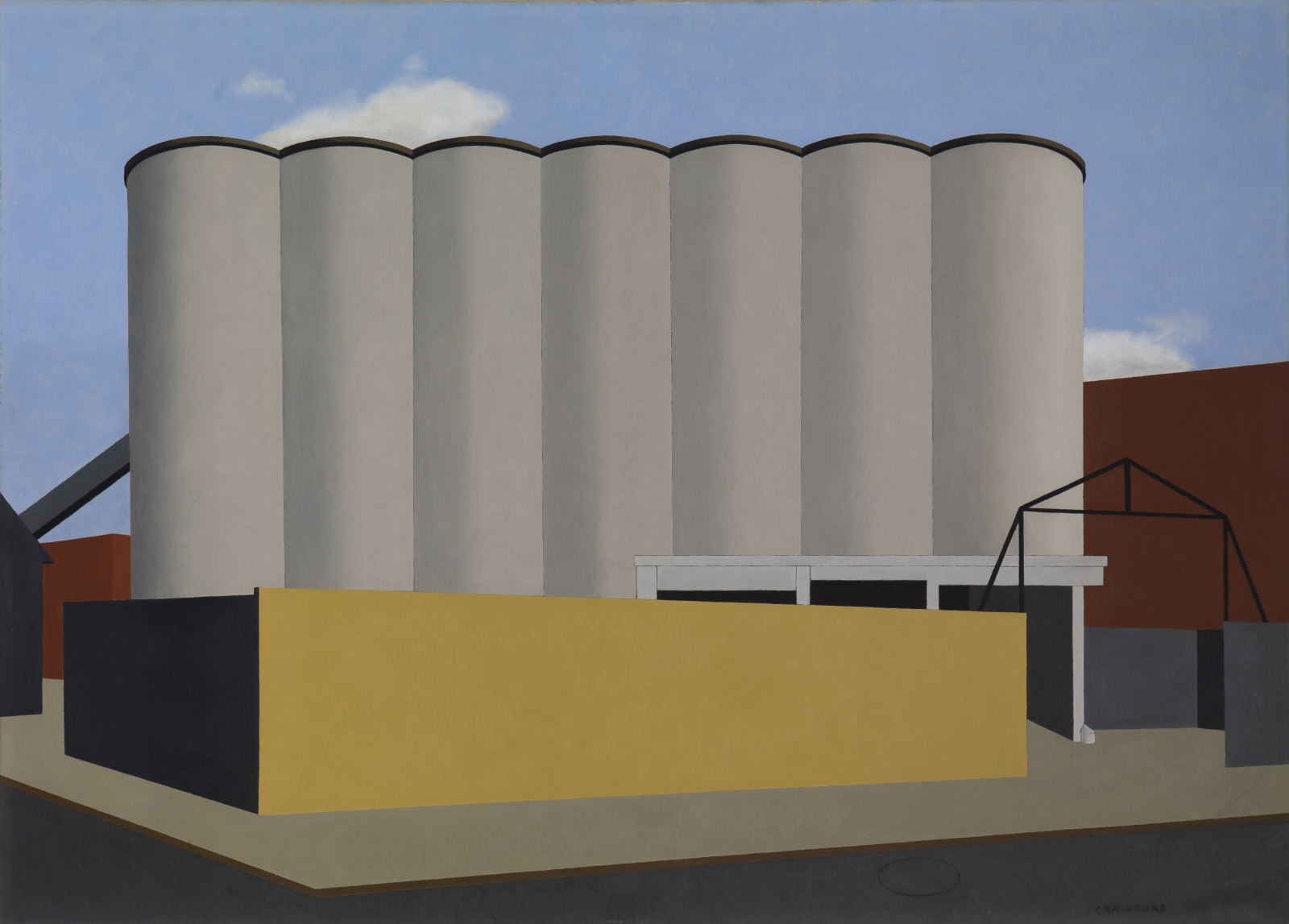
Ralston Crawford, American (born Canada), 1906–1978; Coal Elevators, 1938; oil on canvas; 36 1/4 x 50 1/4 inches; Saint Louis Art Museum, Gift of Mr. and Mrs. Richard T. Fisher 92:1976; © 2020 Estate of Ralston Crawford / Licensed by VAGA at Artists Rights Society (ARS), NY
The smooth geometric forms, cool palette, and industrial subject are characteristic of “precisionist” paintings. These paintings were made during the 1920s and 1930s when the nation’s technological and industrial might was celebrated. The repetition of gray silos across the bulk of the painting seems adamantly impersonal. Ralston Crawford explained that, “I have painted many pictures which utilize something I can call a ‘blank center’…Coal Elevators is probably close to one of the best in this category.”
September 17, 2020
Cockfight

David Smith, American, 1906–1965; Cockfight, 1945; steel; 45 x 21 3/4 x 10 3/4 inches; Saint Louis Art Museum, Museum Purchase 188:1946; © 2020 The Estate of David Smith / Licensed by VAGA at Artists Rights Society (ARS), NY
The deadly combat that locks these two roosters together can be read as an allegory for the World War II (1939–1945) battles raging in Europe at the time this sculpture was made. The roosters are silhouetted in space, their forms created through outline rather than three-dimensional volume. The hand wrought steel plates point in different directions and shift behind each other—creating an energetic, explosive sense of action. The arc welded steel of Cockfight is a hallmark of David Smith, who worked for many years as a factory welder.
September 13, 2020
Rain Drops on Lupin Leaves
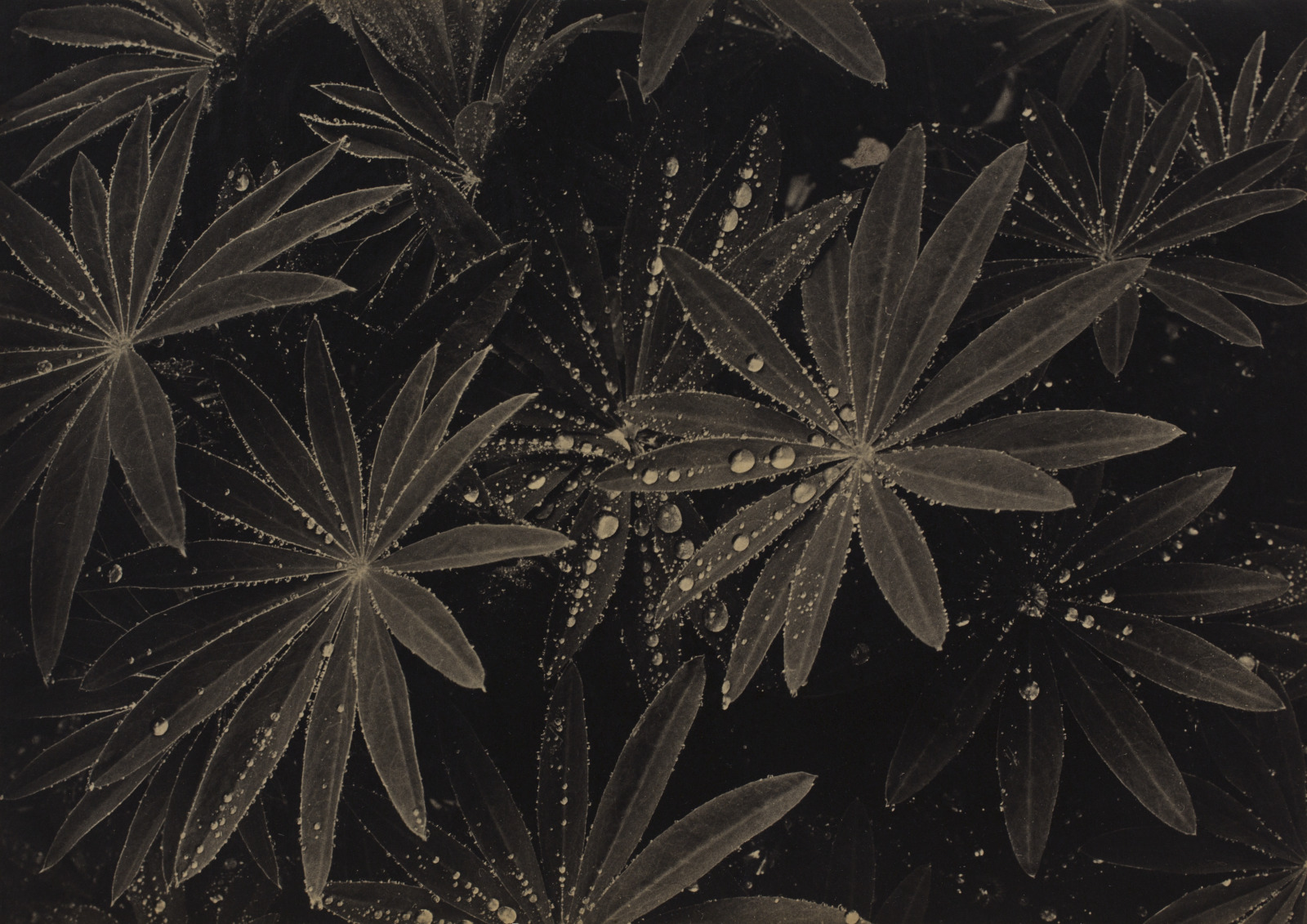
Laura Gilpin, American, 1891–1979; Rain Drops on Lupin Leaves, c.1931; gum platinum print; image: 9 1/8 x 13 inches, mount: 10 13/16 x 14 7/16 inches; Saint Louis Art Museum, Museum Purchase 31:1945; © 1979 Amon Carter Museum of American Art
In 1940, at about the same time it started to collect photographs, the Saint Louis Art Museum began to host an annual competition called the Saint Louis International Salon of Photography. Laura Gilpin was one of its most distinguished contributors, and her photograph entered the Museum’s collection as a result of the event. Gilpin’s warm-toned black and white photograph captures young lupin plants before they erect the showy spikes of flowers that are their most obvious feature. Their tender leaves, sprinkled with raindrops, form a sunburst-like pattern across the image. The immature plants speak of rebirth, growth, and potential, while the water droplets on their leaves suggest purification.
September 12, 2020
Coffee Table

Frederick Wallace Dunn, American, 1905–1984; Coffee Table, c.1938; painted wood, pewter, leather, and brass; 12 1/4 x 24 9/16 x 24 9/16 inches; Saint Louis Art Museum, Gift of William C. Sherman in memory of his parents, Mr. and Mrs. Thomas B. Sherman 221:1980; © Frederick Wallace Dunn
This sleek, luxurious table combines unconventional materials for furniture—polished and engraved pewter, brass, and leather—with glossy black-painted wood. Its style is a blend of modern and traditional elements. Concentric squares inside a frame with projecting corners engraved on the top evoke historical architectural forms with modern simplicity.
September 9, 2020
The Charm of Subsistence

Martin Puryear, American, born 1941; The Charm of Subsistence, 1989; rattan and gumwood; 84 5/8 x 66 1/2 x 10 1/2 inches; Saint Louis Art Museum, Funds given by the Shoenberg Foundation, Inc. 105:1989; © Martin Puryear, Courtesy Matthew Marks Gallery
Martin Puryear created this work by weaving heavy rattan and building the sculpture up from its wooden base. From 1964 to 1966, Puryear spent two years with the Peace Corps in Sierra Leone, West Africa, where he was exposed to the Indigenous craft traditions of a pre-industrial society. In his subsequent sculptures, the artist drew inspiration from the buildings and shelters of this country
September 7, 2020
Builders #1
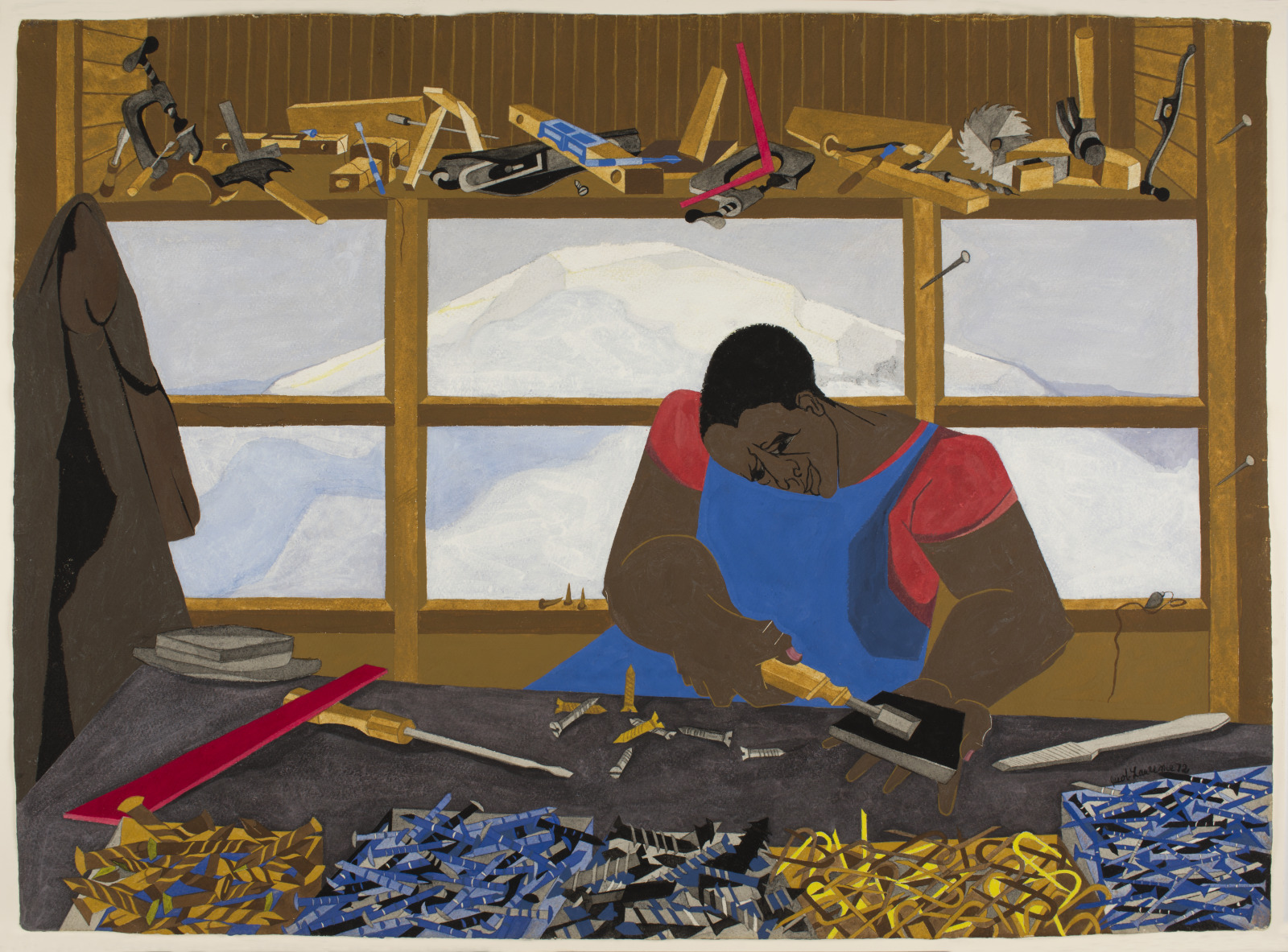
Jacob Lawrence, American, 1917–2000; Builders #1, 1972; watercolor, gouache, and graphite; 22 7/16 x 30 3/4 inches; Saint Louis Art Museum, Eliza McMillan Trust 93:1972; © 2020 The Jacob and Gwendolyn Knight Lawrence Foundation, Seattle / Artists Rights Society (ARS), New York
A carpenter sits at a workbench surrounded by a fantastic array of tools and fasteners. The mountains behind him mirror his strength. The moment portrayed here, however, is not an act of construction but of preparation, as the builder sits sharpening a chisel. Wood as a building material is almost completely absent. He is alone and reflective, weighing the projects ahead. Jacob Lawrence is known for his bold use of flat planes of color, a technique he first developed as a member of the Harlem Renaissance in the 1930s. In this work, he softened his vigorous application of gouache, an opaque water-based paint, with transparent watercolor.
Lawrence’s Builders #1 presents a window within a window and a hopeful allegory of African American life. This is the first expression of a theme that Lawrence would return to for the rest of his career. His builders serve as metaphorical figures, simultaneously evoking artistic creation and social struggle. Like the people who won the hard-fought battles of the civil rights movement, the craftsman stands for the potential of all African Americans.
September 2, 2020
Textile
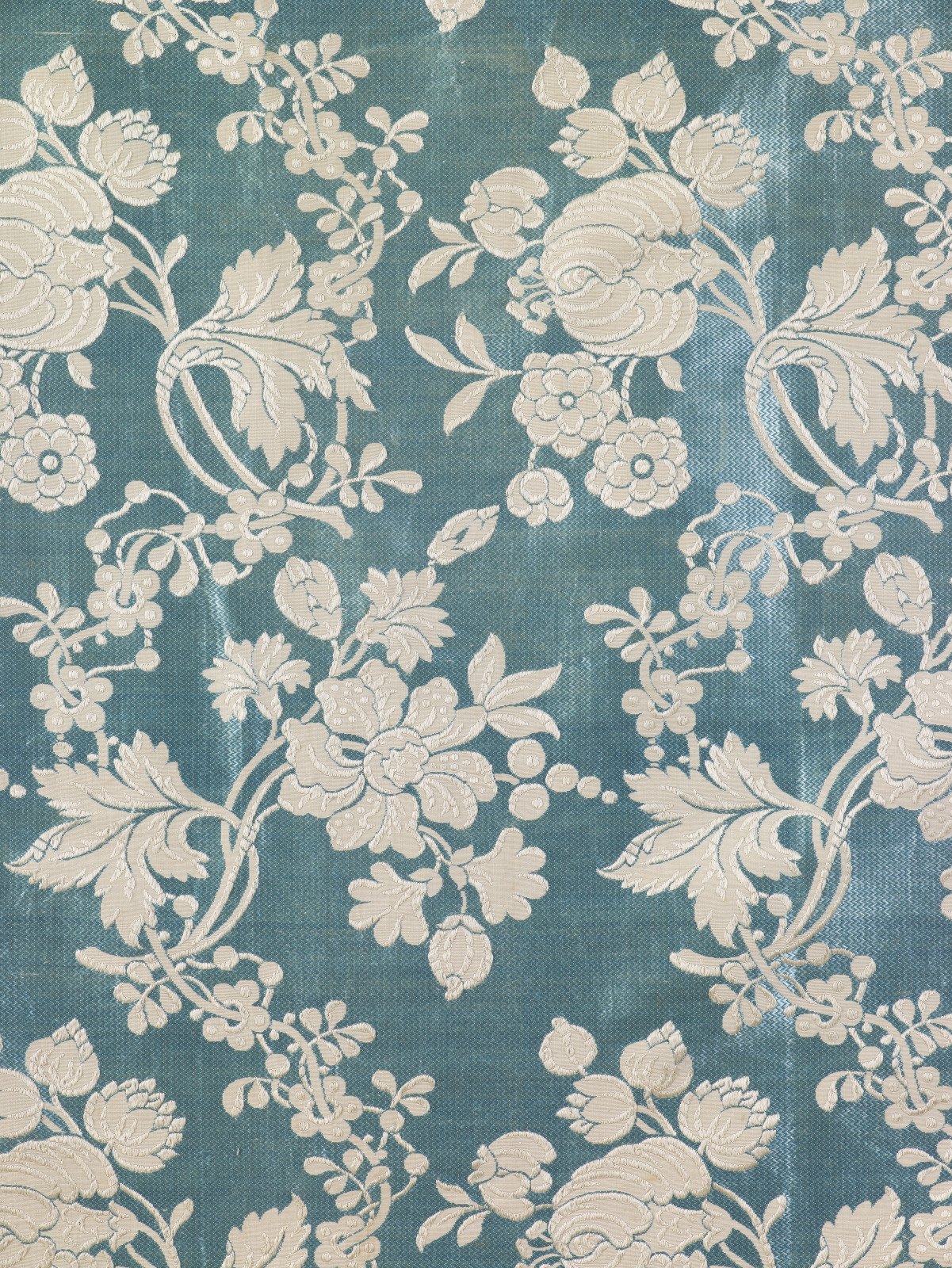
Anna Maria Garthwaite, English, 1688–1763; woven by John Sabatier, English, 1712-13–1780; Textile, 1752; silk; 19 × 35 inches; Saint Louis Art Museum, Marjorie Wyman Endowment Fund 116:2016
Large hibiscus-like blossoms with furling leaves and a shimmery chevron ground lend this damask, or figured, reversible fabric, an uncommon air. Designed by Anna Maria Garthwaite in October of 1752, it shows her expertise in faithfully representing nonnative, newly introduced flowers. Garthwaite was one of the most prolific and successful designers in Spitalfields, England’s silk weaving center in east London.
While few details are known about Garthwaite’s personal life, scholars believe she was part of a circle of influential naturalists. This group included the botanical illustrator Georg Dionysius Ehret (1708–1770) and the merchant and plant collector Peter Collinson (1694–1768). Though botanical illustrations are known to have inspired some of Garthwaite’s designs, it is also likely she visited gardens and “greenhouses, stowed and crowded with vast varieties of exotic plants of surprising oddness and beauty.”
August 18, 2020
Chief-Style Blanket, Second Phase
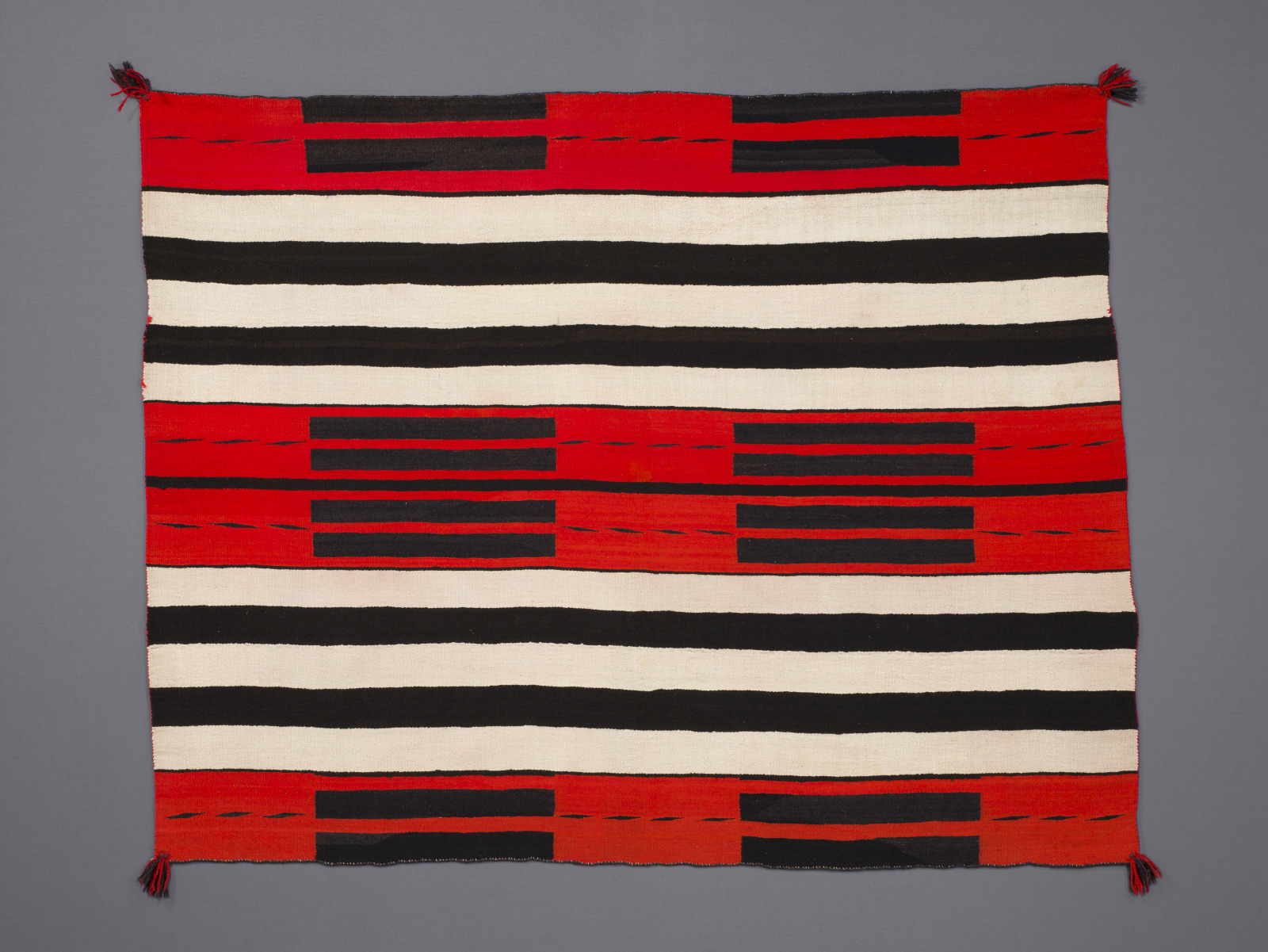
Diné (Navajo) artist, Chief-Style Blanket, Second Phase, c.1880; Southwest United States; wool and dye; 71 1/4 x 55 1/4 inches; Saint Louis Art Museum, Gift of Elissa and Paul Cahn 221:2017
In this blanket, charcoal-gray bars and dashes float on a red ground, establishing massive patterned bands that balance against the dominant white-and-black stripes. This type of textile captivated 19th-century Native peoples from the Plains and Mountain West, who valued these striking blankets not only for their unusual form and materials, but also because they originated far away, as is often the case with luxury items. Diné peoples traded blankets like this one with neighbors in the Pueblos of Pecos and Taos, centers for Native trade networks. Starting in the 1820s, American traders also transported blankets from the Southwest to a series of commercial forts across the Plains.
By the late 19th century, when the railway brought waves of travelers to the Southwest territories, these blankets circulated in the developing national market for Native art. Thomas Dozier, an art and curio dealer based in the rail town of Española, New Mexico, displayed this blanket at the St. Louis World’s Fair in 1904.
August 2, 2020
Cradleboard
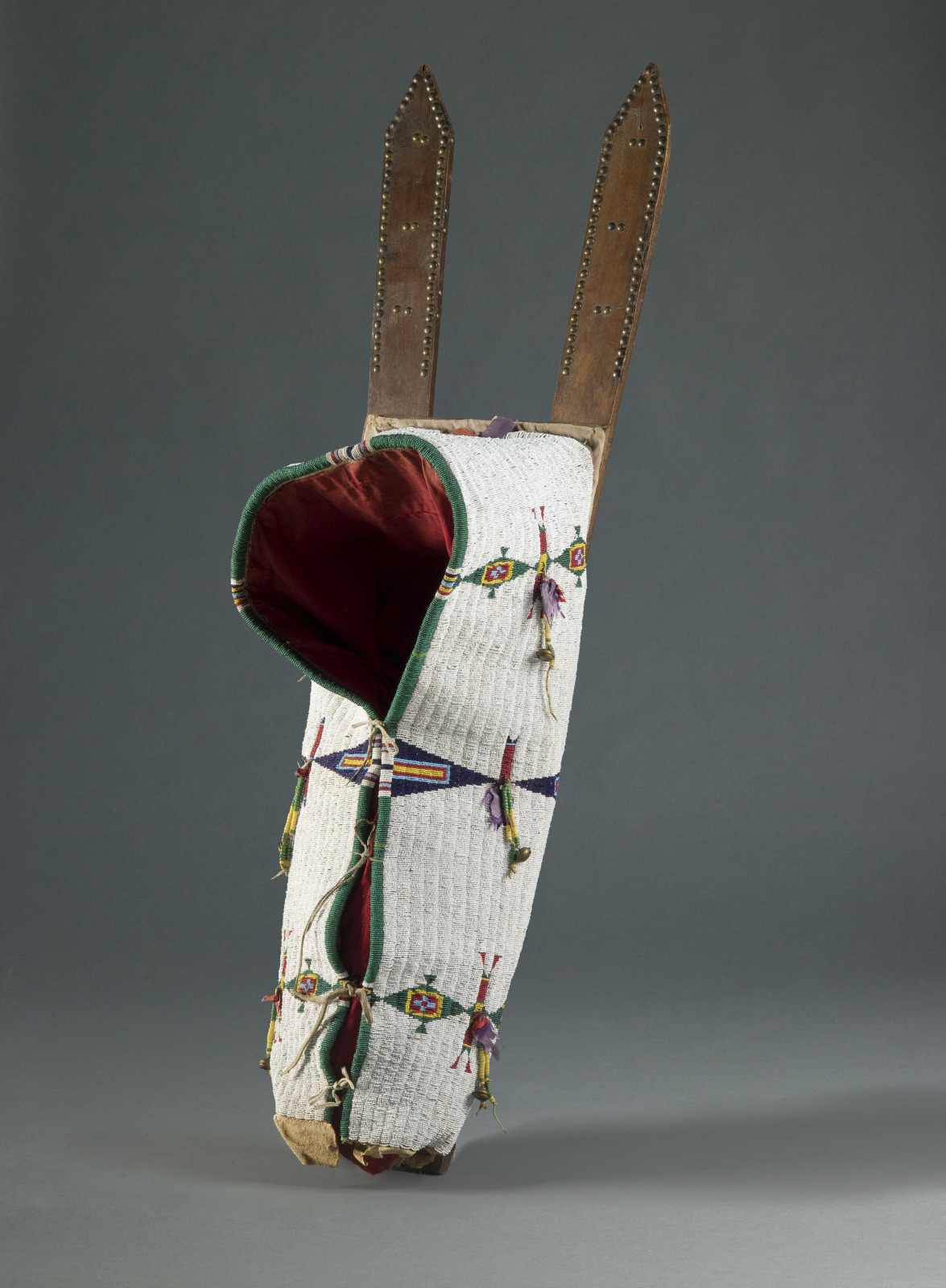
Tsistsistas/Suhtai (Cheyenne) artist, Cradleboard, c.1890; Great Plains, United States; tanned hide, rawhide, glass seed beads, cotton cloth, silk, wood, metal tacks, and metal bells; 44 × 13 1/2 × 11 inches; Saint Louis Art Museum, The Donald Danforth Jr. Collection, Gift of Mrs. Donald Danforth Jr. 80:2012
This cradle features allover beadwork with repeating geometric patterns organized around mirrored triangles and diamonds. The focal point of each beaded design gives way to a profusion of silk ribbons, large beads, and brass bells. This approach to materials exemplifies the historic Plains aesthetics of excess, where artists created powerful assemblages using diverse textures, colors, and objects that produce sound.
Cradles swaddle babies tightly and furnish a secure place to keep children while adult relatives work. At its back, this cradle attaches to a wooden framework that provides structural support for mounting to hooks or resting against vertical surfaces. Today, many Tsistsistas/Suhtai families cherish cradleboards as heirlooms.
July 31, 2020
Woman’s Tubular Skirt (kain sarung) with Design of the “Thousand Boxes” (kotak seribu) Motif
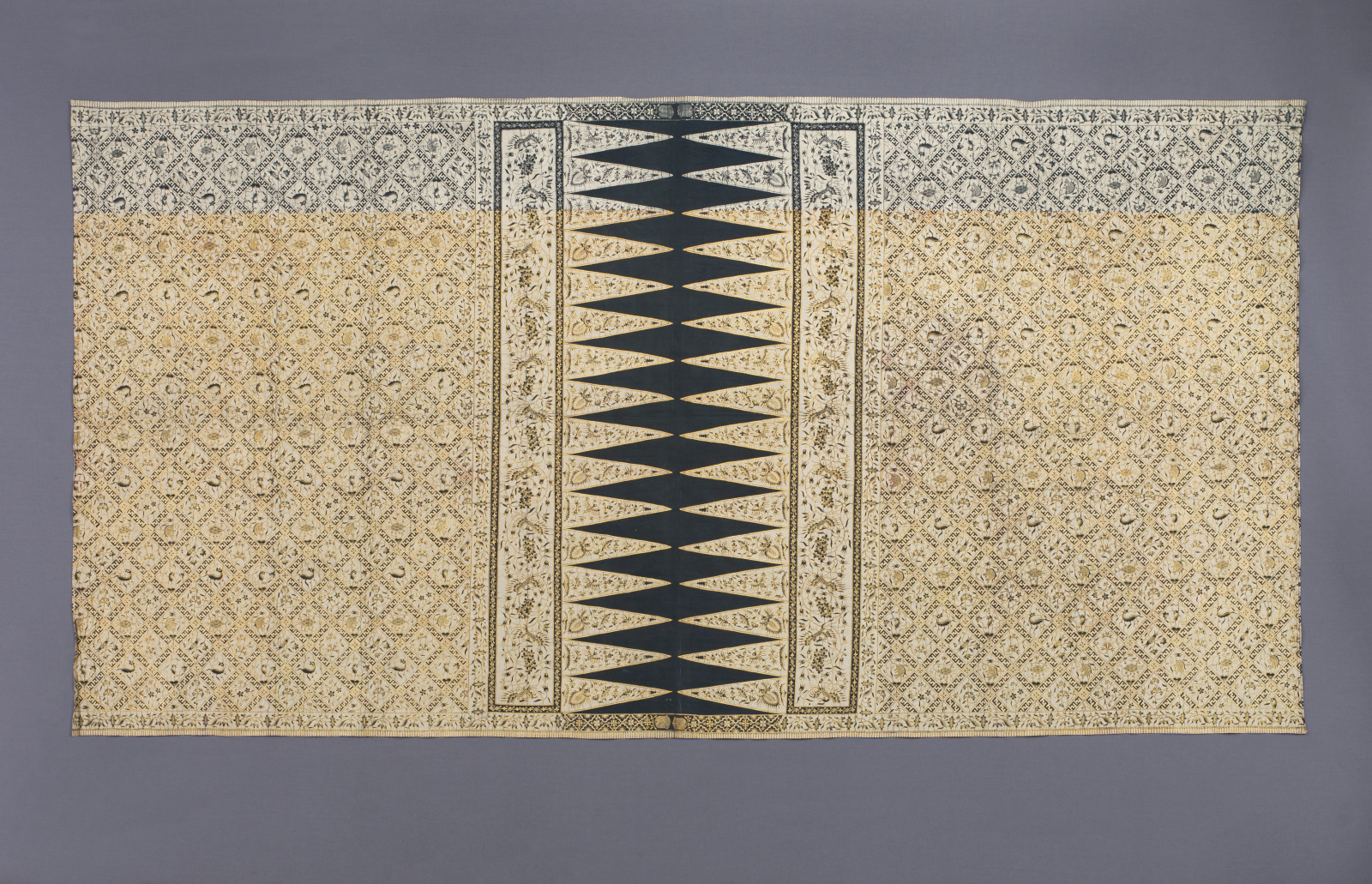
Woman's Tubular Skirt (kain sarung) with Design of the "Thousand Boxes" (kotak seribu) Motif, mid-19th century; Javanese, Indonesia; plain-weave cotton with hand-drawn wax-resist decoration (batik tulis) with natural dyes and applied gold leaf (prada); 43 1/2 × 84 1/4 inches; Saint Louis Art Museum, Museum Purchase 110:1922
A three-part panel known as the kepala, or head section, occupies the central portion of this textile. This area contains triangles placed in rows facing each other and narrow vertical rectangular bands flanking the triangles (zoom in). The batik’s beautifully worked diagonal lattice pattern on either side of the head features animal and floral motifs. This intricate design testifies to the precise waxing skills of batik artists from Indramayu, a city on the north coast of West Java province. The fine diagonal dotting pattern on the background is called cocohan and resulted from a block with fine metal pins piercing the waxed ground before dyeing (learn more). The application of gold leaf across most of the textile likely indicates this garment was intended for a bride to wear at her wedding. The narrow band at the top has no gold decoration, because it would not be visible when the garment is rolled and tucked at the waist. Gold was expensive and was not applied where it would rub off.
July 30, 2020
Dog and Serpent
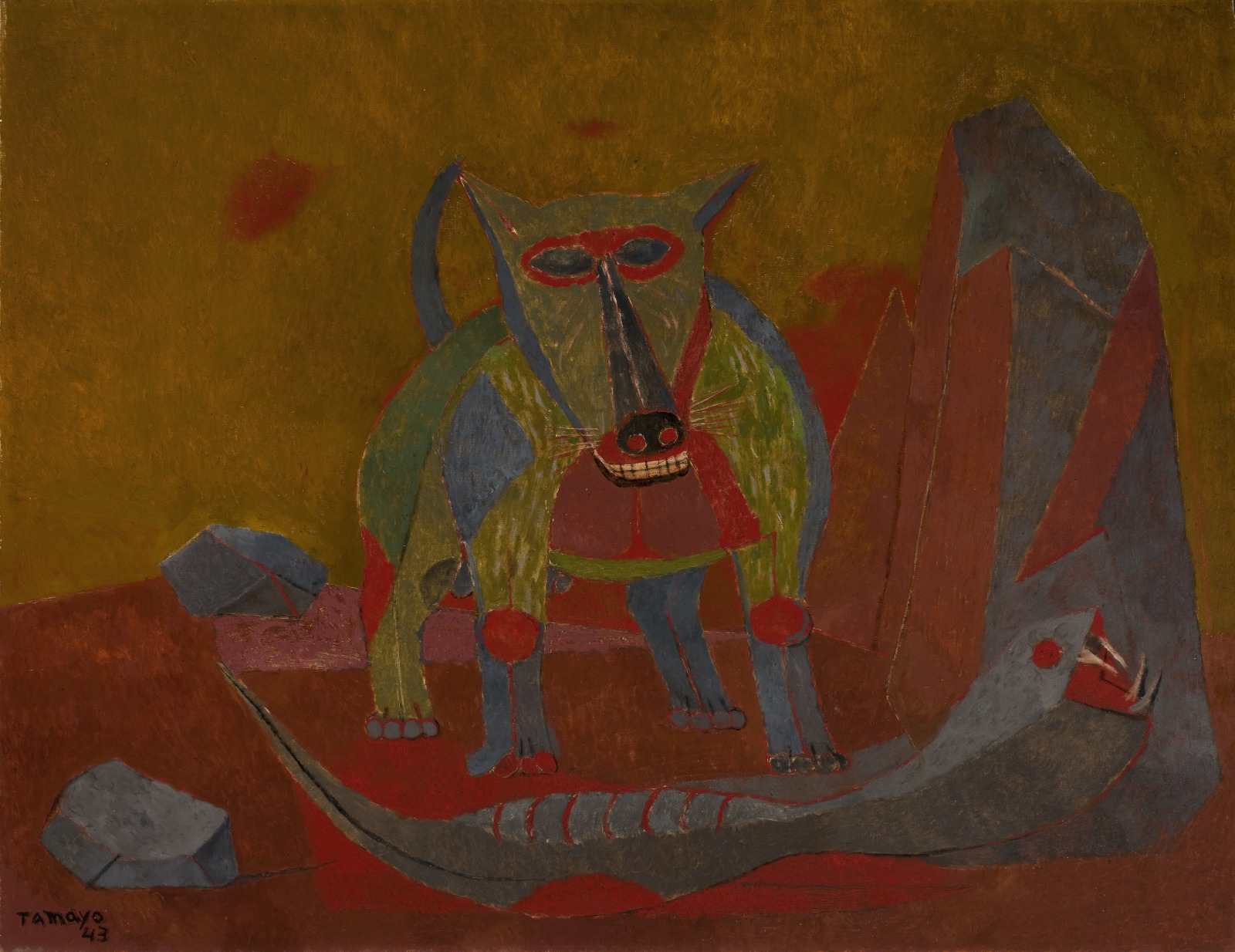
Rufino Tamayo, Mexican, 1899–1991; Dog and Serpent, 1943; oil on canvas; 34 1/8 x 44 1/4 inches; Saint Louis Art Museum, Gift of Morton D. May 234:1954; © 2020 Tamayo Heirs / Mexico / Artists Rights Society (ARS), New York
In a rocky landscape, a short dog bares its teeth, ready to pounce on a fanged serpent. Artist Rufino Tamayo modeled this native Mexican hairless dog after a type of Mesoamerican, canine shaped funerary vessel (see example above). Spending extended time in New York City during World War II (1939–1945), Tamayo became keenly aware of this conflict, in which the United States had become involved (read more). This impending struggle between two wild animals represents an allegory for the unprecedented violence then occurring in Europe.
July 4, 2020
Buzz Aldrin and the U.S. Flag on the Moon
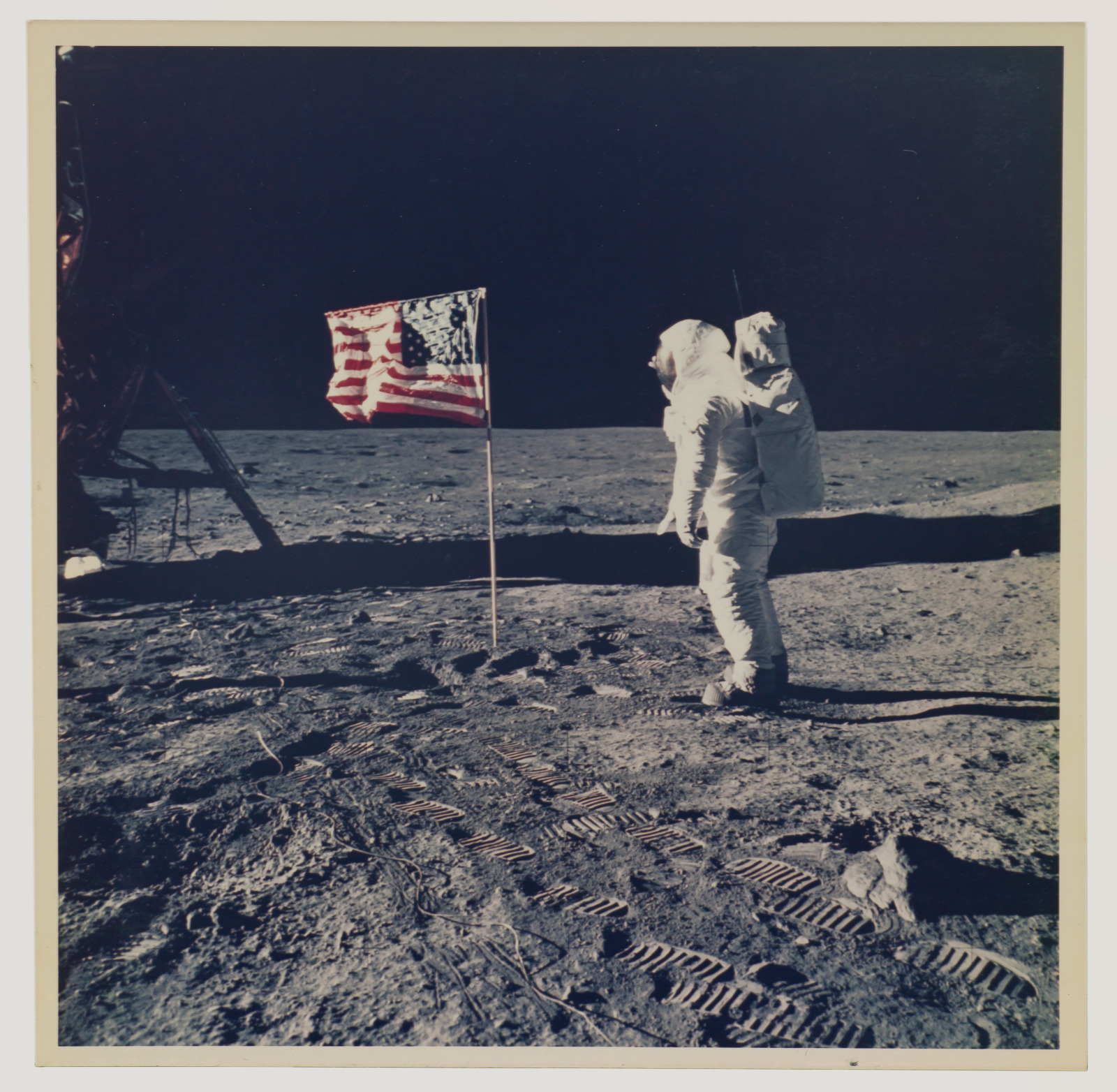
Neil Armstrong, American, 1930–2012; Buzz Aldrin and the U.S. Flag on the Moon, 1969; chromogenic print; 8 x 8 inches; Saint Louis Art Museum, Gift of Ronald and Mary Jo Anderson 132:2015.2
-
View Related Images
![13220153dig_o2]()
Neil Armstrong, American, 1930–2012; Apollo 11 Moon Landing, 1969; chromogenic print; 8 x 8 inches; Saint Louis Art Museum, Gift of Ronald and Mary Jo Anderson 132:2015.3
![13220151dig_o2]()
Neil Armstrong, American, 1930–2012; Apollo 11 Moon Landing, 1969; chromogenic print; 8 x 8 inches; Saint Louis Art Museum, Gift of Ronald and Mary Jo Anderson 132:2015.1
This color print was taken during the July 20, 1969 Apollo 11 landing on the moon, one of the most memorable events of the second half of the 20th century. Commander Neil Armstrong was tasked with documenting the moon walk, and took views of fellow astronaut Edwin “Buzz” Aldrin standing with the Eagle landing capsule and conducting scientific experiments (view more above). The most famous of these images shows Aldrin with the United States flag after it had been planted on the lunar surface. Since there are no air currents on the moon, the flag had to be stiffened with a rod to make it appear as if it were waving.
While untrained as a photographer, Armstrong quickly became adept at using a specially made Hasselblad camera that could be operated in outer space. He exposed several hundred negatives and the results are equally important as historic, scientific, and aesthetic statements.
June 17, 2020
Eames Storage Unit (ESU)

Charles Eames, American, 1907–1978, and Ray Kaiser Eames, American, 1912–1988; made by Herman Miller Furniture Company, Zeeland, Michigan, founded 1923; Eames Storage Unit (ESU), designed 1949–50; birch plywood, zinc-plated steel, perforated metal, plastic laminated plywood, lacquered Masonite, and rubber; 58 11/16 x 47 1/16 x 16 15/16 inches; Saint Louis Art Museum, Friends Fund 17:1994; © Eames Office, LLC.
Charles and Ray Eames are among the most important industrial designers of the 20th century. This storage unit epitomizes the Eameses’ goal for most of their work-to-design mass-produced furnishings to be beautiful and affordable to the average consumer. The Eames Storage Units (ESU) are a system of lightweight modular cabinets and desks with prefabricated, interchangeable parts: shelves, perforated metal backs, panels, and sliding doors and drawers, all in various materials and color combinations. No attempt was made to conceal the structural elements. To simplify shipping, this cabinet with steel-angle corner legs was originally conceived as knockdown furniture. Design as the rearrangement of industrial parts was a constant that the Eameses executed in varying scales throughout their work. In concept and aesthetic this unit is a small-scale version of their famous 1949 Case Study House in Pacific Palisades, California.
May 29, 2020
Pictorial Board and Dice Game
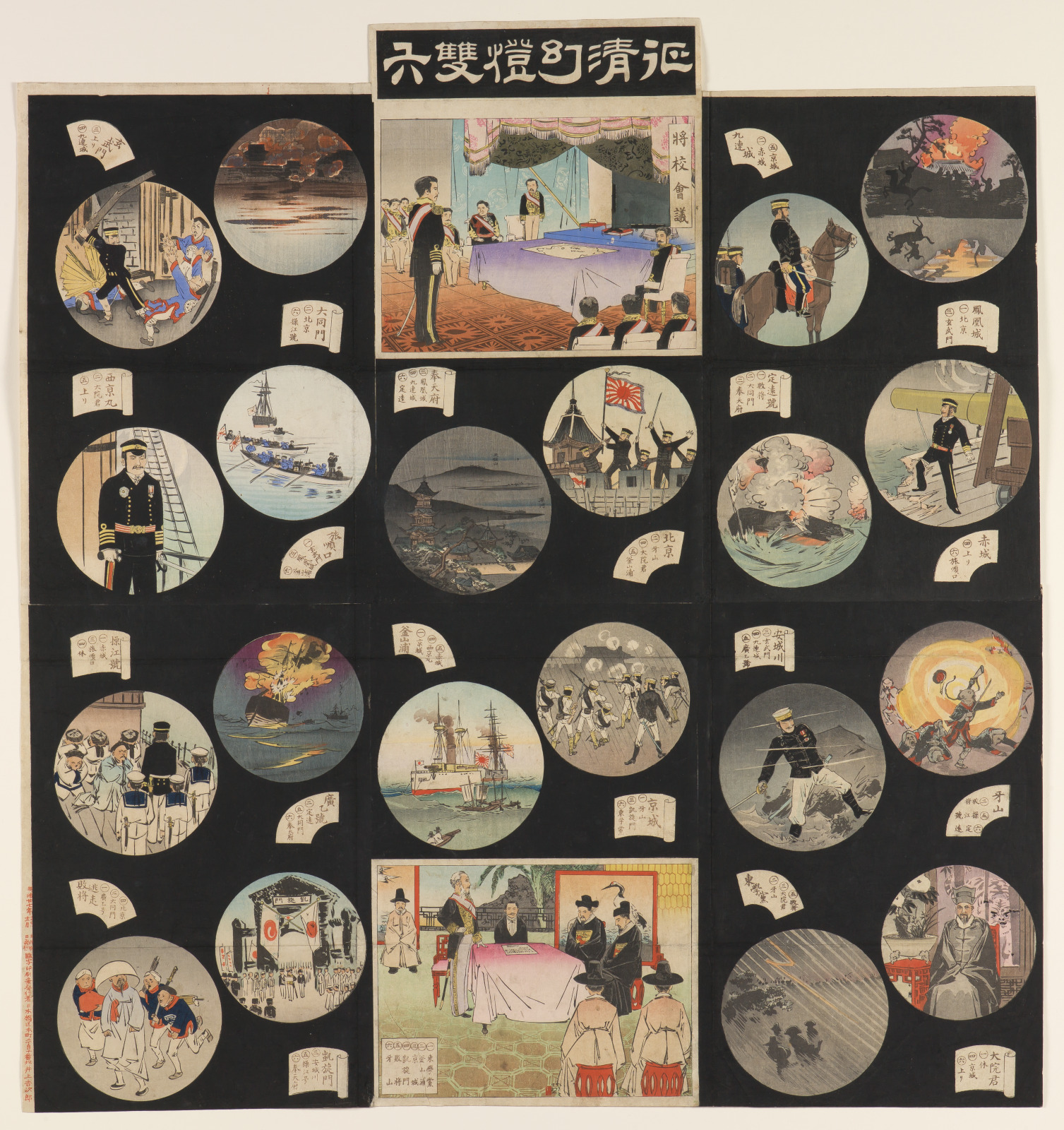
Kobayashi Kiyochika, Japanese, 1847–1915; published by Inoue Kichijirō, Japanese, active late 19th century; Pictorial Board and Dice Game: Magic Lantern of the Subjugation of China, 1894; color woodblock prints; 31 1/8 × 29 1/4 inches; Saint Louis Art Museum, Gift of Mr. and Mrs. Charles A. Lowenhaupt 837:2010a-g
To play this sugoroku, a board game similar to western chutes and ladders, players begin in the rectangular box at the bottom. Players compete to reach the rectangular finishing point at the top, captioned “Conference of Commissioned Officers,” by rolling a die. The 20 places between start and finish take the form of circular images on a black ground that evoke magic lantern slides, a popular toy in Meiji period Japan (1868-1912). Each image is accompanied by a label containing a title and a key dictating where players should move next.
May 20, 2020
To Encircle Base Plate Hexagram, Right Angles Inverted

Richard Serra, American, born 1938, photographed by Peter Moore, American, 1932-1993; To Encircle Base Plate Hexagram, Right Angles Inverted, 1970; hot-rolled steel; diameter: 25 feet 4 inches; Saint Louis Art Museum, Gift of Mr. and Mrs. Ronald K. Greenberg 152:1984; © 2020 Richard Serra / Artists Rights Society (ARS), New York, NY, photo © 2020 Estate of Peter Moore / Artists Rights Society (ARS), New York, NY
-
See Installation Views
![152_1984_con_02_o4]()
Richard Serra, American, born 1938; To Encircle Base Plate Hexagram, Right Angles Inverted, 1970; hot-rolled steel; diameter: 25 feet 4 inches; Saint Louis Art Museum, Gift of Mr. and Mrs. Ronald K. Greenberg 152:1984; © 2020 Richard Serra / Artists Rights Society (ARS), New York, NY
![152_1984_con_01_o4]()
Richard Serra, American, born 1938; To Encircle Base Plate Hexagram, Right Angles Inverted, 1970; hot-rolled steel; diameter: 25 feet 4 inches; Saint Louis Art Museum, Gift of Mr. and Mrs. Ronald K. Greenberg 152:1984; © 2020 Richard Serra / Artists Rights Society (ARS), New York, NY
Embedded into the road between the Saint Louis Art Museum and Art Hill (see installation views above), this large circular sculpture is barely apparent at street level. The work is comprised of two identical steel semi-circular components—one upright, the other inverted. In each a horizontal metal plate is joined to a vertical outer band forming an L-shape in profile. On the upright half of the circle the plate is buried under the pavement, while on the inverted half the plate sits flush with the surface of the road.
The title of this sculpture both describes its form and suggests the goals it is intended to achieve: to encircle, contain, and define space. “Base Plate” refers to the enclosed pavement as if it were a plate of steel. “Hexagram” describes the six surfaces of the sculpture: the outside and inside of the outer band and the top and bottom of each of the two plates. “Right Angles Inverted” points to the positioning of the upright and inverted L-shaped bands.
Richard Serra’s first public artwork in the United States, this sculpture was originally installed in the Bronx, New York, from 1970 to 1972 (as depicted above in the photograph by Peter Moore). Serra meant for viewers to walk and drive over the work and, through this process, to become more aware of the street itself and the sculpture’s relationship to it.
May 17, 2020
Copper
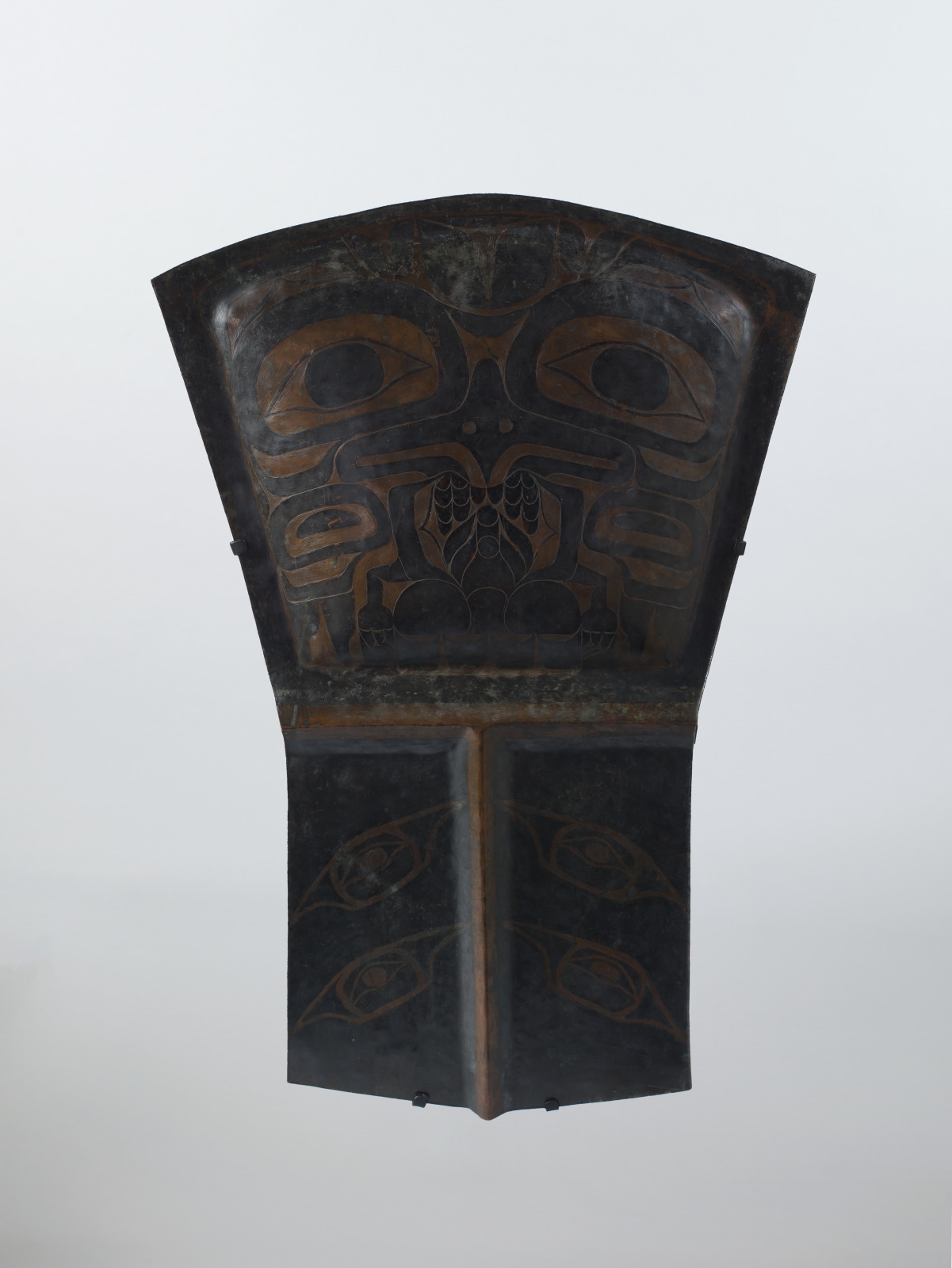
Northern Northwest Coast artist, Copper, c.1870; British Columbia or Alaska; copper with pigment; 43 3/4 x 30 x 1 3/4 inches; Saint Louis Art Museum, Gift of Morton D. May 268:1982
-
View the Back of Object
![268 1982 OOTD Comparative Image]()
Northern Northwest Coast artist, Copper (verso), c.1870; British Columbia or Alaska; copper with pigment; 43 3/4 x 30 x 1 3/4 inches; Saint Louis Art Museum, Gift of Morton D. May 268:1982
Scratched from the blackened surface with a fine-pointed tool, the image of a bird spans the convex top of this copper. Many Northwest Coast groups made coppers for display, and an unattributed master artist worked this sheet of rolled copper in the typical manner: flaring its top, hammering the edges, and beating it over a form to achieve ridges at bottom. As representations of immense wealth, coppers appeared in elaborate performances at feasts.
The large size and painting on back (see image above) distinguish this copper. When compared to decoration on the front, the style of this painted bird indicates the labor of a second, more southerly artist. Coppers circulated between rivals and allies, their value increasing as they changed hands. The accumulation of imagery here likely relates to a long history of exchange, where a new owner added his own design to this copper.
May 3, 2020
Brennstäbe (Fuel Rods)
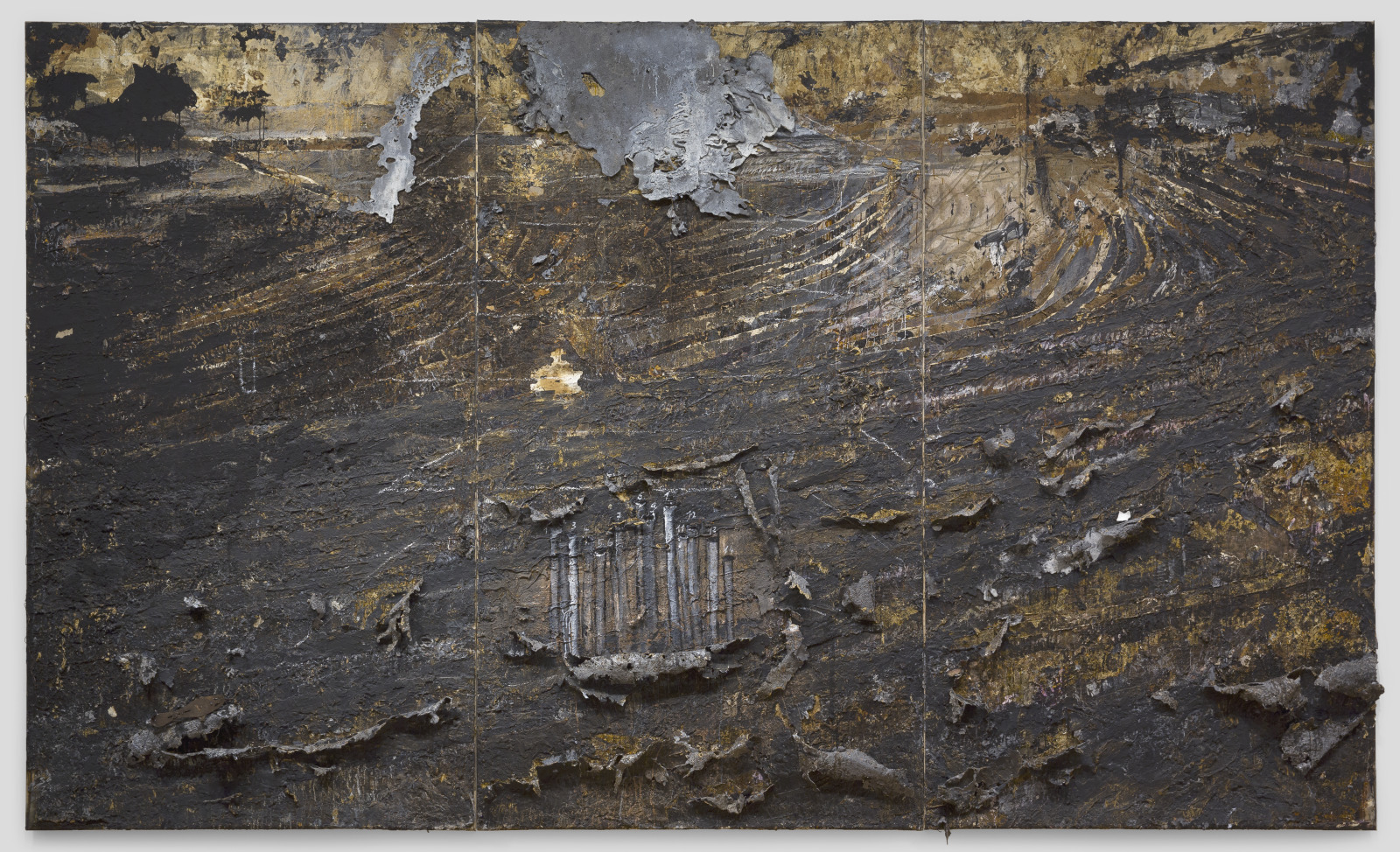
Anselm Kiefer, German, born 1945; Burning Rods, 1984–87; oil, acrylic emulsion, and shellac on canvas with lead, copper wire, straw, iron, and ceramic; 130 1/4 inches x 18 feet 3 inches; Saint Louis Art Museum, Gift of Mr. and Mrs. Joseph Pulitzer Jr. by exchange 108:1987a-c; © Anselm Kiefer
-
See Details
![Burning Rods Detail 1 OOTD]()
Anselm Kiefer, German, born 1945; Burning Rods (detail), 1984–87; oil, acrylic emulsion, and shellac on canvas with lead, copper wire, straw, iron, and ceramic; 130 1/4 inches x 18 feet 3 inches; Saint Louis Art Museum, Gift of Mr. and Mrs. Joseph Pulitzer Jr. by exchange 108:1987a-c; © Anselm Kiefer
![Burning Rods Detail 2 OOTD]()
Anselm Kiefer, German, born 1945; Burning Rods (detail), 1984–87; oil, acrylic emulsion, and shellac on canvas with lead, copper wire, straw, iron, and ceramic; 130 1/4 inches x 18 feet 3 inches; Saint Louis Art Museum, Gift of Mr. and Mrs. Joseph Pulitzer Jr. by exchange 108:1987a-c; © Anselm Kiefer
To create this vast, charred landscape, Anselm Kiefer combined paint with the unlikely materials of lead, copper, and straw. Blackened furrows extend toward a distant horizon while a rusty ice skate and a porcelain shard, both placed in the foreground, emphasize the surface of the painting.
In this ravaged vista, Kiefer merges ancient mythology with the realities of modern technology. The 14 rods at the center of the composition allude to the Egyptian myth of Osiris, a god who was torn into 14 pieces before being reassembled by his sister-wife, Isis. Burning Rods also refers to fuel rods used in nuclear power plants, such as the one at Chernobyl that catastrophically failed in 1986. The monumental size and imposing physical bulk of this work are matched by Kiefer’s ambition to address the profound issues of death, destruction, and renewal that continually confront humanity.
May 1, 2020
Laylá visits Majnūn in the Wilderness
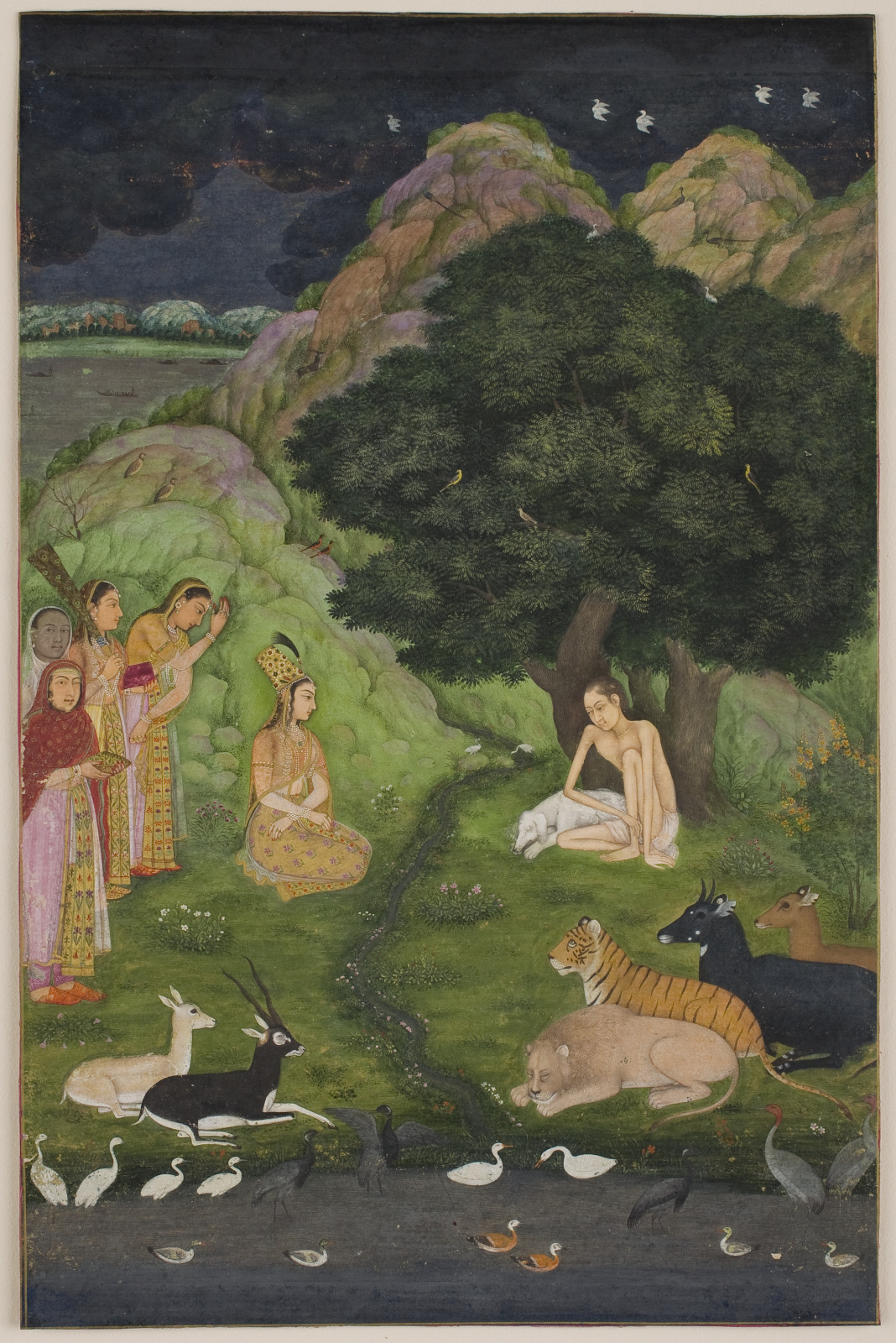
Laylá visits Majnūn in the Wilderness, c.1660; Indian, Mughal period, reign of Aurangzeb; ink, opaque watercolor, and gold on paper; 12 x 7 13/16 inches; Saint Louis Art Museum, Gift of J. Lionberger Davis 401:1952
This miniature watercolor illustrates a scene from the epic Persian poem Laylá and Majnūn, a poem of 12th-century romance and forbidden love. Since these two star-crossed lovers were forced apart by their families, the heartbroken hero, Majnūn, retreated to the wilderness. There, he lived a strict life of an ascetic, while his beloved Laylá was forced to marry another. In this painting, Laylá has come to visit and comfort Majnūn.
The scene is dark and moody, reflecting the separation and suffering endured by the lovers. Laylá is shown richly dressed and in the worldly company of handmaidens and servants. Separated from her by a small stream, the lonely Majnūn is dressed in only a loincloth and befriended by a lowly hound. The spiritual bond that unites the lovers is revealed in the pairing of beasts and fowl, animals that accompany and protect Majnūn in his reclusive life.
April 21, 2020
Heliogabal
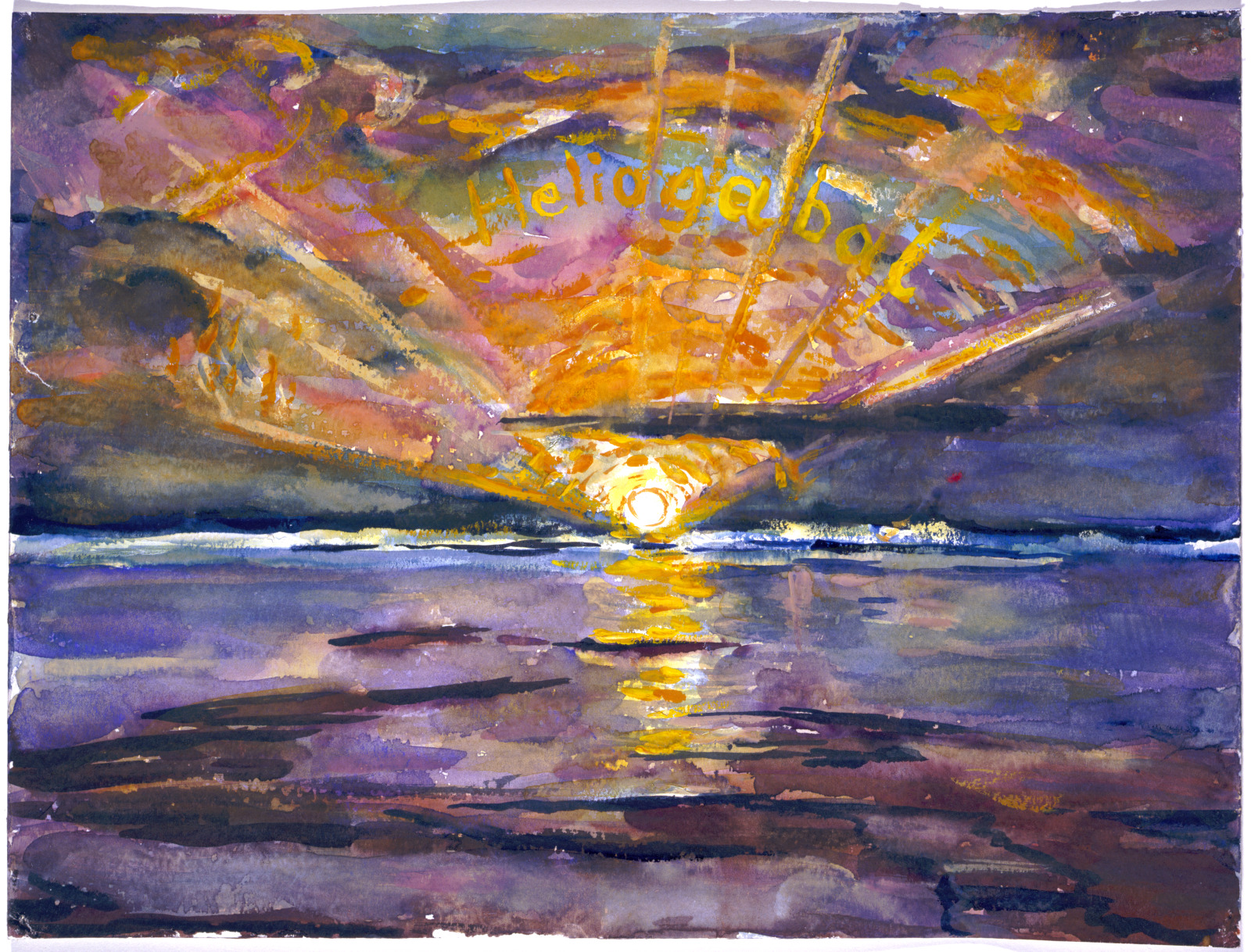
Anselm Kiefer, German, born 1945; Heliogabal, 1974; watercolor and oil paint on paper; 11 3/4 x 15 9/16 inches; Saint Louis Art Museum, Gift of Mr. and Mrs. John Wooten Moore 58:2001; © Anselm Kiefer
In this vibrant watercolor of a sunset, Anselm Kiefer refers to the ancient Roman Emperor Heliogabal, who was born in Syria. Kiefer painted the emperor’s name between the sun’s rays and connected the seemingly benign sunset to a historic individual.
Heliogabal imposed, among other things, the worship of the sun god Baal as the state religion. The emperor’s reign was short lived from AD 218–222: the imperial family ordered his death by drowning at the age of 18. This sunset not only symbolizes Heliogabal’s murder and the end of his revolution but it also alludes to the fleeting authority of emperors and other leaders.
April 11, 2020
Large Fragmentary Ushak “Quatrefoil” Carpet
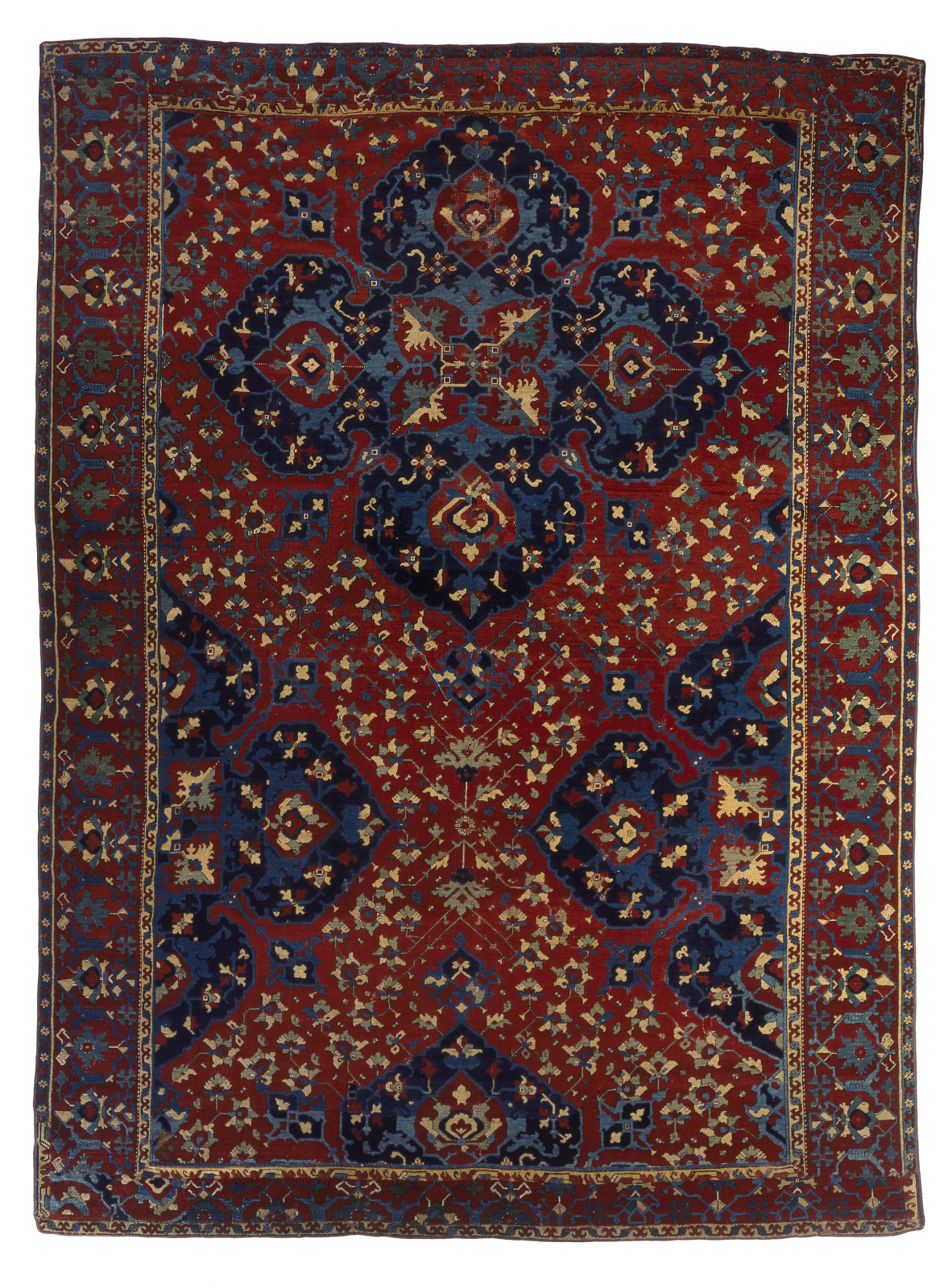
Large Fragmentary Ushak "Quatrefoil" Carpet, 16th century; Anatolian, Turkey, Ottoman period, 1281–1924; wool; 119 x 90 1/4 inches; Saint Louis Art Museum, Gift of James F. Ballard 98:1929
Hear Expert Commentary
-
Transcript
Speaker: Walter B. Denny, PhD
University Distinguished Scholar | Islamic, Museum Studies, Orientalism
University of Massachusetts AmherstThe Ballard four-lobed Ushak carpet, isn’t a complete carpet. It’s about two-thirds of the original. We don’t know why it was cut down; probably to fit in somebody’s living room in a previous century. It remains in every expert’s imagination as the quintessential example of an Ushak carpet in all of the glory of its original pile condition. The coloration and texture are very unusual and the design itself is virtually unique in Ushak carpets. All of this makes this particular carpet, not only one-of-a-kind, but also a window into a kind of class of carpets that has survived in numerous examples down into our own time, but almost never in the condition that we see in this fabulous object. It’s a tribute to Ballard that in a time where other collectors might have turned up their noses at the fact that the carpet was fragmentary (was not complete) that he realized that here was something unique in the world—that nobody else had. And now, of course, we have it in St. Louis.
This carpet features striking blue quatrefoil, or four-lobed, medallions on a brilliant red central field, elements characteristic of Ushak weaving. Woven with seven colors of wool, this is the only known carpet to bear this particular type of quatrefoil design. Curving arabesque forms and floral motifs fill the remaining spaces. The town of Ushak in western Anatolia (present-day Turkey) has been known for its carpet weaving since the 15th century.
This carpet is one of 110 textiles donated to the Museum from the collection of St. Louisian James F. Ballard. Originally about 16 feet in length, this carpet was cut down prior to Ballard’s purchase. Ballard is recognized as one of the most significant American carpet collectors of the early 20th century.
April 5, 2020
Fish Swimming amid Falling Flowers

attributed to Liu Cai, Chinese, active c.1080–1120, Northern Song dynasty or Southern Song dynasty; Fish Swimming amid Falling Flowers (detail), 12th century; ink and color on silk; 10 3/8 x 100 1/2 inches; Saint Louis Art Museum, William K. Bixby Trust for Asian Art 97:1926.1
The delicately painted silk surface of this handscroll presents a lively aquatic scene. The story unfolds along the scroll from right to left, as delicate pink flower petals drift into the pool, attracting the attention and appetites of slender silvery fish swimming below. One lucky fish with a petal in its mouth flees from envious pursuers down toward the depths and an underwater world teeming with life. Spiny rock fish dance among the water weeds that hide spidery shrimp and swarms of small fry while large carp and goldfish swim fluidly along.
Vivid movement and the watery environment of marine life were specialties of the artist Liu Cai, a court painter who was renowned for representing his subjects down to the “very scales of a fish’s tail.” Although the scroll is unsigned, the painting is an acknowledged masterwork by Liu Cai and among the great rarities in Chinese painting.
March 30, 2020
Little Dancer of Fourteen Years

Edgar Degas, French, 1834–1917; Little Dancer of Fourteen Years, c.1880, cast c.1920; bronze, gauze, and satin; 38 1/2 x 16 1/4 x 13 3/4 inches; Saint Louis Art Museum, Funds given by Mrs. Mark C. Steinberg 135:1956
This study of a young ballerina standing in a relaxed fourth position was the only sculpture Edgar Degas exhibited in his lifetime. Degas challenged the prevailing conventions of sculpture by dressing his original wax statue in a fabric tutu, a doll’s wig, and by adding a silk ribbon to her hair. The work shocked the critics, who remarked on her “instinctive ugliness” and on “the vicious muzzle of this little flower of the gutter.” These strong responses suggest Degas’ desire not only to capture the awkwardness of the student dancer but also to convey something of her probable future, as ballerinas were often extremely poor, and many led difficult lives. With this approach Degas combined the beauty of the dance with the harsh realities of modern life. Degas was a flaneur, a kind of dandy and aesthete who had an eye for the subjects of contemporary Paris. He was attracted to the ballet as a spectacle that, like art itself, required discipline and the perfection of skill.
